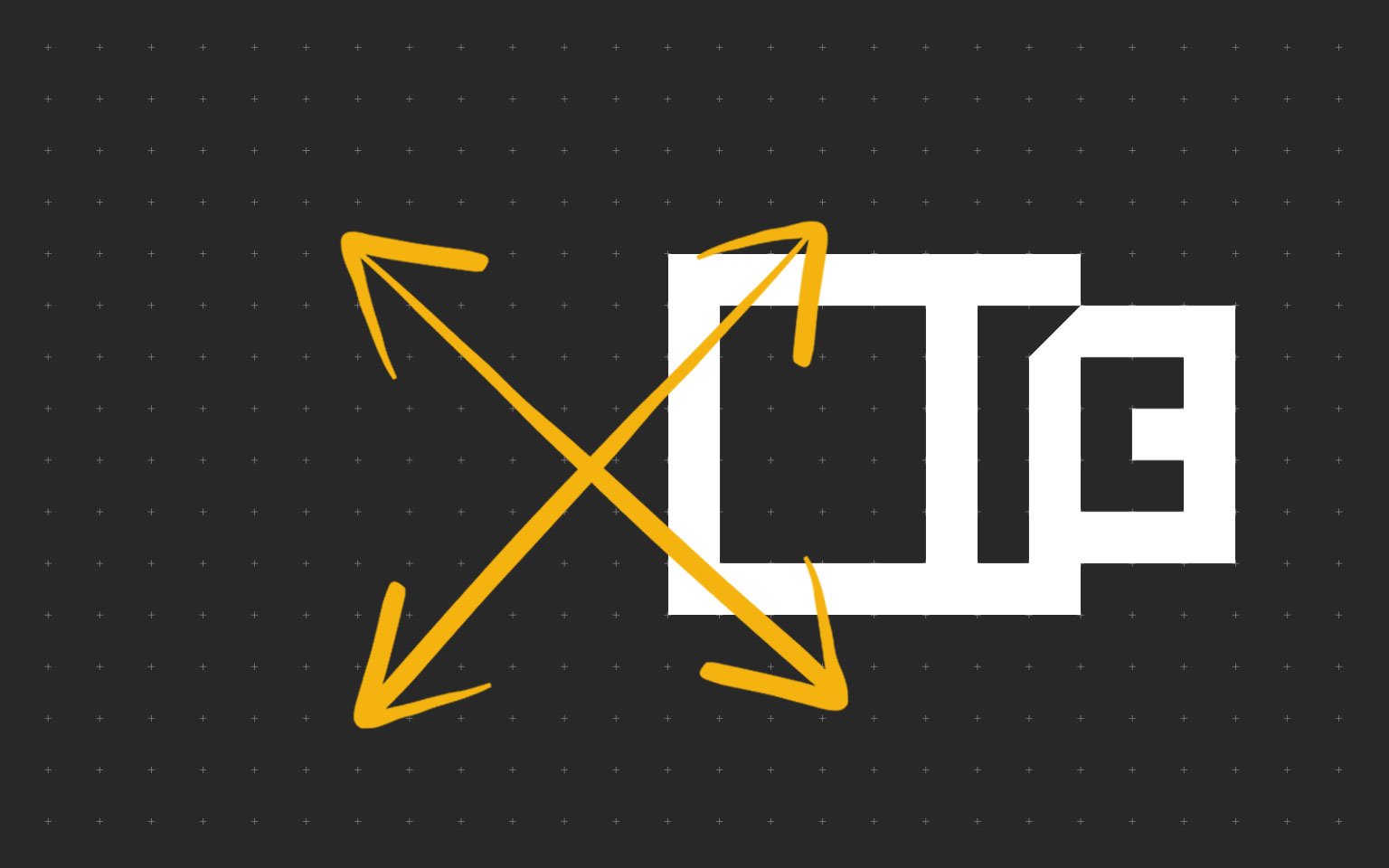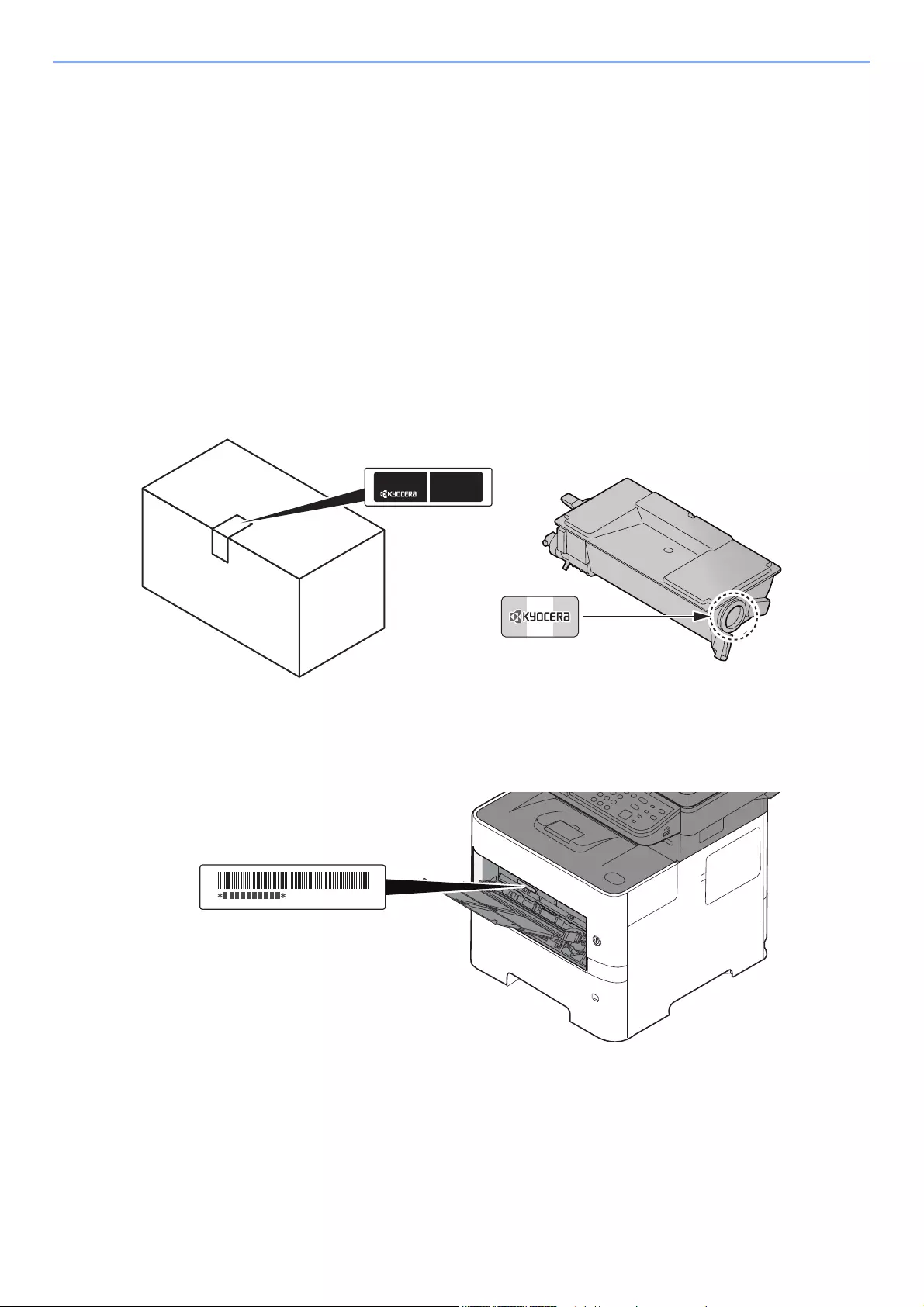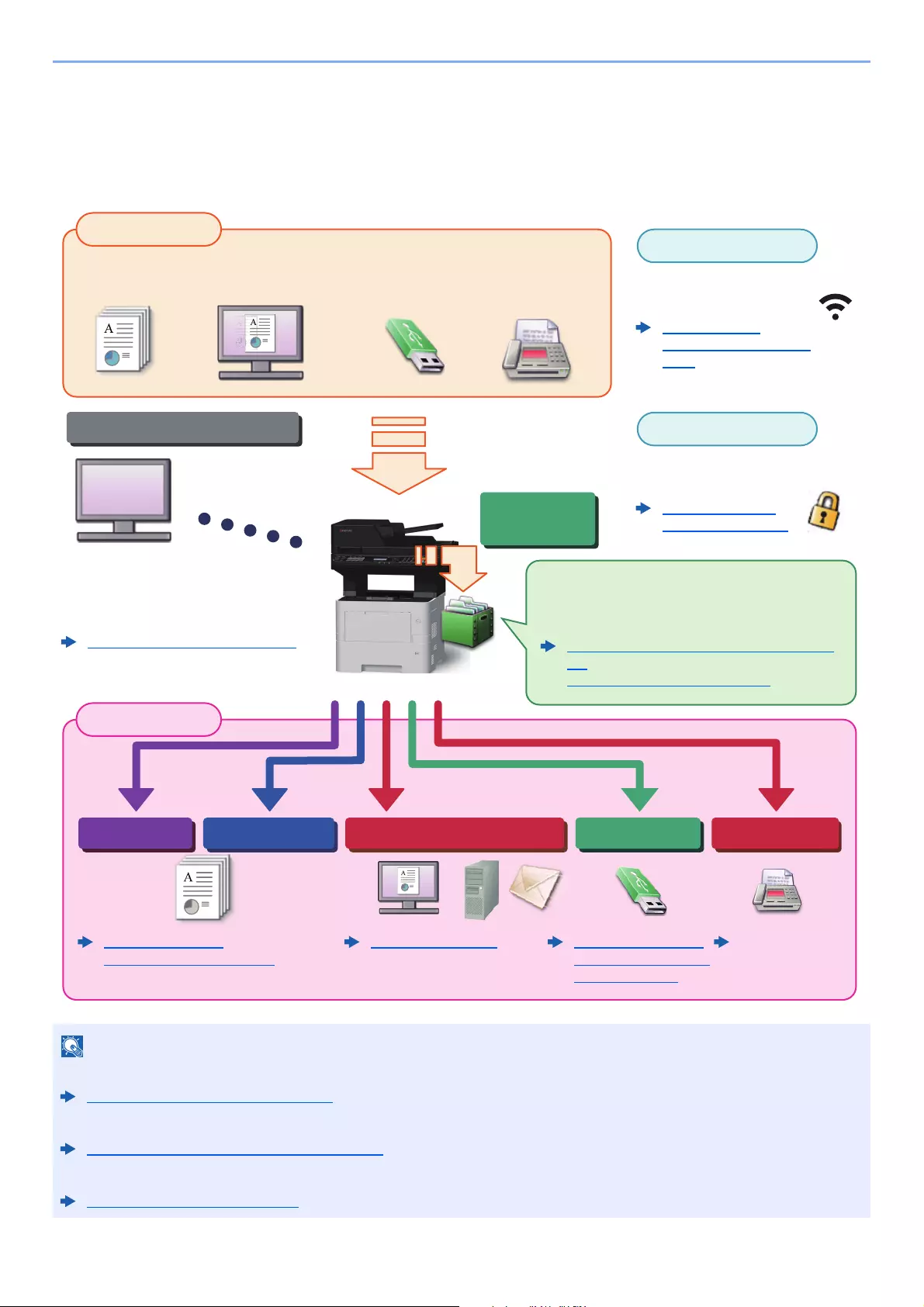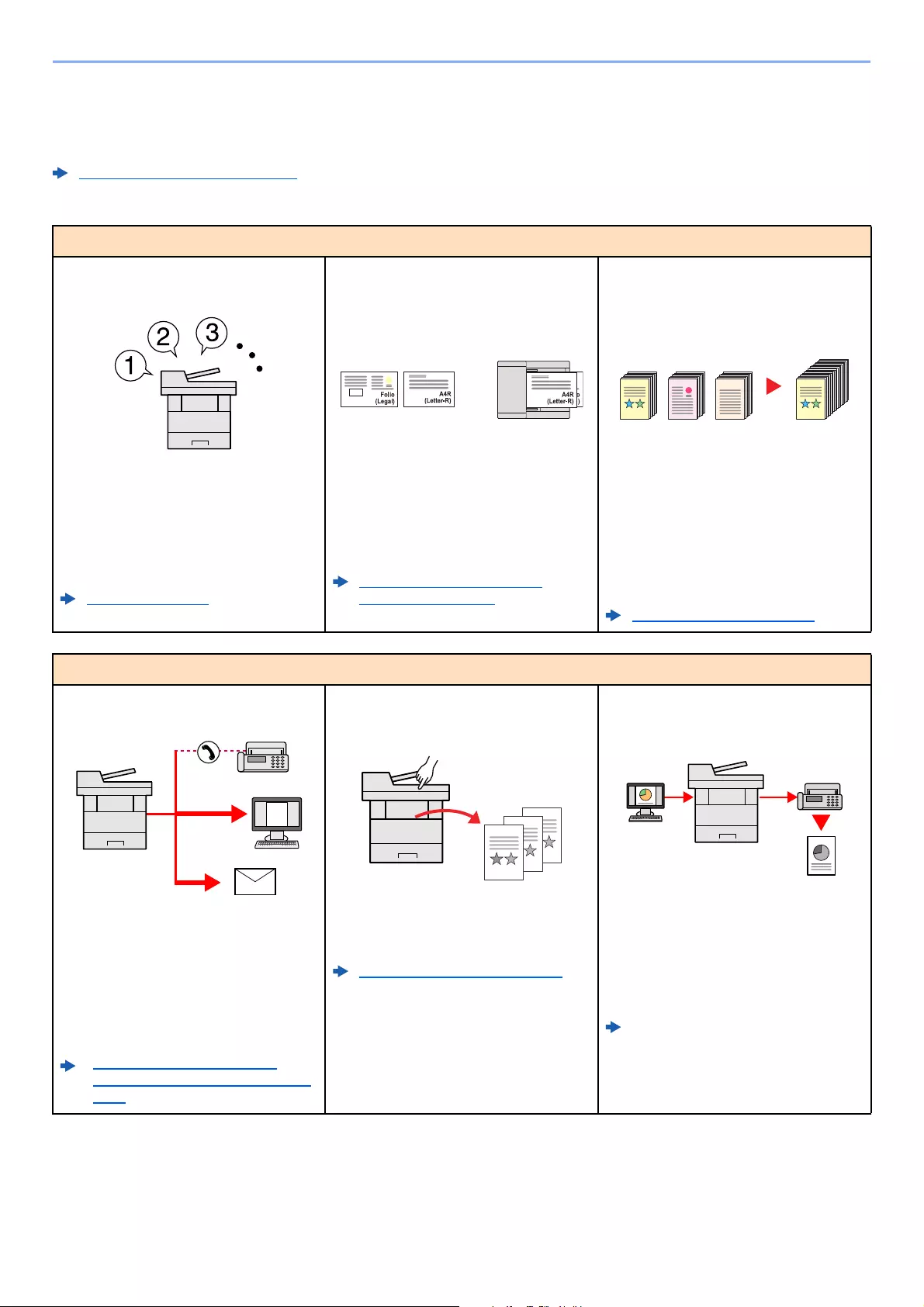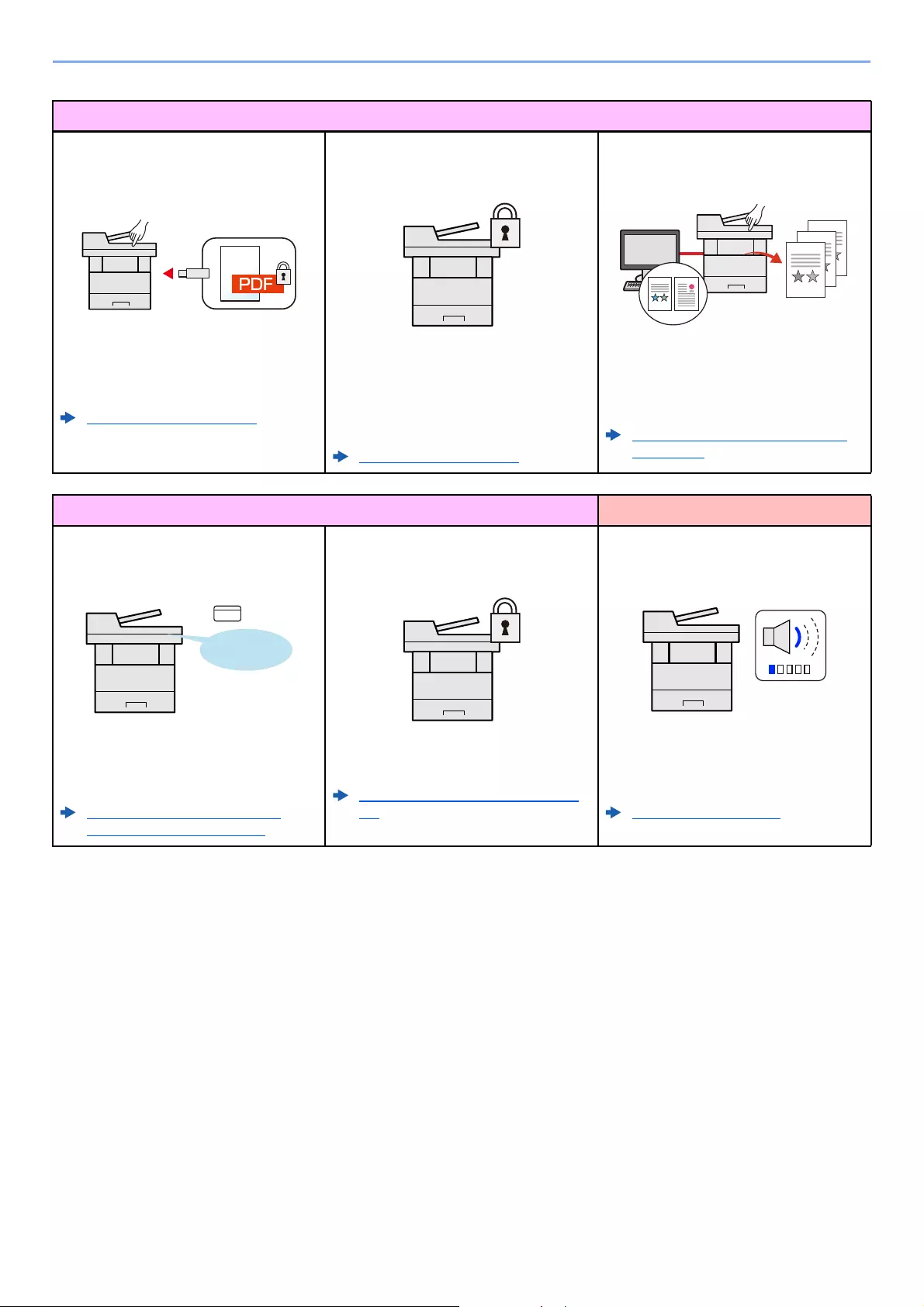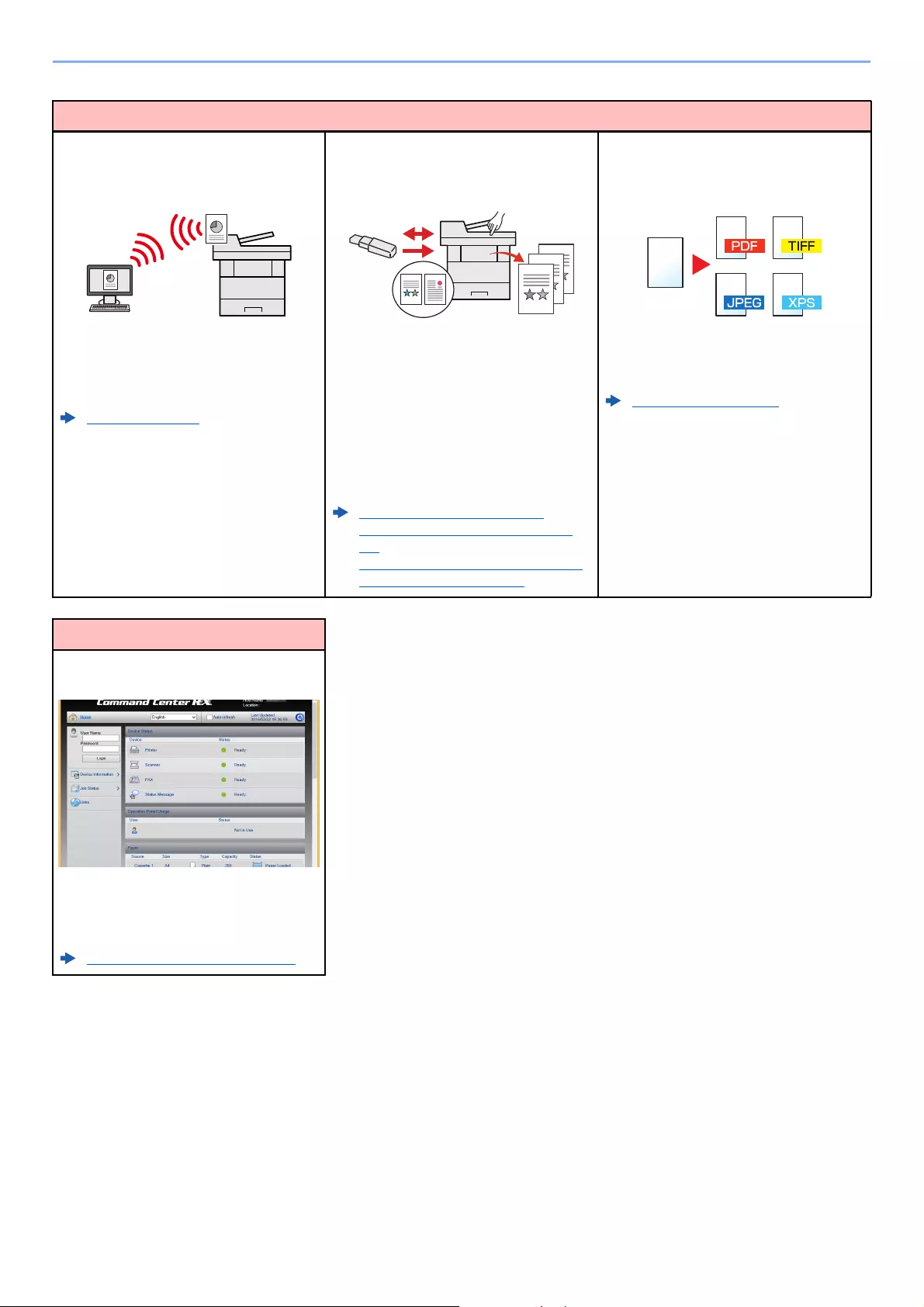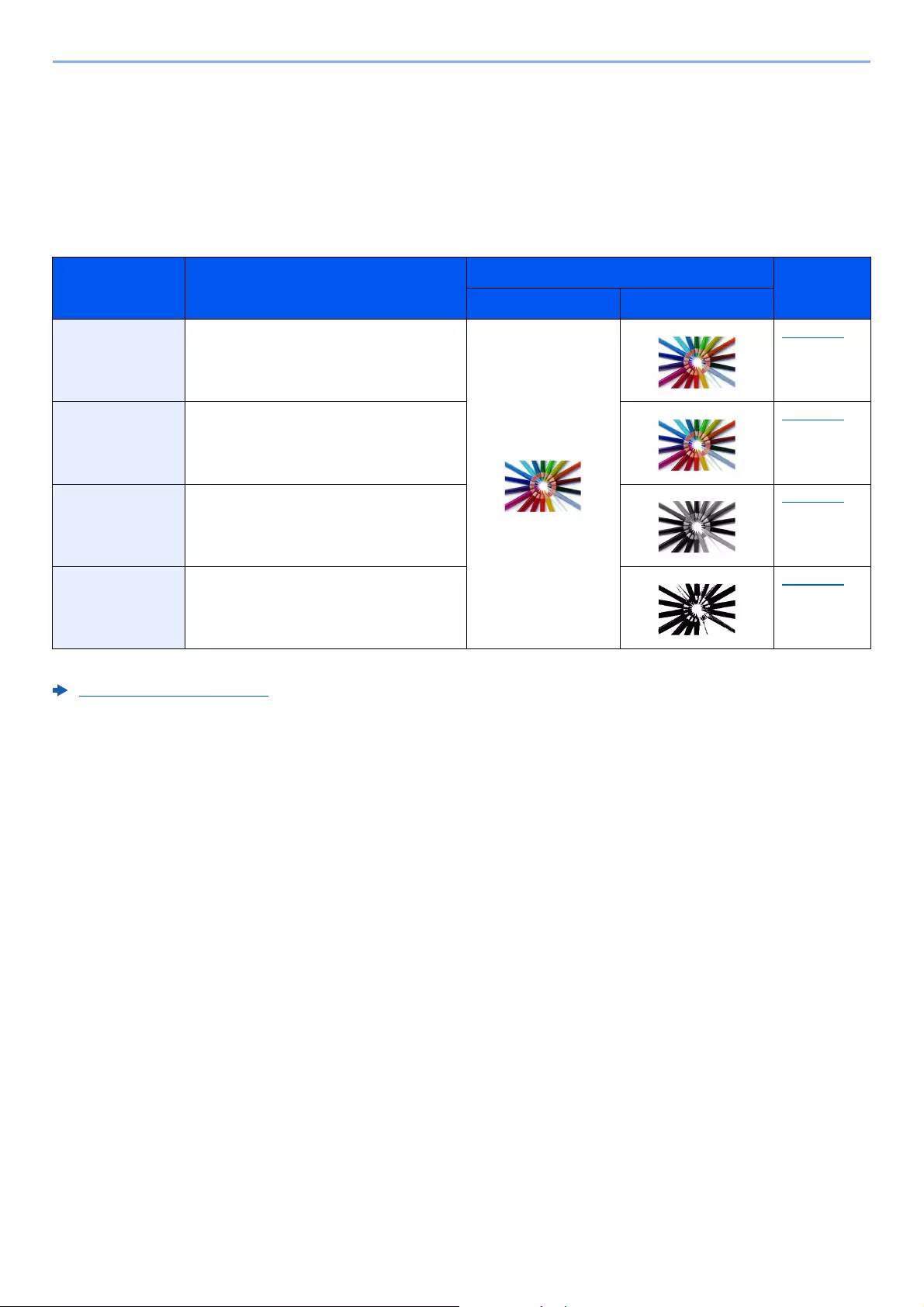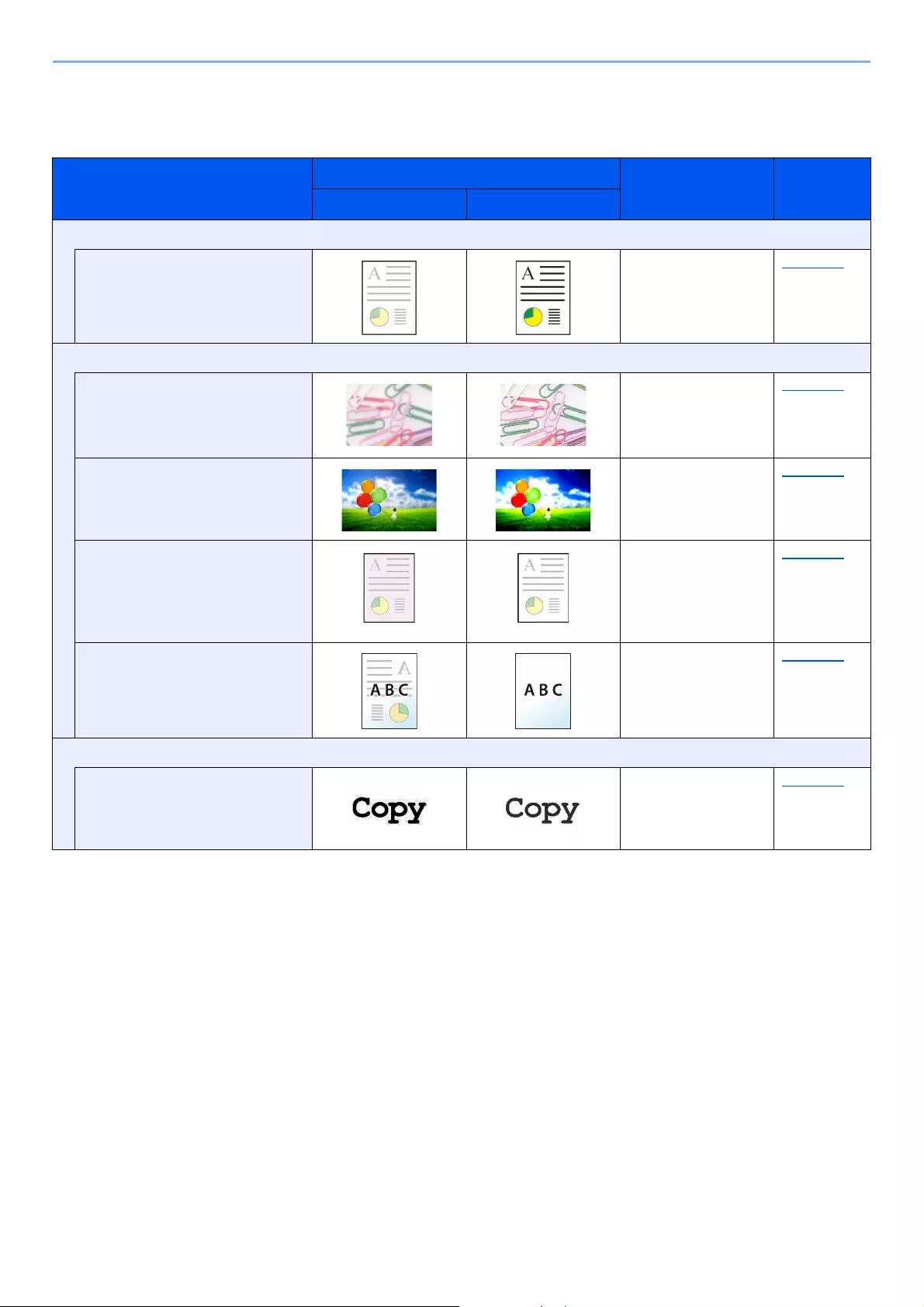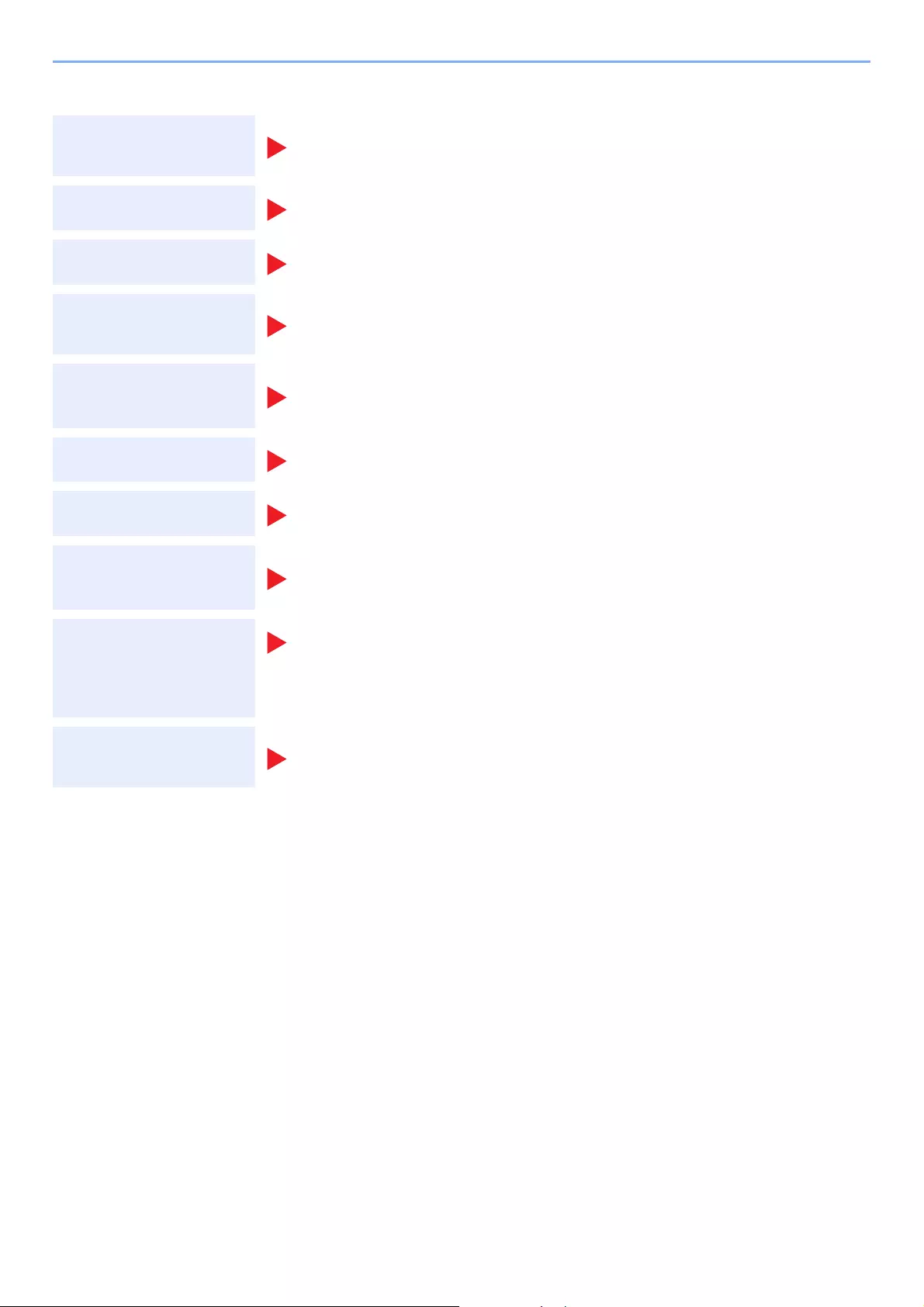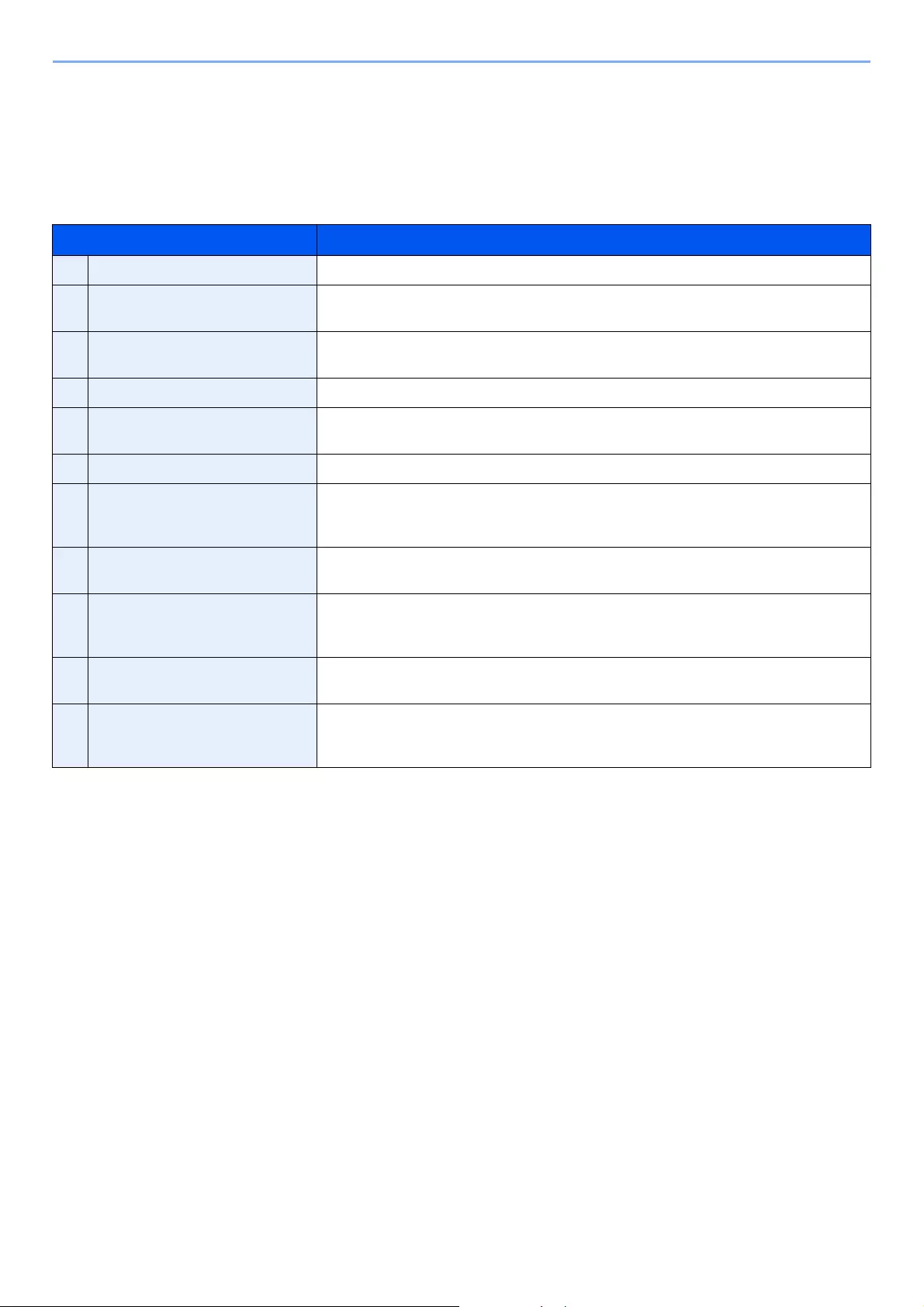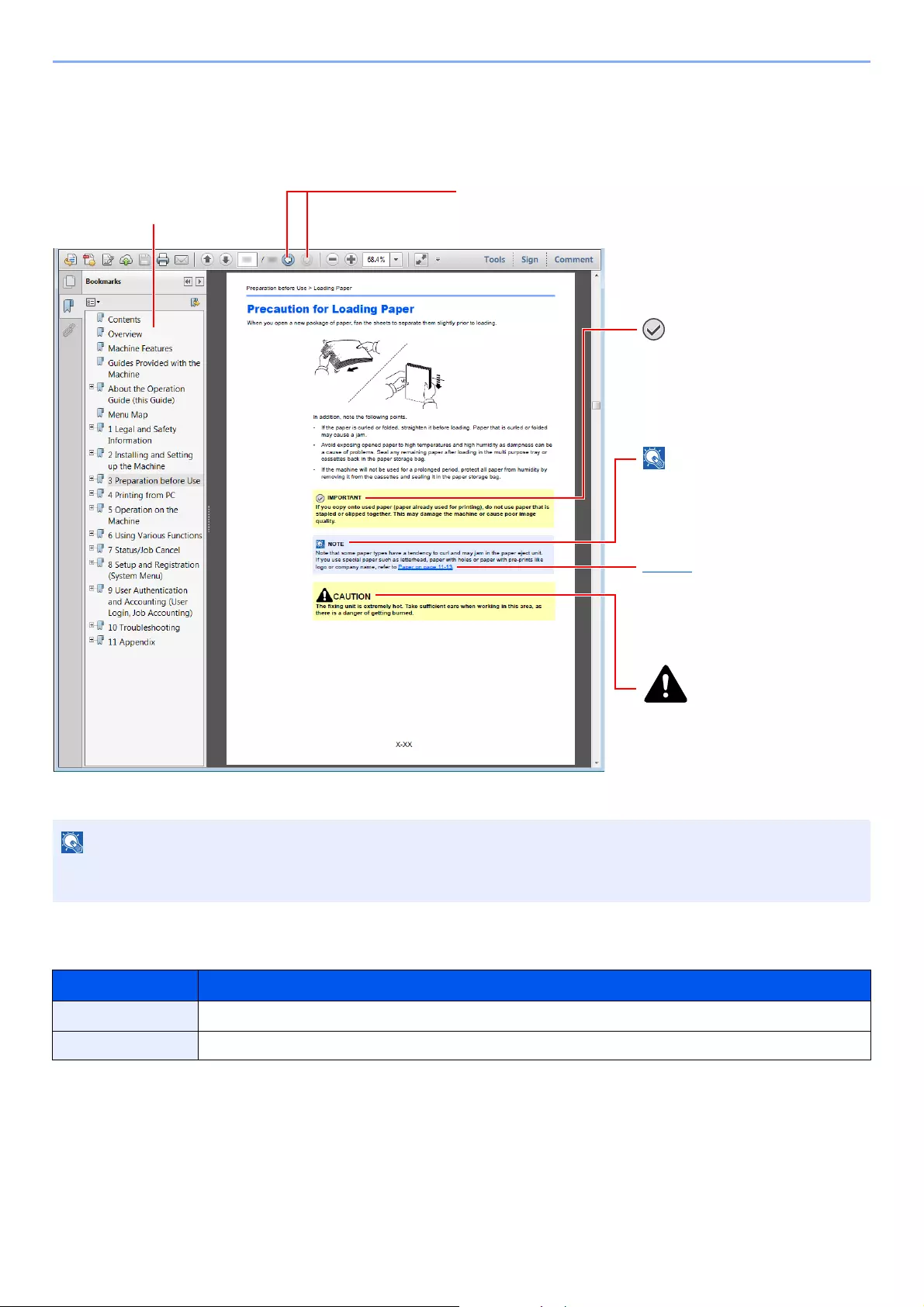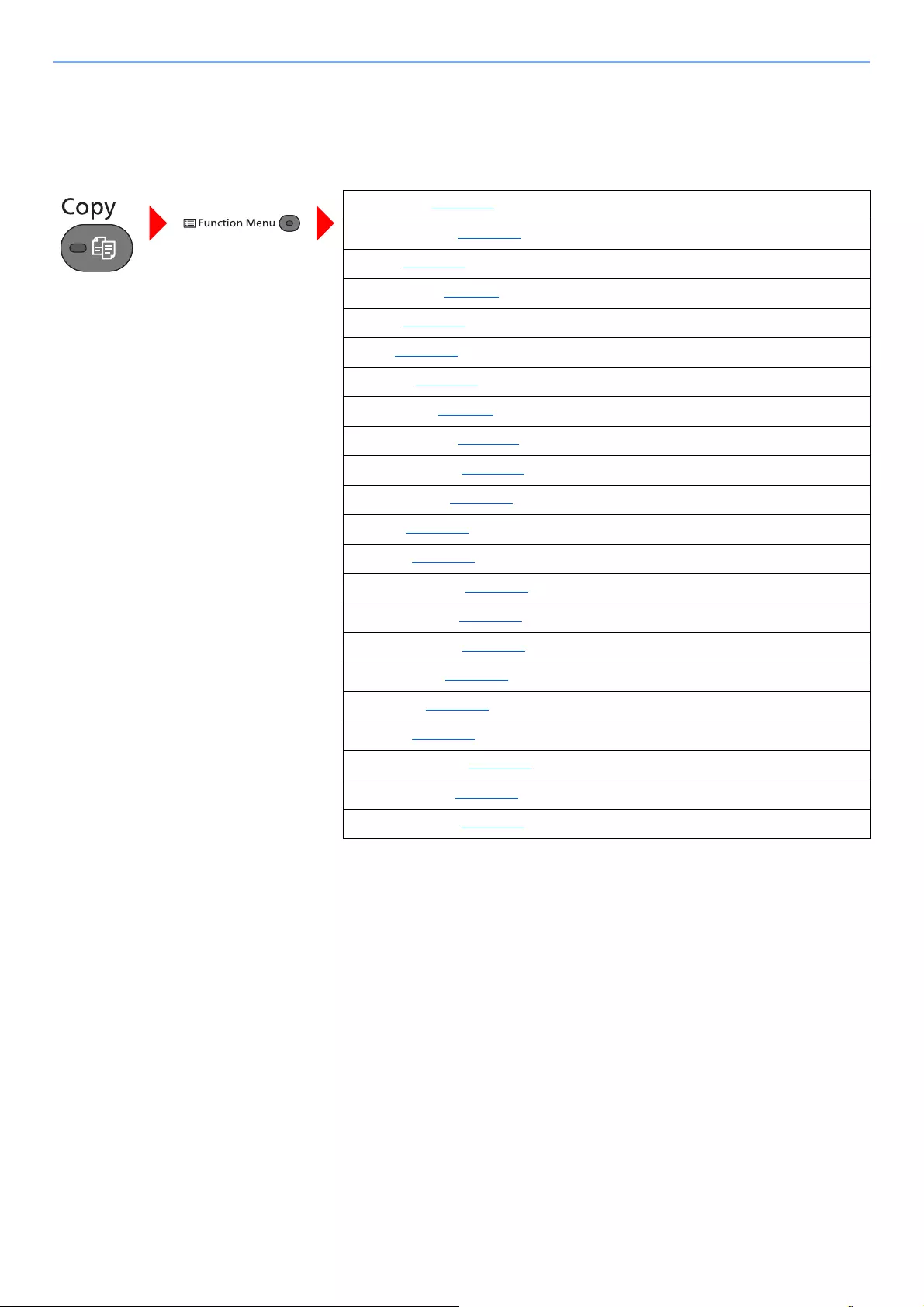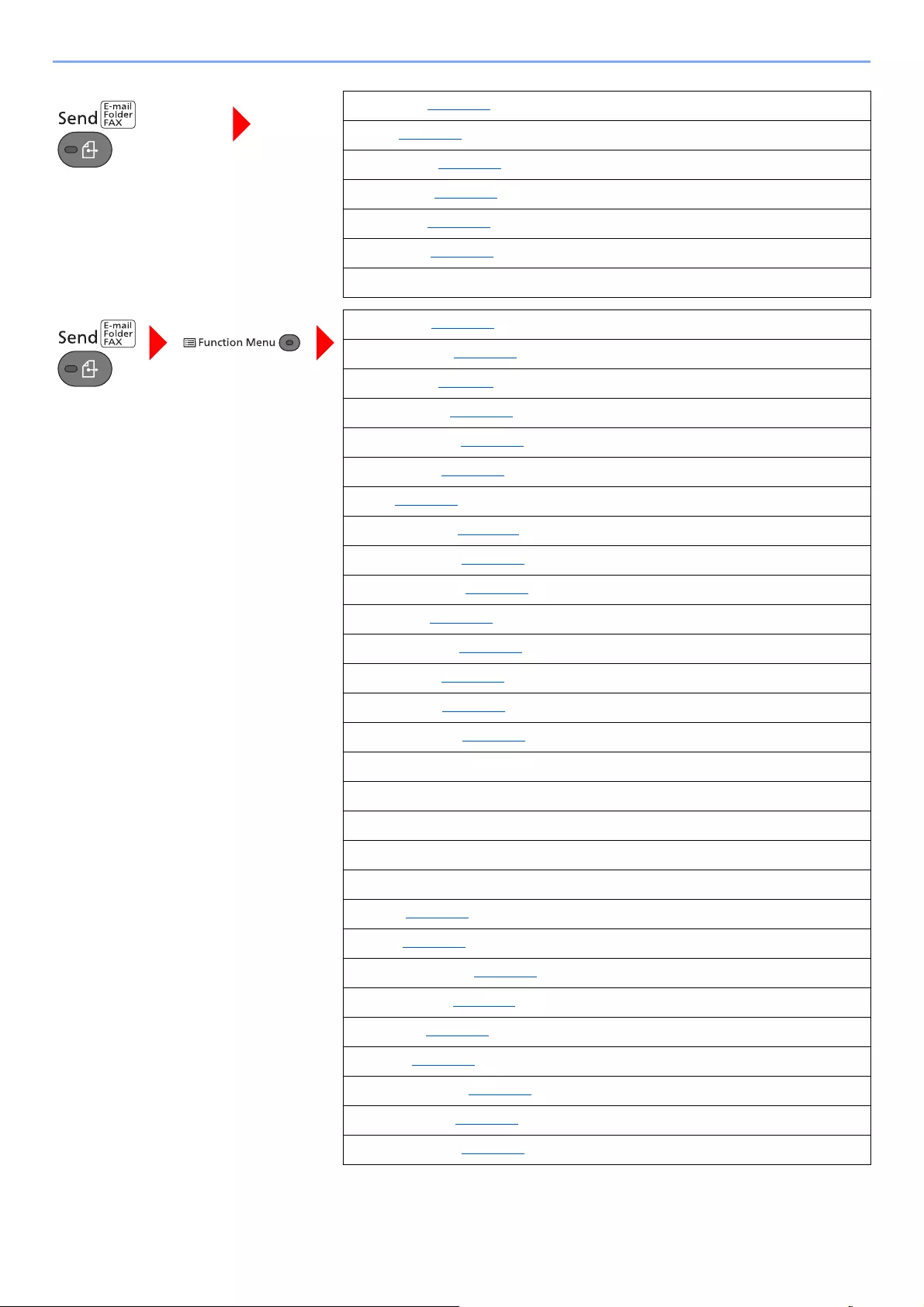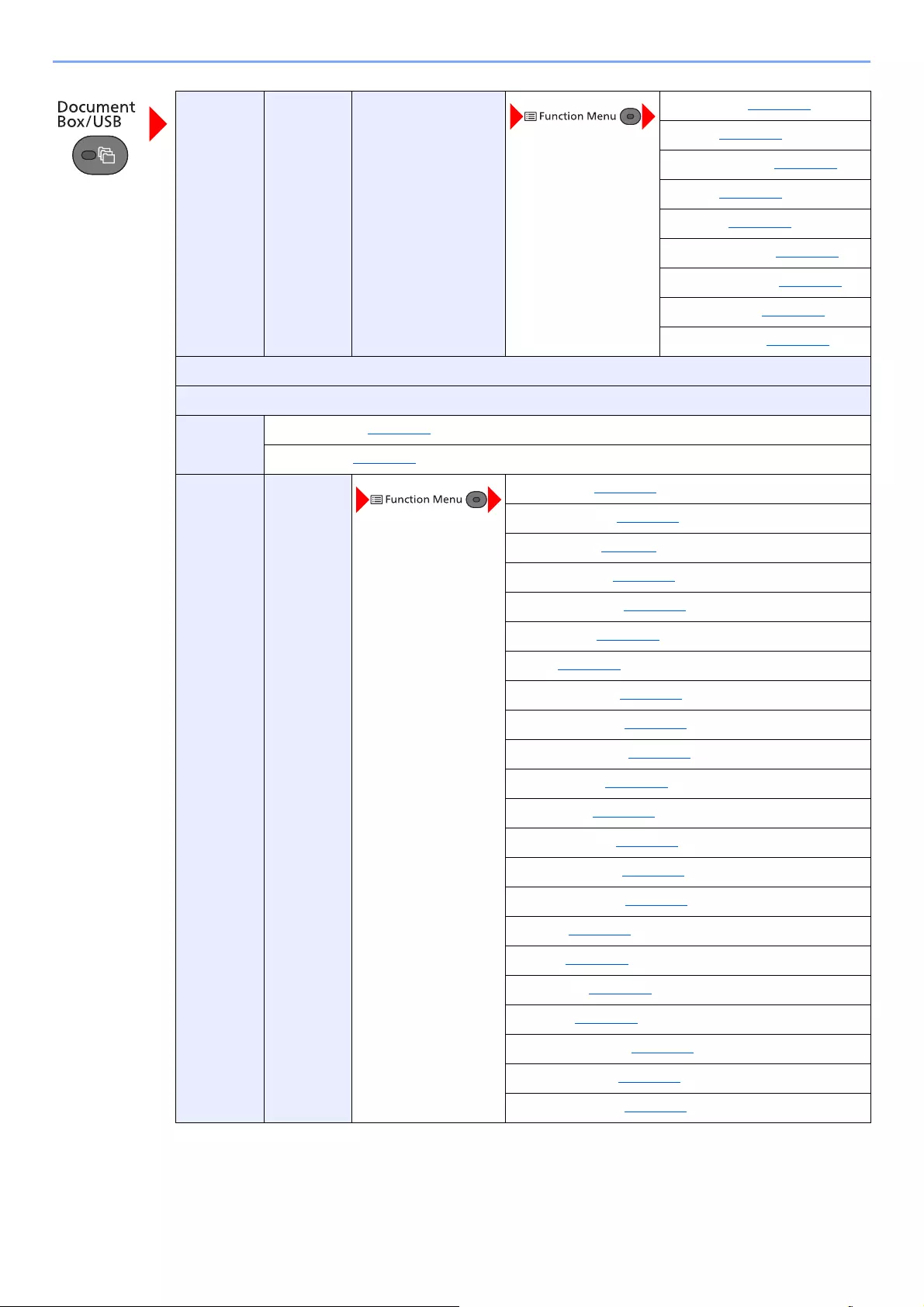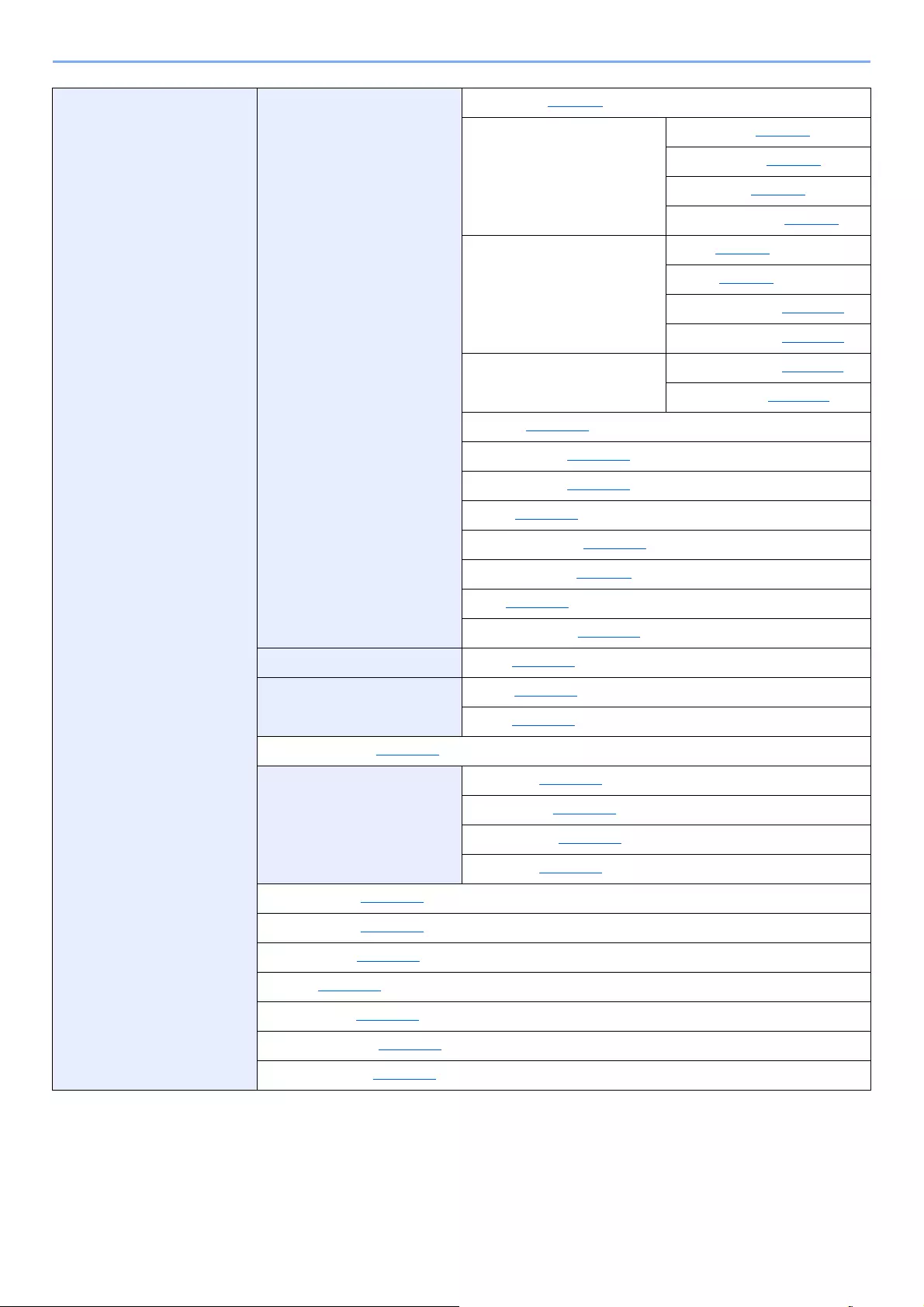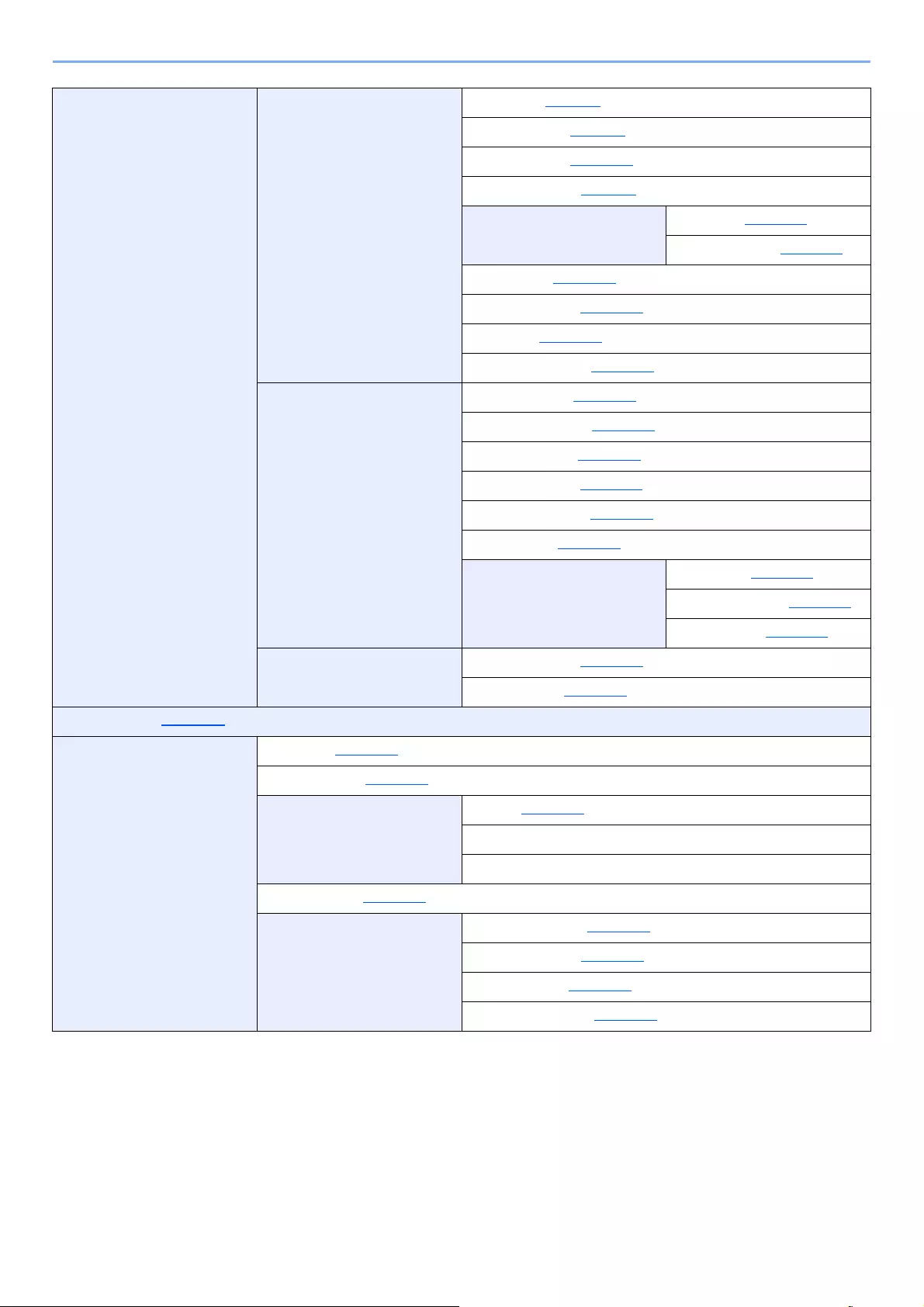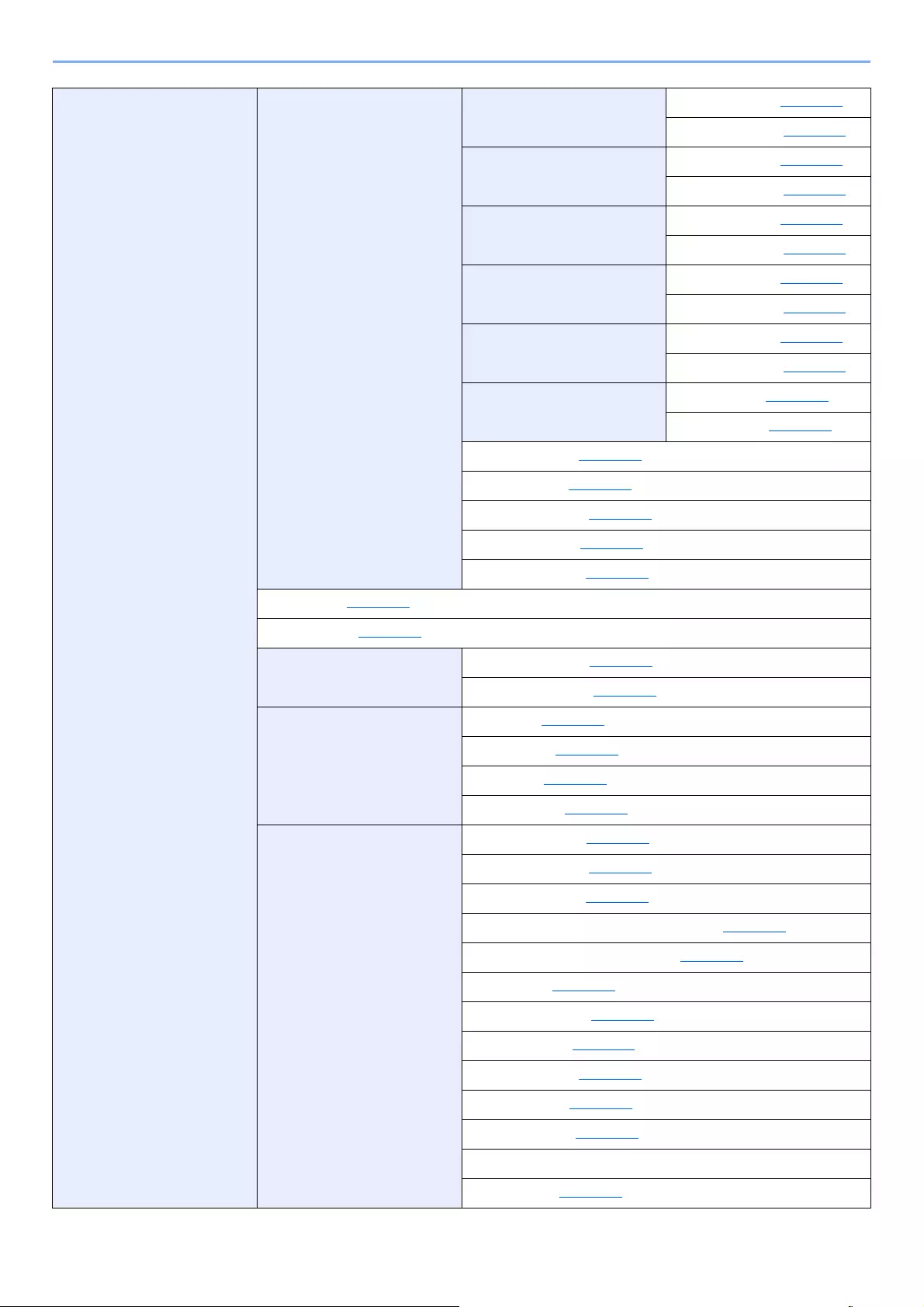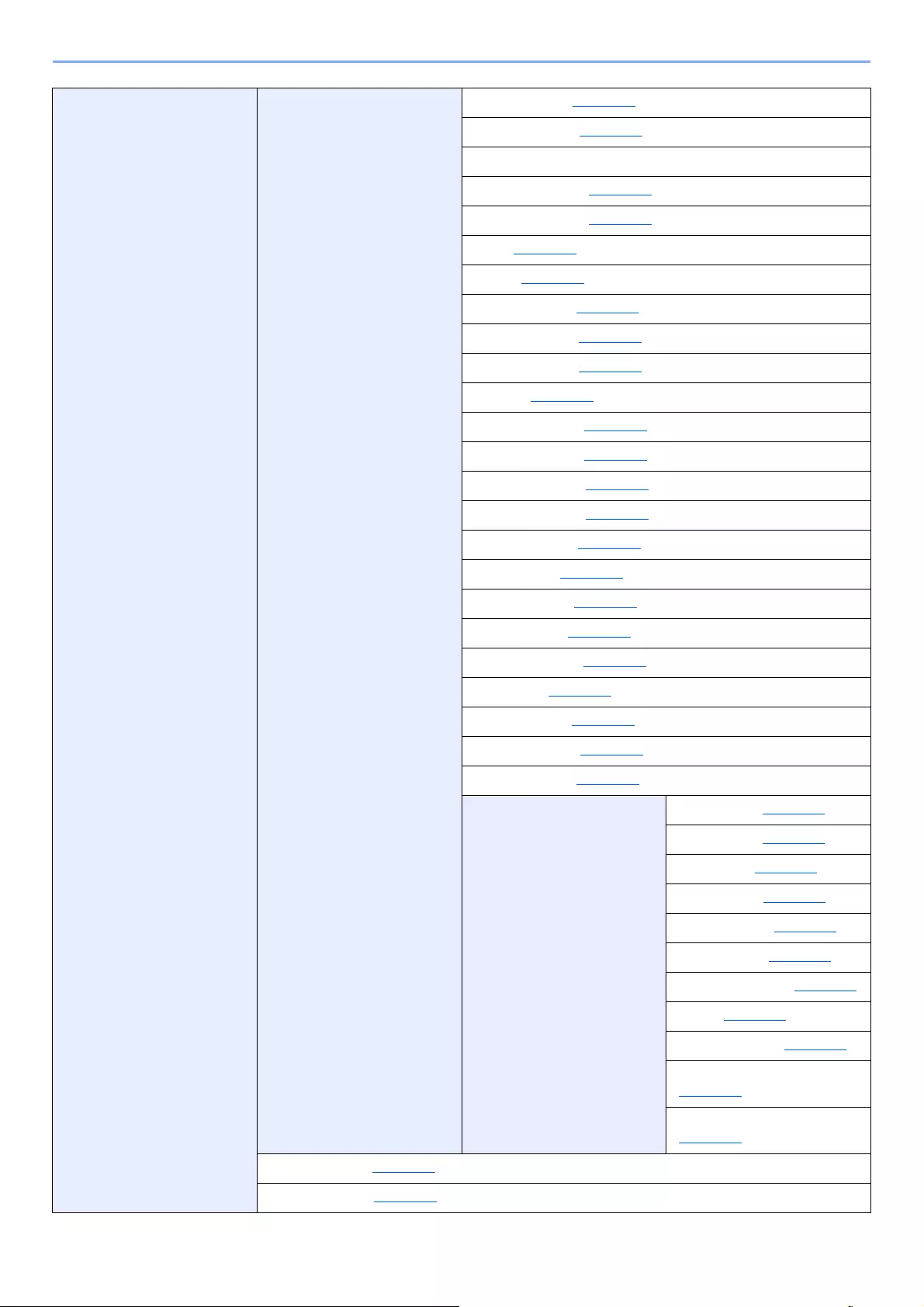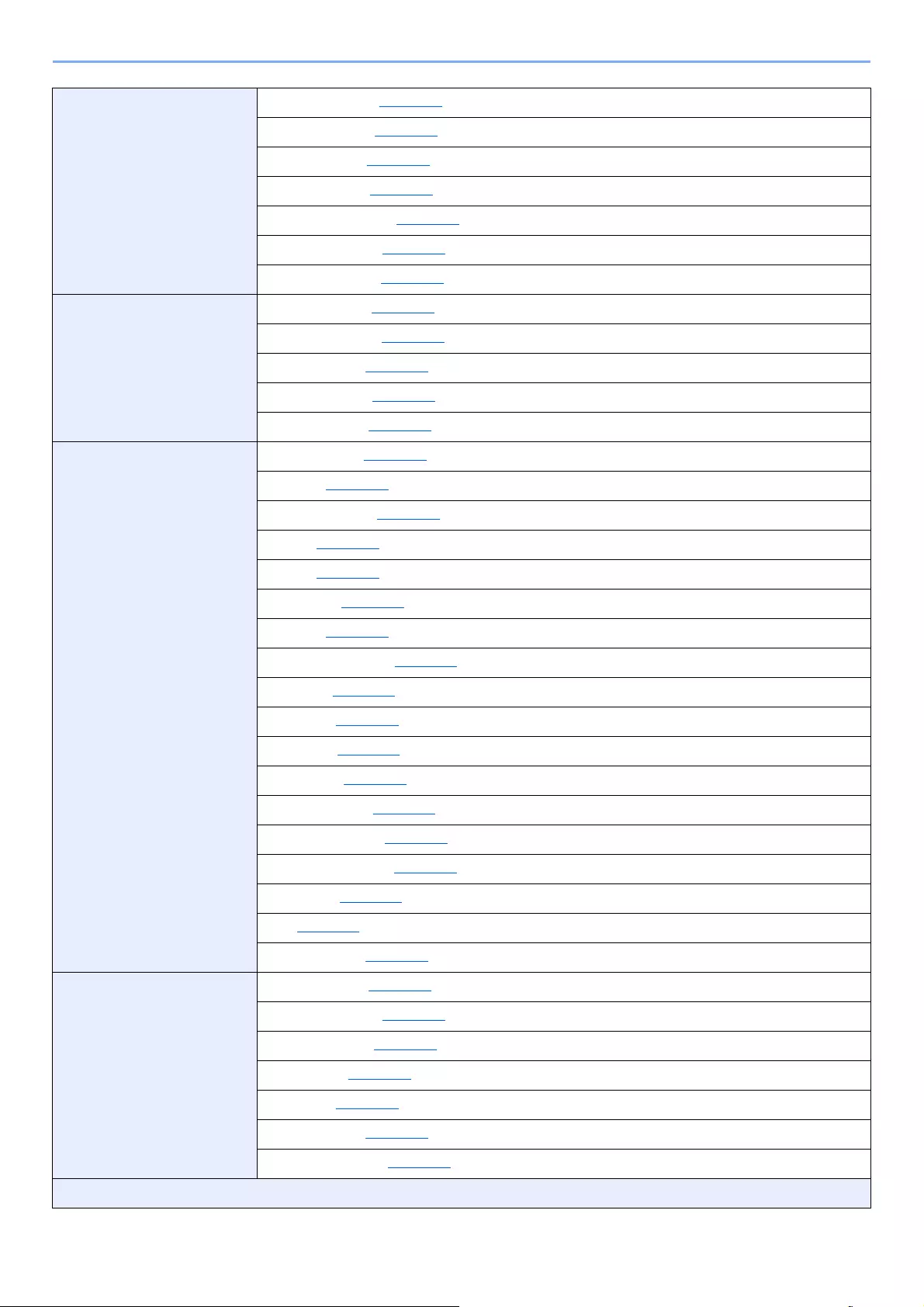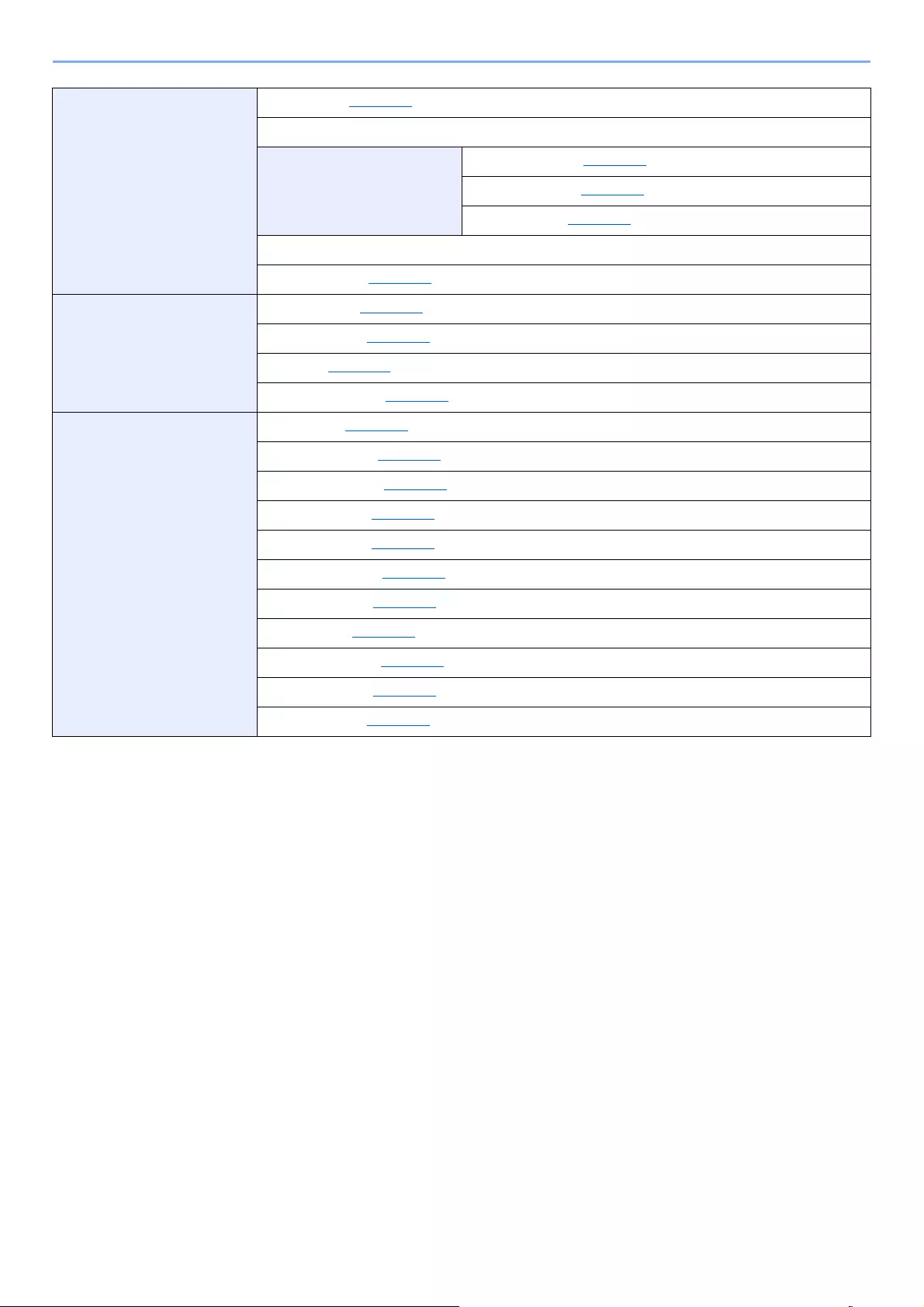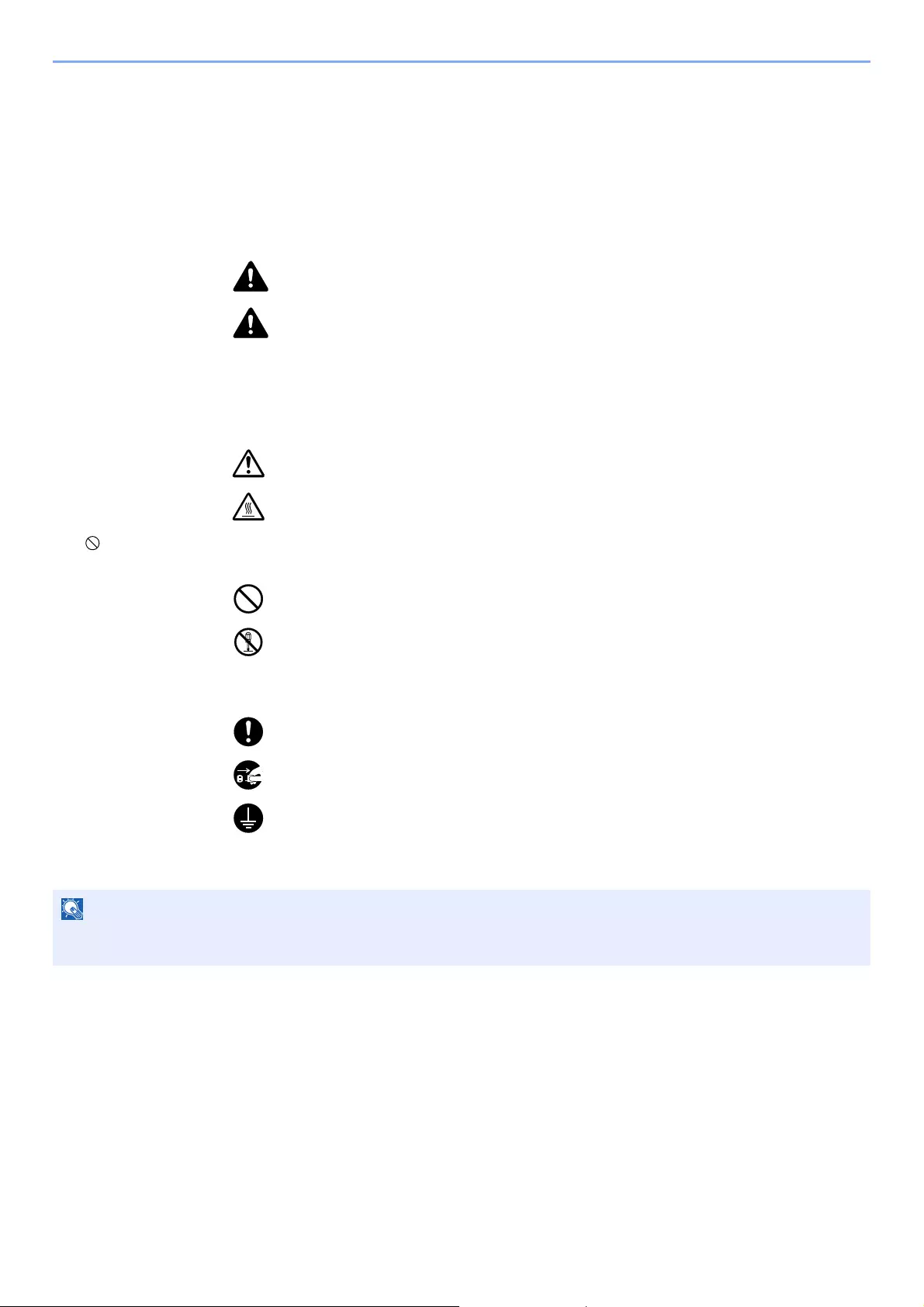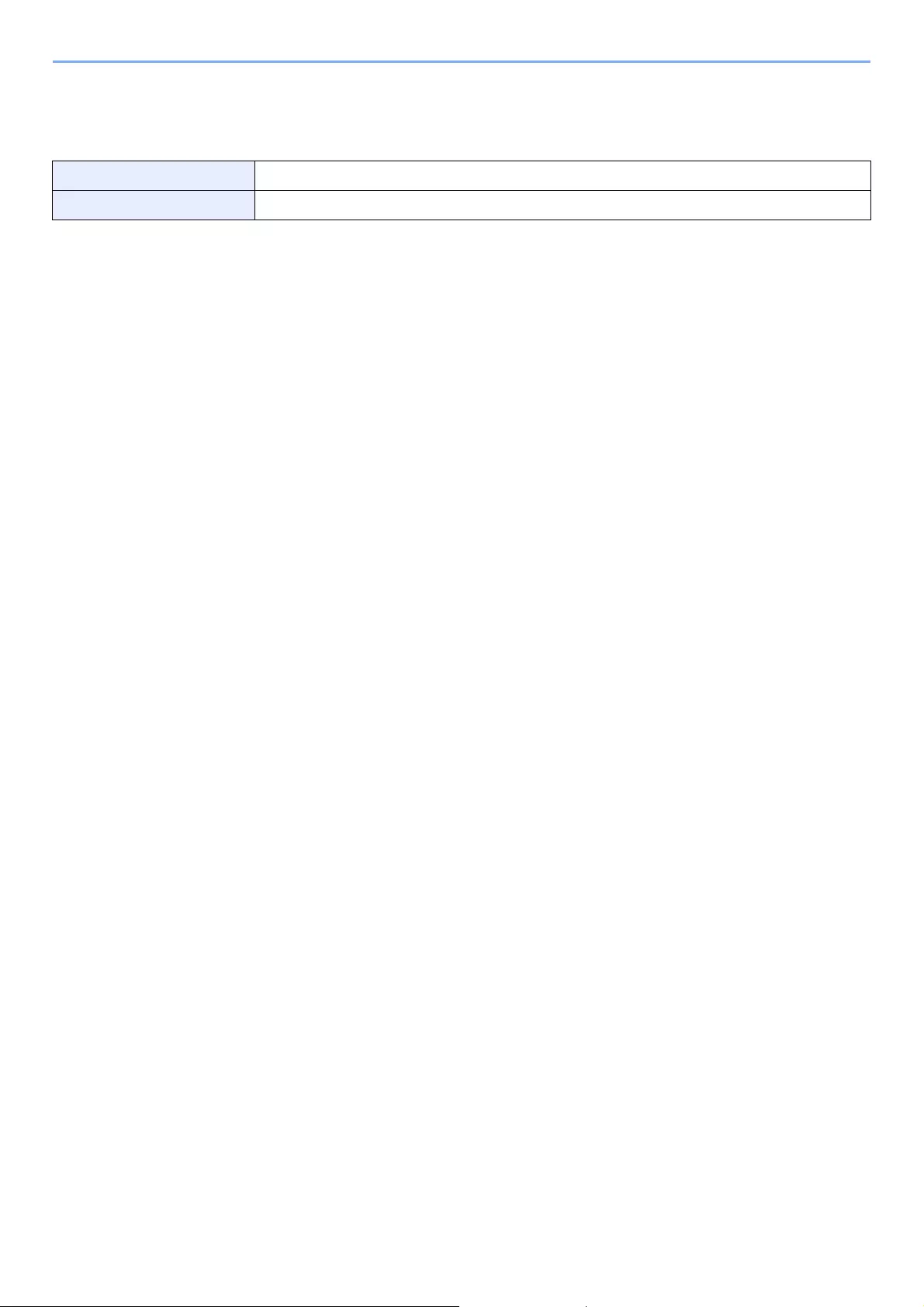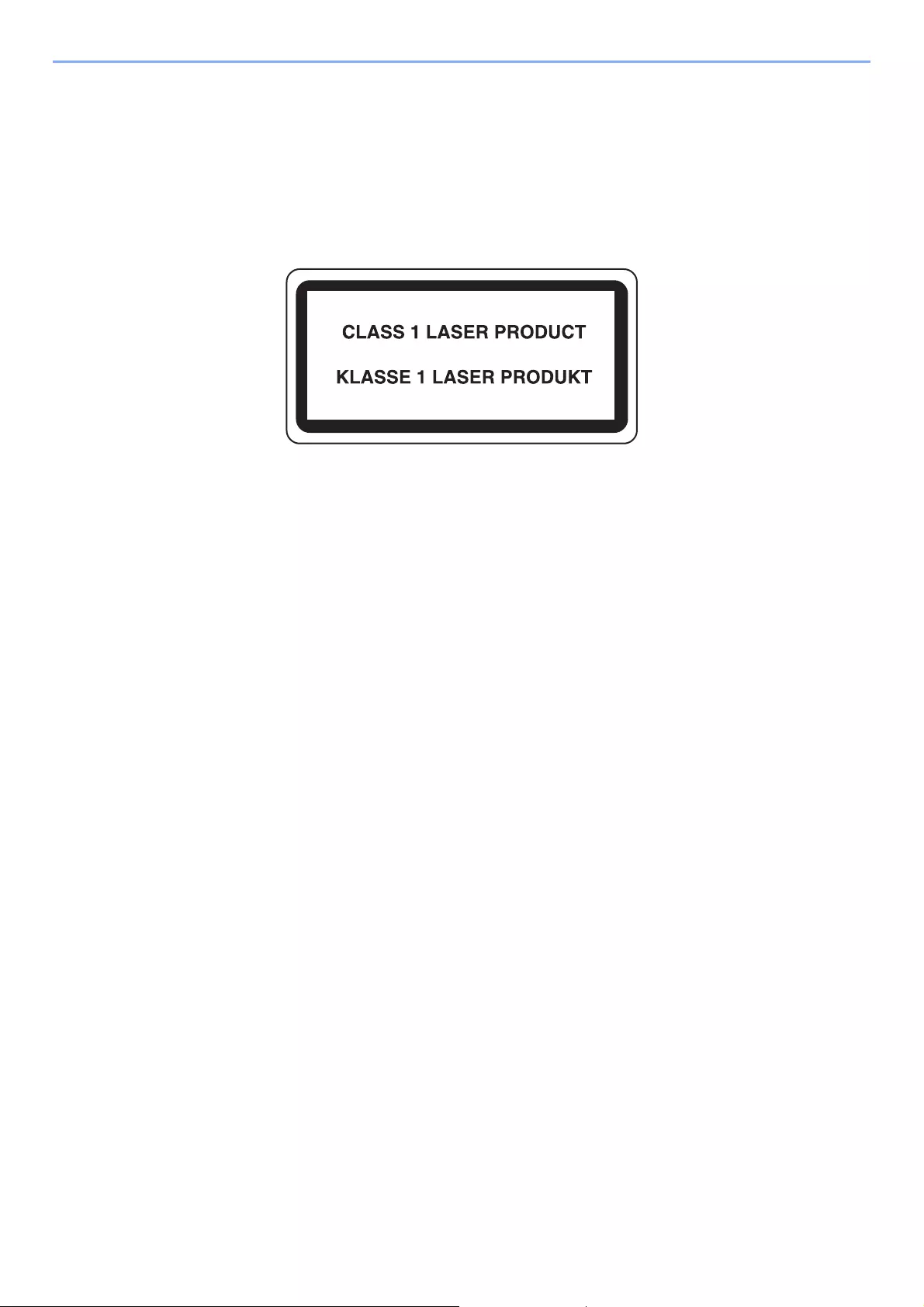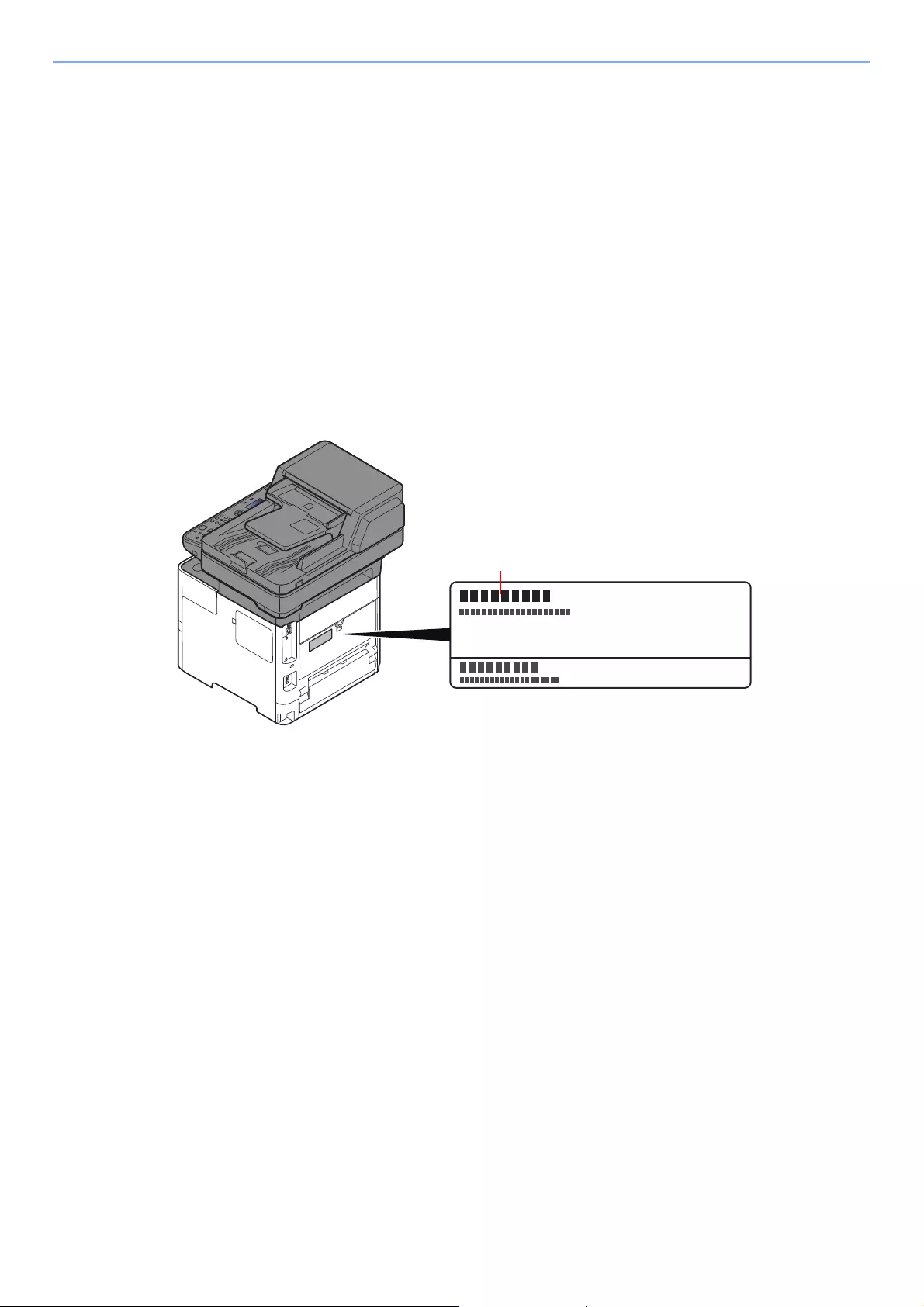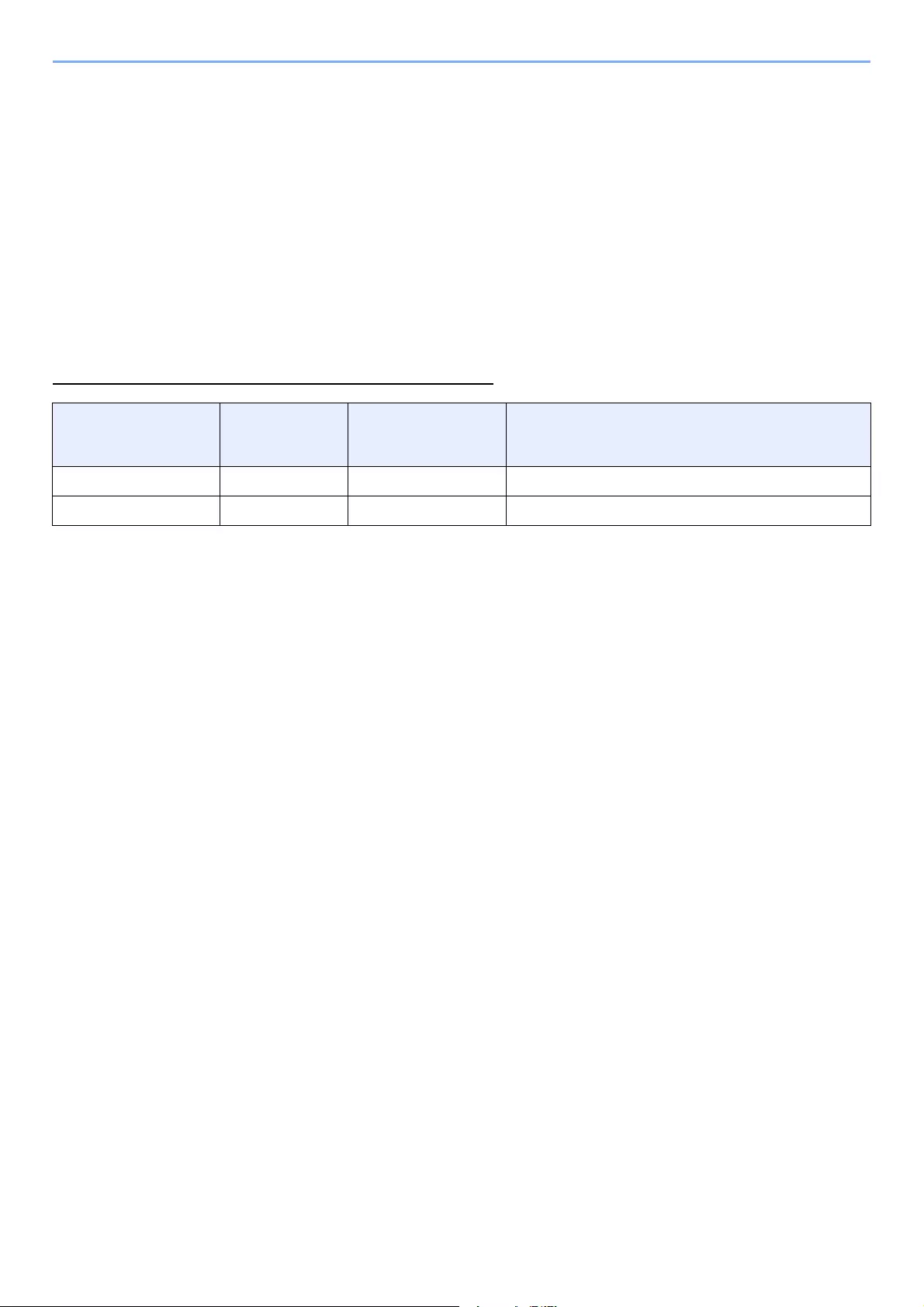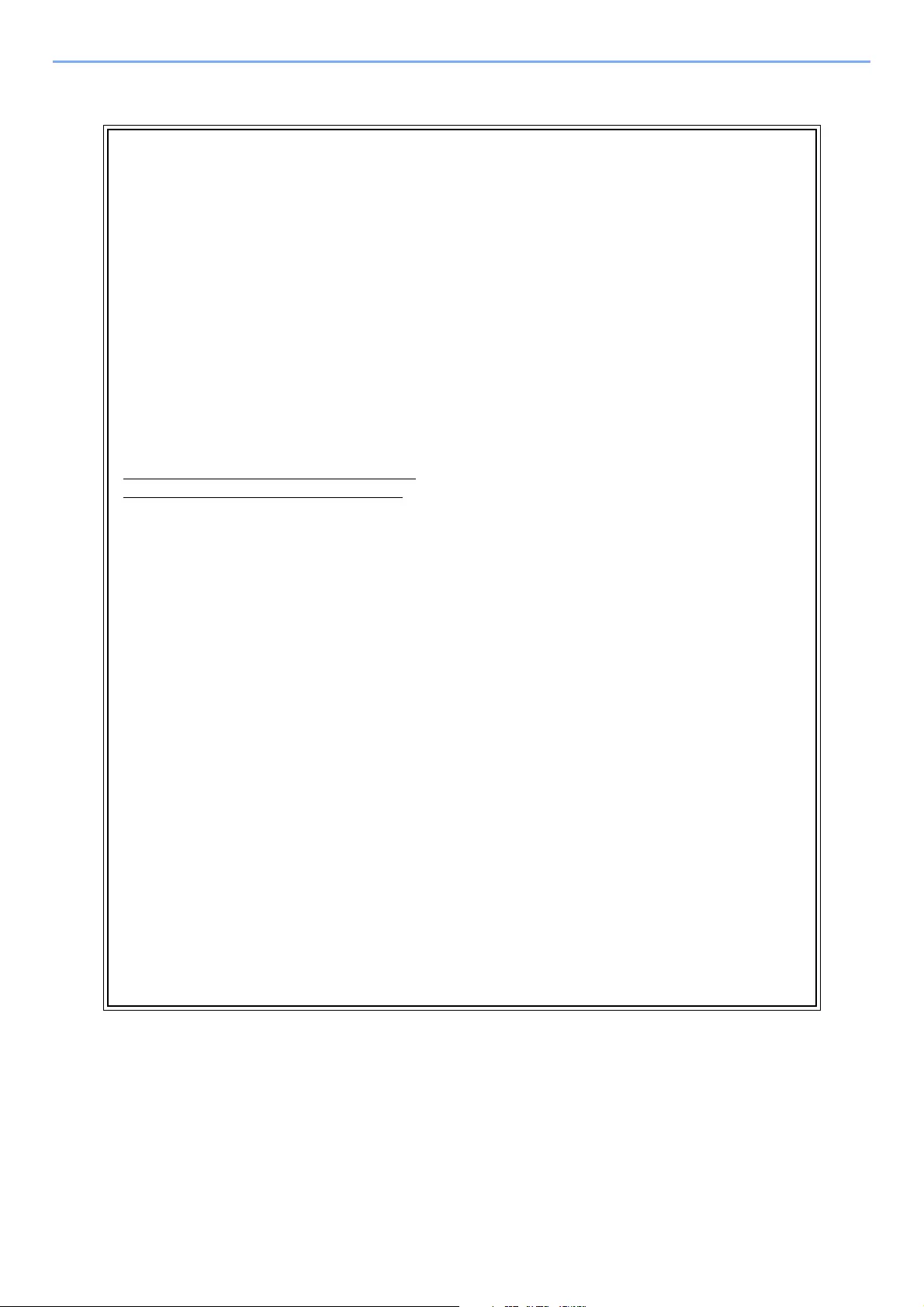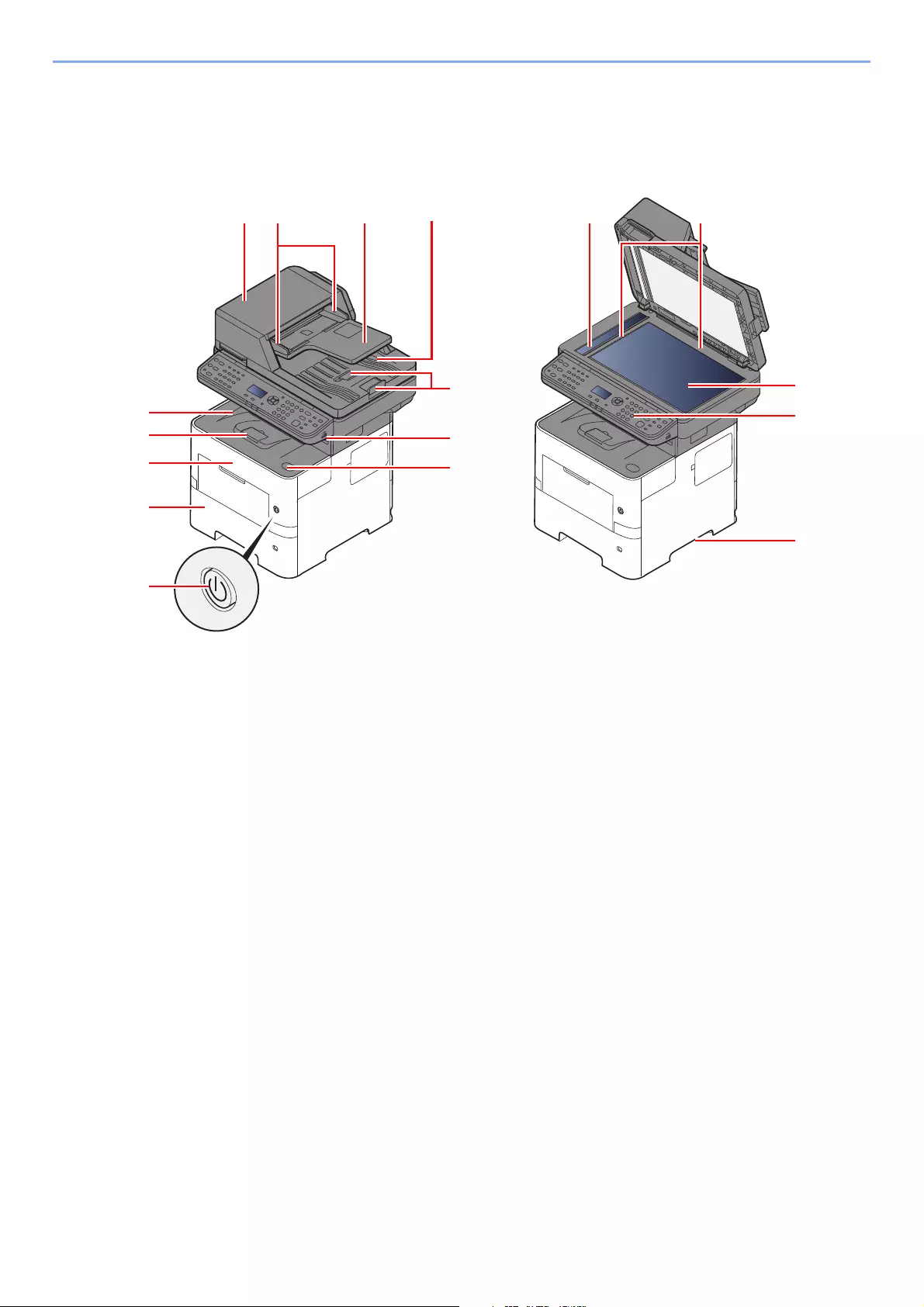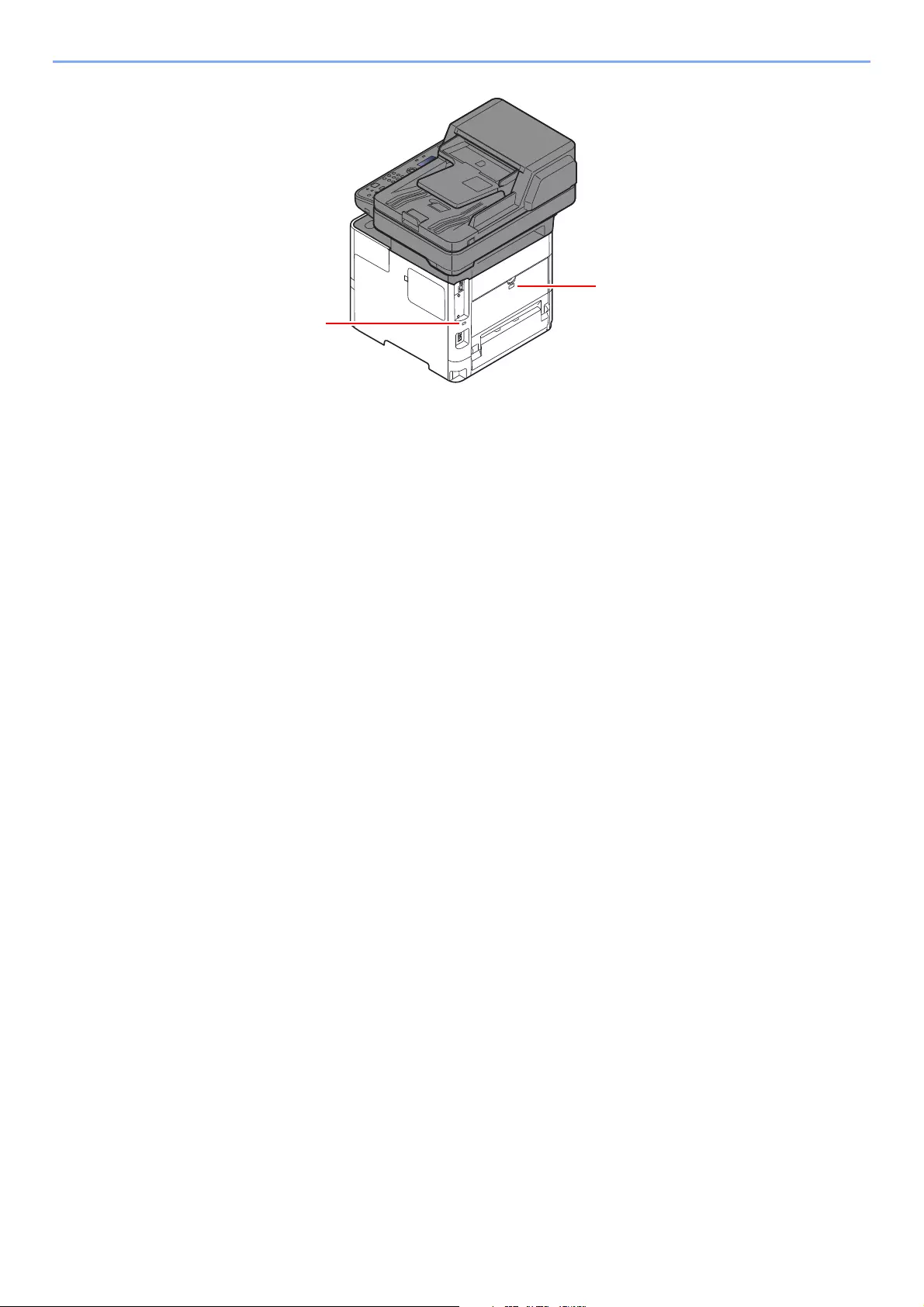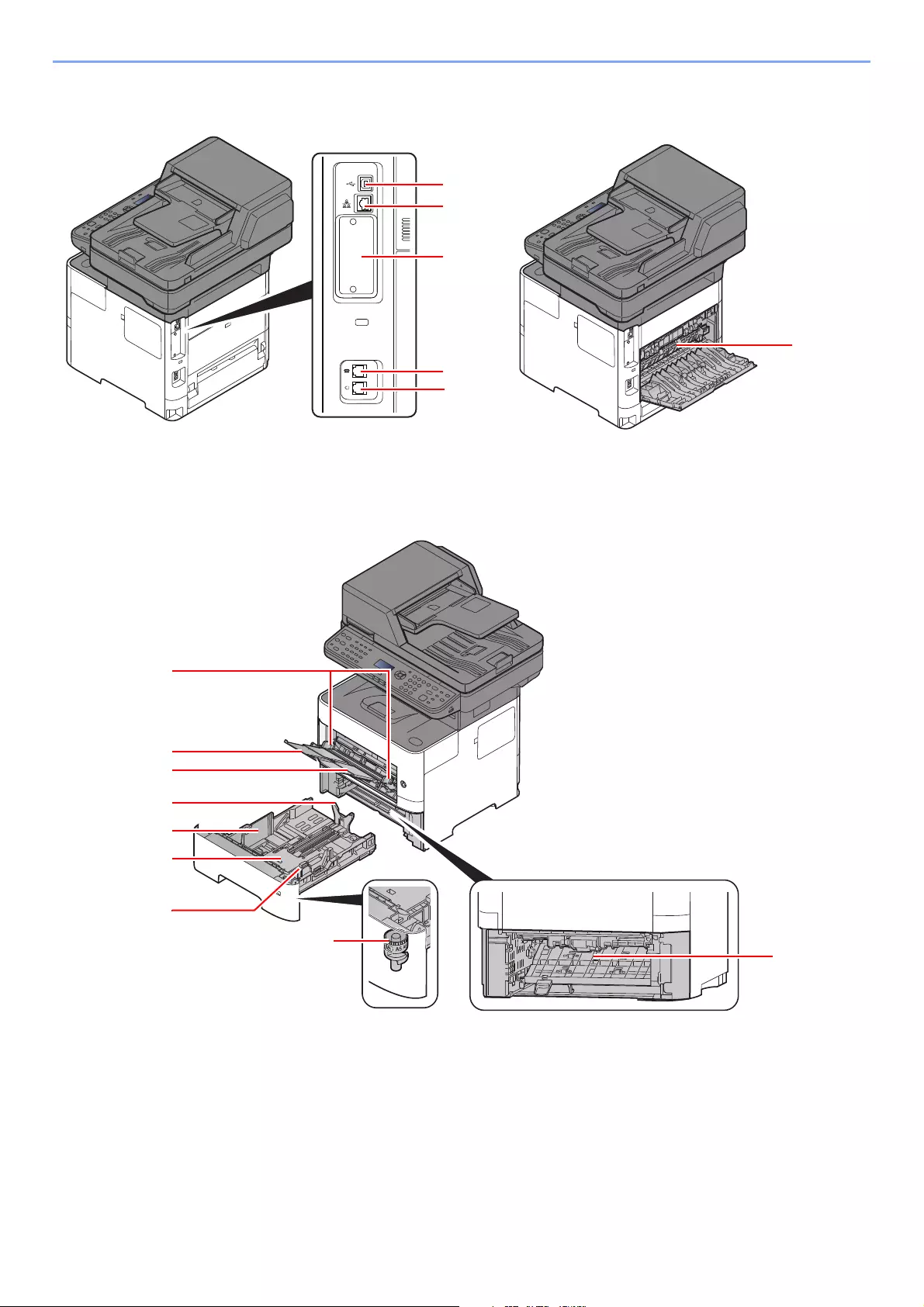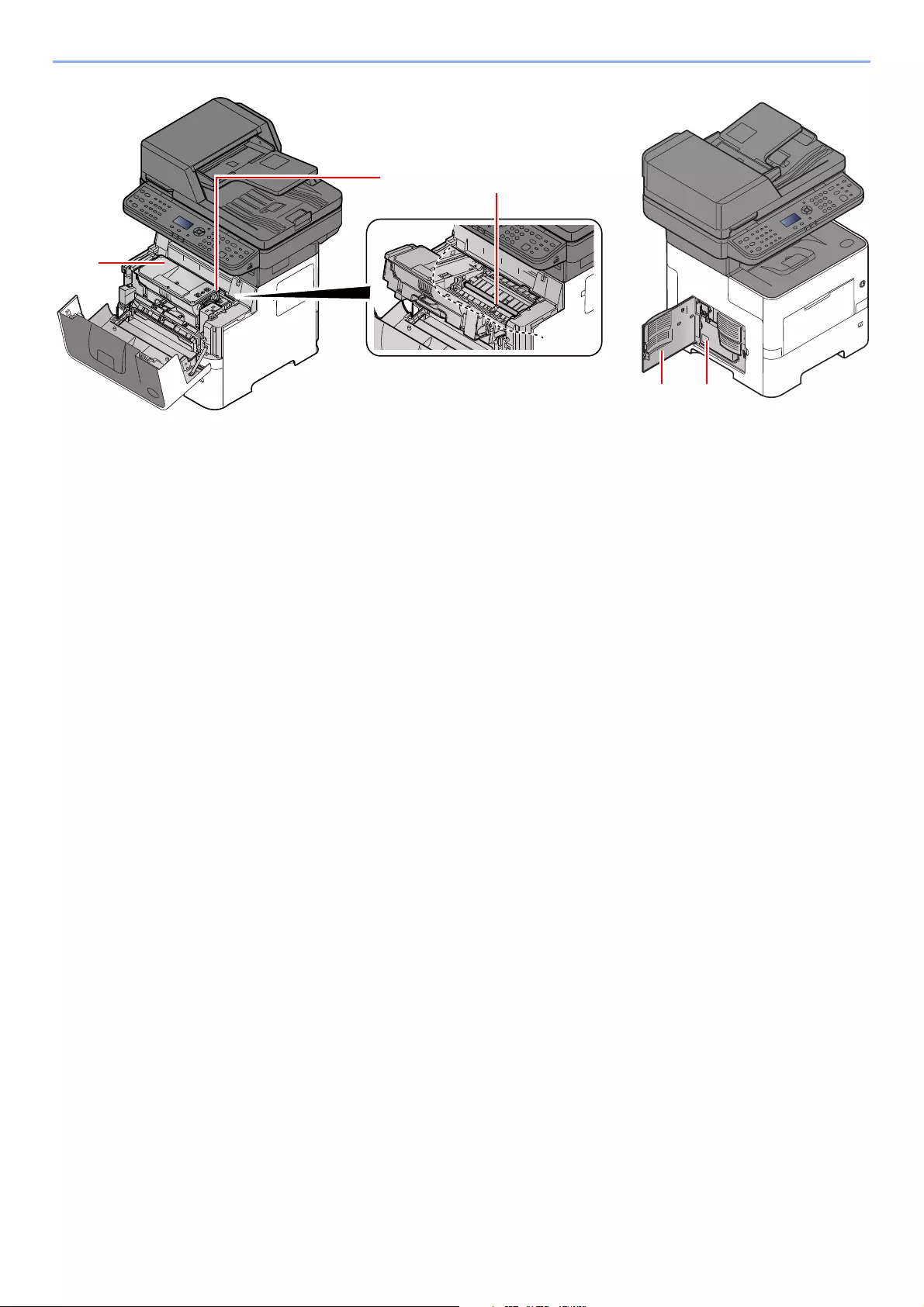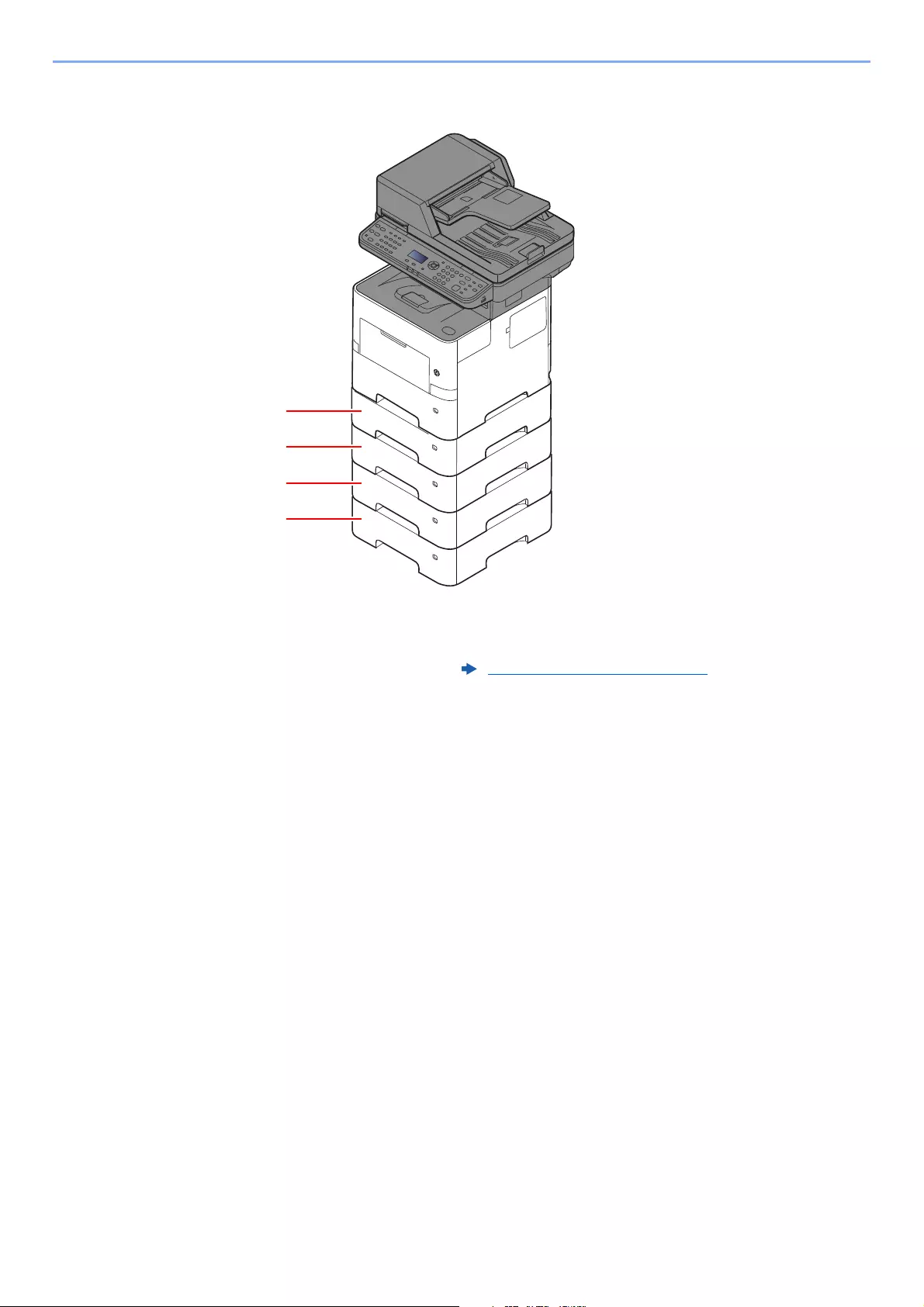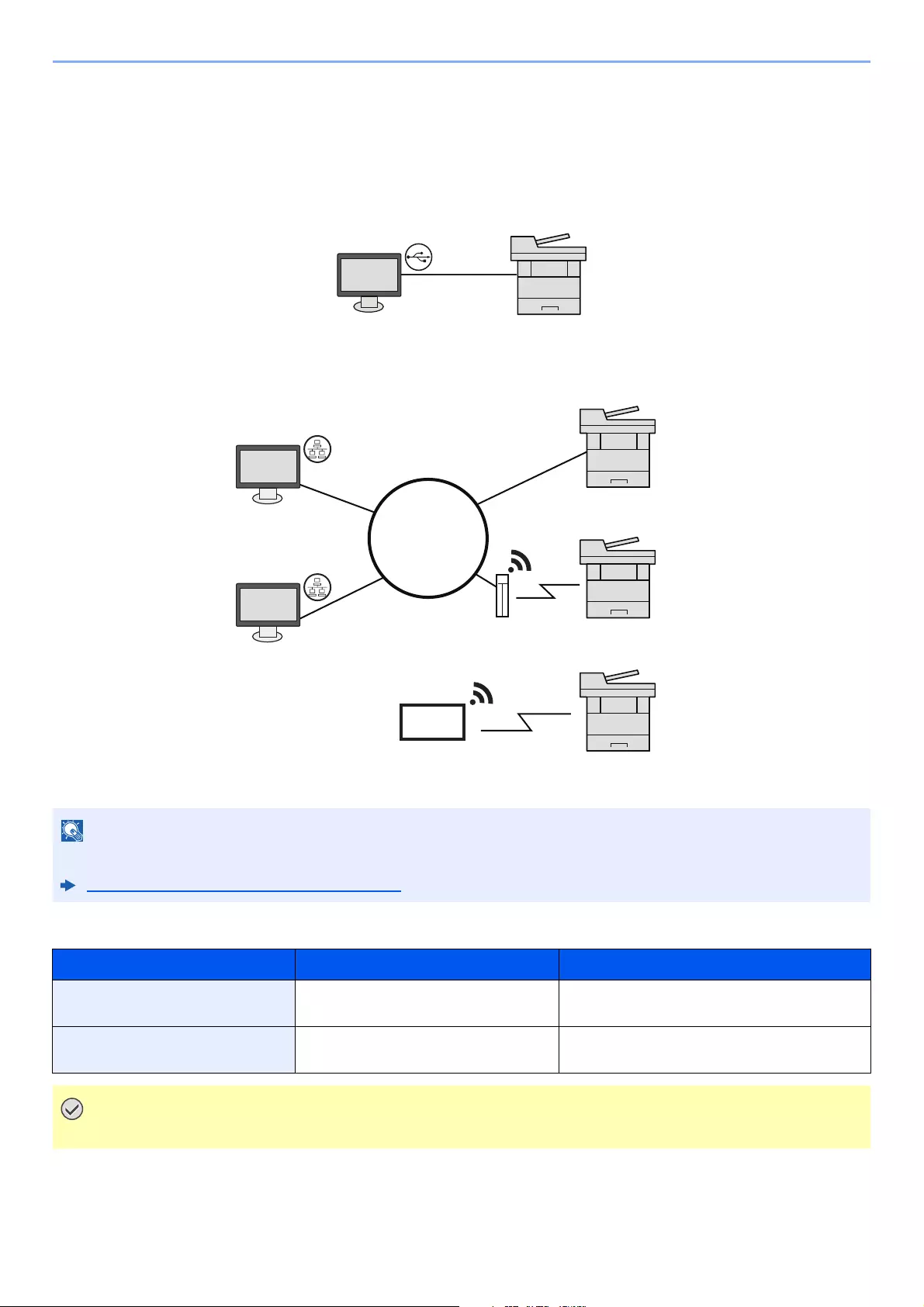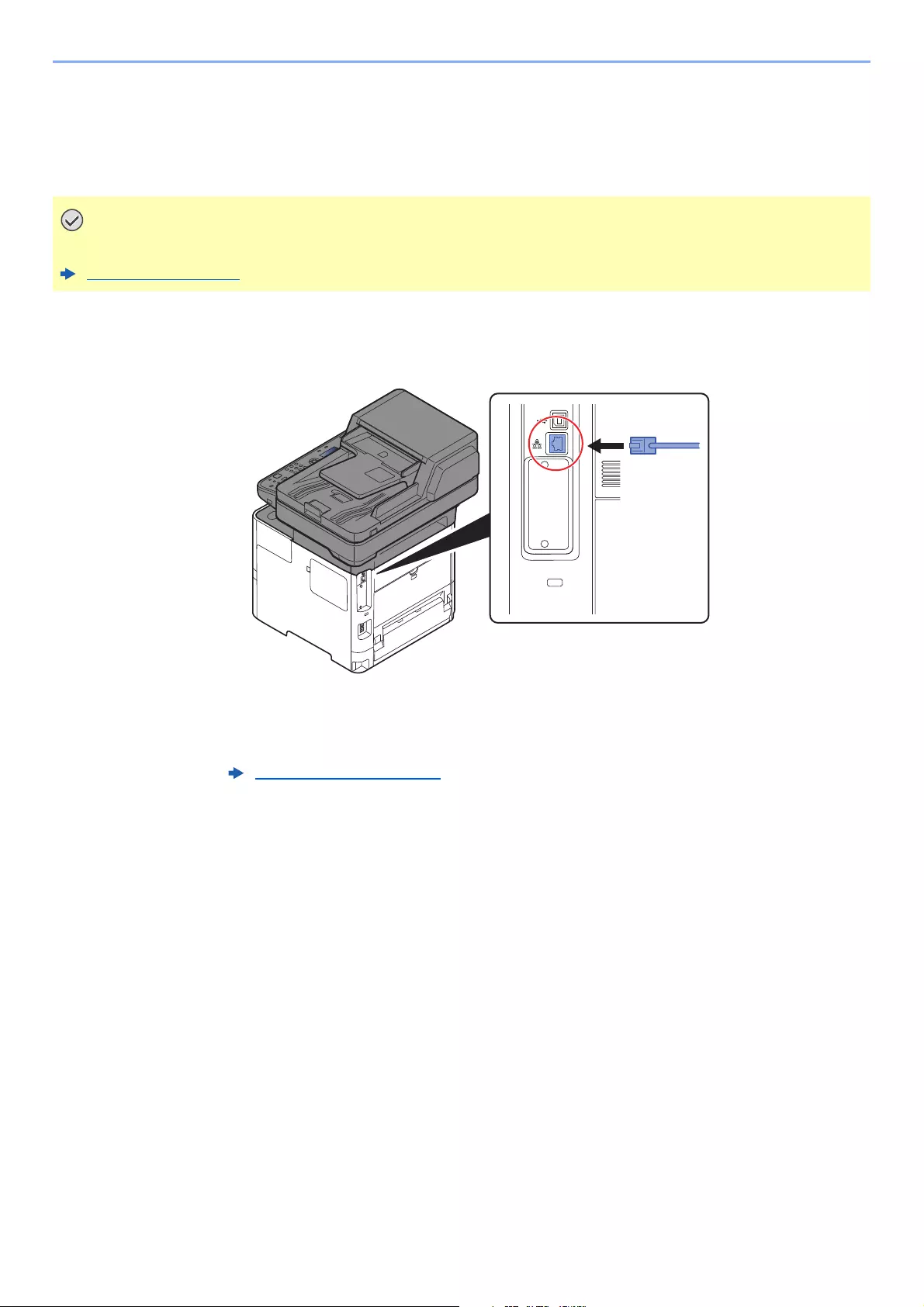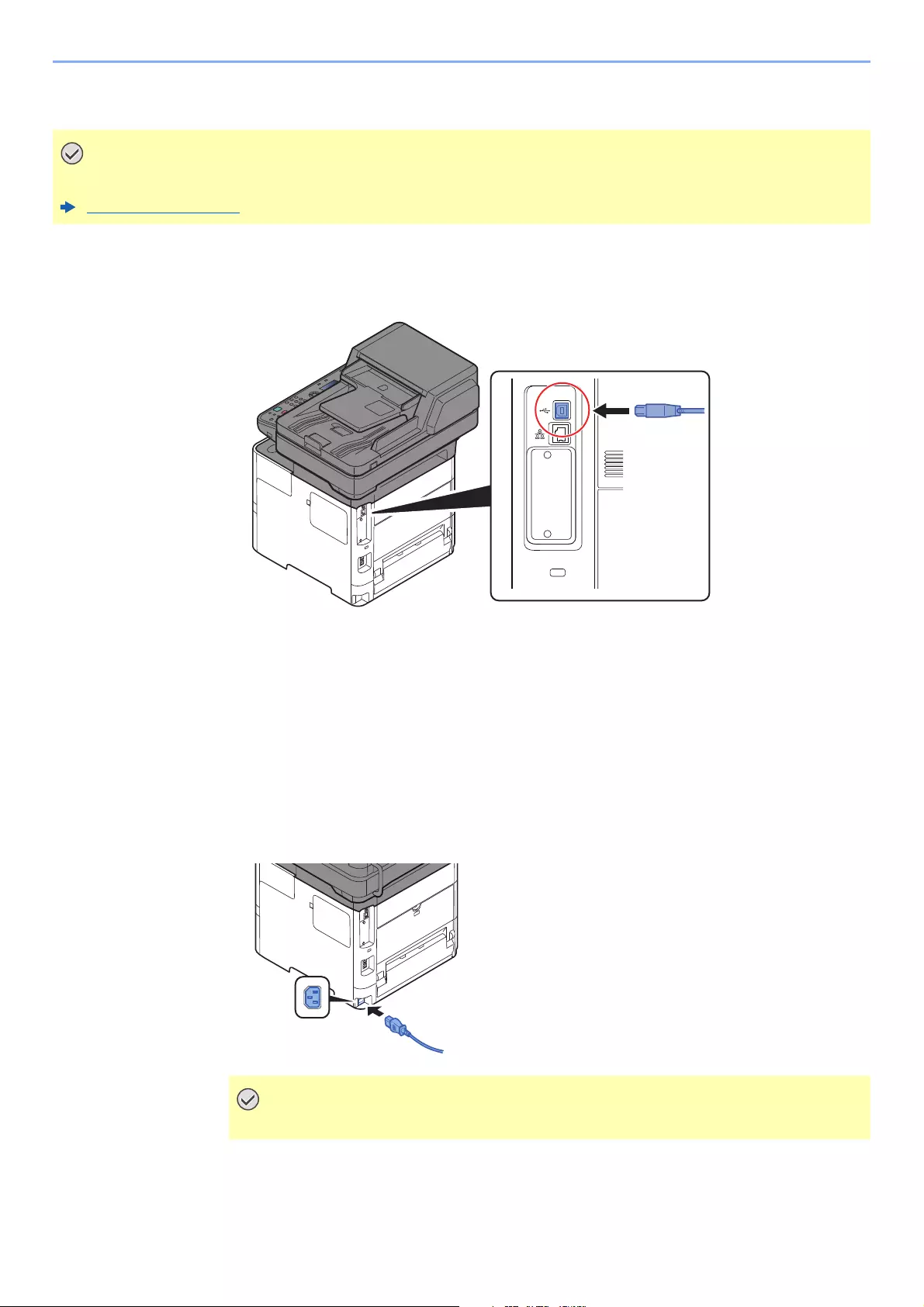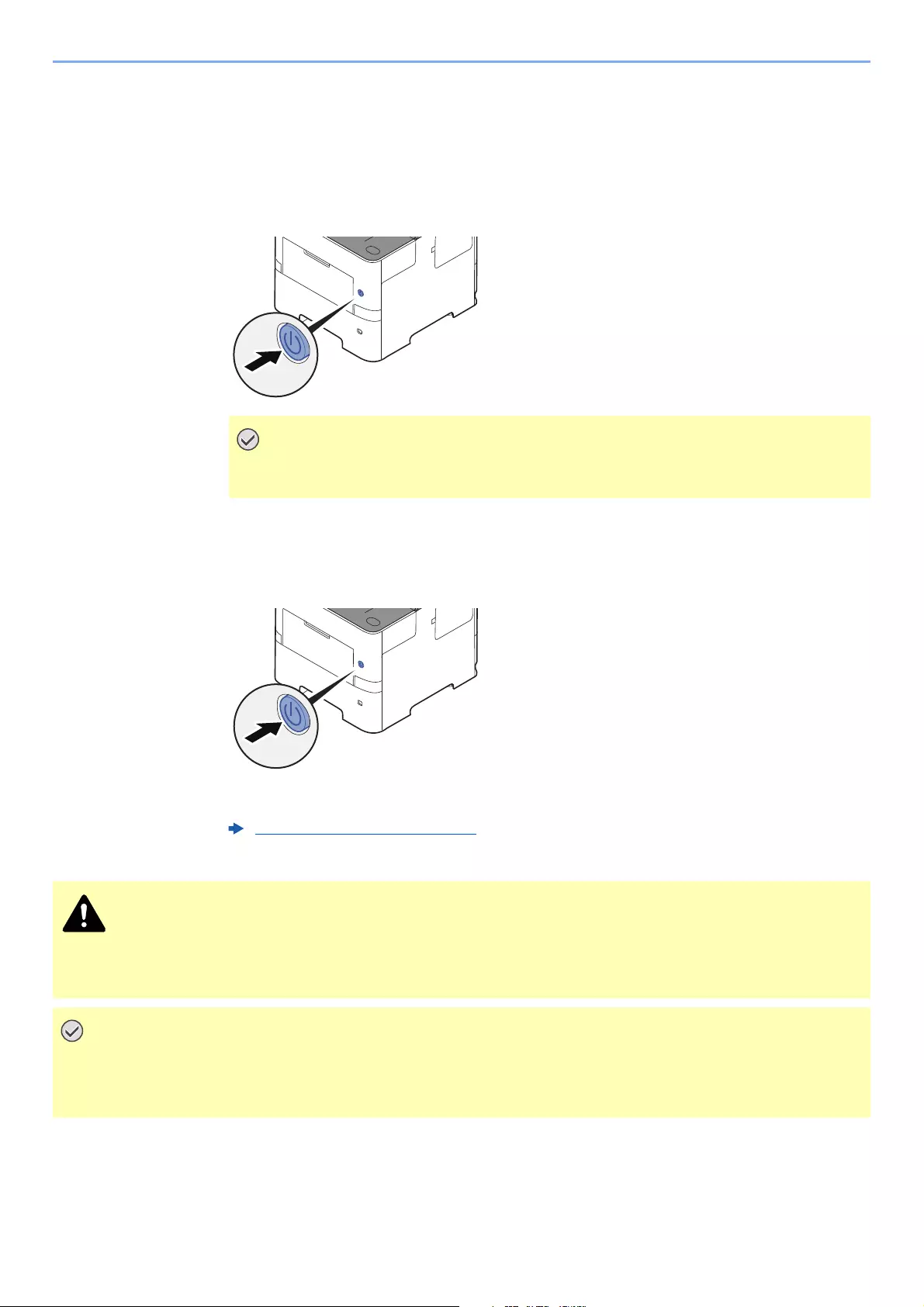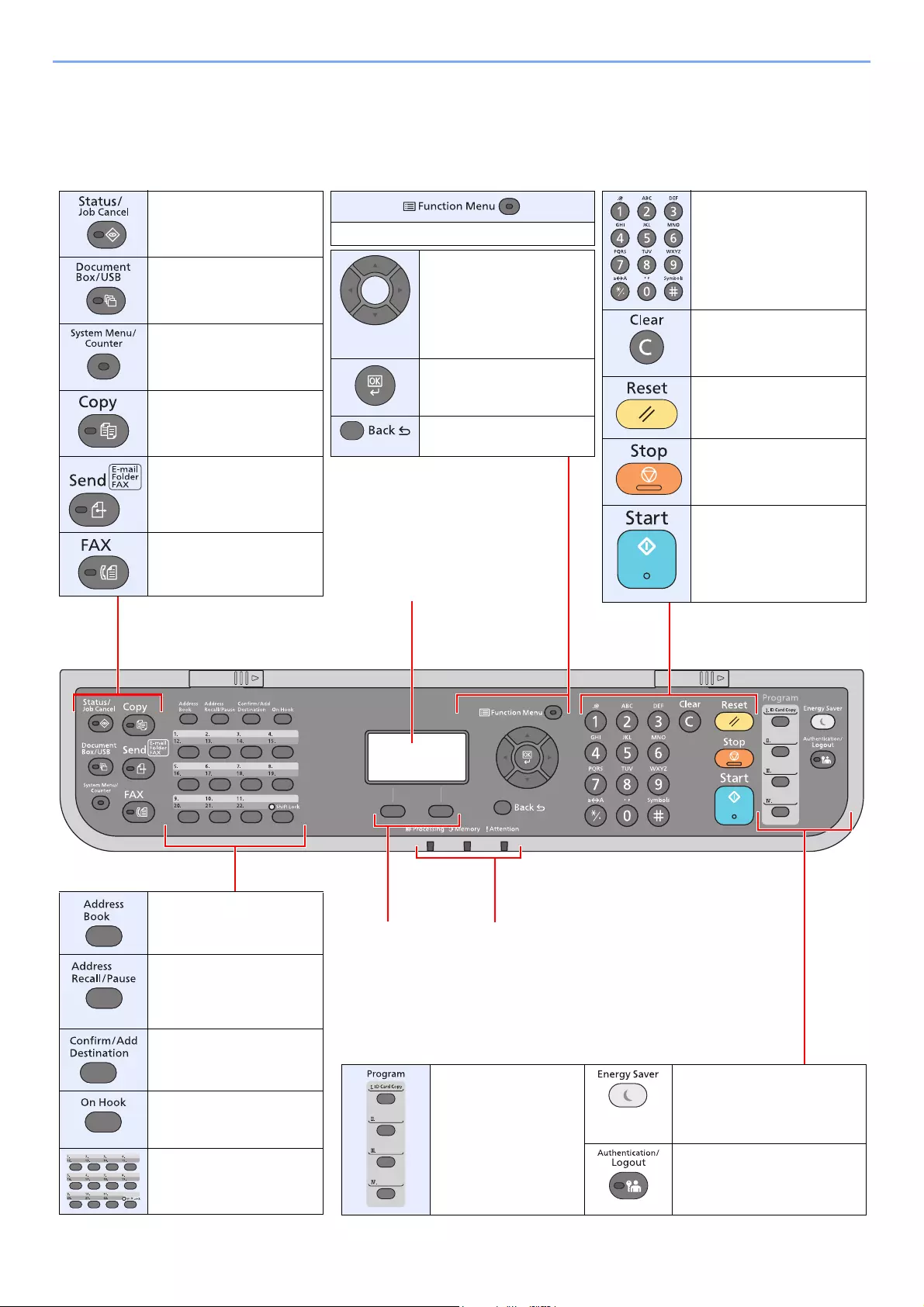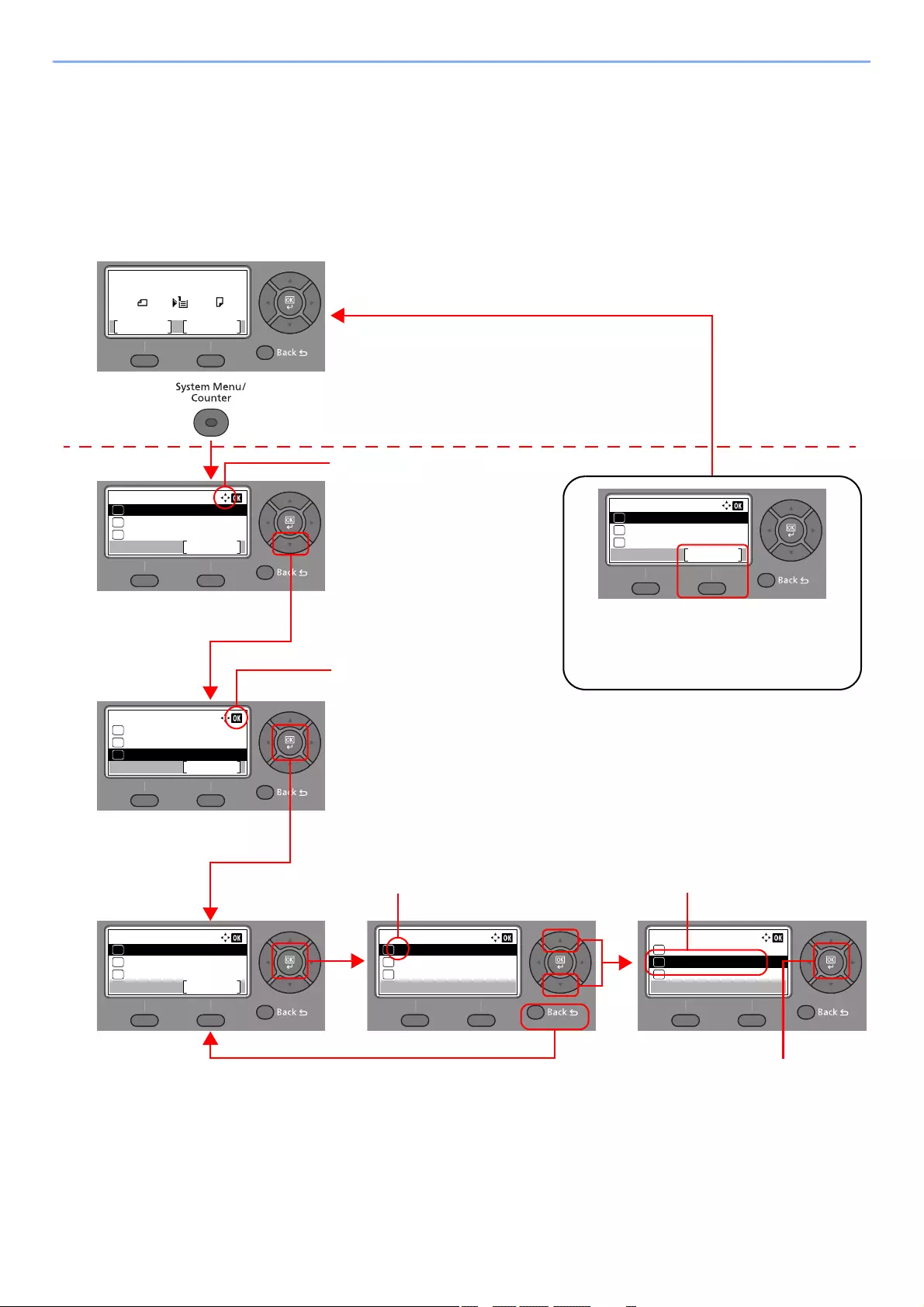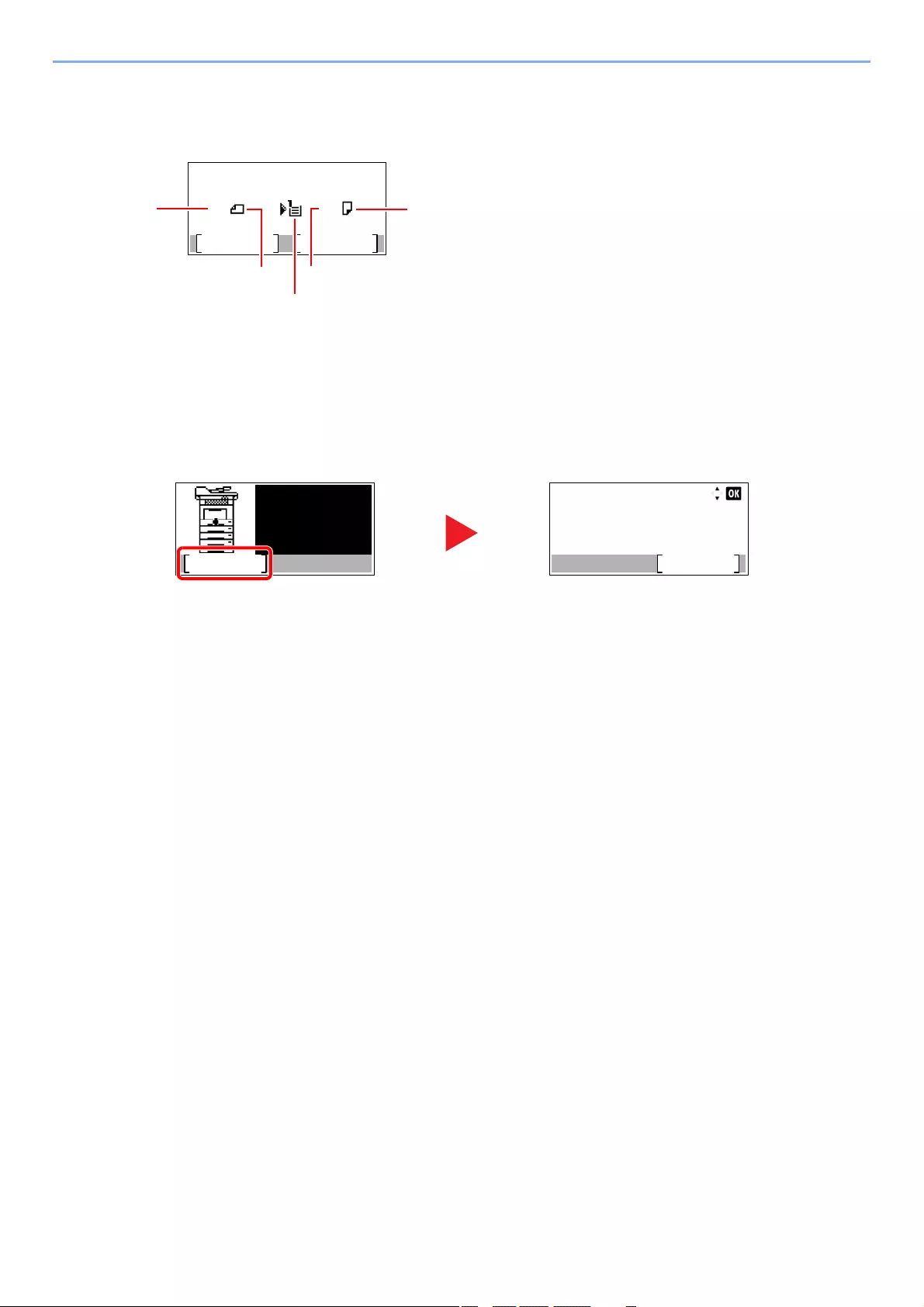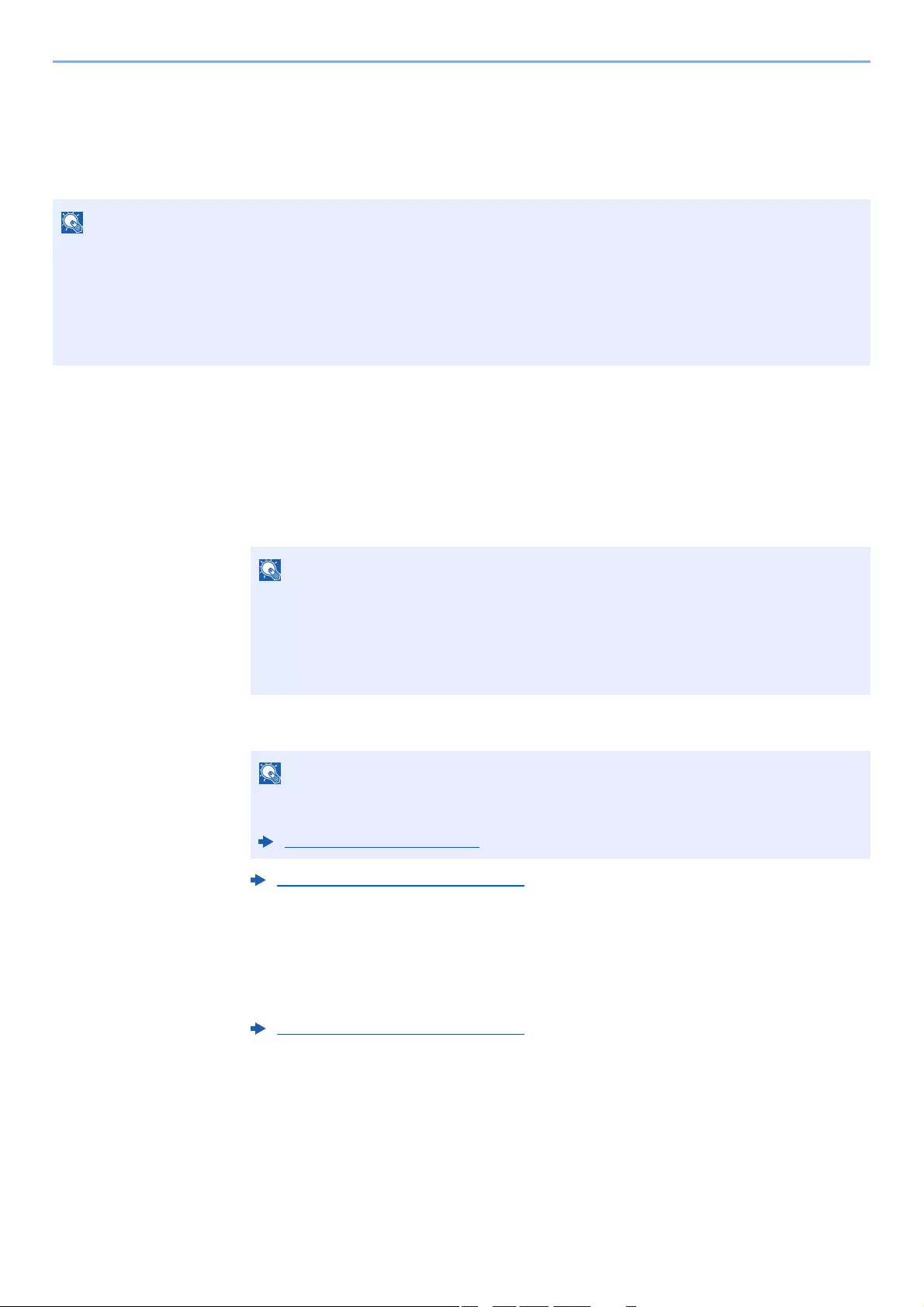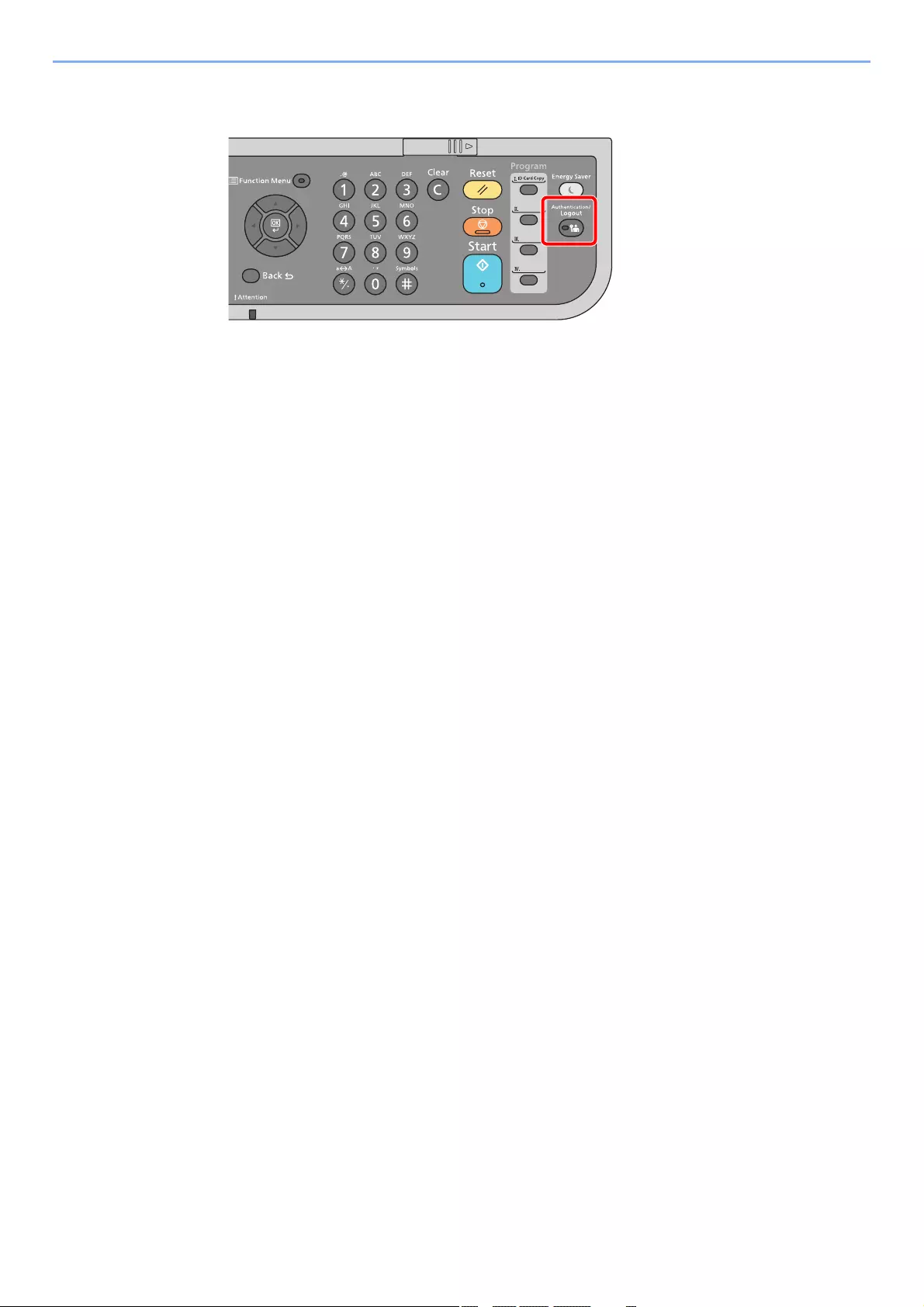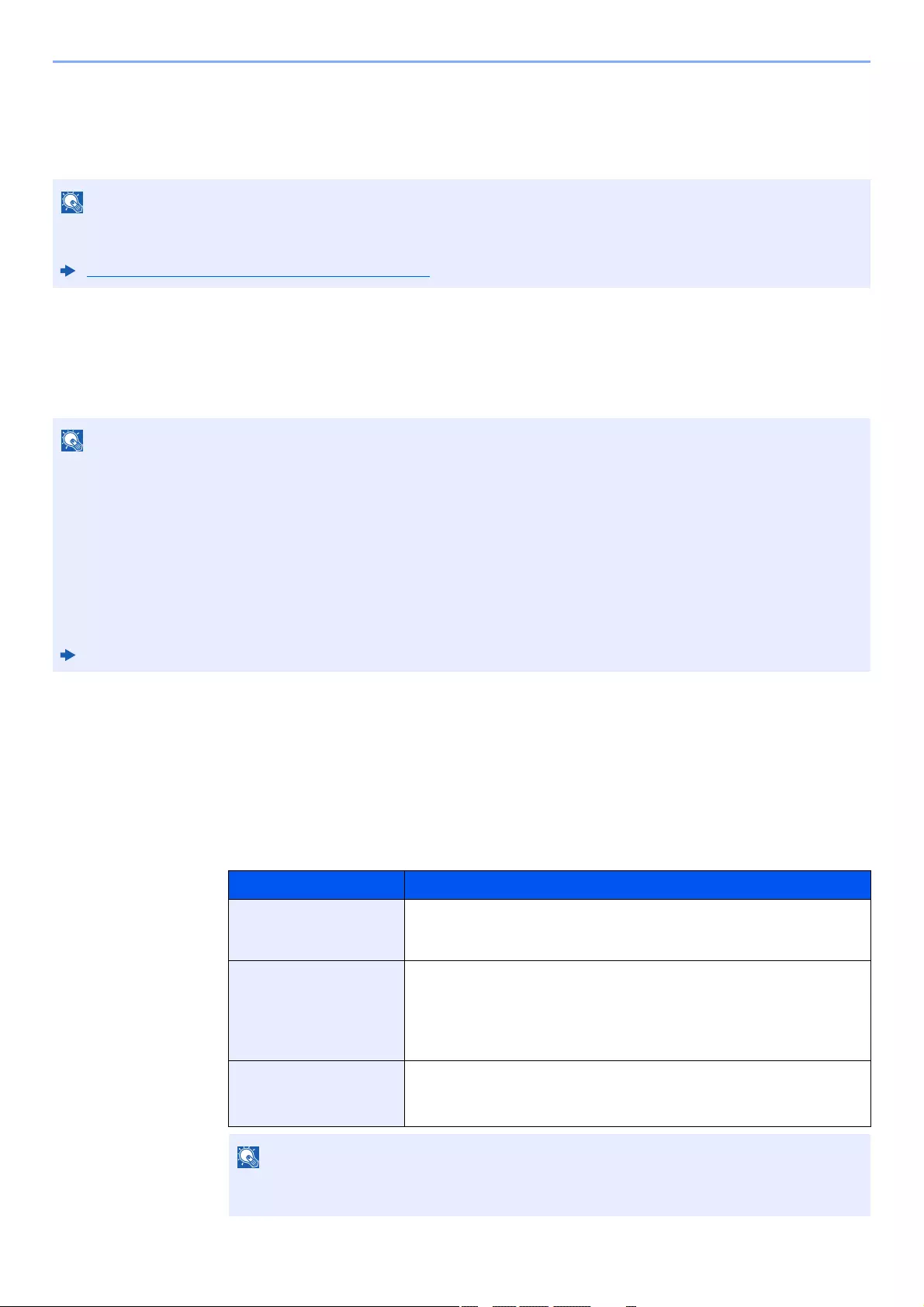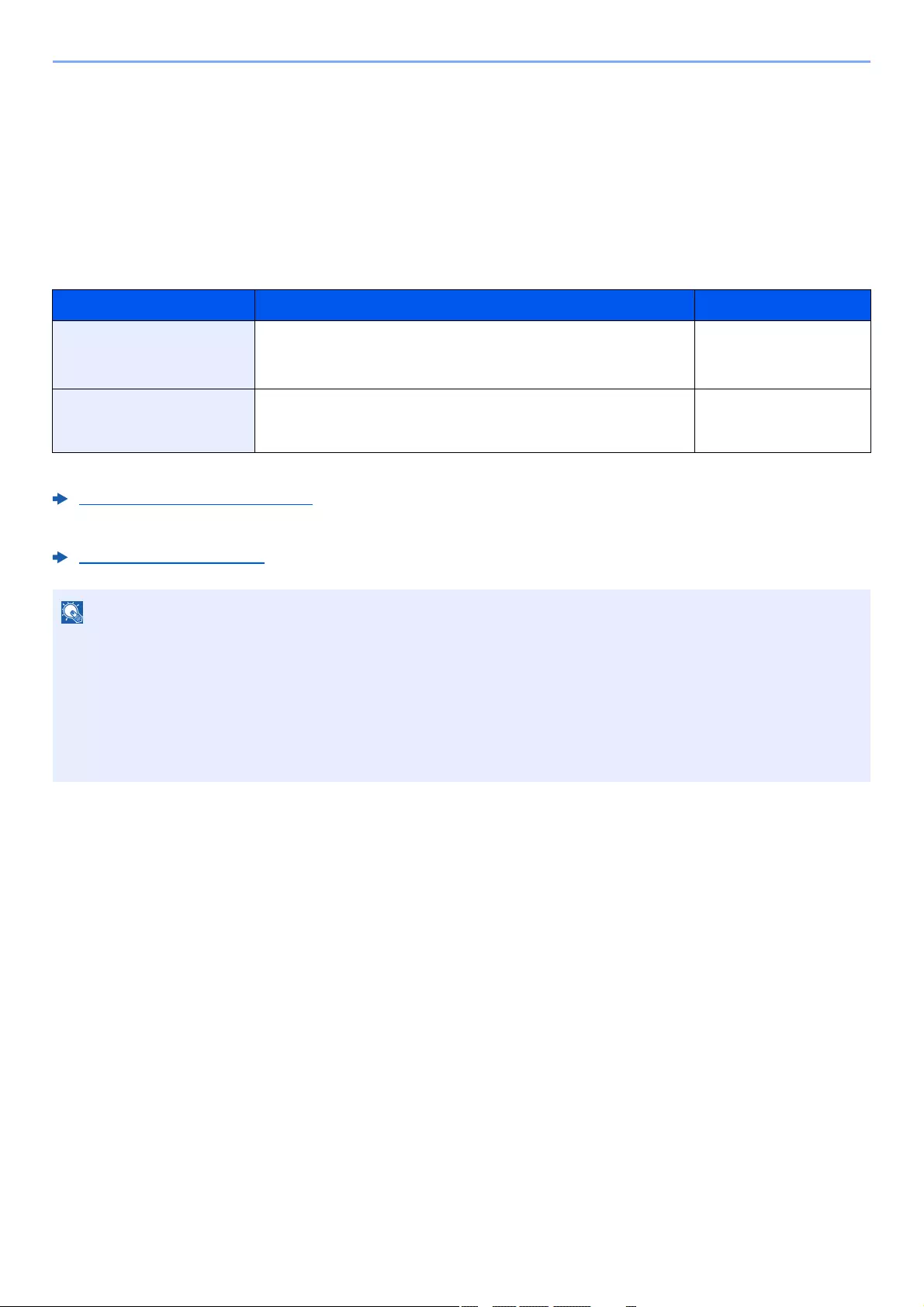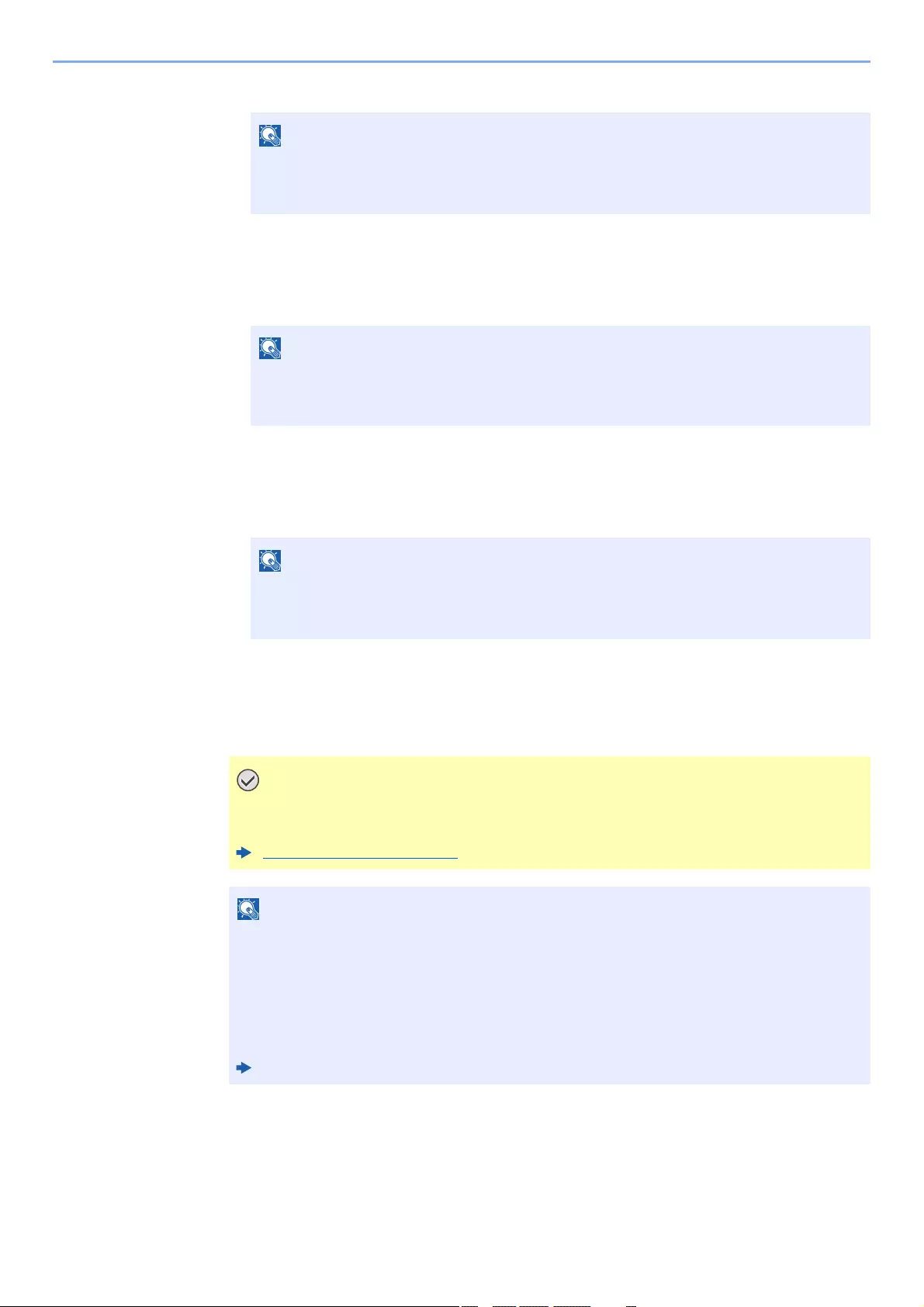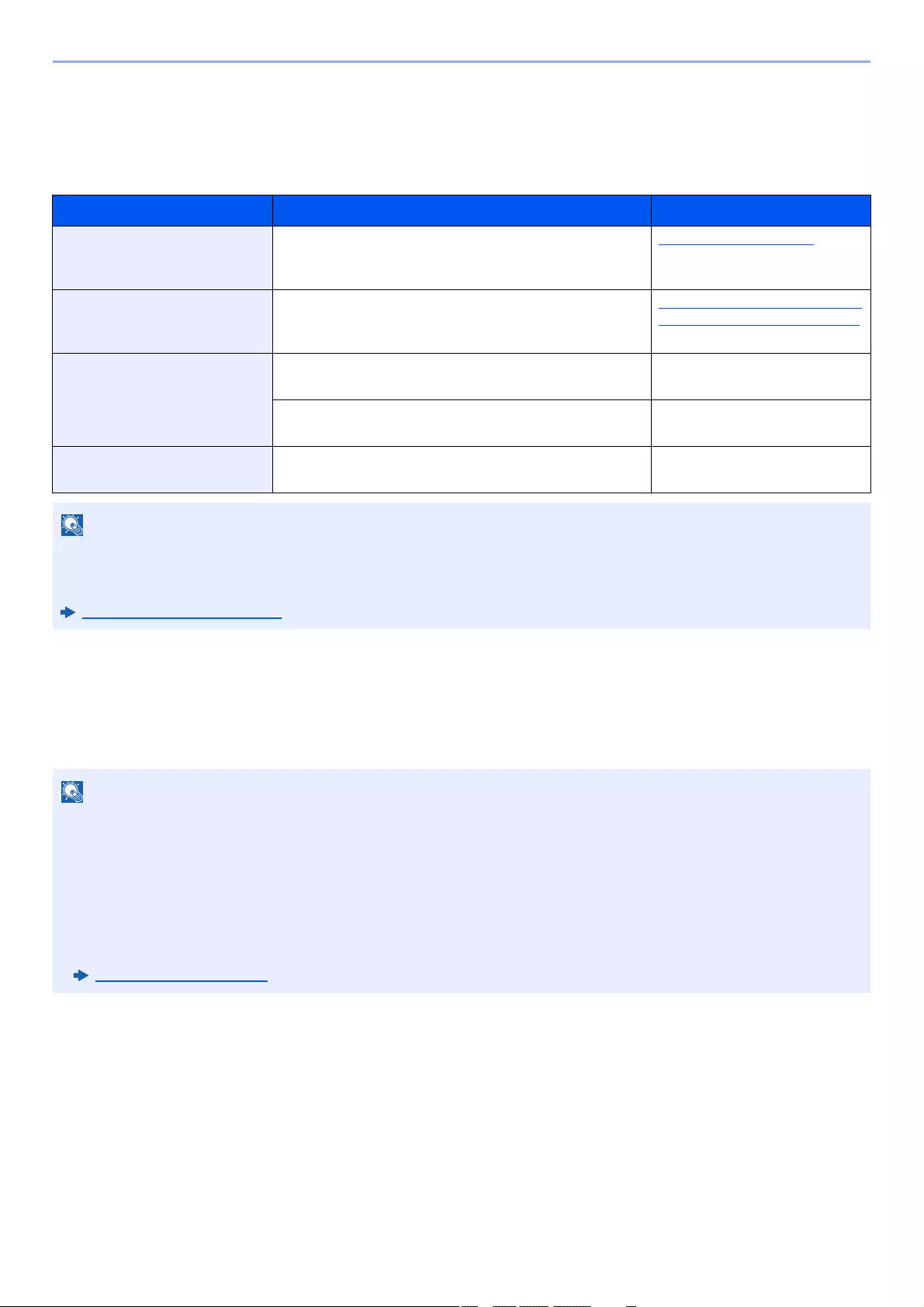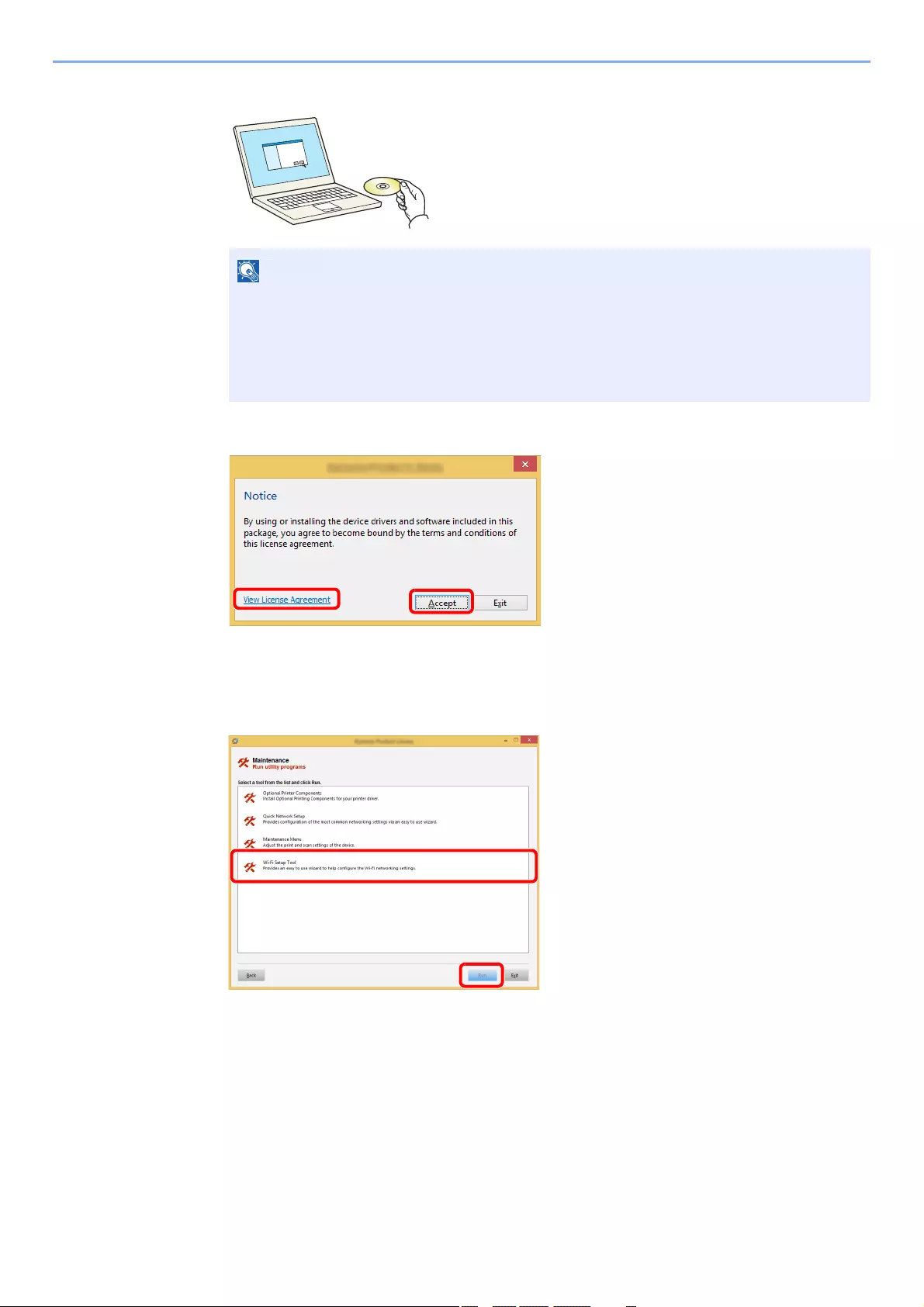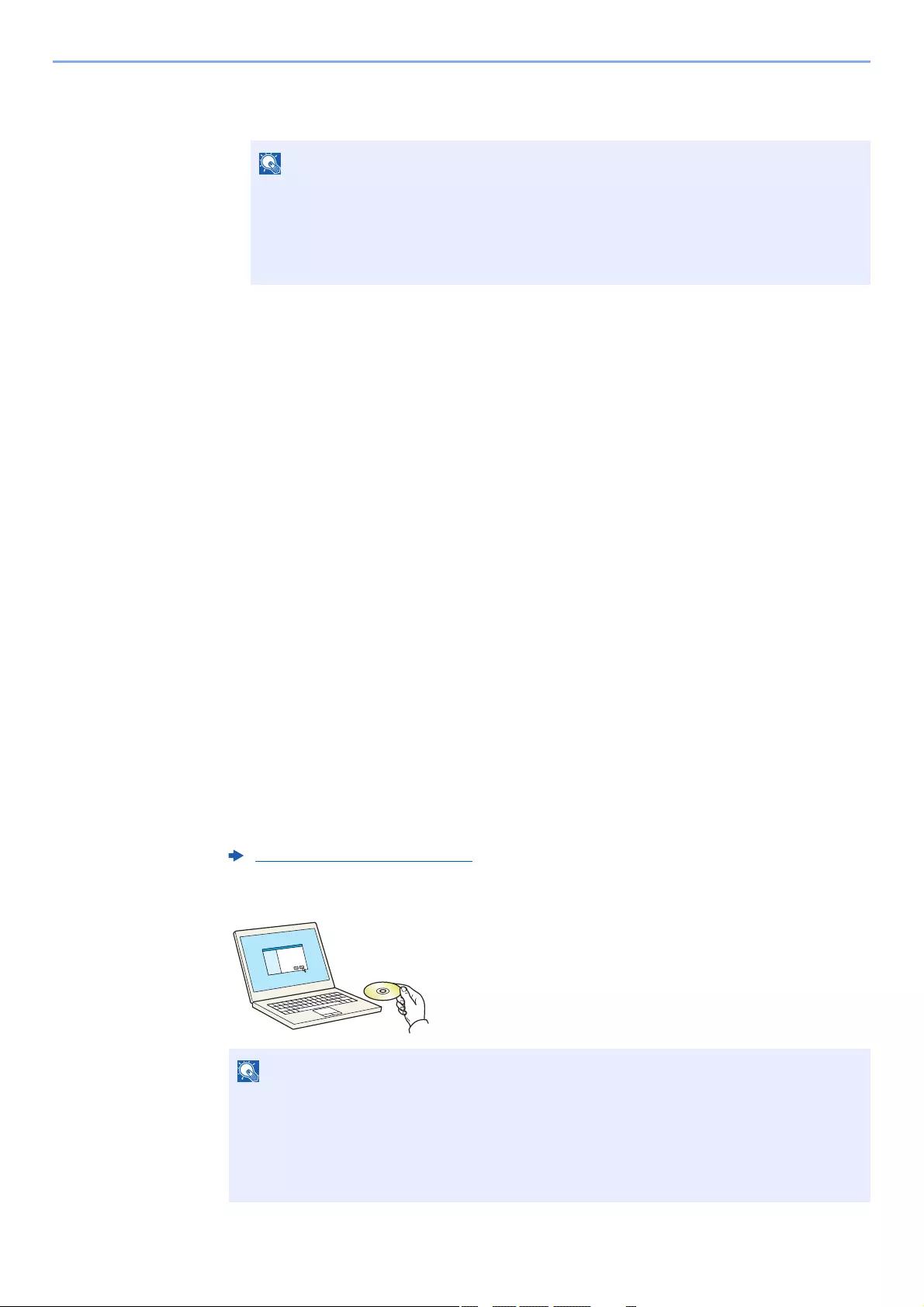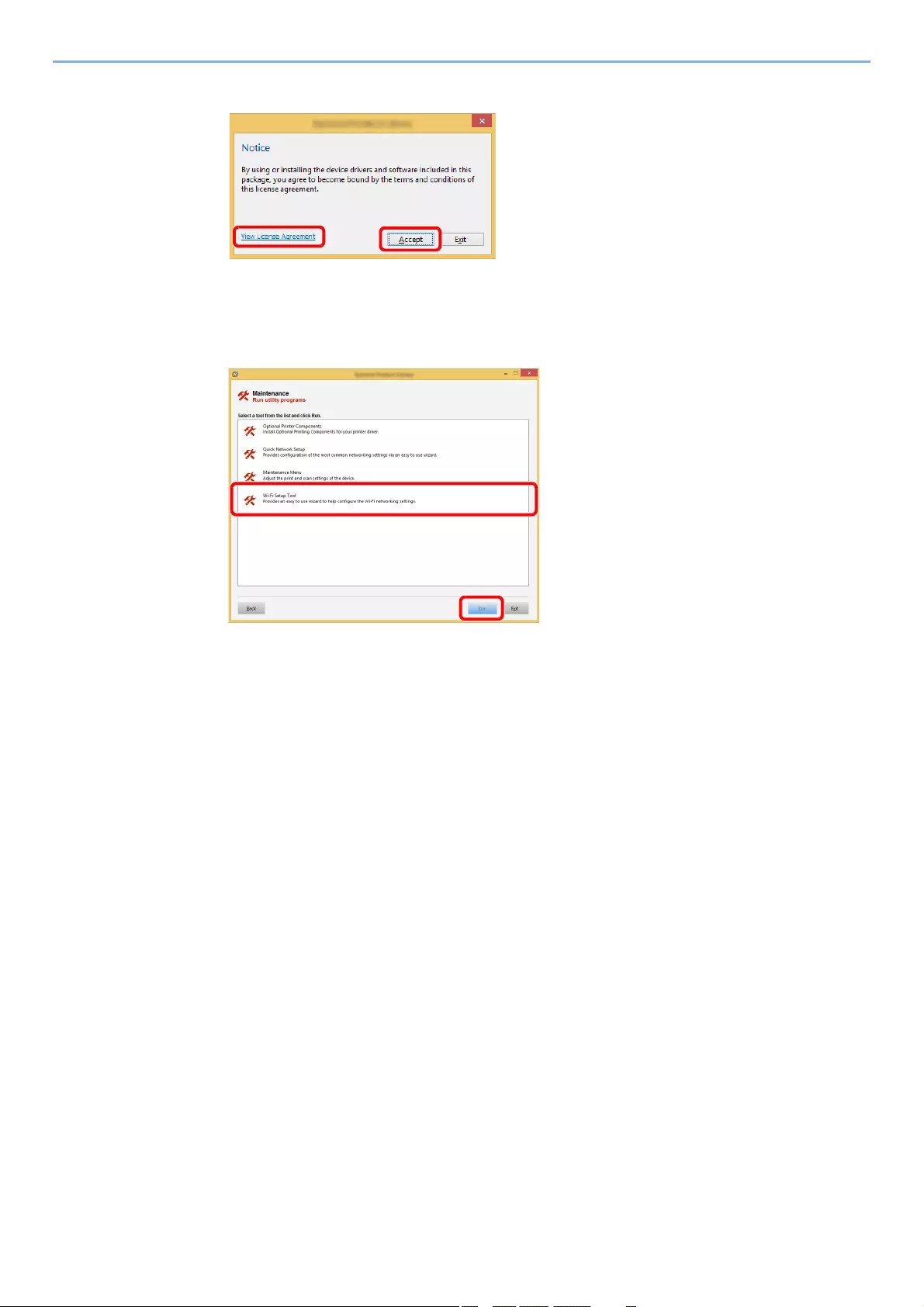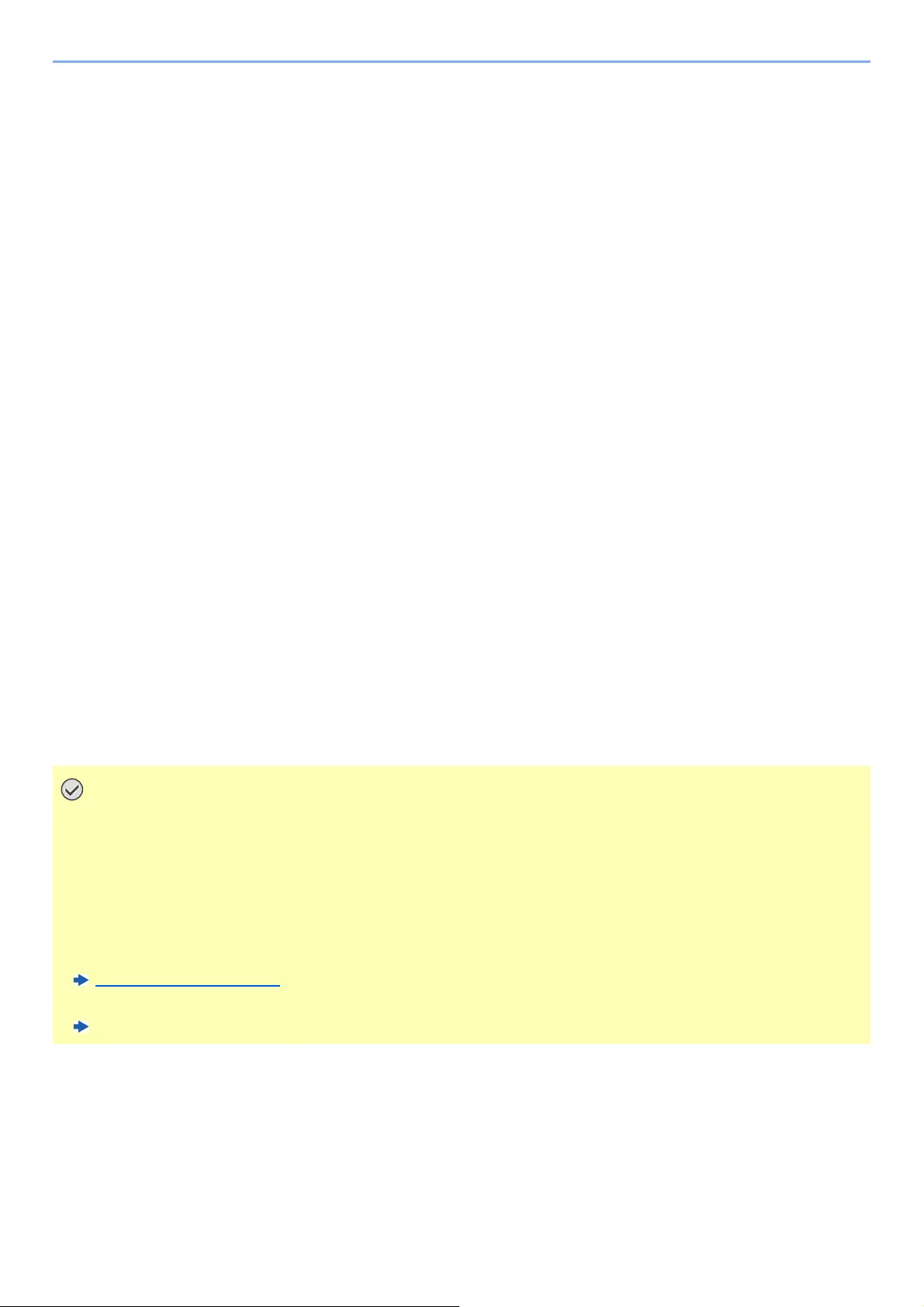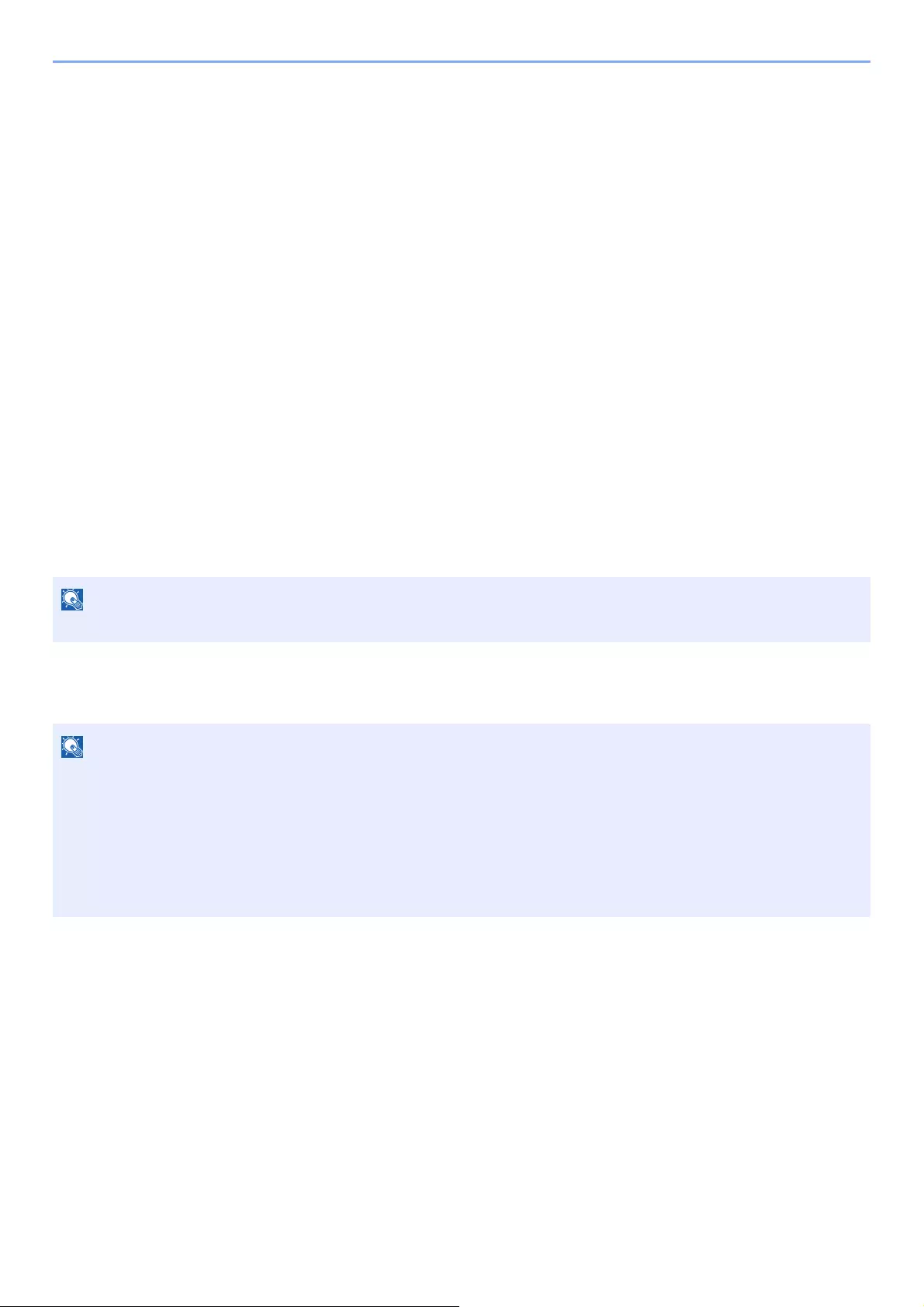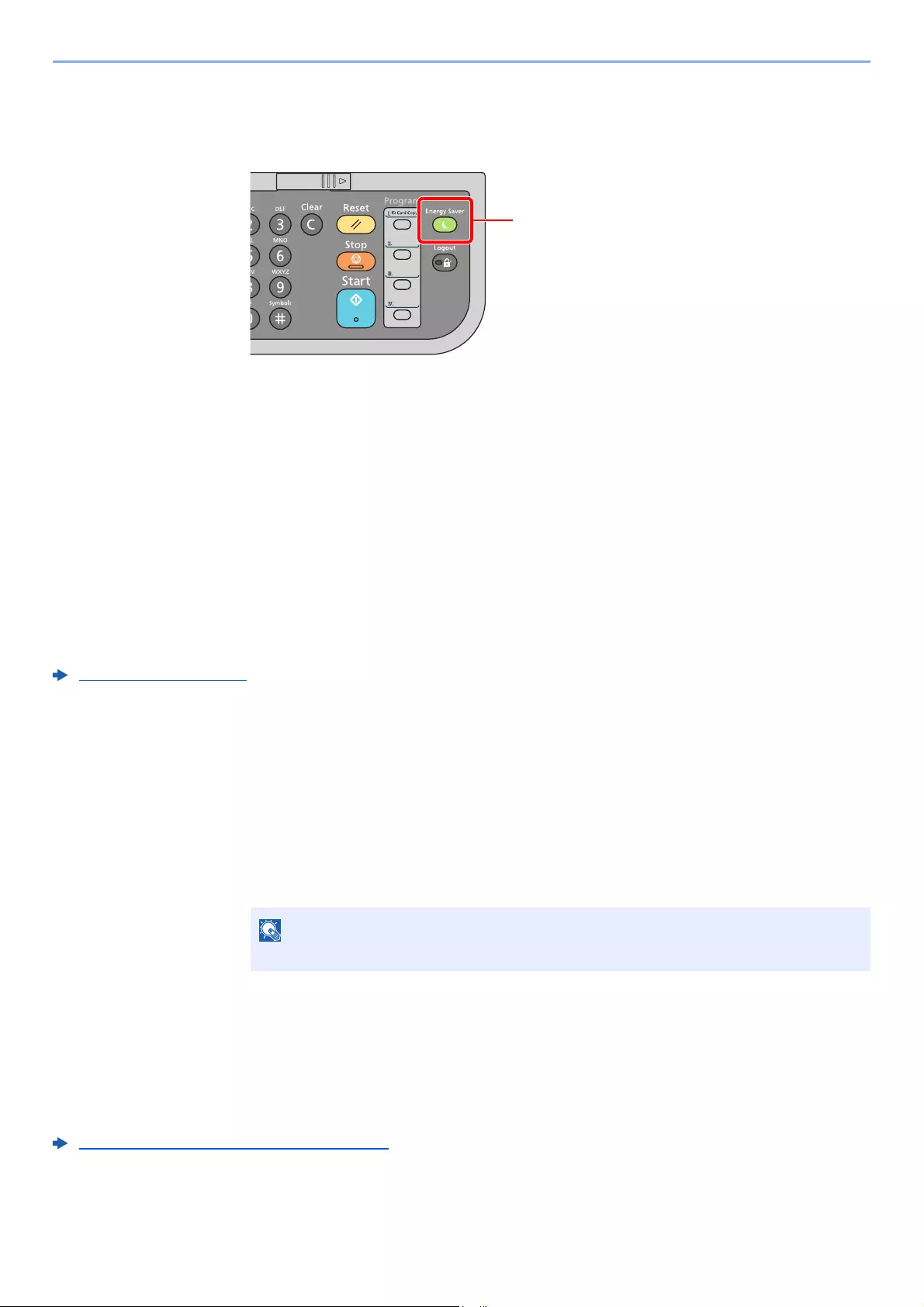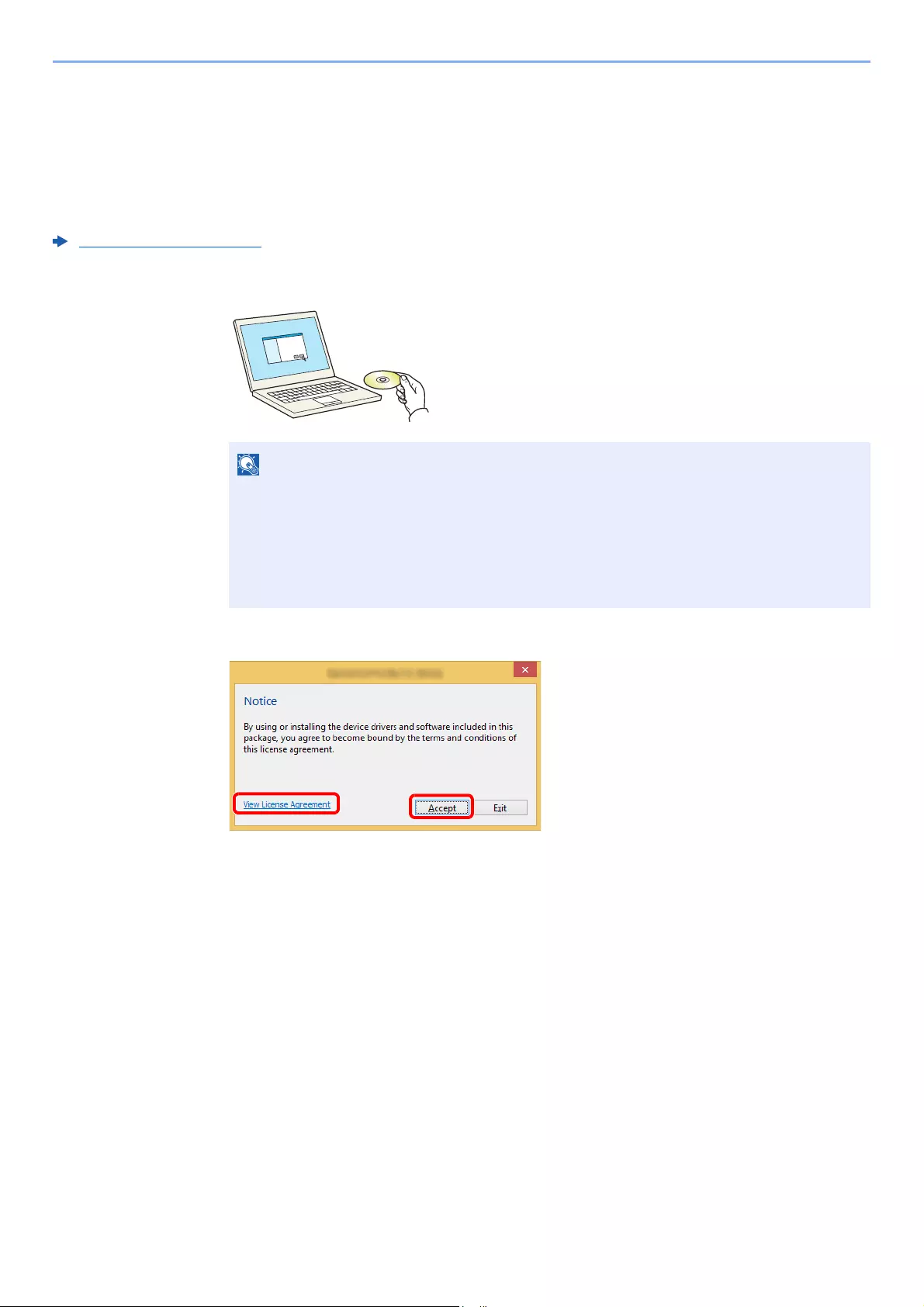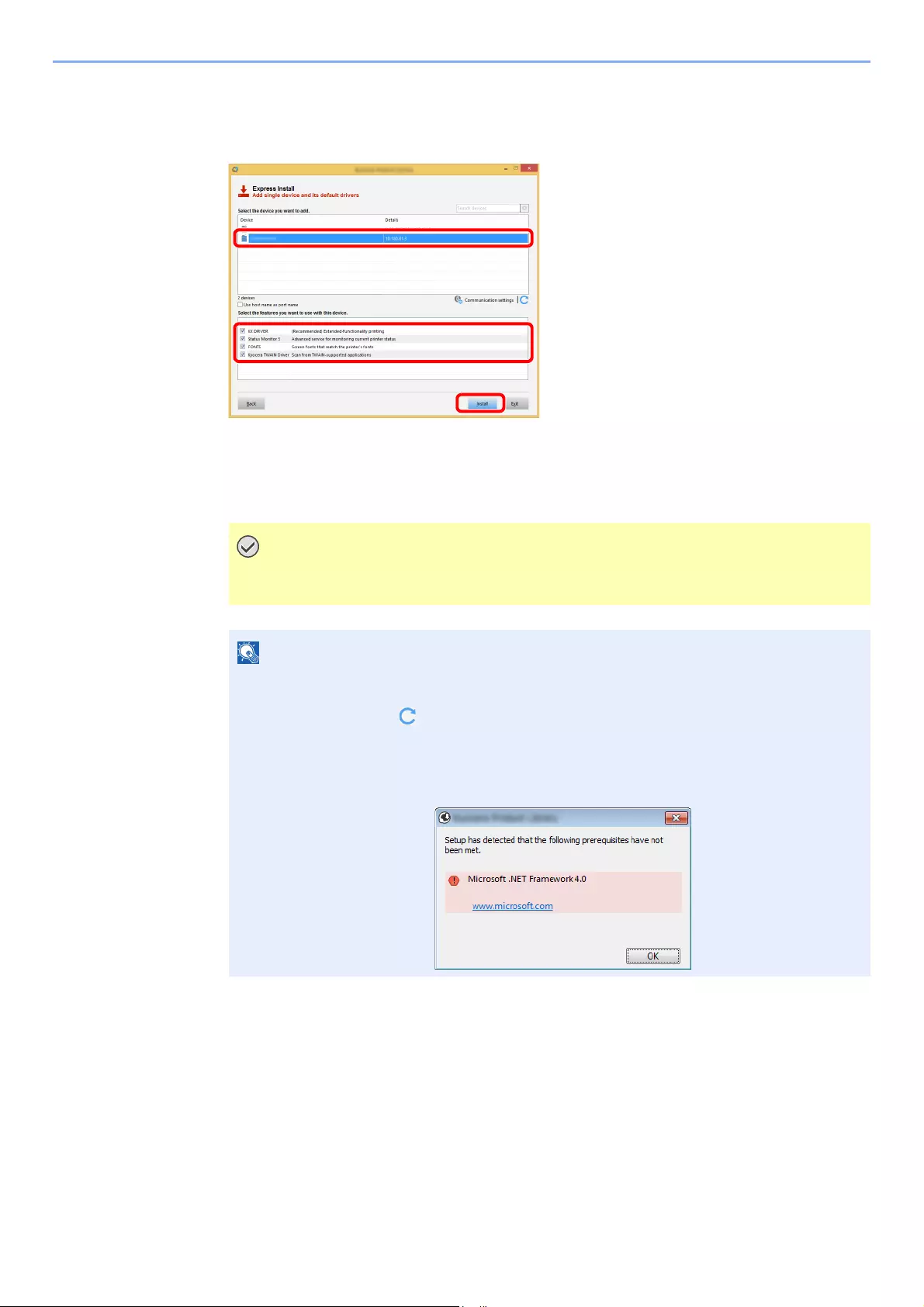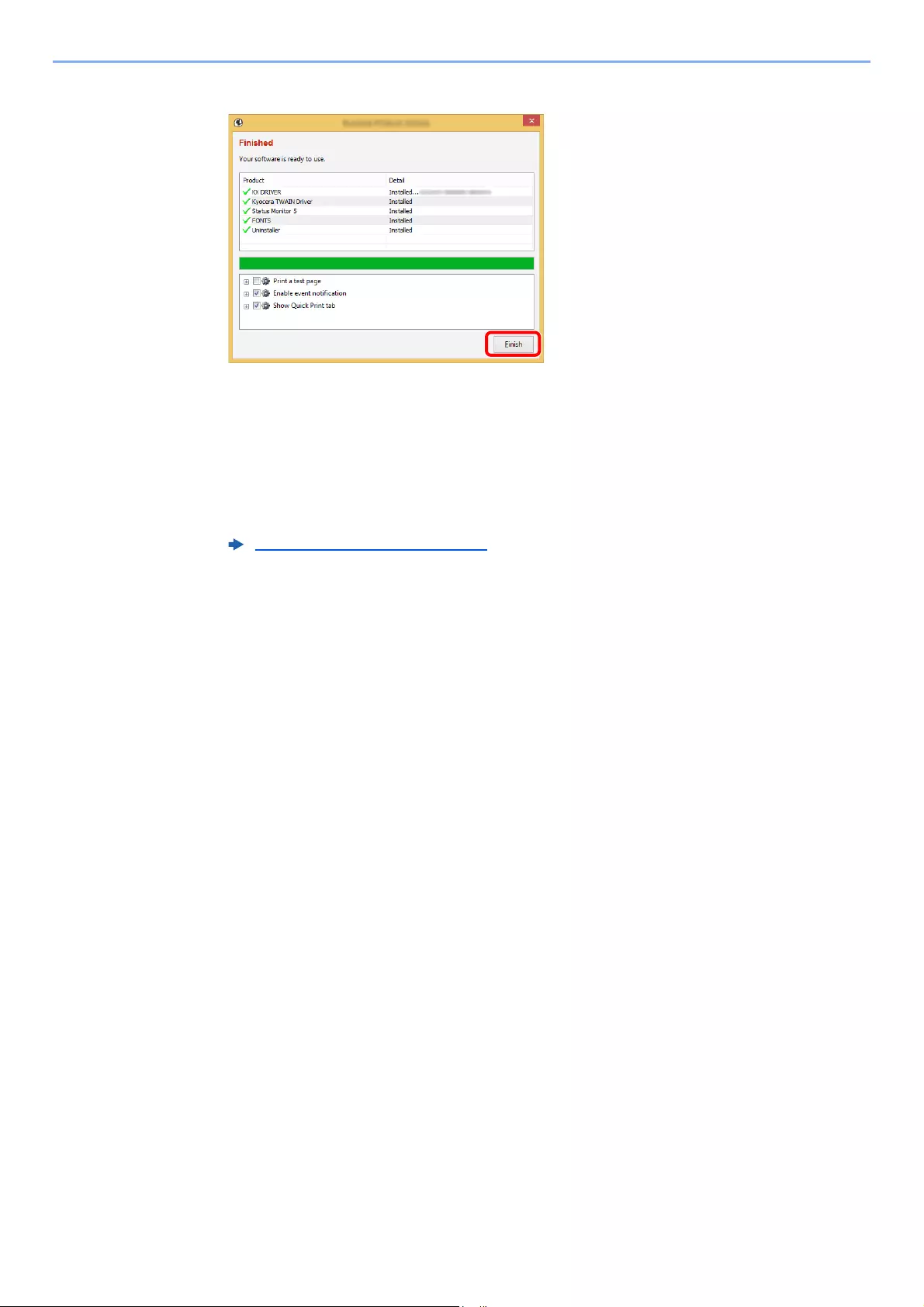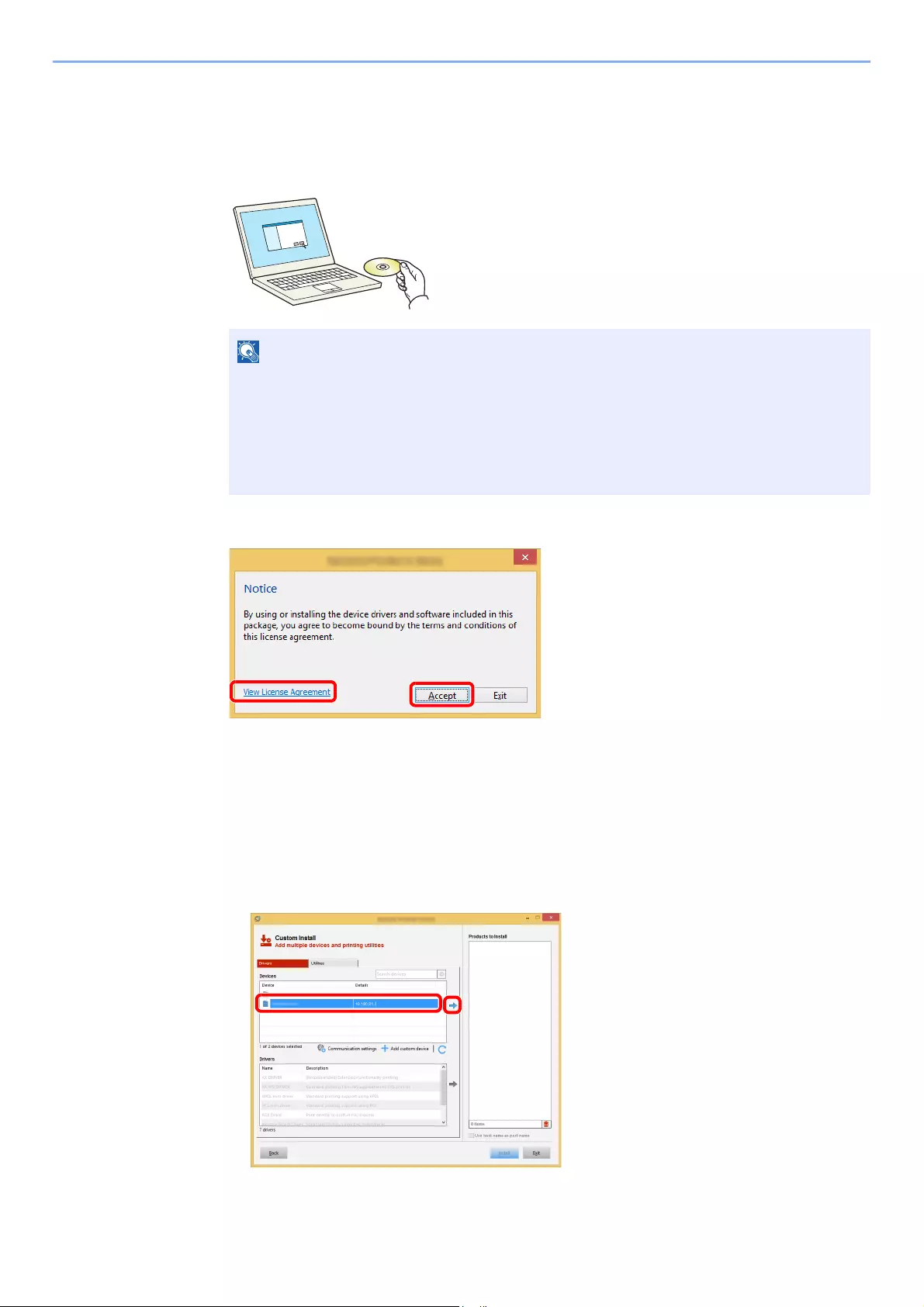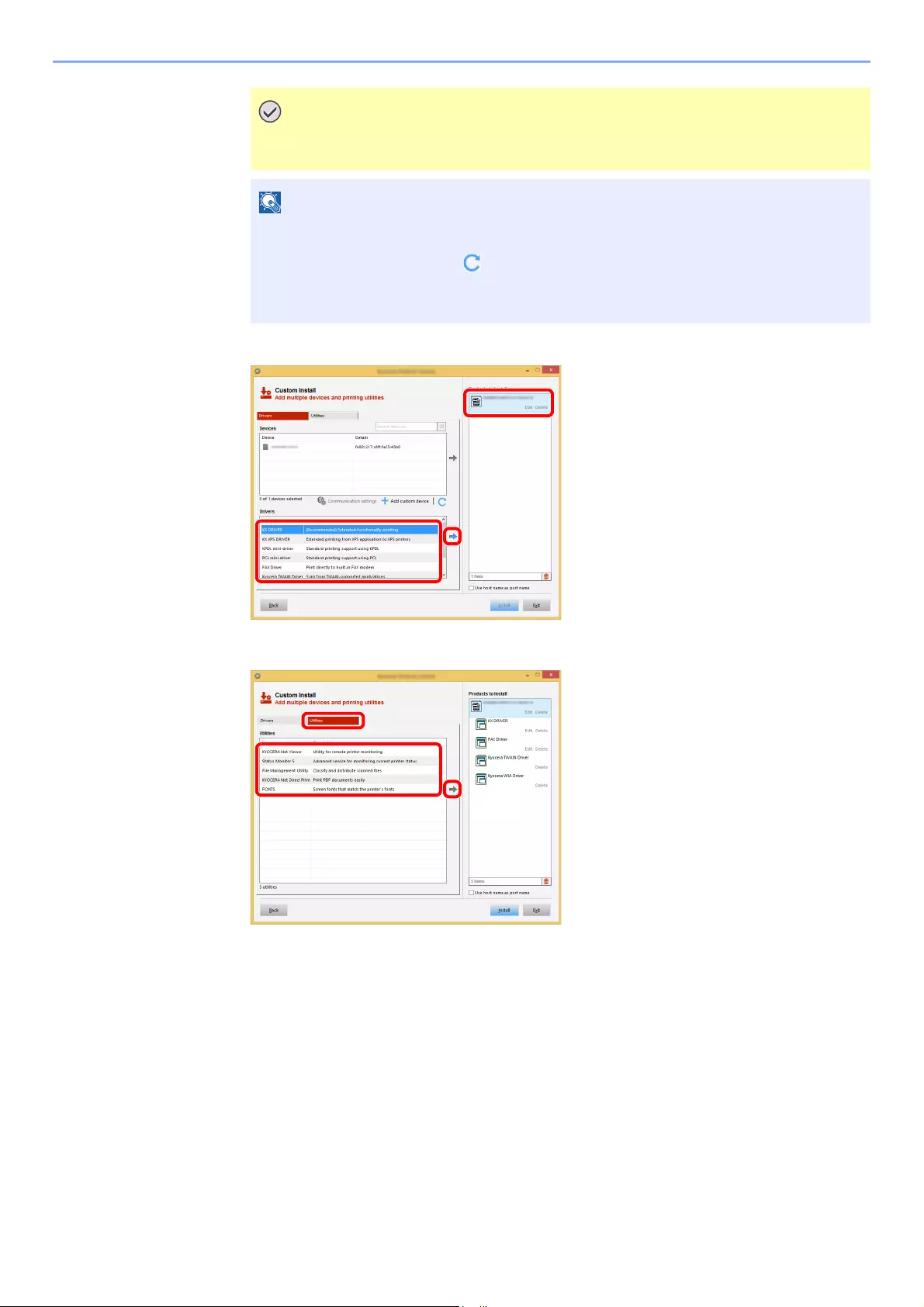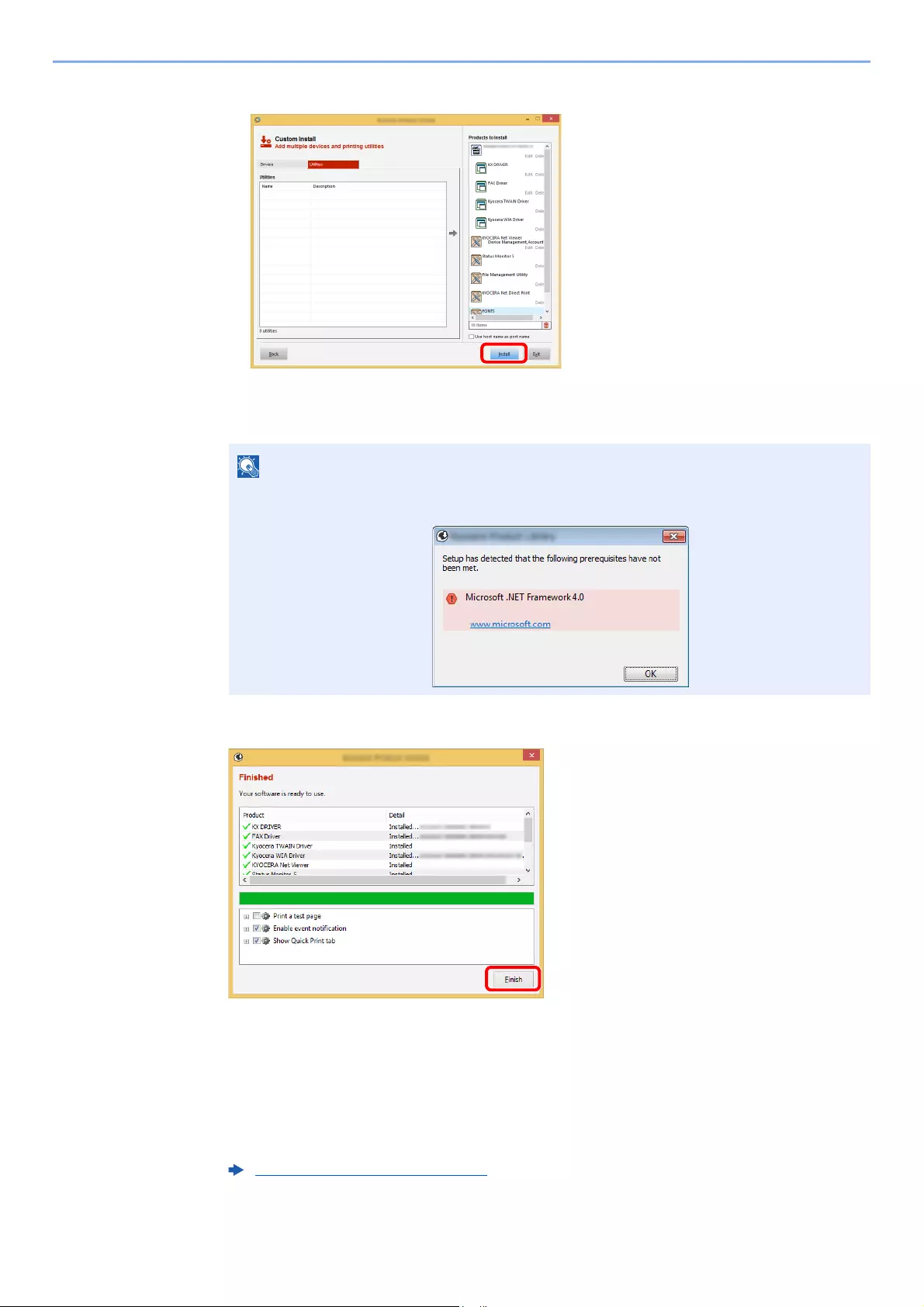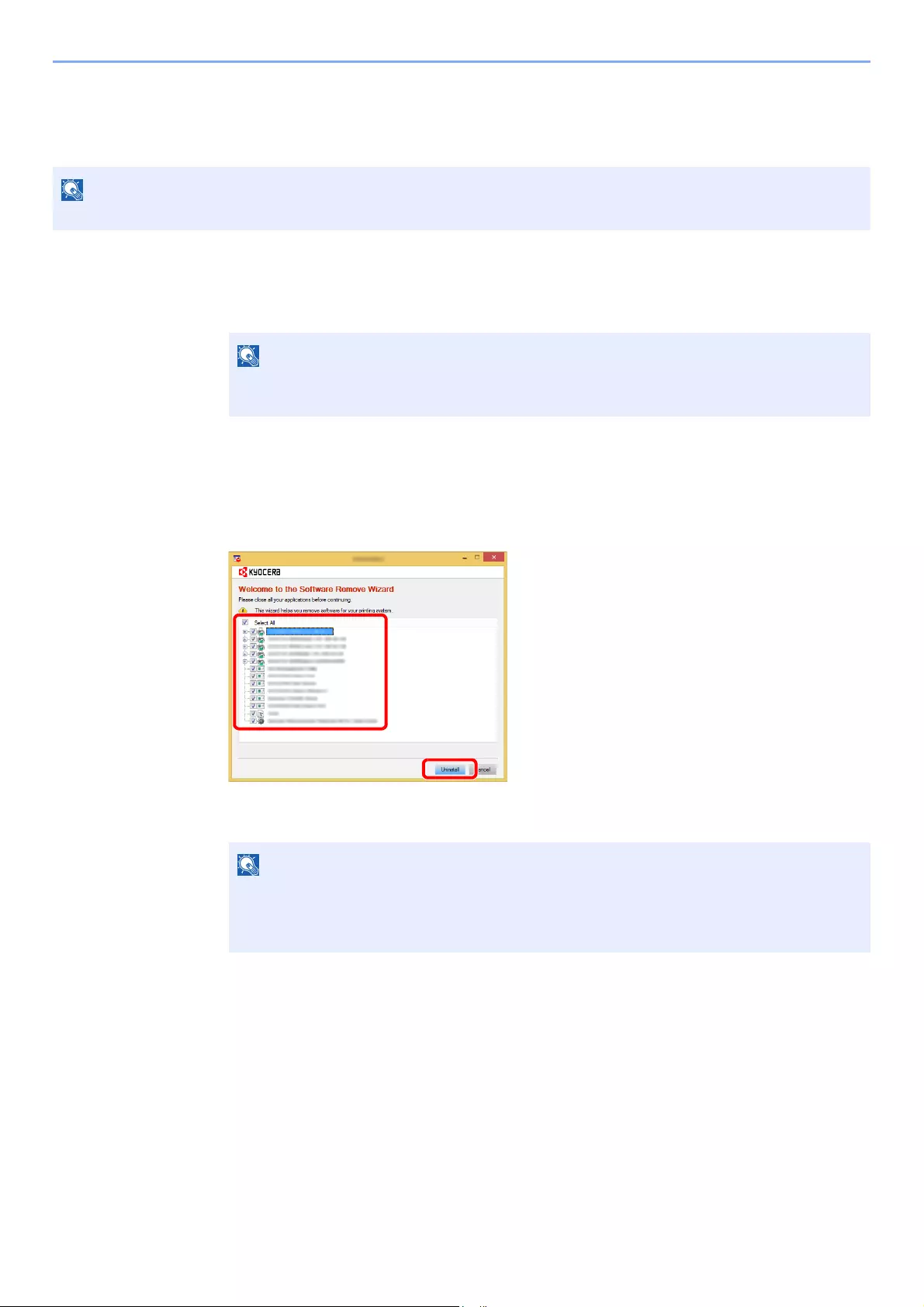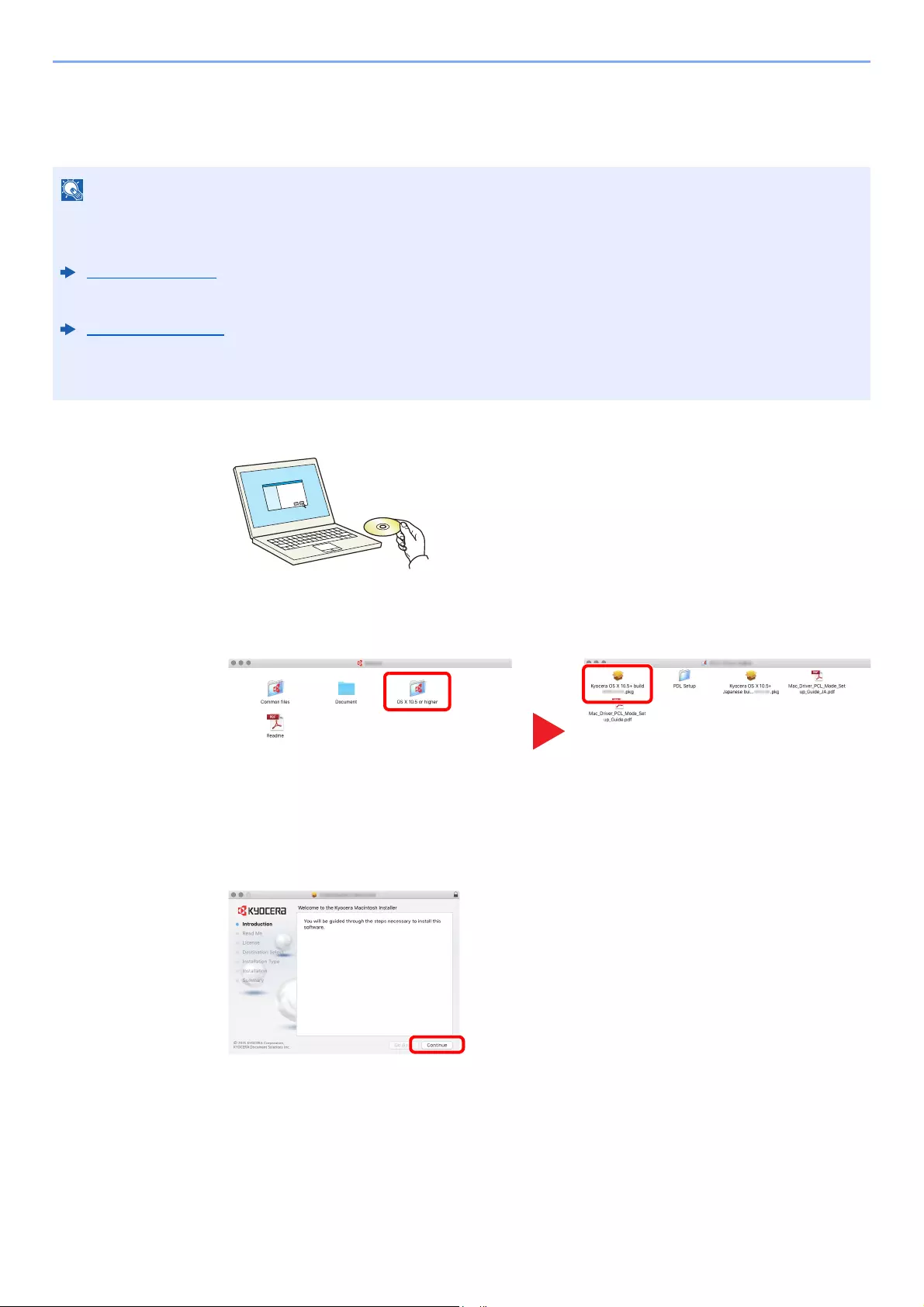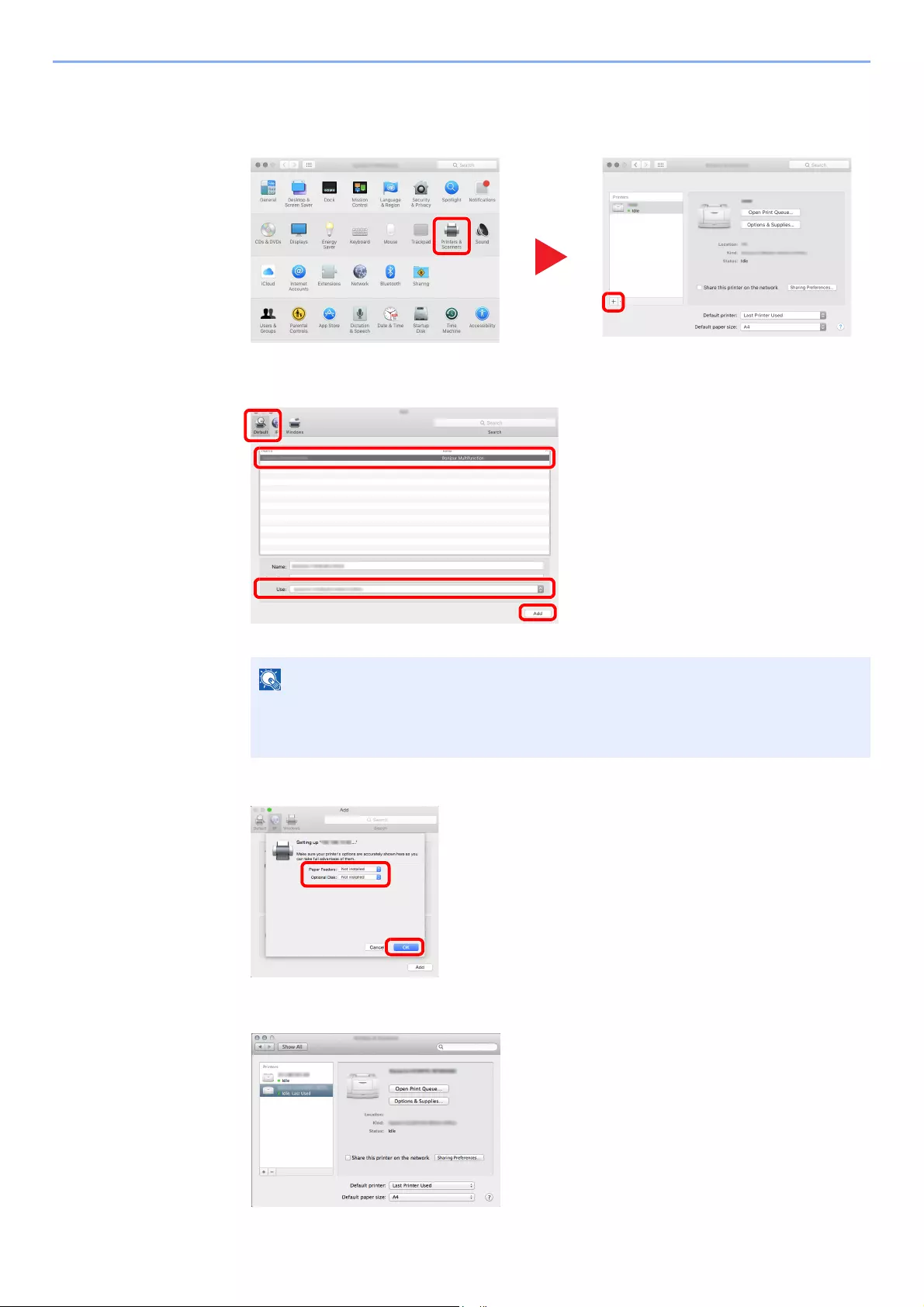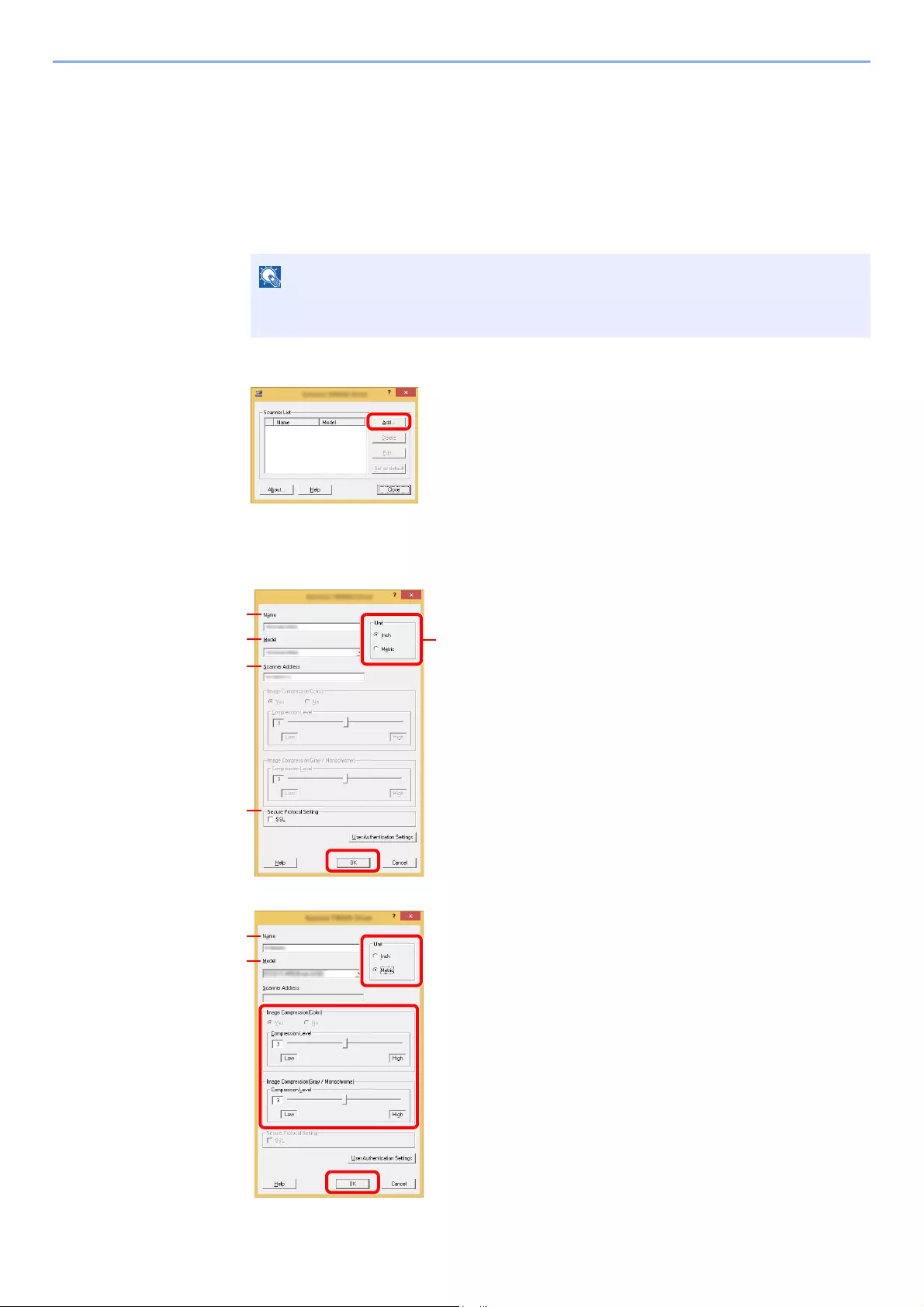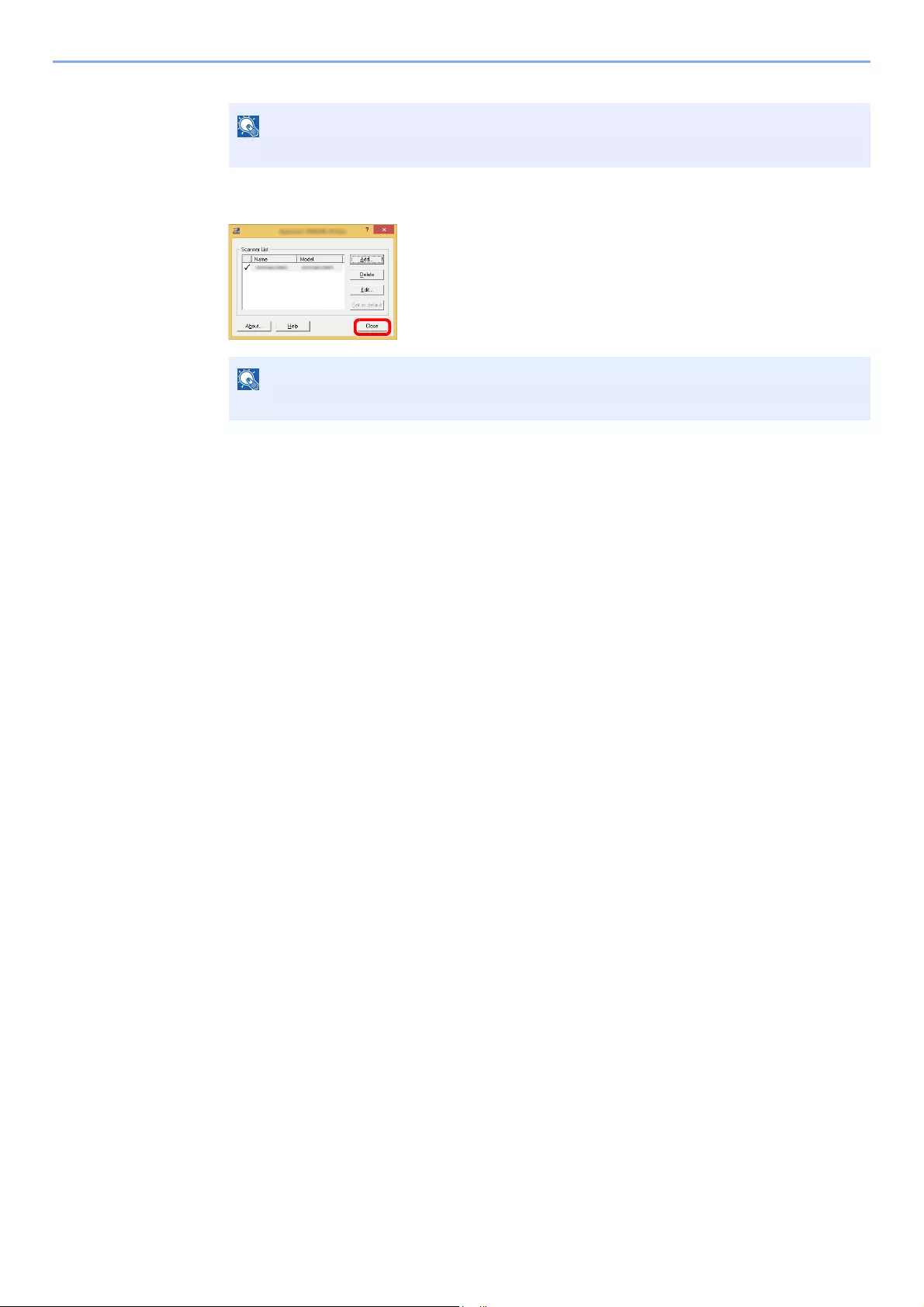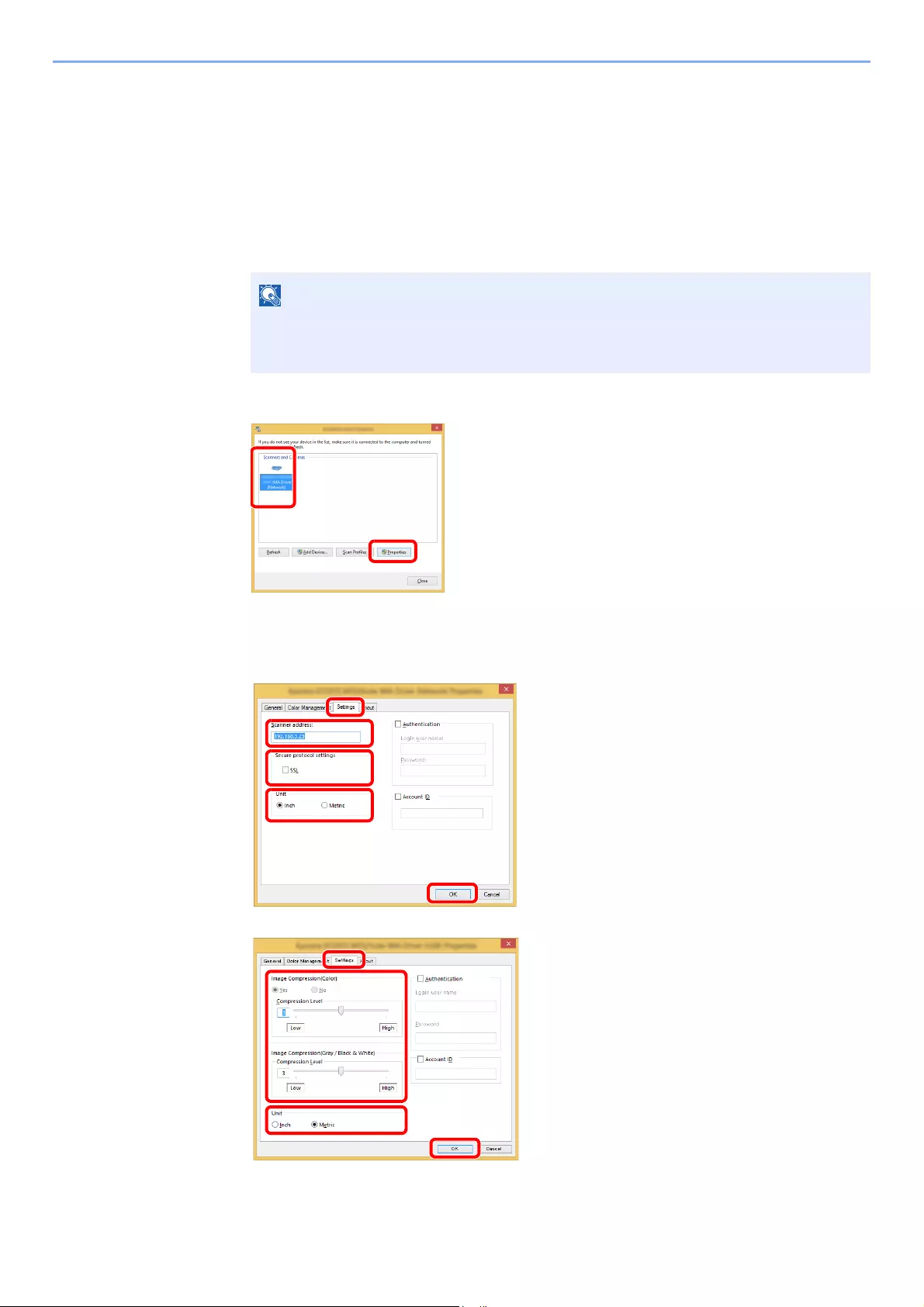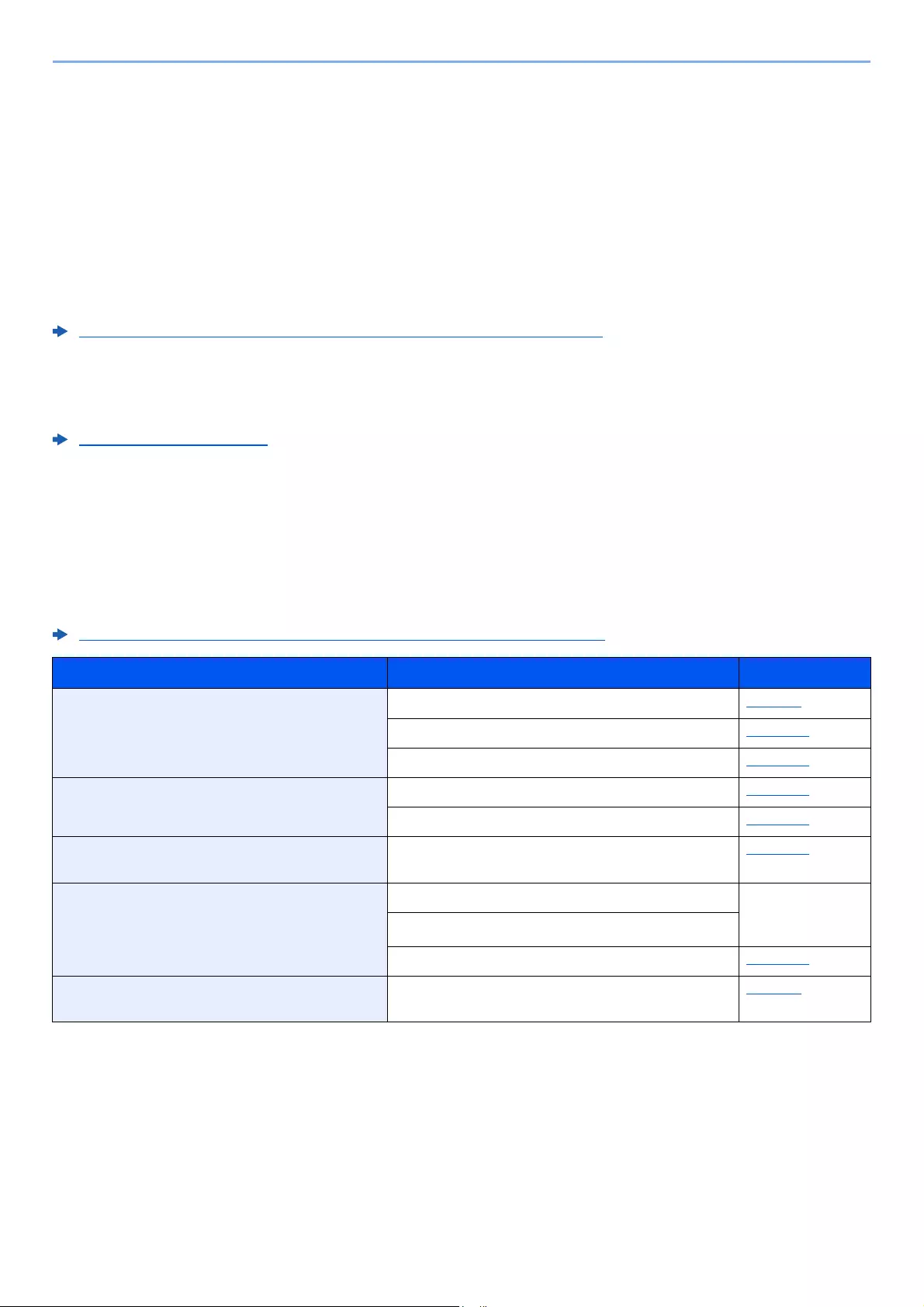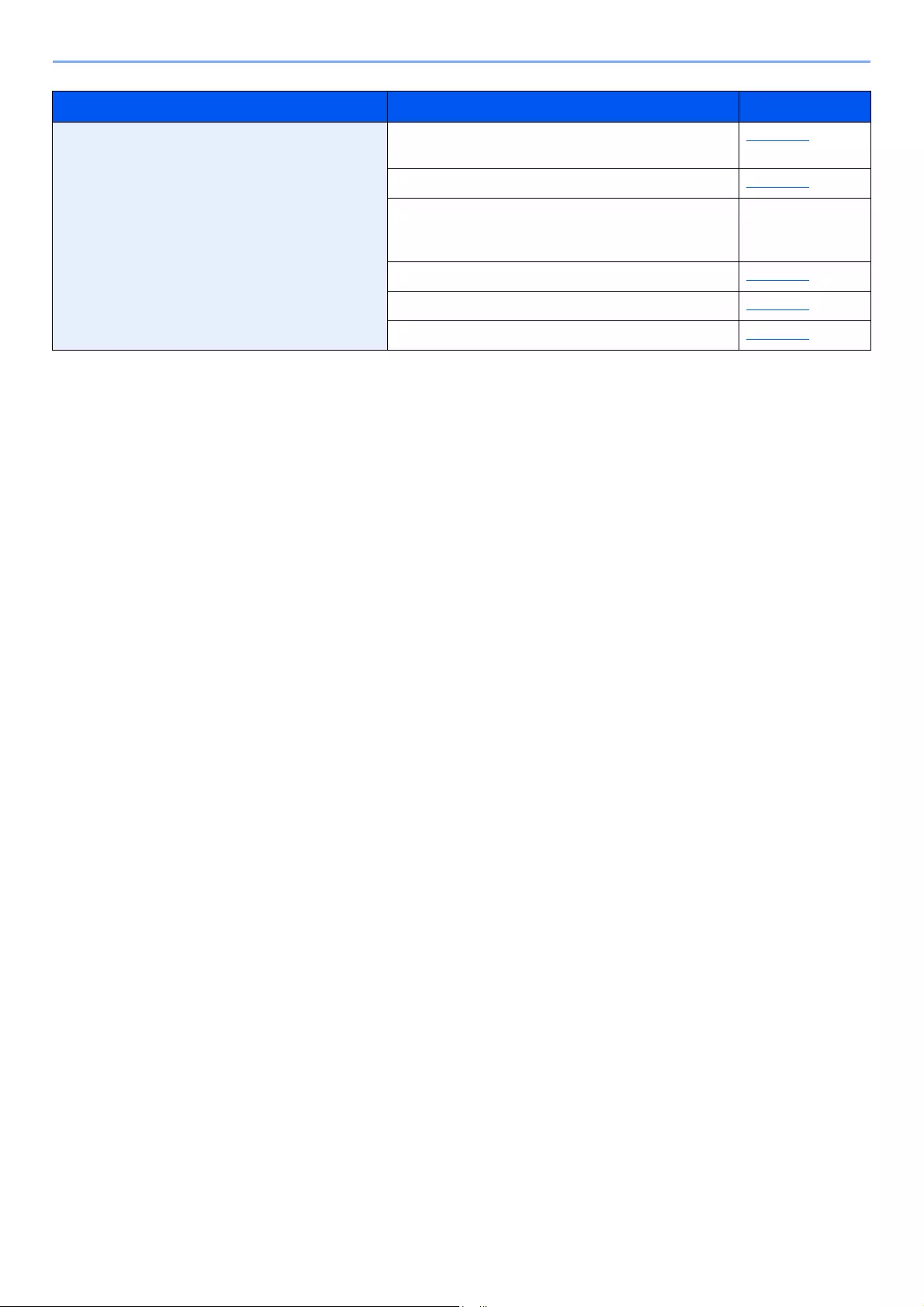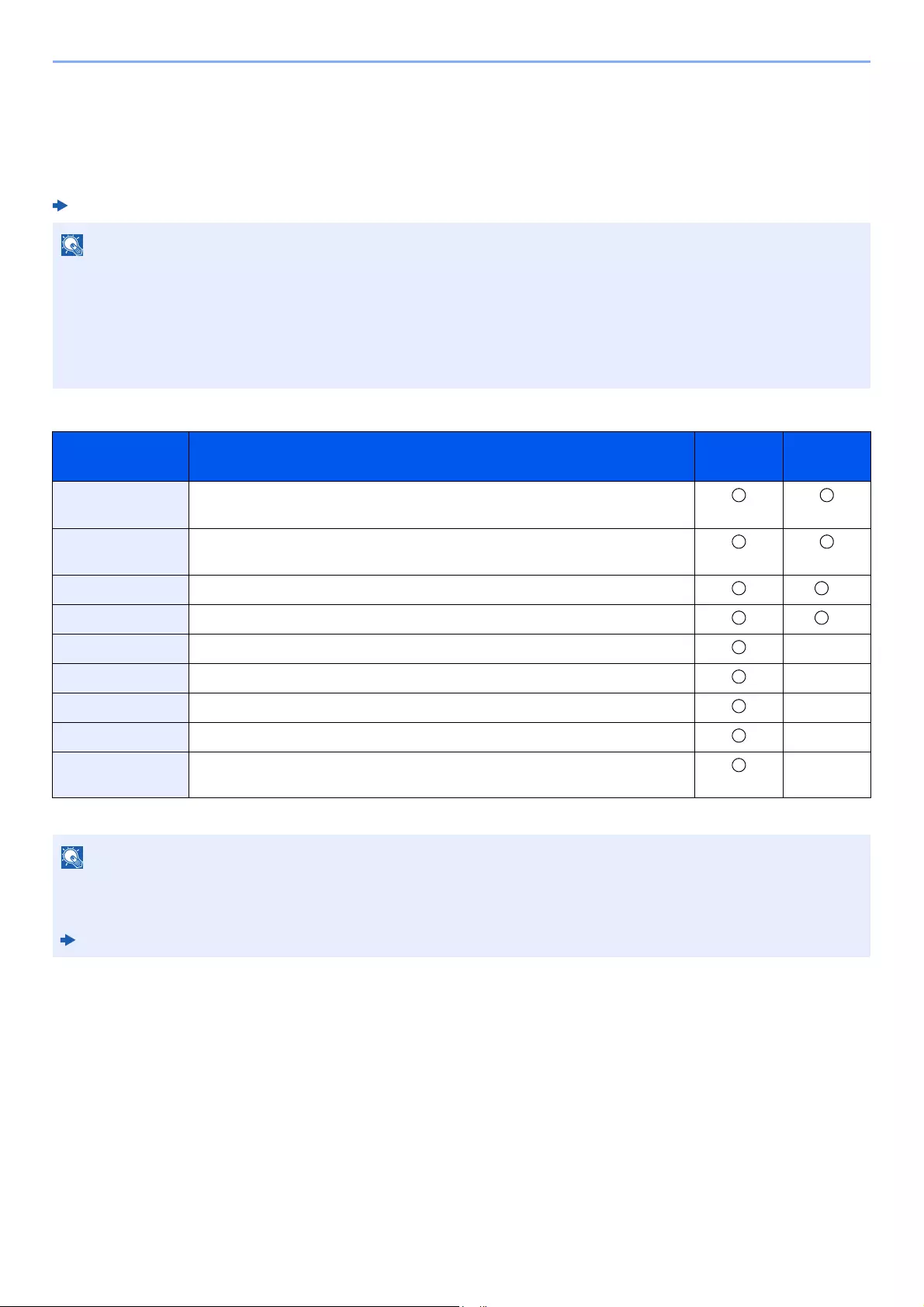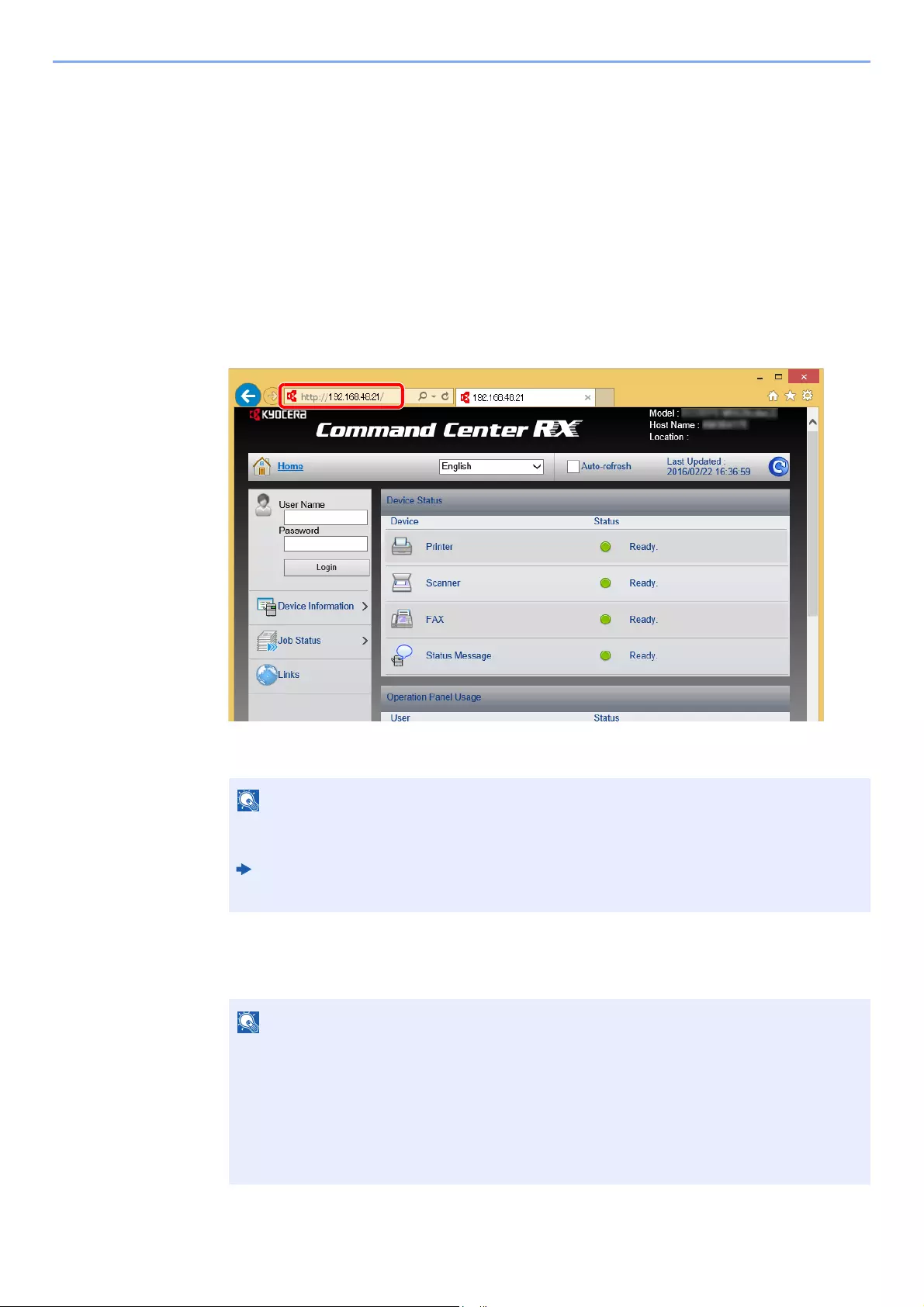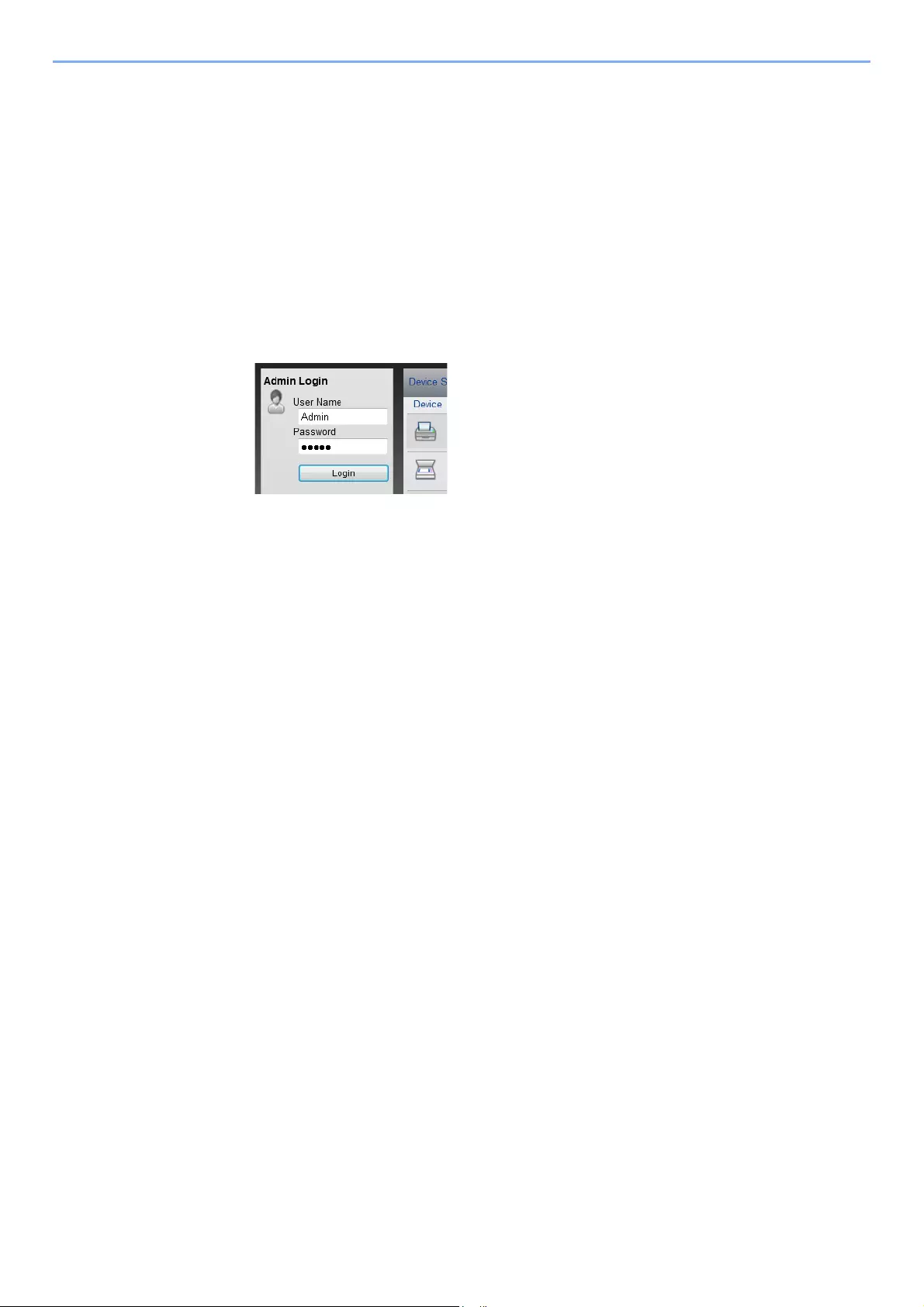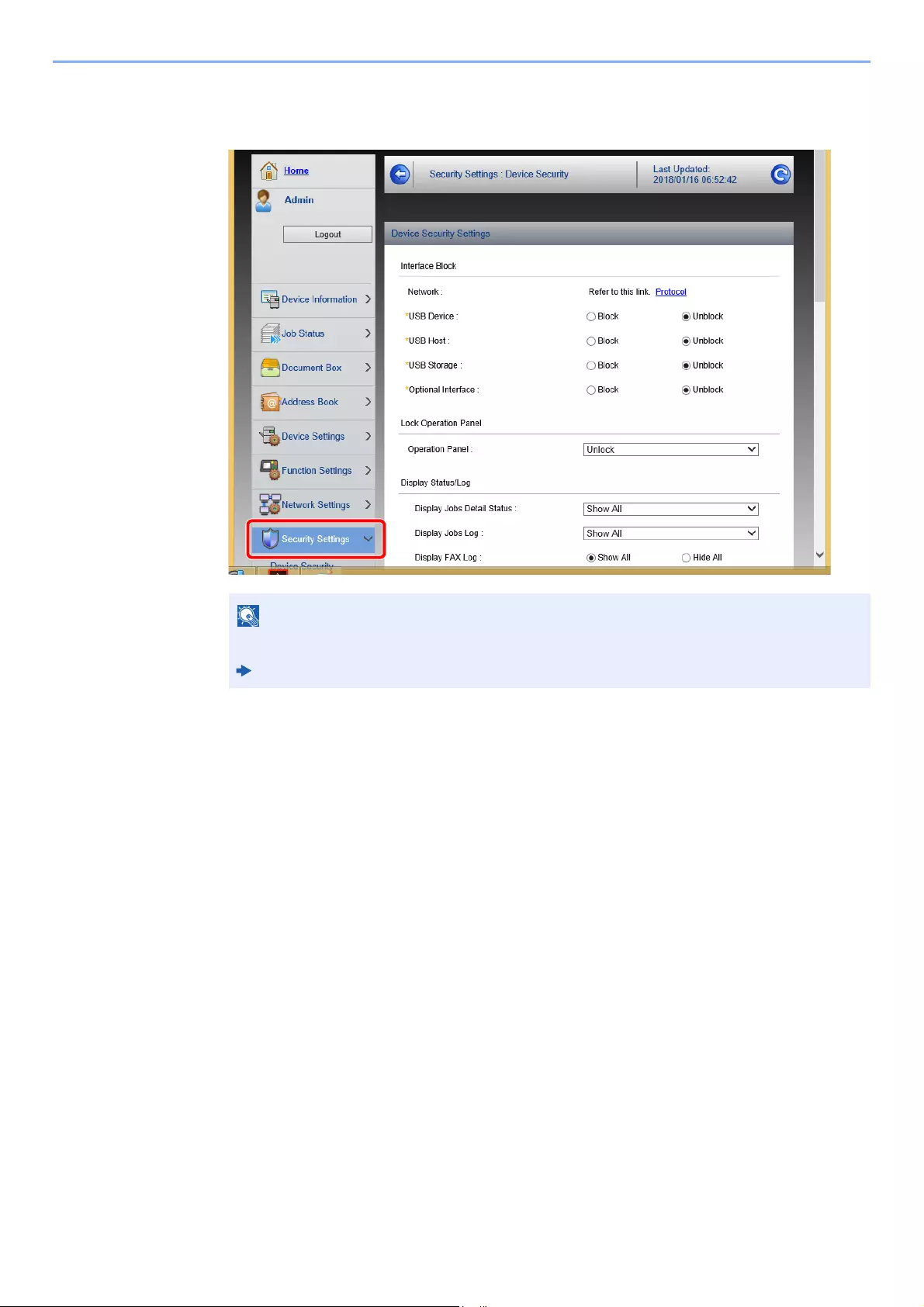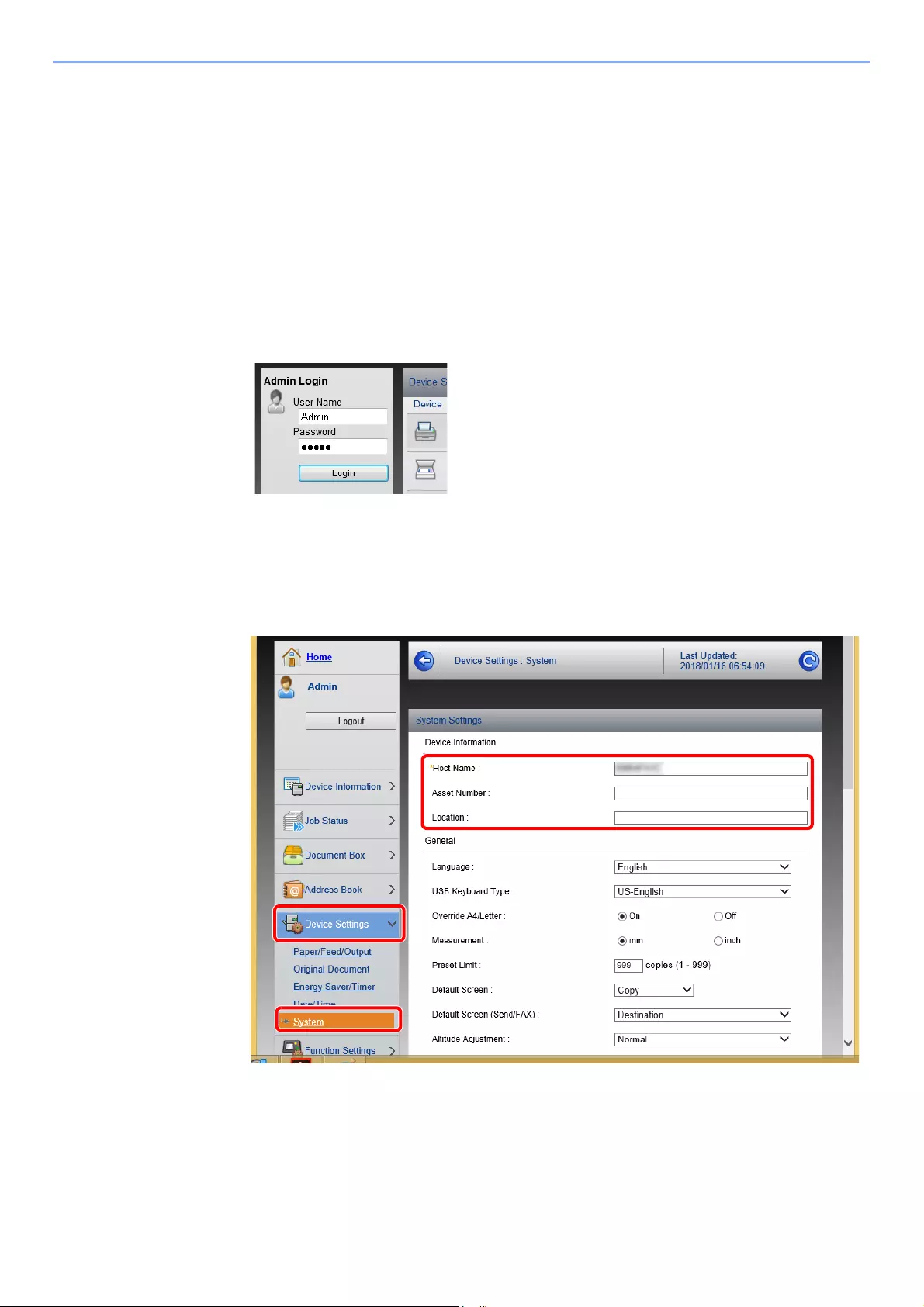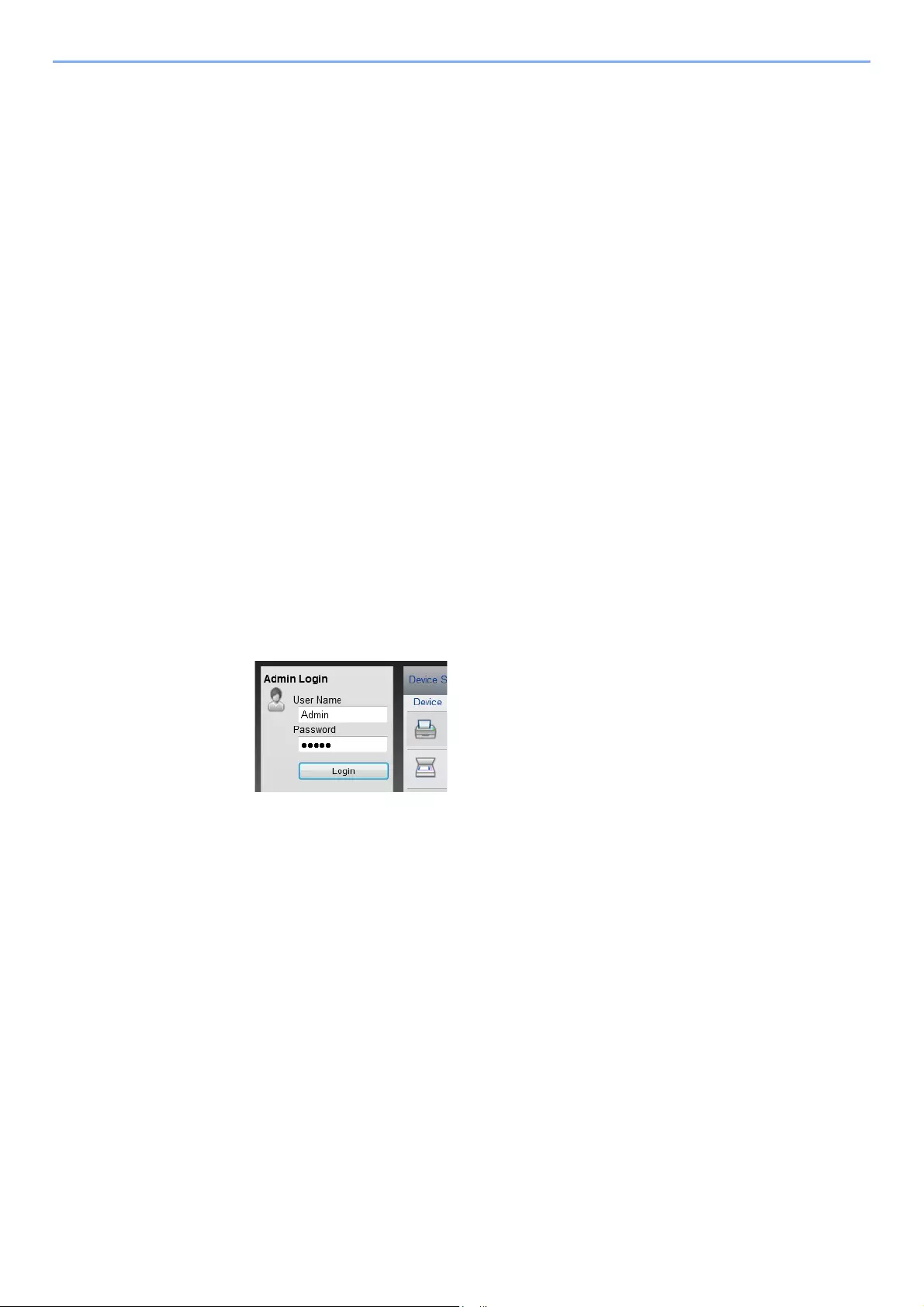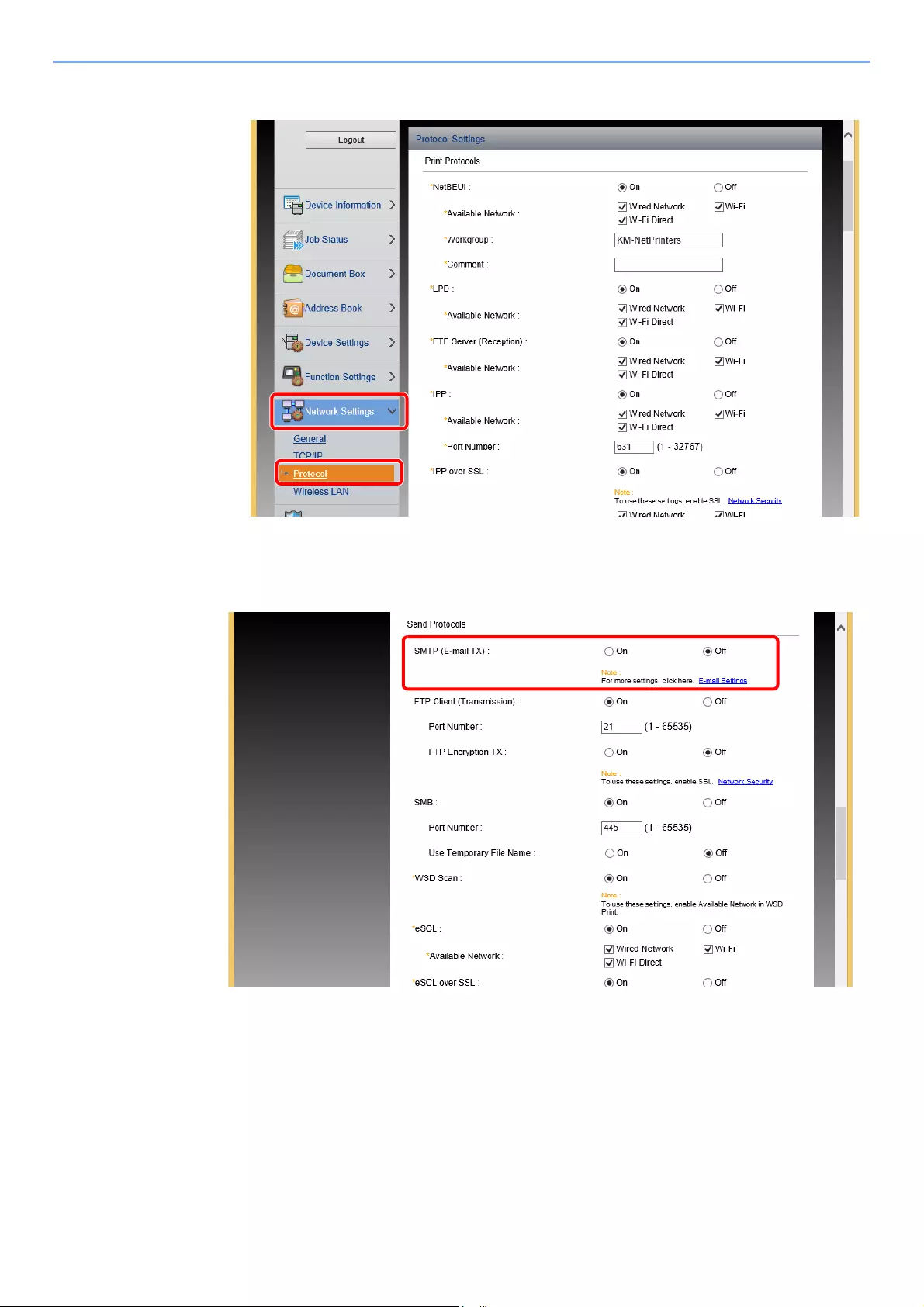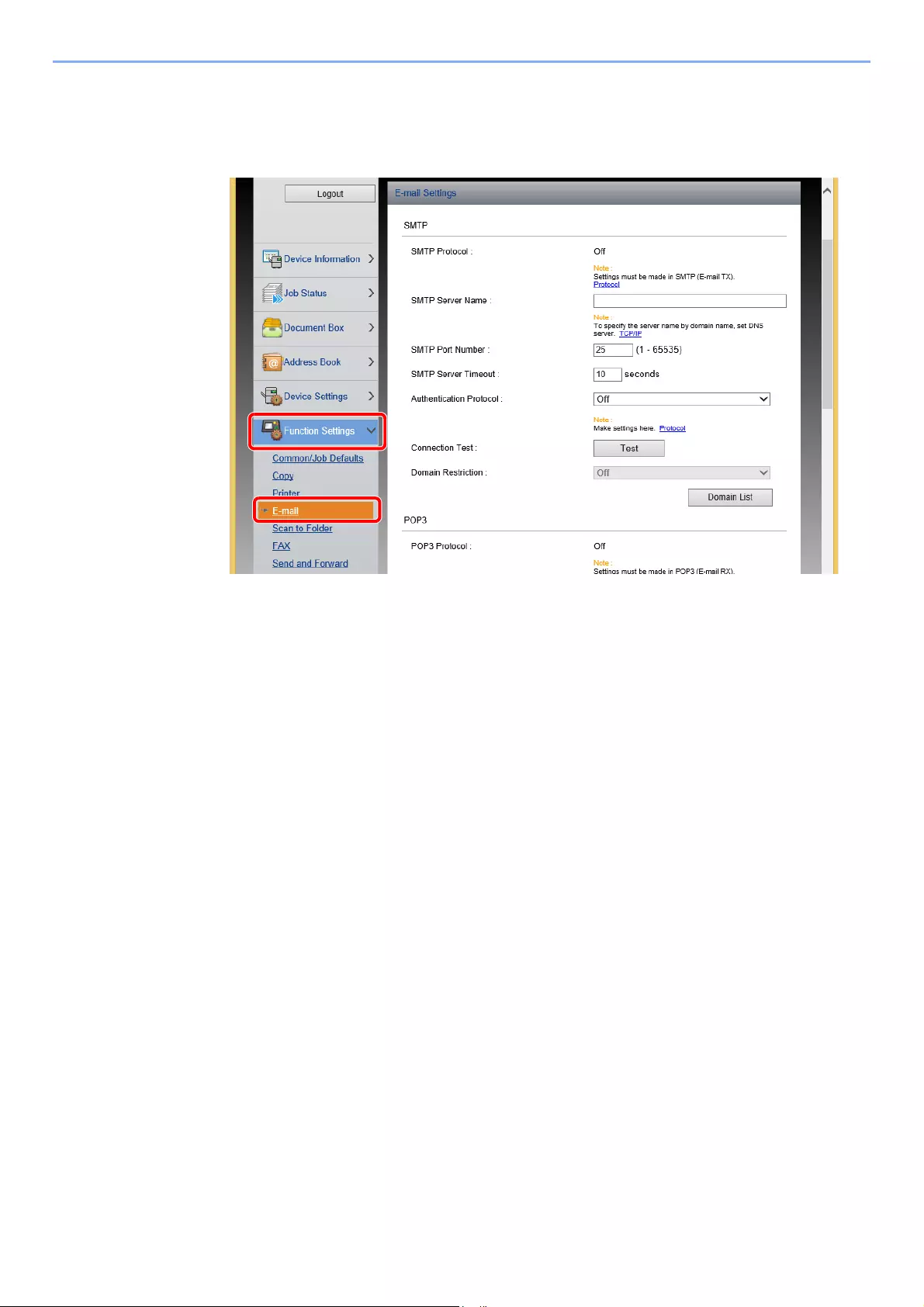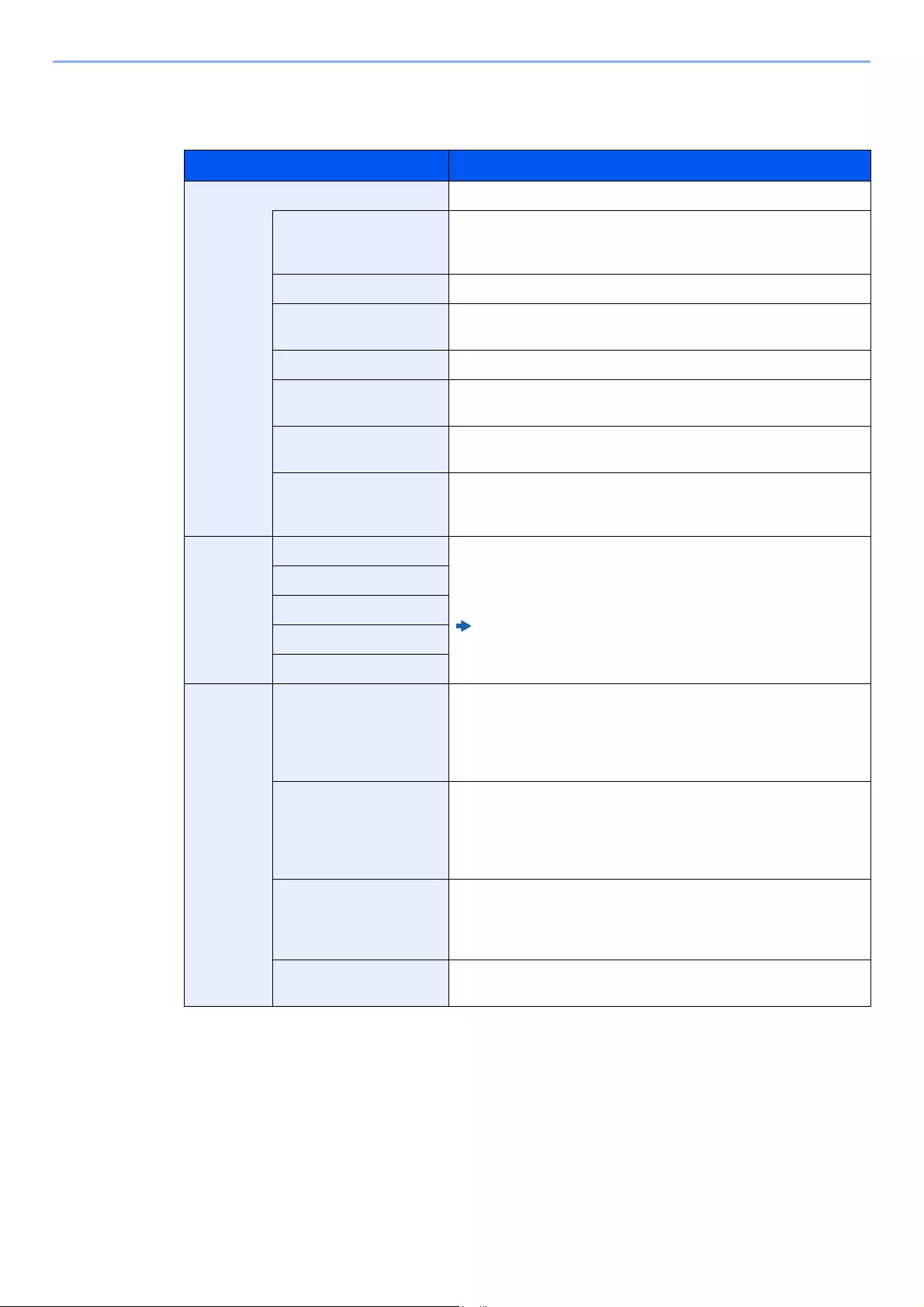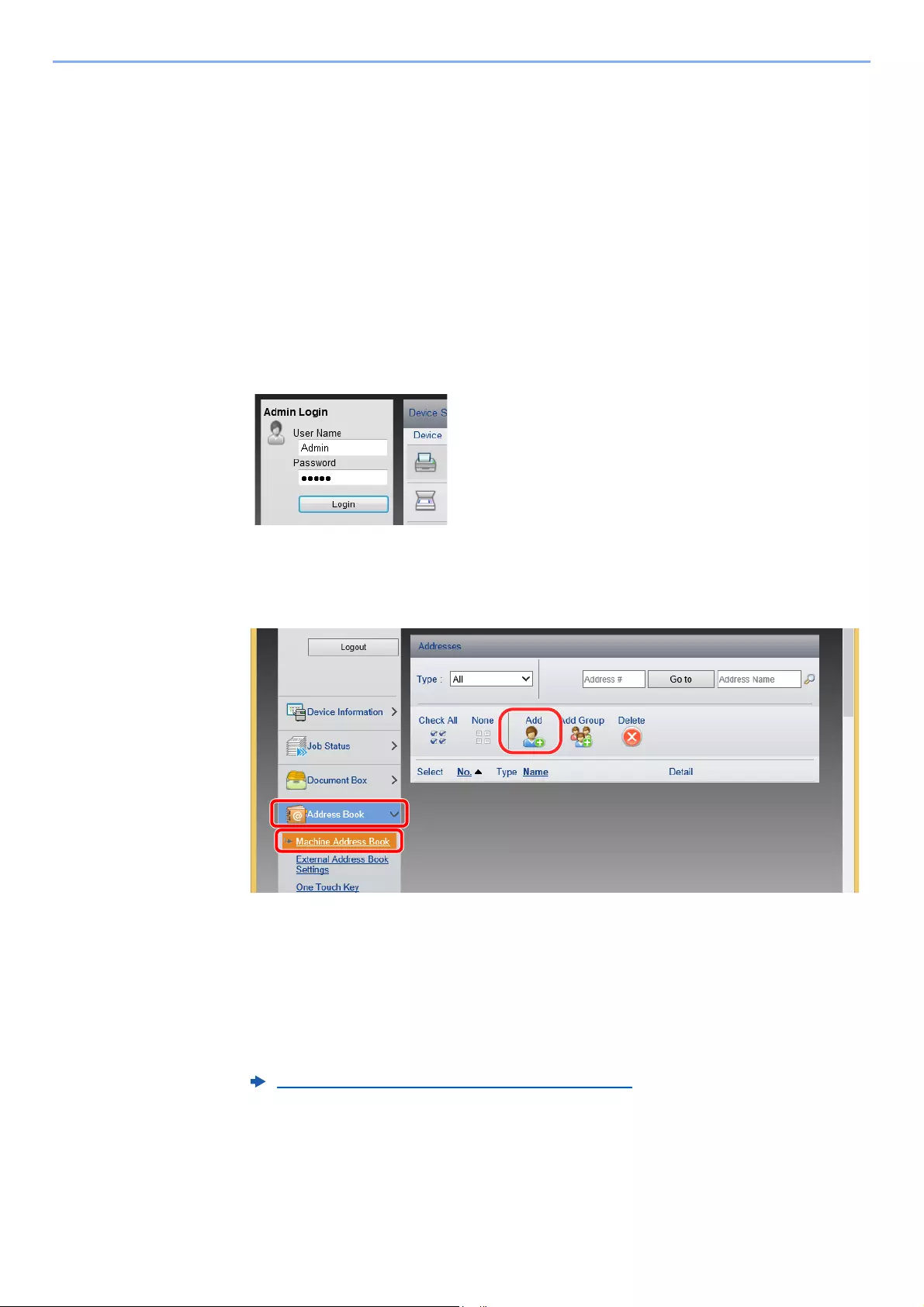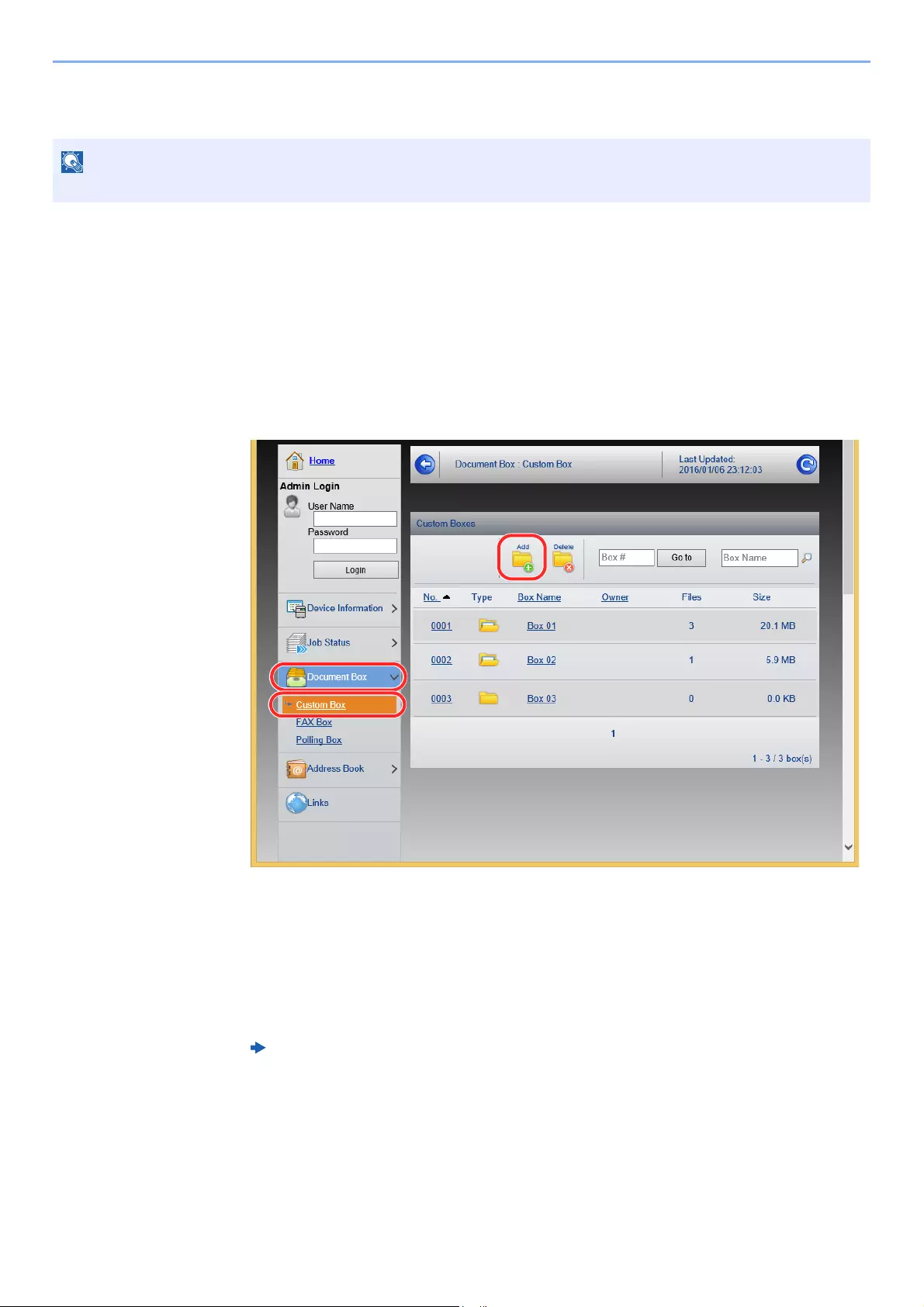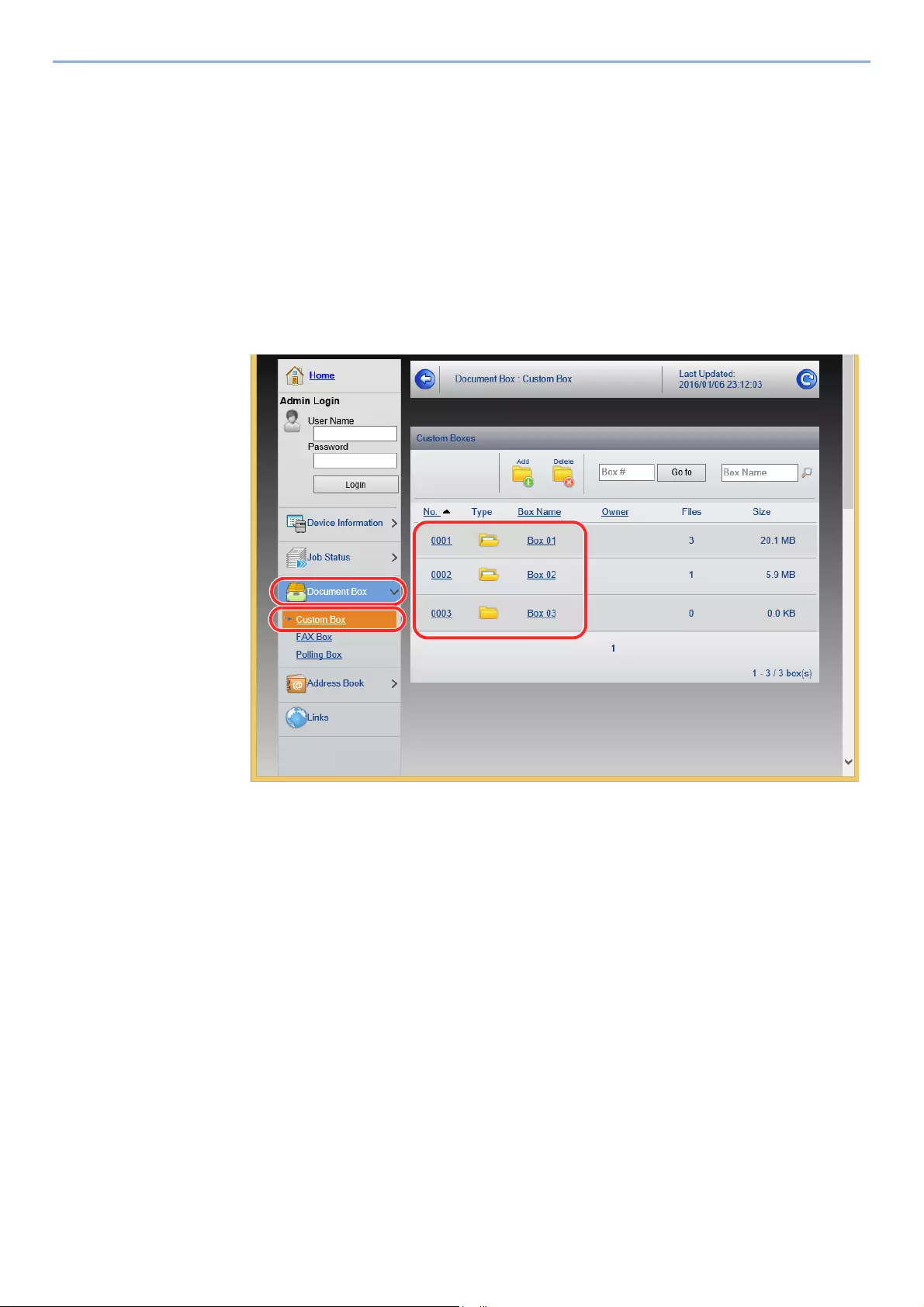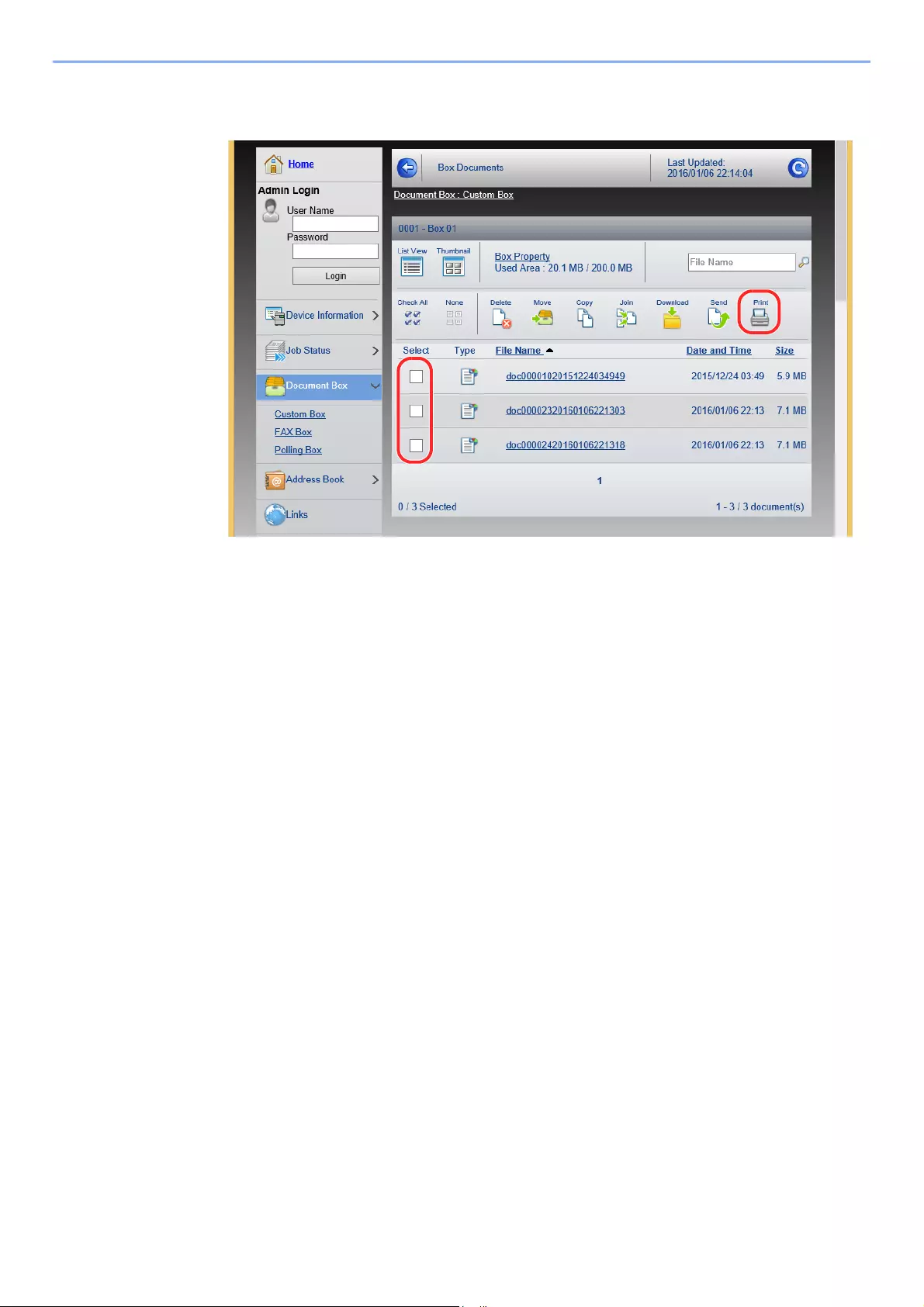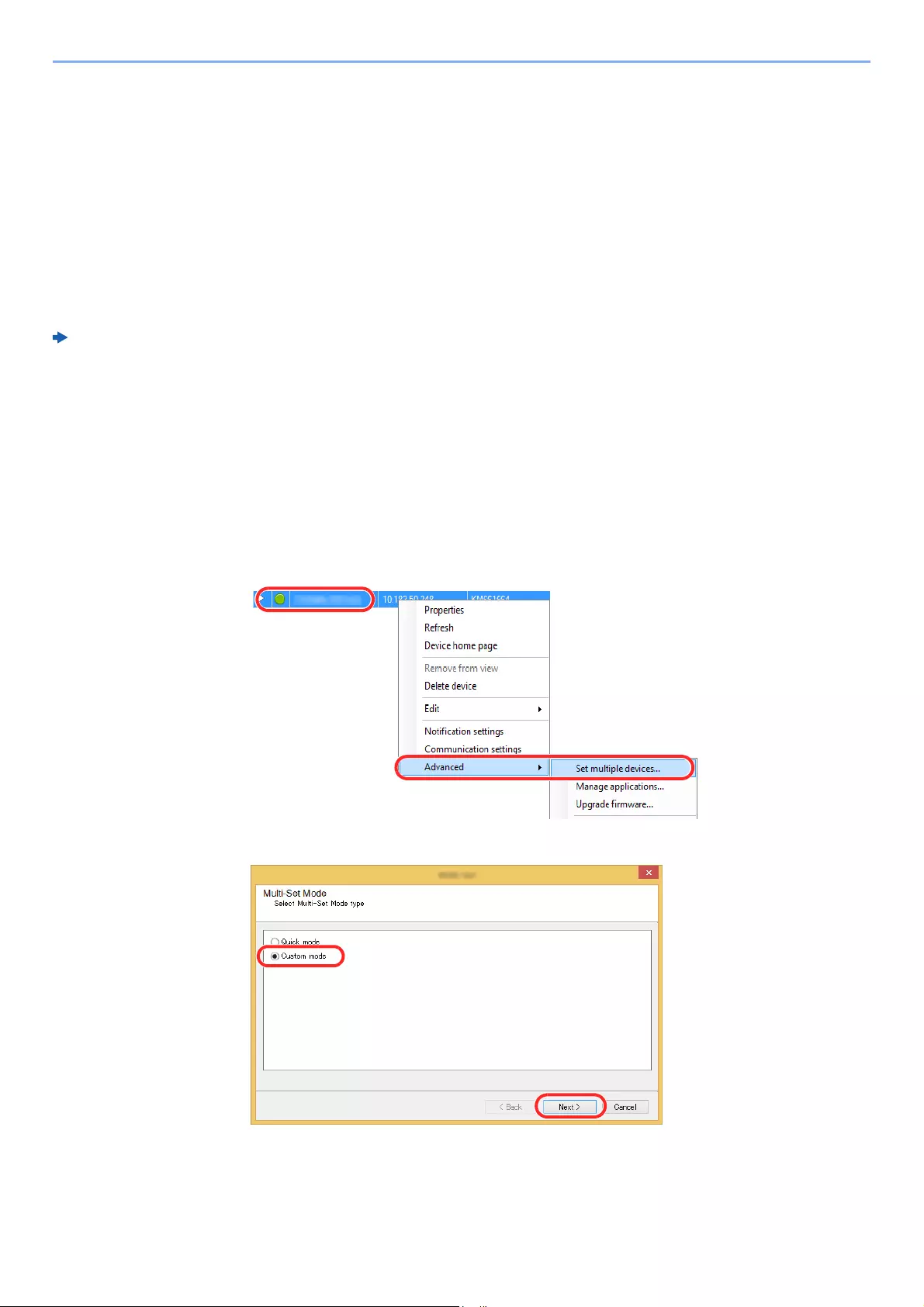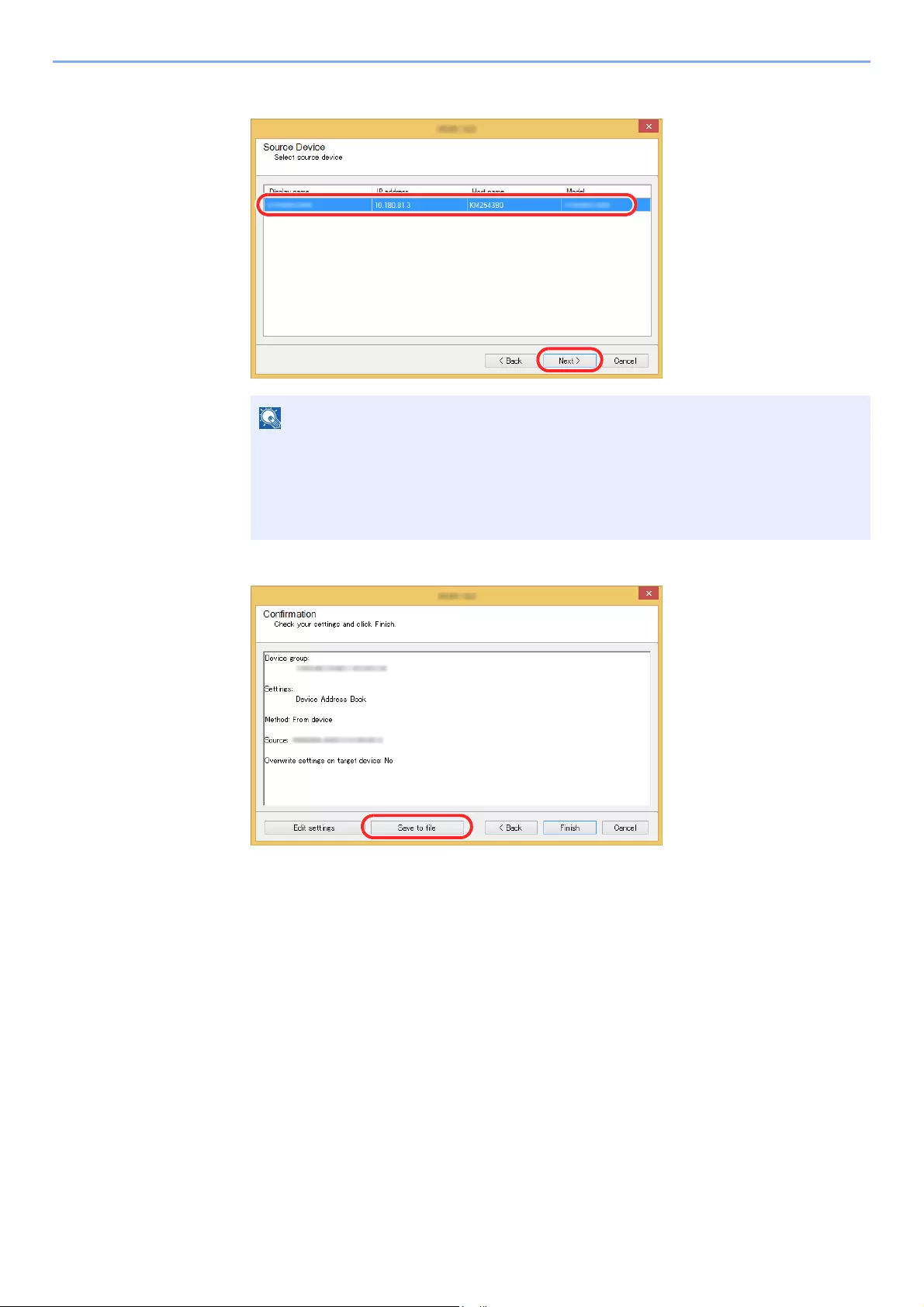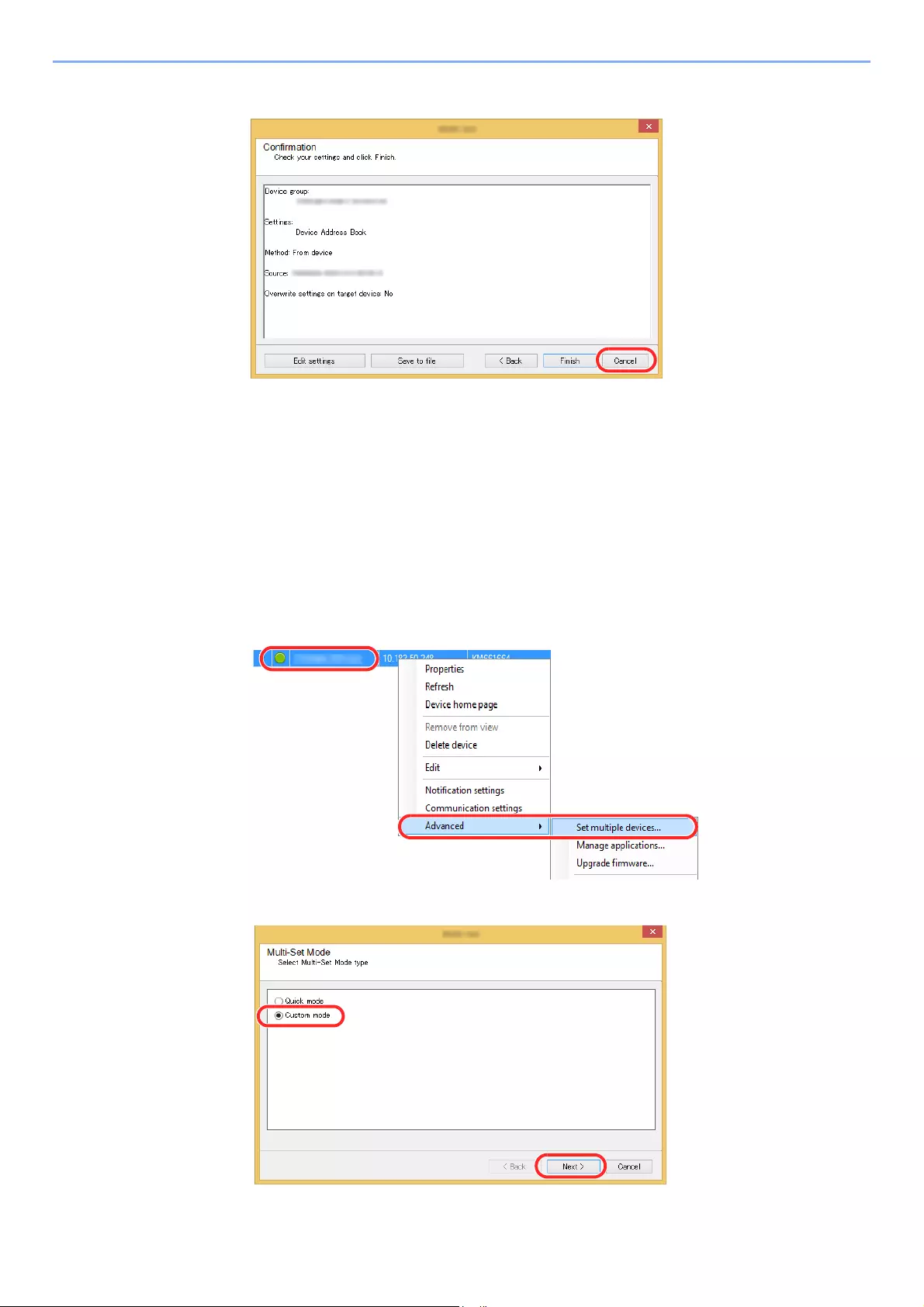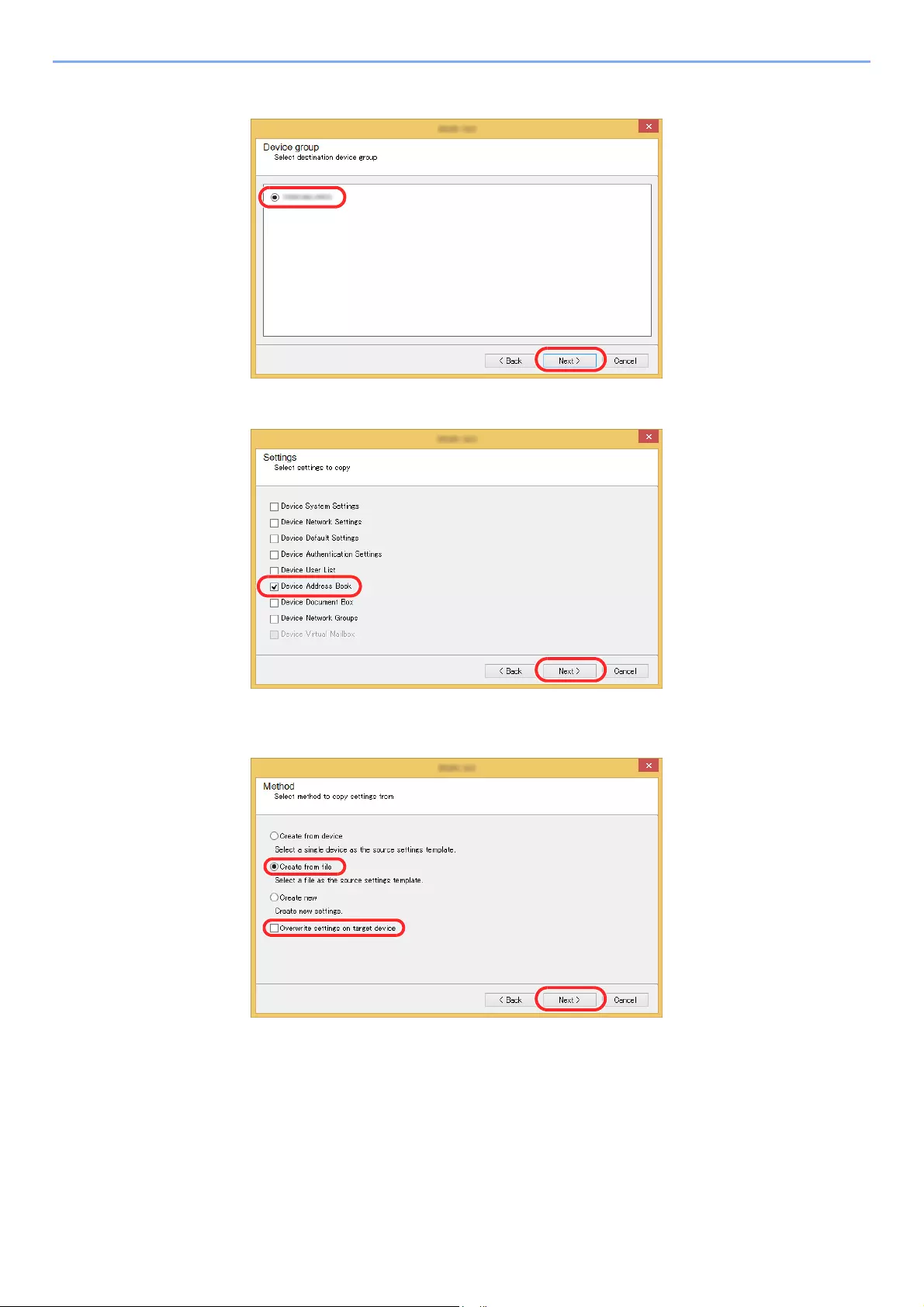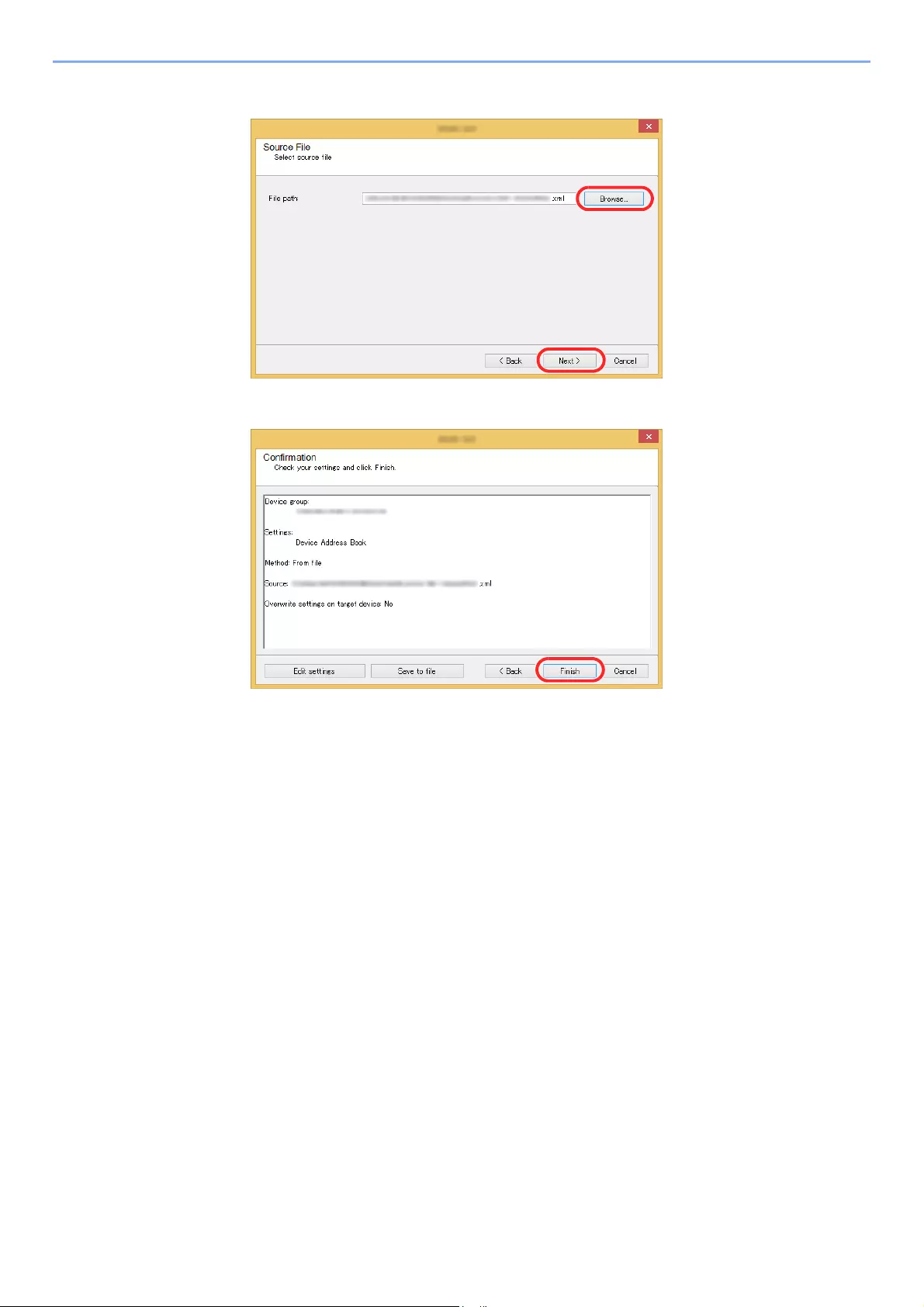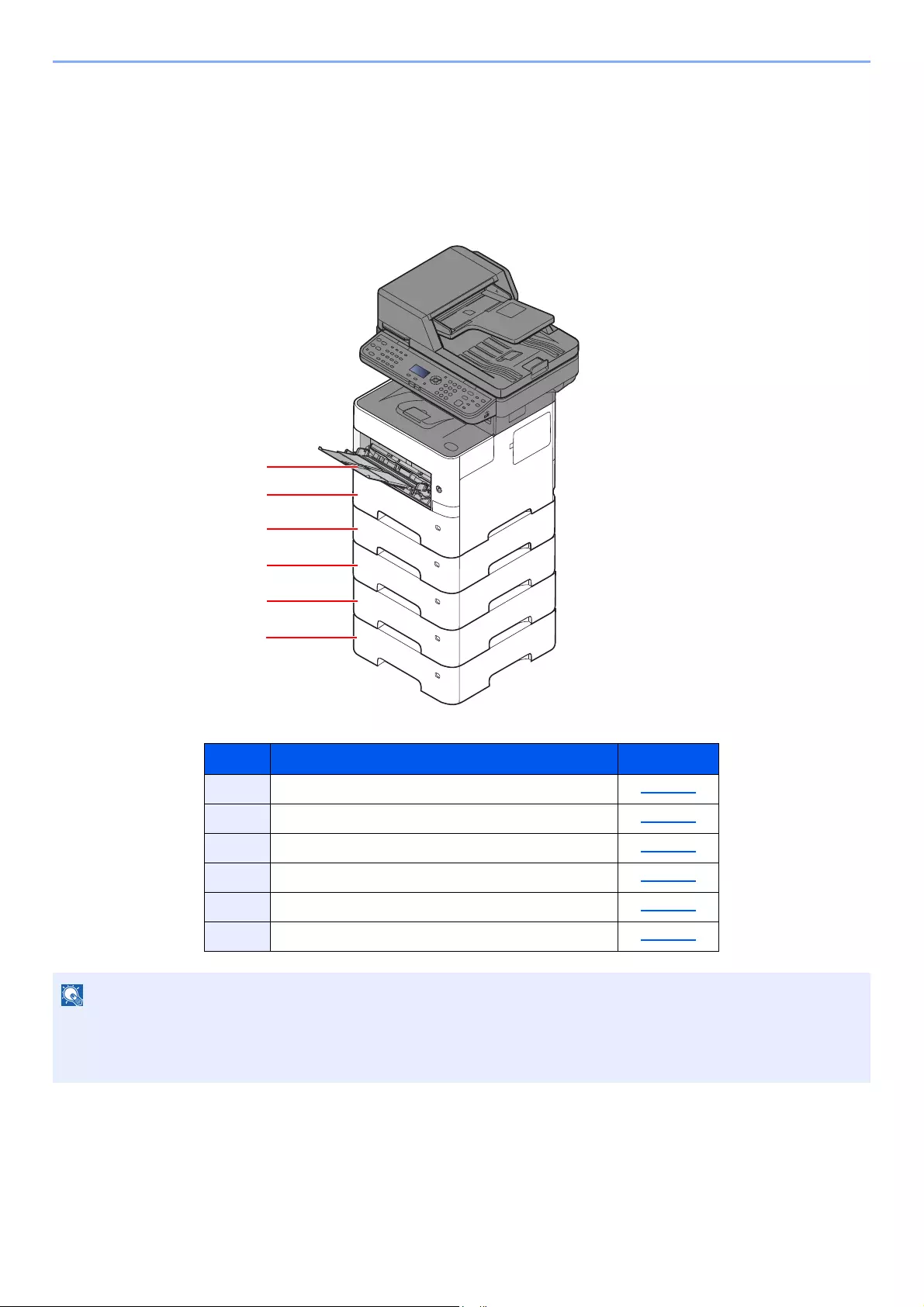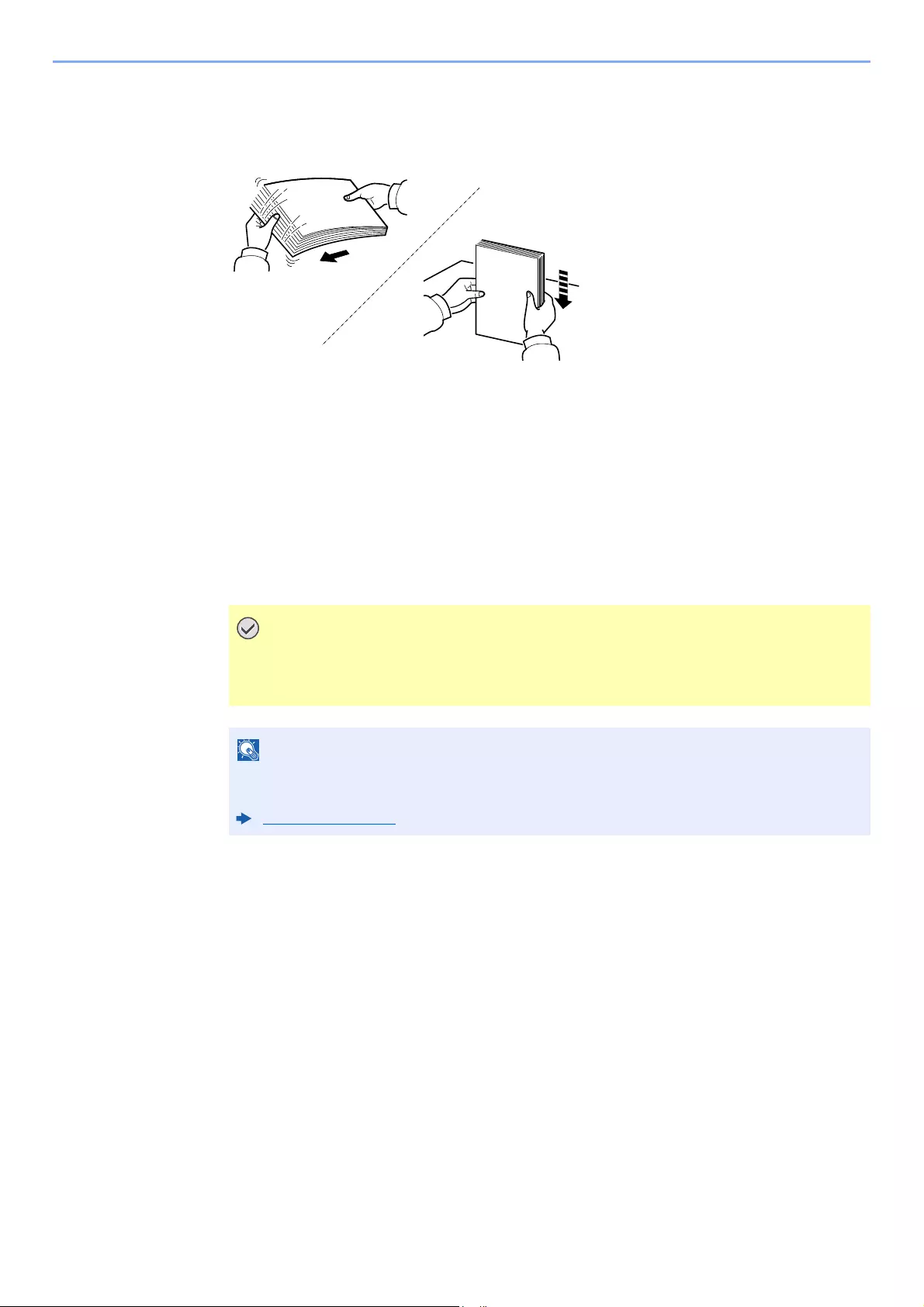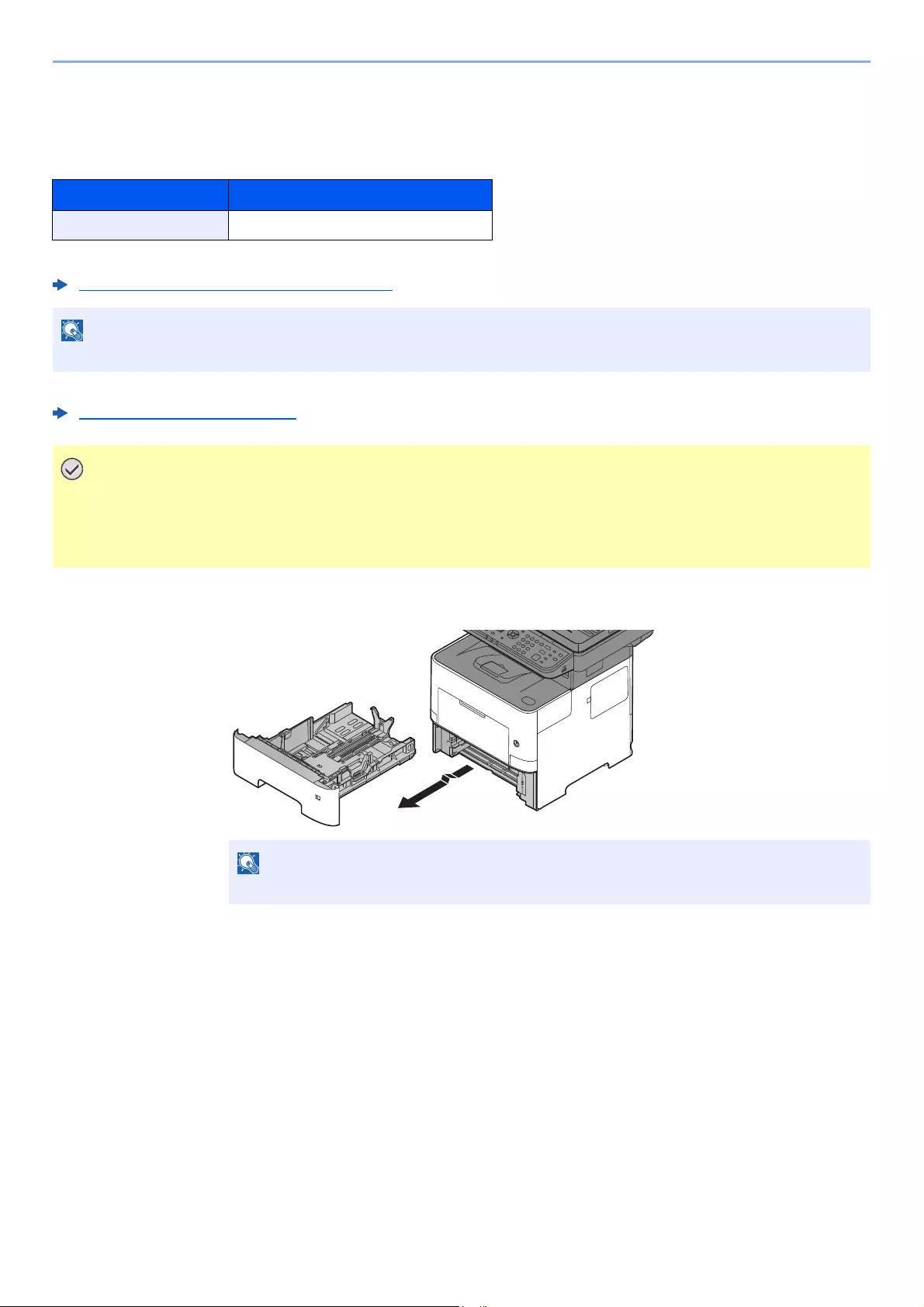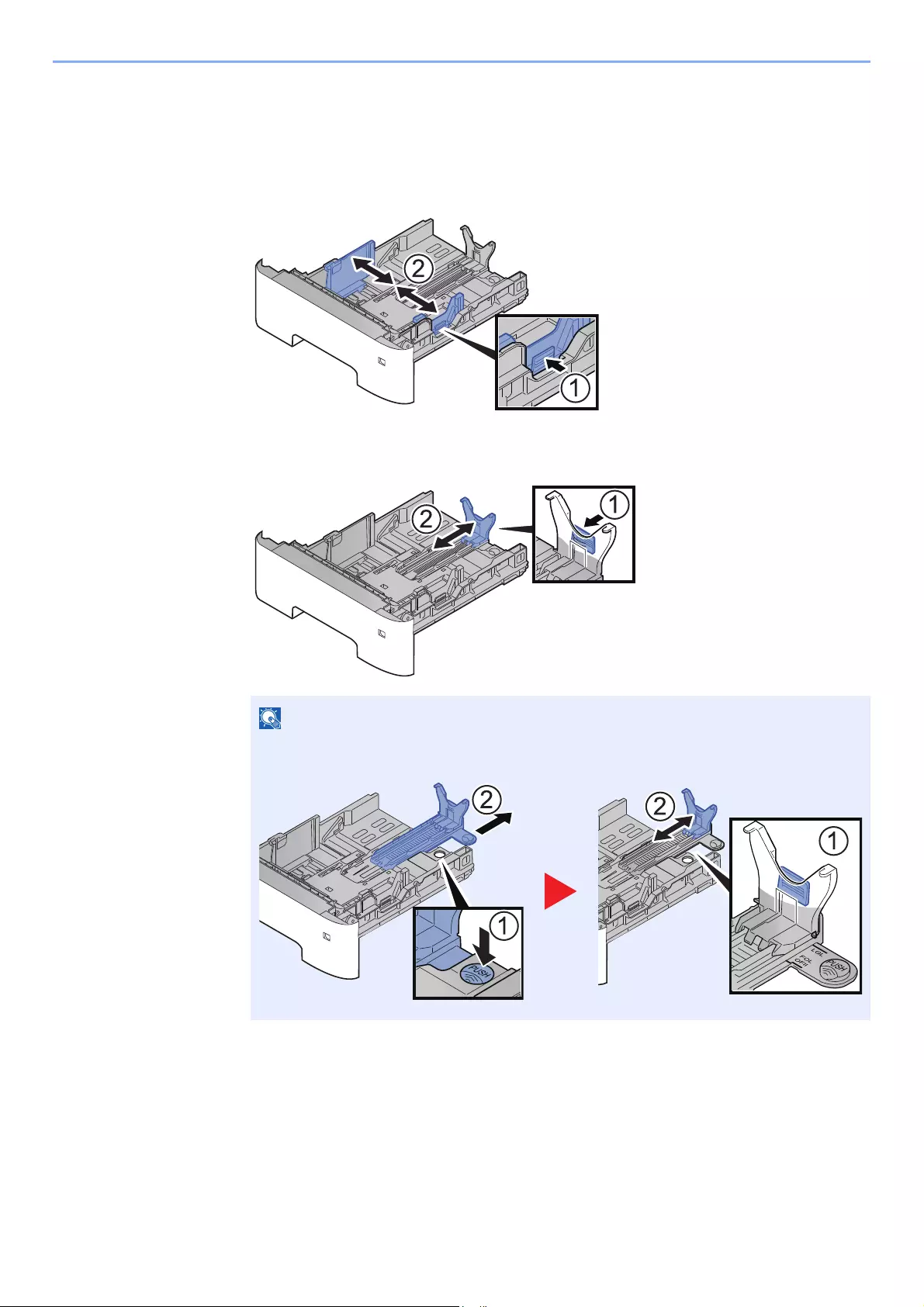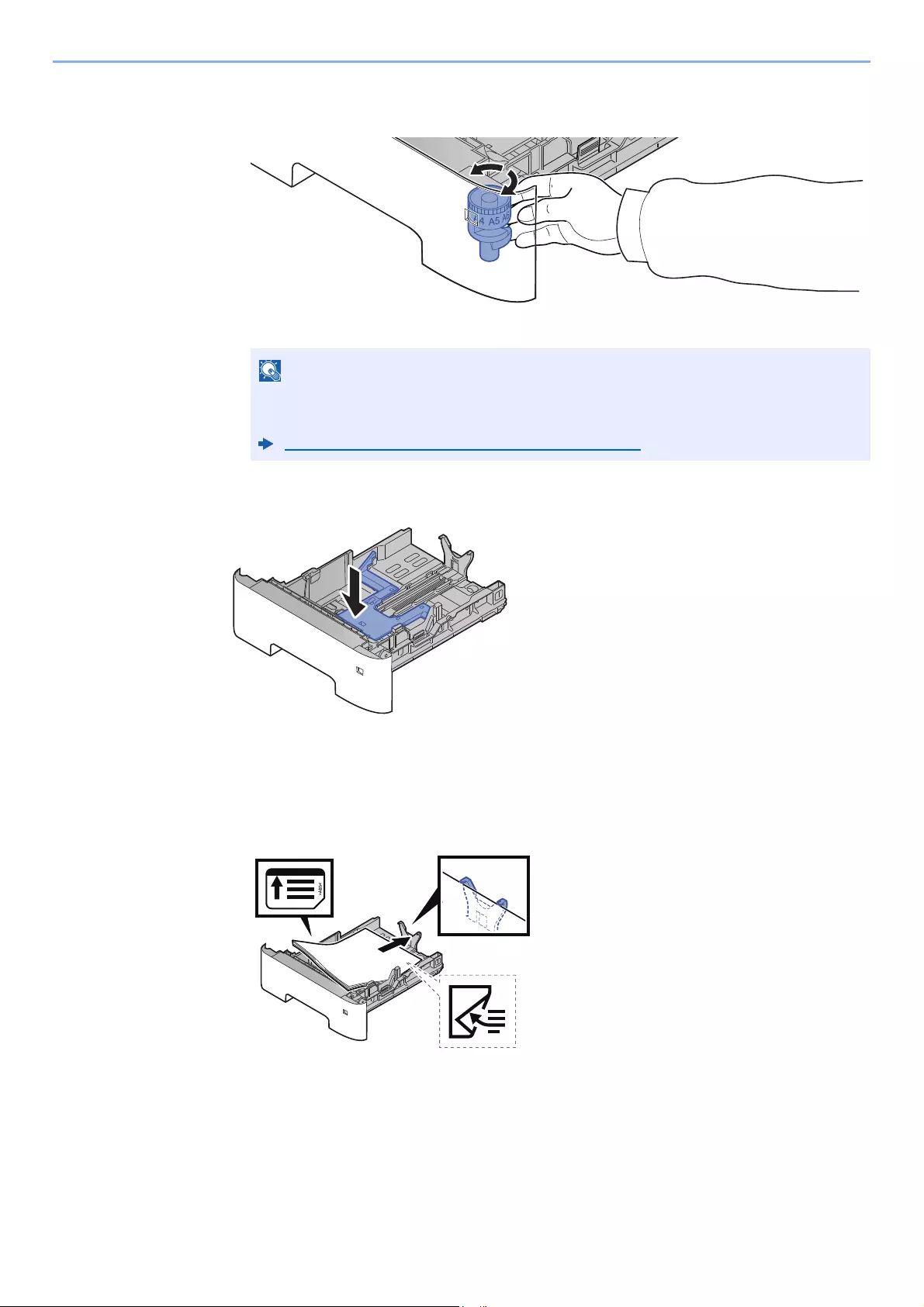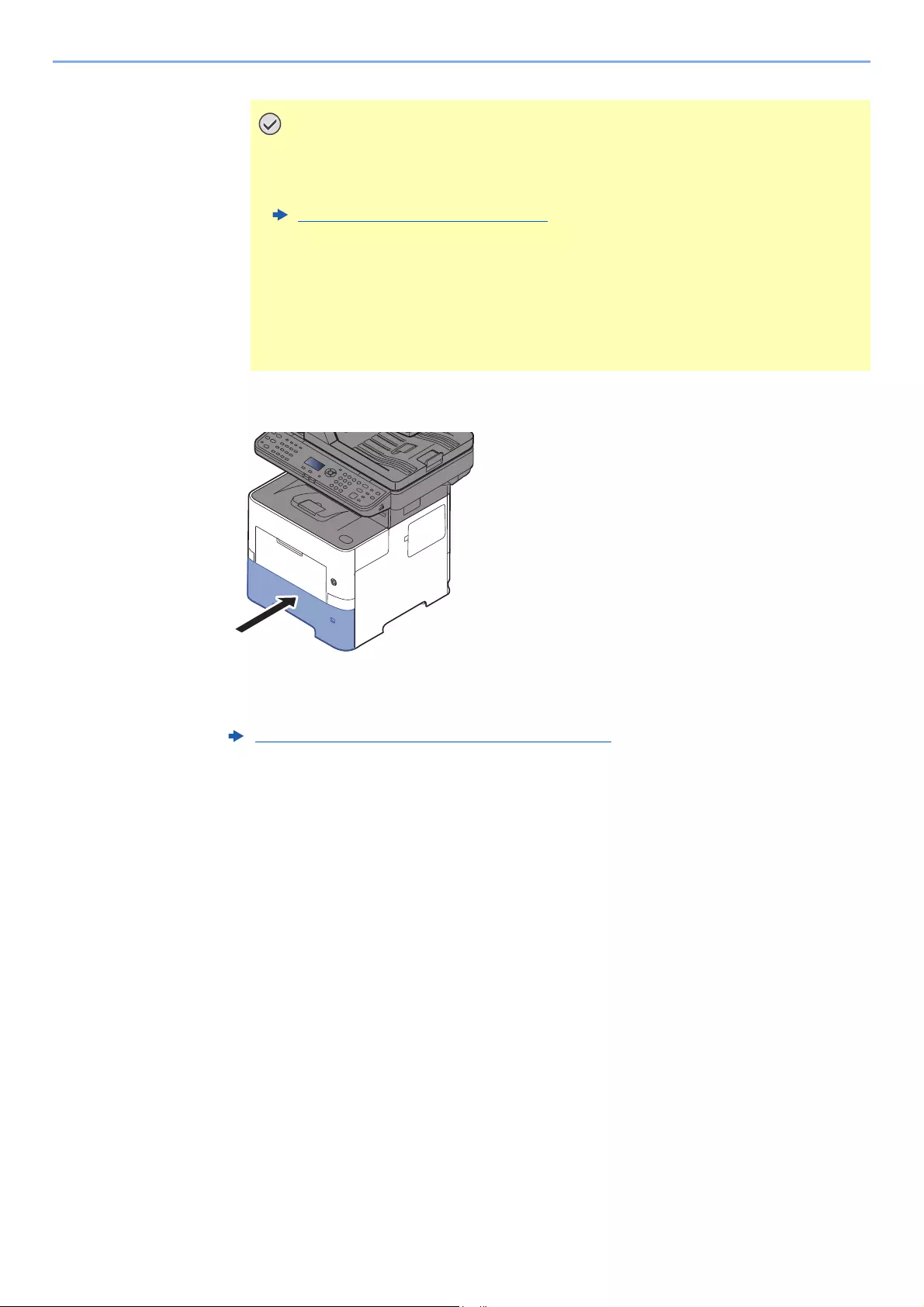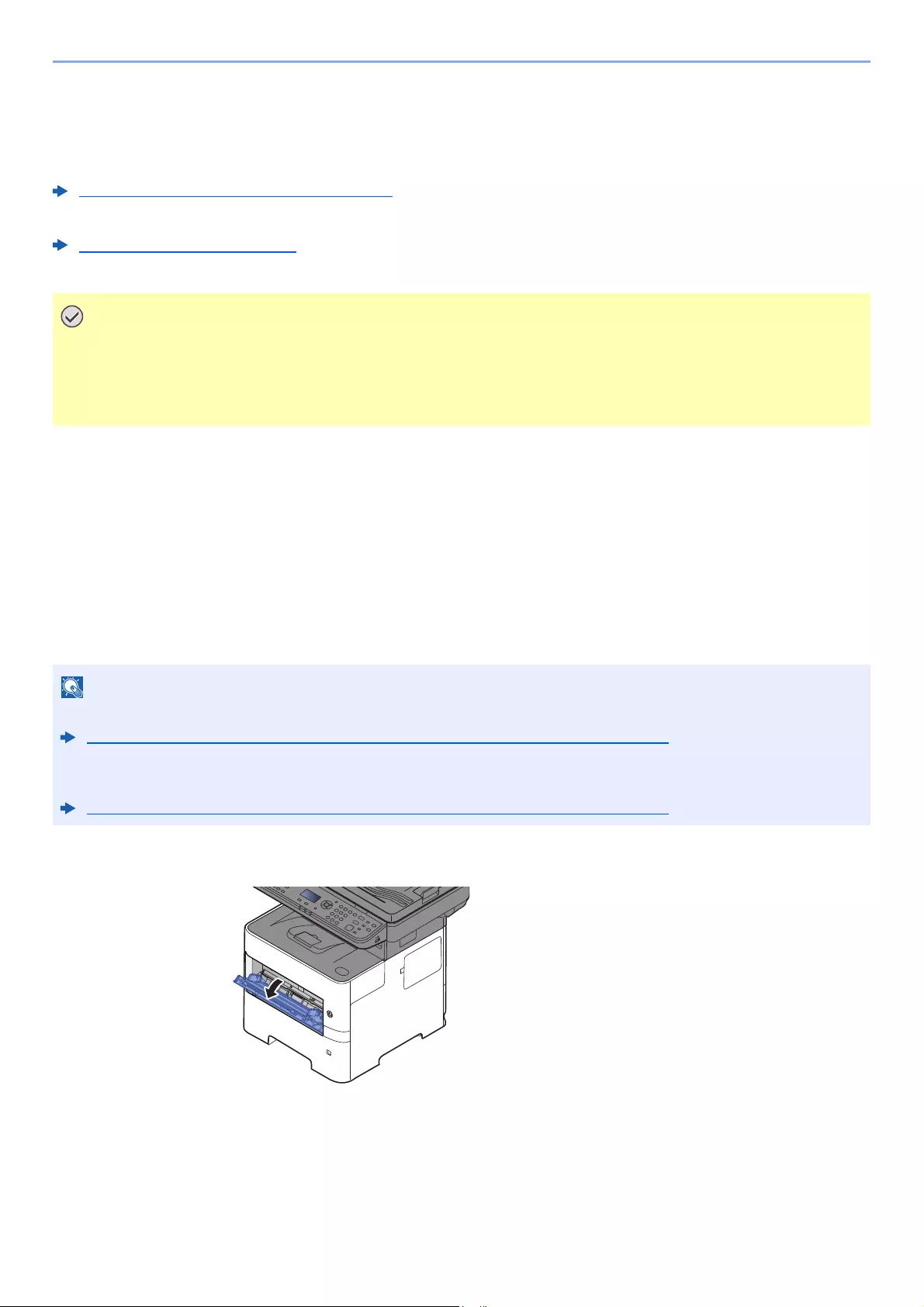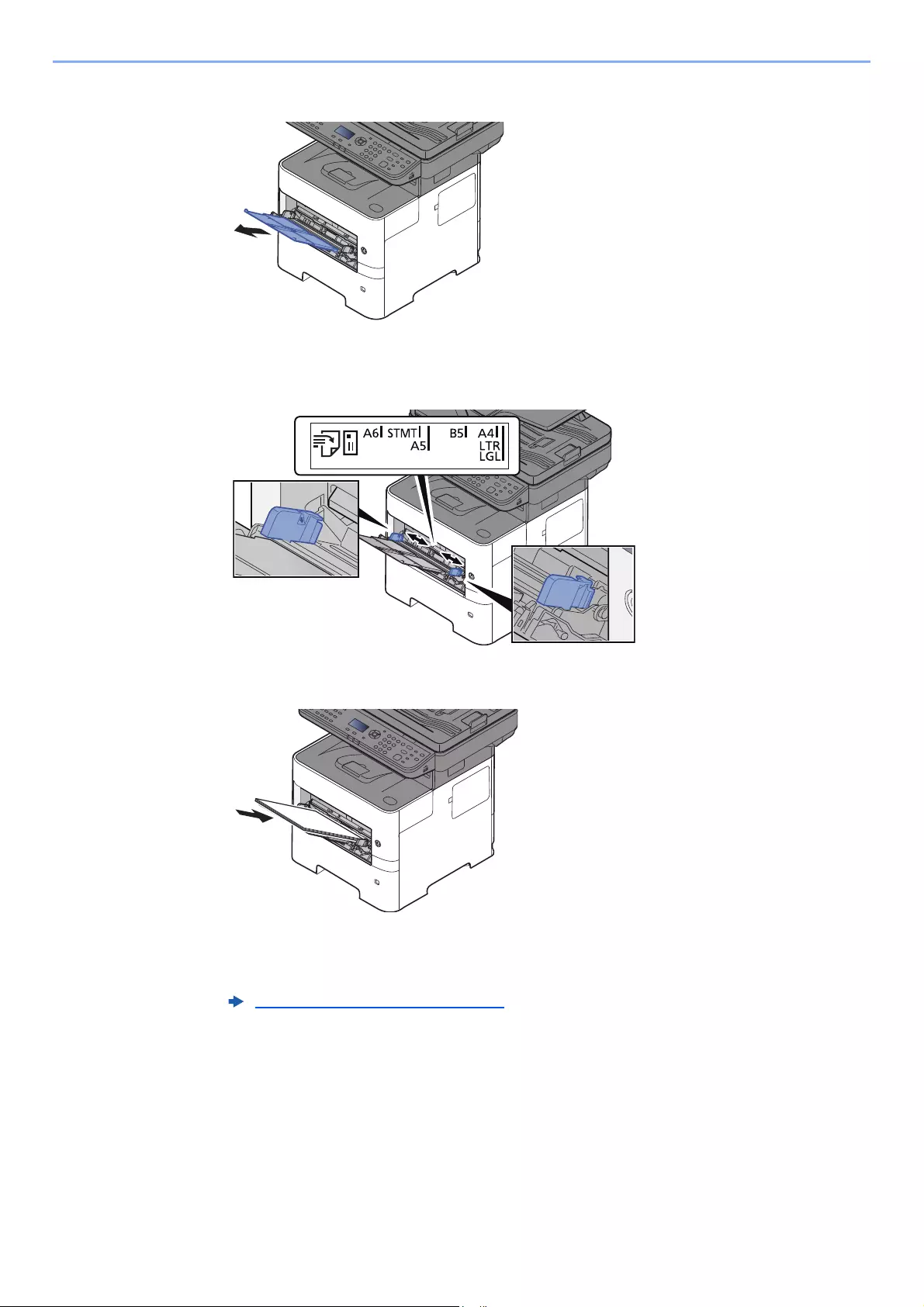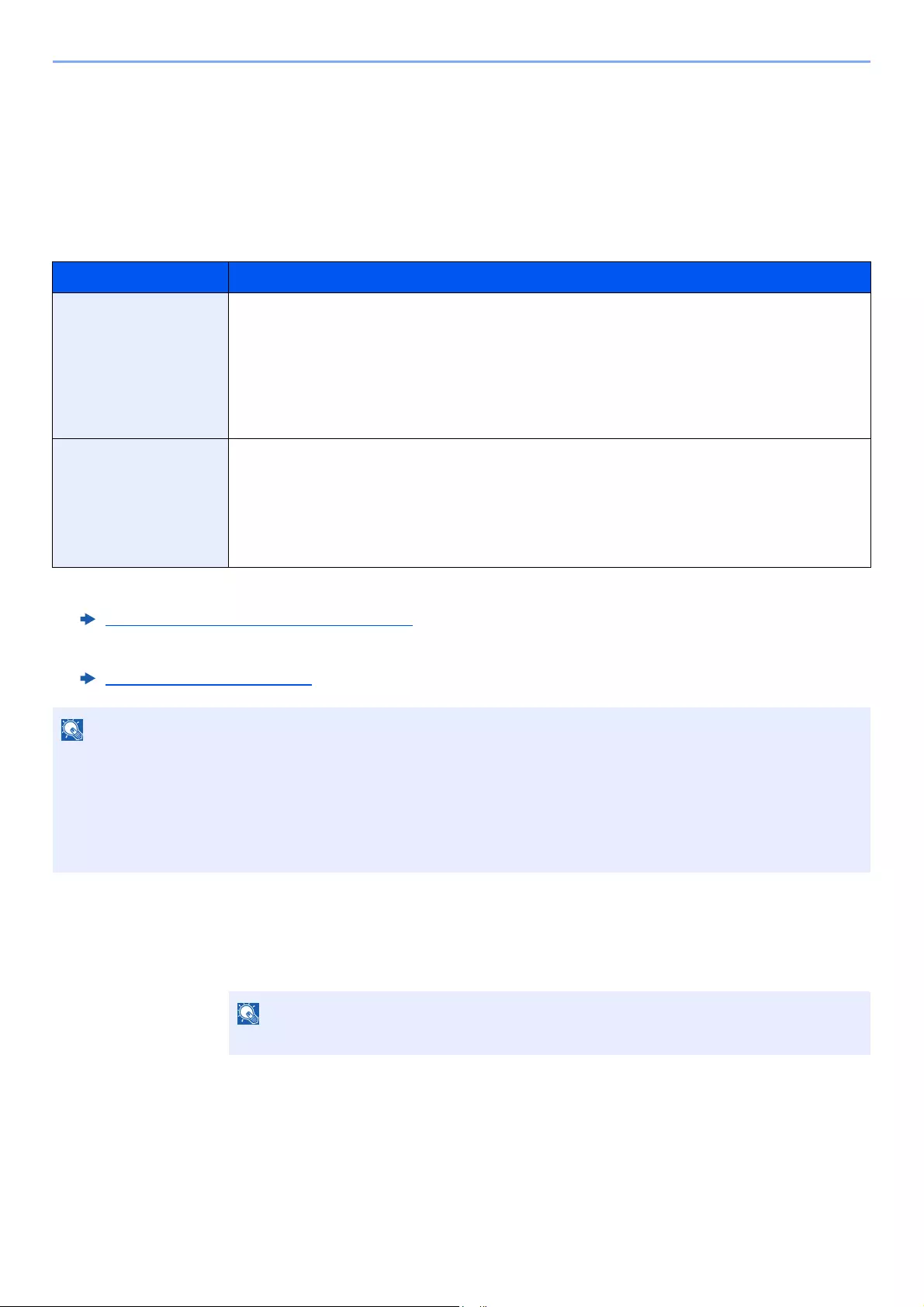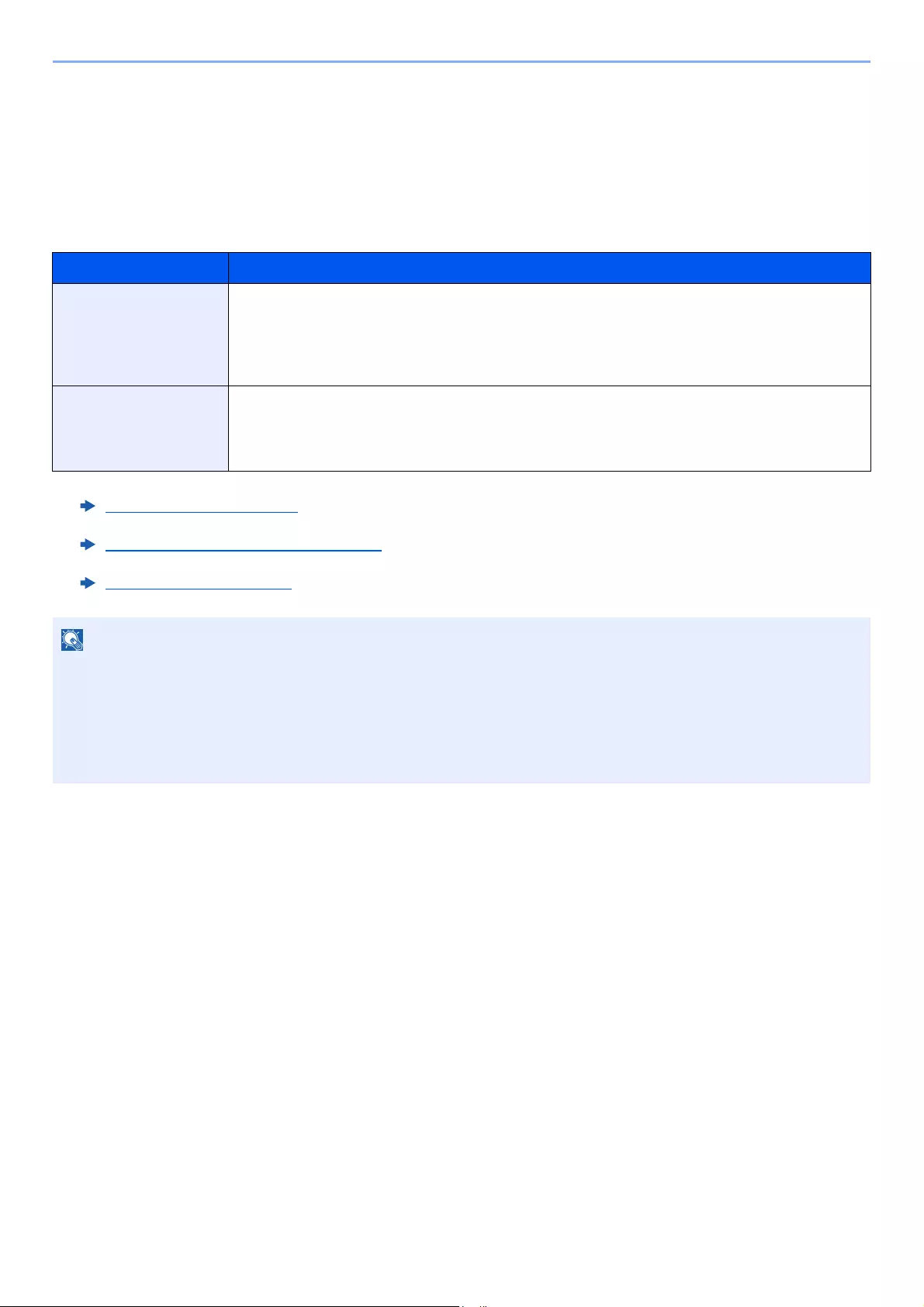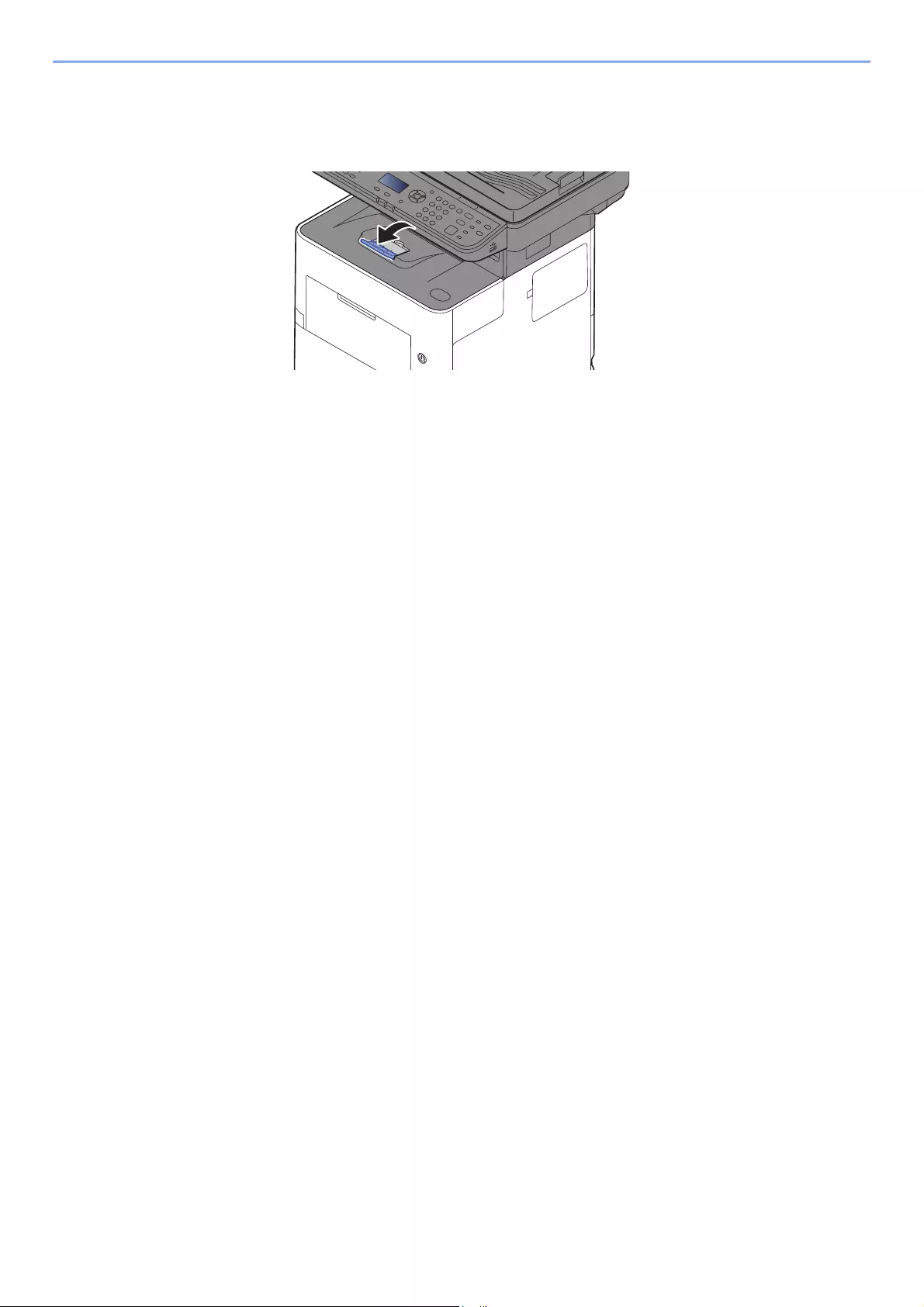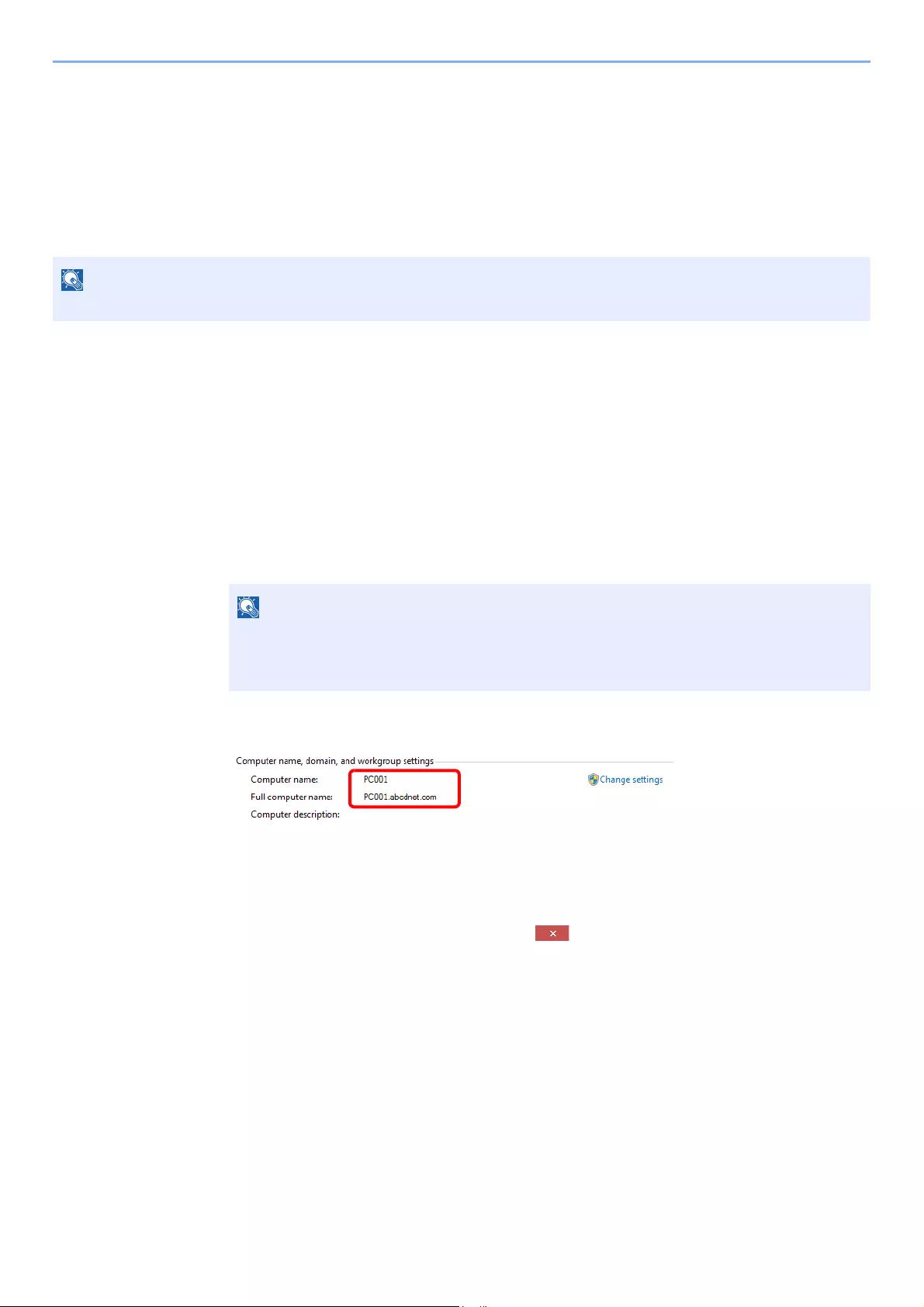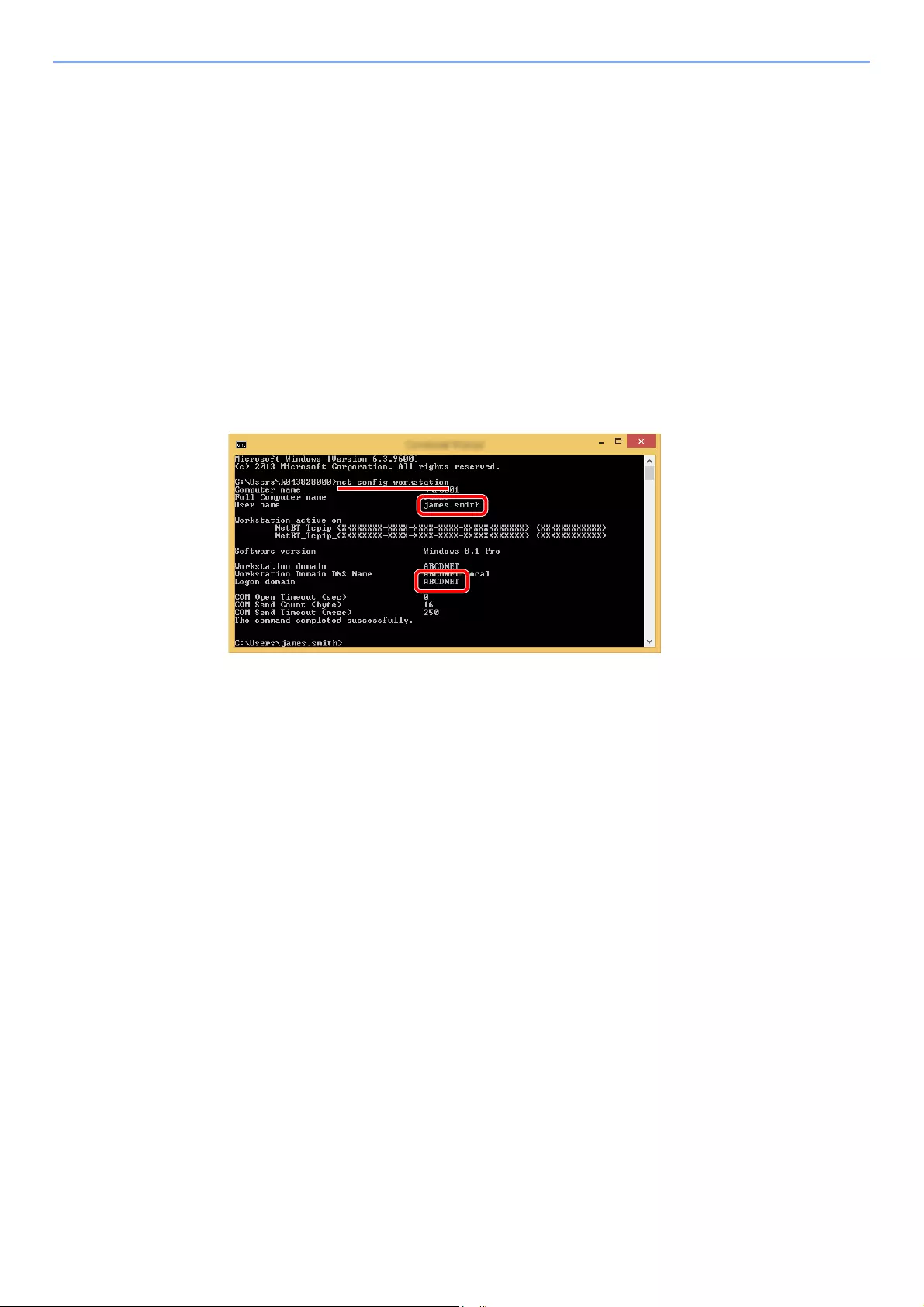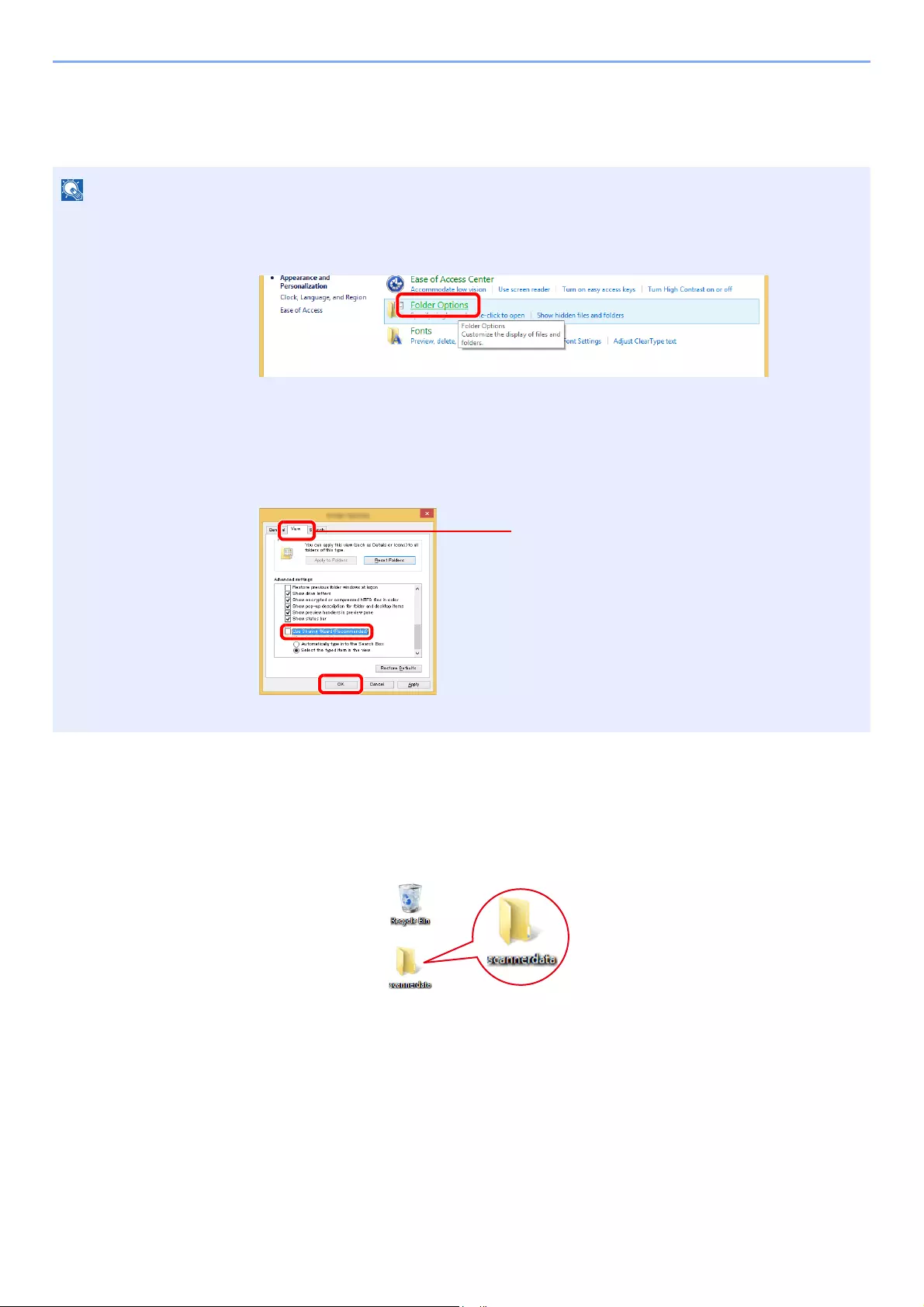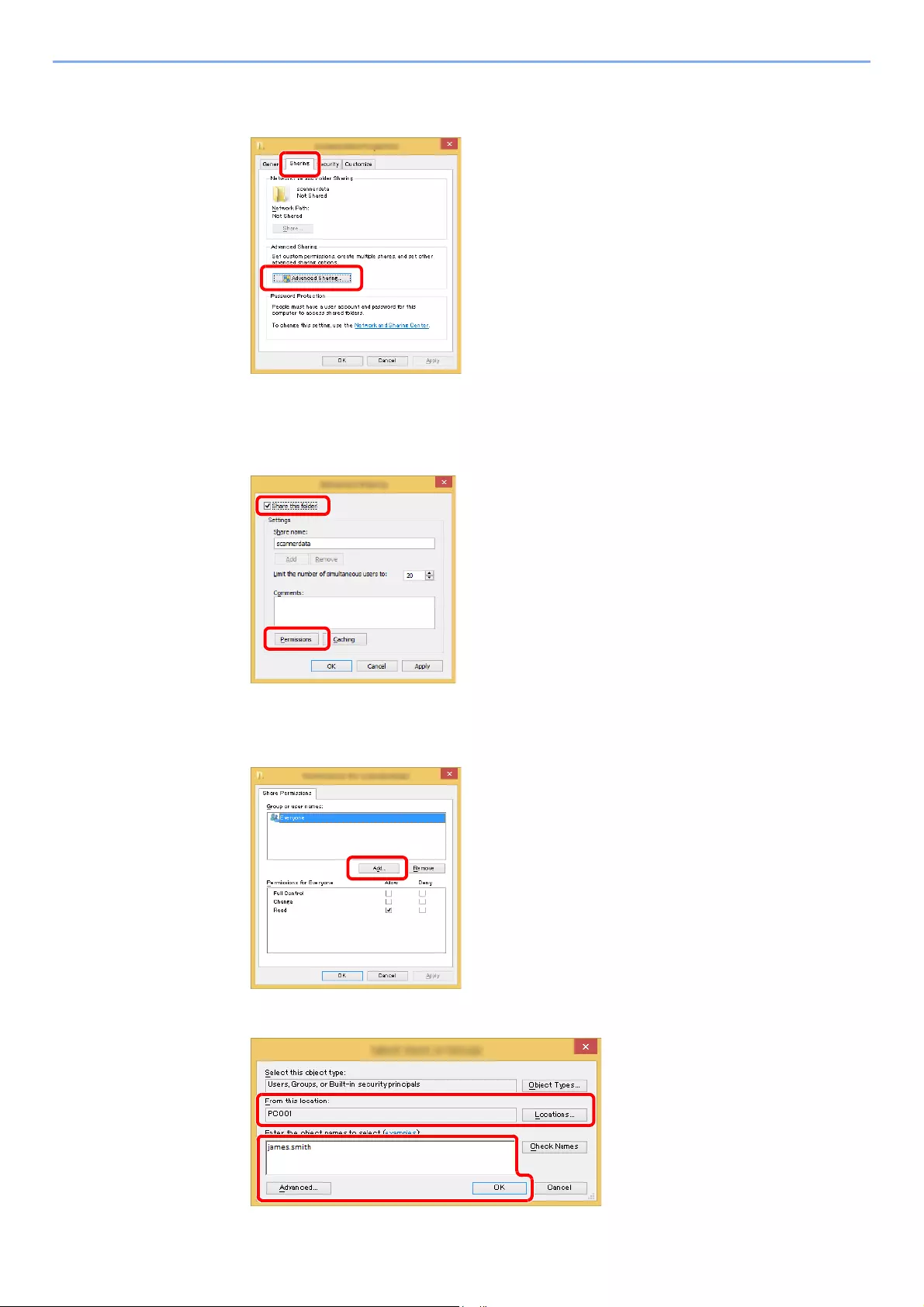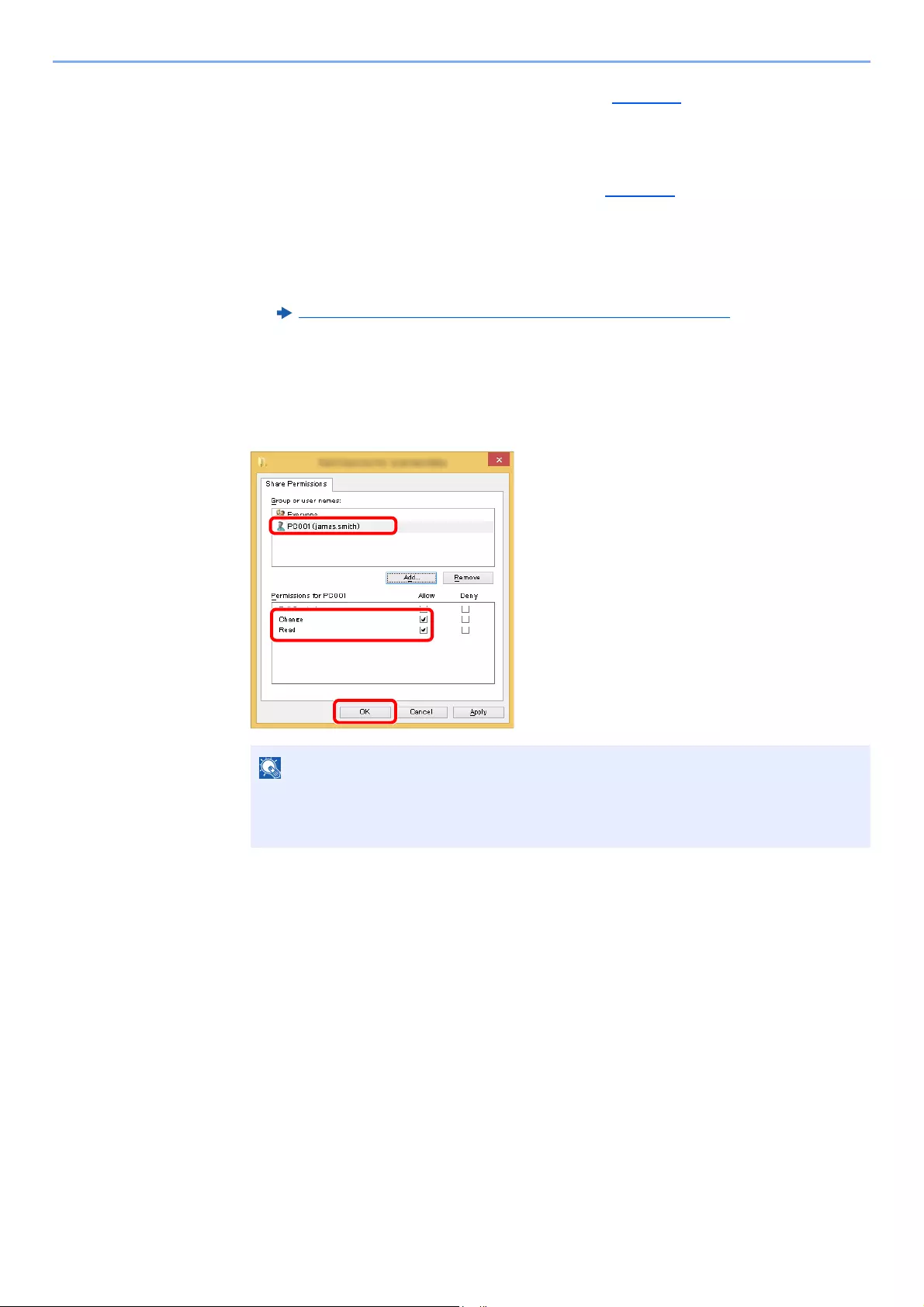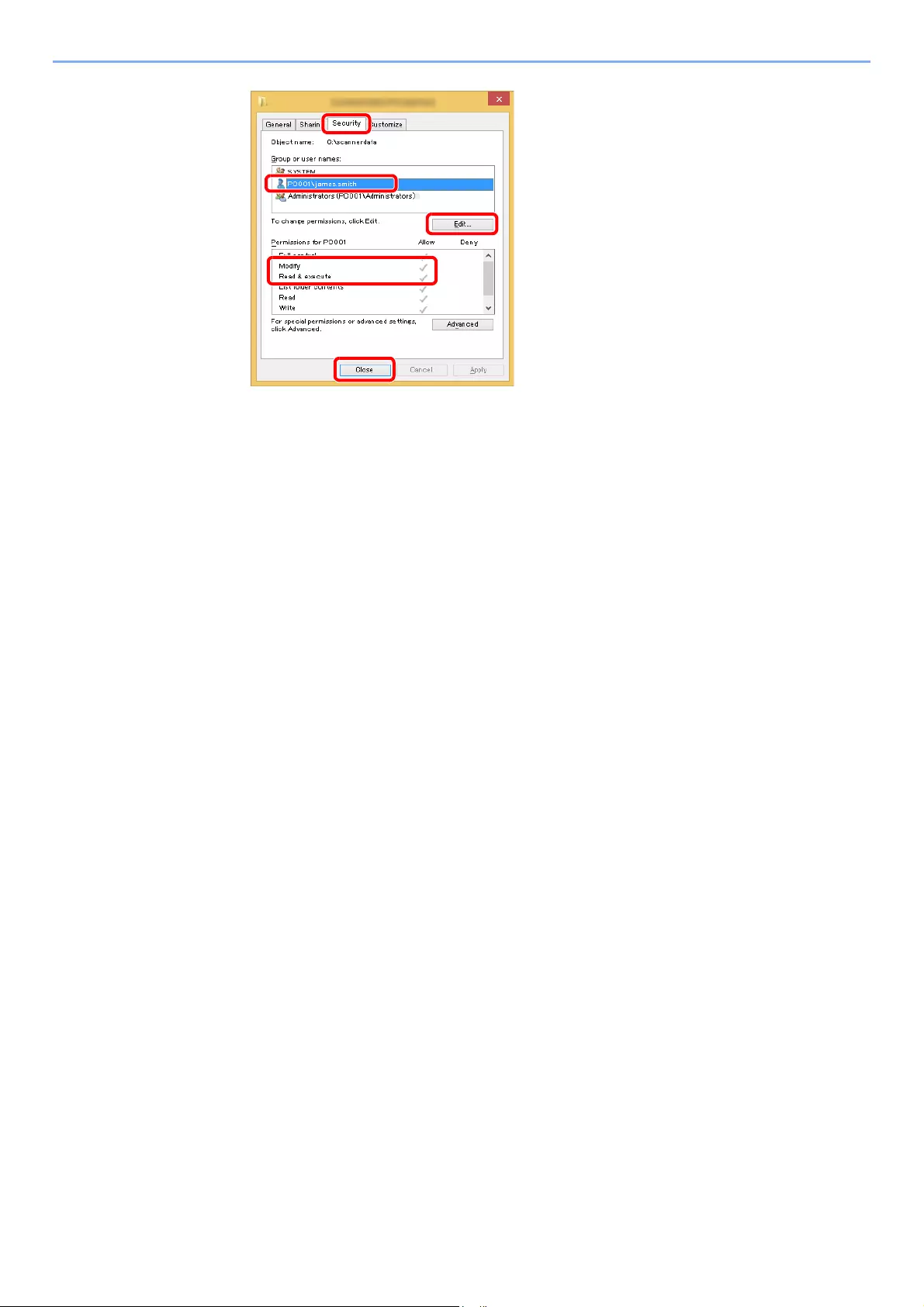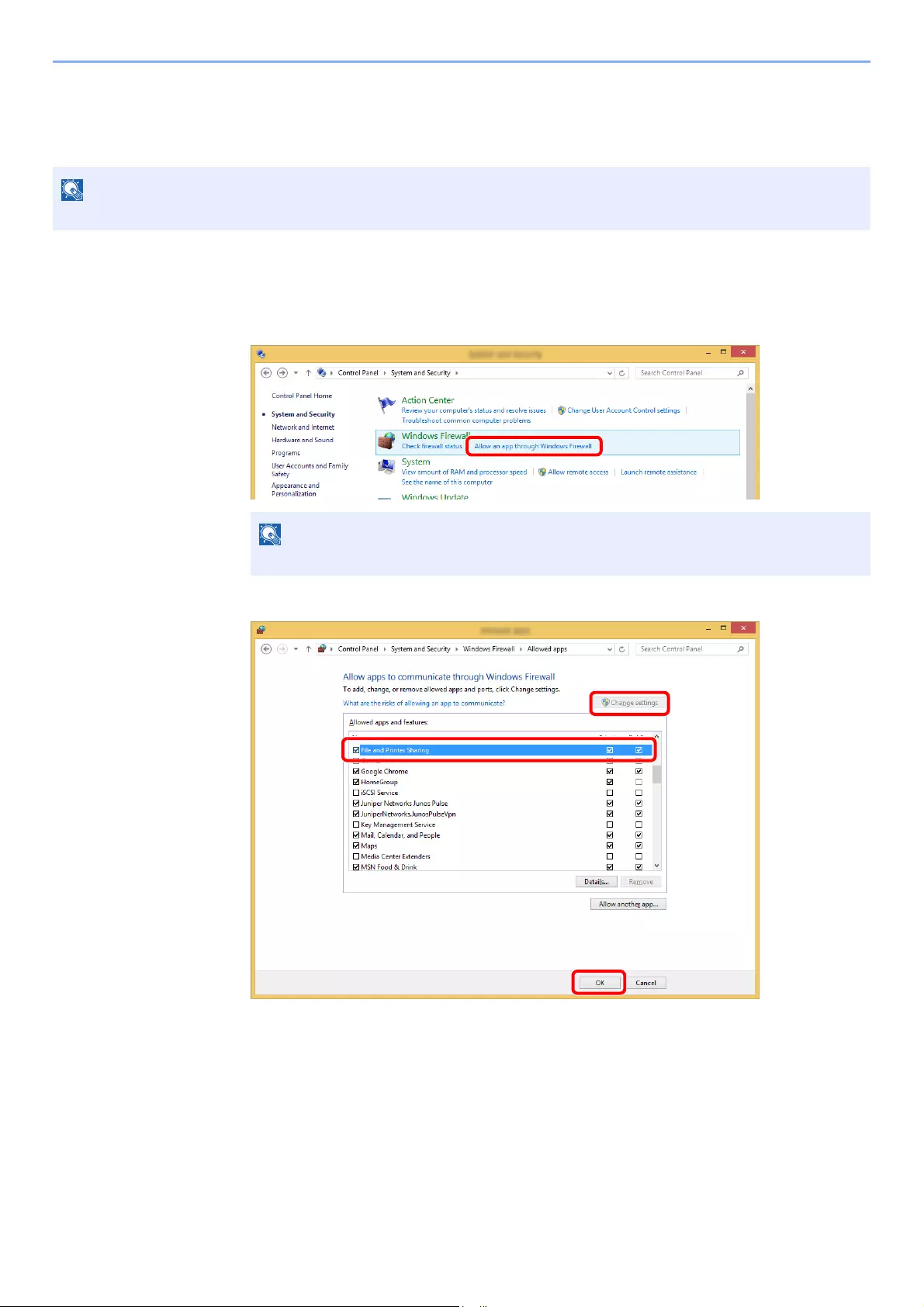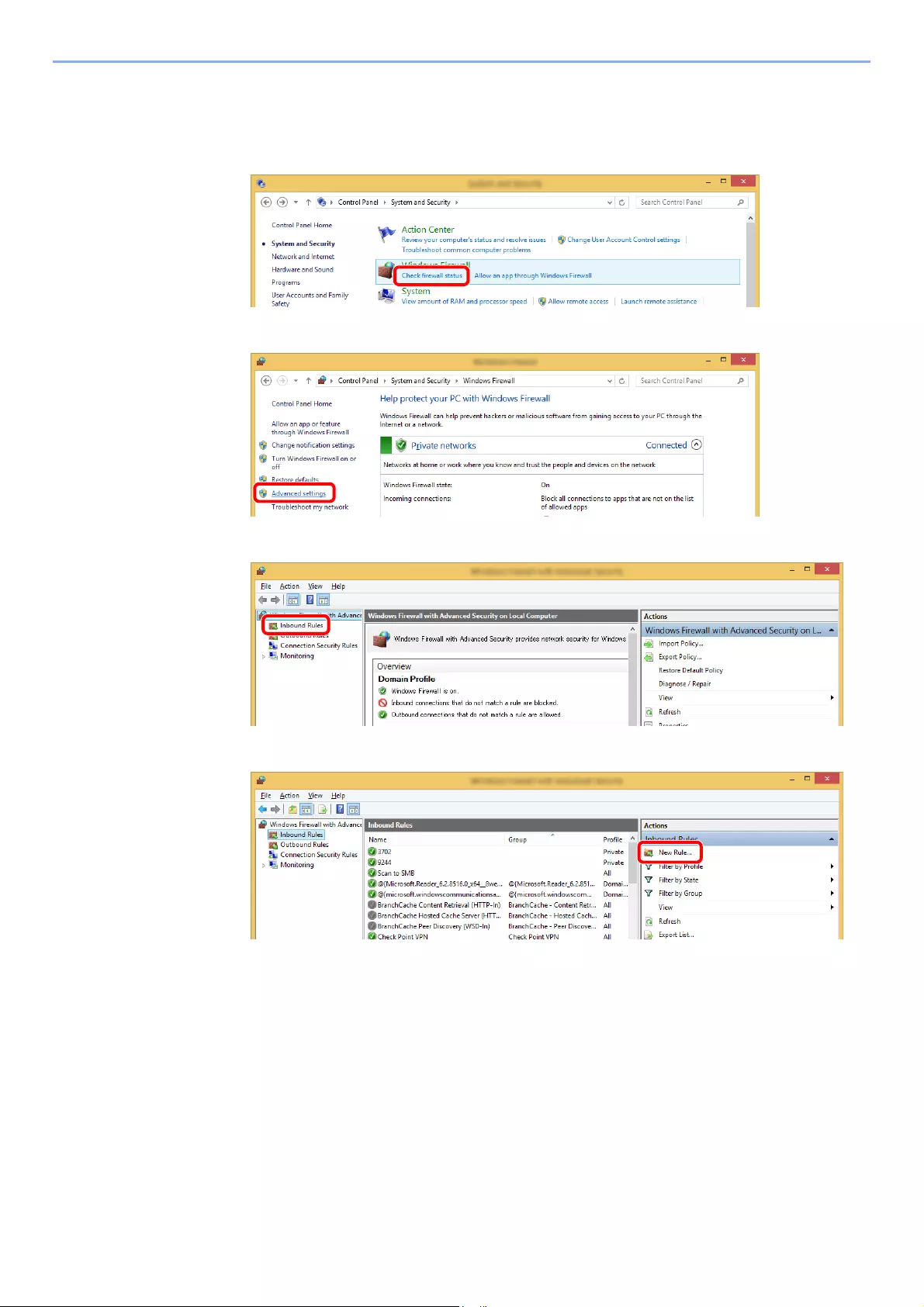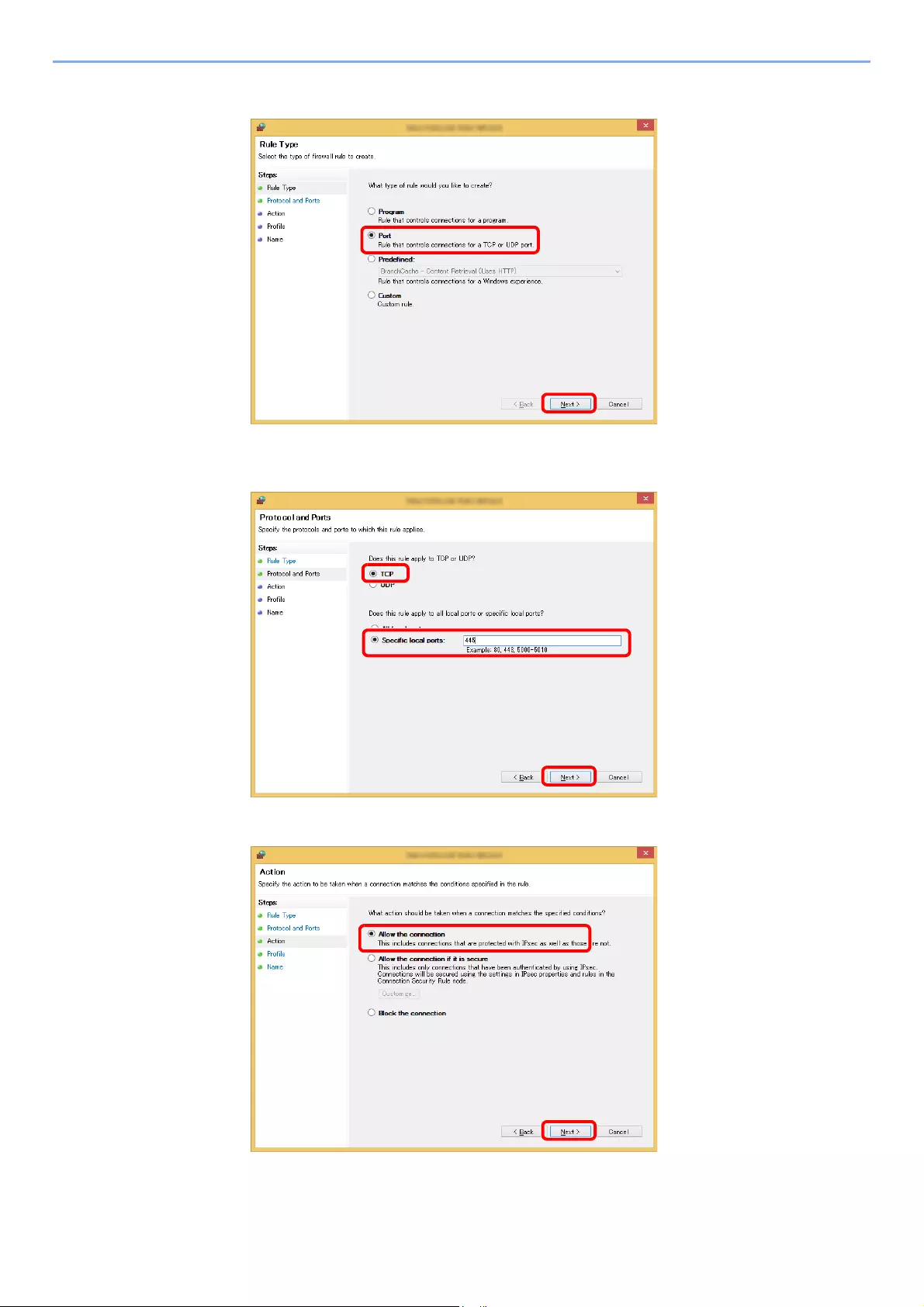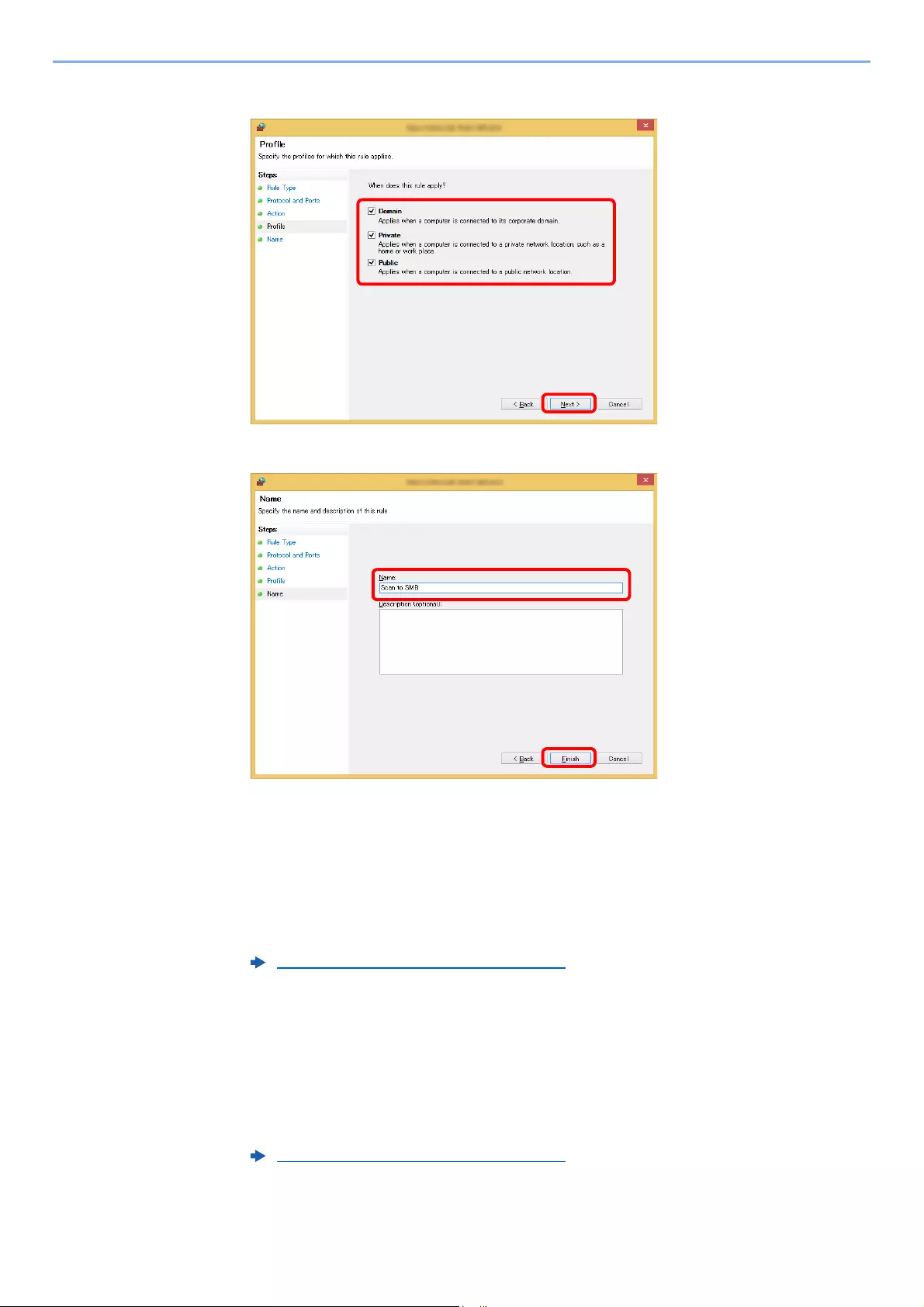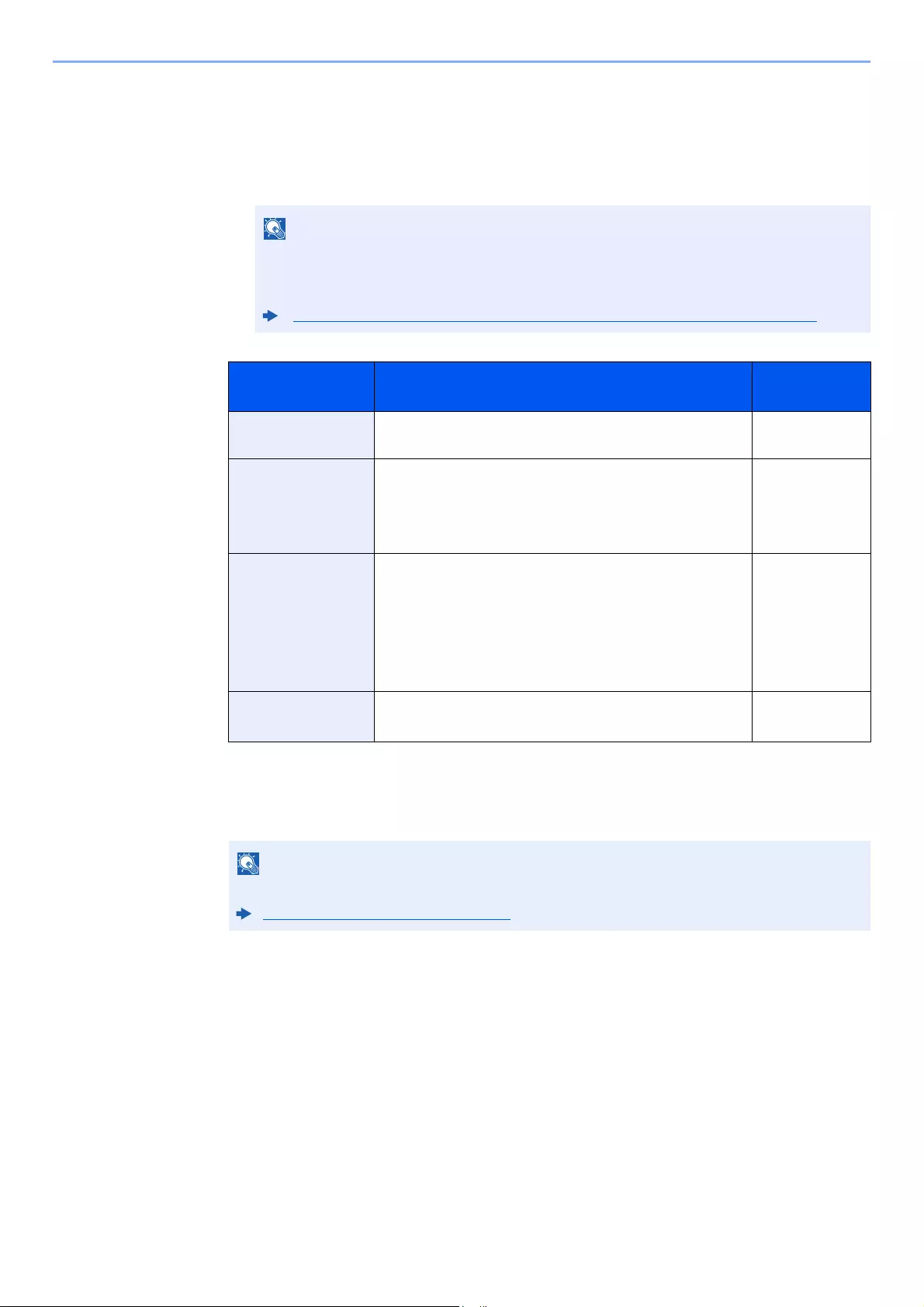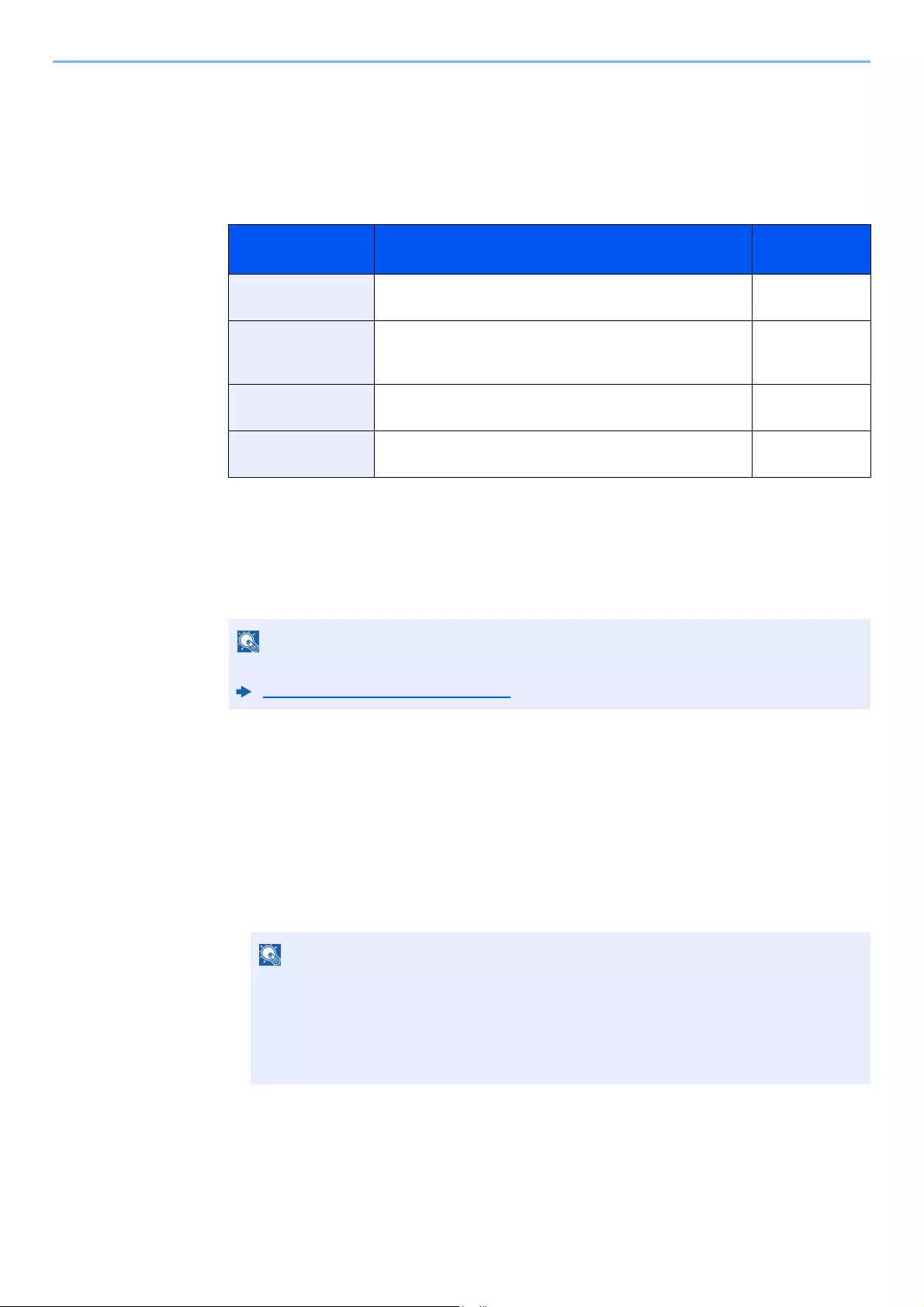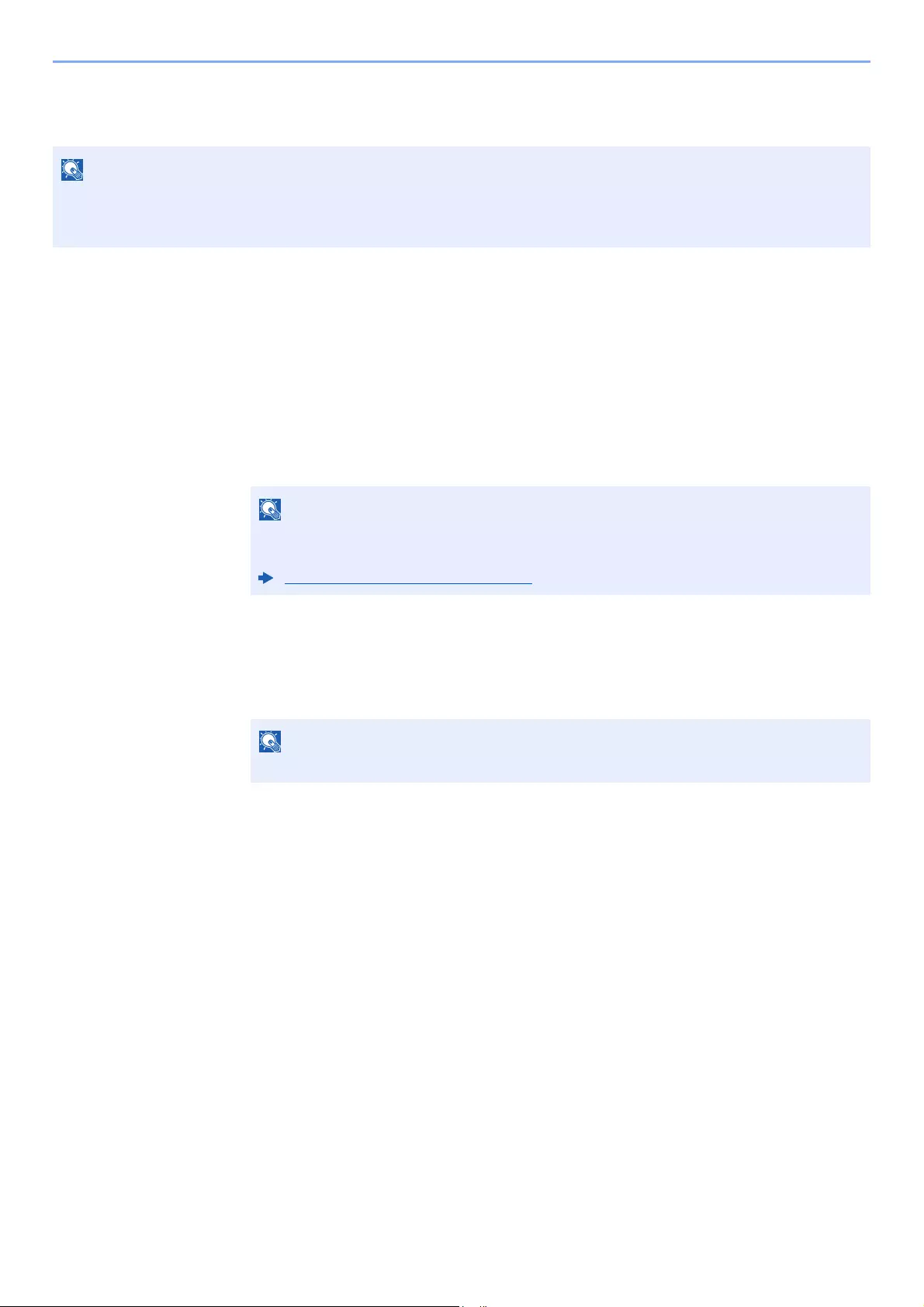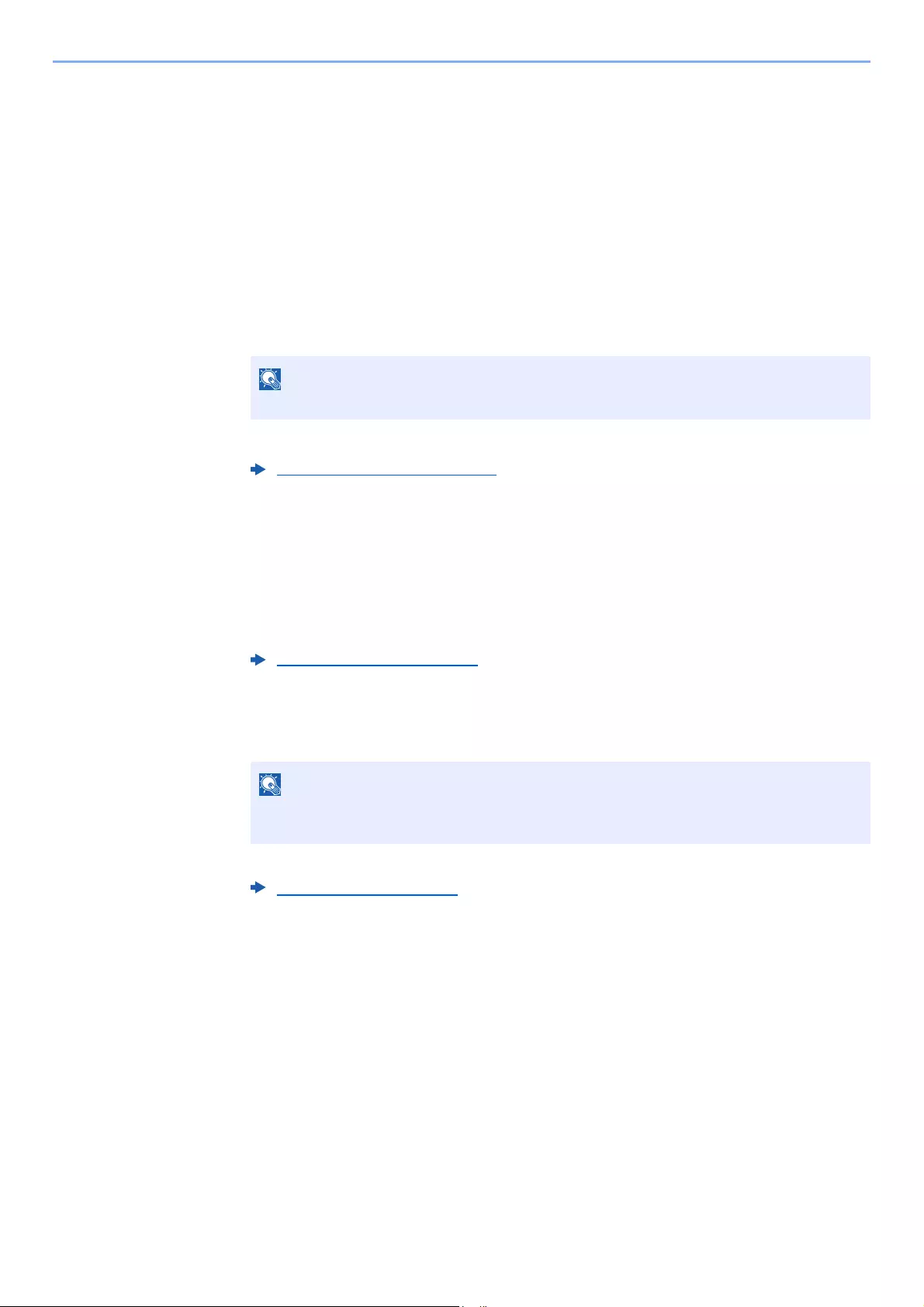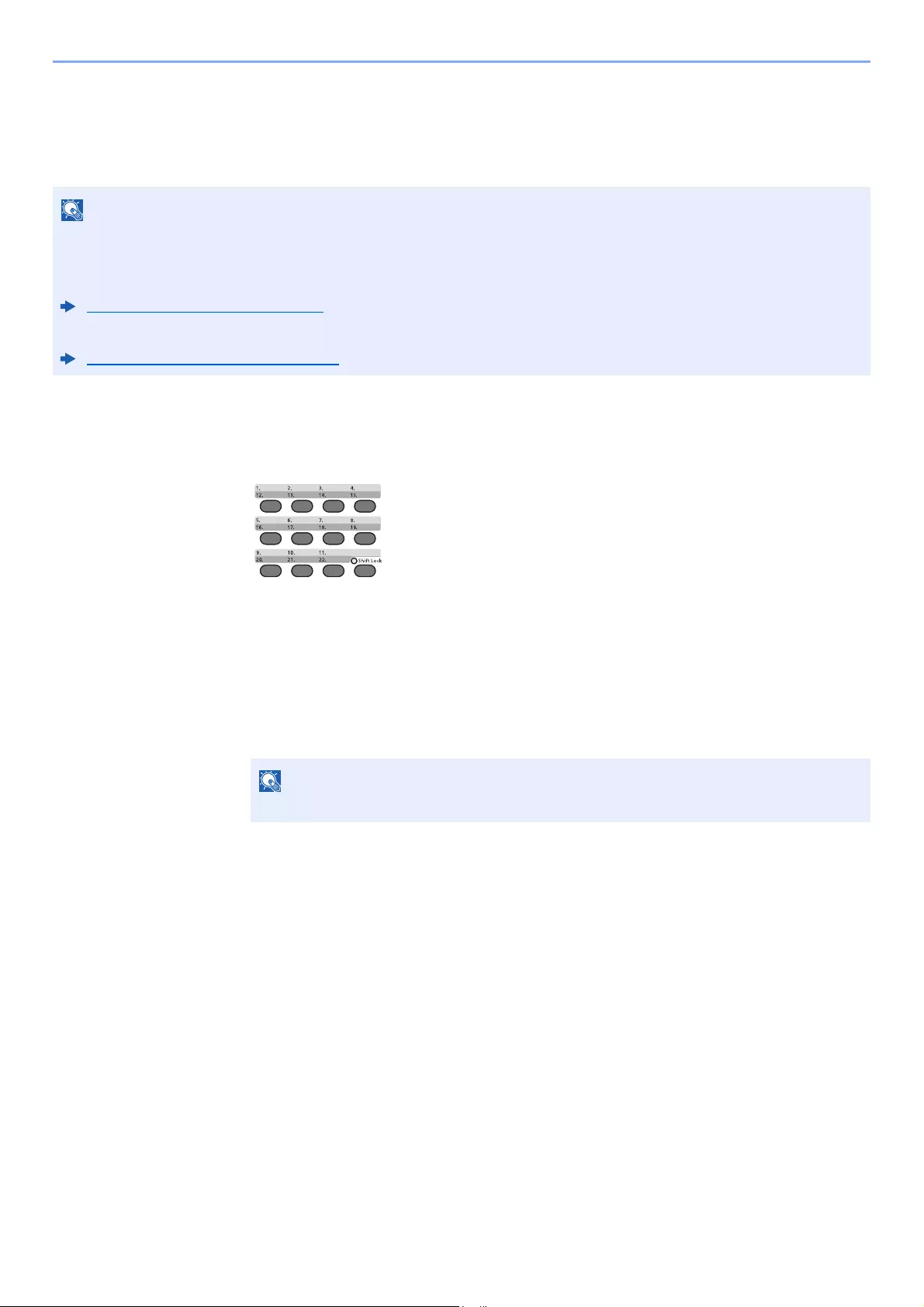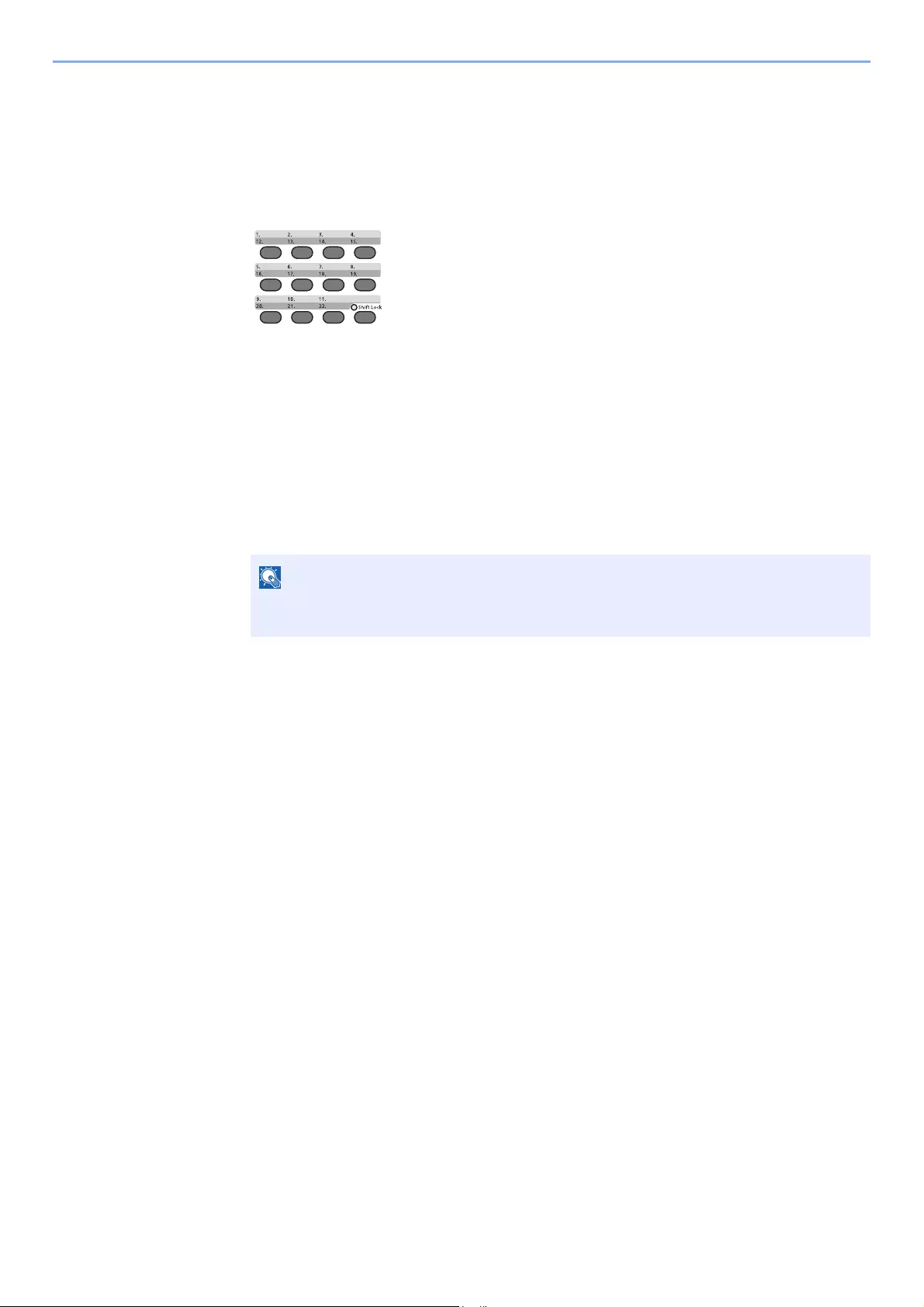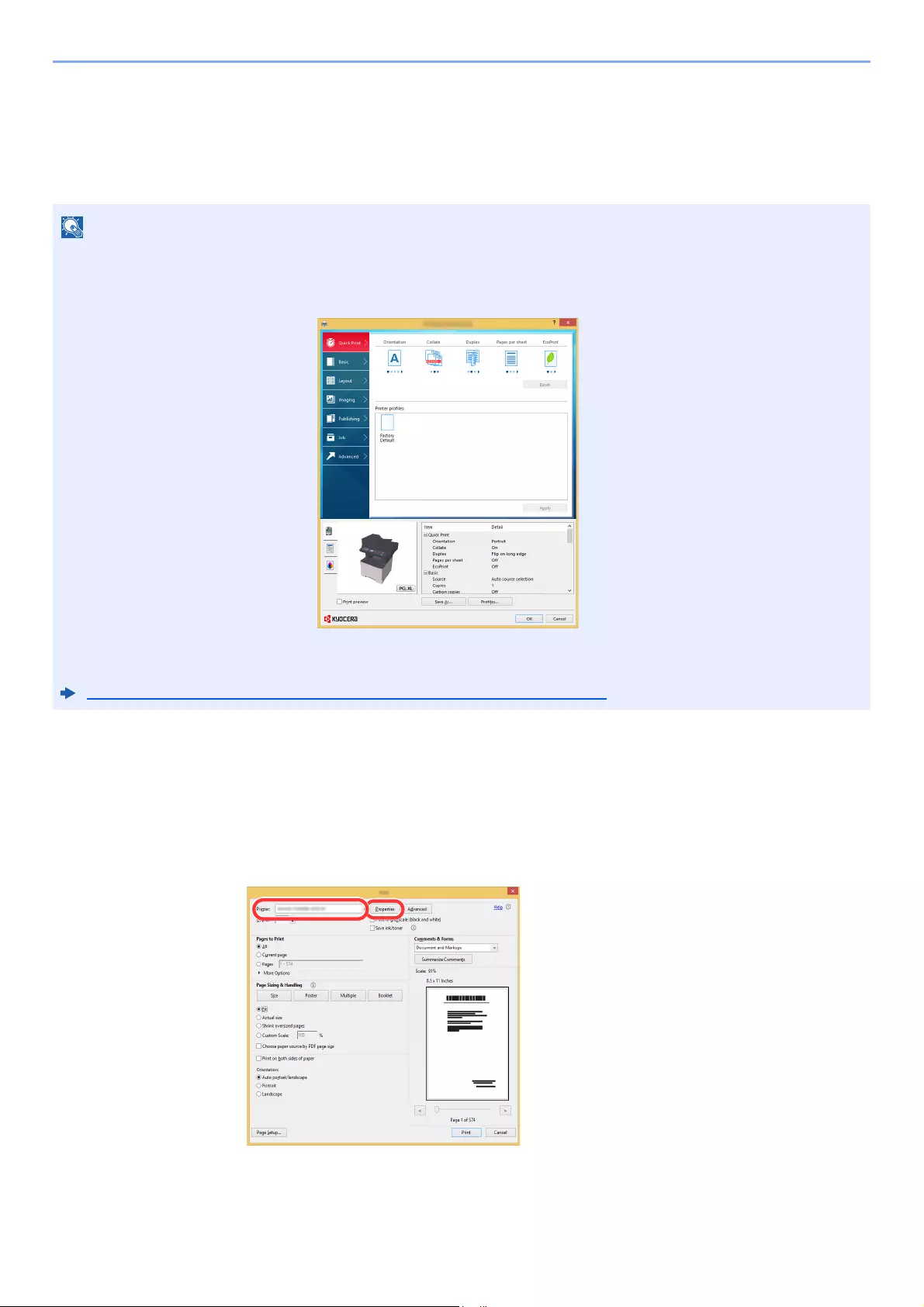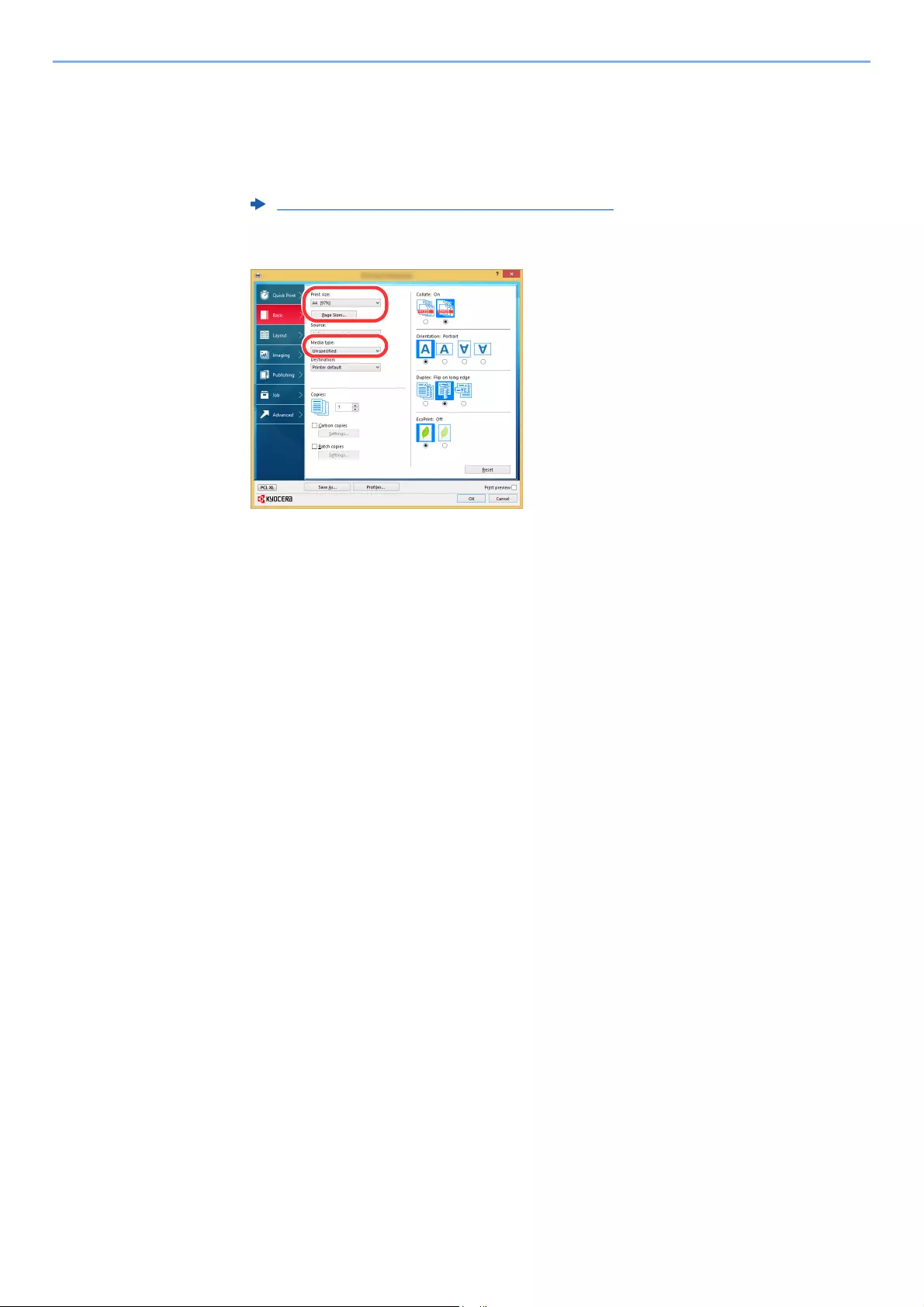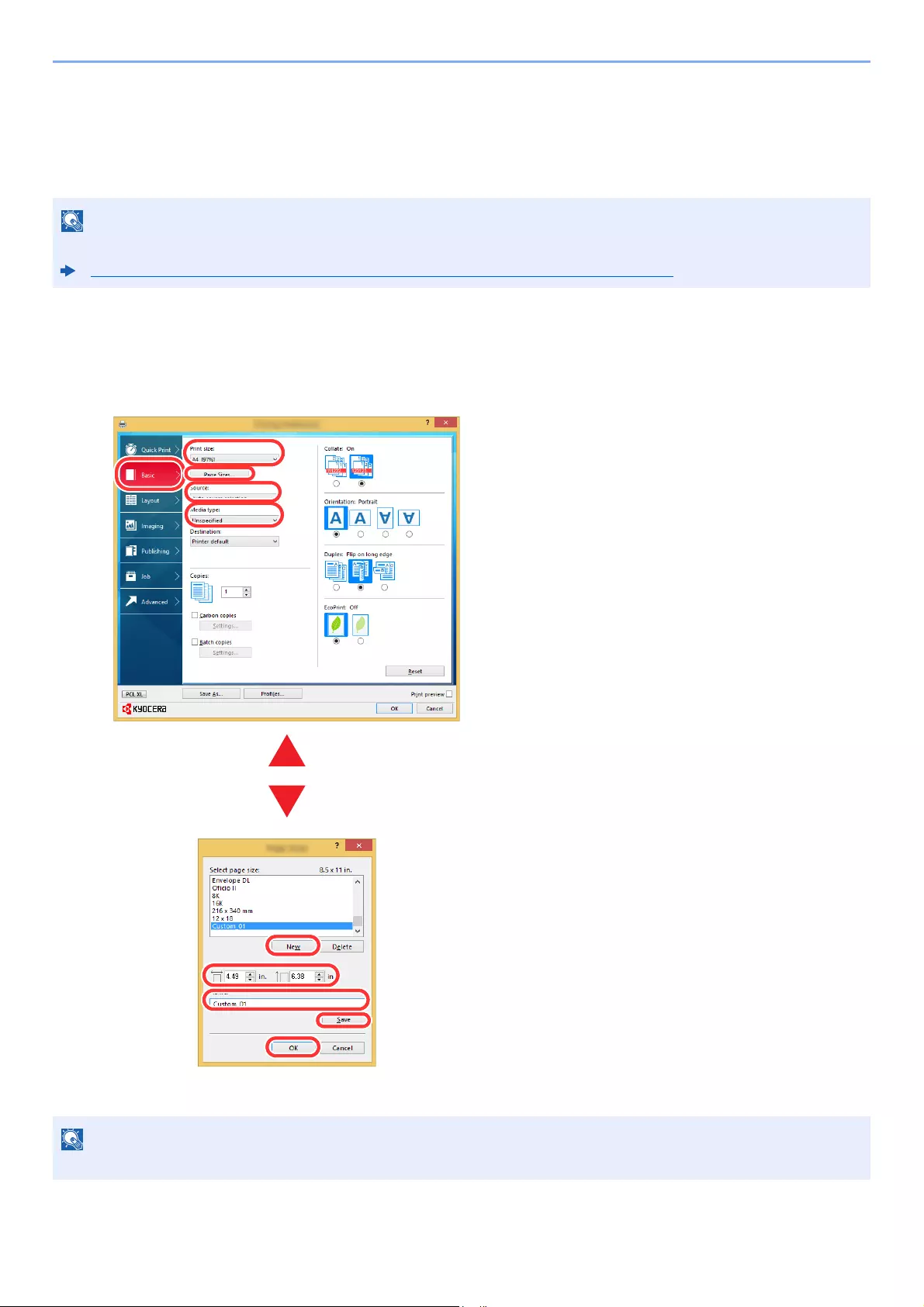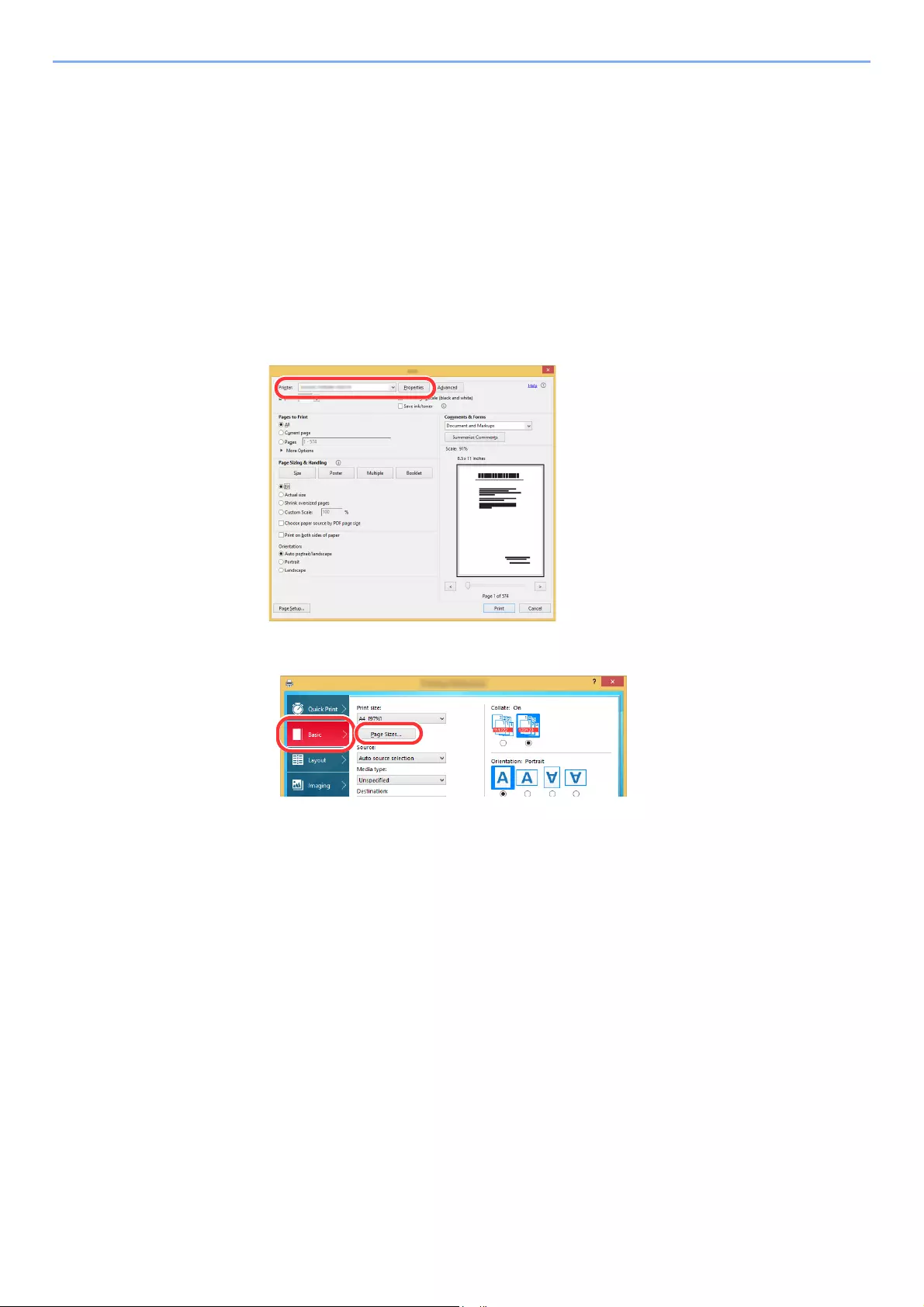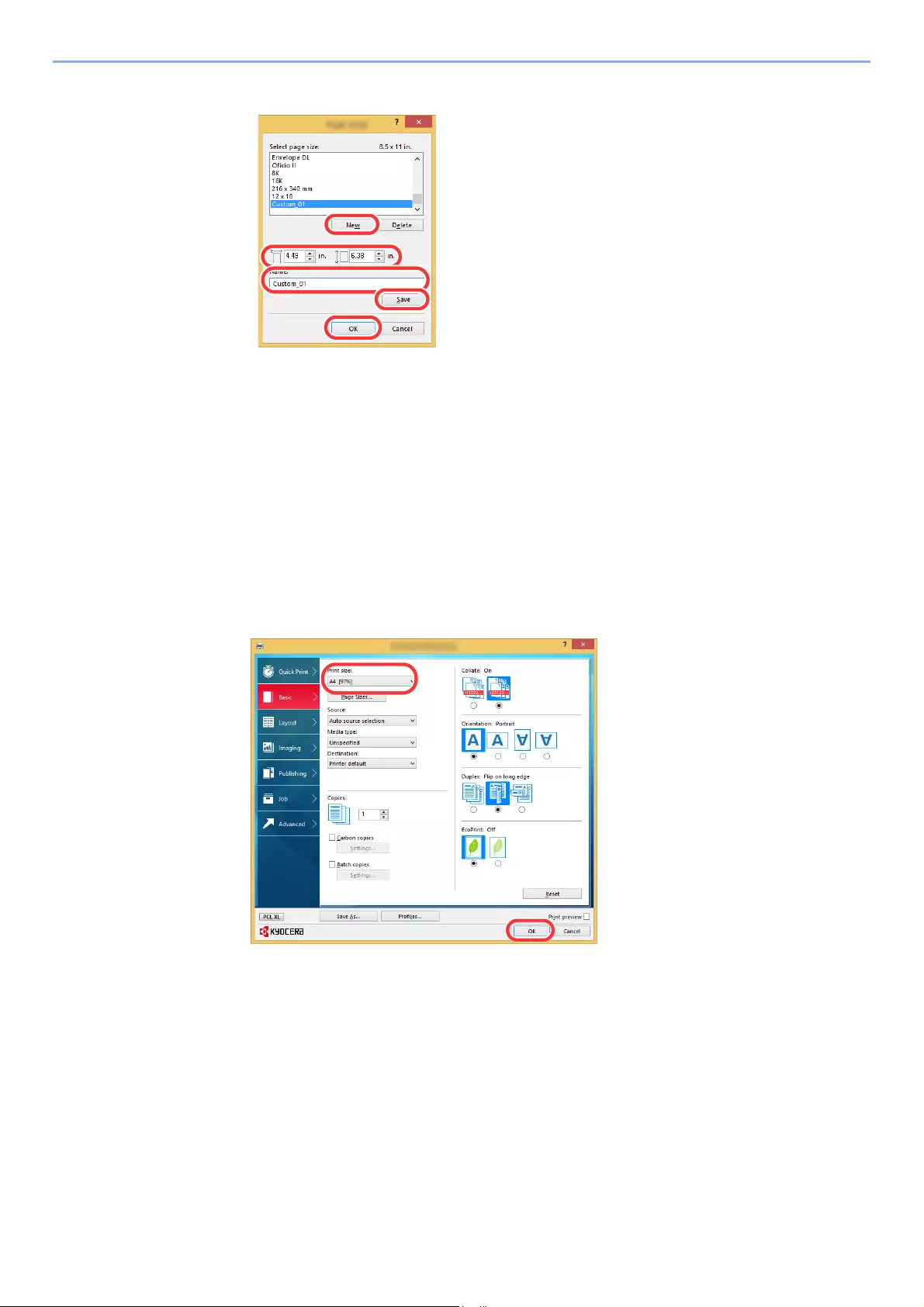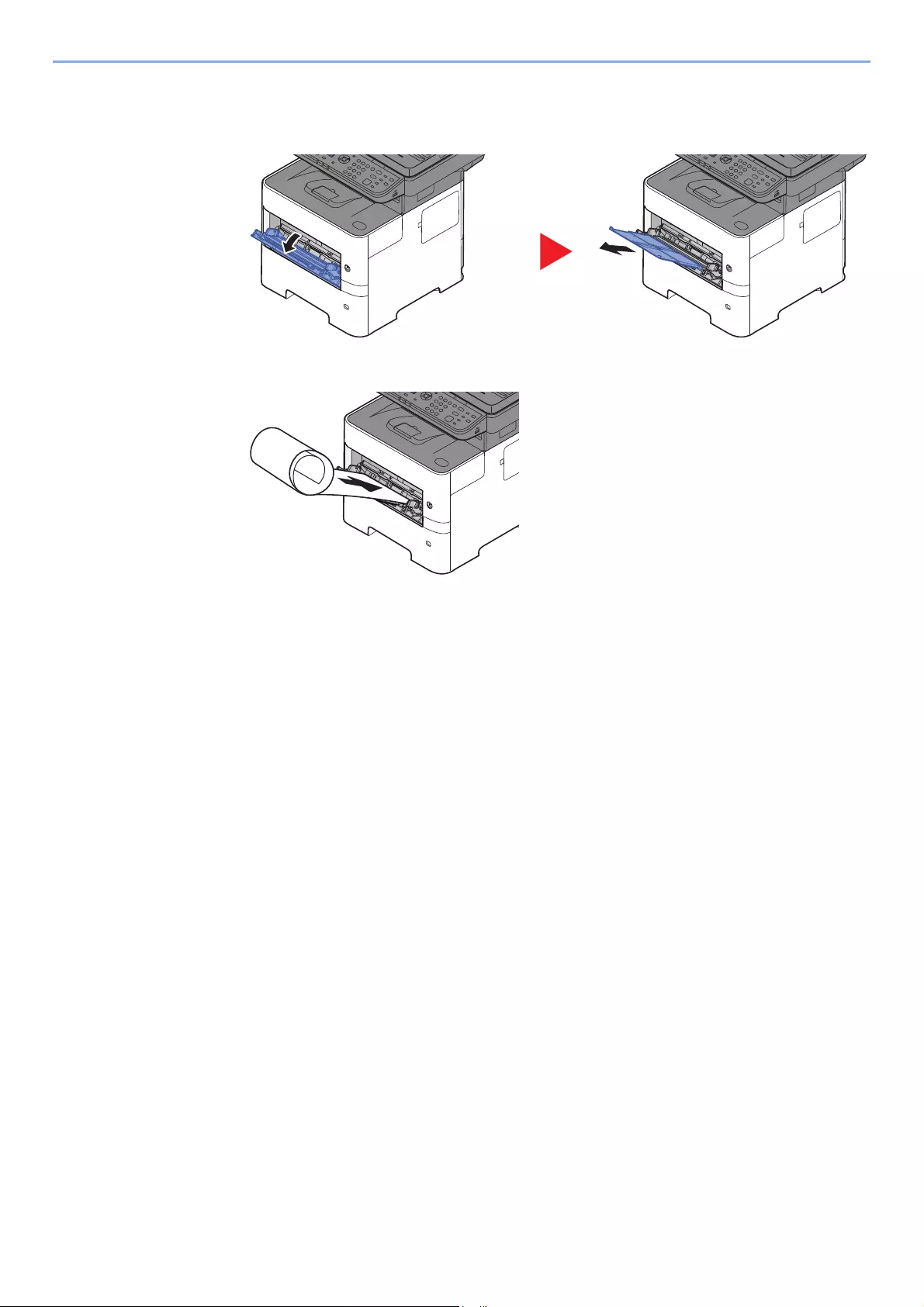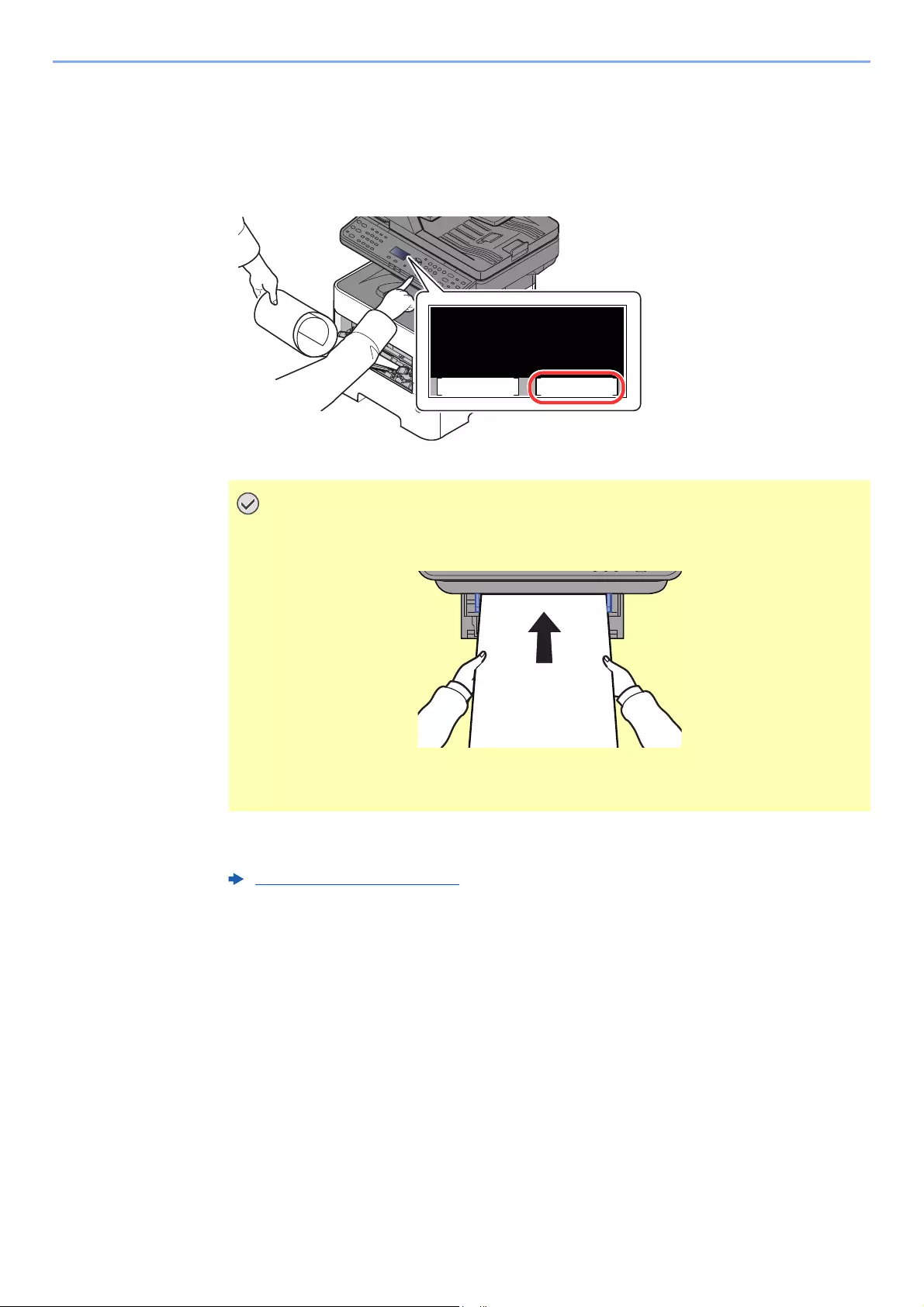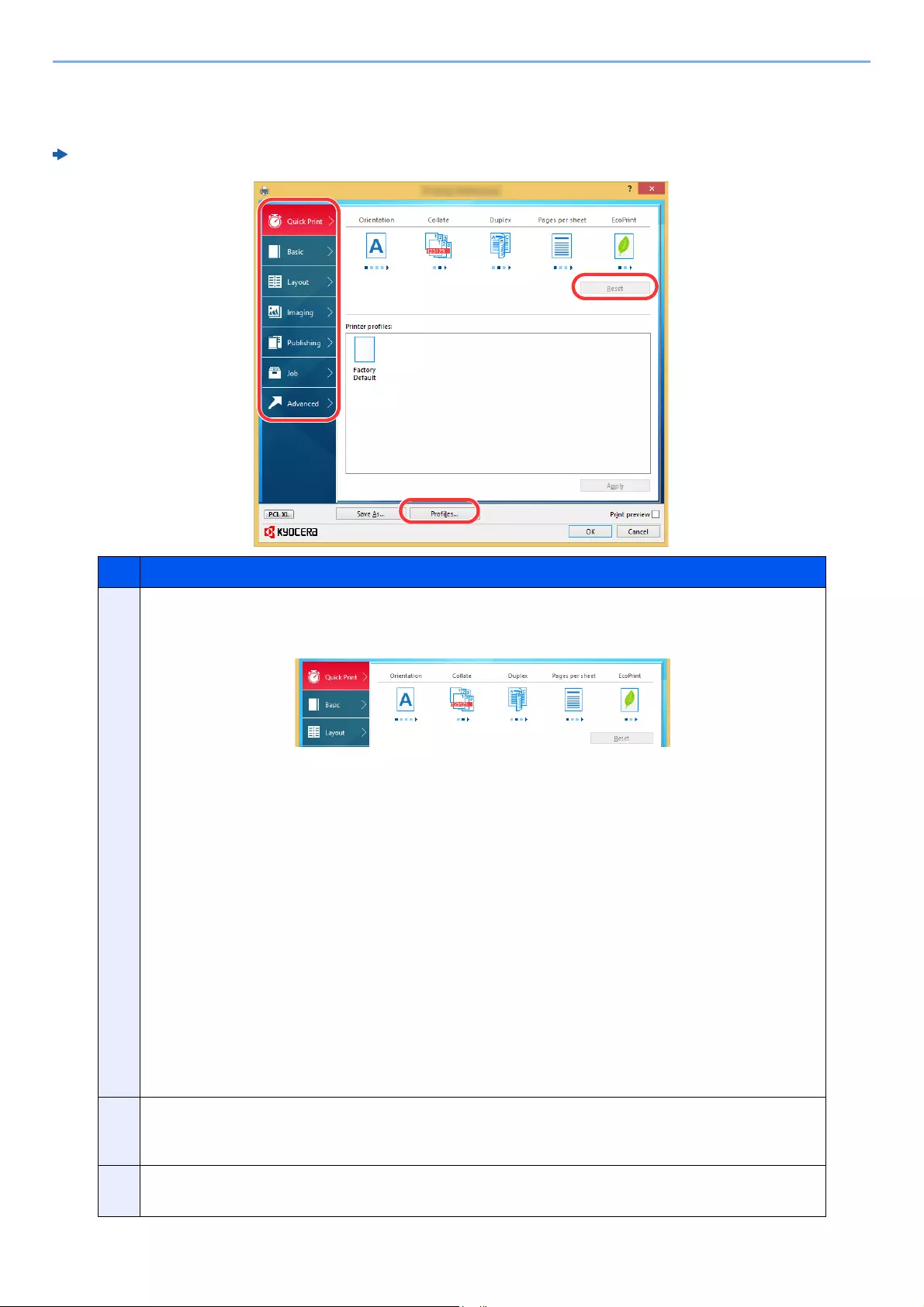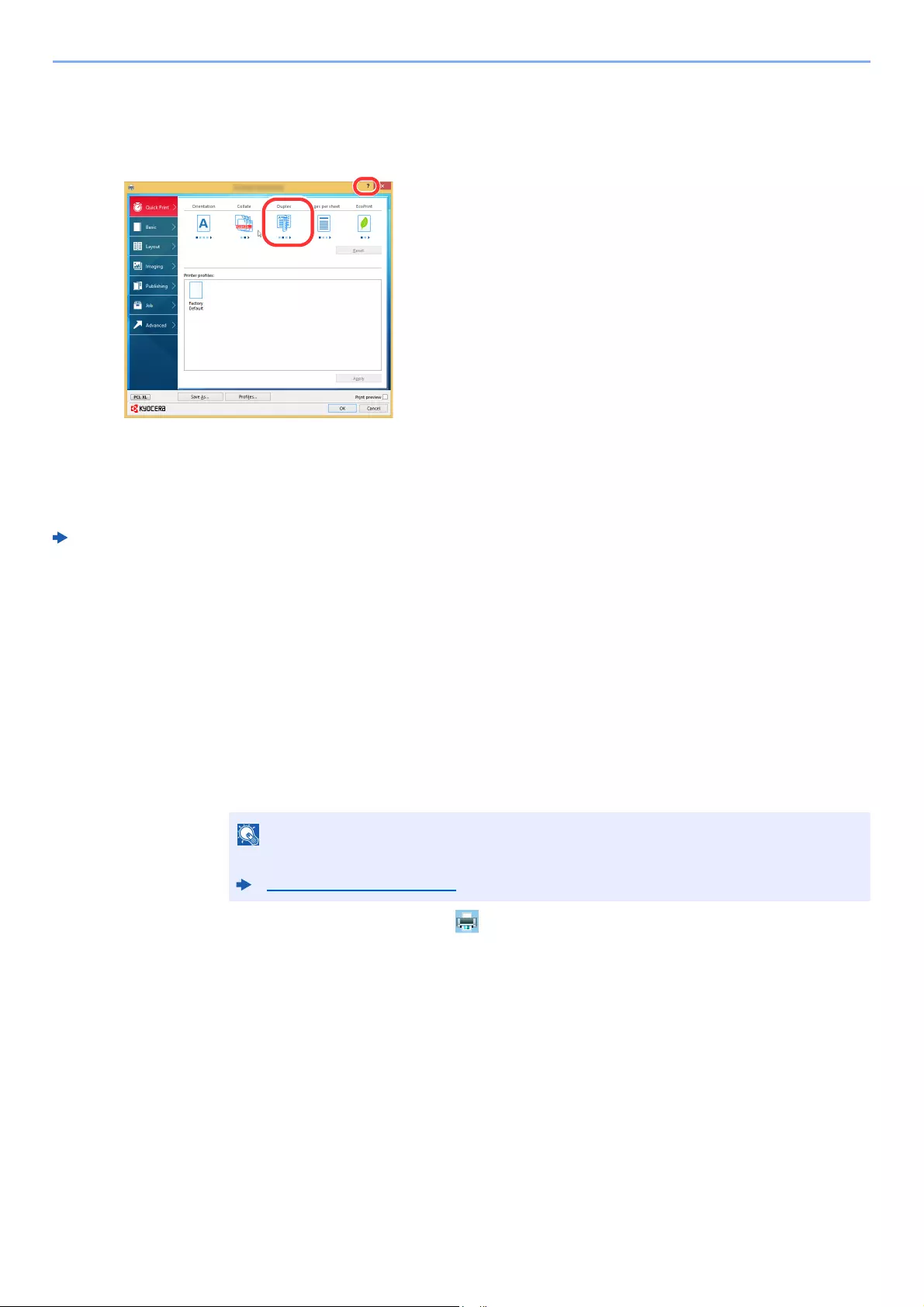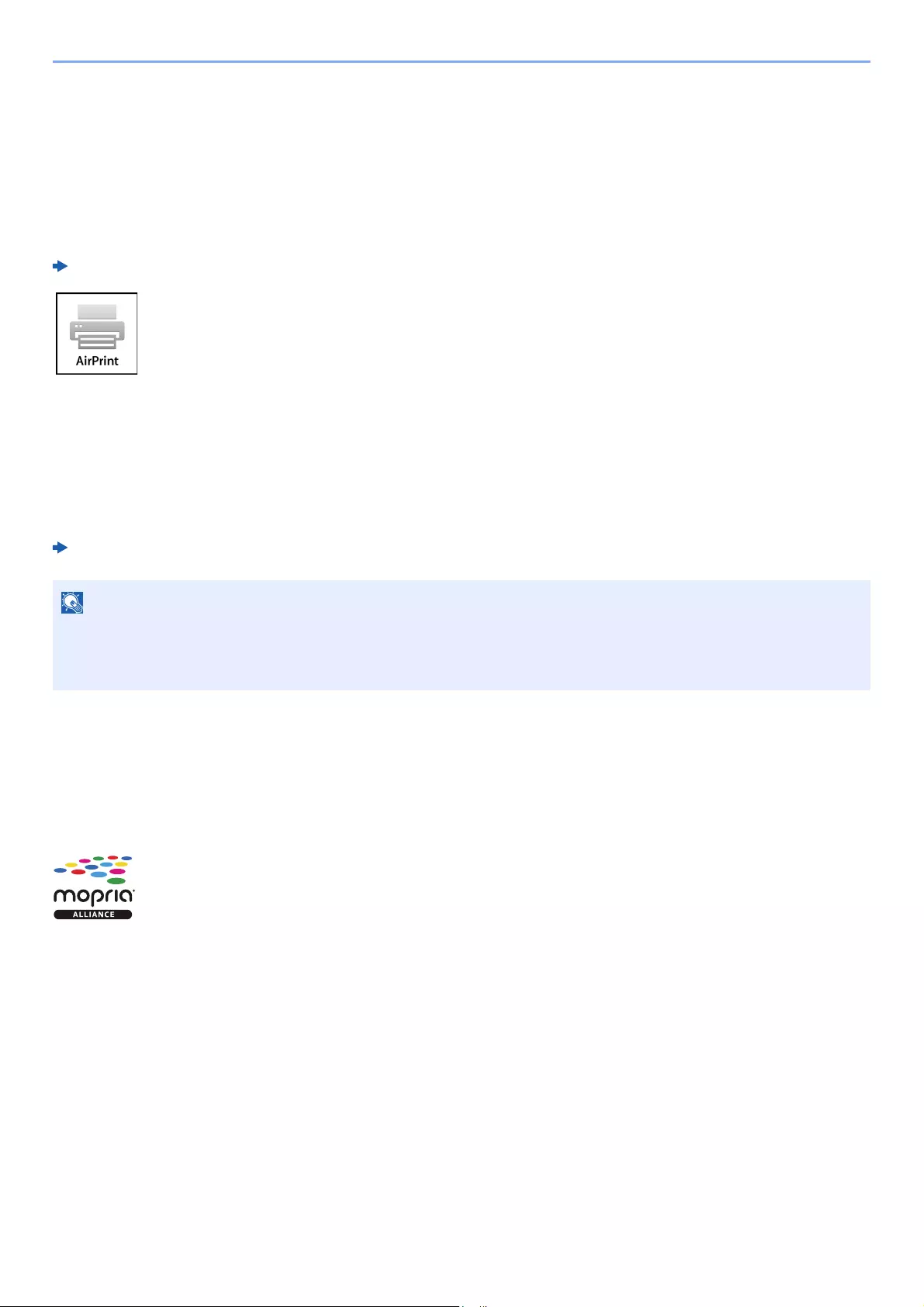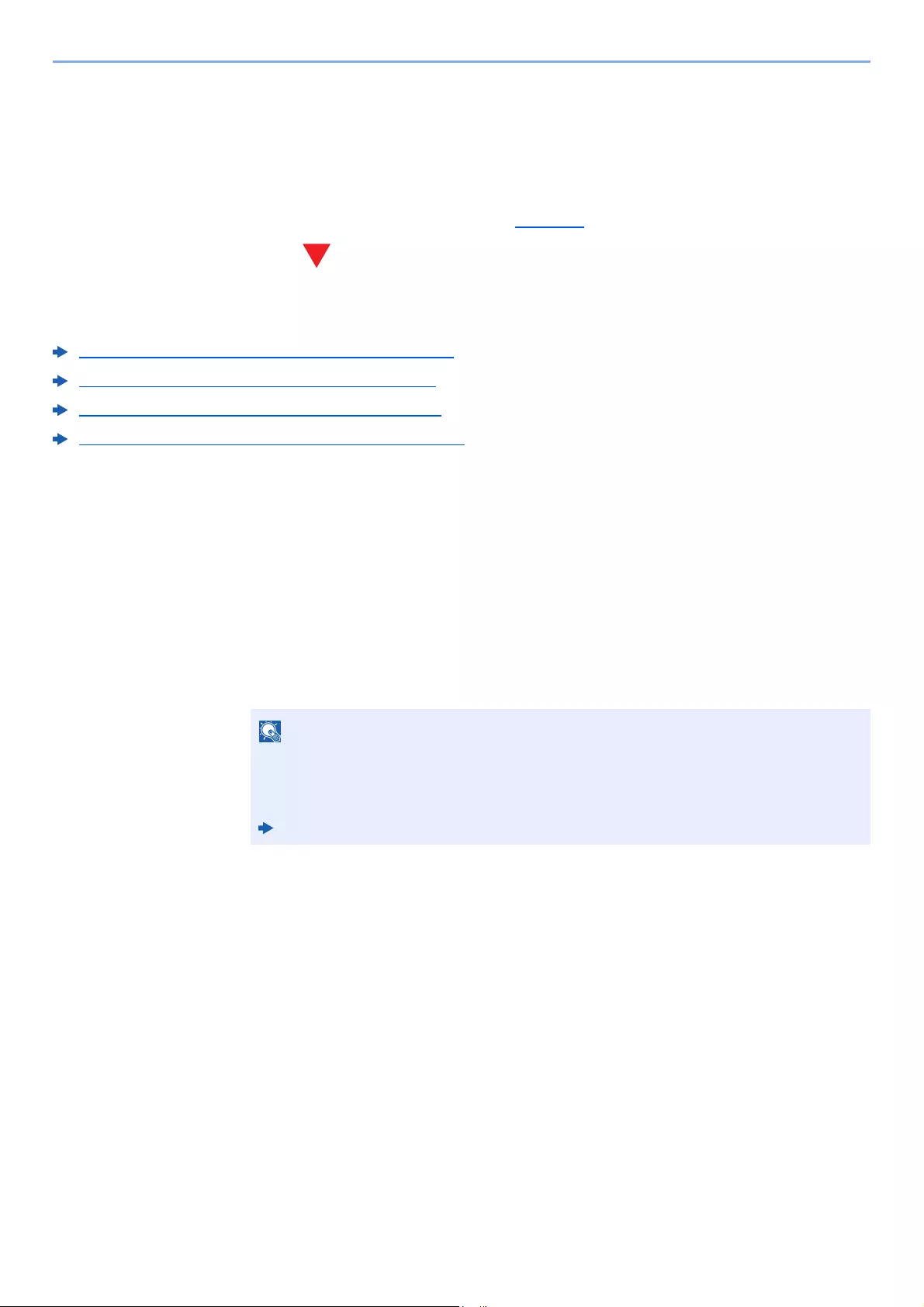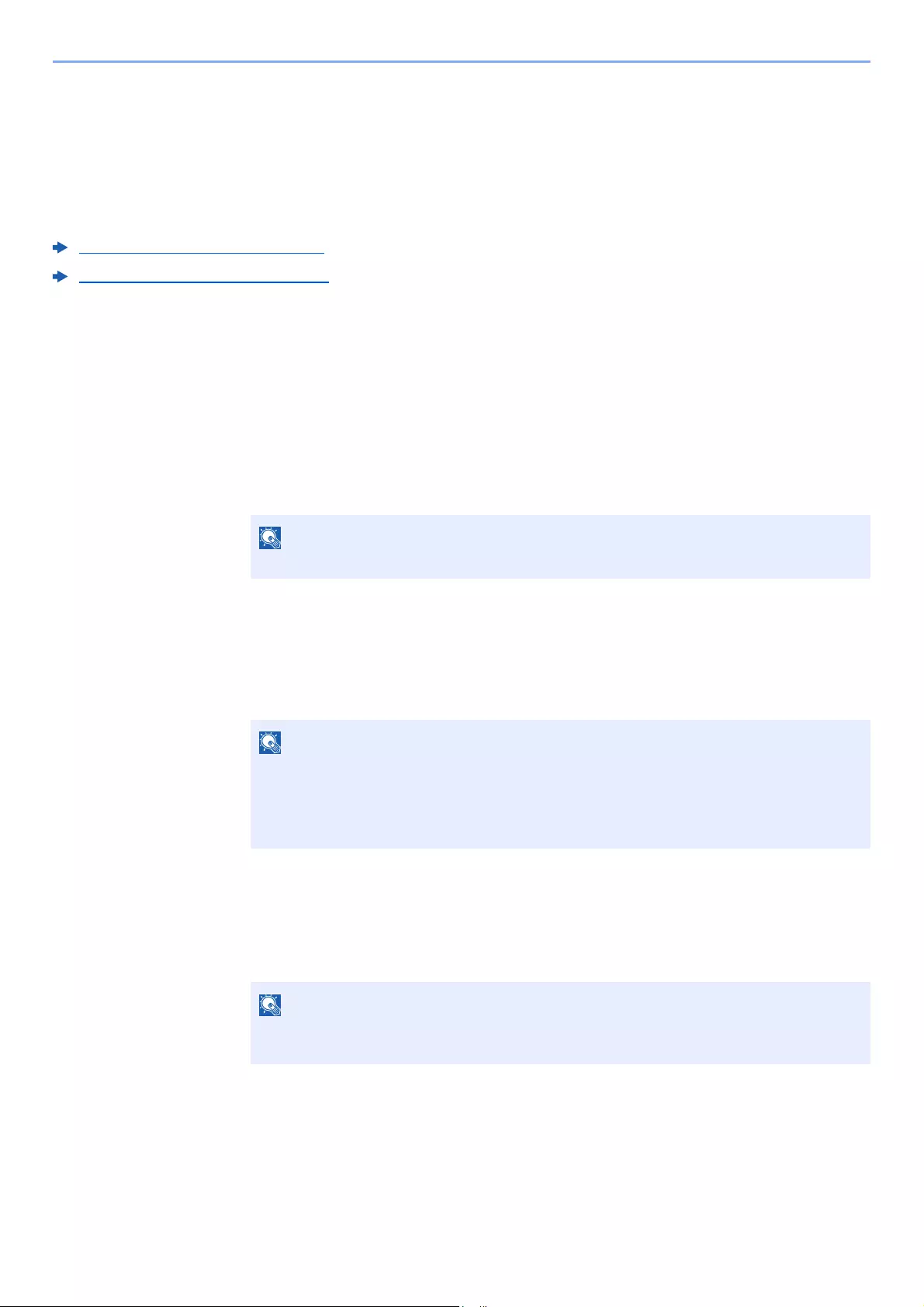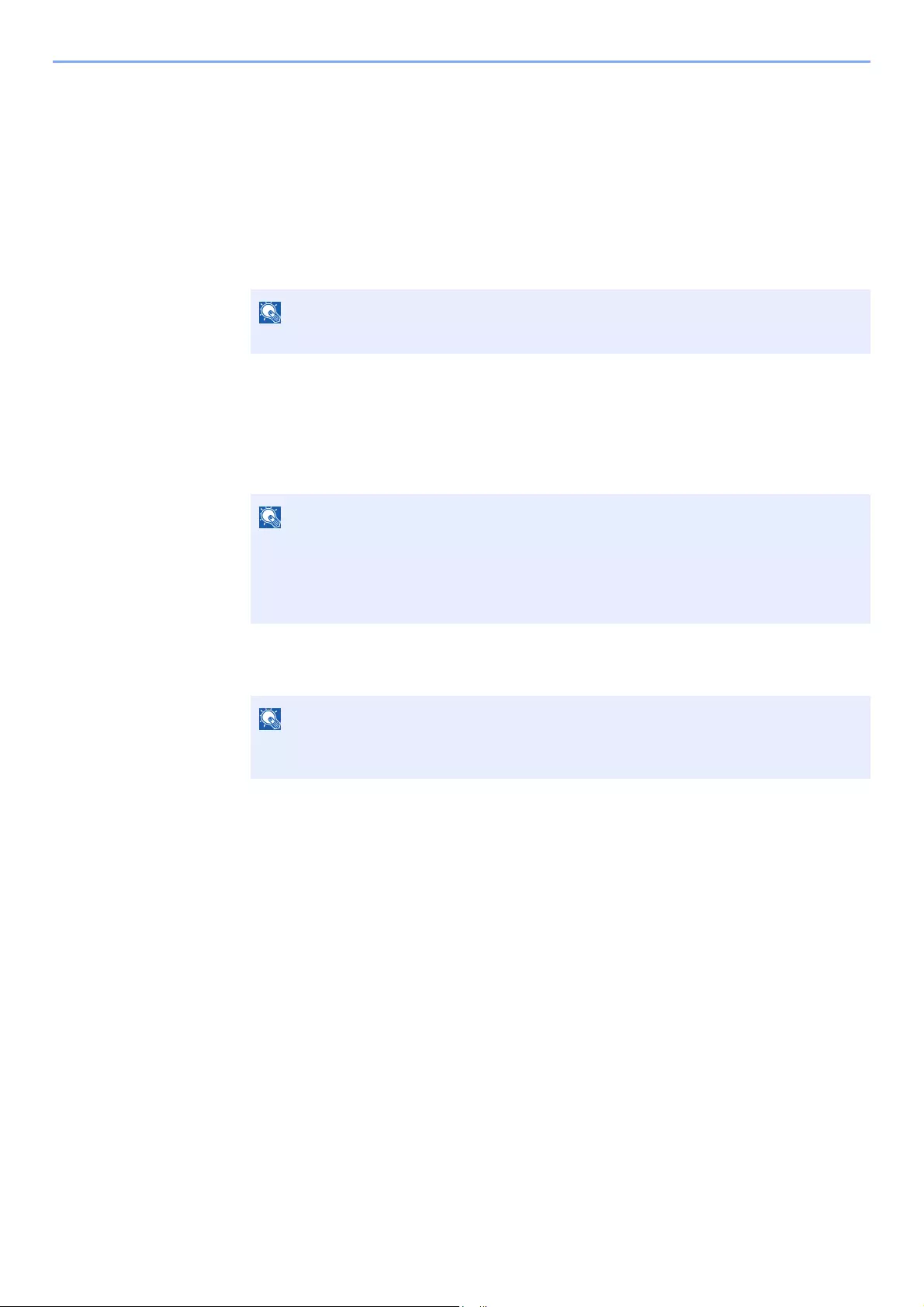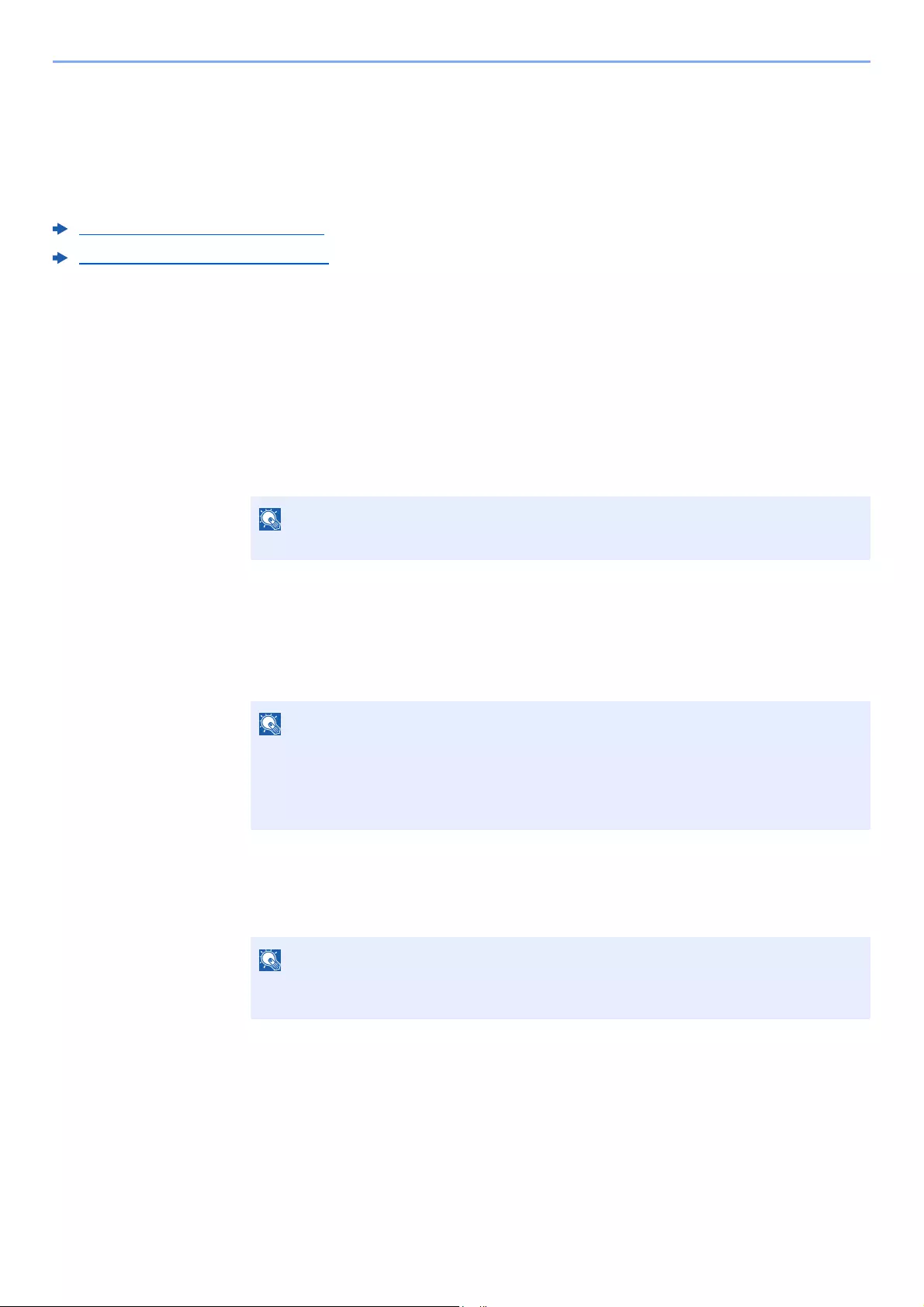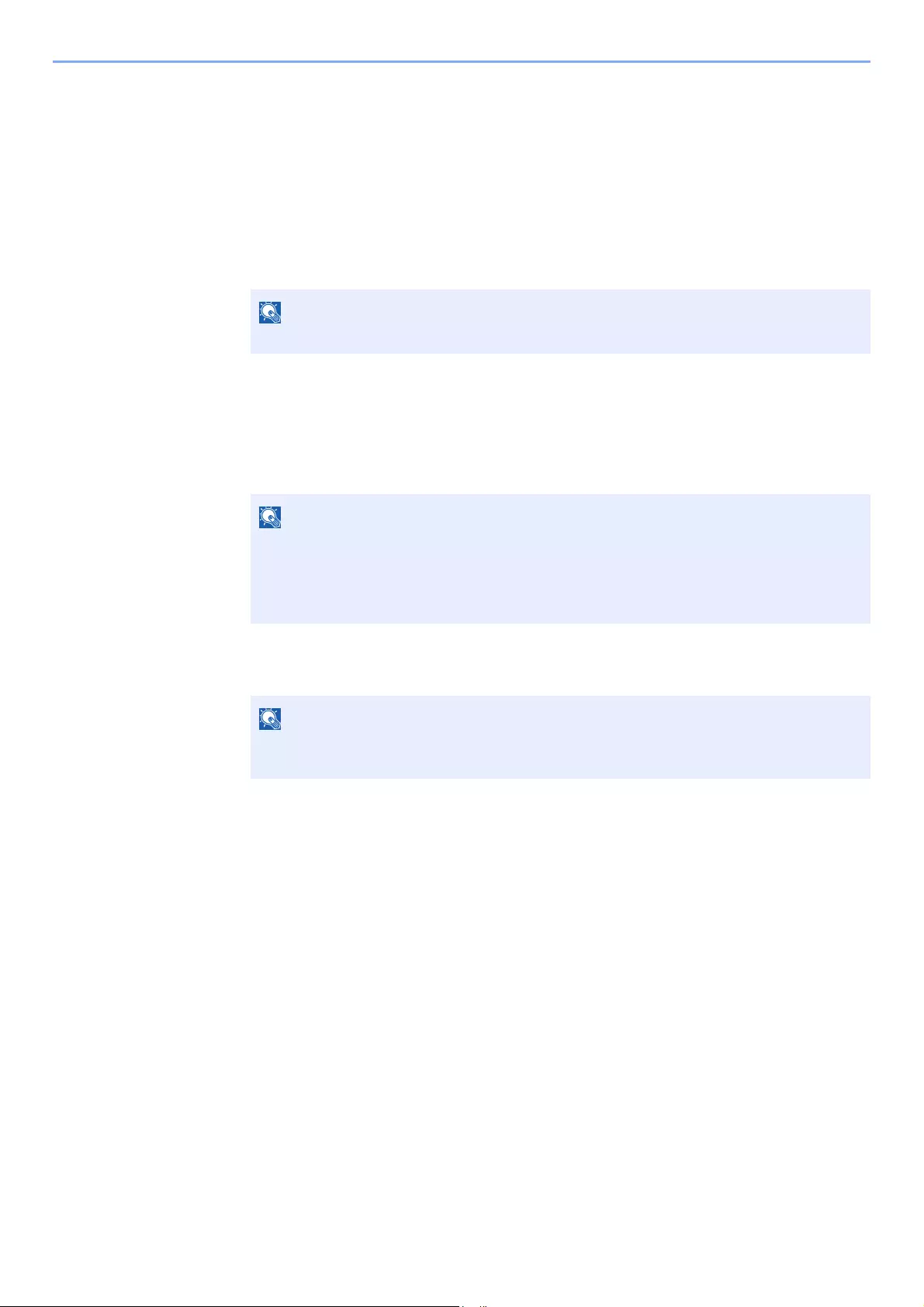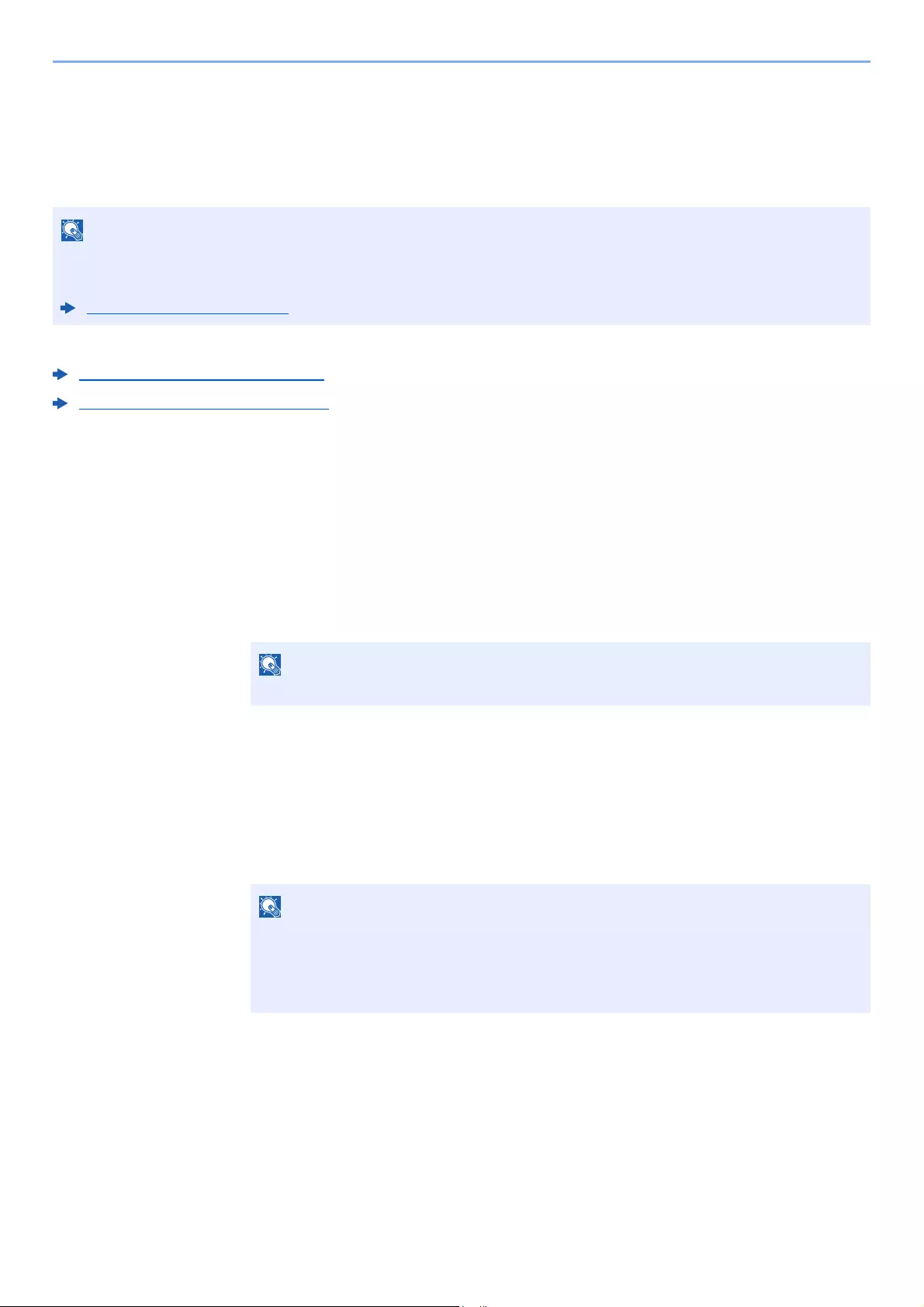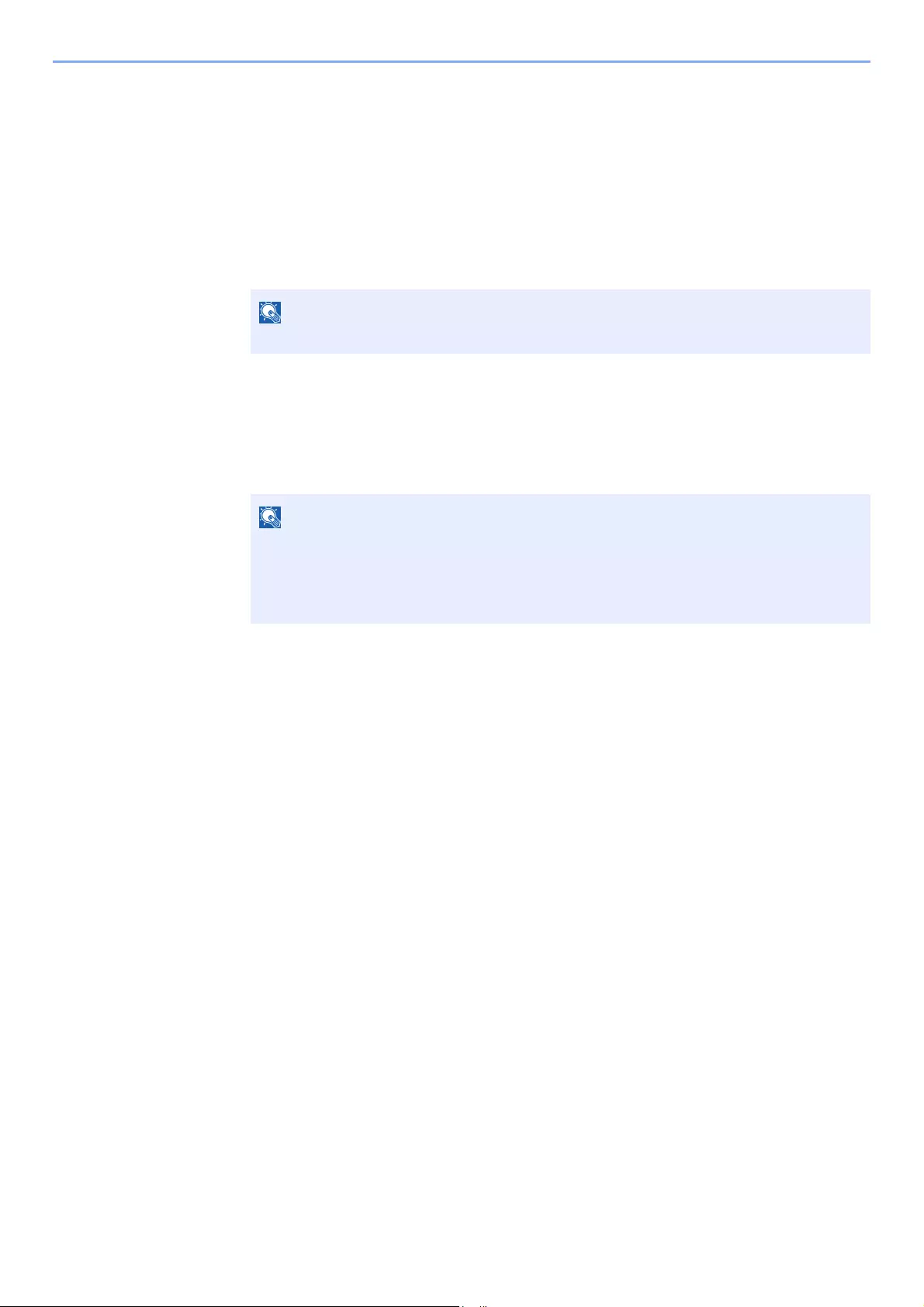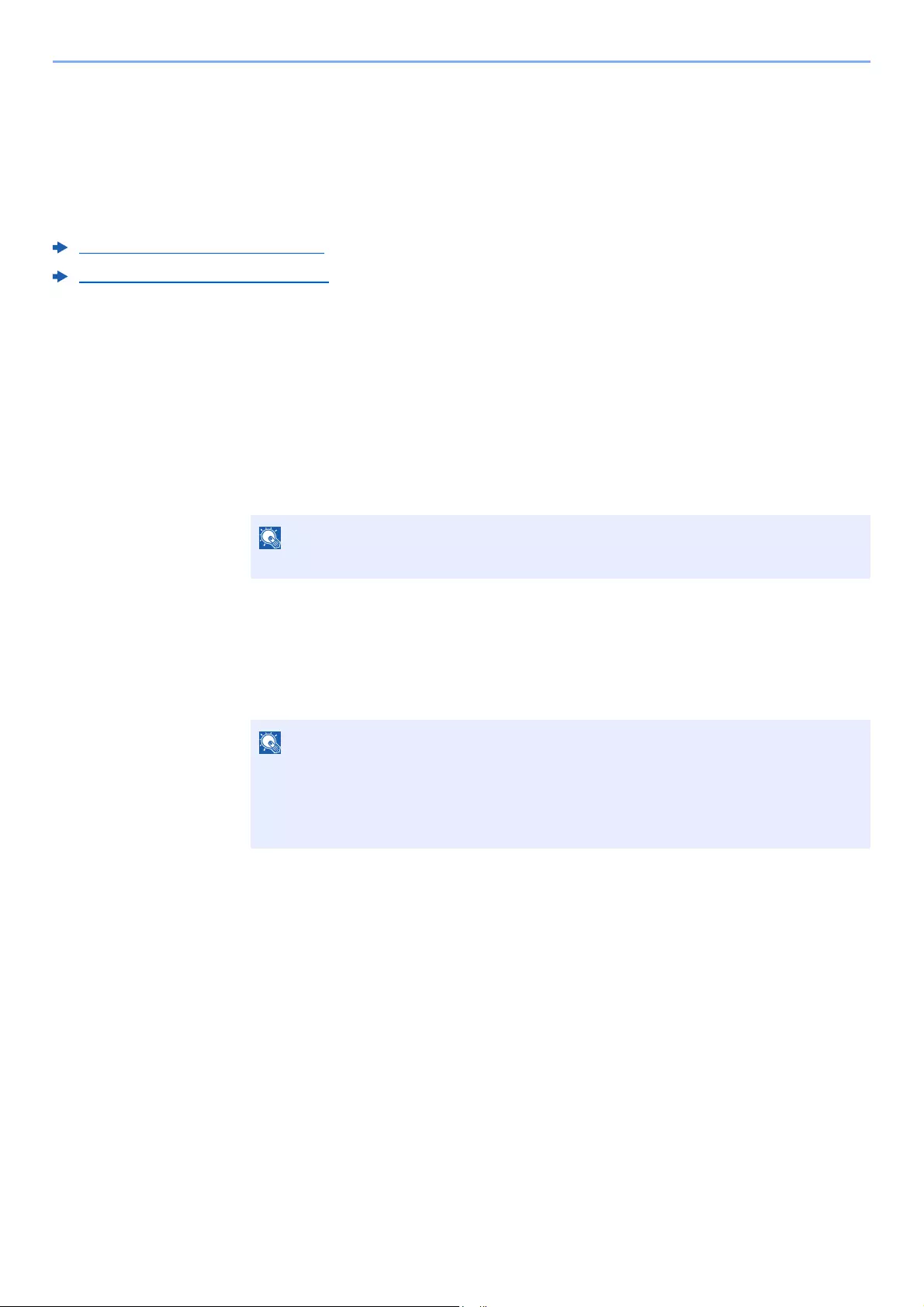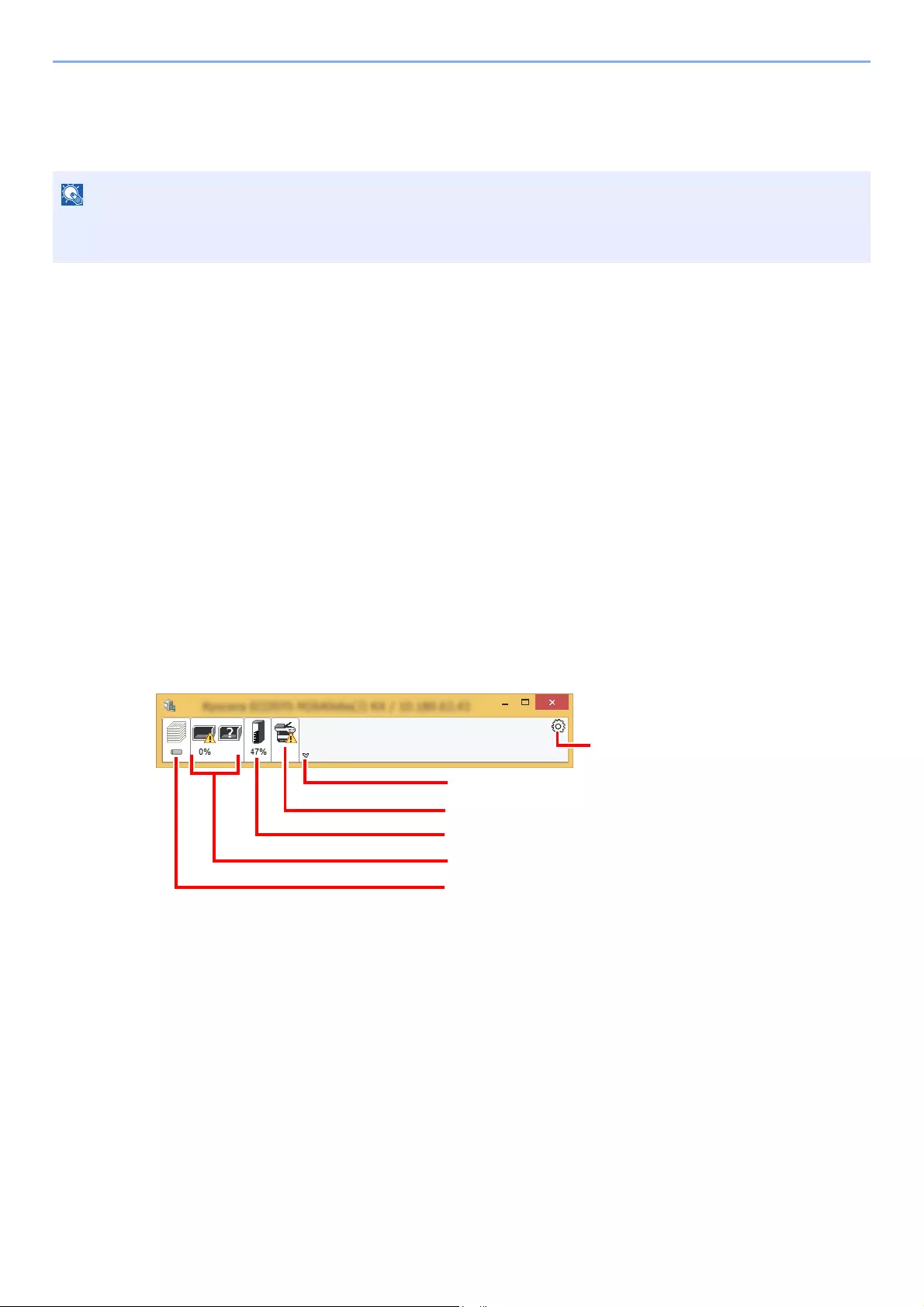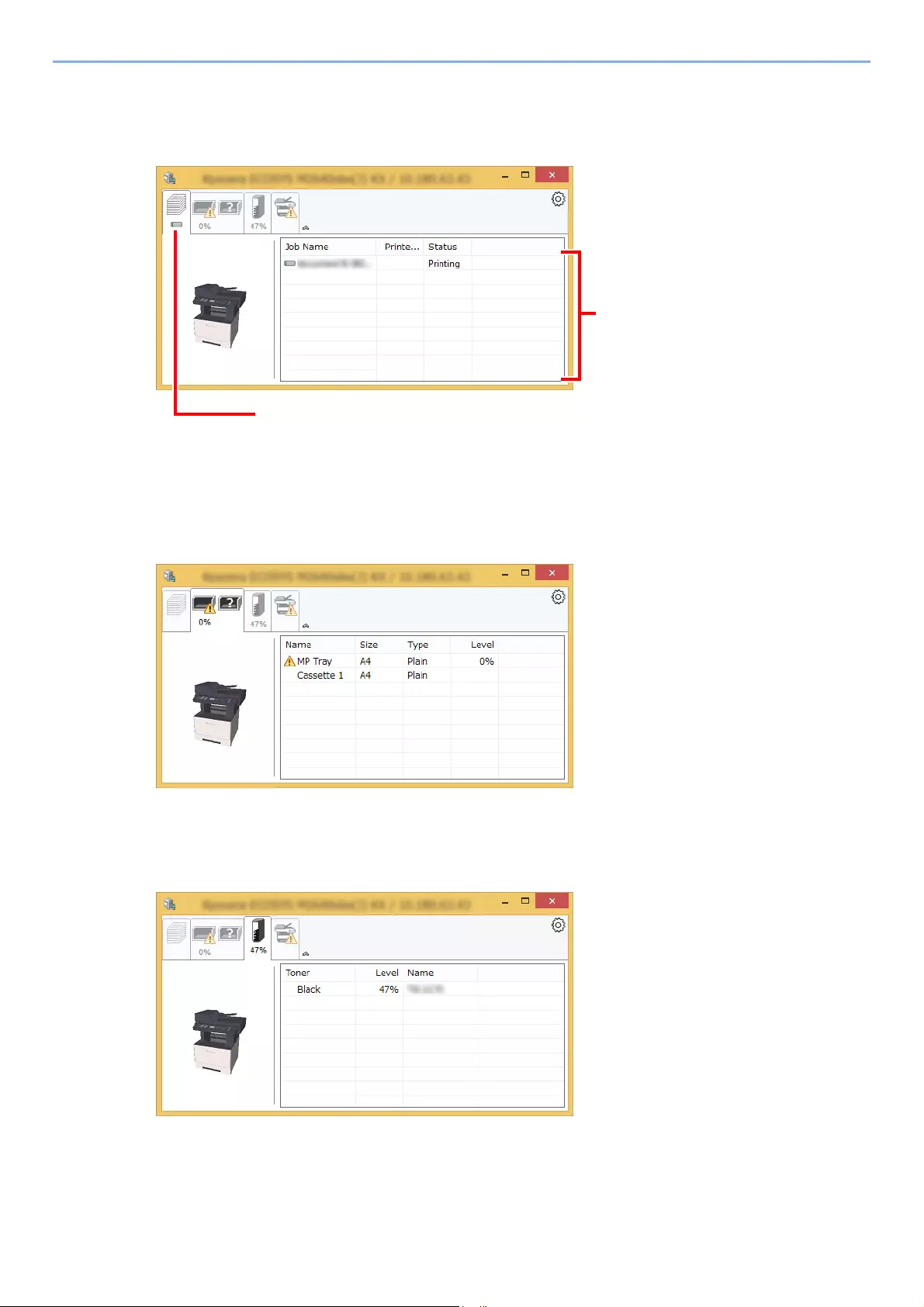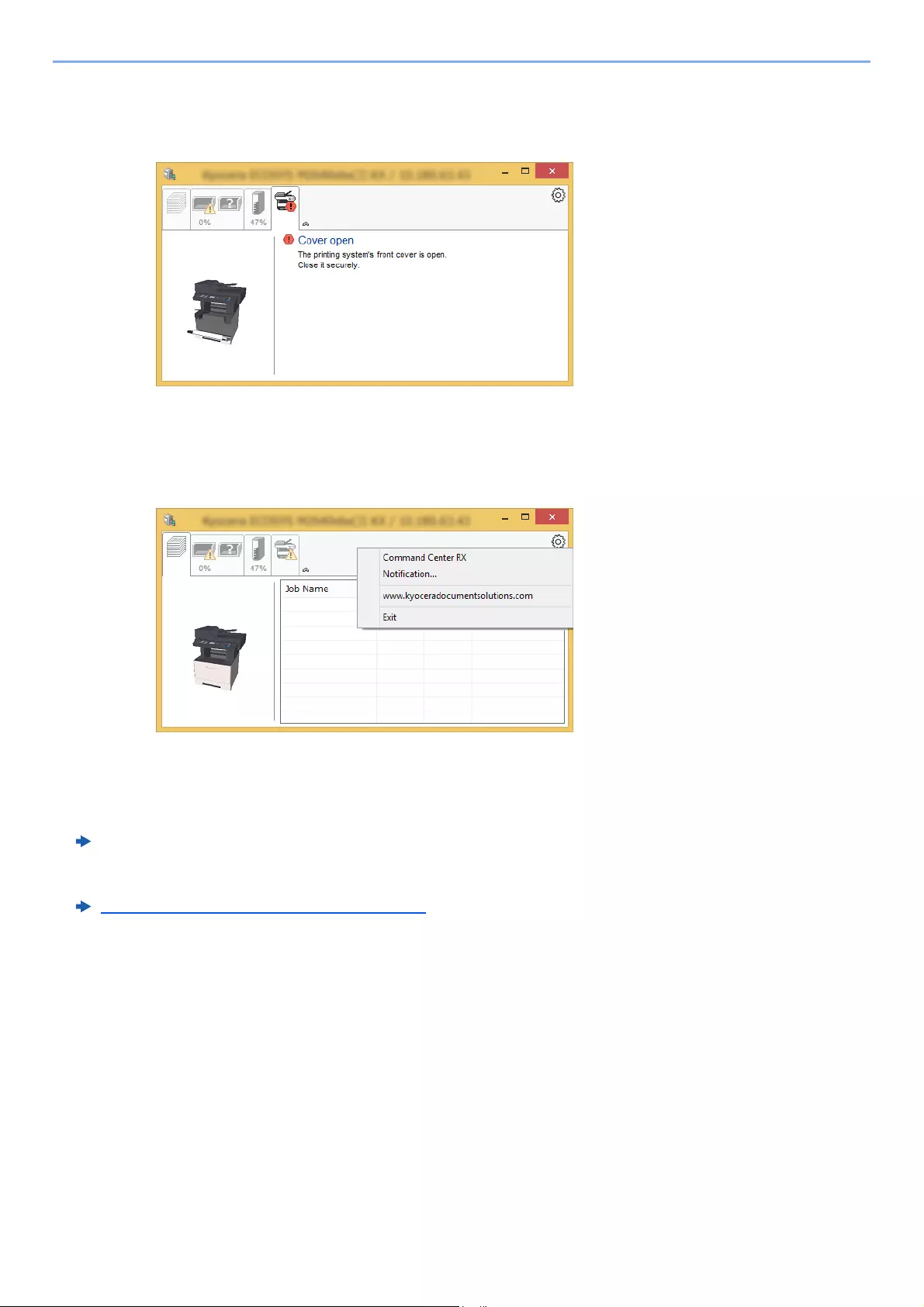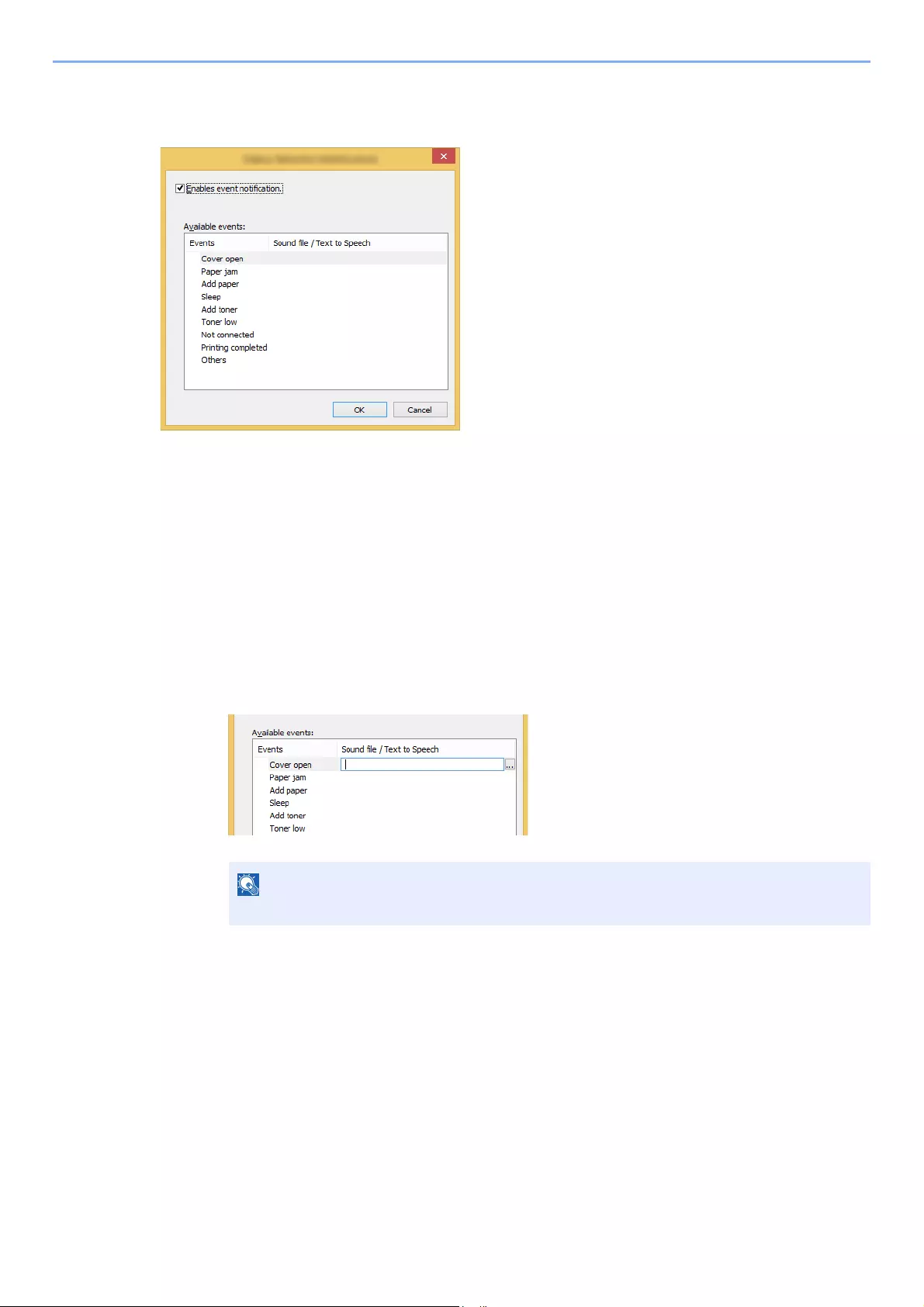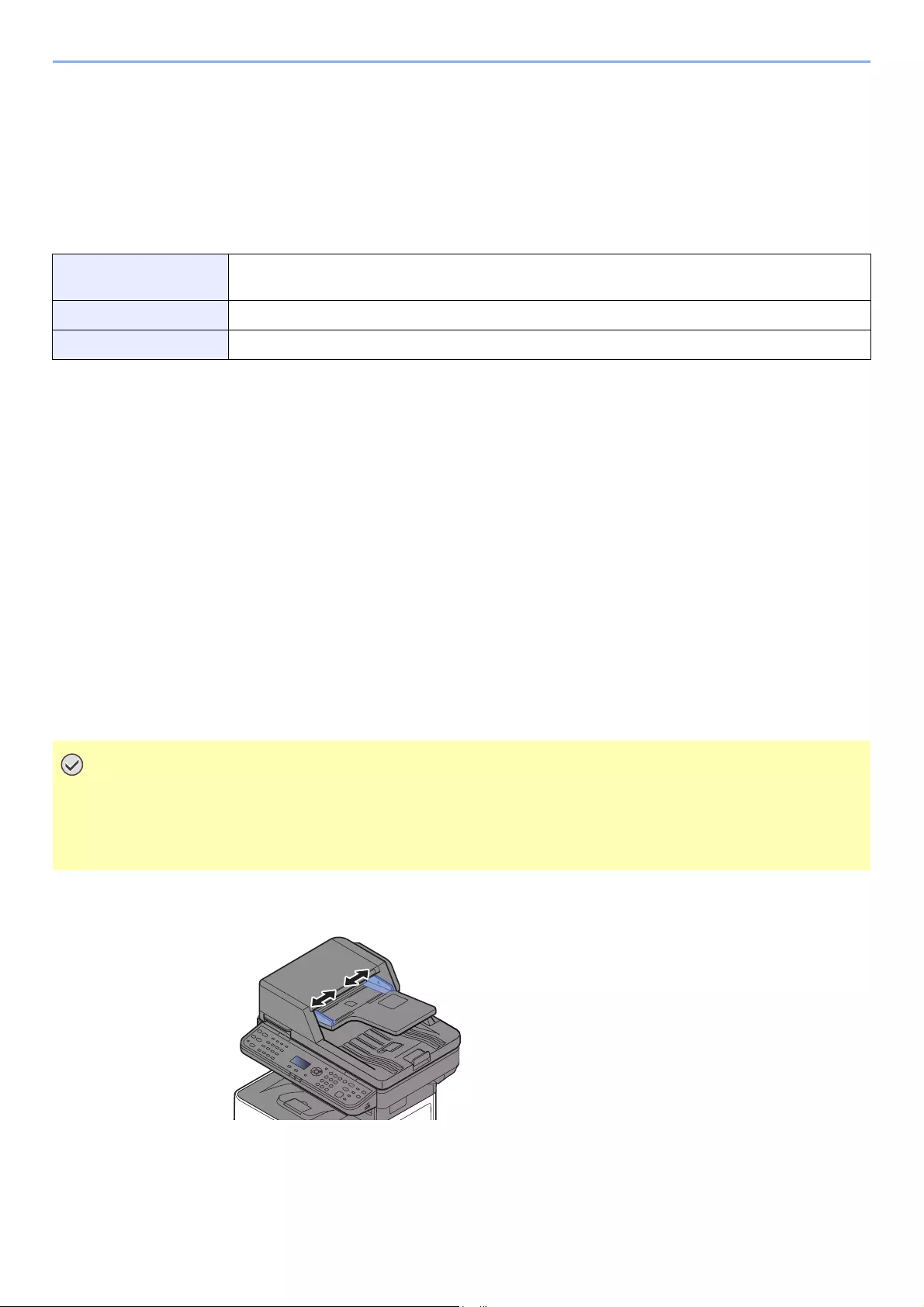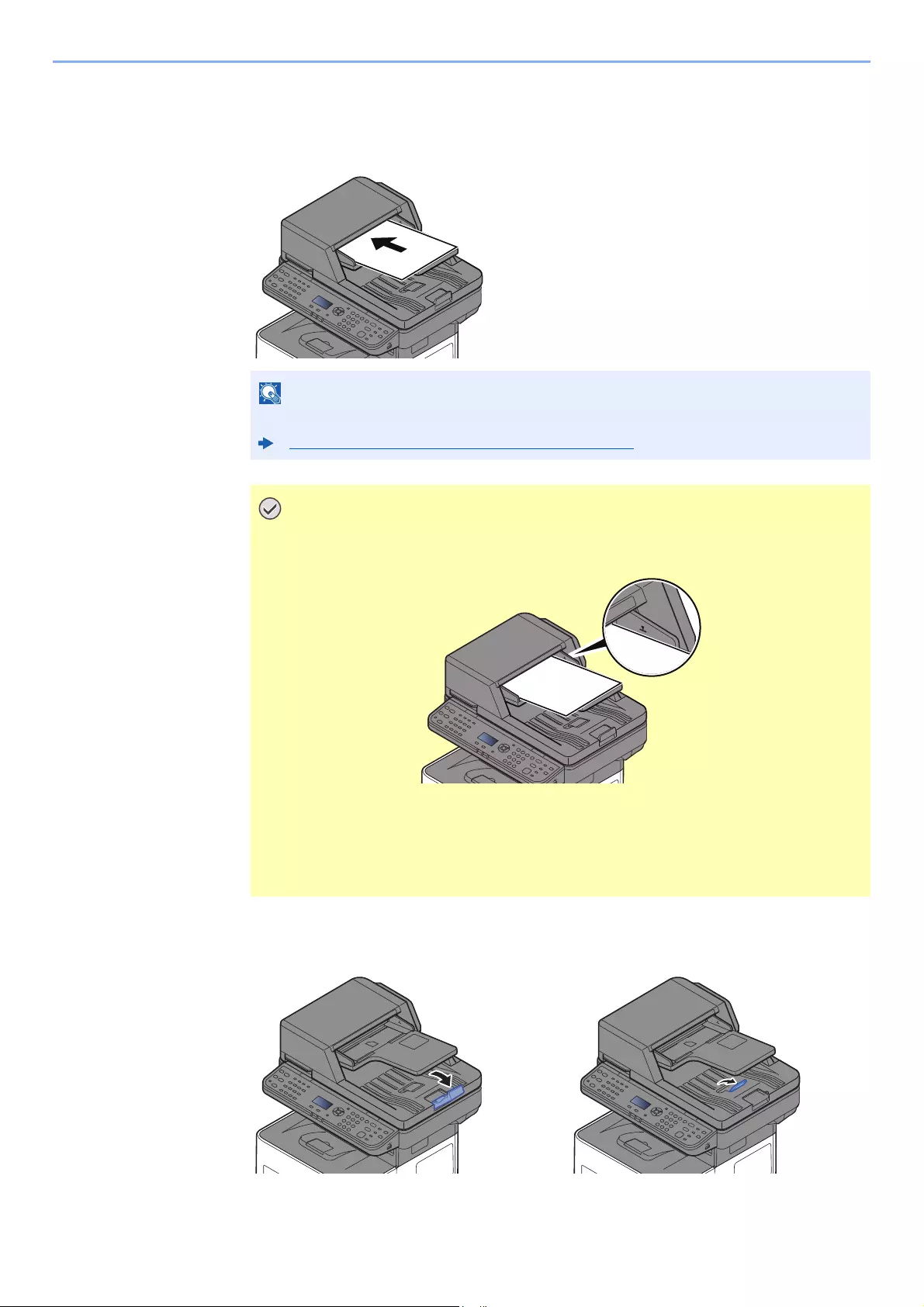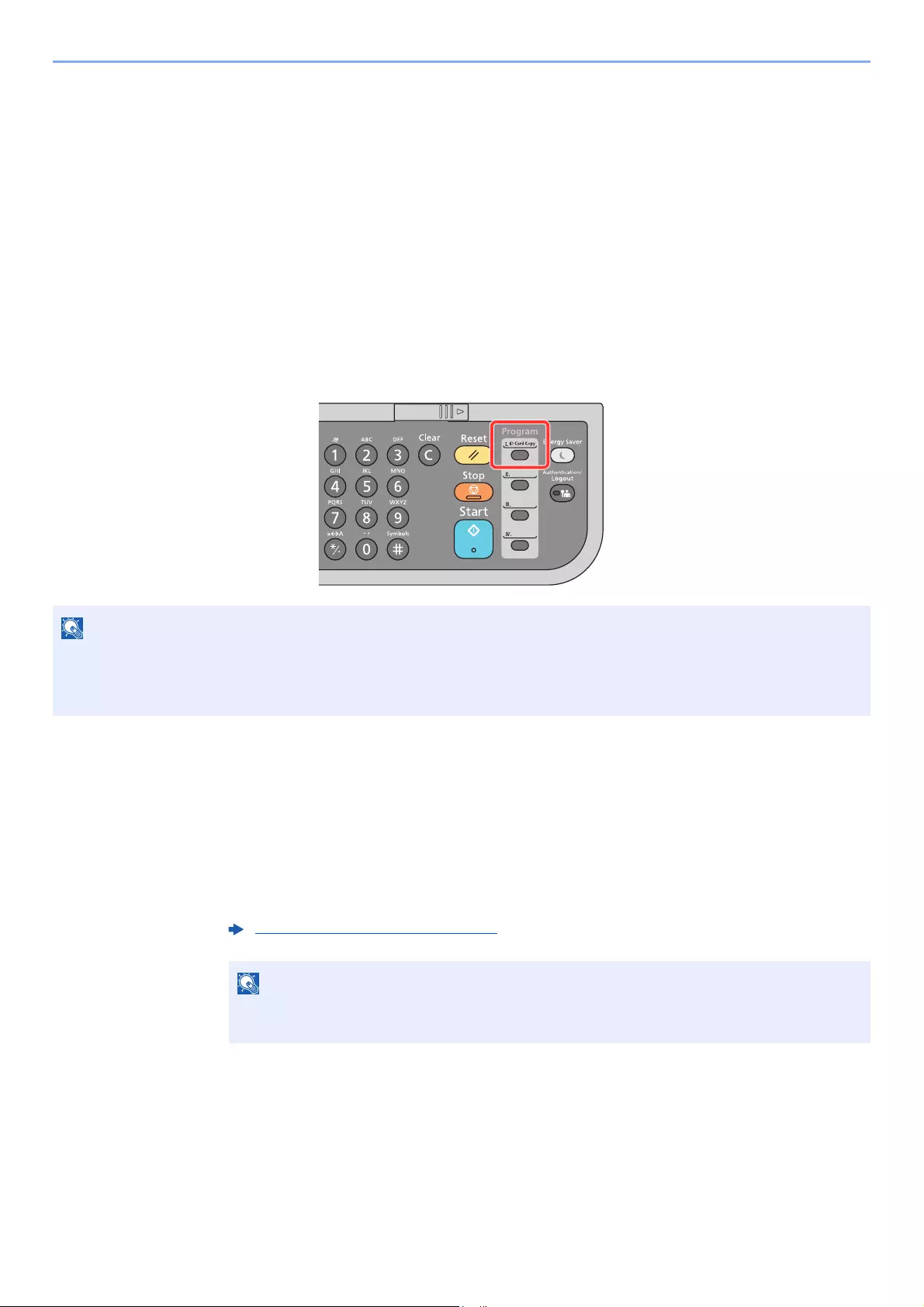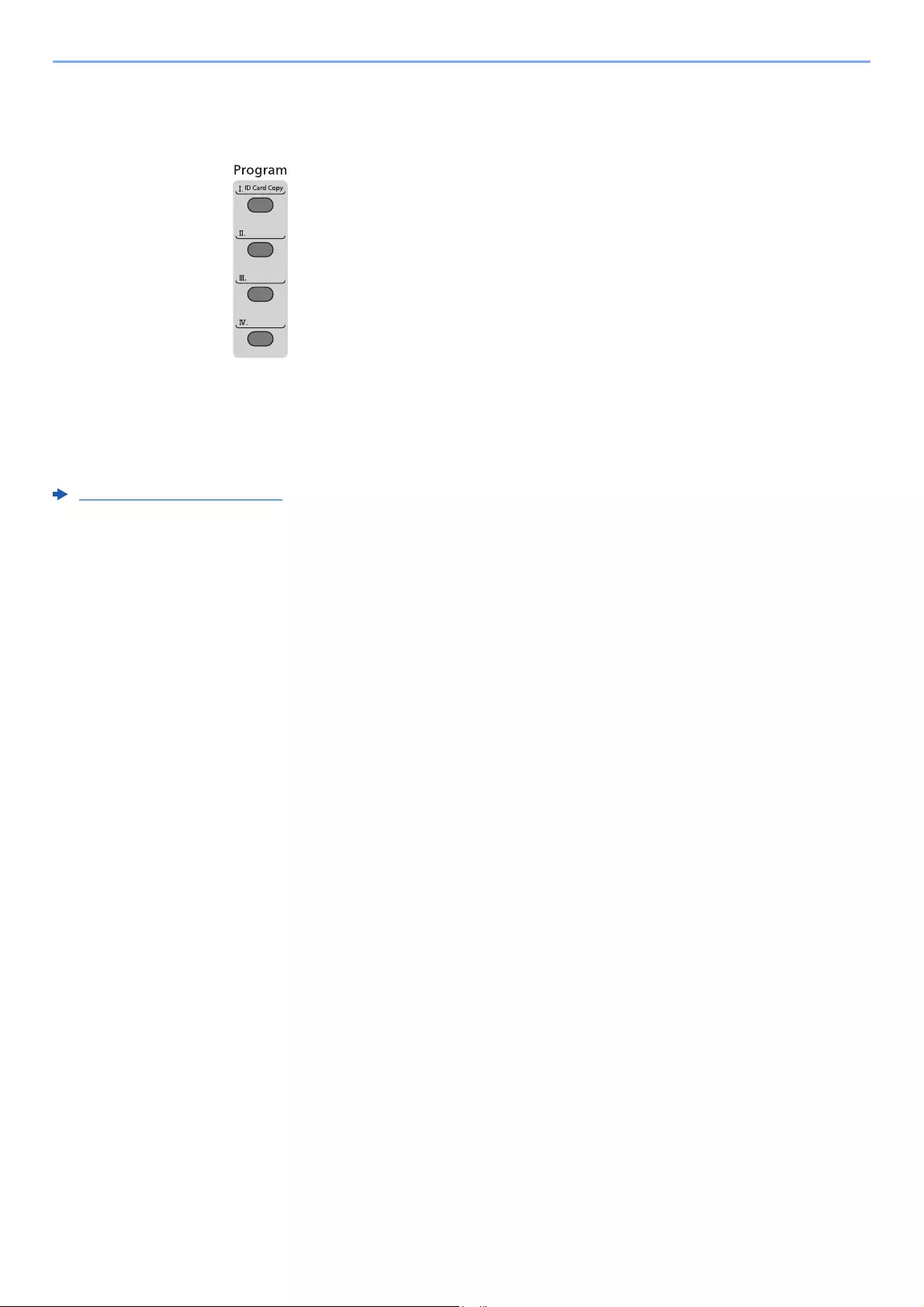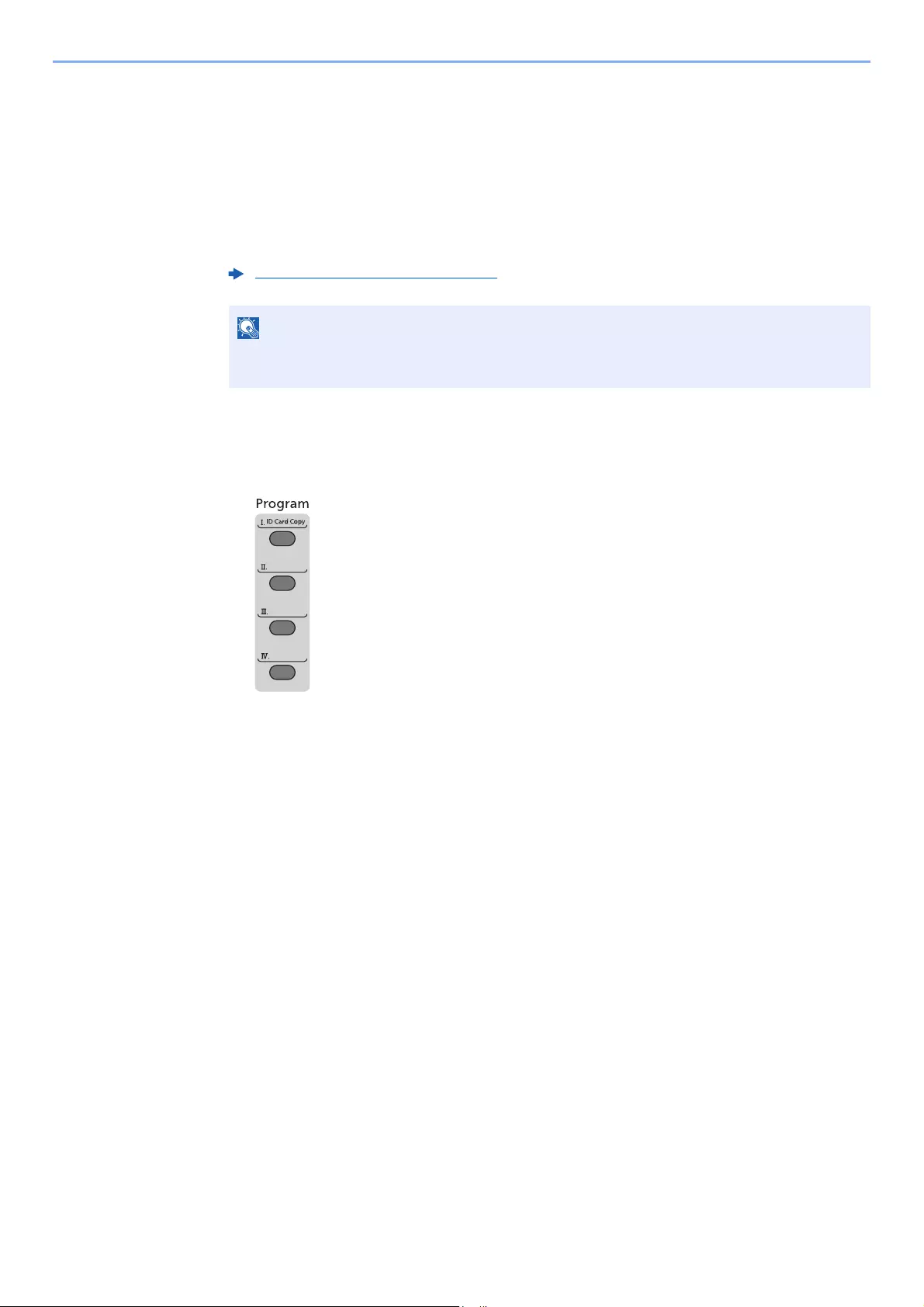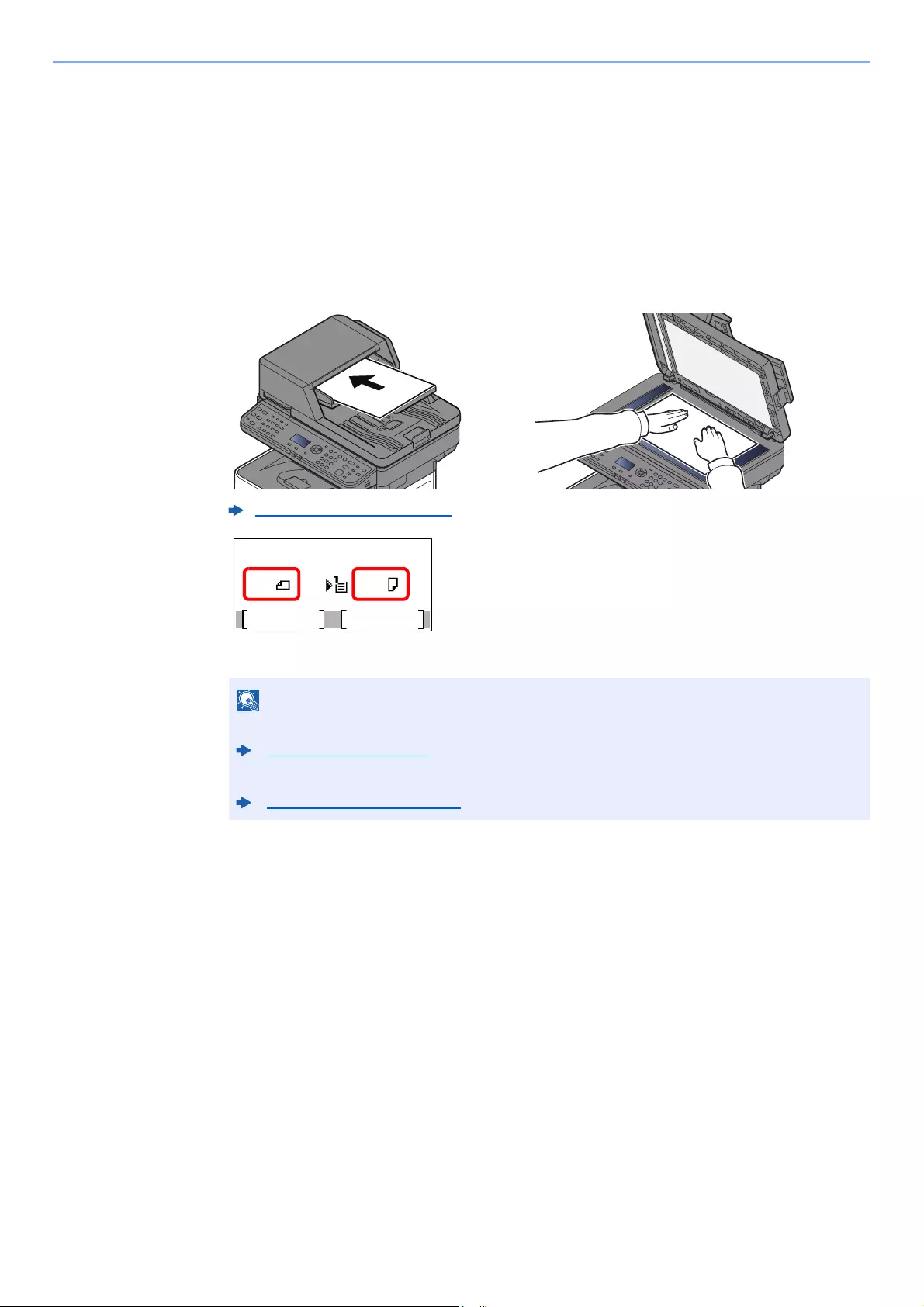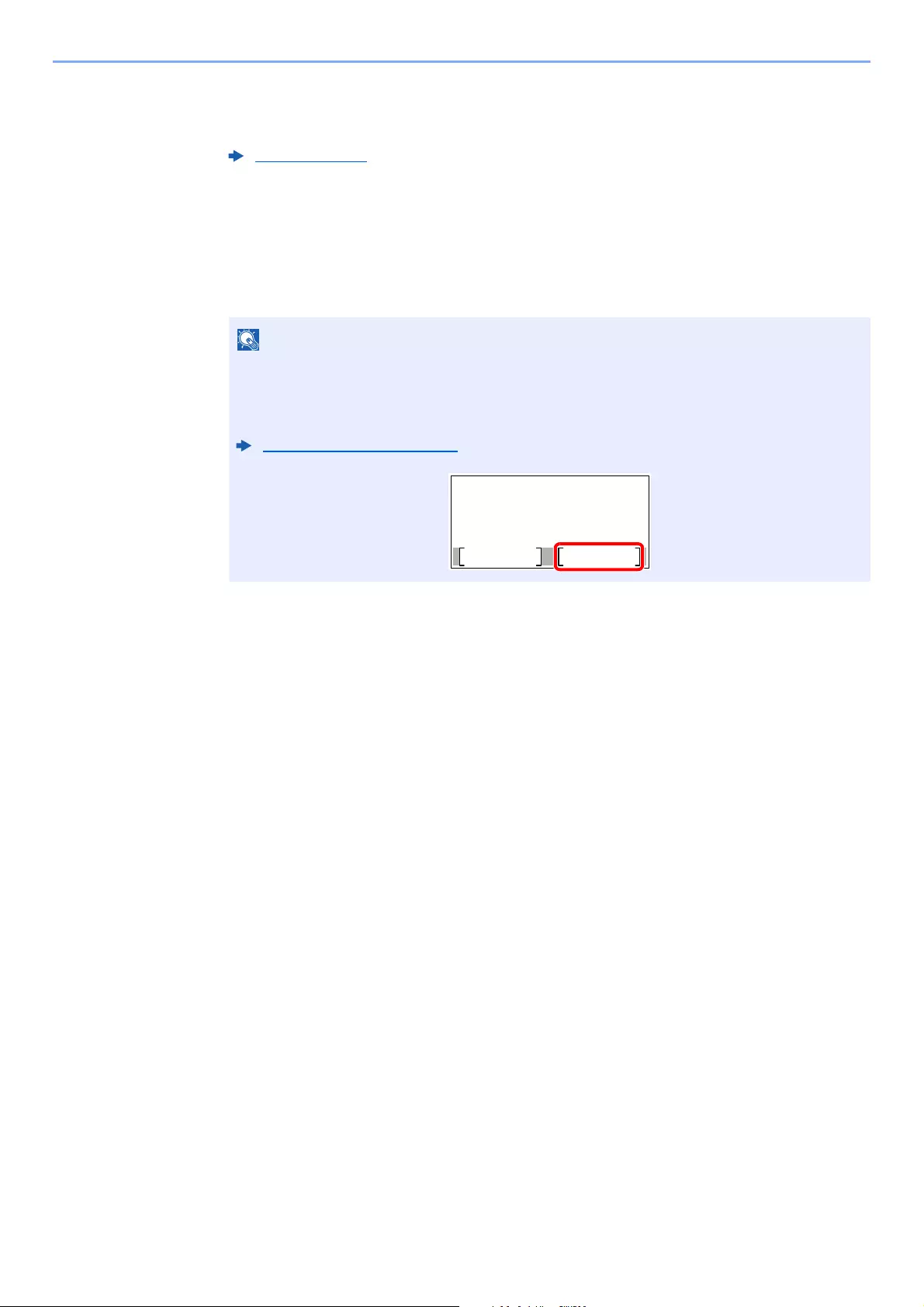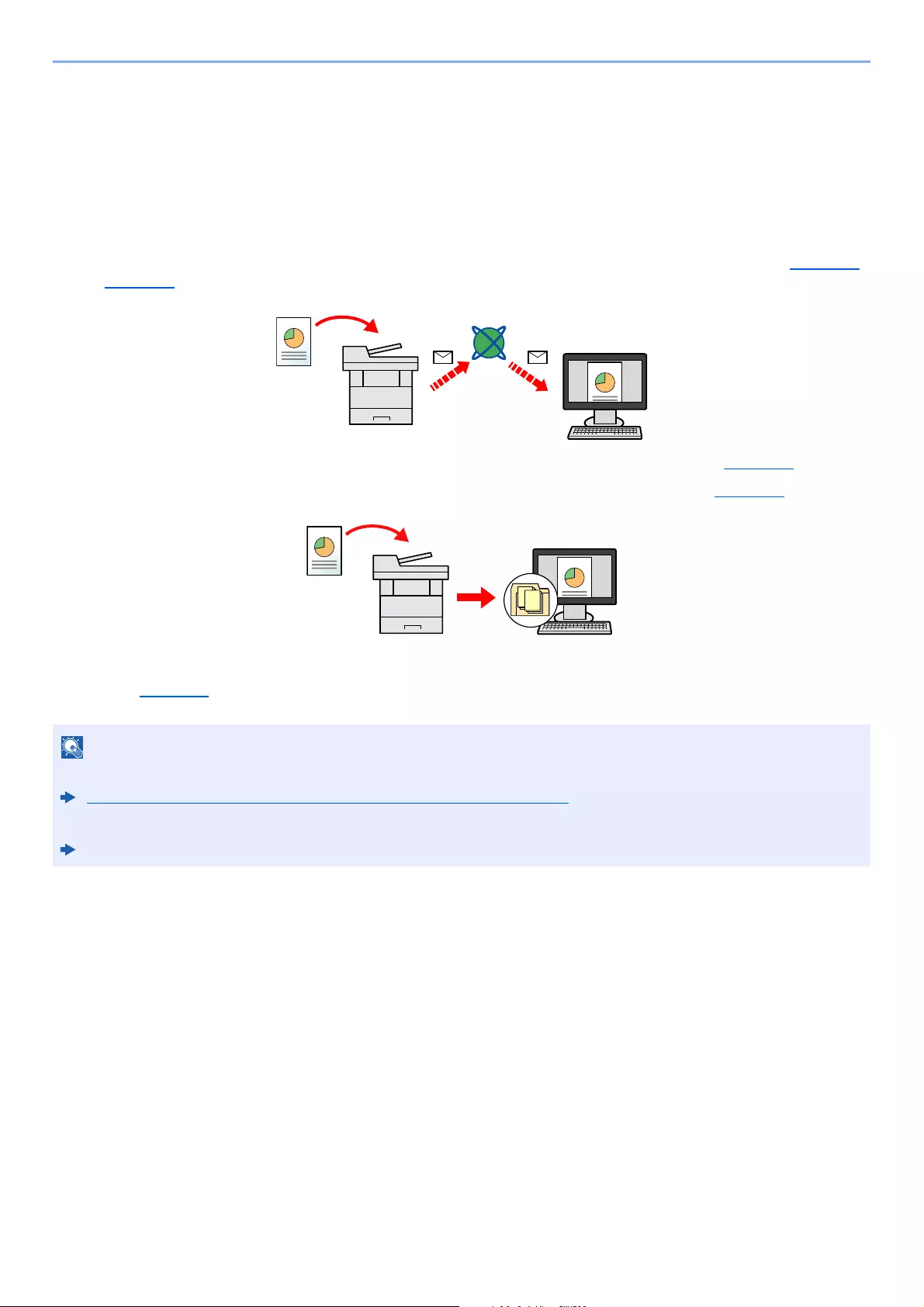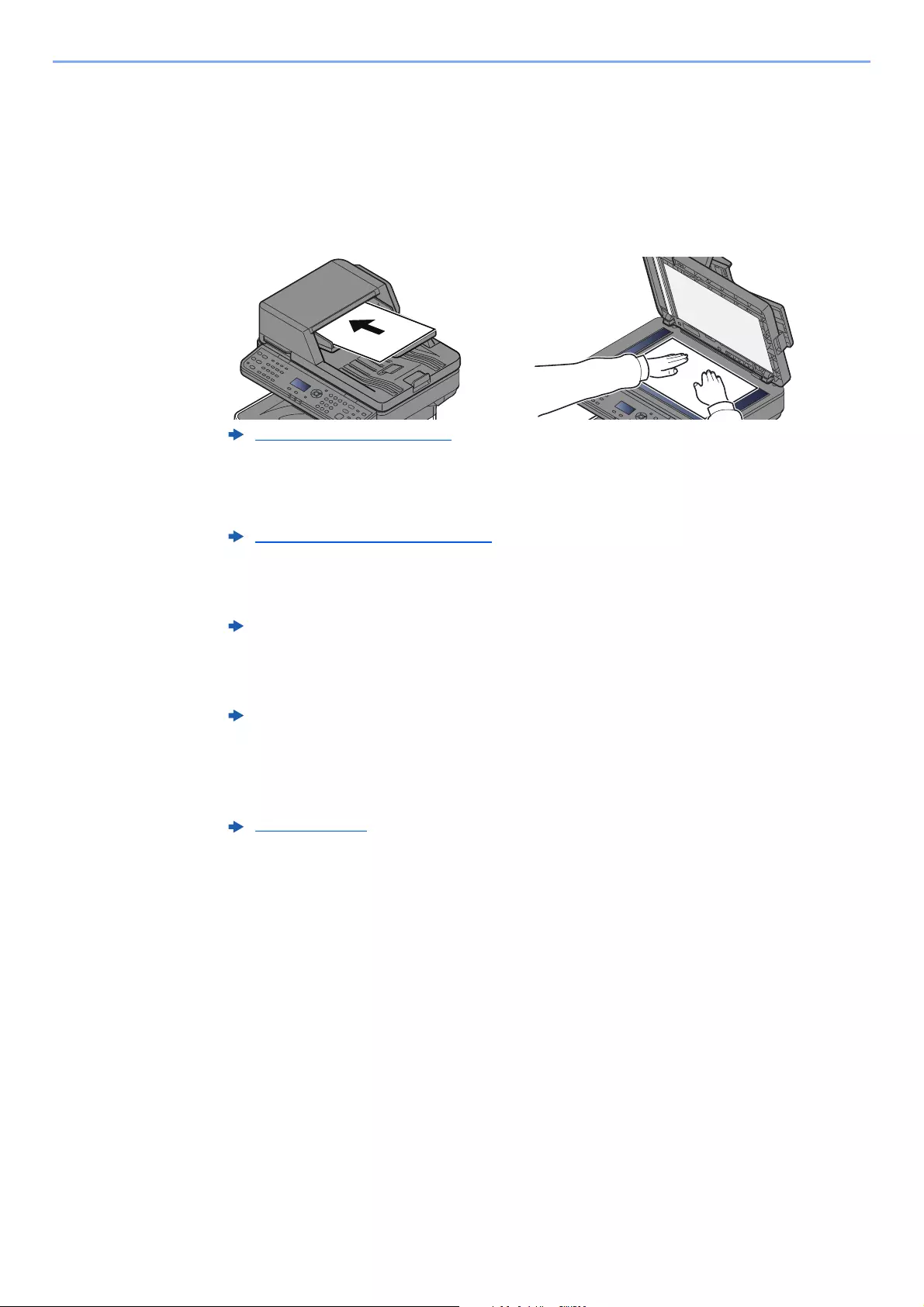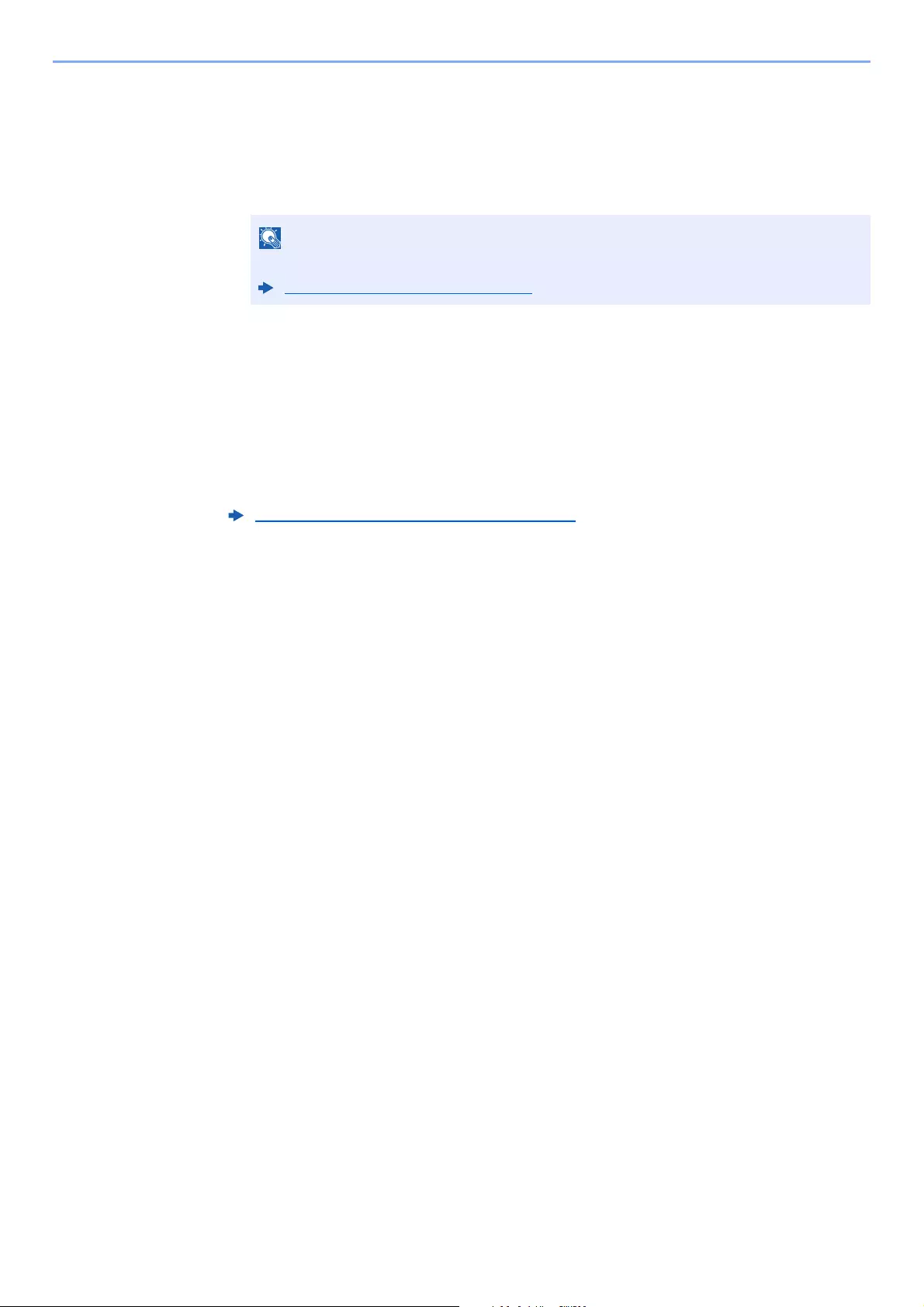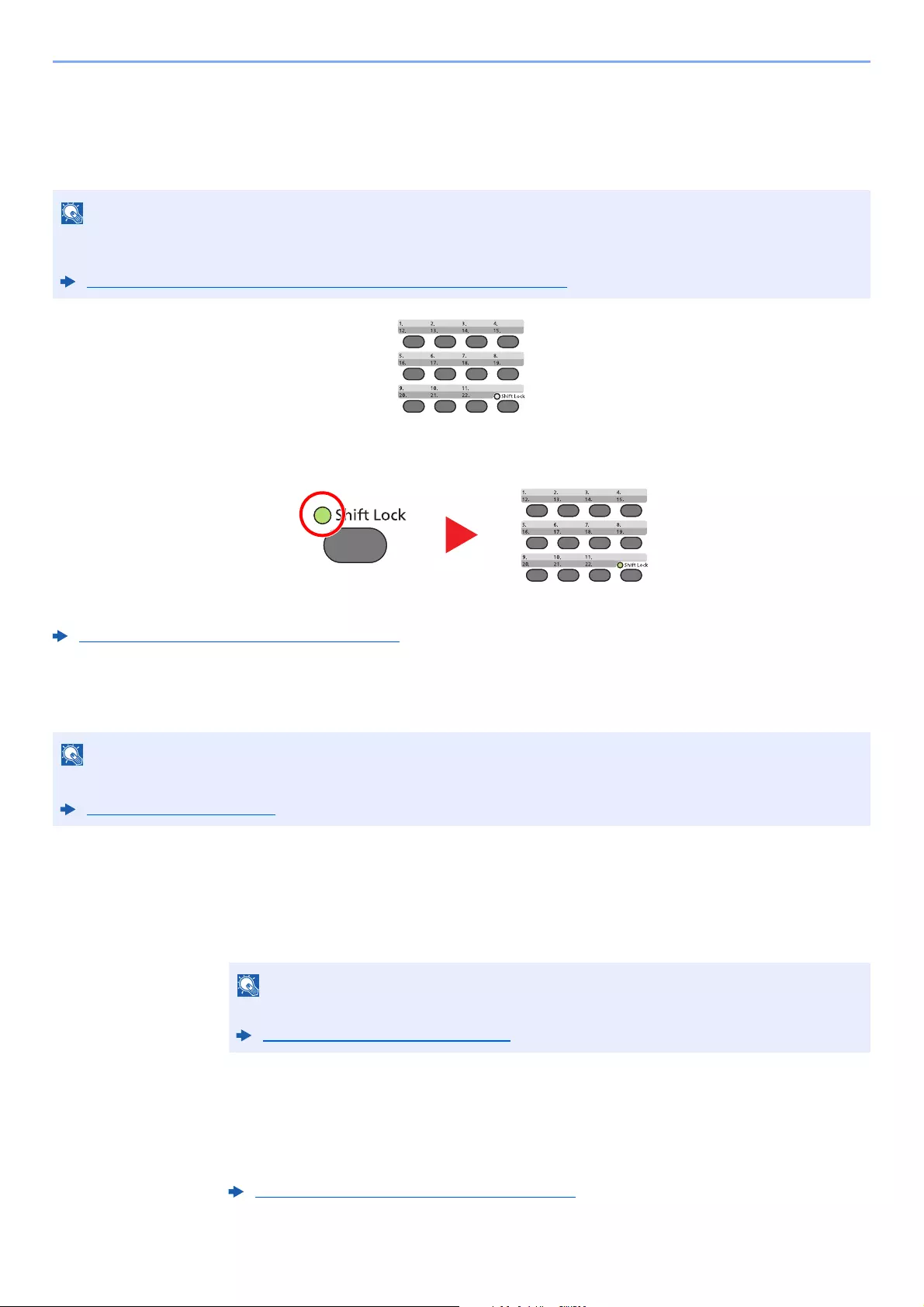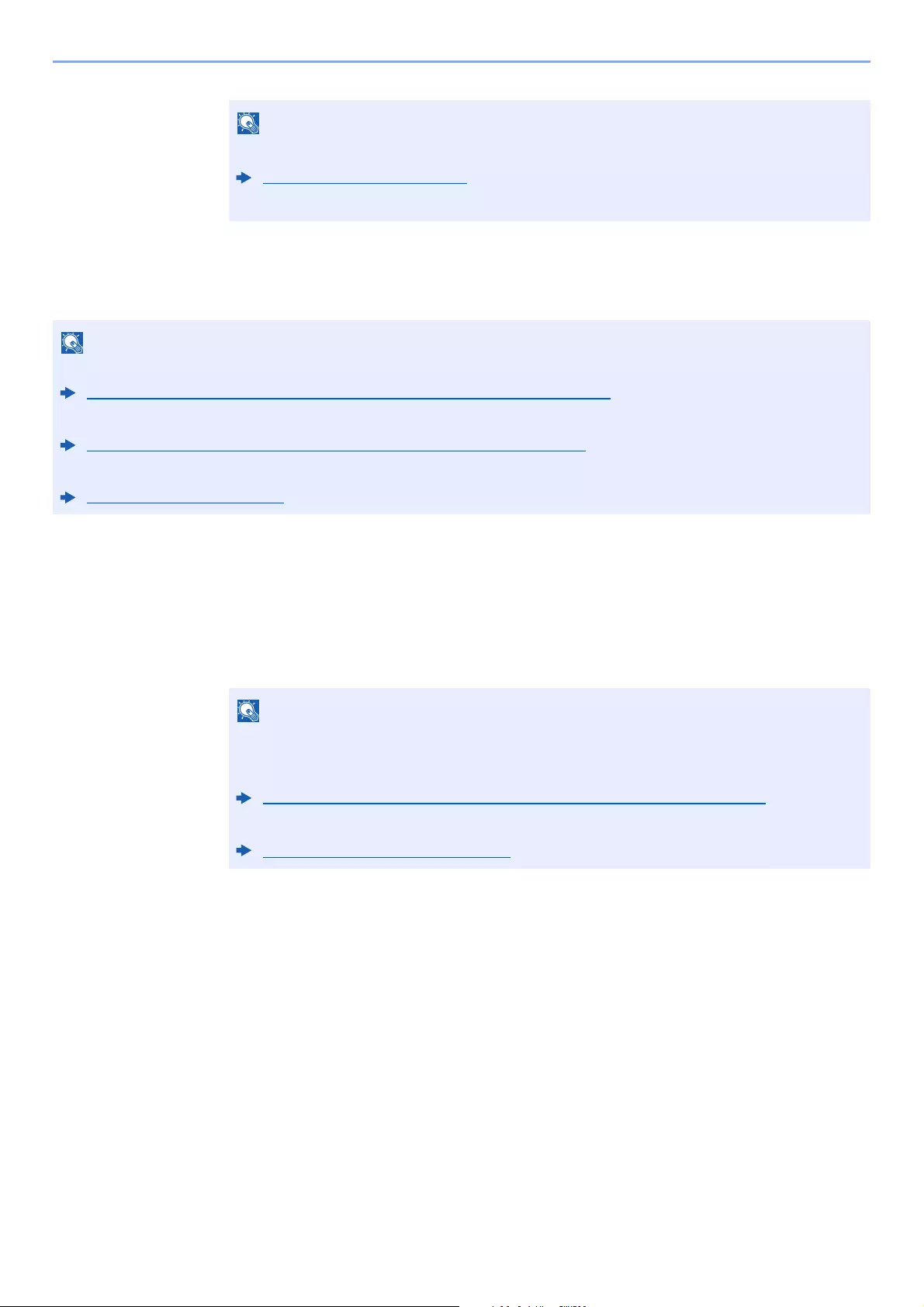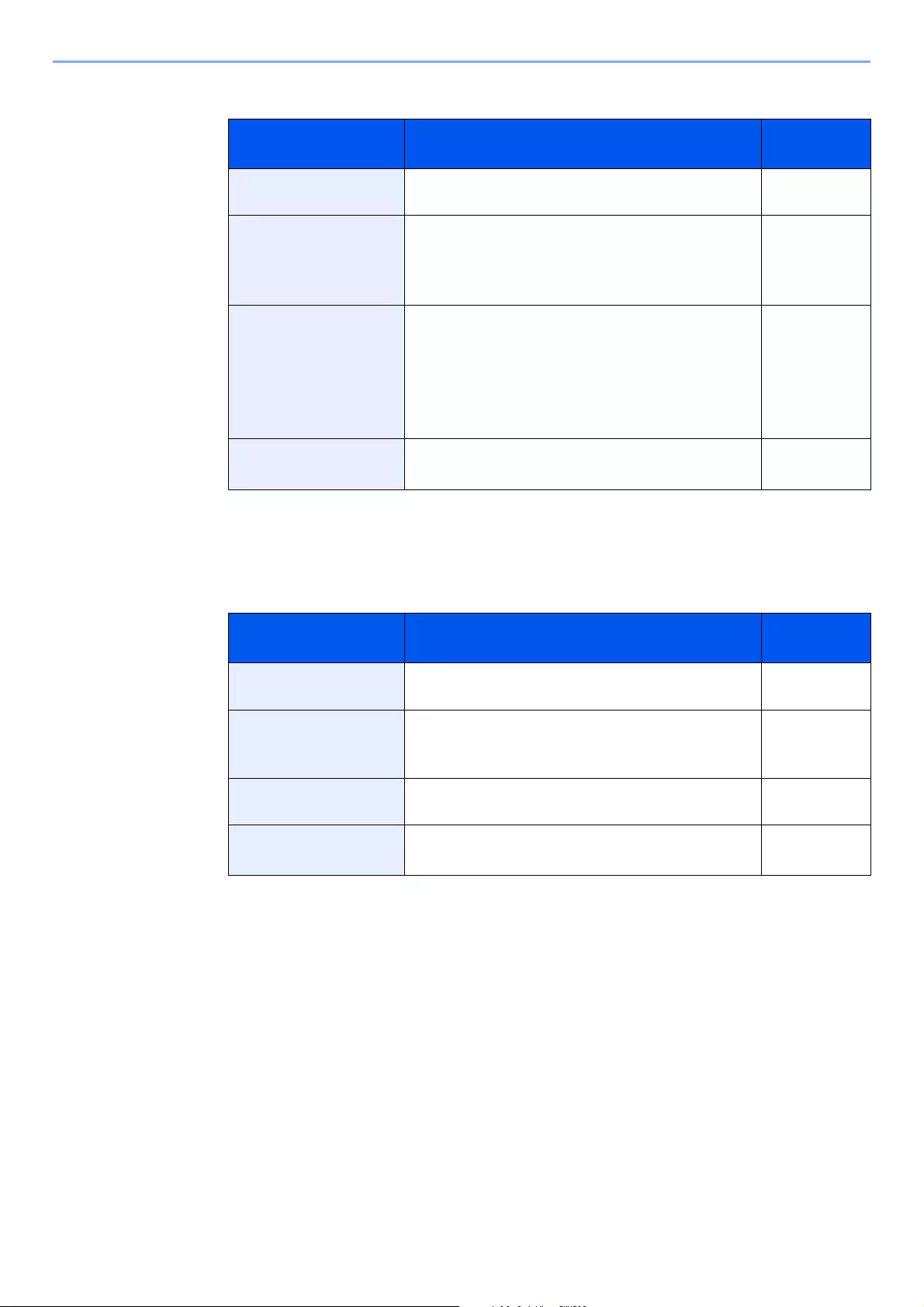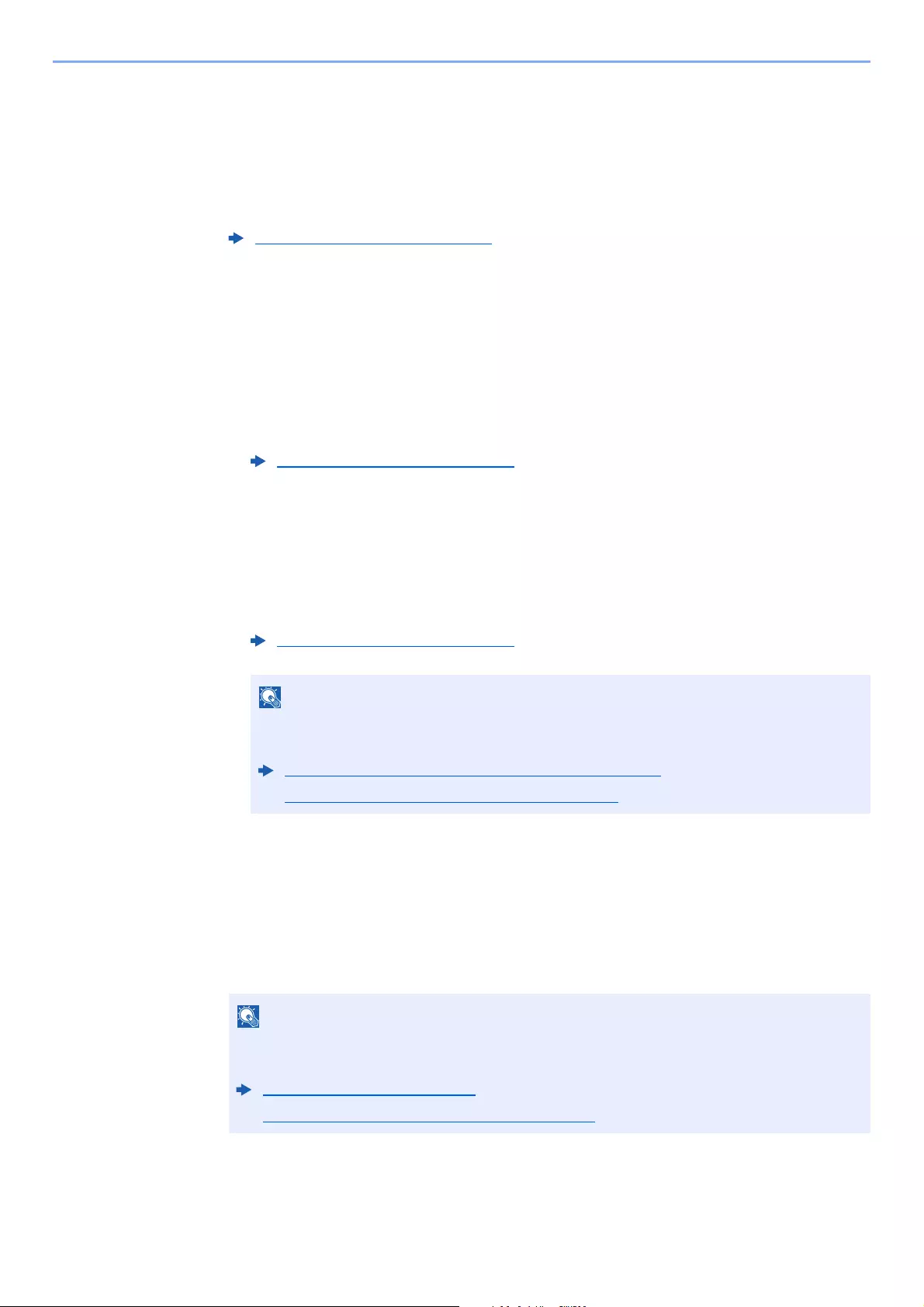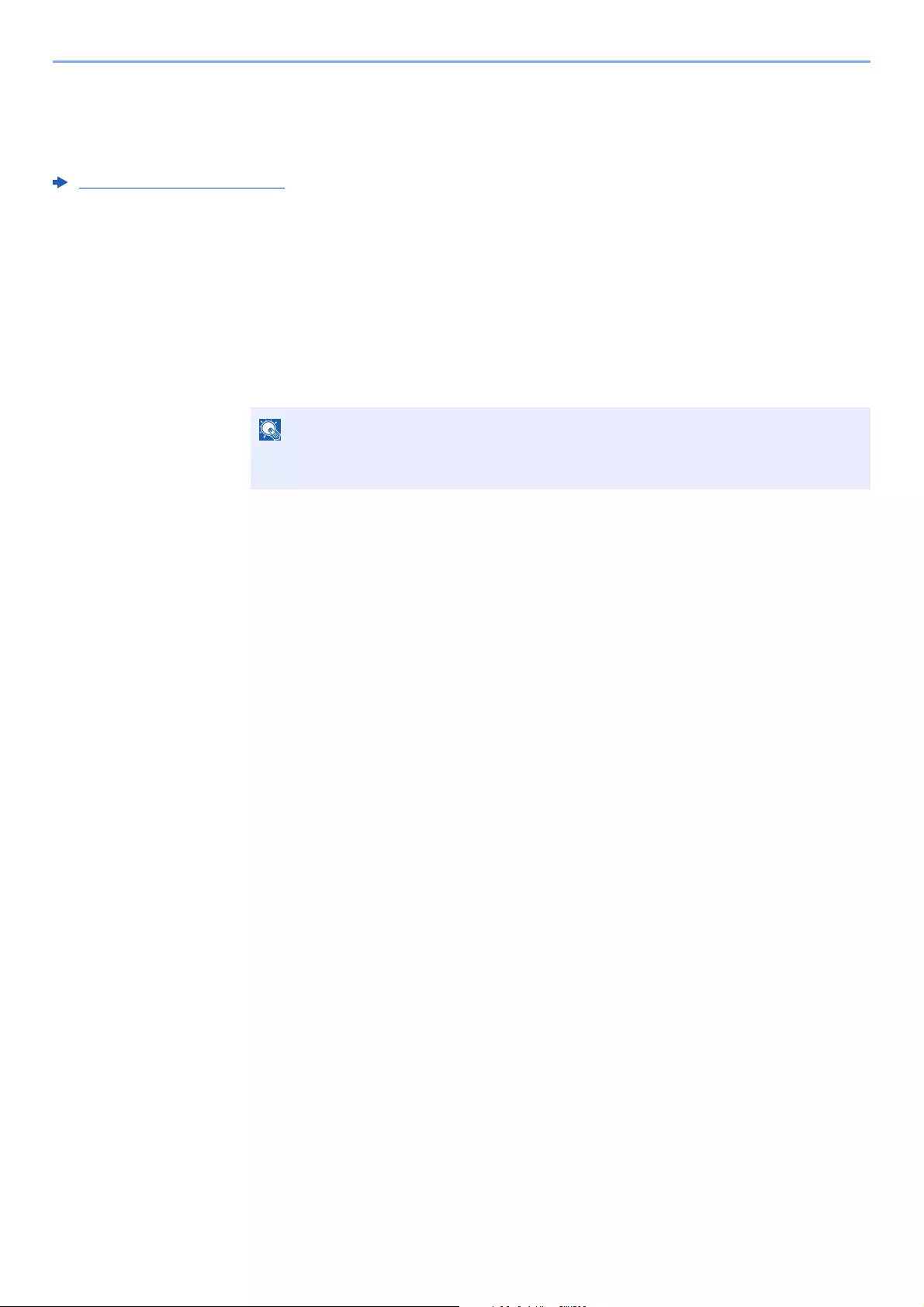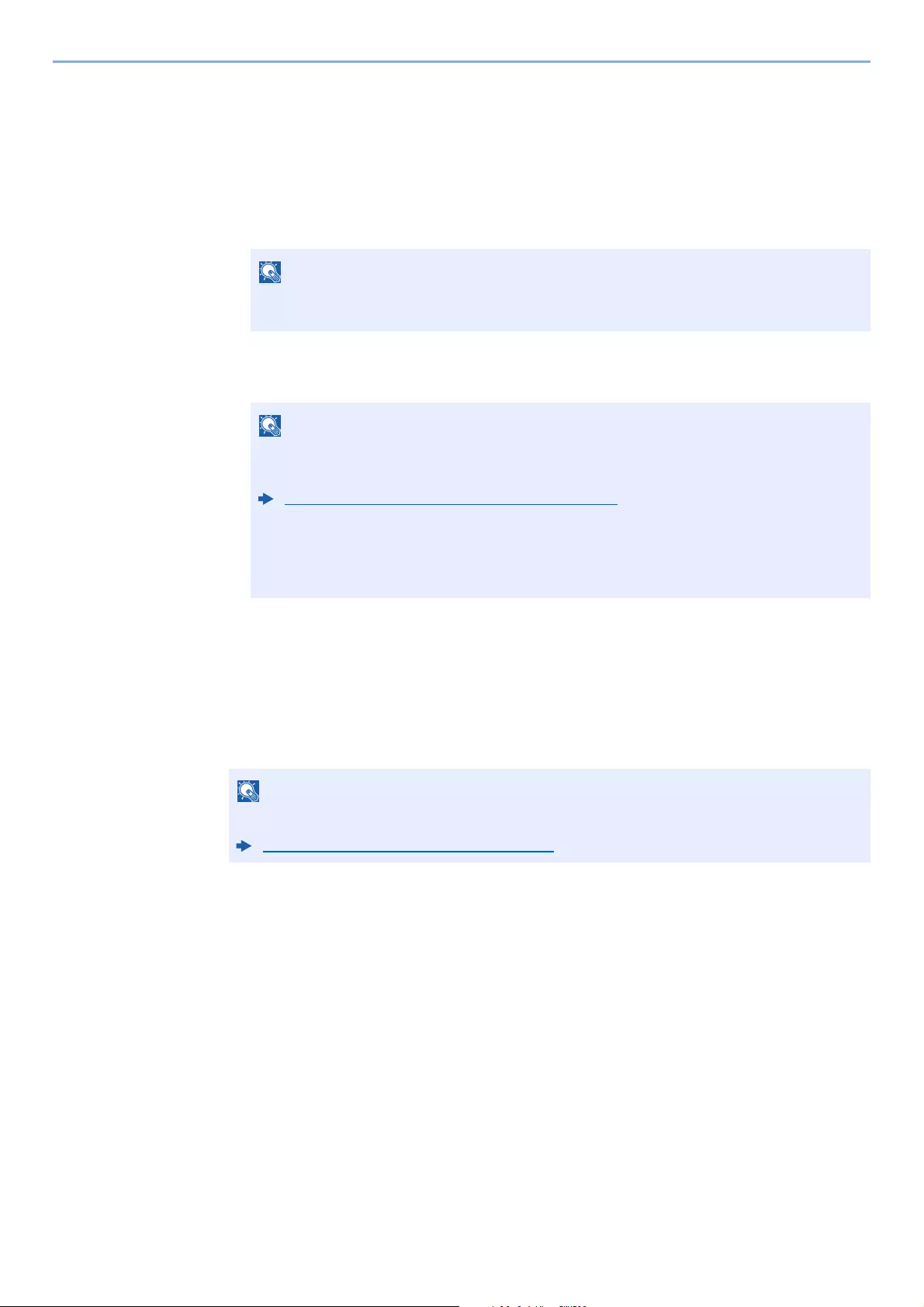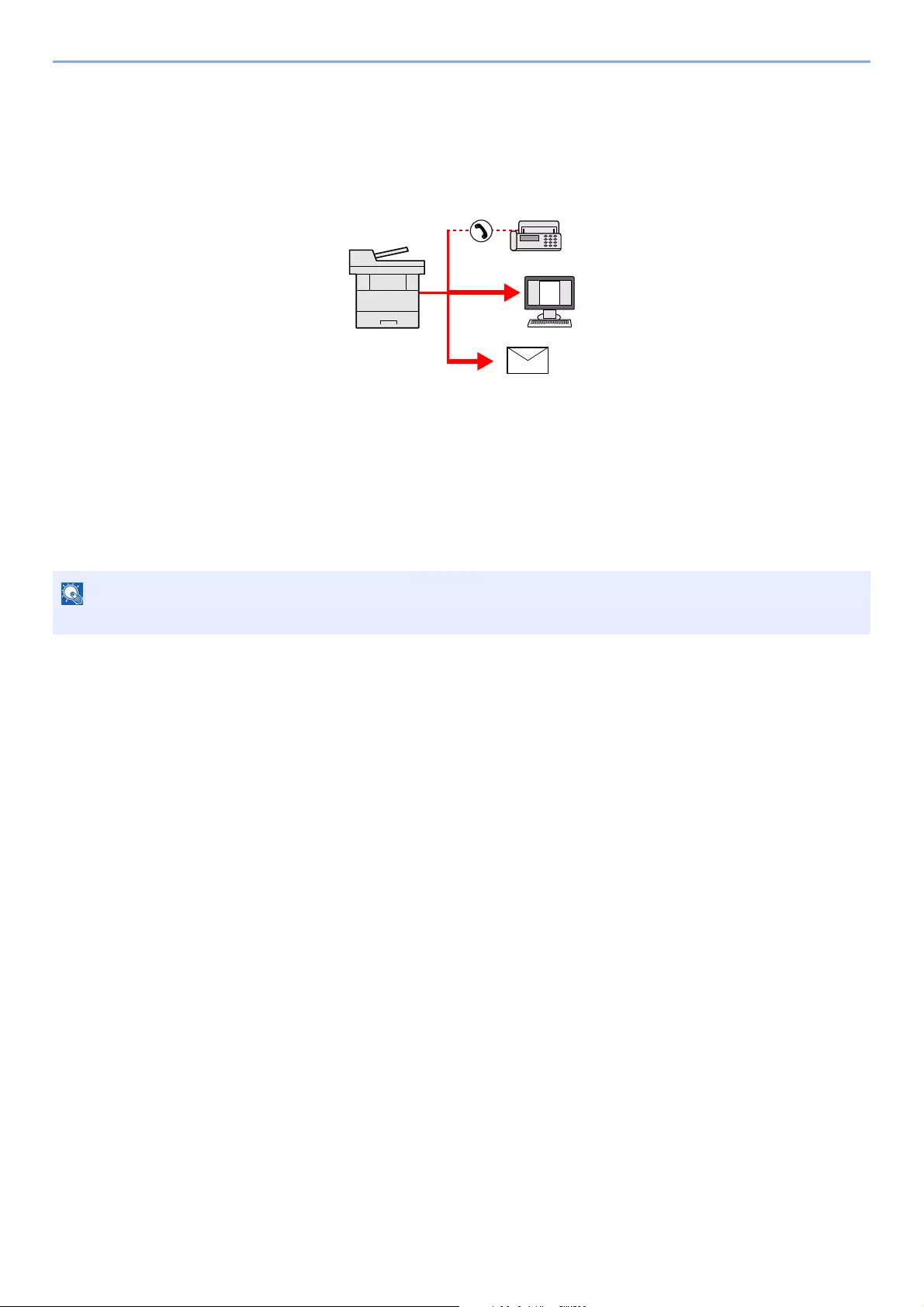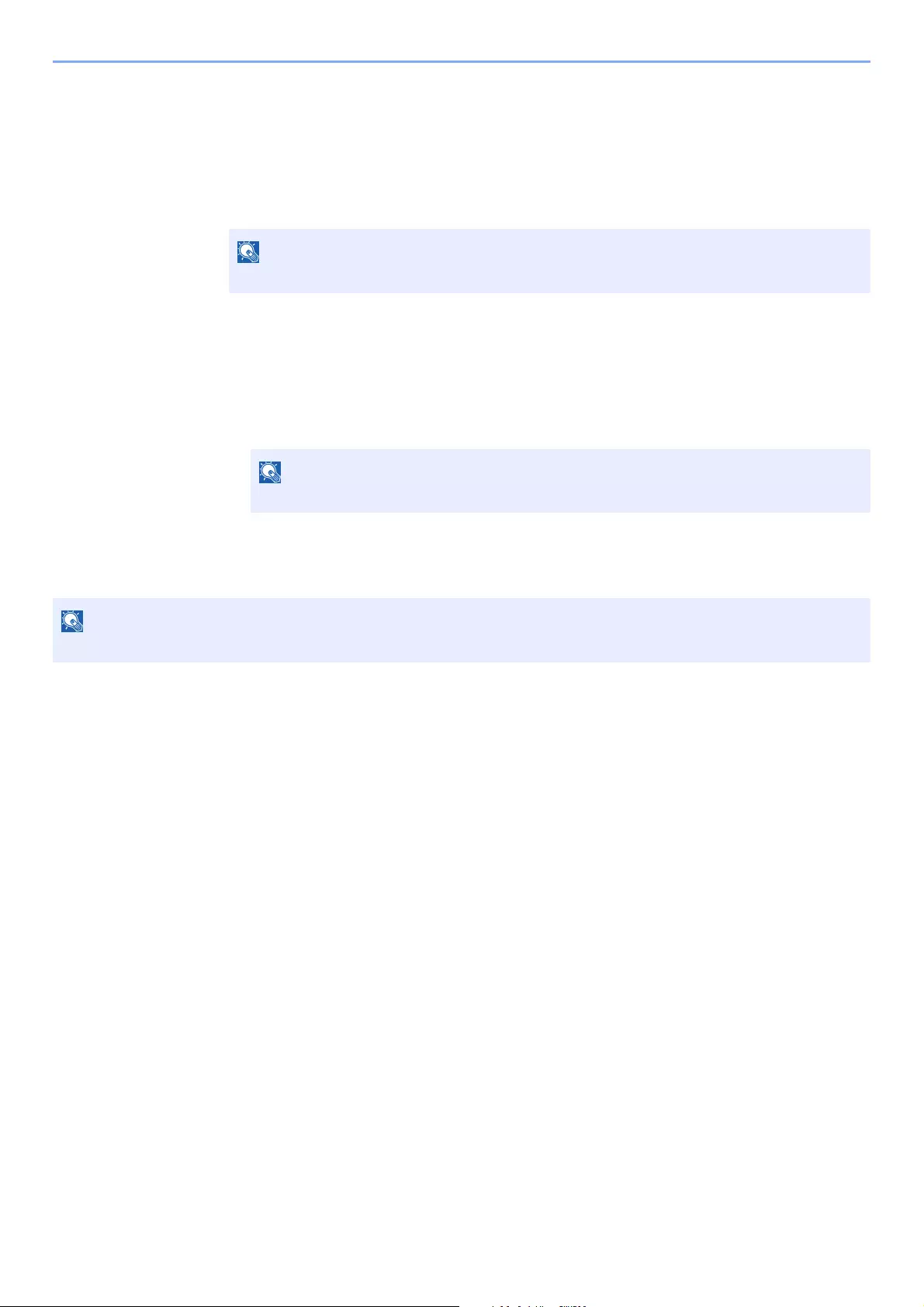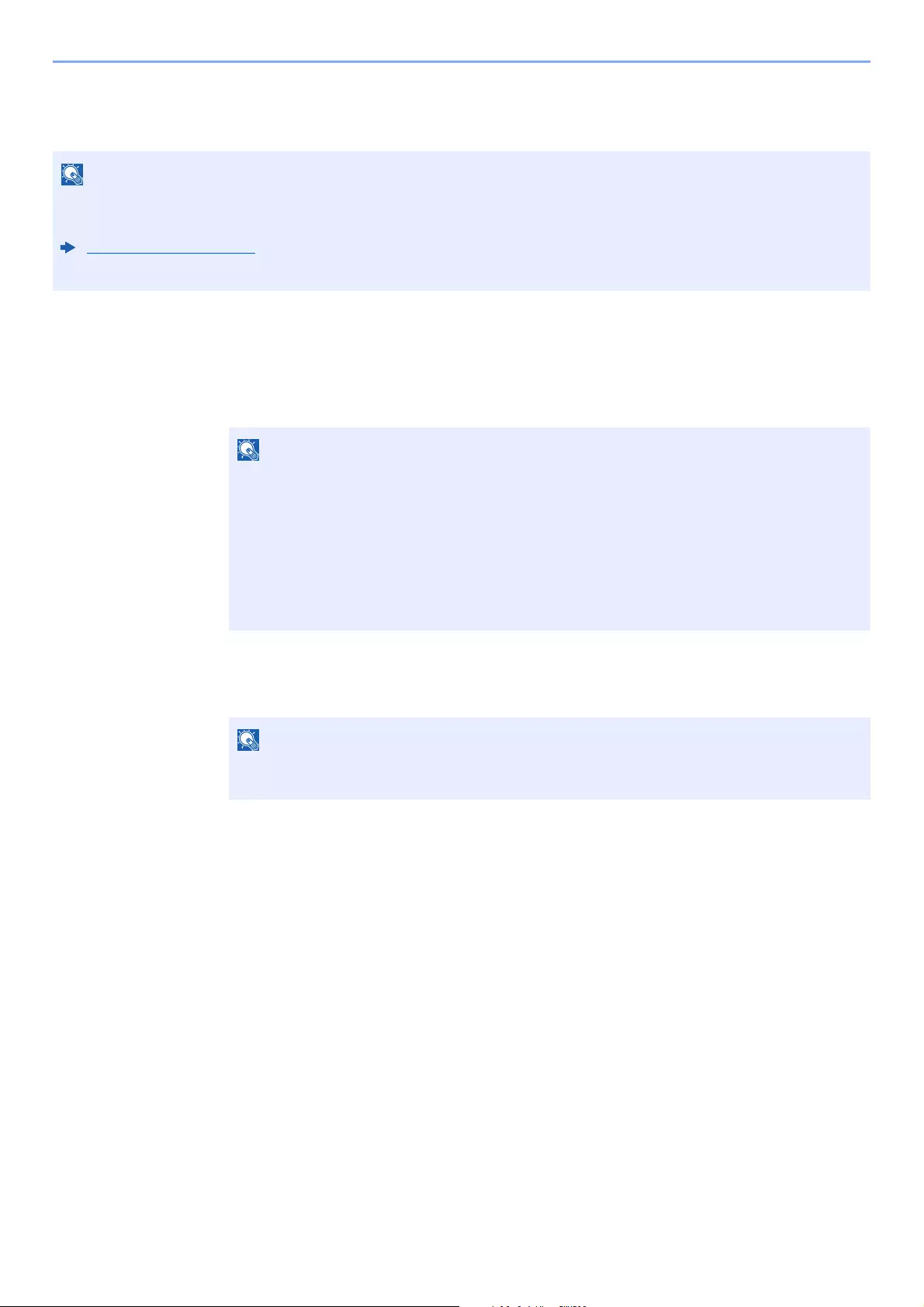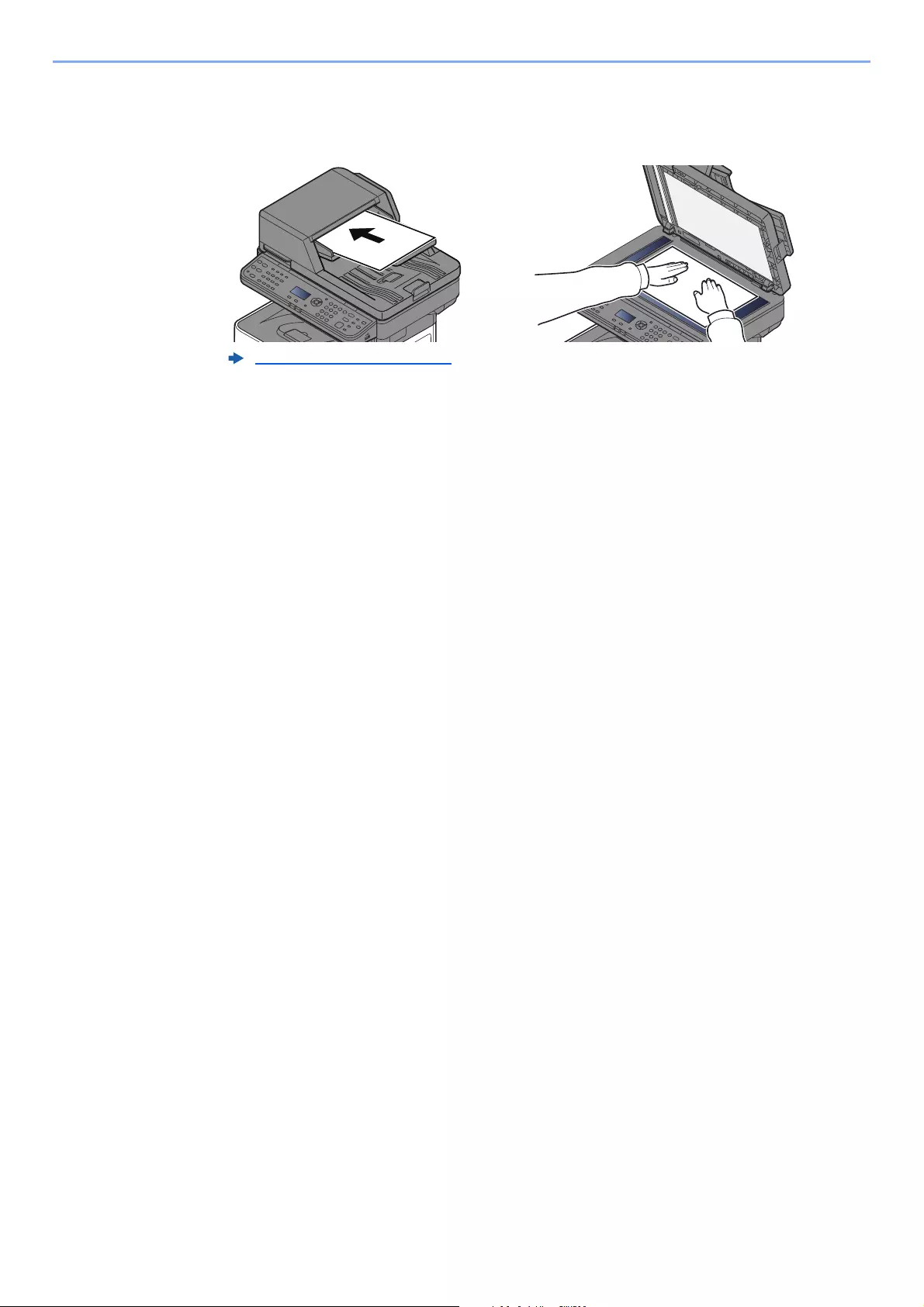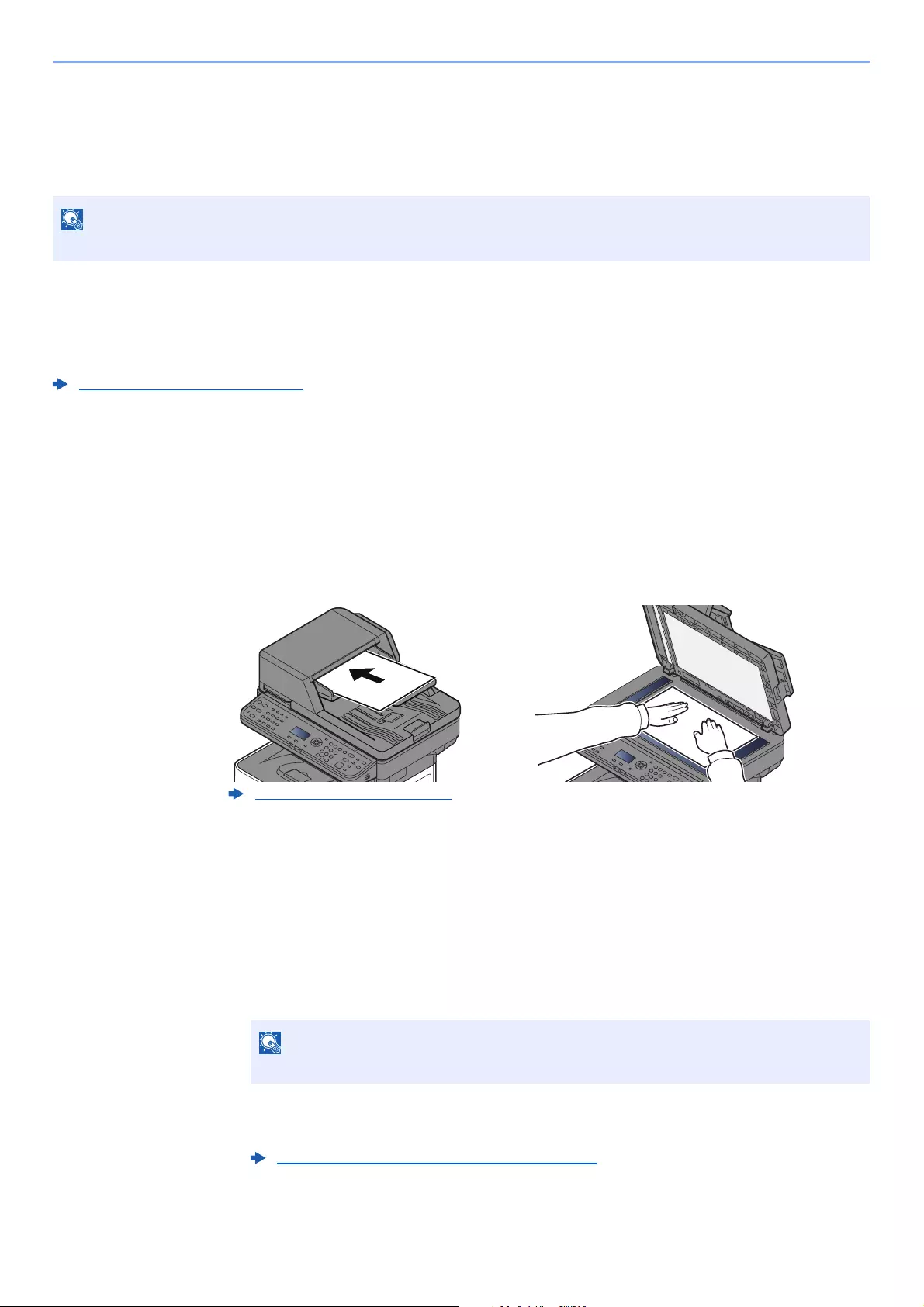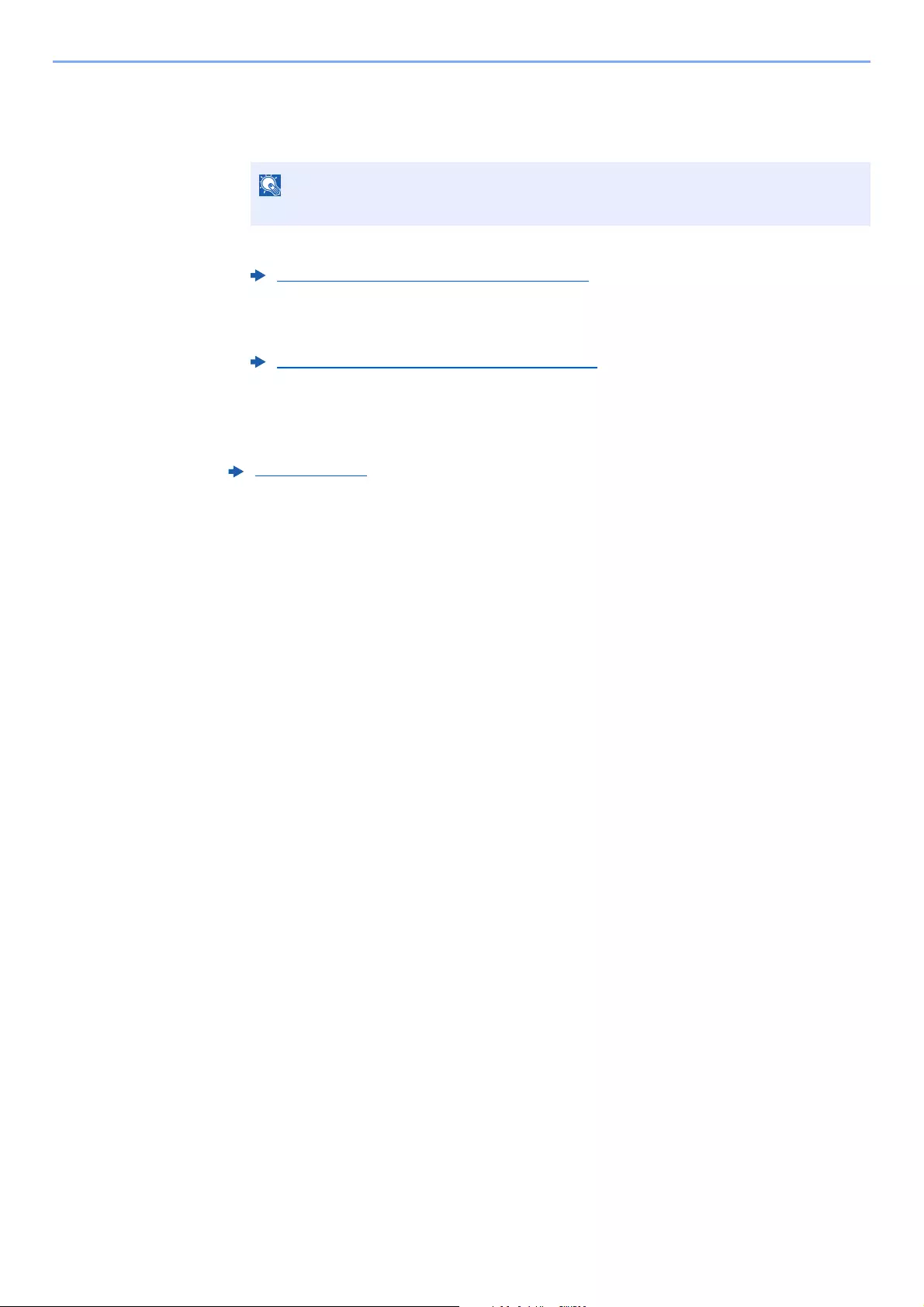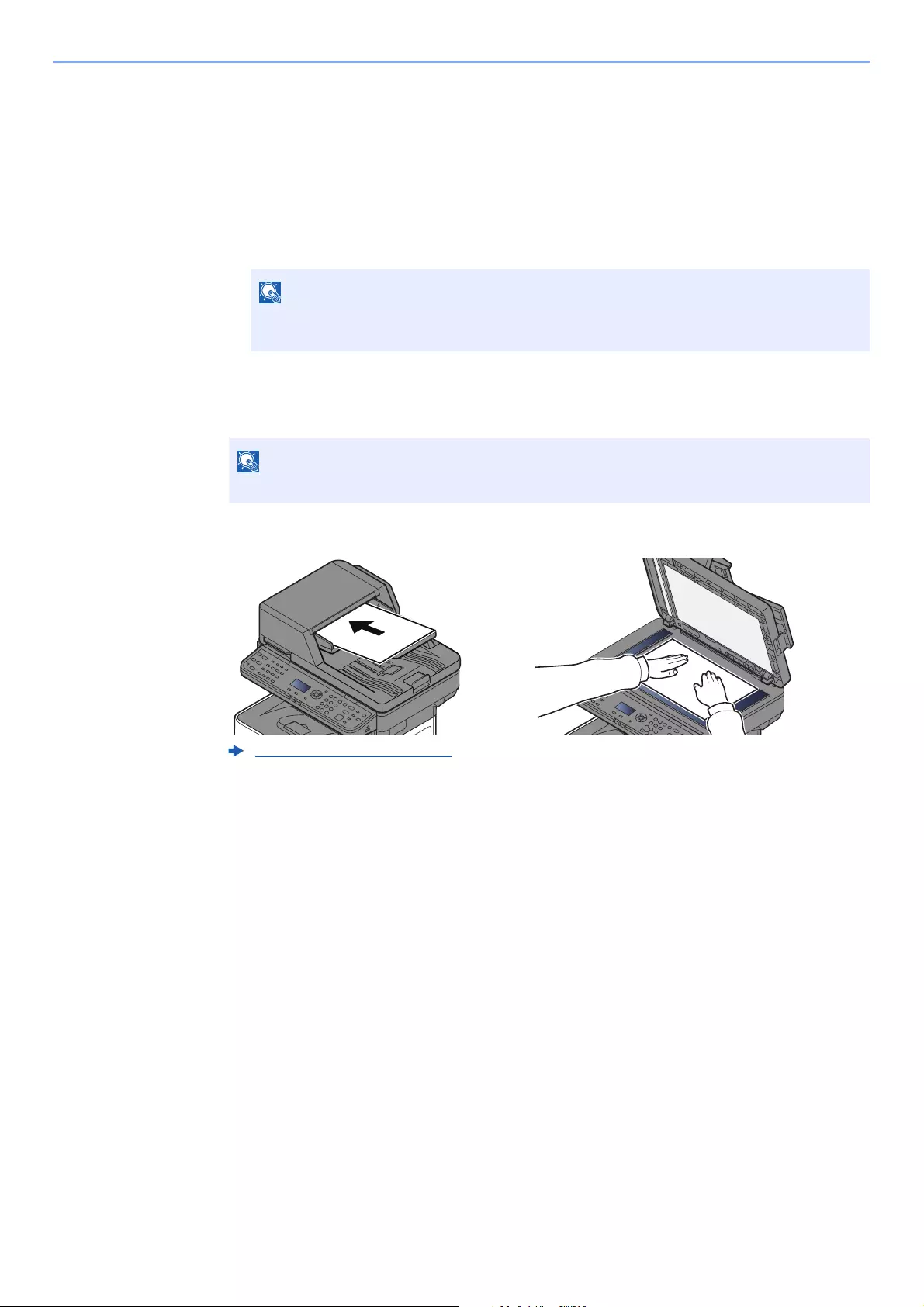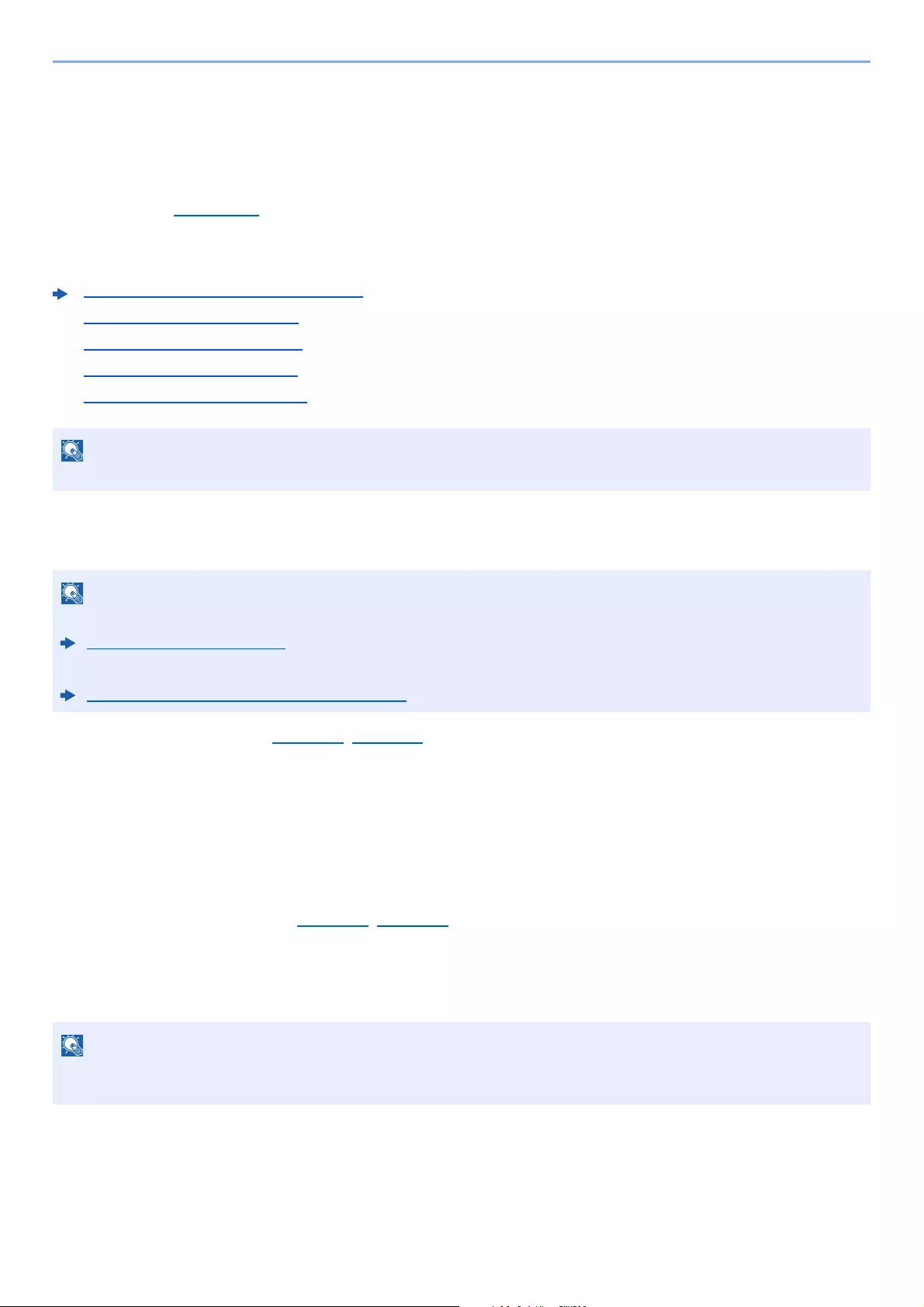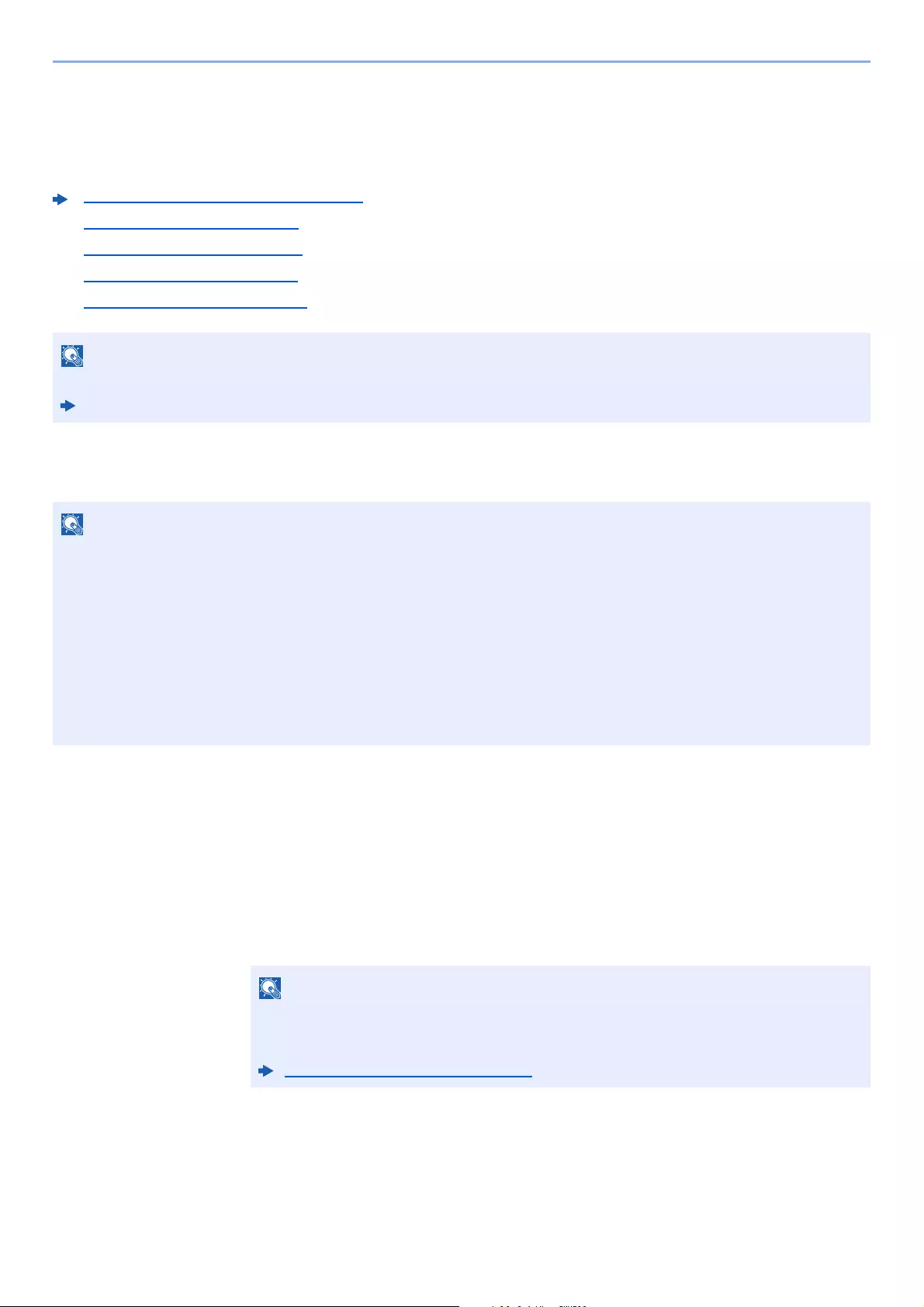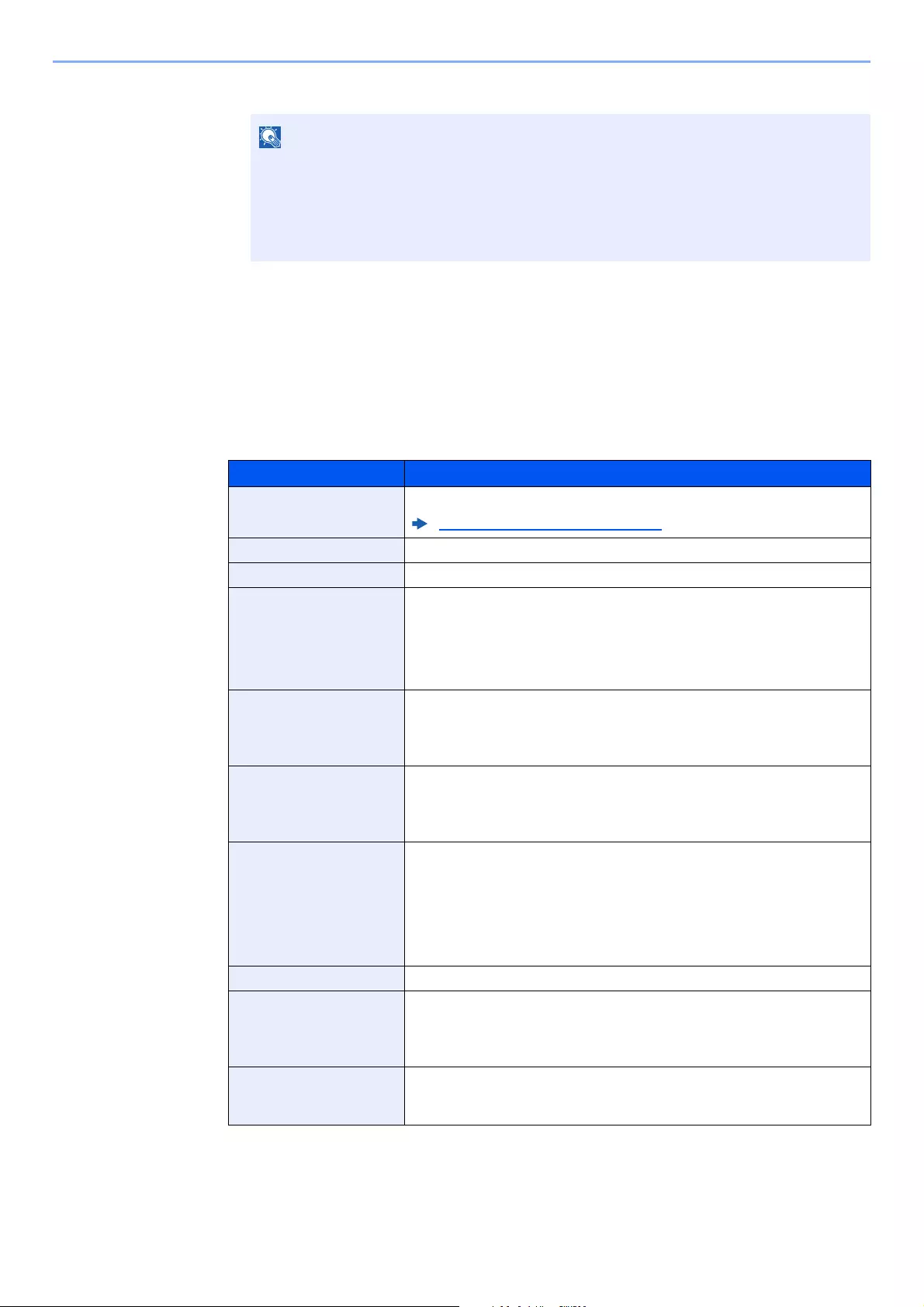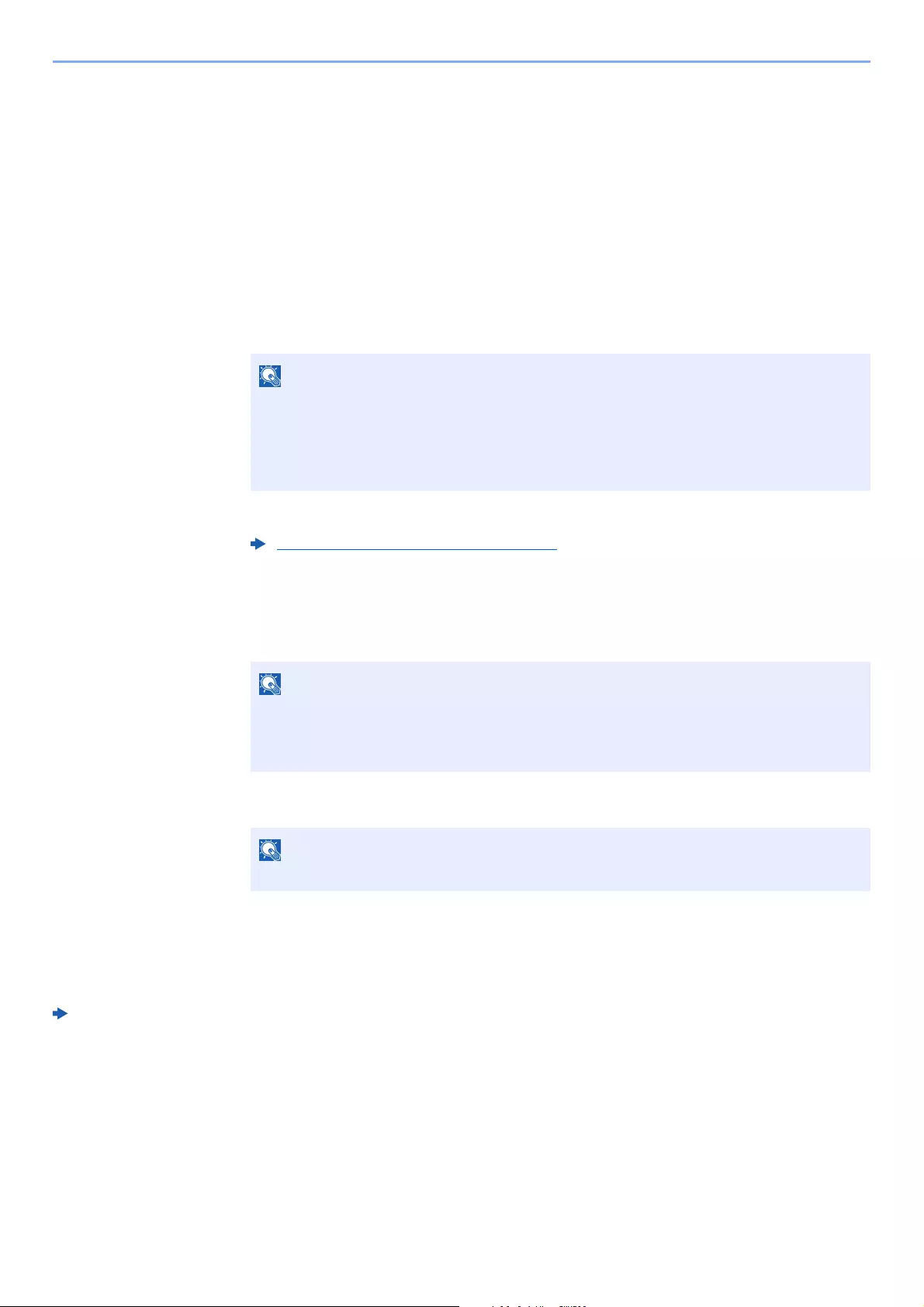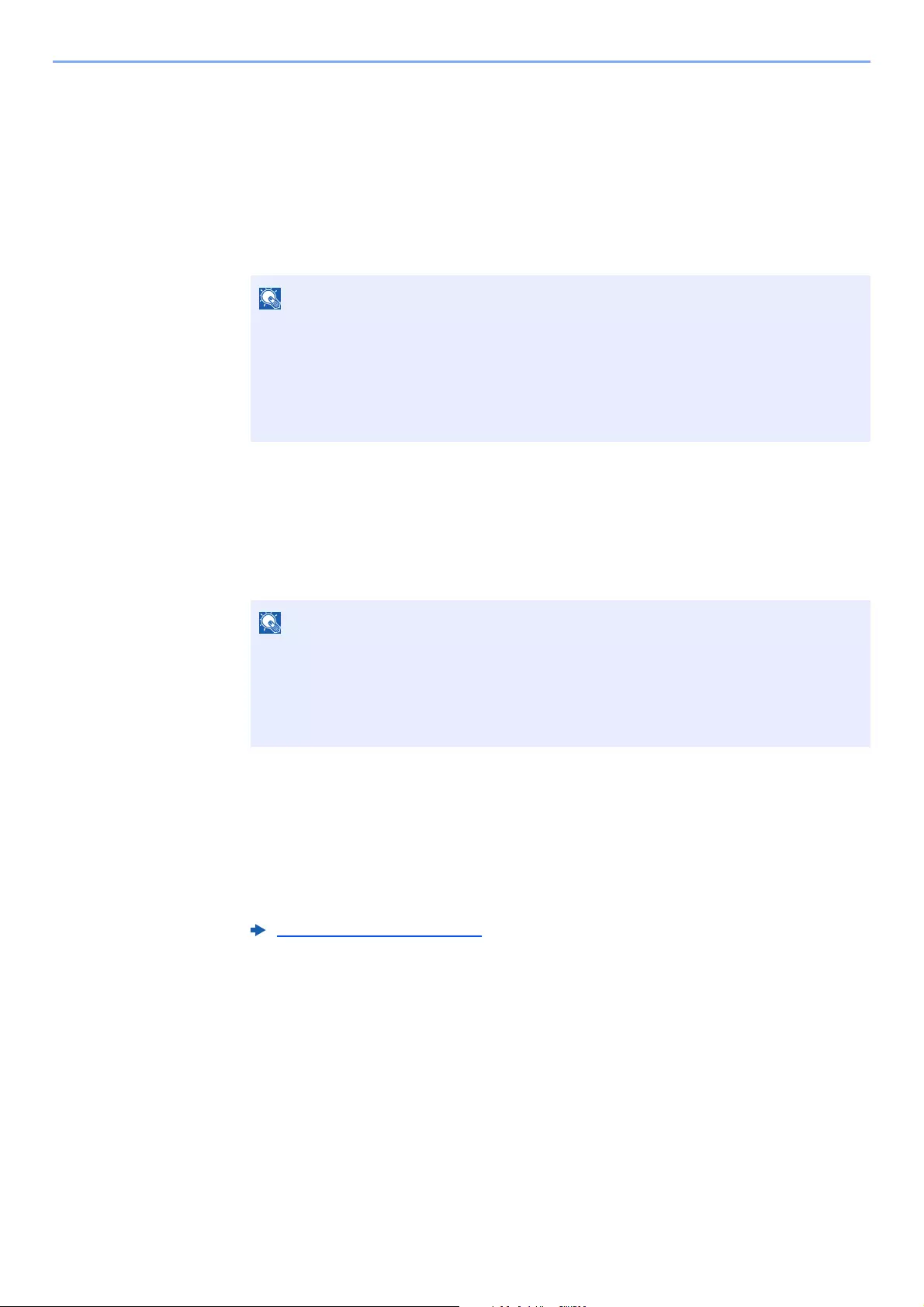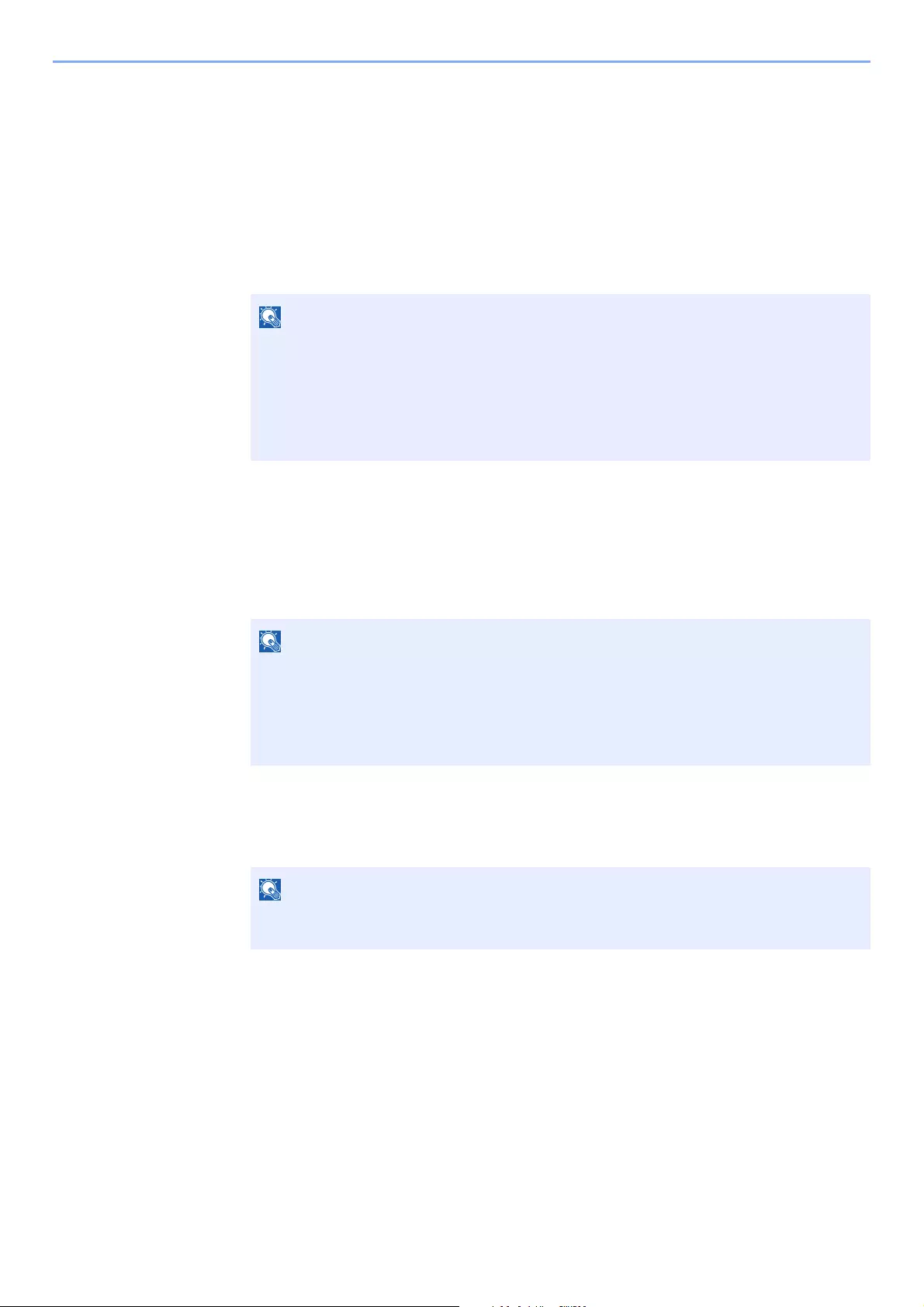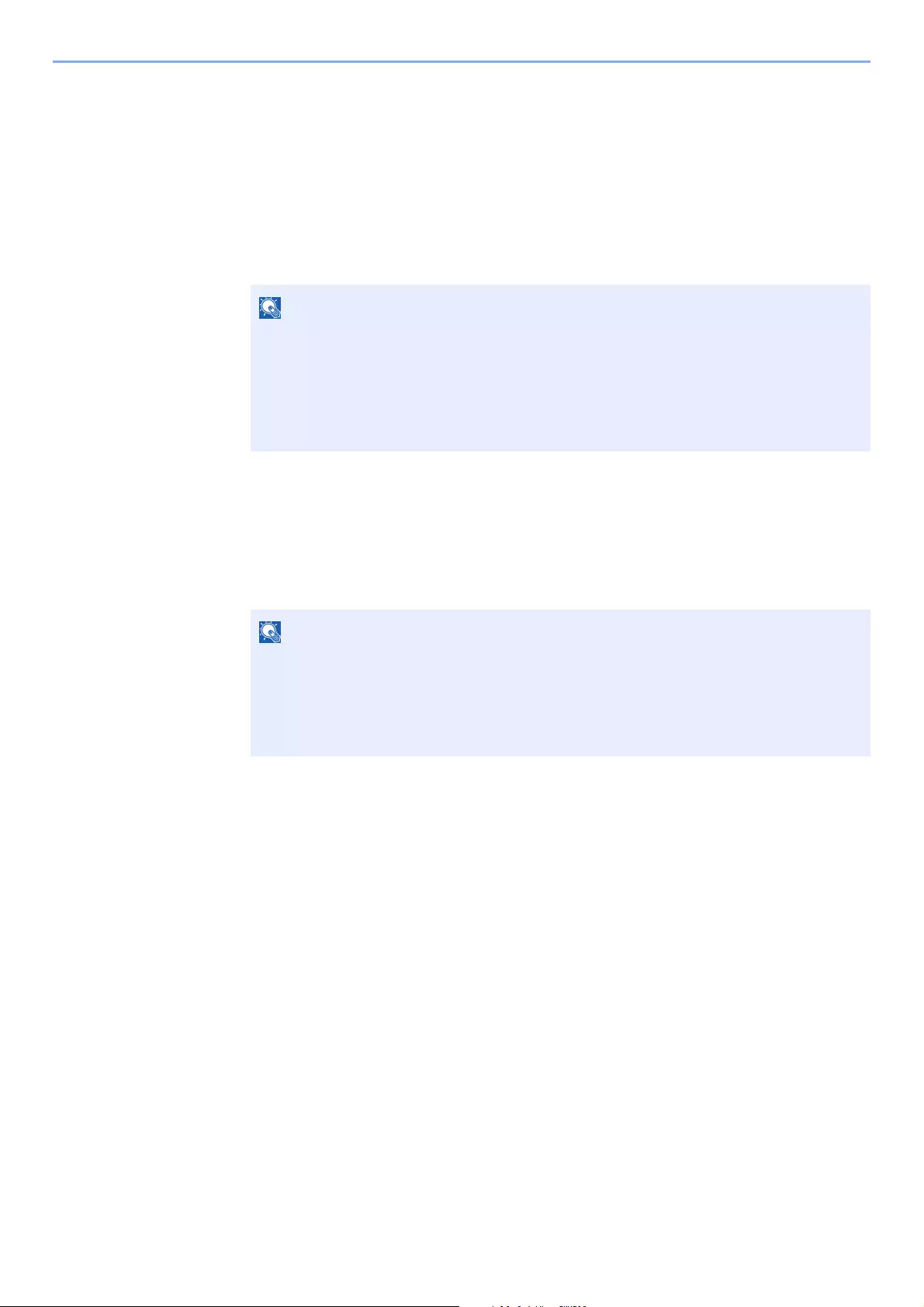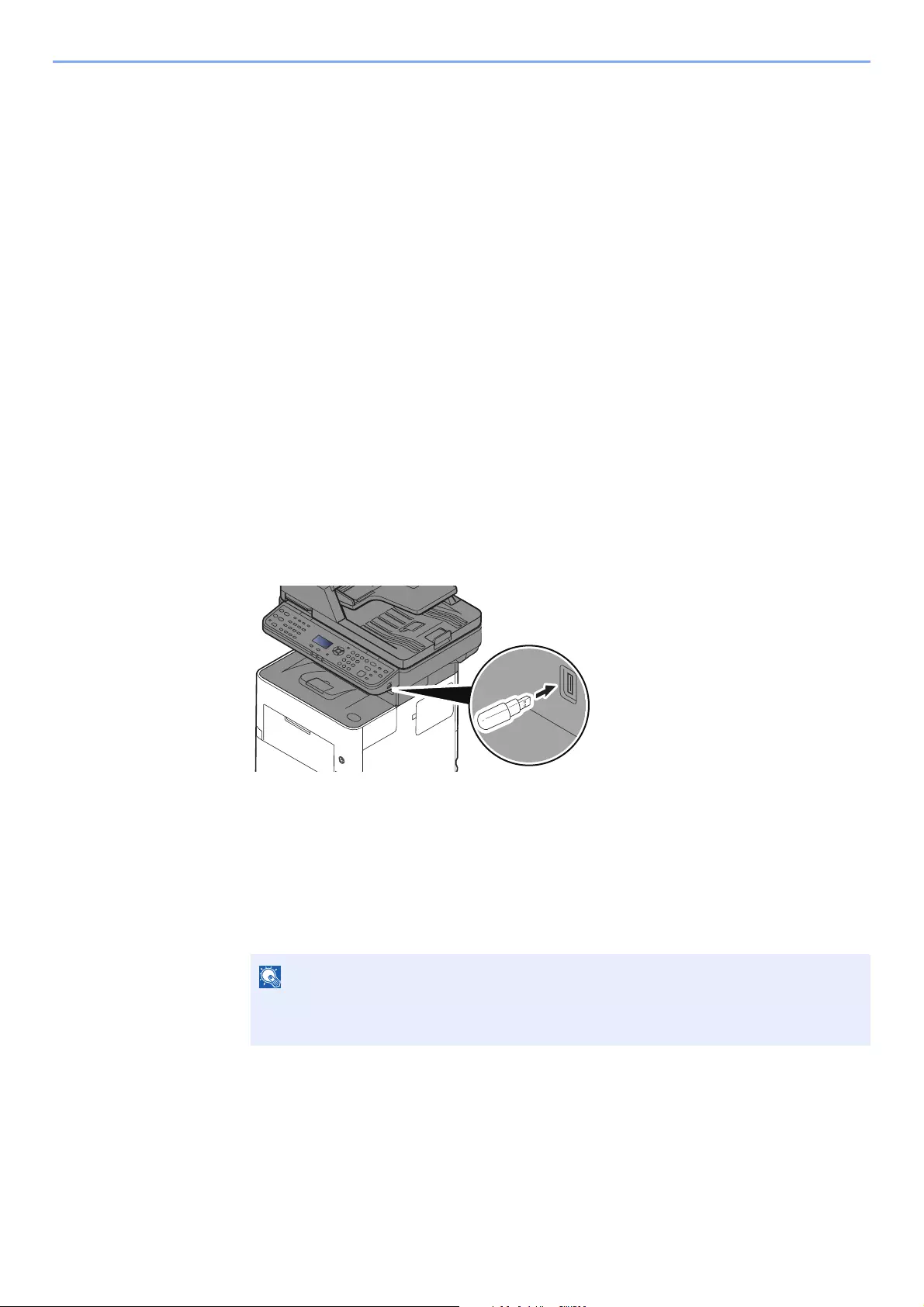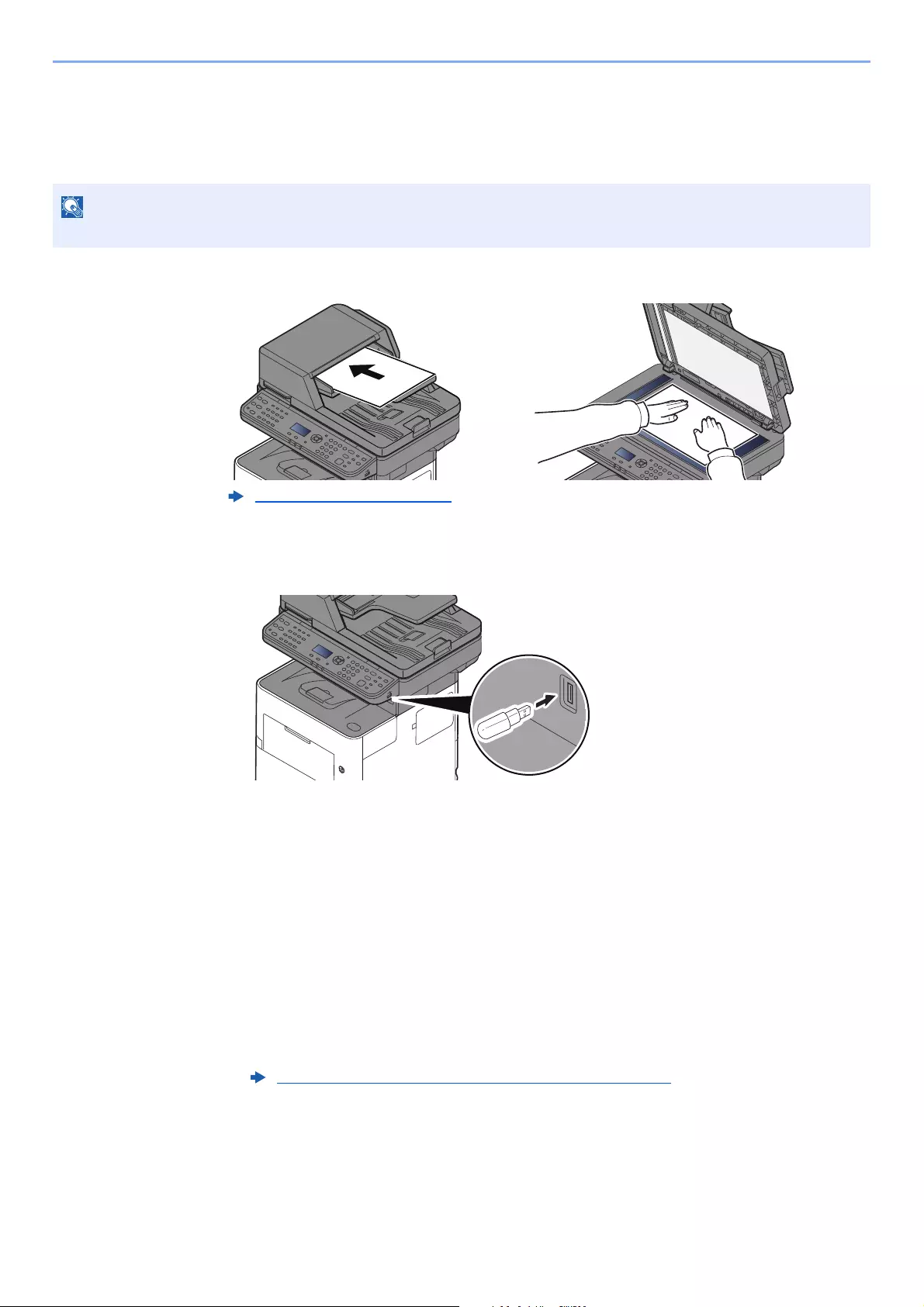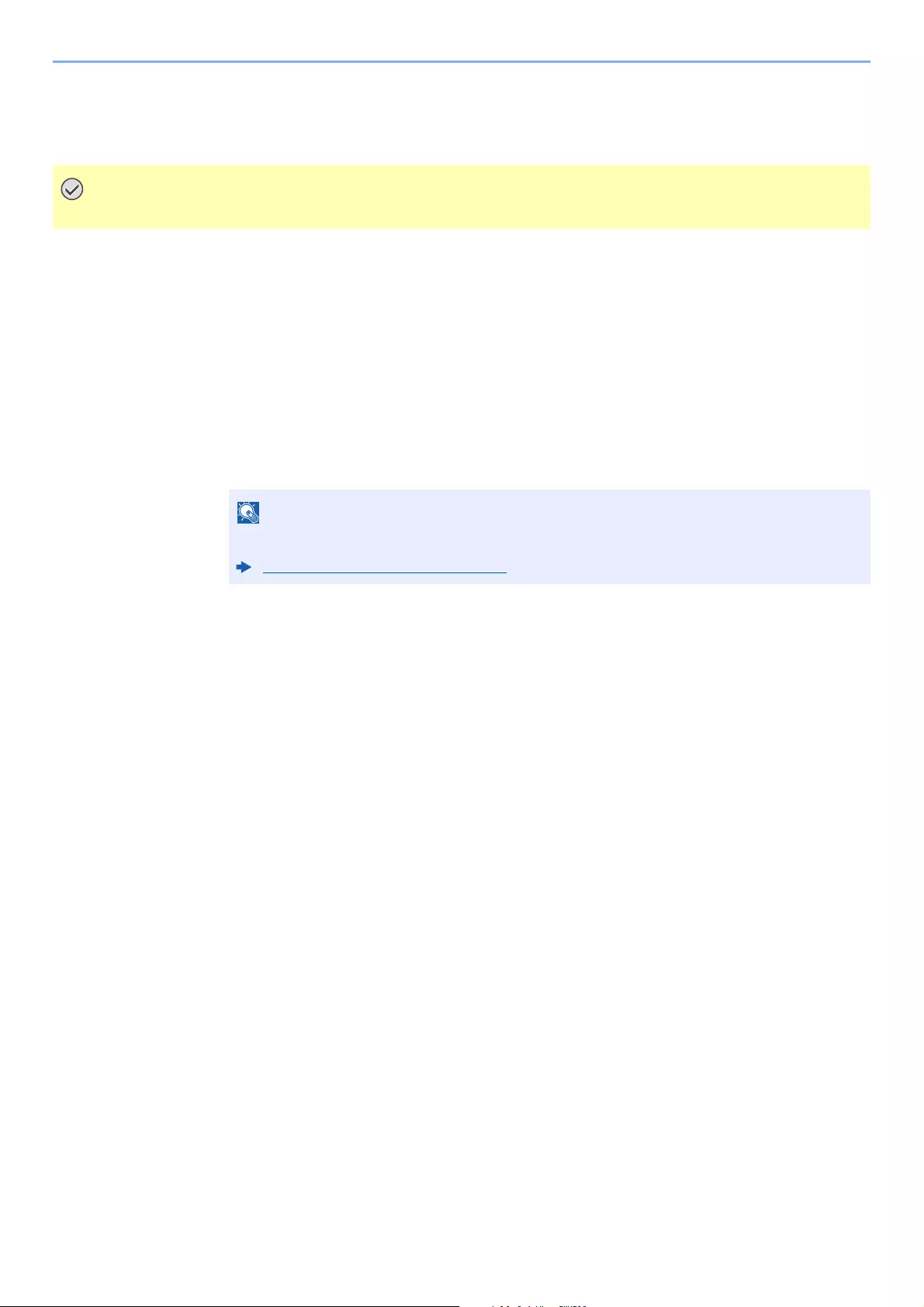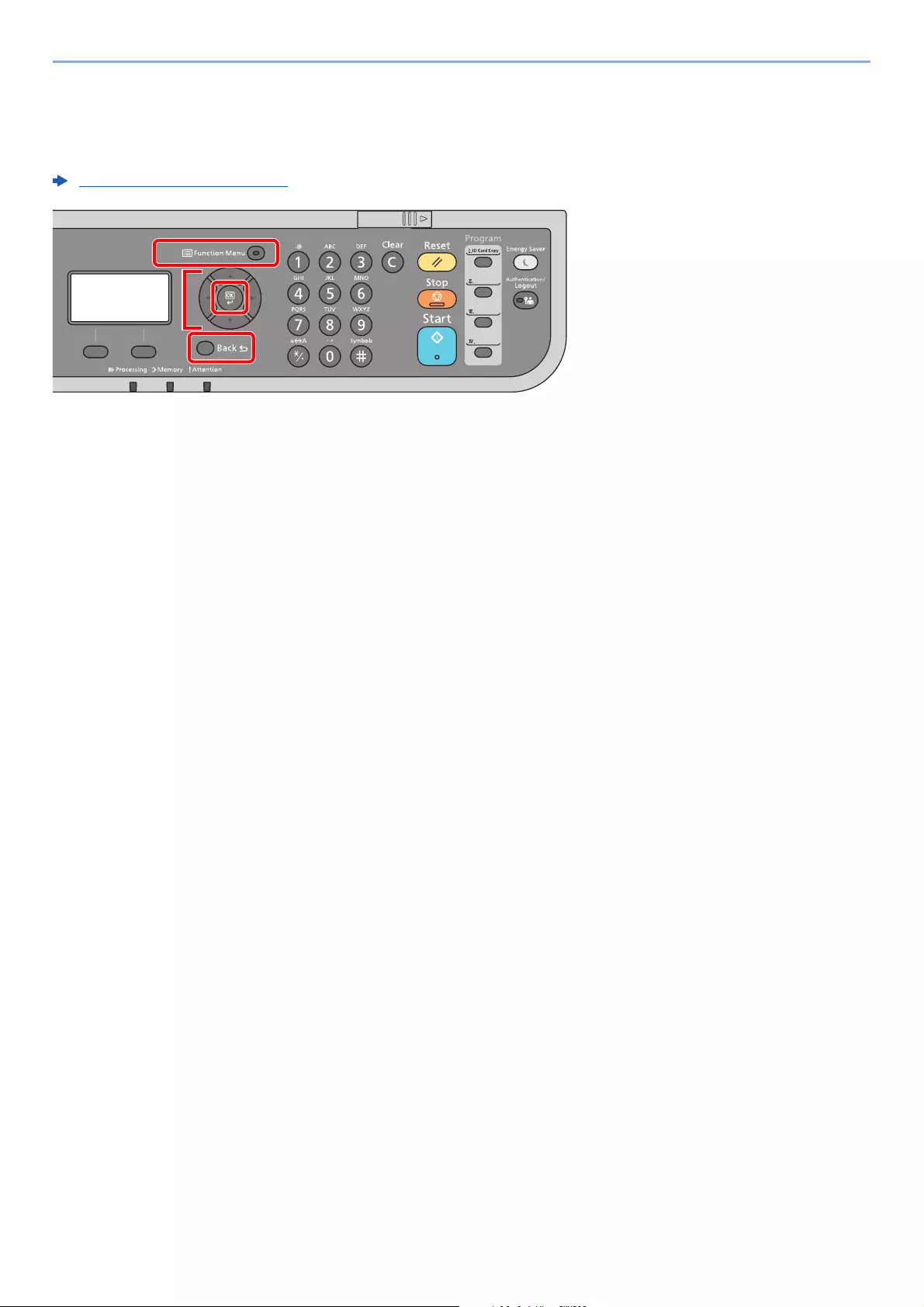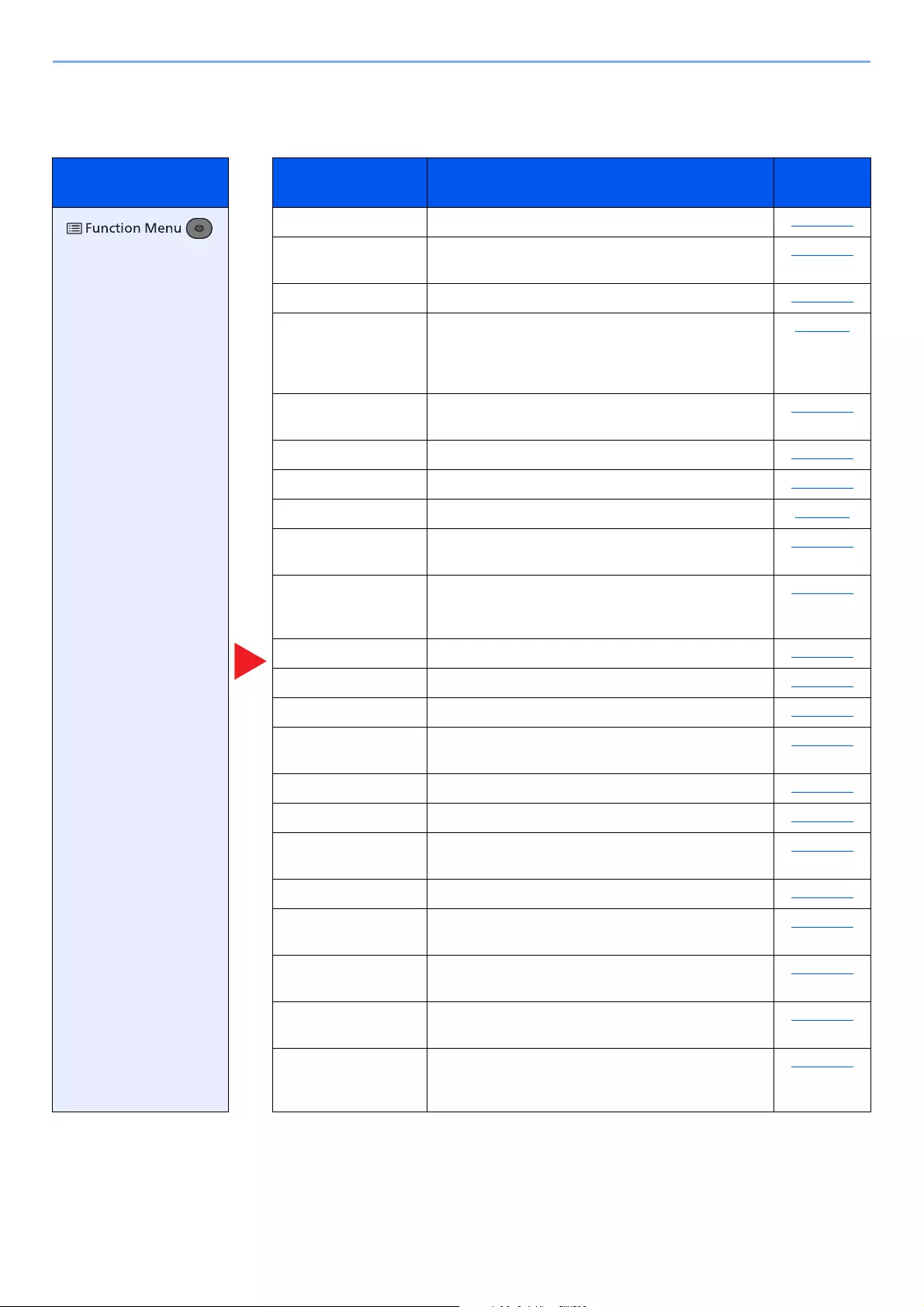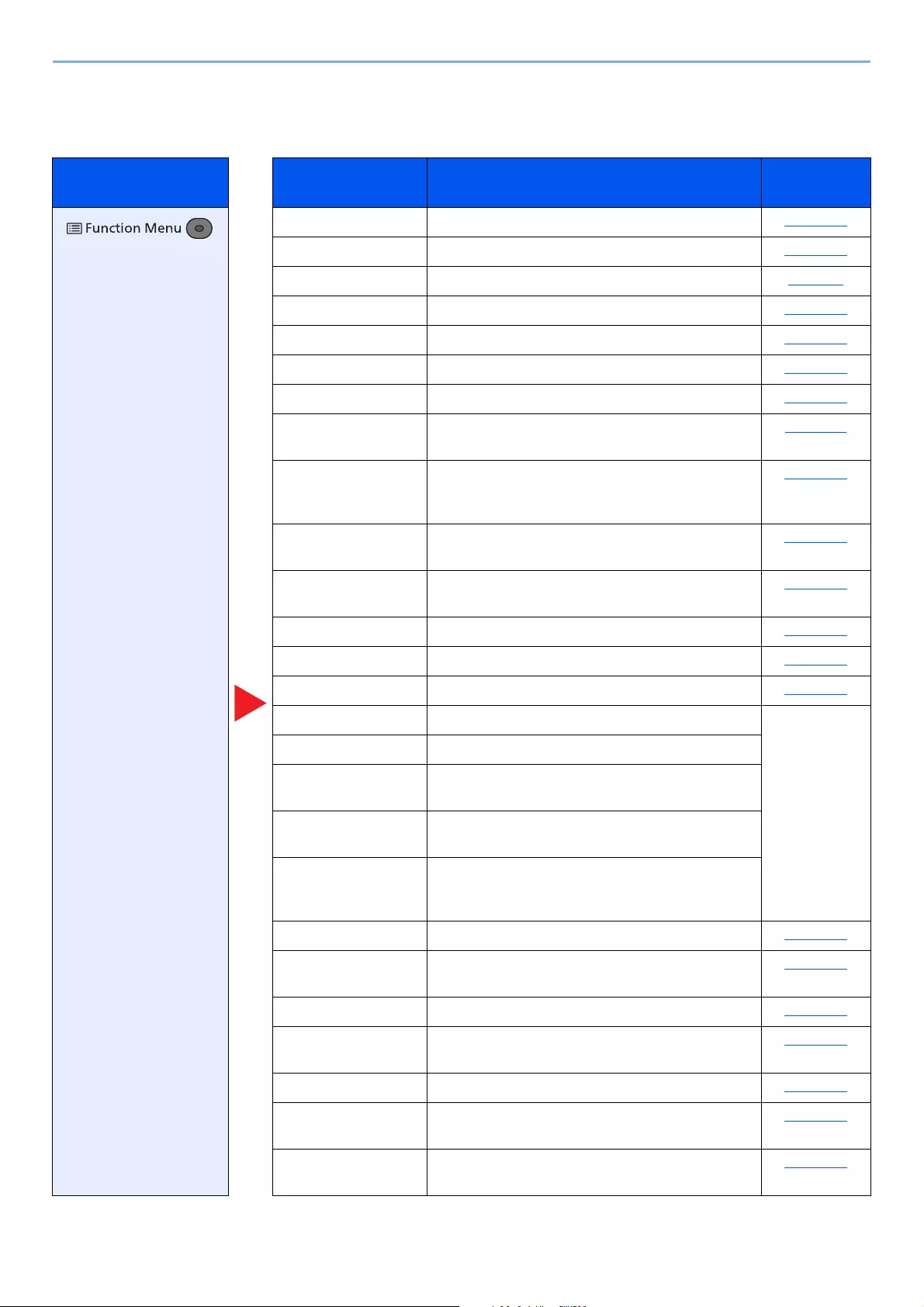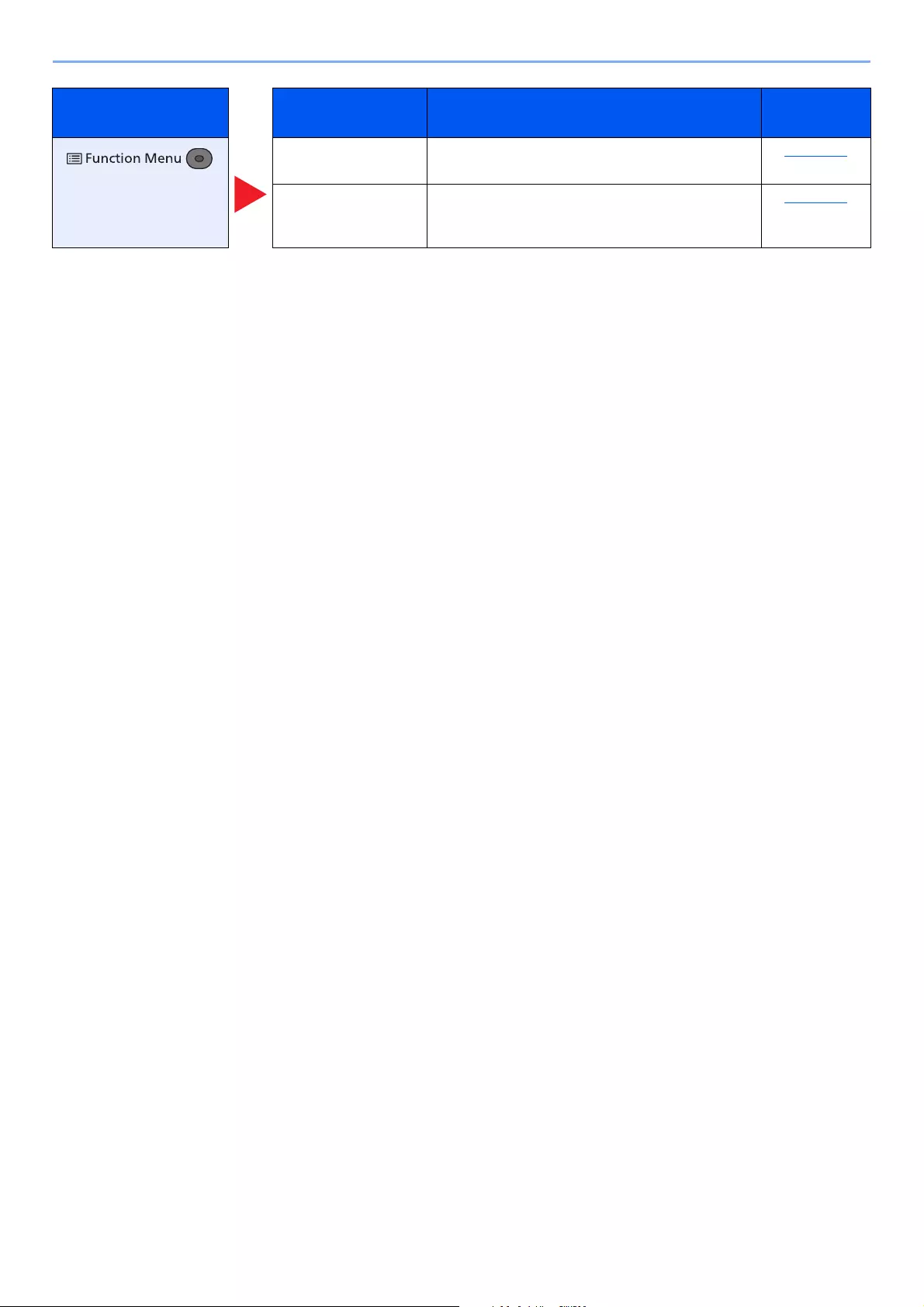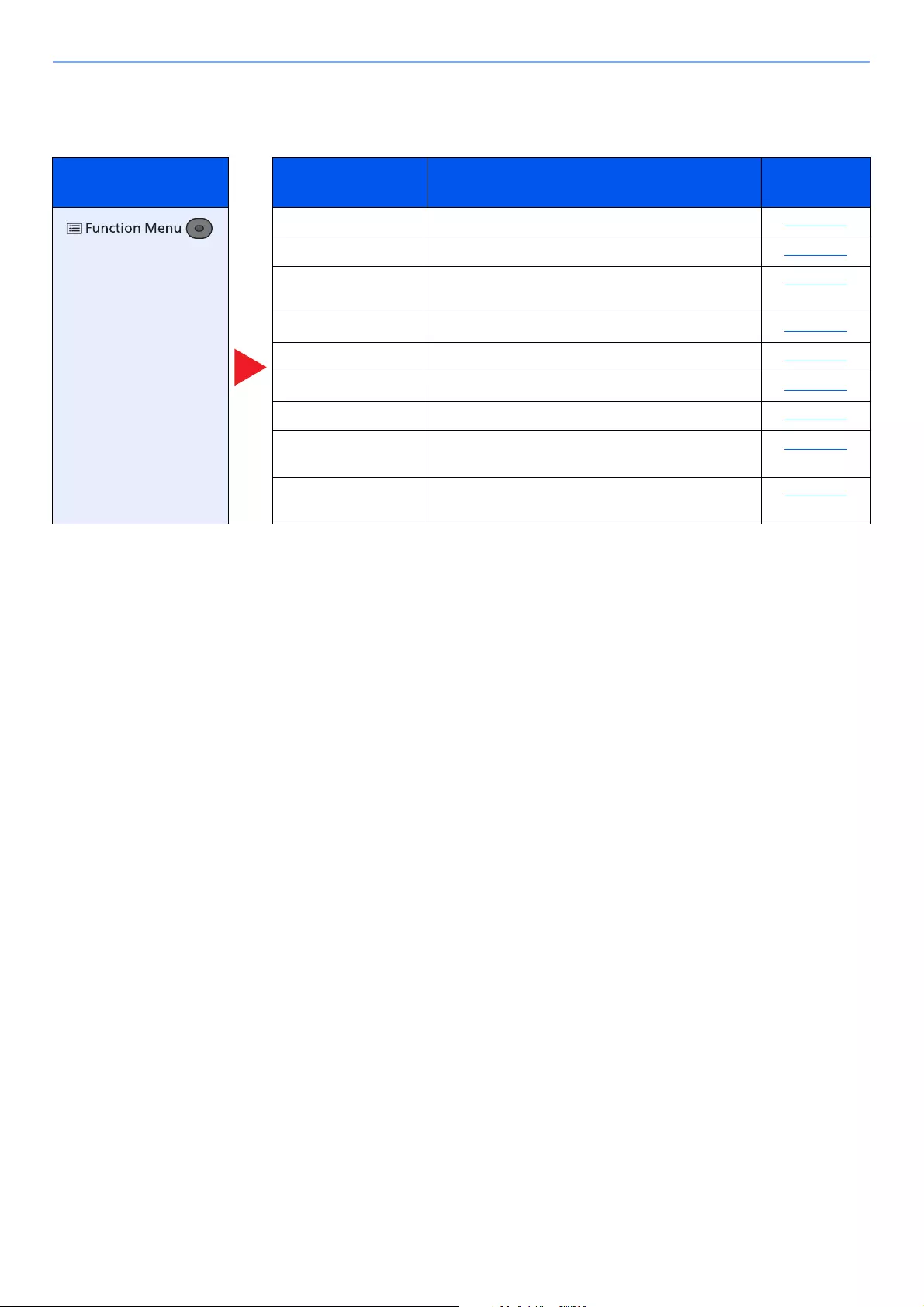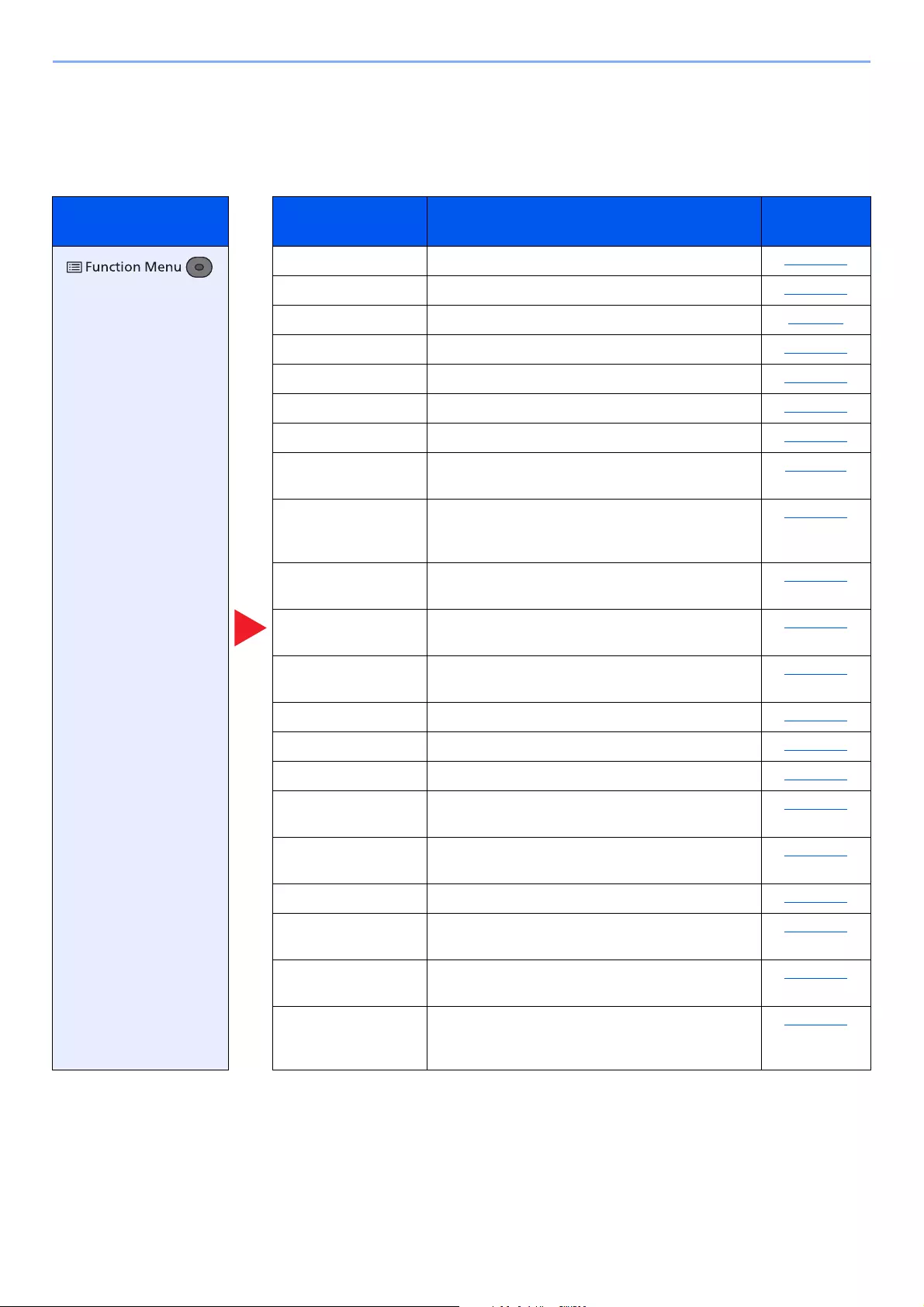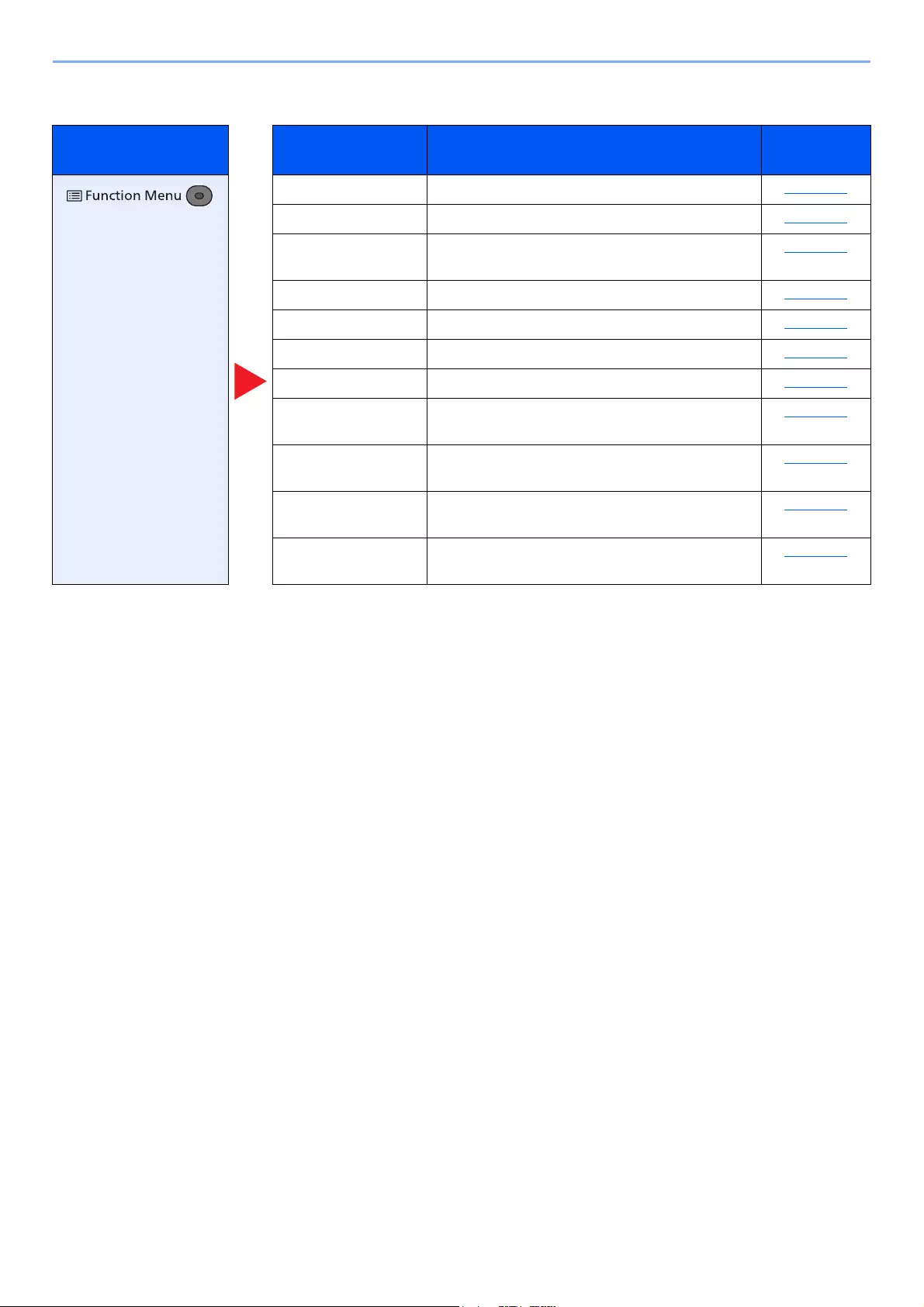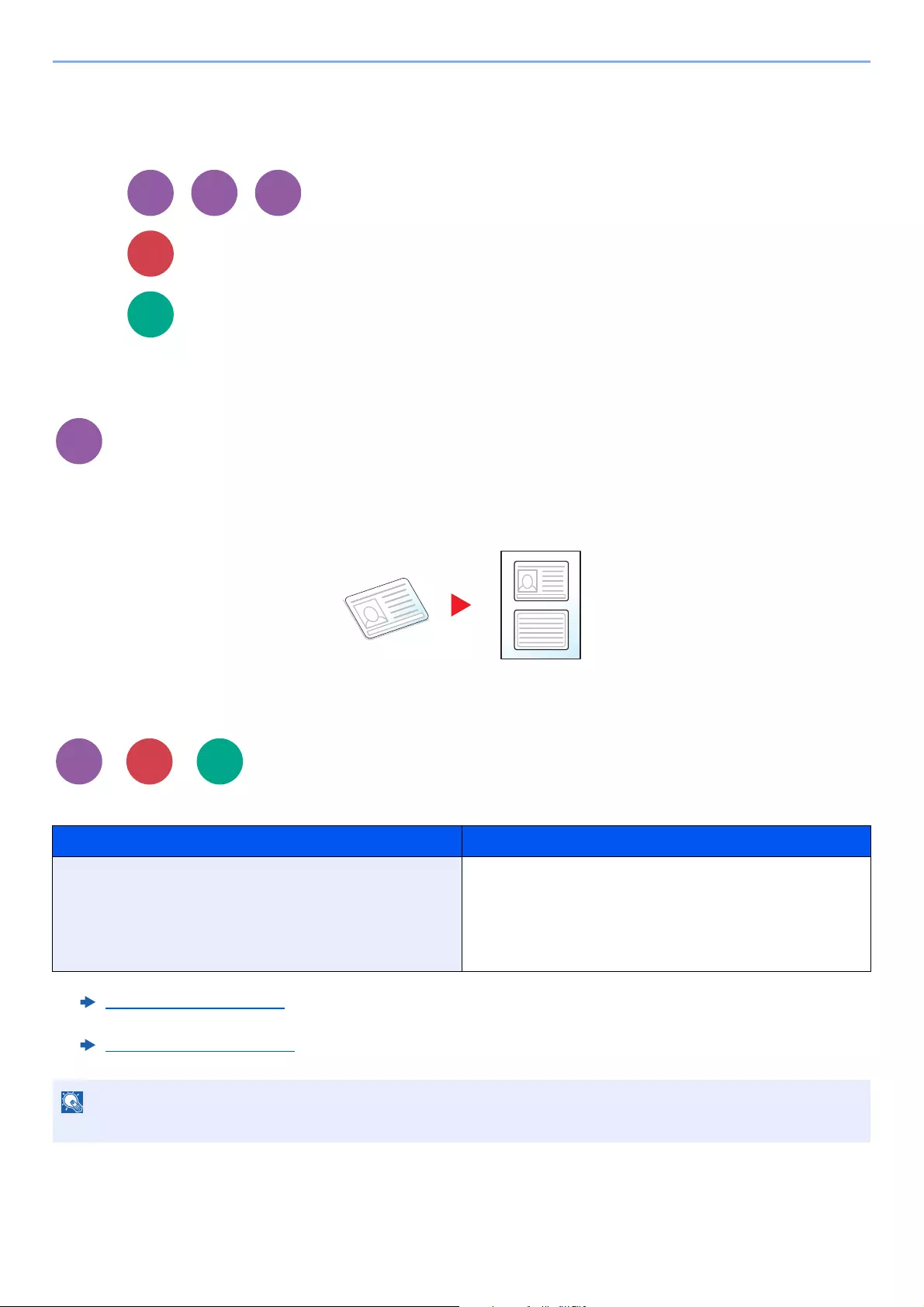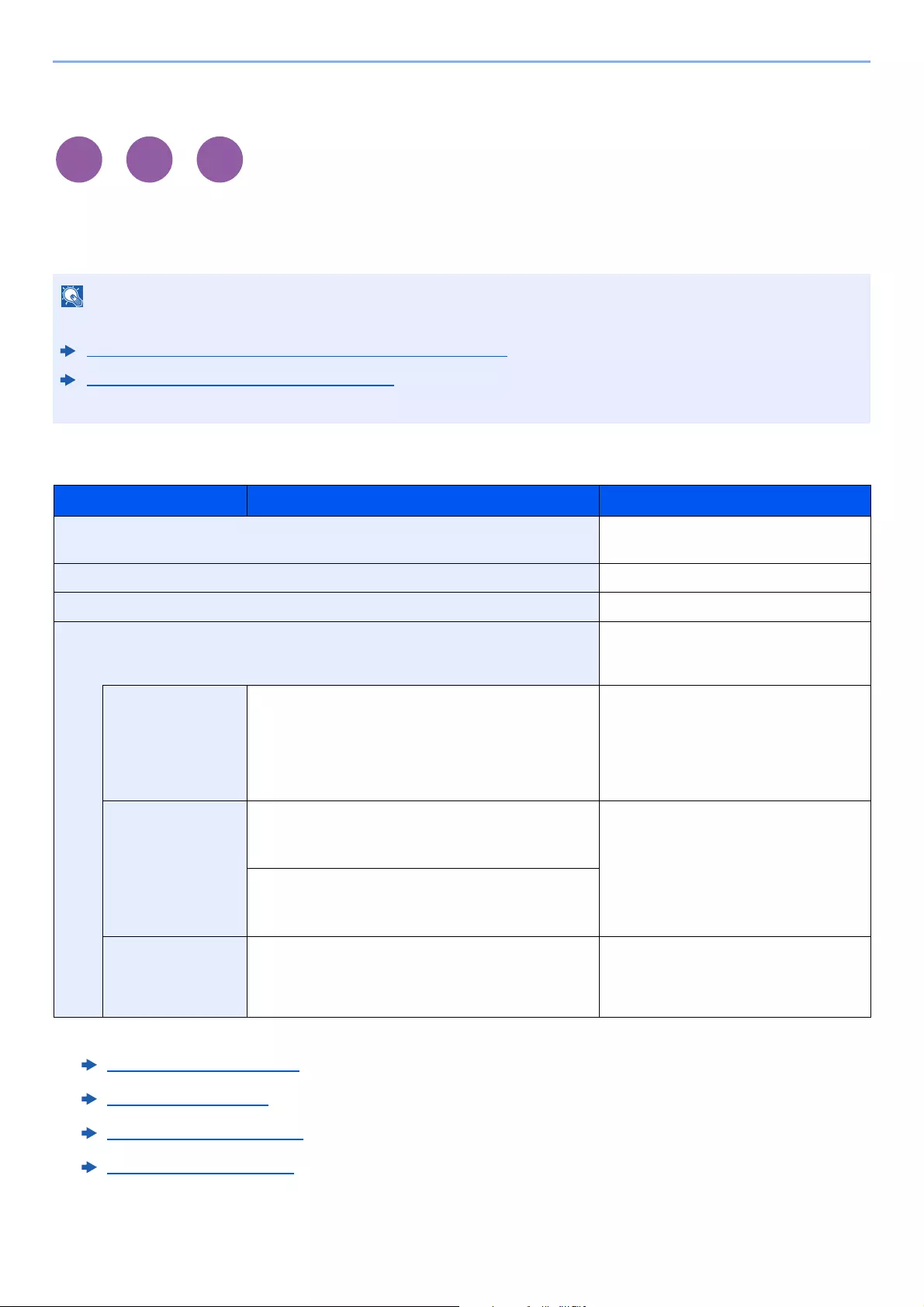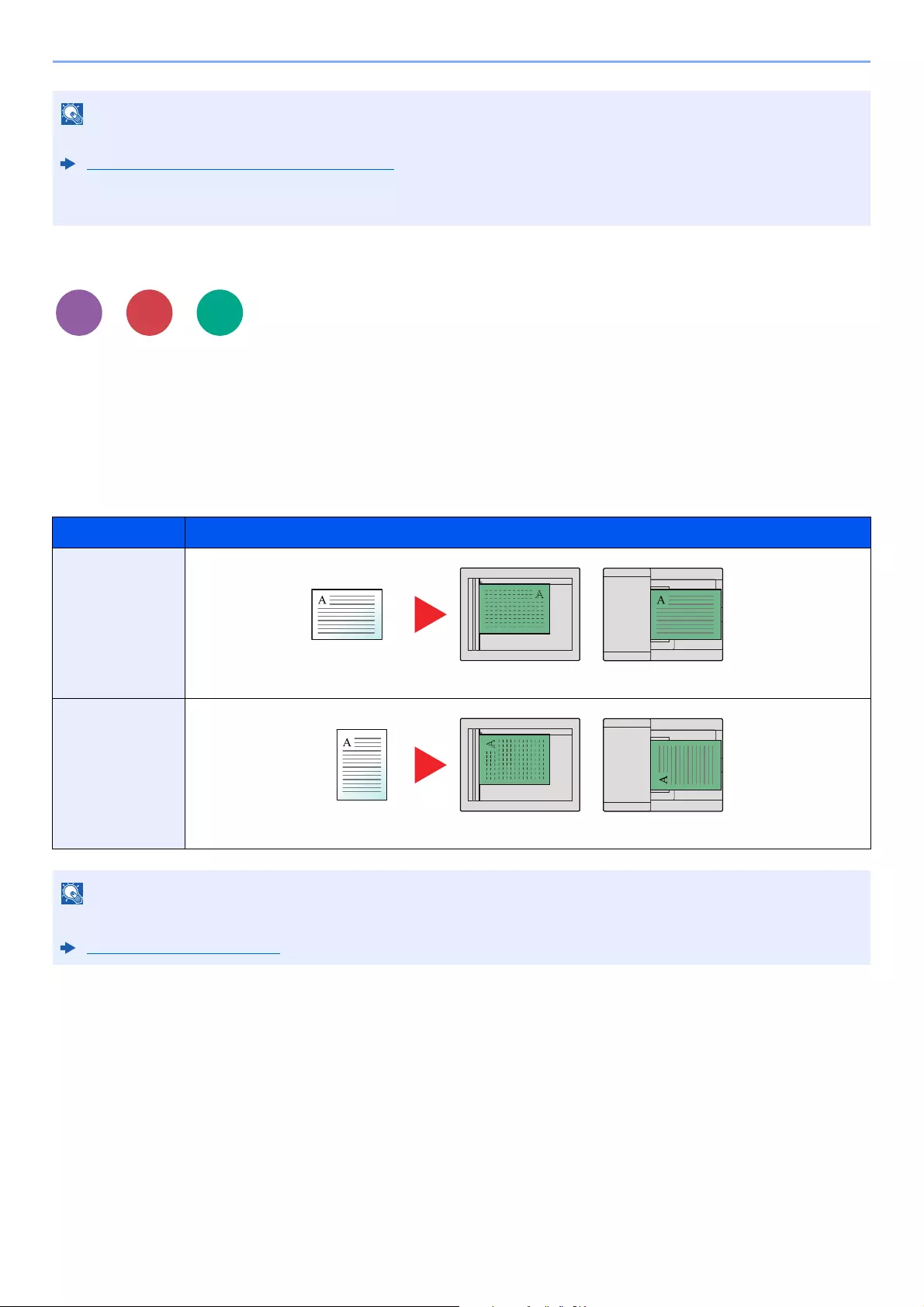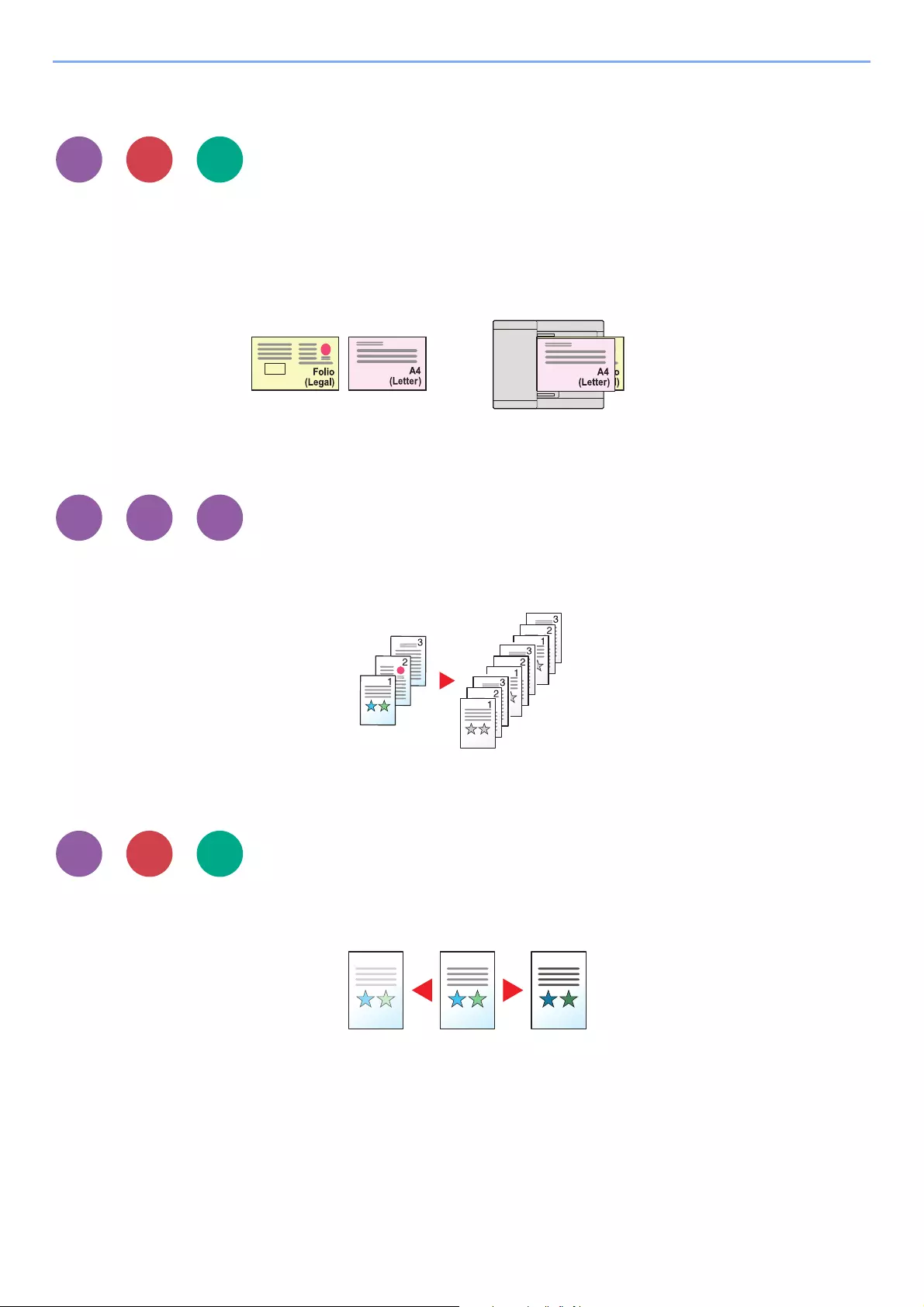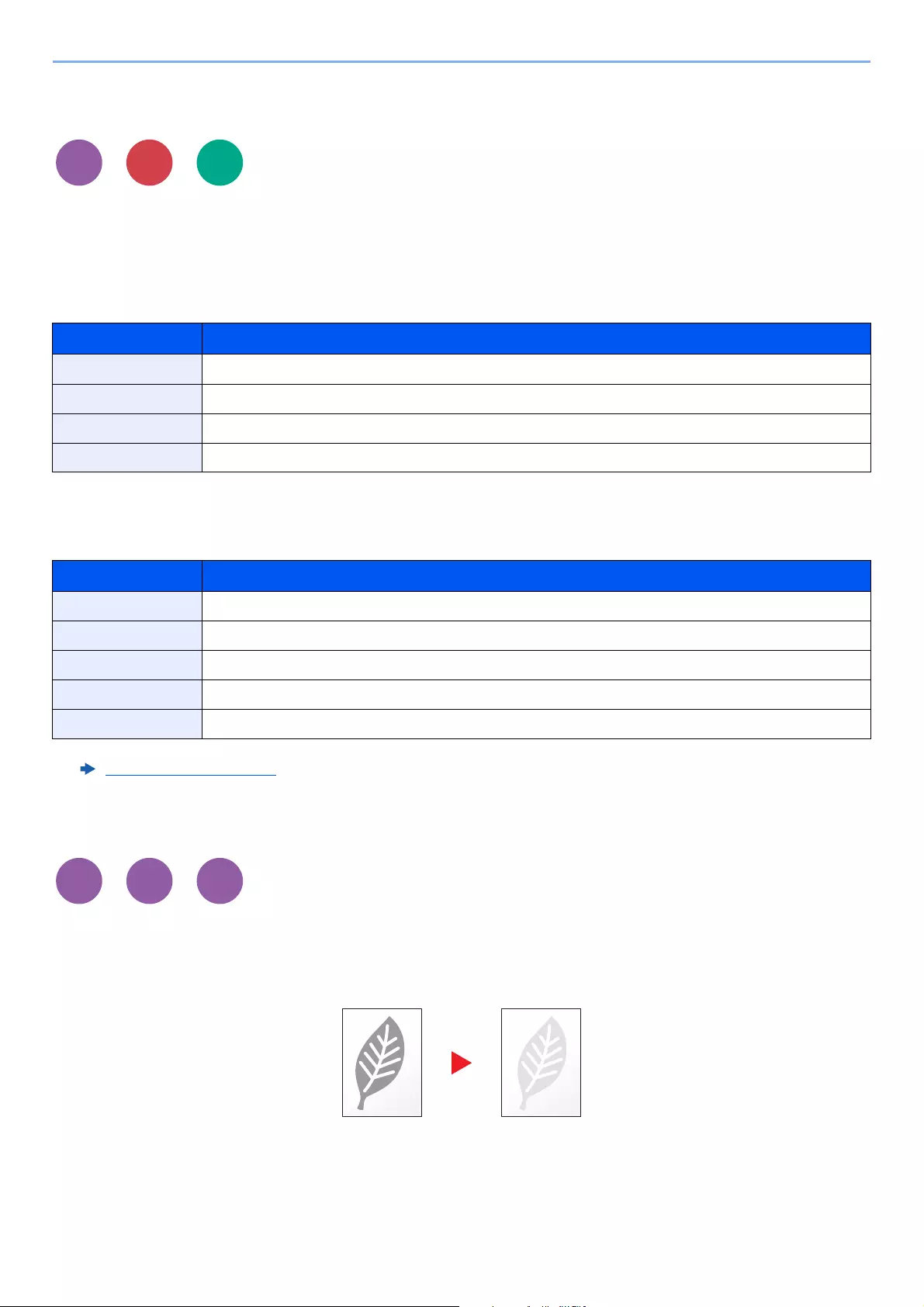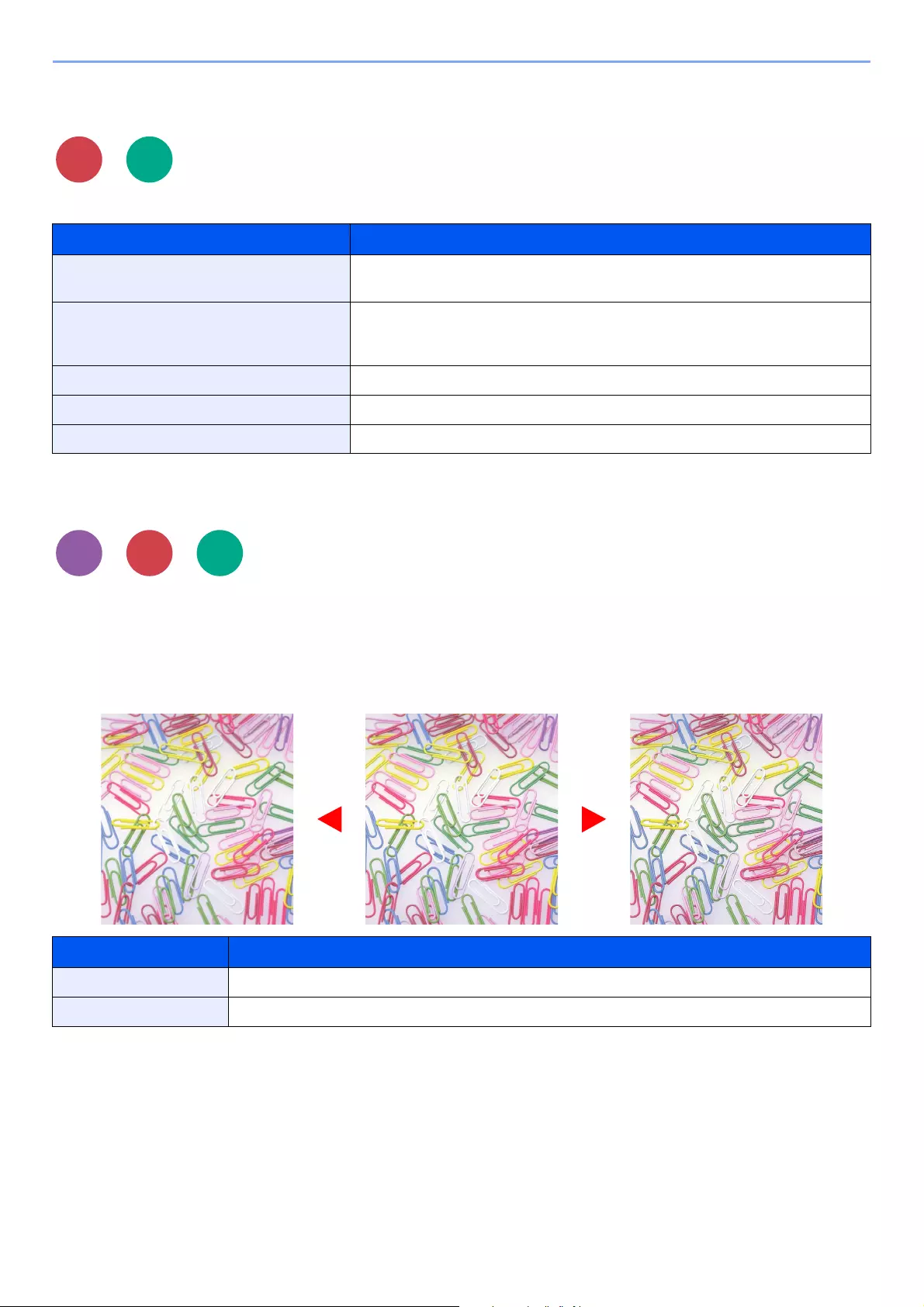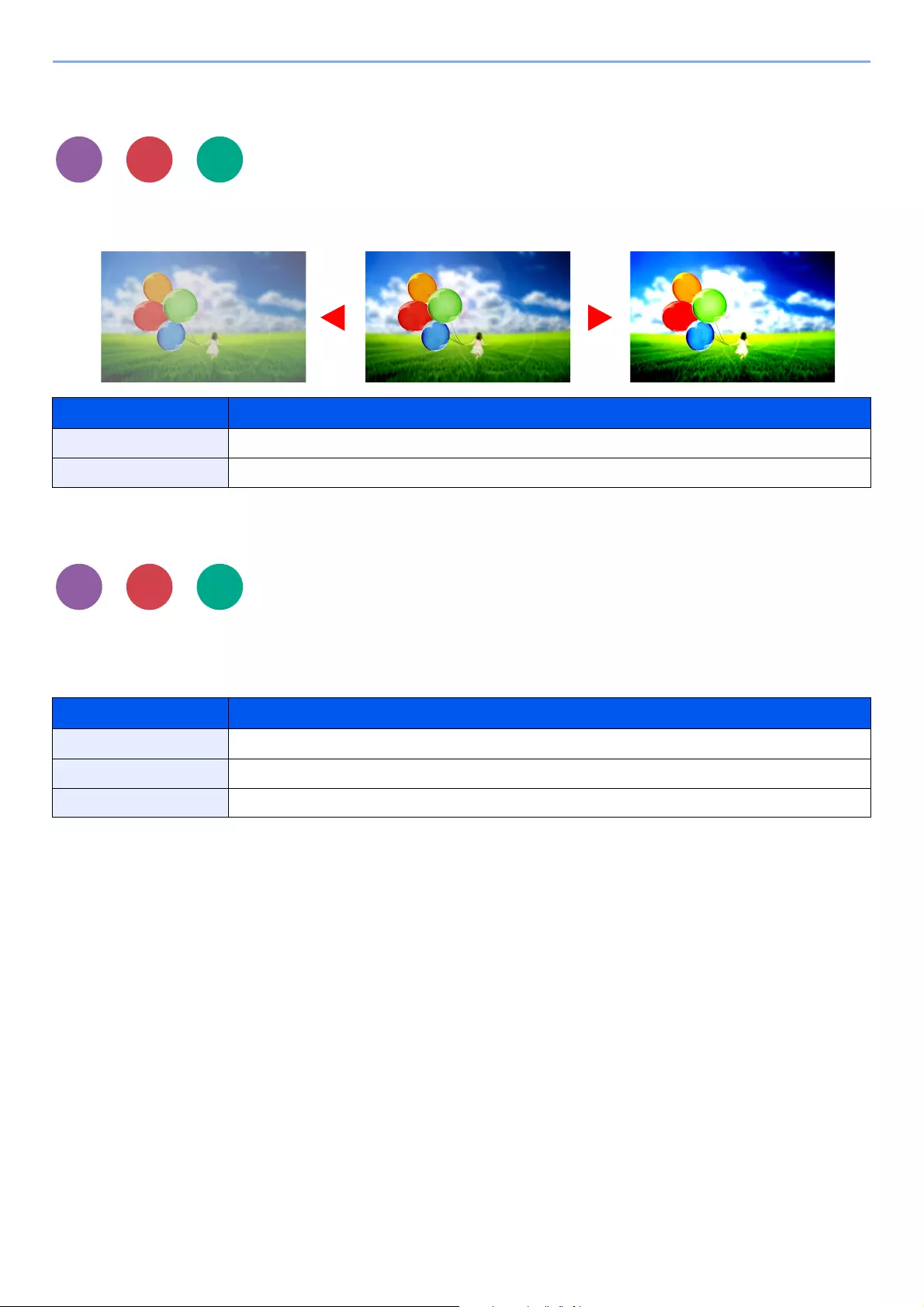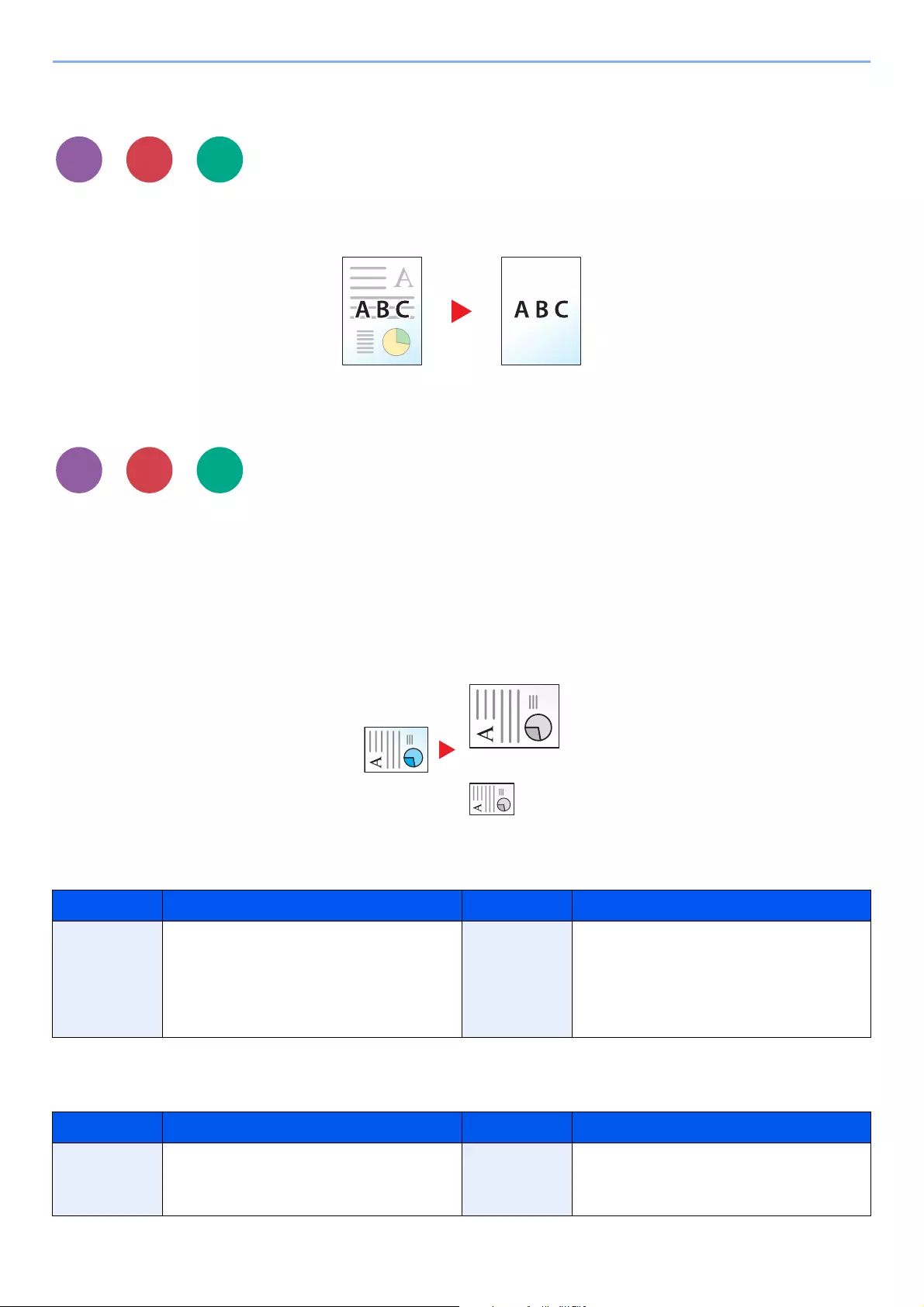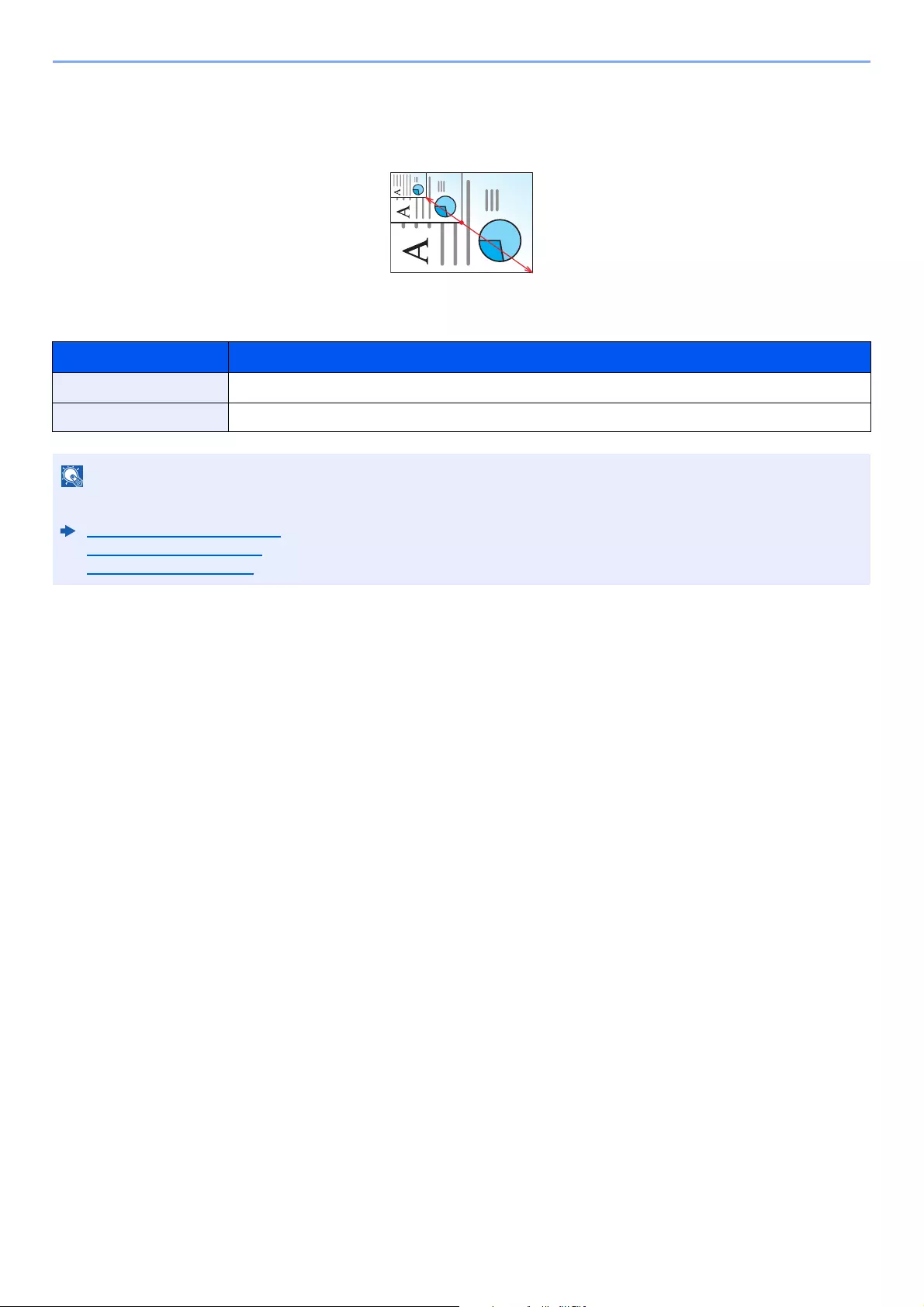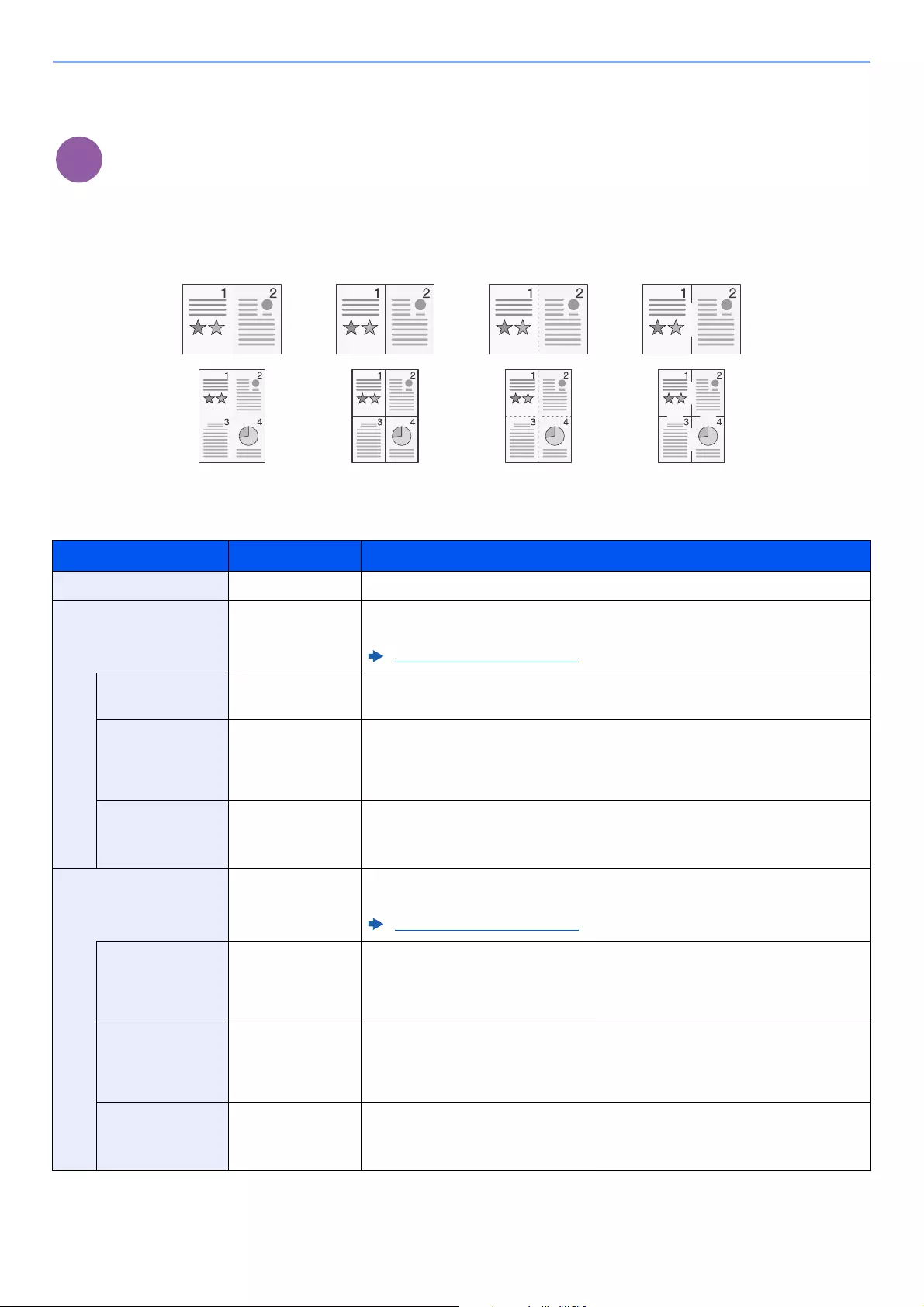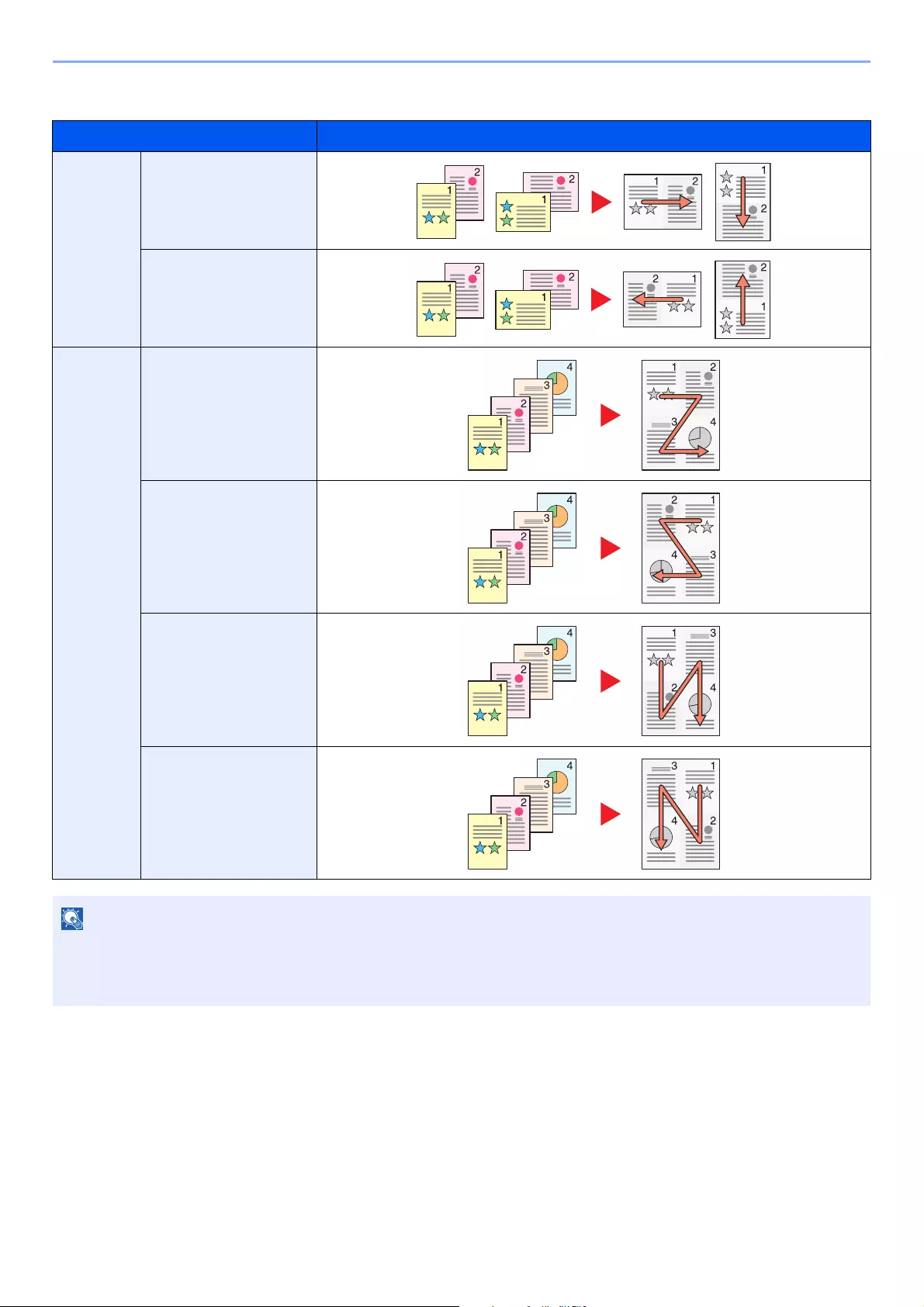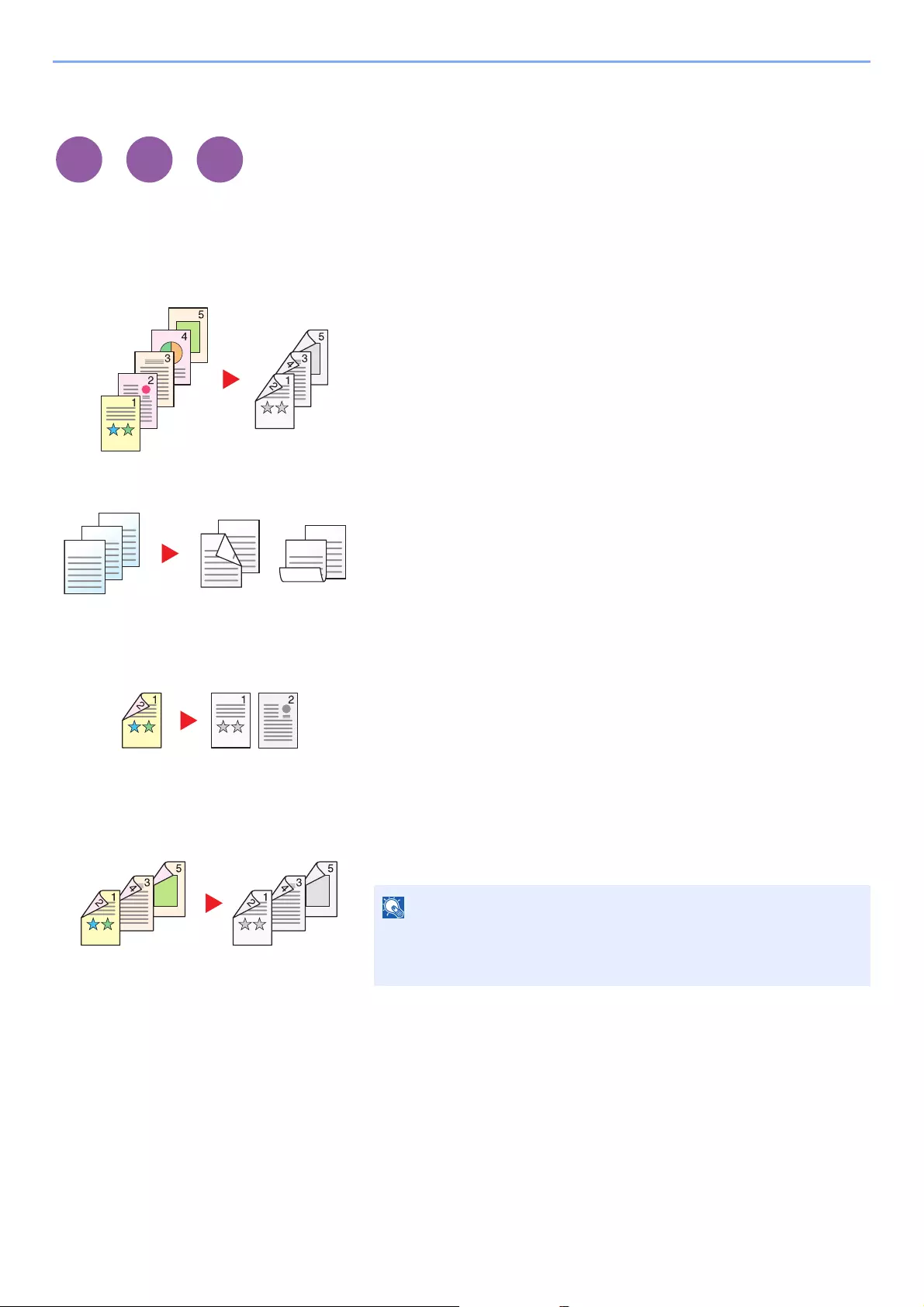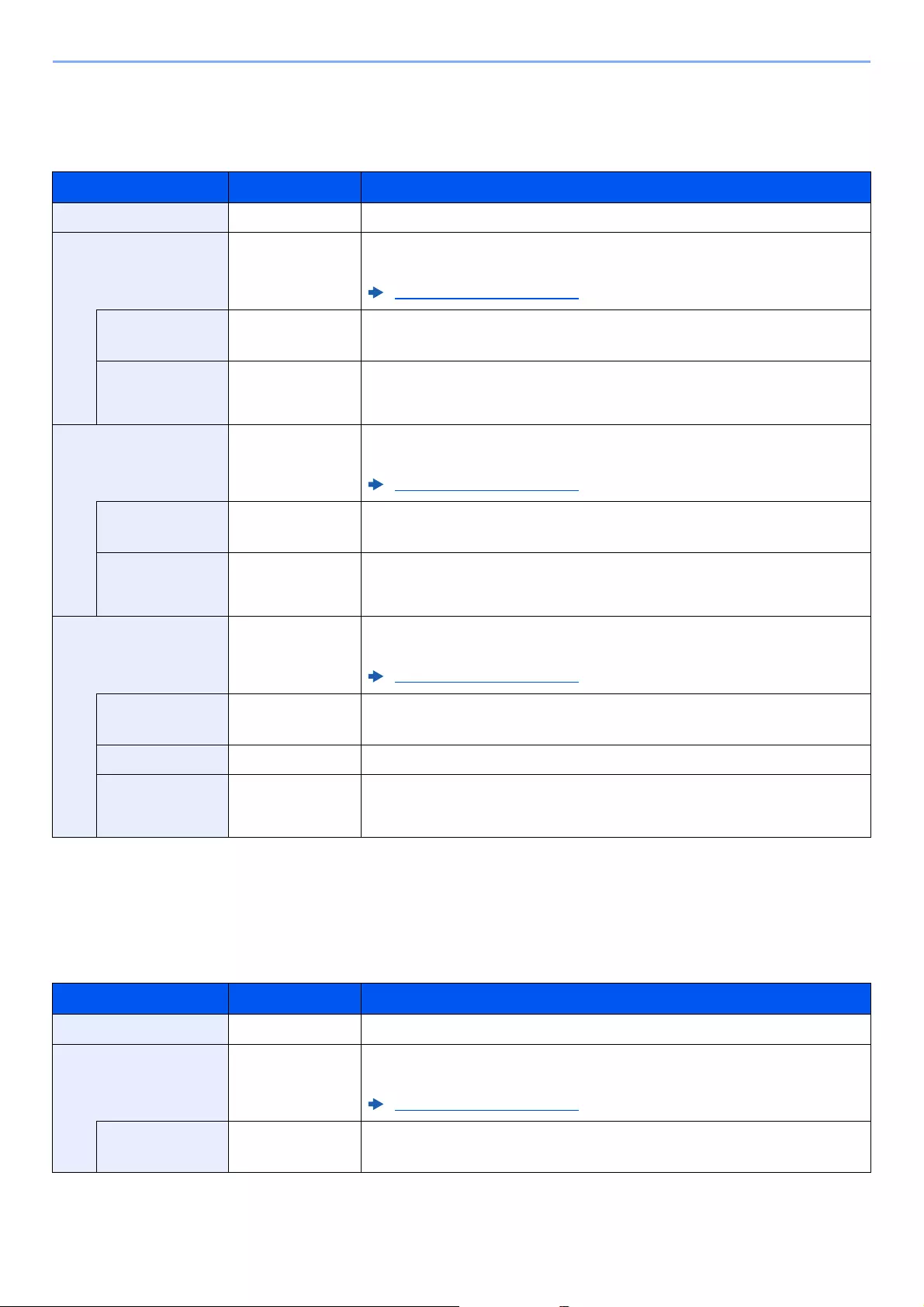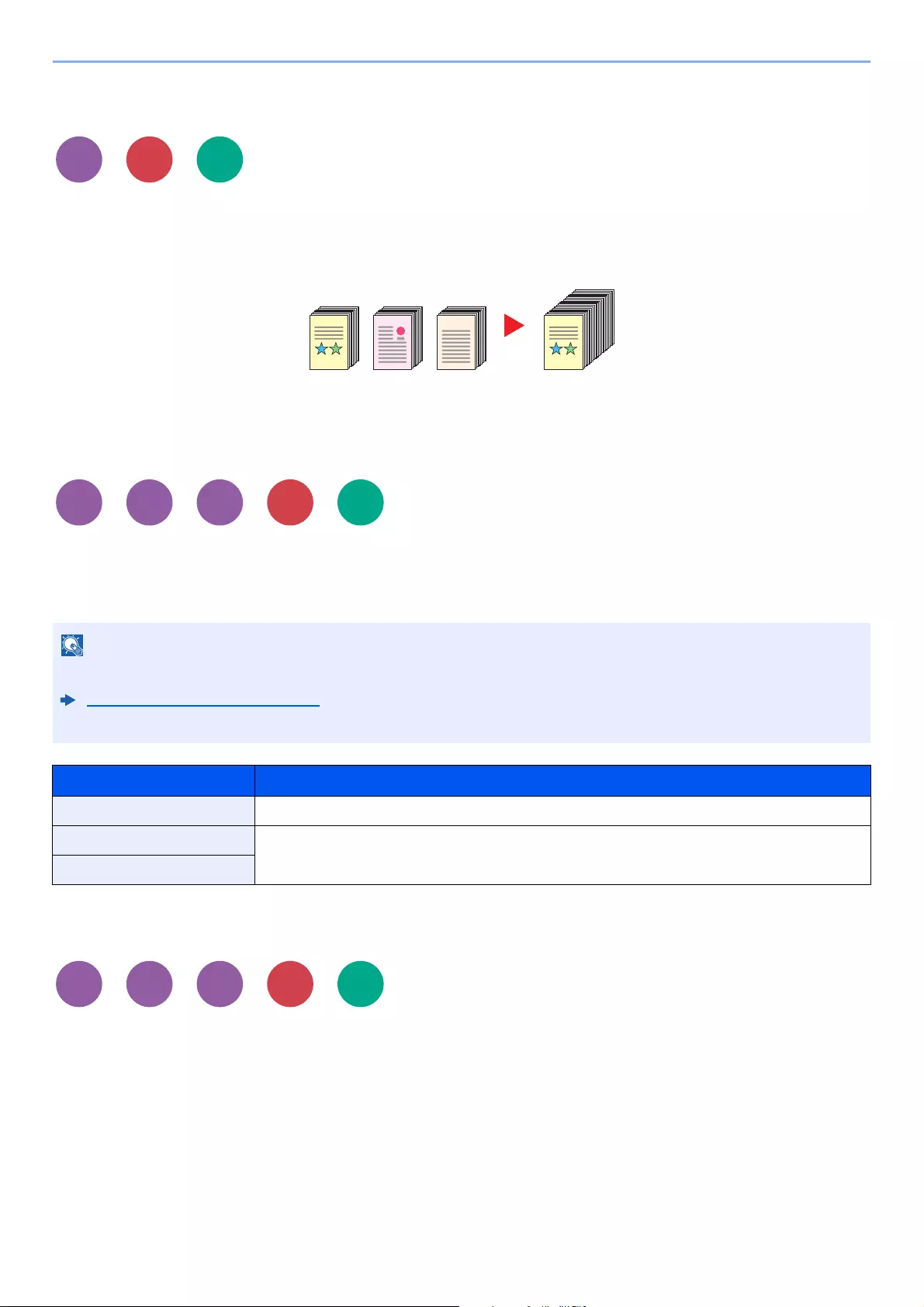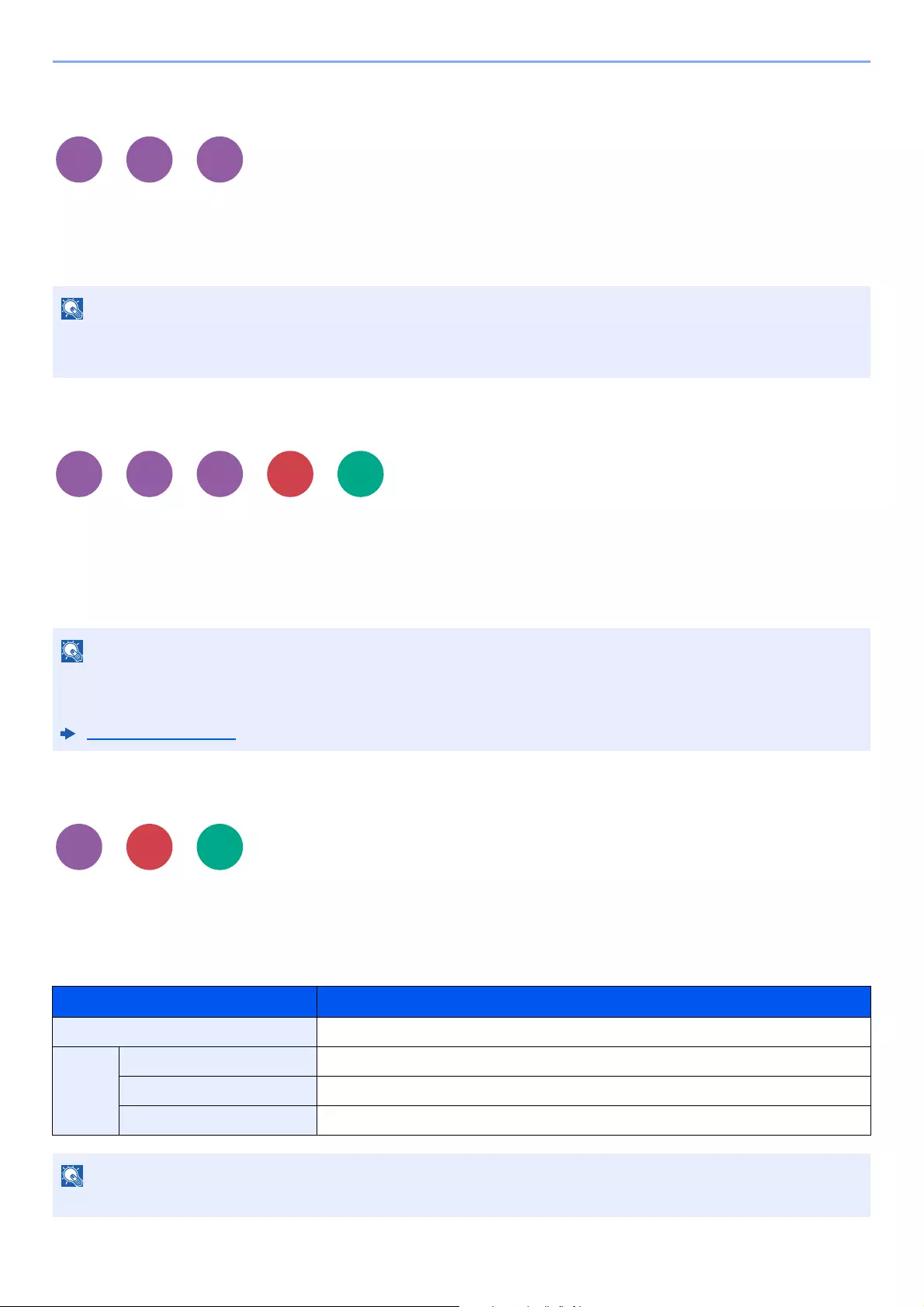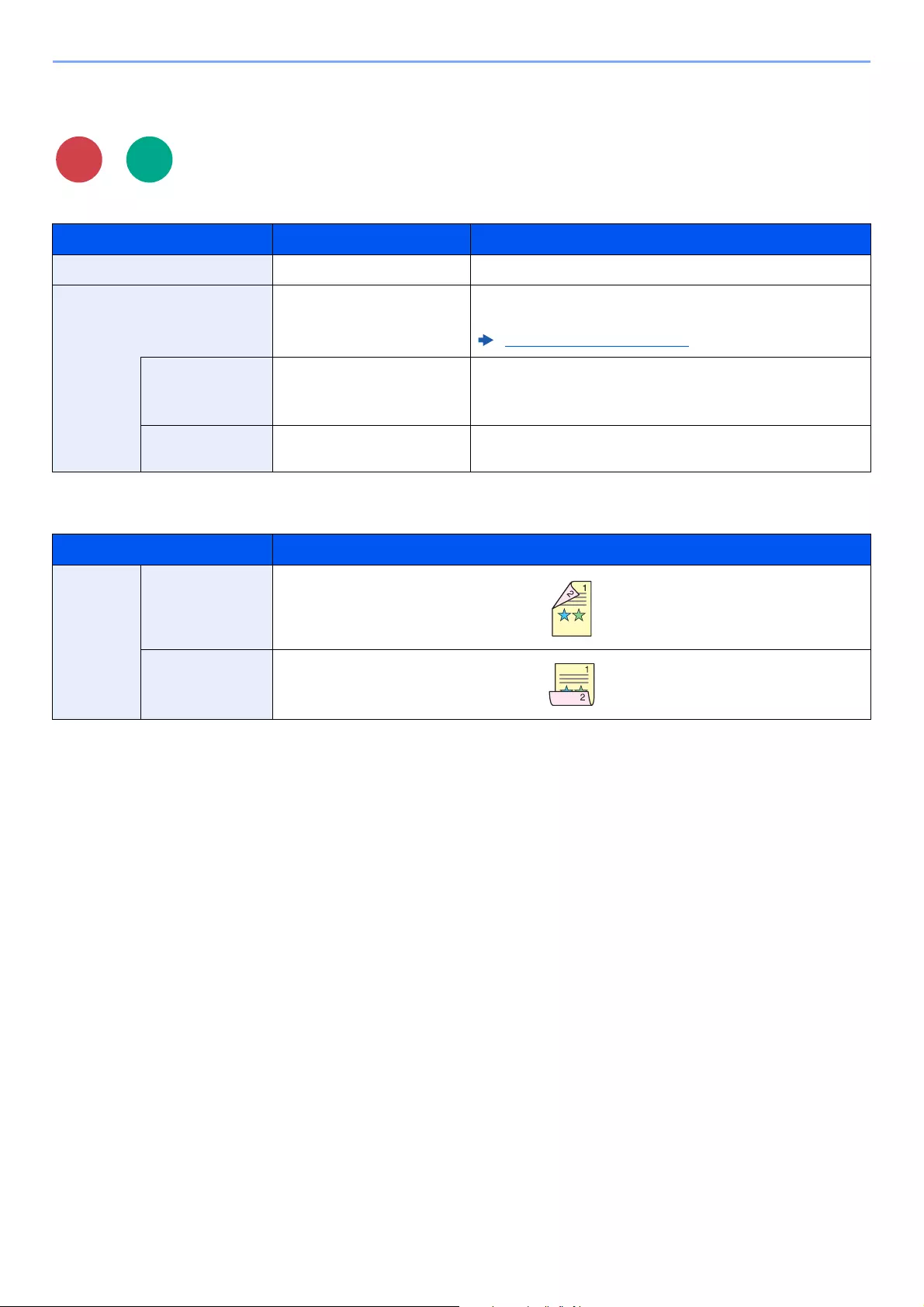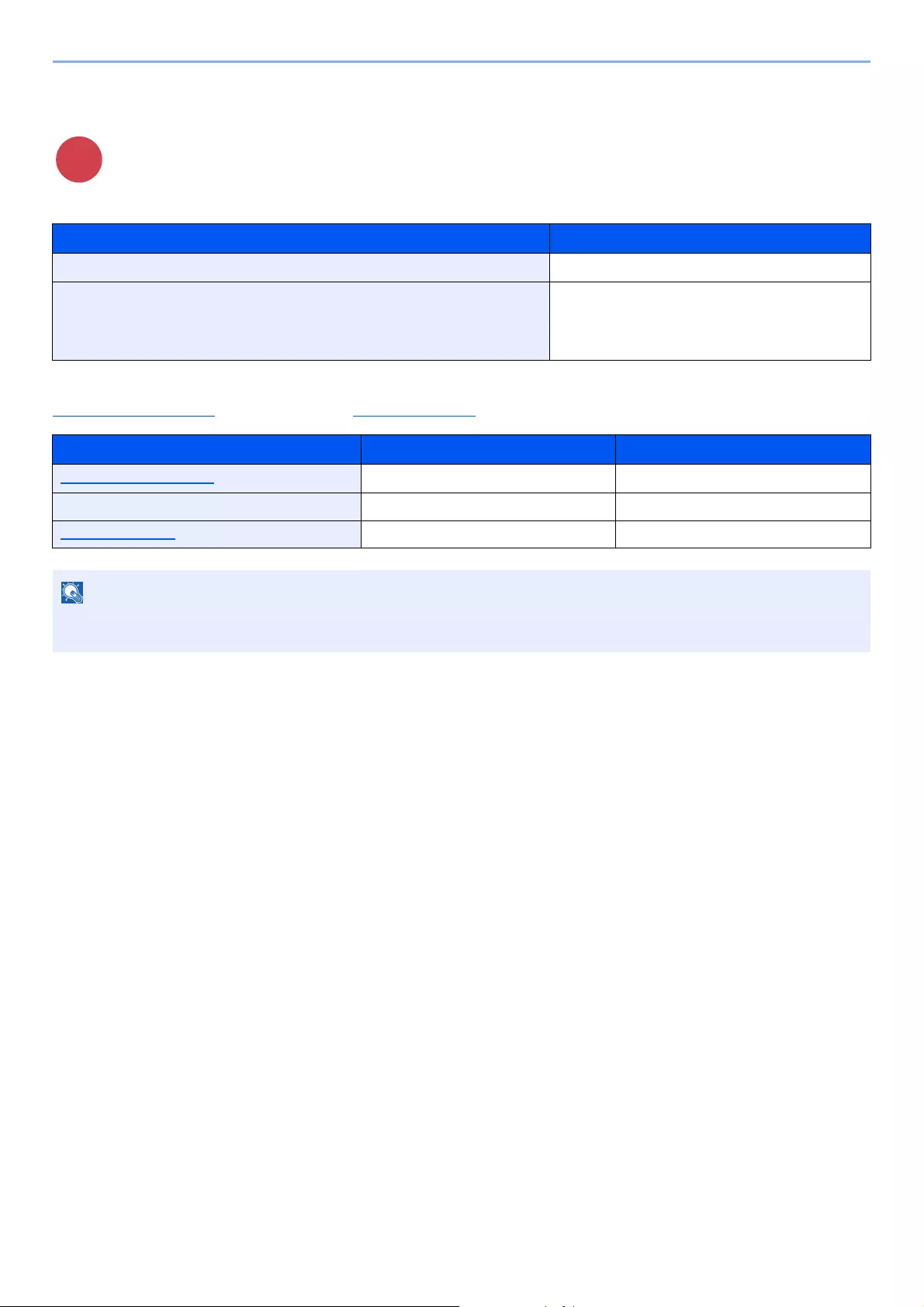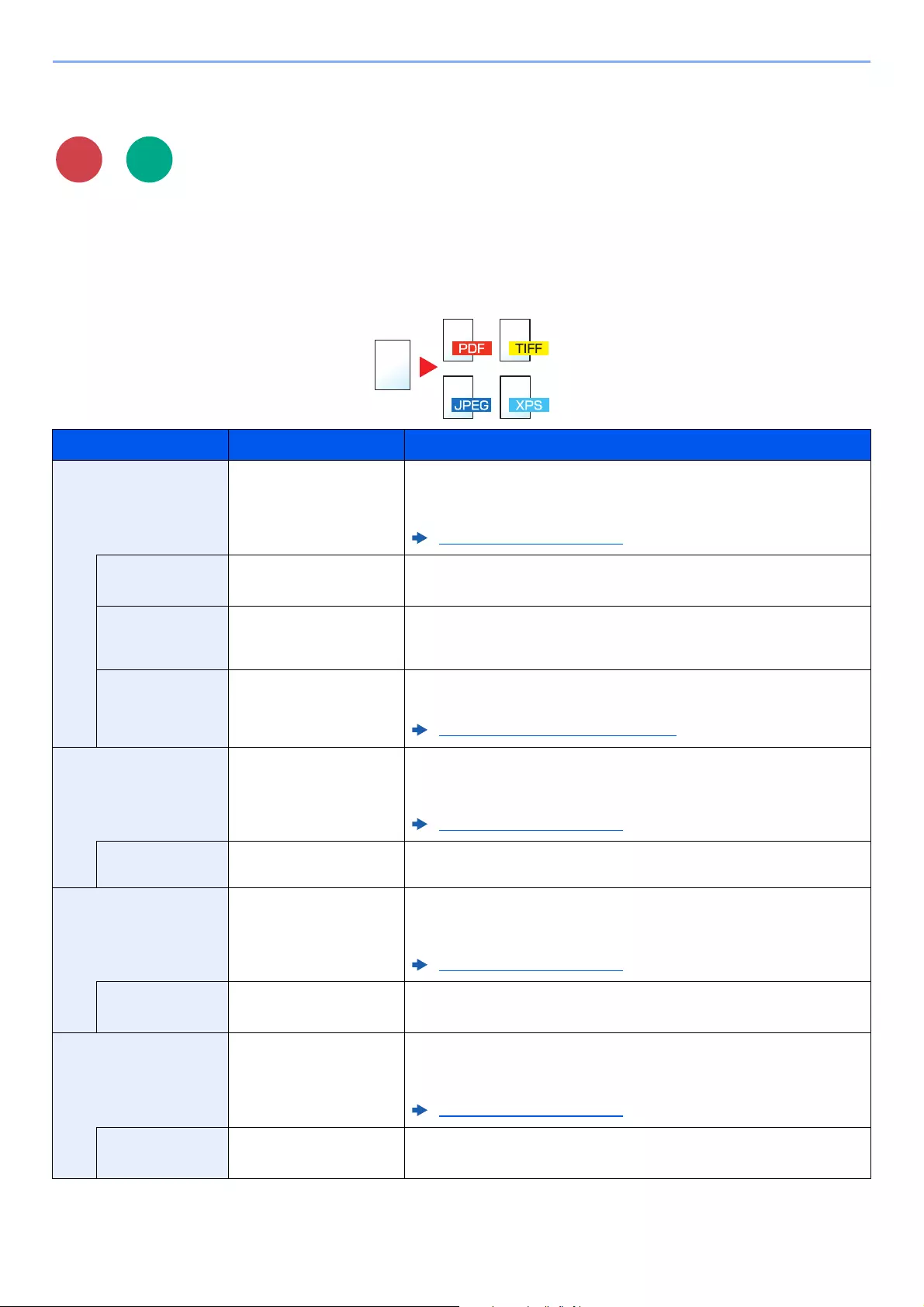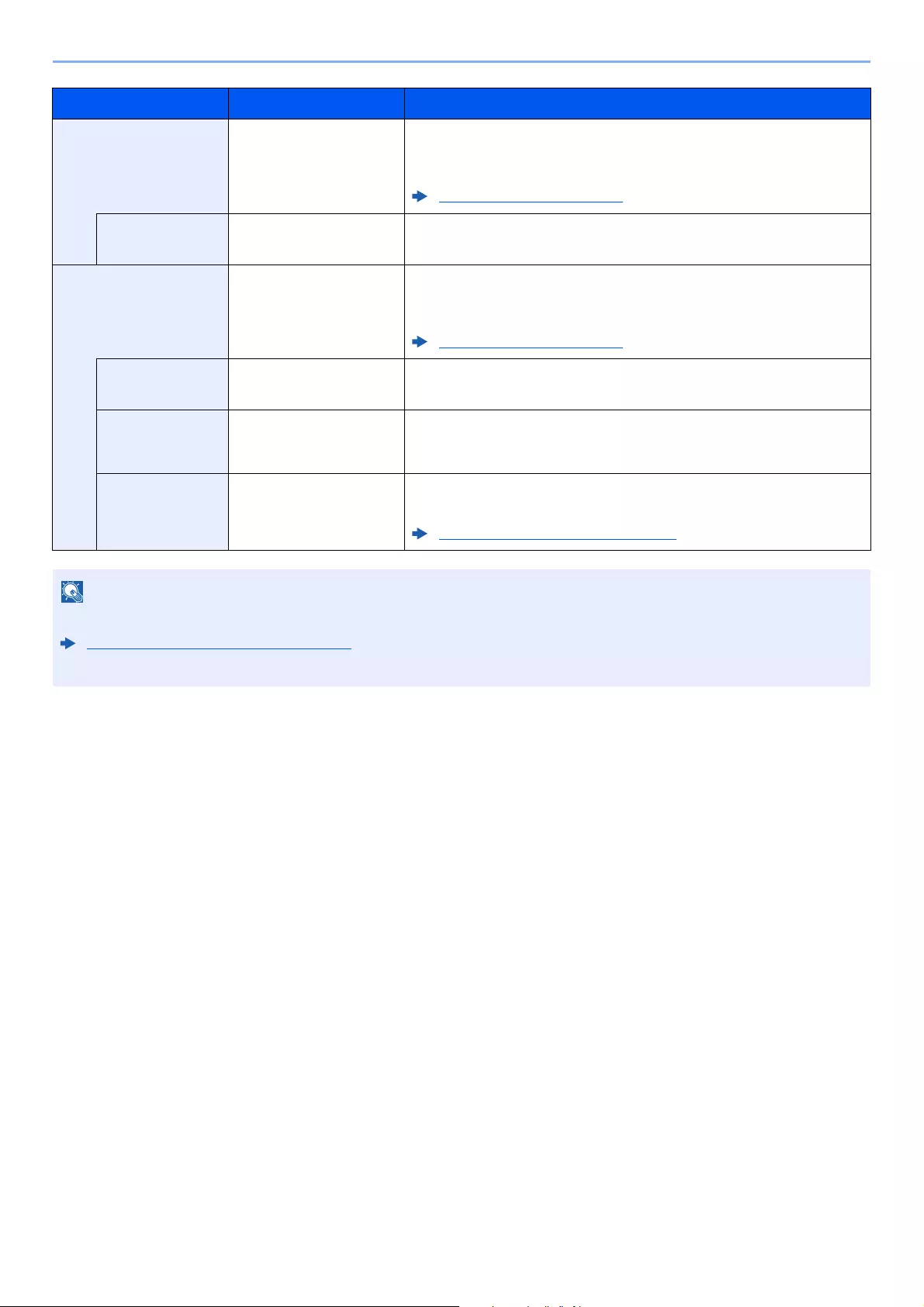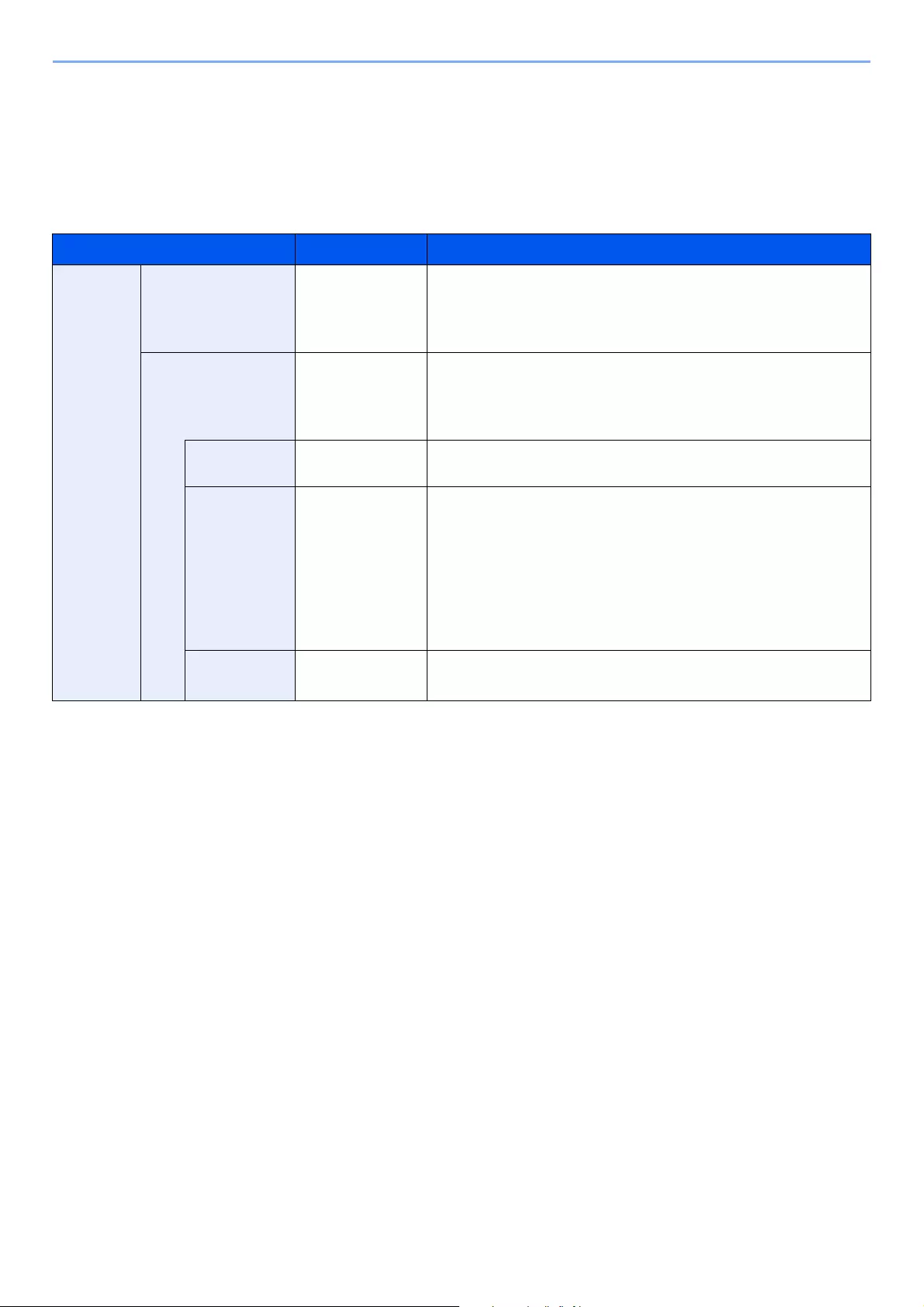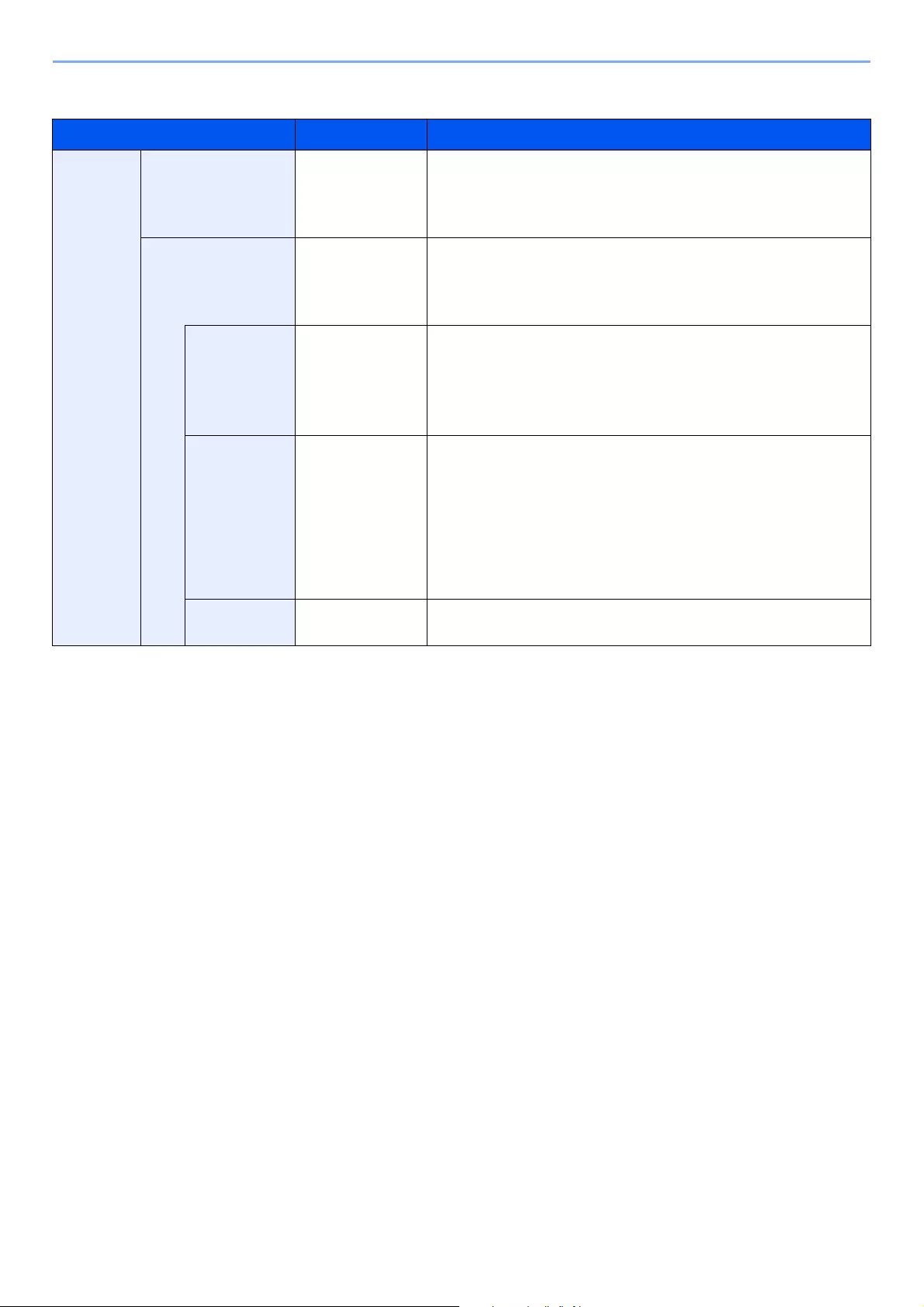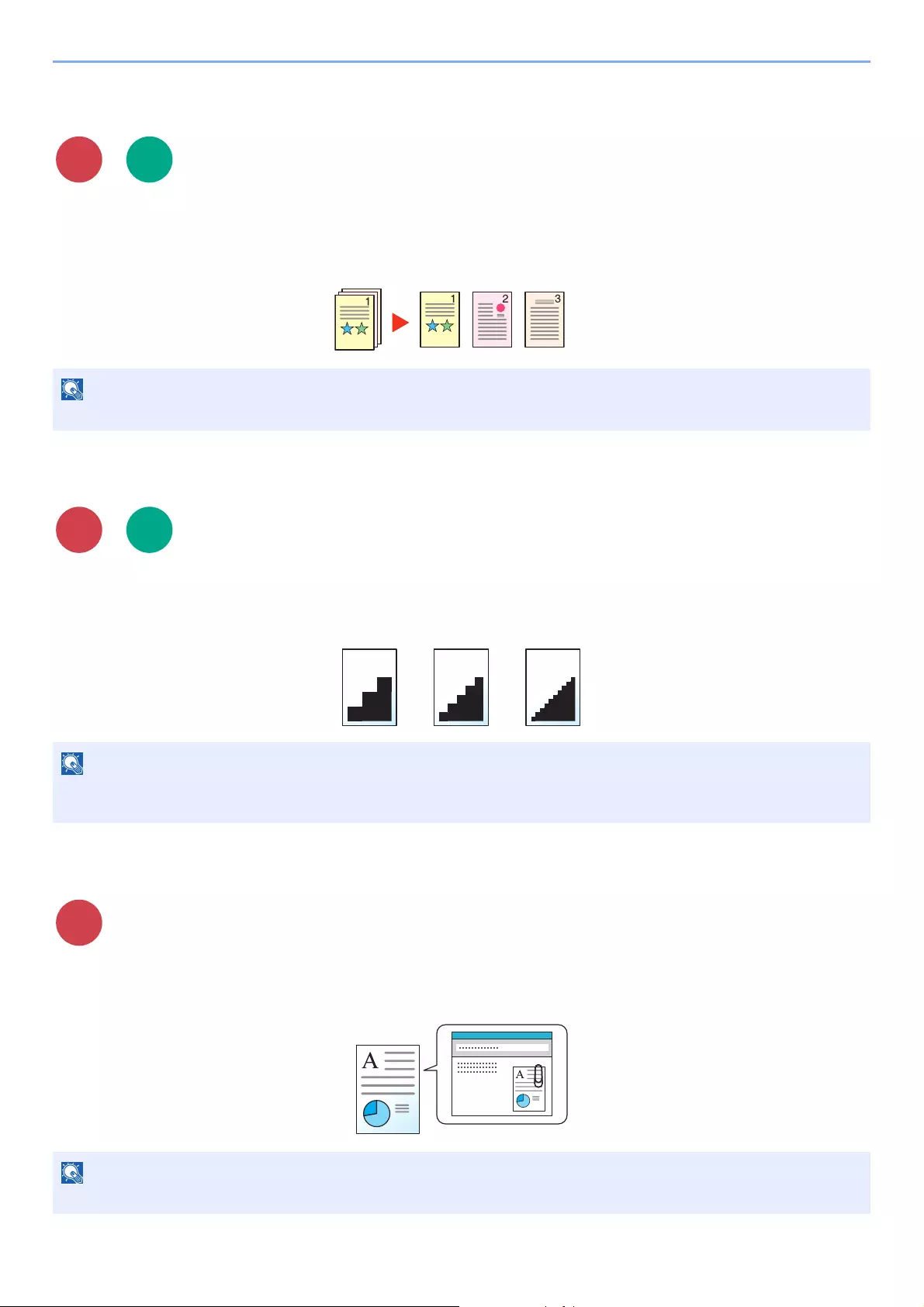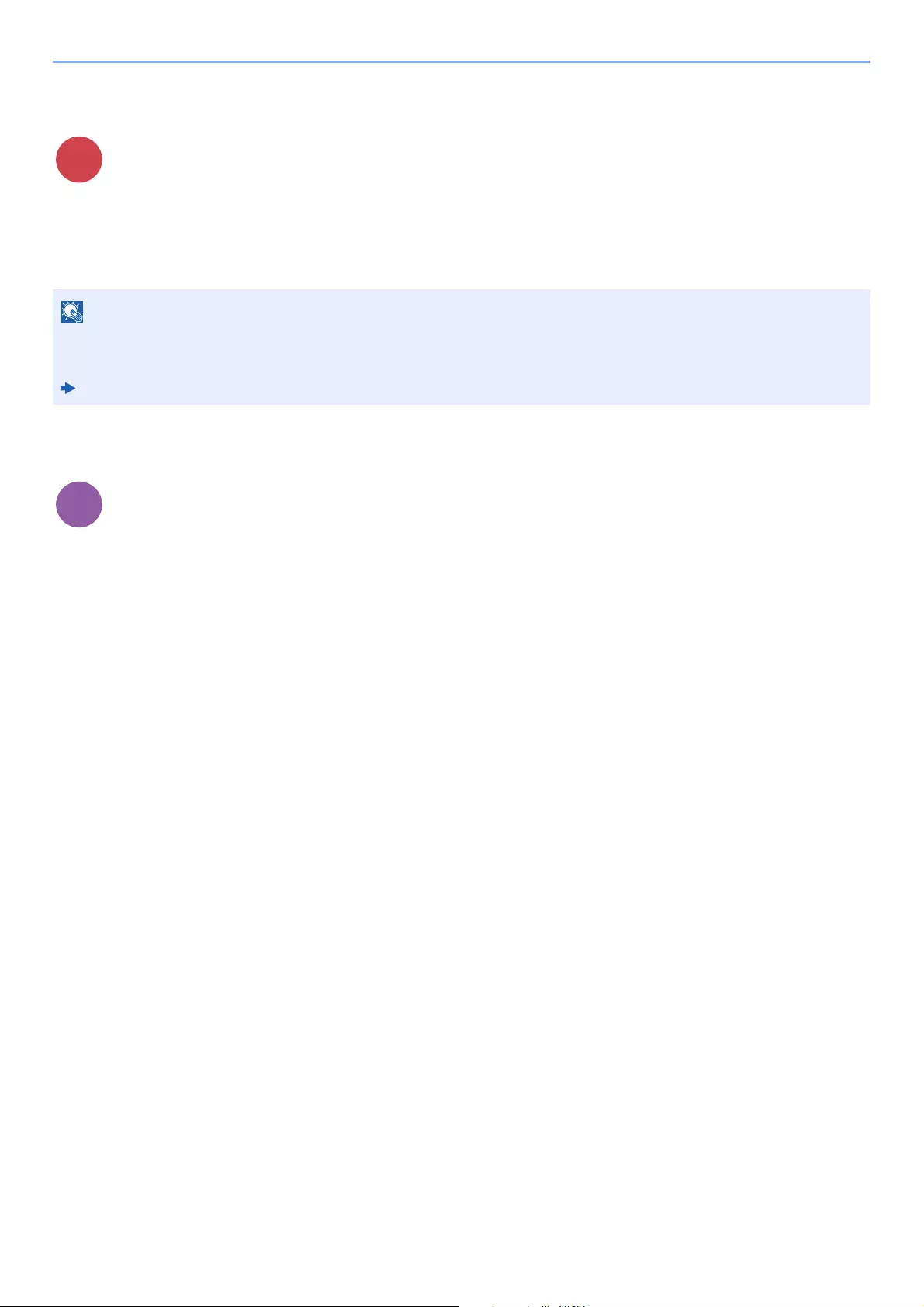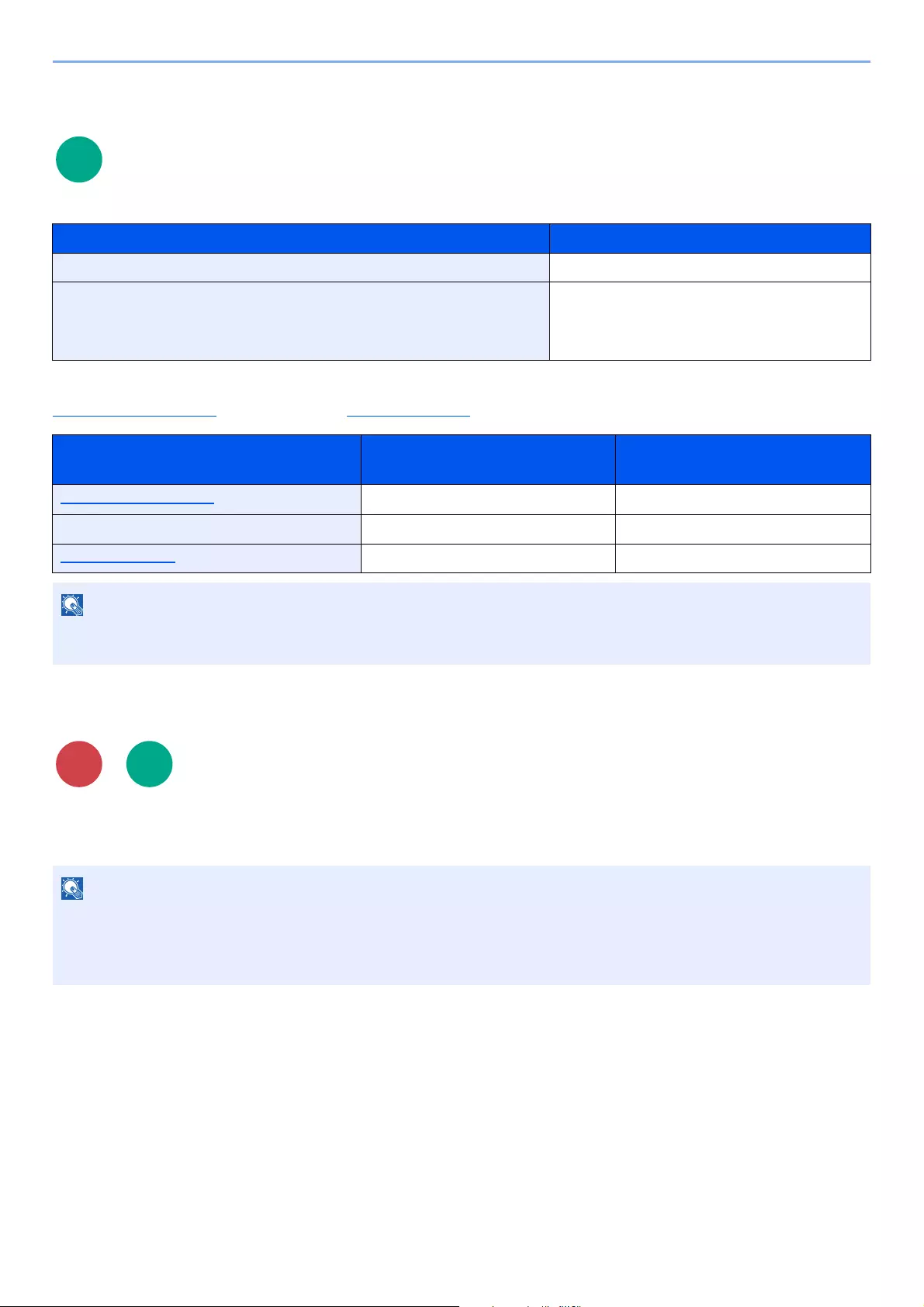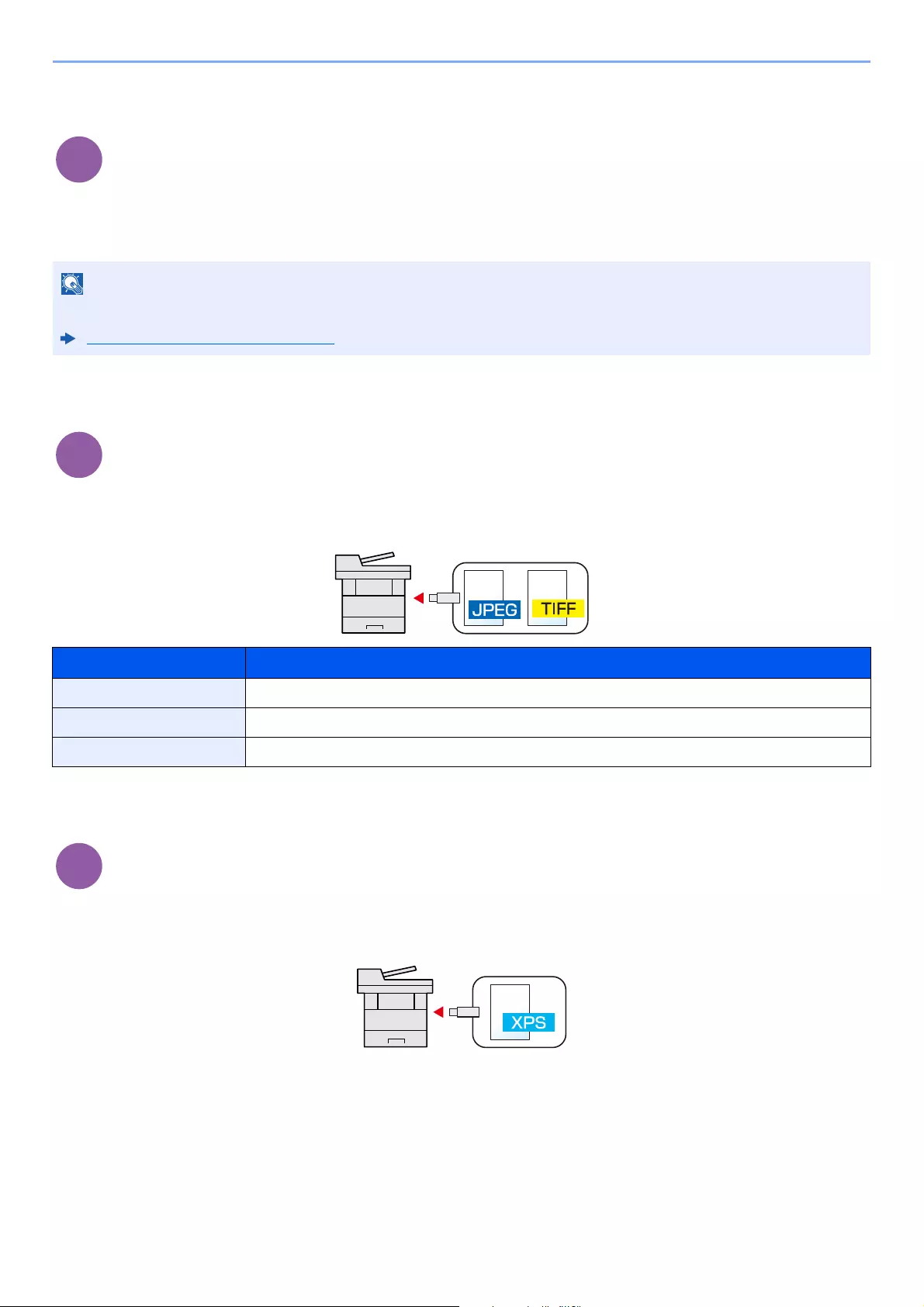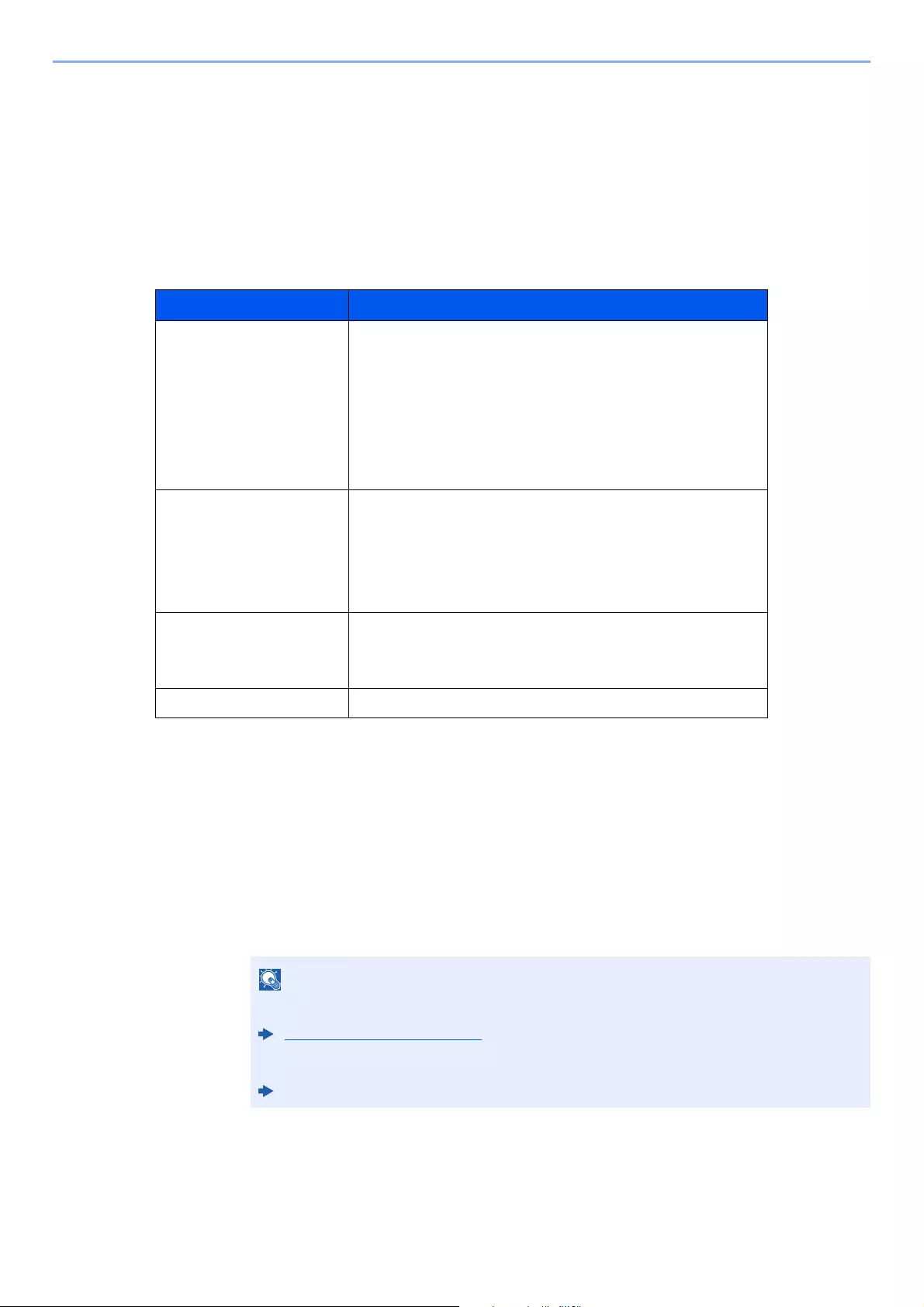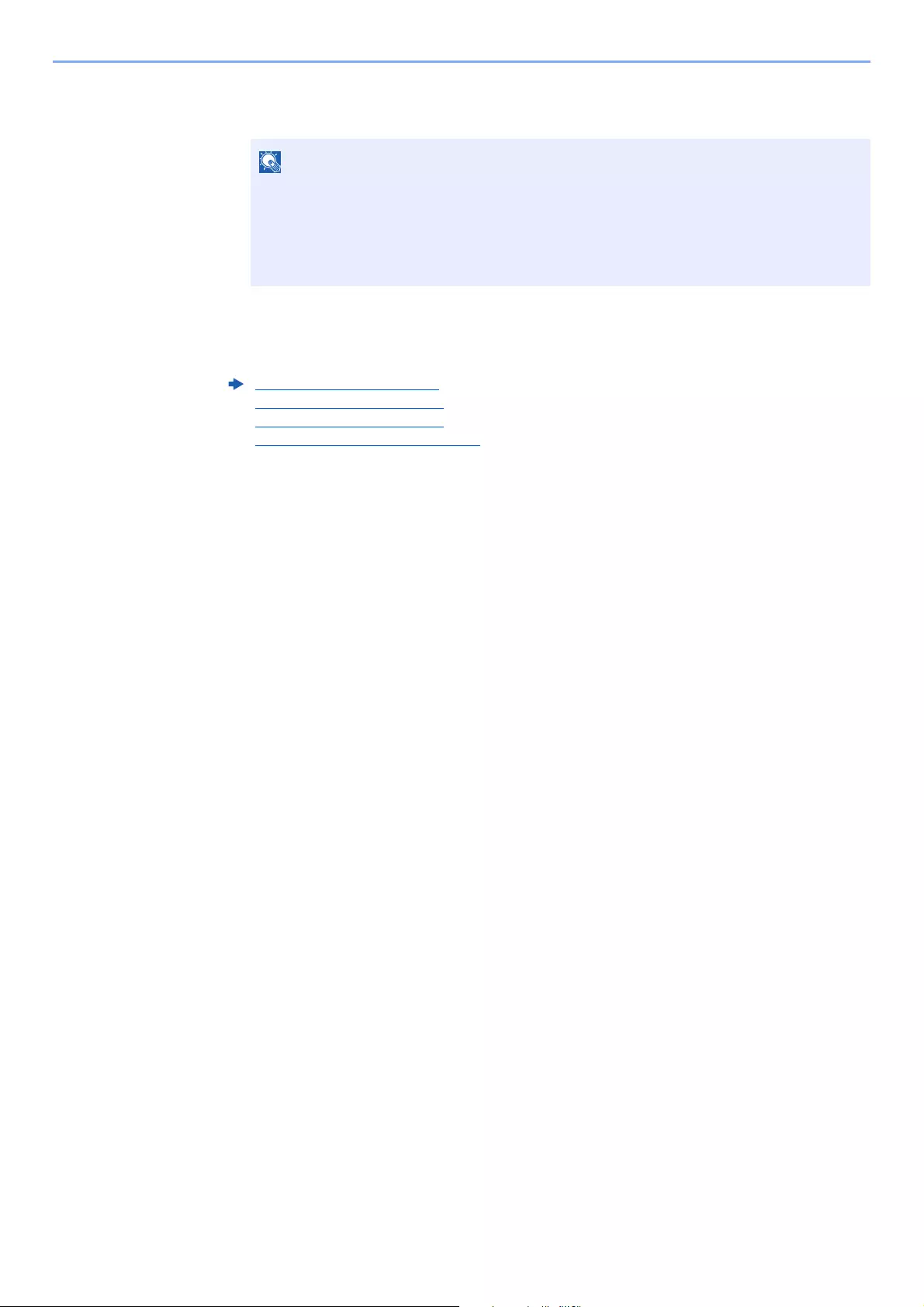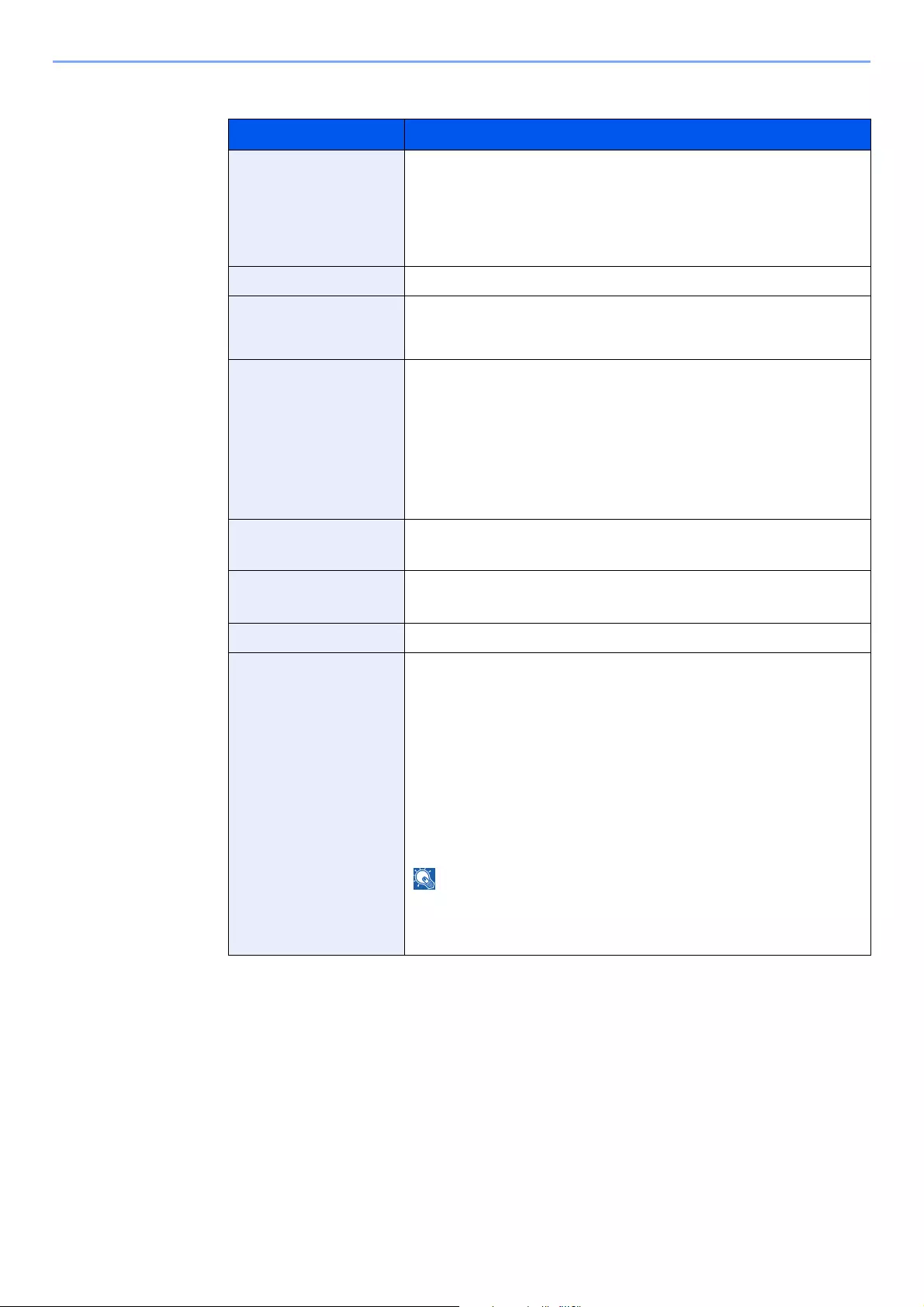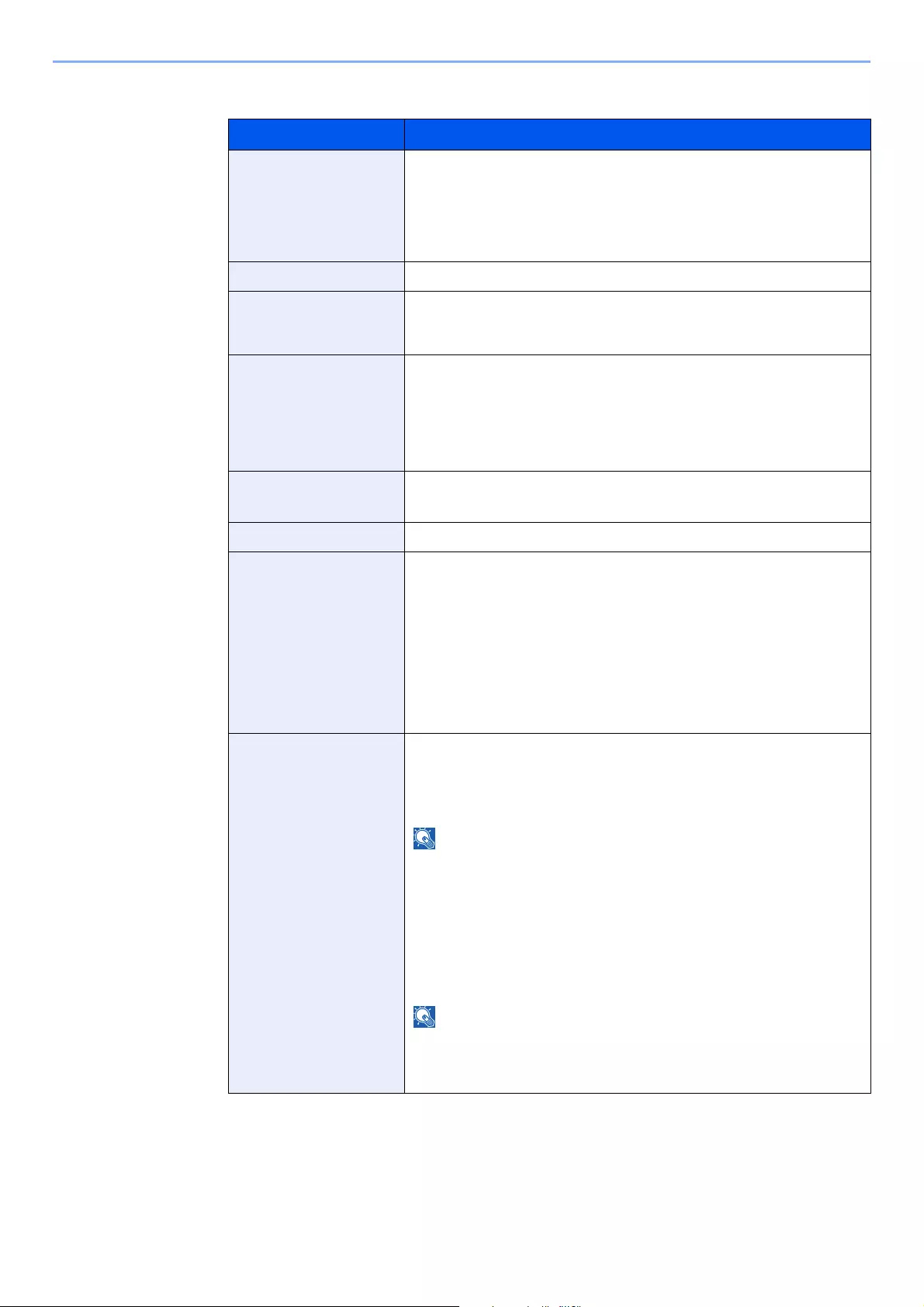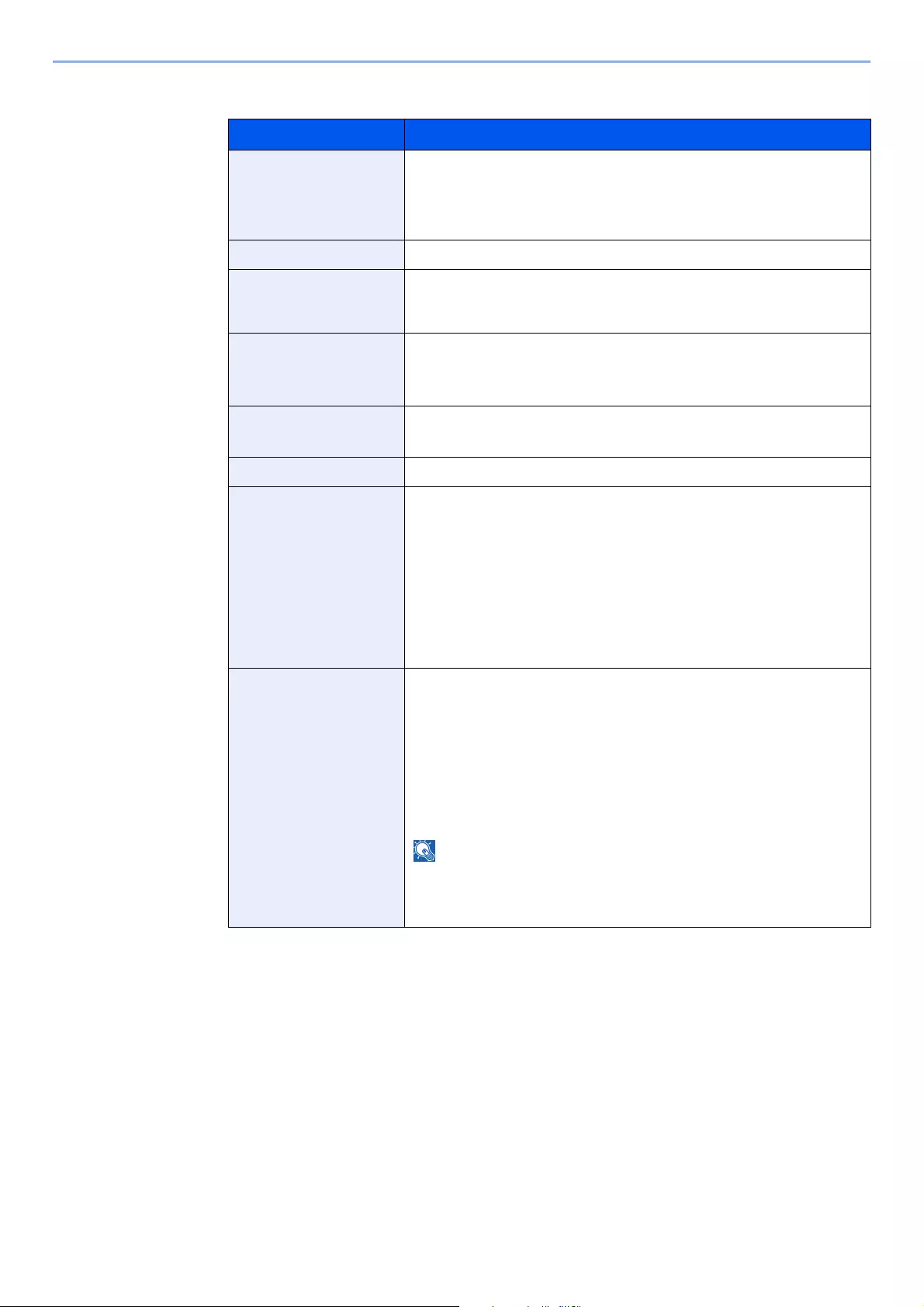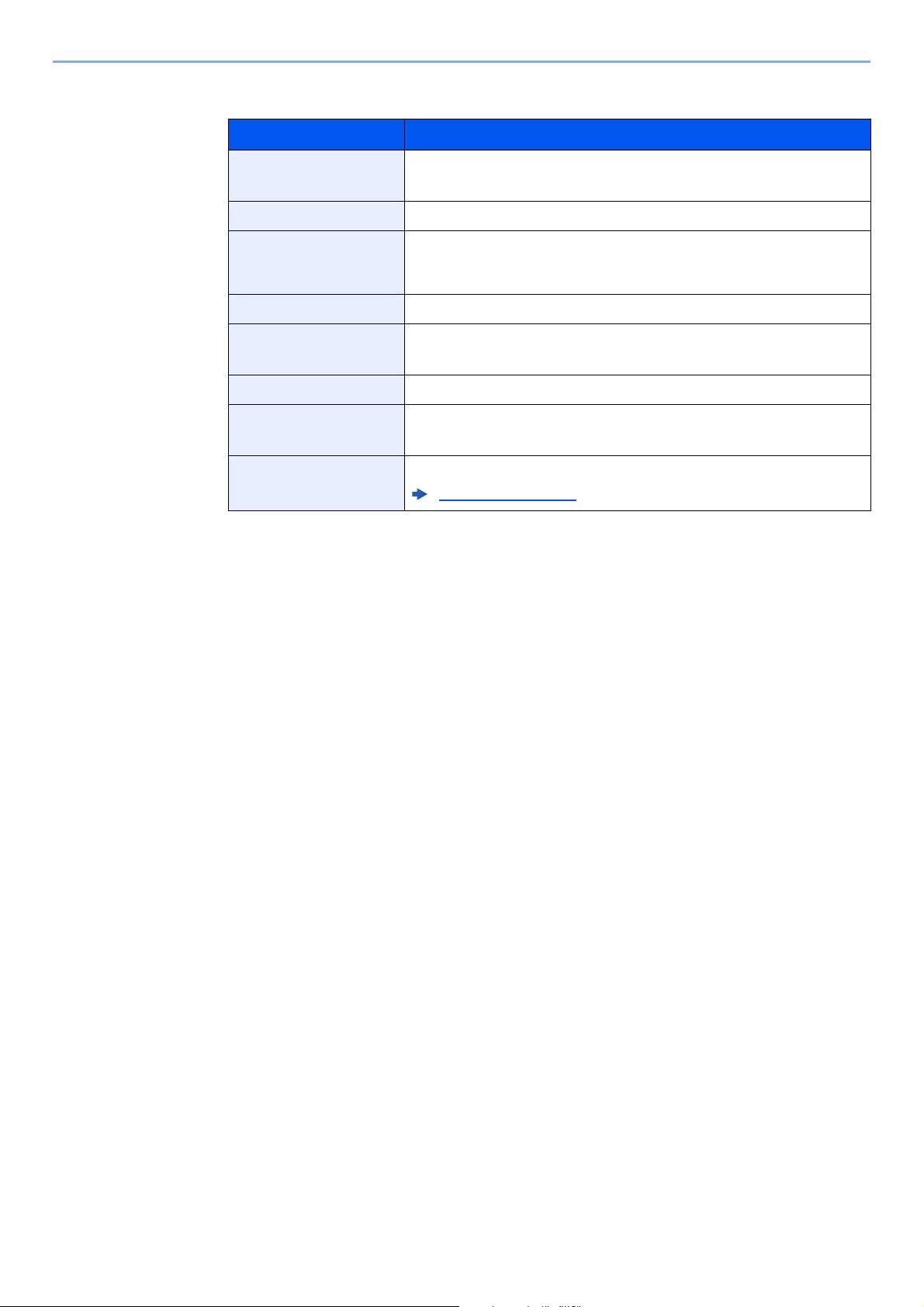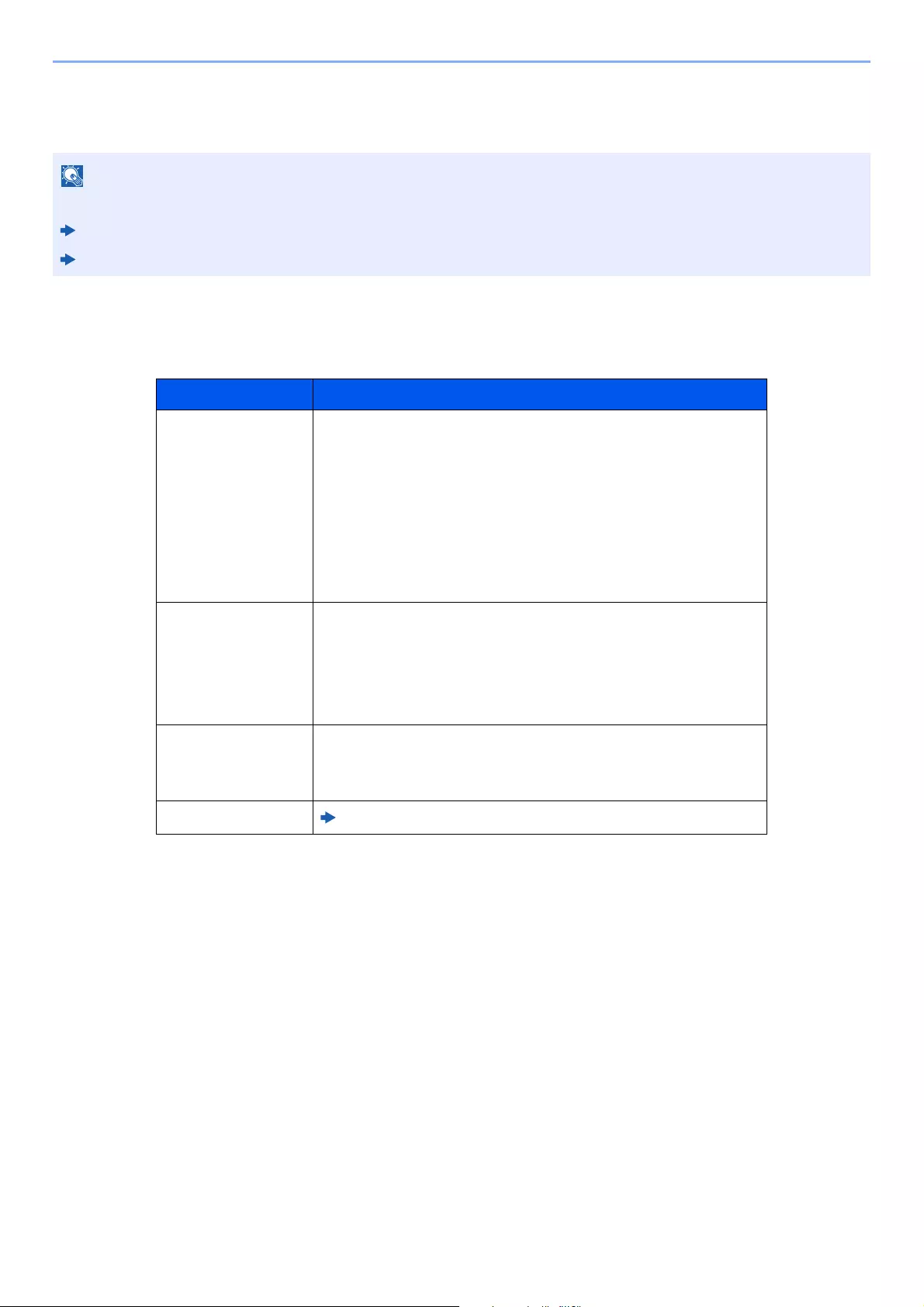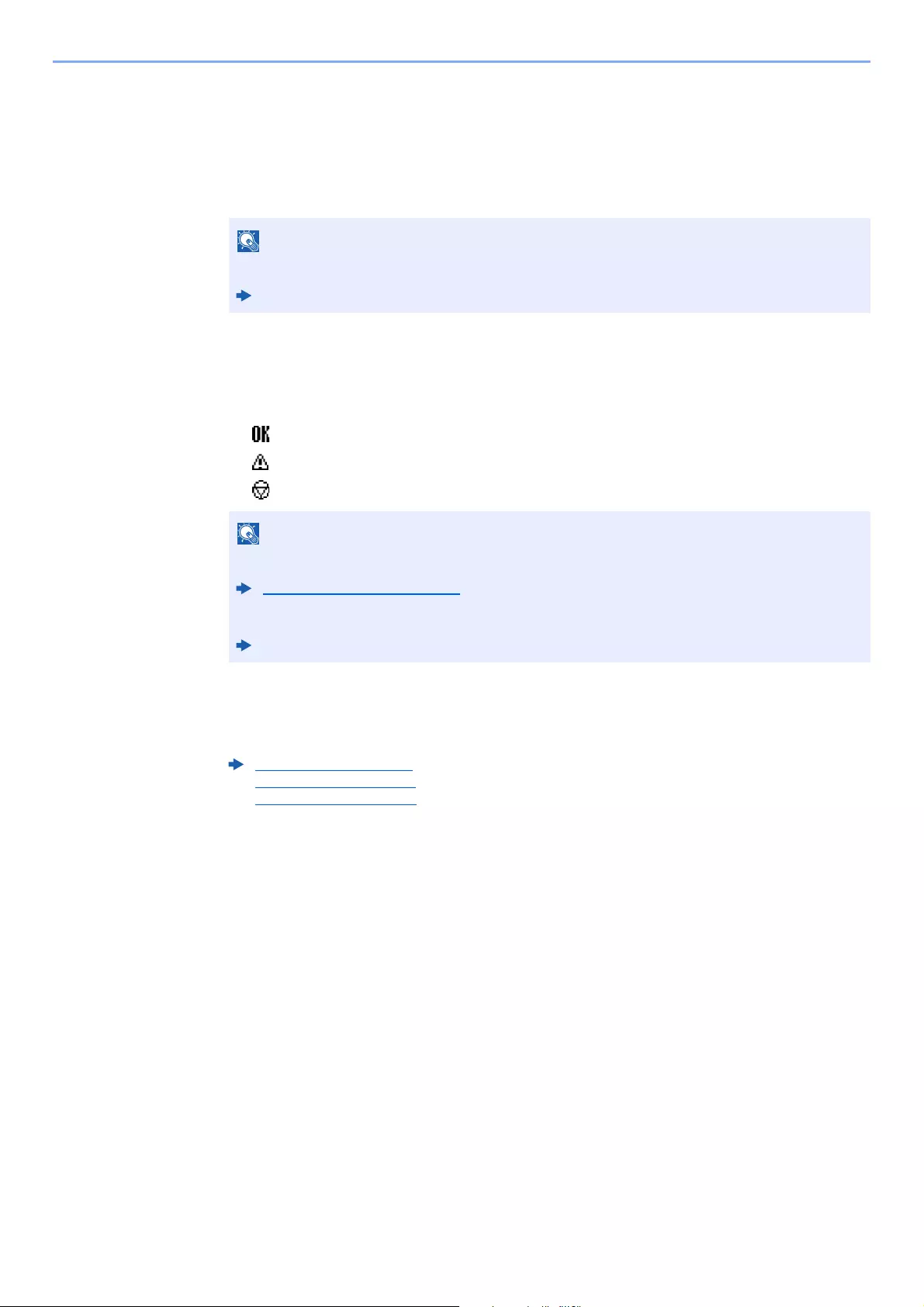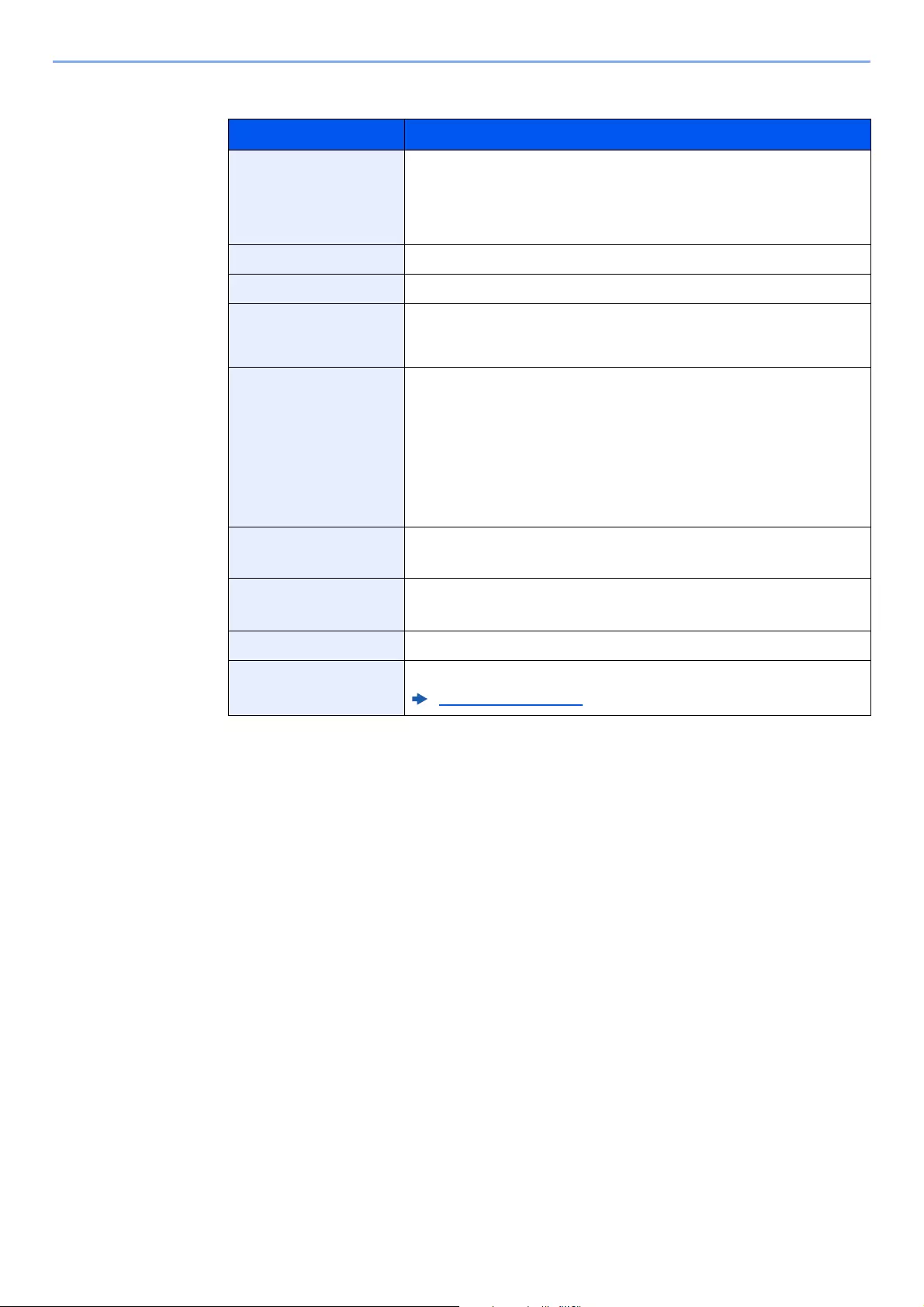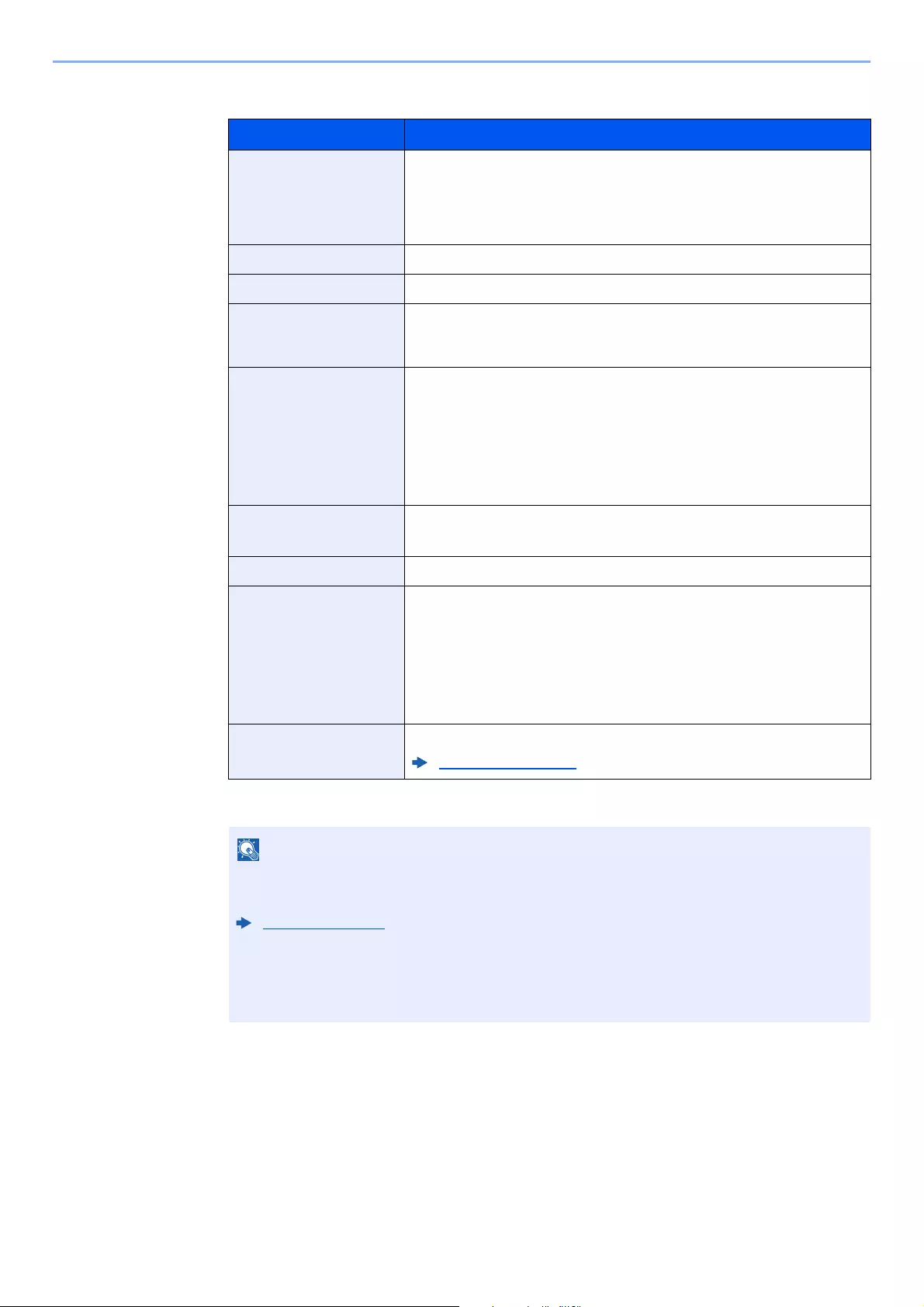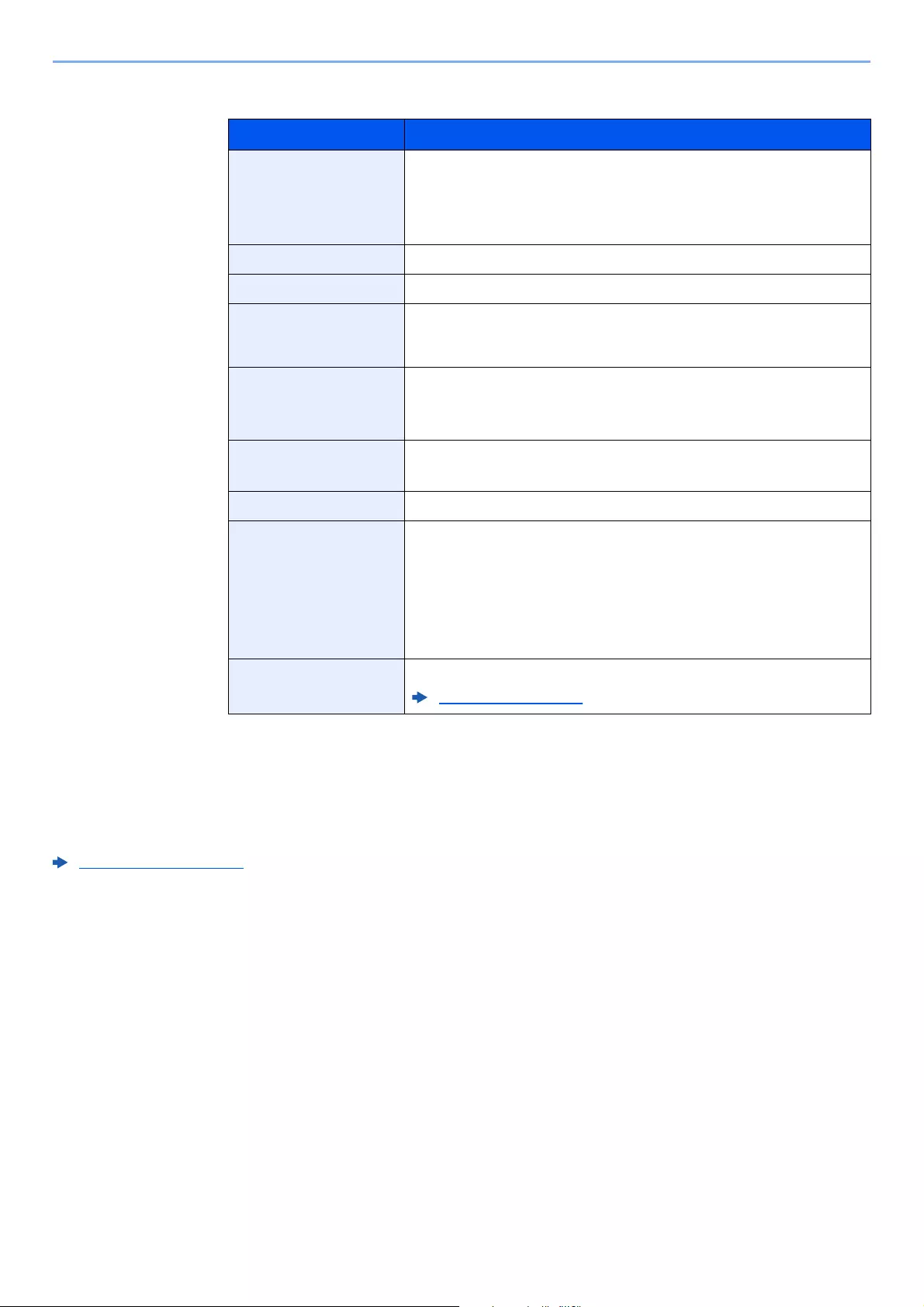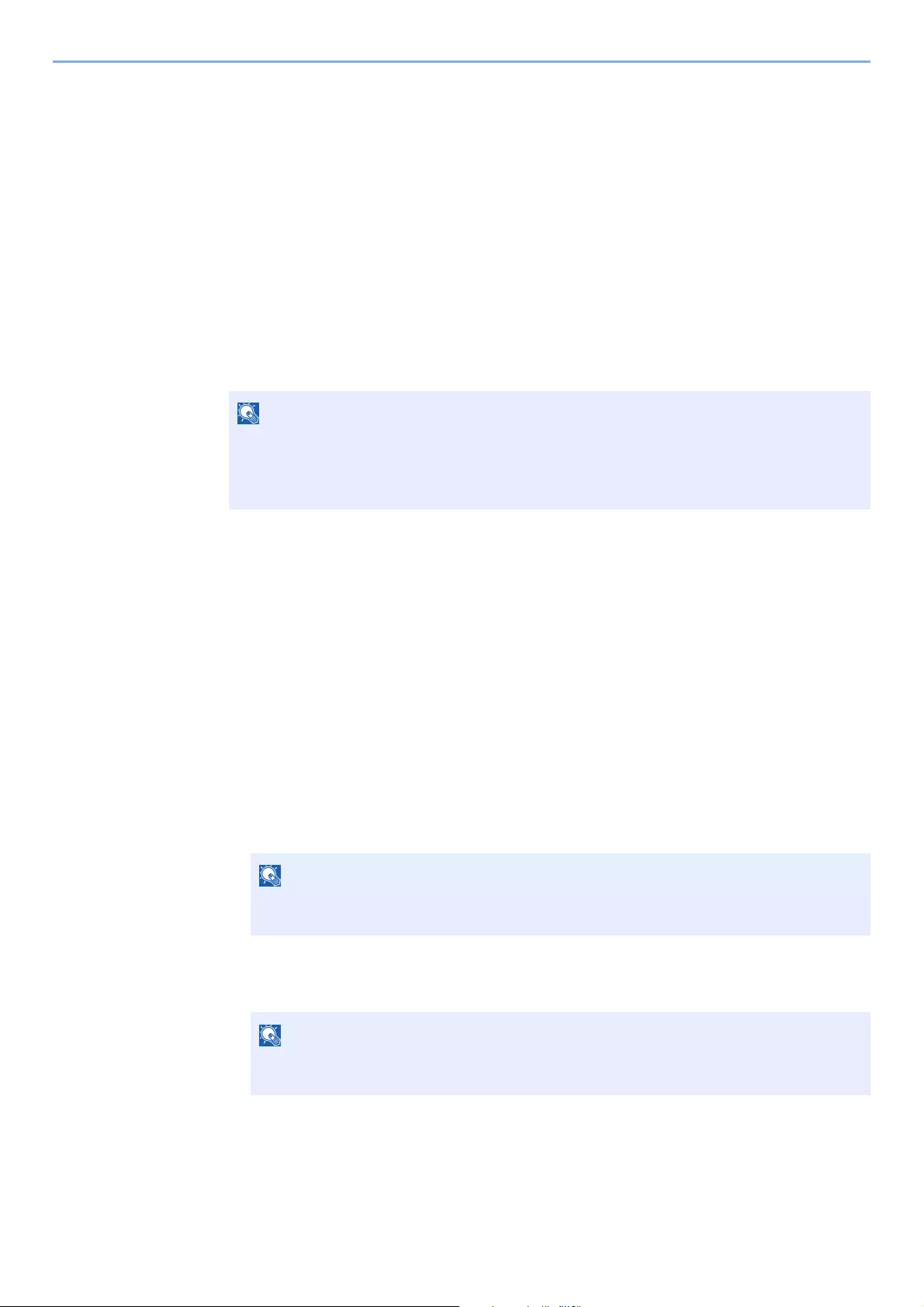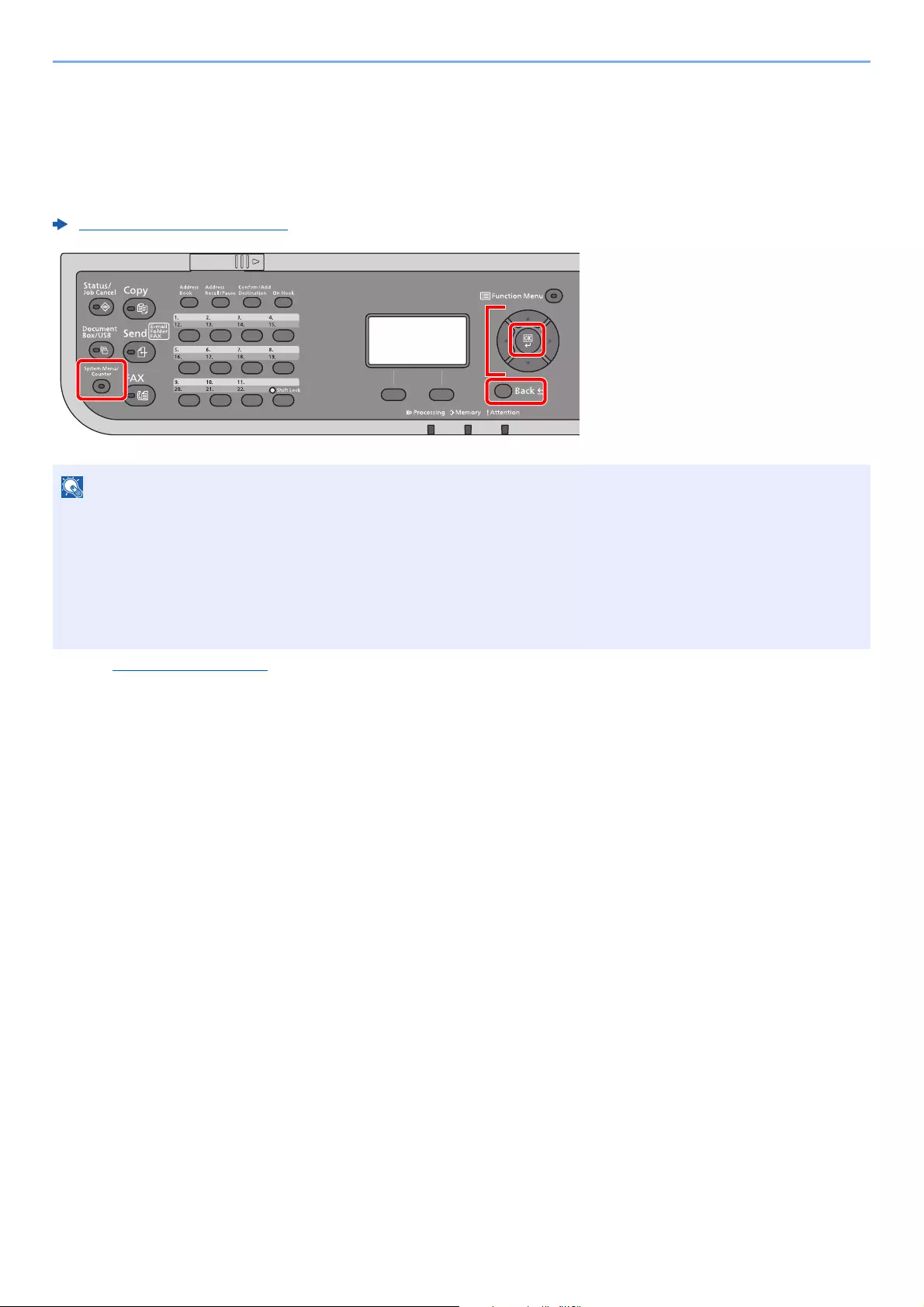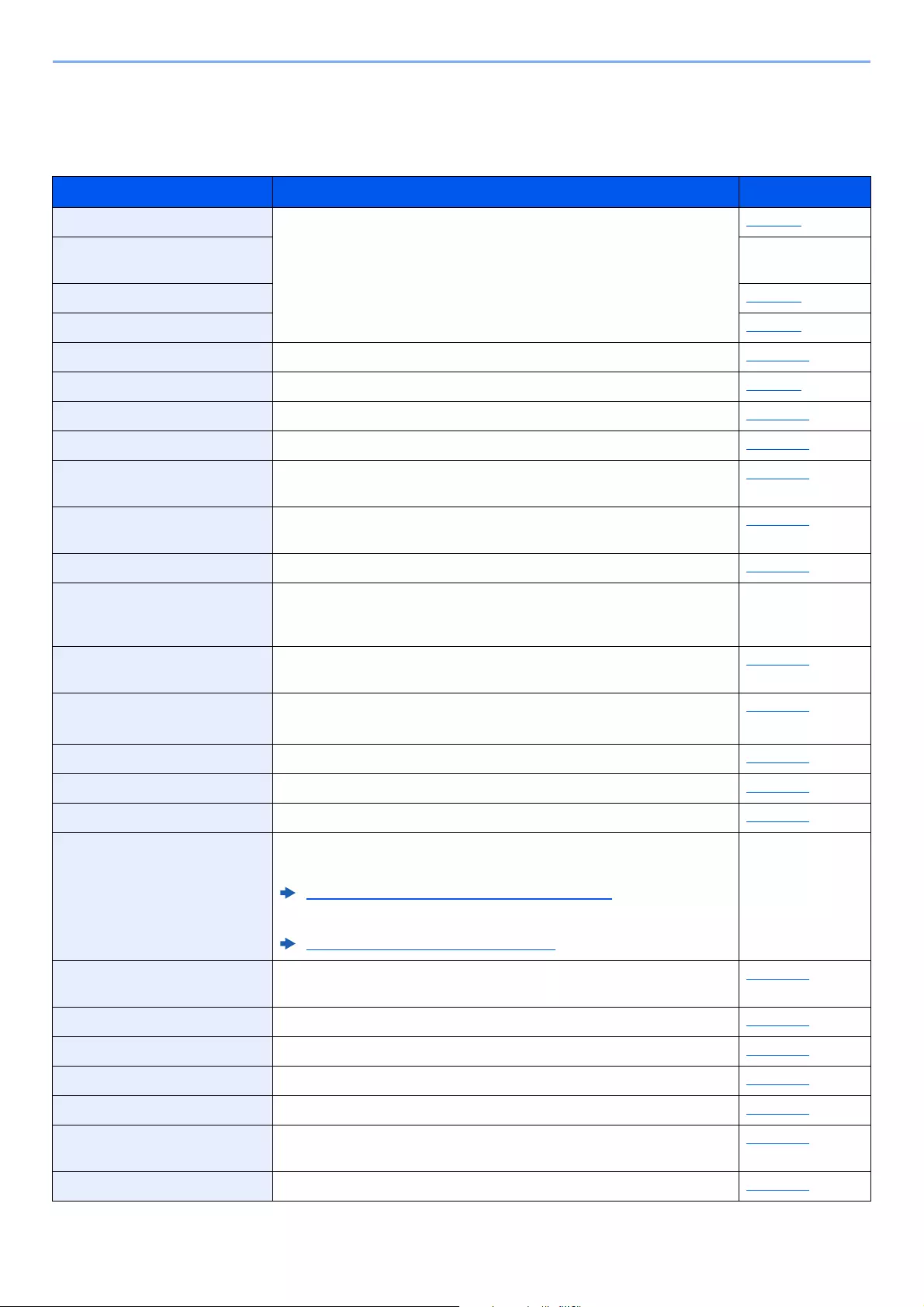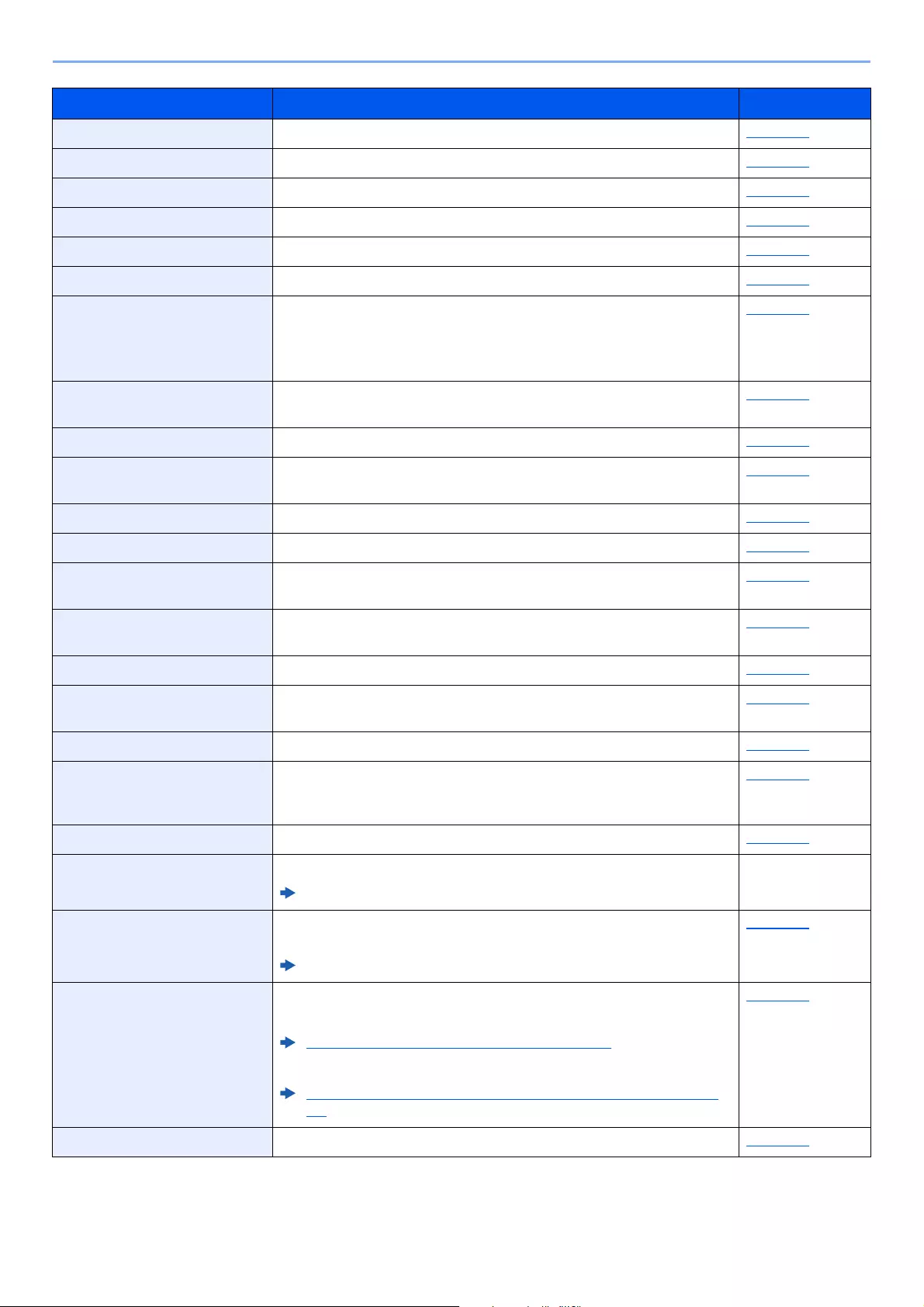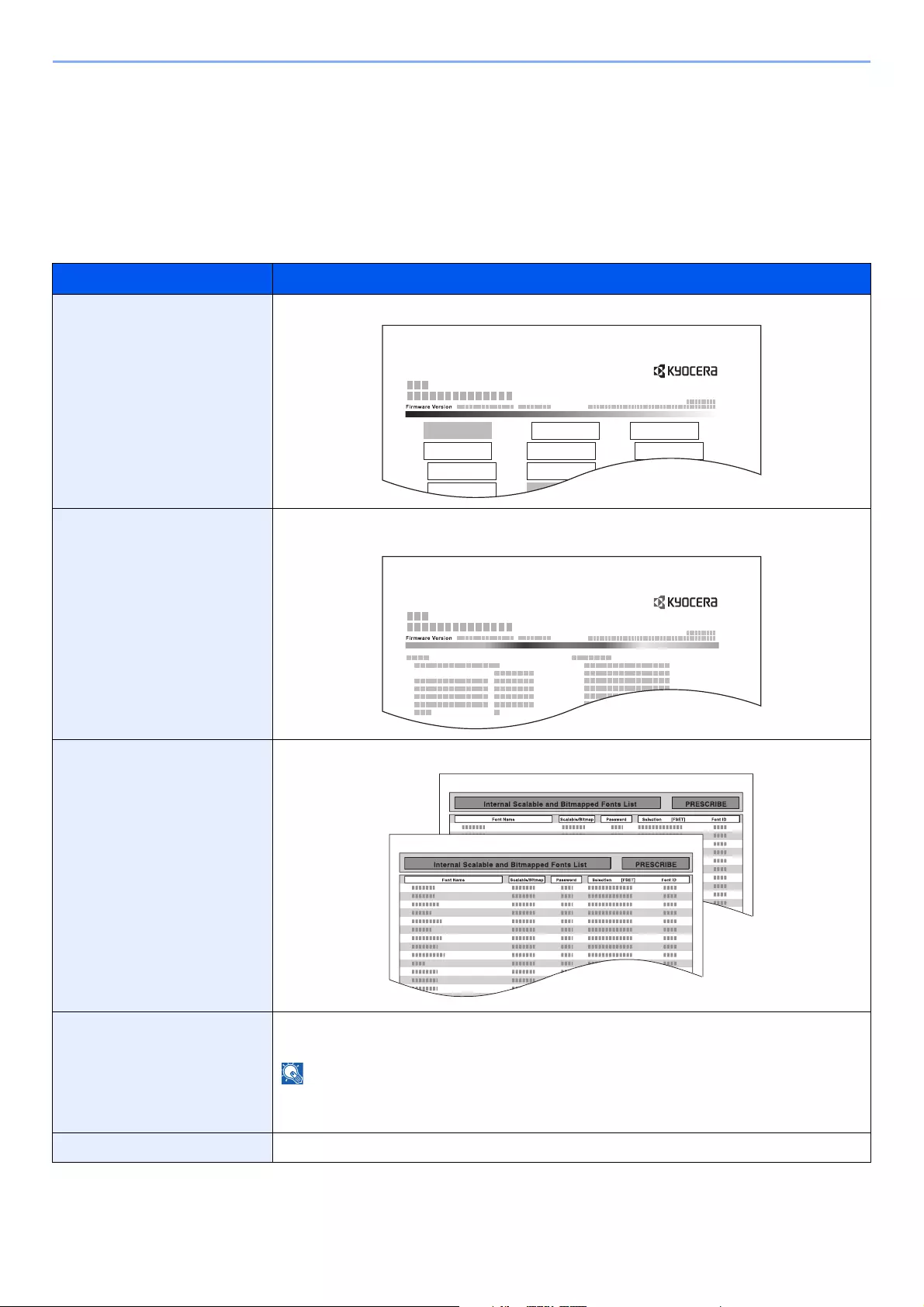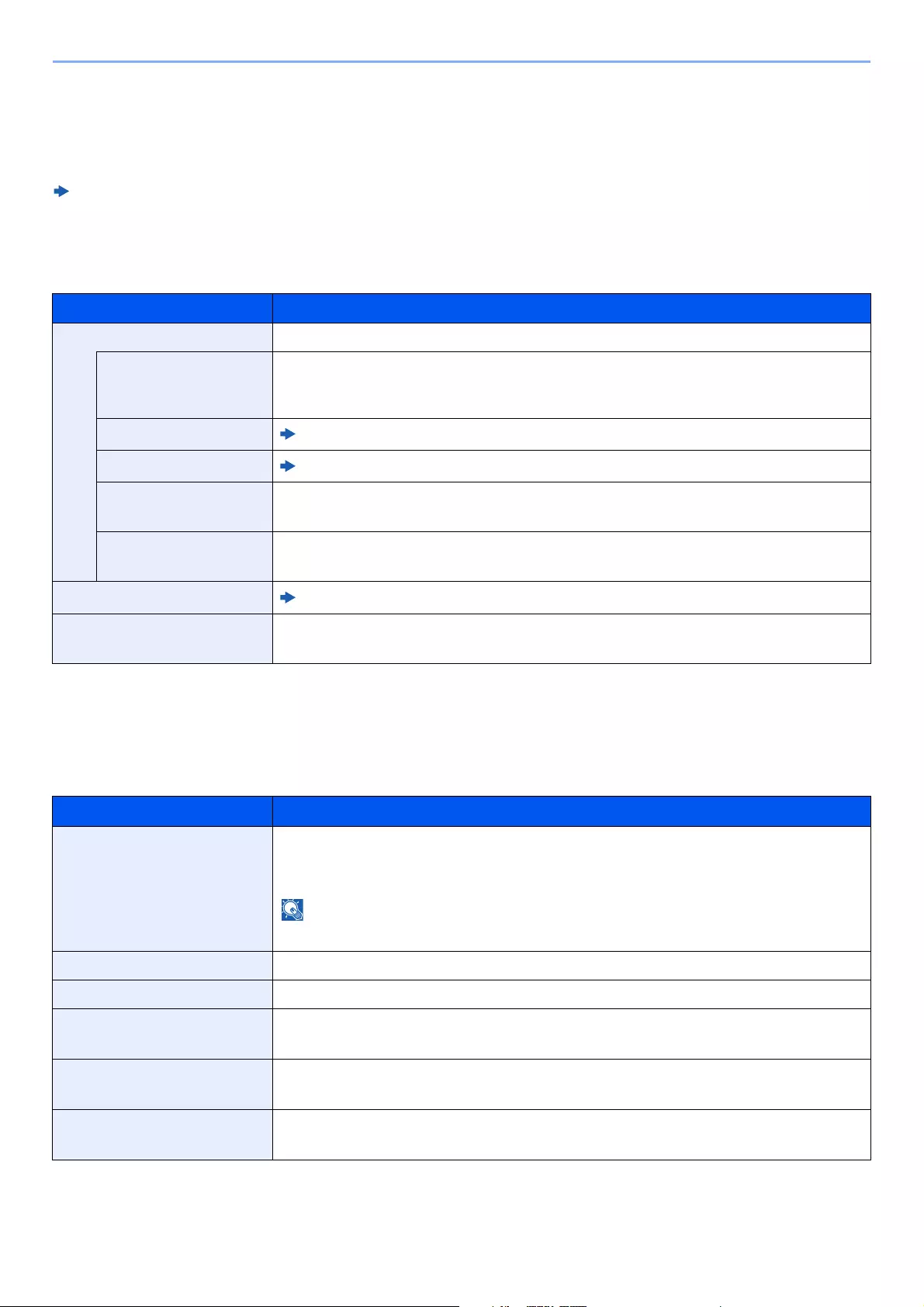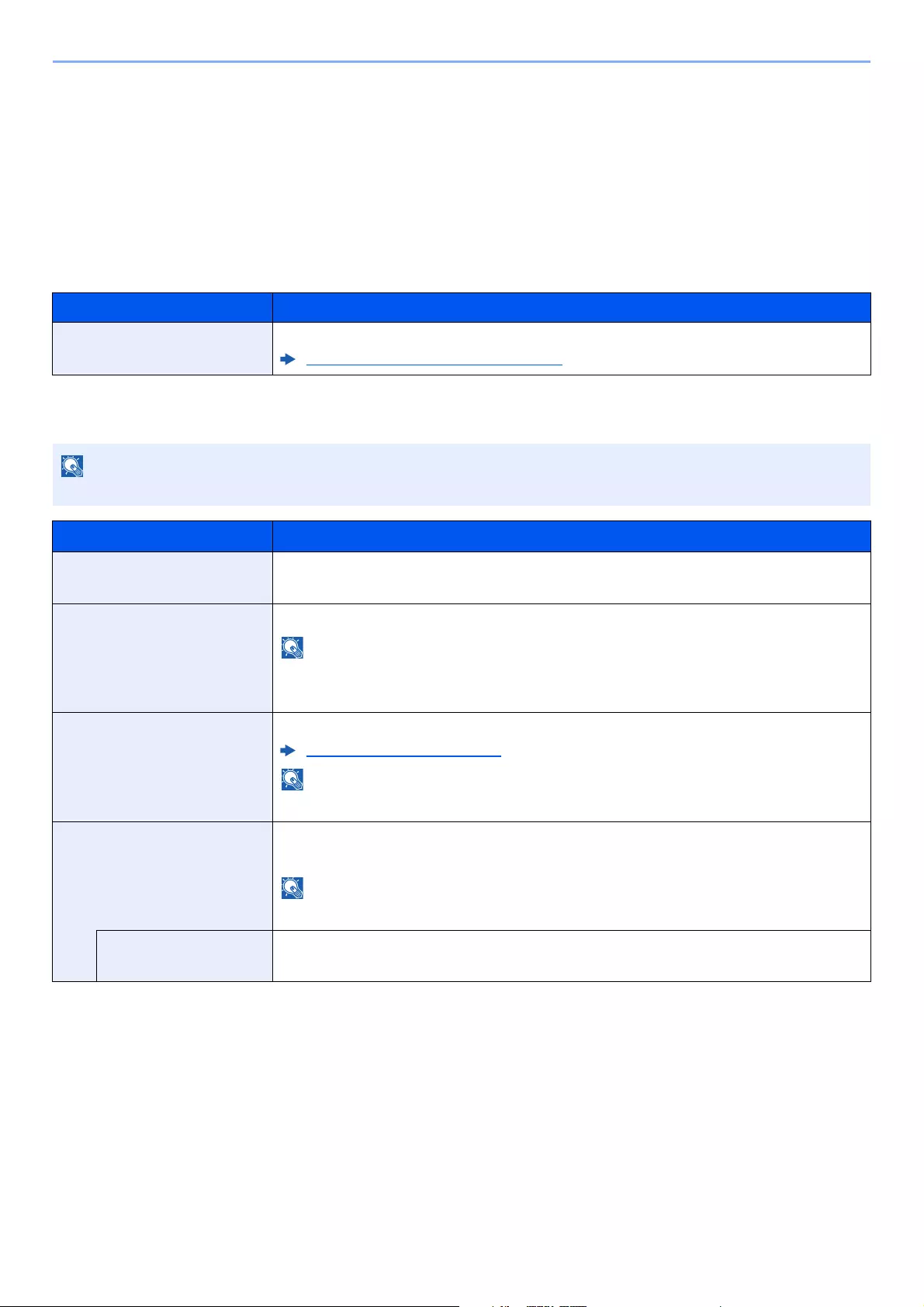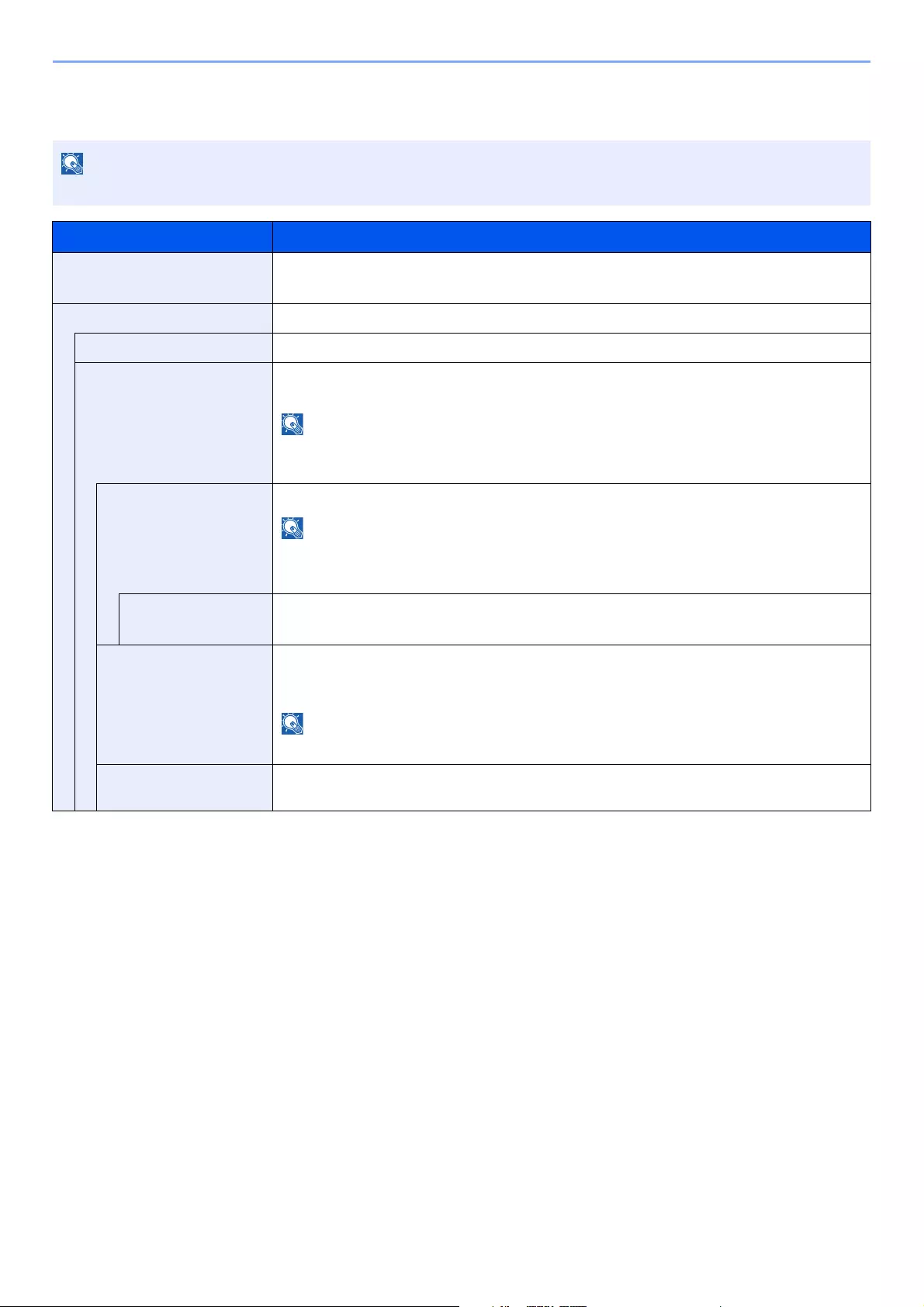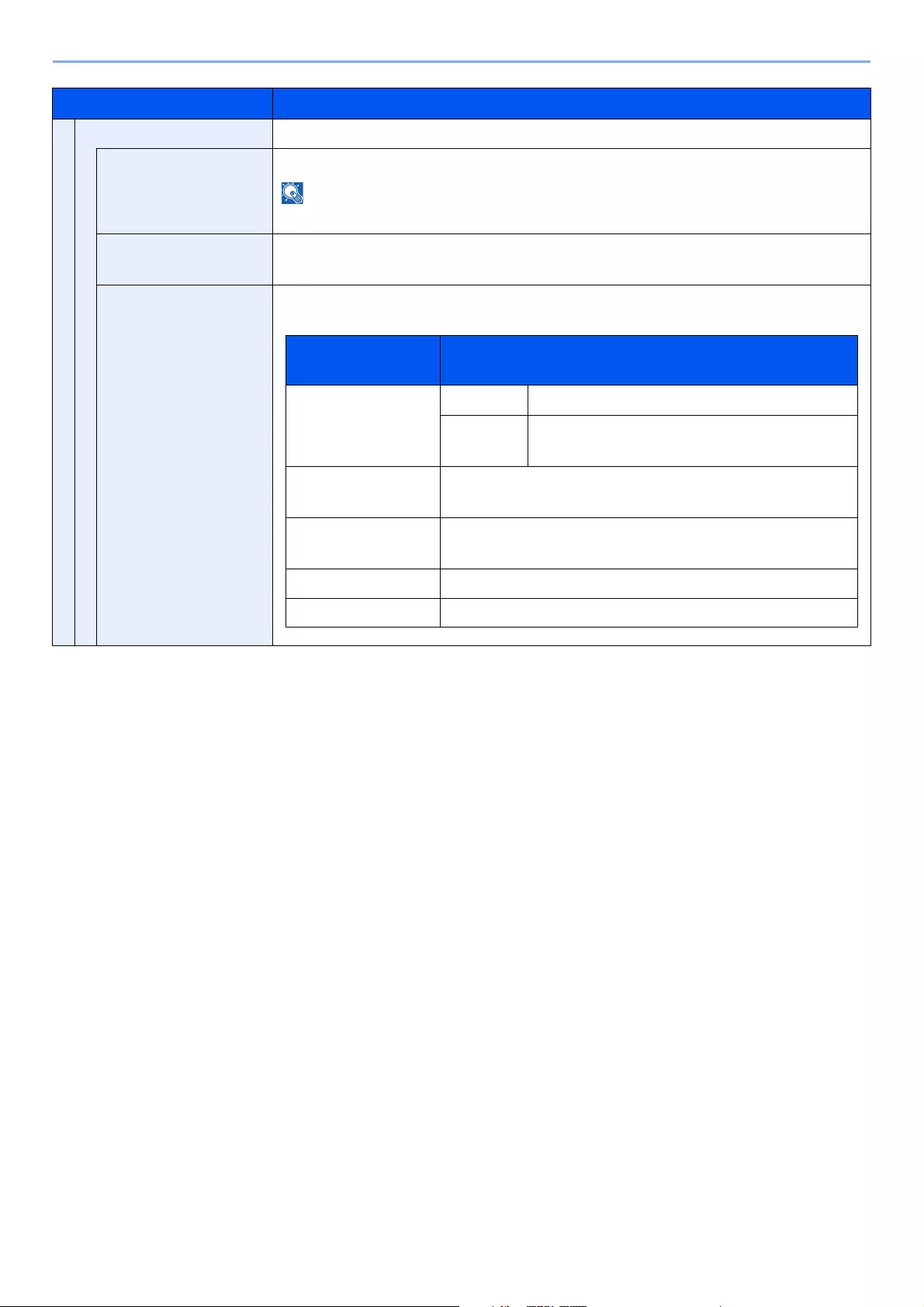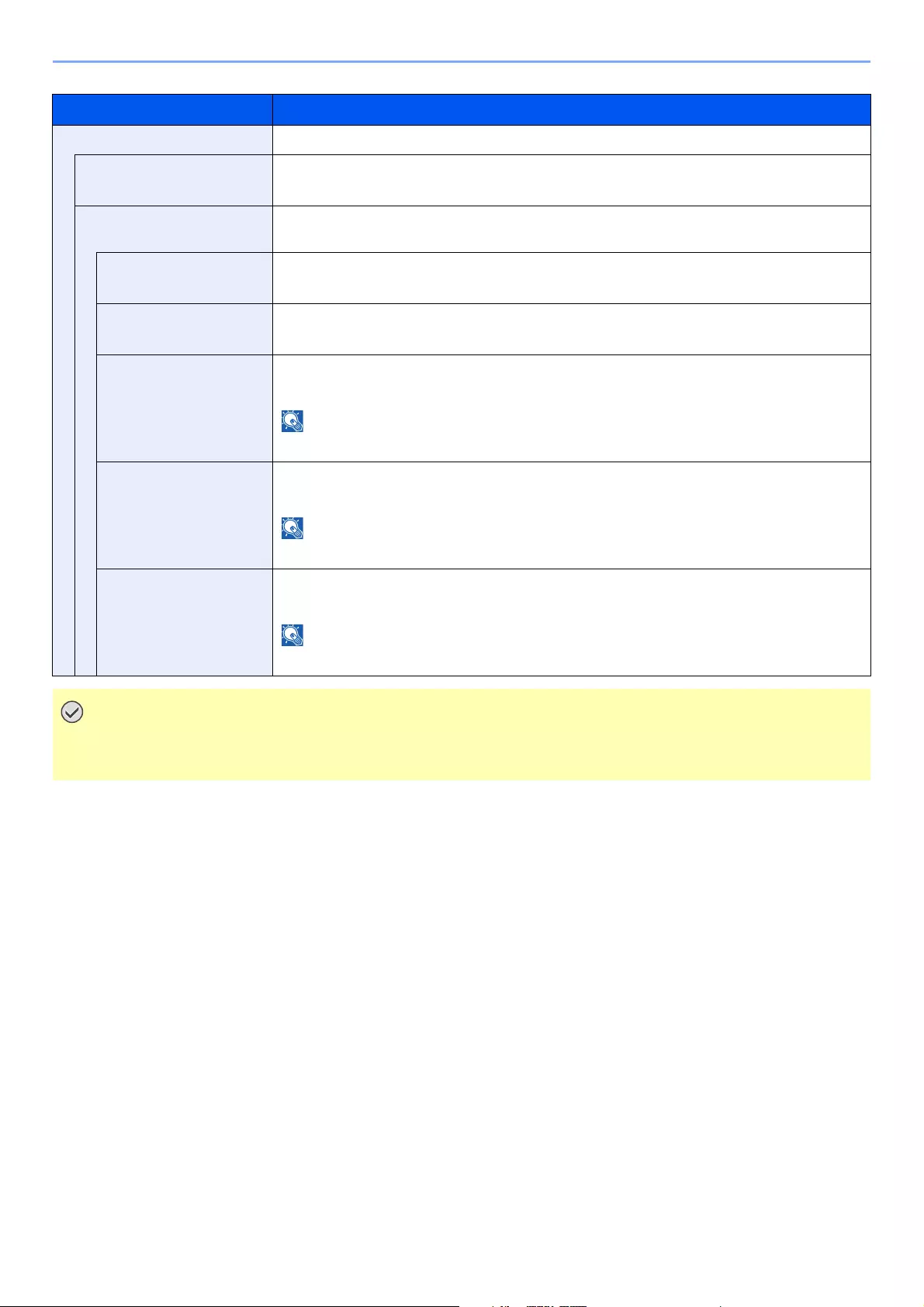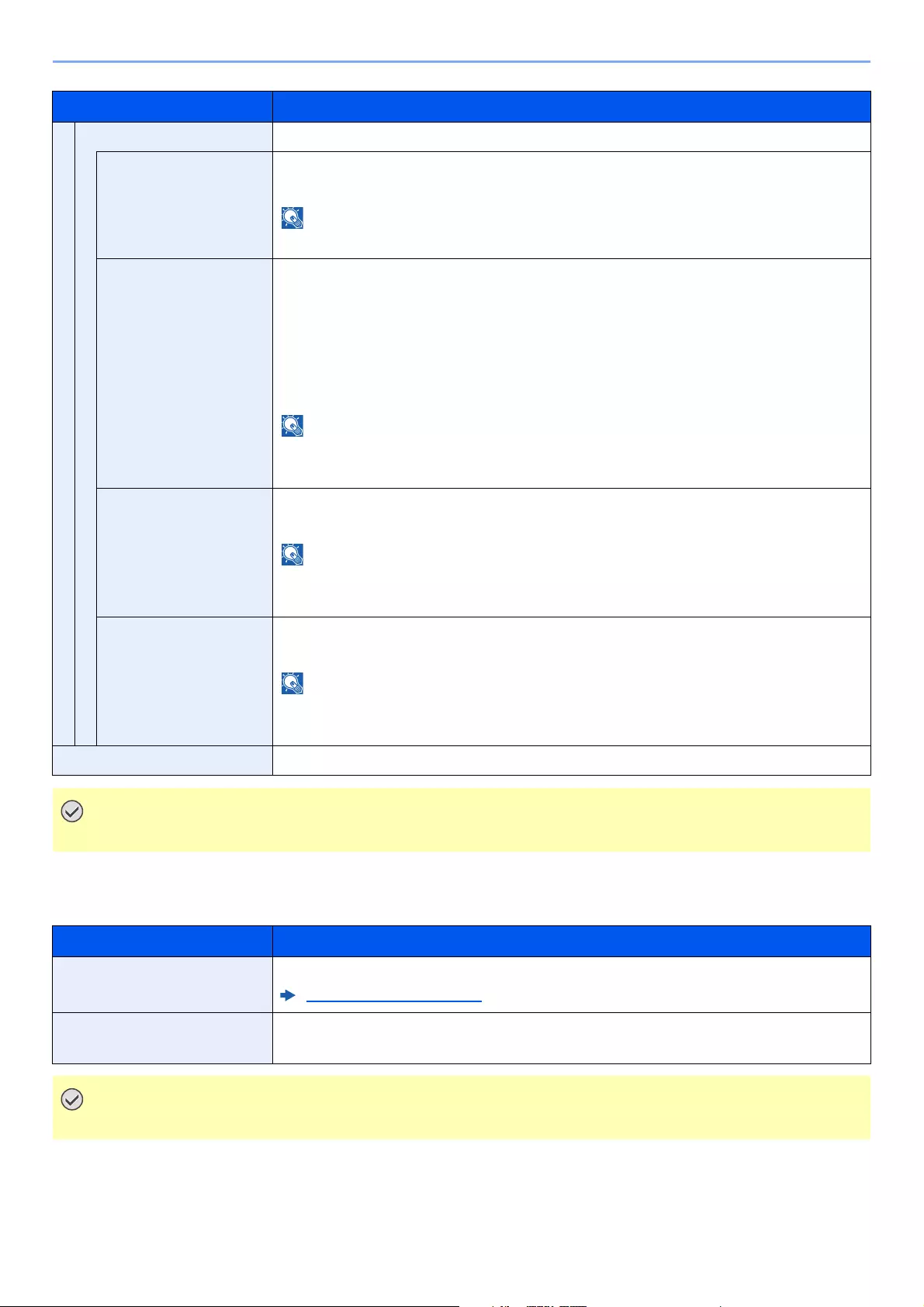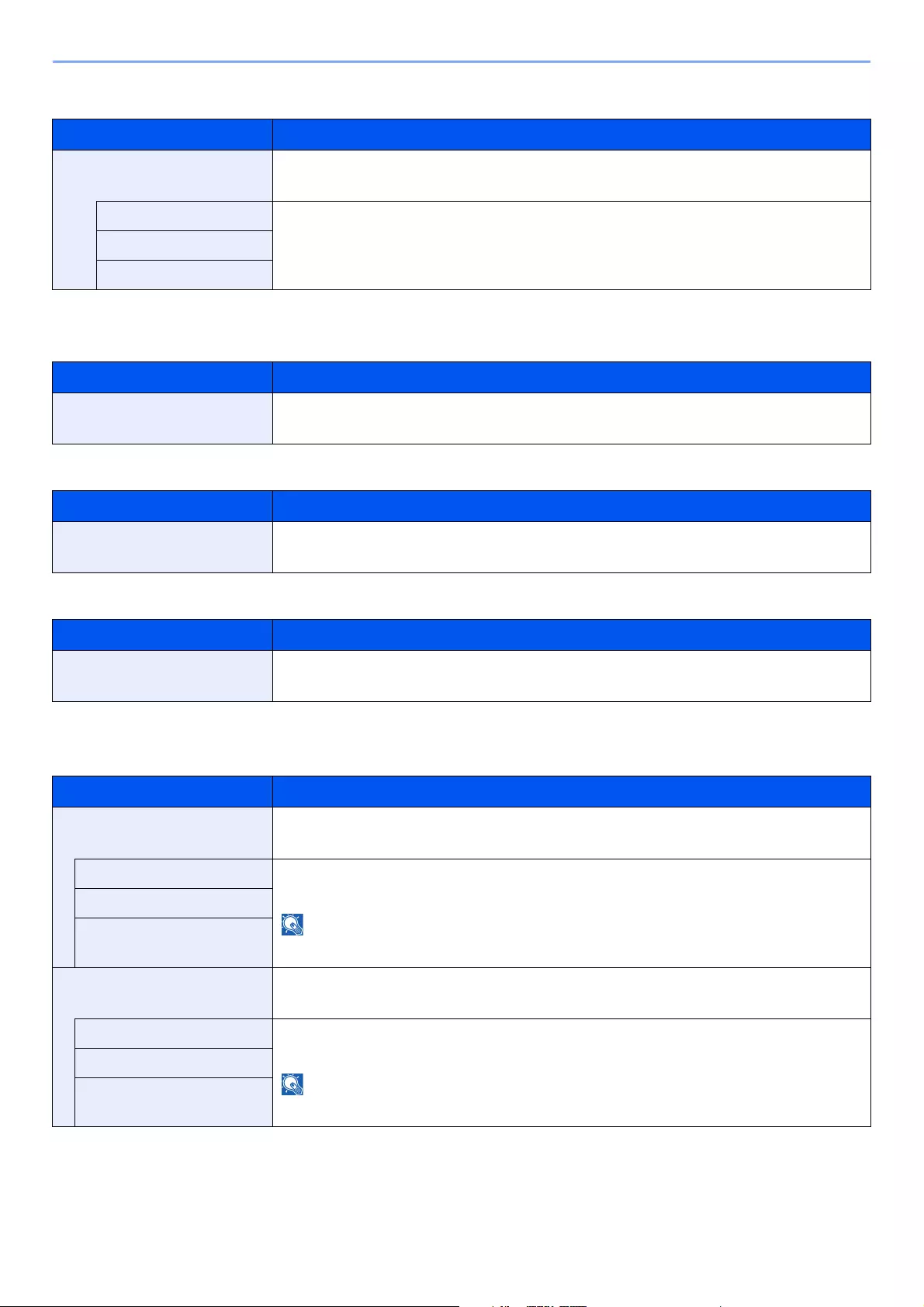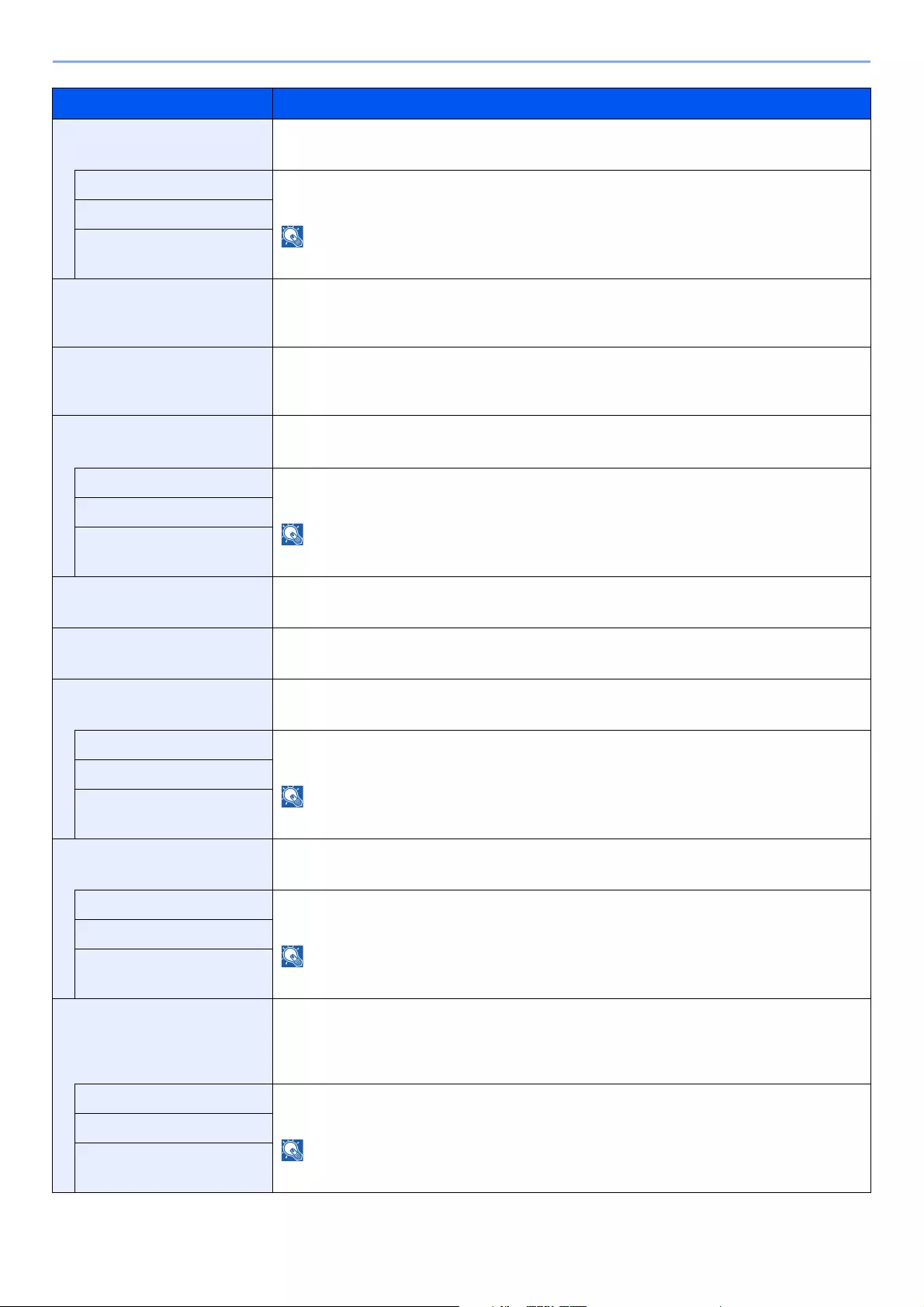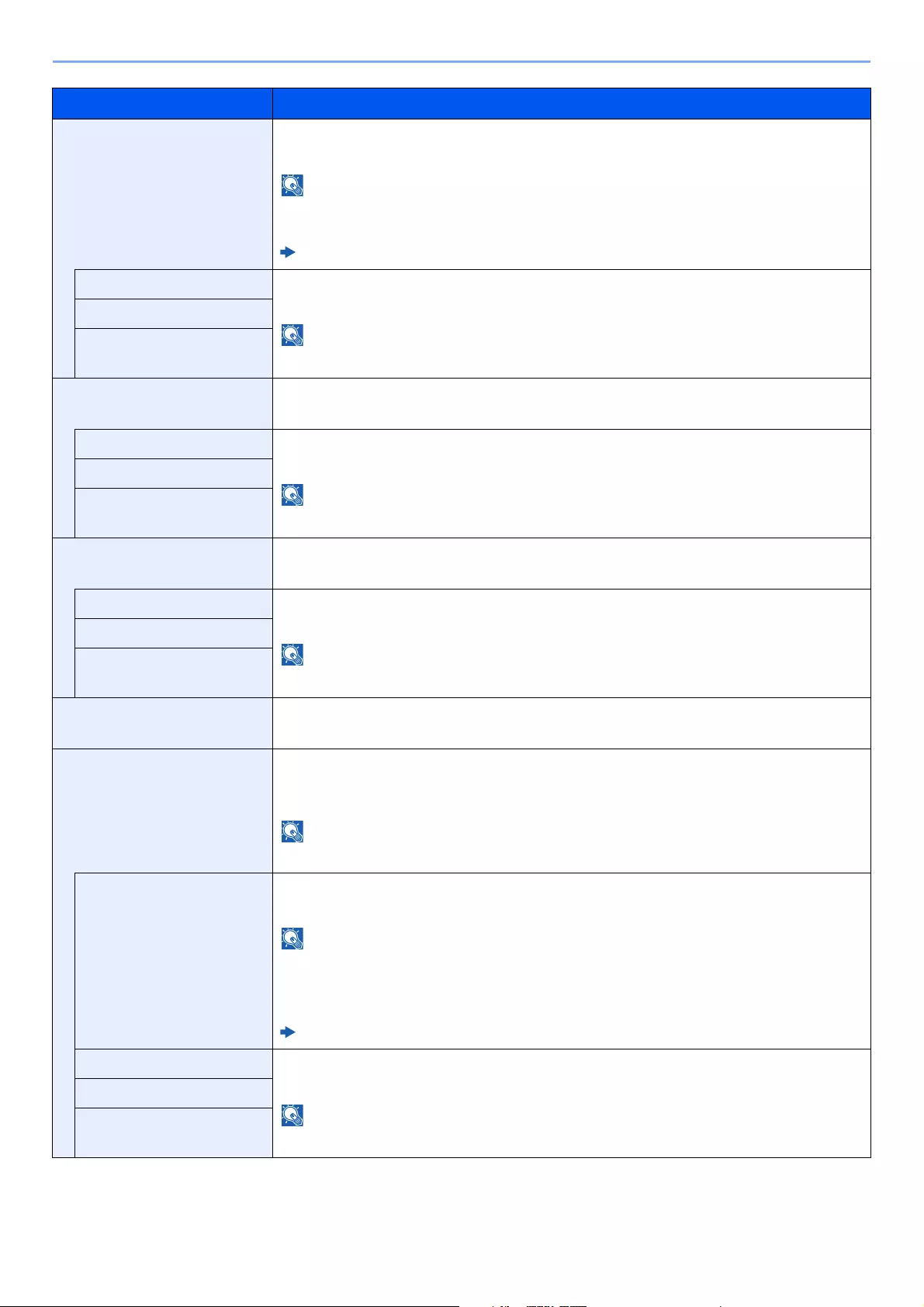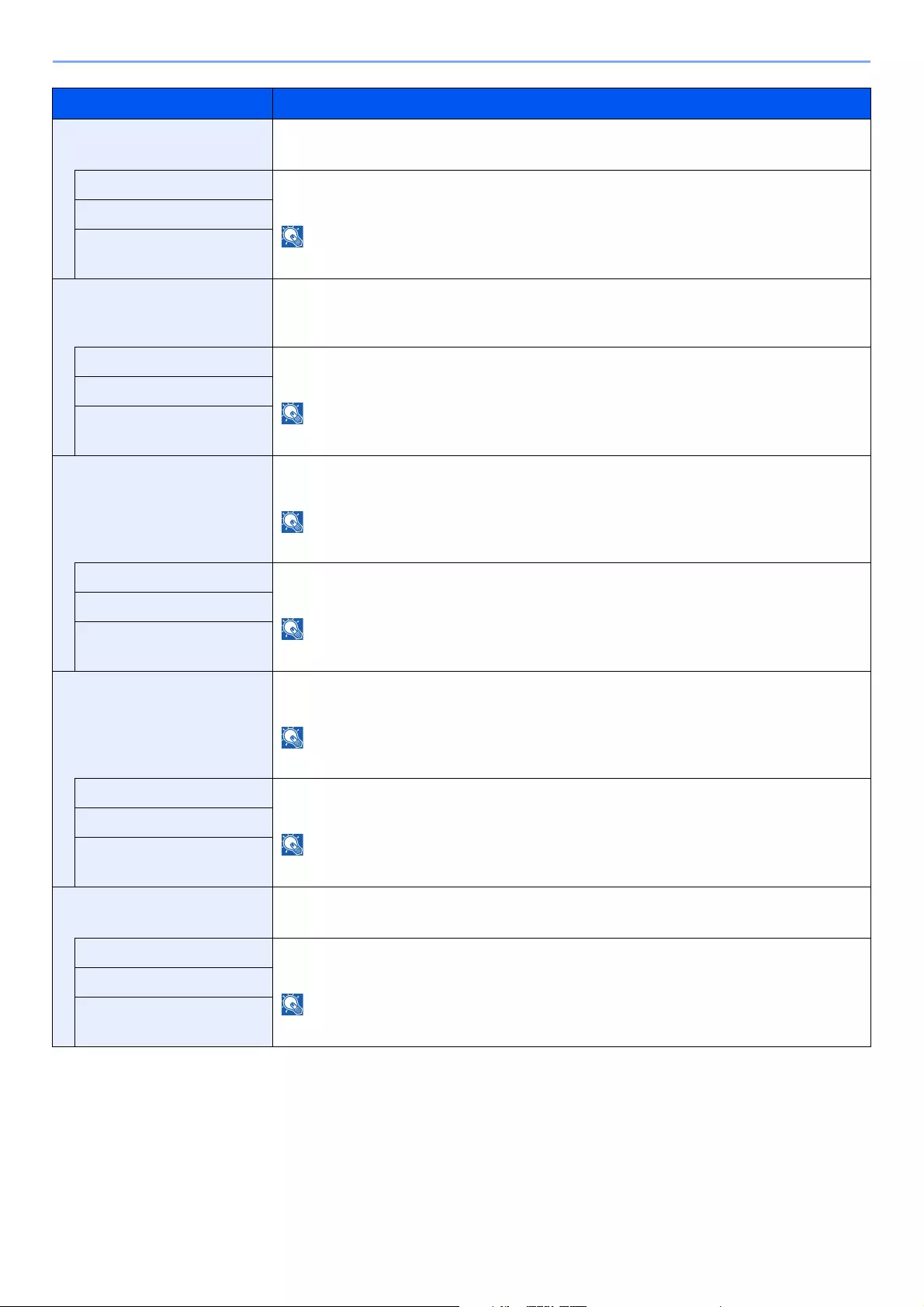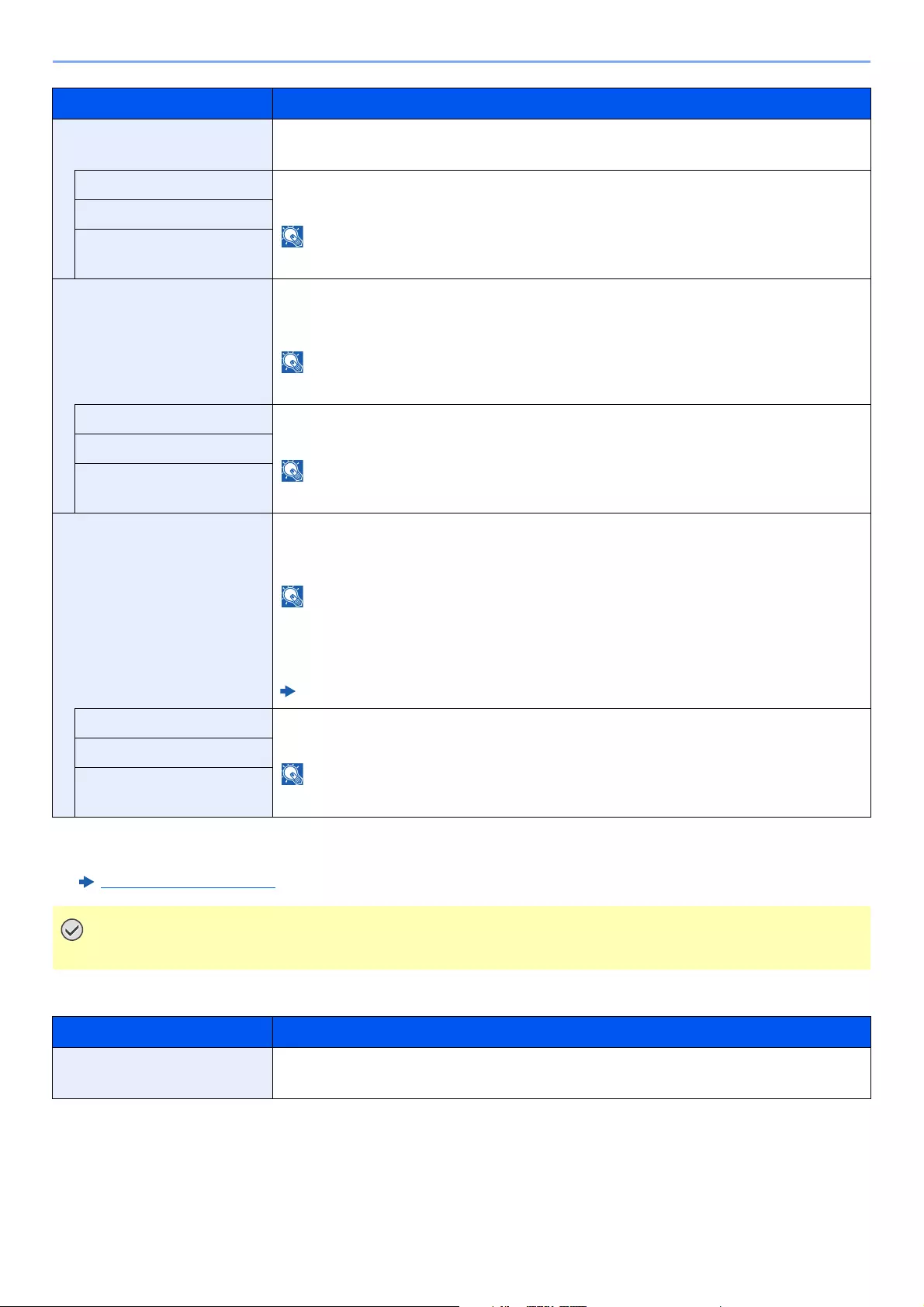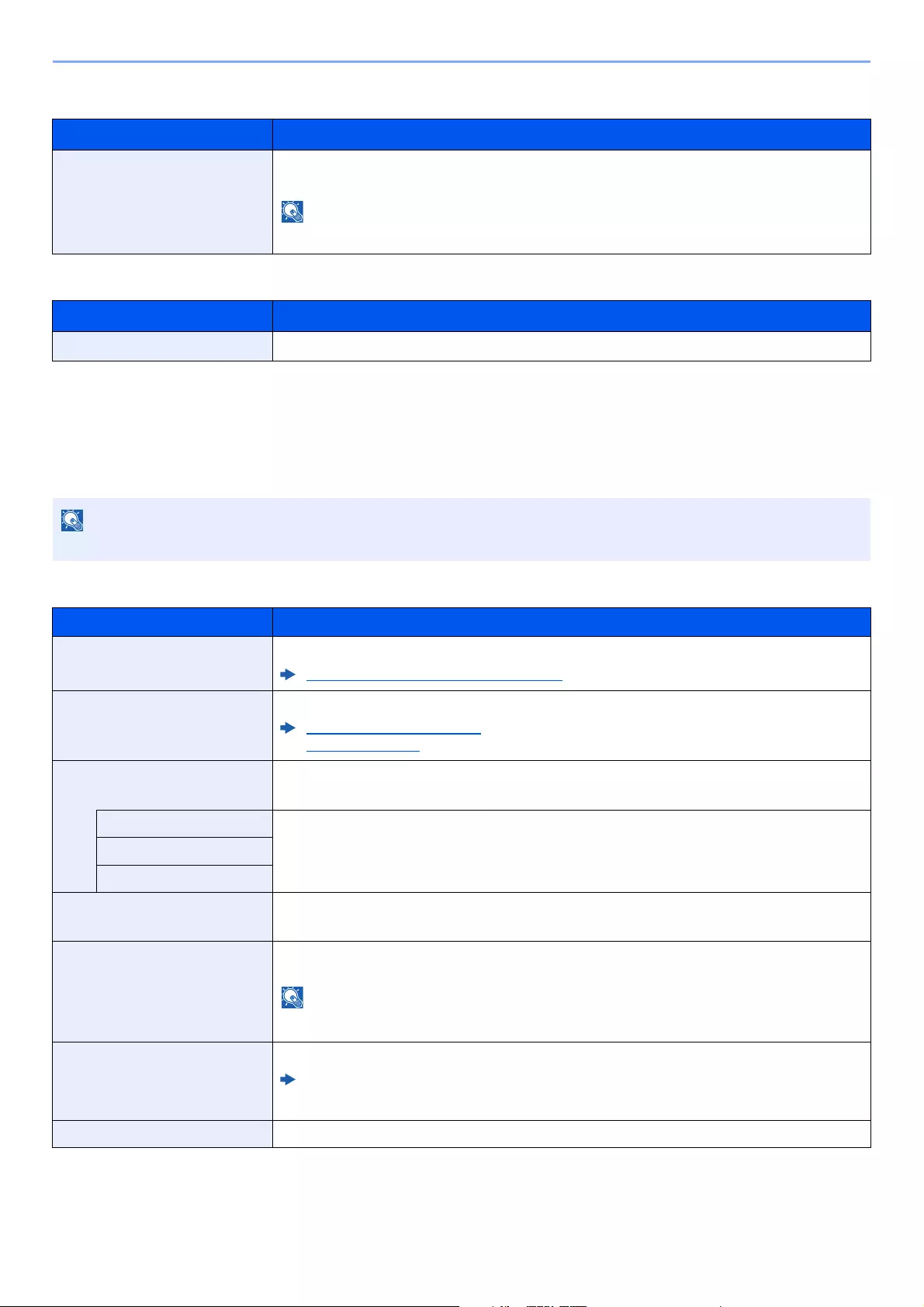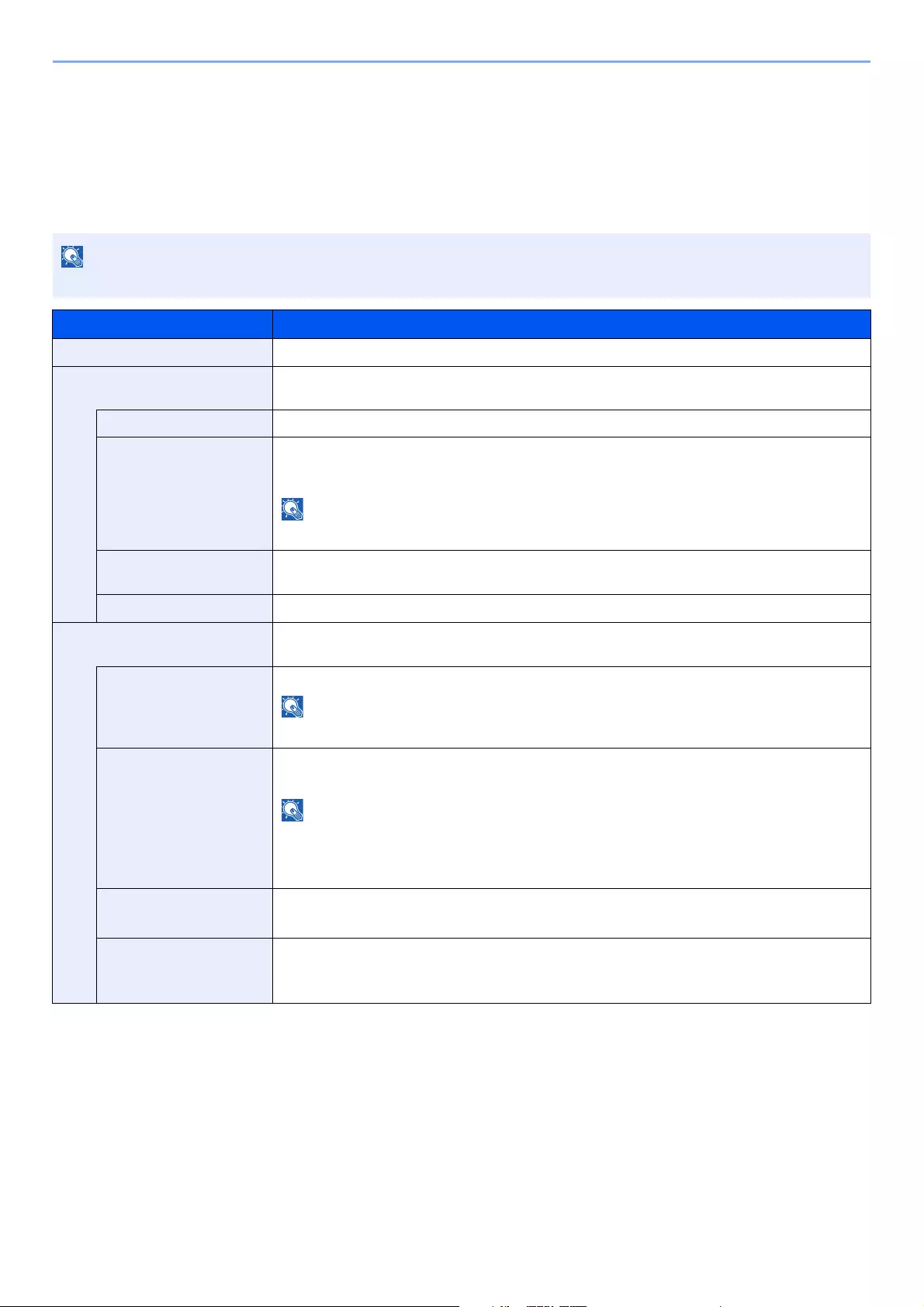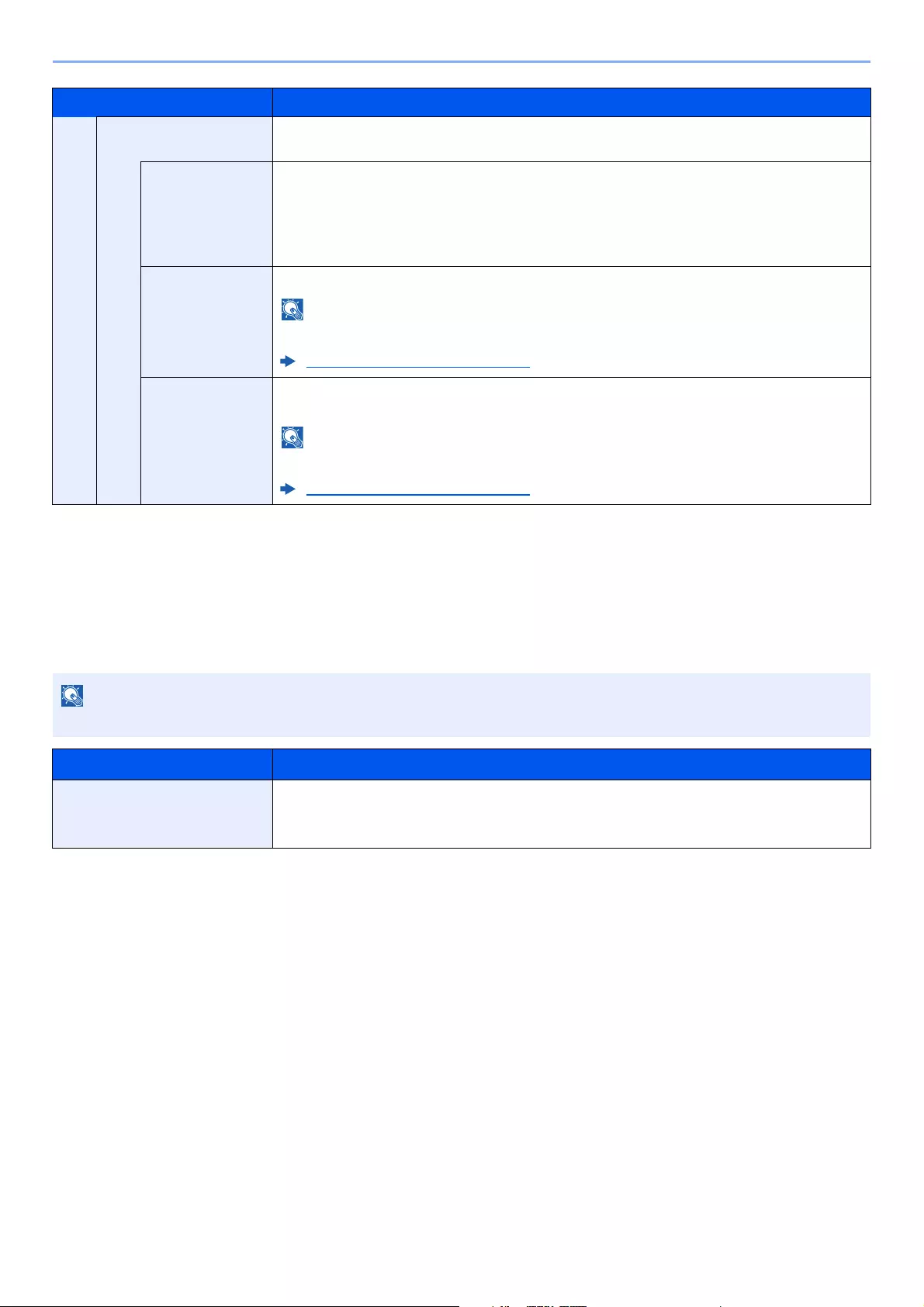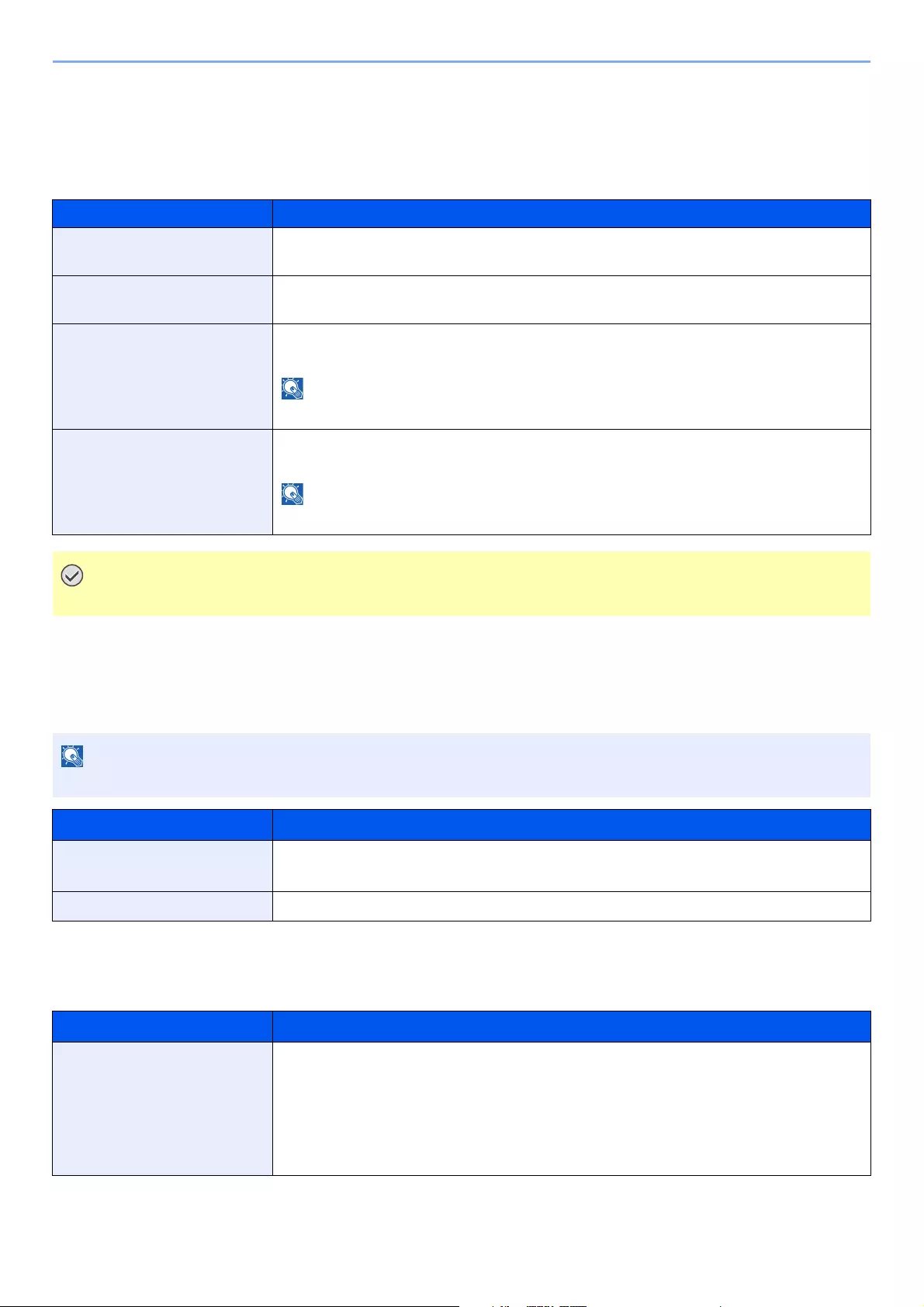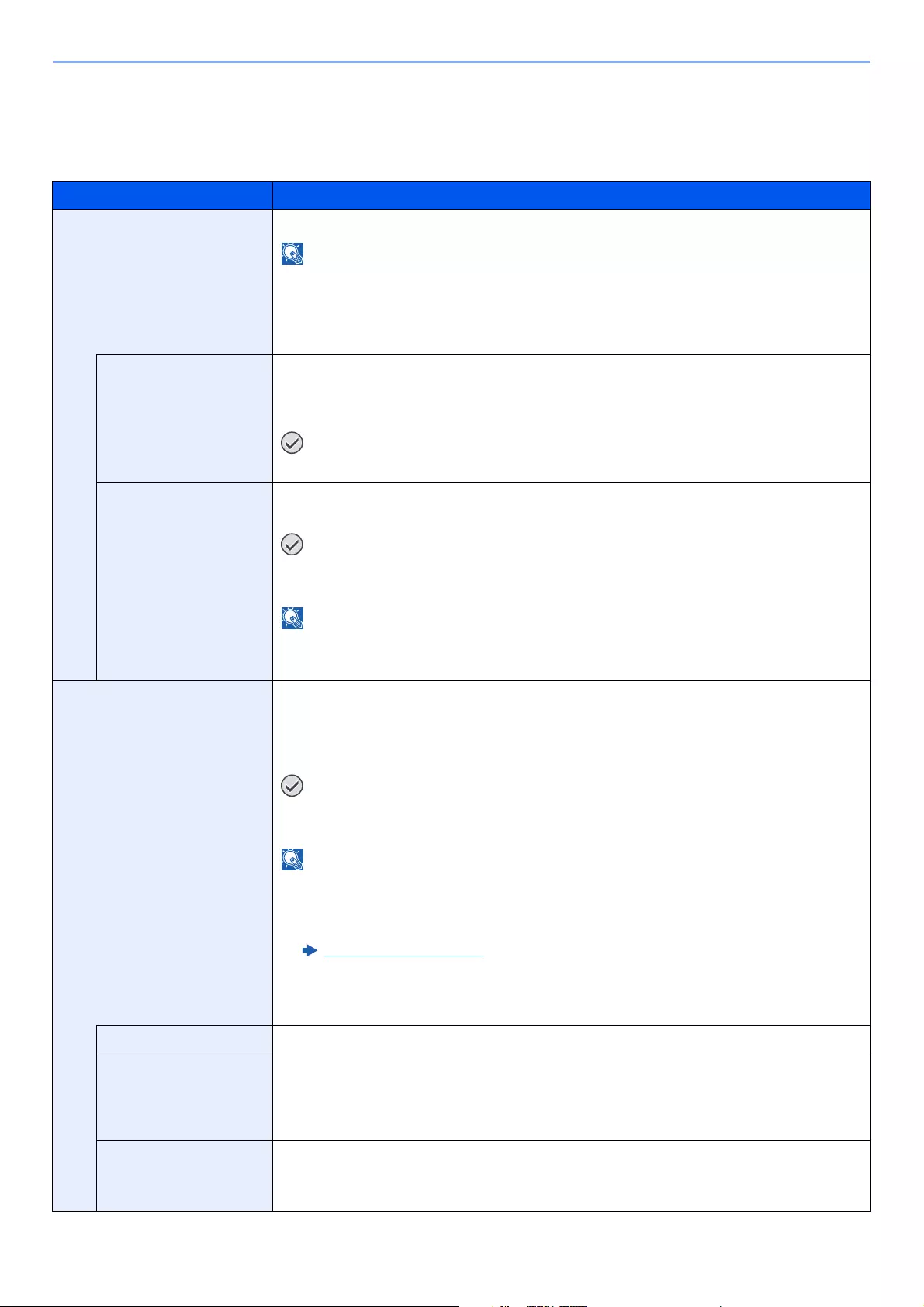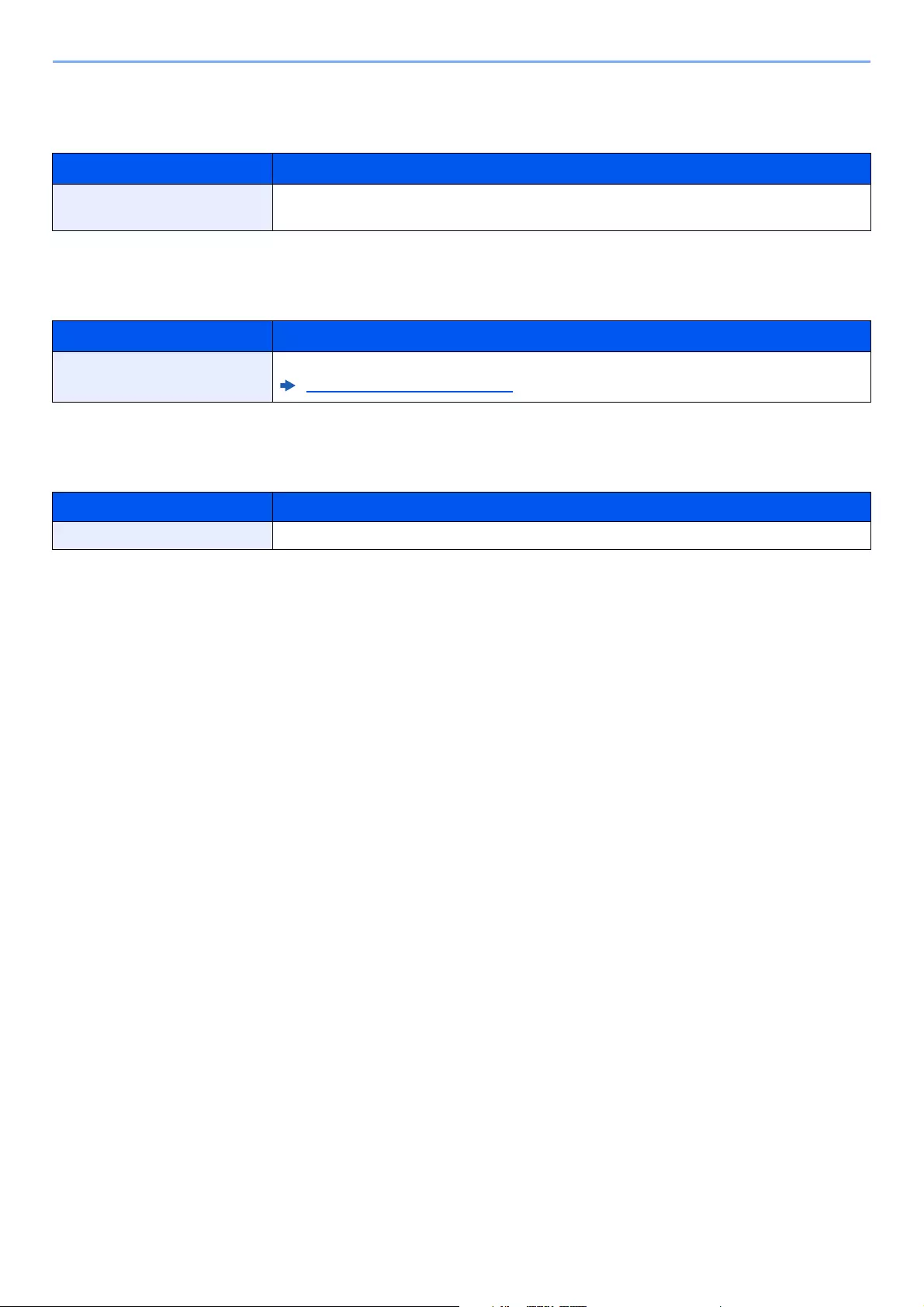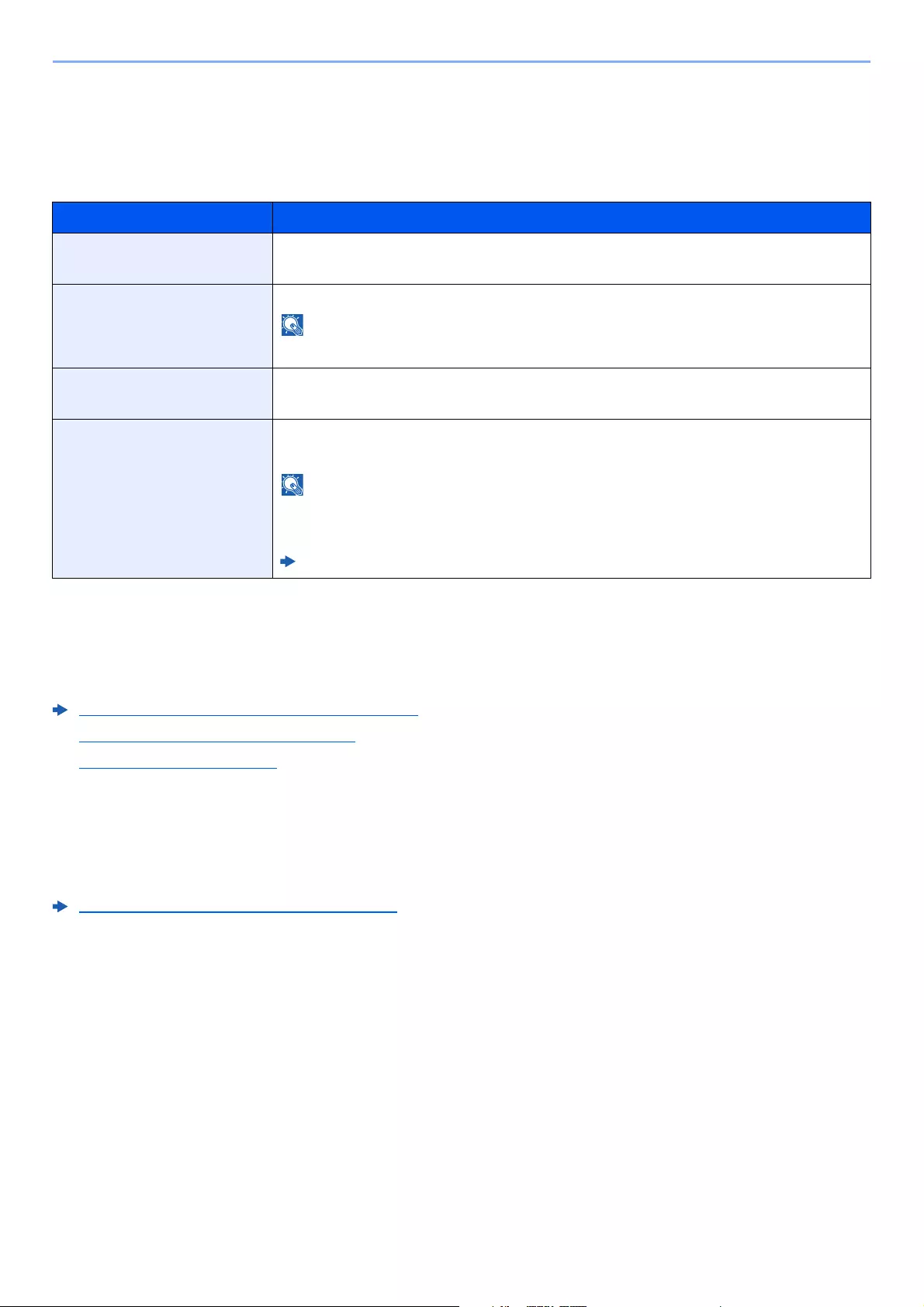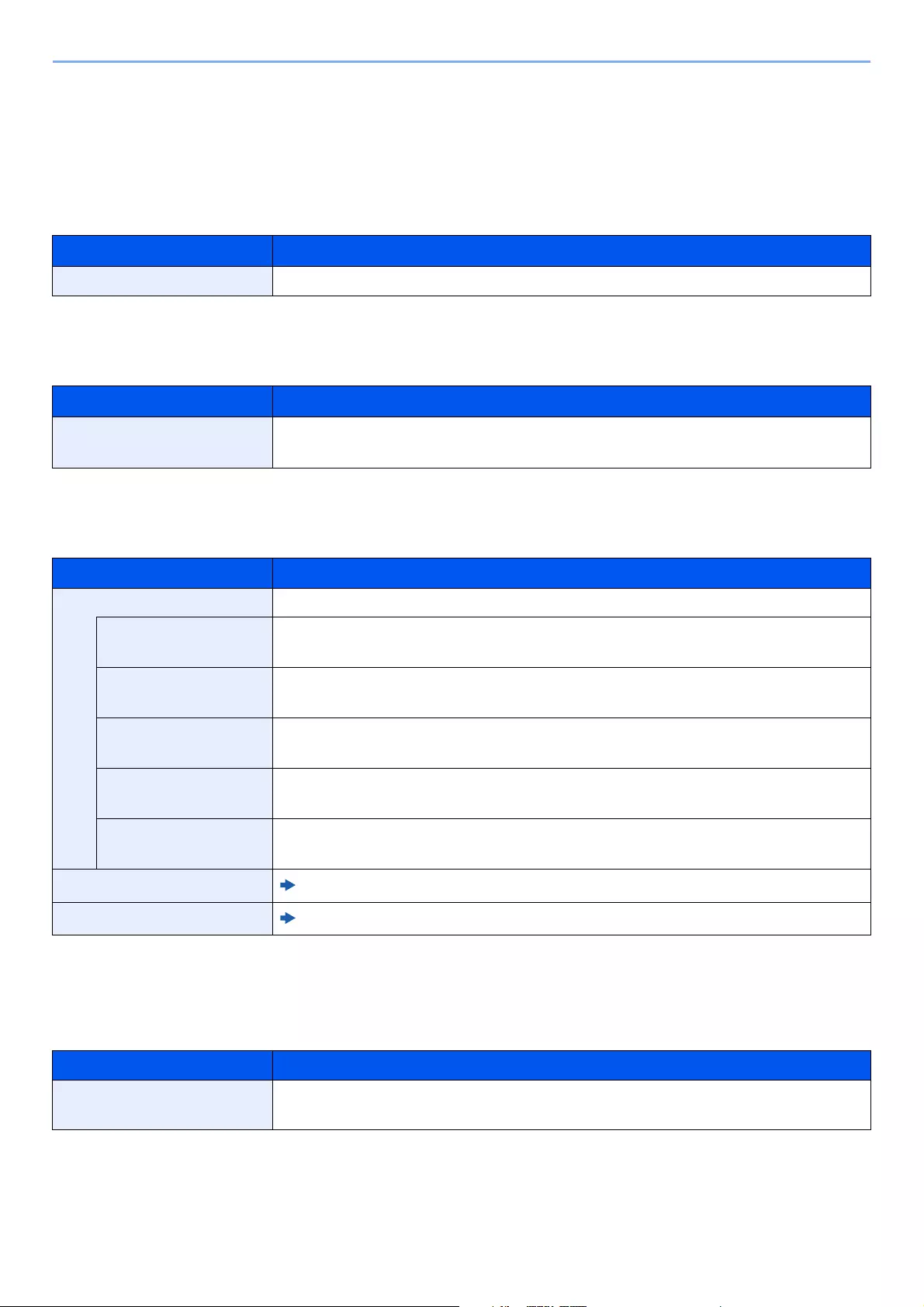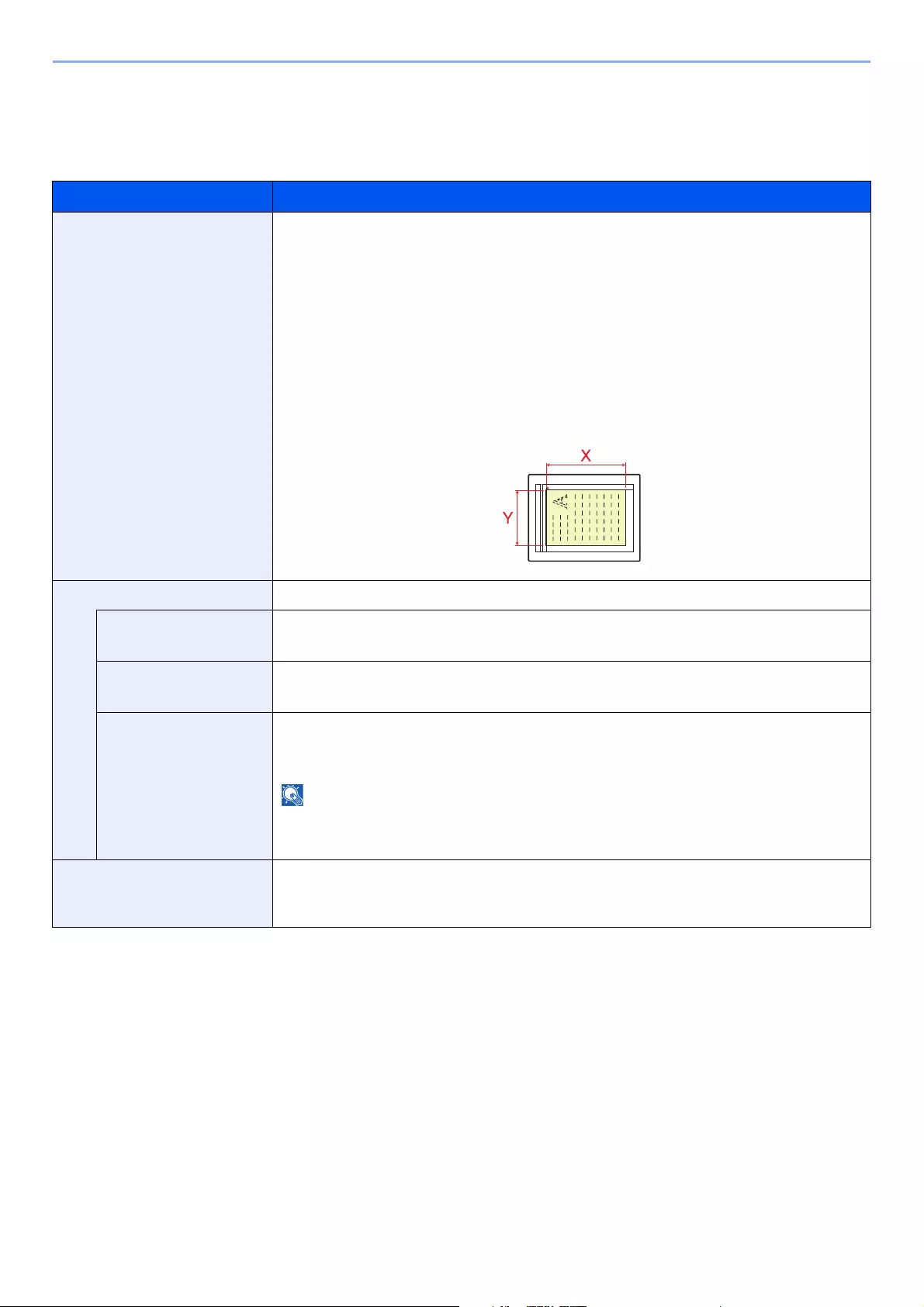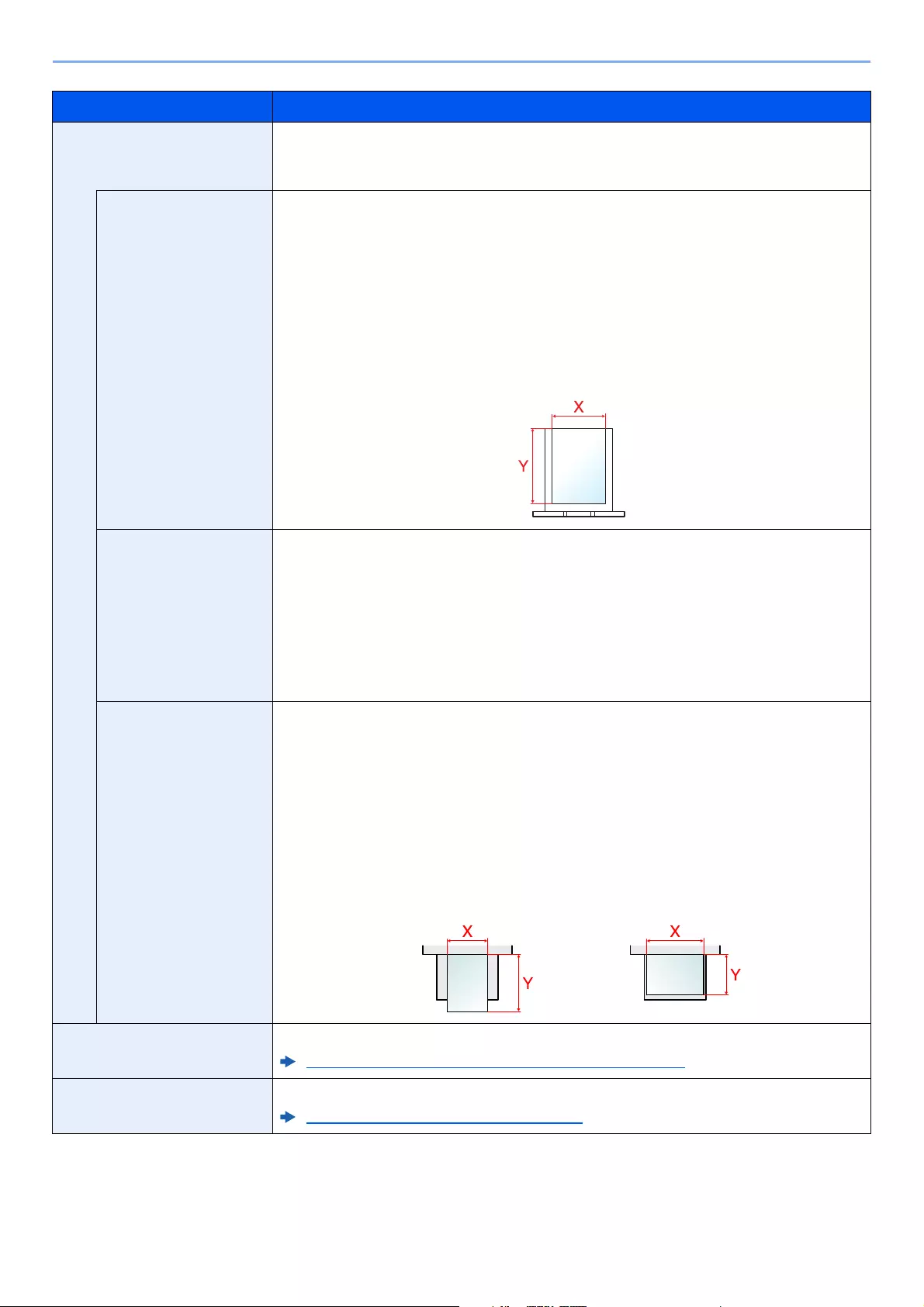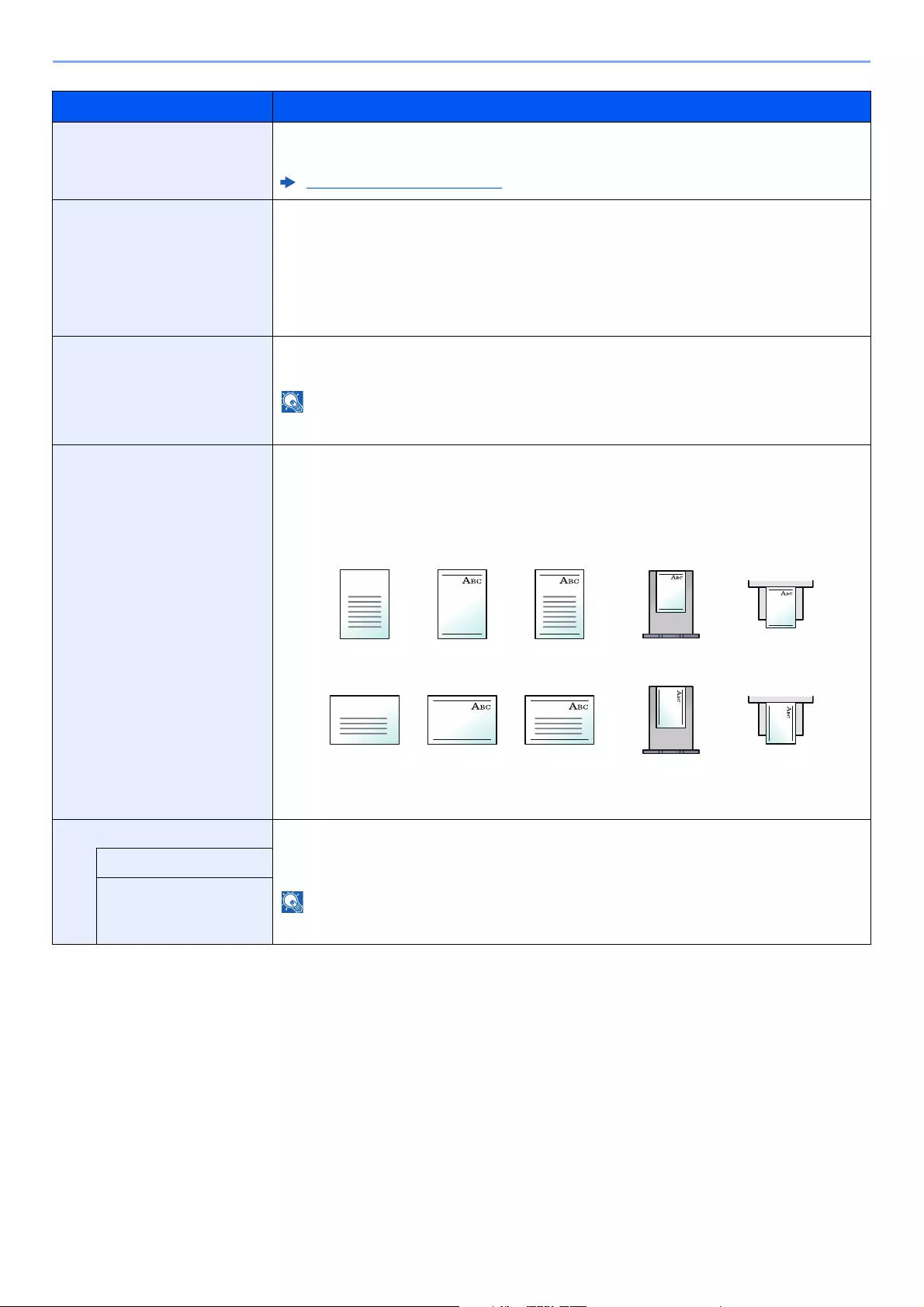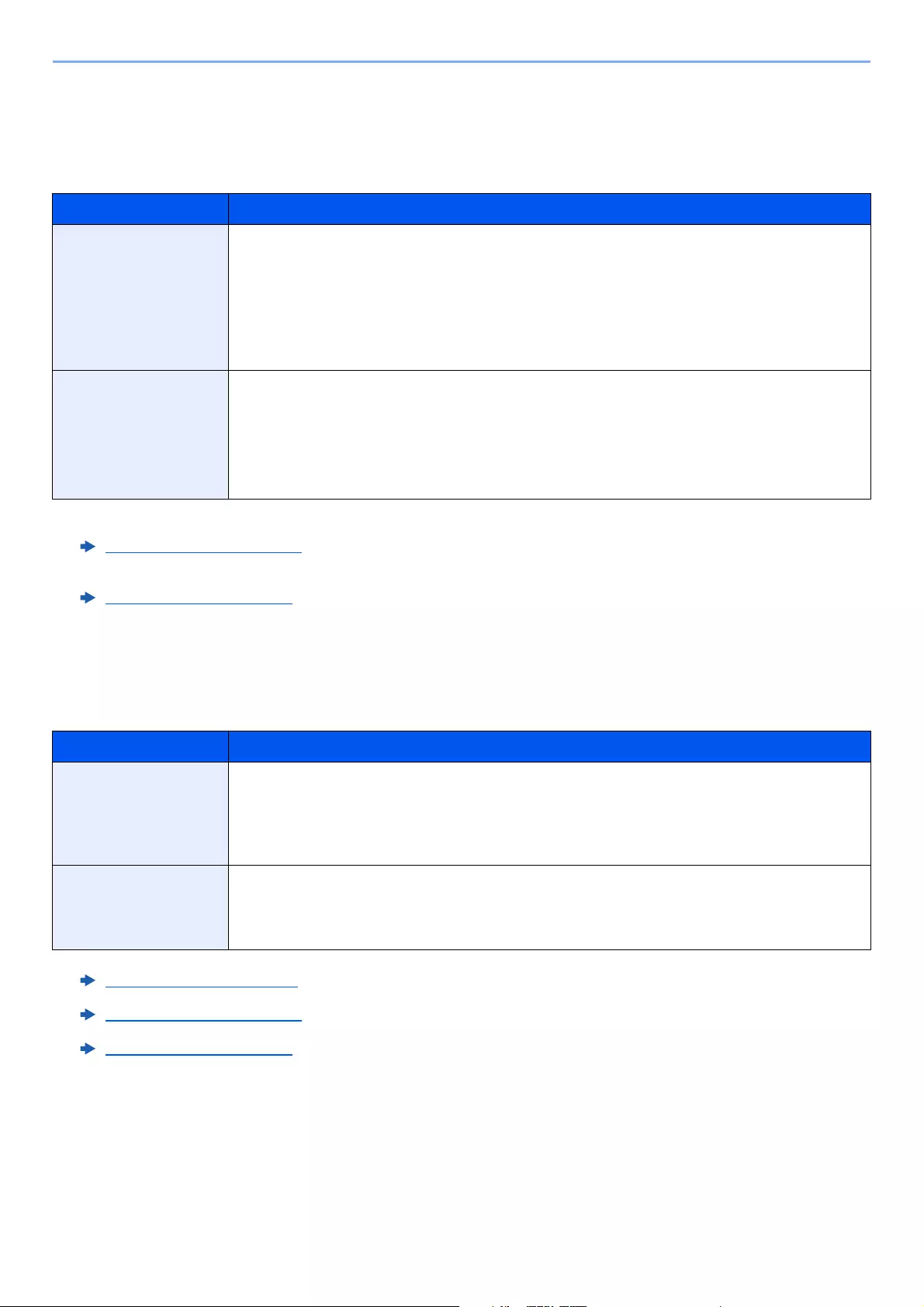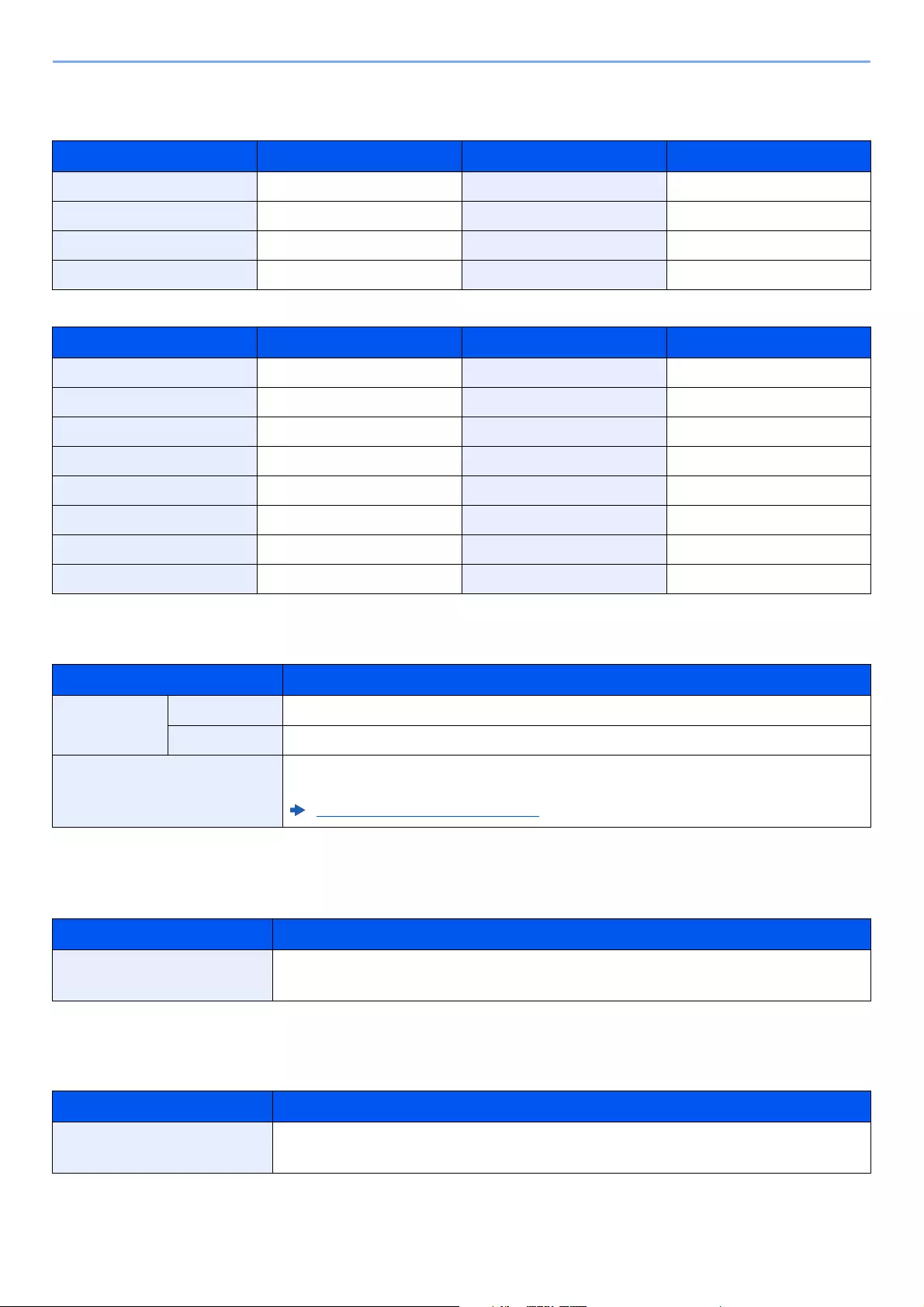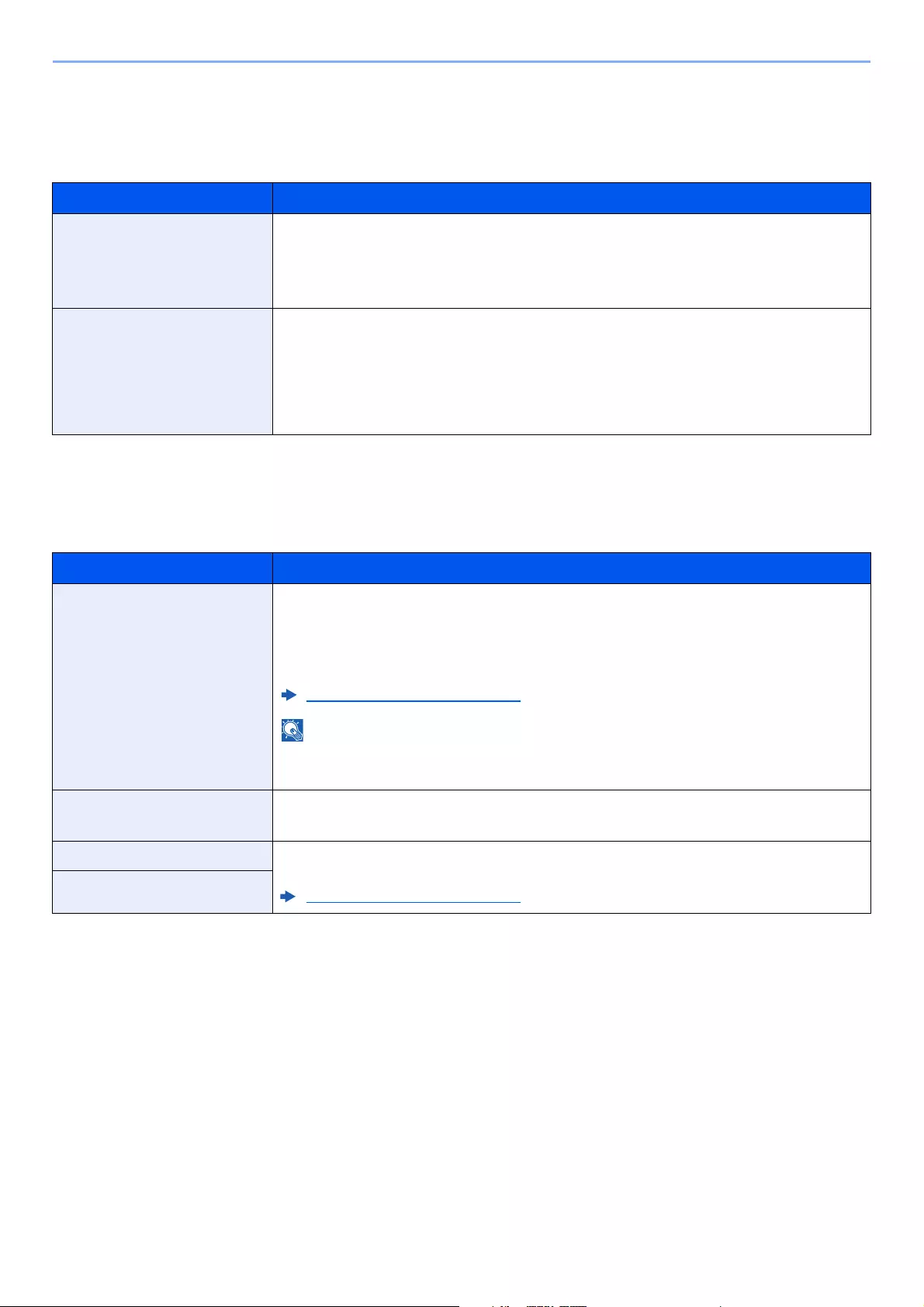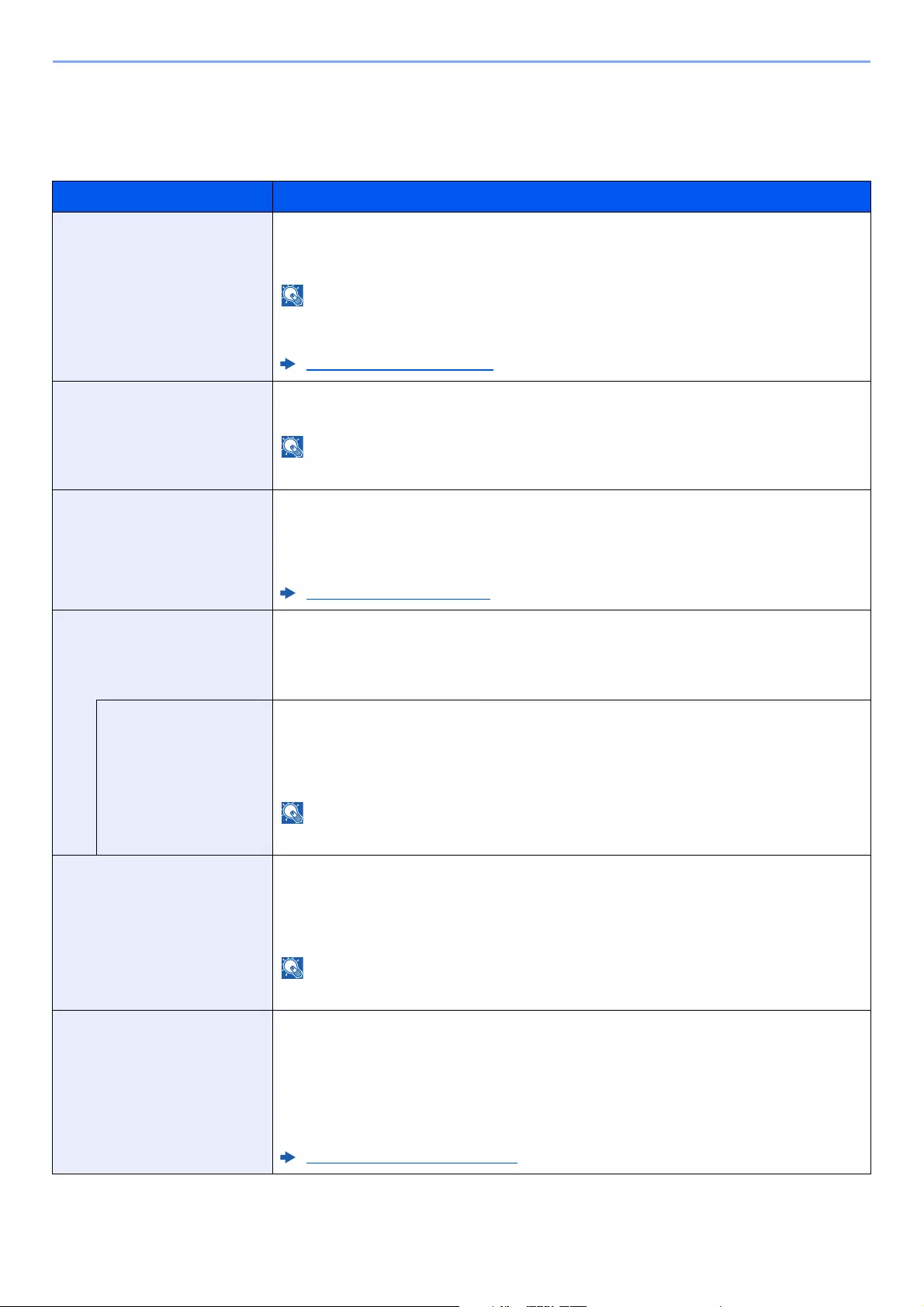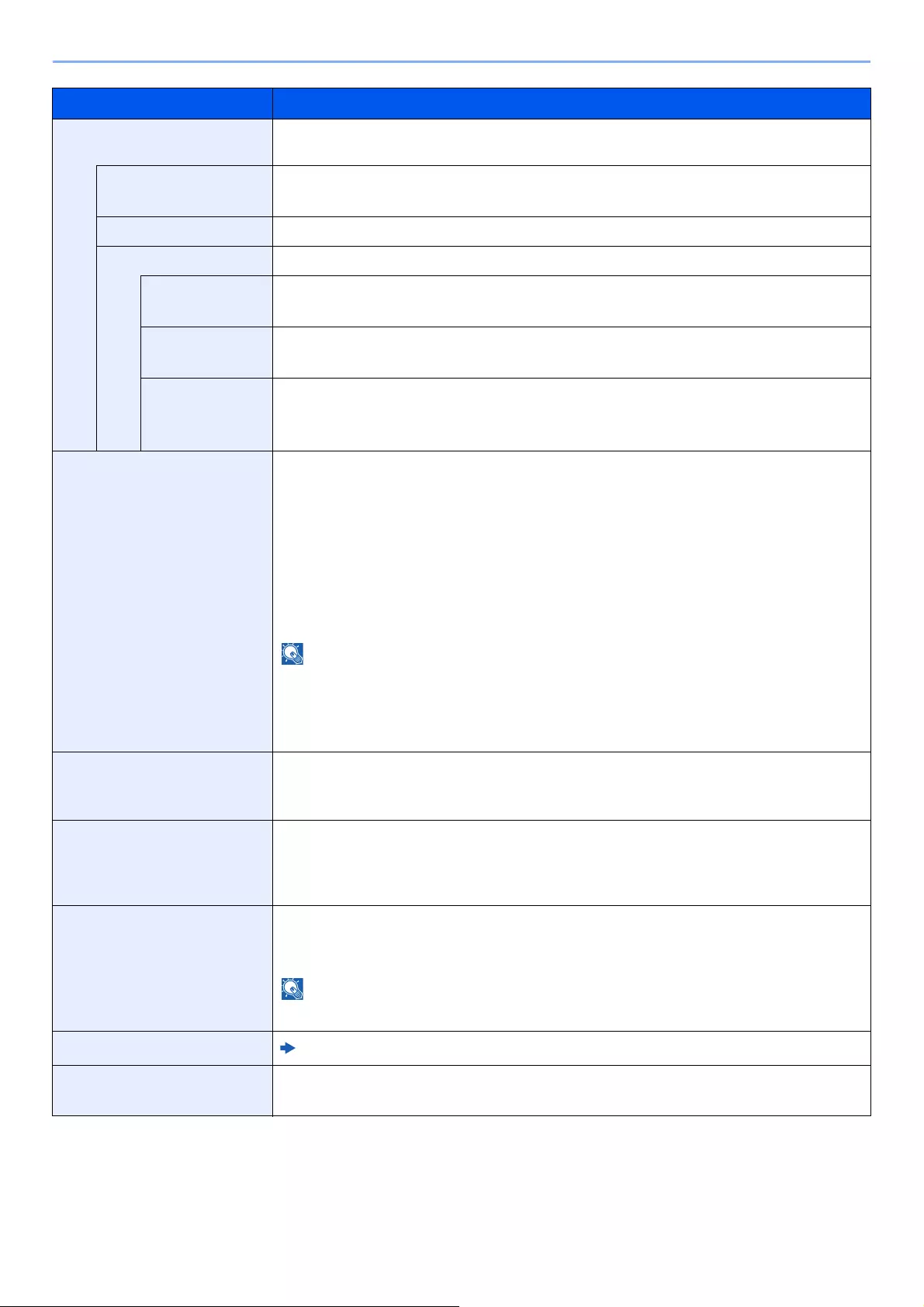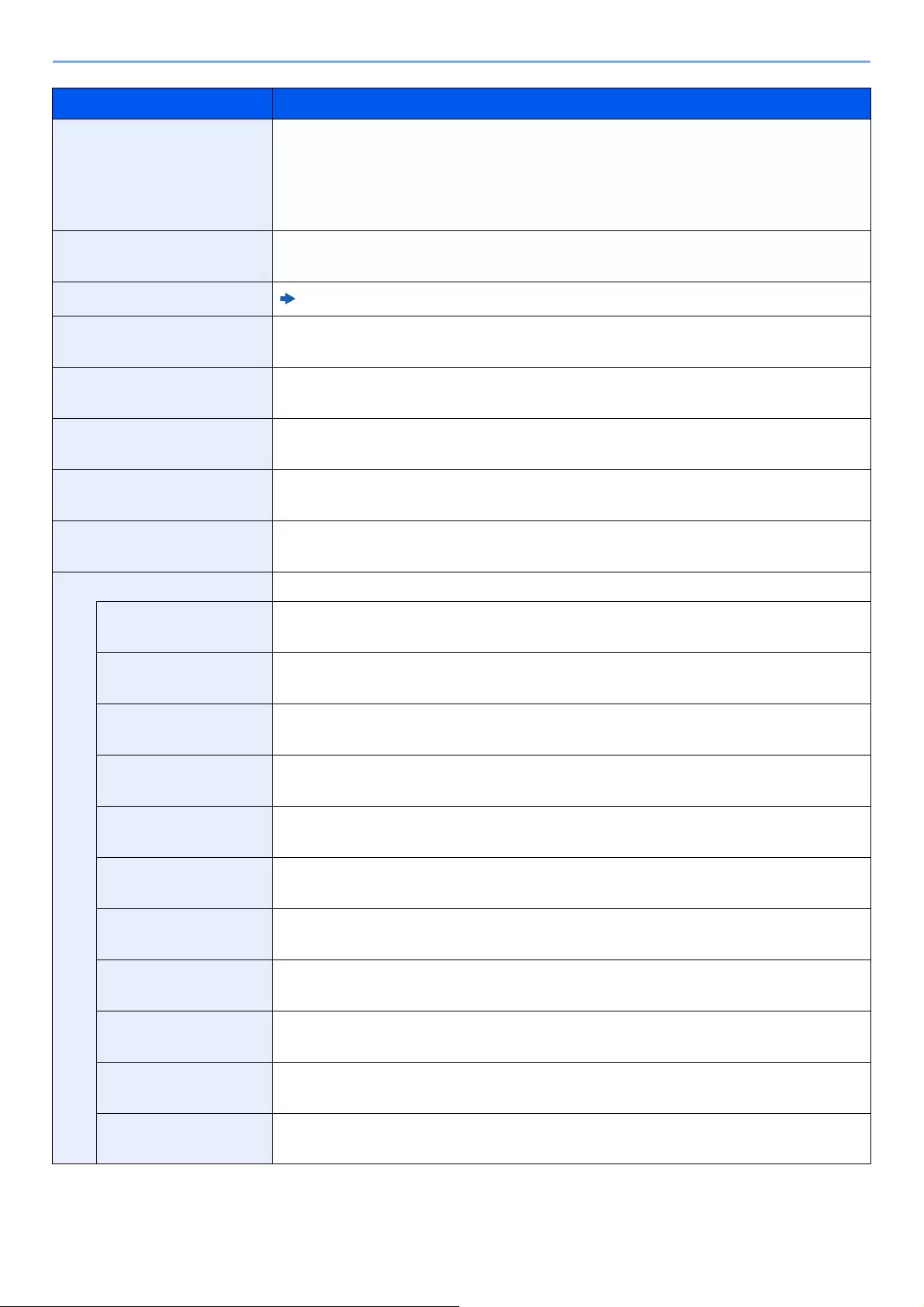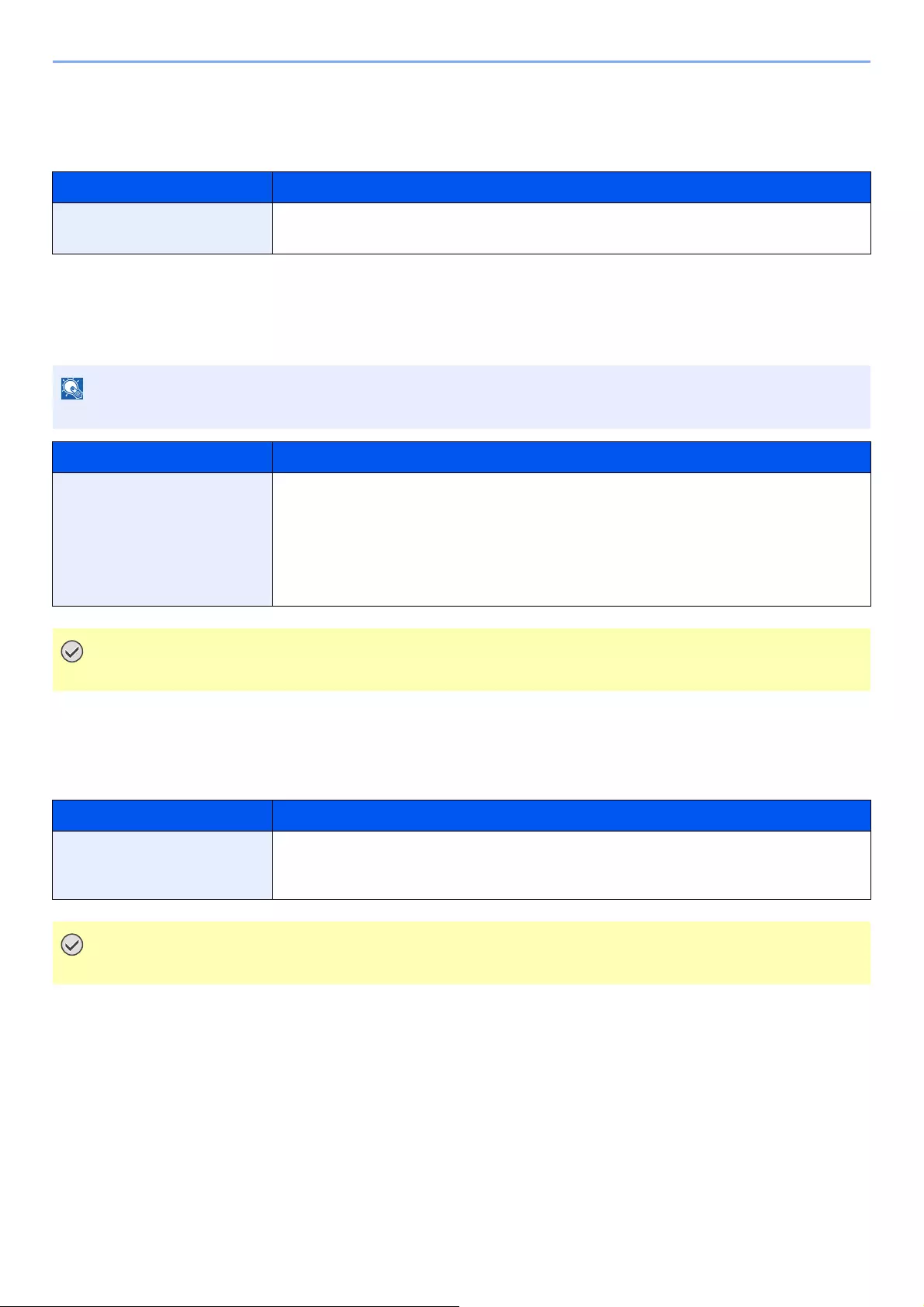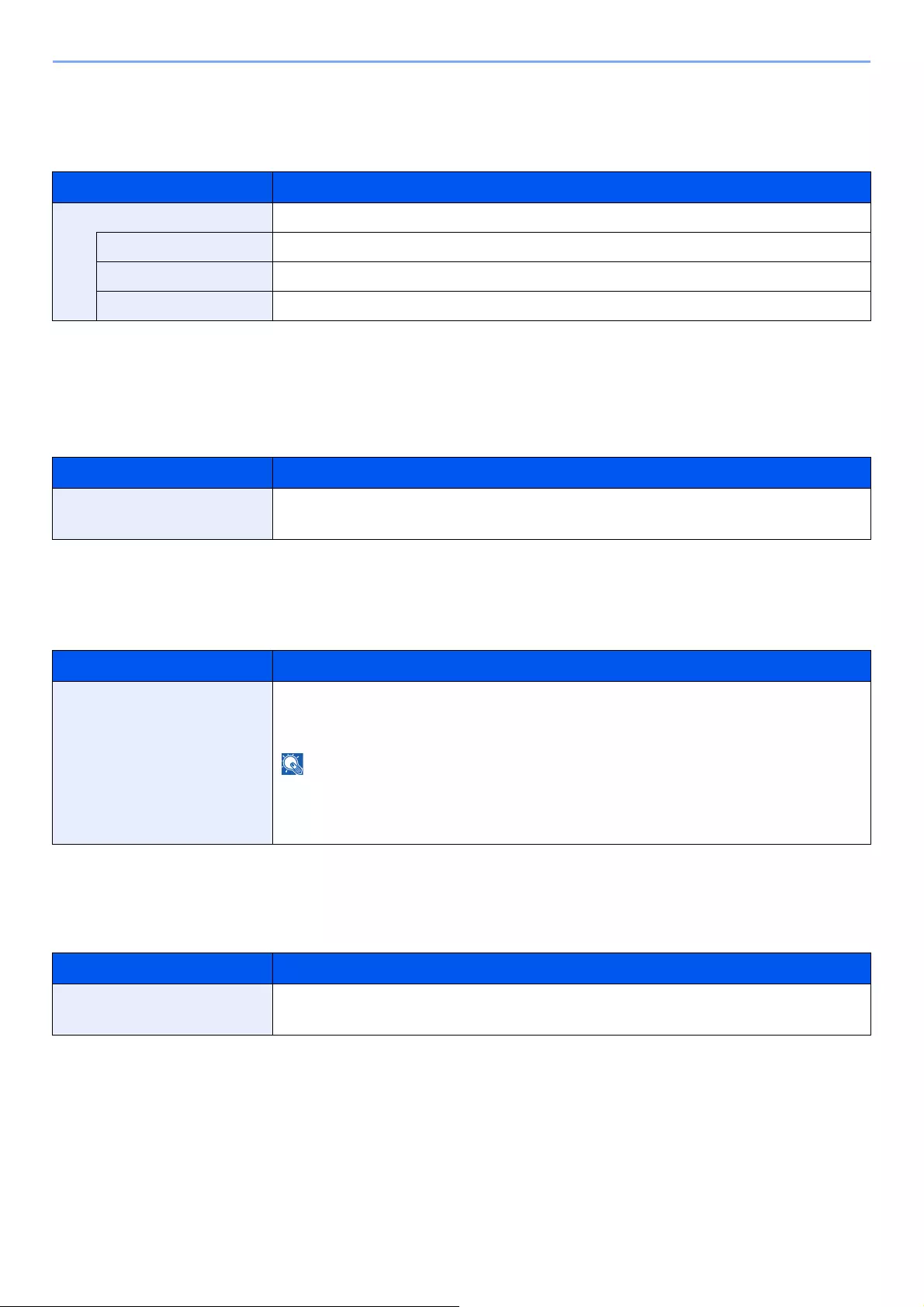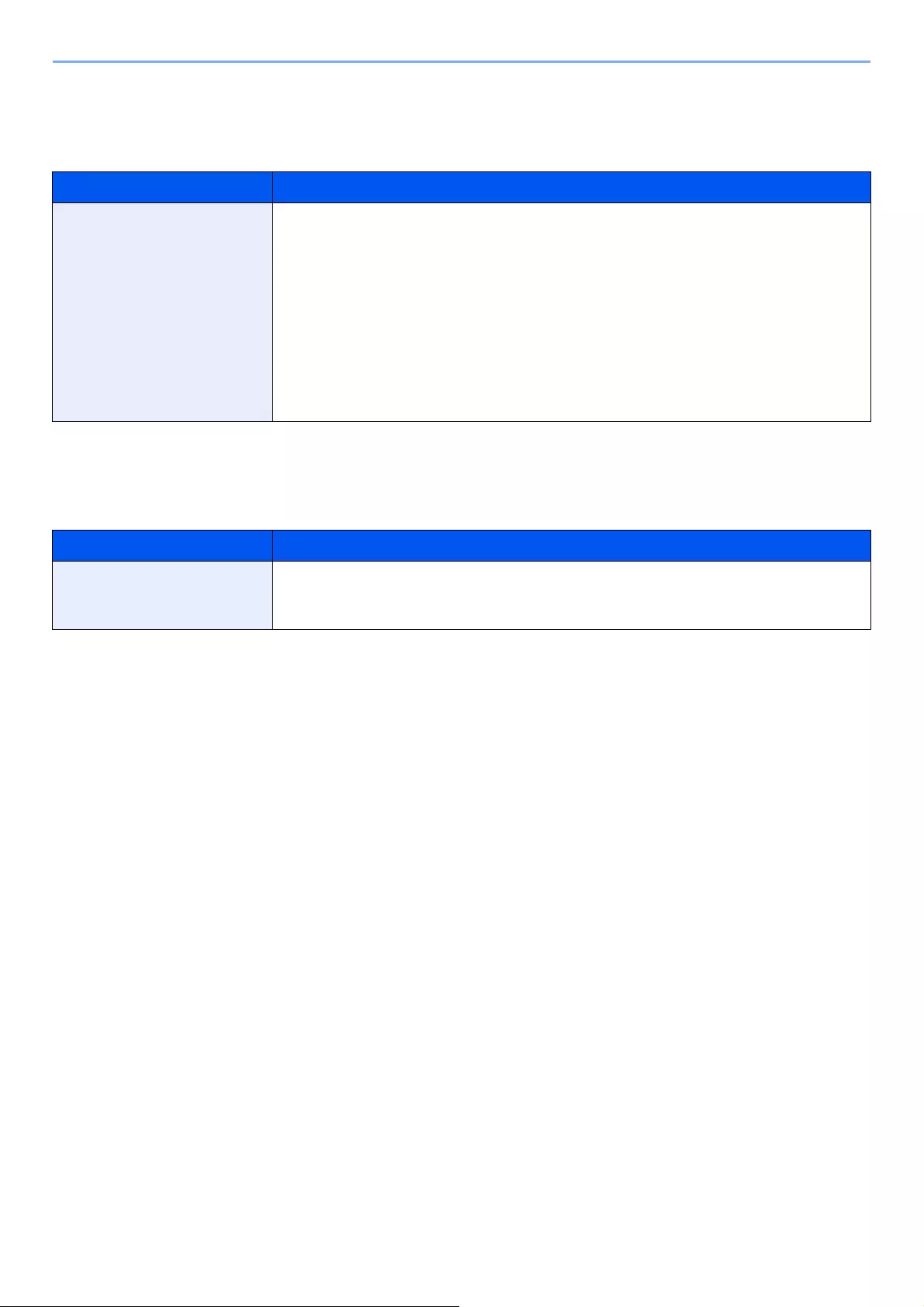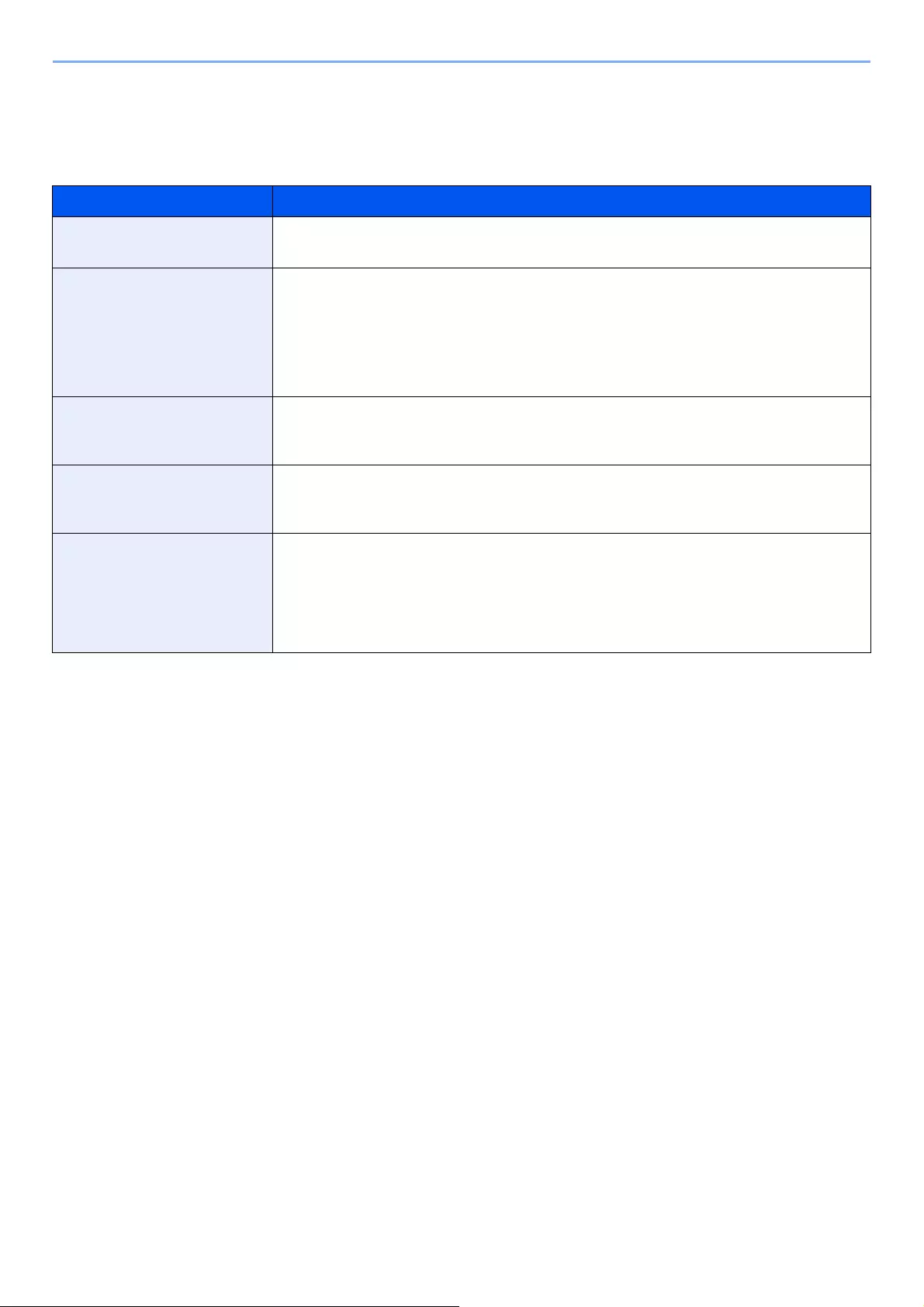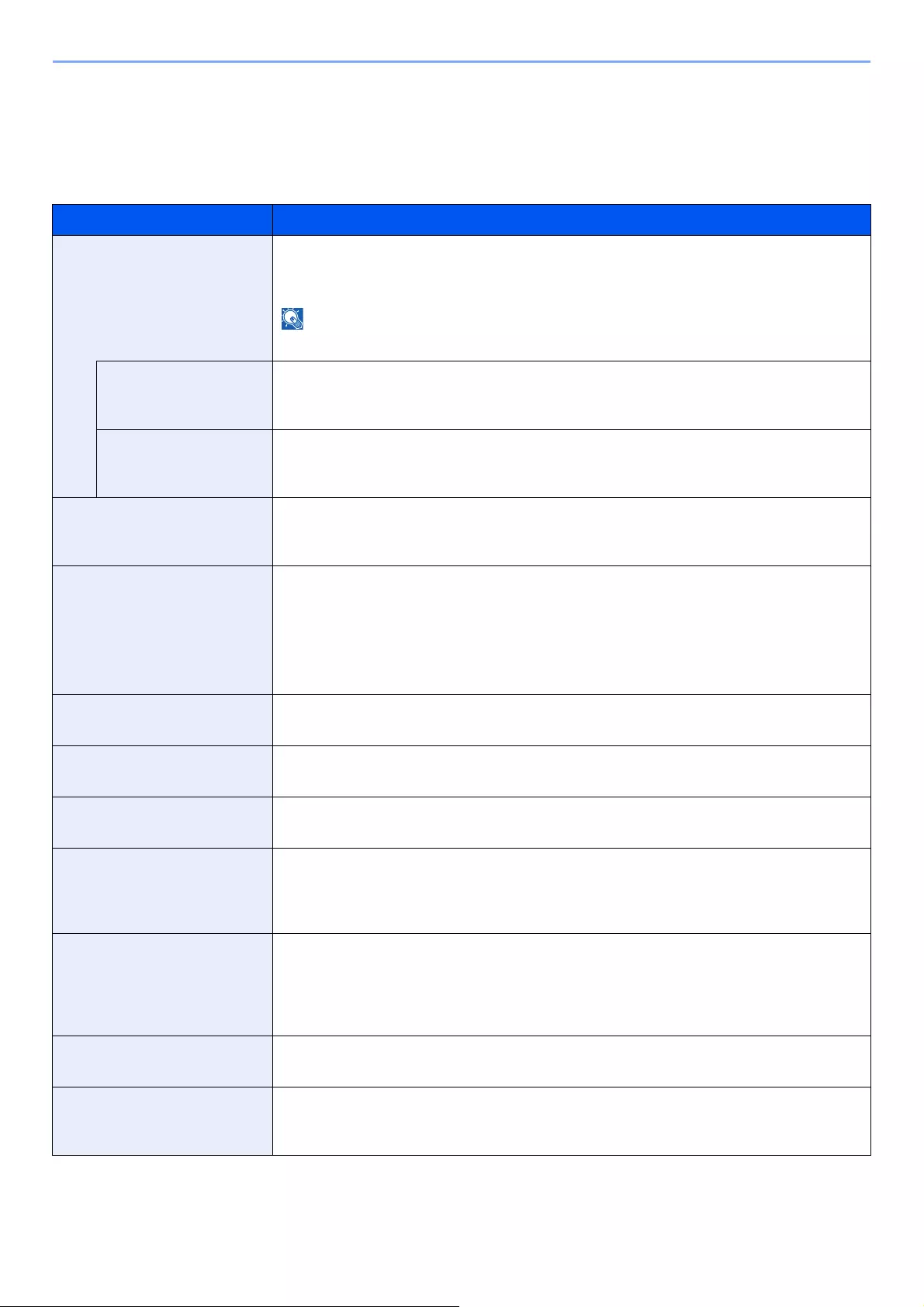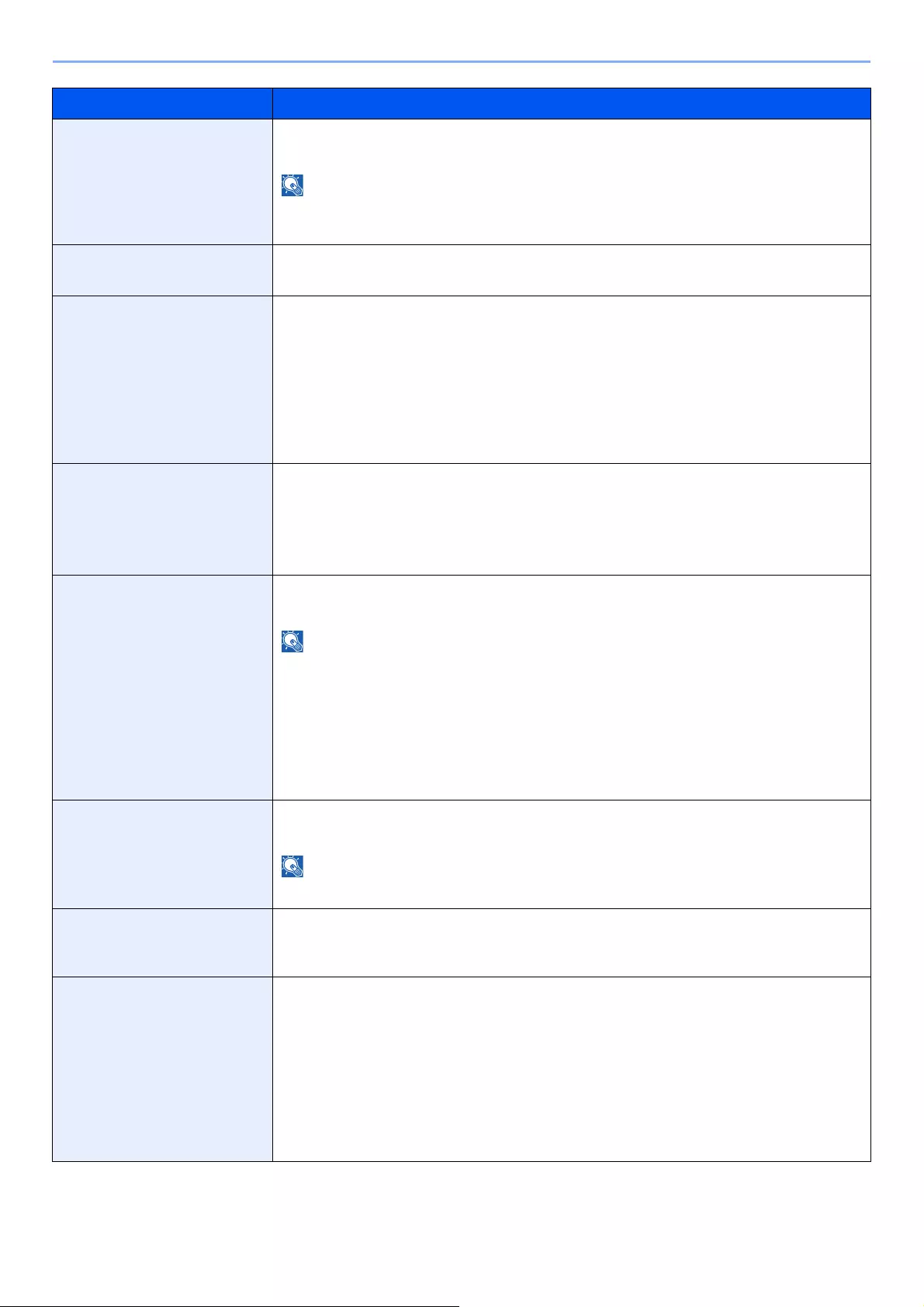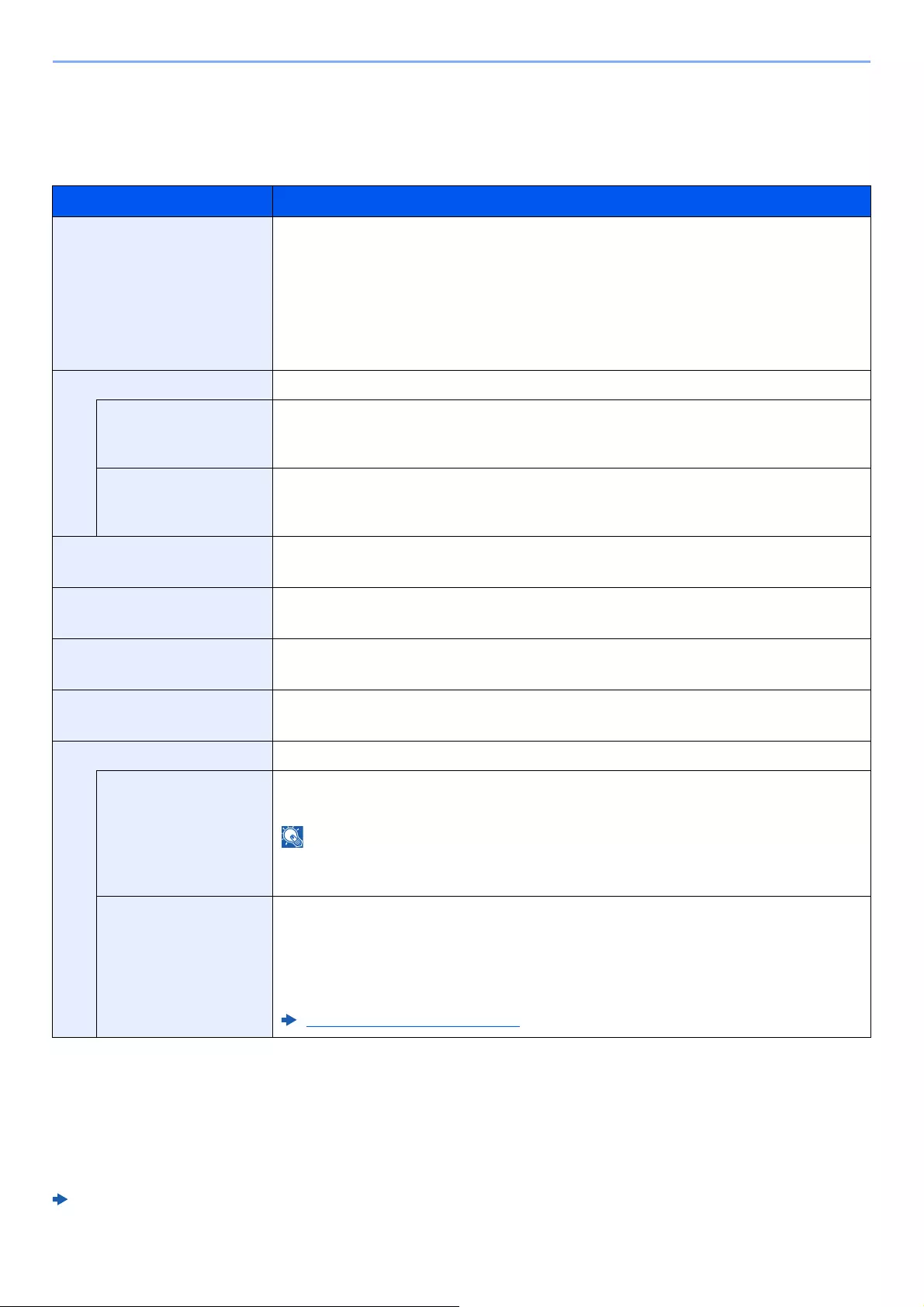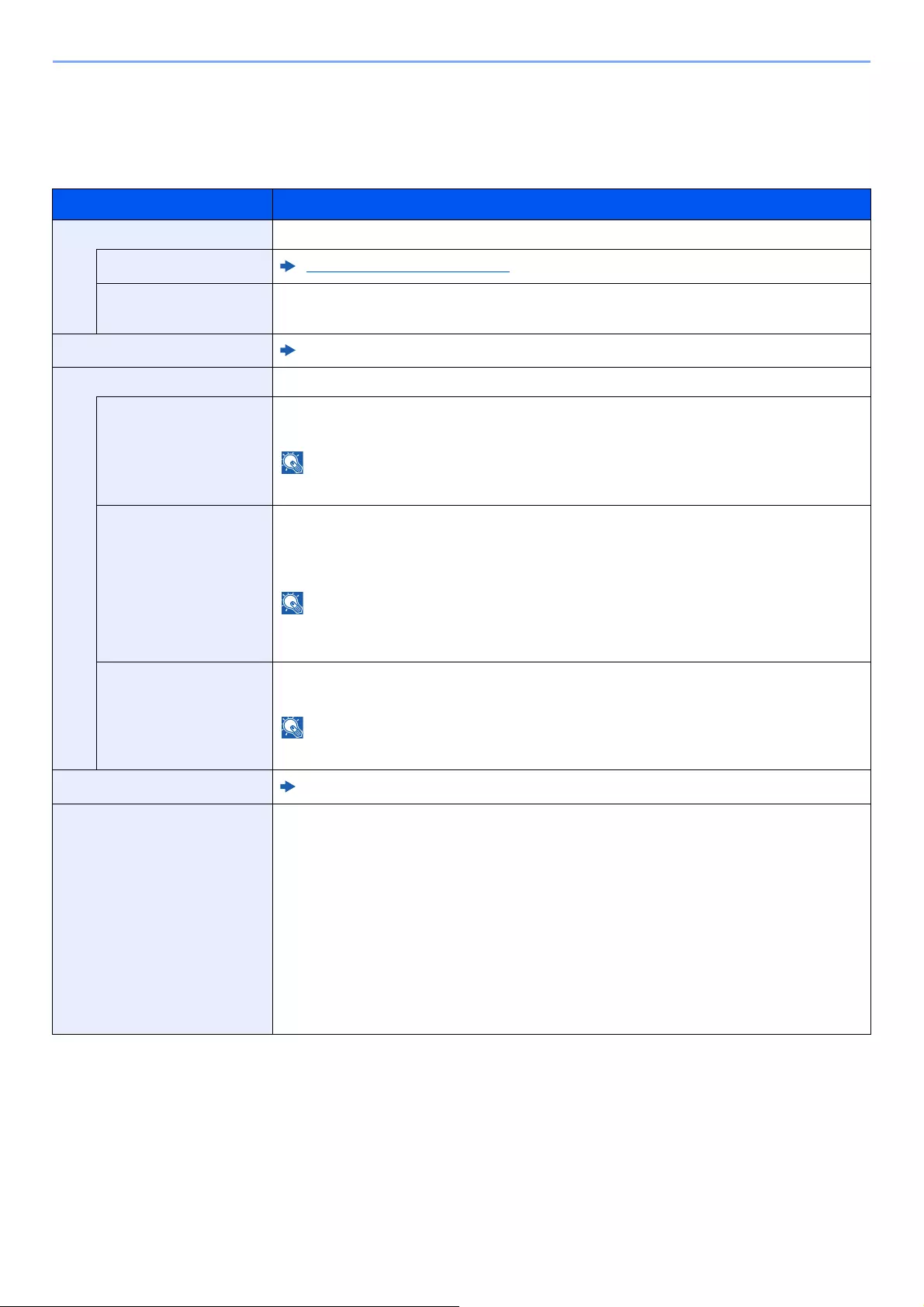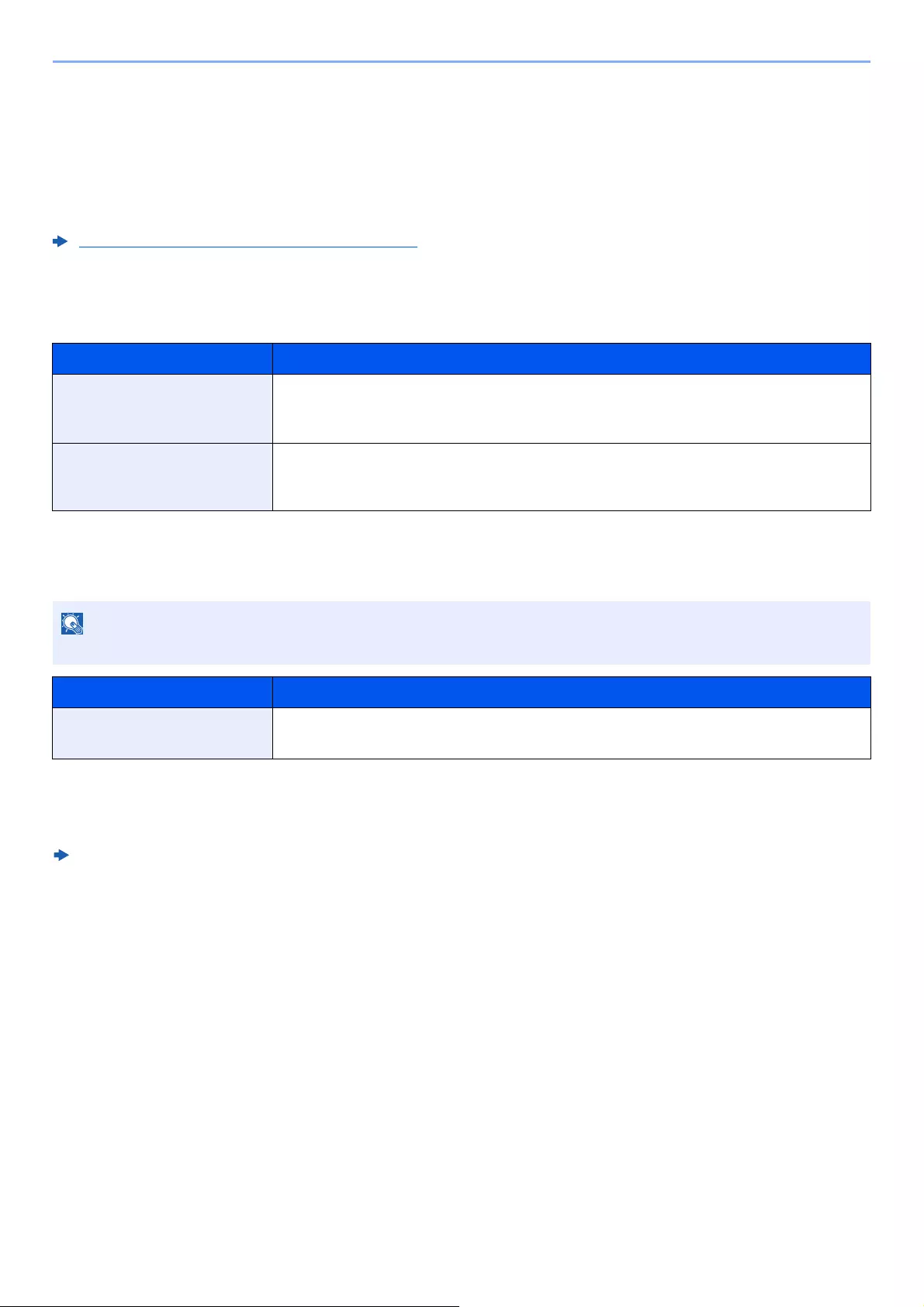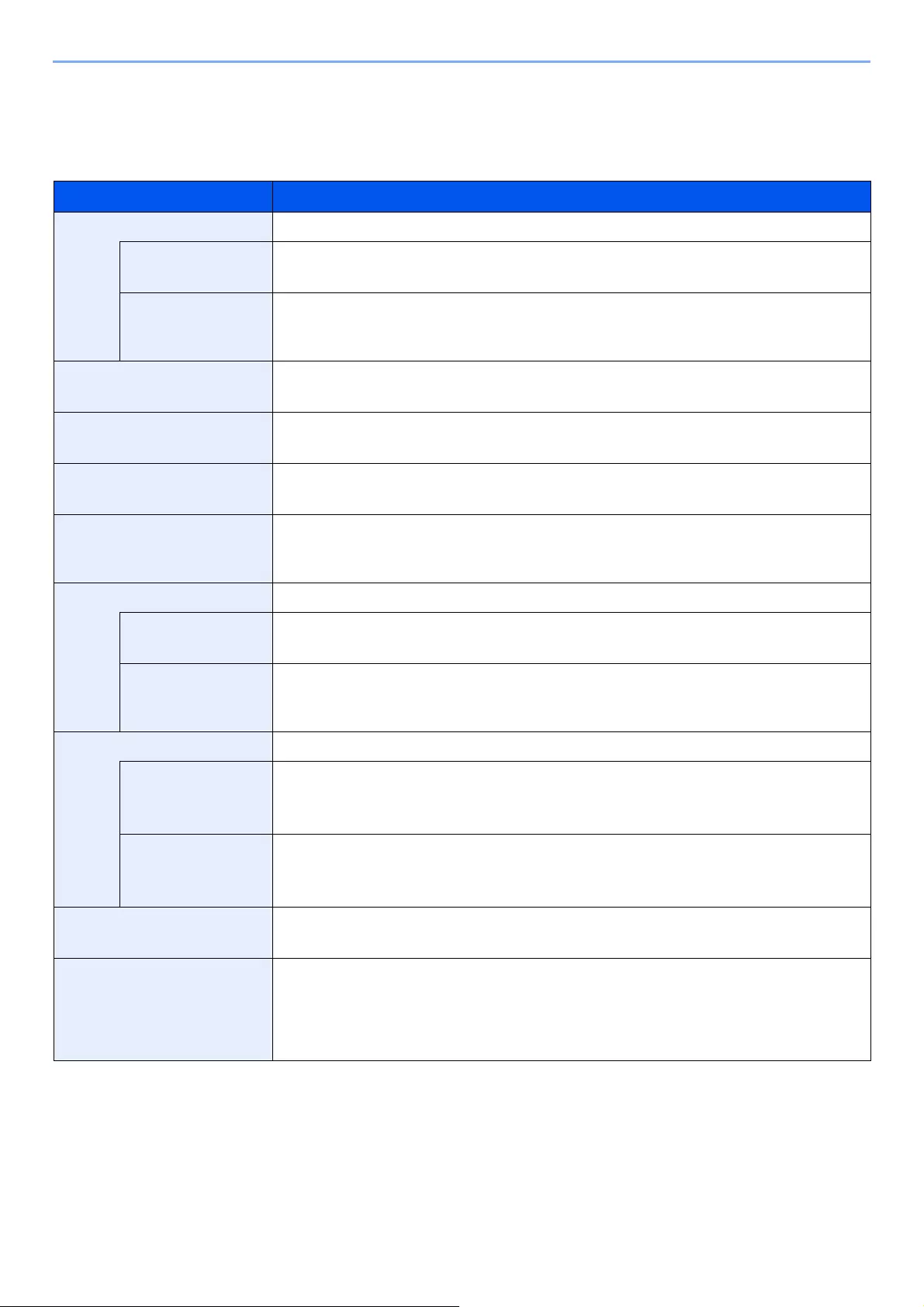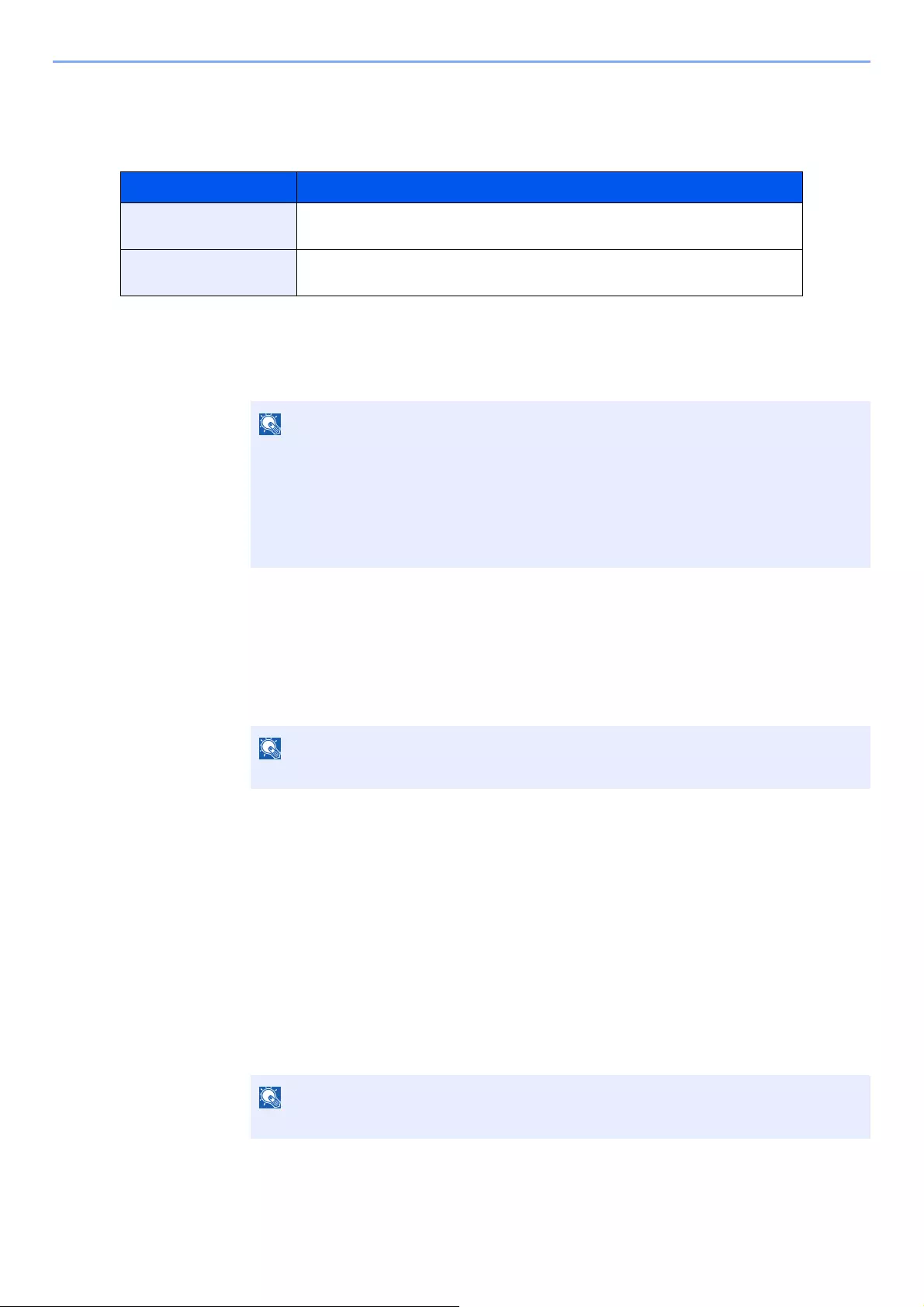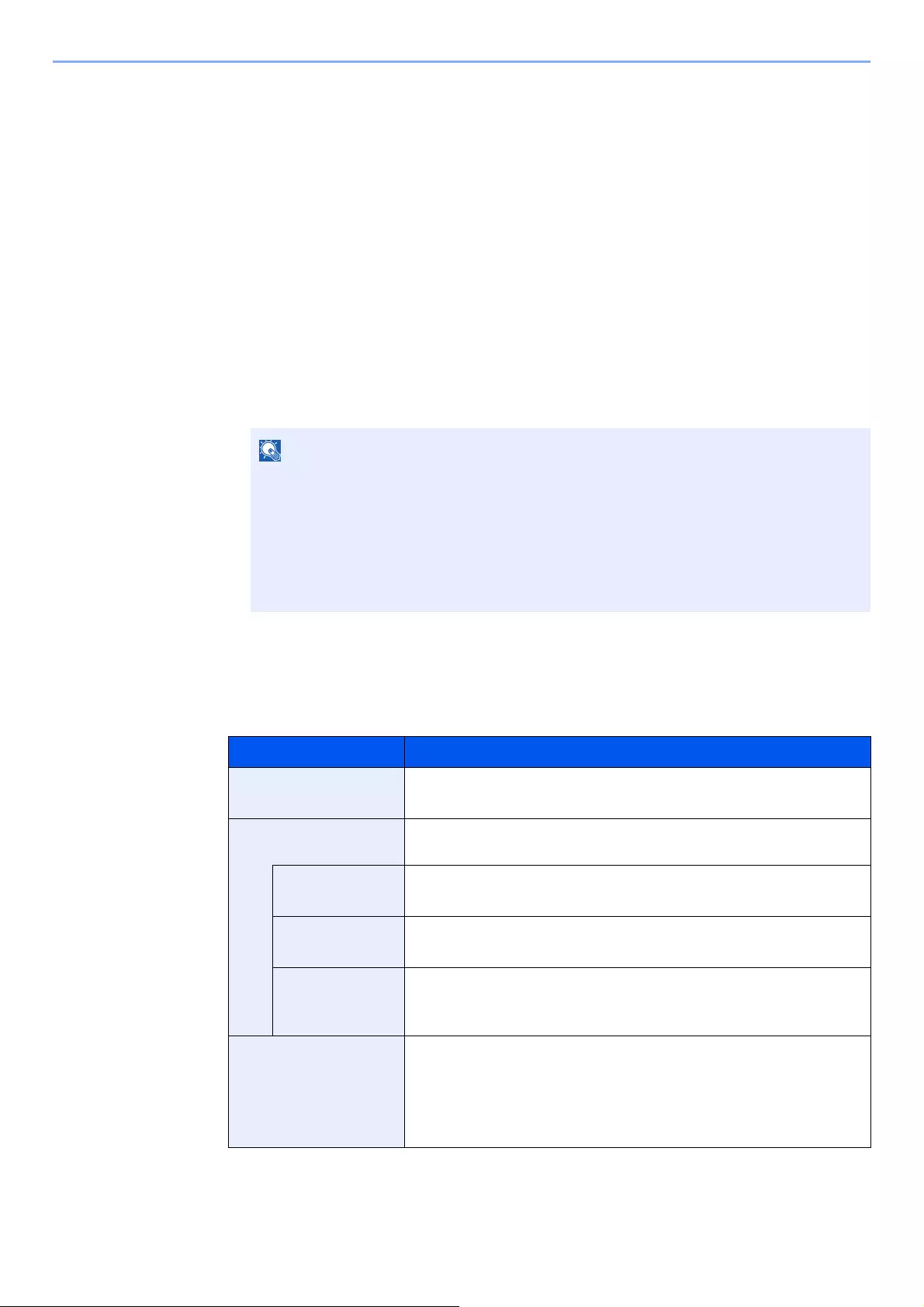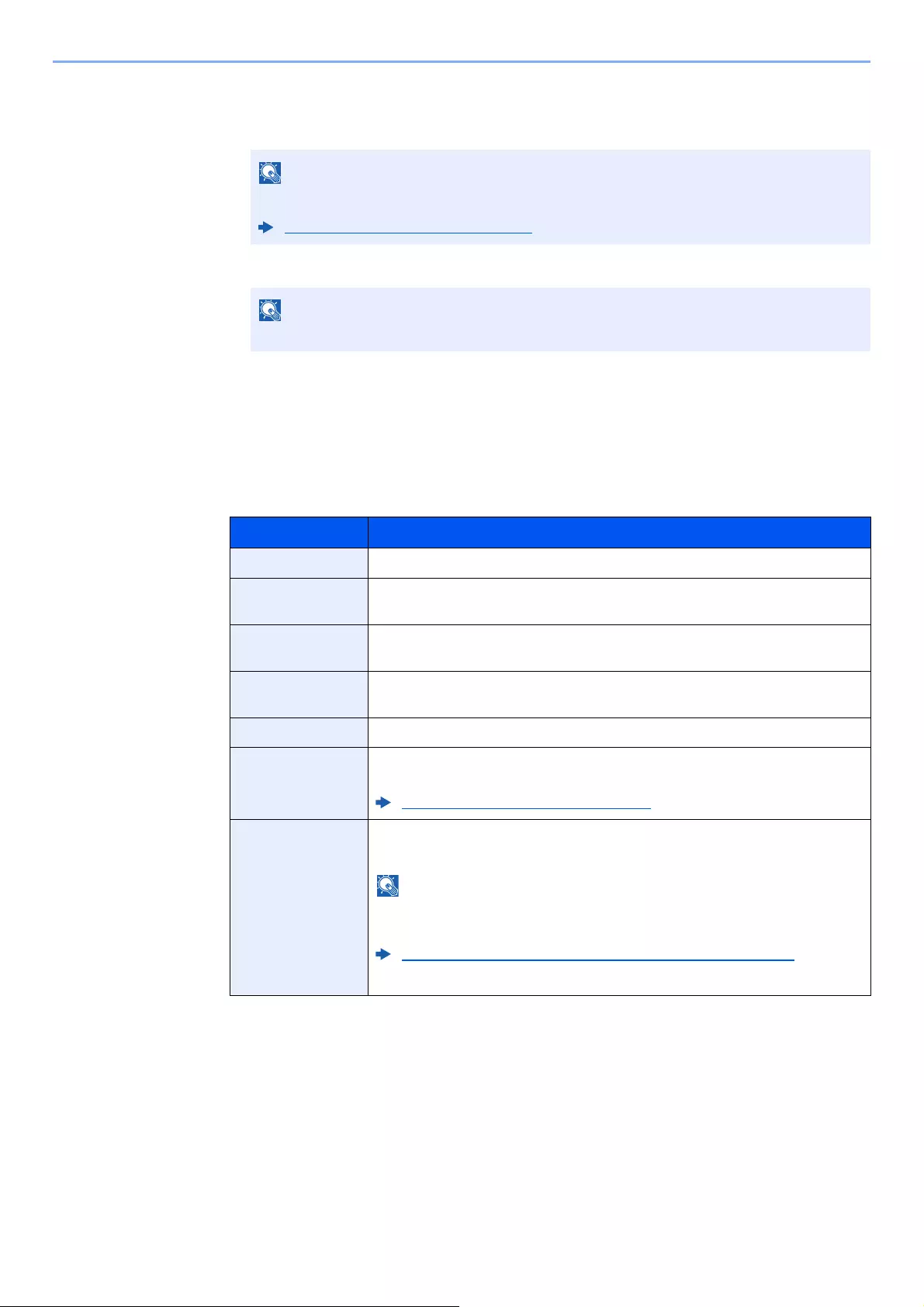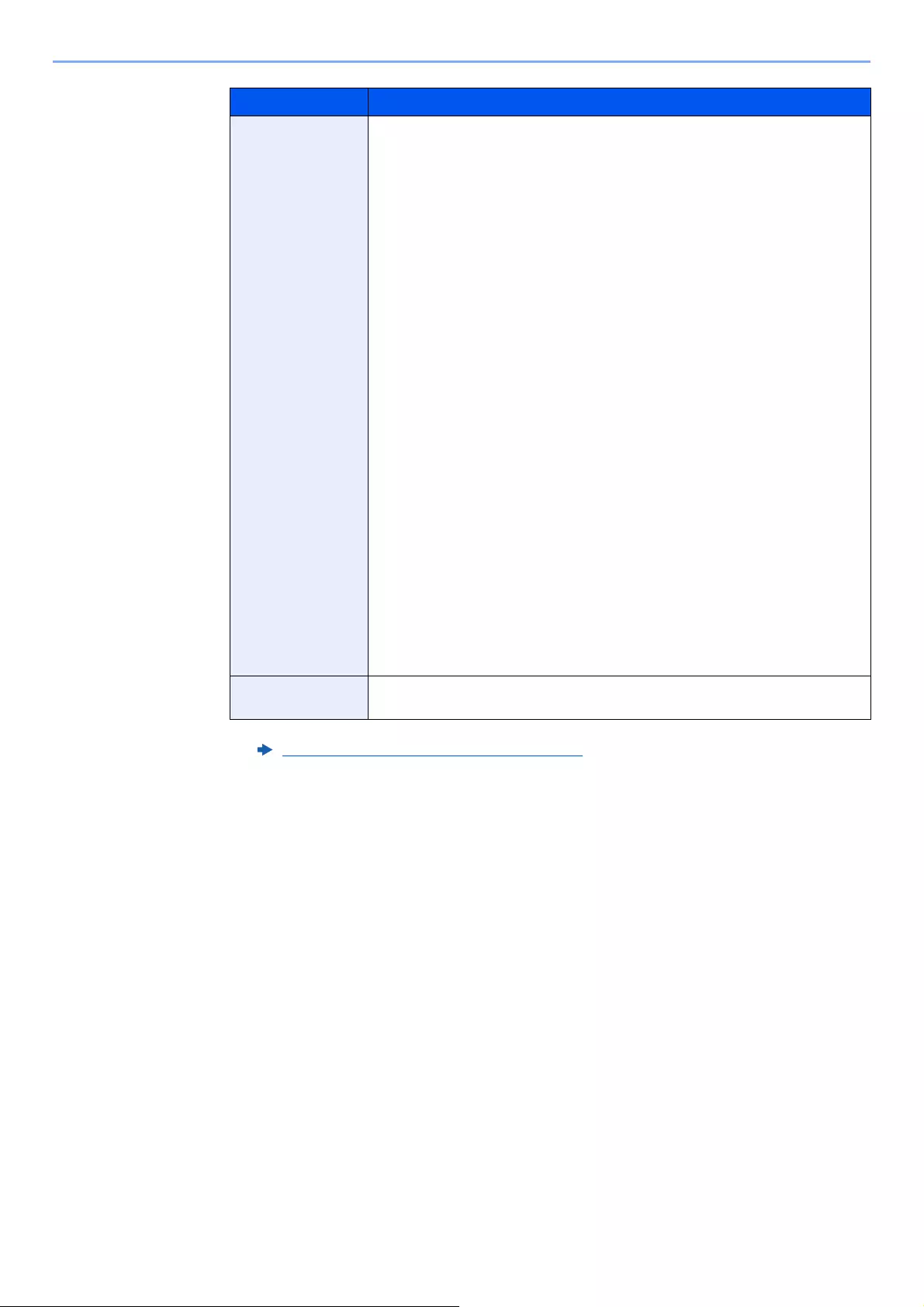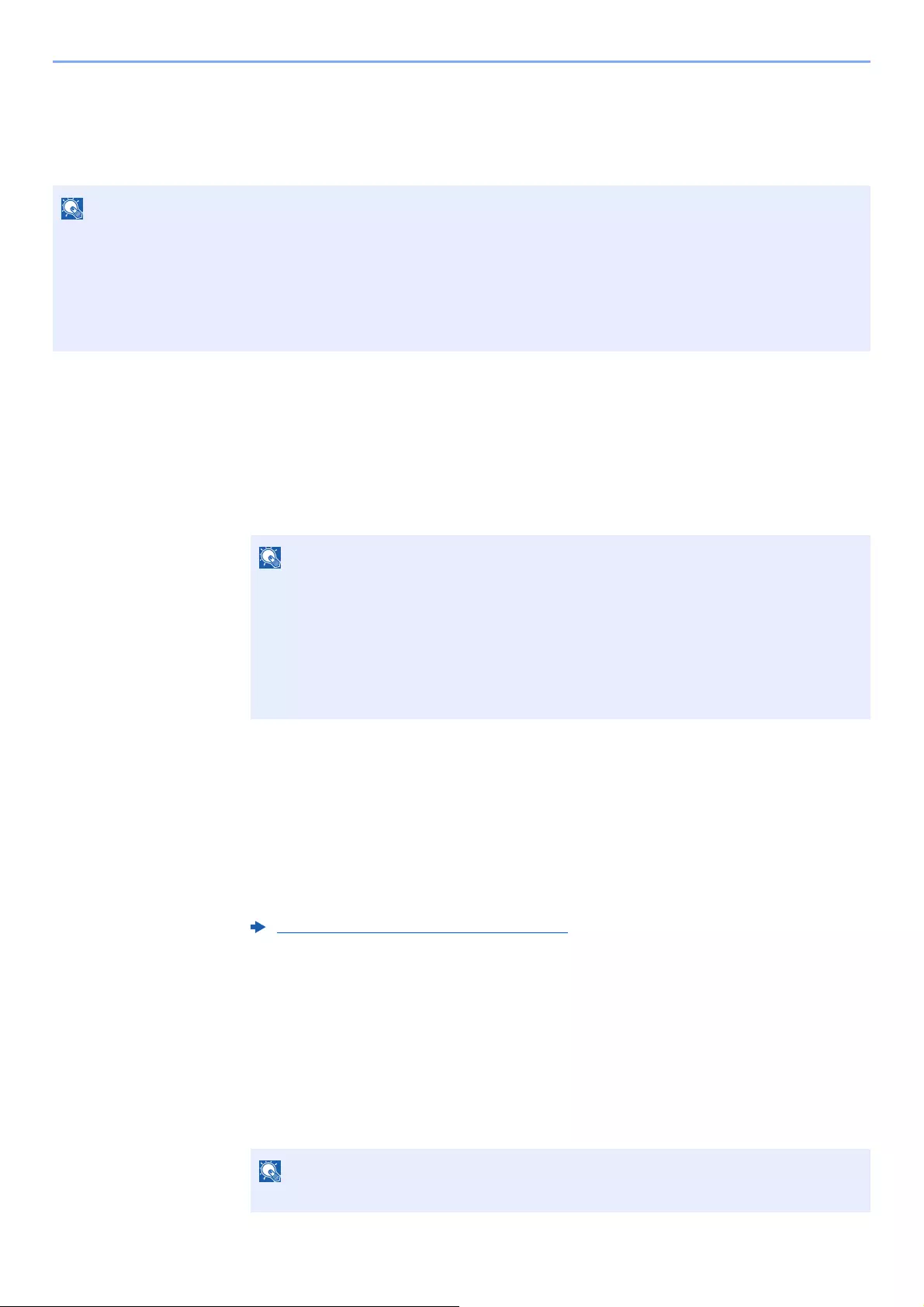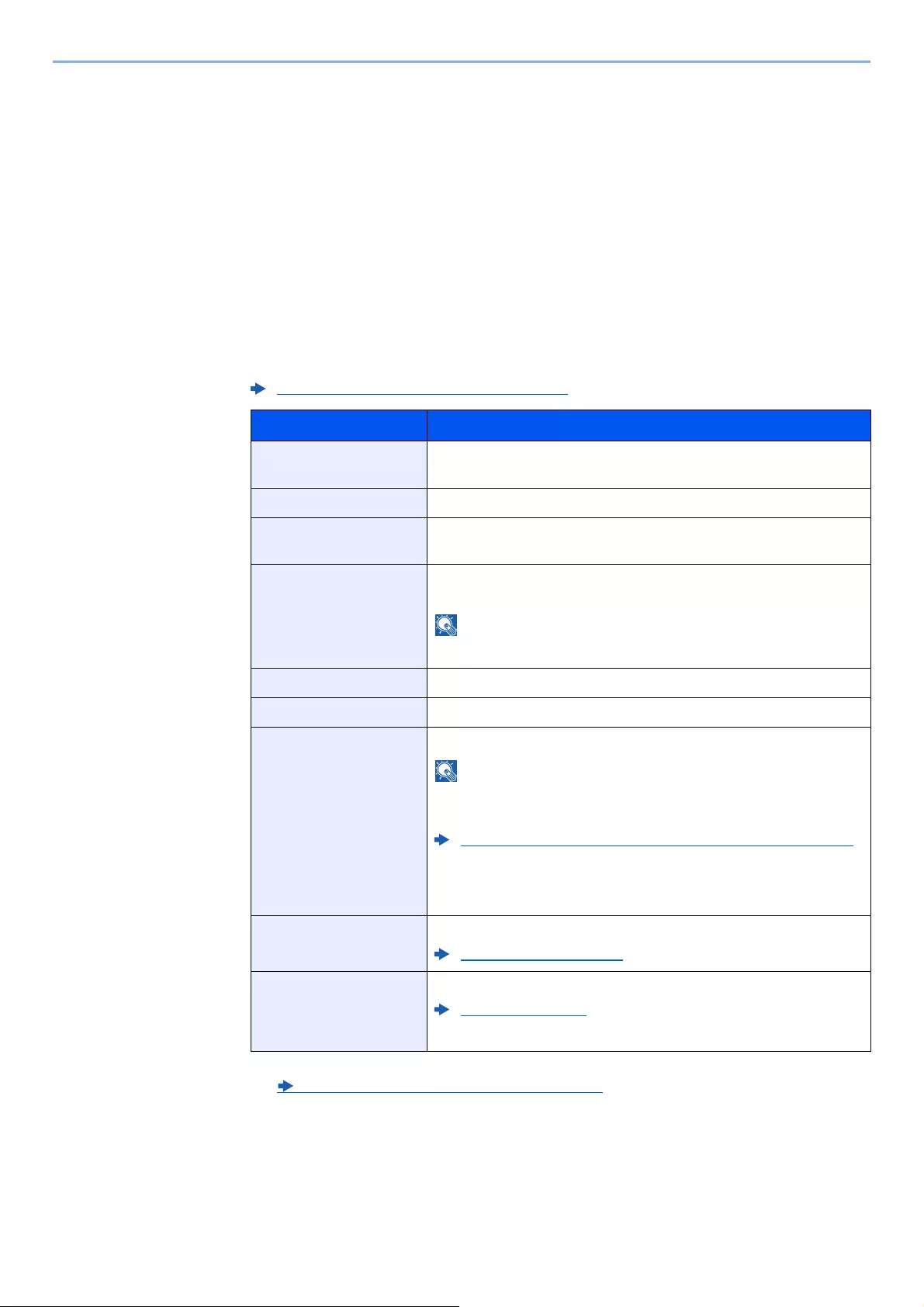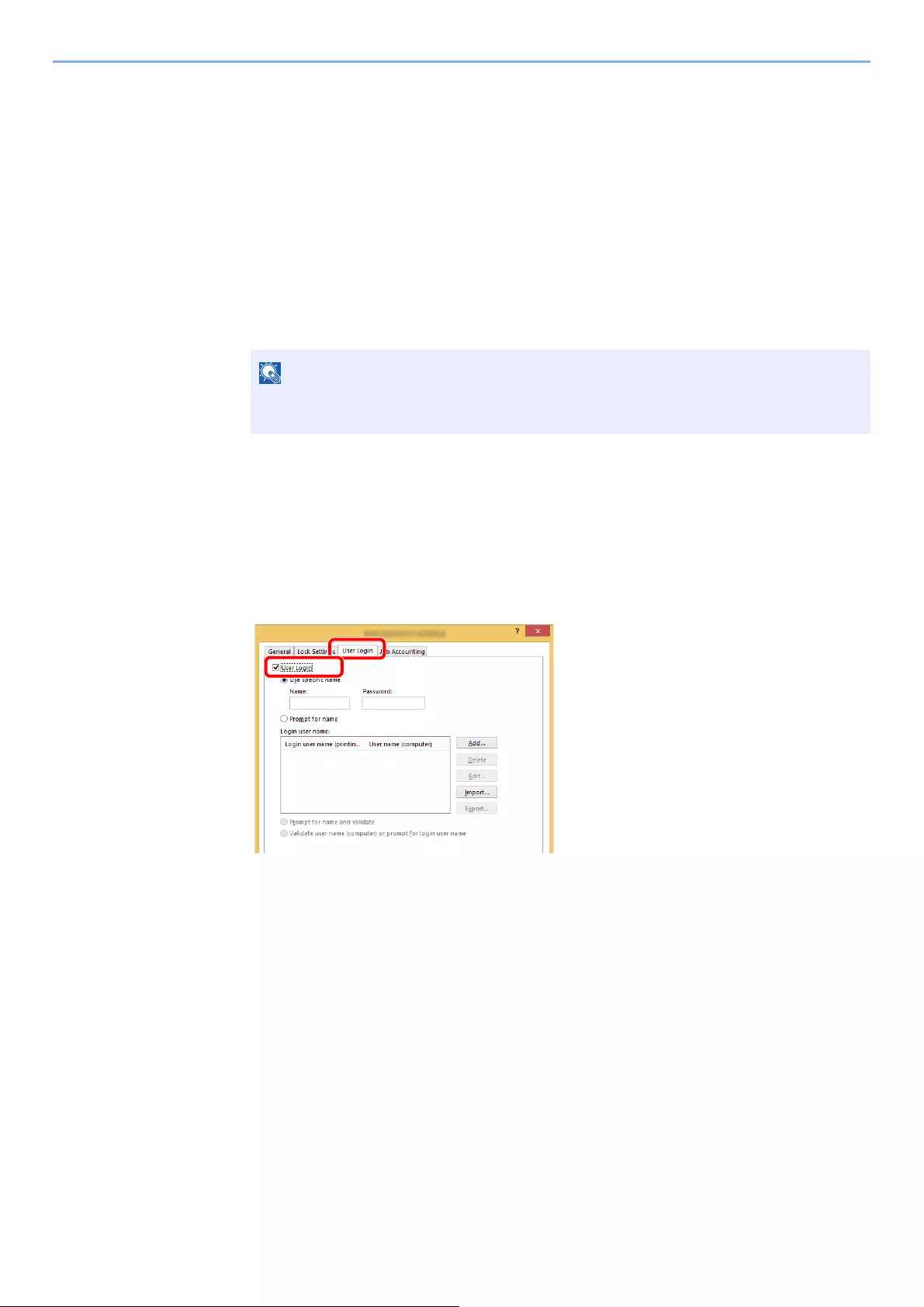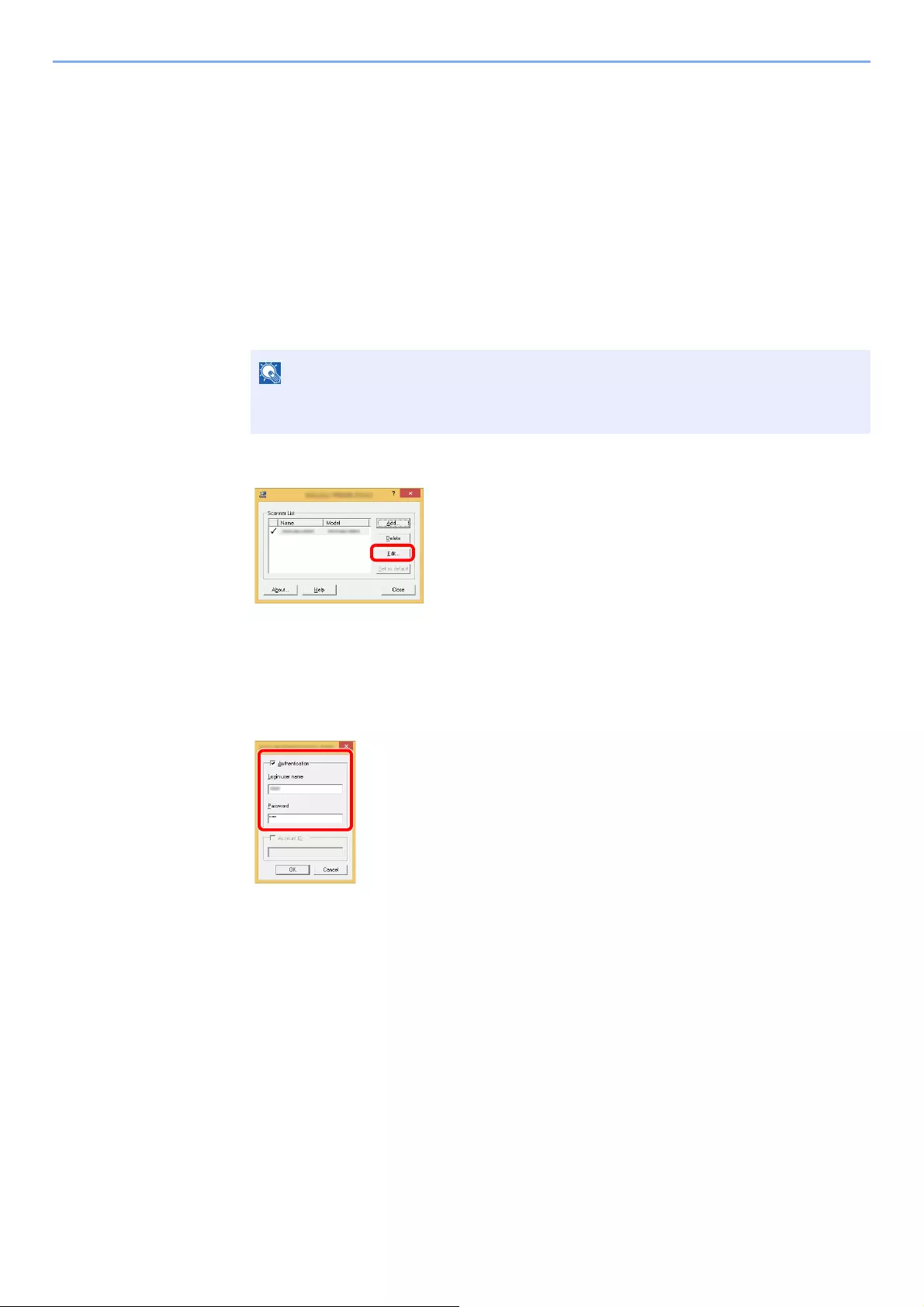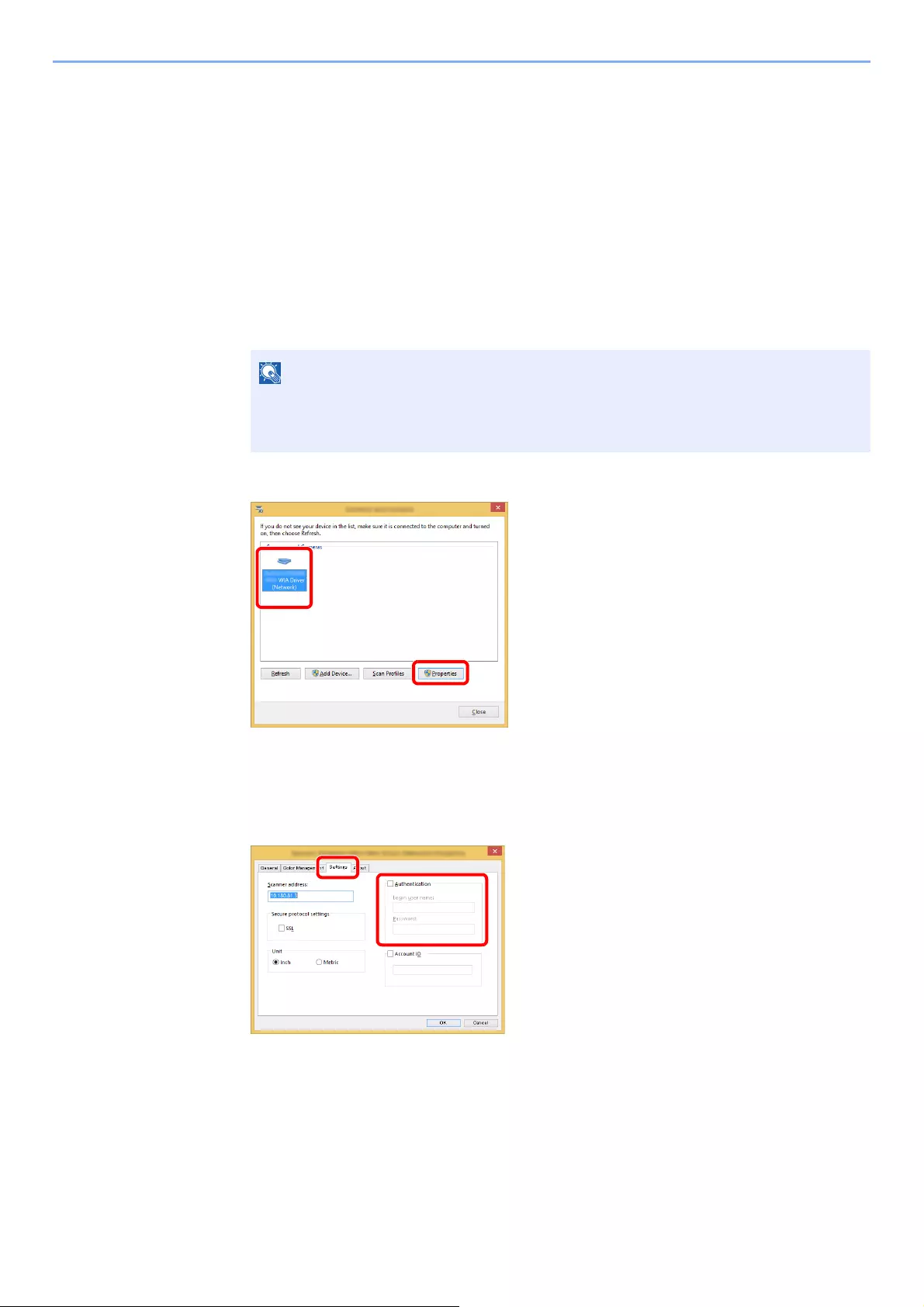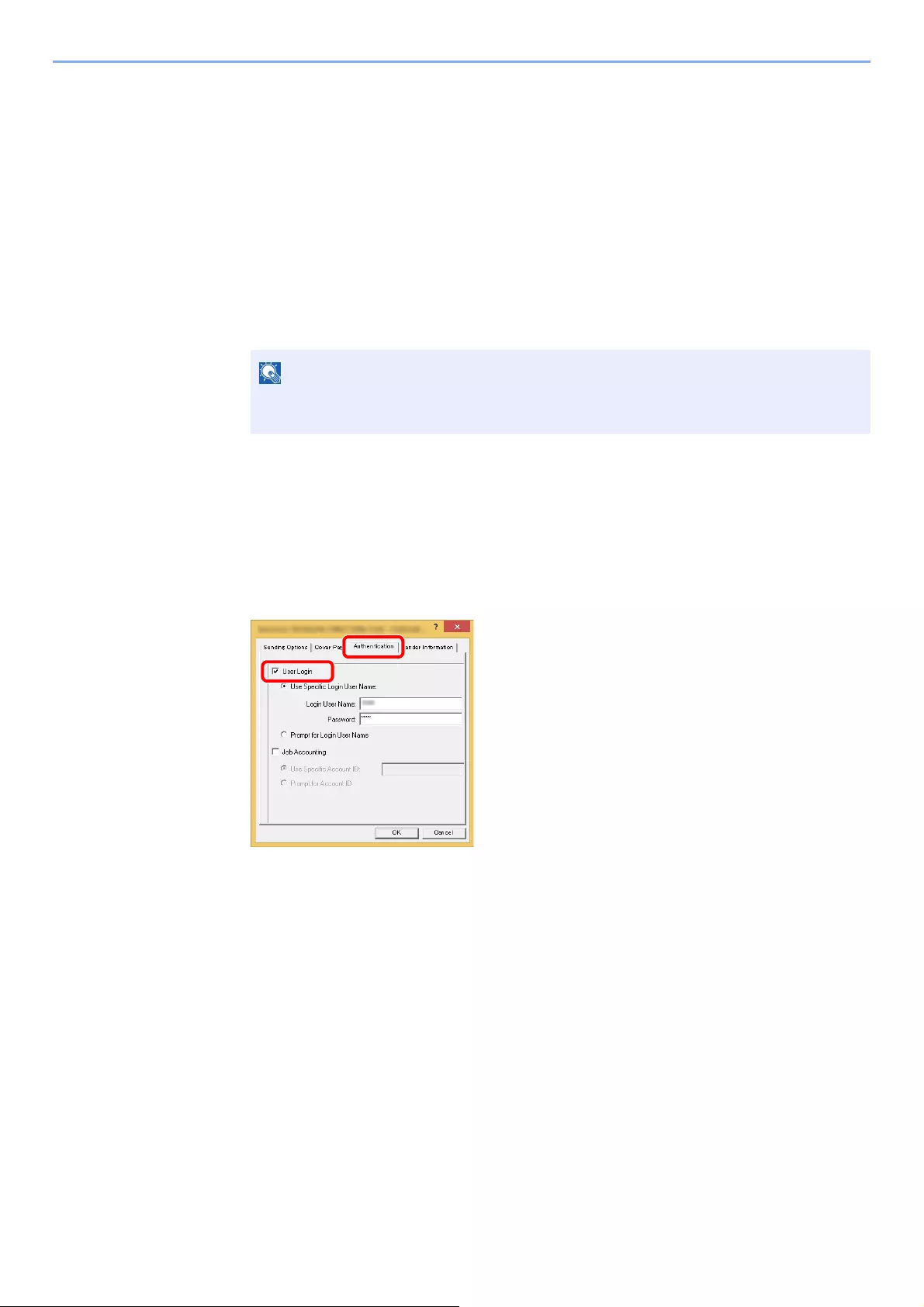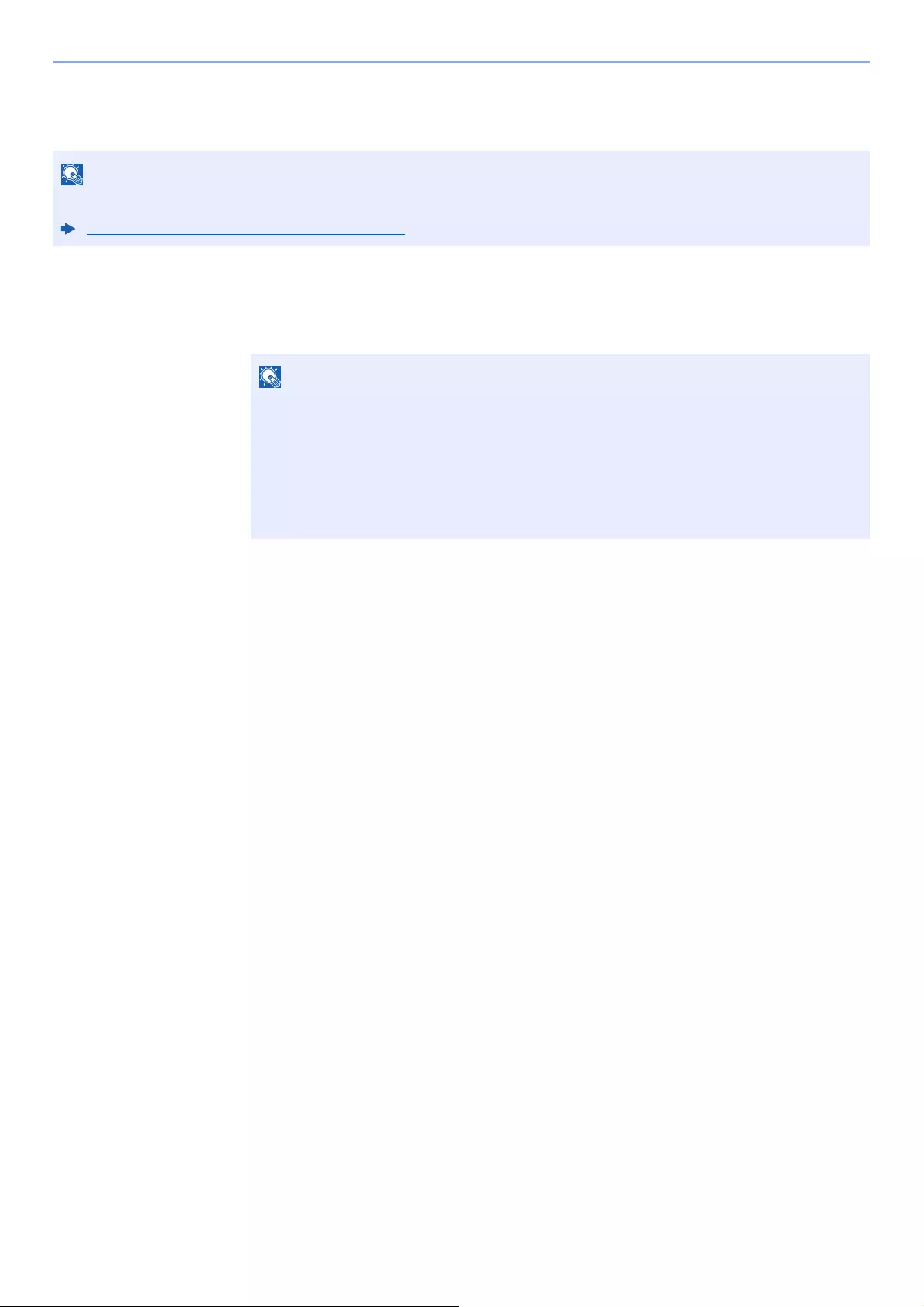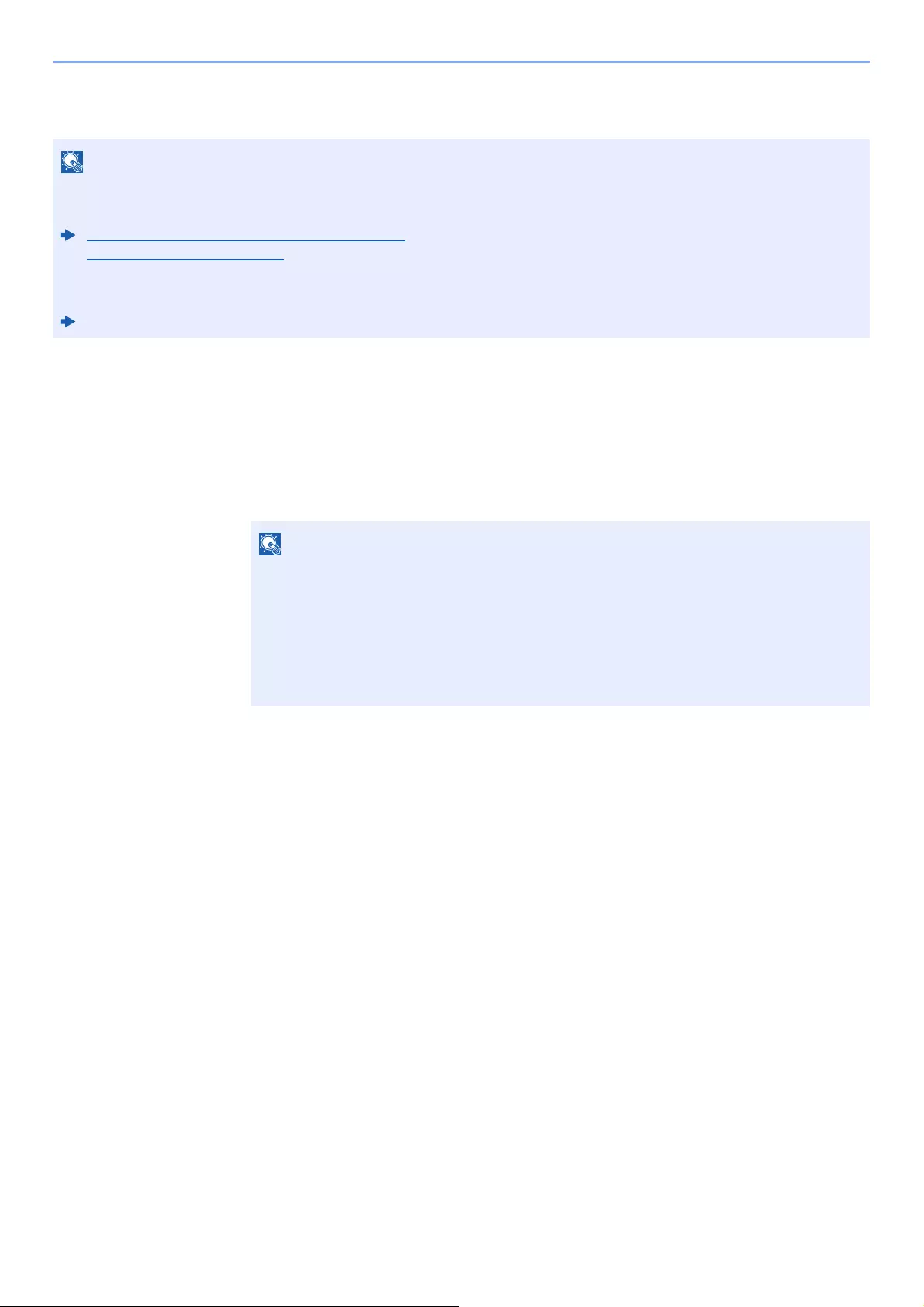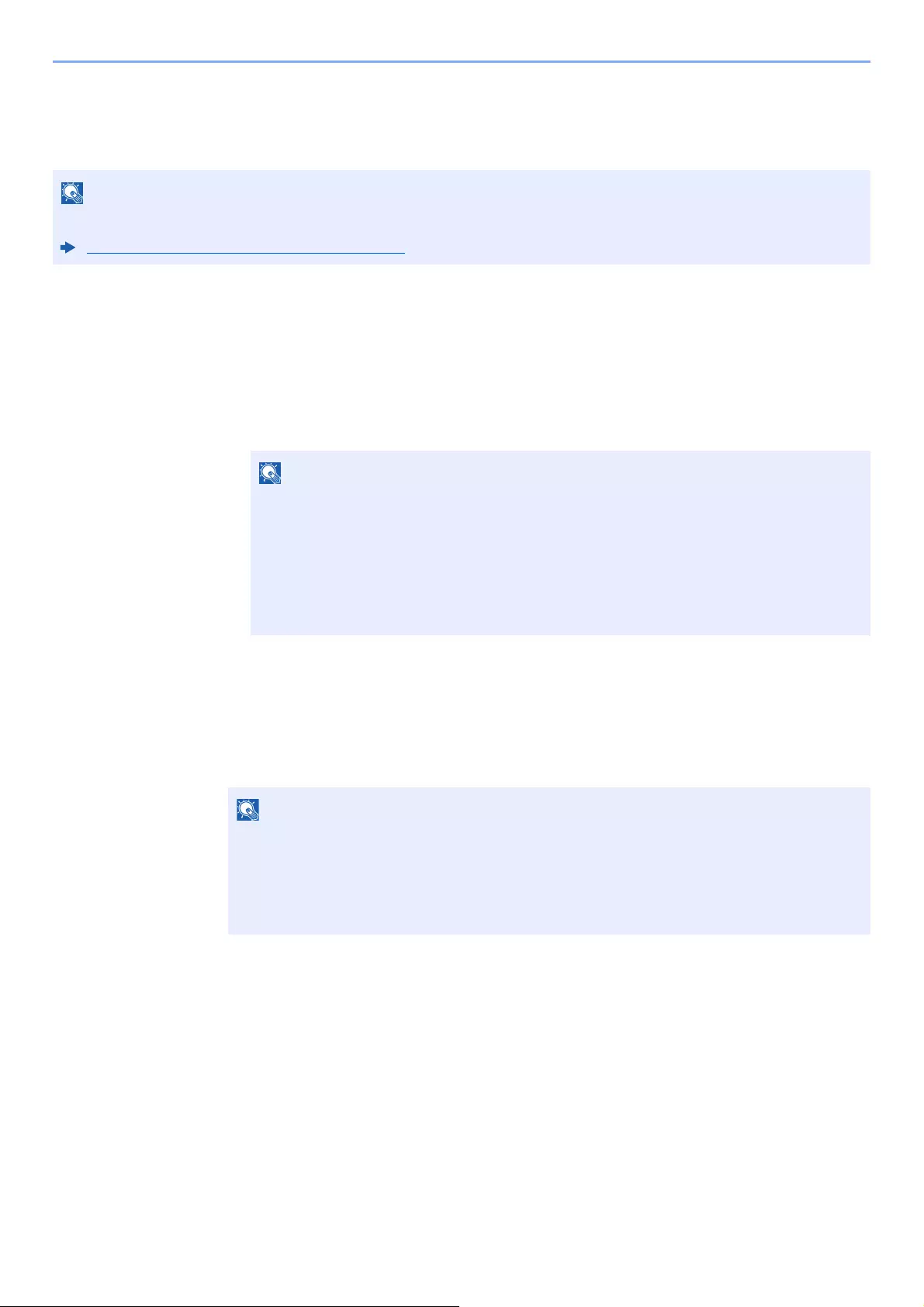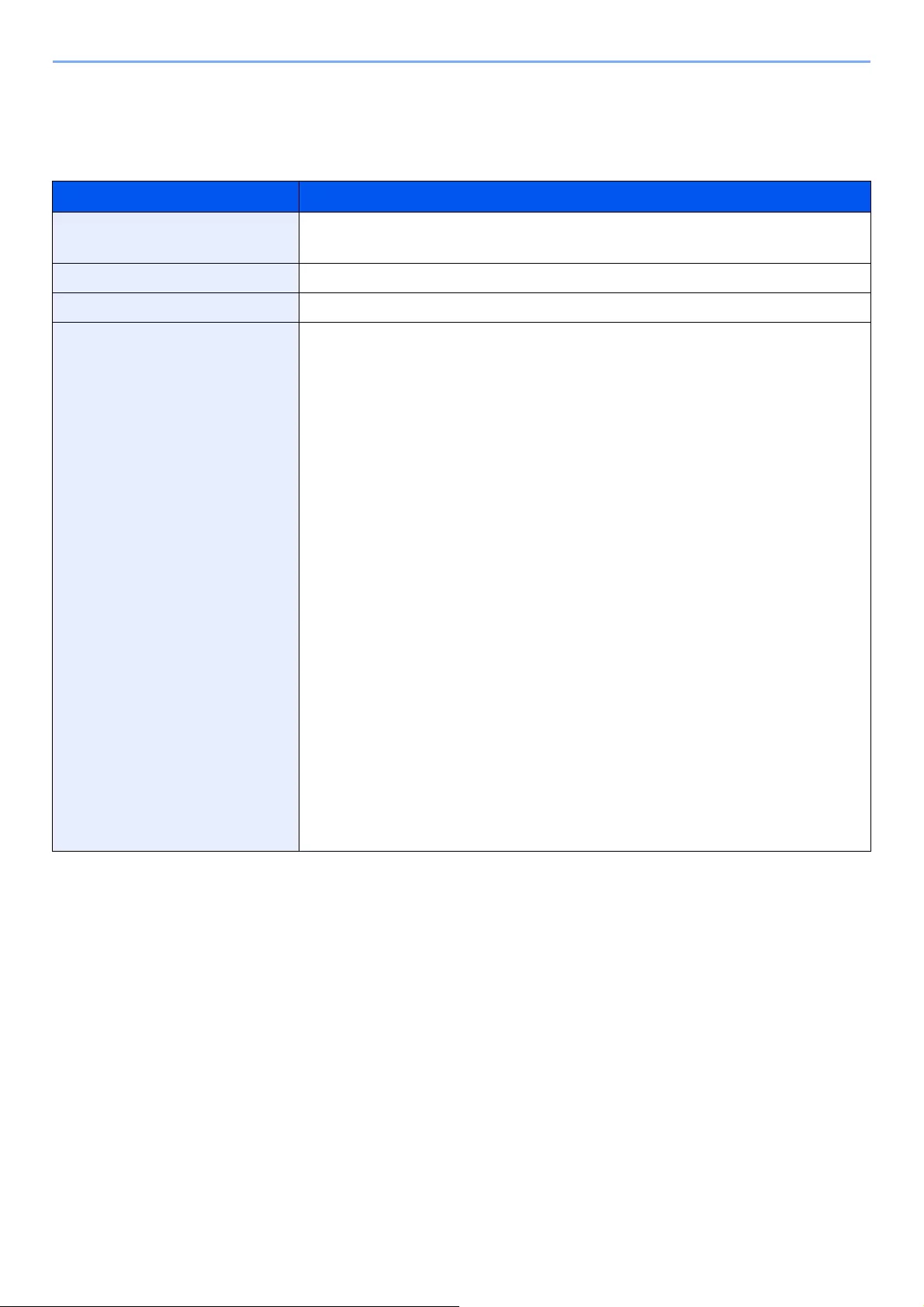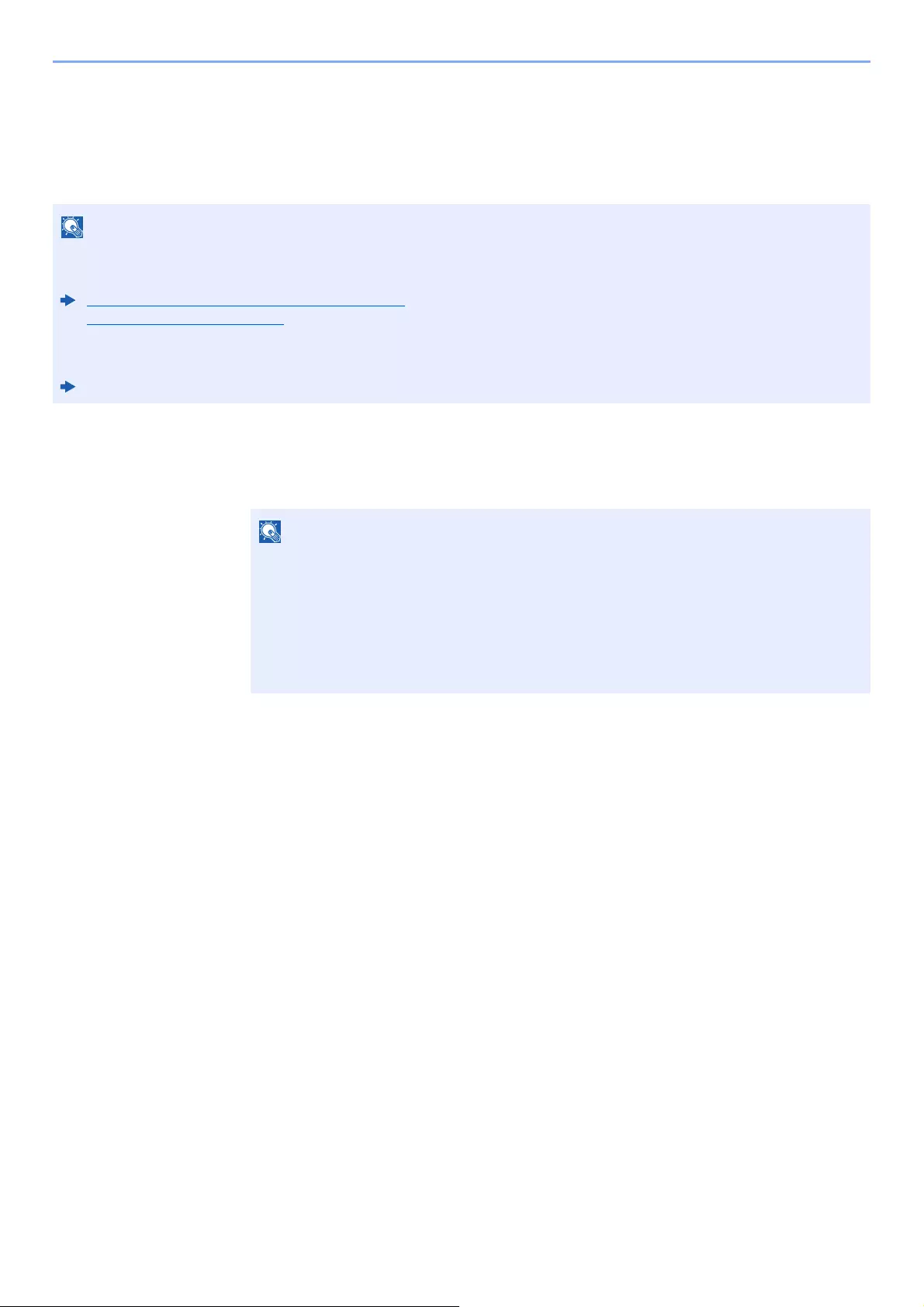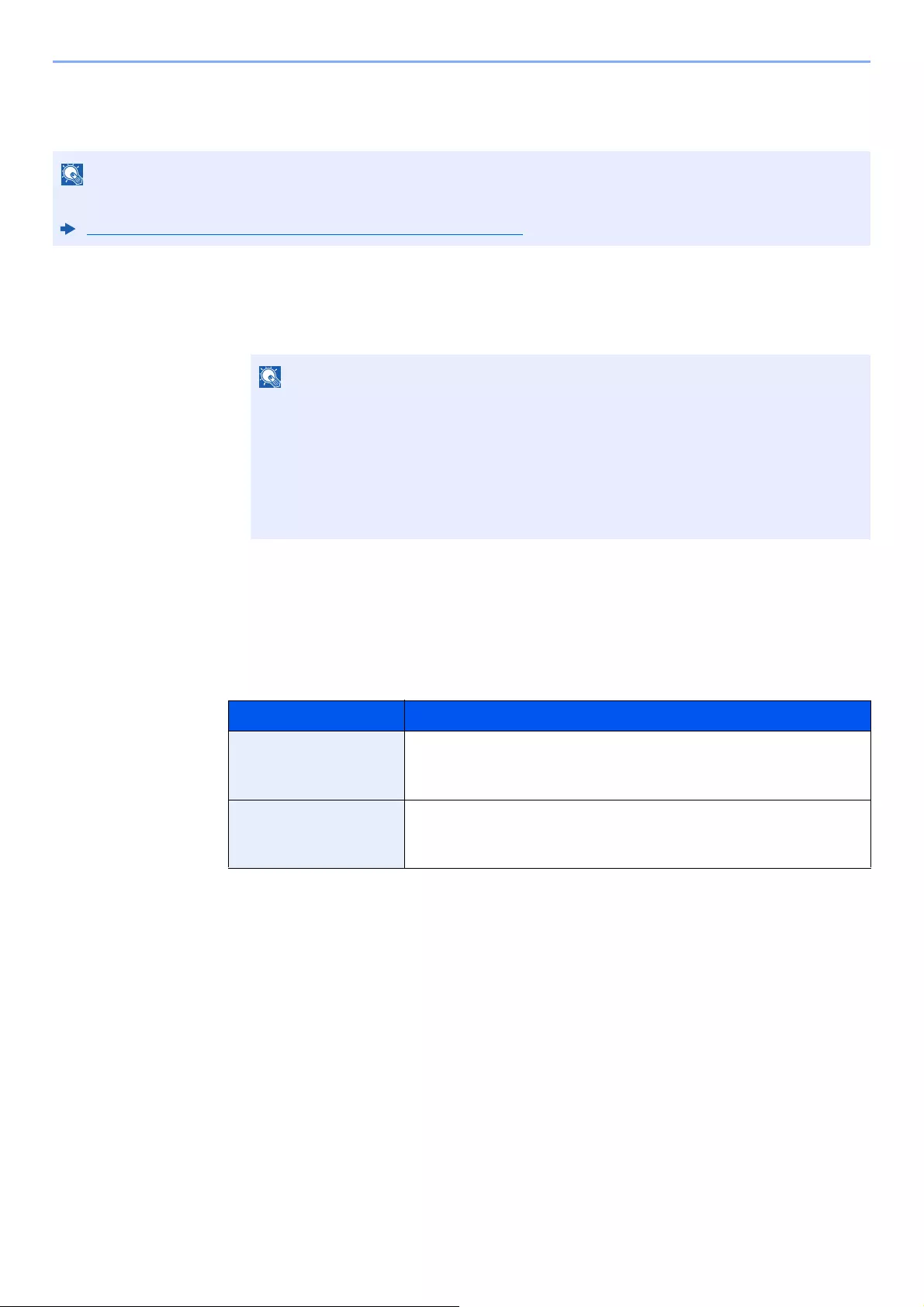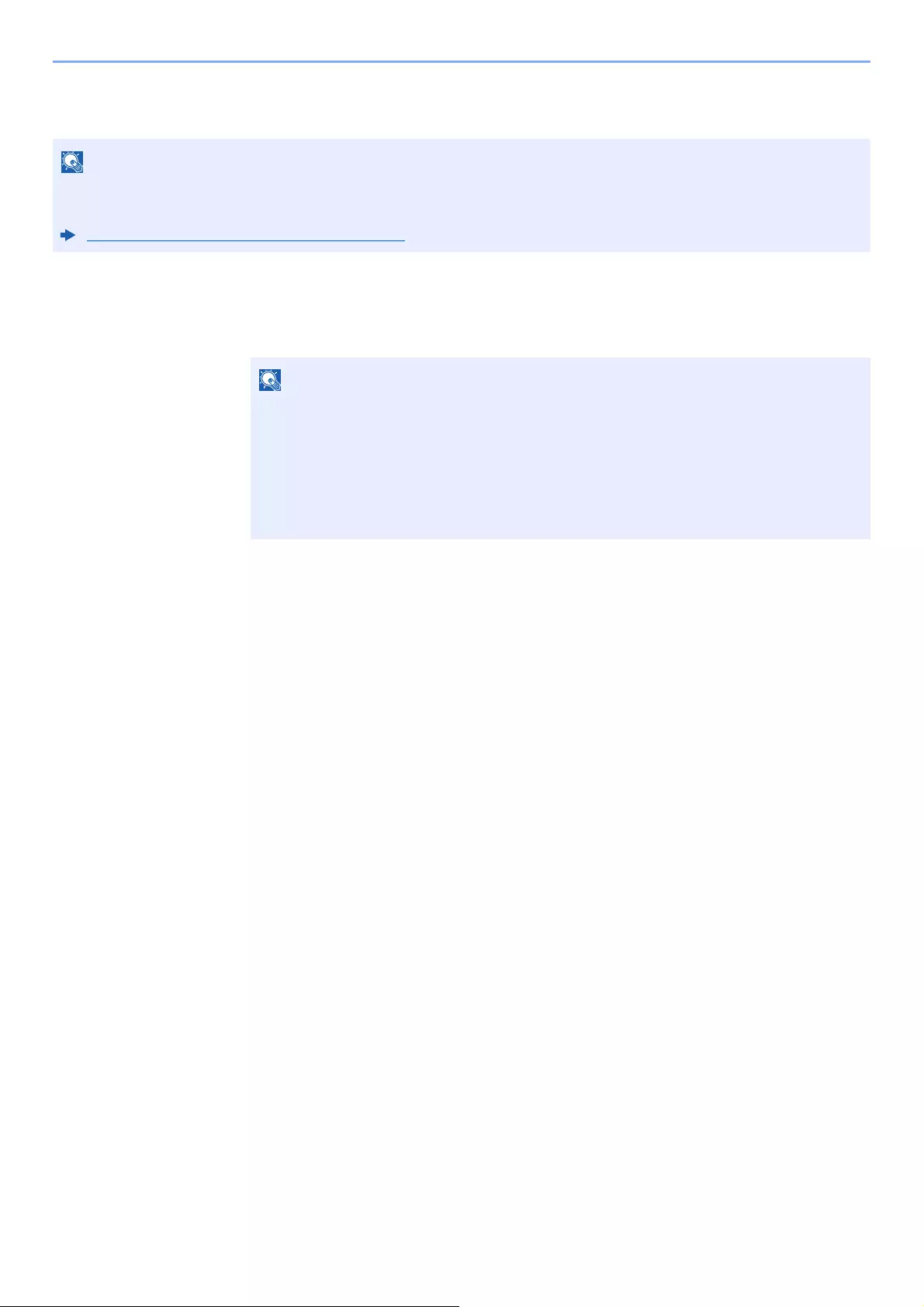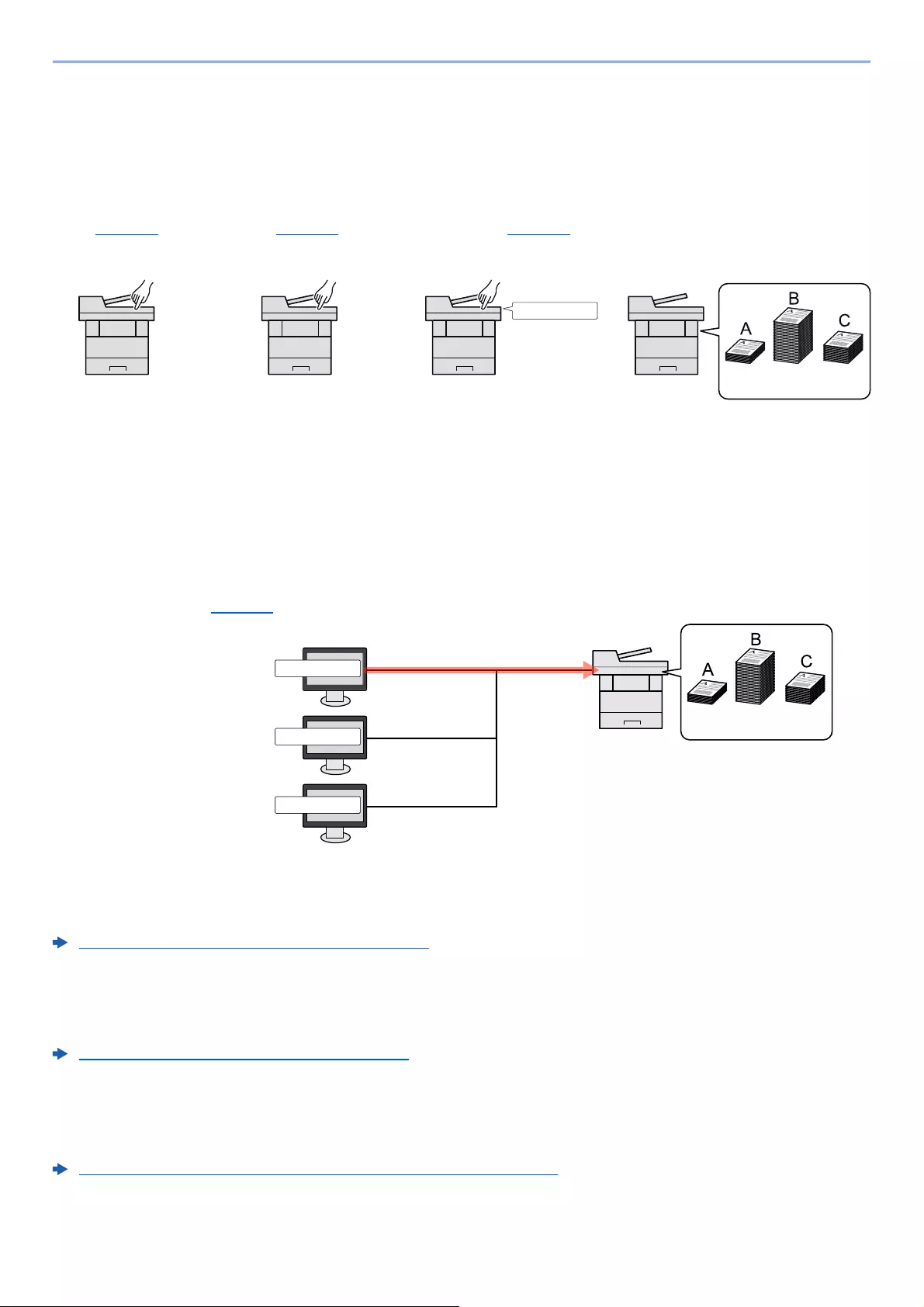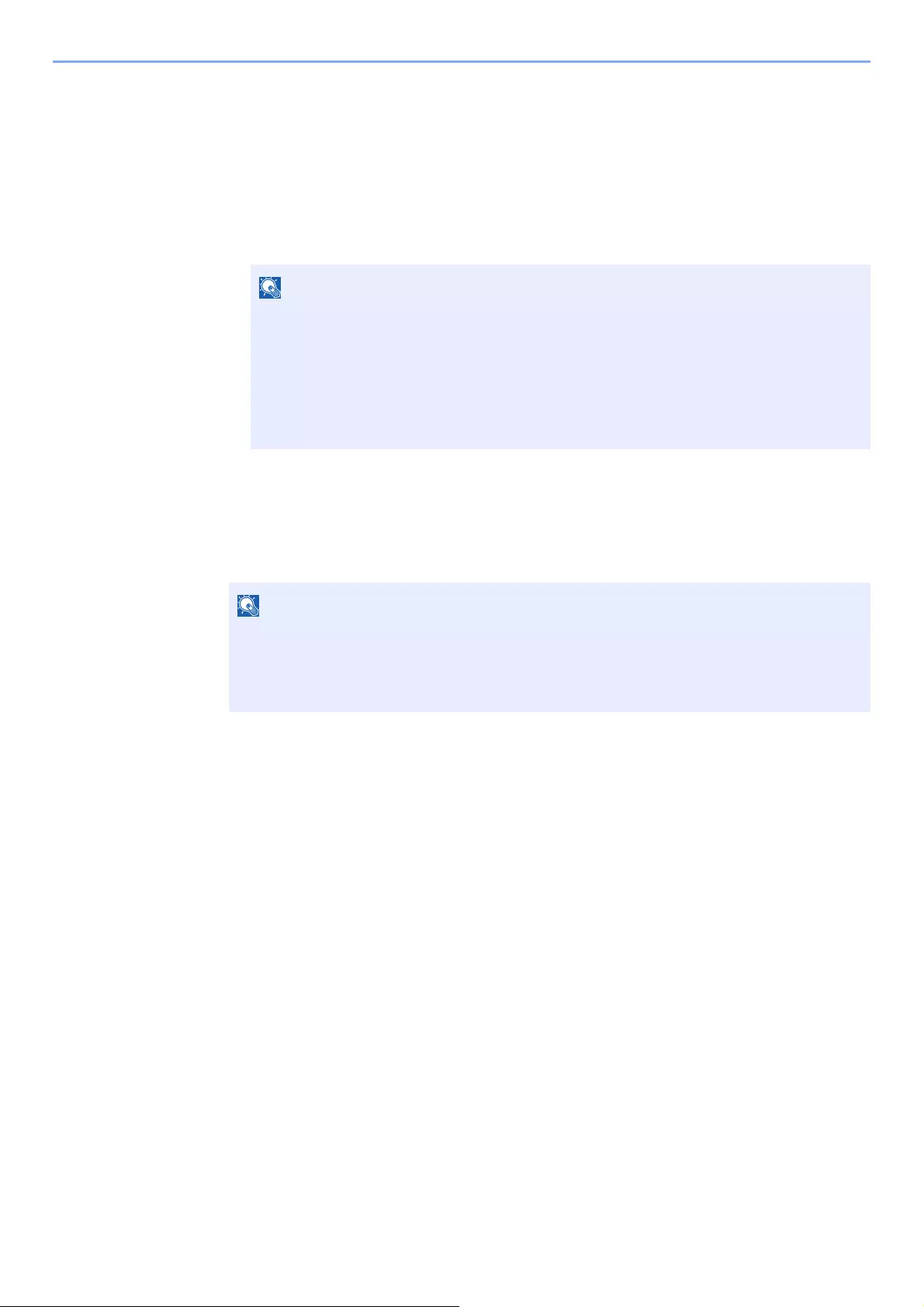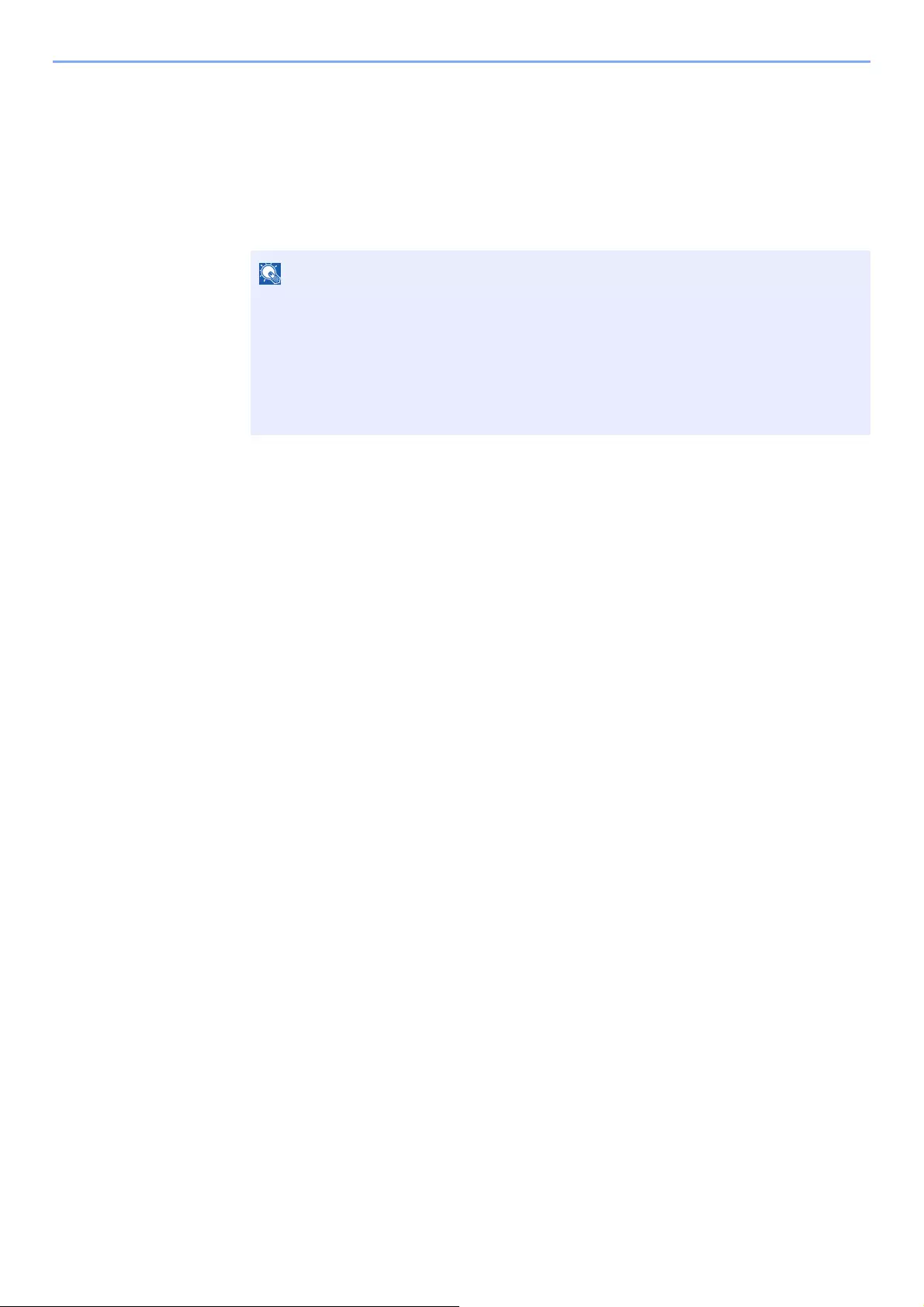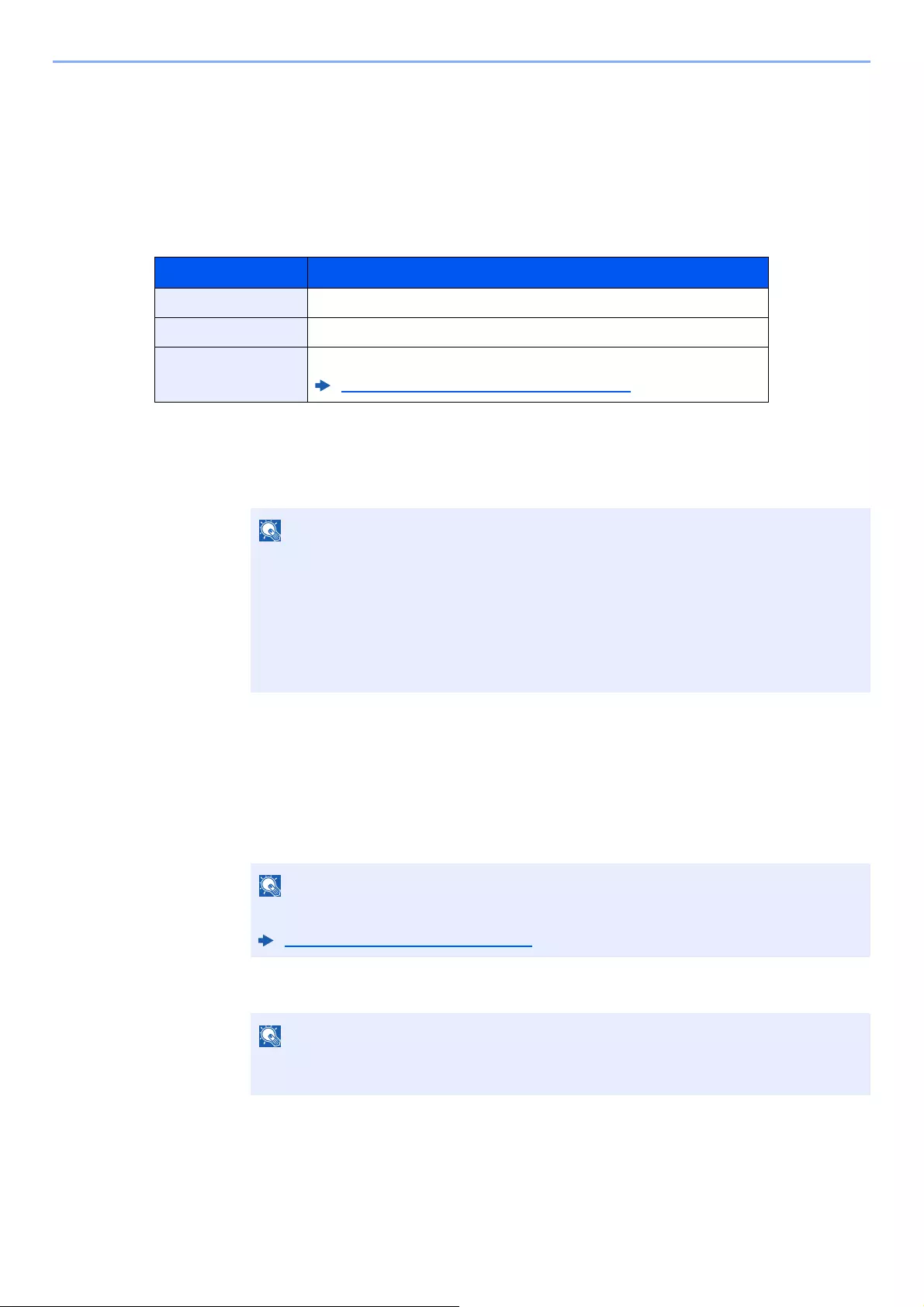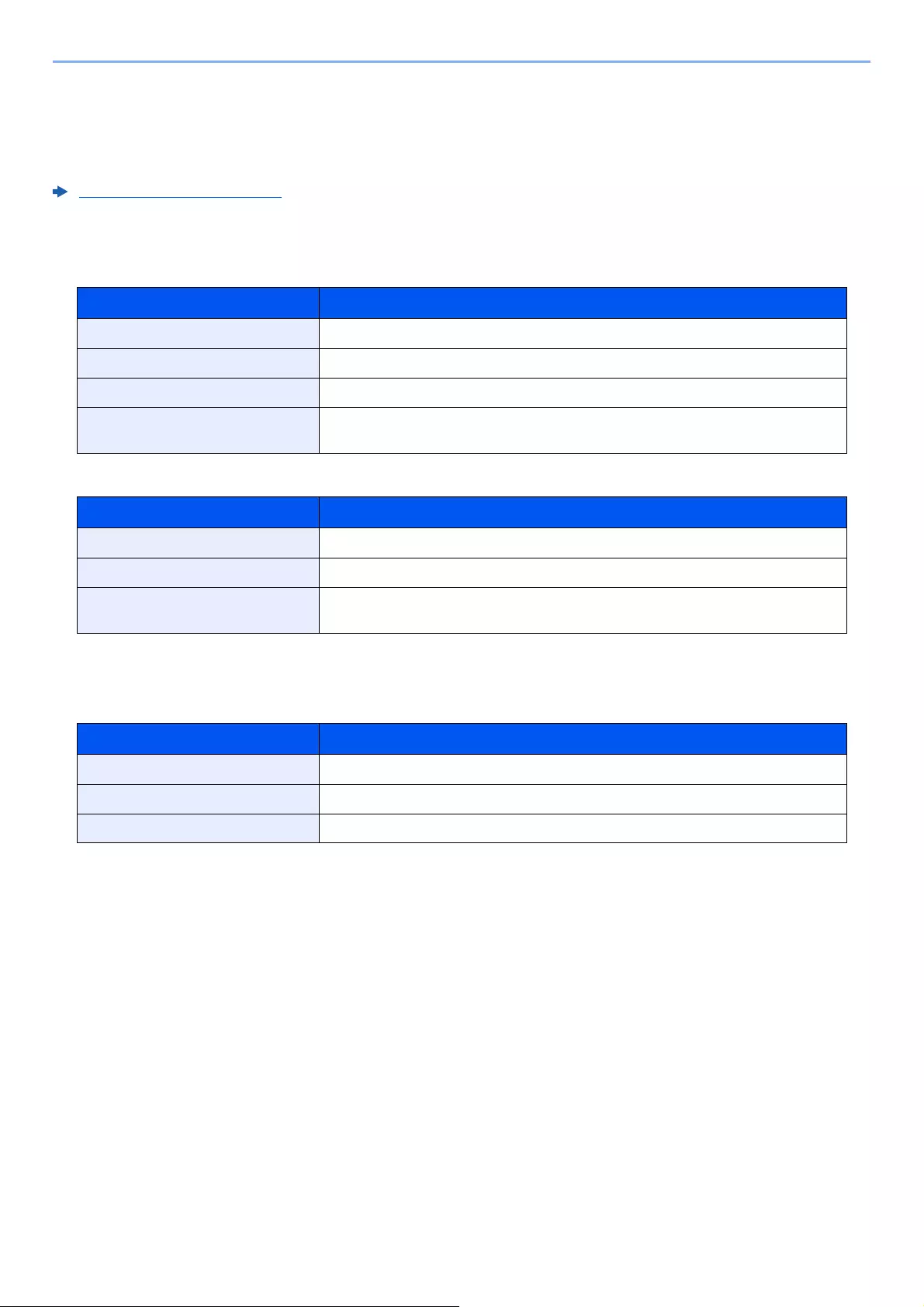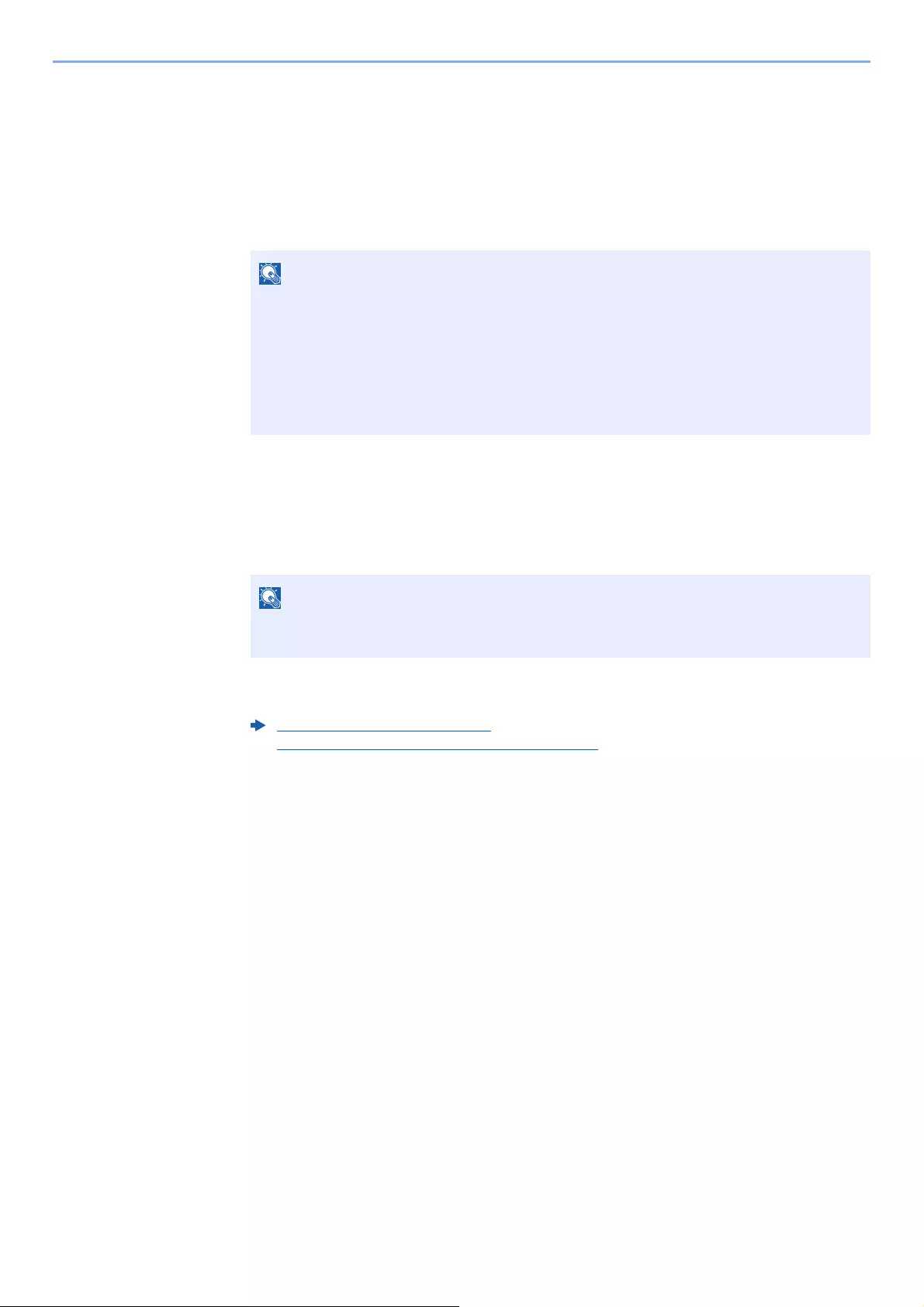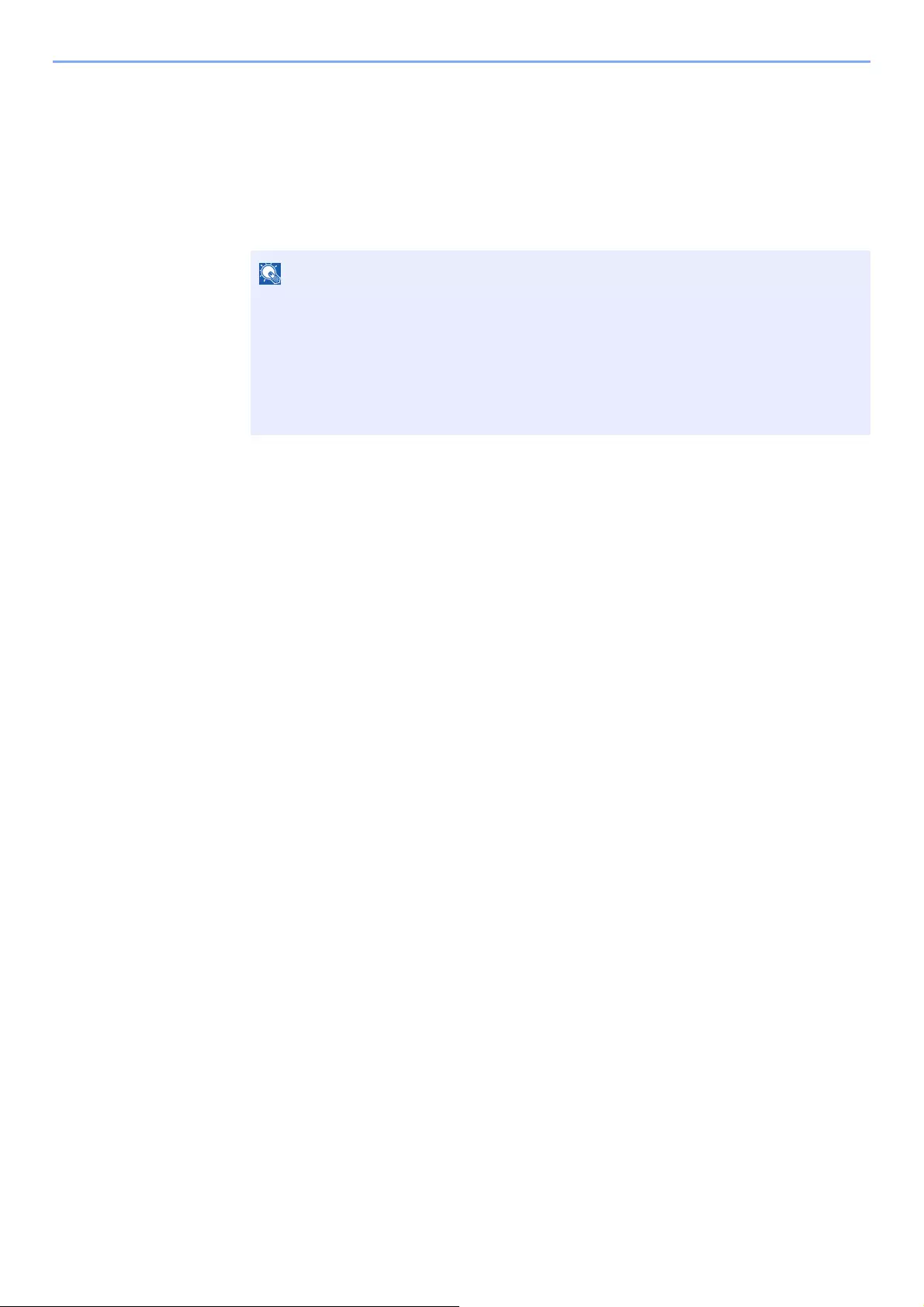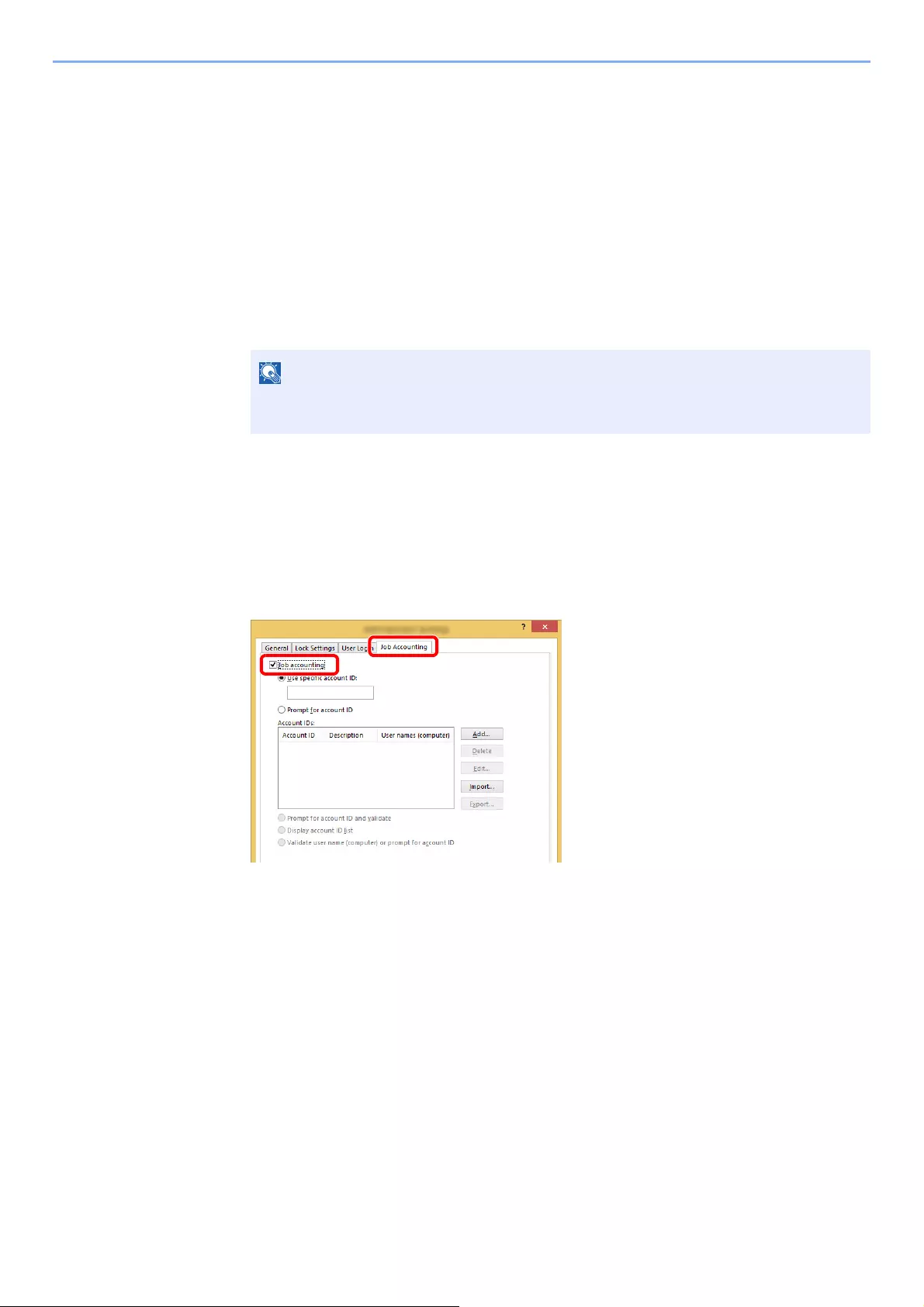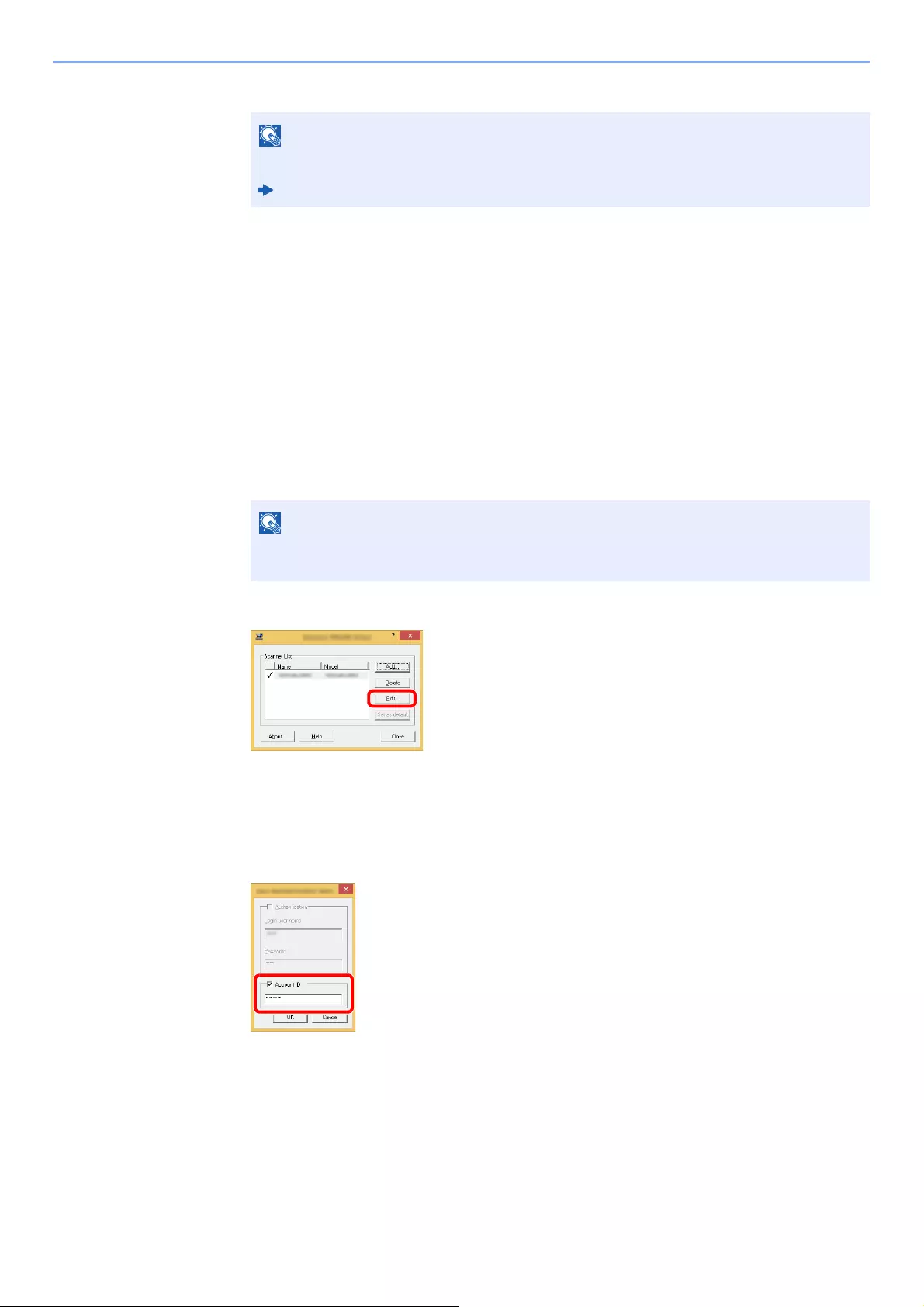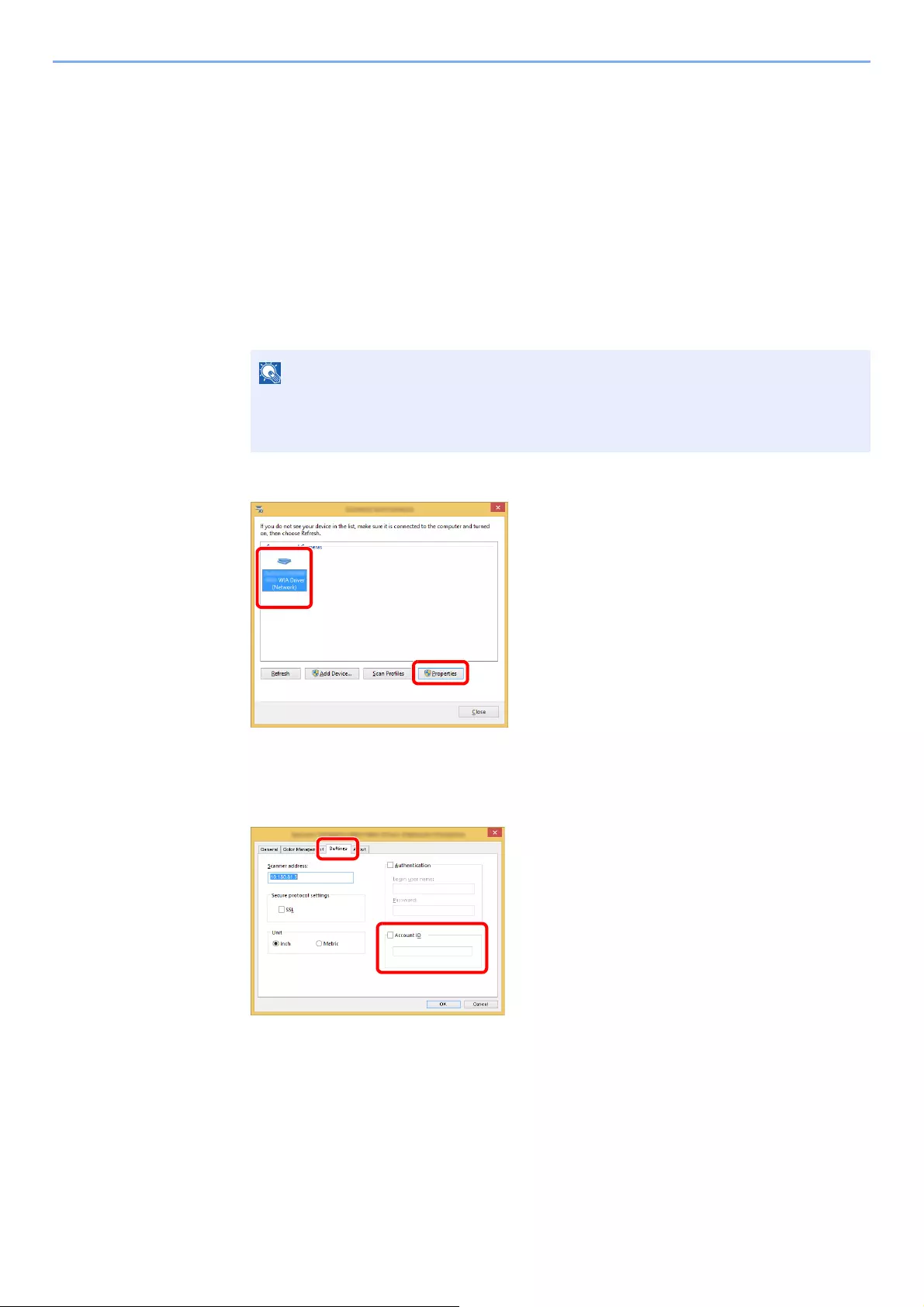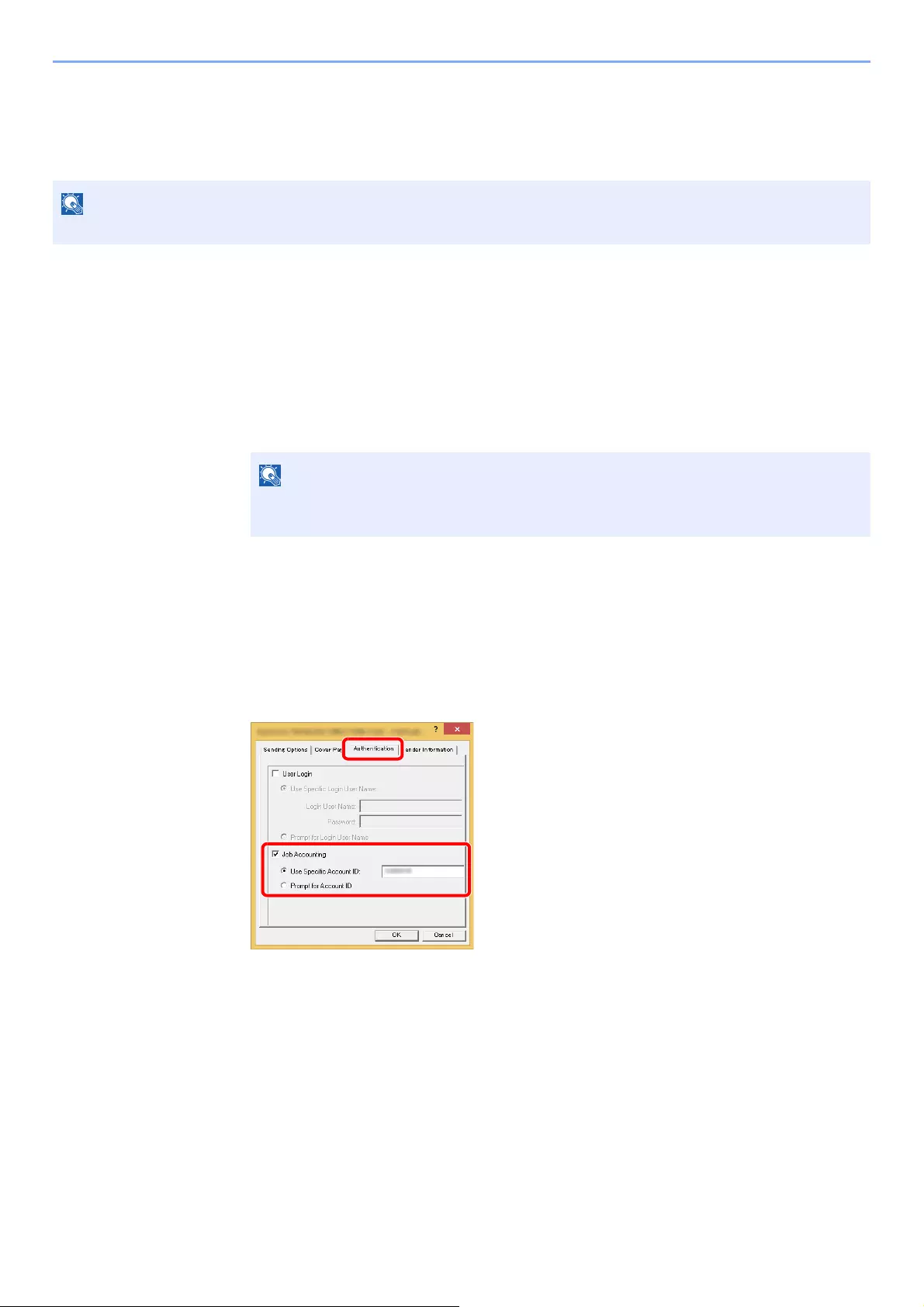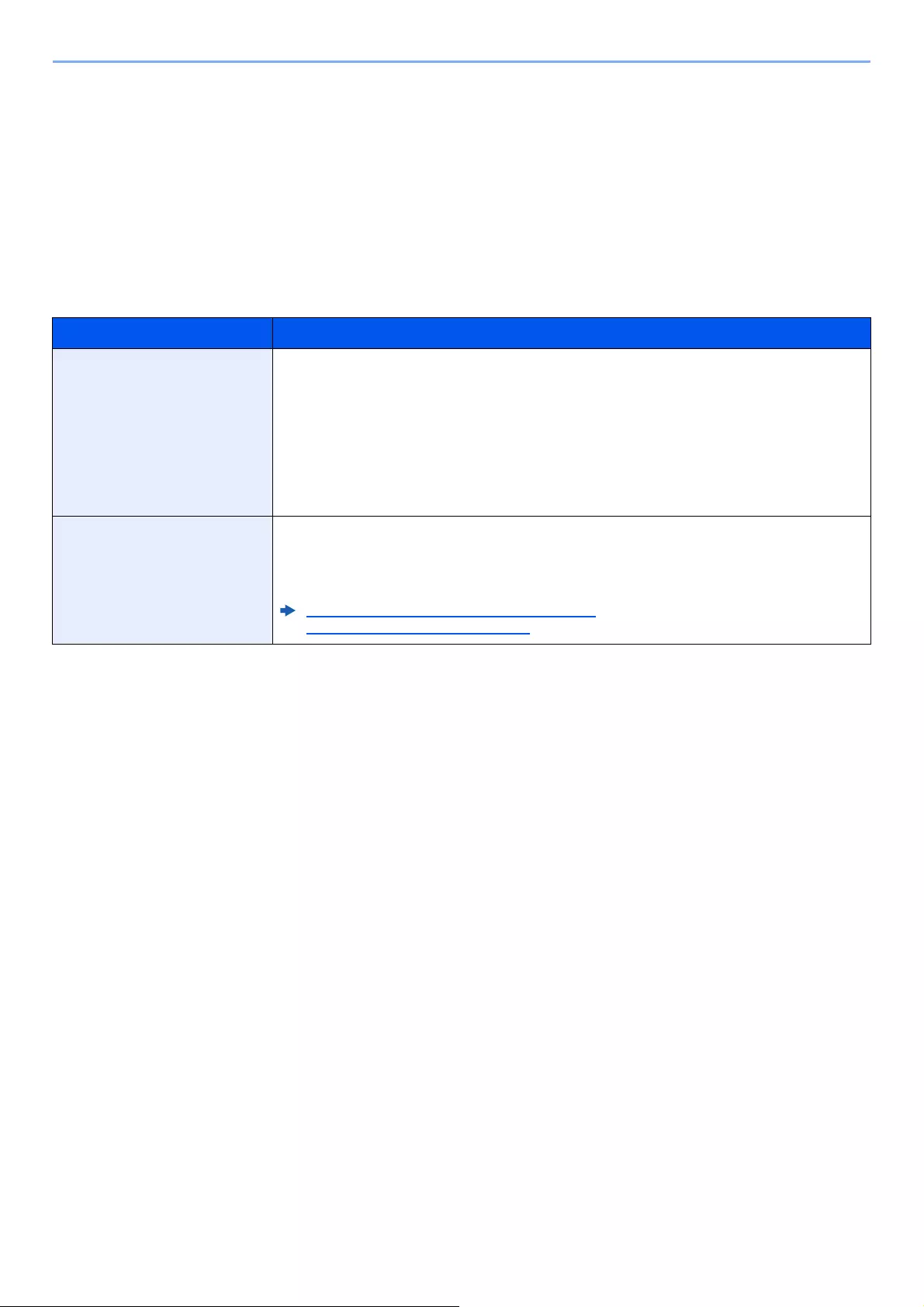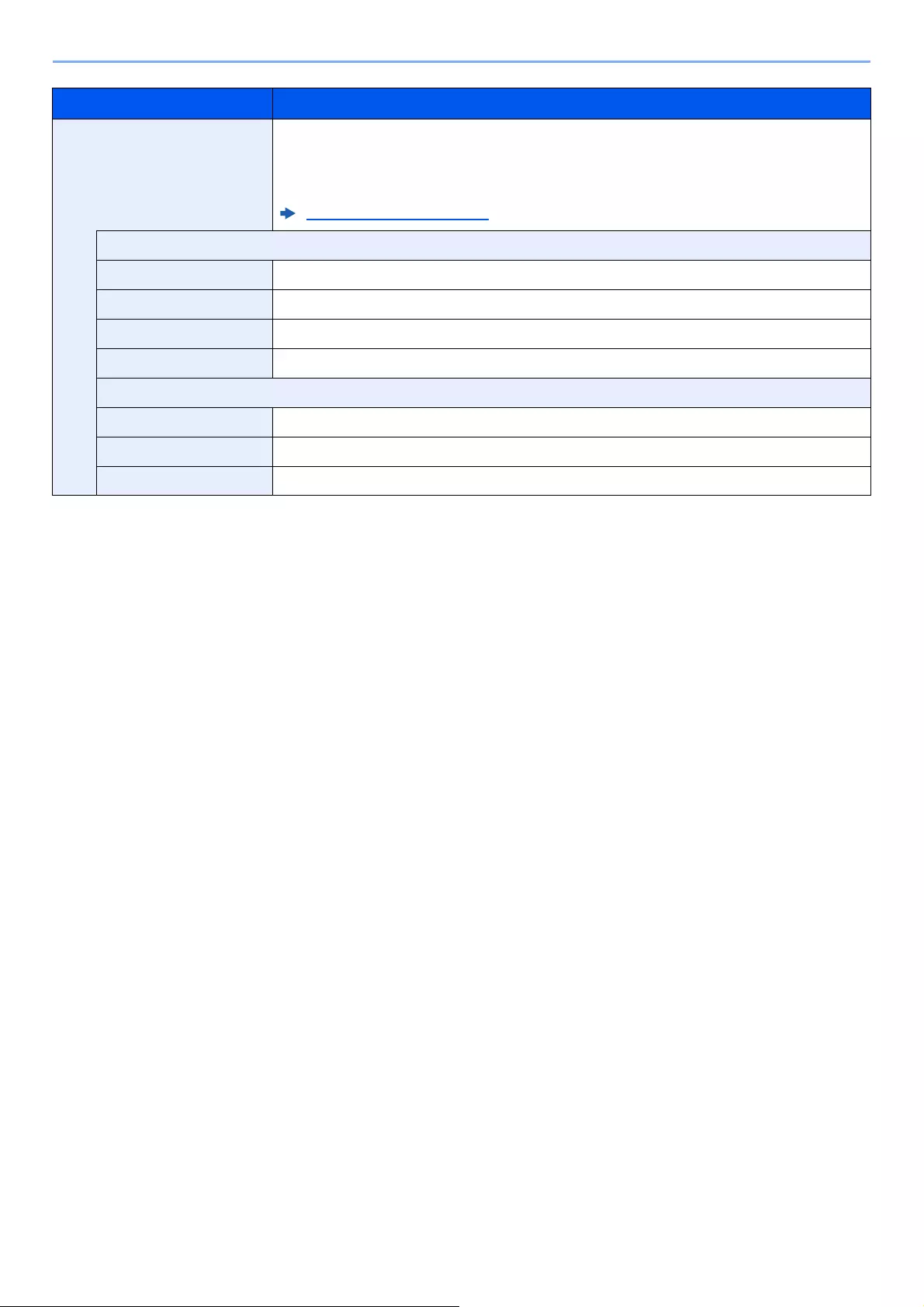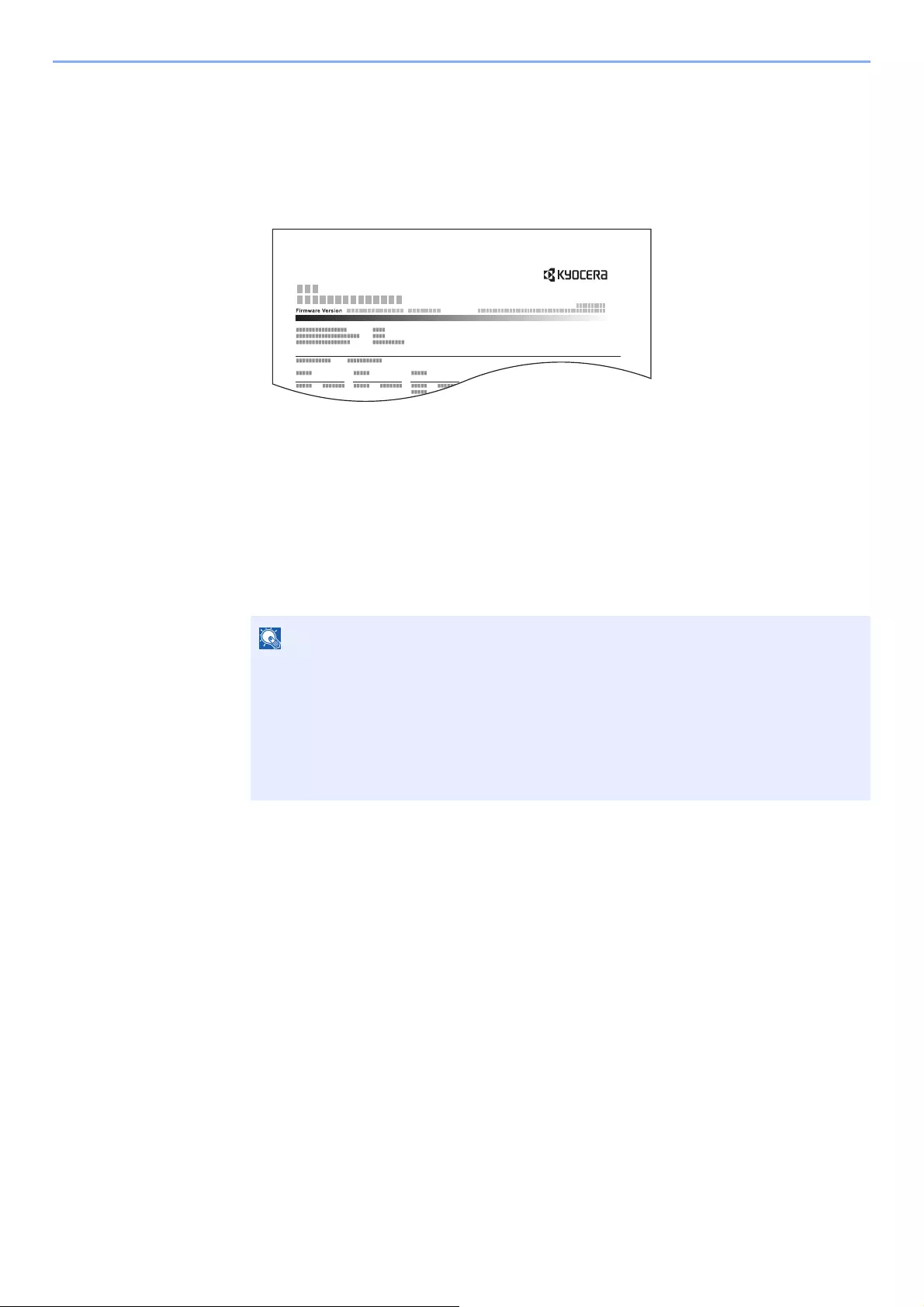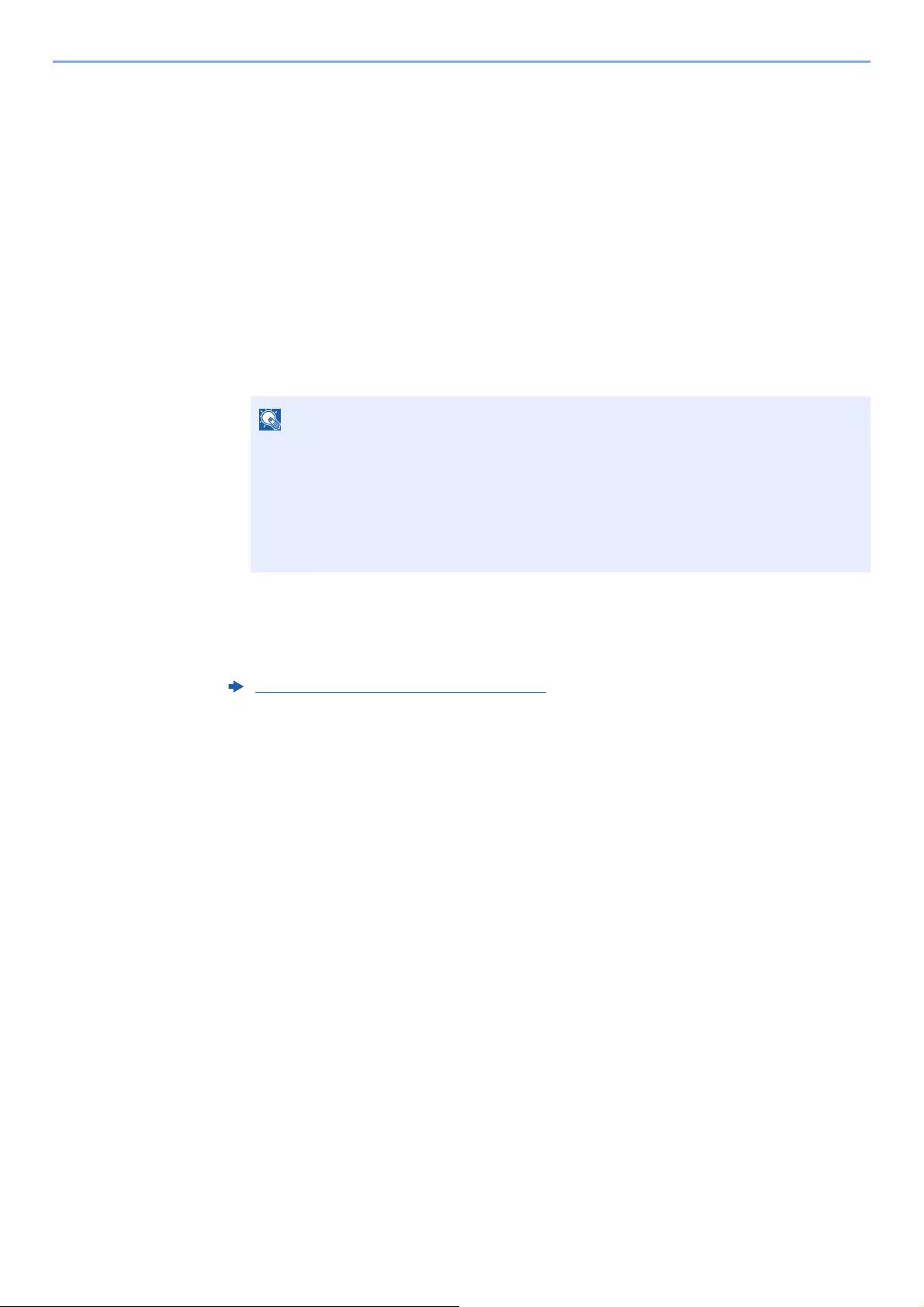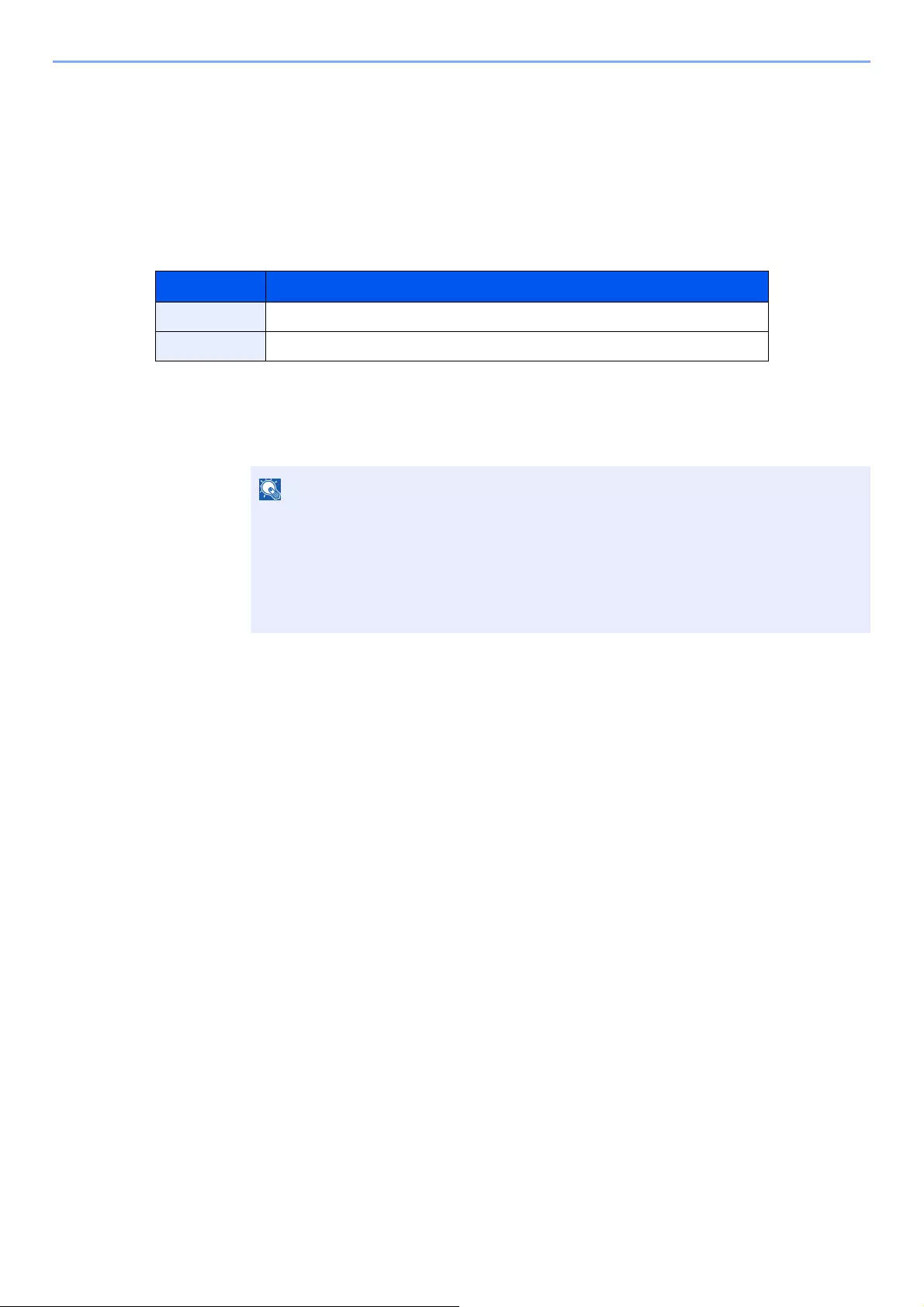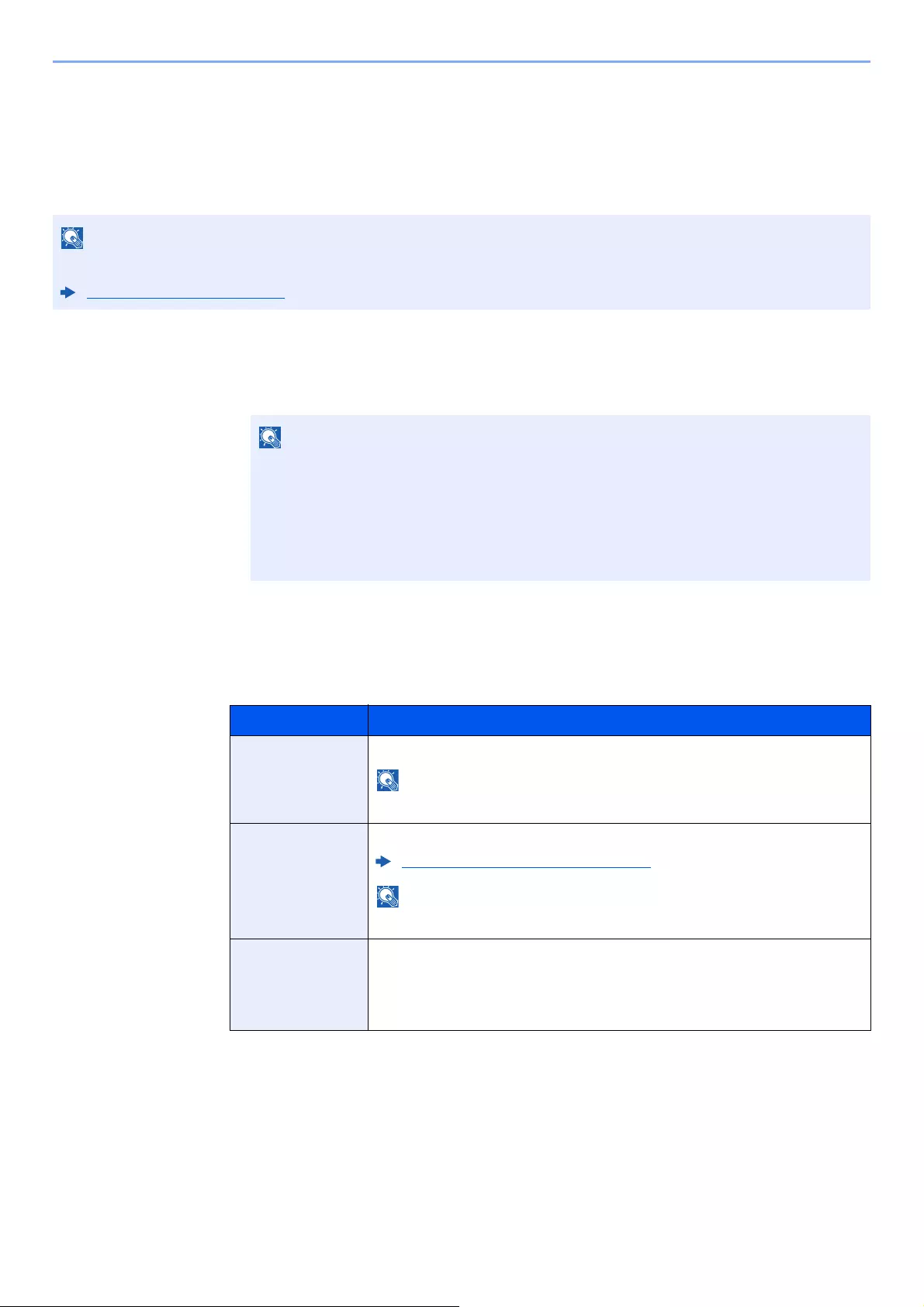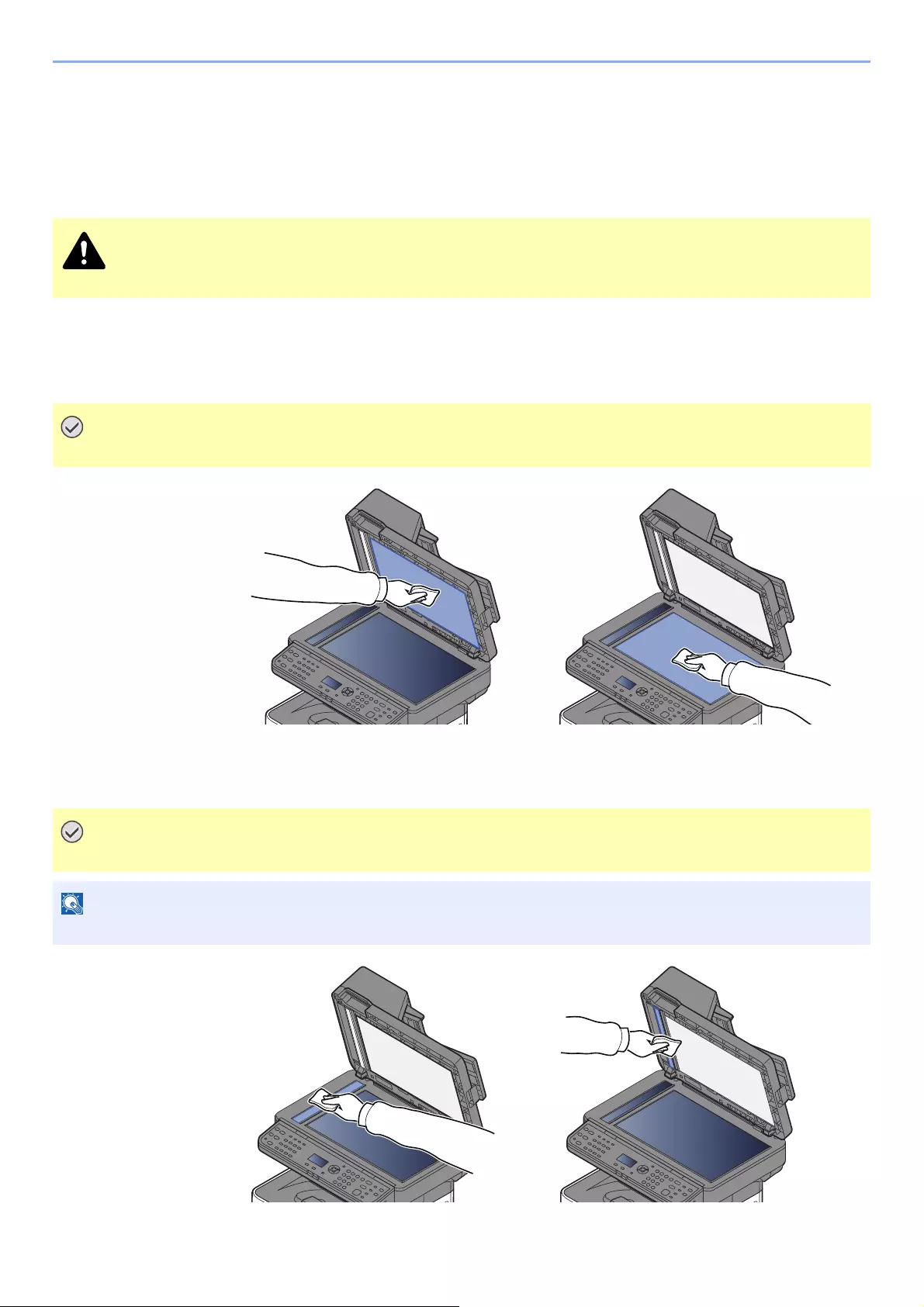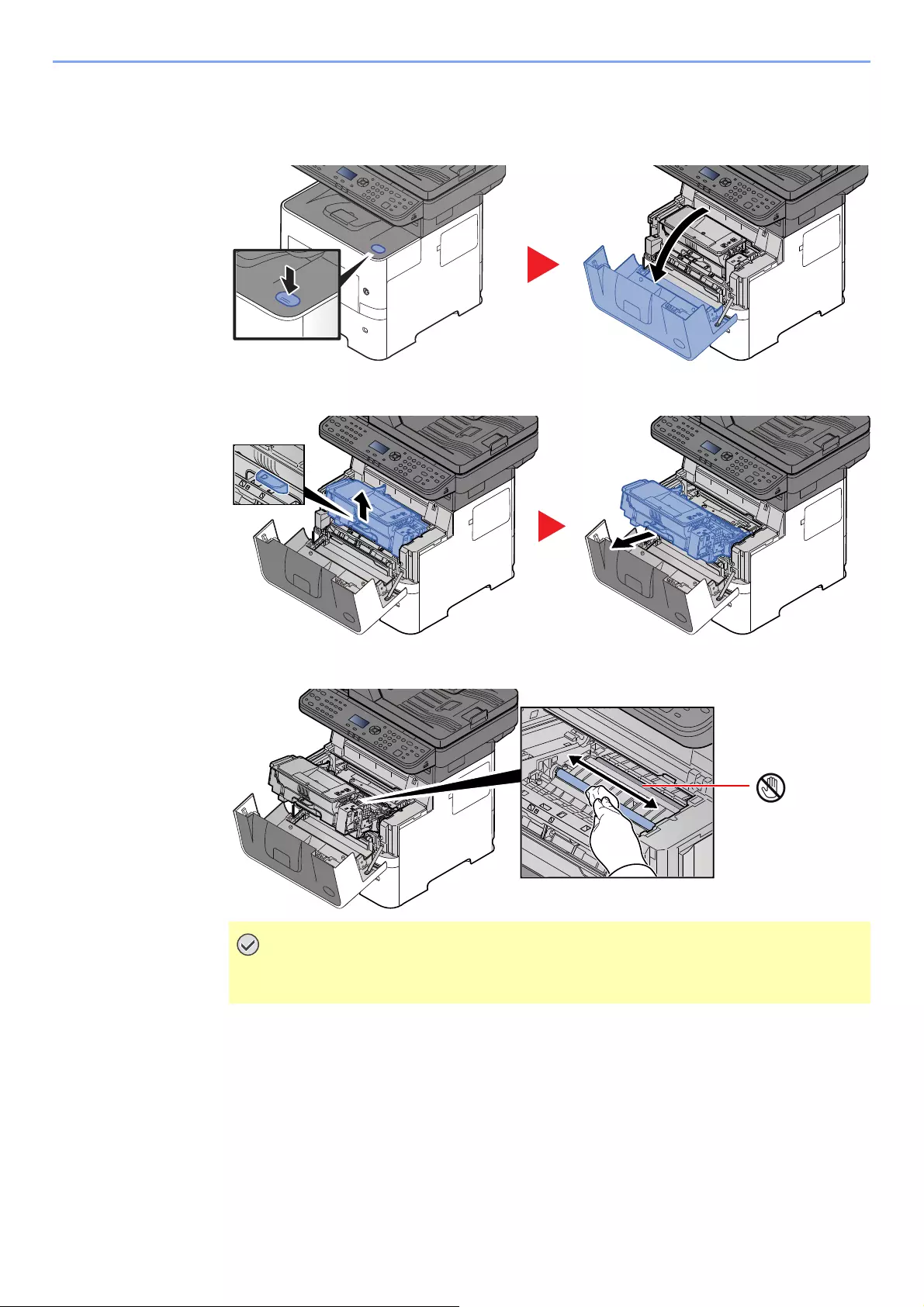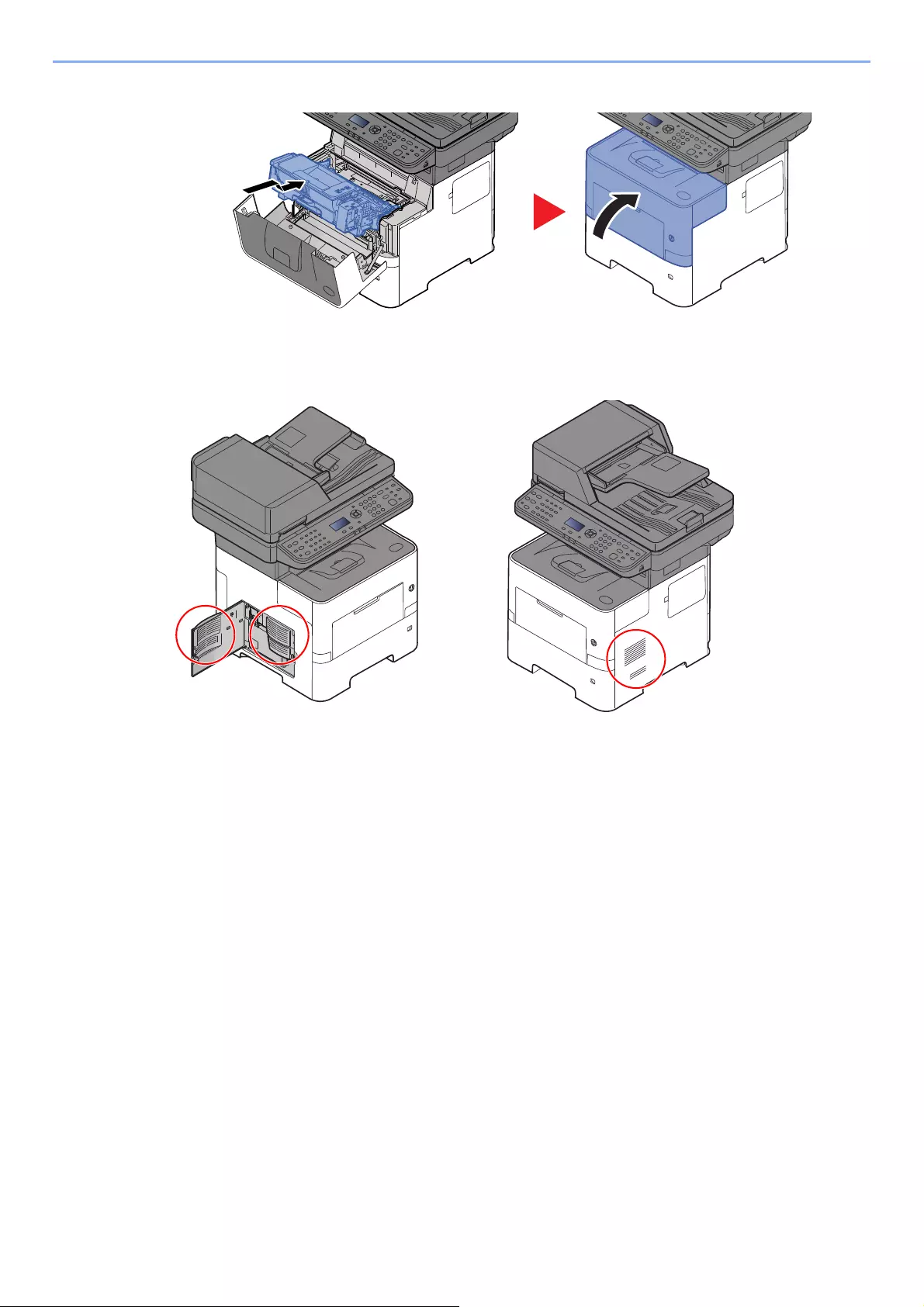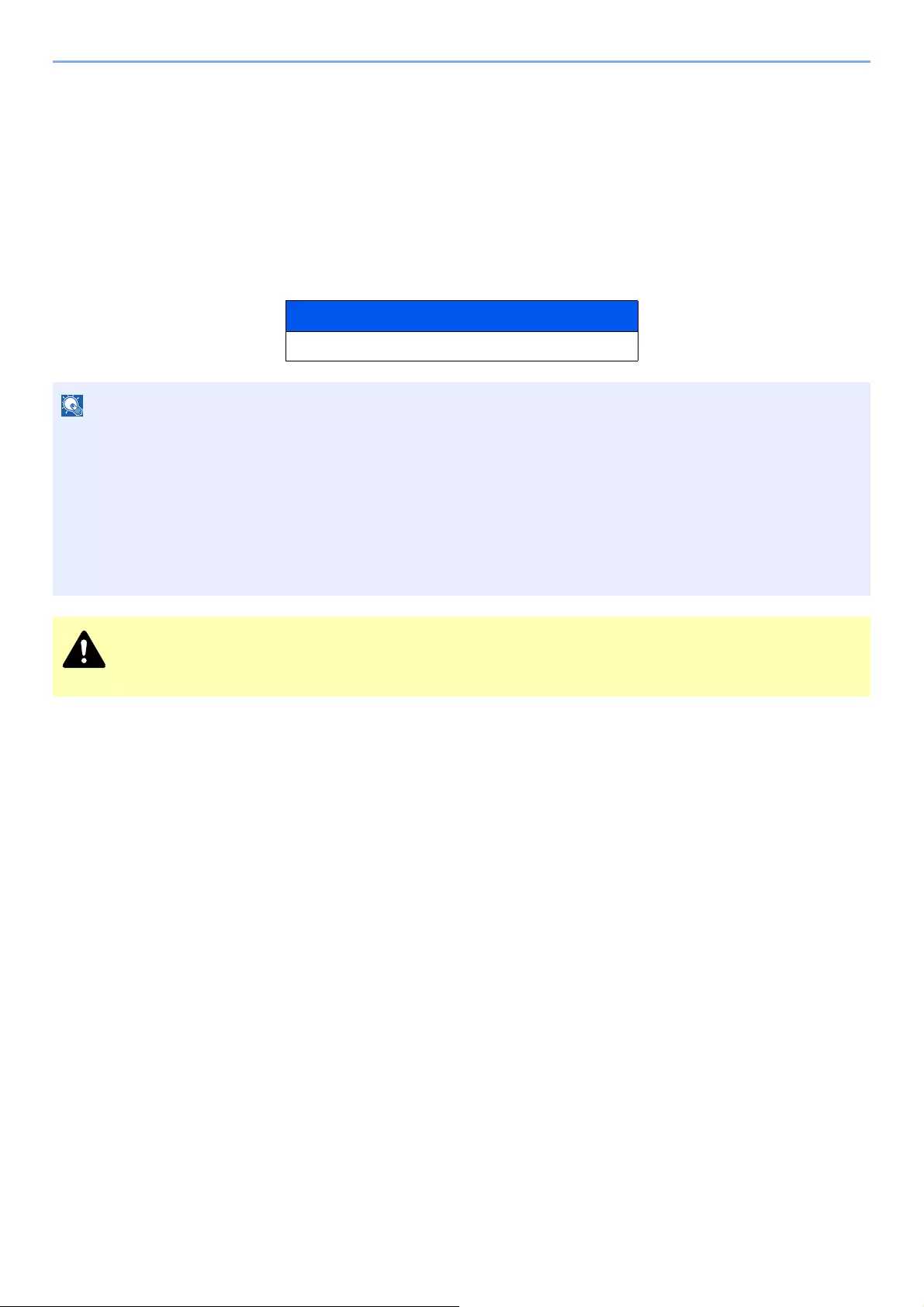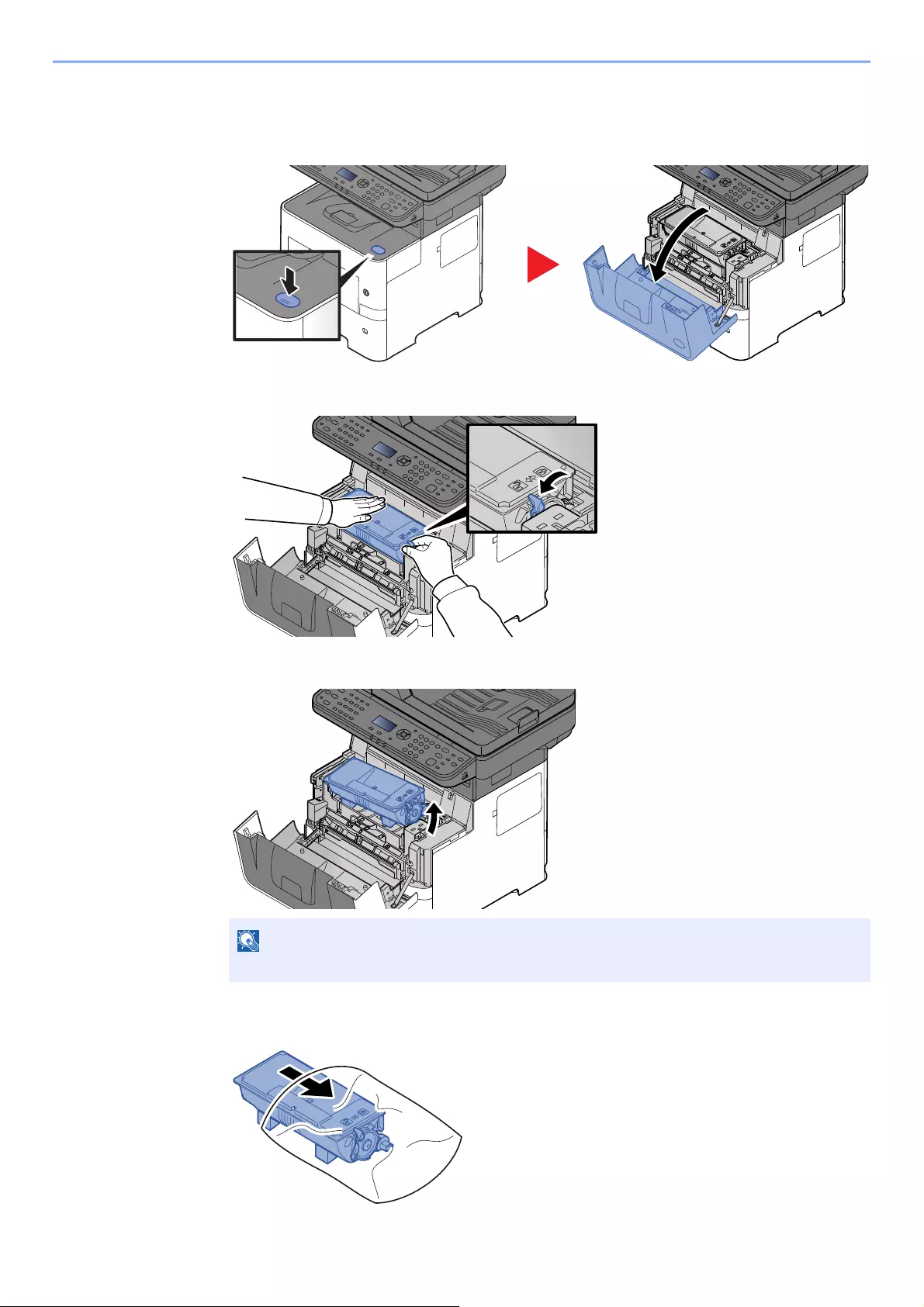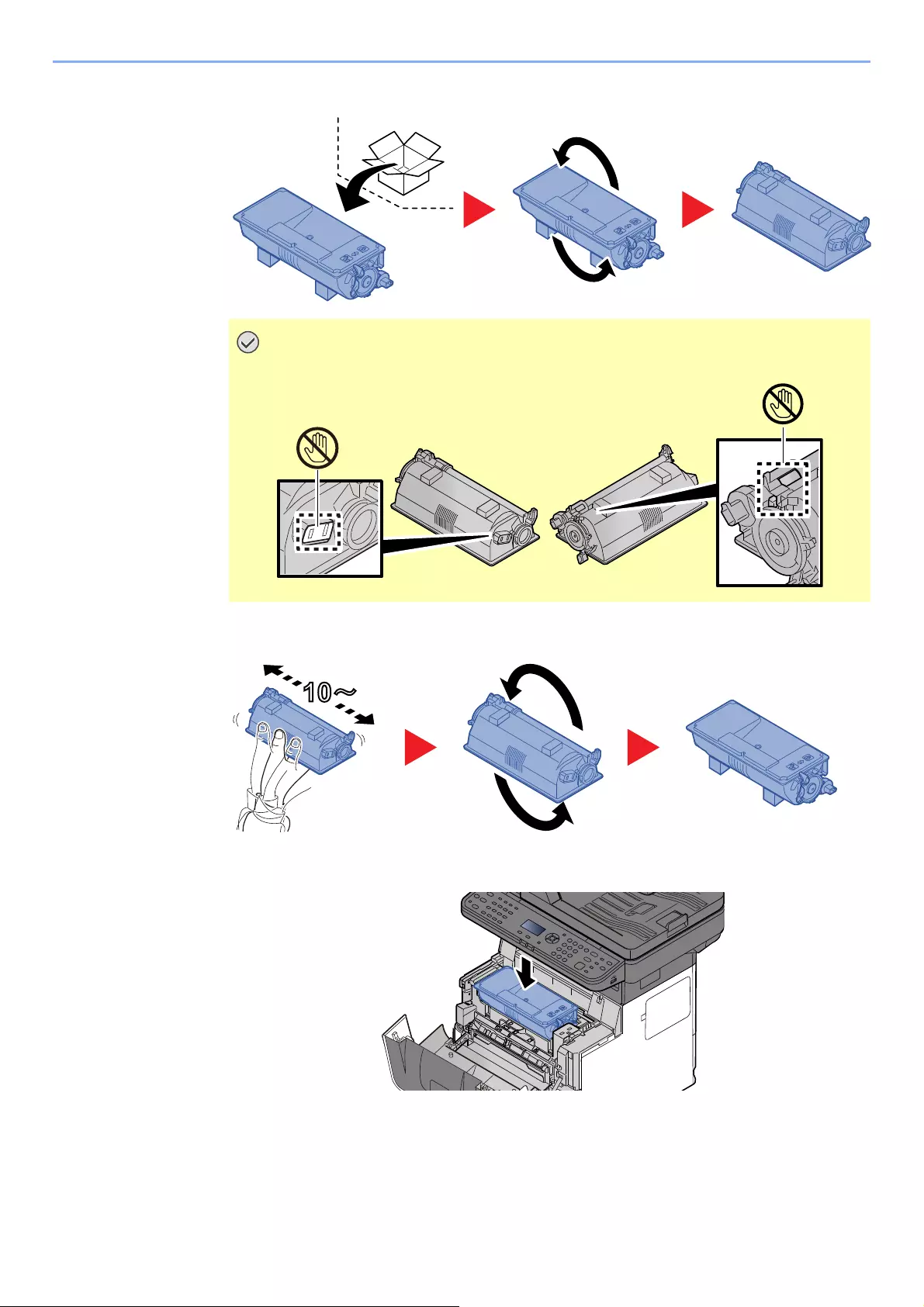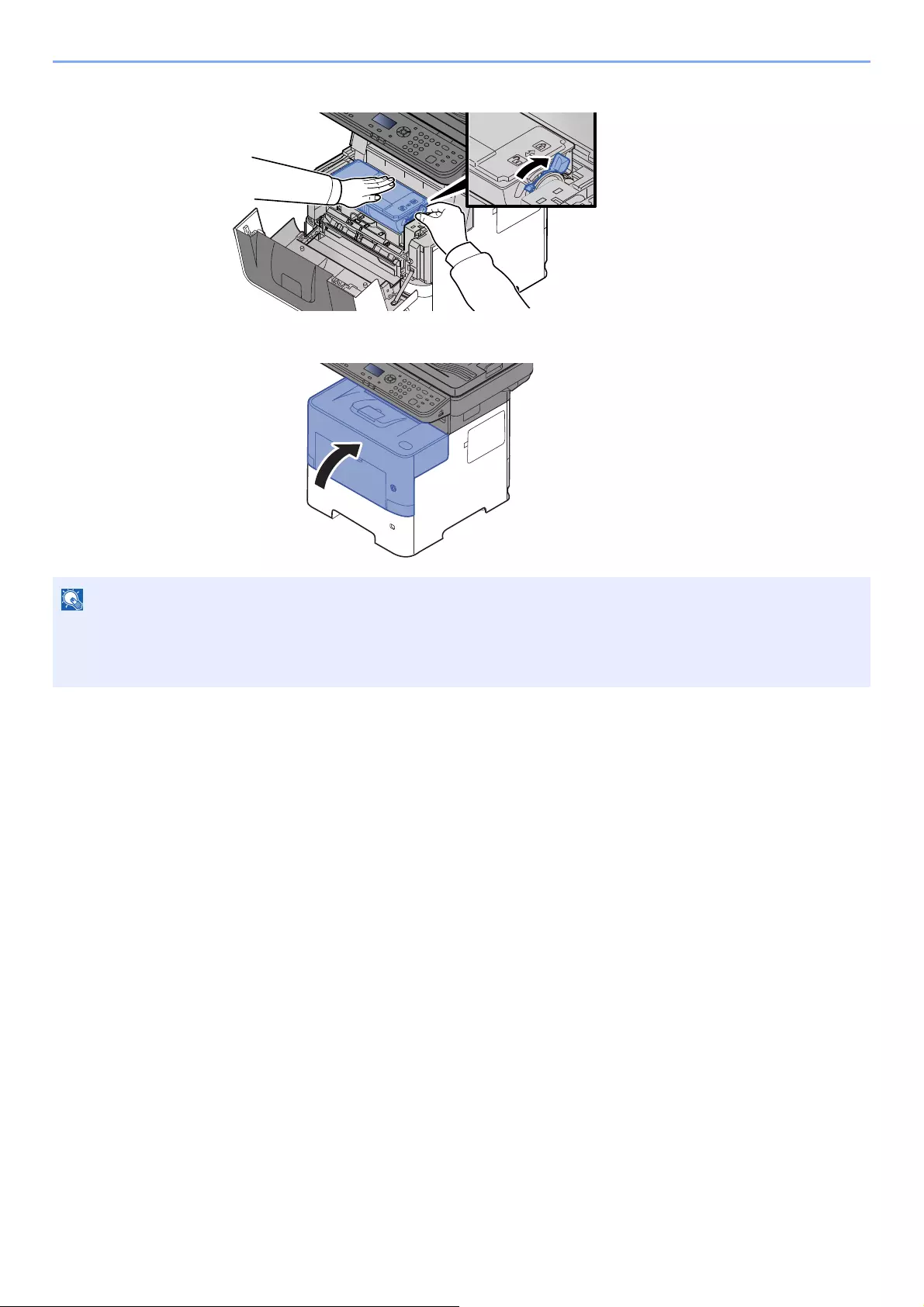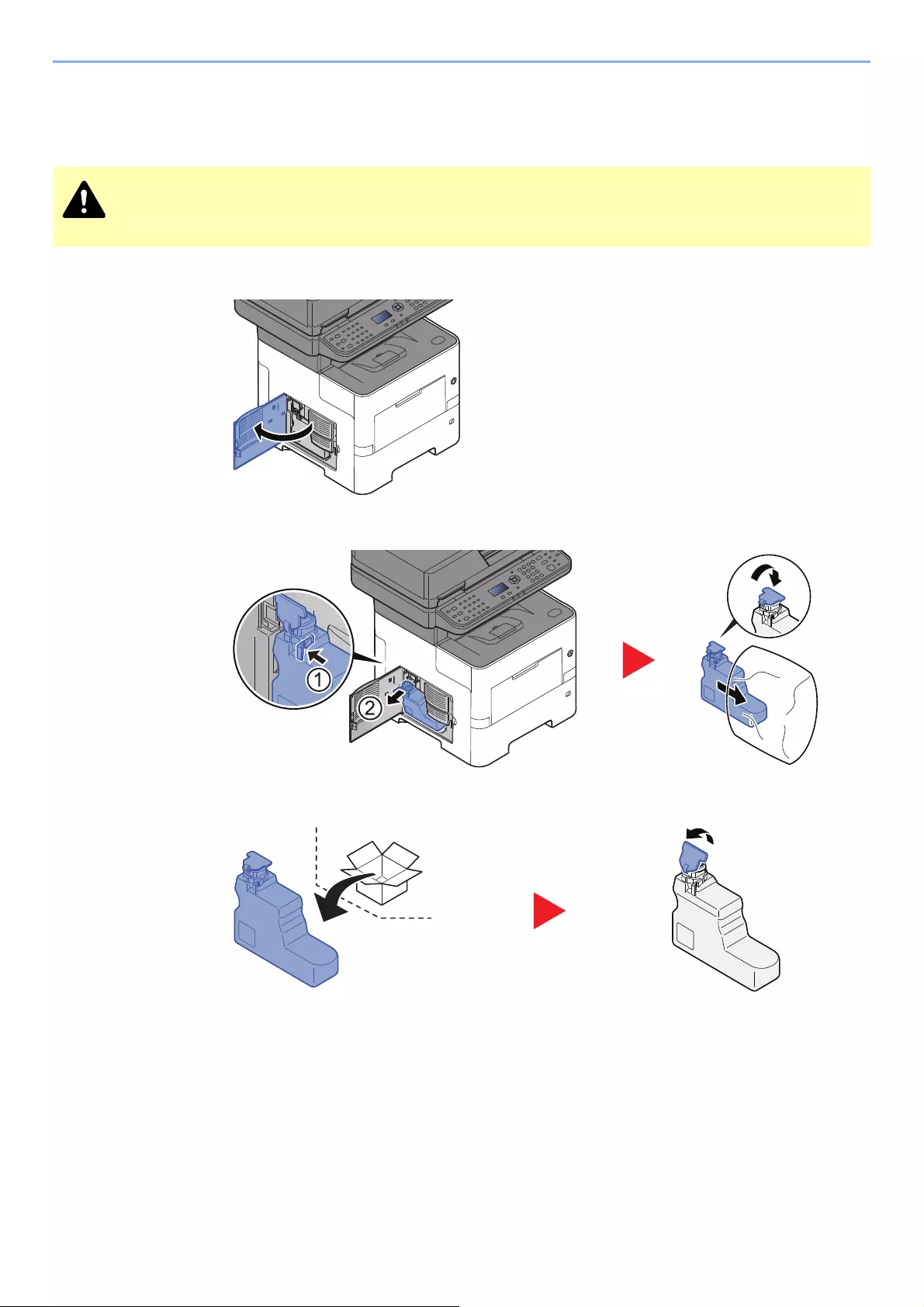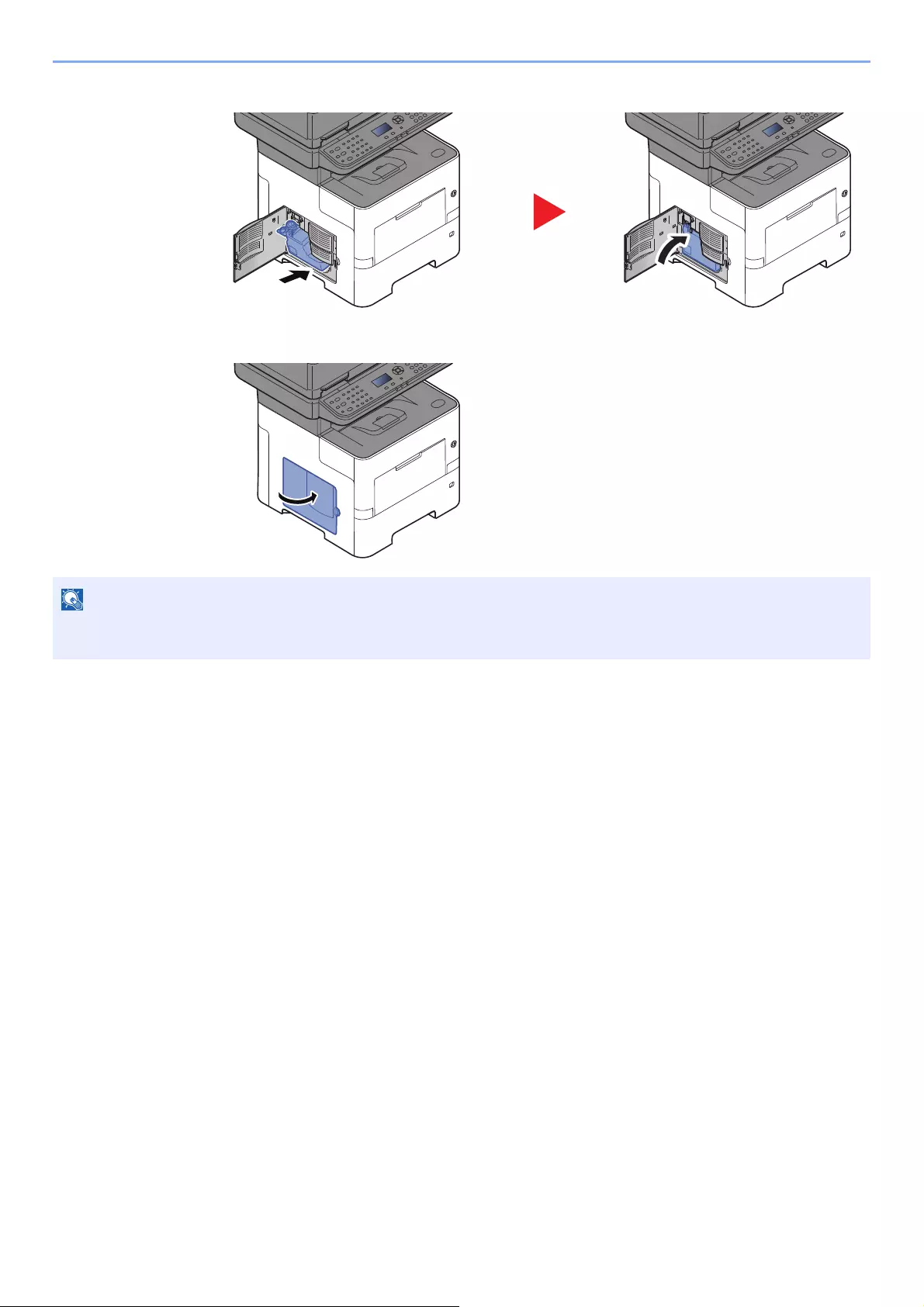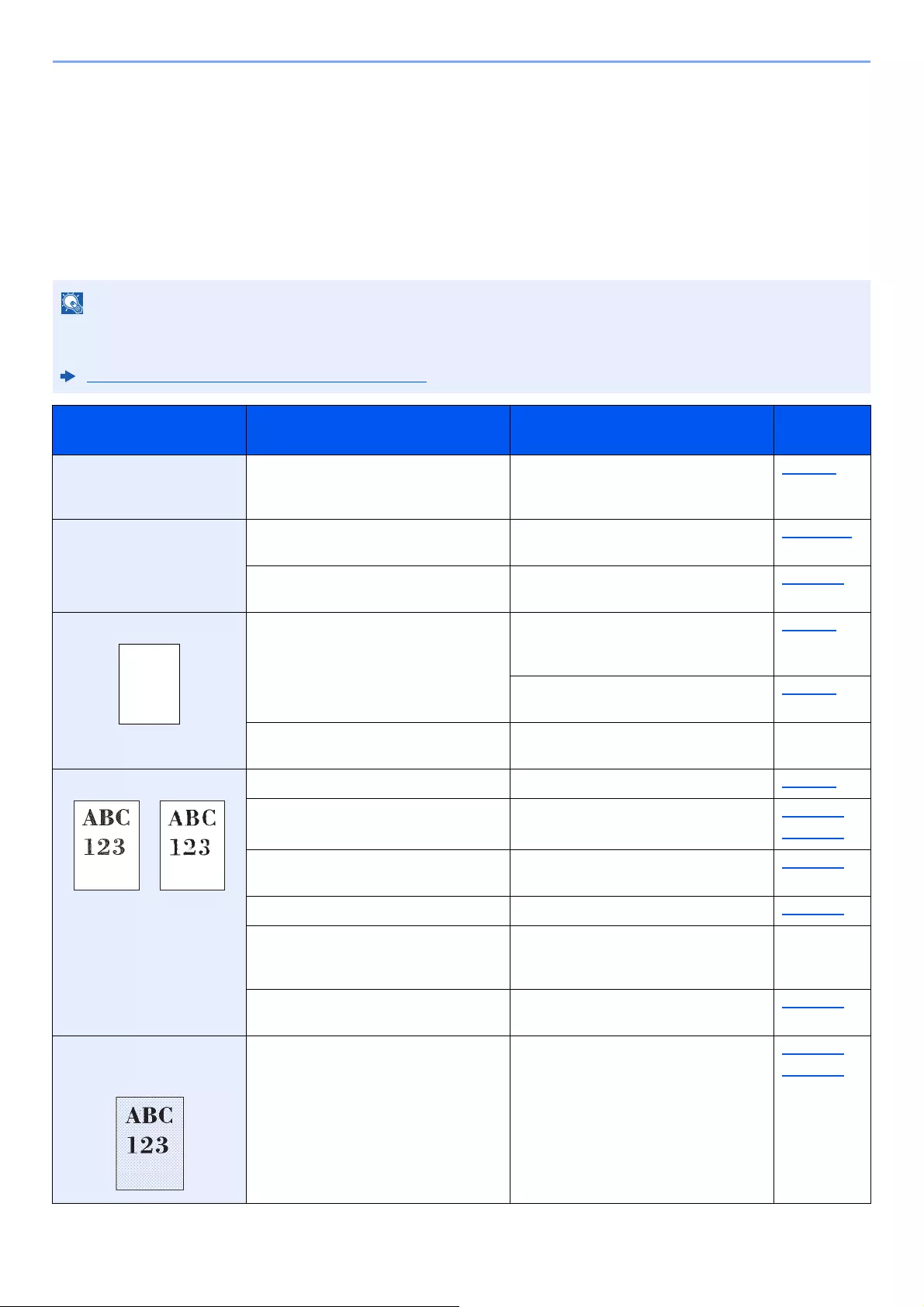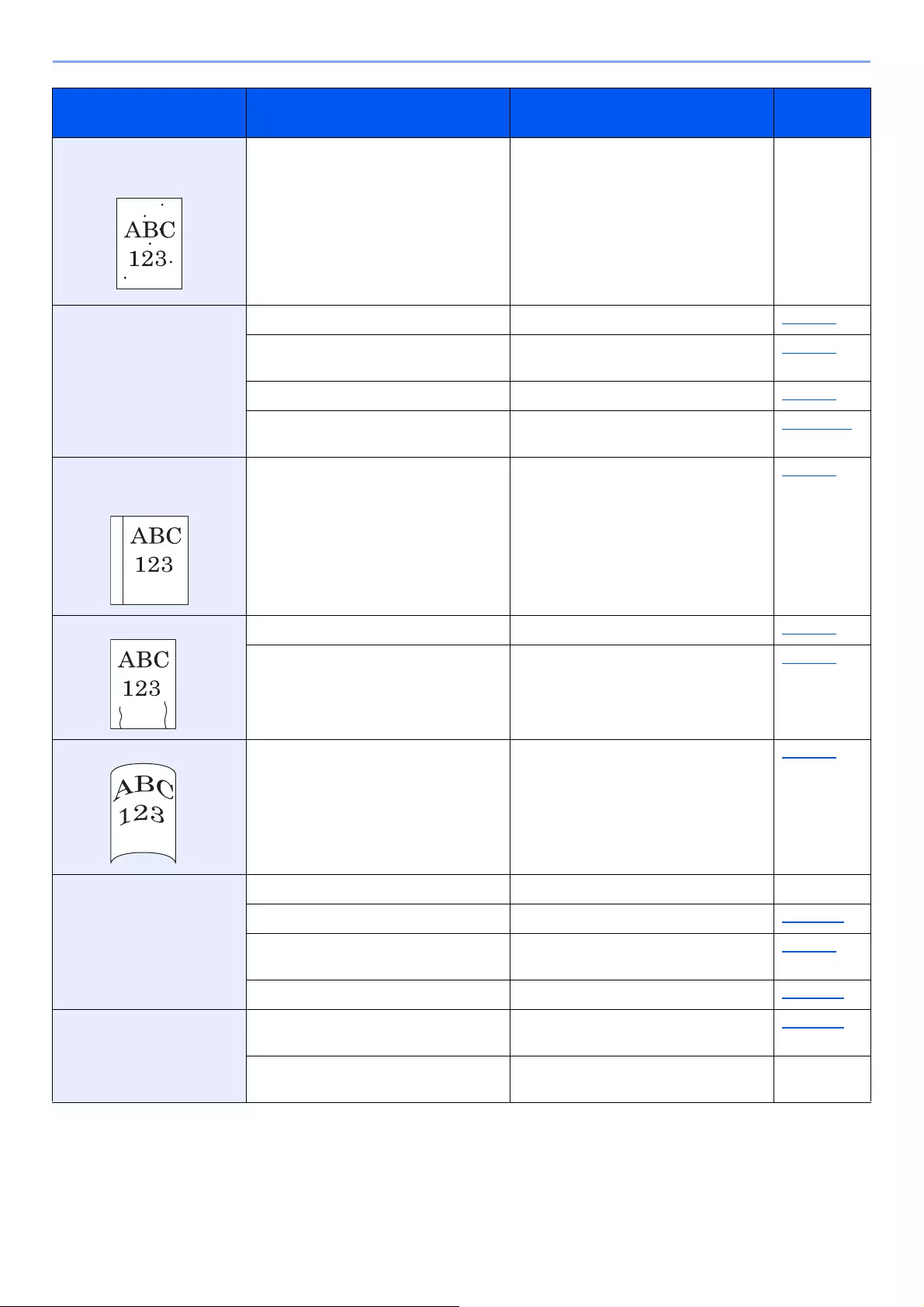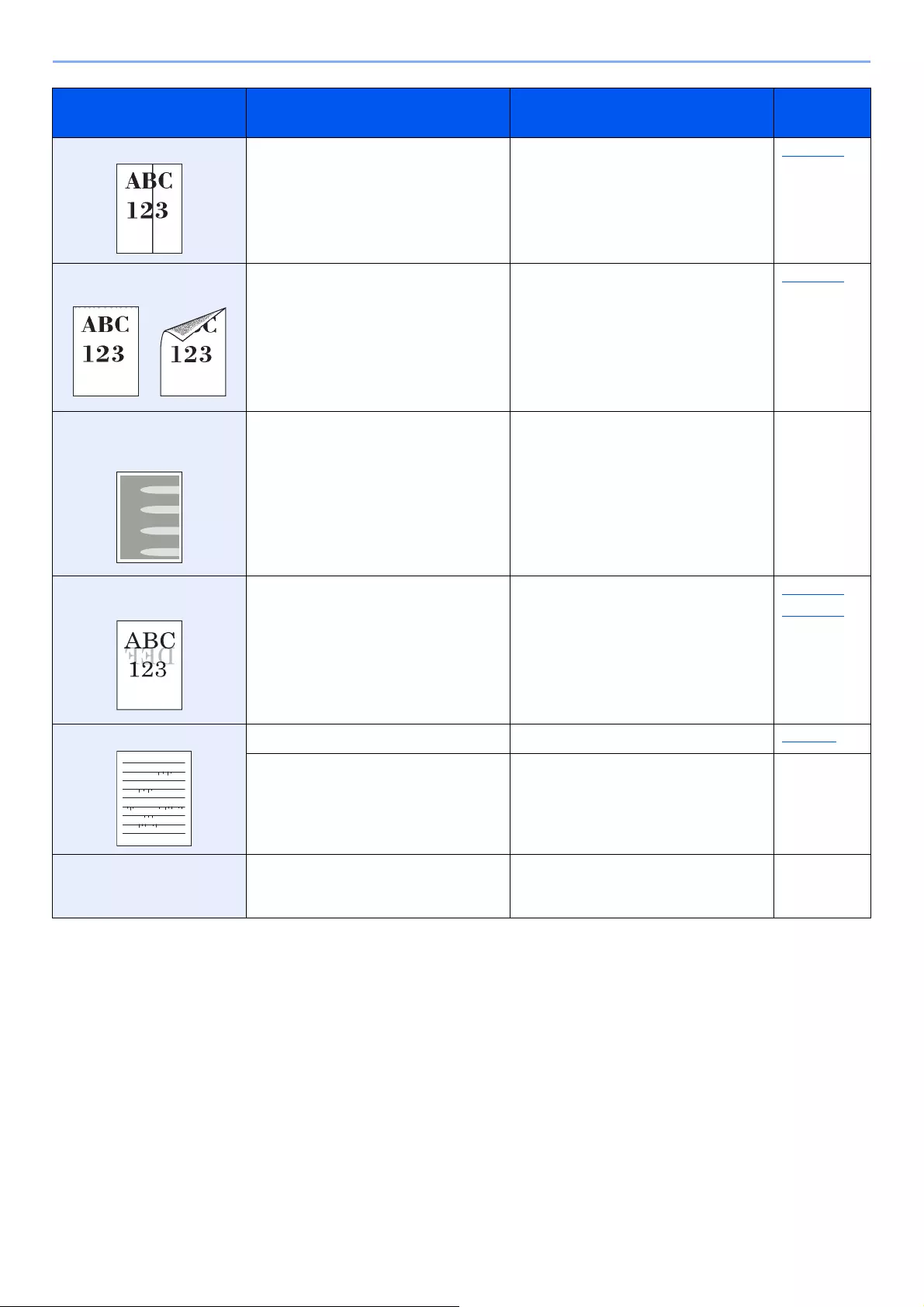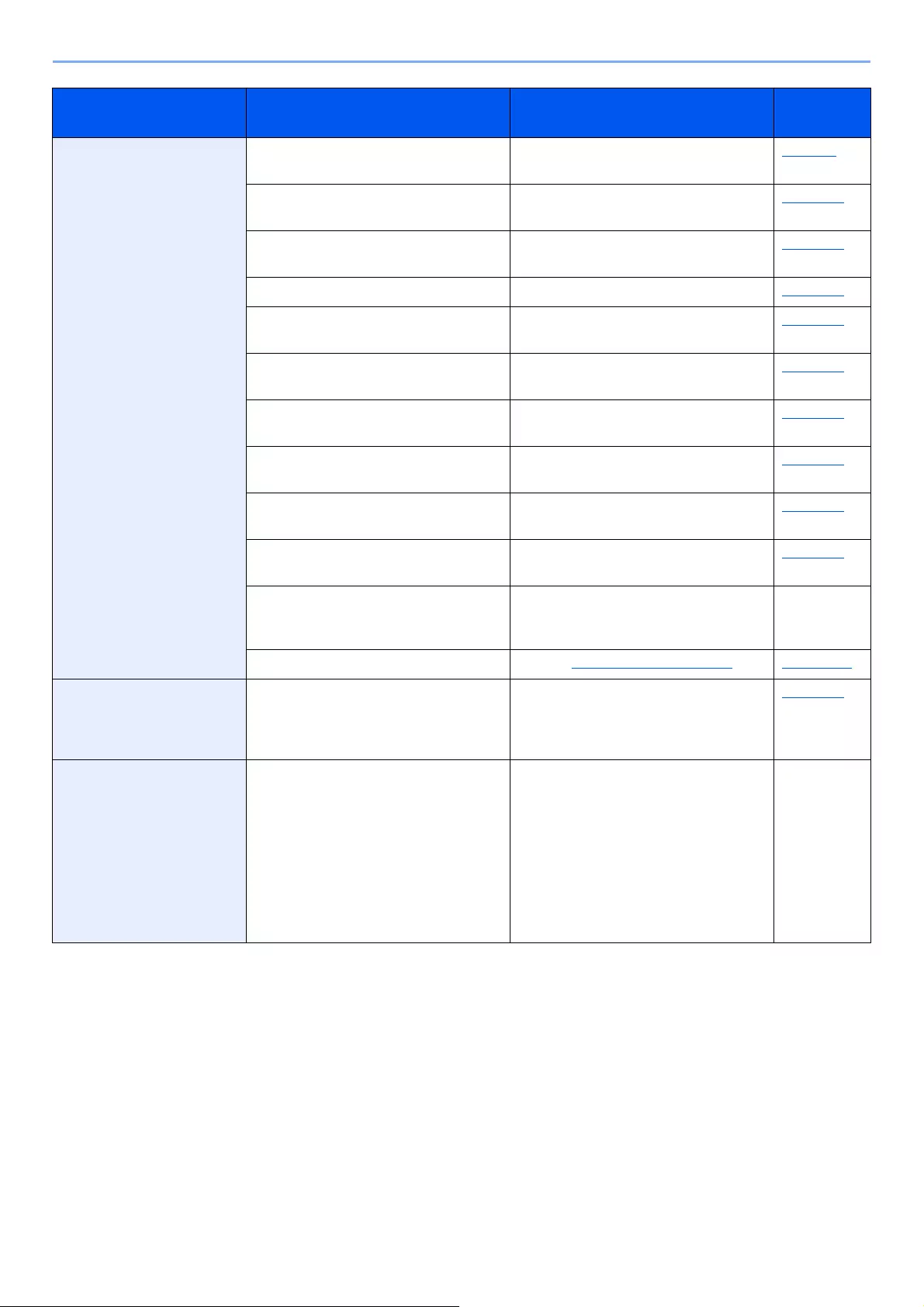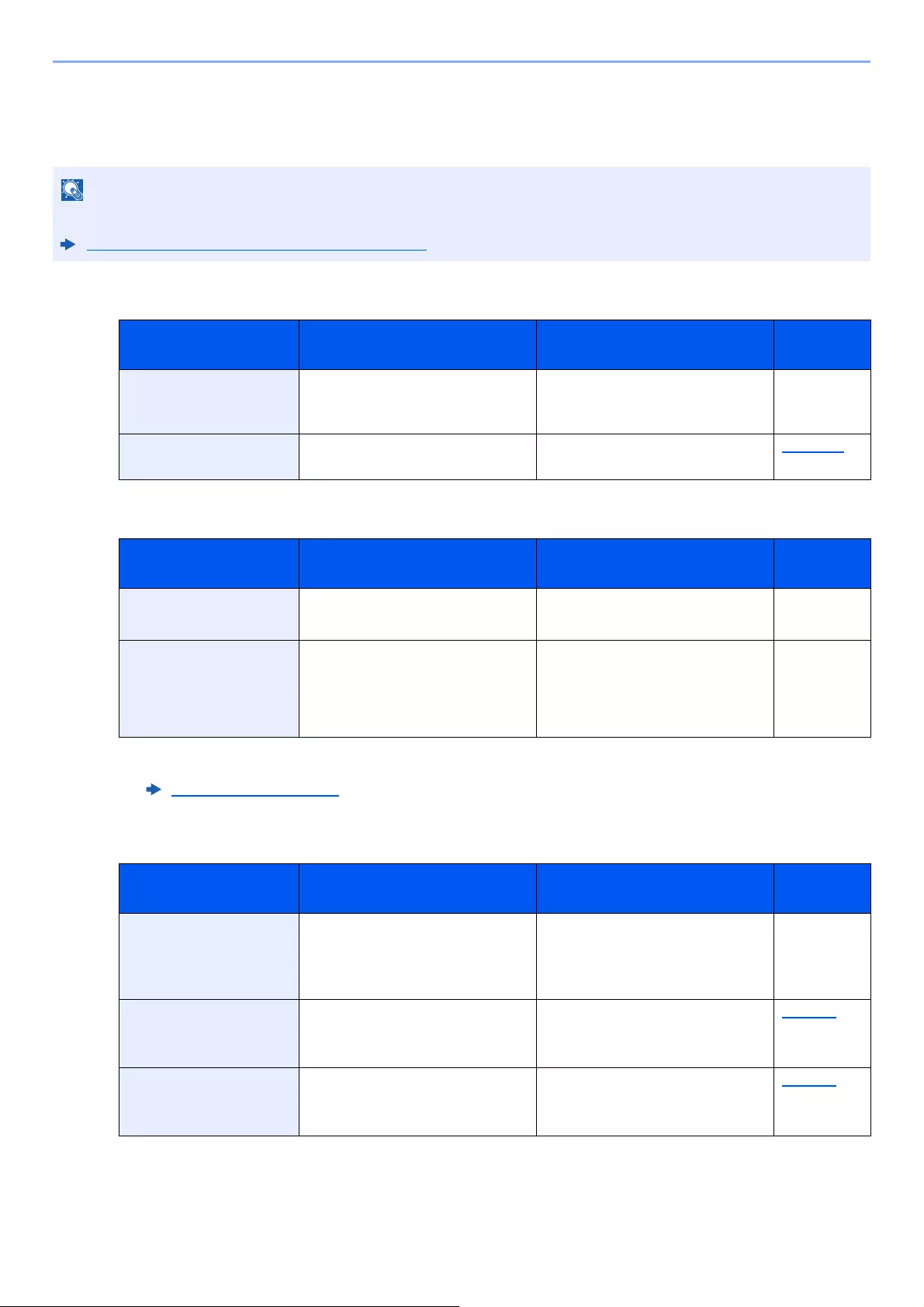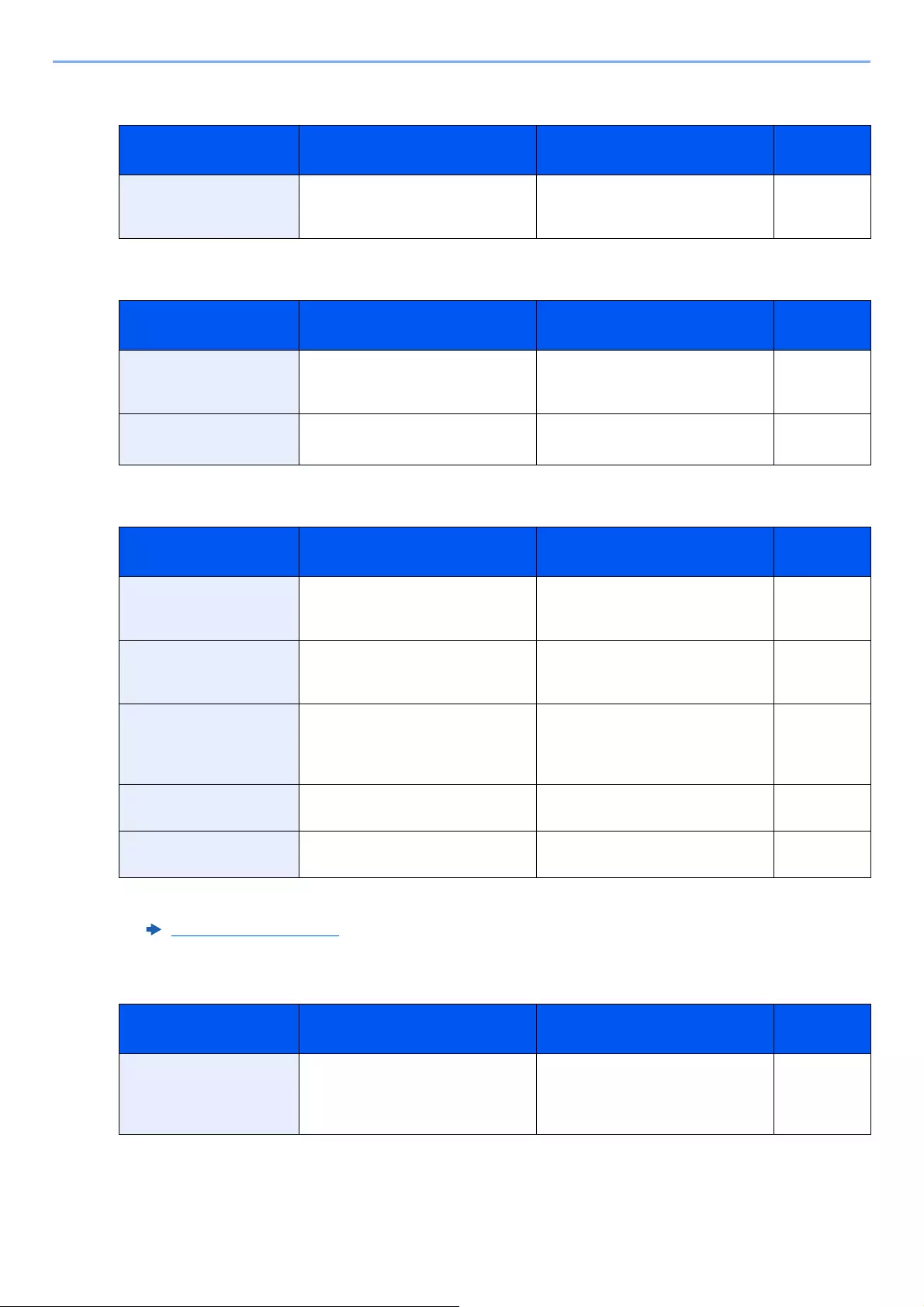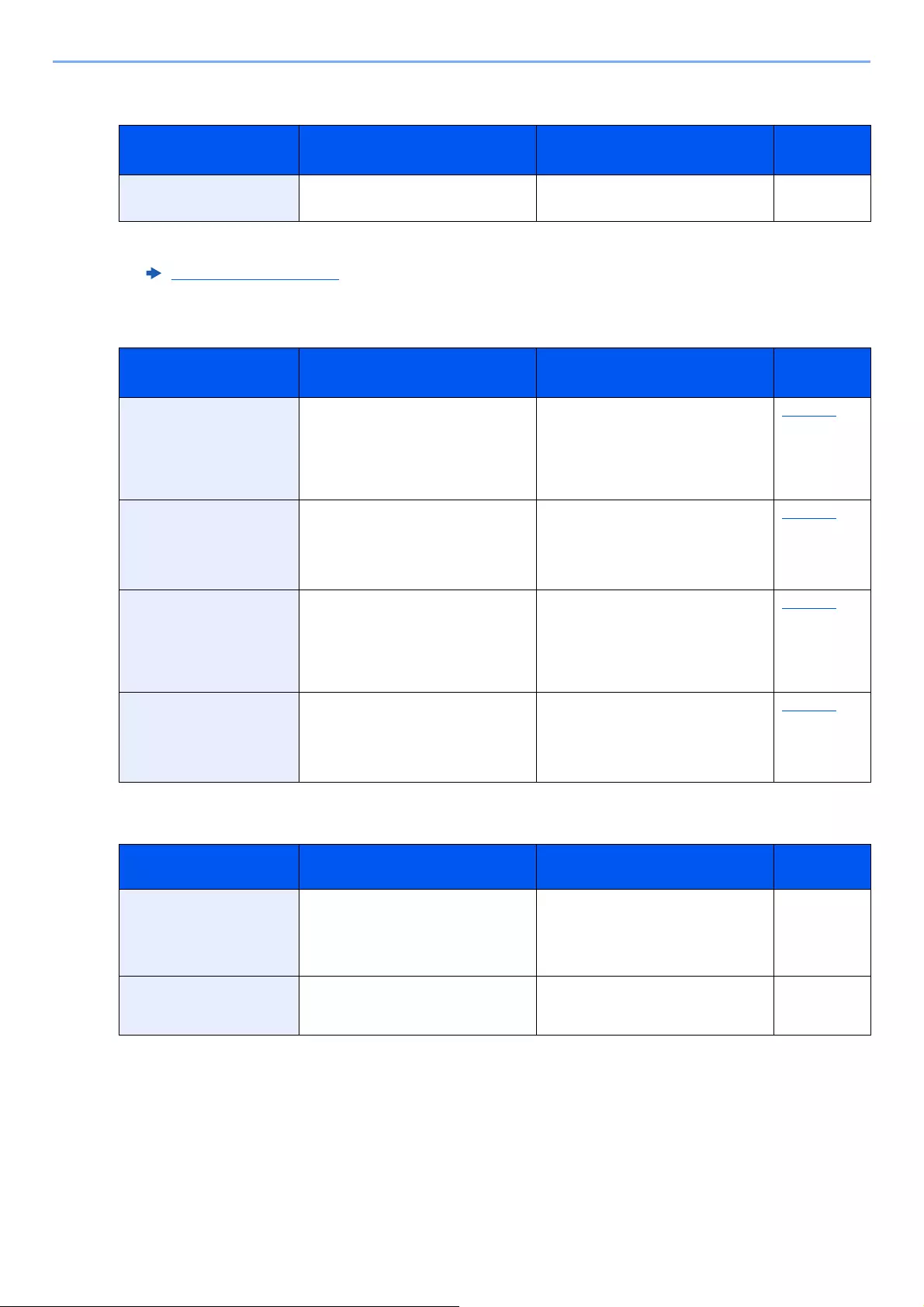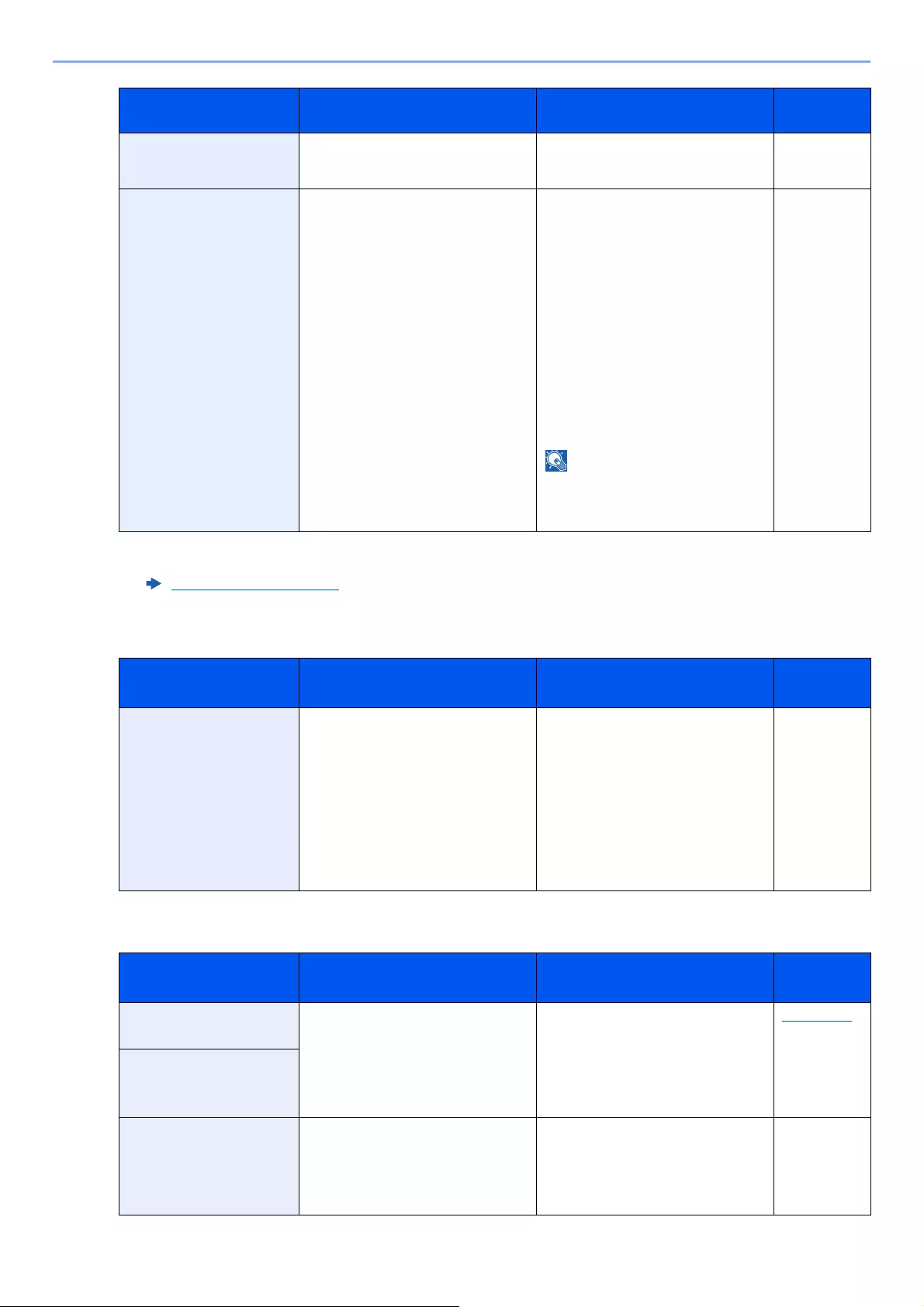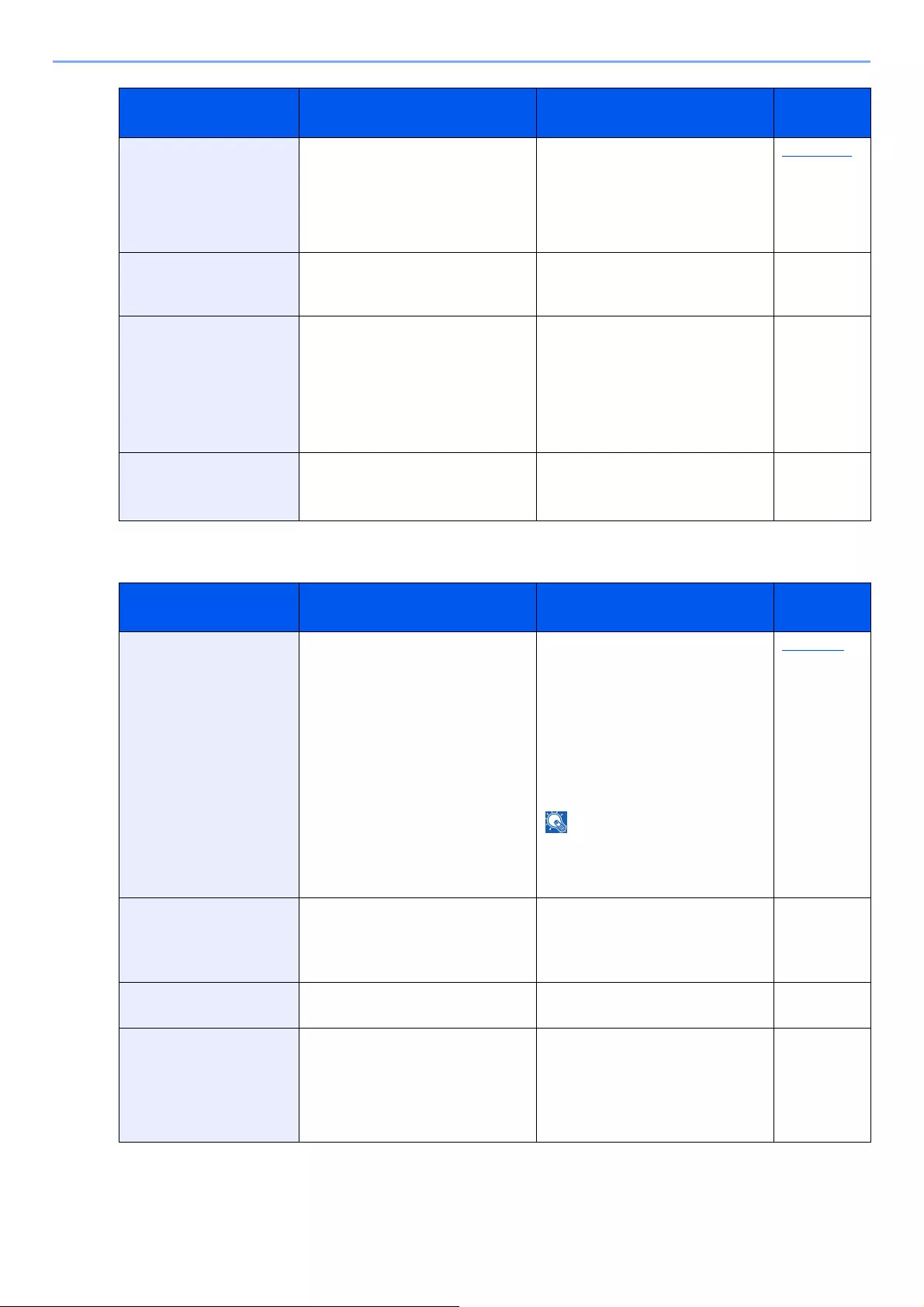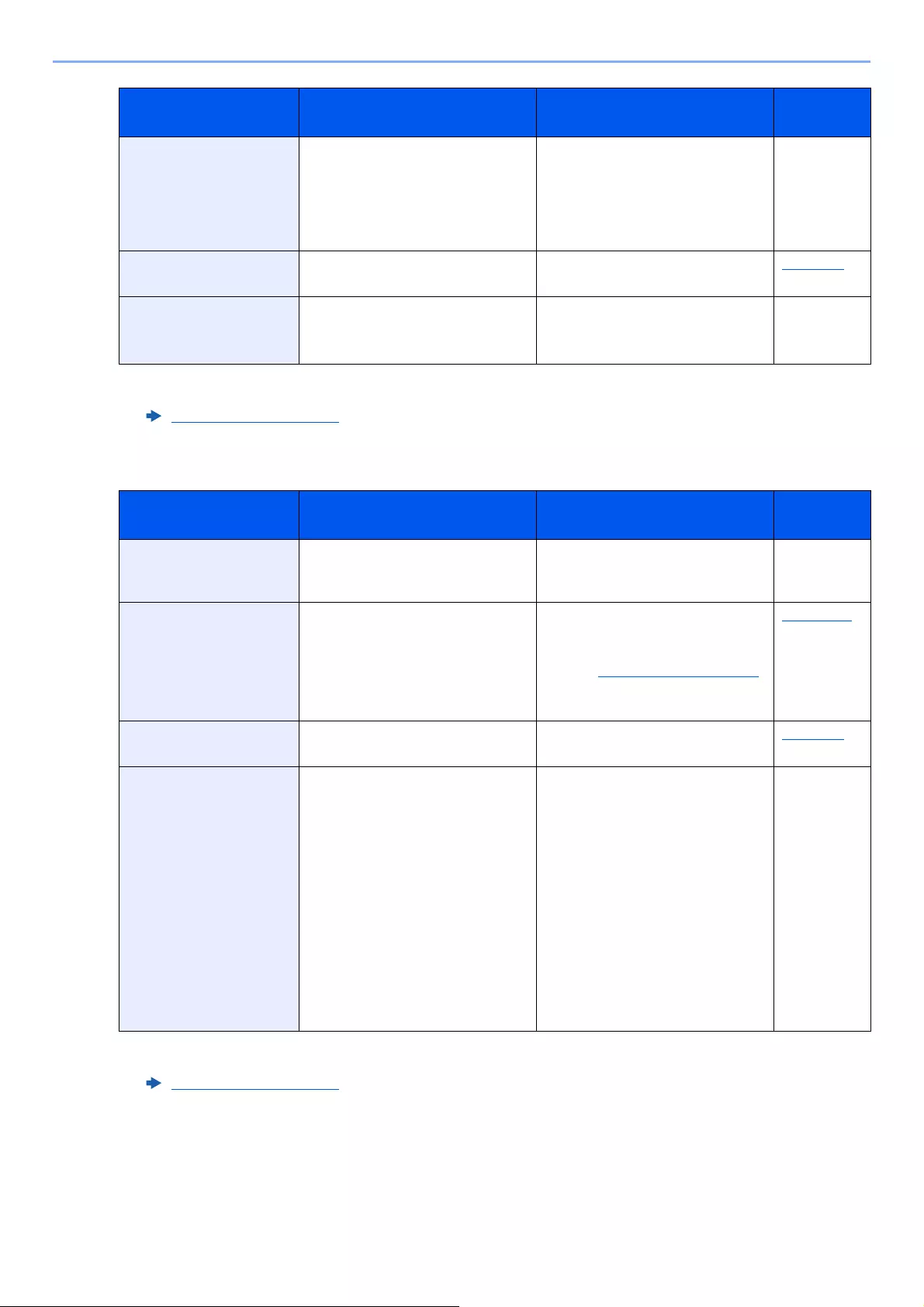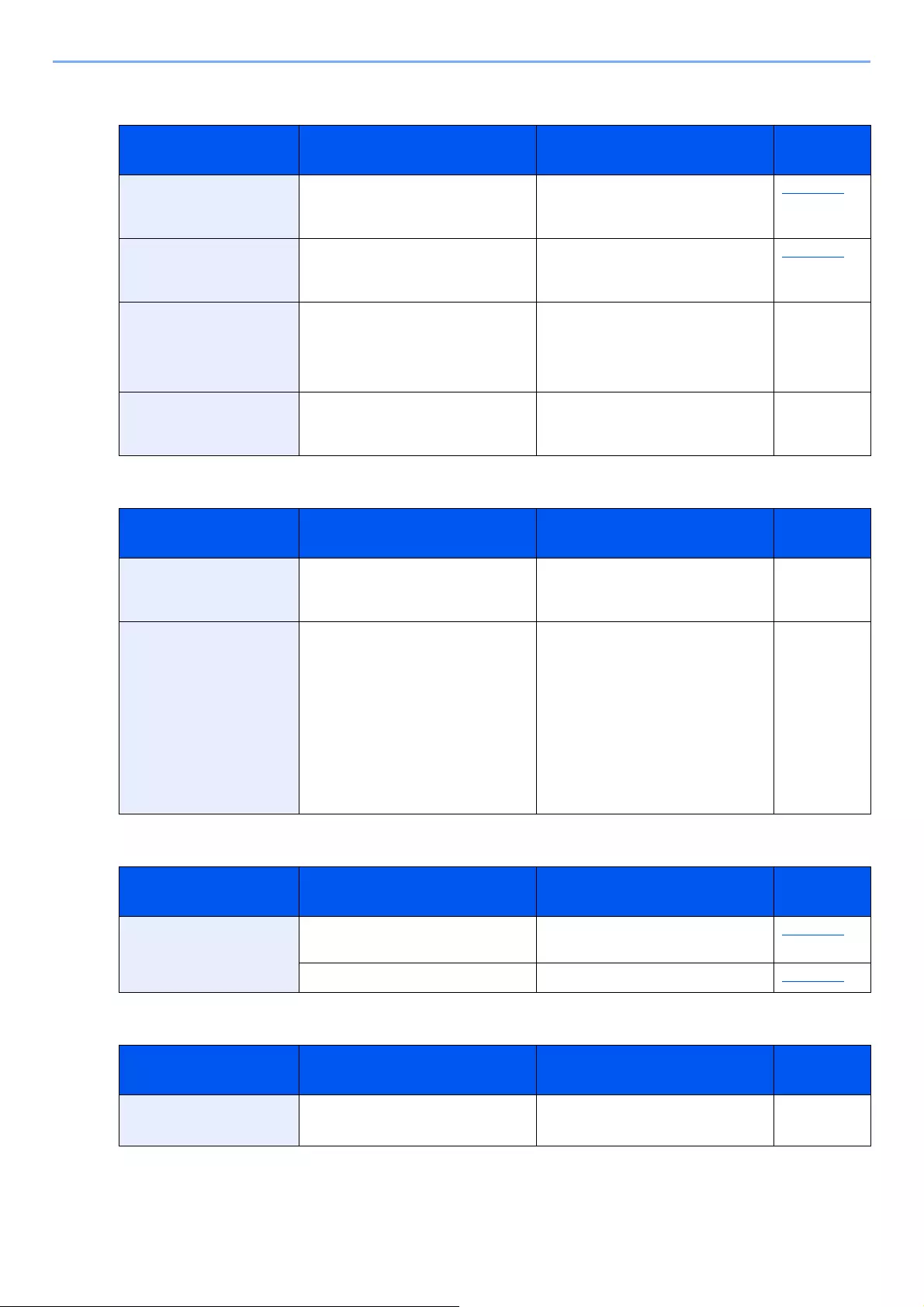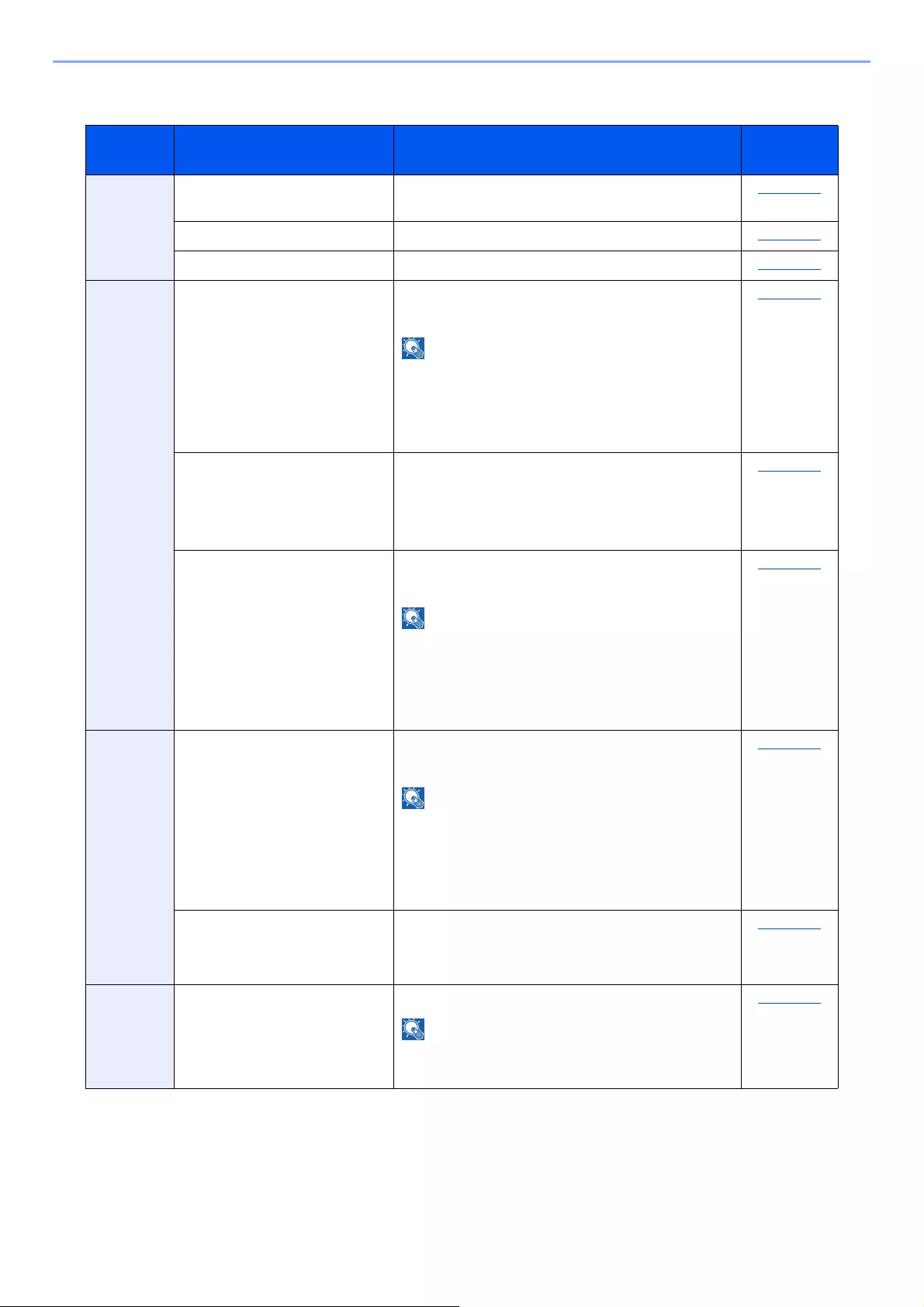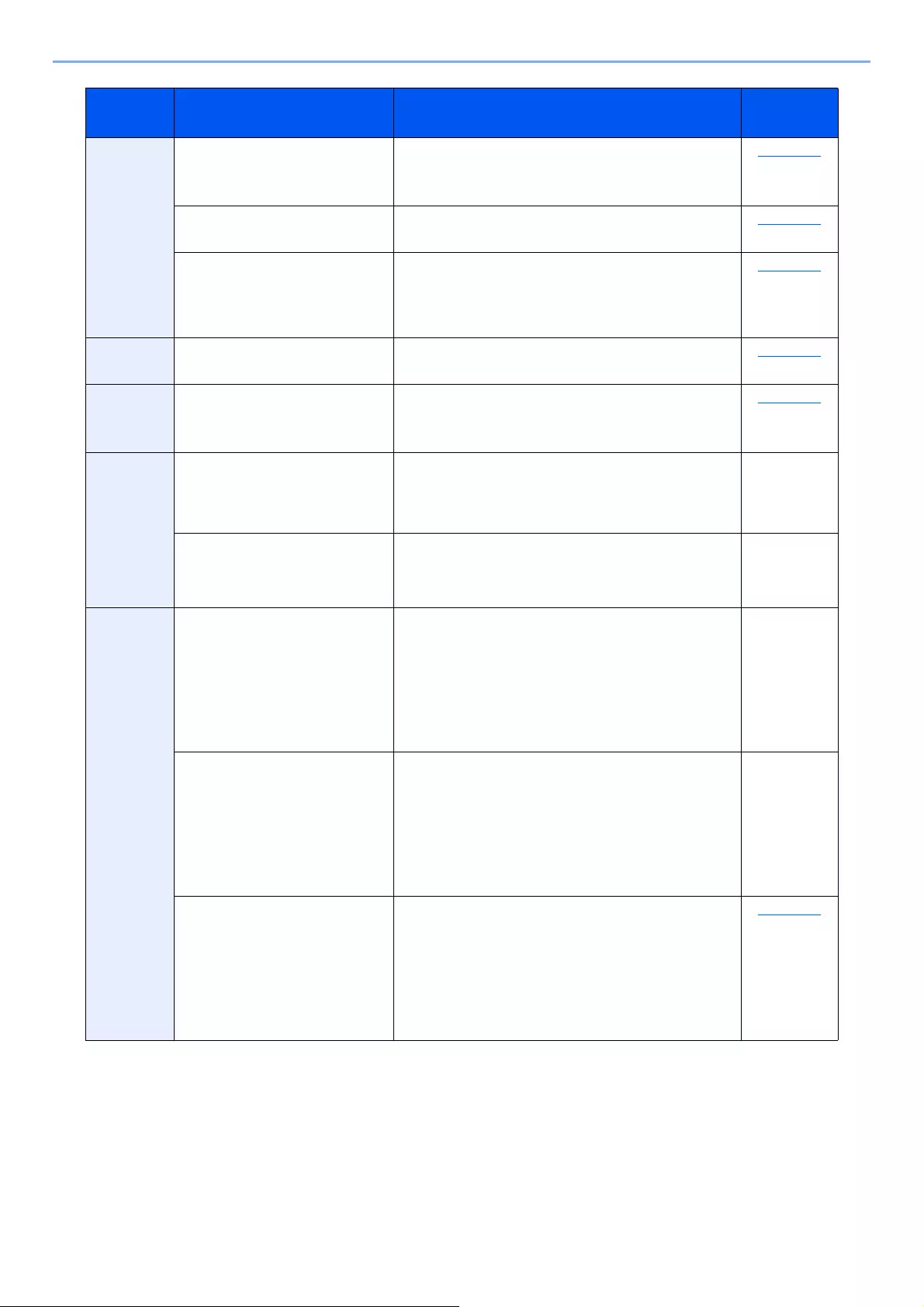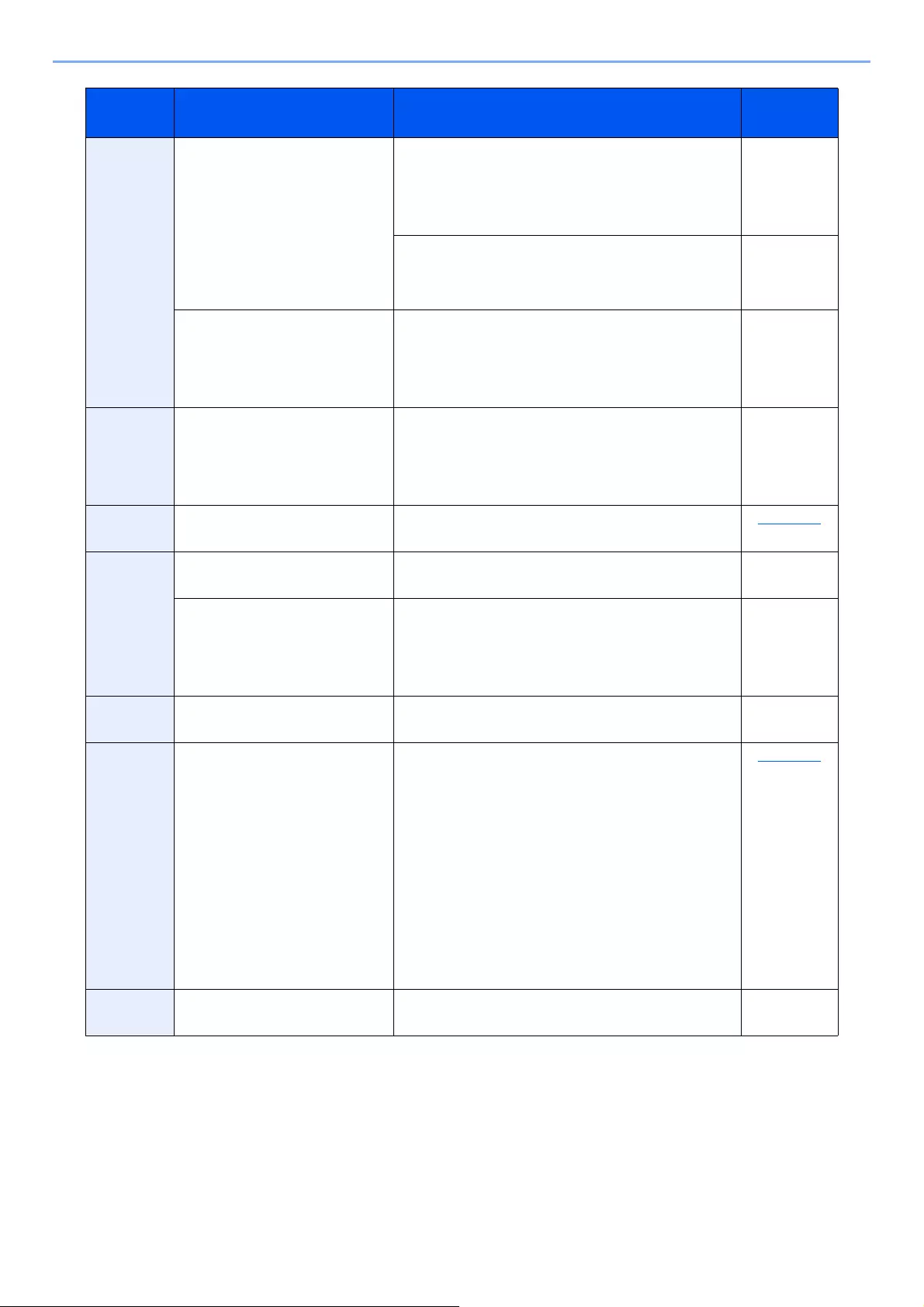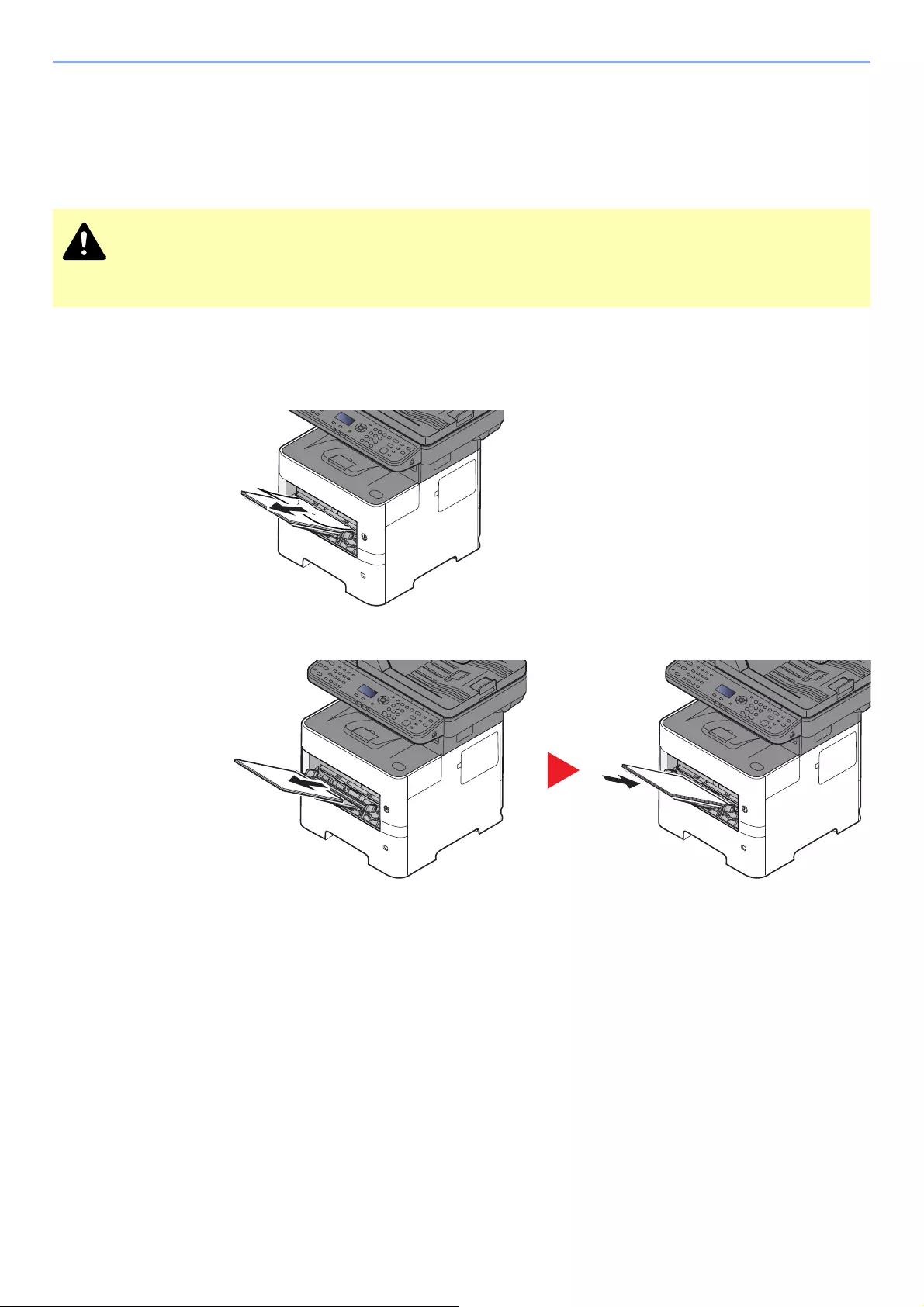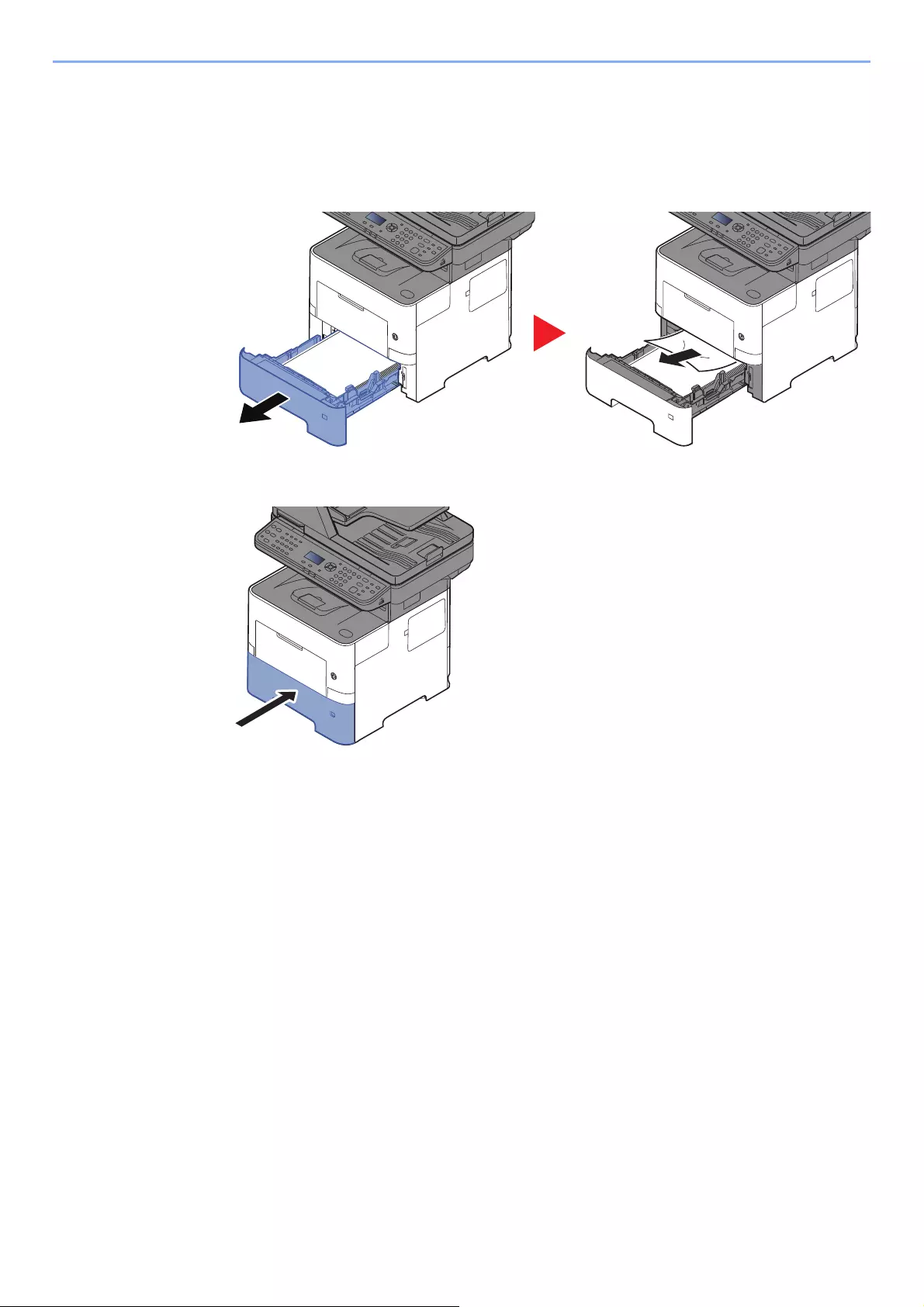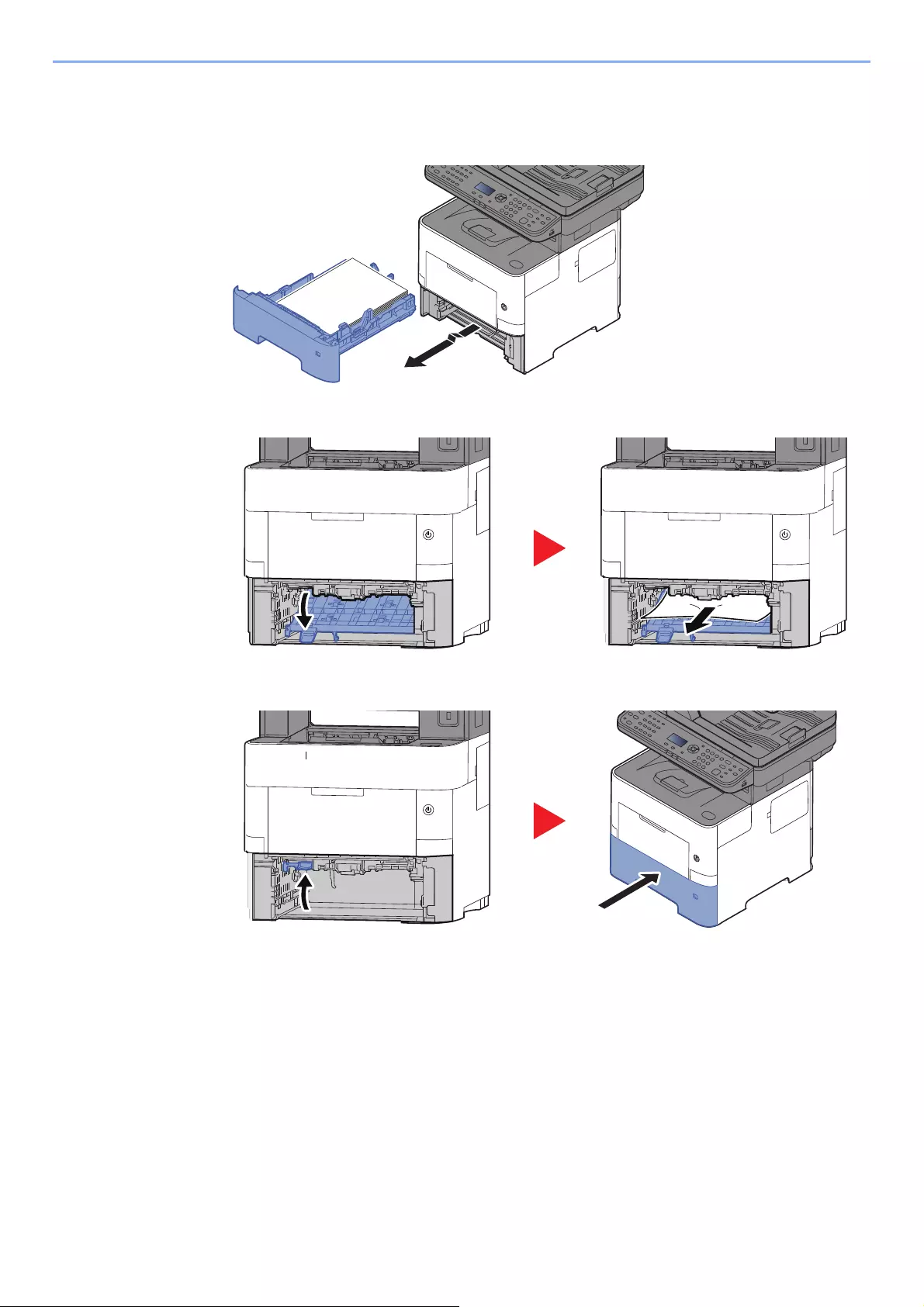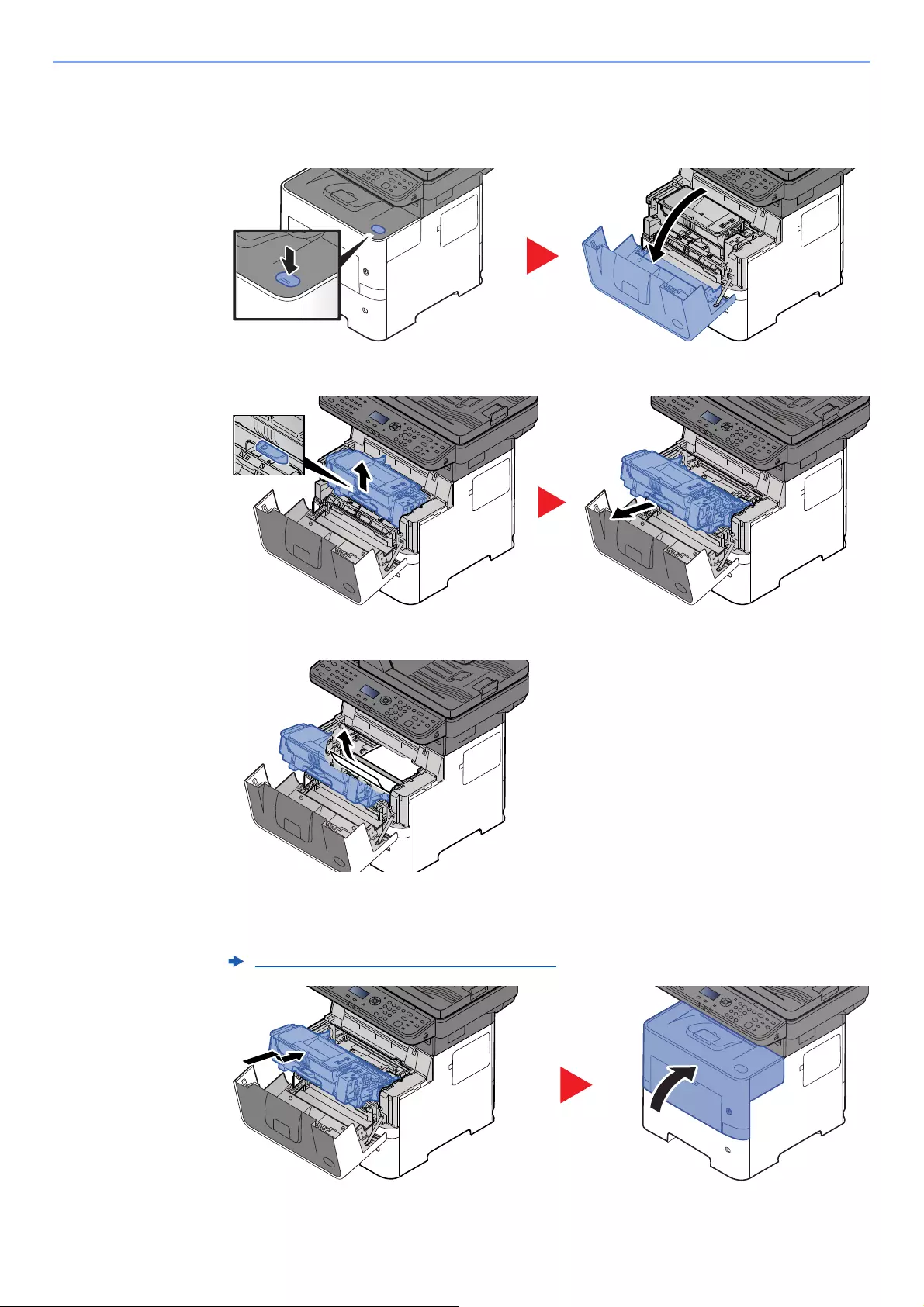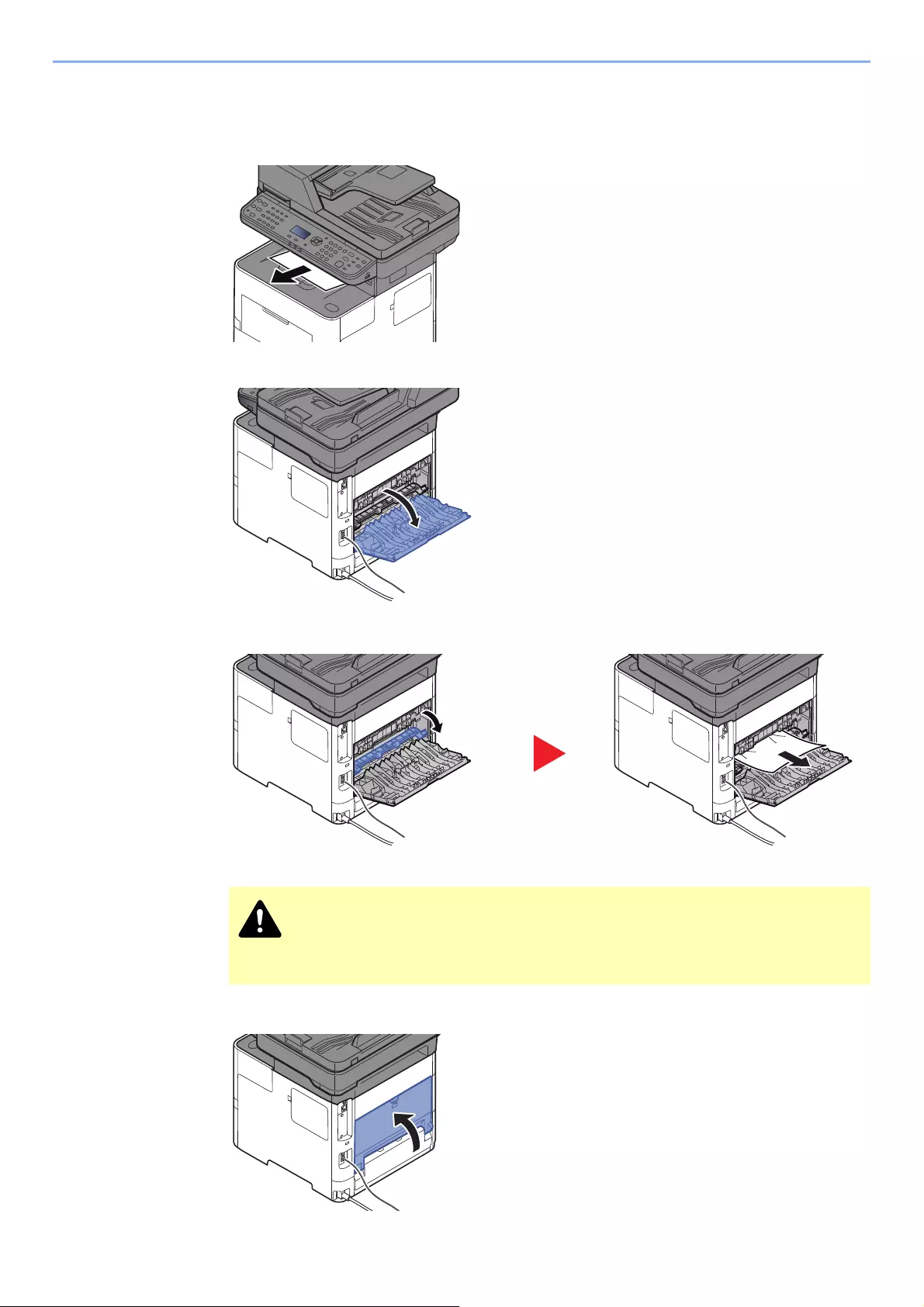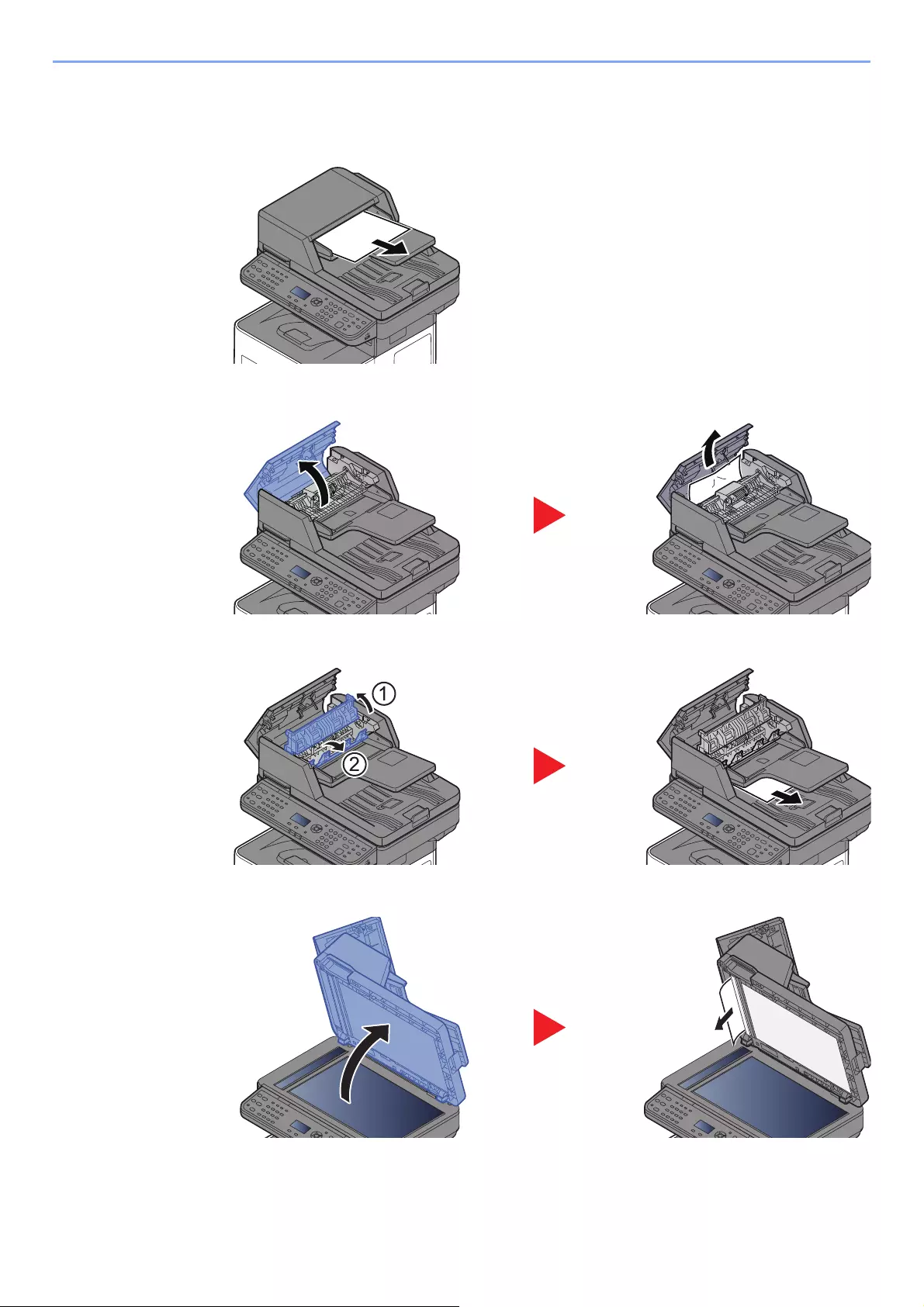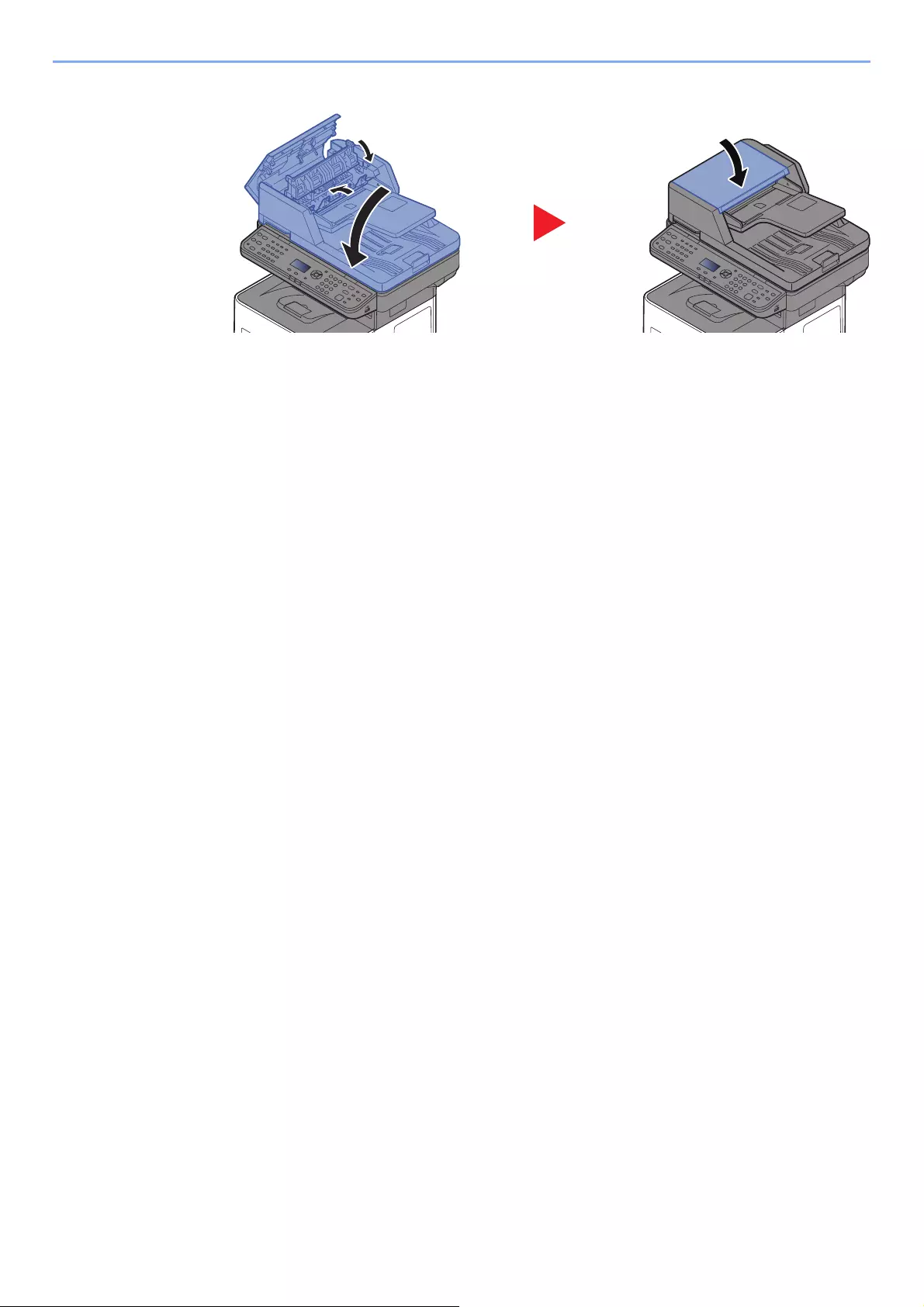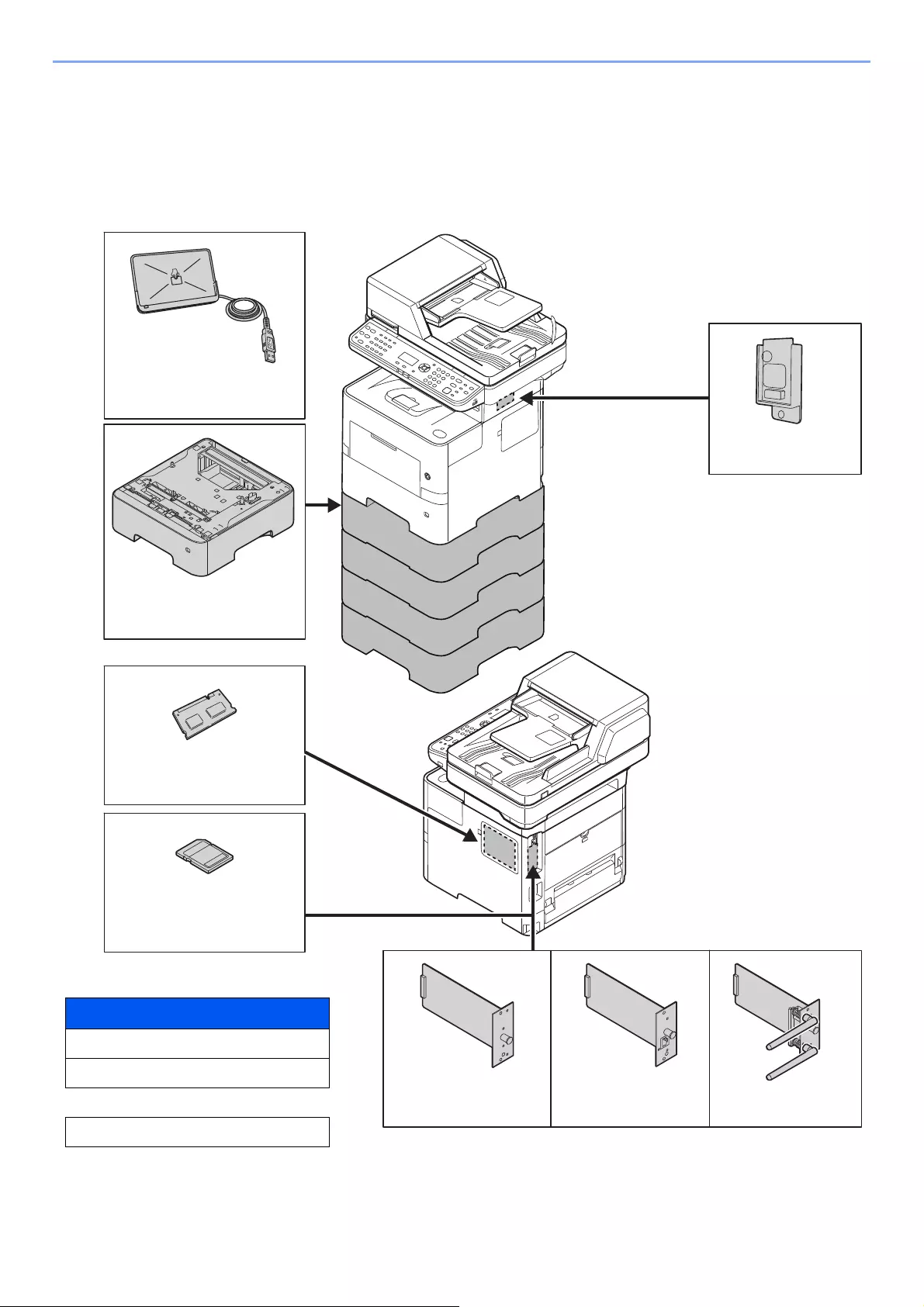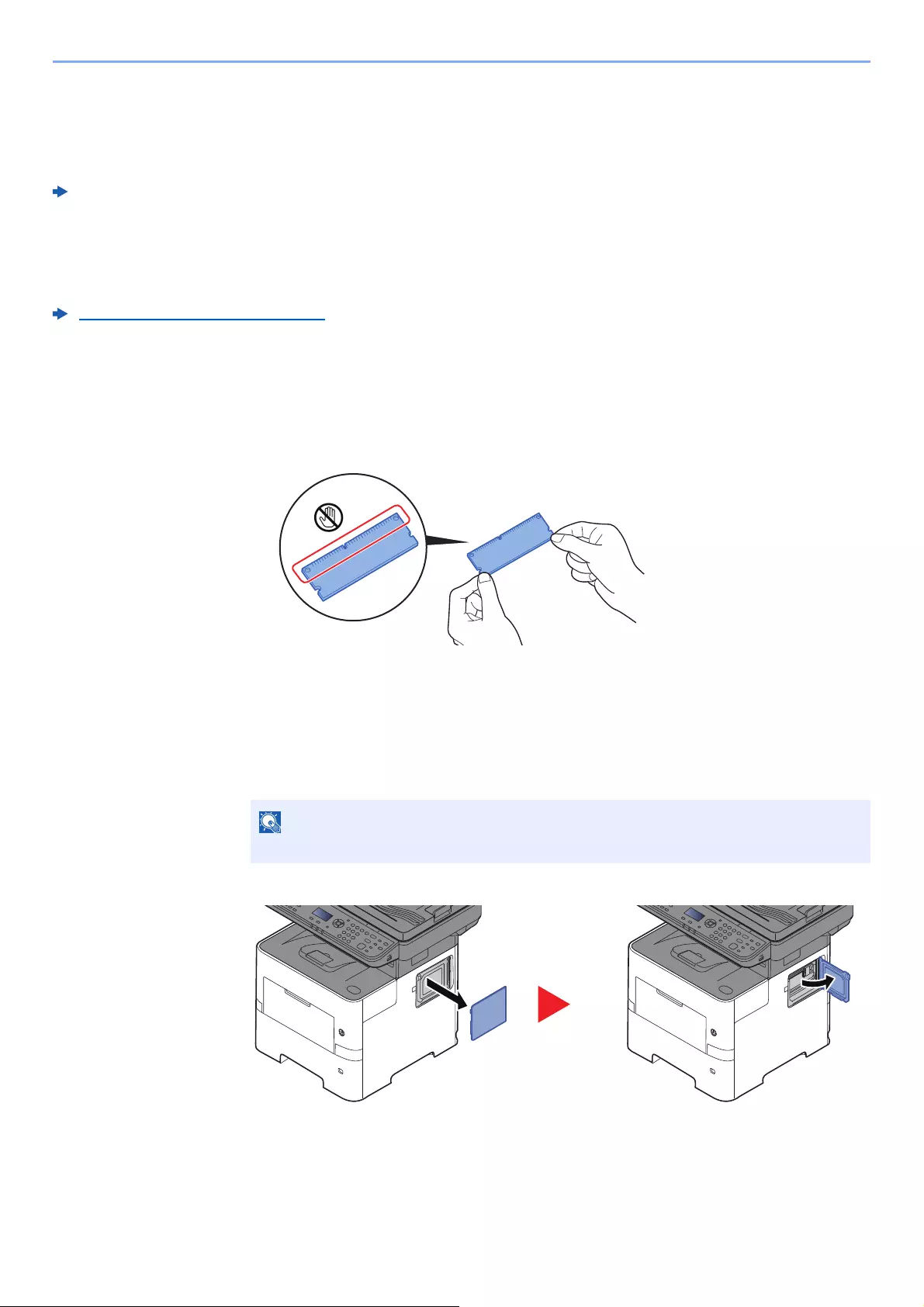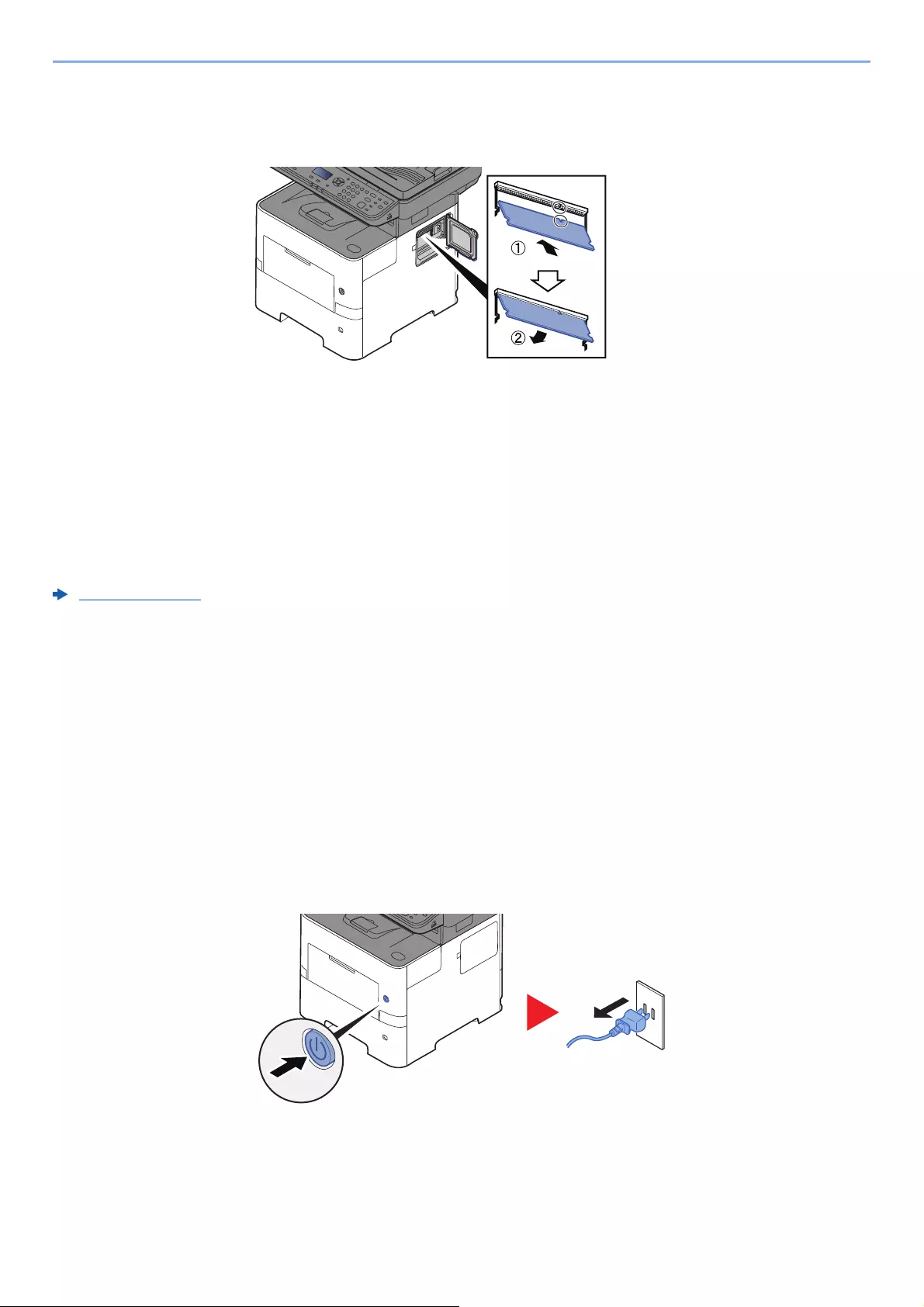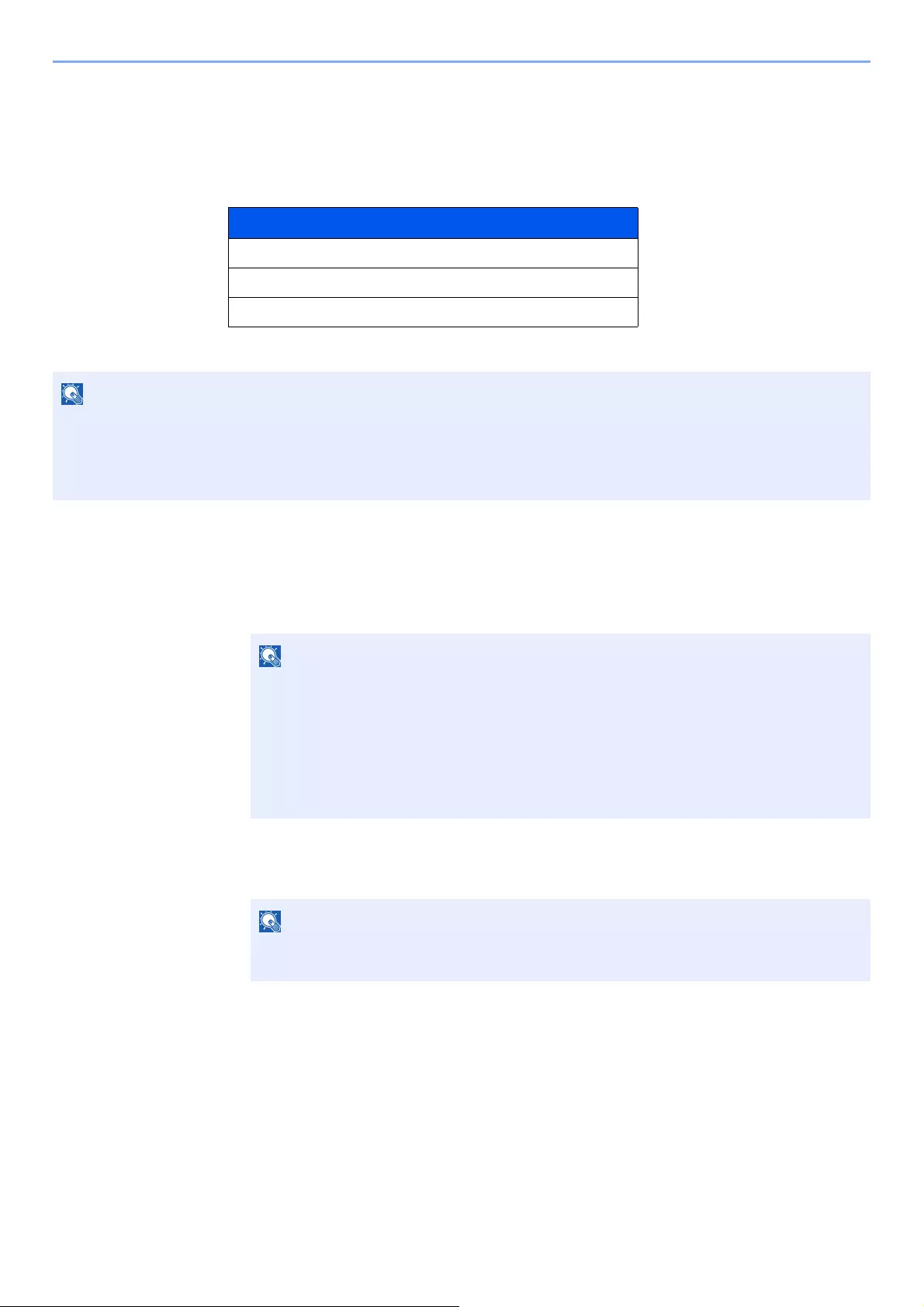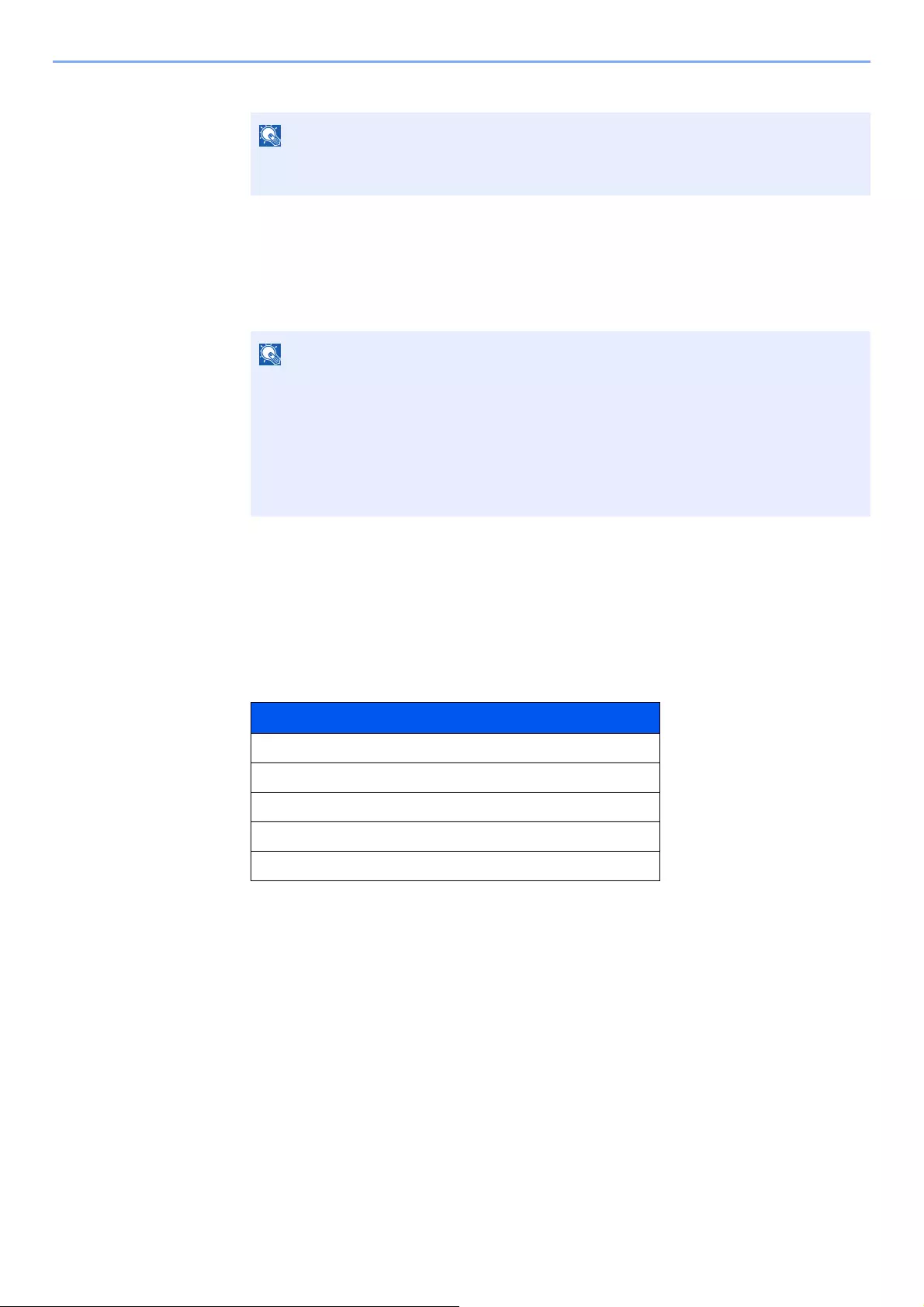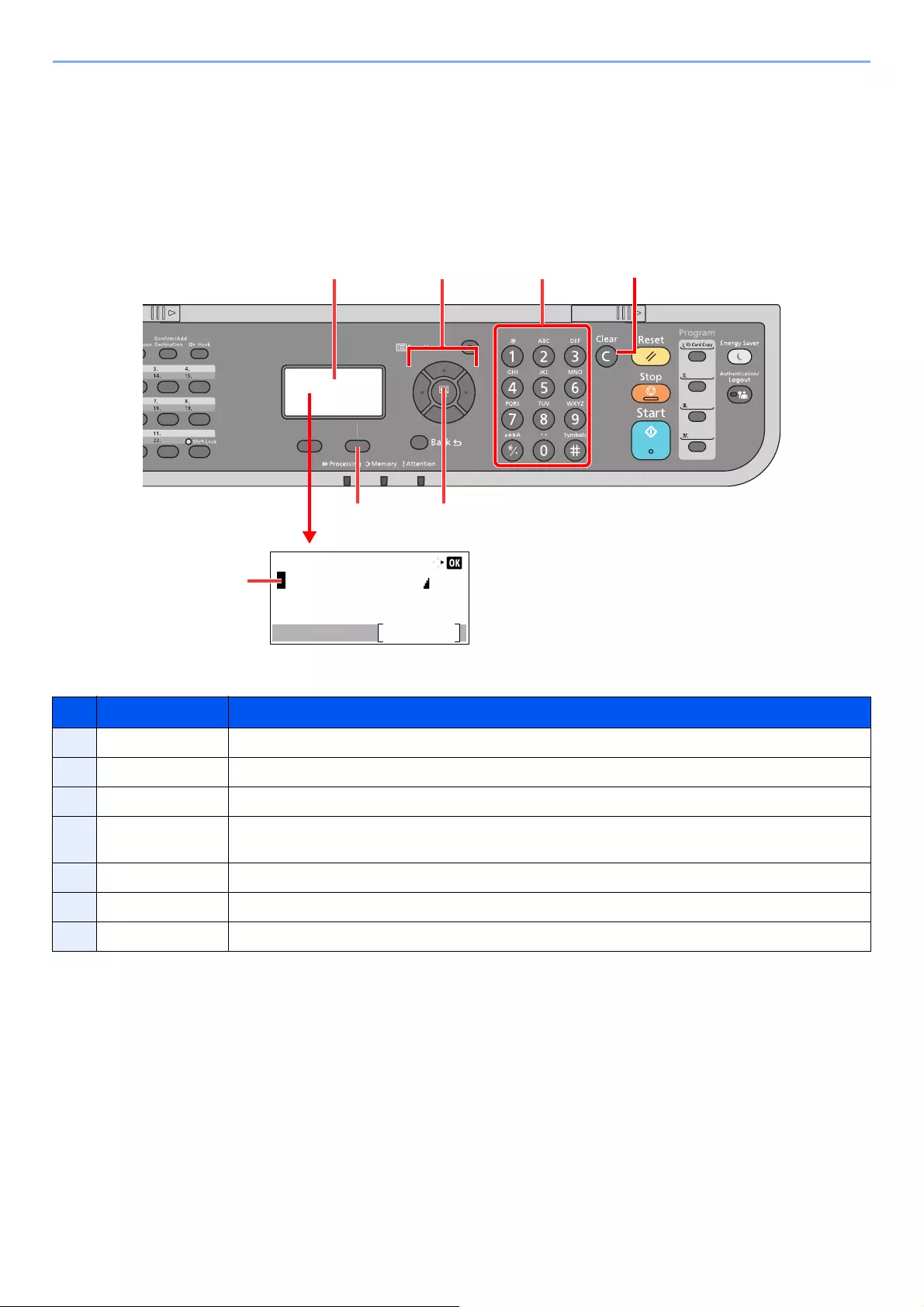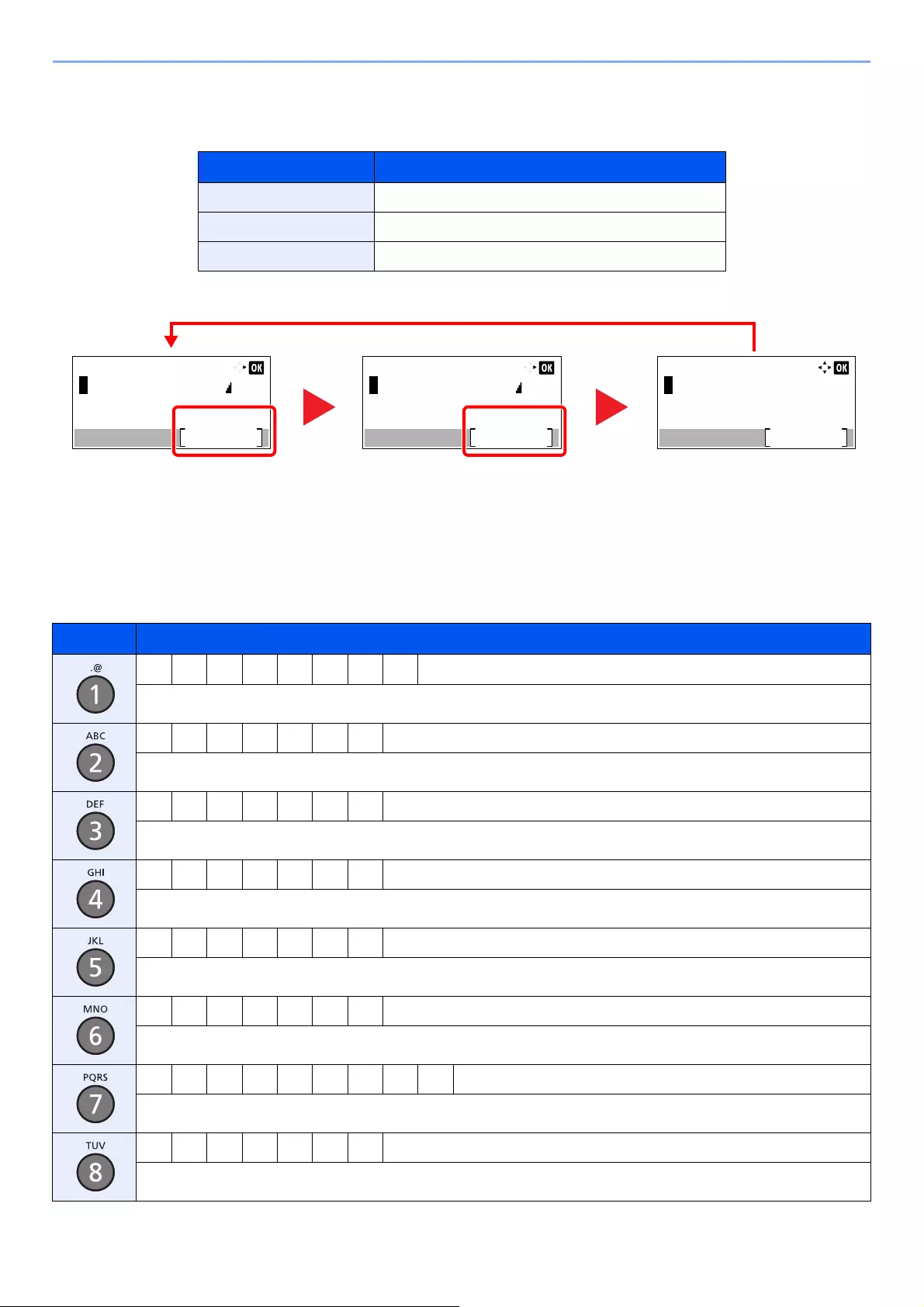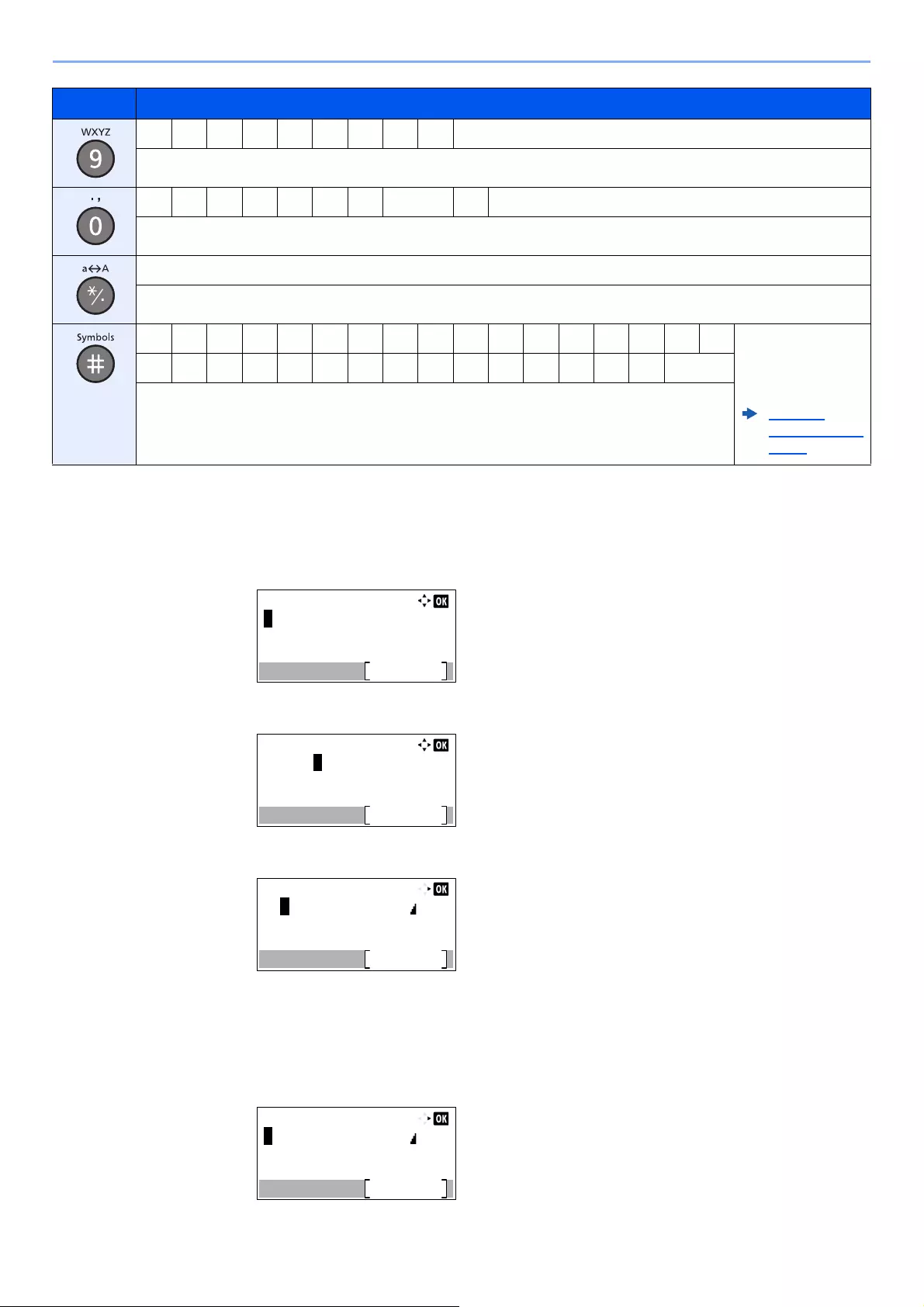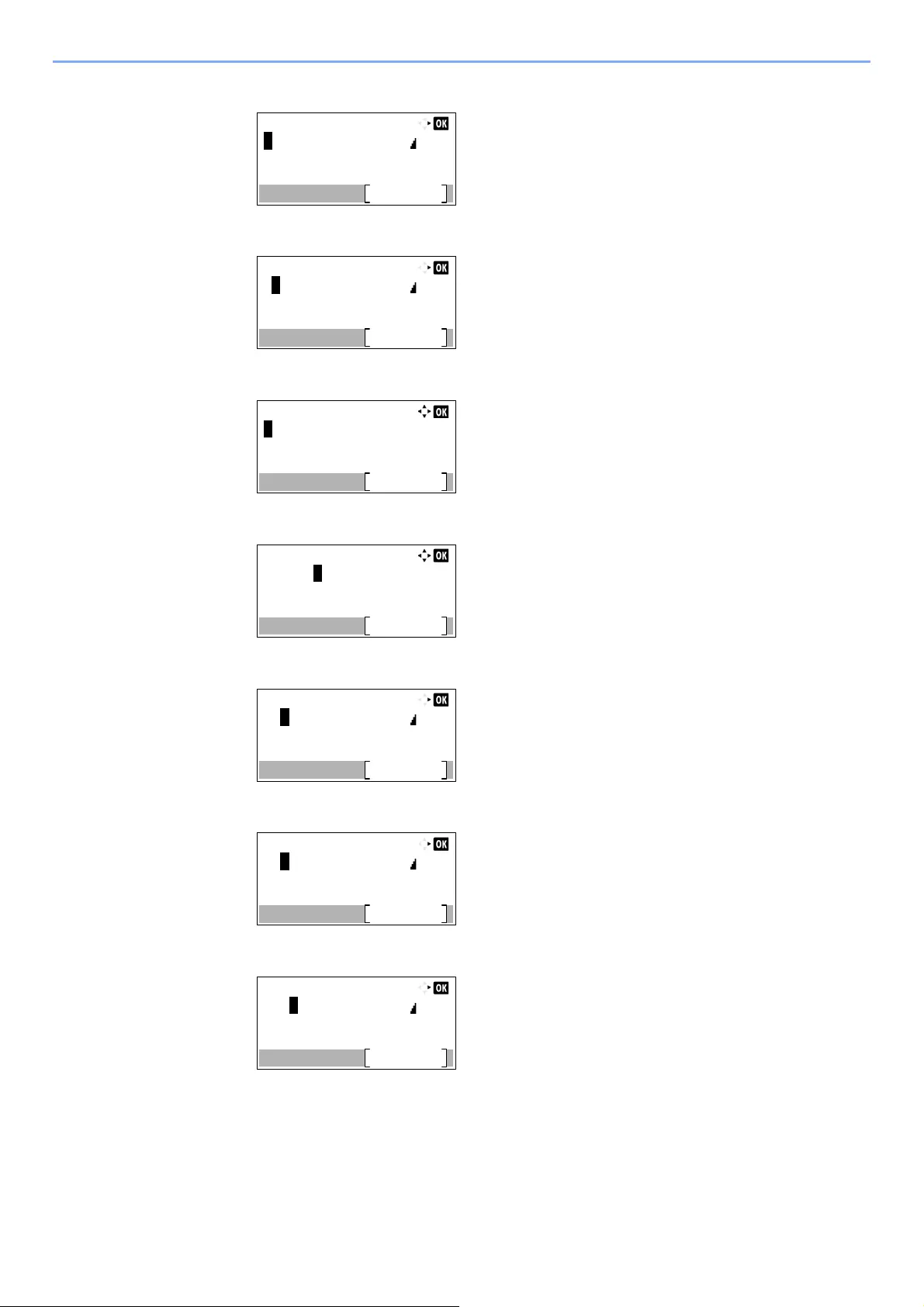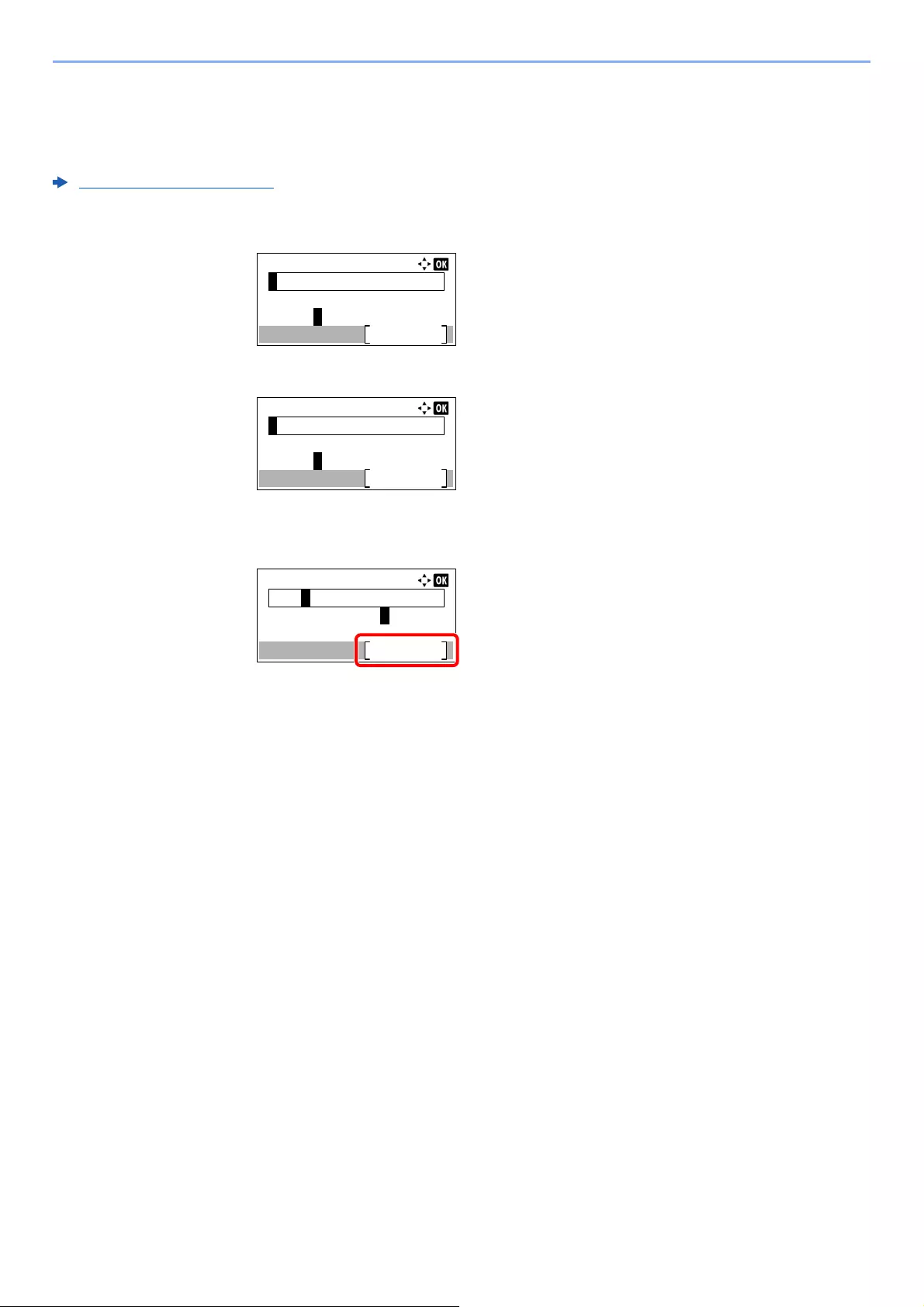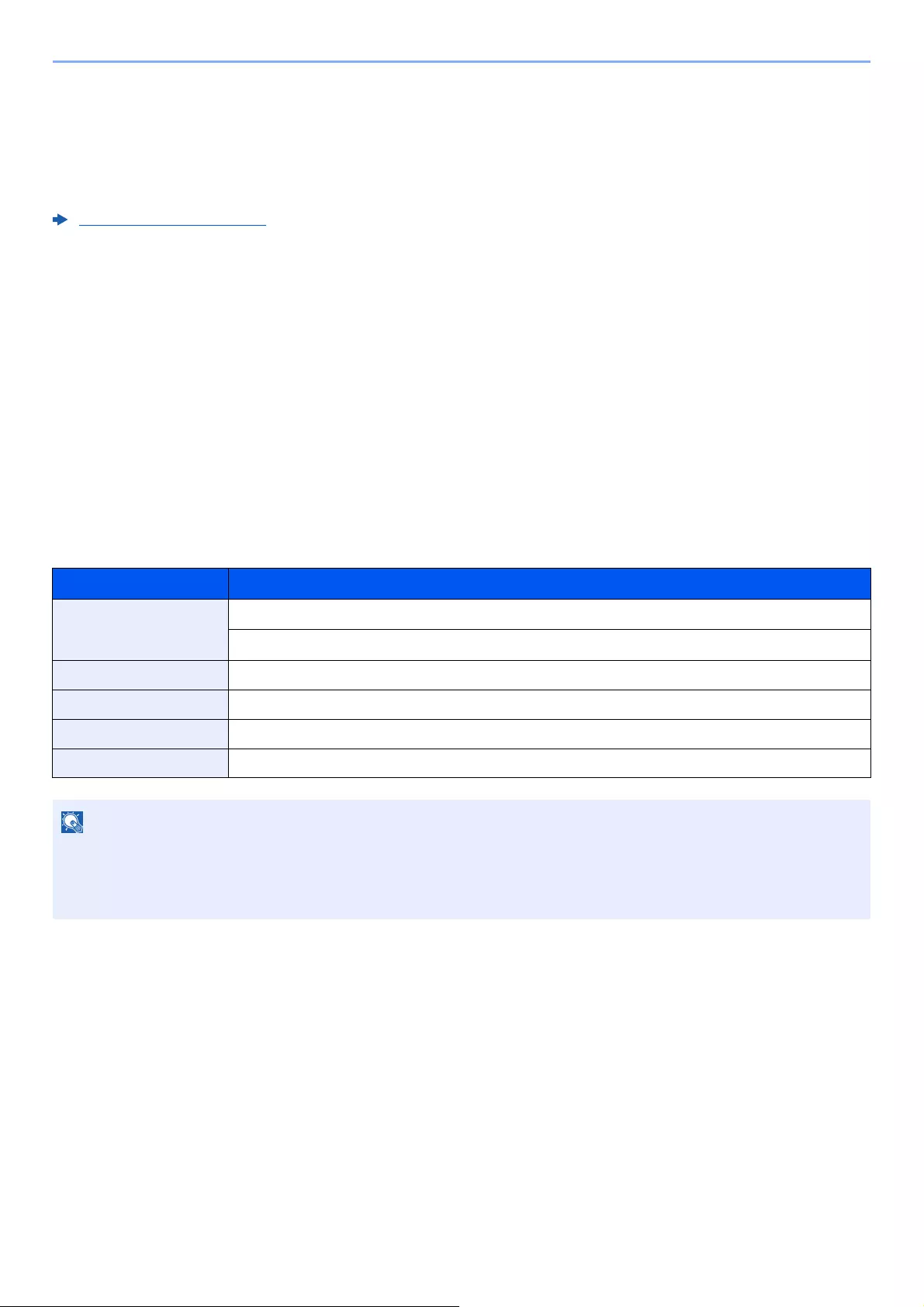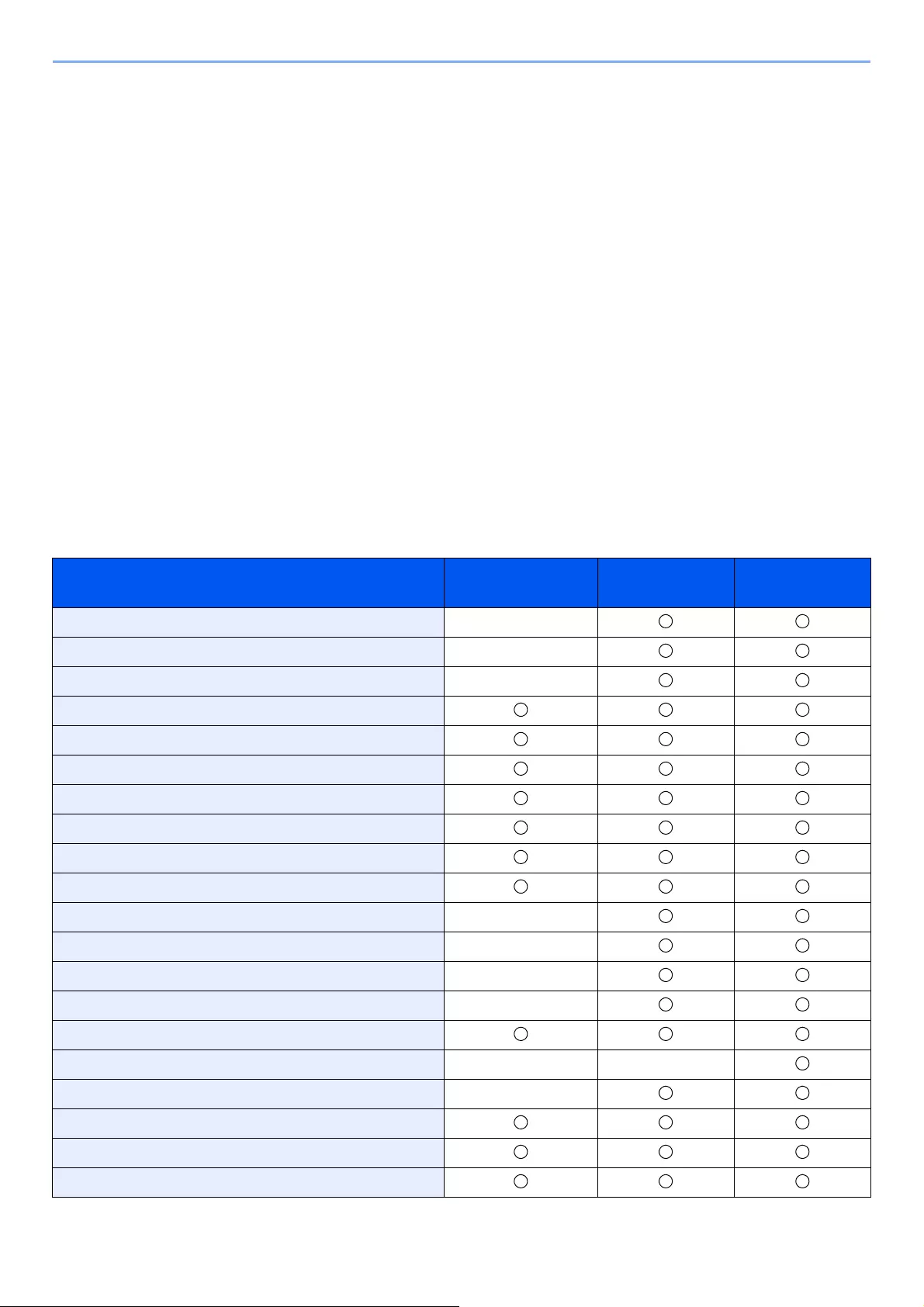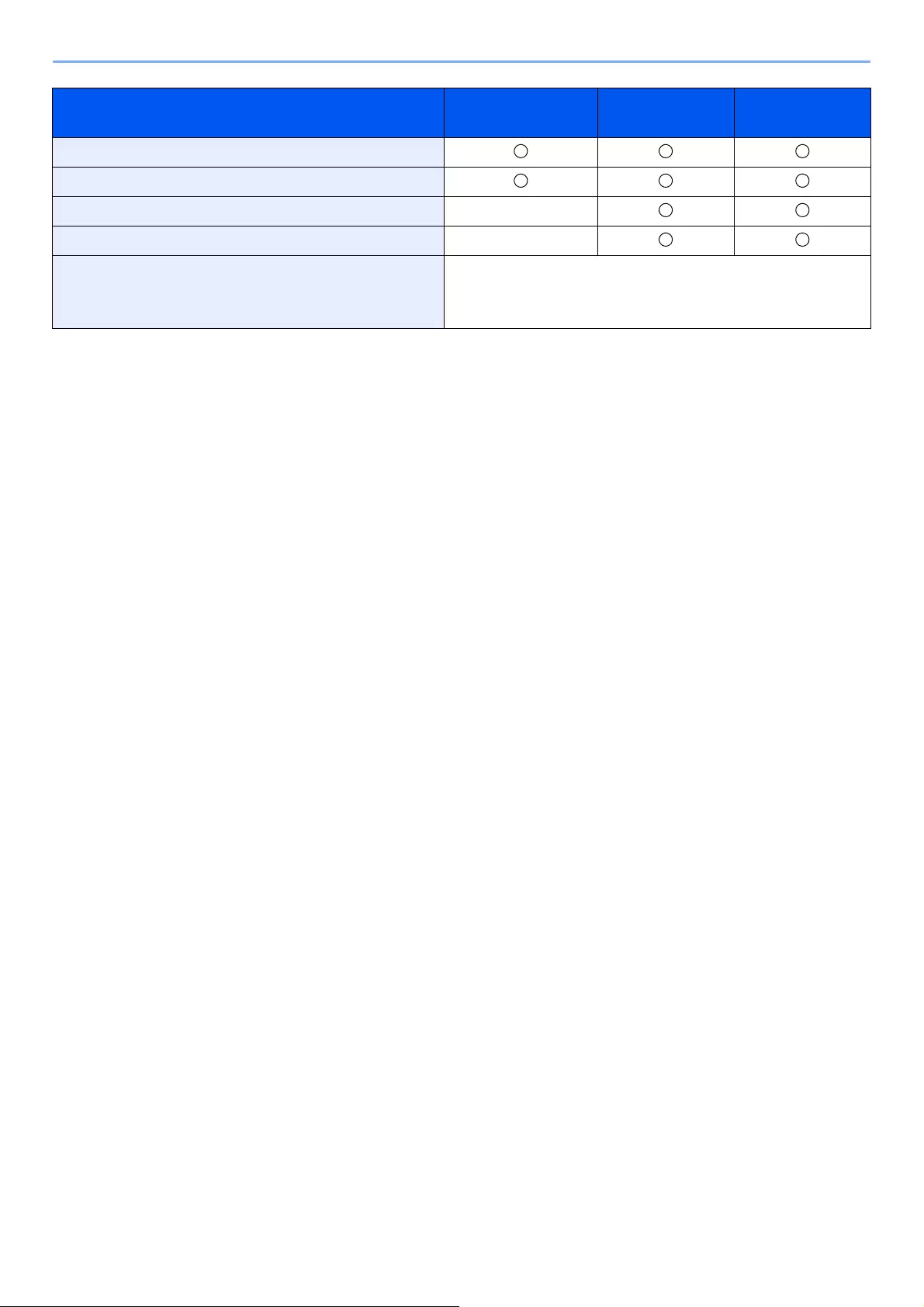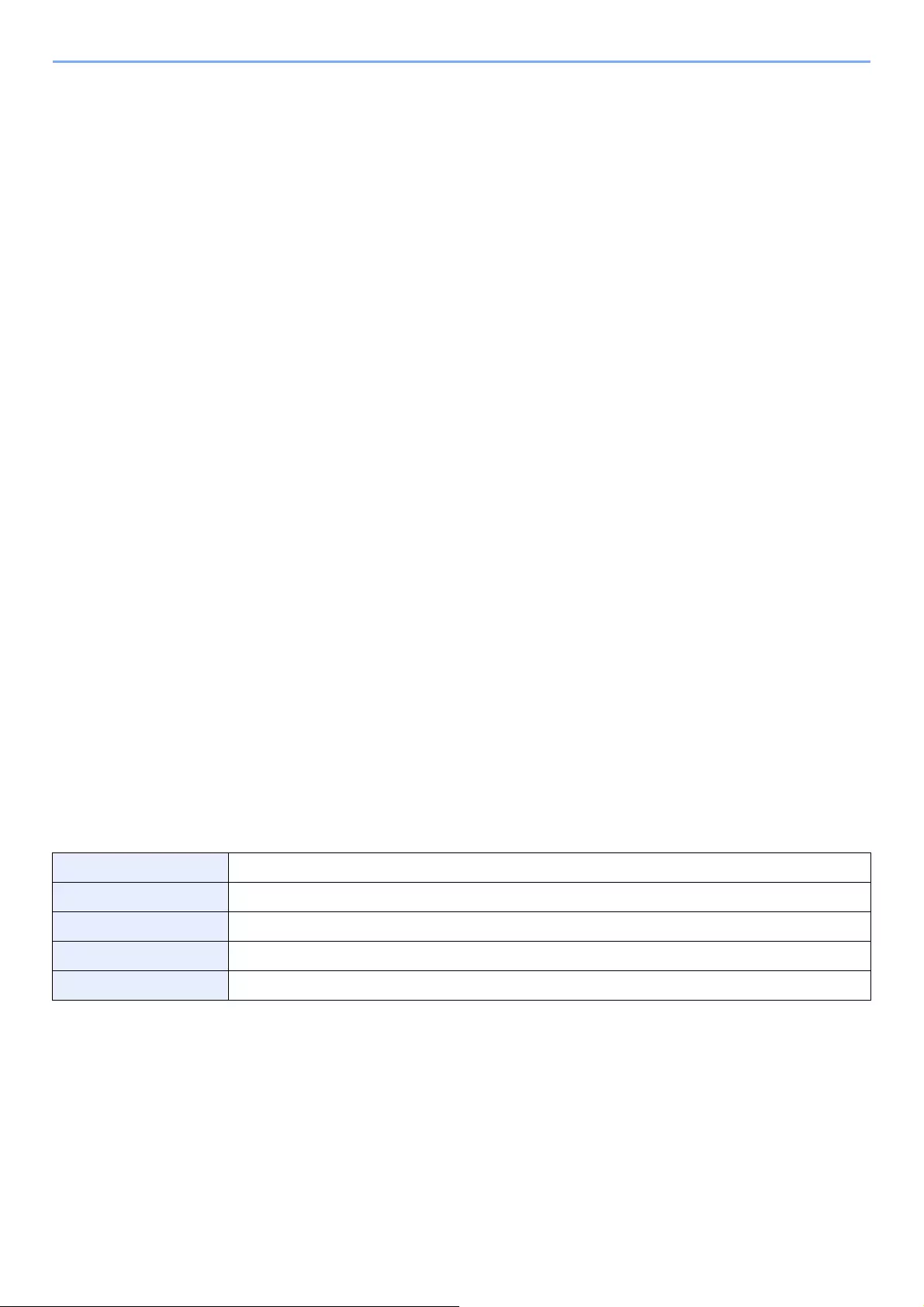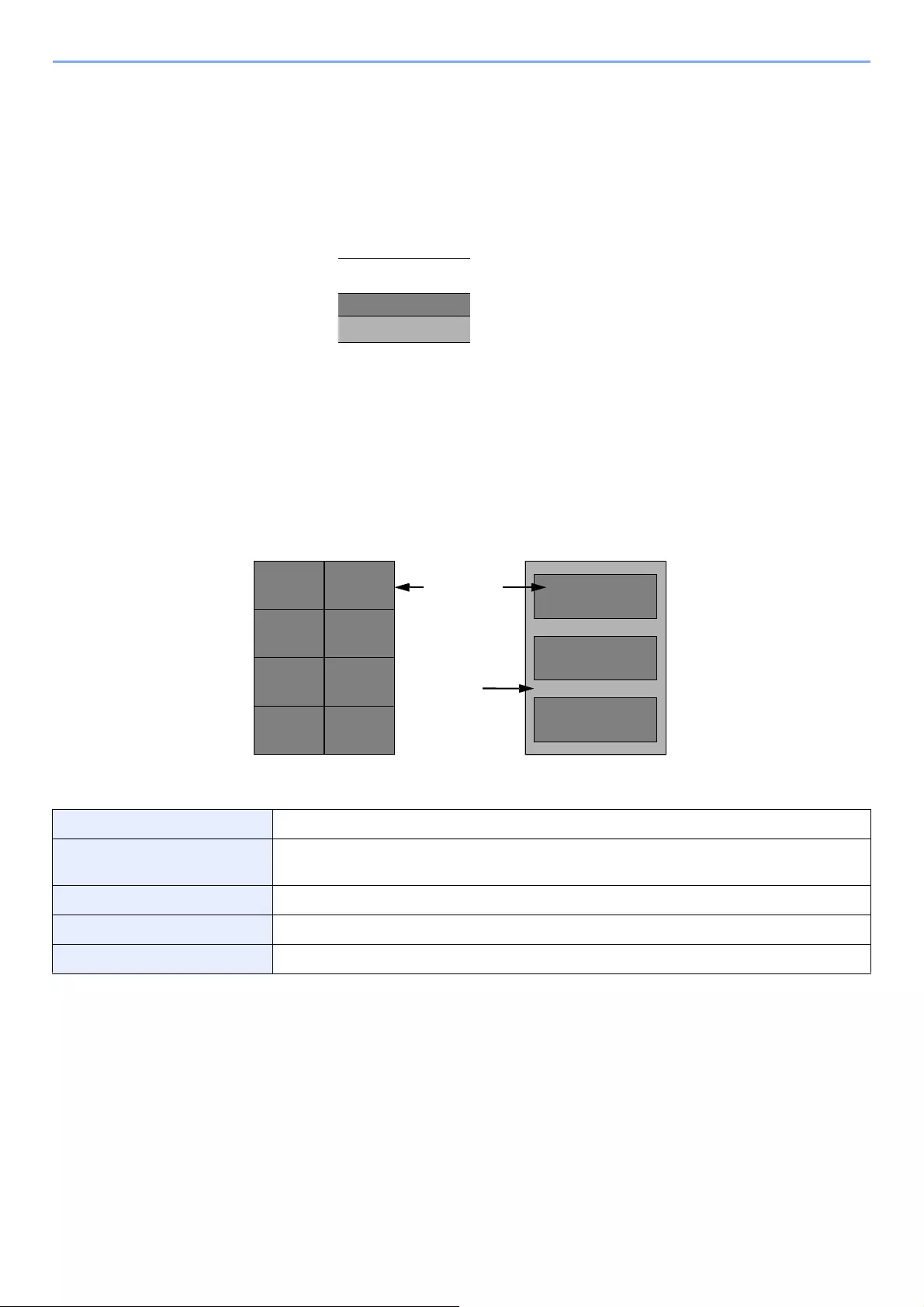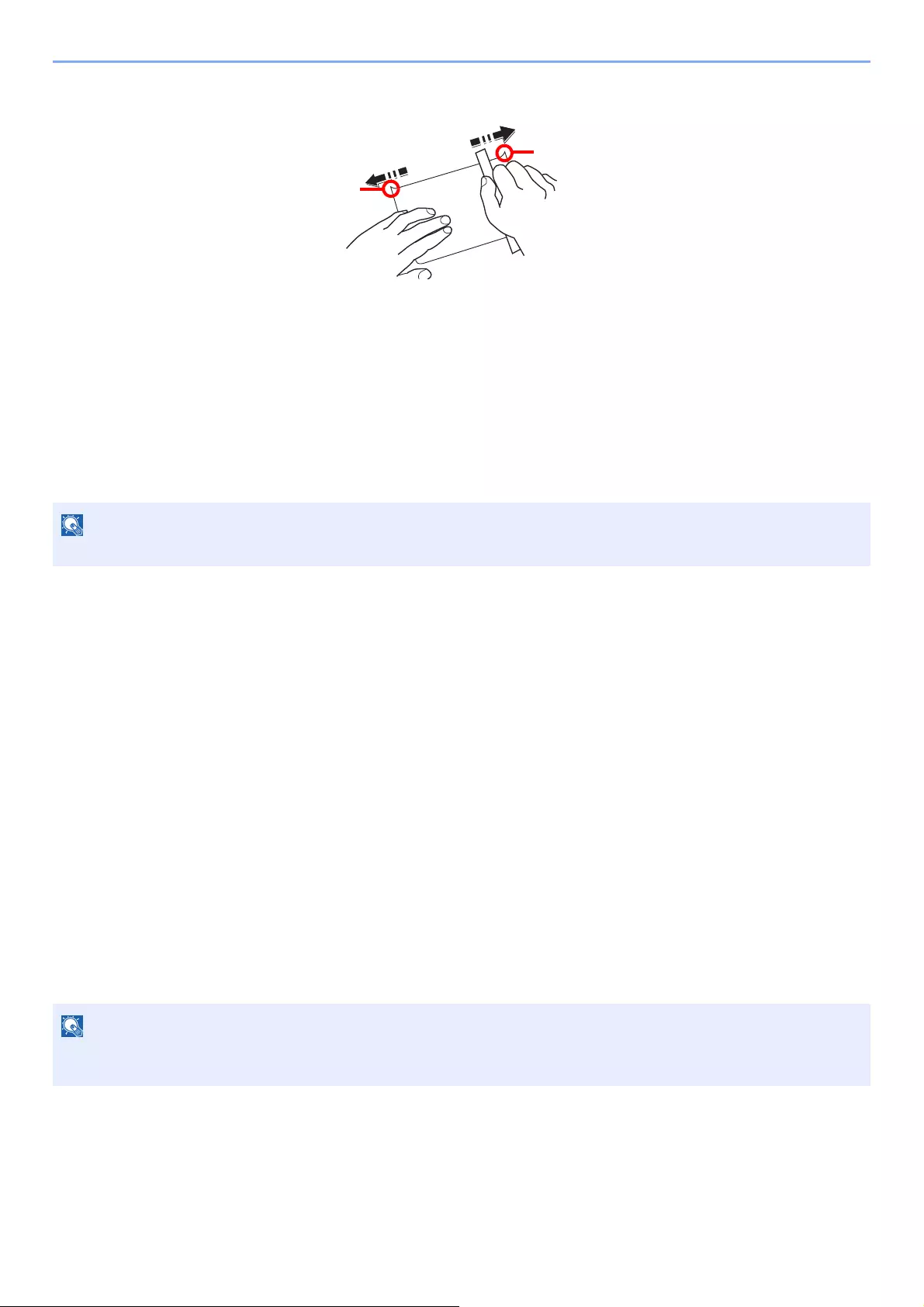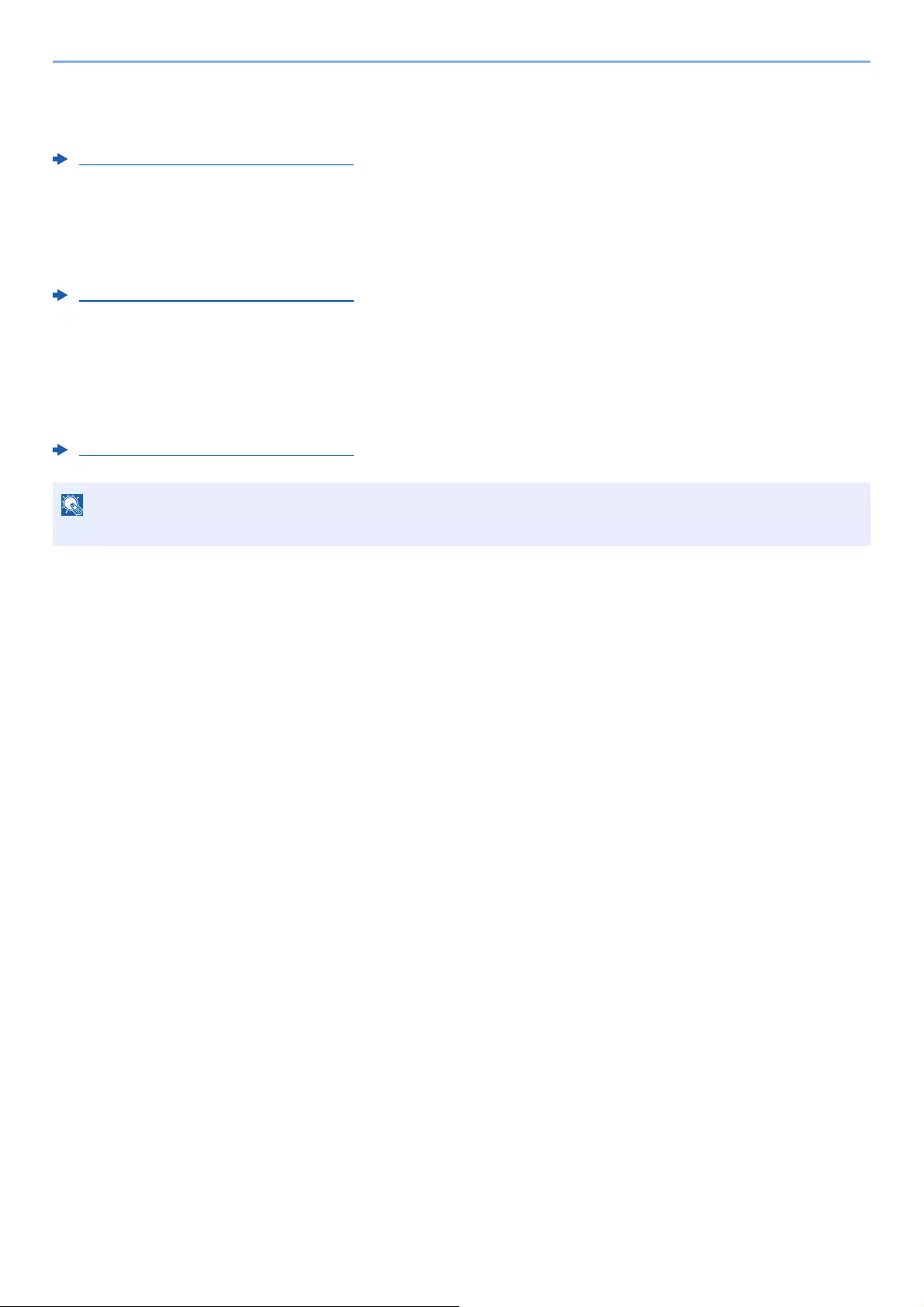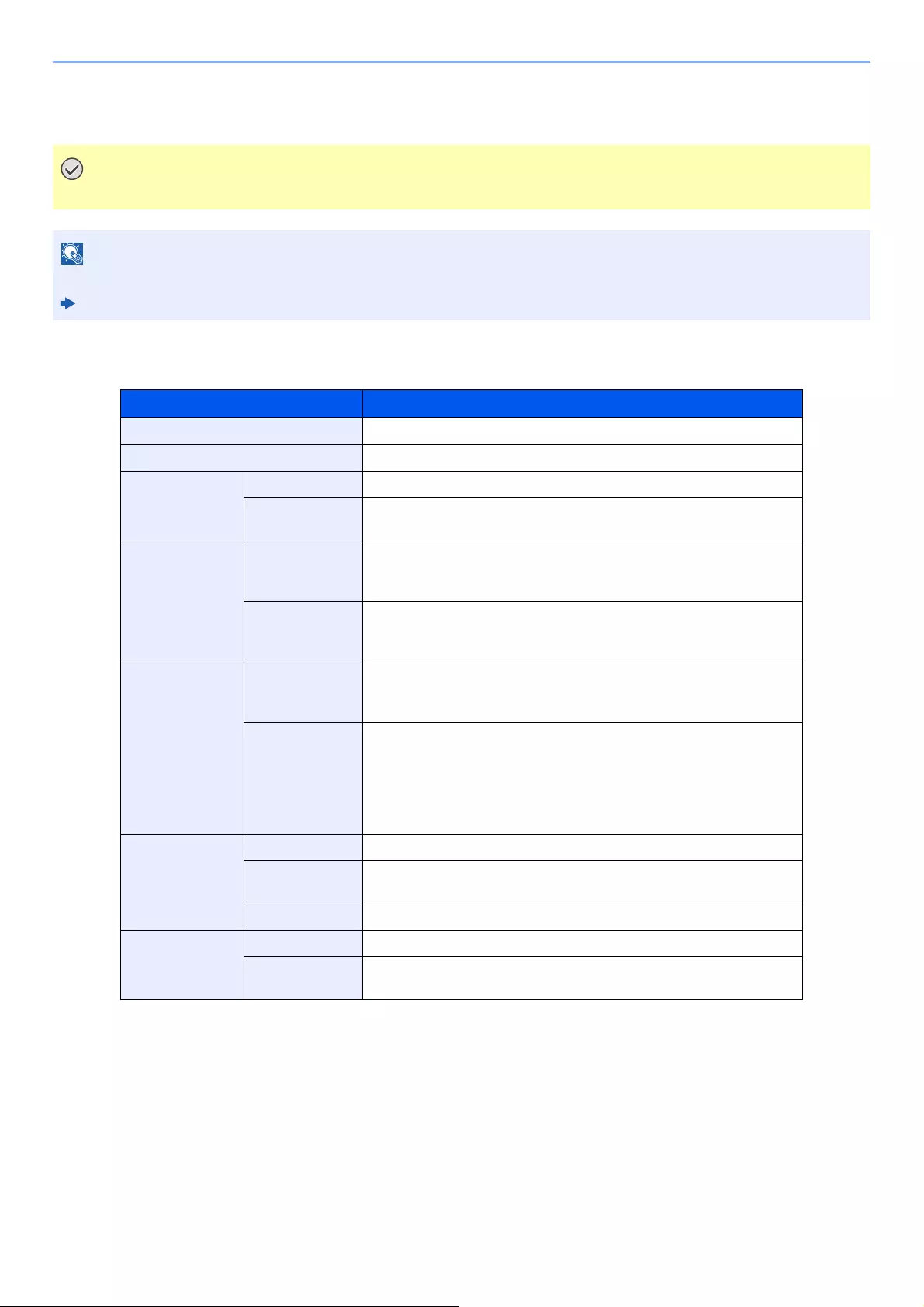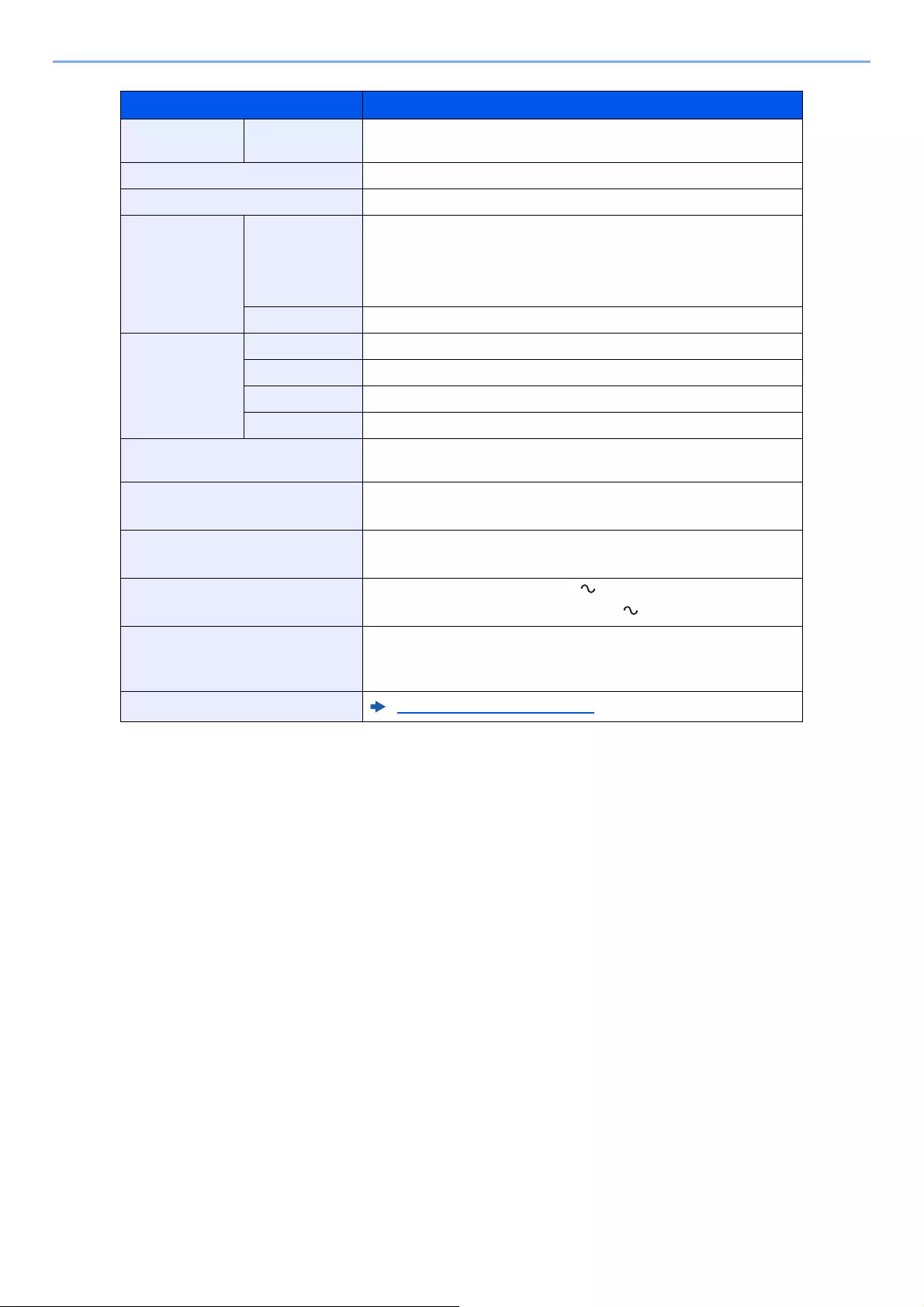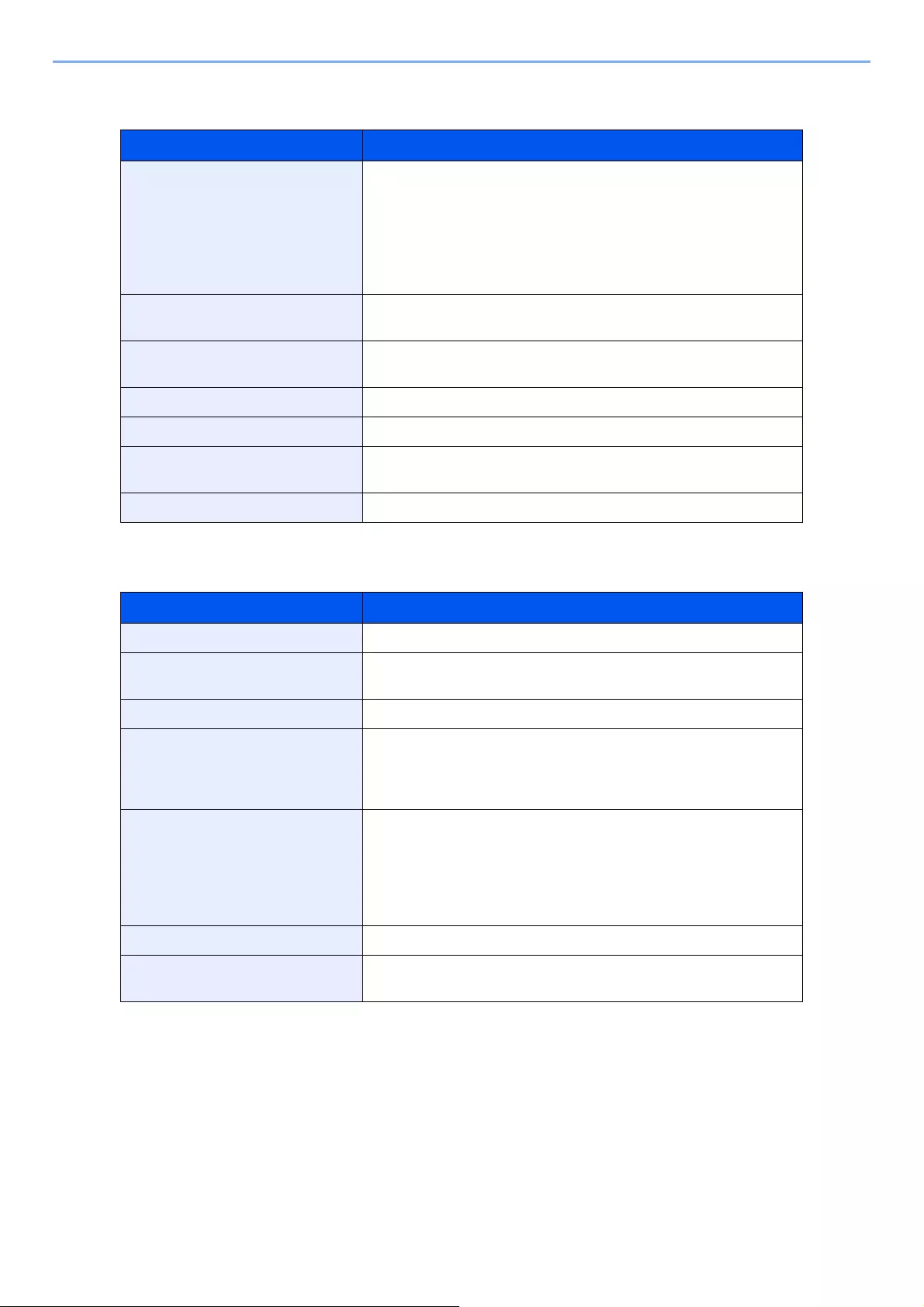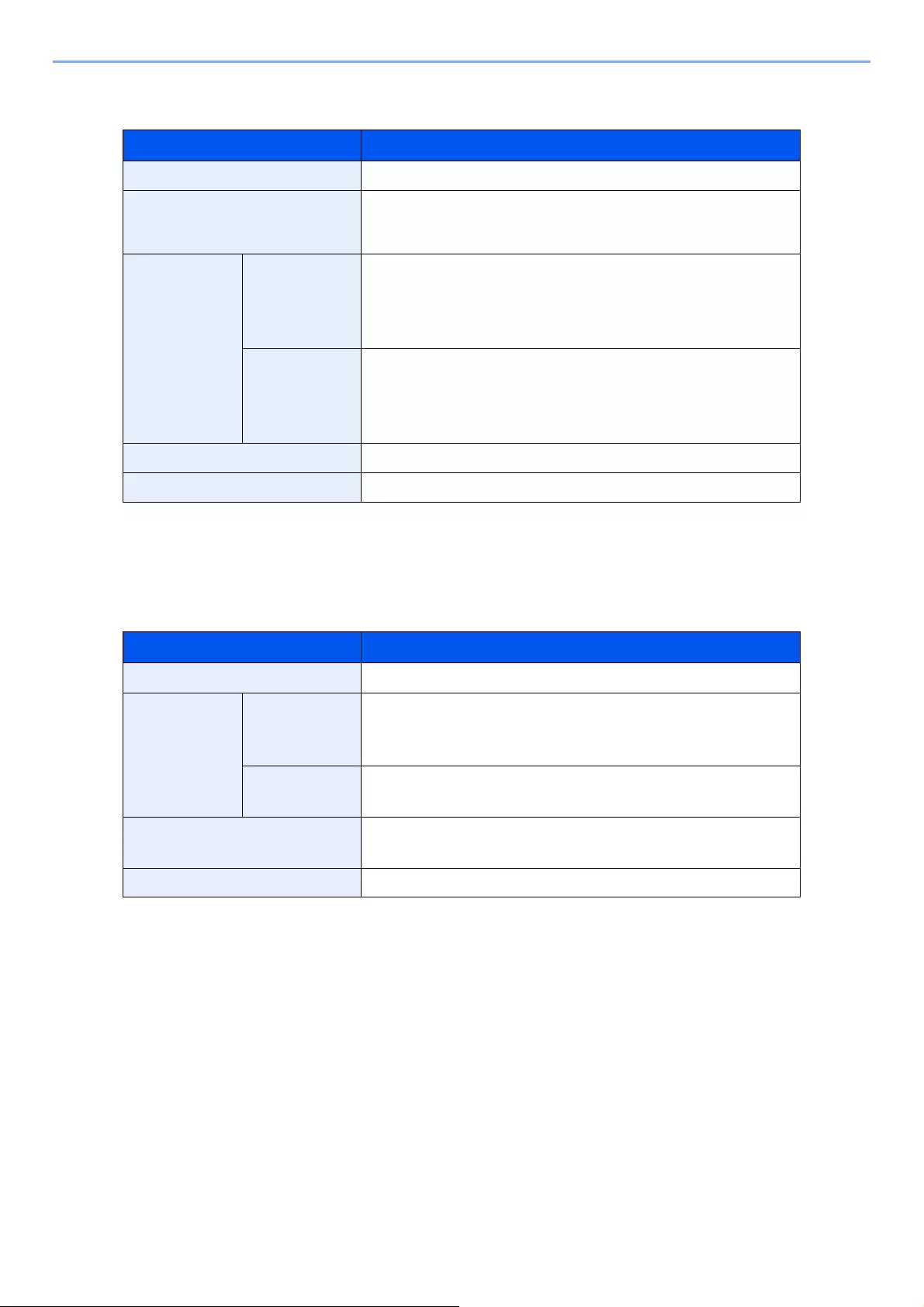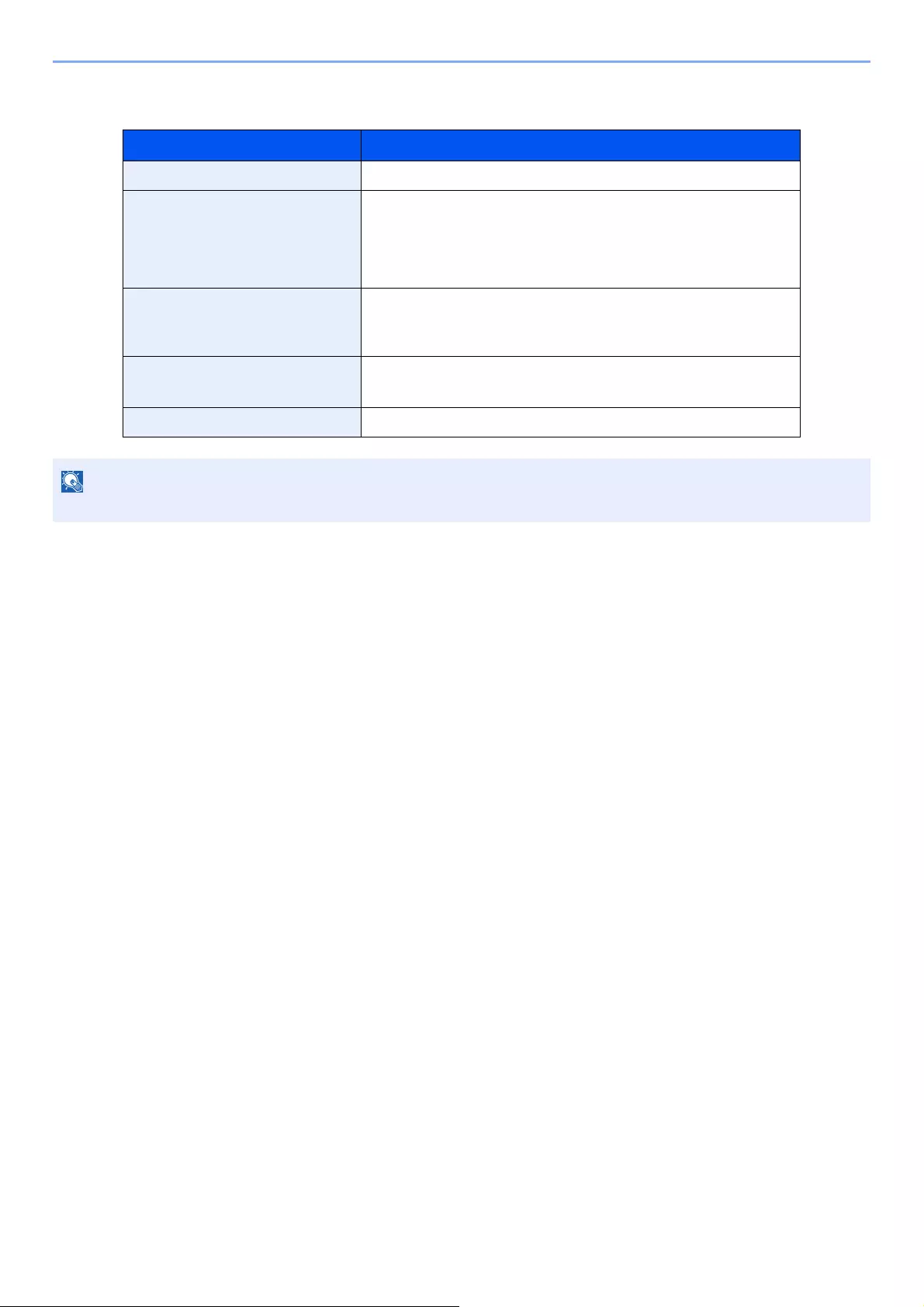- Manuals
- Brands
- Kyocera Manuals
- Printer
- ECOSYS M3145dn
- Manual
-
Contents
-
Table of Contents
-
Troubleshooting
-
Bookmarks
Quick Links
COPY
SCAN
ІНСТРУКЦІЯ
ECOSYS M3145dn
COPY
SCAN
FAX
ECOSYS M3645dn
Related Manuals for Kyocera ECOSYS M3145dn
Summary of Contents for Kyocera ECOSYS M3145dn
-
Page 1
PRINT COPY SCAN ІНСТРУКЦІЯ ECOSYS M3145dn PRINT COPY SCAN ECOSYS M3645dn… -
Page 2
Preface OPERATION GUIDE FIRST STEPS QUICK GUIDE This guide (A) only explains the basic operations of the machine. This guide (A) only explains the basic operations of the machine. For other information, see Operation Guide (B) on the Product Library disc. For other information, see Operation Guide (B) on the Product Library disc. -
Page 3
Setting up the Toner Container… -
Page 4: Connect Cable
Install Waste toner box Connect Cable Network (10Base-T/100Base-TX/1000Base-T) (USB 2.0)
-
Page 5: Loading Paper
Loading Paper (For Legal/Folio/OficioII)
-
Page 6
Connect Power Cord Replace Operation Panel Sheet… -
Page 7
Power On… -
Page 8
Altitude Adjustment (1000m or higher Only) Altitude Adjustment (1000m or higher Only) ECOSYS M3645dn ECOSYS M3645dn ECOSYS M3145dn ECOSYS M3145dn Sys. Menu/Count.: Sys. Menu/Count.: Menú Sist./cont. Menú Sist./cont. Menu syst/Comptr Menu syst/Comptr Application Application Aplicación Aplicación Application Application Edit Destination… -
Page 9
Print Status Page Print Status Page ECOSYS M3645dn ECOSYS M3645dn ECOSYS M3145dn ECOSYS M3145dn С Meniu sist/cont: ���.����/�����.: Sys. Menu/Count.: Sys. Menu/Count.: M sist./Recompte: M sist./Recompte: Sys.menu/Po�it.: Sys.menu/Po�it.: Raport ����� З Report Report Informe Informe Zpráva Zpráva Contor ������� Л… -
Page 10
Install Drivers and Utilities If Found new Hardware window appears, click Cancel. If Found new Hardware window appears, click Cancel. Если появляется окно Найдено новое аппаратное обеспечение, щелкните Отменить. Si es mostra la finestra «Found new Hardware» (S’ha detectat maquinari nou), feu clic a Cancel·la. Якщо… -
Page 11: Cancel Printing
Cancel Printing Cancel Printing ENRO С а . а Job Cancel List: Job Cancel List: Ll. cancel·lats: Ll. cancel·lats: Zruš.sezn.úloh: Zruš.sezn.úloh: Lst. anul. lucr.: ������ ���. ���.: Cancel Print Job Cancel Print Job Cancel Print Job Cancel Print Job Zruš.úlohu tisku Zruš.úlohu tisku С…
-
Page 12
Copy ECOSYS M3645dn ECOSYS M3145dn Quiet Paper Original size Paper size… -
Page 13
IP-Adresse des Geräts oder den IP-Adresse des Geräts oder den Στο πλαίσιο Διεύθυνση ή Τοποθεσία, Στο πλαίσιο Διεύθυνση ή Τοποθεσία, ECOSYS M3645dn ECOSYS M3145dn placeringslinjen. placeringslinjen. Hostnamen wie eine Internetadresse (URL) Hostnamen wie eine Internetadresse (URL) εισάγετε τη διεύθυνση ΙΡ του μηχανήματος… -
Page 14
Tekst Texto Vanliga inst. Ortak Ayarlar Text Metin Send ECOSYS M3645dn ECOSYS M3145dn Trimitere la: ��������: П а Send to: Envia a: Odeslat (komu): М а) Mie(E-mail) ��� (��. �����) Me(E-mail) A mi (e-mail) Pošl. mi(E-mail) E-mail… -
Page 15
FAX (ECOSYS M3645dn only) FAX (ECOSYS M3645dn only) FAX szám megad.: N. voce FAX: Faxnr. invoeren: 0123456789 0123456789 0123456789 FAX szám megad.: N. voce FAX: Faxnr. invoeren: 0123456789 0123456789 0123456789 Lánc Részl. Catena Dettagli Keten Details Lánc Részl. Catena Dettagli Keten Details PT-BR… -
Page 16: Private Printing
For å aktivere privat utskrift fra PC, sett element nr. 1 og 2 på skjermen. Aby aktywować drukowanie prywatne z poziomu komputera, skonfiguruj ustawienia oznaczone cyframi 1 i 2 na tym ekranie. ECOSYS M3145dn PT-BR Para ativar a impressão privada no PC, defina os itens N. 1 e 2 na tela.
-
Page 17: Troubleshooting
Não Document Box: Document Box: Caset� Document: Casella de docs.: Casella de docs.: ���� �����.: С Schr dokument�: Schr dokument�: а Sub Address Box Casella subadr. С Pole Podadresa а . а Sub Address Box Caset� subadres� Casella subadr. ���� ���. ������ Pole Podadresa С…
-
Page 18: Clear Paper Jam
Clear Paper Jam…
-
Page 19
PF-3110…
Access any files, from drivers to manuals, that you may need for your Kyocera product.
-
Drivers
-
Documents
-
Software
We have detected your Operating System:
System info will go here
There are currently no additional documents related to this category.
There are currently no additional documents related to this category.
There are currently no additional documents related to this category.
To download this file please first accept the terms and conditions
Before clicking on the “accept and continue” button to commence downloading the software (“Software”) or documentation (“Documentation”), you should carefully read the terms and conditions of this license agreement (“Agreement”). By clicking on the “accept and continue” button you are agreeing to be legally bound by the terms and conditions of this Agreement and agree to become a licensee. If you do not agree to all of the terms and conditions of this Agreement you should clicking on the “cancel” button and not download or use the Software and/or Documentation.
When you accept the terms and conditions of this Licence Agreement, Kyocera Document Solutions Europe BV (“Licensor”) shall immediately grant you (the «Licensee» meaning either an individual or a single entity) a limited, non-exclusive, non-transferrable licence to use the Software and/or the Documentation on the terms of the Agreement.
SOFTWARE
1 Use of Software
1.1 Licensor grants Licensee a license to use one copy of the Software on one or more computers connected to an original “KYOCERA” printer, copier or multifunctional device. Use means any permanent or temporary use of the Software and includes the storing, loading, installing, executing or displaying of the Software or the processing of any data contained therein. The Software may not be used on any other hardware unless such use is granted by a separate license agreement.
2 Intellectual Property Rights
2.1 All ownership and intellectual property rights in the Software and any derivative work(s) shall remain exclusively with the Licensor and/or its licensors.
Licensee acknowledges such ownership rights and will not take any action to jeopardise, limit or interfere in any manner with Licensor’s rights with respect to the Software. Furthermore, Licensee may not remove or alter any trademark, logo, copyright or other proprietary notices, legends, symbols or labels in the
Software without the prior written permission of Licensor. Any unauthorized deviation from this condition will result in automatic termination of the Agreement. Licensor reserves the right to take legal action for breach of this condition
3 Rights to copy Software
3.1 Licensee may only copy the Software where this is essential to usage. This includes the installation and loading of the Software into the temporary memory (i.e. RAM).
3.2 Licensee may make and store one back-up copy if this is necessary for securing later use. The copy must be marked as such. If the Software is used in the course of business and if routine back-up copies of all data including the Software are made for the purposes of securing data and ensuring that the computer system can be reactivated quickly after a breakdown, only so many back-up copies may be made as are absolutely essential. They may be used for archival purposes only.
3.3 Licensee may not make any further copies.
3.4 Licensee may not decompile the Software except and only to the extent that such activity is expressively permitted by law. Licensee may not alter any brand names, serial numbers or other characteristics identifying the Software or any other legal information.
4 Transfer of Software
4.1 The license will automatically terminate upon any transfer of the Software to a third party. The transferee will be regarded as a Licensee in the meaning of this contract.
4.2 The Software may only be transferred if the transferee accepts the terms and conditions of this Agreement. Licensee is obliged to inform the transferee of these terms and conditions. If Licensee does not have a copy of this Agreement, he may obtain a new one from Licensor at his own expenses.
4.3 Upon transfer Licensee must immediately destroy any copies of the Software or parts thereof including any changed or modified copies or parts thereof. This also applies to any back-up copies.
4.4 Licensee may not rent, lease or subdivide any rights granted by this license or transfer or grant sublicenses unless explicitly allowed in the Agreement.
5 Limited Warranty
5.1 Subject to the limitations and exclusions of liability below, the Licensor warrants that the Software will materially conform with any documentation that accompanies it and with any written descriptions provided by the Licensor.
5.2 Subject to sub-Clause 5.1, the Software is provided «as is» without any warranty of any kind, whether express or implied, including but not limited to the implied warranties of merchantability, fitness for a particular purpose, title and non-infringement.
5.3 The Licensor does not warrant that the Software will be error-free or that such errors will be corrected and the Licensee is solely responsible for all costs and expenses associated with the rectification, repair or damage caused by such errors.
5.4 The Licensor shall not be liable if the Software fails to operate in accordance with the limited warranty set out in sub-Clause 5.1 as a result of any modification, variation or addition to the Software not performed by the Licensor or caused by any abuse, corruption or incorrect use of the Software, including use of the Software with equipment or other software which is incompatible.
6 Obligations to examine and to notify
6.1 Licensee is obliged to examine the Software for any evident faults. An evident fault means a fault obvious to the average Licensee. Unless Licensor is notified of such faults within 14 days of downloading the Software, the warranty will expire.
6.2 Licensor has to be informed of any other fault within fourteen days of its discovery.
6.3 This license does not affect any further obligations of Licensee normally owed in the course of business.
6.4 If this obligation is violated, Licensee will be deemed to have accepted the Software as faultless.
DOCUMENTATION
7 Warranty
7.1 Except as expressly provided herein, Licensor excludes all warranties, representations, terms, conditions or other commitments of any kind, whether
express or implied, statutory or otherwise, and specifically disclaims all
implied warranties, including (without limitation) any warranties, representations, terms, conditions or other commitments of merchantability or fitness for a particular purpose or of satisfactory quality or of reasonable skill and care, in each case, to the maximum extent permitted by applicable law. Without
prejudice to the foregoing, the Documentation is provided ‘as is’, as available
and without warranty of any kind.
7.2 Information and views expressed in the Documentation, including URL and other Internet Web site references, may change without notice.
7.3 Some examples depicted in the Documentation are provided for illustration only and are fictitious. No real association or connection is intended or should be inferred.
8 Intellectual Property Rights
8.1 All ownership and intellectual property rights in the Documentation and any
derivative work(s) shall remain exclusively with the Licensor and/or its licensors. Licensee acknowledges such ownership rights and will not take any action to jeopardise, limit or interfere in any manner with Licensor’s rights with respect to the Documentation. Furthermore, Licensee may not remove or alter any trademark, logo, copyright or other proprietary notices, legends,
symbols or labels in the Documentation without the prior written permission of Licensor. Any unauthorised deviation from this condition will result in automatic termination of the Agreement. Licensor reserves the right to take legal action for breach of this condition.
9 Rights to copy Documentation and use of it
9.1 Licensee may copy and use this document for its internal, reference purposes. The Documentation is provided to Licensee for Licensee’s own use and not for re-sale.
SOFTWARE AND DOCUMENTATION
10 Liability
10.1 Licensor’s total liability to Licensee for breach of this Agreement or tort is limited to the license fee paid by the Licensee for the Software and/or the Documentation. Parties agree that Licensor has no liability for incidental or consequential damages i.e. loss of profits, loss of savings, or loss caused by interruption of operations.
10.2 Licensor is not liable to Licensee, under contract, tort, or otherwise, for any:
a) Loss of profit; or
b) Loss of goodwill; or
c) Loss of business; or
d) Loss of business opportunity; or
e) Loss of anticipated saving; or
f) Loss or corruption of data or information; or
g) Other special, indirect or consequential damage.
10.3 The limitations of liability set out in in this Article do not apply if the damages are the result of Licensor’s wilful intent or deliberate recklessness.
11 Term and Termination of the Agreement
11.1 This Agreement comes into effect as soon as the Licensee has accepted the terms of this Agreement by clicking on the “accept and continue” button.
11.2 This license and Licensee’s right to use the Software and/or Documentation terminate automatically if Licensee is in breach of any term of this Agreement.
11.3 Both Licensor and Licensee may terminate this Agreement by a fourteen (14) days written notice.
11.4 In the event of termination, Licensee must destroy the original and all copies of the Software and/or Documentation and certify the destruction to Licensor.
12 No other applicable agreements, written form
12.1 This Agreement governs the contractual relation between Licensor and Licensee with regards to the contractual obligation established by this license. There are no further agreements. Any prior contracts or agreements are null and void upon acceptance of this Agreement.
12.2 Any amendment to this Agreement must be made in writing.
13 Notices
13.1 Any notification to Licensor shall be made in writing to the following address:
KYOCERA DOCUMENT SOLUTIONS EUROPE B.V.
Beechavenue 27
1119 RA Schiphol-Rijk, the Netherlands
14 Governing law and jurisdiction
14.1 All relations between Licensor and Licensee shall be deemed to have been fully governed by and construed in accordance with the laws of the Netherlands, the application of the Vienna Convention on Contracts for the International Sale of Goods (CISG) being excluded.
14.2 All disputes arising in connection with this Agreement shall be finally settled by the competent court in Amsterdam, the Netherlands.
All
JSON[{«sortDate»:{«year»:2023,»month»:8,»dayOfMonth»:7,»hourOfDay»:14,»minute»:49,»second»:0},»title»:»IB-53 Guia de instalação (Ver. 1)»,»extension»:»PDF»,»size»:»8 MB»,»osList»:[],»languagesList»:[«pt»],»category»:»document»,»dcLink»:»/content/download-center/eu/documents/installationmanual/IB_53_Guia_de_instala__o_PT_pdf.download.pdf»,»fileName»:»IB-53 Guia de instalação-PT.pdf»,»folderName»:»Installation Manual»,»dcId»:»/content/download-center/eu/documents/installationmanual/IB_53_Guia_de_instala__o_PT_pdf»,»dcPageTitle»:»IB-53 Guia de instalação»},{«sortDate»:{«year»:2023,»month»:8,»dayOfMonth»:7,»hourOfDay»:14,»minute»:49,»second»:0},»title»:»IB-53 Installatiehandleiding (Ver. 1)»,»extension»:»PDF»,»size»:»8 MB»,»osList»:[],»languagesList»:[«nl»],»category»:»document»,»dcLink»:»/content/download-center/eu/documents/installationmanual/IB_53_Installatiehandleiding_NL_pdf.download.pdf»,»fileName»:»IB-53 Installatiehandleiding-NL.pdf»,»folderName»:»Installation Manual»,»dcId»:»/content/download-center/eu/documents/installationmanual/IB_53_Installatiehandleiding_NL_pdf»,»dcPageTitle»:»IB-53 Installatiehandleiding»},{«sortDate»:{«year»:2023,»month»:8,»dayOfMonth»:7,»hourOfDay»:14,»minute»:49,»second»:0},»title»:»IB-53 Installationsanleitung (Ver. 1)»,»extension»:»PDF»,»size»:»8 MB»,»osList»:[],»languagesList»:[«de»],»category»:»document»,»dcLink»:»/content/download-center/eu/documents/installationmanual/IB_53_Installationsanleitung_DE_pdf.download.pdf»,»fileName»:»IB-53 Installationsanleitung-DE.pdf»,»folderName»:»Installation Manual»,»dcId»:»/content/download-center/eu/documents/installationmanual/IB_53_Installationsanleitung_DE_pdf»,»dcPageTitle»:»IB-53 Installationsanleitung»},{«sortDate»:{«year»:2023,»month»:8,»dayOfMonth»:7,»hourOfDay»:14,»minute»:49,»second»:0},»title»:»IB-53 Installation guide (Ver. 1)»,»extension»:»PDF»,»size»:»8 MB»,»osList»:[],»languagesList»:[«en»],»category»:»document»,»dcLink»:»/content/download-center/eu/documents/installationmanual/IB_53_Installation_guide_EN_pdf.download.pdf»,»fileName»:»IB-53 Installation guide-EN.pdf»,»folderName»:»Installation Manual»,»dcId»:»/content/download-center/eu/documents/installationmanual/IB_53_Installation_guide_EN_pdf»,»dcPageTitle»:»IB-53 Installation guide»},{«sortDate»:{«year»:2023,»month»:8,»dayOfMonth»:7,»hourOfDay»:14,»minute»:49,»second»:0},»title»:»IB-53 Guide d’installation (Ver. 1)»,»extension»:»PDF»,»size»:»8 MB»,»osList»:[],»languagesList»:[«fr»],»category»:»document»,»dcLink»:»/content/download-center/eu/documents/installationmanual/IB_53_Guide_d_installation_FR_pdf.download.pdf»,»fileName»:»IB-53 Guide d’installation-FR.pdf»,»folderName»:»Installation Manual»,»dcId»:»/content/download-center/eu/documents/installationmanual/IB_53_Guide_d_installation_FR_pdf»,»dcPageTitle»:»IB-53 Guide d’installation»},{«sortDate»:{«year»:2023,»month»:8,»dayOfMonth»:7,»hourOfDay»:14,»minute»:49,»second»:0},»title»:»IB-53 Guía de instalación (Ver. 1)»,»extension»:»PDF»,»size»:»8 MB»,»osList»:[],»languagesList»:[«es»],»category»:»document»,»dcLink»:»/content/download-center/eu/documents/installationmanual/IB_53_Gu_a_de_instalaci_n_ES_pdf.download.pdf»,»fileName»:»IB-53 Guía de instalación-ES.pdf»,»folderName»:»Installation Manual»,»dcId»:»/content/download-center/eu/documents/installationmanual/IB_53_Gu_a_de_instalaci_n_ES_pdf»,»dcPageTitle»:»IB-53 Guía de instalación»},{«sortDate»:{«year»:2023,»month»:7,»dayOfMonth»:17,»hourOfDay»:11,»minute»:4,»second»:0},»title»:»TUV-GS Certificate-ECOSYSP3145dn (Aug. 23)»,»extension»:»PDF»,»size»:»271 KB»,»osList»:[],»languagesList»:[«en»],»category»:»document»,»dcLink»:»/content/download-center/eu/documents/certificate/TUV_GS_Certificate_ECOSYSP3145dn_6th_E_L_pdf.download.pdf»,»fileName»:»TUV-GS Certificate-ECOSYSP3145dn-6th-E_L.pdf»,»folderName»:»Certificate»,»dcId»:»/content/download-center/eu/documents/certificate/TUV_GS_Certificate_ECOSYSP3145dn_6th_E_L_pdf»,»dcPageTitle»:»TUV-GS Certificate-ECOSYSP3145dn»},{«sortDate»:{«year»:2023,»month»:6,»dayOfMonth»:5,»hourOfDay»:11,»minute»:8,»second»:0},»title»:»UKCA_declaration-ECOSYS_3145dn (June 2023)»,»extension»:»PDF»,»size»:»84 KB»,»osList»:[],»languagesList»:[«en»],»category»:»document»,»dcLink»:»/content/download-center/eu/documents/certificate/6th_E_L_UKCA_declaration_pdf.download.pdf»,»fileName»:»6th-E_L_UKCA_declaration.pdf»,»folderName»:»Certificate»,»dcId»:»/content/download-center/eu/documents/certificate/6th_E_L_UKCA_declaration_pdf»,»dcPageTitle»:»UKCA_declaration-ECOSYS_3145dn»},{«description»:»\u003ca href\u003d\» https://www.kyoceradocumentsolutions.eu/content/download-center/eu/documents/usermanual/Firmware_Upgrade_Tool_user_manual_pdf.download.pdf\r\n\» rel\u003d\»noopener noreferrer\»\u003eLink to the User Manual\u003c/a\u003e\u003cbr\u003e\r\nThis tool can be used for updating the firmware of the product. Keeping the firmware to the latest improves security and stabilizes operation. For more information about the tool, refer to the user manual.\r\n»,»sortDate»:{«year»:2023,»month»:5,»dayOfMonth»:21,»hourOfDay»:15,»minute»:55,»second»:0},»title»:»Firmware Upgrade Tool (1.0.13.30)»,»extension»:»ZIP»,»size»:»5 MB»,»osList»:[],»languagesList»:[],»category»:»application»,»dcLink»:»/content/download-center/eu/applications/all/FirmwareUpgradeTool_zip.download.zip»,»fileName»:»FirmwareUpgradeTool.zip»,»folderName»:»All»,»dcId»:»/content/download-center/eu/applications/all/FirmwareUpgradeTool_zip»,»dcPageTitle»:»Firmware Upgrade Tool»},{«sortDate»:{«year»:2022,»month»:10,»dayOfMonth»:14,»hourOfDay»:8,»minute»:39,»second»:58},»title»:»FirmwareUpgradePackage ECOSYS P3145DN P3150DN P3155DN P3260DN (latest)»,»extension»:»ZIP»,»size»:»83 MB»,»osList»:[],»languagesList»:[],»category»:»application»,»dcLink»:»/content/download-center/eu/applications/all/FirmwareUpgradePackage_ECOSYS_P3145DN_P3150DN_P3155DN_P3260DN_zip.download.zip»,»fileName»:»FirmwareUpgradePackage_ECOSYS_P3145DN_P3150DN_P3155DN_P3260DN.zip»,»folderName»:»All»,»dcId»:»/content/download-center/eu/applications/all/FirmwareUpgradePackage_ECOSYS_P3145DN_P3150DN_P3155DN_P3260DN_zip»,»dcPageTitle»:»FirmwareUpgradePackage ECOSYS P3145DN P3150DN P3155DN P3260DN»},{«description»:»[Recommended] Printer drivers with advanced features»,»sortDate»:{«year»:2022,»month»:8,»dayOfMonth»:2,»hourOfDay»:11,»minute»:35,»second»:0},»title»:»KX Universal Printer Driver (v.8.4.1716)»,»extension»:»ZIP»,»size»:»161 MB»,»osList»:[«win10″,»win8″,»win7″,»winserver2019″,»winserver2016″,»winserver2012″,»win11″,»windowsserver2022″],»languagesList»:[],»category»:»driver»,»dcLink»:»/content/download-center/eu/drivers/all/KX_Universal_Printer_Driver_zip.download.zip»,»fileName»:»KX_Universal_Printer_Driver.zip»,»folderName»:»All»,»dcId»:»/content/download-center/eu/drivers/all/KX_Universal_Printer_Driver_zip»,»dcPageTitle»:»KX Universal Printer Driver»},{«sortDate»:{«year»:2022,»month»:7,»dayOfMonth»:16,»hourOfDay»:10,»minute»:33,»second»:0},»title»:»Declaration of Conformity_ECOSYSP3145dn (EN17050-1)»,»extension»:»PDF»,»size»:»76 KB»,»osList»:[],»languagesList»:[«en»],»category»:»document»,»dcLink»:»/content/download-center/eu/documents/certificate/6th_E_L_CE_declaration_pdf.download.pdf»,»fileName»:»6th-E_L_CE declaration.pdf»,»folderName»:»Certificate»,»dcId»:»/content/download-center/eu/documents/certificate/6th_E_L_CE_declaration_pdf»,»dcPageTitle»:»Declaration of Conformity_ECOSYSP3145dn»},{«description»:»[Recommended] Linux printer driver packages»,»sortDate»:{«year»:2022,»month»:2,»dayOfMonth»:11,»hourOfDay»:9,»minute»:49,»second»:30},»title»:»Linux Universal Driver (Phase9.3_20230720)»,»extension»:»ZIP»,»size»:»252 MB»,»osList»:[«linux»],»languagesList»:[],»category»:»driver»,»dcLink»:»/content/download-center/eu/drivers/all/Linux_Universal_Driver_zip.download.zip»,»fileName»:»Linux_Universal_Driver.zip»,»folderName»:»All»,»dcId»:»/content/download-center/eu/drivers/all/Linux_Universal_Driver_zip»,»dcPageTitle»:»Linux Universal Driver»},{«sortDate»:{«year»:2021,»month»:11,»dayOfMonth»:14,»hourOfDay»:11,»minute»:14,»second»:0},»title»:»EC Declaration RoHS TK-3160 (Oct. 21)»,»extension»:»PDF»,»size»:»232 KB»,»osList»:[],»languagesList»:[«en»],»category»:»document»,»dcLink»:»/content/download-center/eu/documents/certificate/1T02T90NL0_6th_Plus__pdf.download.pdf»,»fileName»:»1T02T90NL0(6th Plus).pdf»,»folderName»:»Certificate»,»dcId»:»/content/download-center/eu/documents/certificate/1T02T90NL0_6th_Plus__pdf»,»dcPageTitle»:»EC Declaration RoHS TK-3160″},{«sortDate»:{«year»:2021,»month»:11,»dayOfMonth»:6,»hourOfDay»:15,»minute»:39,»second»:0},»title»:»EC.Declaration.RoHS_All..options (129) (Oct. 21)»,»extension»:»ZIP»,»size»:»27 MB»,»osList»:[],»languagesList»:[«en»],»category»:»document»,»dcLink»:»/content/download-center/eu/documents/certificate/EC_Declaration_RoHS_All__129__options_zip.download.zip»,»fileName»:»EC.Declaration.RoHS_All.(129).options.zip»,»folderName»:»Certificate»,»dcId»:»/content/download-center/eu/documents/certificate/EC_Declaration_RoHS_All__129__options_zip»,»dcPageTitle»:»EC.Declaration.RoHS_All..options (129)»},{«sortDate»:{«year»:2021,»month»:11,»dayOfMonth»:4,»hourOfDay»:11,»minute»:14,»second»:6},»title»:»Environment Data Sheet ECOSYS P3145dn (ECOSYS-P3145dn_EDS_BlueAngel.pdf)»,»extension»:»PDF»,»size»:»68 KB»,»osList»:[],»languagesList»:[«en»],»category»:»document»,»dcLink»:»/content/download-center/eu/documents/environmentdatasheet/ECOSYS_P3145dn_EDS_BlueAngel_pdf.download.pdf»,»fileName»:»ECOSYS-P3145dn_EDS_BlueAngel.pdf»,»folderName»:»Environmental Datasheet»,»dcId»:»/content/download-center/eu/documents/environmentdatasheet/ECOSYS_P3145dn_EDS_BlueAngel_pdf»,»dcPageTitle»:»Environment Data Sheet ECOSYS P3145dn»},{«sortDate»:{«year»:2021,»month»:7,»dayOfMonth»:9,»hourOfDay»:13,»minute»:9,»second»:0},»title»:»Datasheet ECOSYS P3145dn (DS_ECOSYS P3145dn_.pdf)»,»extension»:»PDF»,»size»:»846 KB»,»osList»:[],»languagesList»:[«en»],»category»:»document»,»dcLink»:»/content/download-center/eu/documents/datasheet/DS_ECOSYS_P3145dn__pdf.download.pdf»,»fileName»:»DS_ECOSYS P3145dn_.pdf»,»folderName»:»Datasheet»,»dcId»:»/content/download-center/eu/documents/datasheet/DS_ECOSYS_P3145dn__pdf»,»dcPageTitle»:»Datasheet ECOSYS P3145dn»},{«description»:»Printer driver for Mac OS»,»sortDate»:{«year»:2021,»month»:4,»dayOfMonth»:7,»hourOfDay»:12,»minute»:15,»second»:6},»title»:»Mac Universal Driver (5.5_2023.07.19)»,»extension»:»ZIP»,»size»:»35 MB»,»osList»:[«mac»],»languagesList»:[],»category»:»driver»,»dcLink»:»/content/download-center/eu/drivers/all/Mac_Universal_Driver_zip.download.zip»,»fileName»:»Mac_Universal_Driver.zip»,»folderName»:»All»,»dcId»:»/content/download-center/eu/drivers/all/Mac_Universal_Driver_zip»,»dcPageTitle»:»Mac Universal Driver»},{«description»:»Microsoft architecture v4 driver»,»sortDate»:{«year»:2020,»month»:7,»dayOfMonth»:31,»hourOfDay»:9,»minute»:52,»second»:3},»title»:»KX v4 Printer Driver (v.6.1.1603)»,»extension»:»ZIP»,»size»:»154 MB»,»osList»:[«win10″,»winserver2019″,»winserver2016″],»languagesList»:[],»category»:»driver»,»dcLink»:»/content/download-center/eu/drivers/all/Kxv4Driver_signed_zip.download.zip»,»fileName»:»Kxv4Driver_signed.zip»,»folderName»:»All»,»dcId»:»/content/download-center/eu/drivers/all/Kxv4Driver_signed_zip»,»dcPageTitle»:»KX v4 Printer Driver»},{«sortDate»:{«year»:2020,»month»:1,»dayOfMonth»:11,»hourOfDay»:13,»minute»:15,»second»:0},»title»:»Kyocera Classic Universal Printer Driver (3.3)»,»extension»:»ZIP»,»size»:»15 MB»,»osList»:[«win10″,»win8″,»win7″,»winvista»,»winserver2016″,»winserver2012″,»winserver200864r2″,»winserver2008″,»winxp»],»languagesList»:[«ca»,»nl»,»en»,»fr»,»de»,»it»,»pt»,»es»,»sv»],»category»:»driver»,»dcLink»:»/content/download-center/eu/drivers/all/KyoClassicUniversal_v3_3_zip.download.zip»,»fileName»:»KyoClassicUniversal_v3.3.zip»,»folderName»:»All»,»dcId»:»/content/download-center/eu/drivers/all/KyoClassicUniversal_v3_3_zip»,»dcPageTitle»:»Kyocera Classic Universal Printer Driver»},{«sortDate»:{«year»:2019,»month»:7,»dayOfMonth»:27,»hourOfDay»:8,»minute»:22,»second»:21},»title»:»Security Data Sheet-TK3160-KDE-03-Multi Rev. 26.03.2019 (TK3160-KDE-03-Multi.zip)»,»extension»:»ZIP»,»size»:»6 MB»,»osList»:[],»languagesList»:[«bg»,»ca»,»en»,»fr»,»de»,»hu»,»it»,»lv»,»lt»,»nn»,»pt»,»ro»,»sk»,»es»,»sv»],»category»:»document»,»dcLink»:»/content/download-center/eu/documents/securitydatasheet/TK3160_KDE_03_Multi_zip.download.zip»,»fileName»:»TK3160-KDE-03-Multi.zip»,»folderName»:»Safety Datasheet»,»dcId»:»/content/download-center/eu/documents/securitydatasheet/TK3160_KDE_03_Multi_zip»,»dcPageTitle»:»Security Data Sheet-TK3160-KDE-03-Multi Rev. 26.03.2019″},{«sortDate»:{«year»:2019,»month»:7,»dayOfMonth»:12,»hourOfDay»:9,»minute»:9,»second»:3},»title»:»EC Declaration RoHS_ECOSYS_P3145dn (Oct. 21)»,»extension»:»PDF»,»size»:»233 KB»,»osList»:[],»languagesList»:[«en»],»category»:»document»,»dcLink»:»/content/download-center/eu/documents/certificate/RoHS_ECOSYS_P3145dn_pdf.download.pdf»,»fileName»:»RoHS_ECOSYS_P3145dn.pdf»,»folderName»:»Certificate»,»dcId»:»/content/download-center/eu/documents/certificate/RoHS_ECOSYS_P3145dn_pdf»,»dcPageTitle»:»EC Declaration RoHS_ECOSYS_P3145dn»},{«sortDate»:{«year»:2019,»month»:6,»dayOfMonth»:19,»hourOfDay»:7,»minute»:58,»second»:22},»title»:»Operation Guide ECOSYSP3155dn_P3150_P3145-EN (Rev. 2)»,»extension»:»PDF»,»size»:»8 MB»,»osList»:[],»languagesList»:[«en»],»category»:»document»,»dcLink»:»/content/download-center/eu/documents/usermanual/OG_ECOSYSP3155dn_EN_pdf.download.pdf»,»fileName»:»OG_ECOSYSP3155dn_EN.pdf»,»folderName»:»User Manual»,»dcId»:»/content/download-center/eu/documents/usermanual/OG_ECOSYSP3155dn_EN_pdf»,»dcPageTitle»:»Operation Guide ECOSYSP3155dn_P3150_P3145-EN»},{«sortDate»:{«year»:2019,»month»:5,»dayOfMonth»:28,»hourOfDay»:13,»minute»:42,»second»:2},»title»:»MAC OSX printer driver (MAC_8.8622_ECOSYS_P3145_50_55dn.zip)»,»extension»:»ZIP»,»size»:»41 MB»,»osList»:[«mac»],»languagesList»:[«en»,»fr»,»de»,»it»,»pt»,»es»],»category»:»driver»,»dcLink»:»/content/download-center/eu/drivers/all/MAC_8_8622_ECOSYS_P3145_50_55dn_zip.download.zip»,»fileName»:»MAC_8.8622_ECOSYS_P3145_50_55dn.zip»,»folderName»:»All»,»dcId»:»/content/download-center/eu/drivers/all/MAC_8_8622_ECOSYS_P3145_50_55dn_zip»,»dcPageTitle»:»MAC OSX printer driver»},{«sortDate»:{«year»:2019,»month»:5,»dayOfMonth»:28,»hourOfDay»:13,»minute»:42,»second»:2},»title»:»KX Driver (KXDrv_7.4.1406_ECOSYS_P3145_50_55dn.zip)»,»extension»:»ZIP»,»size»:»37 MB»,»osList»:[],»languagesList»:[«ar»,»bg»,»ca»,»hr»,»cs»,»da»,»nl»,»en»,»et»,»fi»,»fr»,»de»,»el»,»he»,»hu»,»it»,»ja»,»lv»,»lt»,»nn»,»pl»,»pt»,»ro»,»ru»,»sr»,»sk»,»sl»,»es»,»sv»,»tr»,»uk»],»category»:»driver»,»dcLink»:»/content/download-center/eu/drivers/all/KXDrv_7_4_1406_ECOSYS_P3145_50_55dn_zip.download.zip»,»fileName»:»KXDrv_7.4.1406_ECOSYS_P3145_50_55dn.zip»,»folderName»:»All»,»dcId»:»/content/download-center/eu/drivers/all/KXDrv_7_4_1406_ECOSYS_P3145_50_55dn_zip»,»dcPageTitle»:»KX Driver»},{«sortDate»:{«year»:2019,»month»:5,»dayOfMonth»:28,»hourOfDay»:13,»minute»:42,»second»:2},»title»:»Linux printer driver (Linux_8.7516_ECOSYS_P3145_50_55dn.zip)»,»extension»:»ZIP»,»size»:»91 MB»,»osList»:[«linux»],»languagesList»:[«en»,»fr»,»de»,»it»,»pt»,»es»],»category»:»driver»,»dcLink»:»/content/download-center/eu/drivers/all/Linux_8_7516_ECOSYS_P3145_50_55dn_zip.download.zip»,»fileName»:»Linux_8.7516_ECOSYS_P3145_50_55dn.zip»,»folderName»:»All»,»dcId»:»/content/download-center/eu/drivers/all/Linux_8_7516_ECOSYS_P3145_50_55dn_zip»,»dcPageTitle»:»Linux printer driver»},{«sortDate»:{«year»:2019,»month»:5,»dayOfMonth»:28,»hourOfDay»:13,»minute»:42,»second»:2},»title»:»Classic PCL and KPDL driver (ClassicDriver_ECOSYS_P3145_50_55dn.zip)»,»extension»:»ZIP»,»size»:»530 KB»,»osList»:[],»languagesList»:[«en»,»fr»,»de»,»it»,»pt»,»es»],»category»:»driver»,»dcLink»:»/content/download-center/eu/drivers/all/ClassicDriver_ECOSYS_P3145_50_55dn_zip.download.zip»,»fileName»:»ClassicDriver_ECOSYS_P3145_50_55dn.zip»,»folderName»:»All»,»dcId»:»/content/download-center/eu/drivers/all/ClassicDriver_ECOSYS_P3145_50_55dn_zip»,»dcPageTitle»:»Classic PCL and KPDL driver»},{«sortDate»:{«year»:2019,»month»:5,»dayOfMonth»:28,»hourOfDay»:13,»minute»:42,»second»:2},»title»:»KX XPS driver (KXPSDrv_2.3.2521_ECOSYS_P3145_50_55dn.zip)»,»extension»:»ZIP»,»size»:»25 MB»,»osList»:[],»languagesList»:[«ar»,»bg»,»ca»,»hr»,»cs»,»da»,»nl»,»en»,»et»,»fi»,»fr»,»de»,»el»,»hu»,»it»,»lv»,»lt»,»nn»,»pl»,»pt»,»ro»,»ru»,»sr»,»sk»,»sl»,»es»,»sv»,»tr»,»uk»],»category»:»driver»,»dcLink»:»/content/download-center/eu/drivers/all/KXPSDrv_2_3_2521_ECOSYS_P3145_50_55dn_zip.download.zip»,»fileName»:»KXPSDrv_2.3.2521_ECOSYS_P3145_50_55dn.zip»,»folderName»:»All»,»dcId»:»/content/download-center/eu/drivers/all/KXPSDrv_2_3_2521_ECOSYS_P3145_50_55dn_zip»,»dcPageTitle»:»KX XPS driver»},{«sortDate»:{«year»:2019,»month»:5,»dayOfMonth»:28,»hourOfDay»:13,»minute»:30,»second»:42},»title»:»Operation Guide ECOSYSP3155dn_P3150_P3145_FR (Rev. 2)»,»extension»:»PDF»,»size»:»29 MB»,»osList»:[],»languagesList»:[«fr»],»category»:»document»,»dcLink»:»/content/download-center/eu/documents/usermanual/OG_ECOSYSP3155dn_FR_pdf.download.pdf»,»fileName»:»OG_ECOSYSP3155dn_FR.pdf»,»folderName»:»User Manual»,»dcId»:»/content/download-center/eu/documents/usermanual/OG_ECOSYSP3155dn_FR_pdf»,»dcPageTitle»:»Operation Guide ECOSYSP3155dn_P3150_P3145_FR»},{«sortDate»:{«year»:2019,»month»:5,»dayOfMonth»:28,»hourOfDay»:13,»minute»:30,»second»:41},»title»:»Operation Guide ECOSYSP3155dn_P3150_P3145_DE (Rev. 2)»,»extension»:»PDF»,»size»:»30 MB»,»osList»:[],»languagesList»:[«de»],»category»:»document»,»dcLink»:»/content/download-center/eu/documents/usermanual/OG_ECOSYSP3155dn_DE_pdf.download.pdf»,»fileName»:»OG_ECOSYSP3155dn_DE.pdf»,»folderName»:»User Manual»,»dcId»:»/content/download-center/eu/documents/usermanual/OG_ECOSYSP3155dn_DE_pdf»,»dcPageTitle»:»Operation Guide ECOSYSP3155dn_P3150_P3145_DE»},{«sortDate»:{«year»:2019,»month»:5,»dayOfMonth»:28,»hourOfDay»:13,»minute»:30,»second»:40},»title»:»Operation Guide ECOSYSP3155dn_P3150_P3145_RU (Rev. 2)»,»extension»:»PDF»,»size»:»30 MB»,»osList»:[],»languagesList»:[«ru»],»category»:»document»,»dcLink»:»/content/download-center/eu/documents/usermanual/OG_ECOSYSP3155dn_RU_pdf.download.pdf»,»fileName»:»OG_ECOSYSP3155dn_RU.pdf»,»folderName»:»User Manual»,»dcId»:»/content/download-center/eu/documents/usermanual/OG_ECOSYSP3155dn_RU_pdf»,»dcPageTitle»:»Operation Guide ECOSYSP3155dn_P3150_P3145_RU»},{«sortDate»:{«year»:2019,»month»:5,»dayOfMonth»:28,»hourOfDay»:13,»minute»:30,»second»:40},»title»:»Operation Guide ECOSYSP3155dn_P3150_P3145_NO (Rev. 2)»,»extension»:»PDF»,»size»:»19 MB»,»osList»:[],»languagesList»:[«nn»],»category»:»document»,»dcLink»:»/content/download-center/eu/documents/usermanual/OG_ECOSYSP3155dn_NO_pdf.download.pdf»,»fileName»:»OG_ECOSYSP3155dn_NO.pdf»,»folderName»:»User Manual»,»dcId»:»/content/download-center/eu/documents/usermanual/OG_ECOSYSP3155dn_NO_pdf»,»dcPageTitle»:»Operation Guide ECOSYSP3155dn_P3150_P3145_NO»},{«sortDate»:{«year»:2019,»month»:5,»dayOfMonth»:28,»hourOfDay»:13,»minute»:30,»second»:40},»title»:»Operation Guide ECOSYSP3155dn_P3150_P3145_EL (Rev. 2)»,»extension»:»PDF»,»size»:»19 MB»,»osList»:[],»languagesList»:[«el»],»category»:»document»,»dcLink»:»/content/download-center/eu/documents/usermanual/OG_ECOSYSP3155dn_EL_pdf.download.pdf»,»fileName»:»OG_ECOSYSP3155dn_EL.pdf»,»folderName»:»User Manual»,»dcId»:»/content/download-center/eu/documents/usermanual/OG_ECOSYSP3155dn_EL_pdf»,»dcPageTitle»:»Operation Guide ECOSYSP3155dn_P3150_P3145_EL»},{«sortDate»:{«year»:2019,»month»:5,»dayOfMonth»:28,»hourOfDay»:13,»minute»:30,»second»:39},»title»:»Operation Guide ECOSYSP3155dn_P3150_P3145_IT (Rev. 2)»,»extension»:»PDF»,»size»:»29 MB»,»osList»:[],»languagesList»:[«it»],»category»:»document»,»dcLink»:»/content/download-center/eu/documents/usermanual/OG_ECOSYSP3155dn_IT_pdf.download.pdf»,»fileName»:»OG_ECOSYSP3155dn_IT.pdf»,»folderName»:»User Manual»,»dcId»:»/content/download-center/eu/documents/usermanual/OG_ECOSYSP3155dn_IT_pdf»,»dcPageTitle»:»Operation Guide ECOSYSP3155dn_P3150_P3145_IT»},{«sortDate»:{«year»:2019,»month»:5,»dayOfMonth»:28,»hourOfDay»:13,»minute»:30,»second»:38},»title»:»Operation Guide ECOSYSP3155dn_P3150_P3145_HU (Rev. 2)»,»extension»:»PDF»,»size»:»19 MB»,»osList»:[],»languagesList»:[«hu»],»category»:»document»,»dcLink»:»/content/download-center/eu/documents/usermanual/OG_ECOSYSP3155dn_HU_pdf.download.pdf»,»fileName»:»OG_ECOSYSP3155dn_HU.pdf»,»folderName»:»User Manual»,»dcId»:»/content/download-center/eu/documents/usermanual/OG_ECOSYSP3155dn_HU_pdf»,»dcPageTitle»:»Operation Guide ECOSYSP3155dn_P3150_P3145_HU»},{«sortDate»:{«year»:2019,»month»:5,»dayOfMonth»:28,»hourOfDay»:13,»minute»:30,»second»:38},»title»:»Operation Guide ECOSYSP3155dn_P3150_P3145_ES (Rev. 2)»,»extension»:»PDF»,»size»:»29 MB»,»osList»:[],»languagesList»:[«es»],»category»:»document»,»dcLink»:»/content/download-center/eu/documents/usermanual/OG_ECOSYSP3155dn_ES_pdf.download.pdf»,»fileName»:»OG_ECOSYSP3155dn_ES.pdf»,»folderName»:»User Manual»,»dcId»:»/content/download-center/eu/documents/usermanual/OG_ECOSYSP3155dn_ES_pdf»,»dcPageTitle»:»Operation Guide ECOSYSP3155dn_P3150_P3145_ES»},{«sortDate»:{«year»:2019,»month»:5,»dayOfMonth»:28,»hourOfDay»:13,»minute»:30,»second»:37},»title»:»Operation Guide ECOSYSP3155dn_P3150_P3145_RO (Rev. 2)»,»extension»:»PDF»,»size»:»18 MB»,»osList»:[],»languagesList»:[«ro»],»category»:»document»,»dcLink»:»/content/download-center/eu/documents/usermanual/OG_ECOSYSP3155dn_RO_pdf.download.pdf»,»fileName»:»OG_ECOSYSP3155dn_RO.pdf»,»folderName»:»User Manual»,»dcId»:»/content/download-center/eu/documents/usermanual/OG_ECOSYSP3155dn_RO_pdf»,»dcPageTitle»:»Operation Guide ECOSYSP3155dn_P3150_P3145_RO»},{«sortDate»:{«year»:2019,»month»:5,»dayOfMonth»:28,»hourOfDay»:13,»minute»:30,»second»:37},»title»:»Operation Guide ECOSYSP3155dn_P3150_P3145_NL (Rev. 2)»,»extension»:»PDF»,»size»:»29 MB»,»osList»:[],»languagesList»:[«nl»],»category»:»document»,»dcLink»:»/content/download-center/eu/documents/usermanual/OG_ECOSYSP3155dn_NL_pdf.download.pdf»,»fileName»:»OG_ECOSYSP3155dn_NL.pdf»,»folderName»:»User Manual»,»dcId»:»/content/download-center/eu/documents/usermanual/OG_ECOSYSP3155dn_NL_pdf»,»dcPageTitle»:»Operation Guide ECOSYSP3155dn_P3150_P3145_NL»},{«sortDate»:{«year»:2019,»month»:5,»dayOfMonth»:28,»hourOfDay»:13,»minute»:30,»second»:36},»title»:»Operation Guide ECOSYSP3155dn_P3150_P3145_FI (Rev. 2)»,»extension»:»PDF»,»size»:»18 MB»,»osList»:[],»languagesList»:[«fi»],»category»:»document»,»dcLink»:»/content/download-center/eu/documents/usermanual/OG_ECOSYSP3155dn_FI_pdf.download.pdf»,»fileName»:»OG_ECOSYSP3155dn_FI.pdf»,»folderName»:»User Manual»,»dcId»:»/content/download-center/eu/documents/usermanual/OG_ECOSYSP3155dn_FI_pdf»,»dcPageTitle»:»Operation Guide ECOSYSP3155dn_P3150_P3145_FI»},{«sortDate»:{«year»:2019,»month»:5,»dayOfMonth»:28,»hourOfDay»:13,»minute»:30,»second»:36},»title»:»Operation Guide ECOSYSP3155dn_P3150_P3145_DA (Rev. 2)»,»extension»:»PDF»,»size»:»19 MB»,»osList»:[],»languagesList»:[«da»],»category»:»document»,»dcLink»:»/content/download-center/eu/documents/usermanual/OG_ECOSYSP3155dn_DA_pdf.download.pdf»,»fileName»:»OG_ECOSYSP3155dn_DA.pdf»,»folderName»:»User Manual»,»dcId»:»/content/download-center/eu/documents/usermanual/OG_ECOSYSP3155dn_DA_pdf»,»dcPageTitle»:»Operation Guide ECOSYSP3155dn_P3150_P3145_DA»},{«sortDate»:{«year»:2019,»month»:5,»dayOfMonth»:28,»hourOfDay»:13,»minute»:30,»second»:35},»title»:»Operation Guide ECOSYSP3155dn_P3150_P3145_AR (Rev. 2)»,»extension»:»PDF»,»size»:»18 MB»,»osList»:[],»languagesList»:[«ar»],»category»:»document»,»dcLink»:»/content/download-center/eu/documents/usermanual/OG_ECOSYSP3155dn_AR_pdf.download.pdf»,»fileName»:»OG_ECOSYSP3155dn_AR.pdf»,»folderName»:»User Manual»,»dcId»:»/content/download-center/eu/documents/usermanual/OG_ECOSYSP3155dn_AR_pdf»,»dcPageTitle»:»Operation Guide ECOSYSP3155dn_P3150_P3145_AR»},{«sortDate»:{«year»:2019,»month»:5,»dayOfMonth»:28,»hourOfDay»:13,»minute»:30,»second»:34},»title»:»Operation Guide ECOSYSP3155dn_P3150_P3145_SV (Rev. 2)»,»extension»:»PDF»,»size»:»18 MB»,»osList»:[],»languagesList»:[«sv»],»category»:»document»,»dcLink»:»/content/download-center/eu/documents/usermanual/OG_ECOSYSP3155dn_SV_pdf.download.pdf»,»fileName»:»OG_ECOSYSP3155dn_SV.pdf»,»folderName»:»User Manual»,»dcId»:»/content/download-center/eu/documents/usermanual/OG_ECOSYSP3155dn_SV_pdf»,»dcPageTitle»:»Operation Guide ECOSYSP3155dn_P3150_P3145_SV»},{«sortDate»:{«year»:2019,»month»:5,»dayOfMonth»:28,»hourOfDay»:13,»minute»:30,»second»:34},»title»:»Operation Guide ECOSYSP3155dn_P3150_P3145_CS (Rev. 2)»,»extension»:»PDF»,»size»:»19 MB»,»osList»:[],»languagesList»:[«sr»],»category»:»document»,»dcLink»:»/content/download-center/eu/documents/usermanual/OG_ECOSYSP3155dn_CS_pdf.download.pdf»,»fileName»:»OG_ECOSYSP3155dn_CS.pdf»,»folderName»:»User Manual»,»dcId»:»/content/download-center/eu/documents/usermanual/OG_ECOSYSP3155dn_CS_pdf»,»dcPageTitle»:»Operation Guide ECOSYSP3155dn_P3150_P3145_CS»},{«sortDate»:{«year»:2019,»month»:5,»dayOfMonth»:28,»hourOfDay»:13,»minute»:30,»second»:33},»title»:»Operation Guide ECOSYSP3155dn_P3150_P3145_CA (Rev. 2)»,»extension»:»PDF»,»size»:»19 MB»,»osList»:[],»languagesList»:[«ca»],»category»:»document»,»dcLink»:»/content/download-center/eu/documents/usermanual/OG_ECOSYSP3155dn_CA_pdf.download.pdf»,»fileName»:»OG_ECOSYSP3155dn_CA.pdf»,»folderName»:»User Manual»,»dcId»:»/content/download-center/eu/documents/usermanual/OG_ECOSYSP3155dn_CA_pdf»,»dcPageTitle»:»Operation Guide ECOSYSP3155dn_P3150_P3145_CA»},{«sortDate»:{«year»:2019,»month»:5,»dayOfMonth»:28,»hourOfDay»:13,»minute»:30,»second»:33},»title»:»Operation Guide ECOSYSP3155dn_P3150_P3145_PT (Rev. 2)»,»extension»:»PDF»,»size»:»19 MB»,»osList»:[],»languagesList»:[«pt»],»category»:»document»,»dcLink»:»/content/download-center/eu/documents/usermanual/OG_ECOSYSP3155dn_PT_pdf.download.pdf»,»fileName»:»OG_ECOSYSP3155dn_PT.pdf»,»folderName»:»User Manual»,»dcId»:»/content/download-center/eu/documents/usermanual/OG_ECOSYSP3155dn_PT_pdf»,»dcPageTitle»:»Operation Guide ECOSYSP3155dn_P3150_P3145_PT»},{«sortDate»:{«year»:2019,»month»:5,»dayOfMonth»:28,»hourOfDay»:13,»minute»:30,»second»:32},»title»:»Operation Guide ECOSYSP3155dn_P3150_P3145_HE (Rev. 2)»,»extension»:»PDF»,»size»:»19 MB»,»osList»:[],»languagesList»:[«he»],»category»:»document»,»dcLink»:»/content/download-center/eu/documents/usermanual/OG_ECOSYSP3155dn_HE_pdf.download.pdf»,»fileName»:»OG_ECOSYSP3155dn_HE.pdf»,»folderName»:»User Manual»,»dcId»:»/content/download-center/eu/documents/usermanual/OG_ECOSYSP3155dn_HE_pdf»,»dcPageTitle»:»Operation Guide ECOSYSP3155dn_P3150_P3145_HE»},{«sortDate»:{«year»:2019,»month»:5,»dayOfMonth»:28,»hourOfDay»:13,»minute»:30,»second»:32},»title»:»Operation Guide ECOSYSP3155dn_P3150_P3145_PL (Rev. 2)»,»extension»:»PDF»,»size»:»19 MB»,»osList»:[],»languagesList»:[«pl»],»category»:»document»,»dcLink»:»/content/download-center/eu/documents/usermanual/OG_ECOSYSP3155dn_PL_pdf.download.pdf»,»fileName»:»OG_ECOSYSP3155dn_PL.pdf»,»folderName»:»User Manual»,»dcId»:»/content/download-center/eu/documents/usermanual/OG_ECOSYSP3155dn_PL_pdf»,»dcPageTitle»:»Operation Guide ECOSYSP3155dn_P3150_P3145_PL»},{«sortDate»:{«year»:2019,»month»:5,»dayOfMonth»:28,»hourOfDay»:13,»minute»:30,»second»:31},»title»:»Operation Guide ECOSYSP3155dn_P3150_P3145_TR (Rev. 2)»,»extension»:»PDF»,»size»:»19 MB»,»osList»:[],»languagesList»:[«tr»],»category»:»document»,»dcLink»:»/content/download-center/eu/documents/usermanual/OG_ECOSYSP3155dn_TR_pdf.download.pdf»,»fileName»:»OG_ECOSYSP3155dn_TR.pdf»,»folderName»:»User Manual»,»dcId»:»/content/download-center/eu/documents/usermanual/OG_ECOSYSP3155dn_TR_pdf»,»dcPageTitle»:»Operation Guide ECOSYSP3155dn_P3150_P3145_TR»},{«sortDate»:{«year»:2019,»month»:5,»dayOfMonth»:28,»hourOfDay»:8,»minute»:55,»second»:27},»title»:»First Steps — Quick Guide_ECOSYS_P3155dn, P3150dn, P3145dn (QG_ECOSYS_P3155dn.pdf)»,»extension»:»PDF»,»size»:»2 MB»,»osList»:[],»languagesList»:[«ar»,»ca»,»cs»,»da»,»nl»,»en»,»fi»,»fr»,»de»,»el»,»hu»,»it»,»nn»,»pl»,»pt»,»ro»,»ru»,»es»,»sv»,»tr»],»category»:»document»,»dcLink»:»/content/download-center/eu/documents/usermanual/QG_ECOSYS_P3155dn_pdf.download.pdf»,»fileName»:»QG_ECOSYS_P3155dn.pdf»,»folderName»:»User Manual»,»dcId»:»/content/download-center/eu/documents/usermanual/QG_ECOSYS_P3155dn_pdf»,»dcPageTitle»:»First Steps — Quick Guide_ECOSYS_P3155dn, P3150dn, P3145dn»}]
-
Return Your Toner
Help the environment by allowing us to recycle your used toners.
-
Warranty Extension
Protect your investments by extending your warranty.
-
Global Download Centre
Download the initial setup files (included in the setup DVD) such as Printer Drivers, Utilities, and Manuals.
ECOSYS M3145dn
PRINT COPY SCAN
ECOSYS M3645dn
PRINT COPY SCAN FAX
OPERATION GUIDE
> Preface
i
Preface
Thank you for purchasing this machine.
This Operation Guide is intended to help you operate the machine correctly, perform routine maintenance, and take
simple troubleshooting measures as needed so that the machine can always be used in the optimum condition.
Please read this Operation Guide before using the machine.
To maintain quality, we recommend using genuine own brand toner containers, which must
pass numerous quality inspections.
Please use our genuine toner containers, which have passed rigorous quality control testing.
The use of non-genuine toner containers may cause failure.
We will not be liable for any damages caused by the use of third party supplies in this machine.
A label is affixed to our replacement genuine toner containers, as shown below.
Checking the Equipment’s Serial Number
The equipment’s serial number is printed in the location shown in the figure.
You’ll need the equipment’s serial number when contacting your Service Representative. Please check the number
before contacting your Service Representative
ii
Contents
Preface ………………..…………….…………….…………….…………….……………..…………….……………. i
Contents………………………….…………….…………….………….…………….…………….………..……….. ii
Overview …………..…………….…………….…………….………….…………….…………….………………. viii
Machine Features …………….…………….…………….…………….………….…………….……………...… ix
Color and Image Quality Functions………….……………….……………….………………..………… xiii
Basic Color Modes ……………………….……………..…………….…………….…………….……… xiii
Adjusting Image Quality and Color….………….….………………………..…………….………… xiv
Guides Provided with the Machine…………..…………….…………….…………….…………….……. xv
About the Operation Guide (this Guide) …..…………….………….…………….…………….…….. xvii
Structure of the guide…………………………….……………….………………..……………….….. xvii
Conventions Used in This Guide……………..……….…………….…………….…………….….. xviii
Menu Map…………….…………….…………….…………….………….…………….…………….……….……. xx
1 Legal and Safety Information ………………………………………………………. 1-1
Notice …………..……………..…………….…………….………….…………….…………….………………… 1-2
Safety Conventions in This Guide …………..…….…………….…………….………….……….. 1-2
Environment ………………………….…………….…………….………….…………….……………... 1-3
Precautions for Use …….…………….…………….………….…………….…………….…………… 1-4
Laser Safety (Europe) ……………….………………..……………….……………….……………… 1-5
SAFETY OF LASER BEAM (USA) ..……………..…………….………….……………………… 1-6
Safety Instructions Regarding the Disconnection of Power ……………………………….. 1-7
Compliance and Conformity ……………..………….…………….…………….…………….…….. 1-7
Other precautions (for users in California, the United States) …………..…………….….. 1-7
Warranty (the United States and Canada) .………….…………….…………….……………... 1-8
Legal Restriction on Copying/Scanning ……………………………….………………..……….. 1-9
EN ISO 7779 ……………..…………….…………….…………….……………..…………….……….. 1-9
EK1-ITB 2000 ………….…………….…………….…………….…………….…………….…………… 1-9
Wireless Connection (Mexico only) …………………….……………….………………..……….. 1-9
Security Precautions when Using Wireless LAN (If equipped) ..………………..……….. 1-9
Limited Use of This Product (If equipped) ………………………….……………….…………. 1-10
Legal Information …………………..…………….…………….…………….…………….…………. 1-11
Energy Saving Control Function ………………………..……………….………………..……… 1-17
Automatic 2-Sided Print Function ………………………….…………….…………….…………. 1-17
Resource Saving — Paper ………..…………….…………….…………….…………….…………. 1-17
Environmental benefits of «Power Management» ………………………………………….… 1-17
Energy Star (ENERGY STAR®) Program ………………………………..……………….…… 1-18
2 Installing and Setting up the Machine ………………….………………………. 2-1
Part Names …………………..…………….………….…………….…………….…………….…………….….. 2-2
Machine Exterior ……………………………….…………….…………….…………….……………... 2-2
Connectors/Interior ………..………………..………….…………….…………….…………….…….. 2-4
With Optional Equipments Attached ………….….…………….…………….…………….…….. 2-6
Connecting the Machine and Other Devices ………………….……………..…………….……….. 2-7
Connecting Cables …………….………….…………….…………….…………….…………….…………… 2-8
Connecting LAN Cable ………………………….…………….…………….…………….…………… 2-8
Connecting USB Cable ……………..…………….………………..……………….………………... 2-9
Connecting the Power Cable ……..………………..……………….……………….……………… 2-9
Power On/Off ………………………….……………..…………….…………….…………….…………….... 2-10
Power On ………………….…………….…………….…………….……………..…………….……… 2-10
Power Off ………………….…………….…………….………….…………….…………….…………. 2-10
Using the Operation Panel ……………….…………….…………….……………..…………….……… 2-11
Operation Panel Keys ……………….…………….…………….……………..…………….……… 2-11
Operation Method ………………….…………….…………….…………….…………….…………. 2-12
Display for Originals and Paper .……………….………………..……………….………………. 2-13
Help Screen ……………………….…………….…………….…………….…………….……………. 2-13
iii
Login/Logout ………………………….……………..…………….……………………..……………………. 2-14
Login …………….…………….…………….……………..………………………..…………….……… 2-14
Logout …………..…………….…………….……………..………………………..…………….……… 2-15
Default Settings of the Machine …………………………….……………….……………….…………. 2-16
Setting Date and Time …………………………………..……………….……………….…………. 2-16
Network Setup …….…………….…………….…………….………….…………….…………….…………. 2-17
Configuring the Wired Network …..………………..……………….……………….……………. 2-17
Configuring the Wireless Network ……..……………….……………….………………..……… 2-19
Setting Wi-Fi Direct .…………….…………….…………….………….…………….…………….… 2-23
Energy Saver function ………….………………..……………….……………….………………..……… 2-25
Low Power Mode …………….……………..………….…………….…………….…………….…… 2-25
Sleep and Auto Sleep …………….……………….………………..……………….………………. 2-25
Installing Software ………….…………….…………….…………….…………….…………….…………. 2-28
Software on DVD (Windows) …..……………….………….…………….…………….…………. 2-28
Installing Software in Windows ……..……….…………….…………….…………….…………. 2-29
Uninstalling the Software ……..……………….…………….………………..……………….…… 2-35
Installing Software in Mac Computer …………….…………….…………….…………….…… 2-36
Setting TWAIN Driver ……….………………..……………….………………..……………….…… 2-38
Setting WIA Driver …………………………..…………….…………….…………….…………….… 2-40
Checking the Counter …..…………….…………….…………….…………….…………….……………. 2-41
Additional Preparations for the Administrator ……………….……………..…………….……… 2-42
Sending Documents to a PC …………………….………………..……………….…………….… 2-42
Strengthening the Security ..………….……………..…………….…………….…………….…… 2-42
Command Center RX ……………………….………….…………….…………….…………….…………. 2-44
Accessing Command Center RX …..………………..……………….……………….…………. 2-45
Changing Security Settings ……..…………….…………….…………….…………….…………. 2-46
Changing Device Information …..…………….…………….…………….…………….…………. 2-48
E-mail Settings ………..…………….…………….…………….…………….…………….…………. 2-50
Registering Destinations …..……………..…………….…………….………….…………….…… 2-54
Creating a New Custom Box ……………….…………….…………….…………….……………. 2-55
Printing a document stored in a Custom Box ………….………………..……………….…… 2-56
Transferring Data from Our Other Products .………………….……………..…………….……… 2-58
Migrating the Address Book ……….………………..……………….……………….……………. 2-58
3 Preparation before Use ….……………………………………………………………. 3-1
Loading Paper ……………………..…………….……………..…………….…………….…………….…….. 3-2
Precaution for Loading Paper ……………..……………….…………….………………..……….. 3-3
Loading in the Cassettes ..………………..………….…………….…………….…………….…….. 3-4
Loading Paper in the Multi Purpose Tray ……………………..…………….…………….…….. 3-8
Specifying Paper Size and Media Type …………………………….……………….…………. 3-12
Paper Stopper …………..…………….……………..…………….……………………..……………………. 3-14
Preparation for Sending a Document to a Shared Folder in a PC ……..……………….… 3-15
Making a note of the computer name and full computer name …………………………. 3-15
Making a note of the user name and domain name …………….…………….………….… 3-16
Creating a Shared Folder, Making a Note of a Shared Folder …….…………….……… 3-17
Configuring Windows Firewall ……….………………..……………….……………….…………. 3-21
Registering Destinations in the Address Book ………………………….…………….…………. 3-25
Adding a Destination (Address Book) ..……………….……………….………………..……… 3-25
Adding a Destination on One Touch Key (One Touch Key) ……………..………………. 3-31
4 Printing from PC …………………………………………………………………………. 4-1
Printing from PC ….…………….…………….…………….…………….……………..…………….……….. 4-2
Printing on Non-standard Sized Paper ……….…….…………….…………….…………….….. 4-4
Banner printing ……………..………….…………….…………….……………..…………….……….. 4-5
Printer Driver Print Settings Screen ……..…………….…………….…………….……………... 4-9
Printer Driver Help ……………….…………….…………….…………….…………….……………. 4-10
Changing the Default Printer Driver Settings (Windows 8.1) ……………………….…… 4-10
Canceling Printing from a Computer ………….….…………….…………….…………….…… 4-10
iv
Printing by AirPrint …………………….…………….…………….…………….…………….……………. 4-11
Printing by Google Cloud Print ..………………..……………….………………..……………….…… 4-11
Printing by Mopria …….…………….……………..…………….…………….…………….…………….… 4-11
Printing with Wi-Fi Direct …………….…………….…………….…………….…………….……………. 4-11
Printing Data Saved on the Printer …………….………………….……………..…………….……… 4-12
Specifying the Job Box from a Computer and Storing the Job ……………………….… 4-12
Printing Documents from Private Print Box …….…………….…………….…………….…… 4-13
Printing Document from Stored Job Box …………..……………….……………….…………. 4-15
Printing Document from Quick Copy Box ………….…………….…………….…………….… 4-17
Printing Document from Proof and Hold Box …………………..……………….……………. 4-19
Status Monitor …….…………….…………….…………….………….…………….…………….…………. 4-21
Accessing the Status Monitor ………………………….…………….…………….…………….… 4-21
Exiting the Status Monitor …………………..……………….………………..……………….…… 4-21
Status Monitor Display …………………………….…………….……………..…………….……… 4-21
5 Operation on the Machine …………………………………………………..………. 5-1
Loading Originals …………………………………..………….…………….…………….…………….…….. 5—2
Placing Originals on the Platen …..…………….………………..……………….………………... 5-2
Loading Originals in the Document Processor ……..…………….…………….……………... 5-3
Program ……..…………….…………….……………..…………….…………….…………….…………..……. 5-5
Registering Programs ……………….…………….…………….……………..…………….……….. 5-5
Confirming the Registered Program …………..…………….……………..…………….……….. 5-6
Recalling Program …………………….………………..……………….…………….…………….….. 5-6
Overwriting Program …..…………….…………….…………….………….…………….…………… 5-7
Deleting Program …….………….…………….…………….…………….…………….……………... 5-7
Select Key Settings ..…………….…………….……………..…………….…………….…………….…….. 5-8
Copying ………………………….…………….…………….………….…………….…………….………..……. 5-9
Basic Operation ……….…………….…………….………….…………….…………….……………... 5-9
Canceling Jobs .…………….…………….………….…………….……………..…………….……… 5-11
Sending ………………………….…………….…………….………….…………….…………….………..….. 5-12
Basic Operation ……….…………….…………….………….…………….…………….……………. 5-13
Specifying Destination ……………….…………….………….…………….…………….…………. 5-14
Checking and Editing Destinations …………………….……………….………………..……… 5-20
Confirmation Screen of Destinations …………………..…………….……………….…………. 5-21
Recall ………………………….…………….……………..………………………..…………….……… 5-22
Send to Me (E-mail) ……………….…………….…………….…………….…………….…………. 5-22
Sending to Different Types of Destinations (Multi Sending) …….………………..……… 5-23
Canceling Sending Jobs ………………………………..……………….……………….…………. 5-24
WSD Scan ………………………….…………….…………….…………….…………….……………. 5-25
Using fax server to send a fax
(fax server transmission) ………………………….………….…………….…………….…………. 5-27
Scanning using TWAIN or WIA ..……………….………………..……………….………………. 5-29
How to use the FAX Function ………..…………….…………….…………….…………….…………. 5-30
What is Document Box? …….……………….……………..…………….…………….…………….…… 5-31
Using a Custom Box …….………………………..…………….…………….…………….…………….… 5-33
Creating a New Custom Box ……………….…………….…………….…………….……………. 5-33
Editing and Deleting Custom Box ……..…………….………….…………….…………….…… 5-35
Storing Documents ..……………….……………….…………….………………..……………….… 5-35
Printing Documents ………….………………..……………….………………..……………….…… 5-36
Editing Documents ………..…………….……………..…………….…………….…………….…… 5-37
Deleting Documents ………………….…………….…………….……………..…………….……… 5-38
v
Printing Documents Stored in Removable USB Memory ……………….……………….…… 5-39
Saving Documents to USB Memory (Scan to USB) ..…………….…………….…………….… 5-41
Check the USB Memory Information ……………….…………….……………..…………….……… 5-42
Removing USB Memory …..…………….…………….…………….…………….…………….…………. 5-43
6 Using Various Functions …….………………………………………………………. 6-1
Functions Available on the Machine …………….…….………………………..…………….……….. 6-2
Copy …………..…………….…………….…………….………….…………….…………….…………… 6-3
Send …………..…………….…………….…………….………….…………….…………….…………… 6-4
Custom Box (Printing) …………….……………….……….…………….…………….……………... 6-6
Removable Memory (Store File, Printing Documents) …………………….…………….….. 6-7
Functions ………………………….…………….…………….………….…………….…………….…………… 6-9
ID Card Copy …………….…………….………….…………….…………….…………….…………… 6-9
Original Size ……………………….…………….…………….………….…………….…………….….. 6-9
Paper Selection ……………….………….……………..…………….…………….…………….…… 6-10
Orig. Orientation (Original Orientation) …………………….………………..……………….… 6-11
Mixed Size Orig. (Mixed Size Originals) ……………………….…………….…………….…… 6-12
Collate ………..…………….…………….…………….…………….……………..…………….……… 6-12
Density …………….…………….……………..…………….………….…………….…………….…… 6-12
Original Image ………………………….…………….…………….………….…………….…………. 6-13
EcoPrint ……………………….…………….……………..………………………..…………….……… 6-13
Color Selection …………..………….…………….…………….…………….…………….…………. 6-14
Sharpness ………………………….…………….…………….………….…………….…………….… 6-14
Contrast ……………………….…………….……………..………………………..…………….……… 6-15
Background Density ……………….……………….………………..……………….………………. 6-15
Prevent Bleed-t (Prevent Bleed-thru) ……………….……………….……………….…………. 6-16
Zoom …………….…………….…………….……………..………………………..…………….……… 6-16
Combine …………..…………….……………..…………….………….…………….…………….…… 6-18
Duplex …………..…………….…………….……………..………………………..…………….……… 6-20
Continuous Scan …………..………….…………….…………….……………..…………….……… 6-22
Job Finish Notice …………..…………….……………..…………….………….…………….……… 6-22
File Name Entry ……………………….…………….…………….……………..…………….……… 6-22
Print Override …………….…………….…………….…………….……………..…………….……… 6-23
Quiet Mode .…………….…………….…………….…………….…………….…………….…………. 6-23
Skip Blank Page ………………………….……………..…………….…………….…………….…… 6-23
Duplex (2-sided Original) ……………..……………..…………….…………….…………….…… 6-24
Sending Size ………..………………………..…………….…………….…………….…………….… 6-25
File Format .…………….…………….…………….…………….…………….…………….…………. 6-26
File Separation .…………….…………….……………..…………….…………….…………….…… 6-30
Scan Resolution ………………………….……………..…………….…………….…………….…… 6-30
Subject/Body ………..…………….…………….…………….………….…………….…………….… 6-30
FTP Encrypted TX …………………………..…………….…………….…………….…………….… 6-31
Del. after Print (Delete after Printed) …….…………….…………….…………….……………. 6-31
Storing Size ……………….………….…………….…………….…………….…………….…………. 6-32
Long Original ………………..………….…………….…………….……………..…………….……… 6-32
Encrypted PDF ….…………….……………..…………….…………….…………….…………….… 6-33
JPEG/TIFF Print …………………….…………….…………….…………….…………….…………. 6-33
XPS FitTo Page …………………………………………………………………………..……………. 6-33
7 Status/Job Cancel ………………………………………………………………………. 7-1
Checking Job Status ……………….………….……………..…………….…………….…………….…….. 7-2
Checking Job History ……………..……………..…………….…………….…………….…………….….. 7-8
Sending the Log History ………….…………….……………….………………..……………….… 7-12
Job Operation ………..…………….…………….……………..…………….…………….…………….…... 7-13
Pause and Resumption of Jobs …….……………..…………….…………….………….……… 7-13
Canceling of Jobs …….……………….………………..……………….……………….……………. 7-13
vi
Device/Communication ……………….…………….……………….………………..……………….…… 7-14
Checking the Remaining Amount of Toner and Paper (Paper/Supplies) ………………. 7-16
8 Setup and Registration (System Menu) ……………….………………………. 8-1
System Menu …………………….…………….…………….………….…………….…………….…………... 8-2
System Menu Settings …..…………….……………..…………….………….…………….……….. 8-3
Report …………..…………….…………….……………..………………………..…………….……….. 8-5
System/Network ……………………………..…………….…………….…………….…………….….. 8-7
User/Job Account …………….………….……………..…………….…………….…………….…… 8-23
User Property ………….…………….…………….…………….…………….…………….…………. 8-23
Common Settings …….……………….………………..……………….……………….……………. 8-24
Copy …………..…………….…………….…………….………….…………….…………….…………. 8-38
Printer ………………………….…………….……………..………………………..…………….……… 8-39
Send …………..…………….…………….…………….………….…………….…………….…………. 8-41
FAX ………………………….…………….…………….………….…………….…………….…………. 8-41
Document Box ..…………….…………….………….…………….……………..…………….……… 8-42
Edit Destination ………….…………….…………….…………….……………..…………….……… 8-43
Adjust/Maint. …….…………….……………..…………….………….…………….…………….…… 8-44
9 User Authentication and Accounting (User Login, Job Accounting) 9-1
Overview of User Login Administration …..…………….…………….…………….…………….….. 9-2
Enabling User Login Administration …………….…….…………….…………….…………….…….. 9-3
Setting User Login Administration ……………………..……………….……………….……………… 9-5
Authentication Security …….……….…………….…………….……………..……………………… 9-5
Adding a User (Local User List) ….…………….…………….……………..……………………… 9-6
Changing User Properties ………….…………….…………….……………..…………….……….. 9-9
User Login Administration for Printing ..……………….……………….………………..……… 9-11
To Manage the Users to Scan Using TWAIN ………………..……………….………………. 9-13
To Manage the Users to Scan Using WIA ………..……………….……………….…………. 9-14
To Manage the Users that Send Faxes from a PC ….………………..……………….…… 9-15
Local Authoriz. (Local Authorization) …………………….…………….…………….…………. 9-16
Group Auth. (Group Authorization Settings) ……..…………….…………….…………….… 9-17
Guest Authorization Set. …………………….…………….…………….…………….……………. 9-18
NW User Property (Obtain Network User Property) ……………………..……………….… 9-21
ID Card Settings …………………….…………….…………….…………….…………….…………. 9-22
PIN Login Settings …..…………….………….…………….…………….…………….……………. 9-23
Using User Login Administration …………………………………………………………………….… 9-24
Login/Logout ………..…………….…………….…………….………….…………….…………….… 9-24
Overview of Job Accounting ……………….……………..……………………………………………… 9-25
Enabling Job Accounting ………..……………..……………………………………………………….… 9-26
Job Accounting Access …….………………..……………….………………..…………….……… 9-27
Setting an Account …………….…………….…………….…………….……………..…………….……… 9-28
Adding an Account ………..…………….……………..…………….………….…………….……… 9-28
Restricting the Use of the Machine ………………….……………….……………….…………. 9-30
Editing an Account ..…………….…………….…………….…………….…………….……………. 9-31
Deleting an Account …………………….……………..…………….…………….…………….…… 9-32
Job Accounting for Printing .……………..……………….……………….………………..……… 9-33
Job Accounting for Scan Using TWAIN …..……………….………………..……………….… 9-34
Job Accounting for Scan Using WIA …………………..……………….………………..……… 9-35
Job Accounting for the FAX Transmitted from a Computer .……………….……………. 9-36
Configuring Job Accounting …………….…………….…………….……………..…………….……… 9-37
Default Setting …..…………….……………..………….…………….…………….…………….…… 9-37
Counting the Number of Pages Printed ……..………………..…………….……………….… 9-39
Print Accounting Report …………………..……………….……………….………………..……… 9-40
Using Job Accounting …….…………….…………….…………….…………….…………….…………. 9-41
Login/Logout ………..…………….…………….…………….………….…………….…………….… 9-41
Unknown User Settings ………..………………..……………….……………….…………….…………. 9-42
Unknown ID Job ………………………….……………..…………….…………….…………….…… 9-42
vii
Registering Information for a User whose ID is Unknown ….…………….…………….… 9-43
10 Troubleshooting ……………………………………………………………………….. 10-1
Regular Maintenance ..…………….……………..…………….…………….…………….…………….… 10-2
Cleaning …………..…………….……………..…………….………….…………….…………….…… 10-2
Toner Container Replacement …………….……………….………………..……………….…… 10-5
Waste Toner Box Replacement .……………….…………….……………..…………….……… 10-9
Troubleshooting ……….…………….……………..…………….…………….…………….…………….. 10-11
Solving Malfunctions …..…………….…………….…………….………….…………….……….. 10-11
Responding to Messages .………………..………….…………….…………….…………….…. 10-16
Clearing Paper Jams …………………………….……………….………………..…………….…. 10-27
11 Appendix ………………………………………………………………………………….. 11-1
Optional Equipment ….…………….……………..…………….………….…………….…………….…… 11-2
Overview of Optional Equipment …………….……………….………………..……………….… 11-2
Optional Applications …………..…………….…………….…………….…………….……………. 11-7
Character Entry Method ………..…………….……………..……………………………………………… 11-9
Using the Keys ………..…………….…………….…………….…………….…………….…………. 11-9
Selecting Type of Characters …..…………….……………….………………..……………….. 11-10
Characters That Can be Entered Using the Numeric Keys ………………………….…. 11-10
Entering Symbols ….…………….…………….…………….…………….…………….………….. 11-11
Entering Characters …………………….……………..…………….………….…………….……. 11-11
Entering Using the Character Selection Screen ………………….……………….……….. 11-13
Paper …………………………..…………….…………….………….…………….…………….…………….. 11-14
Basic Paper Specifications ……………….…………….……………….……………….……….. 11-14
Choosing the Appropriate Paper …………….……………….………………..……………….. 11-15
Special Paper ……………….………….…………….…………….……………..…………….……. 11-18
Specifications ……..…………….…………….…………….………….…………….…………….……….. 11-22
Machine ……………………….…………….……………..…………….…………….…………….…. 11-22
Copy Functions …….………………………..…………….…………….…………….…………….. 11-24
Printer Functions ……………..………………..……………….………………..……………….…. 11-24
Scanner Functions ………..………………..……………….……………….………………..……. 11-25
Document Processor …………………………….……………….………………..……………….. 11-25
Paper Feeder (500-sheet) (Option) …………………….……………….………………..……. 11-26
Glossary …………..…………….…………….…………….………….…………….…………….………..… 11-27
Index …………….……………..…………….…………….………….…………….…………….………..… Index-1
viii
> Overview
Overview
This machine is equipped standard with copy and print functions, and a scanned image can be sent to an E-mail
recipient as an attachment or to a computer on the same network. On products with a FAX function, it is also possible to
use the fax function.
• Before using the machine, be sure to read the following:
Legal and Safety Information (page 1-1)
• For preparations for use of the machine such as cable connections and software installation, refer to the following:
Installing and Setting up the Machine (page 2-1)
• To learn how to load paper, set up shared folders, and add addresses to the address book, refer to the following:
Preparation before Use (page 3-1)
Operations from your PC
Document
Box functions
Security
Output Data
Copy functions Printer functions USB memory
Send functions
Fax functions
Original Electronic data Fax dataUSB memory
Input Data
Wi-Fi connection
FAX Operation
Guide
This function is useful for a variety of purposes,
including saving data in the machine and in a
USB memory stick.
Printing Data Saved on the Printer (page 4-
12)
Using a Custom Box (page 5-33)
You can use the machine security
levels according to your needs.
Sending (page 5-12)
Command Center RX
You can check the status and change the
settings of the machine from a Web browser
on your computer.
Command Center RX (page 2-44)
Command Center RX User Guide
Strengthening the
Security (page 2-42)
Copying (page 5-9)
Printing from PC (page 4-1)
Saving Documents to
USB Memory (Scan to
USB) (page 5-41)
Wi-Fi or Wi-Fi Direct
connection is possible.
Configuring the
Wireless Network (page
2-19)
ix
> Machine Features
Machine Features
The machine is equipped with many useful functions.
Using Various Functions (page 6-1)
Here are some examples.
Optimize your office workflow
Access to frequently used functions
with just one touch (Program)
You can preset frequently used functions.
Once you register frequently used
settings as favorite, you can call up the
settings easily. Using this favorite brings
the same results even if operated by
another person.
Program (page 5-5)
Scan originals of different sizes at a
time (Mixed Size Originals)
It is useful when preparing conference
materials.
You can set the different sized originals at
one time so you don’t need to reset the
originals regardless of size.
Mixed Size Orig. (Mixed Size
Originals) (page 6-12)
Scan a large number of originals in
separate batches and produce as one
job (Continuous Scan)
It is useful when preparing many-page
handouts.
When a large number of originals cannot
be placed in the document processor at
one time, the originals can be scanned in
separate batches and then copied or sent
as one job.
Continuous Scan (page 6-22)
Optimize your office workflow
Send one time with multiple sending
options (Multi Sending)
You can send a same document to the
multiple destinations using a different
method.
You can specify multiple destinations of
different send methods such as E-mail,
SMB, and Fax.
You can reduce your workflow by sending
a job at once.
Sending to Different Types of
Destinations (Multi Sending) (page
5-23)
Save frequently used documents in
the machine (Custom Box)
You can save the frequently used
document in the machine and print it
when needed.
Using a Custom Box (page 5-33)
Send a FAX from a PC
(Sending FAX from PC)
You can save the paper used for sending
a FAX with this function.
You can send a file to be faxed from the
PC without printing the file, so that you
can reduce the number of pieces of paper
and perform sending jobs efficiently.
FAX Operation Guide
1~10
1
1~30
1
11~20
11
21~30
21
x
> Machine Features
Save energy and cost
Save energy as needed
(Energy Saver function)
The machine is equipped with Energy
Saver function that automatically
switched into Sleep Mode.
Energy Saver function (page 2-25)
Use less toner for printing
(EcoPrint)
You can save toner consumption with this
function.
When you only need to check the printed
content, such as a trial print run or
documents for internal confirmation, use
this function to save toner.
Use this function when a high-quality print
is not required.
EcoPrint (page 6-13)
Reduce paper use
(Paper Saving Printing)
You can print originals on both sides of
the paper. You can also print multiple
originals onto one sheet.
Combine (page 6-18)
Duplex (page 6-20)
Save energy and cost Create attractive documents
Skip blank pages when printing
(Skip Blank Page)
When there are blank pages in a scanned
document, this function skips the blank
pages and prints only pages that are not
blank.
Skip Blank Page (page 6-23)
Send a FAX to reduce the
communication cost
(FAX Delayed Transmission)
You can reduce the communication cost
with this function.
The communication cost can be reduced
by setting the timer to the time period
during which the communication cost is
low.
FAX Operation Guide
Prevent image bleed-through
(Prevent Bleed-through)
You can prevent image bleed-through
from the reverse side when scanning thin
originals.
Prevent Bleed-t (Prevent Bleed-thru)
(page 6-16)
xi
> Machine Features
Strengthen security
Password-protect a PDF file
(PDF Encryption Functions)
Use the PDF format’s password security
options to restrict document viewing,
printing and editing.
Encrypted PDF (page 6-33)
Protect data on the SSD
(Encryption / Overwrite)
You can overwrite the unnecessary data
that remains on the SSD automatically.
To prevent an external leakage, the
machine is able to encrypt data before
writing it to the SSD.
Data Security (page 8-21)
Prevent loss of finished documents
(Private Print)
You can temporarily save a printer
document in the machine. By printing the
document from the machine prevents
someone takes your document.
Printing Data Saved on the Printer
(page 4-12)
Strengthen security Use functions more efficiently
Log in by ID card
(Card Authentication)
You can log in simply by touching an ID
card. You don’t need to enter your user
name and password.
Card Authentication Kit(B) «Card
Authentication Kit» (page 11-3)
Strengthen security
(Settings for Administrator)
Various functions are available for
administrators to strengthen security.
Strengthening the Security (page 2-
42)
Make the machine quiet
(Quiet Mode)
You can make the machine quiet by
reducing its running noise. You can
configure this mode by job.
Quiet Mode (page 6-23)
xii
> Machine Features
Use functions more efficiently
Install the machine without concerning
the network cables (Wireless Network)
In an environment where the wireless
LAN is used, you can install the machine
without concerning the network cables.
Setup (page 8-18)
Use USB memory
(USB Memory)
It is useful when you need to print
document outside your office or you
cannot print document from your PC.
You can print the document from the USB
memory by plugging it directly into the
machine.
Original scanned at the machine can be
saved in the USB memory also.
Printing Documents Stored in
Removable USB Memory (page 5-
39)
Saving Documents to USB Memory
(Scan to USB) (page 5-41)
Specify image file format
(File Format)
You can select the various file formats
when sending/storing images.
File Format (page 6-26)
Use functions more efficiently
Perform remote operation
(Command Center RX)
You can access to the machine remotely
to print, send or download data.
Administrators can configure the machine
behavior or management settings.
Command Center RX (page 2-44)
xiii
> Color and Image Quality Functions
Color and Image Quality Functions
The machine is equipped with various color and image quality functions. You can adjust the scanned image as desired.
Basic Color Modes
The basic color modes are as follows.
For details, refer to the following:
Color Selection (page 6-14)
Color mode Description
Reference image Reference
page
Before After
Auto Color Automatically recognizes whether a
document being scanned is color or black
& white.
page 6-14
Full Color Scans a document in full color. page 6-14
Grayscale Scans a document in grayscale. page 6-14
Black & White Scans a document in black & white. page 6-14
xiv
> Color and Image Quality Functions
Adjusting Image Quality and Color
To adjust the image quality or color of an image, use the following functions.
I want to…
Sample image
Function Page
Before After
Adjust the color precisely.
Adjust the density. Density page 6-12
Adjust the image quality precisely
Emphasize or blur the image
outline.
Example: Emphasize the image
outlines
Sharpness page 6-14
Adjust the difference between
dark and light parts of the image.
Contrast page 6-15
Darken or lighten the background
(the area with no texts or images)
of a document.
Example: Lightening the
background
Background Density page 6-15
Prevent bleed-through in 2-sided
originals.
Prevent Bleed-
through
page 6-16
Adjust the scanned image
Decrease the file size and
produce the characters clearly.
File format
[High Comp. PDF]
page 6-26
xv
> Guides Provided with the Machine
Guides Provided with the Machine
The following guides are provided with the machine. Refer to each guide as needed.
The contents of the guides are subject to change without notice for the purpose of improvement of machine
performance.
Printed guides
Start using the
machine quickly
Quick Guide
Explains how to use basic functions of the machine, how to use convenient features, how
to perform routine maintenance, and what to do when problems occur.
For safe use of the
machine
Safety Guide
Provides safety and cautionary information for installation environment and use of the
machine. Be sure to read this guide before using the machine.
Safety Guide (ECOSYS M3145dn/ECOSYS M3645dn)
Indicates the space required for machine installation, and describes the cautionary labels
and other safety information. Be sure to read this guide before using the machine.
xvi
> Guides Provided with the Machine
Guides (PDF) on the DVD (Product Library)
Install the following versions of Adobe Reader to view the manuals on the DVD.
Version 8.0 or later
Use the machine
thoughtfully
Operation Guide (This Guide)
Explains how to load paper and perform copy, print and scan operations, and indicates
default settings and other information.
Use the fax functions FAX Operation Guide
Explains how to use the fax function.
Use the ID card Card Authentication Kit (B) Operation Guide
Explains how to perform authentication using the ID card.
Strengthen security
Data Security Kit (E) Operation Guide
Explains how to introduce and use the Data Security kit (E), and how to overwrite and encrypt
data.
Easily register
machine information
and configure settings
Command Center RX User Guide
Explains how to access the machine from a Web browser on your computer to check and
change settings.
Print data from a
computer
Printer Driver User Guide
Explains how to install the printer driver and use the printer function.
Directly print a PDF file KYOCERA Net Direct Print Operation Guide
Explains how to print PDF files without launching Adobe Acrobat or Reader.
Monitor the machine
and printers on the
network
KYOCERA Net Viewer User Guide
Explains how to monitor your network printing system (the machine) with KYOCERA Net
Viewer.
Print without using the
printer driver
PRESCRIBE Commands Command Reference
Describes the native printer language (PRESCRIBE commands).
PRESCRIBE Commands Technical Reference
Describes the PRESCRIBE command functions and control for each type of emulation.
Adjust the print or
scan position
Maintenance Menu User Guide
Maintenance Menu provides the explanation on how to configure the print, scan, and other
settings.
xvii
> About the Operation Guide (this Guide)
About the Operation Guide (this Guide)
Structure of the guide
The Operation Guide contains the following chapters.
Chapter Contents
1Legal and Safety Information Provides precautions regarding use of the machine and trademark information.
2Installing and Setting up the
Machine
Explains part names, cable connections, installation of the software, login, logout, and
other matters related to administration of the machine.
3Preparation before Use Explains preparations and settings that are required in order to use the machine, such
as how to use the operation panel, load paper, and create an address book.
4Printing from PC Explains functions that are available when the machine is used as a printer.
5Operation on the Machine Explains the basic procedures for using the machine, such as placing originals, making
copies, sending documents, and using document boxes.
6Using Various Functions Explains convenient functions that are available on the machine.
7Status/Job Cancel Explains how to check the status of a job and the job history, and how to cancel jobs
being printed or waiting to print. Also explains how to check paper and toner levels, how
to check the device status, and how to cancel fax transmission.
8Setup and Registration (System
Menu)
Explains System Menu and how it relates to the operation of the machine.
9User Authentication and
Accounting (User Login, Job
Accounting)
Explains user login and job accounting.
10 Troubleshooting Explains what to do when toner runs out, an error is displayed, or a paper jam or other
problem occurs.
11 Appendix Describes convenient options that are available for the machine. Provides information
on media types and paper sizes, and gives a glossary of terms. Explains how to enter
characters, and lists the specifications of the machine.
xviii
> About the Operation Guide (this Guide)
Conventions Used in This Guide
Adobe Reader XI is used as an example in the explanations below.
Certain items are indicated in this guide by the conventions described below.
The items that appear in Adobe Reader vary depending on how it is used. If the Table of Contents or tools do not
appear, refer to Adobe Reader Help.
Convention Description
[Bold] Indicates keys and buttons.
«Regular» Indicates a message or setting.
Click to move from the current page to the previously
displayed page. This is convenient when you want to return
to the page from which you jumped to the current page.
Click an item in the Table of
Contents to jump to the
corresponding page.
Indicates that personal injury or
mechanical damage may result
from insufficient attention to or
incorrect compliance with the
related points.
Indicates supplemental
explanations and reference
information for operations.
Indicates operational requirements
and restrictions to operate the
machine correctly, and avoid
damage to the machine or property.
Refer to
Click the underlined text to jump to
the corresponding page.
xix
> About the Operation Guide (this Guide)
Conventions used in procedures for operating the machine
In this Operation Guide, continuous operation is as follows:
Actual procedure Procedure indicated in this guide
Select the [System Menu/Counter] key.
Select the [▲] or [] key to select [Common settings].
Select the [OK] key.
[System Menu/Counter] key > [▲] [] key >
[Common Settings] > [OK] key
xx
> Menu Map
Menu Map
This is a list of menus displayed on the message display. Depending on the settings, some menus may not be displayed.
Some menu names may differ from their reference titles.
Quiet Mode (page 6-23)
Paper Selection (page 6-10)
Collate (page 6-12)
ID Card Copy (page 6-9)
Duplex (page 6-20)
Zoom (page 6-16)
Combine (page 6-18)
Original Size (page 6-9)
Orig.Orientation (page 6-11)
Mixed Size Orig. (page 6-12)
Original Image (page 6-13)
Density (page 6-12)
EcoPrint (page 6-13)
Continuous Scan (page 6-22)
File Name Entry (page 6-22)
JobFinish Notice (page 6-22)
Print Override (page 6-23)
Sharpness (page 6-14)
Contrast (page 6-15)
Backgrnd Density (page 6-15)
Prevent Bleed-t (page 6-16)
Skip Blank Page (page 6-23)
xxi
> Menu Map
Me(E-mail) (page 5-22)
E-mail (page 5-16)
Folder(SMB) (page 5-17)
Folder(FTP) (page 5-17)
WSD Scan (page 5-26)
FAX Server (page 5-27)
FAX (Refer to FAX Operation Guide.)
Quiet Mode (page 6-23)
Color Selection (page 6-14)
Original Size (page 6-9)
Original Image (page 6-13)
Scan Resolution (page 6-30)
Sending Size (page 6-25)
Zoom (page 6-16)
Orig.Orientation (page 6-11)
Mixed Size Orig. (page 6-12)
Continuous Scan (page 6-22)
File Format (page 6-26)
File Name Entry (page 6-22)
Subject/Body (page 6-30)
Long Original (page 6-32)
JobFinish Notice (page 6-22)
FAX Resolution (Refer to FAX Operation Guide.)
FAX Delayed TX (Refer to FAX Operation Guide.)
FAX Direct TX (Refer to FAX Operation Guide.)
FAX RX Polling (Refer to FAX Operation Guide.)
FAX TX Report (Refer to FAX Operation Guide.)
Density (page 6-12)
Duplex (page 6-24)
FTP Encrypted TX (page 6-31)
File Separation (page 6-30)
Sharpness (page 6-14)
Contrast (page 6-15)
Backgrnd Density (page 6-15)
Prevent Bleed-t (page 6-16)
Skip Blank Page (page 6-23)
xxii
> Menu Map
Custom
Box
(File
Selection)
Print (ChangeSet) Quiet Mode (page 6-23)
Collate (page 6-12)
Paper Selection (page 6-10)
Duplex (page 6-20)
EcoPrint (page 6-13)
File Name Entry (page 6-22)
JobFinish Notice (page 6-22)
Print Override (page 6-23)
Del. After Print (page 6-31)
Sub Address Box (Refer to FAX Operation Guide.)
Polling Box (Refer to FAX Operation Guide.)
Job Box Private/Stored (page 4-13)
Quick/Proof (page 4-17)
USB
Memory
Store File Quiet Mode (page 6-23)
Color Selection (page 6-14)
Original Size (page 6-9)
Original Image (page 6-13)
Scan Resolution (page 6-30)
Storing Size (page 6-32)
Zoom (page 6-16)
Orig.Orientation (page 6-11)
Mixed Size Orig. (page 6-12)
Continuous Scan (page 6-22)
Long Original (page 6-32)
File Format (page 6-26)
File Separation (page 6-30)
File Name Entry (page 6-22)
JobFinish Notice (page 6-22)
Density (page 6-12)
Duplex (page 6-24)
Sharpness (page 6-14)
Contrast (page 6-15)
Backgrnd Density (page 6-15)
Prevent Bleed-t (page 6-16)
Skip Blank Page (page 6-23)
xxiii
> Menu Map
USB
Memory
(File
Selection)
Print Quiet Mode (page 6-23)
Collate (page 6-12)
Paper Selection (page 6-10)
Duplex (page 6-20)
EcoPrint (page 6-13)
File Name Entry (page 6-22)
JobFinish Notice (page 6-22)
Print Override (page 6-23)
Encrypted PDF (page 6-33)
JPEG/TIFF Print (page 6-33)
XPS FitTo Page (page 6-33)
Recall program. (page 5-5)
Print Job Status (page 7-4)
Send Job Status (page 7-5)
Store Job Status (page 7-6)
Scheduled Job (page 7-7)
Print Job Log (page 7-10)
Send Job Log (page 7-11)
Store Job Log (page 7-12)
FAX Job Log (Refer to FAX Operation Guide.)
Scanner (page 7-14)
Printer (page 7-14)
FAX (Refer to FAX Operation Guide.)
Toner Status (page 7-16)
Paper Status (page 7-16)
USB Memory (page 7-14)
SSD (page 7-14)
USB Keyboard (page 7-14)
Keyboard (page 7-14)
Network (page 7-14)
Wi-Fi (page 7-14)
Wi-Fi Direct (page 7-15)
Option Network (page 7-15)
xxiv
> Menu Map
Report Report Print Menu Map (page 8-5)
Status Page (page 8-5)
Font List (page 8-5)
Opt NW Status (page 8-5)
Data Sanitization (page 8-5)
Admin Rpt Set. (Refer to FAX Operation Guide.)
Result Rpt Set. (page 8-6)
Job Log History Auto Sending (page 8-6)
Send History (page 8-6)
Destination (page 8-6)
Subject (page 8-6)
SSFC Log Subject (page 8-6)
Personal Info. (page 8-6)
Counter (page 2-41)
xxv
> Menu Map
System/Network Network Setting Host Name (page 8-7)
Wi-Fi Direct Set Wi-Fi Direct (page 8-7)
Device Name (page 8-7)
IP Address (page 8-7)
Auto Disconnect (page 8-7)
Wi-Fi Settings Wi-Fi (page 8-8)
Setup (page 8-8)
TCP/IP Settings (page 8-10)
Restart Network (page 8-11)
Wired Netwk. Set TCP/IP Settings (page 8-11)
LAN Interface (page 8-11)
Bonjour (page 8-12)
IP Filter (IPv4) (page 8-12)
IP Filter (IPv6) (page 8-12)
IPSec (page 8-12)
Protocol Settings (page 8-16)
Secure Settings (page 8-7)
Ping (page 8-17)
Restart Network (page 8-17)
Optional Network Basic (page 8-17)
Wireless Network Setup (page 8-18)
Basic (page 8-17)
Primary Network (page 8-19)
I/F Block Set. USB Host (page 8-20)
USB Device (page 8-20)
USB Storage (page 8-20)
Option I/F (page 8-20)
Bluetooth Set. (page 8-20)
Security Level (page 8-20)
Data Security (page 8-21)
Restart (page 8-22)
Op Functions (page 8-22)
Software Version (page 8-22)
FAX Server Set. (page 8-22)
xxvi
> Menu Map
User/Job Account User Login Set. User Login (page 9-3)
Local User List (page 9-6)
Local Authoriz. (page 9-16)
Account Lockout (page 9-5)
ID Card Settings Key Login (page 9-22)
Additional Auth. (page 9-22)
Group Auth. (page 9-17)
Guest Auth. Set. (page 9-18)
PIN Login (page 9-18)
NW User Property (page 9-21)
Job Account.Set. Job Accounting (page 9-26)
AccountingAccess (page 9-27)
Account. Report (page 9-40)
Total Accounting (page 9-39)
Each Job Account (page 9-39)
Account. List (page 9-28)
Default Setting Apply Limit (page 9-37)
Copy/Print Count (page 9-37)
Counter Limit (page 9-38)
Unknown User Unknown ID Job (page 9-42)
User Property (page 9-43)
User Property (page 9-10)
Common Settings Language (page 8-24)
Default Screen (page 8-24)
Sound Buzzer (page 8-24)
FAX Speaker (Refer to FAX Operation Guide.)
FAX Monitor (Refer to FAX Operation Guide.)
Display Bright. (page 8-24)
Orig./Paper Set. Custom Orig.Size (page 8-25)
Detect Orig.(DP) (page 8-25)
Def. Orig. Size (page 8-25)
Custom PaperSize (page 8-26)
xxvii
> Menu Map
Common Settings Orig./Paper Set. Cassette 1 Set. Cassette 1 Size (page 8-28)
Cassette 1 Type (page 8-28)
Cassette 2 Set. Cassette 2 Size (page 8-28)
Cassette 2 Type (page 8-28)
Cassette 3 Set. Cassette 3 Size (page 8-28)
Cassette 3 Type (page 8-28)
Cassette 4 Set. Cassette 4 Size (page 8-28)
Cassette 4 Type (page 8-28)
Cassette 5 Set. Cassette 5 Size (page 8-28)
Cassette 5 Type (page 8-28)
MP Tray Set. MP Tray Size (page 8-28)
MP Tray Type (page 8-28)
Media Type Set. (page 8-27)
Media for Auto (page 8-27)
Def. PaperSource (page 8-27)
SpcialPaper Act. (page 8-27)
Paper Setup Msg (page 8-27)
Preset Limit (page 8-29)
Measurement (page 8-29)
Error Handling DuplexPaperError (page 8-30)
PaperMismatchErr (page 8-30)
Date Setting Date/Time (page 8-30)
Date Format (page 8-30)
Time Zone (page 8-30)
Summer Time (page 8-30)
Timer Setting Auto Panel Reset (page 8-31)
PanelReset Timer (page 8-31)
Low Power Timer (page 8-31)
Sleep Level (models except for Europe) (page 8-31)
Sleep Rules (models for Europe) (page 8-31)
Sleep Timer (page 8-31)
Weekly Timer Set. (page 8-32)
Power Off Rule (page 8-32)
Power Off Timer (page 8-32)
Auto Err. Clear (page 8-32)
Err. Clear Timer (page 8-32)
Unusable Time (Refer to FAX Operation Guide.)
Ping Timeout (page 8-32)
xxviii
> Menu Map
Common Settings Function Default Color Selection (page 8-33)
Scan Resolution (page 8-33)
FAX Resolution (Refer to FAX Operation Guide.)
Orig.Image(Copy) (page 8-33)
Orig.Image(Send) (page 8-33)
Zoom (page 8-33)
Collate (page 8-33)
Orig.Orientation (page 8-33)
Backgrnd(Copy) (page 8-33)
Backgrnd(Send) (page 8-33)
EcoPrint (page 8-33)
Prevent B-t Copy (page 8-33)
Prevent B-t Send (page 8-33)
Skip Blank(Copy) (page 8-33)
Skip Blank(Send) (page 8-33)
File Name Entry (page 8-33)
Subject/Body (page 8-34)
Con.scan-Copy (page 8-34)
Con.scan-FAX (page 8-34)
Con.scan-Others (page 8-34)
File Format (page 8-34)
File Separation (page 8-34)
JPEG/TIFF Print (page 8-34)
XPS FitTo Page (page 8-34)
Detail Setting 2 in 1 Layout (page 8-34)
4 in 1 Layout (page 8-34)
Border Line (page 8-34)
Orig. Binding (page 8-34)
Finish. Binding (page 8-34)
Image Quality (page 8-34)
Color TIFF Comp. (page 8-34)
PDF/A (page 8-34)
High Comp.PDF (page 8-34)
Items To Skip Copy
(page 8-34)
Items To Skip Send
(page 8-34)
Login Operation (page 8-35)
RAM Disk Mode (page 8-35)
xxix
> Menu Map
Common Settings Optional Memory (page 8-35)
Disp. Status/Log (page 8-36)
Keyboard Type (page 8-36)
Low Toner Alert (page 8-36)
Show PowerOffMsg (page 8-36)
EnergySaver Set. (page 8-37)
Msg Banner Print (page 8-37)
Copy Paper Selection (page 8-38)
AutoPaperSelect. (page 8-38)
Auto % Priority (page 8-38)
Reserve Priority (page 8-38)
Select Key Set. (page 8-38)
Printer Emulation Set. (page 8-39)
EcoPrint (page 8-39)
Override A4/LTR (page 8-39)
Duplex (page 8-39)
Copies (page 8-39)
Orientation (page 8-39)
Wide A4 (page 8-39)
FormFeed TimeOut (page 8-39)
LF Action (page 8-39)
CR Action (page 8-39)
Job Name (page 8-40)
User Name (page 8-40)
MP Tray Priority (page 8-40)
Paper Feed Mode (page 8-40)
Auto Cass. Change (page 8-40)
Resolution (page 8-40)
KIR (page 8-40)
Job Terminator (page 8-40)
Send Select Key Set. (page 8-41)
DestinationCheck (page 8-41)
New Dest. Entry (page 8-41)
Recall Dest. (page 8-41)
Broadcast (page 8-41)
Default Screen (page 8-41)
Send and Forward (page 8-41)
FAX (Refer to FAX Operation Guide.)
xxx
> Menu Map
Document Box Custom Box (page 5-33)
Sub Address Box (Refer to FAX Operation Guide.)
Job Box Quick Copy Jobs (page 8-42)
JobRet. Deletion (page 8-42)
Storage Media (page 8-42)
Polling Box (Refer to FAX Operation Guide.)
Select Key Set. (page 8-38)
Edit Destination Address Book (page 8-43)
Edit Restriction (page 8-43)
Print List (page 8-43)
AddrBookDefaults (page 8-43)
Adjust/Maint. Quiet Mode (page 8-44)
Copy Denst. Adj. (page 8-44)
Send/Box Density (page 8-44)
Contrast (Copy) (page 8-44)
Contrast (Send) (page 8-44)
Backgrnd Density (page 8-44)
EcoPrint Setting (page 8-44)
Print Density (page 8-44)
AutoColorCorrect (page 8-44)
Correct. Bk Line (page 8-45)
Service Setting (page 8-45)
1-1
1 Legal and Safety
Information
Please read this information before using your machine. This chapter provides information on the following topics.
Notice ………..…………….…………….…………….………….…………….……………..……………………………..…………….….. 1-2
Safety Conventions in This Guide ……………………….……………….………………..……………….……..…..…….. 1-2
Environment ….…………….…………….…………….…………….……………..…………….…………..…………………….. 1-3
Precautions for Use …………………………….…………….…………….…………….…………….……………………….... 1-4
Laser Safety (Europe) ……..………………..…………………….……………..…………….…………….…………………... 1-5
SAFETY OF LASER BEAM (USA) ….…………….……………..…………………………………………………………… 1-6
Safety Instructions Regarding the Disconnection of Power ………….……………….……………….……………… 1-7
Compliance and Conformity ……..…………….…………….…………….…………….……………..……………………... 1-7
Other precautions (for users in California, the United States) ………….…………….…………….…………….….. 1-7
Warranty (the United States and Canada) ……………….………………..……………….……………….……….…….. 1-8
Legal Restriction on Copying/Scanning …….………….…………….…………….…………….…………….…..………. 1-9
EN ISO 7779 …………….…………….…………………………..………………………………………………….………….….. 1-9
EK1-ITB 2000 …….…………….……………..…………….………….…………….…………….………….…………………... 1-9
Wireless Connection (Mexico only) …….……………….…………….……………….………………..…………….…….. 1-9
Security Precautions when Using Wireless LAN (If equipped) ………..……………….……………….…………… 1-9
Limited Use of This Product (If equipped) ………………….………………..……………….……………….…..…….. 1-10
Legal Information ………………………….…………….……………..………….…………….…………………….………….. 1-11
Energy Saving Control Function ……..………………..……………….……………….………………..……….………… 1-17
Automatic 2-Sided Print Function …………….……………….………………..……………….………………..………… 1-17
Resource Saving — Paper ……………….………….…….…………….…………….…………….…………….…….……… 1-17
Environmental benefits of «Power Management» …………………………..……………….……………….…………. 1-17
Energy Star (ENERGY STAR®) Program …………..……………….……………….………………..……………….... 1-18
1-2
Legal and Safety Information > Notice
Notice
Safety Conventions in This Guide
The sections of this guide and parts of the machine marked with symbols are safety warnings meant to protect the user,
other individuals and surrounding objects, and ensure correct and safe usage of the machine. The symbols and their
meanings are indicated below.
WARNING: Indicates that serious injury or even death may result from insufficient
attention to or incorrect compliance with the related points.
CAUTION: Indicates that personal injury or mechanical damage may result from
insufficient attention to or incorrect compliance with the related points.
Symbols
The symbol indicates that the related section includes safety warnings. Specific points of attention are indicated
inside the symbol.
… [General warning]
… [Warning of high temperature]
The symbol indicates that the related section includes information on prohibited actions. Specifics of the prohibited
action are indicated inside the symbol.
… [Warning of prohibited action]
… [Disassembly prohibited]
The symbol indicates that the related section includes information on actions which must be performed. Specifics of
the required action are indicated inside the symbol.
… [Alert of required action]
… [Remove the power plug from the outlet]
… [Always connect the machine to an outlet with a ground connection]
Please contact your service representative to order a replacement if the safety warnings in this Operation Guide are
illegible or if the guide itself is missing (fee required).
An original which resembles a bank note closely may not be copied properly in some rare cases because this
machine is equipped with a counterfeiting prevention function.
1-3
Legal and Safety Information > Notice
Environment
The service environmental conditions are as follows:
Avoid the following locations when selecting a site for the machine.
• Avoid locations near a window or with exposure to direct sunlight.
• Avoid locations with vibrations.
• Avoid locations with drastic temperature fluctuations.
• Avoid locations with direct exposure to hot or cold air.
• Avoid poorly ventilated locations.
If the floor is delicate against casters, when this machine is moved after installation, the floor material may be damaged.
During copying, some ozone is released, but the amount does not cause any ill effect to one’s health. If, however, the
machine is used over a long period of time in a poorly ventilated room or when making an extremely large number of
copies, the smell may become unpleasant. To maintain the appropriate environment for copy work, it is suggested that
the room be properly ventilated.
Temperature 50 to 90.5 °F (10 to 32.5 °C)
Humidity 15 to 80%
1-4
Legal and Safety Information > Notice
Precautions for Use
Cautions when handling consumables
CAUTION
Do not attempt to incinerate parts which contain toner. Dangerous sparks may cause burns.
Keep parts which contain toner out of the reach of children.
If toner happens to spill from parts which contain toner, avoid inhalation and ingestion, as well as contact with your eyes
and skin.
• If you do happen to inhale toner, move to a place with fresh air and gargle thoroughly with a large amount of water. If
coughing develops, contact a physician.
• If you do happen to ingest toner, rinse your mouth with water and drink 1 or 2 cups of water to dilute the contents of
your stomach. If necessary, contact a physician.
• If you do happen to get toner in your eyes, flush them thoroughly with water. If there is any remaining tenderness,
contact a physician.
• If toner does happen to get on your skin, wash with soap and water.
Do not attempt to force open or destroy parts which contain toner.
Other precautions
Return the exhausted toner container and waste toner box to your dealer or service representative. The collected toner
container and waste toner box will be recycled or disposed in accordance with the relevant regulations.
Store the machine while avoiding exposure to direct sunlight.
Store the machine in a place where the temperature stays below 40 °C while avoiding sharp changes of temperature
and humidity.
If the machine will not be used for an extended period of time, remove the paper from the cassette and the Multi Purpose
(MP) Tray, return it to its original package and reseal it.
1-5
Legal and Safety Information > Notice
Laser Safety (Europe)
Laser radiation could be hazardous to the human body. For this reason, laser radiation emitted inside this machine is
hermetically sealed within the protective housing and external cover. In the normal operation of the product by user, no
radiation can leak from the machine.
This machine is classified as Class 1 laser product under IEC/EN 60825-1:2014.
Regarding CLASS 1 laser products, information is provided on the rating label.
1-6
Legal and Safety Information > Notice
SAFETY OF LASER BEAM (USA)
1. Safety of laser beam
This machine has been certified by the manufacturer to Class 1 level under the radiation performance standards
established by the U.S.DHHS (Department of Health and Human Services) in 1968. This indicates that the product is
safe to use during normal operation and maintenance. The laser optical system, enclosed in a protective housing and
sealed within the external covers, never permits the laser beam to escape.
2. The CDRH Act
A laser-product-related act was implemented on Aug. 2, 1976, by the Center for Devices and Radiological Health
(CDRH) of the U.S. Food and Drug Administration (FDA). This act prohibits the sale of laser products in the U.S. without
certification, and applies to laser products manufactured after Aug. 1, 1976. The label shown below indicates
compliance with the CDRH regulations and must be attached to laser products marketed in the United States. On this
machine, the label is on the rear.
3. Maintenance
For safety of the service personnel, follow the maintenance instructions in the other section of this manual.
4. Safety switch
The power to the laser unit is cut off when the front cover is opened.
ECOSYS M3145dn / ECOSYS M3645dn
1-7
Legal and Safety Information > Notice
Safety Instructions Regarding the Disconnection of
Power
Caution: The power plug is the main isolation device! Other switches on the equipment are only functional switches and
are not suitable for isolating the equipment from the power source.
Attention: Le débranchement de la fiche secteur est le seul moyen de mettre l’appareil hors tension. Les interrupteurs
sur l’appareil ne sont que des interrupteurs de fonctionnement: ils ne mettent pas l’appareil hors tension.
Compliance and Conformity
This equipment has been tested and found to comply with the limits for a Class B digital device, pursuant to Part 15 of
the FCC Rules.
These limits are designed to provide reasonable protection against harmful interference in a residential installation. This
equipment generates, uses and can radiate radio frequency energy and, if not installed and used in accordance with the
instructions, may cause harmful interference to radio communications. However, there is no guarantee that interference
will not occur in a particular installation. If this equipment does cause harmful interference to radio or television
reception, which can be determined by turning the equipment off and on, the user is encouraged to try to correct the
interference by one or more of the following measures:
• Reorient or relocate the receiving antenna.
• Increase the separation between the equipment and receiver.
• Connect the equipment into an outlet on a circuit different from that to which the receiver is connected.
• Consult the dealer or an experienced radio/TV technician for help.
• The use of a non-shielded interface cable with the referenced device is prohibited.
CAUTION — The changes or modifications not expressly approved by the party responsible for compliance could void
the user’s authority to operate the equipment.
This device complies with Part 15 of FCC Rules.
Operation is subject to the following two conditions; (1) this device may not cause harmful interference, and (2) this
device must accept any interference received, including interference that may cause undesired operation.
This device complies with Industry Canada licence-exempt RSS standard(s). Operation is subject to the following two
conditions: (1) this device may not cause interference, and (2) this device must accept any interference, including
interference that may cause undesired operation of the device.
The antenna(s) used for this transmitter must be installed to provide a separation distance of at least 20 cm from all
persons and must not be co-located or operating in conjunction with any other transmitter.
* The above statements are valid only in the United States of America and Canada.
NOTE — Use shielded interface cables.
Other precautions
(for users in California, the United States)
Perchlorate Material — special handling may apply. See www.dtsc.ca.gov/hazardouswaste/perchlorate.
Hereby, KYOCERA Document Solutions Inc. declares that the radio equipment type ECOSYS M3145dn/
ECOSYS M3645dn are in compliance with Directive 2014/53/EU.
The full text of the EU declaration of conformity is available at the following internet address:
https://www.kyoceradocumentsolutions.eu/index/service/dlc.html
Module name Software Ver. Frequency band in
which the radio
equipment operates:
Maximum radio-frequency power transmitted in the
frequency band in which the radio equipment
operates:
IB-51 (Option) 2.2.6 2.4GHz 100mW
IB-36 (Option) 2014.12 2.4GHz 100mW
1-8
Legal and Safety Information > Notice
Warranty (the United States and Canada)
ECOSYS M3145dn / M3645dn
MULTIFUNCTIONAL PRODUCT LIMITED WARRANTY
KYOCERA Document Solutions America, Inc. and KYOCERA Document Solutions Canada, Ltd.
(both referred to as «KYOCERA») warrant the Customer’s new Multifunctional Product (referred to
as «MFP»), and the new accessories installed with the initial installation of the MFP, against any
defects in material and workmanship for a period of one year, or 300,000 copies/prints from date of
installation, whichever first occurs. In the event the MFP or an accessory is found to be defective
within the warranty period, KYOCERA’s only obligation and the Customer’s exclusive remedy shall
be replacement of any defective parts. KYOCERA shall have no obligation to furnish labor.
This warranty is valid only for the original retail purchaser (referred to as the «Customer«) of a new
KYOCERA MFP in the United States of America or Canada, based upon the country of purchase.
In order to obtain performance of this warranty, the Customer must immediately notify the
Authorized KYOCERA Dealer from whom the product was purchased. If the KYOCERA Dealer is
not able to provide service, write to KYOCERA at the address below for the name and address of
the Authorized KYOCERA Dealer in your area, or check KYOCERA’s website at
http://www.kyoceradocumentsolutions.com for KYOCERA Document Solutions America, Inc. or
http://www.kyoceradocumentsolutions.ca for KYOCERA Document Solutions Canada, Ltd.
This warranty does not cover MFPs or accessories which: (a) have become damaged due to
operator negligence, misuse, accidents, improper storage or unusual physical or electrical stress,
(b) have used parts or supplies which are not genuine KYOCERA brand parts or supplies, (c) have
been installed or serviced by a technician not employed by KYOCERA or an Authorized KYOCERA
Dealer, or (d) have had the serial number modified, altered, or removed.
This warranty gives the Customer specific legal rights. The Customer may also have other rights,
which vary from state to state, or province to province. Neither the seller, nor any other person, is
authorized to extend the time period or expand this warranty on behalf of KYOCERA.
THIS WARRANTY IS MADE IN LIEU OF ALL OTHER WARRANTIES AND CONDITIONS,
EXPRESS OR IMPLIED, AND KYOCERA SPECIFICALLY DISCLAIMS ANY IMPLIED
WARRANTY OR CONDITION OF MERCHANTABILITY OR FITNESS FOR A PARTICULAR
PURPOSE. THIS WARRANTY SHALL NOT EXTEND TO, AND KYOCERA SHALL NOT BE
LIABLE FOR, ANY INCIDENTAL OR CONSEQUENTIAL DAMAGES WHICH MAY ARISE OUT OF
THE USE OF, OR INABILITY TO USE, THE MFP.
KYOCERA Document Solutions Canada, Ltd.
6120 Kestrel Rd., Mississauga, ON L5T 1S8,
Canada
KYOCERA Document Solutions America, Inc.
225 Sand Road, P.O. Box 40008
Fairfield, New Jersey 07004-0008, USA
1-9
Legal and Safety Information > Notice
Legal Restriction on Copying/Scanning
It may be prohibited to copy/scan copyrighted material without permission of the copyright owner.
Copying/Scanning the following items is prohibited and may be penalized by low. It may not be limited to these items. Do
not knowingly copy/scan the items that are not to be copied/scanned.
• Paper money
• Bank note
• Securities
•Stamp
• Passport
• Certificate
Local laws and regulations may prohibit or restrict copying/scanning of other items not mentioned above.
EN ISO 7779
Maschinenlärminformations-Verordnung 3. GPSGV, 06.01.2004: Der höchste Schalldruckpegel beträgt 70 dB (A) oder
weniger gemäß EN ISO 7779.
EK1-ITB 2000
Das Gerät ist nicht für die Benutzung im unmittelbaren Gesichtsfeld am Bildschirmarbeitsplatz vorgesehen. Um
störende Reflexionen am Bildschirmarbeitsplatz zu vermeiden, darf dieses Produkt nicht im unmittelbaren Gesichtsfeld
platziert werden.
Wireless Connection (Mexico only)
The operation of this equipment is subject to the following two conditions:
(1) it is possible that this equipment or device may not cause harmful interference, and (2) this equipment or device must
accept any interference, including interference that may cause undesired operation.
La operación de este equipo está sujeta a las siguientes dos condiciones:
(1) es posible que este equipo o dispositivo no cause interferencia perjudicial y (2) este equipo o dispositivo debe
aceptar cualquier interferencia, incluyendo la que pueda causar su operación no deseada.
Security Precautions when Using Wireless LAN
(If equipped)
Wireless LAN allows information to be exchanged between wireless access points instead of using a network cable,
which offers the advantage that a LAN connection can be established freely within an area in which radio waves can be
transmitted.
On the other hand, the following problems may occur if security settings are not configured, because radio waves can
pass through obstacles (including walls) and reach everywhere within a certain area.
Secretly Viewing Communication Contents
A third person with malicious objectives may intentionally monitor radio waves and gain unauthorized access to the
following communication contents.
• Personal information including ID, passwords, and credit card numbers
• Contents of email messages
1-10
Legal and Safety Information > Notice
Illegal Intrusion
A third party with malicious intent may gain unauthorized access to personal or company networks and conduct the
following illegal actions.
• Extracting personal and confidential information (information leak)
• Entering into communication while impersonating a specific person and distributing unauthorized information (spoofing)
• Modifying and retransmitting intercepted communications (falsification)
• Transmitting computer viruses and destroying data and systems (destruction)
Wireless LAN cards and wireless access points contain built-in security mechanisms to address these problems and to
reduce the possibility of these problems occurring by configuring the security settings of wireless LAN products when
the product is used.
We recommend that customers take responsibility and use their judgment when configuring the security settings and
that they ensure that they fully understand the problems that can occur when the product is used without configuring the
security settings.
Limited Use of This Product (If equipped)
• Radio waves transmitted from this product may affect medical equipment. When using this product in a medical
institution or in the vicinity of medical instruments, either use this product according to the instructions and
precautions provided by the administrator of the institution or those provided on the medical instruments.
• Radio waves transmitted from this product may affect automatic control equipment including automatic doors and fire
alarms. When using this product in the vicinity of the automatic control equipment, use this product according to the
instructions and precautions provided on the automatic control equipment.
• If this product is used in devices that are directly related to service including airplanes, trains, ships, and automobiles
or this product is used in applications requiring high reliability and safety to function and in devices requiring accuracy
including those used in disaster prevention and crime prevention and those used for various safety purposes, please
use this product after considering the safety design of the entire system including adoption of a failsafe design and
redundancy design for reliability and safety maintenance of the entire system. This product is not intended for use in
applications requiring high reliability and safety including aerospace instruments, trunk communication equipment,
nuclear power control equipment, and medical equipment; hence, the decision as to whether to use this product in
these applications needs to be fully considered and determined.
Sólo México (Mexico only)
Este equipo utiliza el módulo de interfaz de red inalámbrica modelo LBWA1ZZ1CA para conectarse a las redes
Inalámbricas.
1-11
Legal and Safety Information > Notice
Legal Information
Copying or other reproduction of all or part of this guide without the prior written consent of KYOCERA Document
Solutions Inc. is prohibited.
Regarding Trade Names
• PRESCRIBE and ECOSYS are registered trademark of Kyocera Corporation.
• KPDL is a trademark of Kyocera Corporation.
• Microsoft, Windows, Windows Server and Internet Explorer are registered trademarks or trademarks of
Microsoft Corporation in the U.S.A. and/or other countries.
• PCL is a trademark of Hewlett-Packard Company.
• Adobe Acrobat, Adobe Reader and PostScript are trademarks of Adobe Systems, Incorporated.
• Ethernet is a registered trademark of Xerox Corporation.
• IBM and IBM PC/AT are trademarks of International Business Machines Corporation.
• AppleTalk, Bonjour, Macintosh, and Mac OS are trademarks of Apple Inc., registered in the U.S. and other countries.
• All European language fonts installed in this machine are used under licensing agreement with Monotype Imaging
Inc.
• Helvetica, Palatino and Times are registered trademarks of Linotype GmbH.
• ITC Avant Garde Gothic, ITC Bookman, ITC ZapfChancery and ITC ZapfDingbats are registered trademarks of
International Typeface Corporation.
• ThinPrint is a trademark of Cortado AG in Germany and other countries.
• UFST™ MicroType® fonts by Monotype Imaging Inc. are installed in this machine.
• This machine contains the software having modules developed by Independent JPEG Group.
• iPad, iPhone and iPod touch are trademarks of Apple Inc., registered in the U.S. and other countries.
• AirPrint and the AirPrint logo are trademarks of Apple Inc.
• iOS is a trademark or registered trademark of Cisco in the U.S. and other countries and is used under license by
Apple Inc.
• Google and Google Cloud Print™ are trademarks and/or registered trademarks of Google Inc.
• Mopria™ is registered trademarks of Mopria™ Alliance.
• Wi-Fi and Wi-Fi Direct are trademarks and/or registered trademarks of Wi-Fi Alliance.
• Powered by ABBYY FineReader
ABBYY and FineReader are trademarks of ABBYY Software Ltd.
All other brands and product names are registered trademarks or trademarks of their respective companies. The
designations ™ and ® will not be used in this Operation Guide.
1-12
Legal and Safety Information > Notice
GPL/LGPL
This product contains GPL (http://www.gnu.org/licenses/gpl.html) and/or LGPL (http://www.gnu.org/licenses/lgpl.html)
software as part of its firmware. You can get the source code, and you are permitted to copy, redistribute and modify it
under the terms of GPL/LGPL. For further information including availability of the source code, visit
http://www.kyoceradocumentsolutions.com/gpl/.
OpenSSL License
Copyright (c) 1998-2006 The OpenSSL Project. All rights reserved.
Redistribution and use in source and binary forms, with or without modification, are permitted provided that the following
conditions are met:
1. Redistributions of source code must retain the above copyright notice, this list of conditions and the following
disclaimer.
2. Redistributions in binary form must reproduce the above copyright notice, this list of conditions and the following
disclaimer in the documentation and/or other materials provided with the distribution.
3. All advertising materials mentioning features or use of this software must display the following acknowledgment:
«This product includes software developed by the OpenSSL Project for use in the OpenSSL Toolkit.
(http://www.openssl.org/)»
4. The names «OpenSSL Toolkit» and «OpenSSL Project» must not be used to endorse or promote products derived
from this software without prior written permission.
For written permission, please contact openssl-core@openssl.org.
5. Products derived from this software may not be called «OpenSSL» nor may «OpenSSL» appear in their names without
prior written permission of the OpenSSL Project.
6. Redistributions of any form whatsoever must retain the following acknowledgment: «This product includes software
developed by the OpenSSL Project for use in the OpenSSL Toolkit (http://www.openssl.org/)»
THIS SOFTWARE IS PROVIDED BY THE OpenSSL PROJECT «AS IS» AND ANY EXPRESSED OR IMPLIED
WARRANTIES, INCLUDING, BUT NOT LIMITED TO, THE IMPLIED WARRANTIES OF MERCHANTABILITY AND
FITNESS FOR A PARTICULAR PURPOSE ARE DISCLAIMED. IN NO EVENT SHALL THE OpenSSL PROJECT OR
ITS CONTRIBUTORS BE LIABLE FOR ANY DIRECT, INDIRECT, INCIDENTAL, SPECIAL, EXEMPLARY, OR
CONSEQUENTIAL DAMAGES (INCLUDING, BUT NOT LIMITED TO, PROCUREMENT OF SUBSTITUTE GOODS OR
SERVICES; LOSS OF USE, DATA, OR PROFITS; OR BUSINESS INTERRUPTION) HOWEVER CAUSED AND ON
ANY THEORY OF LIABILITY, WHETHER IN CONTRACT, STRICT LIABILITY, OR TORT (INCLUDING NEGLIGENCE
OR OTHERWISE) ARISING IN ANY WAY OUT OF THE USE OF THIS SOFTWARE, EVEN IF ADVISED OF THE
POSSIBILITY OF SUCH DAMAGE.
Original SSLeay License
Copyright (C) 1995-1998 Eric Young (eay@cryptsoft.com) All rights reserved.
This package is an SSL implementation written by Eric Young (eay@cryptsoft.com). The implementation was written so
as to conform with Netscapes SSL.
This library is free for commercial and non-commercial use as long as the following conditions are adhered to. The
following conditions apply to all code found in this distribution, be it the RC4, RSA, lhash, DES, etc., code; not just the
SSL code. The SSL documentation included with this distribution is covered by the same copyright terms except that the
holder is Tim Hudson (tjh@cryptsoft.com).
Copyright remains Eric Young’s, and as such any Copyright notices in the code are not to be removed.
If this package is used in a product, Eric Young should be given attribution as the author of the parts of the library used.
This can be in the form of a textual message at program startup or in documentation (online or textual) provided with the
package.
Redistribution and use in source and binary forms, with or without modification, are permitted provided that the following
conditions are met:
1-13
Legal and Safety Information > Notice
1. Redistributions of source code must retain the copyright notice, this list of conditions and the following disclaimer.
2. Redistributions in binary form must reproduce the above copyright notice, this list of conditions and the following
disclaimer in the documentation and/or other materials provided with the distribution.
3. All advertising materials mentioning features or use of this software must display the following acknowledgement:
«This product includes cryptographic software written by Eric Young (eay@cryptsoft.com)»
The word ‘cryptographic’ can be left out if the routines from the library being used are not cryptographic related :-).
4. If you include any Windows specific code (or a derivative thereof) from the apps directory (application code) you must
include an acknowledgement: «This product includes software written by Tim Hudson (tjh@cryptsoft.com)»
THIS SOFTWARE IS PROVIDED BY ERIC YOUNG «AS IS» AND ANY EXPRESS OR IMPLIED WARRANTIES,
INCLUDING, BUT NOT LIMITED TO, THE IMPLIED WARRANTIES OF MERCHANTABILITY AND FITNESS FOR A
PARTICULAR PURPOSE ARE DISCLAIMED. IN NO EVENT SHALL THE AUTHOR OR CONTRIBUTORS BE LIABLE
FOR ANY DIRECT, INDIRECT, INCIDENTAL, SPECIAL, EXEMPLARY, OR CONSEQUENTIAL DAMAGES
(INCLUDING, BUT NOT LIMITED TO, PROCUREMENT OF SUBSTITUTE GOODS OR SERVICES; LOSS OF USE,
DATA, OR PROFITS; OR BUSINESS INTERRUPTION) HOWEVER CAUSED AND ON ANY THEORY OF LIABILITY,
WHETHER IN CONTRACT, STRICT LIABILITY, OR TORT (INCLUDING NEGLIGENCE OR OTHERWISE) ARISING IN
ANY WAY OUT OF THE USE OF THIS SOFTWARE, EVEN IF ADVISED OF THE POSSIBILITY OF SUCH DAMAGE.
The licence and distribution terms for any publically available version or derivative of this code cannot be changed. i.e.
this code cannot simply be copied and put under another distribution licence [including the GNU Public Licence.]
Monotype Imaging License Agreement
1Software shall mean the digitally encoded, machine readable, scalable outline data as encoded in a special format as
well as the UFST Software.
2 You agree to accept a non-exclusive license to use the Software to reproduce and display weights, styles and
versions of letters, numerals, characters and symbols (Typefaces) solely for your own customary business or
personal purposes at the address stated on the registration card you return to Monotype Imaging. Under the terms of
this License Agreement, you have the right to use the Fonts on up to three printers. If you need to have access to the
fonts on more than three printers, you need to acquire a multiuser license agreement which can be obtained from
Monotype Imaging. Monotype Imaging retains all rights, title and interest to the Software and Typefaces and no rights
are granted to you other than a License to use the Software on the terms expressly set forth in this Agreement.
3 To protect proprietary rights of Monotype Imaging, you agree to maintain the Software and other proprietary
information concerning the Typefaces in strict confidence and to establish reasonable procedures regulating access
to and use of the Software and Typefaces.
4 You agree not to duplicate or copy the Software or Typefaces, except that you may make one backup copy. You
agree that any such copy shall contain the same proprietary notices as those appearing on the original.
5 This License shall continue until the last use of the Software and Typefaces, unless sooner terminated. This License
may be terminated by Monotype Imaging if you fail to comply with the terms of this License and such failure is not
remedied within thirty (30) days after notice from Monotype Imaging. When this License expires or is terminated, you
shall either return to Monotype Imaging or destroy all copies of the Software and Typefaces and documentation as
requested.
6 You agree that you will not modify, alter, disassemble, decrypt, reverse engineer or decompile the Software.
7 Monotype Imaging warrants that for ninety (90) days after delivery, the Software will perform in accordance with
Monotype Imaging-published specifications, and the diskette will be free from defects in material and workmanship.
Monotype Imaging does not warrant that the Software is free from all bugs, errors and omissions.
The parties agree that all other warranties, expressed or implied, including warranties of fitness for a particular
purpose and merchantability, are excluded.
8 Your exclusive remedy and the sole liability of Monotype Imaging in connection with the Software and Typefaces is
repair or replacement of defective parts, upon their return to Monotype Imaging.
In no event will Monotype Imaging be liable for lost profits, lost data, or any other incidental or consequential
damages, or any damages caused by abuse or misapplication of the Software and Typefaces.
9Massachusetts U.S.A. law governs this Agreement.
1-14
Legal and Safety Information > Notice
10 You shall not sublicense, sell, lease, or otherwise transfer the Software and/or Typefaces without the prior written
consent of Monotype Imaging.
11 Use, duplication or disclosure by the Government is subject to restrictions as set forth in the Rights in Technical Data
and Computer Software clause at FAR 252-227-7013, subdivision (b)(3)(ii) or subparagraph (c)(1)(ii), as appropriate.
Further use, duplication or disclosure is subject to restrictions applicable to restricted rights software as set forth in
FAR 52.227-19 (c)(2).
12 You acknowledge that you have read this Agreement, understand it, and agree to be bound by its terms and
conditions. Neither party shall be bound by any statement or representation not contained in this Agreement. No
change in this Agreement is effective unless written and signed by properly authorized representatives of each party.
By opening this diskette package, you agree to accept the terms and conditions of this Agreement.
Knopflerfish License
This product includes software developed by the Knopflerfish Project.
http://www.knopflerfish.org
Copyright 2003-2010 The Knopflerfish Project. All rights reserved.
Redistribution and use in source and binary forms, with or without modification, are permitted provided that the following
conditions are met:
— Redistributions of source code must retain the above copyright notice, this list of conditions and the following
disclaimer.
— Redistributions in binary form must reproduce the above copyright notice, this list of conditions and the following
disclaimer in the documentation and/or other materials provided with the distribution.
— Neither the name of the KNOPFLERFISH project nor the names of its contributors may be used to endorse or
promote products derived from this software without specific prior written permission.
THIS SOFTWARE IS PROVIDED BY THE COPYRIGHT HOLDERS AND CONTRIBUTORS «AS IS» AND ANY
EXPRESS OR IMPLIED WARRANTIES, INCLUDING, BUT NOT LIMITED TO, THE IMPLIED WARRANTIES OF
MERCHANTABILITY AND FITNESS FOR A PARTICULAR PURPOSE ARE DISCLAIMED. IN NO EVENT SHALL THE
COPYRIGHT OWNER OR CONTRIBUTORS BE LIABLE FOR ANY DIRECT, INDIRECT, INCIDENTAL, SPECIAL,
EXEMPLARY, OR CONSEQUENTIAL DAMAGES (INCLUDING, BUT NOT LIMITED TO, PROCUREMENT OF
SUBSTITUTE GOODS OR SERVICES; LOSS OF USE, DATA, OR PROFITS; OR BUSINESS INTERRUPTION)
HOWEVER CAUSED AND ON ANY THEORY OF LIABILITY, WHETHER IN CONTRACT, STRICT LIABILITY, OR
TORT (INCLUDING NEGLIGENCE OR OTHERWISE) ARISING IN ANY WAY OUT OF THE USE OF THIS
SOFTWARE, EVEN IF ADVISED OF THE POSSIBILITY OF SUCH DAMAGE.
Apache License (Version 2.0)
Apache License
Version 2.0, January 2004
http://www.apache.org/licenses/
TERMS AND CONDITIONS FOR USE, REPRODUCTION, AND DISTRIBUTION
1. Definitions.
«License» shall mean the terms and conditions for use, reproduction, and distribution as defined by Sections 1
through 9 of this document.
«Licensor» shall mean the copyright owner or entity authorized by the copyright owner that is granting the License.
«Legal Entity» shall mean the union of the acting entity and all other entities that control, are controlled by, or are
under common control with that entity. For the purposes of this definition, «control» means (i) the power, direct or
indirect, to cause the direction or management of such entity, whether by contract or otherwise, or (ii) ownership of
fifty percent (50%) or more of the outstanding shares, or (iii) beneficial ownership of such entity.
«You» (or «Your») shall mean an individual or Legal Entity exercising permissions granted by this License.
«Source» form shall mean the preferred form for making modifications, including but not limited to software source
code, documentation source, and configuration files.
1-15
Legal and Safety Information > Notice
«Object» form shall mean any form resulting from mechanical transformation or translation of a Source form, including
but not limited to compiled object code, generated documentation, and conversions to other media types.
«Work» shall mean the work of authorship, whether in Source or Object form, made available under the License, as
indicated by a copyright notice that is included in or attached to the work (an example is provided in the Appendix
below).
«Derivative Works» shall mean any work, whether in Source or Object form, that is based on (or derived from) the
Work and for which the editorial revisions, annotations, elaborations, or other modifications represent, as a whole, an
original work of authorship. For the purposes of this License, Derivative Works shall not include works that remain
separable from, or merely link (or bind by name) to the interfaces of, the Work and Derivative Works thereof.
«Contribution» shall mean any work of authorship, including the original version of the Work and any modifications or
additions to that Work or Derivative Works thereof, that is intentionally submitted to Licensor for inclusion in the Work
by the copyright owner or by an individual or Legal Entity authorized to submit on behalf of the copyright owner. For
the purposes of this definition, «submitted» means any form of electronic, verbal, or written communication sent to the
Licensor or its representatives, including but not limited to communication on electronic mailing lists, source code
control systems, and issue tracking systems that are managed by, or on behalf of, the Licensor for the purpose of
discussing and improving the Work, but excluding communication that is conspicuously marked or otherwise
designated in writing by the copyright owner as «Not a Contribution.»
«Contributor» shall mean Licensor and any individual or Legal Entity on behalf of whom a Contribution has been
received by Licensor and subsequently incorporated within the Work.
2. Grant of Copyright License. Subject to the terms and conditions of this License, each Contributor hereby grants to
You a perpetual, worldwide, non-exclusive, no-charge, royalty-free, irrevocable copyright license to reproduce,
prepare Derivative Works of, publicly display, publicly perform, sublicense, and distribute the Work and such
Derivative Works in Source or Object form.
3. Grant of Patent License. Subject to the terms and conditions of this License, each Contributor hereby grants to You a
perpetual, worldwide, non-exclusive, no-charge, royalty-free, irrevocable (except as stated in this section) patent
license to make, have made, use, offer to sell, sell, import, and otherwise transfer the Work, where such license
applies only to those patent claims licensable by such Contributor that are necessarily infringed by their
Contribution(s) alone or by combination of their Contribution(s) with the Work to which such Contribution(s) was
submitted. If You institute patent litigation against any entity (including a cross-claim or counterclaim in a lawsuit)
alleging that the Work or a Contribution incorporated within the Work constitutes direct or contributory patent
infringement, then any patent licenses granted to You under this License for that Work shall terminate as of the date
such litigation is filed.
4. Redistribution. You may reproduce and distribute copies of the Work or Derivative Works thereof in any medium, with
or without modifications, and in Source or Object form, provided that You meet the following conditions:
(a)You must give any other recipients of the Work or Derivative Works a copy of this License; and
(b)You must cause any modified files to carry prominent notices stating that You changed the files; and
(c)You must retain, in the Source form of any Derivative Works that You distribute, all copyright, patent, trademark,
and attribution notices from the Source form of the Work, excluding those notices that do not pertain to any part of
the Derivative Works; and
(d)If the Work includes a «NOTICE» text file as part of its distribution, then any Derivative Works that You distribute
must include a readable copy of the attribution notices contained within such NOTICE file, excluding those notices
that do not pertain to any part of the Derivative Works, in at least one of the following places: within a NOTICE text
file distributed as part of the Derivative Works; within the Source form or documentation, if provided along with the
Derivative Works; or, within a display generated by the Derivative Works, if and wherever such third-party notices
normally appear. The contents of the NOTICE file are for informational purposes only and do not modify the
License. You may add Your own attribution notices within Derivative Works that You distribute, alongside or as an
addendum to the NOTICE text from the Work, provided that such additional attribution notices cannot be
construed as modifying the License.
You may add Your own copyright statement to Your modifications and may provide additional or different license
terms and conditions for use, reproduction, or distribution of Your modifications, or for any such Derivative Works as
a whole, provided Your use, reproduction, and distribution of the Work otherwise complies with the conditions stated
in this License.
1-16
Legal and Safety Information > Notice
5. Submission of Contributions. Unless You explicitly state otherwise, any Contribution intentionally submitted for
inclusion in the Work by You to the Licensor shall be under the terms and conditions of this License, without any
additional terms or conditions. Notwithstanding the above, nothing herein shall supersede or modify the terms of any
separate license agreement you may have executed with Licensor regarding such Contributions.
6. Trademarks. This License does not grant permission to use the trade names, trademarks, service marks, or product
names of the Licensor, except as required for reasonable and customary use in describing the origin of the Work and
reproducing the content of the NOTICE file.
7. Disclaimer of Warranty. Unless required by applicable law or agreed to in writing, Licensor provides the Work (and
each Contributor provides its Contributions) on an «AS IS» BASIS, WITHOUT WARRANTIES OR CONDITIONS OF
ANY KIND, either express or implied, including, without limitation, any warranties or conditions of TITLE, NON-
INFRINGEMENT, MERCHANTABILITY, or FITNESS FOR A PARTICULAR PURPOSE. You are solely responsible
for determining the appropriateness of using or redistributing the Work and assume any risks associated with Your
exercise of permissions under this License.
8. Limitation of Liability. In no event and under no legal theory, whether in tort (including negligence), contract, or
otherwise, unless required by applicable law (such as deliberate and grossly negligent acts) or agreed to in writing,
shall any Contributor be liable to You for damages, including any direct, indirect, special, incidental, or consequential
damages of any character arising as a result of this License or out of the use or inability to use the Work (including
but not limited to damages for loss of goodwill, work stoppage, computer failure or malfunction, or any and all other
commercial damages or losses), even if such Contributor has been advised of the possibility of such damages.
9. Accepting Warranty or Additional Liability. While redistributing the Work or Derivative Works thereof, You may choose
to offer, and charge a fee for, acceptance of support, warranty, indemnity, or other liability obligations and/or rights
consistent with this License. However, in accepting such obligations, You may act only on Your own behalf and on
Your sole responsibility, not on behalf of any other Contributor, and only if You agree to indemnify, defend, and hold
each Contributor harmless for any liability incurred by, or claims asserted against, such Contributor by reason of your
accepting any such warranty or additional liability.
END OF TERMS AND CONDITIONS
APPENDIX: How to apply the Apache License to your work.
To apply the Apache License to your work, attach the following boilerplate notice, with the fields enclosed by brackets
«[]» replaced with your own identifying information. (Don’t include the brackets!) The text should be enclosed in the
appropriate comment syntax for the file format. We also recommend that a file or class name and description of
purpose be included on the same «printed page» as the copyright notice for easier identification within third-party
archives.
Copyright [yyyy] [name of copyright owner]
Licensed under the Apache License, Version 2.0 (the «License»); you may not use this file except in compliance with the
License. You may obtain a copy of the License at
http://www.apache.org/licenses/LICENSE-2.0
Unless required by applicable law or agreed to in writing, software distributed under the License is distributed on an «AS
IS» BASIS, WITHOUT WARRANTIES OR CONDITIONS OF ANY KIND, either express or implied. See the License for
the specific language governing permissions and limitations under the License.
1-17
Legal and Safety Information > Notice
Energy Saving Control Function
The device comes equipped with a Sleep where printer and fax functions remain in a waiting state but power
consumption is reduced to a minimum after a certain amount of time elapses since the device was last used.
Sleep
The device automatically enters Sleep when 1 minute has passed since the device was last used. The amount of time of
no activity that must pass before Sleep is activated may be lengthened.
Sleep and Auto Sleep (page 2-25)
Automatic 2-Sided Print Function
This device includes 2-sided printing as a standard function. For example, by printing two 1-sided originals onto a single
sheet of paper as a 2-sided print, it is possible to lower the amount of paper used.
Duplex (page 6-20)
Printing in duplex mode reduces paper consumption and contributes to the conservation of forest resources. Duplex
mode also reduces the amount of paper that must be purchased, and thereby reduces cost. It is recommended that
machines capable of duplex printing be set to use duplex mode by default.
Resource Saving — Paper
For the preservation and sustainable use of forest resources, it is recommended that recycled as well as virgin paper
certified under environmental stewardship initiatives or carrying recognised ecolabels, which meet EN 12281:2002* or
an equivalent quality standard, be used.
This machine also supports printing on 64 g/m2 paper. Using such paper containing less raw materials can lead to
further saving of forest resources.
* : EN12281:2002 «Printing and business paper — Requirements for copy paper for dry toner imaging processes»
Your sales or service representative can provide information about recommended paper types.
Environmental benefits of «Power Management»
To reduce power consumption when idle, this machine is equipped with a power management function that
automatically activates energy-saving mode when the machine is idle for a certain period of time.
Although it takes the machine a slight amount of time to return to READY mode when in energy-saving mode, a
significant reduction in energy consumption is possible. It is recommended that the machine be used with the activation
time for energy-saving mode set to the default setting.
1-18
Legal and Safety Information > Notice
Energy Star (ENERGY STAR®) Program
We have determined as a participating company in the International Energy Star Program that this
product is compliant with the standards laid out in the International Energy Star Program.
ENERGY STAR® is a voluntary energy efficiency program with the goal of developing and promoting the
use of products with high energy efficiency in order to help prevent global warming. By purchasing
ENERGY STAR® qualified products, customers can help reduce emissions of greenhouse gases during
product use and cut energy-related costs.
2-1
2 Installing and Setting
up the Machine
This chapter provides information for the administrator of this machine, such as part names, cable connection, and
software installation.
Part Names ………………………….…………….…. 2-2
Machine Exterior ………….…………….…. 2-2
Connectors/Interior ……………………….. 2-4
With Optional Equipments Attached … 2-6
Connecting the Machine and Other
Devices ………..…………….…………….………….. 2-7
Connecting Cables ….……………….…………….. 2-8
Connecting LAN Cable ……………….…. 2-8
Connecting USB Cable ………………….. 2-9
Connecting the Power Cable ….………. 2-9
Power On/Off ……………………….……………... 2-10
Power On ……..…………….……………... 2-10
Power Off ……..…………….……………... 2-10
Using the Operation Panel ……..………………. 2-11
Operation Panel Keys …..………………. 2-11
Operation Method ….………….………… 2-12
Display for Originals and Paper …….. 2-13
Help Screen ………….………….………… 2-13
Login/Logout …………….…………….…………… 2-14
Login ………………………….……………... 2-14
Logout …………….…………….…………… 2-15
Default Settings of the Machine ……………… 2-16
Setting Date and Time …….…………… 2-16
Network Setup …………….…………….………… 2-17
Configuring the Wired Network ……… 2-17
Configuring the Wireless Network …. 2-19
Setting Wi-Fi Direct ……………….…….. 2-23
Energy Saver function ……..………………..….. 2-25
Low Power Mode ………………………… 2-25
Sleep and Auto Sleep ………………….. 2-25
Installing Software ………..…………….………… 2-28
Software on DVD (Windows) ………... 2-28
Installing Software in Windows ……… 2-29
Uninstalling the Software ……………… 2-35
Installing Software
in Mac Computer ………………….…….. 2-36
Setting TWAIN Driver …………….…….. 2-38
Setting WIA Driver …………………..….. 2-40
Checking the Counter …..…….…………….….. 2-41
Additional Preparations for
the Administrator ………………..…………….….. 2-42
Sending Documents to a PC …………. 2-42
Strengthening the Security ……………. 2-42
Command Center RX …………….……………… 2-44
Accessing Command Center RX …… 2-45
Changing Security Settings ………….. 2-46
Changing Device Information ……….. 2-48
E-mail Settings ………………….………… 2-50
Registering Destinations .……………… 2-54
Creating a New Custom Box …….….. 2-55
Printing a document stored in a Custom
Box ………..……………..…………….…….. 2-56
Transferring Data from Our Other
Products …………………..……………….………… 2-58
Migrating the Address Book ………….. 2-58
2-2
Installing and Setting up the Machine > Part Names
Part Names
Machine Exterior
1 Document Processor
2 Original Width Guides
3 Original Table
4 Original Eject Table
5 Inner Tray
6 Paper Stopper
7 Front Cover
8 Cassette 1
9 Power Switch
10 Original Stopper
11 USB Memory Slot
12 Front Cover Open Button
13 Slit Glass
14 Original Size Indicator Plates
15 Platen
16 Operation Panel
17 Handles
1 2 3 4
10
11
13 14
15
16
712
5
9
8
17
6
2-3
Installing and Setting up the Machine > Part Names
18 Anti-theft Lock Slot
19 Rear Cover
2-4
Installing and Setting up the Machine > Part Names
Connectors/Interior
1 USB Interface Connector
2 Network Interface Connector
3 Option Interface Slot
4 TEL Connector
5 LINE Connector
6 Fuser Cover
7 Paper Width Guides
8 Tray Extension
9 Multi Purpose Tray
10 Paper Length Guide
11 Paper Width Guides
12 Bottom Plate
13 Size Dial
14 Duplex Cover
2-5
Installing and Setting up the Machine > Part Names
15 Toner Container
16 Toner Container Lock Lever
17 Registration Roller
18 Left Cover
19 Waste Toner Box
2-6
Installing and Setting up the Machine > Part Names
With Optional Equipments Attached
1 Cassette 2
2 Cassette 3
3 Cassette 4
4 Cassette 5
Optional Equipment (page 11-2)
2-7
Installing and Setting up the Machine > Connecting the Machine and Other Devices
Connecting the Machine and Other Devices
Prepare the cables necessary to suit the environment and purpose of the machine use.
When Connecting the Machine to the PC via USB
When Connecting the Machine to the PC or Tablet by network cable, Wi-Fi, or Wi-Fi direct
Cables that Can Be Used
If you are using wireless LAN, refer to the following.
Configuring the Wireless Network (page 2-19)
Connection Environment Function Necessary Cable
Connect a LAN cable to the
machine.
Printer/Scanner/Network FAX LAN cable (10BASE-T, 100BASE-TX,
1000BASE-T)
Connect a USB cable to the
machine.
Printer/Scanner (TWAIN/WIA) USB 2.0 compatible cable (Hi-Speed USB
compliant, max. 5.0 m , shielded)
Using a cable other than a USB 2.0 compatible cable may cause failure.
Tablet
Network cable
connection
Network
Wi-Fi access point
Wi-Fi
connection*1
Wi-Fi Direct
connection*1
*1 Only for models with the optional Wireless Network Interface Kit (IB-36).
2-8
Installing and Setting up the Machine > Connecting Cables
Connecting Cables
Connecting LAN Cable
1Connect the cable to the machine.
1Connect the LAN cable to the network interface connector.
2Connect the other end of the cable to the hub.
2Power on the machine and configure the network.
If the power is on, turn the power switch off.
Power Off (page 2-10)
Network Setup (page 2-17)
2-9
Installing and Setting up the Machine > Connecting Cables
Connecting USB Cable
1Connect the cable to the machine.
1Connect the USB cable to the USB interface connector located on the left side of the body.
2Connect the other end of the cable to the PC.
2Power on the machine.
Connecting the Power Cable
1Connect the cable to the machine.
Connect one end of the supplied power cable to the machine and the other end to a power
outlet.
If the power is on, turn the power switch off.
Power Off (page 2-10)
Only use the power cable that comes with the machine.
2-10
Installing and Setting up the Machine > Power On/Off
Power On/Off
Power On
1Turn the power switch on.
Power Off
1Turn the power switch off.
The confirmation message for power supply off is displayed.
It takes approximately 3 minutes for power off.
When turning off the power switch, do not turn on the power switch again
immediately. Wait more than 5 seconds, and then turn on the power switch.
Show PowerOffMsg (page 8-36)
If this machine will be left unused for an extended period (e.g. overnight), turn it off at the main power switch.
If the machine will not be used for an even longer period of time (e.g. vacation), remove the power plug from
the outlet as a safety precaution.
• If using the products equipped with the fax function, note that turning the machine off at the main power
switch disables fax transmission and reception.
• Remove paper from the cassettes and seal it in the paper storage bag to protect it from humidity.
2-11
Installing and Setting up the Machine > Using the Operation Panel
Using the Operation Panel
Operation Panel Keys
Processing: Blinks while printing or sending/
receiving.
Memory: Blinks while the machine is accessing
the machine memory, fax memory or USB
memory (general purpose item).
Attention: Lights or blinks when an error occurs
and a job is stopped.
Message display:
Displays the setting menu, machine
status, and error messages.
Select Key: Selects
the menu displayed
at the bottom of the
message display.
Displays the Status/Job
Cancel screen.
Displays the Document
Box/USB screen.
Displays the System
Menu/Counter screen.
Displays the Copy screen.
Displays the screen for
sending. You can change it
to display the Address
Book screen.
Displays the FAX screen.
(Only on products with the
fax function installed.)
Numeric keys.
Enter numbers and
symbols.
Clears entered numbers
and characters.
Returns settings to their
default states.
Cancels or pauses the job
in progress.
Starts copying and
scanning operations and
processing for setting
operations.
Used to register or
recall programs.
Puts the machine into Sleep
Mode. Recovers from Sleep if
in Sleep Mode.
Authenticates user switching,
and exits the operation for the
current user (i.e. log out).
Displays the Address Book
screen.
Calls the previous
destination. Also used to
enter a pause when
entering a FAX number.
Confirms the destination or
adds a destination.
Switches between on-hook
and off-hook when
manually sending a FAX.
Recalls the destination
registered for One Touch
Keys.
Displays the function menu screen.
Increments or decrements
numbers, or selects menu
in the message display. In
addition, moves the cursor
when entering the
characters.
Finalizes a function or
menu, and numbers that
have been entered.
Returns to the previous
display.
2-12
Installing and Setting up the Machine > Using the Operation Panel
Operation Method
This section explains how to operate the setting menus on the message display.
Displaying the Menus and Configuring Settings
Select the [System Menu/Counter] key or [Function Menu] key to display the setting menus. Select the [▲] key, [▼]
key, [◄] key, [►] key, [OK] key, or [Back] key to select a menu, and perform settings.
Sys. Menu/Count.:
User/Job Account
Exit
04
User Property
05
Common Settings
06
Language:
English
01
Deutsch
02
Francais
03
*
Language:
English
01
Deutsch
02
Francais
03
*
Common Settings:
Language
Exit
01
Default Screen
02
Sound
03
Sys. Menu/Count.:
System/Network
Exit
03
Counter
02
01 Report
Select the [System Menu/Counter] key or
[Function Menu] key to display the setting
menus.
The directions of usable arrow
keys are shown on the screen
displayed.
When the [▲] or [▼] key is
selected, the selection moves
line by line.
When the [◄] or [►] key is
selected, the selection moves in
units of one page.
When [OK] is displayed, select
the [OK] key to confirm the
selection.
Select the [OK] key to display
the selected menu.
The selected item is displayed with
[*] (asterisk) at the beginning.
Select the [OK] key to confirm
the selected setting.
When the [▲] or [▼] key is
selected, the selection moves
line by line.
Select the [Back] key to return to
the screen one level higher.
Setting menus
Normal screen
Exiting the menu operation
When [Exit] is displayed, select [Exit] to exit
the setting menu and return to the normal
screen.
Sys. Menu/Count.:
System/Network
Exit
03
Counter
02
01 Report
Ready to copy.
A4 A4
1
Quiet Paper
Copies:
Off
2-13
Installing and Setting up the Machine > Using the Operation Panel
Display for Originals and Paper
The copy screen displays the selected paper source.
Help Screen
If you have difficulty operating the machine, you can check how to operate it using the operation panel.
When [Help] is displayed on the message display, select [Help] to display the Help screen. The Help screen shows
machine operation.
Select the [▼] key to display the next step or select the [▲] key to display the previous step.
Select the [OK] key to exit the Help screen.
Ready to copy.
A4 A4
1
Quiet Paper
Copies:
Off
1Original size
2 Original orientation
3 Paper source
4 Paper size
5 Paper orientation
15
2
3
4
Paper
jammed in
cassette 1.
Help
JAM****
CorrectiveAction:
Open cassette 1 and
remove paper.
Set cassette 1.
OK
2-14
Installing and Setting up the Machine > Login/Logout
Login/Logout
If you are setting a function that requires administrator rights, or if user login administration is enabled, you must enter
your login user name and login password.
Login
1Enter the login user name.
1If the login screen is displayed during operations, select «Login User Name» and select the
[OK] key.
2Enter the login user name using the numeric keys and select the [OK] key.
2Enter the login password.
1Select «Login Password» and select the [OK] key.
2Enter the login password and select the [OK] key.
3Select [Login].
The factory default login user name and login password are set as shown below.
Login User Name: 4500
Login Password: 4500
You will be unable to login if you forget your login user name or login password. In this event, login with administrator
privileges and change your login user name or login password.
• If [Netwk Authentic.] is selected as the user authentication method, [Menu] is
displayed. Select [Menu] and select [Login Type] and then it is possible to select the
authentication destination as [Local Authentic.] or [Netwk Authentic.].
•Select [Menu] and select [Domain] and then it is possible to select from the domains
registered.
If Login Operation is [Select Character], then the screen is displayed to enter details by
selecting from the characters on the message display.
Login Operation (page 8-35)
Character Entry Method (page 11-9)
Character Entry Method (page 11-9)
2-15
Installing and Setting up the Machine > Login/Logout
Logout
To logout from the machine, select the [Authentication/Logout] key to return to the login user
name/login password entry screen.
Users are automatically logged out in the following circumstances:
• When the machine enters the sleep state.
• When the auto panel reset function is activated.
2-16
Installing and Setting up the Machine > Default Settings of the Machine
Default Settings of the Machine
Before using this machine, configure such settings as date and time, network configuration, and energy saving functions
as needed.
Setting Date and Time
Follow the steps below to set the local date and time at the place of installation.
When you send an E-mail using the transmission function, the date and time as set here will be printed in the header of
the E-mail message. Set the date, time and time difference from GMT of the region where the machine is used.
1Display the screen.
[System Menu/Counter] key > [▲] [▼] key > [Common Settings] > [OK] key > [▲] [▼] key >
[Date Setting] > [OK] key
2Configure the settings.
[▲] [▼] key > [Time Zone] > [OK] key > Select the time zone > [OK] key > [▲] [▼] key >
[Date/Time] > [OK] key > Set the date/time > [OK] key > [▲] [▼] key > [Date Format] >
[OK] key > Select the Date Format > [OK] key
The default settings of the machine can be changed in System Menu.
For settings that are configurable from System Menu, refer to the following:
Setup and Registration (System Menu) (page 8-1)
• If user login administration is enabled, you can only change the settings by logging in with administrator privileges.
If user login administration is disabled, the user authentication screen appears. Enter a login user name and
password, and select [Login].
• The factory default login user name and login password are set as shown below.
Login User Name: 4500
Login Password: 4500
• Be sure to set the time difference before setting the date and time.
• The correct time can be periodically set by obtaining the time from the network time server.
Command Center RX User Guide
Item Description
Time Zone Set the time difference from GMT. Choose the nearest listed location from
the list. If you select a region that utilizes summer time, configure settings
for summer time.
Date/Time Set the date and time for the location where you use the machine. If you
perform Send as E-mail, the date and time set here will be displayed on
the header.
Value: Year (2000 to 2037), Month (01 to 12), Day (01 to 31),
Hour (00 to 23), Min. (00 to 59), Second (00 to 59)
Date Format Select the display format of year, month, and date. The year is displayed
in Western notation.
Value: Month/Day/Year, Day/Month/Year, Year/Month/Day
Select the [▲] or [▼] key to enter a number.
Select the [◄] or [►] key to move the position being entered, which is shown highlighted.
2-17
Installing and Setting up the Machine > Network Setup
Network Setup
Configuring the Wired Network
The machine is equipped with network interface, which is compatible with network protocols such as TCP/IP (IPv4),
TCP/IP (IPv6), NetBEUI, and IPSec. It enables network printing on the Windows, Macintosh, UNIX and other platforms.
Set up TCP/IP (IPv4) to connect to the Windows network.
The configuration methods are as follows
Be sure to connect the network cable before configuring the settings.
Connecting LAN Cable (page 2-8)
For other network settings, refer to the following:
Network Setting (page 8-7)
IPv4 setting
1Display the screen.
[System Menu/Counter] key > [▲] [] key > [System/Network] > [OK] key > [▲] [] key >
[Network Setting] > [OK] key > [▲] [] key > [Wired Netwk. Set] > [OK] key > [▲] [] key >
[TCP/IP Settings] > [OK] key > [▲] [] key > [IPv4 Setting] > [OK] key
2Configure the settings.
When setting the static IP address
1[▲] [] key > [DHCP] > [OK] key > [▲] [] key > [Off] > [OK] key
2[▲] [] key > [IP Address] > [OK] key
Configuration Method Description Reference Page
Configuring Connections on
the Web Page
For the equipped network interface, the connection can be set by
using Command Center RX. For the optional IB-50, the connection
can be set by using the dedicated Web page.
Command Center RX
User Guide
IB-50 Operation Guide
Setting the Connection by
Using the Setup Utility of
IB-50
This is the setup tool included in the CD of IB-50. You can use it on
Windows.
IB-50 Operation Guide
If user login administration is enabled, you can only change the settings by logging in with administrator privileges.
If user login administration is disabled, the user authentication screen appears. Enter a login user name and
password, and select [Login].
The factory default login user name and login password are set as shown below.
Login User Name: 4500
Login Password: 4500
2-18
Installing and Setting up the Machine > Network Setup
3Set the IP address.
4Select the [OK] key.
5[▲] [] key > [Subnet Mask] > [OK] key
6Set the subnet mask.
7Select the [OK] key.
8[▲] [] key > [Default Gateway] > [OK] key
9Set the default gateway.
10Select the [OK] key.
11[▲] [] key > [Auto-IP] > [OK] key
12[Off] > [OK] key
You can set any value between 000 and 255.
Use the numeric keys or select the [▲] or [▼] key to enter a number.
Select the [◄] or [►] key to move the position being entered, which is shown highlighted.
You can set any value between 000 and 255.
Use the numeric keys or select the [▲] or [▼] key to enter a number.
Select the [◄] or [►] key to move the position being entered, which is shown highlighted.
You can set any value between 000 and 255.
Use the numeric keys or select the [▲] or [▼] key to enter a number.
Select the [◄] or [►] key to move the position being entered, which is shown highlighted.
After changing the setting, restart the network from System Menu, or turn the
machine OFF and then ON.
Restart Network (page 8-17)
Ask your network administrator for the IP address in advance, and have it ready when you
configure this setting.
In the following cases, set the IP address of DNS server on the Command Center RX.
• When using the host name with «DHCP» setting set to «Off«
• When using the DNS server with IP address that is not assigned by DHCP automatically.
Setting the IP Address of the DNS Server, refer to the following:
Command Center RX User Guide
2-19
Installing and Setting up the Machine > Network Setup
Configuring the Wireless Network
When the Wireless Network Interface Kit (IB-36 and IB-51) is installed on the machine and the connection settings are
configured, it is possible to print or send in a wireless network (wireless LAN) environment. The configuration methods
are as follows:
Setting the Connection by Using the Wi-Fi Setup Tool
To send the Wi-Fi settings configured in the Wi-Fi Setup Tool to the machine, connect the computer or handheld device
with the machine locally. The connection methods are wired connection via LAN cable and wireless LAN connection
(Wi-Fi Direct).
Wired Connection by Using LAN Cable
1Connect the machine with a computer
1Connect the machine with a computer via LAN cable when the machine is powered on.
2Turn on the computer.
IP address (link local address) of the machine and computer is generated automatically.
Configuration Method Description Reference Page
Configuring the Connection
from the Operation Panel on
This Machine
Use Wi-Fi Settings to configure the network in details from
System menu.
Wi-Fi Settings (page 8-8)
Setting the Connection by
Using the Wi-Fi Setup Tool
This is the tool included in the Product Library. You can
configure the connection according to the instructions
provided by the wizard.
Setting the Connection by Using
the Wi-Fi Setup Tool (page 2-19)
Configuring Connections on
the Web Page
For the IB-36, the connection can be set from the
Command Center RX.
Command Center RX User
Guide
For the IB-51, the connection can be set on the dedicated
Web page.
IB-51 Operation Guide
Setting the Connection by
Using the Setup Utility of IB-51
This is the setup tool included in the CD of IB-51. You can
use it on both Windows and Mac OS.
IB-51 Operation Guide
When you want to switch to the network interface other than Wired (default) after installing an optional Network
Interface Kit (IB-50) and a Wireless Network Interface Kit (IB-36 or IB-51), select the desired setting on «Primary
Network (Client)».
Primary Network (page 8-19)
• Before using the Wi-Fi Setup Tool, connect your computer to this machine locally with wired LAN cable or Wi-Fi
Direct.
• To use Wi-Fi Direct, confirm that the Wi-Fi Direct is enabled (Wi-Fi Direct is set to [ON]) and Restart Network from
the operation panel, before your computer will be connected to this machine with Wi-Fi Direct.
• To use a wired LAN cable directly connected to the machine, the Auto-IP (Link-local) address will be assigned to the
machine and the computer. This machine applies Auto-IP as the default settings.
• Configure the settings on the operation panel if your computer supports WPS.
Wi-Fi Settings (page 8-8)
2-20
Installing and Setting up the Machine > Network Setup
2Insert the DVD.
3Display the screen.
4Select [Maintenance].
5[Wi-Fi Setup Tool] > [OK]
6Configure the settings.
1[Do not use automatic configuration] > [Next] > [Next]
2[Use LAN cable] > [Next] > [Next]
• Installation on Windows must be done by a user logged on with administrator privileges.
• If the «Welcome to the Found New Hardware Wizard» dialog box displays, select
[Cancel].
• If the autorun screen is displayed, click [Run setup.exe].
• If the user account management window appears, click [Yes] ([Allow]).
1Click [View License Agreement]
and read the License Agreement.
2Click [Accept].
12
2-21
Installing and Setting up the Machine > Network Setup
3[Easy setup] > [Next]
The machine is detected.
4Select the machine > [Next]
5Select [Use the device settings.] on [Authentication mode], and enter the login user
name and password. Login user name and Password are both Admin.
6Configure the communication settings > [Next]
7Change the settings of access point as necessary > [Next]
The network is configured.
Wireless LAN Connection by Using Wi-Fi Direct
1Display the screen.
[System Menu/Counter] key > [▲] [] key > [System/Network] > [OK] key > [▲] [] key >
[Network Setting] > [OK] key > [▲] [] key > [Wi-Fi Direct Set] > [OK] key > [▲] [] key >
[Wi-Fi Direct] > [OK] key
2Configure the settings.
[▲] [] key > [On] > [OK] key
3Restart the network.
[System Menu/Counter] key > [▲] [] key > [System/Network] > [OK] key > [▲] [] key >
[Network Setting] > [OK] key > [▲] [] key > [Restart Network] > [OK] key > [Yes]
4Connect a computer or a handheld device with the machine.
5Insert the DVD.
• Only one machine can be searched using Wi-Fi Setup Tool. It may take times to search
the machine.
• If the machine is not detected, select [Advanced setup] > [Next]. Select [Express] or
[Custom] as device discovery method and specify the IP address or host name to
search the machine.
Setting Wi-Fi Direct (page 2-23)
• Installation on Windows must be done by a user logged on with administrator privileges.
• If the «Welcome to the Found New Hardware Wizard» dialog box displays, select
[Cancel].
• If the autorun screen is displayed, click [Run setup.exe].
• If the user account management window appears, click [Yes] ([Allow]).
2-22
Installing and Setting up the Machine > Network Setup
6Display the screen.
7Select [Maintenance].
8[Wi-Fi Setup Tool] > [OK]
9Configure the settings.
1[Do not use automatic configuration] > [Next] > [Next]
2[Wi-Fi Direct] > [Next] > [Next]
3[Advanced setup] > [Next]
Select [Express] or [Custom] as device discovery method and specify the IP address or
host name to search the machine.
4Select the machine > [Next]
5Select [Use the device settings.] on [Authentication mode], and enter the login user
name and password. Login user name and Password are both Admin.
6Configure the communication settings > [Next]
7Change the settings of access point as necessary > [Next]
The network is configured.
1Click [View License Agreement]
and read the License Agreement.
2Click [Accept].
12
2-23
Installing and Setting up the Machine > Network Setup
Setting Wi-Fi Direct
When the wireless network function is available on the machine, setting Wi-Fi Direct enables you to print from the Wi-Fi
Direct environment. The configuration methods are as follows:
Configuring the Connection from the Operation Panel on This Machine
Connecting to Computers or Handheld Devices that Support Wi-Fi Direct
1Display the screen.
[System Menu/Counter] key > [▲] [] key > [System/Network] > [OK] key > [▲] [] key >
[Network Setting] > [OK] key > [▲] [] key > [Wi-Fi Direct Set] > [OK] key > [▲] [] key >
[Wi-Fi Direct] > [OK] key
2Configure the settings.
[▲] [] key > [On] > [OK] key
3Restart the network.
[System Menu/Counter] key > [▲] [] key > [System/Network] > [OK] key > [▲] [] key >
[Network Setting] > [OK] key > [▲] [] key > [Restart Network] > [OK] key > [Yes]
4Specify the machine name from the computer or handheld
device.
If a confirmation message appears on the operation panel of the machine, select [Yes].
The network between this machine and the handheld device is configured.
Connecting to Computers or Handheld Devices Unsupported Wi-Fi Direct
Here, we’ll explain the procedures for connecting to iOS handheld devices.
1Display the screen.
[System Menu/Counter] key > [▲] [] key > [System/Network] > [OK] key > [▲] [] key >
[Network Setting] > [OK] key > [▲] [] key > [Wi-Fi Direct Set] > [OK] key > [▲] [] key >
[Wi-Fi Direct] > [OK] key
2Configure the settings.
[▲] [] key > [On] > [OK] key
3Restart the network.
[System Menu/Counter] key > [▲] [] key > [System/Network] > [OK] key > [▲] [] key >
[Network Setting] > [OK] key > [▲] [] key > [Restart Network] > [OK] key > [Yes]
4[Status/Job Cancel] Key > [▲] [▼] key > [Wi-Fi Direct] >
[OK] key > [▲][▼] key > [Detail Info] > [OK] key
5Note the network name (SSID), IP address, and password.
6Configure the handheld device.
1[Settings] > [Wi-Fi]
2-24
Installing and Setting up the Machine > Network Setup
2Select the network name (SSID) appeared in step 5 from the list.
3Enter the password that was provided in step 5 > [Connect]
The network between this machine and the handheld device is configured.
Configuring the Connection by Using Push Button
When your computer or handheld device does not support Wi-Fi Direct but supports WPS, you can configure the
network using push button.
1Display the screen.
[System Menu/Counter] key > [▲] [] key > [System/Network] > [OK] key > [▲] [] key >
[Network Setting] > [OK] key > [▲] [] key > [Wi-Fi Direct Set] > [OK] key > [▲] [] key >
[Wi-Fi Direct] > [OK] key
2Configure the settings.
[▲] [] key > [On] > [OK] key
3Restart the network.
[System Menu/Counter] key > [▲] [] key > [System/Network] > [OK] key > [▲] [] key >
[Network Setting] > [OK] key > [▲] [] key > [Restart Network] > [OK] key > [Yes]
4[Status/Job Cancel] Key > [▲] [▼] key > [Wi-Fi Direct] >
[OK] key > [▲][▼] key > [PushButton Setup] > [OK] key
5Press the push button on the computer or handheld device and
select [Push Button] on the screen of operation panel
simultaneously > [Next].
The network between this machine and the computer or handheld device is configured.
You can connect up to three handheld devices at the same time using Wi-Fi Direct setting. When the devices
that support Wi-Fi Direct are connected, if you want to connect other device, disconnect the already-
connected devices from the network. The disconnection methods are as follows:
• Disconnect the network from the computer or handheld computer
• Disconnecting all devices from the network on the operation panel
[Status/Job Cancel] Key > [▲] [▼] key > [Wi-Fi Direct] > [OK] key > [▲] [▼] key > [ConnectionStatus] >
[OK] key > [Menu] > [▲] [▼] key > [Disconnect All] > [OK] key
• Configuring auto disconnecting time from the System menu
Wi-Fi Direct Set (page 8-7)
• Configuring auto disconnecting time from the Command Center RX
Command Center RX User Guide
2-25
Installing and Setting up the Machine > Energy Saver function
Energy Saver function
If a certain period of time elapses after the machine is last used, the machine automatically enters sleep mode, which
minimizes power consumption. If the machine is not used while in sleep mode, the power automatically turns off.
Low Power Mode
If the machine is not operated for a certain period of time, the energy saver indicator will light up and the screen will
become dark to reduce power consumption. This status is referred to as Low Power Mode.
«Low power.» will be displayed on the screen.
The amount of time before entering Low Power Mode: 1 minutes (default setting).
If print data is received during Low Power Mode, the machine automatically wakes up and starts printing. Also when fax
data arrives while the machine is in Low Power Mode, the machine automatically wakes up and starts printing.
To resume, perform one of the following actions.
• Select any key on the operation panel.
• Touch the touch panel.
• Place originals in the document processor.
Recovery time from Low Power Mode is as follows.
• 10 seconds or less
Note that ambient environmental conditions, such as ventilation, may cause the machine to respond more slowly.
Sleep and Auto Sleep
If the Low Power Timer is equal to the Sleep Timer, a Sleep mode is preceded.
If user login administration is enabled, you can only change the settings by logging in with administrator privileges.
If user login administration is disabled, the user authentication screen appears. Enter a login user name and
password, and select [Login].
The factory default login user name and login password are set as shown below.
Login User Name: 4500
Login Password: 4500
2-26
Installing and Setting up the Machine > Energy Saver function
Sleep
To enter Sleep, select the [Energy Saver] key. Message display and all indicators on the operation panel will go out to
save a maximum amount of power except the Energy Saver indicator. This status is referred to as Sleep.
If print data is received during Sleep, the machine automatically wakes up and starts printing.
Also when fax data arrives while the machine is in Sleep, the machine automatically wakes up and starts printing.
To resume, perform the following actions.
• Select any key on the operation panel.
The machine will be ready to operate within 16 seconds.
Note that ambient environmental conditions, such as ventilation, may cause the machine to respond more slowly.
Auto Sleep
Auto Sleep automatically switches the machine into Sleep if left idle for a preset time.
The default preset time is 1 minute.
To change the preset sleep time, refer to the following:
Sleep Timer (page 8-31)
Follow the steps below to set the sleep timer for the machine to go into sleep mode when not in use.
1Display the screen.
[System Menu/Counter] key > [▲] [] key > [Common Settings] > [OK] key > [▲] [] key >
[Timer Setting] > [OK] key > [▲] [] key > [Sleep Timer] > [OK] key
2Set the Sleep time.
1Enter the Sleep time.
2Select the [OK] key.
Sleep Rules (models for Europe)
You can set whether sleep mode operates for each function. When the machine enters sleep mode, the ID card cannot
be recognized.
For more information on Sleep Rules settings, refer to the following:
Sleep Rules (models for Europe) (page 8-31)
Use the numeric keys or select the [▲] or [▼] key to enter a number.
2-27
Installing and Setting up the Machine > Energy Saver function
Sleep Level (Energy Saver and Quick Recovery) (models except for Europe)
For sleep level, you can toggle between the following two modes: Energy Saver mode and Quick Recovery mode. The
default setting is Energy Saver mode.
Energy Saver mode reduces power consumption even more than Quick Recovery mode, and allows Sleep Mode to be
set separately for each function. The ID card cannot be recognized.
To resume, select the [Energy Saver] key on the operation panel. If print data is received during Sleep, the machine
automatically wakes up and starts printing.
For more information on Sleep Level settings, refer to the following:
Sleep Level (models except for Europe) (page 8-31)
Follow the steps below to select the sleep level and use Energy Saver mode for each function.
1Display the screen.
[System Menu/Counter] key > [▲] [] key > [Common Settings] > [OK] key > [▲] [] key >
[Timer Setting] > [OK] key > [▲] [] key > [Sleep Level] > [OK] key
2Select the Sleep level.
[▲] [] key > [Quick Recovery] or [Energy Saver] > [OK] key
When [Energy Saver] is set, next go on to set whether or not to use Energy Saver mode for
each function.
3Set the Sleep rule.
1Select the function to be set, and select the [OK] key.
[Card Reader] is displayed when the optional Card Authentication Kit is activated.
[FAX] is displayed only on products with the fax function installed.
2[▲] [] key > [Off] or [On] > [OK] key
Repeat steps 3-1 to 3-2 to set for a different function.
If the optional Network Interface Kit is installed, this function will not be displayed.
2-28
Installing and Setting up the Machine > Installing Software
Installing Software
Install appropriate software on your PC from the included DVD (Product Library) if you want to use the printer function of
this machine or perform TWAIN / WIA transmission or Network FAX transmission from your PC.
Software on DVD (Windows)
You can use either [
Express Install
] or [
Custom Install
] can be selected for the installation method. [
Express Install
] is
the standard installation method. To install components that cannot be installed by [
Express Install
], use [
Custom Install
].
For details on Custom Installation, refer to the following:
Custom Install (page 2-32)
Software Description Express
Install
KX DRIVER This driver enables files on a computer to be printed by the machine.
Multiple page description languages (PCL XL, KPDL, etc.) are supported by
a single driver. This printer driver allows you to take full advantage of the
features of the machine.
Use this driver to create PDF files.
KX XPS DRIVER This printer driver supports the XPS (XML Paper Specification) format
developed by Microsoft Corporation.
—
KPDL mini-driver/PCL mini-
driver
This is a Microsoft MiniDriver that supports PCL and KPDL. There are some
restrictions on the machine features and option features that can be used
with this driver.
—
FAX Driver This makes it possible to send a document created in a computer software
application as a fax via the machine.
—
Kyocera TWAIN Driver This driver enables scanning on the machine using a TWAIN-compliant
software application.
Kyocera WIA Driver WIA (Windows Imaging Acquisition) is a function of Windows that enables
reciprocal communication between an imaging device such as a scanner
and an image processing software application. An image can be acquired
using a WIA-compliant software application, which is convenient when a
TWAIN-compliant software application is not installed in the computer.
—
KYOCERA Net Viewer This is a utility that enables monitoring of the machine on the network. —
Status Monitor This is a utility that monitors the printer status and provides an ongoing
reporting function.
KYOCERA Net Direct Print This makes it possible to print a PDF file without starting Adobe Acrobat/
Reader.
—
FONTS These are display fonts that enable the machine’s built-in fonts to be used in
a software application.
• Installation on Windows must be done by a user logged on with administrator privileges.
• Fax functionality can only be used on products equipped with fax capability.
2-29
Installing and Setting up the Machine > Installing Software
Installing Software in Windows
Express Install
The following procedure is an example for installing the software in Windows 8.1 using [Express Install].
For details on Custom Installation, refer to the following:
Custom Install (page 2-32)
1Insert the DVD.
2Display the screen.
• Installation on Windows must be done by a user logged on with administrator privileges.
• If the «Welcome to the Found New Hardware Wizard» dialog box displays, select
[Cancel].
• If the autorun screen is displayed, click [Run setup.exe].
• If the user account management window appears, click [Yes].
1Click [View License Agreement]
and read the License Agreement.
2Click [Accept].
12
2-30
Installing and Setting up the Machine > Installing Software
3Select [Express Install].
4Install the software.
You can also select [Use host name for port name] and set to use the host name of the
standard TCP/IP port. (A USB connection cannot be used.)
When you click [Install], a screen asking for your cooperation with data collection will be
displayed. Select one of the answer choices and click [OK].
If Wi-Fi or Wi-Fi Direct is enabled, be sure to specify the IP address for the port name.
Installation may fail if the host name is specified.
• The machine cannot be detected unless it is on. If the computer fails to detect the
machine, verify that it is connected to the computer via a network or USB cable and that it
is turned on and click (Reload).
• If the Windows security window appears, click [Install this driver software anyway].
• To install Status Monitor on Windows versions preceding Windows 8, it is necessary to
install Microsoft .NET Framework 4.0 beforehand.
2-31
Installing and Setting up the Machine > Installing Software
5Finish the installation.
When «Your software is ready to use» appears, you can use the software. To print a test
page, click the «Print a test page» checkbox and select the machine.
Click [Finish] to exit the wizard.
If a system restart message appears, restart the computer by following the screen prompts.
This completes the printer driver installation procedure.
If you are installing the TWAIN driver, continue by configuring the following:
Setting TWAIN Driver (page 2-38)
2-32
Installing and Setting up the Machine > Installing Software
Custom Install
The following procedure is an example for installing the software in Windows 8.1 using [Custom Install].
1Insert the DVD.
2Display the screen.
3Select [Custom Install].
4Install the software.
1Select the device to be installed.
• Installation on Windows must be done by a user logged on with administrator privileges.
• If the «Welcome to the Found New Hardware Wizard» dialog box displays, select
[Cancel].
• If the autorun screen is displayed, click [Run setup.exe].
• If the user account management window appears, click [Yes].
1 Click [View License Agreement]
and read the License Agreement.
2 Click [Accept].
12
2-33
Installing and Setting up the Machine > Installing Software
2Select the driver to be installed.
3Click [Utility] tab and select the utility to be installed.
If Wi-Fi or Wi-Fi Direct is enabled, be sure to specify the IP address for the port
name. Installation may fail if the host name is specified.
• The machine cannot be detected unless it is on. If the computer fails to detect the
machine, verify that it is connected to the computer via a network or USB cable and
that it is turned on and click (Reload).
• If the desired device does not appear, select [Add custom device] to directly select
the device.
2-34
Installing and Setting up the Machine > Installing Software
4Click [Install].
When you click [Install], a screen asking for your cooperation with data collection will be displayed.
Select one of the answer choices and click [OK].
5Finish the installation.
When «Your software is ready to use» appears, you can use the software. To print a test
page, click the «Print a test page» checkbox and select the machine.
Click [Finish] to exit the wizard.
If a system restart message appears, restart the computer by following the screen prompts.
This completes the printer driver installation procedure.
If you are installing the TWAIN driver, continue by configuring the following:
• To install Status Monitor on Windows versions preceding Windows 8, it is necessary to
install Microsoft .NET Framework 4.0 beforehand.
Setting TWAIN Driver (page 2-38)
2-35
Installing and Setting up the Machine > Installing Software
Uninstalling the Software
Perform the following procedure to delete the Software from your computer.
1Display the screen.
Click [Search] in charms, and enter «Uninstall Kyocera Product Library» in the search box.
Select [Uninstall Kyocera Product Library] in the search list.
2Uninstall the software.
Place a check in the check box of the software to be deleted.
3Finish uninstalling.
If a system restart message appears, restart the computer by following the screen prompts.
This completes the software uninstallation procedure.
Uninstallation on Windows must be done by a user logged on with administrator privileges.
In Windows 7, click [Start] button on the Windows and then select [All Programs],
[Kyocera], and [Uninstall Kyocera Product Library] to display the Uninstall Wizard.
The software can also be uninstalled using the Product Library.
In the Product Library screen, click [Uninstall], and follow the on-screen instructions to
uninstall the software.
2-36
Installing and Setting up the Machine > Installing Software
Installing Software in Mac Computer
The machine’s printer functionality can be used by a Mac computer.
1Insert the DVD.
Double-click the [Kyocera] icon.
2Display the screen.
Double-click [Kyocera OS X x.x] depending on your Mac OS version.
3Install the Printer Driver.
Install the printer driver as directed by the instructions in the installation software.
This completes the printer driver installation.
If a USB connection is used, the machine is automatically recognized and connected.
If an IP connection is used, the settings below are required.
• Installation on MAC OS must be done by a user logged on with administrator privileges.
• When printing from a Macintosh computer, set the machine’s emulation to [KPDL] or [KPDL(Auto)].
Printer (page 8-39)
• If connecting by Bonjour, enable Bonjour in the machine’s network settings.
Bonjour (page 8-12)
• In the Authenticate screen, enter the name and password used to log in to the operating system.
• When printing via AirPrint, you do not have to install the software.
2-37
Installing and Setting up the Machine > Installing Software
4Configure the printer.
1Open System Preferences and add the printer.
2Select [Default] and click the item that appears in «Name» and then select the driver in
«Use».
3Select the options available for the machine.
4The selected machine is added.
When using
an IP
connection,
click the IP icon for an IP connection and then enter the
host name or IP address.
The number entered in «Address» will automatically appear in
«Name». Change if needed.
2-38
Installing and Setting up the Machine > Installing Software
Setting TWAIN Driver
Register this machine to the TWAIN Driver. Instructions are based on interface elements as they appear in Windows 8.1.
1Display the screen.
1Click [Search] in charms, and enter «TWAIN Driver Setting» in the search box. Select
[TWAIN Driver Setting] in the search list.
2Click [Add].
2Configure TWAIN Driver.
In Windows 7, select [Start] button on the Windows, [All Programs], [Kyocera] and then
[TWAIN Driver Setting]. TWAIN Driver screen appears.
(Network)
1 Enter the machine name.
2 Select this machine from the list.
3 Enter the machine’s IP address or host name.
4 Set units of measurement.
5 When using SSL, select the checkbox beside SSL.
6 Click [OK].
(USB)
1 Enter the machine name.
2 Select this machine from the list.
3 Set units of measurement.
4 Set the Compression Level.
5 Click [OK].
3
2
1
5
4
6
3
2
1
4
5
2-39
Installing and Setting up the Machine > Installing Software
3Finish registering.
When the machine’s IP address or host name is unknown, contact Administrator.
Click [Delete] to delete the added machine. Click [Edit] to change names.
2-40
Installing and Setting up the Machine > Installing Software
Setting WIA Driver
Register this machine to the WIA Driver. Instructions are based on interface elements as they appear in Windows 8.1.
1Display the screen.
1Click [Search] in charms, and enter «View scanners and cameras» in the search box.
Select [View scanners and cameras] in the search list then the Scanners and Cameras
screen appears.
2Select the same name as this machine from WIA Drivers, and click [Properties].
2Configure WIA Driver.
In Windows 7, click [Start] button on the Windows and enter [Scanner] in [Program and
File Search]. Click [View scanners and cameras] in the search list then the Scanners
and Cameras screen appears.
(Network)
(USB)
1 Click the [Settings] tab.
2 Enter the machine IP addresses or host name.
3 When using SSL, select the checkbox beside
SSL.
4 Set units of measurement.
5 Click [OK].
1 Click the [Settings] tab.
2 Set the Compression Level.
3 Set units of measurement.
4 Click [OK].
1
2
5
3
4
1
2
34
2-41
Installing and Setting up the Machine > Checking the Counter
Checking the Counter
Check the number of sheets printed and scanned.
1Display the screen.
[System Menu/Counter] key > [▲] [] key > [Counter] > [OK] key
2Check the counter.
Select the item you want to check, and select the [OK] key.
2-42
Installing and Setting up the Machine > Additional Preparations for the Administrator
Additional Preparations for the Administrator
In addition to the information provided in this chapter, the administrator of this machine should check the following, and
configure the settings as needed.
Sending Documents to a PC
To Send to a Shared Folder (Send to Folder (SMB))
To send a document that has been loaded, you need to create a shared folder to receive the document on your computer.
Preparation for Sending a Document to a Shared Folder in a PC (page 3-15)
To E-mail Scanned Images (Send as E-mail)
You can send a scanned original image as an E-mail attachment.
E-mail Settings (page 2-50)
Strengthening the Security
This machine is shipped with two default users registered one with Machine Administrator rights, and another with
Administrator rights.Logging in as this user will allow you to configure all settings; therefore, please change the login
user name and password.
In addition, this machine is equipped with user authentication function, which can be configured to limit the access to this
machine to only those who have a registered login name and password.
User Authentication and Accounting (User Login, Job Accounting) (page 9-1)
I want to... Function Reference page
Restrict the users of the machine. User Login page 9-2
Auto Panel Reset page 8-31
ID Card Settings*1
*1 The optional Card Authentication Kit is required.
page 9-22
Restrict the basic functions that can be used. Local Authorization page 9-16
Group Authorization Set. page 9-17
Prevent another user from handling the
documents stored in the machine.
Custom Box*2
*2 The optional SSD is required.
page 5-33
Prevent the data stored in the machine from
being leaked.
Data Overwrite*3
*3 The optional Data Security Kit is required.
Refer to the Data
Security Kit (E)
Operation Guide.
Encryption*3
PDF Encryption Functions page 6-28
Completely delete the data on the machine
before disposing of the machine.
DataSanitization page 8-5
2-43
Installing and Setting up the Machine > Additional Preparations for the Administrator
I want to... Function Reference page
Protect the transmission from interception and
wiretapping.
IPP over SSL page 8-14
HTTPS page 8-14
LDAP Security Refer to the
Command Center
RX User Guide.
FTP Encrypted TX page 6-31
IPSec page 8-12
SNMPv3 page 8-12
2-44
Installing and Setting up the Machine > Command Center RX
Command Center RX
If the machine is connected to the network, you can configure various settings using Command Center RX.
This section explains how to access Command Center RX, and how to change security settings and the host name.
Command Center RX User Guide
Settings that the administrator and general users can configure in Command Center RX are as follows.
To fully access the features of the Command Center RX pages, enter the User Name and Password and click [Login].
Entering the predefined administrator password allows the user to access all pages, including Document Box,
Address Book, and Settings on the navigation menu. The factory default setting for the default user with administrator
privileges is shown below. (Upper case and lower case letters are distinguished (case sensitive).)
Login User Name: Admin
Login Password: Admin
Setting Description Administ-
rator
General
User
Device
Information
The machine’s structure can be checked.
Job Status Displays all device information, including print and scan jobs, storing jobs,
scheduled jobs, and job log history.
Document Box Add or delete document boxes, or delete documents within a document box. *1
*1 The logged in user may not be able to configure some settings, depending on the permissions of the user.
Address Book Create, edit, or delete addresses and address groups. *1
Device Settings Configure the advanced settings of the machine. —
Function Settings Configure the advanced function settings. —
Network Settings Configure the network advanced settings. —
Security Settings Configure the security advanced settings. —
Management
Settings
Configure the advanced management settings. —
• FAX functions are available only on products with the fax function installed.
• Here, information on the FAX settings has been omitted.
FAX Operation Guide
2-45
Installing and Setting up the Machine > Command Center RX
Accessing Command Center RX
1Display the screen.
1Launch your Web browser.
2In the address or location bar, enter the machine’s IP address or the host name.
Click in the following order to check the machine’s IP address and the host name.
[System Menu/Counter] key > [▲] [▼] key > [Report] > [OK] key > [▲] [▼] key > [Report Print] >
[OK] key > [▲] [▼] key > [Status Page] > [OK] key > [Yes]
Examples: https://192.168.48.21/ (for IP address)
https://MFP001 (if the host name is «MFP001»)
The web page displays basic information about the machine and Command Center RX as well
as their current status.
2Configure the function.
Select a category from the navigation bar on the left of the screen.
If the screen «There is a problem with this website’s security certificate.» is displayed,
configure the certificate.
Command Center RX User Guide
You can also continue the operation without configuring the certificate.
To fully access the features of the Command Center RX pages, enter the User Name and
Password and click [Login]. Entering the predefined administrator password allows the user
to access all pages, including Document Box, Address Book, and Settings on the navigation
menu. The factory default setting for the default user with administrator privileges is shown
below. (Upper case and lower case letters are distinguished (case sensitive).)
Login User Name: Admin
Login Password: Admin
2-46
Installing and Setting up the Machine > Command Center RX
Changing Security Settings
1Display the screen.
1Launch your Web browser.
2In the address or location bar, enter the machine’s IP address or the host name.
Click in the following order to check the machine’s IP address and the host name.
[System Menu/Counter] key > [▲] [▼] key > [Report] > [OK] key > [▲] [▼] key > [Report Print] >
[OK] key > [▲] [▼] key > [Status Page] > [OK] key > [Yes]
3Log in with administrator privileges.
The factory default setting for the default user with administrator privileges is shown below. (Upper
case and lower case letters are distinguished (case sensitive).)
Login User Name: Admin
Login Password: Admin
4Click [Security Settings].
2-47
Installing and Setting up the Machine > Command Center RX
2Configure the Security Settings.
From the [Security Settings] menu, select the setting you want to configure.
For details on settings related to certificates, refer to the following:
Command Center RX User Guide
2-48
Installing and Setting up the Machine > Command Center RX
Changing Device Information
1Display the screen.
1Launch your Web browser.
2In the address or location bar, enter the machine’s IP address or the host name.
Click in the following order to check the machine’s IP address and the host name.
[System Menu/Counter] key > [▲] [▼] key > [Report] > [OK] key > [▲] [▼] key > [Report Print] >
[OK] key > [▲] [▼] key > [Status Page] > [OK] key > [Yes]
3Log in with administrator privileges.
The factory default setting for the default user with administrator privileges is shown below. (Upper
case and lower case letters are distinguished (case sensitive).)
Login User Name: Admin
Login Password: Admin
4From the [Device Settings] menu, click [System].
2-49
Installing and Setting up the Machine > Command Center RX
2Specify the host name.
Enter the device information, and then click [Submit].
After changing the setting, restart the network or turn the machine OFF and then ON.
To restart the network interface card, click [Reset] in the [Management Settings]
menu, and then click [Restart Network] in «Restart».
2-50
Installing and Setting up the Machine > Command Center RX
E-mail Settings
By configuring the SMTP settings, it is possible to send the images scanned by the machine as E-mail attachments and
to send E-mail notices when jobs have been completed.
To use this function, this machine must be connected to a mail server using the SMTP protocol.
In addition, configure the following.
•SMTP settings
Item: «SMTP Protocol» and «SMTP Server Name» in «SMTP»
• The sender address when the machine sends E-mails
Item: «Sender Address» in «E-mail Send Settings»
• The setting to limit the size of E-mails
Item: «E-mail Size Limit» in «E-mail Send Settings»
The procedure for specifying the SMTP settings is explained below.
1Display the screen.
Display the SMTP Protocol screen.
1Launch your Web browser.
2In the address or location bar, enter the machine’s IP address or the host name.
Click in the following order to check the machine’s IP address and the host name.
[System Menu/Counter] key > [▲] [▼] key > [Report] > [OK] key > [▲] [▼] key > [Report Print] >
[OK] key > [▲] [▼] key > [Status Page] > [OK] key > [Yes]
3Log in with administrator privileges.
The factory default setting for the default user with administrator privileges is shown below. (Upper
case and lower case letters are distinguished (case sensitive).)
Login User Name: Admin
Login Password: Admin
2-51
Installing and Setting up the Machine > Command Center RX
4From the [Network Settings] menu, click [Protocol].
2Configure the settings.
Set «SMTP (E-mail TX)» to [On] in the «Send Protocols».
2-52
Installing and Setting up the Machine > Command Center RX
3Display the screen.
Display the E-mail Settings screen.
From the [Function Settings] menu, click [E-mail].
2-53
Installing and Setting up the Machine > Command Center RX
4Configure the settings.
Enter «SMTP» and «E-mail Send Settings» items.
5Click [Submit].
Setting Description
SMTP Set to send e-mail from the machine.
SMTP Protocol Displays the SMTP protocol settings. Check that «SMTP Protocol»
is set to [On]. If [Off] is set, click [Protocol] and set the SMTP
protocol to [On].
SMTP Server Name*1
*1 Be sure to enter the items.
Enter the host name or IP address of the SMTP server.
SMTP Port Number Specify the port number to be used for SMTP. The default port
number is 25.
SMTP Server Timeout Set the amount of time to wait before time-out in seconds.
Authentication Protocol To use SMTP authentication, enter the user information for
authentication.
Connection Test Tests to confirm that the E-mail function is operating under the
settings without sending a mail.
Domain Restriction To restrict the domains, click the [Domain List] and enter the
domain names of addresses to be allowed or rejected. Restriction
can also be specified by e-mail address.
POP3 POP3 Protocol You don’t need to set the following items when you only enable the
function of sending e-mail from the machine. Set the following
items if you want to enable the function of receiving e-mail on the
machine.
Command Center RX User Guide
Check Interval
Run once now
Domain Restriction
POP3 User Settings
Send
Settings
E-mail Size Limit Enter the maximum size of E-mail that can be sent in kilobytes.
When E-mail size is greater than this value, an error message
appears and E-mail sending is cancelled. Use this setting if you
have set E-mail Size Limit for SMTP server. If not, enter a value of
0 (zero) to enable E-mail sending regardless of the size limit.
Sender Address*1 Specify the sender address for when the machine sends E-mails,
such as the machine administrator, so that a reply or non-delivery
report will go to a person rather than to the machine. The sender
address must be entered correctly for SMTP authentication. The
maximum length of the sender address is 128 characters.
Signature Enter the signature. The signature is free form text that will appear
at the end of the E-mail body. It is often used for further
identification of the machine. The maximum length of the
signature is 512 characters.
Function Defaults Change the function default settings in [Common/Job Default
Settings] page.
2-54
Installing and Setting up the Machine > Command Center RX
Registering Destinations
1Display the screen.
1Launch your Web browser.
2In the address or location bar, enter the machine’s IP address or the host name.
Click in the following order to check the machine’s IP address and the host name.
[System Menu/Counter] key > [▲] [▼] key > [Report] > [OK] key > [▲] [▼] key > [Report Print] >
[OK] key > [▲] [▼] key > [Status Page] > [OK] key > [Yes]
3Log in with administrator privileges.
The factory default setting for the default user with administrator privileges is shown below. (Upper
case and lower case letters are distinguished (case sensitive).)
Login User Name: Admin
Login Password: Admin
4From the [Address Book] menu, click [Machine Address Book].
5Click [Add].
2Populate the fields.
1Enter the destination information.
Enter the information for the destination you want to register. The fields to populate are the same as
when registering via operation panel.
2Click [Submit].
Registering Destinations in the Address Book (page 3-25)
2-55
Installing and Setting up the Machine > Command Center RX
Creating a New Custom Box
1Display the screen.
1Launch your Web browser.
2In the address or location bar, enter the machine’s IP address or the host name.
Click in the following order to check the machine’s IP address and the host name.
[System Menu/Counter] key > [▲] [▼] key > [Report] > [OK] key > [▲] [▼] key > [Report Print] >
[OK] key > [▲] [▼] key > [Status Page] > [OK] key > [Yes]
3From the [Document Box] menu, click [Custom Box].
4Click [Add].
2Configure the Custom Box.
1Enter the box details.
Enter the information for the custom box you want to register. For details on the fields to populate,
refer to the following:
2Click [Submit].
To use Custom Box, an optional SSD must be installed in the machine.
Command Center RX User Guide
2-56
Installing and Setting up the Machine > Command Center RX
Printing a document stored in a Custom Box
1Display the screen.
1Launch your Web browser.
2In the address or location bar, enter the machine’s IP address or the host name.
Click in the following order to check the machine’s IP address and the host name.
[System Menu/Counter] key > [▲] [▼] key > [Report] > [OK] key > [▲] [▼] key > [Report Print] >
[OK] key > [▲] [▼] key > [Status Page] > [OK] key > [Yes]
3From the [Document Box] menu, click [Custom Box].
4Click the number or name of the Custom Box in which the document is stored.
2-57
Installing and Setting up the Machine > Command Center RX
2Print the document.
1Select the document you wish to print.
Select the checkbox of the document to be printed.
2Click [Print].
3Configure settings for printing, click [Print].
2-58
Installing and Setting up the Machine > Transferring Data from Our Other Products
Transferring Data from Our Other Products
By using the machine’s utility, you can smoothly migrate address books when the machine is to be replaced.
This section explains how to transfer data between our products.
Migrating the Address Book
The Address Book registered on the machine can be backed up or migrated using the KYOCERA Net Viewer on the
included DVD.
For details on operating the KYOCERA Net Viewer, refer to the following:
KYOCERA Net Viewer User Guide
Backing Up Address Book Data to PC
1Launch the KYOCERA Net Viewer.
2Create a backup.
1Right-click on the model name from which you want to back up the Address Book, and
select [Advanced] — [Set multiple devices].
2Select [Custom Mode] and click [Next].
2-59
Installing and Setting up the Machine > Transferring Data from Our Other Products
3Select destination device group and click [Next].
4Select [Device Address Book] and click [Next].
5Select [Create from device] and remove the checkmark from [Overwrite settings on
target device], and then click [Next].
2-60
Installing and Setting up the Machine > Transferring Data from Our Other Products
6Select the model you want to back up, and click [Next].
7Click on [Save to file].
8Specify the location to save the file, enter the file name, and then click [Save].
For «Save as type», make sure to select «XML File».
If the «Admin Login» screen appears, enter the «Admin Login» and «Login Password», and
then click [OK]. The default settings are as follows (Upper case and lower case letters
are distinguished (case sensitive)).
Login User Name: Admin
Login Password: Admin
2-61
Installing and Setting up the Machine > Transferring Data from Our Other Products
9After saving the file, always click [Cancel] to close the screen.
Please note that selecting [Finish] will write the data to the machine’s Address Book.
Writing Address Book Data to the Machine
1Launch the KYOCERA Net Viewer.
2Load the Address Book data.
1Right-click on the model name to which you want to transfer the Address Book, and select
[Advanced] — [Set multiple devices].
2Select [Custom Mode] and click [Next].
2-62
Installing and Setting up the Machine > Transferring Data from Our Other Products
3Select destination device group and click [Next].
4Select [Device Address Book] and click [Next].
5Select [Create from file] and remove the checkmark from [Overwrite settings on target
device], and then click [Next].
Selecting the [Overwrite settings on target device] checkbox will overwrite the machine’s
Address Book from entry No.1.
2-63
Installing and Setting up the Machine > Transferring Data from Our Other Products
6Click [Browse] and select the backup Address Book file, and then click [Next].
7Click [Finish].
The write process of the Address Book data starts.
8Once the write process is complete, click [Close].
3-1
3
Preparation before Use
This chapter explains the following operations.
Loading Paper ….…………….……………..………….…………….…………….…………….……………………..……………….….. 3-2
Precaution for Loading Paper …………….……………….……………….………………..……………….…..………….... 3-3
Loading in the Cassettes …………………..…………….…………….………….…………….…………….………………… 3-4
Loading Paper in the Multi Purpose Tray …..…………….…………….…………….……………..……………..………. 3-8
Specifying Paper Size and Media Type ………………..……………….………………..……………….…………….… 3-12
Paper Stopper ……………..…………….……………..…………….………….…………….…………….………………………..…… 3-14
Preparation for Sending a Document to a Shared Folder in a PC …………….…………….…………….…………….... 3-15
Making a note of the computer name and full computer name ……..…………….…………….…………….…… 3-15
Making a note of the user name and domain name .………….…………….…………….…………….……………. 3-16
Creating a Shared Folder, Making a Note of a Shared Folder ………………………………..……………….…… 3-17
Configuring Windows Firewall ………………………….…………….…………….…………….…………….……………. 3-21
Registering Destinations in the Address Book .…………….……………….……………….………………..……...…………. 3-25
Adding a Destination (Address Book) ….…………….……………….……………….………………..………….……… 3-25
Adding a Destination on One Touch Key (One Touch Key) ……………….…………….…………….……………. 3-31
3-2
Preparation before Use > Loading Paper
Loading Paper
Load paper in the cassettes and multipurpose tray.
For the paper load methods for each cassette, refer to the page below.
No. Name Page
1Multi Purpose Tray page 3-8
2Cassette 1 page 3-4
3Cassette 2 page 3-4
4Cassette 3 page 3-4
5Cassette 4 page 3-4
6Cassette 5 page 3-4
• The number of sheets that can be held varies depending on your environment and paper type.
• You should not use inkjet printer paper or any paper with a special surface coating. (Such paper may cause paper
jams or other faults.)
3-3
Preparation before Use > Loading Paper
Precaution for Loading Paper
When you open a new package of paper, fan the sheets to separate them slightly prior to loading in the following steps.
Fan the paper, then tap it on a level surface.
In addition, note the following points.
• If the paper is curled or folded, straighten it before loading. Paper that is curled or folded
may cause a jam.
• Avoid exposing opened paper to high temperatures and high humidity as dampness can be
a cause of problems. Seal any remaining paper after loading in the multi purpose tray or
cassettes back in the paper storage bag.
• If the machine will not be used for a prolonged period, protect all paper from humidity by
removing it from the cassettes and sealing it in the paper storage bag.
If you copy onto used paper (paper already used for printing), do not use paper that is
stapled or clipped together. This may damage the machine or cause poor image
quality.
If you use special paper such as letterhead, paper with holes or paper with pre-prints like
logo or company name, refer to the following:
Paper (page 11-14)
3-4
Preparation before Use > Loading Paper
Loading in the Cassettes
The cassettes can hold plain paper, recycled paper or color paper.
The number of sheets that can be loaded in each cassette is shown below.
For details of the supported paper sizes, refer to the following:
Choosing the Appropriate Paper (page 11-15)
For the paper type setting, refer to the following:
Media Type Setting (page 8-29)
1Pull the cassette completely out of the machine.
Cassette No. Sheets
Cassette 1 to 5 500 sheets (Plain paper: 80 g/m2)
A6 paper cannot be loaded in cassettes 2 to 5.
• The cassettes can hold paper with weight between 60 — 120 g/m2.
• Do not load thick paper that is heavier than 120 g/m2 in the cassettes. Use the multi purpose tray for paper
that is heavier than 120 g/m2.
When pulling the cassette out of the machine, ensure it is supported and does not fall out.
3-5
Preparation before Use > Loading Paper
2Adjust the cassette size.
1Adjust the position of the paper width guides located on the left and right sides of the
cassette. Press the paper width adjusting tab and slide the guides to the paper size
required.
Paper sizes are marked on the cassette.
2Adjust the paper length guide to the paper size required. Press the paper length adjusting
tab and slide the guides to the paper size required.
If you are going to use paper that is longer than A4, pull out the paper length guide
backwards.
3-6
Preparation before Use > Loading Paper
3Turn the size dial so that the size of the paper you are going to use appears in the paper
size window.
3Press the bottom plate down until it locks.
4Load paper.
1Fan the paper, then tap it on a level surface to avoid paper jams or skewed printing.
2Load the paper in the cassette.
When the size dial is set to «Other» the paper size must be set into the machine on the
operation panel.
Paper Size and Media Type for the Cassettes (page 3-12)
3-7
Preparation before Use > Loading Paper
5Gently push the cassette back in.
6Specify the type of paper loaded in the cassette using the
operation panel.
• Load the paper with the print side facing down.
• After removing new paper from its packaging, fan the paper before loading it in
the cassette.
Precaution for Loading Paper (page 3-3)
• Before loading the paper, be sure that it is not curled or folded. Paper that is
curled or folded may cause paper jams.
• Ensure that the loaded paper does not exceed the level indicator (see illustration
above).
• If paper is loaded without adjusting the paper length guide and paper width
guide, the paper may skew or become jammed.
Paper Size and Media Type for the Cassettes (page 3-12)
3-8
Preparation before Use > Loading Paper
Loading Paper in the Multi Purpose Tray
The multi purpose tray will hold up to 100 sheets of plain paper (80 g/m2).
For details of the supported paper sizes, refer to the following:
Choosing the Appropriate Paper (page 11-15)
For the paper type setting, refer to the following:
Media Type Setting (page 8-29)
Be sure to use the multi purpose tray when you print on any special paper.
The capacity of the multi purpose tray is as follows.
• Plain paper (80 g/m2), recycled paper or color paper: 100 sheets
• Thick paper (106 to 220 g/m2): 5 sheets
• Thick paper (104.7 g/m2): 100 sheets
• Hagaki (Cardstock): 1 sheets
• Envelope DL, Envelope C5, Envelope #10, Envelope #9, Envelope #6 3/4, Envelope Monarch, Youkei 4, Youkei 2:
5 sheets
• OHP film: 1 sheet
1Open the multi purpose tray.
• If you are using a paper weight of 106 g/m2 or more, set the media type to Thick and set the weight of the
paper you are using.
• Remove each transparency from the inner tray as it is printed. Leaving transparencies in the inner tray may
cause a paper jam.
• When you load custom size paper, enter the paper size by referring to the following:
Paper Size and Media Type for the Multi Purpose Tray (MP Tray Setting) (page 3-13)
• When you use special paper such as transparencies or thick paper, select the media type by referring to the
following:
Paper Size and Media Type for the Multi Purpose Tray (MP Tray Setting) (page 3-13)
3-9
Preparation before Use > Loading Paper
2Pull out the support tray section of the MP tray.
3Adjust the multi purpose tray size.
Paper sizes are marked on the multi purpose tray.
4Load paper.
Insert the paper along the paper width guides into the tray until it stops.
After removing new paper from its packaging, fan the paper before loading it in the multi
purpose tray.
Precaution for Loading Paper (page 3-3)
3-10
Preparation before Use > Loading Paper
5Specify the type of paper loaded in the multi purpose tray using
the operation panel.
• When loading the paper, keep the print side facing up.
• Curled paper must be uncurled before use.
• When loading paper into the multi purpose tray, check that there is no paper left
over in the tray from a previous job before loading the paper. If there is just a small
amount of paper left over in the multi purpose tray and you want to add more, first
remove the left-over paper from the tray and include it with the new paper before
loading the paper back into the tray.
• If there is a gap between the paper and the paper width guides, readjust the guides
to fit the paper in order to prevent skewed feeding and paper jams.
• Ensure that the loaded paper does not exceed the level indicator (see illustration
above).
Paper Size and Media Type for the Multi Purpose Tray (MP Tray Setting) (page 3-13)
3-11
Preparation before Use > Loading Paper
When you load envelopes or cardstock in the multi purpose tray
Load the paper with the print side facing up. For the procedure for printing, refer to the following:
Printer Driver User Guide
Example: When printing the address.
• Use unfolded Oufuku hagaki (Return postcard).
• How to load envelopes (orientation and facing) will differ depending on the type of envelope. Be sure to
load it in correctly, otherwise printing may be done in the wrong direction or on the wrong face.
When you load envelopes in the multi purpose tray, select the envelope type by referring to the following:
Paper Size and Media Type for the Multi Purpose Tray (MP Tray Setting) (page 3-13)
Close the flap.
Open the flap
Portrait form
envelopes
Landscape form
envelopes
Hagaki
(Cardstocks)
Oufuku hagaki
(Return postcard)
3-12
Preparation before Use > Loading Paper
Specifying Paper Size and Media Type
The default paper size setting for cassette 1, for the multi purpose tray and for the optional paper feeder (cassettes 2 to
5) is «A4» or «Letter», and the default media type setting is «Plain».
To change the type of paper to be used in cassettes, specify the paper size and media type setting.
Paper Size and Media Type for the Cassettes
Specify the paper size and media type of paper to be used in cassettes.
1Display the screen.
[System Menu/Counter] key > [▲] [] key > [Common Settings] > [OK] key > [▲] [] key >
[Orig./Paper Set.] > [OK] key > [▲] [] key > [Cassette 1 (to 5) Set.] > [OK] key
2Specify the paper size.
1[▲] [] key > [Cassette 1 (to 5) Size] > [OK] key
2Select the paper size, and select the [OK] key.
Item Description
Cassette 1 (to 5) Size*1
*1 Only set this when the size dial on the cassette is set to «Other».
Available options are as follows:
Value
Cassette 1: A4, A5, B5, Folio, 216 × 340 mm, Letter, Legal, Statement, Executive, Oficio II, 16K,
ISO B5, Envelope C5, Custom
Cassettes 2 to 5: A4, A5, B5, B6, Folio, 216 × 340 mm, Letter, Legal, Statement, Executive,
Oficio II, 16K, ISO B5, Envelope #10, Envelope #9, Envelope #6, Envelope Monarch,
Envelope DL, Envelope C5, Oufukuhagaki (Return postcard), Youkei 4, Youkei 2, Custom
Cassette 1 (to 5) Type*2
*2 To change to a media type other than Plain, refer to the following:
MP Tray Set. (MP Tray Settings) (page 8-28)
When a paper weight that cannot be loaded in the cassette is set for a media type, that media type does not appear.
Select the media type.
Value
Cassette 1: Plain (60 to 105 g/m2), Rough, Recycled, Preprinted*3, Bond, Color, Prepunched*3,
Letterhead*3, High Quality, Custom 1 — 8
Cassettes 2 to 5: Plain (60 to 105 g/m2), Rough, Recycled, Preprinted*3, Bond, Color,
Prepunched*3, Letterhead*3, Envelope, High Quality, Custom 1 — 8
*3 To print on preprinted or prepunched paper or on letterhead, refer to the following:
SpecialPaper Act. (page 8-27)
• The available media types for printing received faxes are as shown below.
Plain, Labels, Recycled, Bond, Vellum, Color, Envelope, Thick, High Quality, Rough and Custom 1 to 8
• Set the paper size of the cassette used for fax reception as follows:
Inch models: Letter, Legal, Statement
Metric models: A4, B5, A5, Folio
If the above setting is changed, it will not be possible to print faxes.
[Cassette 2] to [Cassette 4] are shown when the optional paper feeder is installed.
3-13
Preparation before Use > Loading Paper
3Specify the media type.
1[▲] [] key > [Cassette 1 (to 5) Type] > [OK] key
2Select the media type, and select the [OK] key.
Paper Size and Media Type for the Multi Purpose Tray (MP Tray Setting)
Specify the paper size and media type of paper to be used in the multi purpose tray.
1Display the screen.
[System Menu/Counter] > [▲] [] key > [Common Settings] > [OK] key > [▲] [] key >
[Orig./Paper Set.] > [OK] key > [▲] [] key > [MP Tray Set.] > [OK] key
2Specify the paper size.
1[▲] [] key > [MP Tray Size] > [OK] key
2Select the paper size, and select the [OK] key.
3Specify the media type.
1[▲] [] key > [MP Tray Type] > [OK] key
2Select the media type, and select the [OK] key.
Item Description
MP Tray Size Available options are as follows:
Value: A4, A5, A6, B5, B6, Folio, 216 × 340 mm, Letter, Legal, Statement, Executive, Oficio II,
16K, ISO B5, Envelope #10, Envelope #9, Envelope #6, Envelope Monarch, Envelope DL,
Envelope C5, Hagaki (Cardstock), Oufukuhagaki (Return postcard), Youkei 4, Youkei 2,
Custom*1
*1 For instructions on how to specify the custom paper size, refer to the following:
Custom PaperSize (page 8-26)
MP Tray Type*2
*2 To change to a media type other than «Plain», refer to the following:
MP Tray Set. (MP Tray Settings) (page 8-28)
Select the media type.
Values: Plain (60 to 105 g/m2), Transparency, Rough, Vellum, Labels, Recycled, Preprinted*3,
Bond, Cardstock, Color, Prepunched*3, Letterhead*3, Envelope, Thick (106 to 220 g/m2),
High Quality, Custom 1-8
*3 To print on preprinted or prepunched paper or on letterhead, refer to the following:
SpecialPaper Act. (page 8-27)
• The available media types for printing received faxes are as shown below.
Plain, Label, Recycled, Bond, Vellum, Color, Envelope, Cardstock, Thick, High Quality, Rough and Custom 1 to 8
• Set the paper size of the multi purpose tray used for fax reception as follows:
Inch models: Letter, Legal, Statement
Metric models: A4, B5, A5, Folio
If the above setting is changed, it will not be possible to print faxes.
3-14
Preparation before Use > Paper Stopper
Paper Stopper
When using paper A4/Letter or larger, open the paper stopper shown in the figure.
3-15
Preparation before Use > Preparation for Sending a Document to a Shared Folder in a PC
Preparation for Sending a Document to a
Shared Folder in a PC
Check the information that needs to be set on the machine and create a folder to receive the document on your
computer. Screens of Windows 8.1 are used in the following explanation. The details of the screens will vary in other
versions of Windows.
Making a note of the computer name and full
computer name
Check the name of the computer name and full computer name.
1Display the screen.
In Windows 8.1, right-click [PC] in the Start screen and select [Properties]. Or, right-click the
Window icon and select [System].
In Windows 8, select the desktop in the Start screen, right-click [Computer] from [Libraries],
and then select [Properties].
2Check the computer name.
Check the computer name and full computer name.
Screen example:
Computer name: PC001
Full computer name: PC001.abcdnet.com
After checking the computer name, click the [Close] button to close the
«System Properties» screen.
Log on to Windows with administrator privileges.
In Windows 7, from [Start] button on the Windows, select [Computer] and then [System
Properties].
In Windows 10, right-click [Start] button on the Windows and select [System].
3-16
Preparation before Use > Preparation for Sending a Document to a Shared Folder in a PC
Making a note of the user name and domain name
Check the domain name and user name for logging onto Windows.
1Display the screen.
Click [Search] in charms, and enter «Command Prompt» in the search box. Select [Command
Prompt] in the search list.
In Windows 7, from [Start] button on the Windows, select [All Programs] (or [Programs]),
[Accessories] and then [Command Prompt].
In Windows 10, right-click [Start] button on the Windows and select [Command Prompt].
The Command Prompt window appears.
2Check the domain name and user name.
At the Command Prompt, enter «net config workstation» and then press [Enter].
Check the user name and domain name.
Screen example:
User Name: james.smith
Domain Name: ABCDNET
3-17
Preparation before Use > Preparation for Sending a Document to a Shared Folder in a PC
Creating a Shared Folder, Making a Note of a Shared Folder
Create a shared folder to receive the document in the destination computer.
1Create a folder.
1Create a folder on your computer.
For example, create a folder with the name «scannerdata» on the desktop.
If there is a workgroup in System Properties, configure the settings below to limit folder access to a specific user or group.
1Select [Settings] in charms on Desktop, and select [Control Panel], [Appearance and
Personalization], and then [Folder Options].
In Windows 7, from [Start] button on the Windows, select [Control Panel], [Appearance
and Personalization], and then [Folder Options].
In Windows 10, open up a window in File Explorer and select [View], [Options], and then
[Folder Options].
2
Remove the checkmark from [Use Sharing Wizard (Recommended)] in «Advanced settings».
1
2
3
Make sure that the [View] tab is selected.
3-18
Preparation before Use > Preparation for Sending a Document to a Shared Folder in a PC
2Right-click the «scannerdata» folder, select [Property], and click [Sharing] and
[Advanced Sharing].
2Configure permission settings.
1Select the [Share this folder] checkbox and click the [Permissions] button.
2Make a note of the [Share name].
3Click the [Add] button.
4Specify the location.
3-19
Preparation before Use > Preparation for Sending a Document to a Shared Folder in a PC
5Set the access permission for the user selected.
6Click the [OK] button in the «Advanced Sharing» screen to close the screen.
7Check the details set in the [Security] tab.
1 If the computer name that you made a note of on page 3-15 is the same as the domain
name:
If the computer name is not shown in «From this location», click the [Locations] button,
select the computer name, and click the [OK] button.
Example: PC001
If the computer name that you made a note of on
page 3-15
is not the same as the
domain name:
If the text after the first dot (.) in the full computer name that you made a note of does
not appear in «From this location», click the [Locations] button, select the text after the
dot (.), and click the [OK] button.
Example: abcdnet.com
Making a note of the user name and domain name (page 3-16)
2 Enter the user name that you made a note of on page in the text box, and click the [OK]
button.
Also the user name can be made by clicking the [Advanced] button and selecting a
user.
«Everyone» gives sharing permission to everyone on the network. To strengthen
security, it is recommended that you select «Everyone» and remove the «Read» [Allow]
checkmark.
1
2
3
1 Select the user you entered.
2 Select the [Allow] checkbox of the
«Change» and «Read» permissions
3 Press [OK].
3-20
Preparation before Use > Preparation for Sending a Document to a Shared Folder in a PC
1 Select the [Security] tab.
2 Select the user you entered.
If the user does not appear on «Group or
user names», click [Edit] button to add user
in a similar way of «configuration of
permission settings».
3 Make sure that checkmarks appear on
[Allow] checkbox for the «Modify» and
«Read & execute» permissions.
4 Click the [Close] button.
2
3
4
1
3-21
Preparation before Use > Preparation for Sending a Document to a Shared Folder in a PC
Configuring Windows Firewall
Permit sharing of files and printers and set the port used for SMB transmission.
1Check file and printer sharing.
1In charms on Desktop, click [Settings], [Control Panel], [System and Security], and then
[Windows Firewall].
2Select the [File and Printer Sharing] checkbox.
Log on to Windows with administrator privileges.
If the User Account Control dialog box appears, click the [Continue] button.
3-22
Preparation before Use > Preparation for Sending a Document to a Shared Folder in a PC
2Add a port.
1In charms on Desktop, click [Settings], [Control Panel], [System and Security], and
[Check firewall status].
2Select [Advanced settings].
3Select [Inbound Rules].
4Select [New Rules].
3-23
Preparation before Use > Preparation for Sending a Document to a Shared Folder in a PC
5Select [Port].
6Select [TCP] as the port to apply the rule to. Then select [Specific local ports] and enter
«445» then click [Next].
7Select [Allow the connection] and click the [Next] button.
3-24
Preparation before Use > Preparation for Sending a Document to a Shared Folder in a PC
8Make sure all checkboxes are selected and click the [Next] button.
9Enter «Scan to SMB» in «Name» and click [Finish].
In Windows 7
1In Windows 7, from [Start] button on the Windows, select [Control Panel], [System and
Security], and then [Allow a program through Windows Firewall].
If the User Account Control dialog box appears, click the [Continue] button.
2Configure the settings.
In Windows 10
1In Windows 10, right-click [Start] button on the Windows and select [Control Panel],
[System and Security], and then [Allow an app through Windows Firewall].
If the User Account Control dialog box appears, click the [Continue] button.
2Configure the settings.
Configuring Windows Firewall (page 3-21)
Configuring Windows Firewall (page 3-21)
3-25
Preparation before Use > Registering Destinations in the Address Book
Registering Destinations in the Address Book
Save frequently used destinations to the Address Book or One Touch Keys. The saved destinations can be changed.
The destinations are available for Send as E-mail, Send to Folder, and Fax Transmission (Only on products with the fax
function installed).
Adding a Destination (Address Book)
Add a new destination to the Address Book. There are two registering methods, contacts and groups. When adding a
group, enter the group name and select group members from the Address Book.
Contact (Up to 200)
Each address can include the information such as destination name, E-mail address, FTP server folder path, computer
folder path, and FAX No. (Only on products with the fax function installed).
1Display the screen.
[System Menu/Counter] key > [▲] [] key > [Edit Destination] > [OK] key > [▲] [] key >
[Address Book] > [OK] key > [Menu] > [▲] [] key > [Add Address] > [OK] key >
[▲] [] key > [Contact] > [OK] key
2Add the name.
1[◄] [►] key > [Contact Name] > [Edit]
2Enter the destination name displayed on the Address Book and select the [OK] key.
3Add the address.
E-mail Address
1[◄] [►] key > [E-mailAddress] > [Edit]
2Enter the E-mail address > [OK] key
Registering and editing of the Address Book can also be done in Command Center RX.
Registering Destinations (page 2-54)
If user login administration is enabled, you can only edit destinations in the Address Book by logging in with
administrator privileges.
Up to 32 characters can be entered.
Refer to the following for details on entering characters.
Character Entry Method (page 11-9)
Up to 256 characters can be entered.
Refer to the following for details on entering characters.
Character Entry Method (page 11-9)
3-26
Preparation before Use > Registering Destinations in the Address Book
The Folder (SMB) Address
1[◄] [►] key > [Folder (SMB)] > [Edit]
2Enter the information for «Host Name (SMB)», «Path», «Login User Name» and «Login
Password» > [OK] key
The table below explains the items to be entered.
3The connection confirmation screen appears. Select [Yes] to check the connection and
[No] to not check it.
«Connected.» appears when connection to the destination is correctly established. If «Cannot
connect.» appears, review the entry.
For the computer name, share name, domain name, and user name, enter the
information that you noted when you created the shared folder. For details on creating
shared folders, refer to the following:
Preparation for Sending a Document to a Shared Folder in a PC (page 3-15)
Item Description Max. No. of
Characters
Host Name (SMB)*1
*1 To specify a port number different from the default (445), enter using the format
«Host name: port number» (Example: SMBhostname:140).
To enter the IPv6 address, enclose the address in brackets [ ].
(Example: [3ae3:9a0:cd05:b1d2:28a:1fc0:a1:10ae]:140)
Computer name Up to
256 characters
Path Share name
For example:
scannerdata
If saving in a folder in the shared folder:
share name\folder name in shared folder
Up to
260 characters
Login User Name If the computer name and domain name are the same:
User Name
For example: james.smith
If the computer name and domain name are different:
Domain name\User name
For example: abcdnet\james.smith
Up to
64 characters
Login Password Windows logon password
(Case sensitive.)
Up to
64 characters
Refer to the following for details on entering characters.
Character Entry Method (page 11-9)
3-27
Preparation before Use > Registering Destinations in the Address Book
The Folder (FTP) Address
1[◄] [►] key > [Folder (FTP)] > [Edit]
2Enter the information for «Host Name (FTP)«, «Path», «Login User Name» and «Login
Password» > [OK] key
The table below explains the items to be entered.
3The connection confirmation screen appears. Select [Yes] to check the connection and
[No] to not check it.
«Connected.» appears when connection to the destination is correctly established. If «Cannot
connect.» appears, review the entry.
4Specify the address number.
1[◄] [►] key > [Address Number] > [Edit]
2Enter an address number.
3Select the [OK] key.
5Check if the destination entry is correct and select the [OK]
key.
The destination is added to the Address Book.
Item Descriptions Max. No. of
Characters
Host Name (FTP)*1
*1 If you specify a port number other than the default (21), use the «Host name: port number» (Example:
FTPhostname:140).
To enter the IPv6 address, enclose the address in brackets [ ].
(Example: [3ae3:9a0:cd05:b1d2:28a:1fc0:a1:10ae]:140)
Host name or IP address of FTP server Up to
64 characters
Path*2
*2 When the FTP server is based on Linux/UNIX, the path including the sub-folder is combined by the
slash «/» not using the back-slash.
Path for the file to be stored
For example: User\ScanData
If no path is entered, the file is stored in the home directory.
Up to
128 characters
Login User Name FTP server login user name Up to
64 characters
Login Password FTP server login password Up to
64 characters
Refer to the following for details on entering characters.
Character Entry Method (page 11-9)
You can set any value between 1 and 250.
Use the numeric keys or select the [▲] or [▼] key to enter a number.
Address Number is an ID for a destination. You can select any available number.
If you specify an address number that is already in use, an error message appears when
you select the [OK] key and the number cannot be registered.
3-28
Preparation before Use > Registering Destinations in the Address Book
Group (Up to 50)
Compile two or more contacts into a group. Designations in the group can be added at the same time.
1Display the screen.
[System Menu/Counter] key > [▲] [] key > [Edit Destination] > [OK] key > [▲] [] key >
[Address Book] > [OK] key > [Menu] > [▲] [] key > [Add Address] > [OK] key >
[▲] [] key > [Group] > [OK] key
2Add the name.
1[◄] [►] key > [Group Name] > [Edit]
2Enter the group name displayed on the Address Book and select the [OK] key.
3 Select the members (destinations).
1
[◄] [►] key > [
Group Member
] > [
Edit
] > [
Menu
] > [▲] [
] key > [
Add Member
] > [
OK
] key
2Select the member you want to add, and select the [OK] key.
3Select the destination to be registered in the group from the destinations registered in the
contact addresses and select the [OK] key.
The selected member is added to group member.
Members can be added by repeating steps 3-1 to 3-3.
4Select the [Back] key.
To add a group, you need individually added destinations. Register one or more individual destinations as needed
before proceeding. Up to 100 individually registered destinations and a combined total of up to 5 SMB and FTP
destination folders can be registered in a single group.
Up to 32 characters can be entered.
Refer to the following for details on entering characters.
Character Entry Method (page 11-9)
Select [Menu] and select [Search(Name)] to search using a name.
3-29
Preparation before Use > Registering Destinations in the Address Book
4Specify the address number.
1[◄] [►] key > [Address Number] > [Edit]
2Enter an address number.
3Select the [OK] key.
5Select the [OK] key.
The group is added to the Address Book.
• You can set any value between 1 and 250.
• Use the numeric keys or select the [▲] or [▼] key to enter a number.
• Address Number is an ID for a destination. A free number can be selected.
• If you specify an address number that is already in use, an error message appears
when you select the [OK] key and the number cannot be registered.
3-30
Preparation before Use > Registering Destinations in the Address Book
Editing and Deleting Address Book Entries
Edit and delete the destinations (contacts) you added to the Address Book.
1Display the screen.
[System Menu/Counter] key > [▲] [] key > [Edit Destination] > [OK] key > [▲] [] key >
[Address Book] > [OK] key
2Edit or delete the destination.
Editing a Contact
1Select the destination (contacts) to edit, and select the [OK] key.
2Change «Contact Name», destination type and address, and «Address Number».
3After you have completed the changes, [OK] key > [Yes]
Register the changed destination.
Editing a Group
1Select the group to edit, and select the [OK] key.
2Change «Group Name» and «Address Number».
3[◄] [►] key > [Group Member] > [Edit]
4To delete the destination from the group, select the destination > [Menu] > [▲] [] key >
[Delete] > [OK] key
To add the destination, select [Add Member].
5Select [Yes].
6After you have completed the changes, [OK] key > [Yes]
Register the changed group.
Deleting a Contact or Group
Select the destination (contacts) or group to delete, [Menu] >
[▲] [
] key
> [Delete] >
[OK] key > [Yes]
Select [Menu] and select [Search(Name)] to search using a name.
Contact (Up to 200) (page 3-25)
Group (Up to 50) (page 3-28)
Select the destination and select the [OK] key to show the detailed information of the
destination.
Group (Up to 50) (page 3-28)
3-31
Preparation before Use > Registering Destinations in the Address Book
Adding a Destination on One Touch Key (One Touch
Key)
Assign a new destination (contact or group) to an one touch key. A maximum of 22 destinations can be registered.
1Select the One Touch Key to be registered.
1In the Send or FAX screen, press the One Touch Key that you want to register and hold it
(2 seconds or more).
2[▲] [] key > key number > [OK] key
Select a One Touch Key number with no registered destination.
2Select the destinations.
1Select the destination (contact or group) you want to register to the One touch key from the
Address Book.
2Select the destination to be registered to the One touch key from the destinations
registered in the addresses and select the [OK] key.
The destination will be added to the One Touch Key.
• Numbers 1 to 11 are the One Touch Key numbers while the [Shift Lock] indicator is switched off. Numbers 12 to 22
are the One Touch Key numbers while the [Shift Lock] indicator is switched on by selecting the [Shift Lock] key.
• Refer to the following for use of One Touch Key.
Specifying Destination (page 5-14)
• You can add One Touch keys and change their settings on Command Center RX.
Registering Destinations (page 2-54)
Select [Menu] and select [Search(Name)] to search using a name.
3-32
Preparation before Use > Registering Destinations in the Address Book
Editing and Deleting One Touch Key
Edit and delete the destinations you added to One Touch Key.
1Select the One Touch Key to edit or delete.
1Press the One Touch Key to edit or delete and hold it (2 seconds or more).
2[▲] [] key > key number > [OK] key
When an unregistered One Touch Key number is selected, the Address Book appears. The One
Touch Key can be registered by selecting the destination from the Address Book.
2Edit or delete the destination.
Changing the Registered Information
1[▲] [] key > [Edit] > [OK] key
2Select the new destination, and select the [OK] key > [Yes]
Register the changed destination.
Deleting the Registered Information
[▲] [] key > [Delete] > [OK] key > [Yes]
Deletion of the data registered in the One Touch Key.
Select [Detail] and select the [OK] key to show the detailed information of the
destination.
4-1
4 Printing from PC
This chapter explains the following topics:
Printing from PC ………..………….…………….…………….…………….……………..…………….…..……………..……………… 4-2
Printing on Non-standard Sized Paper ………………………………….………………..……………….………..…….... 4-4
Banner printing ………………………………..…………….…………….…………….………….………………………..…….. 4-5
Printer Driver Print Settings Screen …….…………….…………….…………….…………….…………….……………… 4-9
Printer Driver Help ………….………….…………….…………….……………..…………….…………….…………………. 4-10
Changing the Default Printer Driver Settings (Windows 8.1) .…………….…………….…………….……………. 4-10
Canceling Printing from a Computer ………………….…………….…………….…………….…………….……………. 4-10
Printing by AirPrint .…………….…………….…………….…………….…………….…………….…………………..…………….…. 4-11
Printing by Google Cloud Print ..…………….…………….…………….……………..…………….………….…………………….. 4-11
Printing by Mopria ………..…………….……………..…………….…………….…………….…………….……………….………….. 4-11
Printing with Wi-Fi Direct .…………….……………..…………….…………….…………….……………...…………………………. 4-11
Printing Data Saved on the Printer …………………….…………….…………….…………….……………....………………….. 4-12
Specifying the Job Box from a Computer and Storing the Job ……..…………….…………….…………….…… 4-12
Printing Documents from Private Print Box ..…………….…………….…………….……………..……………...……. 4-13
Printing Document from Stored Job Box ………………………..…………….…………….…………….………………. 4-15
Printing Document from Quick Copy Box ……………..…………….…………….…………….…………….……..….. 4-17
Printing Document from Proof and Hold Box ………………………….…………….……………..…………….…..…. 4-19
Status Monitor ………..…………….…………….…………….…………….……………..…………….….……………………….…… 4-21
Accessing the Status Monitor …………….……………….……………….………………..……………….…..………….. 4-21
Exiting the Status Monitor …………………….…………….…………….………….…………….…………..……………… 4-21
Status Monitor Display ………………..…………….…………….……………..…………….…………….…………………. 4-21
4-2
Printing from PC > Printing from PC
Printing from PC
Follow the steps below to print documents from applications.
This section provides the printing method using the KX DRIVER.
1Display the screen.
Click [File] and select [Print] in the application.
2Configure the settings.
1Select the machine from the «Name» menu and click the [Properties] button.
• To print the document from applications, install the printer driver on your computer from the supplied DVD
(Product Library).
• In some environments, the current settings are displayed at the bottom of the printer driver.
• When printing the cardstock or envelopes, load the cardstock or envelopes in the multi purpose tray before
performing the following procedure.
When you load envelopes or cardstock in the multi purpose tray (page 3-11)
4-3
Printing from PC > Printing from PC
2Select the [Basic] tab.
3Click «Print size» menu and select the paper size to use for printing.
To load the paper of size that is not included in print sizes of the machine such as cardstock or
envelopes, the paper size needs to be registered.
To print on the special paper such as thick paper or transparency, click «Media type» menu and select
the media type.
4Click [OK] button to return to the Print dialog box.
3Start printing.
Click the [OK] button.
Printing on Non-standard Sized Paper (page 4-4)
4-4
Printing from PC > Printing from PC
Printing on Non-standard Sized Paper
If you loaded a paper size that is not included in the print sizes of the machine, register the paper size in the [Basic] tab
of the print settings screen of the printer driver.
The registered size can be selected from the «Print size» menu.
1Display the print settings screen.
2Register the paper size.
To execute printing at the machine, set the paper size and type in the following:
Paper Size and Media Type for the Multi Purpose Tray (MP Tray Setting) (page 3-13)
If you loaded a postcard or envelope, select [Cardstock] or [Envelope] in the «Media type» menu.
3
4
5
6
7
1 Click the [Basic] tab.
2 Click the [Page Size…] button.
3 Click the [New] button.
4 Enter the paper size.
5 Enter the name of the paper.
6 Click the [Save] button.
7 Click the [OK] button.
8 In the «Print size» menu, select the paper size
(name) that you registered in steps 4 to 7.
9 Select the type of paper in the «Media type»
menu.
10 Click [MP tray] in the «Source» menu.
1
10
8
2
9
4-5
Printing from PC > Printing from PC
Banner printing
When a document length from 470.1 mm (18.52″) to a maximum of 915.0 mm (36.03″) is specified for printing, the print
job is treated as banner printing.
Follow the steps below to set banner paper in the printer driver.
1Display the screen.
Click [File] and select [Print] in the application.
2Configure the settings.
1Select the machine from the «Name» menu and click the [Properties] button.
2Select the [Basic] tab.
3Click the [Page Size…] button.
4-6
Printing from PC > Printing from PC
3Register the paper size.
1Click the [New] button.
2Enter the length (470.1 mm (18.52″) or longer), and width of the custom paper size being
registered.
3Enter the name of the paper.
4Click the [Save] button.
5Click the [OK] button.
4Configure the print paper size.
1Click «Print size» menu and select the paper size registered in step 3.
2Click the [OK] button.
4-7
Printing from PC > Printing from PC
5Load paper.
1Open the multi purpose tray and extend the support tray section of the multi purpose tray.
2Load paper.
4-8
Printing from PC > Printing from PC
6Start printing.
Click the [OK] button.
When you execute printing in this case, a message appears on the machine’s operation panel.
Place the paper in the Multi Purpose tray, continue to support it so that it does not fall, and
select [Continue]. To cancel printing, select [Cancel].
Set whether the confirmation screen appears before each sheet is printed when printing
multiple banner sheets.
After pressing [Continue], support the paper with both hands so that it feeds in
correctly.
After printing starts, catch the paper when it is output so that it does not fall. When
using the inner tray as the output location, do not stand up the stopper.
Msg Banner Print (page 8-37)
Use MP tray to print
on this paper.
Cancel Continue
Custom Plain
4-9
Printing from PC > Printing from PC
Printer Driver Print Settings Screen
The printer driver print settings screen allows you to configure a variety of print-related settings.
Printer Driver User Guide
No. Description
1 [Quick Print] tab
Provides icons that can be used to easily configure frequently used functions. Each time you click an icon, it
changes to an image resembling the print results and applies the settings.
[Basic] tab
This tab groups basic functions that are frequently used. You can use it to configure the paper size,
destination, and duplex printing.
[Layout] tab
This tab lets you configure settings for printing various layouts, including booklet printing, combine mode,
poster printing, and scaling.
[Imaging] tab
This tab lets you configure settings related to the quality of the print results.
[Publishing] tab
This tab lets you create covers and inserts for print jobs and put inserts between sheets of OHP film.
[Job] tab
This tab lets you configure settings for saving print data from the computer to the machine. Regularly used
documents and other data can be saved to the machine for easy printing later. Since saved documents can
be printed directly from the machine, this function is also convenient when you wish to print a document that
you don’t want others to see.
[Advanced] tab
This tab lets you configure settings for adding text pages or watermarks to print data.
2 [Profiles]
Printer driver settings can be saved as a profile. Saved profiles can be recalled at any time, so it’s a
convenient practice to save frequently used settings.
3[Reset]
Click to revert settings to their initial values.
4-10
Printing from PC > Printing from PC
Printer Driver Help
The printer driver includes Help. To learn about print settings, open the printer driver print settings screen and display
Help as explained below.
Changing the Default Printer Driver Settings (Windows 8.1)
The default printer driver settings can be changed. By selecting frequently used settings, you can omit steps when
printing. For the settings, refer to the following:
Printer Driver User Guide
1In charms on Desktop, click [Settings], [Control Panel], and then [Devices and Printers].
2Right-click the printer driver icon of the machine, and click the [Printer properties] menu of
the printer driver.
3Click the [Basic] button on the [General] tab.
4Select the default settings and click the [OK] button.
Canceling Printing from a Computer
To cancel a print job executed using the printer driver before the printer begins printing, do the following:
1Double-click the printer icon ( ) displayed on the taskbar at the bottom right of the
Windows desktop to display a dialog box for the printer.
2Click the file for which you wish to cancel printing and select [Cancel] from the «Document»
menu.
When canceling printing from this machine, refer to the following:
Canceling Jobs (page 5-11)
1 Click the [?] button in the upper right corner of the
screen and then click the item you want to know
about.
2 Click the item you want to know about and press
the [F1] key on your keyboard.
1
2
4-11
Printing from PC > Printing by AirPrint
Printing by AirPrint
AirPrint is a printing function that is included standard in iOS 4.2 and later products, and Mac OS X 10.7 and later
products.
This function enables you to connect and print to any AirPrint compatible device without installing a printer driver.
To allow the machine to be found when printing by AirPrint, you can set machine location information in Command
Center RX.
Command Center RX User Guide
Printing by Google Cloud Print
Google Cloud Print is a printing service provided by Google and does not require a printer driver. This service enables a
user with a Google account to print from a machine connected to the Internet.
The machine can be configured in the Command Center RX.
Command Center RX User Guide
Printing by Mopria
Mopria is a standard on printing function included in Android 4.4 or later products. Mopria Print Service needs to be
installed and enabled in advance.
For details on how to use, refer to a Web site of Mopria Alliance.
Printing with Wi-Fi Direct
Wi-Fi Direct is a wireless LAN standard that Wi-Fi Alliance has been established. This is one of the functions of the
wireless LAN, without a wireless LAN access point or wireless LAN router, between devices can communicate directly
on a peer to peer basis.
The printing procedure by the Wi-Fi Direct is the same as that from the normal handheld devices.
When you use a printer name or Bonjour name on the port settings of the printer property, you can print the job by
specifying the name at Wi-Fi Direct connection.
When you use an IP address for the port, specify the IP address of this machine.
A Google account is necessary to use Google Cloud Print. Obtain a Google account if you do not have one.
It is also necessary to register the machine with the Google Cloud Print service in advance. The machine can be
registered from a PC connected to the same network.
4-12
Printing from PC > Printing Data Saved on the Printer
Printing Data Saved on the Printer
If you configure settings in the [Job] tab of the printer driver and then print, the print job will be saved in the Job Box
(memory) and printing can be executed at the machine.
Follow the work flow below when using Job Box.
Specifying the Job Box from a computer and sending the print job. (page 4-12)
Using the operation panel to specify a file within a Box and printing it.
You can print the documents from the following boxes.
Printing Documents from Private Print Box (page 4-13)
Printing Document from Stored Job Box (page 4-15)
Printing Document from Quick Copy Box (page 4-17)
Printing Document from Proof and Hold Box (page 4-19)
Specifying the Job Box from a Computer and Storing
the Job
Use the procedure below to store data in a Job Box.
1Click [File] and select [Print] in the application. The Print dialog box displays.
2Select the machine from the «Name» menu.
3Click the [Properties] button. The Properties dialog box displays.
4Click the [Job] tab and select the [Job storage (e-MPS)] check box to set the function.
• To use Stored Job Box and Quick Copy Box, an optional SSD must be installed in the
machine.
• For information on how to use the printer driver software, refer to the following:
Printer Driver User Guide
4-13
Printing from PC > Printing Data Saved on the Printer
Printing Documents from Private Print Box
In Private Printing, you can specify that a job is not to be printed until you operate the machine. When sending the job
from the application software, specify a 4-digit access code in the printer driver. The job is released for printing by
entering the access code on the operation panel, ensuring confidentiality of the print job. The data will be deleted upon
completion of the print job or after the power switch is turned off.
The following operations are possible:
Printing the Documents (page 4-13)
Deleting the Documents (page 4-14)
Printing the Documents
Print the documents stored in a Private Print box. The procedure is as follows.
1Display the screen.
1[Document Box/USB] key > [▲] [] key > [Job Box] > [OK] key > [▲] [] key >
[Private Print] > [OK] key
2Select the creator of the document, and select the [OK] key.
2Print the document.
1Select the document to print, and [Select] > [OK] key.
The file is selected. A checkmark will be placed on the right of the selected file.
Select the checkmarked file and select [Select] again to cancel the selection.
2[▲] [] key > [Print] > [OK] key
3Specify the number of copies to print as desired, and the [OK] key > [Yes].
Printing starts.
Upon completion of printing, the Private Print job is automatically deleted.
Display [Private/Stored] when SD Card is mounted.
Select [Menu] to perform the following operations.
• [Select All]: Select all files.
• [Clear All]: Cancel all the file selections.
• [Detail]: Display the details for the selected document.
If the document is protected by an access code, the password entry screen will be
displayed. Enter the password using the numeric keys.
4-14
Printing from PC > Printing Data Saved on the Printer
Deleting the Documents
Delete the documents stored in a Private Print box. The procedure is as follows.
1Display the screen.
1[Document Box/USB] key > [▲] [] key > [Job Box] > [OK] key > [▲] [] key >
[Private Print] > [OK] key
2Select the creator of the document, and select the [OK] key.
2Delete the document.
1Select the document to delete, and [Select] > [OK] key.
The file is selected. A checkmark will be placed on the right of the selected file.
Select the checkmarked file and select [Select] again to cancel the selection.
2[▲] [] key > [Delete] > [OK] key > [Yes]
The document is deleted.
Display [Private/Stored] when SD Card is mounted.
Select [Menu] to perform the following operations.
• [Select All]: Select all files.
• [Clear All]: Cancel all the file selections.
• [Detail]: Display the details for the selected document.
If the document is protected by an access code, the password entry screen will be
displayed. Enter the password using the numeric keys.
4-15
Printing from PC > Printing Data Saved on the Printer
Printing Document from Stored Job Box
In Stored Job, the print data sent from the application is saved to the machine. You can set up an access code as
necessary. If you set up an access code, enter the access code when printing. Print data will be stored in the Stored Job
Box after printing. This will allow printing of the same print data repeatedly.
The following operations are possible:
Printing the Documents (page 4-15)
Deleting the Documents (page 4-16)
Printing the Documents
Print the documents stored in a Stored Job box. The procedure is as follows.
1Display the screen.
1[Document Box/USB] key > [▲] [▼] key > [Job Box] > [OK] key > [▲] [▼] key >
[Private Print] > [OK] key
2Select the creator of the document, and select the [OK] key.
2Print the document.
1Select the document to print, and [Select] > [OK] key.
The file is selected. A checkmark will be placed on the right of the selected file.
Select the checkmarked file and select [Select] again to cancel the selection.
2[▲] [] key > [Print] > [OK] key
3Specify the number of copies to print as desired, and the [OK] key > [Yes].
Printing starts.
Display [Private/Stored] when SD Card is mounted.
Select [Menu] to perform the following operations.
• [Select All]: Select all files.
• [Clear All]: Cancel all the file selections.
• [Detail]: Display the details for the selected document.
If the document is protected by an access code, the password entry screen will be
displayed. Enter the password using the numeric keys.
4-16
Printing from PC > Printing Data Saved on the Printer
Deleting the Documents
Delete the documents stored in a Stored Job box. The procedure is as follows.
1Display the screen.
1[Document Box/USB] key > [▲] [] key > [Job Box] > [OK] key > [▲] [] key >
[Private Print] > [OK] key
2Select the creator of the document, and select the [OK] key.
2Print and delete the document.
1Select the document to delete, and [Select] > [OK] key.
The file is selected. A checkmark will be placed on the right of the selected file.
Select the checkmarked file and select [Select] again to cancel the selection.
2[▲] [▼] key > [Delete] > [OK] key > [Yes]
The document is deleted.
Display [Private/Stored] when SD Card is mounted.
Select [Menu] to perform the following operations.
• [Select All]: Select all files.
• [Clear All]: Cancel all the file selections.
• [Detail]: Display the details for the selected document.
If the document is protected by an access code, the password entry screen will be
displayed. Enter the password using the numeric keys.
4-17
Printing from PC > Printing Data Saved on the Printer
Printing Document from Quick Copy Box
Quick Copy feature facilitates additional prints of a document already printed. Activating Quick Copy and printing a
document using the printer driver allow the print data to be stored in the Quick Copy Job Box. When additional copies
are required, you can reprint the required number of copies from the operation panel. By default, up to 32 documents
can be stored. When power is turned off, all stored jobs will be deleted.
The following operations are possible:
Printing the Documents (page 4-17)
Deleting the Documents (page 4-18)
Printing the Documents
You can print the documents stored in the Quick Copy box. The procedure is as follows.
1Display the screen.
1[Document Box/USB] key > [▲] [] key > [Job Box] > [OK] key > [▲] [] key >
[Proof and Hold] > [OK] key
2Select the creator of the document, and select the [OK] key.
2Print the document.
1Select the document to print, and [Select] > [OK] key.
The file is selected. A checkmark will be placed on the right of the selected file.
Select the checkmarked file and select [Select] again to cancel the selection.
2[▲] [] key > [Print] > [OK] key
3Specify the number of copies to print as desired, and the [OK] key > [Yes].
Printing starts.
• When the number of jobs reaches the limit, the oldest job will be overwritten by the new one.
• To maintain free space on the box, you can set the maximum number of stored jobs.
Quick Copy Jobs (page 8-42)
Display [Quick/Proof] when SD Card is mounted.
Select [Menu] to perform the following operations.
• [Select All]: Select all files.
• [Clear All]: Cancel all the file selections.
• [Detail]: Display the details for the selected document.
4-18
Printing from PC > Printing Data Saved on the Printer
Deleting the Documents
You can delete the documents stored in the Quick Copy box. The procedure is as follows.
1Display the screen.
1[Document Box/USB] key > [▲] [] key > [Job Box] > [OK] key > [▲] [] key >
[Proof and Hold] > [OK] key
2Select the creator of the document, and select the [OK] key.
2Delete the document.
1Select the document to delete, and [Select] > [OK] key.
The file is selected. A checkmark will be placed on the right of the selected file.
Select the checkmarked file and select [Select] again to cancel the selection.
2[▲] [] key > [Delete] > [OK] key > [Yes]
The document is deleted.
Display [Quick/Proof] when SD Card is mounted.
Select [Menu] to perform the following operations.
• [Select All]: Select all files.
• [Clear All]: Cancel all the file selections.
• [Detail]: Display the details for the selected document.
4-19
Printing from PC > Printing Data Saved on the Printer
Printing Document from Proof and Hold Box
The Proof and Hold feature produces only a single proof print of multiple-print job and holds printing of the remaining
copies. Printing a multiple-print job in Proof and Hold using the printer driver allows only a single copy to be printed while
maintaining the document data in the Job Box. To continue to print the remaining copies, use the operation panel. You
can change the number of copies to print.
The following operations are possible:
Printing the Documents (page 4-19)
Deleting the Documents (page 4-20)
Printing the Documents
You can print the documents stored in the Proof and Hold box. The procedure is as follows.
1Display the screen.
1[Document Box/USB] key > [▲] [] key > [Job Box] > [OK] key > [▲] [] key >
[Proof and Hold] > [OK] key
2Select the creator of the document, and select the [OK] key.
2Print the document.
1Select the document to print, and [Select] > [OK] key.
The file is selected. A checkmark will be placed on the right of the selected file.
Select the checkmarked file and select [Select] again to cancel the selection.
2[▲] [] key > [Print] > [OK] key
3Specify the number of copies to print as desired, and the [OK] key > [Yes].
Printing starts.
Display [Quick/Proof] when SD Card is mounted.
Select [Menu] to perform the following operations.
• [Select All]: Select all files.
• [Clear All]: Cancel all the file selections.
• [Detail]: Display the details for the selected document.
4-20
Printing from PC > Printing Data Saved on the Printer
Deleting the Documents
You can delete the documents stored in the Proof and Hold box. The procedure is as follows.
1Display the screen.
1[Document Box/USB] key > [▲] [] key > [Job Box] > [OK] key > [▲] [] key >
[Proof and Hold] > [OK] key
2Select the creator of the document, and select the [OK] key.
2Delete the document.
1Select the document to delete, and [Select] > [OK] key.
The file is selected. A checkmark will be placed on the right of the selected file.
Select the checkmarked file and select [Select] again to cancel the selection.
2[▲] [] key > [Delete] > [OK] key > [Yes]
The document is deleted.
Display [Quick/Proof] when SD Card is mounted.
Select [Menu] to perform the following operations.
• [Select All]: Select all files.
• [Clear All]: Cancel all the file selections.
• [Detail]: Display the details for the selected document.
4-21
Printing from PC > Status Monitor
Status Monitor
The Status Monitor monitors the printer status and provides an ongoing reporting function.
Accessing the Status Monitor
The Status Monitor also starts up when printing is started.
Exiting the Status Monitor
Use either of the methods listed below to exit the Status Monitor.
• Exit manually:
Click the settings icon and select Exit in the menu to exit the Status Monitor.
• Exit automatically:
The Status Monitor automatically shuts down after 7 minutes if it is not being used.
Status Monitor Display
The display of the Status Monitor is as follows.
Quick View State
The status of the printer is displayed using icons. Detailed information is displayed when the Expand button is clicked.
Detailed information is displayed by clicking on each icon tab.
When you activate Status Monitor, check the status below.
• KX DRIVER is installed.
Expand button
Alert Tab
Toner Status Tab
Paper Tray Status Tab
Printing Progress Tab
Settings icon
4-22
Printing from PC > Status Monitor
Printing Progress Tab
The status of the print jobs is displayed.
Select a job on the job list and it can be canceled using the menu displayed with a right-click.
Paper Tray Status Tab
Information is displayed about the paper in the printer and about the amount of paper remaining.
Toner Status Tab
The amount of toner remaining is displayed.
4-23
Printing from PC > Status Monitor
Alert Tab
If an error occurs, a notice is displayed using a 3D image and a message.
Status Monitor Context Menu
The following menu is displayed when the settings icon is clicked.
•Command Center RX
If the printer is connected to a TCP/IP network and has its own IP address, use a web browser to access the
Command Center RX to modify or confirm the network settings.This menu is not displayed when using USB
connection.
Command Center RX User Guide
•Notification…
This sets the display of the Status Monitor.
Status Monitor Notification Settings (page 4-24)
•www.kyoceradocumentsolutions.com
Open our website.
•Exit
Exits the Status Monitor.
4-24
Printing from PC > Status Monitor
Status Monitor Notification Settings
The Status Monitor settings and event list details are displayed.
Select whether notification is performed when an error in the event list occurs.
1Select Enable event notification.
If this setting is set to Off, then the Status Monitor will not start up even when printing is
executed.
2Select an event to use with the text to speech function in
Available events.
3Click Sound file / Text to Speech column.
Click the browse (…) button to notify the event by sound file.
When customizing the message texts to read on the screen aloud, enter the texts in the text
box.
The available file format is WAV.
5-1
5
Operation on the Machine
This chapter explains the following topics:
Loading Originals …………………………..…………….…………….…………….…………….………….…………….……………... 5-2
Placing Originals on the Platen …………..……………….……………….………………..……………….….…………….. 5-2
Loading Originals in the Document Processor ..……………..…………….…………….…………….…………….….. 5-3
Program ……………..…………….…………….…………….………….…………….…………….……………………..…………….….. 5-5
Registering Programs ……..…………….…………….……………..…………….…………….……………....……………... 5-5
Confirming the Registered Program …………………….……………….………………..……………….……….……….. 5-6
Recalling Program ……….…………….…………….…………….………….…………….……………..…..……………….… 5-6
Overwriting Program ……….………….…………….…………….……………..…………….…………….…………………… 5-7
Deleting Program ………………….…………….…………….…………….…………….…………….……..………………….. 5-7
Select Key Settings ……………….…………….…………….…………….……………..…………….…….…………………………... 5-8
Copying …………..…………….……………..…………….………….…………….…………….………..…………………………….….. 5-9
Basic Operation .…………….…………….…………….………….……………..…………….…………….………….……….. 5-9
Canceling Jobs ……………………….…………….…………….………….…………….…………….…….………………….. 5-11
Sending …………..…………….……………..…………….………….…………….…………….………..…………………………….… 5-12
Basic Operation .…………….…………….…………….………….……………..…………….…………….…………….…… 5-13
Specifying Destination …….…………….…………….……………..…………….…………….…………….………….…… 5-14
Checking and Editing Destinations ….………………..……………….……………….………………..………....……… 5-20
Confirmation Screen of Destinations ………..…………….…………….………….…………….…………….…………. 5-21
Recall ………..………………………..…………….…………….…………….…………….…………….………………..……… 5-22
Send to Me (E-mail) …………..………….…………….……………..…………….…………….…………………………..… 5-22
Sending to Different Types of Destinations (Multi Sending) ………………….…………….…………….…………. 5-23
Canceling Sending Jobs ….………………..………………………..…………….…………….…………….………………. 5-24
WSD Scan …………………………..…………….…………….………….…………….…………….………………………….. 5-25
Using fax server to send a fax (fax server transmission) ………….………………..……………….………………. 5-27
Scanning using TWAIN or WIA ……………………..………………..……………….…………….………………..……… 5-29
How to use the FAX Function ………….…………….…………….………….…………….…………….………………………….. 5-30
What is Document Box? ………..…………….…………….…………….……………..…………….………….……………………. 5-31
Using a Custom Box .…………….…………….…………….………….…………….…………….……………………..……………. 5-33
Creating a New Custom Box ……….…………….…………….……………..…………….…………….……….………… 5-33
Editing and Deleting Custom Box ……….……………….……………….………………..…………….………..…..…… 5-35
Storing Documents ……………….…………….…………….…………….…………….…………….……….………………. 5-35
Printing Documents ……………….…………….…………….…………….………….…………….………………………..… 5-36
Editing Documents …………….……………..…………….…………….………….…………….…………………………….. 5-37
Deleting Documents …………..……………..…………….…………….…………….…………….………….………………. 5-38
Printing Documents Stored in Removable USB Memory …….…………….…………….……………..…………….…..…. 5-39
Saving Documents to USB Memory (Scan to USB) ..………….…………….…………….……………..……………………. 5-41
Check the USB Memory Information ..…………….…………….…………….…………….…………….……………………….. 5-42
Removing USB Memory ….……………..…………….…………….…………….…………….…………….……………………….. 5-43
5-2
Operation on the Machine > Loading Originals
Loading Originals
Placing Originals on the Platen
You may place books or magazines on the platen in addition to ordinary sheet originals.
When you place envelopes or cardstock on the platen
For details on Original Orientation, refer to the following:
Orig. Orientation (Original Orientation) (page 6-11)
For the procedure for feeding envelopes or cardstock, refer to the following:
When you load envelopes or cardstock in the multi purpose tray (page 3-11)
Do not leave the document processor open as there is a danger of personal injury.
• Do not push the document processor forcefully when you close it. Excessive pressure may crack the platen
glass.
• When placing books or magazines on the machine, do so with the document processor in the open
position.
1 Put the scanning side facedown.
2 Align it flush against the original
size indicator plates with the back
left corner as the reference point.
2
1
1 Put the scanning side facedown.
2 Align it flush against the original
size indicator plates with the
back left corner as the reference
point.
21
5-3
Operation on the Machine > Loading Originals
Loading Originals in the Document Processor
The document processor automatically scans each sheet of multiple originals. Both sides of two-sided originals are
scanned.
Originals Supported by the Document Processor
The document processor supports the following types of originals.
Originals Not Supported by the Document Processor
Do not use the document processor for the following types of originals. Otherwise, the originals may be jammed or the
document processor may become dirty.
• Originals bound with clips or staples (Remove the clips or staples and straighten curls, wrinkles or creases before
loading. Failure to do so may cause the originals to jam.)
• Originals with adhesive tape or glue
• Originals with cut-out sections
• Curled original
• Originals with folds (Straighten the folds before loading. Failure to do so may cause the originals to jam.)
• Carbon paper
• Crumpled paper
How to Load Originals
1Adjust the original width guides.
Weight 50 to 120 g/m2
(duplex: 50 to 120 g/m2)
Sizes Maximum 216 x 355.6 mm (Long-sized 216 x 915 mm) to Minimum 105 x 148 mm
No. of sheets 75 sheets or less (50 to 80 g/m2)
• Before loading originals, be sure that there are no originals left on the original eject table. Originals left on
the original eject table may cause the new originals to jam.
• Do not make an impact on the document processor top cover, such as aligning the originals on the top
cover. It may cause an error in the document processor.
5-4
Operation on the Machine > Loading Originals
2Place the originals.
1Put the side to be scanned (or the first side of two-sided originals) face-up. Slide the
leading edge into the document processor as far as it will go.
2Open the original stopper to fit the size of the original set.
For details on Original Orientation, refer to the following:
Orig. Orientation (Original Orientation) (page 6-11)
Confirm that the original width guides exactly fit the originals. If there is a gap,
readjust the original width guides. The gap may cause the originals to jam.
Ensure that loaded originals do not exceed the level indicator. Exceeding the
maximum level may cause the originals to jam.
Originals with punched holes or perforated lines should be placed in such a way
that the holes or perforations will be scanned last (not first).
A4, Letter, Legal B5 or less
5-5
Operation on the Machine > Program
Program
By registering sets of frequently used functions as a single program, you can simply select one of the [Program I] to
[Program IV] keys as needed to recall those functions.
The following functions are already registered in [Program I] key. This function allows you to copy the front and back
sides of ID card or other document that is smaller than Statement or A5 size onto a single page. Although the functions
are deleted by overwriting [Program I] key, you can register the same settings using the [Function Menu] key.
• Paper Selection: Cassette 1
• Zoom: Auto
• Combine: 2 in 1
• Original Size: Statement (Inch models)/A5 (Metric models)
• Continuous Scan: On
Registering Programs
Use the procedure below to register a program.
1Configure the settings of the functions.
Configure the settings of the functions you want to register in a program.
For the settings of functions, refer to the following:
• It is possible to register the copy function, sending function and fax function in a program. (The fax function can be
registered or recalled only on products with the fax function installed).
• If user login administration is enabled, you can only register functions by logging in with administrator privileges.
Using Various Functions (page 6-1)
In the case of the sending function and fax function, a destination is also registered in the
program.
5-6
Operation on the Machine > Program
2Register the program.
Press the one of the [Program I] to [Program IV] keys where you want to register the settings
and hold it (2 seconds or more).
The current settings are registered to the selected program key.
Confirming the Registered Program
The settings of the registered program can be confirmed by recalling the program.
Recalling Program (page 5-6)
Recalling Program
Select the one of the [Program I] to [Program IV] keys where the settings you want to recall are registered. The current
settings of various functions are replaced with the registered settings.
Place the originals and press the [Start] key.
5-7
Operation on the Machine > Program
Overwriting Program
You can change program. Use the procedure below to edit the program.
1Configure the settings of the functions.
Set the function to change.
For the settings of functions, refer to the following:
.
2Overwrite the program.
1Press the one of the [Program I] to [Program IV] keys to change and hold it (2 seconds or
more).
2[▲] [] key > [Overwrite] > [OK] key > [Yes]
Register the changed program.
Deleting Program
You can delete program.
1Display the screen.
Press the one of the [Program I] to [Program IV] keys to delete and hold it (2 seconds or
more).
2Delete the program.
[▲] [] key > [Delete] > [OK] key > [Yes]
Using Various Functions (page 6-1)
In the case of the sending function and fax function, a destination is also registered in the
program.
5-8
Operation on the Machine > Select Key Settings
Select Key Settings
Commonly used functions can be registered to the Select key. Functions can be easily configured by selecting the
Select key.
Functions can be registered in Select keys from the system menu.
Copy (page 8-38)
Send (page 8-41)
Document Box (page 8-42)
5-9
Operation on the Machine > Copying
Copying
Basic Operation
Follow the steps as below for basic copying.
1Select the [Copy] key.
2Place the originals.
Place the originals.
Check the original size and the paper size.
Loading Originals (page 5-2)
For selecting the original size, refer to the following:
Original Size (page 6-9)
For selecting the paper source, refer to the following:
Paper Selection (page 6-10)
1 Original size
2 Paper size
12
5-10
Operation on the Machine > Copying
3Select the functions.
Select the [Function Menu] key to select the copier functions to use.
4Use the numeric keys to enter the copy quantity.
Specify the desired number up to 999.
5Press the [Start] key.
Copying begins.
Copy (page 6-3)
This function allows you to reserve the next job during printing. Using this function, the
original will be scanned while the machine is printing. When the current print job ends, the
reserved copy job is printed. If «Reserve Priority» is set to [Off], [NextCopy] will appear.
Select [NextCopy] and configure the necessary settings for the copy job.
Reserve Priority (page 8-38)
Copying…
Cancel NextCopy
Job No.
Page(s)
Copies
:
:
:
9999
999
999/999
5-11
Operation on the Machine > Copying
Canceling Jobs
You can also cancel jobs by selecting the [Stop] key.
1Select the [Stop] key with the copy screen displayed.
2Cancel a job.
1[▲] [] key > [Cancel Print Job] > [OK] key
2Select the job to cancel, and [Menu].
3[▲] [] key > [Cancel Job] > [OK] key
4Select [Yes].
The job is canceled.
Select [Detail] and the [OK] key to show the detailed information of the job.
During scanning, the job can be canceled by selecting the [Stop] key or [Cancel].
5-12
Operation on the Machine > Sending
Sending
This machine can send a scanned image as an attachment of an E-mail message or to a PC linked to the network. In
order to do this, it is necessary to register the sender and destination (recipient) address on the network.
A network environment which enables the machine to connect to a mail server is required in order to send E-mail. It is
recommended that a Local Area Network (LAN) be used to assist with transmission speed and security issues.
Follow the steps below for basic sending. The following four options are available.
• Send as E-mail (E-mail Addr Entry): Sends a scanned original image as an E-mail attachment. (Refer to page 5-14
and page 5-16.)
• Send to Folder (SMB): Stores a scanned original image in a shared folder of any PC. (Refer to page 5-13.)
• Send to Folder (FTP): Stores a scanned original image in a folder of an FTP server. (Refer to page 5-13.)
• Image Data Scanning with TWAIN / WIA: Scan the document using a TWAIN or WIA compatible application program.
(Refer to page 5-29.)
• Different sending options can be specified in combination.
Sending to Different Types of Destinations (Multi Sending) (page 5-23)
• The fax function can be used on products equipped with fax capability.
FAX Operation Guide
5-13
Operation on the Machine > Sending
Basic Operation
1Select the [Send] key.
2Place the originals.
Place the originals.
3Specify the destination.
Select the destination to which to send an image.
Choosing a Destination from the External Address Book
For details on the External Address Book, refer to the following:
Choosing a Destination from the FAX
For more information on using the FAX, refer to the following:
4Select the functions.
Select the [Function Menu] key to select the send functions to use.
5Press the [Start] key.
Sending starts.
Loading Originals (page 5-2)
Specifying Destination (page 5-14)
Command Center RX User Guide
FAX Operation Guide
Send (page 6-4)
5-14
Operation on the Machine > Sending
Specifying Destination
Select the destination using either of the following methods:
Choosing from the Address Book (page 5-14)
Choosing from the External Address Book
For details on the External Address Book, refer to the following:
Command Center RX User Guide
Choosing from the One Touch Key (page 5-16)
Entering an E-mail Address (page 5-16)
Specifying a New PC Folder (page 5-17)
Choosing from the FAX
FAX Operation Guide
Choosing from the Address Book
Select a destination registered in the Address Book.
For more information about how to register destinations in the Address Book, refer to the following:
Registering Destinations in the Address Book (page 3-25)
1In the basic screen for sending, select the [Address Book] key.
2Select the destinations.
1[▲] [] key > [Address Book] > [OK] key
2Select the destination.
• You can set the machine up so that the address book screen appears when you select the [Send] key.
Default Screen (page 8-41)
• If you are using the products equipped with the fax function, you can specify the fax destination. Enter the other
party number using the numeric keypad.
For details on the External Address Book, refer to the following:
Command Center RX User Guide
When checking information of the destination, select [Menu] > [Details] > [OK] key
5-15
Operation on the Machine > Sending
Destination Search
The destination can be searched by name.
1[Menu] > [▲] [] key > [Search (Name)] > [OK] key
2Enter characters to search using the numeric keys.
3Select the [OK] key.
The searched destination is displayed.
3Select the [OK] key.
To send to multiple destinations, repeat steps 1 to 3. You can send to as many as 100
destinations at once.
Destinations can be changed later.
For details on entering characters, refer to the following:
Character Entry Method (page 11-9)
Checking and Editing Destinations (page 5-20)
5-16
Operation on the Machine > Sending
Choosing from the One Touch Key
Select the destination using the One Touch Keys.
In the basic screen for sending, select the One Touch Keys where the destination is registered.
When selecting One Touch Key numbers 12 to 22, the One touch Key needs to be selected after switching on the [Shift
Lock] indicator by selecting the [Shift Lock] key.
Destinations can be changed later.
Checking and Editing Destinations (page 5-20)
Entering an E-mail Address
Enter the desired E-mail address.
1In the basic screen for sending, select [▲] [▼] key > [E-mail] >
[OK] key
2Enter destination E-mail address.
3Select the [OK] key.
To send to multiple destinations, select the [Confirm/Add Destination] key. You can send to
as many as 100 destinations at once.
Destinations can be changed later.
This procedure assumes that One Touch Keys have already been registered.
For more information on adding One Touch keys, refer to the following:
Adding a Destination on One Touch Key (One Touch Key) (page 3-31)
To send an E-mail, configure the environment settings necessary.
E-mail Settings (page 2-50)
For details on entering characters, refer to the following:
Character Entry Method (page 11-9)
Checking and Editing Destinations (page 5-20)
5-17
Operation on the Machine > Sending
Specifying a New PC Folder
Specify either the desired shared folder on a computer or an FTP server as the destination.
1In the basic screen for sending, select [▲] [▼] key >
[Folder(SMB)] or [Folder(FTP)] > [OK] key
2Enter the destination information.
The table below explains the items to be entered. Enter the information for each item and
select the [OK] key.
When selecting [On] for Entry Check for New Destination, the confirmation screen appears.
Check New Dest. (page 8-41)
Enter the same E-mail address again, and select the [OK] key.
• For the method for setting a shared folder destination on a PC, refer to the following:
Preparation for Sending a Document to a Shared Folder in a PC (page 3-15)
• For details on how to share a folder, refer to the following:
Creating a Shared Folder, Making a Note of a Shared Folder (page 3-17)
• Be sure that SMB Protocol or FTP is On.
ProtocolSettings (page 8-12)
• For the computer name, share name, domain name, and user name, enter the information
that you noted when you created the shared folder. For details on creating shared folders,
refer to the following:
Making a note of the computer name and full computer name (page 3-15)
• For details on entering characters, refer to the following:
Character Entry Method (page 11-9)
5-18
Operation on the Machine > Sending
For send to folder (SMB)
For send to folder (FTP)
Item Detail Max.
characters
Host Name (SMB)*1
*1 To specify a port number different from the default (445), enter using the format
«Host name: port number» (Example: SMBhostname:140).
To enter the IPv6 address, enclose the address in brackets [ ].
(Example: [3ae3:9a0:cd05:b1d2:28a:1fc0:a1:10ae]:140)
Computer name Up to
256 characters
Path Share name
For example:
scannerdata
If saving in a folder in the shared folder:
share name\folder name in shared folder
Up to
260 characters
Login User Name If the computer name and domain name are the same:
User Name
For example: james.smith
If the computer name and domain name are different:
Domain name\User name
For example: abcdnet\james.smith
Up to
64 characters
Login Password Windows logon password
(Case sensitive.)
Up to
64 characters
Item Data to be entered Max.
characters
Host Name (FTP)*1
*1 If you specify a port number other than the default (21), use the «Host name: port number» (Example:
FTPhostname:140).
To enter the IPv6 address, enclose the address in brackets [ ].
(Example: [3ae3:9a0:cd05:b1d2:28a:1fc0:a1:10ae]:140)
Host name or IP address of FTP server Up to
64 characters
Path*2
*2 When the FTP server is based on Linux/UNIX, the path including the sub-folder is combined by the
slash «/» not using the back-slash.
Path to the receiving folder
For example: User\ScanData
Otherwise the data will be saved in the home directory.
Up to
128 characters
Login User Name FTP server login user name Up to
64 characters
Login Password FTP server login password
(Case sensitive.)
Up to
64 characters
5-19
Operation on the Machine > Sending
3Confirm the information.
The connection confirmation screen appears. Select [Yes] to check the connection and [No] to
not check it.
«Connected.» appears when connection to the destination is correctly established. If «Cannot
connect.» appears, review the entry.
To send to multiple destinations, repeat steps 1 to 3.
Destinations can be changed later.
Checking and Editing Destinations (page 5-20)
5-20
Operation on the Machine > Sending
Checking and Editing Destinations
Check and edit a selected destination.
1Display the screen.
Specify the destination.
2Check and edit the destination.
Select the [Confirm/Add Destination] key.
Add the destination
1Select [Add].
2Set the destinations to be added.
Edit the destination
1Select the destination you want to edit, and select the [OK] key.
2[▲] [▼] key > [Detail/Edit] > [OK] key
3Edit the destinations > [OK] key
Delete the destination
1Select the destination you want to delete, and select the [OK] key.
2[▲] [▼] key > [Delete] > [OK] key > [Yes]
3Select [Exit].
Specifying Destination (page 5-14)
Specifying Destination (page 5-14)
Specifying Destination (page 5-14)
To edit a destination registered in the address book or a One Touch Key, refer to the
following:
Editing and Deleting Address Book Entries (page 3-30)
Editing and Deleting One Touch Key (page 3-32)
When selecting [On] for Destination Check before Send, the confirmation screen appears
after pressing the [Start] key.
Check beforeSend (page 8-41)
Confirmation Screen of Destinations (page 5-21)
5-21
Operation on the Machine > Sending
Confirmation Screen of Destinations
When selecting [On] for Destination Check before Send, the confirmation screen of destinations appears after pressing
the [Start] key.
DestinationCheck (page 8-41)
Follow the steps below to confirm the destinations.
1Confirm all destination.
To show the detailed information of the destination, select the destination and [OK] key >
[▲] [▼] key > [Detail] > [OK] key
To delete the destination, select the destination you want to delete and [OK] key > [▲] [▼] key >
[Delete] > [OK] key > [Yes]
The destination is deleted.
2Select [Next].
Be sure to confirm all destination by displaying them on the message display. You cannot
select [Next] unless you have confirmed all destination.
5-22
Operation on the Machine > Sending
Recall
Recall is a function allowing you to send the last entered destination once again. When you want to send the image to
the same destination, select the [Address Recall/Pause] key, and you can call the destination you sent on the
destination list.
1Select the [Address Recall/Pause] key.
The destination you sent is displayed on the destination list.
2Press the [Start] key.
Sending starts.
Send to Me (E-mail)
When user login is enabled, the document is sent to the E-mail address of the logged in user.
1In the basic screen for sending, select [▲] [▼] key >
[Me(E-mail)] > [OK] key
When the last sending included FAX, computers and E-mail destinations, they are also
displayed. If necessary, add or delete the destination.
• When [On] is selected in «Check beforeSend», a destination confirmation screen is
displayed when you press the [Start] key.
Confirmation Screen of Destinations (page 5-21)
• Recall information is canceled in the following conditions.
— When you turn the power off
— When you send a next image (new recall information is registered)
— When you log out
An E-mail address must be set in user login for the user who logs in.
Adding a User (Local User List) (page 9-6)
5-23
Operation on the Machine > Sending
Sending to Different Types of Destinations (Multi
Sending)
You can specify destinations that combine E-mail addresses, folders (SMB or FTP) and fax numbers (Fax functionality
can only be used on products equipped with fax capability.). This is referred to as Multi Sending. This is useful for
sending to different types of destination (E-mail addresses, folders, etc.) in a single operation.
No. of broadcast items
E-mail: Up to 100
Folders (SMB, FTP): Total of 5 SMB and FTP
FAX: Up to 100
Procedures are the same as used in specifying the destinations of respective types. Continue to enter E-mail address or
folder path so that they appear in the destination list. Press the [Start] key to start transmission to all destinations at one
time.
If the destinations include a fax, the images sent to all destinations will be black and white.
5-24
Operation on the Machine > Sending
Canceling Sending Jobs
You can also cancel jobs by selecting the [Stop] key.
1Select the [Stop] key with the send screen displayed.
The [Job Cancel List] menu appears.
2Cancel jobs.
1[▲] [▼] key > [Cancel Send Job] > [OK] key
2Select the job to cancel, and [Menu].
3[▲] [▼] key > [Cancel Job] > [OK] key
4Select [Yes].
The job is canceled.
Selecting the [
Stop
] key will not temporarily stop a job that you have already started sending.
Select [Detail] and the [OK] key to show the detailed information of the job.
During scanning, the job can be canceled by selecting the [Stop] key or [Cancel].
5-25
Operation on the Machine > Sending
WSD Scan
WSD Scan saves images of originals scanned on this machine as files on a WSD-compatible computer.
Installing Driver Software (for Windows 7)
1Display [Network] in the Start menu.
Click [Start] button on the Windows and then select [Network].
2Install the driver.
Right-click the machine’s icon and then click [Install].
During the installation, double-click the icon shown on the task bar to display the «Driver
Software Installation» screen. When «Your devices are ready to use» is displayed on the
[Driver Software Installation] screen, the installation is completed.
Installing Driver Software (for Windows 8 and Microsoft Windows Server 2012)
1Click [Search] in charms, [Control Panel], and then [View
devices and printers].
2Install the driver.
Click [Add a device]. Select the machine’s icon and then click [Next].
When the machine’s icon is displayed in «Printers» on the [Devices and Printers] screen, the
installation is completed.
• To use WSD Scan, confirm that the computer used for WSD scanning and the machine is network-connected, and
«WSD-SCAN» is set to [On] in the network settings.
WSD-SCAN (page 8-15)
• For information on operating the computer, refer to the computer’s help or the operation guide of your software.
When [Network] does not appear in the Start menu, perform the following procedure.
1Right-click [Start] and click [Property] in the menu that appears.
2Select the [[Start] menu] tab in the «Task bar and [Start] menu properties» screen, and
click [Customize].
3When the «Customize [Start] menu» screen appears, select the «Network» check box
and click [OK].
If the «User Account Control» window appears, click [Continue].
If the «Found New Hardware» window appears, click [Cancel].
5-26
Operation on the Machine > Sending
WSD scan
1Place the originals.
2Display the screen.
[Send] key > [▲] [▼] key > [WSD Scan] > [OK] key
3Scan the originals.
Procedure using this machine
1[▲] [▼] key > [From Oper. Panel] > [OK] key
2Select the destination computer, and select the [OK] key.
You can view information on the selected computer by selecting [Detail].
3Select the [Function Menu] key to set the type of original, file format, etc., as desired.
4Press the [Start] key.
Sending begins and the software installed on the computer is activated.
Procedure from Your Computer
1[▲] [▼] key > [From Computer] > [OK] key
2Use the software installed on the computer to send the images.
Loading Originals (page 5-2)
5-27
Operation on the Machine > Sending
Using fax server to send a fax
(fax server transmission)
You can send a scanned document through a fax server.
Configuring Settings before Sending
Before sending a fax, the following setting is required.
• Configure the fax server settings.
FAX Server Settings (page 8-23)
Command Center RX User Guide
Using fax server to send a fax
1Select the [Send] key.
2Place the originals.
Place the originals.
3[▲] [▼] key > [FAX Server] > [OK] key
4Specifying destination.
Entering the destination fax number with the numeric keys
1Select [Fax No. Entry].
2Enter the fax number.
3Select [OK] key.
Destinations can be changed later.
To use this function, you must have a fax server. For information on your fax server, ask your administrator.
Loading Originals (page 5-2)
Use the numeric keys to enter a number.
Checking and Editing Destinations (page 5-20)
5-28
Operation on the Machine > Sending
Choosing from the Address Book
1Select [Address Book].
2Select the destination.
3Select [OK] key.
Destinations can be changed later.
5Select the functions.
Select the [Function Menu] key to select the send functions to use.
6Press the [Start] key.
Sending starts.
The address book set in [AddrBookDefaults] of «FAX Server Set.» is displayed.
Choosing from the Address Book (page 5-14)
Checking and Editing Destinations (page 5-20)
Send (page 6-4)
5-29
Operation on the Machine > Sending
Scanning using TWAIN or WIA
This section explains how to scan an original using TWAIN. The WIA driver is used in the same way.
1Display the screen.
1Activate the TWAIN compatible application software.
2Select the machine using the application and display the dialog box.
2Configure the scan settings.
Select scanning settings in the dialog box that opens.
3Place the originals.
4Scan the originals.
Click the [Scan] button. The document data is scanned.
For selecting the machine, see the Operation Guide or Help for each application
software.
For the settings, refer to Help in the dialog box.
Loading Originals (page 5-2)
5-30
Operation on the Machine > How to use the FAX Function
How to use the FAX Function
On products with a FAX function, it is possible to use the FAX function.
FAX Operation Guide
5-31
Operation on the Machine > What is Document Box?
What is Document Box?
Document Box contains four types of component boxes which provide the following functions.
The following types of document boxes are available.
Custom Box (page 5-33)
Custom Box is a component box which you can create within the Document Box and store data for later retrieval. You
can create or delete a Custom Box, and manipulate data in various ways as described below:
Job Box
This is a box to save jobs executed from a PC.
Private Print/Stored Job Box (page 4-13, page 4-15)
In Private Printing, you can specify that a job is not to be printed until you operate the machine. When sending the job
from the application software, specify a 4-digit access code in the printer driver. The job is released for printing by
entering the access code on the operation panel, ensuring confidentiality of the print job. The data will be deleted upon
completion of the print job or after the power switch is turned off.
In Stored Job, the print data sent from the application is saved to the machine. You can set up an access code as
necessary. If you set up an access code, enter the access code when printing. Print data will be stored in the Job Box
after printing. This will allow printing of the same print data repeatedly.
Quick Copy/Proof and Hold Box (page 4—17, page 4-19)
Quick Copy feature facilitates additional prints of a document already printed. Activating Quick Copy and printing a
document using the printer driver allow the print data to be stored in the Job Box. When additional copies are required,
you can reprint the required number of copies from the operation panel. By default, up to 32 documents can be stored.
When power is turned off, all stored jobs will be deleted.
The Proof and Hold feature produces only a single proof print of multiple-print job and holds printing of the remaining
copies. Printing a multiple-print job in Proof and Hold using the printer driver allows only a single copy to be printed while
maintaining the document data in the Job Box. To continue to print the remaining copies, use the operation panel. You
can change the number of copies to print.
Creating a New Custom Box (page 5-33)
Storing Documents (page 5-35)
Printing Documents (page 5-36)
Editing Documents (page 5-37)
Deleting Documents (page 5-38)
To use Custom Box, an optional SSD must be installed in the machine.
• You can set up the machine so that temporary documents in job boxes are automatically deleted.
JobRet. Deletion (page 8-42)
• For details on operating the Job Box, refer to the following:
Printing Data Saved on the Printer (page 4-12)
When you attempt to store documents in excess of the above maximum, the oldest document data will be overwritten
by the latest document data.
5-32
Operation on the Machine > What is Document Box?
Removable Memory Box (page 5-39)
A USB memory stick can be connected to the USB memory slot on the machine to print a saved file. You can print data
directly from the USB memory without a PC. Image files scanned using this machine can also be saved to USB memory
in the PDF, TIFF, JPEG, XPS, OpenXPS or high compression PDF format (Scan to USB).
Sub Address Box/Polling Box
Sub Address Box/Polling Box store the fax data.
FAX Operation Guide
5-33
Operation on the Machine > Using a Custom Box
Using a Custom Box
Custom Box is a component box which you can create within the Document Box and store data for later retrieval. You
can create or delete a Custom Box, and manipulate data in various ways as described below:
Creating a New Custom Box
1Display the screen.
[System Menu/Counter] key > [▲] [▼] key > [Document Box] > [OK] key > [▲] [▼] key >
[Custom Box] > [OK] key > [▲] [▼] key > [Detail/Edit] > [OK] key > [Menu]
2Create a custom box.
1[▲] [▼] key > [Add Box] > [OK] key
2Enter the box name and select the [OK] key.
Creating a New Custom Box (page 5-33)
Storing Documents (page 5-35)
Printing Documents (page 5-36)
Editing Documents (page 5-37)
Deleting Documents (page 5-38)
The operation on Custom Box you perform from operation panel can also be made using Command Center RX.
Command Center RX User Guide
• To use Custom Box, an optional SSD must be installed in the machine.
• If user login administration is enabled, you can only change the settings by logging in with administrator privileges.
The factory default login user name and login password are set as shown below.
Login User Name: 4500
Login Password: 4500
• If user login administration is enabled, log in with administrator privileges to perform the following operations. They
cannot be performed with user privileges.
— Creating a box
— Deleting a box of which owner is another user.
Up to 32 characters can be entered.
For details on entering characters, refer to the following:
Character Entry Method (page 11-9)
5-34
Operation on the Machine > Using a Custom Box
3Enter a box number and select the [OK] key.
4To complete the box registration, select [▲] [▼] key > [Exit] > [OK] key.
The Custom Box is created.
To register further Box information, select [▲] [▼] key > [Detail] > [OK] key.
Proceed to next step.
3Enter the box information.
Select [Edit] or [Change] on each item and enter the information then select the [OK] key.
Select the [►] key to view the next screen. Select the [◄] key to return to the previous screen.
The table below lists the items to be set.
You can set any value between 0001 and 1000.
Use the [▲] or [▼] key or the numeric keys to enter a number.
If you specify a box number that is already in use, an error message appears when you
select the [OK] key and the number cannot be registered. If you enter 0000, the smallest
number available will be automatically assigned.
Item Description
Box Name Enter a box name consisting of up to 32 characters.
Character Entry Method (page 11-9)
Owner*1 *2
*1 Displayed when the user login administration is enabled.
*2 Displayed when the user has logged in as administrator.
Set the owner of the box. Select the owner from the user list that appears.
Permission*1 Select whether to share the box.
Box Password User access to the box can be restricted by specifying a password to
protect the box. Entering a password is not mandatory.
Enter a password of up to 16 characters and select the [OK] key. Reenter
the same password for confirmation and select the [OK] key.
This can be set if [Shared] is selected in «Permission».
Box Number Enter the box number by using the numeric keys or using the [▲] or [▼]
key. The box number can be from 0001 to 1000. A Custom Box should
have a unique number. If you enter 0000, the smallest number available
will be automatically assigned.
Usage Restrict. The usage for a box can be restricted. To enable a capacity restriction
enter a value for the storage capacity of the Custom Box in megabytes by
using the numeric keys or using the [▲] or [▼] key. You can enter a limit
between 1 and 30,000 (MB).
Auto File Del. Automatically deletes stored documents after a set period of time.
To enable automatic deletion, select [▲] [▼] key > [On] > [OK] key.
Use the numeric keys or use the [▲] or [▼] key to enter the number of
days for which documents are stored. You can enter any number
between 1 and 31 (day(s)).
To disable automatic file deletion, select [▲] [▼] key > [Off] > [OK] key.
Free Space Displays the free space on the box.
OverwriteSetting Specifies whether or not old stored documents are overwritten when new
documents are stored.
To overwrite old documents, select [▲] [▼] key > [Permit] > [OK] key.
To retain old documents, select [▲] [▼] key > [Prohibit] > [OK] key.
Del. afterPrint Automatically delete a document from the box once printing is complete.
To delete the document, select [▲] [▼] key > [On] > [OK] key.
To retain the document, select [▲] [▼] key > [Off] > [OK] key.
5-35
Operation on the Machine > Using a Custom Box
Editing and Deleting Custom Box
1Display the screen.
[System Menu/Counter] key > [▲] [▼] key > [Document Box] > [OK] key > [▲] [▼] key >
[Custom Box] > [OK] key > [▲] [▼] key > [Detail/Edit] > [OK] key
2Edit the custom box.
To edit
1Select the box you want edit and select the [OK] key.
2Change the box information.
To delete
1Select the box you want delete and [Menu].
2[▲] [▼] key > [Delete] > [OK] key > [Yes]
Storing Documents
Custom box stores the print data which is sent from a PC. For the operation of the printing from the PC, refer to the
following:
Printer Driver User Guide
• When you have logged in as a user, you can only edit a box whose owner is set to that
user.
• When you have logged in as administrator, you can edit all boxes.
• If a custom box is protected by a password, enter the correct password.
Creating a New Custom Box (page 5-33)
• When you have logged in as a user, you can only delete a box whose owner is set to
that user.
• When you have logged in as administrator, you can delete all boxes.
If a custom box is protected by a password, enter the correct password.
5-36
Operation on the Machine > Using a Custom Box
Printing Documents
The procedure for printing documents in a custom box is explained below.
1Display the screen.
1[Document Box/USB] key > [▲] [▼] key > [Custom Box] > [OK] key
2Select the box containing the document you want to print, and select the [OK] key.
2Print the document.
1Select the document you want to print, and select [Select].
A checkmark will be placed on the right of the selected file.
Select the checkmarked file and select [Select] again to cancel the selection.
2Select the [OK] key.
To use the settings used at the time of printing (when the document was saved), select [▲] [▼] key >
[Print] > [OK] key.
To change the print settings, select [▲] [▼] key > [Print(ChangeSet)] > [OK] key.
If [Print] is selected, change the number of copies to print as necessary.
If [Print (ChangeSet)] is selected, change the print settings. For the features that can be selected,
refer to the following:
3Press the [Start] key.
Printing of the selected document begins.
• If a custom box is protected by a password, enter the correct password.
•Select [Menu] to perform the following operations.
— [Open]: Open the selected box.
— [Detail]: Display the details for the selected box.
— [Sort(No.)], [Sort(Name)]: Sort the boxes.
— [Search(No.)], [Search(Name)]: Search using the box number or the box name.
Select [Menu] to perform the following operations.
• [Select All]: Select all files.
• [Clear All]: Cancel all the file selections.
• [Search(Name)]: Search using a file name.
• [Detail]: Display the details for the selected file.
Custom Box (Printing) (page 6-6)
5-37
Operation on the Machine > Using a Custom Box
Editing Documents
This function allows you to move documents stored in custom boxes into other boxes. The procedure for moving
documents is explained below.
1Display the screen.
1[Document Box/USB] key > [▲] [▼] key > [Custom Box] > [OK] key
2Select the box containing the document you want to move, and select the [OK] key.
2Move the documents.
1Select the document you want to move, and select [Select].
A checkmark will be placed on the right of the selected file.
Select the checkmarked file and select [Select] again to cancel the selection.
2[OK] key > [▲] [▼] key > [Move] > [OK] key
3Select the destination box, and the [OK] key.
The selected document is moved.
• If a custom box is protected by a password, enter the correct password.
•Select [Menu] to perform the following operations.
— [Open]: Open the selected box.
— [Detail]: Display the details for the selected box.
— [Sort(No.)], [Sort(Name)]: Sort the boxes.
— [Search(No.)], [Search(Name)]: Search using the box number or the box name.
Select [Menu] to perform the following operations.
• [Select All]: Select all files.
• [Clear All]: Cancel all the file selections.
• [Search(Name)]: Search using a file name.
• [Detail]: Display the details for the selected file.
If the box to which the document is to be moved is protected by a password, enter the
correct password.
5-38
Operation on the Machine > Using a Custom Box
Deleting Documents
The procedure for deleting documents in a custom box is explained below.
1Display the screen.
1[Document Box/USB] key > [▲] [▼] key > [Custom Box] > [OK] key
2Select the box containing the document you want to delete, and select the [OK] key.
2Delete the document.
1Select the document you want to delete, and select [Select].
A checkmark will be placed on the right of the selected file.
Select the checkmarked file and select [Select] again to cancel the selection.
2[OK] key > [▲] [▼] key > [Delete] > [OK] key > [Yes]
• If a custom box is protected by a password, enter the correct password.
•Select [Menu] to perform the following operations.
— [Open]: Open the selected box.
— [Detail]: Display the details for the selected box.
— [Sort(No.)], [Sort(Name)]: Sort the boxes.
— [Search(No.)], [Search(Name)]: Search using the box number or the box name.
Select [Menu] to perform the following operations.
• [Select All]: Select all files.
• [Clear All]: Cancel all the file selections.
• [Search(Name)]: Search using a file name.
• [Detail]: Display the details for the selected file.
5-39
Operation on the Machine > Printing Documents Stored in Removable USB Memory
Printing Documents Stored in Removable
USB Memory
Plugging USB memory directly into the machine enables you to quickly and easily print the files stored in the USB
memory without having to use a computer.
The following file types can be printed:
PDF file (Version 1.7 or older)
TIFF file (TIFF V6/TTN2 format)
JPEG file
XPS file
OpenXPS file
Encrypted PDF file
• PDF files you wish to print should have an extension (.pdf).
• Files to be printed should be saved no further down than the top 3 folder levels, including the root folder.
• Plug the USB memory directly into the USB Memory Slot.
1Plug the USB memory.
Plug the USB memory into the USB Memory Slot.
2Display the screen.
[Document Box/USB] key > [▲] [▼] key > [USB Memory] > [OK] key
3Print the document.
1Select the folder containing the file to be printed, and select the [OK] key.
The machine will display documents in the top 3 folder levels, including the root folder.
• 1,000 documents can be displayed.
• To return to a higher level folder, select the [Back] key.
5-40
Operation on the Machine > Printing Documents Stored in Removable USB Memory
2Select the document you want to print, and [Select].
A checkmark will be placed on the right of the selected file.
Select the checkmarked file and select [Select] again to cancel the selection.
3[OK] key > [▲] [▼] key > [Print] > [OK] key
4Change the number of copies, duplex printing, etc. as desired.
For the features that can be selected, refer to the following:
5Press the [Start] key.
Printing of the selected file begins.
Select [Menu] to perform the following operations.
• [Select All]: Select all files.
• [Clear All]: Cancel all the file selections.
• [Detail]: Display the details for the selected file.
• [Memory Detail]: Display the detail for the USB memory.
• [Remove Memory]: Remove the USB memory.
Removable Memory (Store File, Printing Documents) (page 6-7)
5-41
Operation on the Machine > Saving Documents to USB Memory (Scan to USB)
Saving Documents to USB Memory (Scan to USB)
This function allows you to store scanned image files in USB memory connected to the machine. You can store files in
PDF, TIFF, JPEG, XPS, OpenXPS or high-compression PDF format.
1Place the originals.
2Plug the USB memory.
Plug the USB memory into the USB Memory Slot.
3Display the screen.
[Document Box/USB] key > [▲] [▼] key > [USB Memory] > [OK] key
4Store the document.
1Select the folder where the file will be stored, and the [OK] key.
The machine will display the top 3 folder levels, including the root folder.
2[▲] [▼] key > [Store File] > [OK] key
3Set the type of original, file format, etc., as desired.
For the features that can be set, refer to the following:
4Press the [Start] key.
The original is scanned and the data is stored in the USB memory.
The maximum number of the storable files is 1,000.
Loading Originals (page 5-2)
Removable Memory (Store File, Printing Documents) (page 6-7)
5-42
Operation on the Machine > Check the USB Memory Information
Check the USB Memory Information
You can check the USB memory information.
1Display the screen.
[Document Box/USB] key > [▲] [▼] key > [USB Memory] > [OK] key > [Menu] >
[▲] [▼] key > [Memory Detail] > [OK] key
2Check the information.
Select the [►] key to view the next screen. Select the [◄] key to return to the previous screen.
Once you confirm the information, select the [OK] key.
5-43
Operation on the Machine > Removing USB Memory
Removing USB Memory
Follow the steps below to remove the USB memory.
1Display the screen.
[Reset] key > [Document Box/USB] key > [▲] [▼] key > [USB Memory] > [OK] key
2Select [Remove Memory].
[Menu] > [▲] [▼] key > [Remove Memory] > [OK]
3Remove the USB memory.
When «USB memory can be safely removed.» is displayed, select [OK] and then remove the
USB memory.
Be sure to follow the proper procedure to avoid damaging the data or USB memory.
USB memory can also be removed after checking the status of the device.
Device/Communication (page 7-14)
6-1
6
Using Various Functions
This chapter explains the following topics:
Functions Available on the Machine ……………………….……………..………….…………….……………...……………….... 6-2
Copy …………………………………..…………….…………….…………….…………….……………..…………………….….. 6-3
Send ………………………….…………….…………….………….…………….…………….…………..…………………….….. 6-4
Custom Box (Printing) ……..………………..…………….…………….…………….…………….………….……….……….. 6-6
Removable Memory (Store File, Printing Documents) ………..…………….…………….…………….……………... 6-7
Functions ………..………….…………….……………..…………….…………….…………….…………………………..……………... 6-9
ID Card Copy ………………………….…………….…………….…………….…………….……………..……………………… 6-9
Original Size …………………….……………..…………….…………….…………….…………….…….…………….……….. 6-9
Paper Selection ……………..…………….…………….……………..…………….…………….………….…………….…… 6-10
Orig. Orientation (Original Orientation) ..………………………..…………….…………….…………….…….…………. 6-11
Mixed Size Orig. (Mixed Size Originals) …………………………..……………….………………..…………….……… 6-12
Collate …………….…………….…………….…………….………….……………..…………….…………………….…………. 6-12
Density ……………………….…………….…………….………….…………….…………….…………..……………….……… 6-12
Original Image ……………………..…………….…………….…………….…………….…………….……………………..… 6-13
EcoPrint ………….…………….…………….…………….………….……………..…………….………..……………………… 6-13
Color Selection ………………………….…………….…………….……………..…………….…………...…………..……… 6-14
Sharpness ……….…………….…………….…………….……………..…………….…………….……….……………….…… 6-14
Contrast ………….…………….…………….…………….………….……………..…………….………..………..……………. 6-15
Background Density ………..…………….…………….……………..………….…………….…………….…………………. 6-15
Prevent Bleed-t (Prevent Bleed-thru) .…………….………….……………..…………….…………….………..……….. 6-16
Zoom ………………………….…………….…………….………….…………….…………….…………..………………………. 6-16
Combine …………………….…………….…………….…………….……………..…………….………….……………………. 6-18
Duplex …………….…………….…………….…………….………….……………..…………….……….………………………. 6-20
Continuous Scan ……………………….…………….…………….……………..…………….……………...….……………. 6-22
Job Finish Notice …..……………..…………….…………….…………….…………….…………….…….……………….… 6-22
File Name Entry …….……………..…………….…………….…………….…………….…………….…….…………………. 6-22
Print Override ………..……………..…………….…………….………….…………….…………….…….………………….… 6-23
Quiet Mode …..…………….…………….…………….………….…………….…………….…………….....…………………. 6-23
Skip Blank Page …………….…………….…………….……………..…………….…………….…………..………………… 6-23
Duplex (2-sided Original) …………….………….……………….……………..…………….…………….….……………… 6-24
Sending Size ……………….…………….…………….…………….……………..…………….…………....…………….…… 6-25
File Format ………………….…………….………….…………….…………….…………….…………….………….…………. 6-26
File Separation ……………….…………….…………….……………..…………….…………….………..…………………… 6-30
Scan Resolution ….…………….……………..…………….…………….…………….…………….……….…………………. 6-30
Subject/Body ………………….…………….…………….……………..…………….…………….………..…………..………. 6-30
FTP Encrypted TX ………….…………….…………….……………..…………….…………….…………….…………….… 6-31
Del. after Print (Delete after Printed) ……………………………..…………….…………….…………….….…………… 6-31
Storing Size …..…………….…………….…………….…………….……………..…………….…………………….…………. 6-32
Long Original ………..……………..…………….…………….…………….…………….………….……..…………………… 6-32
Encrypted PDF ………………………….…………….…………….……………..…………….……………....………………. 6-33
JPEG/TIFF Print ………….…………….…………….…………….……………..…………….………….…...…………….… 6-33
XPS FitTo Page …………..……………………………………………………………………………………..………………… 6-33
6-2
Using Various Functions > Functions Available on the Machine
Functions Available on the Machine
To configure the settings for functions, select the [Function Menu] key.
1 Displays the function menu.
2 Selects the item displayed or
changes the numeric value.
3 Confirms the selected setting.
4 Cancels the current menu setting to
return to the menu one level higher.
Operation Method (page 2-12)
6-3
Using Various Functions > Functions Available on the Machine
Copy
For details on each function, see the table below.
Key Function Description Reference
page
Quiet Mode Lower print and scan speed for quiet processing. page 6-23
Paper Selection Select the cassette or multi-purpose tray that contains
the required paper size.
page 6-10
Collate Offsets the output by page or set. page 6-12
ID Card Copy Use this when you want to copy a driver’s license or
an insurance card. When you scan the front and back
of the card, both sides will be combined and copied
onto a single sheet.
page 6-9
Duplex Produces two-sided copies. You can also create
single-sided copies from two-sided originals.
page 6-20
Zoom Adjust the zoom to reduce or enlarge the image. page 6-16
Combine Combines 2 or 4 original sheets into 1 printed page. page 6-18
Original Size Specify the original size to be scanned. page 6-9
Orig. Orientation Select the orientation of the original document top
edge to scan correct direction.
page 6-11
Mixed Size Orig.
(Mixed Size
Originals)
Scans all sheets in the document processor, even if
they are of different sizes.
page 6-12
Original Image Select original image type for best results. page 6-13
Density Adjust density. page 6-12
EcoPrint EcoPrint saves toner when printing. page 6-13
Continuous Scan Scans a large number of originals in separate batches
and then produce as one job.
page 6-22
File Name Entry Adds a file name. page 6-22
JobFinish Notice Sends E-mail notice when a job is complete. page 6-22
Print Override Suspends the current job and gives a new job top
priority.
page 6-23
Sharpness Adjusts the sharpness of image outlines. page 6-14
Contrast You can adjust the contrast between light and dark
areas of the image.
page 6-15
Backgrnd Density Removes dark background from originals, such as
newspapers.
page 6-15
Prevent Bleed-t Hides background colors and image bleed-through
when scanning thin original.
page 6-16
Skip Blank Page When there are blank pages in a scanned document,
this function skips the blank pages and prints only
pages that are not blank.
page 6-23
6-4
Using Various Functions > Functions Available on the Machine
Send
For details on each function, see the table below.
Key Function Description Reference
page
Quiet Mode Lower print and scan speed for quiet processing. page 6-23
Color Selection Select the color mode setting. page 6-14
Original Size Specify the original size to be scanned. page 6-9
Original Image Select original image type for best results. page 6-13
Scan Resolution Select fineness of scanning resolution. page 6-30
Sending Size Select size of image to be sent. page 6-25
Zoom Adjust the zoom to reduce or enlarge the image. page 6-16
Orig. Orientation Select the orientation of the original document top
edge to scan correct direction.
page 6-11
Mixed Size Orig.
(Mixed Size
Originals)
Scans all sheets in the document processor, even if
they are of different sizes.
page 6-12
Continuous Scan Scans a large number of originals in separate
batches and then produce as one job.
page 6-22
File Format Specify the image file format. Image quality level
can also be adjusted.
page 6-26
File Name Entry Adds a file name. page 6-22
Subject/Body Adds subject and body when sending a document. page 6-30
JobFinish Notice Sends E-mail notice when a job is complete. page 6-22
FAX Resolution Select fineness of images when sending FAX. Refer to the
FAX
Operation
Guide.
FAX Delayed TX Set a send time.
FAX Direct TX Sends FAX directly without reading original data
into memory.
FAX RX Polling Automatically makes a machine with a stored
document send the document to your machine.
FAX TX Report Prints a report when transmission of a document is
successful, or when an error occurs and
transmission fails.
Density Adjust density. page 6-12
Duplex Select the type and orientation of the binding based
on the original.
page 6-24
FTP Encrypted TX Encrypts images when sending via FTP. page 6-31
File Separation Creates several files by dividing scanned original
data page by page, and sends the files.
page 6-30
Sharpness Adjusts the sharpness of image outlines. page 6-14
Contrast You can adjust the contrast between light and dark
areas of the image.
page 6-15
Backgrnd Density Removes dark background from originals, such as
newspapers.
page 6-15
6-5
Using Various Functions > Functions Available on the Machine
Prevent Bleed-t Hides background colors and image bleed-through
when scanning thin original.
page 6-16
Skip Blank Page When there are blank pages in a scanned
document, this function skips the blank pages and
prints only pages that are not blank.
page 6-23
Key Function Description Reference
page
6-6
Using Various Functions > Functions Available on the Machine
Custom Box (Printing)
For details on each function, see the table below.
Key Function Description Reference
page
Quiet Mode Lower print and scan speed for quiet processing. page 6-23
Collate Offsets the output by page or set. page 6-12
Paper Selection Select the cassette or multi-purpose tray that
contains the required paper size.
page 6-10
Duplex Print a document on both sides of the paper. page 6-21
EcoPrint EcoPrint saves toner when printing. page 6-13
File Name Entry Adds a file name. page 6-22
JobFinish Notice Sends E-mail notice when a job is complete. page 6-22
Print Override Suspends the current job and gives a new job top
priority.
page 6-23
Del. after Print Automatically deletes a document from the box
once printing is complete.
page 6-31
6-7
Using Various Functions > Functions Available on the Machine
Removable Memory (Store File, Printing Documents)
For details on each function, see the table below.
Store File
Key Function Description Reference
page
Quiet Mode Lower print and scan speed for quiet processing. page 6-23
Color Selection Select the color mode setting. page 6-14
Original Size Specify the original size to be scanned. page 6-9
Original Image Select original image type for best results. page 6-13
Scan Resolution Select fineness of scanning resolution. page 6-30
Storing Size Select size of image to be stored. page 6-32
Zoom Adjust the zoom to reduce or enlarge the image. page 6-16
Orig. Orientation Select the orientation of the original document top
edge to scan correct direction.
page 6-11
Mixed Size Orig.
(Mixed Size
Originals)
Scans all sheets in the document processor, even if
they are of different sizes.
page 6-12
Continuous Scan Scans a large number of originals in separate
batches and then produce as one job.
page 6-22
File Format Specify the image file format. Image quality level
can also be adjusted.
page 6-26
File Separation Creates several files by dividing scanned original
data page by page, and sends the files.
page 6-30
File Name Entry Adds a file name. page 6-22
JobFinish Notice Sends E-mail notice when a job is complete. page 6-22
Density Adjust density. page 6-12
Duplex Select the type and orientation of the binding based
on the original.
page 6-24
Contrast You can adjust the contrast between light and dark
areas of the image.
page 6-15
Sharpness Adjusts the sharpness of image outlines. page 6-14
Backgrnd Density Removes dark background from originals, such as
newspapers.
page 6-15
Prevent Bleed-t Hides background colors and image bleed-through
when scanning thin original.
page 6-16
Skip Blank Page When there are blank pages in a scanned
document, this function skips the blank pages and
prints only pages that are not blank.
page 6-23
6-8
Using Various Functions > Functions Available on the Machine
Printing Documents
Key Function Description Reference
page
Quiet Mode Lower print and scan speed for quiet processing. page 6-23
Collate Offsets the output by page or set. page 6-12
Paper Selection Select the cassette or multi-purpose tray that
contains the required paper size.
page 6-10
Duplex Print a document on both sides of the paper. page 6-21
EcoPrint EcoPrint saves toner when printing. page 6-13
File Name Entry Adds a file name. page 6-22
JobFinish Notice Sends E-mail notice when a job is complete. page 6-22
Print Override Suspends the current job and gives a new job top
priority.
page 6-23
Encrypted PDF Enter the preassigned password to print the PDF
data.
page 6-33
JPEG/TIFF Print Select the image size when printing JPEG or TIFF
files.
page 6-33
XPS FitTo Page Reduces or enlarges the image size to fit to the
selected paper size when printing XPS file.
page 6-33
6-9
Using Various Functions > Functions
Functions
On pages that explain a convenient function, the modes in which that function can be used are indicated by icons.
Printing:
Sending:
Storing:
ID Card Copy
Use this when you want to copy a driver’s license or an insurance card. When you scan the front and back of the card,
both sides will be combined and copied onto a single sheet.
(Value: [Off] / [On])
Original Size
Specify the original size to be scanned.
Item Description
Auto(DP)*1, A4, A5, A6, B5, B6, Folio, 216 × 340 mm, Letter,
Legal, Statement, Executive, Oficio II, 16K, ISO B5,
Envelope #10, Envelope #9, Envelope #6,
Envelope Monarch, Envelope DL, Envelope C5, Hagaki
(Cardstock), Oufuku Hagaki (Return postcard), Youkei 4,
Youkei 2, Custom*2
*1 This function is displayed when [Auto Detect] in [Detect Orig.(DP)] is set to [On].
Detect Orig.(DP) (page 8-25)
*2 For instructions on how to specify the custom original size, refer to the following:
Custom Orig. Size (page 8-25)
Select from standard sizes and custom size.
Be sure to always specify the original size when using custom size original.
6-10
Using Various Functions > Functions
Paper Selection
Select the cassette or multi-purpose tray that contains the required paper size.
Select from [1] (Cassette 1) to [5] (Cassette 5) to use the paper contained in that cassette.
If [Auto] is selected, the paper matching the size of the original is selected automatically.
Before selecting [MP Tray], you need to select [MP Tray Set.] and specify the paper size and media type. The available
paper sizes and media types are shown in the table below.
• Specify in advance the size and type of the paper loaded in the cassette.
Cassette 1 (to 5) Set. (Cassette 1 (to 5) Settings) (page 8-28)
MP Tray Set. (MP Tray Settings) (page 8-28)
• Cassettes 2 to 5 are displayed when the optional paper feeder is installed.
Item Value Description
Auto The paper matching the size of the
original is selected automatically.
Cassette 1 (to 5) *1
*1 Cassette 2 to Cassette 5 are displayed when the optional paper feeder is installed.
Feed paper from cassette 1 (to 5).
MP Tray Feed paper from the multi purpose tray.
MP Tray Set. Before selecting [MP Tray], you need to
select [MP Tray Set.] and specify the
paper size and media type.
Standard Size A4, A5, A6, B5, B6, Folio, 216 × 340 mm, Letter,
Legal, Statement, Executive, Oficio II, 16K, ISO B5,
Envelope #10, Envelope #9, Envelope #6,
Envelope Monarch, Envelope DL, Envelope C5,
Hagaki (Cardstock), Oufuku Hagaki (Return postcard),
Youkei 4, Youkei 2, Custom*2
*2 For instructions on how to specify the custom paper sizes, refer to the following:
Custom PaperSize (page 8-26)
Select from the standard sizes and
custom size.
Size Entry
Set the sizes of [
Y
] (vertical).
Metric: 148 to 356 mm (in 1 mm increments)
Inch: 5.83 to 14.02″ (in 0.01″ increments)
Enter the size not included in the
standard size.*3
When you have selected [Size Entry],
use [▲]/[▼] or the numeric keys to set
the sizes of «X» (horizontal) and «Y»
(vertical).
*3 The input units can be changed in System Menu.
Measurement (page 8-29)
Set the sizes of [
X
] (horizontal).
Metric: 70 to 216 mm (in 1 mm increments)
Inch: 2.76 to 8.50″ (in 0.01″ increments)
Media Type Plain (60 to 105 g/m2), Transparency, Rough, Vellum,
Labels, Recycled, Preprinted*4, Bond, Cardstock,
Color, Prepunched*4, Letterhead*4, Envelope,
Thick (106 to 220 g/m2), High Quality, Custom 1 to 8*4
*4 For instructions on how to specify the custom paper types 1 to 8, refer to the following:
Media Type Setting (page 8-29)
To print on preprinted or prepunched paper or on letterhead, refer to the following:
SpecialPaper Act. (page 8-27)
Select the media type.
Displayed after [Standard Size] or [Size
Entry] is set in [MP Tray Set.].
Print from
Box
6-11
Using Various Functions > Functions
Orig. Orientation (Original Orientation)
Select the orientation of the original document top edge to scan correct direction.
To use any of the following functions, the document’s original orientation must be set.
•Duplex
• Combine
• Duplex (2-sided Original)
Select original orientation from [Top Edge on Top] or [Top Edge on Left].
• You can conveniently select in advance the size and type of paper that will be used often and set them as default.
MP Tray Set. (MP Tray Settings) (page 8-28)
• If the specified size of paper is not loaded in the paper source cassette or multi purpose tray, a confirmation screen
appears. Load the required paper in the multi purpose tray and select [
OK
] to start copying.
Item Image
Top Edge on Top
Top Edge on Left
The default setting for Original Orientation can be changed.
Orig.Orientation (page 8-33)
Send
Original Original orientation
Original Original orientation
6-12
Using Various Functions > Functions
Mixed Size Orig. (Mixed Size Originals)
Scans all sheets in the document processor, even if they are of different sizes.
(Value: [Off] / [On])
Supported Combinations of Originals
Legal and Letter (Folio and A4)
Collate
Offsets the output by page or set.
(Value: [Off] / [On])
Density
Adjust density.
Adjust density selecting [-4] (Lighter) to [+4] (Darker).
Send
Print from
Box
Send
6-13
Using Various Functions > Functions
Original Image
Select original image type for best results.
Copying
In each setting, if you want to bring out text or lines marked with a highlighter pen, select [Hilight] and then [On]. The
color of the highlighter pen will be reproduced as much as possible.
Sending/Storing
EcoPrint
EcoPrint saves toner when printing.
Use this function for test prints or any other occasion when high quality print is not required.
(Value: [Off] / [On])
Item Description
Text+Photo*1
*1 If gray text is not printed completely using [Text + Photo], selecting [Text] may improve the result.
Best for mixed text and photo documents.
Photo Best for photos taken with a camera.
Text Best for documents that are mostly text.
Graphic/Map Best for graphics and maps.
Item Description
Text+Photo Best for mixed text and photo documents.
Photo Best for photos taken with a camera.
Text Best for documents that are mostly text.
For OCR*1
*1 This function is only available when «Color Selection» is set to [Black & White]. For details, refer to the following:
Color Selection (page 6-14)
Scanning produces an image that is suitable for OCR.
Light Text/Line Clearly reproduces faint characters written in pencil, etc., and thin lines on map originals or diagrams.
Send
Print from
Box
6-14
Using Various Functions > Functions
Color Selection
Select the color mode setting.
Sharpness
Adjusts the sharpness of image outlines.
When copying penciled originals with rough or broken lines, clear copies can be taken by adjusting sharpness toward
«Sharpen». When copying images made up of patterned dots such as magazine photos, in which moire*1 patterns
appear, edge softening and weakening of the moire effect can be obtained by setting the sharpness toward «Blur».
Item Description
Auto (Color/Gray) Automatically recognizes whether the document is color or black and white, and
scan color documents in Full Color and black and white documents in Grayscale.
Auto (Color/B&W) Automatically recognizes whether the document is color or black and white, and
scan color documents in Full Color and black and white documents in Black and
White.
Full Color Scans the document in full color.
Grayscale Scans the document in grayscale. Produces a smooth, detailed image.
Black & White Scans the document in black and white.
Item Description
1 to 3 (Sharpen) Emphasizes the image outline.
-1 to -3 (Unsharpen) Blurs the image outline. Can weaken a Moire*1 effect.
*1 Patterns that are created by irregular distribution of halftone dots.
Scan to
USB
Send
Original More SharpLess Sharp
6-15
Using Various Functions > Functions
Contrast
You can adjust the contrast between light and dark areas of the image.
Background Density
Removes dark background from originals, such as newspapers.
If the ground color is obtrusive, select [Auto]. If [Auto] does not remove the ground color, select [Manual] and adjust the
density of the ground color.
Item Description
1 to 4 (Higher) Increases the sharpness of colors.
-1 to -4 (Lower) Creates smoother colors.
Item Description
Off Does not adjust the ground color.
Auto Automatically adjusts the background density based on the original.
Manual Select [1] to [5] (Lighter — Darker) to adjust the background density manually.
Send
Send
6-16
Using Various Functions > Functions
Prevent Bleed-t (Prevent Bleed-thru)
Hides background colors and image bleed-through when scanning thin original.
(Value: [Off] / [On])
Zoom
Adjust the zoom to reduce or enlarge the image.
Copying
The following zoom options are available.
Auto
Adjusts the image to match the paper size.
Standard Zoom
Reduces or enlarges at preset magnifications.
Others
Reduces or enlarges at magnifications other than the Standard Zoom.
Model Zoom Level (Original Copy) Model Zoom Level (Original Copy)
Metric Models 400%
200%
141% A5 >> A4
115% B5 >> A4
100%
90% FOL >> A4
86% A4 >> B5
70% A4 >> A5
50%
25%
Inch Models 400%
200%
129% STMT >> LTR
100%
78% LGL >> LTR
64% LTR >> STMT
50%
25%
Model Zoom Level (Original Copy) Model Zoom Level (Original Copy)
Metric Models 129% STMT >> LTR
78% LGL >> LTR
64% LTR >> STMT
Inch Models 141% A5 >> A4
115% B5 >> A4
90% FOL >> A4
86% A4 >> B5
70% A4 >> A5
Send
Send
6-17
Using Various Functions > Functions
Zoom Entry
Manually reduces or enlarges the original image in 1% increments between 25% and 400%. Use the numeric keys or
select [▲] or [▼] to enter the any magnification.
Sending/Storing
Item Description
100% Reproduces the original size.
Auto Reduces or enlarges original to sending/storing size.
To reduce or enlarge the image, select the paper size, sending size, or storing size.
Paper Selection (page 6-10)
Sending Size (page 6-25)
Storing Size (page 6-32)
6-18
Using Various Functions > Functions
Combine
Combines 2 or 4 original sheets into 1 printed page.
You can select the page layout and the type of boundary lines around the pages.
The following types of the boundary lines are available.
Select [2 in 1] or [4 in 1], select [Detail], and configure the function.
Item Value Description
Off ―Disables the function.
2 in 1 ―Select the [OK] key to copy the original with the default setting. For the default
settings, refer to the following:
Function Defaults (page 8-33)
2 in 1 Layout L to R T to B,
R to L B to T
Select the page layout of scanned originals, and select the [OK] key.
Border Line None,
Solid Line,
Dotted Line,
Positioning Mark
Select the page boundary line, and select the [OK] key.
Orig. Orientation Top Edge on Top,
Top Edge on Left
Select the orientation of the original document top edge to scan correct direction.
Choose orientation of the originals, either [Top Edge on Top] or [Top Edge on
Left]. Then select the [OK] key.
4 in 1 ―Select the [OK] key to copy the original with the default setting. For the default
settings, refer to the following:
Function Defaults (page 8-33)
4 in 1 Layout Right then Down,
Down then Right,
Left then Down,
Down then Left
Select the page layout of scanned originals, and select the [OK] key.
Border Line None,
Solid Line,
Dotted Line,
Positioning Mark
Select the page boundary line, and select the [OK] key.
Orig. Orientation Top Edge on Top,
Top Edge on Left
Select the orientation of the original document top edge to scan correct direction.
Choose orientation of the originals, either [Top Edge on Top] or [Top Edge on
Left]. Then select the [OK] key.
None Dotted LineSolid Line Positioning Mark
6-19
Using Various Functions > Functions
Layout image
Item Image
2 in 1 L to R/T to B
R to L/B to T
4 in 1 Right then Down
Left then Down
Down then Right
Down then Left
• The paper sizes supported in Combine mode are A4, A5, B5, Folio, 216 × 340 mm, Letter, Legal, Statement,
Oficio II, and 16K.
• When placing the original on the platen, be sure to copy the originals in page order.
6-20
Using Various Functions > Functions
Duplex
Produces two-sided copies. You can also create single-sided copies from two-sided originals.
The following modes are available.
One-sided to Two-sided
Two-sided to One-sided
Two-sided to Two-sided
Produces two-sided copies from one-sided originals. In case of an odd
number of originals, the back side of the last copy will be blank.
The following binding options are available.
A Original Left/Right to Binding Left/Right: Images on the second sides
are not rotated.
B Original Left/Right to Binding Top: Images on the second sides are
rotated 180 degrees. Copies can be bound on the top edge, facing
the same orientation when turning the pages.
Copies each side of a two-sided original onto two individual sheets.
The following binding options are available.
• Binding Left/Right: Images on the second sides are not rotated.
• Binding Top: Images on the second sides are rotated 180 degrees.
Produces two-sided copies from two-sided originals.
Print from
Box
ghi
def
abc
ghi
abc
def
ghi
abc
def
The paper sizes supported in Two-sided to Two-sided mode are A4,
B5, A5, Legal, Letter, Executive, Statement, Oficio II, 216 × 340 mm,
Folio, ISO B5, and 16K.
6-21
Using Various Functions > Functions
Copying
Prints 1-sided originals to 2-sided, or 2-sided originals to 1-sided. Select the binding orientation for original and finished
documents.
When placing the original on the platen, consecutively replace each original and press the [Start] key.
After scanning all originals, select [Finish Scan] to start copying.
Printing
Print a document on both sides of the paper.
Item Value Description
1-sided>>1-sided ―Disables the function.
1-sided>>2-sided ―Select the [OK] key to copy the original with the default setting.
For the default settings, refer to the following:
Function Defaults (page 8-33)
Finish. Binding Left/Right, Top Select [Detail] to display the [Finish. Binding] screen.
Select the binding orientation of copies, and select the [OK] key.
Orig. Orientation Top Edge on Top,
Top Edge on Left
Select the orientation of the original document top edge to scan correct direction.
Choose orientation of the originals, either [Top Edge on Top] or [Top Edge on
Left]. Then select the [OK] key.
2-sided>>1-sided ―Select the [OK] key to copy the original with the default setting.
For the default settings, refer to the following:
Function Defaults (page 8-33)
Orig. Binding Left/Right, Top Select [Detail] to display the [Orig. Binding] screen.
Select the binding orientation of originals, and select the [OK] key.
Orig. Orientation Top Edge on Top,
Top Edge on Left
Select the orientation of the original document top edge to scan correct direction.
Choose orientation of the originals, either [Top Edge on Top] or [Top Edge on
Left]. Then select the [OK] key.
2-sided>>2-sided ―Select the [OK] key to copy the original with the default setting.
For the default settings, refer to the following:
Function Defaults (page 8-33)
Orig. Binding Left/Right, Top Select [Detail] to display the [Orig. Binding] screen.
Select the binding direction of originals, and select the [OK] key.
Finish. Binding Left/Right, Top Select the binding orientation of copies, and select the [OK] key.
Orig. Orientation Top Edge on Top,
Top Edge on Left
Select the orientation of the original document top edge to scan correct direction.
Choose orientation of the originals, either [Top Edge on Top] or [Top Edge on
Left]. Then select the [OK] key.
Item Value Description
1-sided ―Disables the function.
2-sided ―Select the [OK] key to print a 2-sided document with the default setting.
For the default settings, refer to the following:
Function Defaults (page 8-33)
Finish. Binding Left/Right, Top Select [Detail] to display the [Finish. Binding] screen.
Select the binding orientation of copies, and select the [OK] key.
6-22
Using Various Functions > Functions
Continuous Scan
Scans a large number of originals in separate batches and then produce as one job.
Originals will be scanned continuously until you select [End Scan].
(Value: [Off] / [On])
Job Finish Notice
Sends E-mail notice when a job is complete.
Users can be notified of the completion of a job while working at a remote desk, saving the time spent waiting beside the
machine to finish.
File Name Entry
Adds a file name.
Additional information such as job number and date and time can also be set. You can check a job history or job status
using the file name, date and time, or job number specified here.
Enter the file name (up to 32 characters), and select the [OK] key.
To add date and time, select [Date] and the [OK] key. To add job number, select [Job No.] and the [OK] key. To add
both, select [Job No. + Date] or [Date + Job No.] and the [OK] key.
PC should be configured in advance so that E-mail can be used.
Command Center RX (page 2-44)
E-mail can be sent to a single destination.
Item Description
Off Disables the function.
JobFinished Only Enter E-mail address directly. Enter the address (up to 128 characters) and select the [OK] key.
Fin.+Interrupted
Send
Print from
Box
Print from
Box
6-23
Using Various Functions > Functions
Print Override
Suspends the current job and gives a new job top priority.
The suspended job resumes after the other job is finished.
(Value: [Off] / [On])
Quiet Mode
Lower print and scan speed for quiet processing.
Select this mode when the running noise is uncomfortable.
It is possible to set the use of Quiet Mode for each function, such as copying and sending.
(Value: [Off] / [On])
Skip Blank Page
When there are blank pages in a scanned document, this function skips the blank pages and prints only pages that are
not blank.
Blank pages can be set as pages that include ruled lines and a small number of characters.
The machine detects blank pages, saving unnecessary printing without the need to check for blank pages in the document.
• This function is not available if current job was an override.
• Print override may not be available depending on the status of the current print job and memory usage.
• The processing speed will be slower than normal when in Quiet Mode.
• This cannot be used when [Prohibit] is set for «Each Job».
Each Job (page 8-44)
Item Description
Off Everything, including blank pages, is scanned.
On Blank+Ruled Line Blank pages and pages that include ruled lines are judged to be blank pages.
Blank Pages Only Blank pages only are judged to be blank pages.
Blank+Some Text
Blank pages and pages that include a small amount of text are judged to be blank pages.
The originals with punched holes or originals printed on a colored substrate may not be recognized as blank pages.
Print from
Box
Print from
Box
Send
6-24
Using Various Functions > Functions
Duplex (2-sided Original)
Select the type and orientation of the binding based on the original.
Sample image
Item Value Description
1-sided ―Disables the function.
2-sided ―Select the [OK] key to scan the original with the default setting.
For the default settings, refer to the following:
Function Defaults (page 8-33)
Orig. Binding Left/Right, Top Select [Detail] to display the [Orig. Binding] screen.
Select the binding direction of originals, and select the [OK]
key.
Orig. Orientation Top Edge on Top,
Top Edge on Left
Select the orientation of the original document top edge to
scan correct direction, and select the [OK] key.
Value Image
2-sided Binding Left/
Right
Binding Top
Scan to
USB
6-25
Using Various Functions > Functions
Sending Size
Select size of image to be sent.
Relationship between Original Size, Sending Size, and Zoom
Original Size (page 6-9), Sending Size, and Zoom (page 6-16) are related to each other. For details, see the table below.
Item Description
Same as OrigSize Send an image the same size as the original.
A4, A5, A6, B5, B6, Folio, 216 × 340 mm, Letter, Legal, Statement,
Executive, Oficio II, 16K, ISO B5, Envelope #10, Envelope #9,
Envelope #6, Envelope Monarch, Envelope DL, Envelope C5,
Hagaki (Cardstock), Oufuku Hagaki (Return postcard), Youkei 4, Youkei 2
Select from standard sizes.
Original size and sending size are the same different
Original Size (page 6-9) Specify as necessary. Specify as necessary.
Sending Size Select [Same as Original Size]. Select the desired size.
Zoom (page 6-16) Select [100%] (or [Auto]). Select [Auto].
When you specify the sending size that is different from the original size, and select the zoom of [100%], you can send
the image as the actual size (No Zoom).
6-26
Using Various Functions > Functions
File Format
Specify the image file format. Image quality level can also be adjusted.
Select the file format from [PDF], [TIFF], [XPS], [OpenXPS], [JPEG] and [High Comp. PDF].
When the color mode in scanning has been selected for Grayscale or Full Color, set the image quality.
If you selected [PDF] or [High Comp. PDF], you can specify encryption or PDF/A settings.
Item Value Description
PDF ―Select the [OK] key to save or send a PDF file. The image quality and
PDF/A settings will be the default settings.
For the default settings, refer to the following:
Function Defaults (page 8-33)
Image Quality 1 Low(High Comp) to
5 High(Low Comp)
Select [Detail] to display the [Image Quality] screen.
Select the image quality and select the [OK] key.
PDF/A Off, PDF/A-1a, PDF/A-1b,
PDF/A-2a, PDF/A-2b,
PDF/A-2u
Select PDF/A format type and select the [OK] key.
Encryption Off, On Set the PDF encryption and then select the [OK] key.
If [On] is selected, refer to the following:
PDF Encryption Functions (page 6-28)
TIFF ―Select the [OK] key to save or send a TIFF file. The Image Quality
settings will be the default values.
For the default settings, refer to the following:
Function Defaults (page 8-33)
Image Quality 1 Low(High Comp) to
5 High(Low Comp)
Select [Detail] to display the [Image Quality] screen.
Select the image quality and select the [OK] key.
XPS ―Select the [OK] key to save or send a XPS file. The Image Quality
settings will be the default values.
For the default settings, refer to the following:
Function Defaults (page 8-33)
Image Quality 1 Low(High Comp) to
5 High(Low Comp)
Select [Detail] to display the [Image Quality] screen.
Select the image quality and select the [OK] key.
OpenXPS ―Select the [OK] key to save or send a OpenXPS file. The Image Quality
settings will be the default values.
For the default settings, refer to the following:
Function Defaults (page 8-33)
Image Quality 1 Low(High Comp) to
5 High(Low Comp)
Select [Detail] to display the [Image Quality] screen.
Select the image quality and select the [OK] key.
Scan to
USB
6-27
Using Various Functions > Functions
JPEG ―Select the [OK] key to save or send a JPEG file. The Image Quality
settings will be the default values.
For the default settings, refer to the following:
Function Defaults (page 8-33)
Image Quality 1 Low(High Comp) to
5 High(Low Comp)
Select [Detail] to display the [Image Quality] screen.
Select the image quality and select the [OK] key.
High Comp. PDF ―Select the [OK] key to save or send a High Comp. PDF file. The image
quality and PDF/A settings will be the default settings.
For the default settings, refer to the following:
Function Defaults (page 8-33)
Image Quality Comp. Priority, Standard,
Quality Priority
Select [Detail] to display the [Image Quality] screen.
Select the image quality and select the [OK] key.
PDF/A Off, PDF/A-1a, PDF/A-1b,
PDF/A-2a, PDF/A-2b,
PDF/A-2u
Select PDF/A format type and select the [OK] key.
Encryption Off, On Set the PDF encryption and then select the [OK] key.
If [On] is selected, refer to to the following:
PDF Encryption Functions (page 6-28)
• You can use PDF encryption functions.
PDF Encryption Functions (page 6-28)
• If encryption is enabled, PDF/A settings cannot be specified.
Item Value Description
6-28
Using Various Functions > Functions
PDF Encryption Functions
If you have selected PDF or High Comp. PDF for file format, you can restrict the access level for displaying, printing, and
editing PDF’s by assigning a secure password.
Items that can be set vary depending on the setting selected in [Compatibility].
When [Acrobat3.0&Later] is selected in «Compatibility»
Item Value Description
Password Open Document Off, On Enter the password to open the PDF file.
Select [On] and select the [OK] key.
Enter a password (up to 256 characters) and then select the [OK] key.
Enter the password again for confirmation, and select the [OK] key.
Edit/Print Doc. Off, On Enter the password to edit the PDF file.
Select [On] and select the [OK] key.
Enter a password (up to 256 characters) and then select the [OK] key.
Enter the password again for confirmation, and select the [OK] key.
Printing
Allowed
Not Allowed,
Allowed
Restricts printing of the PDF file. Then select the [OK] key.
Changes
Allowed
Not Allowed,
Commenting,
Page Layout,
Any Changes
Restricts editing of the PDF file. Select from the following restrictions
then select the [OK] key.
Not Allowed: Disables the change to the PDF file.
Commenting: Can only add commenting.
Page Layout: Can change the page layout except extracting the
pages of the PDF file.
Any Changes: Can conduct all operations except extracting the pages
of the PDF file.
Copying
Contents
Disable, Enable Restricts the copying of text and objects on the PDF file.
Then select the [OK] key.
6-29
Using Various Functions > Functions
When [Acrobat5.0&Later] is selected in «Compatibility»
Item Value Description
Password Open Document Off, On Enter the password to open the PDF file.
Select [On] and select the [OK] key.
Enter a password (up to 256 characters) and then select the [OK] key.
Enter the password again for confirmation, and select the [OK] key.
Edit/Print Doc. Off, On Enter the password to edit the PDF file.
Select [On] and select the [OK] key.
Enter a password (up to 256 characters) and then select the [OK] key.
Enter the password again for confirmation, and select the [OK] key.
Printing
Allowed
Not Allowed,
Allowed (Low
Res.), Allowed
Restricts printing of the PDF file. Select from the following restrictions
then select the [OK] key.
Not Allowed: Disables the printing of PDF file.
Allowed (Low Res.): Can print the PDF file only in low resolution.
Allowed: Can print the PDF file in original resolution.
Changes
Allowed
Not Allowed,
Ins./Del./Rotat.,
Commenting,
Any Changes
Specifically limit the operation. Select from the following restrictions
then select the [OK] key.
Not Allowed: Disables the change to the PDF file.
Ins./Del./Rotat.: Can only insert, delete, and rotate the pages of the
PDF file.
Commenting: Can only add commenting.
Any Changes: Can conduct all operations except extracting the pages
of the PDF file.
Copying
Contents
Disable, Enable Restricts the copying of text and objects on the PDF file. Then select
the [OK] key.
6-30
Using Various Functions > Functions
File Separation
Creates several files by dividing scanned original data page by page, and sends the files.
(Value: [Off] / [Each Page])
Select [Each Page] to set File Separation.
Scan Resolution
Select fineness of scanning resolution.
(Value: [200 × 100dpi Norm.] / [200 × 200dpi Fine] / [200 × 400dpi S.Fin] / [300 × 300dpi] / [400 × 400dpi U.Fin] /
[600 × 600dpi])
Subject/Body
Adds subject and body when sending a document.
Select [Subject] / [Body] to enter the E-mail subject/body.
A three-digit serial number such as «abc_001.pdf, abc_002.pdf…» is attached to the end of the file name.
The larger the number, the better the image resolution. However, better resolution also means larger file sizes and
longer send times.
The subject can include up to 256 characters, and the body can include up to 500 characters.
Scan to
USB
Scan to
USB
6-31
Using Various Functions > Functions
FTP Encrypted TX
Encrypts images when sending via FTP.
Encryption secures the document transmission.
(Value: [Off] / [On])
Del. after Print (Delete after Printed)
Automatically deletes a document from the box once printing is complete.
(Value: [Off] / [On])
Click [Security Settings], and then [Network Security] in the Command Center RX. Be sure that «SSL» of Secure
Protocol Settings is «On» and one or more effective encryption are selected in Client side settings.
Command Center RX User Guide
6-32
Using Various Functions > Functions
Storing Size
Select size of image to be stored.
Relationship between Original Size, Storing Size, and Zoom
Original Size (page 6-9), Storing Size, and Zoom (page 6-16) are related to each other. For details, see the table below.
Long Original
Reads long-sized original documents using a document processor.
(Value: [Off] / [On])
Item Description
Same as OrigSize Store an image the same size as the original.
A4, A5, A6, B5, B6, Folio, 216 × 340 mm, Letter, Legal, Statement,
Executive, Oficio II, 16K, ISO B5, Envelope #10, Envelope #9,
Envelope #6, Envelope Monarch, Envelope DL, Envelope C5,
Hagaki (Cardstock), Oufuku Hagaki (Return postcard), Youkei 4, Youkei 2
Select from standard sizes.
Original Size and the size you wish to
store as are the same different
Original Size (page 6-9) Specify as necessary. Specify as necessary.
Storing Size Select [Same as OrigSize]. Select the desired size.
Zoom (page 6-16) Select [100%] (or [Auto]). Select [Auto].
When you select Storing Size that is different from Original Size, and select the Zoom [100%], you can store the image
as the actual size (No Zoom).
• Long originals are sent in black and white or Grayscale.
• Only a single side of a long original cannot Originals of up to 915 mm / 36-1/32″ long can be scanned.
• You can select resolution 300×300 dpi or less.
Scan to
USB
6-33
Using Various Functions > Functions
Encrypted PDF
Enter the preassigned password to print the PDF data.
Enter the Password, and select [OK].
JPEG/TIFF Print
Select the image size when printing JPEG or TIFF files.
(Value: [Paper Size] / [Image Resolution] / [Print Resolution])
XPS FitTo Page
Reduces or enlarges the image size to fit to the selected paper size when printing XPS file.
(Value: [Off] / [On])
For details on entering the password, refer to the following:
Character Entry Method (page 11-9)
Item Description
Paper Size Fits the image size to the selected paper size.
Image Resolution Prints at resolution of the actual image.
Print Resolution Fits the image size to the print resolution.
7-1
7 Status/Job Cancel
This chapter explains the following topics:
Checking Job Status ….…………….…………….…………….……………..…………….…………….……………….……………… 7-2
Checking Job History ………………….……………..…………….…………….…………….…………….…………………….……… 7-8
Sending the Log History ………..…………….…………….…………….…………….…………….……………………….. 7-12
Job Operation …………..…………….…………….…………….……………..…………….……………...…………………………… 7-13
Pause and Resumption of Jobs ………………….…………….……………..…………….…………….………..……….. 7-13
Canceling of Jobs ……..………….…………….…………….…………….…………….…………….……..………………… 7-13
Device/Communication ……….…………….…………….…………….…………….…………….…………….………….…………. 7-14
Checking the Remaining Amount of Toner and Paper (Paper/Supplies) …………………….……………….…………. 7-16
7-2
Status/Job Cancel > Checking Job Status
Checking Job Status
Check the status of jobs being processed or waiting to be printed.
Available Status Screens
The processing and waiting statuses of jobs are displayed as a list on the message display in four different screens —
Printing Jobs, Sending Jobs, Storing Jobs, and Scheduled Jobs.
The following job statuses are available.
Displaying Status Screens
1Display the screen.
[Status/Job Cancel] key > [▲] [▼] key > [Print Job Status], [Send Job Status],
[Store Job Status] or [Scheduled Job] > [OK] key
2Select the job you want to check.
1Select the job you want to check, and [Menu].
Status Display Job status to be displayed
Print Job Status • Copy
• Printer
• FAX reception
• E-mail reception
• Printing from Document Box
• Printing data from removable memory
• Job Report/List
Send Job Status • FAX transmission
• Folder transmission
• Application
• Multiple destination
Store Job Status • Scan
•FAX
• Printer
Scheduled Job • Sending Job FAX using Delayed transmission
You can show the job statuses of all users, or only the statuses of your own jobs.
Disp. Status/Log (page 8-36)
This setting can also be changed from Command Center RX.
Command Center RX User Guide
7-3
Status/Job Cancel > Checking Job Status
2[▲] [▼] key > [Detail] > [OK] key
Jobs Detail Status is displayed.
3Check the status.
Select the [►] key to view the next screen. Select the [◄] key to return to the previous screen.
• If a FAX job is selected in [Send Job Status] then [PriorityOverride] is displayed.
Select [PriorityOverride] and select the [OK] key to suspend the current job and gives
the selected job top priority.
•For [Scheduled Job], [Start Now] is displayed. Select [Start Now] and select the [OK]
key to send the selected job immediately.
Print Job Status (page 7-4)
Send Job Status (page 7-5)
Store Job Status (page 7-6)
Scheduled Job Status (page 7-7)
7-4
Status/Job Cancel > Checking Job Status
Print Job Status
Item Description
Status Status of job
[Processing]:The status before starting to print.
[Pause]: Pausing print job or error
[Canceling]: Canceling the job
[——]: The job is finished.
Accepted Time Accepted Time of job
Job Name When the job name in Job Name is displayed in a short form, select
[Detail] to see the complete job name. Select the [OK] key to return to the
previous screen.
Job Type [Copy]: Copy job
[FAX]*1: FAX reception
[Box]: Job from Document Box
[Printer]: Printer job
[Report]: Report/List
[E-mail]: E-mail reception
[USB]: Data from removable memory
*1 Displayed only on products with the fax function installed.
User Name User Name for the executed job
If user login administration is disabled, [—-] appears.
Page and Copy • Number of pages printed
• Number of copies printed / Total number of copies to be printed
Original Pages Number of original pages
Sender Info. The sender information is displayed.
When receiving a FAX
If the name of the sender is provided when receiving a FAX, the name is
displayed. If only the number of the sender is provided, the number is
displayed.
If there is no information about the sender or if a FAX is not received, [—-]
appears.
For E-mails
The E-mail address is displayed.
In other cases, [—-] is displayed.
When the sender information is displayed in a short form, select [Detail]
to see the complete sender Information. Select the [OK] key to return to
the previous screen.
7-5
Status/Job Cancel > Checking Job Status
Send Job Status
Item Description
Status Status of job
[Processing]:The status before starting sending such as during scanning
originals
[Pause]: Pausing the job
[Canceling]: Canceling the job
Accepted Time Accepted Time of job
Job Name When the job name in Job Name is displayed in a short form, select
[Detail] to see the complete job name. Select the [OK] key to return to the
previous screen.
Job Type [FAX]*1: Sending Job FAX
[E-mail]: Sending Job E-mail
[Folder]: Sending Job Folder (SMB/FTP)
[Application]:Sending Job Application
[Multi]: Multi Sending
*1 Displayed only on products with the fax function installed.
User Name User Name for the executed job
If user login administration is disabled, [—-] appears.
Original Pages Number of original pages
Color/B & W Color mode
[Color/B & W]
[Full Color]
[Black & White]
[Grayscale]
[Mixed]
[Auto (Color/Gray)]
[Auto (Color/B & W)]
Destination The destination is displayed.
If there is one destination:
Destination (Either destination name, FAX number, E-mail address, or
server name)
When the destination is displayed in a short form, select [Detail] to see
the complete destination. Select the [OK] key to return to the previous
screen.
If there are multiple destinations:
[Broadcast] is displayed.
When [List] is selected, all destinations are displayed.
Select [Exit] to return to the original screen.
When the destination in a short form, select the destination and then
select the [OK] key to see the complete destination. Select the [OK] key
to return to the previous screen.
7-6
Status/Job Cancel > Checking Job Status
Store Job Status
Item Description
Status Status of job
[Processing]:The status before starting sending such as during scanning
originals
[Canceling]: Canceling the job
Accepted Time Accepted Time of job
Job Name When the job name in Job Name is displayed in a short form, select
[Detail] to see the complete job name. Select the [OK] key to return to the
previous screen.
Job Type [FAX]*1: Storing Job FAX
[SCAN]: Storing Job Scan
[Printer]: Storing Job Printer
*1 Displayed only on products with the fax function installed.
User Name User Name for the executed job
If user login administration is disabled, [—-] appears.
Original Pages Number of original pages
Color/B & W Color mode
[Color/B & W]
[Full Color]
[Black & White]
[Grayscale]
[Mixed]
[Auto (Color/Gray)]
[Auto (Color/B & W)]
Sender Info. The sender information is displayed.
When receiving a FAX
If the name of the sender is provided when receiving a FAX, the name is
displayed. If only the number of the sender is provided, the number is
displayed.
If there is no information about the sender or if a FAX is not received, [—-]
appears.
In other cases, [—-] is displayed.
When the sender Information is displayed in a short form, select [Detail]
to see the complete sender Information. Select the [OK] key to return to
the previous screen.
7-7
Status/Job Cancel > Checking Job Status
Scheduled Job Status
Item Description
Status Status of job
[Waiting]: Waiting Sending
Start Time Time to start the scheduled job
Job Name When the job name in Job Name is displayed in a short form, select
[Detail] to see the complete job name. Select the [OK] key to return to the
previous screen.
Job Type [FAX] is displayed.
User Name User Name for the executed job
If user login administration is disabled, [—-] appears.
Original Pages Number of original pages
Color/B & W Color mode
[Black & White]
Destination The destination is displayed.
Destination (page 7-5)
7-8
Status/Job Cancel > Checking Job History
Checking Job History
Check the history of completed jobs.
Available Job History Screens
The job histories are displayed separately in four screens — Printing Jobs, Sending Jobs, Storing Jobs, and FAX Jobs.
The following job histories are available.
Job history is also available by Command Center RX or KYOCERA Net Viewer from the computer.
Command Center RX User Guide
KYOCERA Net Viewer User Guide
Screen Job histories to be displayed
Print Job Log • Copy
• Printer
• FAX reception
• E-mail reception
• Printing from Document Box
• Job Report/List
• Printing data from removable memory
• Application
Send Job Log • FAX
• Folder
• Application
• Multiple destination
Store Job Log • Scan
•FAX
• Printer
FAX Job Log FAX Operation Guide
7-9
Status/Job Cancel > Checking Job History
Displaying Job History Screen
1Display the screen.
[Status/Job Cancel] key > [▲] [▼] key > [Print Job Log], [Send Job Log], [Store Job Log]
or [FAX Job Log] > [OK] key
2Select the job you want to check.
Select the job you want to check, and [Detail].
A job result icon is displayed on the extreme right of each job.
• : The job has been completed.
• : An error has occurred.
• : The job has been canceled.
3Check the job history.
Select the [►] key to view the next screen. Select the [◄] key to return to the previous screen.
For [FAX Job Log], refer to the following:
FAX Operation Guide
You can show the job log of all users, or only your own job log.
Disp. Status/Log (page 8-36)
This setting can also be changed from Command Center RX.
Command Center RX User Guide
Print Job Log (page 7-10)
Send Job Log (page 7-11)
Store Job Log (page 7-12)
7-10
Status/Job Cancel > Checking Job History
Print Job Log
Item Description
Result Result of job
[OK]: The job has been completed.
[Error]: An error has occurred.
[Cancel]: The job has been canceled.
Accepted Time Accepted time of job
End Time Completed time of job
Job Name When the job name in Job Name is displayed in a short form, select
[Detail] to see the complete job name. Select the [OK] key to return to the
previous screen.
Job Type [Copy]: Copy job
[FAX]*1: FAX reception
[Box]: Job from Document Box
[Printer]: Printer job
[Report]: Report/List
[E-mail]: E-mail reception
[USB]: Data from removable memory
*1 Displayed only on products with the fax function installed.
User Name User Name for the executed job
If user login administration is disabled, [—-] appears.
Page and Copy • Number of pages printed
• Number of copies printed / Total number of copies to be printed
Original Pages Number of original pages
Sender Info. The sender information is displayed.
Sender Info. (page 7-4)
7-11
Status/Job Cancel > Checking Job History
Send Job Log
Item Description
Result Result of job
[OK]: The job has been completed.
[Error]: An error has occurred.
[Cancel]: The job has been canceled.
Accepted Time Accepted Time of job
End Time Completed time of job
Job Name When the job name in Job Name is displayed in a short form, select
[Detail] to see the complete job name. select the [OK] key to return to the
previous screen.
Job Type [E-mail]: Sending Job E-mail
[Folder]: Sending Job Folder (SMB/FTP)
[FAX]*1: Sending Job FAX
[Application]: Sending Job Application
[FAX Server]: FAX Server transmission
[Multi]: Multi Sending
*1 Displayed only on products with the fax function installed.
User Name User Name for the executed job
If user login administration is disabled, [—-] appears.
Original Pages Number of original pages
Color/B & W Color mode
[Color/B & W]
[Full Color]
[Black & White]
[Grayscale]
[Mixed]
Destination The destination is displayed.
Destination (page 7-5)
If the login user name entry screen appears during operations, log in by referring to the
following:
Login (page 2-14)
The factory default login user name and login password are set as shown below.
Login User Name: 4500
Login Password: 4500
7-12
Status/Job Cancel > Checking Job History
Store Job Log
Sending the Log History
You can send the log history by E-mail. You can either send it manually as needed or have it sent automatically
whenever a set number of jobs is reached.
Send History (page 8-6)
Item Description
Result Result of job
[OK]: The job has been completed.
[Error]: An error has occurred.
[Cancel]: The job has been canceled.
Accepted Time Accepted Time of job
End Time Completed time of job
Job Name When the job name in Job Name is displayed in a short form, select
[Detail] to see the complete job name. Select the [OK] key to return to the
previous screen.
Job Type [FAX]*1: Storing Job FAX
[SCAN]: Storing Job Scan
[Printer]: Storing Job Printer
*1 Displayed only on products with the fax function installed.
User Name User Name for the executed job
If user login administration is disabled, [—-] appears.
Original Pages Number of original pages
Color/B & W Color mode
[Color/B & W]
[Full Color]
[Black & White]
[Grayscale]
[Mixed]
Sender Info. The sender information is displayed.
Sender Info. (page 7-6)
7-13
Status/Job Cancel > Job Operation
Job Operation
Pause and Resumption of Jobs
Pause/resume all printing jobs in printing/waiting.
1Display the screen.
Select the [Status/Job Cancel] key.
2Select [Pause].
Printing is paused.
When resuming the printing of jobs that have been paused, select [Resume].
Canceling of Jobs
A job in printing/waiting status can be canceled.
1Display the screen.
[Status/Job Cancel] key > [▲] [▼] key > [Print Job Status], [Send Job Status],
[Store Job Status] or [Scheduled Job] > [OK] key
2Cancel a job.
Print Job Status
1Select the job to be canceled, and [Menu].
2[▲] [▼] key > [Cancel Job] > [OK] key > [Yes]
Send Job Status, Store Job Status or Scheduled Job Status
1Select the job to be canceled, and [Cancel].
2Select [Yes].
If the [Back] key or other function key, such as the [Copy] key, is selected during Pause,
«Resume paused jobs. Are you sure?» appears. If [Yes] is selected and then the [OK] key is
selected, the job is resumed and the following screen appears. If [No] is selected and then
the [OK] key is selected, the following screen appears while the job is paused.
When FAX reception job is selected, [Cannot cancel FAX reception jobs.] is displayed
and the job cannot be canceled.
A job can be canceled by selecting [Menu], selecting [Cancel Job] and then selecting
the [OK] key.
7-14
Status/Job Cancel > Device/Communication
Device/Communication
Configure the devices/lines installed or connected to this machine or check their status.
1Display the screen.
Select the [Status/Job Cancel] key.
2Check the status.
Select the items you want to check. Then, select the [OK] key to show the status of the
selected device.
The items you can check are described below.
«Scanner»
The status of an original scanning or the error information (paper jam, opened cover, etc.) is
displayed.
«Printer»
Error information such as paper jam, out of toner, or out of paper, and status such as waiting or
printing are displayed.
«FAX»
• The information such as sending/receiving and dialing is displayed.
•Select [Line Off] to cancel a fax in sending/receiving.
«USB Memory»
• The usage, capacity and free space of the external media connected to this machine are
displayed.
•Select [Remove] to safely remove the external media.
«SSD»
The status of the optional SSD is displayed.
«USB Keyboard»
The status of the optional USB Keyboard is displayed.
«Keyboard»
The status of the optional Bluetooth Keyboard is displayed.
«Network»
The network connection status appears.
«Wi-Fi»
The Wi-Fi connection status and network name (SSID) of the machine appear.
This function is displayed when the wireless network function is available on the machine.
FAX Operation Guide
7-15
Status/Job Cancel > Device/Communication
«Wi-Fi Direct»
This function is displayed when the wireless network function is available on the machine.
•Select [▲] [▼] key > [PushButton Setup] > [OK] key, and execute the push button of the
device you want to connect to start the connection to the machine.
•Select [▲] [▼] key > [Detail Info] > [OK] key, information on the device that is connected
by Wi-Fi Direct appears.
•Select [▲] [▼] key > [ConnectionStatus] > [OK] key > [▲] [▼] key >
[ConnectedDevices] > [OK] key to display the list of connected devices.
•Select [▲] [▼] key > [ConnectionStatus] > [OK] key > [▲] [▼] key > [DisconnectAll] >
[OK] key to disconnect all devices.
«Option Network»
The connection status of the optional Network Interface Kit is displayed.
7-16
Status/Job Cancel > Checking the Remaining Amount of Toner and Paper (Paper/Supplies)
Checking the Remaining Amount of Toner
and Paper (Paper/Supplies)
Check the remaining amount of toner, and paper on the message display.
1Display the screen.
Select the [Status/Job Cancel] key.
2Check the status.
[▲] [▼] key > [Toner Status] or [Paper Status] > [OK] key
The items you can check are described below.
«Toner Status»
The amount of toner remaining is shown in levels.
«Paper Status»
The status of the source is displayed. Select the [►] key to view the next source. Select the
[◄] key to return to the previous screen.
8-1
8
Setup and Registration
(System Menu)
This chapter explains the following topics:
System Menu ………………………….…………….…………….……………..…………….…………….………………………..…….. 8-2
System Menu Settings …….………………..…………….…………….…………….…………….…………………..……….. 8-3
Report ………….…………….…………….…………….………….…………….…………….…………..………………………… 8-5
System/Network …………..…………….…………….…………….……………..…………….……………..………………….. 8-7
User/Job Account ….……………..…………….…………….…………….…………….…………….……………………….. 8-23
User Property ………………………….…………….…………….…………….…………….……………...…………………… 8-23
Common Settings ….……………..…………….…………….………….…………….…………….………….………………. 8-24
Copy …………………………………..…………….…………….…………….…………….……………..…………………….… 8-38
Printer …………….…………….…………….…………….………….……………..…………….………………………..……… 8-39
Send ………………………….…………….…………….………….…………….…………….…………..………………………. 8-41
FAX ……….…………….……………..…………….…………….…………….…………….…………….……….…………….… 8-41
Document Box ………………….……………..…………….………….…………….…………….…………..………………… 8-42
Edit Destination …..…………….……………..………………………..…………….…………….………..…………………… 8-43
Adjust/Maint. …………………….……………..…………….………….…………….…………….……….………………….… 8-44
8-2
Setup and Registration (System Menu) > System Menu
System Menu
Configure settings related to overall machine operation.
Select the [System Menu/Counter] key to show the settings on the message display. Then, select from the settings
displayed.
Refer to System Menu Settings on the following page and configure as needed.
Operation Method (page 2-12)
• In order to change settings that require administer privileges, you must log in with administrator privileges.
The factory default login user name and login password are set as shown below.
Login User Name: 4500
Login Password: 4500
• If function default settings have been changed, the [Reset] key can be selected in each function screen to
immediately change the settings.
1 Displays the System Menu items.
2 Selects the item displayed or changes
the numeric value.
3 Confirms the selected setting.
4 Cancels the current menu setting to
return to the menu one level higher.
8-3
Setup and Registration (System Menu) > System Menu
System Menu Settings
This section explains the functions that can be configured in System Menu. To configure the settings, select the item in
System Menu and select the setting item. For details on each function, see the table below.
Item Description Reference Page
Print Report Configure settings for printing reports and histories. page 8-5
Admin Rpt Set. Refer to the FAX
Operation Guide.
Result Rpt Set. page 8-6
Job Log History page 8-6
Counter This counts the number of pages printed or scanned. page 2-41
Network Setting Configures network settings. page 8-7
Optional Network Configure settings for the optional Network Interface Kit. page 8-17
Wireless Network Configure settings for the optional Wireless Network Interface Kit. page 8-18
Primary Network Specify the network interface card to be used for the send function, the
network authentication and connecting to external address book.
page 8-19
I/F Block Set. This allows you to protect this machine by blocking the interface with
external devices such as USB hosts or optional interfaces.
page 8-20
Bluetooth Set. Set the Bluetooth keyboard. page 8-20
Security Level The Security Level setting is primarily a menu option used by service
personnel for maintenance work. There is no need for customers to use
this menu.
—
Data Security Configure settings for data stored in the optional SSD and machine’s
memory.
page 8-21
Restart Restart the CPU without turning the power switch off. Use this to deal with
any unstable operation by the machine. (Same as the computer restart.)
page 8-22
Op Functions You can use the optional applications installed on this machine. page 8-22
Software Version Check the machine’s system and engine software versions. page 8-22
FAX Server Settings Configure settings for FAX Server. page 8-23
User/Job Account Configures settings related to machine management.
User Login:
Overview of User Login Administration (page 9-2)
Job Accounting:
Overview of Job Accounting (page 9-25)
—
User Property Allows you to view information about logged in users and edit some of
that information.
page 8-23
Language Select the language displayed on the message display. page 8-24
Default Screen Select the screen appearing right after start-up (default screen). page 8-24
Sound Set options for buzzer sound during the machine operations. page 8-24
Display Bright. Set the brightness of the message display. page 8-24
Cassette 1 (to 5) Set. (Cassette
1 (to 5) Settings)
Select type of paper in Cassette 1 (to 5). page 8-28
MP Tray Set. (MP Tray Settings)
Select type of paper in multi purpose tray. page 8-28
8-4
Setup and Registration (System Menu) > System Menu
Orig./Paper Set. Configure settings for originals. page 8-25
Preset Limit Restrict the number of copies that can be made at one time. page 8-29
Measurement Select inch or metric for the unit for paper dimensions. page 8-29
Error Handling Select whether to cancel or continue the job when error has occurred. page 8-30
Date Setting Configure settings related to the date and time. page 8-30
Timer Setting Configure settings related to the time. page 8-31
Function Defaults Defaults are the values automatically set after the warm-up is completed
or the [Reset] key is selected.
Set the defaults for available settings such as copying and sending. Setting
the frequently-used values as defaults makes subsequent jobs easier.
page 8-33
Login Operation Select the screen to enter the login user name and password when
logging in.
page 8-35
RAM Disk Mode A RAM disk can be created and its size can be set. page 8-35
Optional Memory When optional memory is installed, select the memory allocation scheme
based on the application in which you are using the equipment.
page 8-35
Disp. Status/Log Set the display method of the Status/Log. page 8-36
Keyboard Type Select the type of keyboard that you want to use. page 8-36
Low Toner Alert Set the amount of remaining toner to notify the administrator when to
order a toner when the toner is running low.
page 8-36
Show PowerOffMsg Set the mode whether display a confirmation message in power supply
off.
page 8-36
EnergySaver Set. Select the method of recovery from energy saver. page 8-37
Msg Banner Print Set whether the confirmation screen appears before each sheet is printed
when printing multiple banner sheets.
page 8-37
Copy Configures settings for copying functions. page 8-38
Printer Printing from computers, settings are generally made on the application
software screen. However, the following settings are available for
configuring the defaults to customize the machine.
page 8-39
Send Configures settings for sending functions. page 8-41
FAX Configures settings for fax functions.
FAX Operation Guide
—
Document Box Configures settings related to the Custom Box, Job Box, Sub Address
Box and Polling Box.
FAX Operation Guide
page 8-42
Edit Destination Configures Address Book and One Touch Key settings.
Address Book:
Adding a Destination (Address Book) (page 3-25)
One Touch Key:
Adding a Destination on One Touch Key (One Touch Key) (page 3-
31)
page 8-43
Adjust/Maint. Adjust printing quality and conduct machine maintenance. page 8-44
Item Description Reference Page
8-5
Setup and Registration (System Menu) > System Menu
Report
Print reports to check the machine settings and status.
Default settings for printing the result reports can also be configured.
Report Print
[System Menu/Counter] key > [▲] [▼] key > [Report] > [OK] key > [▲] [▼] key > [Report Print] > [OK] key
Item Description
Menu Map Prints Menu Map to check the settings of the machine.
Status Page Prints the status page, allowing you to check the information including current settings,
available memory space, and optional equipment installed.
Font List Prints the font list, allowing you to check the font samples installed in the machine.
Opt NW Status Prints the optional network status, allowing you to check the information including optional
network interface firmware version, network address and protocol.
This function is displayed when the optional Network Interface Kit or Wireless Network
Interface Kit is installed.
DataSanitization Prints the data sanitization report.
8-6
Setup and Registration (System Menu) > System Menu
Admin Rpt Set.
[System Menu/Counter] key > [▲] [▼] key > [Report] > [OK] key > [▲] [▼] key > [Admin Rpt Set.] > [OK] key
Configure settings for fax functions.
FAX Operation Guide
Result Rpt Set.
[System Menu/Counter] key > [▲] [▼] key > [Report] > [OK] key > [▲] [▼] key > [Result Rpt Set.] > [OK] key
Job Log History
[System Menu/Counter] key > [▲] [▼] key > [Report] > [OK] key > [▲] [▼] key > [Job Log History] > [OK] key
Item Description
Send Result Automatically print a report of transmission result when a transmission is complete.
E-mail/Folder Automatically print a report of transmission result when E-mail or SMB/FTP transmission is
complete.
Value: Off, On, Error Only
FAX*1
*1 Only on products with the fax function installed.
FAX Operation Guide
Attached NW FAX FAX Operation Guide
CancelBeforeSend*2
*2 When «E-mail/Folder» and «FAX» are set to [Off], this function will not be displayed.
Print a send result report if the job is canceled before being sent.
Value: Off, On
Dest. Info.*2 Select the Recipient Format for the send result report.
Value: Dest. or Name, Dest. and Name
FAX RX Result*1 FAX Operation Guide
JobFinish Notice Attaches sent images to job finish notices.
Value: Do Not Attach Image, Attach SendImage
Item Description
Auto Sending
This function automatically sends the log history to the specified destinations whenever a set
number of jobs has been logged.
Value: Off, On
If [On] is selected, specify the number of job histories. The setting range is 1 to 16.
Send History You can also send the log history to the specified destinations manually.
Destination Set the destination to which log histories are sent. Only E-mail address can be set.
Subject Set the subject automatically entered when sending log histories by E-mail.
Value: Up to 60 characters
SSFC Log Subject Enter the subject of the printed job history with IC card authentication.
Value: Up to 60 characters
Personal Info. Select whether to include personal information in the job log.
Value: Include, Exclude
8-7
Setup and Registration (System Menu) > System Menu
System/Network
Configures machine system settings.
Network Setting
[
System Menu/Counter
] key > [
▲
] [
▼
] key > [
System/Network
] > [
OK
] key > [
▲
] [
▼
] key > [
Network Setting
] > [
OK
] key
Configures network settings.
Host Name
Wi-Fi Direct Set
Set Wi-Fi Direct.
Item Description
Host Name
Check the host name of the machine. Host name can be changed from Command Center RX.
Changing Device Information (page 2-48)
This function is displayed when the wireless network function is available on the machine.
Item Description
Wi-Fi Direct Select whether to use Wi-Fi Direct.
Value: Off, On
Device Name Specify the device name.
• Up to 32 characters can be entered.
• This function is displayed when [Wi-Fi Direct] is set to [On].
IP Address Check the IP address of the machine.
TCP/IP Settings (page 8-10)
This function is displayed when [Wi-Fi Direct] is set to [On].
Auto Disconnect Automatically disconnect devices connected through Wi-Fi Direct.
Value: Off, On
This function is displayed when [Wi-Fi Direct] is set to [On].
Disconnect Timer If you select [On] to Auto Disconnect, set the waiting time for automatic disconnection.
Value: Day (00 to 99), Hour (00 to 23), Minute (00 to 59)
8-8
Setup and Registration (System Menu) > System Menu
Wi-Fi Settings
Set Wi-Fi.
This function is displayed when the wireless network function is available on the machine.
Item Description
Wi-Fi Select whether to use Wi-Fi.
Value:
Off, On
Setup —
ConnectionStatus Check the wireless LAN status.
Quick Setup If the machine will connect to an access point that supports the automatic wireless network
setup, connection settings can be configured by Quick Setup.
If you are connecting to an access point that has WEP enabled, select [Menu] and set [WEP
Key Index].
AvailableNetwork Displays access points to which the machine can connect.
• When [Reload] is selected, the list is reloaded.
• If the access point’s security setting uses WEP, select [Menu] and set [WEP Key Index].
WEP Key Index Select the key index of the access point.
Value:
0 to 3
Push Button If the access point supports the push button method, wireless settings can be configured using
the push button. This setting executes push button, and the connection is started by pressing
the push button on the access point.
The push button method supports only the WPS.
PIN (Device) Starts connection using the machine’s PIN code. Enter the PIN code into the access point. The
PIN code of the machine is automatically generated.
8-9
Setup and Registration (System Menu) > System Menu
Custom Setup The detailed settings for wireless LAN can be changed.
Network Name (SSID) Set the SSID (Service Set Identifier) of the wireless LAN to which the machine connects.
Up to 32 characters can be entered.
Netwk Authentic. Select network authentication type.
Value: Open, WPA2/WPA-PSK, WPA2-PSK, WPA2/WPA-EAP, WPA2-EAP
Encryption Select encryption method. The setting values vary depending on the Network Authentication
setting.
Item Description
Network
Authentication
Encryption
Open Disable ―
WEP WEP Key: Up to 26 characters
WEP Key Index: 0 to 3
WPA2/WPA-PSK Data Encryption: AES, Auto
Preshared Key: Up to 64 characters
WPA2-PSK Data Encryption: AES, Auto
Preshared Key: Up to 64 characters
WPA2/WPA-EAP Data Encryption: AES, Auto
WPA2-EAP Data Encryption: AES, Auto
8-10
Setup and Registration (System Menu) > System Menu
Item Description
TCP/IP Settings —
TCP/IP Select whether to use TCP/IP Protocol.
Value: Off, On
IPv4 Setting Set up TCP/IP (IPv4) to connect to the network. This setting is available when [TCP/IP] is set to
[On].
DHCP Select whether to use the DHCP (IPv4) server.
Value: Off, On
Auto-IP Select whether to use Auto-IP.
Value: Off, On
IP Address Set the IP address.
Value: ###.###.###.###
When DHCP is set to [On], this item is displayed only and cannot be entered.
Subnet Mask Set the IP subnet mask.
Value: ###.###.###.###
When DHCP is set to [On], this item is displayed only and cannot be entered.
Default Gateway Set the IP gateway address.
Value: ###.###.###.###
When DHCP is set to [On], this item is displayed only and cannot be entered.
• When setting the Auto-IP, enter «0.0.0.0» in [IP Address].
• After changing the setting, restart the network or turn the machine OFF and then ON.
8-11
Setup and Registration (System Menu) > System Menu
Wired Netwk. Set
Configure wired network settings.
Item Description
IPv6 Setting Set up TCP/IP (IPv6) to connect to the network. This setting is available when [TCP/IP] is [On].
IPv6 Setting Select whether to use IPv6.
Value: Off, On
Selecting [On] displays IP address in [Link Local] after restarting the network.
Manual Settings Manually specify the IP address, prefix length, and gateway address of TCP/IP (IPv6).
Value
IP Address: 128-bits address is expressed in eight groups consisting of four-digit
hexadecimal digits. The groups are separated by colon (:).
Prefix Length: 0 to 128
Default Gateway: 128-bits address is expressed in eight groups consisting of four-digit
hexadecimal digits. The groups are separated by colon (:).
This function is displayed when [IPv6 Setting] is set to [On].
To enter «Default Gateway», set [RA (Stateless)] to [Off].
RA(Stateless) Select whether to use RA (Stateless).
Value: Off, On
This function is displayed when [IPv6 Setting] is set to [On].
Selecting [On] displays IP address in [IP Address 1 (to 5)] after restarting the network.
DHCPv6 Settings Select whether to use the DHCP (IPv6) server.
Value: Off, On
This function is displayed when [IPv6 Setting] is set to [On].
Selecting [On] displays IP address in [IP Address] after restarting the network.
Restart Network Restarts the network.
After changing the setting, restart the network or turn the machine OFF and then ON.
Item Description
TCP/IP Settings For details on setting value.
TCP/IP Settings (page 8-10)
LAN Interface Specify the settings for the LAN interface to be used.
Value: Auto, 10Base-Half, 10Base-Full, 100Base-Half, 100Base-Full, 1000Base-T
After changing the setting, restart the network or turn the machine OFF and then ON.
8-12
Setup and Registration (System Menu) > System Menu
Bonjour
IP Filter (IPv4)
IP Filter (IPv6)
IPSec
ProtocolSettings
Configure protocol settings.
Item Description
Available Net. Select whether to use Bonjour.
Value: Off, On
Wi-Fi Direct*1
*1 Displayed only when the wireless network function is available on the machine.
Set whether to enable this function for each network.
Value: Disable, Enable
Wi-Fi*1
Wired Network
Item Description
IP Filter (IPv4) Make this setting when you use IP Filter (IPv4).
Value: Off, On
Item Description
IP Filter (IPv6) Make this setting when you use IP Filter (IPv6).
Value: Off, On
Item Description
IPSec Make this setting when you use IPSec.
Value: Off, On
Item Description
NetBEUI Selects whether to receive documents using NetBEUI.*1
Value: Off, On
Wi-Fi Direct*2 Set whether to enable this function for each network.
Value: Disable, Enable
This function is displayed when [NetBEUI] is set to [On].
Wi-Fi*2
Wired Network
SNMPv3 Select whether to communicate using SNMPv3.*1
Value: Off, On
Wi-Fi Direct*2 Set whether to enable this function for each network.
Value: Disable, Enable
This function is displayed when [SNMPv3] is set to [On].
Wi-Fi*2
Wired Network
8-13
Setup and Registration (System Menu) > System Menu
FTP (Server) Select whether to receive documents using FTP.*1
Value: Off, On
Wi-Fi Direct*2 Set whether to enable this function for each network.
Value: Disable, Enable
This function is displayed when [FTP (Server)] is set to [On].
Wi-Fi*2
Wired Network
FTP (Client) Select whether to send documents using FTP. When selecting [On], set the FTP Port Number.
The default port number is 21.
Value: Off, On (Port Number: 1 to 65535)
SMB Select whether to send documents using SMB. When selecting [On], set the SMB default Port
Number. The default port number is 445.
Value: Off, On (Port Number: 1 to 65535)
SNMP Select whether to communicate using SNMP.*1
Value: Off, On
Wi-Fi Direct*2 Set whether to enable this function for each network.
Value: Disable, Enable
This function is displayed when [SNMP] is set to [On].
Wi-Fi*2
Wired Network
SMTP Select whether to send E-mail using SMTP.
Value: Off, On
POP3 Select whether to receive E-mail using POP3.
Value: Off, On
RAW Port Select whether to receive documents using Raw Port.*1
Value: Off, On
Wi-Fi Direct*2 Set whether to enable this function for each network.
Value: Disable, Enable
This function is displayed when [RAW Port] is set to [On].
Wi-Fi*2
Wired Network
LPD Selects whether to receive documents using LPD.*1
Value: Off, On
Wi-Fi Direct*2 Set whether to enable this function for each network.
Value: Disable, Enable
This function is displayed when [LPD] is set to [On].
Wi-Fi*2
Wired Network
IPP Selects whether to receive documents using IPP. To use the IPP protocol, select [Not Secure
(IPP&IPPS)] on IPP Security under Security Settings from the Command Center RX. The
default port number is 631.*1
Value: Off, On (Port Number: 1 to 32767)
Wi-Fi Direct*2 Set whether to enable this function for each network.
Value: Disable, Enable
This function is displayed when [IPP] is set to [On].
Wi-Fi*2
Wired Network
Item Description
8-14
Setup and Registration (System Menu) > System Menu
IPP Over SSL Select whether or not to use IPP over SSL.*1, *3
Value: Off, On (Port Number: 1 to 32767)
When selecting [On], it also requires a certificate for SSL. the default certificate is the self-
certificate of the machine.
Command Center RX User Guide
Wi-Fi Direct*2 Set whether to enable this function for each network.
Value: Disable, Enable
This function is displayed when [IPP Over SSL] is set to [On].
Wi-Fi*2
Wired Network
HTTP Select whether to communicate using HTTP.*1
Value: Off, On
Wi-Fi Direct*2 Set whether to enable this function for each network.
Value: Disable, Enable
This function is displayed when [HTTP] is set to [On].
Wi-Fi*2
Wired Network
HTTPS Select whether to communicate using HTTPS.*1, *3
Value: Off, On
Wi-Fi Direct*2 Set whether to enable this function for each network.
Value: Disable, Enable
This function is displayed when [HTTPS] is set to [On].
Wi-Fi*2
Wired Network
LDAP Select whether to use LDAP.
Value: Off, On
ThinPrint Select whether to use ThinPrint. To use the Thin Print protocol, set the protocol to [On]. The
default port number is 4000.*1, *3
Value: Off, On (Port Number: 1 to 32767)
This function is displayed only when the optional ThinPrint Option is activated.
Thin Print over SSL To use the Thin Print over SSL protocol, set [Thin Print Over SSL] to [On].*1, *3
Value: Off, On
• This function is displayed when [ThinPrint] is set to [On].
• When selecting [On], it also requires a certificate for SSL. The default certificate is the self-
certificate of the machine.
Command Center RX User Guide
Wi-Fi Direct*2 Set whether to enable this function for each network.
Value: Disable, Enable
This function is displayed when [ThinPrint] is set to [On].
Wi-Fi*2
Wired Network
Item Description
8-15
Setup and Registration (System Menu) > System Menu
WSD-SCAN Select whether to use WSD Scan.*1
Value: Off, On
Wi-Fi Direct*2 Set whether to enable this function for each network.
Value: Disable, Enable
This function is displayed when [WSD-SCAN] is set to [On].
Wi-Fi*2
Wired Network
WSD-PRINT Set whether to use our proprietary web services. WIA driver, TWAIN driver and Network FAX
driver use this Enhanced WSD web service.*1
Value: Off, On
Wi-Fi Direct*2 Set whether to enable this function for each network.
Value: Disable, Enable
This function is displayed when [WSD-PRINT] is set to [On].
Wi-Fi*2
Wired Network
Enhanced WSD Set whether to use our proprietary web services.*1
Value: Off, On
Selecting [Off] will disable the functionality of WIA, TWAIN, and Network FAX driver.
Wi-Fi Direct*2 Set whether to enable this function for each network.
Value: Disable, Enable
This function is displayed when [Enhanced WSD] is set to [On].
Wi-Fi*2
Wired Network
EnhancedWSD(SSL) Set whether to use our proprietary web services over SSL.*1, *3
Value: Off, On
Selecting [Off] will disable the functionality of WIA, TWAIN and Network FAX drivers.
Wi-Fi Direct*2 Set whether to enable this function for each network.
Value: Disable, Enable
This function is displayed when [EnhancedWSD(SSL)] is set to [On].
Wi-Fi*2
Wired Network
eSCL Selects whether to receive scanned documents using eSCL.*1
Value: Off, On
Wi-Fi Direct*2 Set whether to enable this function for each network.
Value: Disable, Enable
This function is displayed when [eSCL] is set to [On].
Wi-Fi*2
Wired Network
Item Description
8-16
Setup and Registration (System Menu) > System Menu
Secure Settings
eSCL over SSL Selects whether to receive scanned documents using eSCL over SSL.*1, *3
Value: Off, On
Wi-Fi Direct*2 Set whether to enable this function for each network.
Value: Disable, Enable
This function is displayed when [eSCL over SSL] is set to [On].
Wi-Fi*2
Wired Network
REST Select whether to use REST. When selecting [On], specifies the port number used. The default
port number is 9080.*1
Value: Off, On (Port Number: 1 to 32767)
This function is displayed when [REST] is set to [On].
Wi-Fi Direct*2 Set whether to enable this function for each network.
Value: Disable, Enable
This function is displayed when [REST] is set to [On].
Wi-Fi*2
Wired Network
REST over SSL Select whether to use REST secured by SSL. When selecting [On], specifies the port number
used. The default port number is 9081.*1, *3
Value: Off, On (Port Number: 1 to 32767)
• This function is displayed when [REST over SSL] is set to [On].
• When selecting [On], it also requires a certificate for SSL. the default certificate is the self-
certificate of the machine.
Command Center RX User Guide
Wi-Fi Direct*2 Set whether to enable this function for each network.
Value: Disable, Enable
This function is displayed when [REST over SSL] is set to [On].
Wi-Fi*2
Wired Network
*1 The setting will be changed after restarting the device or network.
*2 Displayed only when the wireless network function is available on the machine.
*3 Set «SSL» to [On] in Secure Settings.
Secure Settings (page 8-16)
After changing the setting, restart the network or turn the machine OFF and then ON.
Item Description
SSL Select whether or not to use SSL.
Value: Off, On
Item Description
8-17
Setup and Registration (System Menu) > System Menu
Ping
Restart Network
Optional Network
[System Menu/Counter] key > [▲] [▼] key > [System/Network] > [OK] key > [▲] [▼] key > [Optional Network] >
[OK] key
Configure settings for the optional Network Interface Kit.
Basic
Item Description
Ping Checks if communication with the destination by entering the host name or IP address of the
destination is possible.
If [Primary Network] is set to [Option Network], this item is not displayed.
Item Description
Restart Network Restarts the network.
This menu is displayed when the optional Network Interface Kit or Wireless Network Interface Kit is installed.
Item Description
Host Name
Check the host name of the machine. Host name can be changed from Command Center RX.
Changing Device Information (page 2-48)
TCP/IP Settings For details on setting value.
TCP/IP Settings (page 8-11)
IPSec (page 8-12)
Bonjour Select whether to use Bonjour.
Value: Off, On
Wi-Fi Direct*1
*1 Displayed only when the wireless network function is available on the machine.
Set whether to enable this function for each network.
Value: Disable, Enable
Wi-Fi*1
Wired Network
IPSec Select whether to use IPSec.
Value: Off, On
LAN Interface Select the LAN Interface type.*2
Value: Auto, 10Base-Half, 10Base-Full, 100Base-Half, 100Base-Full, 1000Base-T
This function is displayed when the optional Network Interface Kit is installed.
*2 The setting will be changed after restarting the device or network.
MACAddressFilter Select whether to use MAC Address Filter.
Operation Guide for the optional Network Interface Kit
Value: Off, On
Restart Network Restarts the network card of the device.
8-18
Setup and Registration (System Menu) > System Menu
Wireless Network
[System Menu/Counter] key > [▲] [▼] key > [System/Network] > [OK] key > [▲] [▼] key > [Wireless Network] >
[OK] key
Configure settings for the optional Wireless Network Interface Kit.
Setup
This function is displayed when the optional Wireless Network Interface Kit is installed.
Item Description
ConnectionStatus
When the optional Wireless Network Interface Kit is installed, you can check the wireless LAN status.
Quick Setup
If the machine will connect to an access point that supports the automatic wireless network setup,
connection settings can be configured by Quick Setup.
AvailableNetwork Displays access points to which the machine can connect.
Push Button If the access point supports the push button method, wireless settings can be configured using
the push button. This setting executes push button, and the connection is started by pressing
the push button on the access point.
The push button method supports only the WPS.
PIN (Device) Starts connection using the machine’s PIN code. Enter the PIN code into the access point. The
PIN code of the machine is automatically generated.
PIN (Terminal)
Starts connection using the PIN code of the access point. Enter the PIN code of the access point.
Custom Setup The detailed settings for wireless LAN can be changed. You can check the connection with a
wireless network by selecting [Connect].
Netwk Name(SSID) Set the SSID (Service Set Identifier) of the wireless LAN to which the machine connects.
Up to 32 characters can be entered.
Connection Mode Set the connection mode.
Value: Ad Hoc, Infrastructure
Ad Hoc: Directly communicates with the device without going through an access point. This
method cannot be used to connect to two or more devices.
Infrastructure: Performs communication through an access point.
Channel Set channel. Use [▲] or [▼] or the numeric keys to enter a number.
Value: 1 to 11
Netwk Authentic. Select network authentication type. To select other options, open the device home page from a
computer.
Value: Open, Shared, WPA-PSK*1, WPA2-PSK*1
8-19
Setup and Registration (System Menu) > System Menu
Primary Network
[System Menu/Counter] key > [▲] [▼] key > [System/Network] > [OK] key > [▲] [▼] key > [Primary Network] > [OK]
key
Encryption Select encryption settings. The setting values vary depending on the «Netwk Authentic.»
setting.
Data Encryption Set the encryption method.
When «Netwk Authentic.» is set to [Open] or [Shared]:
Value: Disable, WEP
When «Netwk Authentic.» is set to [WPA-PSK] or [WPA2-PSK]:
Value: TKIP*2, AES, Auto*2
WEP Key Register the WEP key. Select [Edit] and Enter the WEP Key using the numeric keys.
Up to 26 characters can be entered.
Character Entry Method (page 11-9)
Preshared Key*3 Register the Preshared Key. Select [Edit] and Enter the Preshared Key using the numeric
keys.
The number of characters is between 8 and 64.
Character Entry Method (page 11-9)
*1 Not displayed if you selected [Ad Hoc] for «Connection Mode».
*2 Not displayed if you selected [WPA2-PSK] for «Netwk Authentic.».
*3 Displayed if you selected [WPA-PSK] or [WPA2-PSK] for «Netwk Authentic.».
This function is displayed when the optional Network Interface Kit or Wireless Network Interface Kit is installed.
Item Description
Primary Network Specify the network interface card to be used for the send function, the network authentication
and connecting to external address book.
Value: Wi-Fi, Wired Network, Option Network
Item Description
8-20
Setup and Registration (System Menu) > System Menu
I/F Block Set.
[System Menu/Counter] key > [▲] [▼] key > [System/Network] > [OK] key > [▲] [▼] key > [I/F Block Set.] > [OK] key
This allows you to protect this machine by blocking the interface with external devices such as USB hosts or optional
interfaces.
Bluetooth Set.
[System Menu/Counter] key > [▲] [▼] key > [System/Network] > [OK] key > [▲] [▼] key > [Bluetooth Set.] > [OK]
key
Security Level
[
System Menu/Counter
] key > [
▲
] [
▼
] key > [
System/Network
] > [
OK
] key > [
▲
] [
▼
] key > [
Security Level
] > [
OK
] key
Item Description
USB Host This locks and protects the USB port (USB host).
Value: Unblock, Block
USB Device This locks and protects the USB interface connector (USB Device).
Value: Unblock, Block
USB Storage This locks and protects the USB memory slot.
Value: Unblock, Block
This function is available when USB Host is set to [Unblock].
Option I/F This locks and protects the optional interface slots.
Value: Unblock, Block
If the machine has two optional interface slots, you can set this feature for each slot.
After changing the setting, restart the network or turn the machine OFF and then ON.
This function is displayed when the Bluetooth adapter is installed.
Item Description
Bluetooth Use Bluetooth Keyboard.
Value: Off, On
Search Device Select the keyboard to be used.
Item Description
Security Level Specify the security level.
Value
Low: This mode is used during maintenance. Do not use normally.
High: This is the security setting we recommend. Use this setting normally.
Very High: In addition to [High] setting, this setting disables the machine settings to be
changed from external command.
8-21
Setup and Registration (System Menu) > System Menu
Data Security
[System Menu/Counter] key > [▲] [▼] key > [System/Network] > [OK] key > [▲] [▼] key > [Data Security] > [OK] key
Configure settings for data stored in the optional SSD and machine’s memory.
Item Description
SSD Initializ. This changes security function settings.
• This function is displayed when the optional SSD is installed and the optional Data Security
Kit is activated.
• Input of the security password is required to change security function settings. The initial
setting for the Security Password is «000000».
Security Passwd You can customize the security password so that only the administrator can use the security kit.
Enter a password that uses six to 16 alphanumeric characters and symbols.
You will need to enter the password again for confirmation.
Avoid any easy-to-guess numbers for the security password (e.g. 11111111 or 12345678).
Initialization This can be used to delete all the data stored in the SSD. Overwrite all the data stored in the
SSD when disposing of the machine.
If you accidentally turn the power switch off during initialization, the SSD might possibly
crash or initialization might fail.
If you accidentally turn off power during initialization, turn it back on.
Initialization will restart automatically.
DataSanitization Return the following information registered in the machine to the factory defaults.
• System settings
• Data saved in Custom Box
• Optional applications
Data saved in an application or SD card cannot be erased. To erase data on an SD card,
you must format the SD card.
• Once in progress, the processing cannot canceled.
• Before performing this function, disconnect modular, network, and other cables.
• Before performing this function, set all interface block settings to [Unblock].
I/F Block Set. (page 8-20)
• Do not turn off the main power switch while sanitizing the data. If the main power is turned
off during data erasing, erasing will be executed automatically when the power is restored,
however, complete erasure cannot be guaranteed.
Run Immediately Data Sanitization will be performed.
Schedule Completely erase address and image data saved in the device at the scheduled time.
Value: Off, On
If [On] is selected, set the date and time that sanitization is to be performed. The setting range
is Year (2000 to 2037), Month (1 to 12), Day (1 to 31), Hour (00 to 23).
Device Use The device use restriction after the data sanitization is completed.
The device cannot be used if [Prohibit] is selected.
Value: Permit, Prohibit
8-22
Setup and Registration (System Menu) > System Menu
Restart
[System Menu/Counter] key > [▲] [▼] key > [System/Network] > [OK] key > [▲] [▼] key > [Restart] > [OK] key
Op Functions
[System Menu/Counter] key > [▲] [▼] key > [System/Network] > [OK] key > [▲] [▼] key > [Op Functions] > [OK] key
Software Version
[
System Menu/Counter
] key > [
▲
] [
▼
] key > [
System/Network
] > [
OK
] key > [
▲
] [
▼
] key > [
Software Version
] > [
OK
] key
Item Description
Restart Restart the CPU without turning the power switch off. Use this to deal with any unstable
operation by the machine. (Same as the computer restart.)
Item Description
Op Functions You can use the optional applications installed on this machine.
Optional Applications (page 11-7)
Item Description
Software Version
Check the machine’s system and engine software versions.
8-23
Setup and Registration (System Menu) > System Menu
FAX Server Settings
[System Menu/Counter] key > [▲] [▼] key > [System/Network] > [OK] key > [▲] [▼] key > [FAX Server Set.] >
[OK]key
Configure settings for FAX Server.
User/Job Account
[System Menu/Counter] key > [▲] [▼] key > [User/Job Account] > [OK] key
Configure settings related to machine management.
Overview of User Login Administration (page 9-2)
Overview of Job Accounting (page 9-25)
Unknown ID Job (page 9-42)
User Property
[System Menu/Counter] key > [▲] [▼] key > [User Property] > [OK] key
Allows you to view information about logged in users and edit some of that information.
Enabling User Login Administration (page 9-3)
Item Description
FAX Server Select whether or not to use FAX Server.
Value: Off, On
Address Settings Set the prefix, suffix, and domain name to be assigned to the address.
For the fax server information, ask your fax server administrator.
File Format Select the default type of the files to be sent.
Value: PDF, TIFF, XPS
AddrBookDefaults Set the expansion address book to be used.
Value: Machine AddrBook, Ext. Address Book
• This appears when [On] is set in fax server.
• This does not appear when extension address book is not enabled.
Command Center RX User Guide
8-24
Setup and Registration (System Menu) > System Menu
Common Settings
Configures overall machine operation.
Language
[System Menu/Counter] key > [▲] [▼] key > [Common Settings] > [OK] key > [▲] [▼] key > [Language] > [OK] key
Default Screen
[
System Menu/Counter
] key > [
▲
] [
▼
] key > [
Common Settings
] > [
OK
] key > [
▲
] [
▼
] key > [
Default Screen
] > [
OK
] key
Sound
[System Menu/Counter] key > [▲] [▼] key > [Common Settings] > [OK] key > [▲] [▼] key > [Sound] > [OK] key
Display Bright. (Display Brightness)
[
System Menu/Counter
] key > [
▲
] [
▼
] key > [
Common Settings
] > [
OK
] key > [
▲
] [
▼
] key > [
Display Bright.
] > [
OK
] key
Item Description
Language Select the language displayed on the message display.
Item Description
Default Screen Select the screen appearing right after start-up (default screen).
Value: Status, Copy, Send, FAX, Document Box
Item Description
Buzzer Set options for buzzer sound during the machine operations.
Key Confirmation Emit a sound when the operation panel keys are selected.
Value: Off, On
Job Finish Emit a sound when a print job is normally completed.
Value: Off, On, FAX RX Only*1
*1 Only on products with the fax function installed.
Ready Emit a sound when the warm-up is completed.
Value: Off, On
Warning Emit a sound when errors occur.
Value: Off, On
Keyboard Confirm Emit a sound to confirm keypresses with a sound.
Value: Off, On
FAX Speaker*1 FAX Operation Guide
FAX Monitor *1 FAX Operation Guide
Item Description
Display Bright. Set the brightness of the message display.
Value: Darker -3, Darker -2, Darker -1, Normal 0, Lighter +1, Lighter +2, Lighter +3
8-25
Setup and Registration (System Menu) > System Menu
Orig./Paper Set.
[
System Menu/Counter
] key > [
▲
] [
▼
] key > [
Common Settings
] > [
OK
] key > [
▲
] [
▼
] key > [
Orig./Paper Set.
] > [
OK
] key
Configure settings for originals.
Item Description
Custom Orig. Size Set up frequently-used custom original size.
The custom size option is displayed on the screen to select original size.
Value
Metric
X: 50 to 356 mm (in 1 mm increments)
Y: 50 to 216 mm (in 1 mm increments)
Inch
X: 1.97 to 14.02″ (in 0.01″ increments)
Y: 1.97 to 8.50″ (in 0.01″ increments)
X=Length, Y=Width
Detect Orig.(DP) Select whether to automatically detect originals of the document processor.
Auto Detect Select whether to enable automatic detection of original size.
Value: Off, On
System of Units Select metric or inch for the unit of original size detection.
Value: Metric, Inch
LGL/OFII/216×340 As Legal, OficioII and 216 x 340 mm are similar in size, select either one of them for automatic
detection.
Value: Legal, OficioII, 216 x 340 mm
When [Auto Detect] is set to [Off], this function will not be displayed.
When [System of Units] is set to [Metric], this function will not be displayed.
Def. Orig. Size Set the default original size.
Value: A4, A5, A6, B5, B6, Folio*1, 216 × 340 mm*1, Letter, Legal*1, Statement, Executive,
Oficio II*1, 16K
*1 Not displayed for inch models.
8-26
Setup and Registration (System Menu) > System Menu
Item Description
Custom PaperSize Set up frequently-used custom paper size.
One custom paper size is set for each paper supply source. The custom size option is
displayed on the screen to select paper size.
Cassette 1 Size*1
*1 Only set this when the size dial on the cassette is set to «Other».
Register the custom paper size to be used in Cassette 1.
Value
Metric
X: 140 to 216 mm (in 1 mm increments)
Y: 210 to 356 mm (in 1 mm increments)
Inch
X: 5.50 to 8.50″ (in 0.01″ increments)
Y: 8.25 to 14.02″ (in 0.01″ increments)
X=Length, Y=Width
Cassette 2 (to 5) Size*1 Register the custom paper size to be used in Cassettes 2 to 5.
Value
Metric
X: 92 to 216 mm (in 1 mm increments)
Y: 162 to 356 mm (in 1 mm increments)
Inch
X: 3.62 to 8.50″ (in 0.01″ increments)
Y: 6.38 to 14.02″ (in 0.01″ increments)
MP Tray Size Register the custom paper size to be used in the multi purpose tray.
Value
Metric
X: 70 to 216 mm (in 1 mm increments)
Y: 148 to 356 mm (in 1 mm increments)
Inch
X: 2.76 to 8.50″ (in 0.01″ increments)
Y: 5.83 to 14.02″ (in 0.01″ increments)
X=Length, Y=Width
Cassette 1 (to 5) Set. Select the paper size and media type for cassettes 1 to 5.
Cassette 1 (to 5) Set. (Cassette 1 (to 5) Settings) (page 8-28)
MP Tray Set. Select the paper size and media type for the multi purpose tray.
MP Tray Set. (MP Tray Settings) (page 8-28)
8-27
Setup and Registration (System Menu) > System Menu
Item Description
Media Type Set. Select weight for each media type.
For Custom 1-8, settings for duplex printing and media type name can be changed.
Media Type Setting (page 8-29)
Media for Auto Select a default media type for auto paper selection when [Auto] is selected of Paper
Selection. If [Plain] is selected, the paper source with plain paper loaded in the specific size is
selected. Select [All Media Types] for the paper source with any kind of paper loaded in the
specific size.
Value: All Media Types, Plain, Transparency, Rough, Vellum, Labels, Recycled,
Preprinted, Bond, Cardstock, Color, Prepunched, Letterhead, Envelope, Thick,
High Quality, Custom 1 to 8
Def. PaperSource Select the default paper source from Cassette 1-5 and multi purpose tray.
Value: Cassette 1 to 5, MP Tray
[Cassette 2] to [Cassette 5] are displayed when optional paper feeder is installed.
SpecialPaper Act. When printing on Prepunched, Preprint, and Letterhead, punch-holes might not be aligned or
the print direction might be upside-down depending on how originals are set and the
combination of copying functions. In such a case, select [Adj. PrintDirect] to adjust the print
direction. When paper orientation is not important, select [Speed Priority].
If [Adj. PrintDirect] is selected, load paper according to the steps below.
Example: copying on Letterhead
Value: Adj. PrintDirect, Speed Priority
Paper Setup Msg Set whether to display the confirmation screen for the paper setting when a new paper is set for
each cassette.
Value: Off, On
[Cassette 2] to [Cassette 5] are displayed when optional paper feeder is installed.
Cassette 1 to 5
MP Tray
Multi Purpose TrayCassetteFinishedPaperOriginal
Multi Purpose TrayCassetteFinishedPaperOriginal
8-28
Setup and Registration (System Menu) > System Menu
Cassette 1 (to 5) Set. (Cassette 1 (to 5) Settings)
[System Menu/Counter] key > [▲] [▼] key > [Common Settings] > [OK] key > [▲] [▼] key > [Orig./Paper Set.] >
[OK] key > [▲] [▼] key > [Cassette 1 (to 5) Set.] > [OK] key
Select paper size and media type for Cassettes 1 to 5.
MP Tray Set. (MP Tray Settings)
[
System Menu/Counter
] key > [
▲
] [
▼
] key > [
Common Settings
]
> [OK] key > [▲] [▼] key > [Orig./Paper Set.]
>
[
OK
] key > [
▲
] [
▼
] key > [
MP Tray Set.
] > [
OK
] key
Select paper size and media type for the multi purpose tray.
Item Description
Cassette 1 (to 5) Size*1
*1 Only set this when the size dial on the cassette is set to «Other».
Available options are as follows:
Value
Cassette 1: A4, A5, B5, Folio, 216 × 340 mm, Letter, Legal, Statement, Executive, Oficio II, 16K,
ISO B5, Envelope C5, Custom
Cassettes 2 to 5: A4, A5, B5, B6, Folio, 216 × 340 mm, Letter, Legal, Statement, Executive,
Oficio II, 16K, ISO B5, Envelope #10, Envelope #9, Envelope #6, Envelope Monarch,
Envelope DL, Envelope C5, Oufuku Hagaki (Return postcard), Youkei 4, Youkei 2, Custom
Cassette 1 (to 5) Type*2
*2 To change to a media type other than «Plain».
Media Type Setting (page 8-29).
When a paper weight that cannot be loaded in the cassette is set for a media type, that media type does not appear.
Select the media type.
Value
Cassette 1: Plain (60 to 105 g/m2), Rough, Recycled, Preprinted*3, Bond, Color, Prepunched*3,
Letterhead*3, High Quality, Custom 1 — 8
Cassettes 2 to 5: Plain (60 to 105 g/m2), Rough, Recycled, Preprinted*3, Bond, Color,
Prepunched*3, Letterhead*3, Envelope, High Quality, Custom 1 — 8
*3 To print on preprinted or prepunched paper or on letterhead.
SpecialPaper Act. (page 8-27)
Item Description
MP Tray Size Available options are as follows:
Value: A4, A5, A6, B5, B6, Folio, 216 × 340 mm, Letter, Legal, Statement, Executive, Oficio II,
16K, ISO B5, Envelope #10, Envelope #9, Envelope #6, Envelope Monarch, Envelope DL,
Envelope C5, Hagaki (Cardstock), Oufuku Hagaki (Return postcard), Youkei 4, Youkei 2,
Custom*1
*1 For instructions on how to specify the custom paper size.
Custom PaperSize (page 8-26)
MP Tray Type*2
*2 To change to a media type other than «Plain».
Media Type Setting (page 8-29)
Select the media type.
Values: Plain (60 to 105 g/m2), Transparency, Rough, Vellum, Labels, Recycled, Preprinted*3,
Bond, Cardstock, Color, Prepunched*3, Letterhead*3, Envelope,
Thick (106 to 220 g/m2), High Quality, Custom 1-8
*3 To print on preprinted or prepunched paper or on letterhead.
SpecialPaper Act. (page 8-27)
8-29
Setup and Registration (System Menu) > System Menu
Media Type Setting
The following media type and paper weight combinations are available.
Each media type’s default weight is indicated.
For Custom 1-8, settings for duplex printing and media type name can be changed.
Preset Limit
[
System Menu/Counter
] key > [
▲
] [
▼
] key > [
Common Settings
] > [
OK
] key > [
▲
] [
▼
] key > [
Preset Limit
] > [
OK
] key
Measurement
[
System Menu/Counter
] key > [
▲
] [
▼
] key > [
Common Settings
] > [
OK
] key > [
▲
] [
▼
] key > [
Measurement
] > [
OK
] key
Paper Weight Weight (g/m2)Paper Weight Weight (g/m2)
Light 52 g/m² to 59 g/m² Heavy 1 106 g/m² to 135 g/m²
Normal 1 60 g/m² to 74 g/m² Heavy 2 136 g/m² to 163 g/m²
Normal 2 75 g/m² to 90 g/m² Heavy 3 164 g/m² to 220 g/m²
Normal 3 91 g/m² to 105 g/m² Extra Heavy Transparencies
Media Type Default Media Type Default
Plain Normal 2 Cardstock Heavy 3
Transparency Extra Heavy Color Normal 2
Rough Normal 2 Prepunched Normal 2
Vellum Light Letterhead Normal 2
Labels Heavy 1 Envelope*1
*1 The processing speed will be slower than normal.
Heavy 3
Recycled Normal 2 Thick Heavy 3
Preprinted Normal 2 High Quality Normal 2
Bond Normal 3 Custom 1 — 8 Normal 2
Item Description
Duplex Print Permit Duplex printing allowed.
Prohibit Duplex printing not allowed.
Name Change names for Custom 1-8. Names should be not more than 16 characters. Selecting
media type at multi purpose tray, the name after change will be displayed.
Character Entry Method (page 11-9)
Item Description
Preset Limit Restrict the number of copies that can be made at one time.
Value: 1 to 999 copies.
Item Description
Measurement Select inch or metric for the unit for paper dimensions.
Value: inch, mm
8-30
Setup and Registration (System Menu) > System Menu
Error Handling
[
System Menu/Counter
] key > [
▲
] [
▼
] key > [
Common Settings
] > [
OK
] key > [
▲
] [
▼
] key > [
Error Handling
] > [
OK
] key
Select whether to cancel or continue the job when error has occurred.
Date Setting
[
System Menu/Counter
] key > [
▲
] [
▼
] key > [
Common Settings
] > [
OK
] key > [
▲
] [
▼
] key > [
Date Setting
] > [
OK
] key
Configure settings related to the date and time.
Item Description
DuplexPaperError
Select what to do when duplex printing is not possible for the selected paper size and media type.
Value
1-sided: Printed in 1-sided
Display Error: Message to cancel printing is displayed.
PaperMismatchErr Select what to do when the selected paper size or type does not match paper size or type
loaded in the specified paper source while printing from the computer by specifying the
cassette or multi-purpose tray.
Value
Ignore: The setting is ignored and the job is printed.
Display Error: Message to cancel printing is displayed.
Item Description
Date/Time Set the date and time for the location where you use the machine. When you send an E-mail
using the transmission function, the date and time as set here will be printed in the header of
the E-mail message.
Value: Year (2000 to 2037), Month (01 to 12), Day (01 to 31), Hour (00 to 23),
Min. (00 to 59), Second (00 to 59)
Setting Date and Time (page 2-16)
If you change the date/time while using the trial version of an application, you will no longer be
able to use the application.
Date Format Select the display format of year, month, and date. The year is displayed in Western notation.
Value: Month/Day/Year, Day/Month/Year, Year/Month/Day
Time Zone Set the time difference from GMT. Choose the nearest listed location from the list. If you select
a region that utilizes summer time, configure settings for summer time.
Setting Date and Time (page 2-16)
Summer Time
8-31
Setup and Registration (System Menu) > System Menu
Timer Setting
[
System Menu/Counter
] key > [
▲
] [
▼
] key > [
Common Settings
] > [
OK
] key > [
▲
] [
▼
] key > [
Timer Setting
] > [
OK
] key
Configure settings related to the time.
Item Description
Auto Panel Reset If no jobs are run for a certain period of time, automatically reset settings and return to the
default setting. Select to use Auto Panel Reset or not.
Value: Off, On
The time allowed to elapse before the panel is reset is set with the «PanelReset TimerPanel
Reset Timer».
PanelReset Timer (page 8-31)
PanelReset Timer
If you select [
On
] for Auto Panel Reset, set the amount of time to wait before Auto Panel Reset.
Value: 5 to 495 seconds (in 5 second increments)
This function is displayed when [Auto Panel Reset] is set to [On].
Low Power Timer Set amount of time before entering the Low Power mode.
Value
For Europe: 1 to 120 minutes (1 minute increments)
Except for Europe: 1 to 240 minutes (1 minute increments)
Low Power Mode (page 2-25)
Sleep Level (models except for
Europe)*1
Select the Sleep level.
Set the Energy Saver mode to reduce power consumption even more than
Quick Recovery
mode.
Value: Quick Recovery, Energy Saver
(Detailed settings)
Set whether to use the Energy Saver mode for the following functions individually:
• Card Reader*2
•Application
Value: Off, On
When the machine enters Energy Saver, the ID card cannot be recognized.
Sleep Rules (models for
Europe)
Select whether to use the Sleep mode for the following functions individually:
• Card Reader*2
•Application
Value: Off, On
When the machine enters Energy Saver, the ID card cannot be recognized.
Sleep Timer Set amount of time before entering Sleep.
Value
For Europe
1 to 120 minutes (1 minute increments)
Except for Europe
1 to 240 minutes (1 minute increments)
Sleep and Auto Sleep (page 2-25)
8-32
Setup and Registration (System Menu) > System Menu
WeeklyTimer Set. Configure settings for switching the machine to OFF and waking it automatically at a specified
time for each day of the week.
Weekly Timer Select whether to use Weekly Timer.
Value: Off, On
Schedule Specify the time for each day of the week at which the machine turns OFF.
Retry Settings -
Limited Retries Select whether to limit the numbers of retries for turning OFF this machine.
Value: On, Off
Retry Times If you select [On] for Limited Retries, set the number of retries for turning OFF this machine.
Value: 0 to 10 times
Retry Interval Set the retry interval.
Use [—] / [+] to enter a number.
Value: 10 to 60 seconds (increments of 10 seconds)
Power Off Rule (models for
Europe)
Select whether or not the machine enters Power Off mode for the following function. Select
[On] to set the Power Off mode.
•Network
•FAX
*3
• USB Cable
• USB Host
• RAM Disk
•NIC
*4
• Remote Diag.
Even when any of the functions is set to [On], if [FAX] is set to [Off], the machine does not
enter Power Off Mode.
Even when [Network] or [USB Cable] is set to [Off], if the machine does not communicate with
the other devices, the machine will enter Power Off Mode.
Power Off Timer (models for
Europe)
Select whether to turn off the power automatically after a period of inactivity.
Value: 1 hour, 2 hours, 3 hours, 4 hours, 5 hours, 6 hours, 9 hours, 12 hours, 1 day, 2
days, 3 days, 4 days, 5 days, 6 days, 1 week
Auto Err. Clear If an error occurs during processing, processing stops to wait for the next step to be taken by
the user. In the Auto Error Clear mode, automatically clear the error after a set amount of time
elapses.
Value: Off, On
Err. Clear Timer If you select [On] for Auto Error Clear, set the amount of time to wait before automatically
clearing errors.
Value: 5 to 495 seconds (in 5 second increments)
This function is displayed when [Auto Err. Clear] is set to [On].
Unusable Time FAX Operation Guide
Ping Timeout*3 Set the time until timeout occurs when [Ping] is executed in «System/Network».
Value: 1 to 30 seconds (in 1 second increments)
*1 When the optional Network Interface Kit is installed, this is not displayed.
*2 Displayed only when the optional Card Authentication Kit is activated.
*3 Only on products with the fax function installed.
*4 Displayed only when the optional Network Interface Kit is installed.
Item Description
8-33
Setup and Registration (System Menu) > System Menu
Function Defaults
[System Menu/Counter] key > [▲] [▼] key > [Common Settings] > [OK] key > [▲] [▼] key > [Function Defaults] >
[OK] key
Item Description
Color Selection Select the default color mode for scanning documents.
Value: Auto (Color/Gray), Auto (Color/B & W), Full Color, Grayscale, Black & White
Scan Resolution Select the default scanning resolution.
Value: 200×100dpi Norm., 200×200dpi Fine, 200×400dpi S.Fin, 300×300dpi,
400×400dpi U.Fin, 600×600dpi
FAX Resolution FAX Operation Guide
Orig.Image(Copy) Set the default original document type for copying.
Value: Text+Photo, Photo, Text, Graphic/Map
Orig.Image(Send) Set the default original document type for sending.
Value: Text+Photo, Photo, Text, for OCR, Light Text/Line
[for OCR] is only available when «Color Selection» is set to [Auto (Color/B & W)] or [Black &
White].
Zoom
Select the enlarged/reduced default when paper size/sending size changed after the originals set.
Value: 100%, Auto
Collate Set the defaults for Collate.
Value: Off, On
Orig.Orientation Set the original orientation defaults.
Value: Top Edge on Top, Top Edge on Left
Backgrnd(Copy) Set the default Backgrnd Density (Copy).
Value: Off, Auto, Manual (Darker 5)
Backgrnd(Send) Set the default Backgrnd Density (Send).
Value: Off, Auto, Manual (Darker 5)
EcoPrint Select the EcoPrint default.
Value: Off, On
Prevent B-t Copy Set the default value for preventing bleed-through (Copy).
Value: Off, On
Prevent B-t Send Set the default Prevent Bleed (Send).
Value: Off, On
Skip Blank(Copy) Set the default Skip Blank(Copy) settings.
Value: Off, On
Skip Blank(Send) Set the default Skip Blank(Send) settings.
Value: Off, On
File Name Entry Set an automatically entered name (default) for jobs. Additional information such as Date and
Job No. can also be set.
Value
File Name: Up to 32 characters can be entered.
Additional Info: None, Date, Job No., Job No. + Date, Date + Job No.
8-34
Setup and Registration (System Menu) > System Menu
Subject/Body Set the subject and body automatically entered (default subject and body) when sending the
scanned originals by E-mail.
Value
Subject: Up to 256 characters can be entered.
Body: Up to 500 characters can be entered.
Con.scan-Copy Set the continuous scan (copy) defaults.
Value: Off, On
Con.scan-FAX FAX Operation Guide
Con.scan-Others Set the continuous scan (excludes copy) defaults.
Value: Off, On
File Format Select the default type of the files to be sent.
Value: PDF, TIFF, XPS, JPEG, OpenXPS, High Comp. PDF
File Separation Select the default file separation setting.
Value: Off, Each Page
JPEG/TIFF Print Select the image size (resolution) when printing JPEG or TIFF file.
Value: Paper Size, Image Resolution, Print Resolution
XPS FitTo Page Set the default value for the XPS fit to page function.
Value: Off, On
Detail Setting —
2 in 1 Layout Set the default for the 2-in-1 layout of Combine copies.
Value: L to R T to B, R to L B to T
4 in 1 Layout Set the default for the 4-in-1 layout of Combine copies.
Value: Right then Down, Down then Right, Left then Down, Down then Left
Border Line Set the default for the border line of Combine copies.
Value: None, Solid Line, Dotted Line, Positioning Mark
Orig. Binding Set the default binding side for duplex scanning.
Value: Left/Right, Top
Finish. Binding Set the default for the binding orientation of finished two-sided copies.
Value: Left/Right, Top
Image Quality Select the default PDF/TIFF/JPEG/XPS/OpenXPS file quality.
Value: 1 Low(High Comp) to 5 High(Low Comp)
Color TIFF Comp. Select the compression method for sending the color documents in the TIFF format.
Value: TIFF V6, TTN2
PDF/A Select the default PDF/A setting.
Value: Off, PDF/A-1a, PDF/A-1b, PDF/A-2a, PDF/A-2b, PDF/A-2u
High Comp. PDF Select the default quality setting for high compressed PDF files.
Value: Comp. Priority, Standard, Quality Priority
ItemsToSkip Copy Select the default Items to Skip (Copy) settings.
Value: Blank+Ruled Line, Blank Pages Only, Blank+Some Text
ItemsToSkip Send Select the default Items to Skip (Send/Store) settings.
Value: Blank+Ruled Line, Blank Pages Only, Blank+Some Text
Item Description
8-35
Setup and Registration (System Menu) > System Menu
Login Operation
[System Menu/Counter] key > [▲] [▼] key > [Common Settings] > [OK] key > [▲] [▼] key > [Login Operation] >
[OK] key
RAM Disk Mode
[System Menu/Counter] key > [▲] [▼] key > [Common Settings] > [OK] key > [▲] [▼] key > [RAM Disk Mode] >
[OK] key
Optional Memory
[System Menu/Counter] key > [▲] [▼] key > [Common Settings] > [OK] key > [▲] [▼] key > [Optional Memory] >
[OK] key
Item Description
Login Operation Select the screen to enter the login user name and password when logging in.
Value: Use Numeric Key, Select Character
This function will not be displayed when the optional SSD is installed.
Item Description
RAM Disk Mode A RAM disk can be created and its size can be set.
Creating a RAM disk makes it possible to print from a Job Box.
Value
RAM Disk Mode: Off, On
RAM Disk Size: The setting range varies depending on the amount of memory installed
and the option memory usage setting.
After changing the setting, restart the network or turn the machine OFF and then ON.
Item Description
Optional Memory When optional memory is installed, select the memory allocation scheme based on the
application in which you are using the equipment.
Value: Normal, Printer Priority, Copy Priority
After changing the setting, restart the network or turn the machine OFF and then ON.
8-36
Setup and Registration (System Menu) > System Menu
Disp. Status/Log
[System Menu/Counter] key > [▲] [▼] key > [Common Settings] > [OK] key > [▲] [▼] key > [Disp. Status/Log] >
[OK] key
Keyboard Type
[System Menu/Counter] key > [▲] [▼] key > [Common Settings] > [OK] key > [▲] [▼] key > [Keyboard Type] >
[OK]key
Low Toner Alert
[System Menu/Counter] key > [▲] [▼] key > [Common Settings] > [OK] key > [▲] [▼] key > [Low Toner Alert] >
[OK]key
Show PowerOffMsg
[System Menu/Counter] key > [▲] [▼] key > [Common Settings] > [OK] key > [▲] [▼] key > [Show PowerOffMsg] >
[OK] key
Item Description
Disp. Status/Log Set the display method of the Status/Log.
JobsDetailStatus Value: Show All, My Jobs Only, Hide All
Jobs Log Value: Show All, My Jobs Only, Hide All
FAX Log*1
*1 Only on products with the fax function installed.
Value: Show All, Hide All
Item Description
Keyboard Type Select the type of keyboard that you want to use.
Value: US-English, US-English with Euro, French, German, UK-English
Item Description
Low Toner Alert Set the amount of remaining toner to notify the administrator when to order a toner when the
toner is running low.
Value: Off, On
Selecting [Off] alerts you low toner when the amount of remaining toner becomes 5%.
If [On] is selected, set the amount of remaining toner to alert. The setting range is 5 to 100% (in
1% increments).
Item Description
Show PowerOffMsg Set the mode whether display a confirmation message in power supply off.
Value: Off, On
8-37
Setup and Registration (System Menu) > System Menu
EnergySaver Set.
[System Menu/Counter] key > [▲] [▼] key > [Common Settings] > [OK] key > [▲] [▼] key > [EnergySaver Set.] >
[OK] key
Msg Banner Print
[System Menu/Counter] key > [▲] [▼] key > [Common Settings] > [OK] key > [▲] [▼] key > [Msg Banner Print] >
[OK] key
Item Description
Recovery Level Select the method of recovery from energy saver.
Value:
Full Recovery: This mode enables the use of all functions immediately. However,
this mode saves less energy.
Normal Recovery: In this mode, you can select the method from the following:
enabling the use of all functions immediately or enabling the use of
desired functions only.
If you want to use all functions immediately, press the power switch
to execute recovery.
Power Saving: This mode enables the use of desired functions only. This mode
saves energy most effectively.
Item Description
Msg Banner Print Set whether the confirmation screen appears before each sheet is printed when printing
multiple banner sheets.
Value: Off, On
8-38
Setup and Registration (System Menu) > System Menu
Copy
[System Menu/Counter] key > [▲] [▼] key > [Copy] > [OK] key
Configures settings for copying functions.
Item Description
Paper Selection Set the default paper selection.
Value: Auto, Def. PaperSource
AutoPaperSelect. If [Auto] is selected for Paper Selection, set the paper size selection method when the zoom
changes.
Value
MostSuitableSize: Select paper based on the current zoom and the size of the original.
Same as OrigSize: Select paper that matches the size of the original, regardless the
zoom.
Auto % Priority When a paper source of different size from the original is selected, select whether automatic
zoom (reduce/zoom) is performed.
Value: Off, On
Reserve Priority Specify whether the default screen appears when a subsequent copy job is reserved while
printing is in progress. To have the default screen appear, select [On].
Value: Off, On
Select Key Set. Commonly used copying functions can be registered to the Select key. Functions can be easily
configured by selecting the Select key.
Value: None, Quiet Mode, Paper Selection, Collate, ID Card Copy, Duplex, Zoom,
Combine, Original Size, Orig. Orientation, Mixed Size Orig., Original Image, Density,
EcoPrint, Continuous Scan, File Name Entry, JobFinish Notice, Print Override,
Sharpness, Contrast, Backgrnd Density, Prevent Bleed-t, Skip Blank Page
8-39
Setup and Registration (System Menu) > System Menu
Printer
[System Menu/Counter] key > [▲] [▼] key > [Printer] > [OK] key
Printing from computers, settings are generally made on the application software screen. However, the following
settings are available for configuring the defaults to customize the machine.
Item Description
Emulation Set. Select the emulation for operating this machine by commands oriented to other types of
printers.
Value: Line Printer, IBM Proprinter, EPSON LQ-850, PCL6, KPDL, KPDL (Auto)
When you have selected [KPDL] or [KPDL (Auto)], set «KPDL Error Rpt», too.
Alt. Emulation
When you have selected [
KPDL (Auto)
] as emulation mode, you can switch between KPDL and
another emulation mode (alternative emulation) automatically according to the data to print.
Value: Line Printer, IBM Proprinter, EPSON LQ-850, PCL6
KPDL Error Rpt When an error has occurred during printing in KPDL emulation mode, set whether or not the
error report is output.
Value: Off, On
EcoPrint EcoPrint conserves toner when printing. This is recommended for test copies where faded
printing is not a problem.
Value: Off, On
Override A4/LTR Select whether to treat A4 size and Letter, which are similar in size, as the same size when
printing.
Value
Off: A4 and Letter are not regarded as the same in size.
On: A4 and Letter are regarded as the same in size. The machine will use whichever size
is in the paper source.
Duplex Select binding orientation for duplex mode.
Value: Off, Bind Long Edge, Bind Short Edge
Copies Set the default number of copies, from 1 to 999.
Value: 1 to 999 copies
Orientation Set the default orientation, [Portrait] or [Landscape].
Value: Portrait, Landscape
Wide A4 Turn this to on to increase the maximum number of characters that can be printed in a line for
an A4 page (78 characters at 10 pitch) and Letter size page (80 characters at 10 pitch). This
setting is only effective in PCL6 emulation.
Value: Off, On
FormFeed TimeOut Receiving print data from the computer, the machine may sometimes wait if there is no
information signaling that the last page does not have any more data to be printed. When the
preset timeout passes, the machine automatically prints paper. The options are between 5 and
495 seconds.
Value: 5 to 495 seconds (in 5 second increments)
LF Action Set the line feed action when the machine receives the line feed code (character code 0AH).
Value: LF Only, LF and CR, Ignore LF
CR Action Set the character return action when the machine receives the character return code (character
code 0DH).
Value: CR Only, LF and CR, Ignore CR
8-40
Setup and Registration (System Menu) > System Menu
Job Name Set whether the job name set in the printer driver is displayed.
Value: Off, On
When selecting [On], select the job name to be displayed from [Job Name], [Job No.+Job
Name], or [Job Name+Job No.].
User Name Set whether the user name set in the printer driver is displayed.
Value: Off, On
MP Tray Priority If paper is set in the MP Tray then it is possible for priority to be given to that MP tray in the
paper feed.
Value
Off: The printer driver settings are followed.
Auto Feed: If Auto is selected in the printer driver and there is paper in the MP tray then
the paper feed will be from the MP tray.
Always: If there is paper in the MP tray then the paper feed will be from the MP tray
regardless of what is set in the printer driver.
Paper Feed Mode While printing from the computer, select how to feed paper when the paper source and type are
specified.
Value
Auto: Search the paper source that matches the selected paper size and type.
Fixed: Print on paper loaded in the specified paper source.
Auto Cass.Change Select the following actions when the paper runs out in the paper source while printing.
Value: Off, On
When selecting [Off], the machine displays «Load paper in cassette #.» (# is a cassette
number) or «Load paper in MP Tray», and stops printing.
Load the paper according to the paper source displayed to resume printing.
To print from the other paper source, select [Paper]. Select the desired paper source, and then
select the [OK] key.
When selecting [On], the machine continues printing automatically when the other cassette
contains the same paper as the currently-used cassette.
Resolution Set the resolution used for printing.
Value: 300dpi, 600dpi, Fine1200, Fast1200
Settings that are received from the printer driver have priority over the operation panel settings.
KIR The machine is equipped with the smoothing function, which realizes an excellent printing of
about 9600 dpi (600 dpi × 15 gradation) × 600 dpi.
Value: Off, On
Job Terminator Set the condition to be regarded as the job end if the print job has not been processed to the
end due to the usage environment or for other reasons.
Value:
EOJ (End of Job): Up to the detection of a command indicating the end of job data is
regarded as one job.
End of Session: Data contained in one session of network connection is regarded as
one job.
UEL (Universal Exit Language): Up to detection of UEL at the end of the job is regarded
as one job.
Item Description
8-41
Setup and Registration (System Menu) > System Menu
Send
[System Menu/Counter] key > [▲] [▼] key > [Send] > [OK] key
Configures settings for sending functions.
FAX
[System Menu/Counter] key > [▲] [▼] key > [FAX] > [OK] key
Configure settings for FAX.
FAX Operation Guide
Item Description
Select Key Set. Commonly used sending functions can be registered to the Select key. Functions can be easily
configured by selecting the Select key.
Value: None, Quiet Mode, Color Selection, Original Size, Original Image,
Scan Resolution, Sending Size, Zoom, Orig. Orientation, Mixed Size Orig.,
Continuous Scan, File Format, File Name Entry, Subject/Body, Long Original,
JobFinish Notice, FAX Resolution*1, FAX Direct TX*1, FAX Delayed TX*1,
FAX RX Polling*1, FAXTXReport
*1, Density, Duplex, FTP Encrypted TX, File Separation,
Sharpness, Backgrnd Density, Prevent Bleed-t, Skip Blank Page
*1 Only on products with the fax function installed.
DestinationCheck Set the confirmation of destinations. *2
*2 Also applies when sending the fax.
Check beforeSend Select whether to display the confirmation screen of destinations after pressing the [Start] key
when performing sending jobs.
Value: Off, On
Check New Dest. When adding new destination, select whether to display the entry check screen to check the
entered destination.
Value: Off, On
New Dest. Entry Select whether to permit direct entry of destination.*2
Value: Permit, Prohibit
Recall Dest. Select whether to permit usage of [Recall] on the Send screen.*2
Value: Permit, Prohibit
Broadcast Set whether to enable broadcast.
Value: Permit, Prohibit
Default Screen Use this procedure to set the default screen displayed when you select the [Send] key.
Value: Destination, Address Book
Send and Forward Set whether to send the original to another destination and store it when sending images.
Forward Set the rule to send the original.
Value: Off, On
When selecting [On], select rules to forward from [E-mail], [Folder (SMB)], [Folder (FTP)] and
[FAX]*1.
Destination Set the destination to which the original is forwarded. One destination can be set. You can
check and edit the set address.
Follow the steps below to register the destination.
• Address Book
• Address Entry
Specifying Destination (page 5-14)
8-42
Setup and Registration (System Menu) > System Menu
Document Box
[System Menu/Counter] key > [▲] [▼] key > [Document Box] > [OK] key
Configures settings related to the Custom Box, Job Box, Sub Address Box and Polling Box.
Item Description
Custom Box Configure settings for Custom Box.
Detail/Edit Using a Custom Box (page 5-33)
File Del. Time Set the time to automatically delete stored documents.
Value: Hour (00 to 23), Min. (00 to 59)
Sub Address Box*1
*1 Only on products with the fax function installed.
FAX Operation Guide
Job Box Configure settings for Job Box.
Quick Copy Jobs To maintain free space on the box, you can set the maximum number of stored jobs.
Value: number between 0 and 300
When 0 is set, Quick Copy cannot be used.
JobRet. Deletion This setting specifies that documents, such as Private Printing, Quick Copying, or Proof and
Hold Printing, saved temporarily in the job box are automatically deleted after they have been
saved for a set time.
Value: Off, 1 hour, 4 hours, 1 day, 1 week
This function is valid for documents saved after the function is set. Regardless of this function
setting, temporary documents are deleted when the main power switch is turned off.
Storage Media Select which storage media to use.
Value: SSD, SD Card
This setting is not displayed if the optional SSD or SD card is not installed.
Polling Box*1 FAX Operation Guide
Select Key Set. Commonly used printing and storing functions can be registered to the Select key. Functions
used when printing and when saving can both be registered. Functions can be easily
configured by selecting the Select key.
Value
Print: None, Quiet Mode, Collate*2, Paper Selection*2, Duplex*2, EcoPrint*2,
File Name Entry, JobFinish Notice, Print Override, Encrypted PDF*3, JPEG/TIFF Print*3,
XPS FitTo Page*3, Del. after Print*4
Store: None, Quiet Mode, Color Selection*5, Original Size, Original Image,
Scan Resolution, Storing Size*5, Zoom*5, Orig. Orientation, Mixed Size Org.*5,
Continuous Scan, Long Original, File Format*5, File Separation*5, File Name Entry,
JobFinish Notice, Density, Duplex, Sharpness*5, Contrast*5, Backgrnd Density*5, Prevent
Bleed-t*5, Skip Blank Page
*2 Only displayed when printing from USB memory and Custom Box.
*3 Only displayed when printing from USB memory.
*4 Only displayed when printing from Sub Address Box and Custom Box.
*5 Not displayed when saving to Polling Box.
8-43
Setup and Registration (System Menu) > System Menu
Edit Destination
Address Book
[
System Menu/Counter
] key > [
▲
] [
▼
] key > [
Edit Destination
] > [
OK
] key > [
▲
] [
▼
] key > [
Address Book
] > [
OK
] key
Configure settings for address book.
Adding a Destination (Address Book) (page 3-25)
Edit Restriction
[
System Menu/Counter
] key > [
▲
] [
▼
] key > [
Edit Destination
] > [
OK
] key > [
▲
] [
▼
] key >
[Edit Restriction]
> [
OK
] key
AddrBookDefaults
[
System Menu/Counter
] key > [
▲
] [
▼
] key > [
Edit Destination
] > [
OK
] key > [
▲
] [
▼
] key > [
AddrBookDefaults
] > [
OK
] key
Print List
[System Menu/Counter] key > [▲] [▼] key > [Edit Destination] > [OK] key > [▲] [▼] key > [Print List] > [OK] key
FAX Operation Guide
Item Description
Address Book Restrict editing of the address book. If you selected [Admin. Only], you can only edit the
Address Book by logging in with administrator privileges.
Value: Off, Admin. Only
One Touch Key Restrict editing of the One Touch Key. If you selected [Admin. Only], you can only edit the One
Touch Key by logging in with administrator privileges.
Value: Off, Admin. Only
This function does not appear when the External Address Book is not set.
Item Description
Address Book Set the type of address book that appears when the address book is displayed.
Value: Machine AddrBook, Ext Address Book
8-44
Setup and Registration (System Menu) > System Menu
Adjust/Maint.
[System Menu/Counter] key > [▲] [▼] key > [Adjust/Maint.] > [OK] key
Adjust printing quality and conduct machine maintenance.
Item Description
Quiet Mode Lower print and scan speed for quiet processing.
Quiet Mode Set the Quiet Mode. Select this mode when the running noise is uncomfortable.
Value: Off, On
Each Job It is possible to set the use of Quiet Mode for each job, such as copying and sending. Set
whether or not to permit the setting for each job.
Value: Permit, Prohibit
Copy Denst. Adj. Adjust copy density.
Value: -3 Lighter, -2, -1, 0 Normal, +1, +2, +3 Darker
Send/Box Density Adjust scan density when sending or storing the data in Document Box.
Value: -3 Lighter, -2, -1, 0 Normal, +1, +2, +3 Darker
Contrast (Copy) Increases or decreases the overall contrast of copies.
Value: -3, -2, -1, 0, 1, 2, 3
Contrast (Send) Increases or decreases the overall contrast when documents are sent or saved in a document
box.
Value: -3, -2, -1, 0, 1, 2, 3
Background Density Darkens or lightens overall background density adjustment.
Copy (Auto) Darkens or lightens overall background density adjustment during copying.
Value: -3 Lighter, -2, -1, 0 Normal, +1, +2, +3 Darker
Send/Box (Auto) Darkens or lightens overall background density when sending images or storing them in the
Document Box.
Value: -3 Lighter, -2, -1, 0 Normal, +1, +2, +3 Darker
EcoPrint Setting Select the default EcoPrint Setting.
Save Level(Copy) Select the default EcoPrint Setting at the time of copying.
Value: 1 (Lower) to 5 (Higher)
Raising the level reduces toner consumption, but image quality falls.
SaveLvl(Printer) Select the default EcoPrint Setting at the time of use of the printer.
Value: 1 (Lower) to 5 (Higher)
Raising the level reduces toner consumption, but image quality falls.
Print Density Adjust print density. Adjustment can be made in 5 levels.
Value: 1 (Lighter) to 5 (Darker)
AutoColorCorrect This setting allows you to adjust the detection level used by the machine to determine whether
the original is color or black and white during Auto Color Mode. Setting a lower value will result
in more originals being identified as color, while a larger value will tend to increase the number
of originals being identified as black and white.
Value: 1 to 5
8-45
Setup and Registration (System Menu) > System Menu
Correct. Bk Line Correct fine lines (streaks caused by contamination), which may appear on the image, when
the document processor is used.
Value
Off: No correction performed. Select this when you want to reproduce fine lines in the
original more clearly than with [On].
On: Correction performed.
Service Setting Settings for machine maintenance and inspection. This menu is primarily used by service
technicians to perform maintenance.
Item Description
9-1
9
User Authentication and
Accounting (User Login,
Job Accounting)
This chapter explains the following topics:
Overview of User Login Administration ……………………….…………….…………….…………….………….………….…….. 9-2
Enabling User Login Administration …………………..……………….………………..……………….………....…………….….. 9-3
Setting User Login Administration ……….……….………………….…………….…………….……………....………………..….. 9-5
Authentication Security ………….…………….…………….…………….…………….…………….………………..……….. 9-5
Adding a User (Local User List) …………………….………………..……………….………………..………..…..……….. 9-6
Changing User Properties ……………..………………..…………….……………….………………..……….…………….. 9-9
User Login Administration for Printing ………………….…………….…………….…………….……………...………… 9-11
To Manage the Users to Scan Using TWAIN …..………………..……………….………………..……………….…... 9-13
To Manage the Users to Scan Using WIA ………………….………………..……………….……………….…………. 9-14
To Manage the Users that Send Faxes from a PC ………………….………………..……………….………………. 9-15
Local Authoriz. (Local Authorization) .…………….……………..…………….…………….…………….…….………… 9-16
Group Auth. (Group Authorization Settings) ……….…………….…………….…………….…………….……….…… 9-17
Guest Authorization Set. ………..………….…………….…………….…………….…………….…………..……………… 9-18
NW User Property (Obtain Network User Property) …………..……………….………………..……………….…… 9-21
ID Card Settings …………………..…………….………….…………….…………….…………….……….…………………. 9-22
PIN Login Settings …………….……………..…………….…………….…………….…………….………..………………... 9-23
Using User Login Administration ………………………….………………..……………….……………….……………………….. 9-24
Login/Logout ………………………..…………….…………….………….…………….…………….……..…………………… 9-24
Overview of Job Accounting ………………………….………….…………….…………….…………….……..…………………… 9-25
Enabling Job Accounting ………………………..….………………….…………….…………….…………….……….……………. 9-26
Job Accounting Access ………….…………….…………….…………….………….…………….………………………….. 9-27
Setting an Account ……….………….…………….…………….……………..…………….…………….……………………..……… 9-28
Adding an Account ………………..…………….…………….…………….…………….…………….……………………….. 9-28
Restricting the Use of the Machine ….………………..……………….……………….………………..……….………… 9-30
Editing an Account ……….………….…………….…………….…………….…………….……………..….………………… 9-31
Deleting an Account ……………………………….………….…………….…………….…………….……………………..… 9-32
Job Accounting for Printing ………….…………….………………..…………….…………….………….…..…………….. 9-33
Job Accounting for Scan Using TWAIN ……………..……………….…………….…………….…………….…….…… 9-34
Job Accounting for Scan Using WIA ……………………………..…………….…………….…………….……….……… 9-35
Job Accounting for the FAX Transmitted from a Computer ……………….……………….………………..……… 9-36
Configuring Job Accounting ……………….……………….………………..……………….……………….….……………………. 9-37
Default Setting ………….…………….…………….…………….………….…………….…………….…..…………………… 9-37
Counting the Number of Pages Printed .…………….…………….…………….…………….…………….……………. 9-39
Print Accounting Report ……..….…………….…………….…………….…………….………….…………..……………… 9-40
Using Job Accounting ..…………….…………….…………….……………..…………….…………….……………………..……… 9-41
Login/Logout ………………………..…………….…………….………….…………….…………….……..…………………… 9-41
Unknown User Settings ………………….…………….…………….…………….…………….…………….…………………..…… 9-42
Unknown ID Job …………….…………….………….…………….……………..…………….……………...………..……… 9-42
Registering Information for a User whose ID is Unknown ……………………………….……………….…………. 9-43
9-2
User Authentication and Accounting (User Login, Job Accounting) > Overview of User Login Administration
Overview of User Login Administration
User login administration specifies how the user access is administered on this machine. Enter a correct login user
name and password for user authentication to login.
Access are in three levels — «User», «Administrator», and «Machine Administrator». The security levels can be modified
only by the «Machine Administrator».
To manage the job account from PC
In addition to the above settings, the following are necessary to manage the job account from PC.
To Manage the Users to Print from PCs
Printer driver settings are necessary to manage the users that print on the machine from PCs.
To Manage the Users to Use TWAIN for Scanning
TWAIN driver settings on the PC are necessary to manage the users that use TWAIN for scanning.
To Manage the Users to Scan Using TWAIN (page 9-13)
To Manage the Users to Use WIA for Scanning
WIA driver settings on the PC are necessary to manage the users that use WIA for scanning.
To Manage the Users to Scan Using WIA (page 9-14)
To Manage the Users to Send Faxes from a PC*1
FAX driver settings on the PC are necessary to manage the users that send faxes from a PC.
To Manage the Users that Send Faxes from a PC (page 9-15)
*1 Only on products with the fax function installed.
1Enable User Login
Administration
(page 9-3)
2Set the user
(page 9-6)3Enter the login user name and
password and execute the job
(page 9-24)
User A
User B
User C
1Set the User Login Administration
on the printer driver (page 9-11)2Print
9-3
User Authentication and Accounting (User Login, Job Accounting) > Enabling User Login Administration
Enabling User Login Administration
This enables user login administration. Select one of the following authentication methods:
1Display the screen.
1[System Menu/Counter] key > [▲] [▼] key > [User/Job Account] > [OK] key
2[▲] [▼] key > [User Login Set.] > [OK] key
2Configure the settings.
1[▲] [▼] key > [User Login] > [OK] key > [▲] [▼] key >
[Local Authentic.] or [Netwk Authentic.] > [OK] key
When selecting [Netwk Authentic.]
1[▲] [▼] key > [NTLM], [Kerberos] or [Ext.] > [OK] key
2Enter the host name (64 characters or less) for the Authentication Server and select the
[OK] key.
3Select the domain name for the Authentication Server, and select the [OK] key.
If the domain has not been set, select the number where «—————-» is displayed and select
[Menu]. Select [Edit] and select the [OK] key then enter the domain name (in 256 characters or less).
Select the [OK] key and the domain will be registered.
To edit or delete a domain name that has already been registered, select that domain name and
select [Menu].
Item Descriptions
Local Authentication User authentication based on user properties on the local user list stored in the
machine.
Network Authentication
User authentication based on Authentication Server. Use a user property stored
in Authentication Server to access the network authentication login page.
If the login user name entry screen appears during operations, enter a login user name
and password, and select [
Login
]. For this, you need to login with administrator privileges.
The factory default login user name and login password are set as shown below.
Login User Name: 4500
Login Password: 4500
Select [Off] to disable user login administration.
Up to 10 domain names can be registered.
9-4
User Authentication and Accounting (User Login, Job Accounting) > Enabling User Login Administration
4When selecting [Ext.] as the server type, enter the port number and select the [OK] key.
If the login user name and password are rejected, check the following settings.
• Network Authentication setting of the machine
• User property of the Authentication Server
• Date and time setting of the machine and the Authentication Server
If you cannot login because of the setting of the machine, login with any administrator
registered in the local user list and correct the settings.
9-5
User Authentication and Accounting (User Login, Job Accounting) > Setting User Login Administration
Setting User Login Administration
This registers, alters and deletes users and configures the settings for User Login Administration.
Authentication Security
If user authentication is enabled, configure the user authentication settings.
User Account Lockout Setting
You can prohibit the use of a user account if an incorrect password is entered repeatedly to login with that account.
1Display the screen.
1[System Menu/Counter] key > [▲] [▼] key > [User/Job Account] > [OK] key
2[▲] [▼] key > [User Login Set.] > [OK] key > [▲] [▼] key > [Account Lockout] > [OK] key
2Configure the settings.
The following settings can be selected.
If the login user name entry screen appears during operations, enter a login user name
and password, and select [Login]. For this, you need to login with administrator
privileges.
The factory default login user name and login password are set as shown below.
Login User Name: 4500
Login Password: 4500
Item Descriptions
Lockout Select whether or not account lockout policy is enabled.
Value: Off, On
Lockout Policy Specify the conditions and the extent to which the account lockout is
applied.
Number of
Retries
Specify how many login retries are allowed until the account is locked out.
Value: 1 to 10 times
Lockout Duration Specify how long the account is to be locked out until it is unlocked.
Value: 1 to 60 minutes
Lockout Target Specify the extent to which the account lockout is applied. [Remote Only]
locks out all operations from outside the operation panel.
Value: All, Remote Only
Locked out Users Displays a list of locked out users.
To cancel the locks:
Select the [▲] or [▼] key to select the user in the list, and [Select]. A
checkmark will be placed on the right of the selected user.
Select [Menu]. Select [Unlock] and the [OK] key.
9-6
User Authentication and Accounting (User Login, Job Accounting) > Setting User Login Administration
Adding a User (Local User List)
This adds a new user. You can add up to 100 users (including the default login user name).
1Display the screen.
1[System Menu/Counter] key > [▲] [▼] key > [User/Job Account] > [OK] key
2[▲] [▼] key > [User Login Set.] > [OK] key > [▲] [▼] key > [Local User List] > [OK] key >
[Menu] > [▲] [▼] key > [Add User] > [OK] key
By default, one of each default user with machine administrator rights and administrator privileges is already stored.
Each user’s properties are:
Machine Administrator
User Name: DeviceAdmin
Login User Name: 4500
Login Password: 4500
Access Level: Machine Administrator
Administrator
User Name: Admin
Login User Name: Admin
Login Password: Admin
Access Level: Administrator
* Upper case and lower case letters are distinguished (case sensitive).
It is recommended to periodically change the user name, login user name and login password regularly for your
security.
If the login user name entry screen appears during operations, enter a login user name
and password, and select [Login]. For this, you need to login with administrator
privileges.
The factory default login user name and login password are set as shown below.
Login User Name: 4500
Login Password: 4500
9-7
User Authentication and Accounting (User Login, Job Accounting) > Setting User Login Administration
2Enter the user information.
1Enter the name displayed on the user list (up to 32 characters) and select the [OK] key.
2Enter the login user name to login (up to 64 characters) and select the [OK] key.
3To enter detailed user information, select [▲] [▼] key > [Detail] > [OK] key
To exit the operation, select [▲] [▼] key > [Exit] > [OK] key
4Enter the detailed user information.
Select [Edit], [Change] or [Detail] on each item, enter the information and then select the [OK] key.
Select the [►] key to view the next screen. Select the [◄] key to return to the previous screen. The
table below explains the user information to be registered.
For details on entering characters, refer to the the following:
Character Entry Method (page 11-9)
The same login user name cannot be registered.
Item Descriptions
User Name*1
*1 Mandatory at user registration.
Enter the name displayed on the user list (up to 32 characters).
Login User
Name*1 Enter the login user name to login (up to 64 characters). The same login user
name cannot be registered.
Login Password Enter the password to login (up to 64 characters). Reenter the same password
for confirmation and select the [OK] key.
E-mail Address The user can register his/her E-mail address. The registered address will be
automatically selected for subsequent operations that need any E-mail function.
Access Level*1 Select «Administrator» or «User» for user access privileges.
Account Name Add an account where the user belongs. The user, who registered his/her
account name, can login without entering the account ID.
Overview of Job Accounting (page 9-25)
ID Card Info. Register ID card information. Select [Read] and the [OK] key.
Place the ID card on the ID card reader, and select [Read].
This function is displayed when the optional ID Card Authentication Kit is
activated.
Card Authentication Kit(B) «Card Authentication Kit» (page 11-3)
To delete IC card information, select [Delete] > [OK] key.
9-8
User Authentication and Accounting (User Login, Job Accounting) > Setting User Login Administration
3Select the [OK] key.
A new user is added on the local user list.
Item Descriptions
Authoriz. Rules*1 Set usage authority for each user.
Select [Edit] for each item, change the restrictions and then select the [OK] key.
Select the [►] key to view the next screen. Select the [◄] key to return to the
previous screen.
The following restriction items are available:
Print Restrict.:
Select whether or not use of the print function of the printer is prohibited.
Applicable print functions are as follows:
• Print from Box
• Print from Removable Memory
• Print Report
• Print from PC
Copy Restrict.:
Select whether or not use of the copy print function is prohibited.
Duplex Restrict:
Select whether only duplex printing is allowed.
CombineRestrict:
Specify whether only Combine is allowed.
EcoPrint Restr.:
Specify whether only EcoPrint is allowed.
Send Restrict.:
Select whether or not use of the send function is prohibited.
FAX Restrict.*2:
Select whether or not use of the fax send function is prohibited.
Storing in Box:
Select whether or not use of the box store function is prohibited.
StoringinMemory:
Select whether or not use of the removable memory store function is prohibited.
My Panel You can register the language selection, and initial screen for each user.
Settings registered here can be applied simply by logging in.
*1 Displayed when Local Authoriz. is enabled.
Local Authoriz. (Local Authorization) (page 9-16)
*2 Only on products with the fax function installed.
9-9
User Authentication and Accounting (User Login, Job Accounting) > Setting User Login Administration
Changing User Properties
User properties can be changed. Types of user properties that could be changed may be different depending on user
access privilege.
For a user with administrator rights who logs in
User properties can be changed and users can be deleted. The items, which can be added, are all able to be changed.
1Display the screen.
1[System Menu/Counter] key > [▲] [▼] key > [User/Job Account] > [OK] key
2[▲] [▼] key > [User Login Set.] > [OK] key > [▲] [▼] key > [Local User List] > [OK] key
2Change the user properties.
Changing user properties
1Select the user whose properties you wish to change, and the [OK] key.
2Refer to step 2 of «Adding a User (Local User List)» to change a user property.
3[OK] key > [Yes]
The user information is changed.
Deleting a user
1Select the user whose properties you wish to delete, and [Menu].
2[▲] [▼] key > [Delete] > [OK] key > [Yes]
The selected user will be deleted.
To change the user information of the machine administrator, you must log in with machine administrator authority.
You can only view user information if you log in as a regular user.
The factory default login user name and login password are set as shown below.
Login User Name: 4500
Login Password: 4500
If the login user name entry screen appears during operations, enter a login user name
and password, and select [Login]. For this, you need to login with administrator
privileges.
The factory default login user name and login password are set as shown below.
Login User Name: 4500
Login Password: 4500
Adding a User (Local User List) (page 9-6)
The default user with machine administrator rights cannot be deleted.
9-10
User Authentication and Accounting (User Login, Job Accounting) > Setting User Login Administration
To change the user information of logged in user (User Property)
These users can partially change their own user properties including user name, login password, E-mail address, and
Simple Login.
Although «Login User Name», «Access Level», or «Account Name» cannot be changed, the users can check the present
status.
1Display the screen.
[System Menu/Counter] key > [▲] [▼] key > [User Property] > [OK] key
2Change the user properties.
1Refer to step 2 of «Adding a User (Local User List)» to change a user property.
2[OK] key > [Yes]
The user information is changed.
Adding a User (Local User List) (page 9-6)
Item Description
User Name Changes the name shown on the user list. Up to 32 characters can be
entered.
Login User Name Displays the login user name that is entered at login.
Login Password Changes the password that is entered at login. Up to 64 characters
can be entered.
E-mail Address Changes the user’s e-mail address. Up to 256 characters can be
entered.
This cannot be changed for network authentication.
Access Level Displays the user’s access level.
Account Name Displays the account where the user belongs.
ID Card Info. Displays the ID card information of the logged in user.
This function is displayed when the optional ID Card Authentication
Kit is activated.
Card Authentication Kit(B) «Card Authentication Kit» (page 11-3)
This function does not appear when the server type is set to [Ext.] in
Network Authentication, and logged in with the user account
certificated in the server specified as the [Ext.] server type.
Authoriz. Rules*1
*1 Displayed when Local Authorization is enabled.
Local Authoriz. (Local Authorization) (page 9-16)
Set usage authority for each user.
Authoriz. Rules (page 9- 
My Panel Register the language and default screen for each user.
My Panel (page 9-8)
Network users are not displayed.
9-11
User Authentication and Accounting (User Login, Job Accounting) > Setting User Login Administration
User Login Administration for Printing
It is possible to manage the users that print on this machine from a PC.
Setting Printer Driver
To manage the users that print on this machine from a PC, the following settings are necessary in the printer driver.
Instructions are based on interface elements as they appear in Windows 8.1.
1Display the screen.
1Select [Settings] in charms on Desktop, and select [Control Panel], and then [Devices
and Printers].
2Right-click the printer driver icon of the machine, and click the [Printer properties] menu of
the printer driver.
3Click [Administrator] on the [Device Settings] tab.
2Configure the settings.
1Select [User Login] on the [User Login] tab.
2Set the User Login Administration.
[Use specific name]: This option can be used to specify a user name and password to use the same
User login for every print job. If this option is selected, the user does not have to type the name and
password for each print job.
[Prompt for name]: A screen for entering the user name and password will be displayed when
attempting a printing. The user name and password must be entered each time a printing is
attempted.
[Prompt for name and validate]: A screen for entering the user name and password will be
displayed when attempting a printing. The user name and password stored in the Login user name
list needs to be entered. The user name and password must be entered each time a printing is
attempted.
[Validate user name (computer) or prompt for login user name]: When printing, the Windows
user name is searched in the «Login user names» and printing is possible if the name is registered. If
the name is not registered, the printing will be canceled for users with only user authority. If the user
has administrator privileges, the screen to enter the user name and password will appear.
In Windows 7, click [Start] button on the Windows, and then click [Devices and
Printers].
9-12
User Authentication and Accounting (User Login, Job Accounting) > Setting User Login Administration
3Click [OK].
For other settings of job accounting, refer to the following:
Printer Driver User Guide
9-13
User Authentication and Accounting (User Login, Job Accounting) > Setting User Login Administration
To Manage the Users to Scan Using TWAIN
It is possible to manage the users that scan using TWAIN.
Setting TWAIN Driver
To manage the users that scan using TWAIN, the following settings are necessary in the TWAIN driver. Instructions are
based on interface elements as they appear in Windows 8.1.
1Display the screen.
1Select [Search] in charms, and enter «TWAIN Driver Setting» in the search box. Click
[TWAIN Driver Setting] in the search list then the TWAIN Driver Setting screen appears.
2Select the machine,and click [Edit].
2Configure the settings.
1Click [User Authentication Settings].
2Select the checkbox beside [Authentication], and enter Login User Name and Password.
3Click [OK].
In Windows 7, select [Start] button on the Windows, [All Programs], [Kyocera] and then
[TWAIN Driver Setting].
9-14
User Authentication and Accounting (User Login, Job Accounting) > Setting User Login Administration
To Manage the Users to Scan Using WIA
It is possible to manage the users that scan using WIA.
Setting WIA Driver
To manage the users that scan using WIA, the following settings are necessary in the WIA driver. Instructions are based
on interface elements as they appear in Windows 8.1.
1Display the screen.
1Click [Search] in charms, and enter «Scanner» in the search box. Click [View scanners
and cameras] in the search list then the Scanners and Cameras screen appears.
2Select the same name as this machine from WIA Drivers, and press [Properties].
2Configure the settings.
1Select the checkbox beside [Authentication] on the [Settings] tab, and enter Login User
Name and Password.
2Click [OK].
In Windows 7, click [Start] button on the Windows and enter [Scanner] in [Program and
File Search]. Click [View scanners and cameras] in the search list then the Scanners
and Cameras screen appears.
9-15
User Authentication and Accounting (User Login, Job Accounting) > Setting User Login Administration
To Manage the Users that Send Faxes from a PC
It is possible to manage the users that send faxes from a PC.
Setting FAX Driver
To manage the users that send faxes from a PC, the following settings are necessary in the FAX driver. Instructions are
based on interface elements as they appear in Windows 8.1.
1Display the screen.
1Select [Settings] in charms on Desktop, and select [Control Panel], and then [Devices
and Printers].
2Right-click the printer driver icon of the machine, and click the [Printer properties] menu of
the printer driver.
3Click [FAX TX Setting] on the [Printing Preferences] window.
2Configure the settings.
1Select [User Login] on the [Authentication] tab.
2Set the User Login Administration.
[Use Specific Login User Name]: This option can be used to specify a user name and password to
use the same User login for every FAX job. If this option is selected, the user does not have to type
the name and password for each FAX job.
[Prompt for Login User Name]: A screen for entering the user name and password will be displayed
when attempting a transmission. The user name and password must be entered each time a
transmission is attempted.
3Click [OK].
In Windows 7, click [Start] button on the Windows, and then click [Devices and
Printers].
9-16
User Authentication and Accounting (User Login, Job Accounting) > Setting User Login Administration
Local Authoriz. (Local Authorization)
Select whether or not to use Local Authorization.
1Display the screen.
1[System Menu/Counter] key > [▲] [▼] key > [User/Job Account] > [OK] key
2[▲] [▼] key > [User Login Set.] > [OK] key
2Configure the setting.
[▲] [▼] key > [Local Authoriz.] > [OK] key > [▲] [▼] key > [Off] or [On] > [OK] key
When using Local Authorization, the user authentication type must be set to [Local Authoriz.].
Enabling User Login Administration (page 9-3)
If the login user name entry screen appears during operations, enter a login user name
and password, and select [Login]. For this, you need to login with administrator
privileges.
The factory default login user name and login password are set as shown below.
Login User Name: 4500
Login Password: 4500
9-17
User Authentication and Accounting (User Login, Job Accounting) > Setting User Login Administration
Group Auth. (Group Authorization Settings)
Set restrictions of the machine usage by each individual group registered in the authentication server.
Group Authorization
Use the group authorization.
1Display the screen.
1[System Menu/Counter] key > [▲] [▼] key > [User/Job Account] > [OK] key
2[▲] [▼] key > [User Login Set.] > [OK] key
2Configure the setting.
[▲] [▼] key > [Group Auth.] > [OK] key > [▲] [▼] key > [Off] or [On] > [OK] key
• To use the group authorization settings, [Netwk Authentic.] must be selected for the authentication method in
«Enabling User Login Administration». Select «On» for «LDAP» in «Protocol Settings».
Enabling User Login Administration (page 9-3)
ProtocolSettings (page 8-12)
• Setting to use group authorization is performed from the operation panel. The groups should be registered with
Command Center RX.
Command Center RX User Guide
If the login user name entry screen appears during operations, enter a login user name
and password, and select [Login]. For this, you need to login with administrator
privileges.
The factory default login user name and login password are set as shown below.
Login User Name: 4500
Login Password: 4500
9-18
User Authentication and Accounting (User Login, Job Accounting) > Setting User Login Administration
Guest Authorization Set.
When User Login Administration is enabled, set the functions that guest users who cannot log in to the machine are
allowed to use.
Guest Authorization
Use the guest authorization.
1Display the screen.
1[System Menu/Counter] key > [▲] [▼] key > [User/Job Account] > [OK] key
2[▲] [▼] key > [User Login Set.] > [OK] key > [▲] [▼] key > [Guest Auth. Set.] >
[OK] key > [▲] [▼] key > [Guest Auth.] > [OK] key
2Configure the setting.
[▲] [▼] key > [On] or [Off] > [OK] key
To use Guest Authorization Set., User Login Administration must be enabled in «Enabling User Login Administration».
Enabling User Login Administration (page 9-3)
If the login user name entry screen appears during operations, enter a login user name
and password, and select [Login]. For this, you need to login with administrator
privileges.
The factory default login user name and login password are set as shown below.
Login User Name: 4500
Login Password: 4500
If the guest authorization setting is enabled, the [Authentication/Logout] key must be
selected when logging in.
In the guest user default settings, only monochrome copying can be used. If you wish to use
a different function, log in as a user who can use that function, or change the settings in the
guest properties.
9-19
User Authentication and Accounting (User Login, Job Accounting) > Setting User Login Administration
Guest Property
Register guest user information and functions that are restricted.
The table below explains the user information to be registered.
Item Descriptions
User Name Enter the name displayed on the user list (up to 32 characters).
The default setting is «Guest User».
Access Level The authority of the user appears. This cannot be changed.
Account Name Add an account where the user belongs.
Auth. Rules Set usage authority for each user.
The items you can restrict the access level with are as follows.
Print Restrict.:
Select whether or not use of the print function of the printer is prohibited.
Applicable print functions are as follows:
• Print from Box
• Print from Removable Memory
• Print Report
Copy Restrict.:
Select whether or not use of the copy print function is prohibited.
Duplex Restrict:
Select whether only duplex printing is allowed.
Combine Restrict:
Specify whether only Combine is allowed.
EcoPrint Restr.:
Specify whether only EcoPrint is allowed.
Send Restrict.:
Select whether or not use of the send function is prohibited.
FAX Restrict.*1:
Select whether or not use of the fax send function is prohibited.
Storing in Box:
Select whether or not use of the box store function is prohibited.
StoringinMemory:
Select whether or not use of the removable memory store function is prohibited.
*1 Only on products with the fax function installed.
9-20
User Authentication and Accounting (User Login, Job Accounting) > Setting User Login Administration
1Display the screen.
1[System Menu/Counter] key > [▲] [▼] key > [User/Job Account] > [OK] key
2[▲] [▼] key > [User Login Set.] > [OK] key
2Configure the settings.
1[▲] [▼] key > [Guest Auth. Set.] > [OK] key > [▲] [▼] key > [Guest Property] > [OK] key
2Register guest user information and functions that are restricted.
Select [Edit], [Change] or [Detail] on each item, enter the information and then select the [OK] key.
Select the [►] key to view the next screen. Select the [◄] key to return to the previous screen.
3Select the [OK] key.
If the login user name entry screen appears during operations, enter a login user name
and password, and select [Login]. For this, you need to login with administrator
privileges.
The factory default login user name and login password are set as shown below.
Login User Name: 4500
Login Password: 4500
9-21
User Authentication and Accounting (User Login, Job Accounting) > Setting User Login Administration
NW User Property (Obtain Network User Property)
Set the required information to obtain the network user property from the LDAP server. The user name and E-mail
address obtained with this setting is shown in the user information, the status confirmation screen, and the header of
E-mail.
1Display the screen.
1[System Menu/Counter] key > [▲] [▼] key > [User/Job Account] > [OK] key
2[▲] [▼] key > [User Login Set.] > [OK] key
2Configure the settings.
[▲] [▼] key > [NW User Property] > [OK] key > [▲] [▼] key > [Off] or [On] > [OK] key
• To obtain the network user property from the LDAP server, [Netwk Authentic.] must be selected for the
authentication method in «Enabling User Login Administration». Select «On» for «LDAP» in «Protocol Settings».
Enabling User Login Administration (page 9-3)
ProtocolSettings (page 8-12)
• Setting to obtain network user information is performed from the operation panel. The details of the information to be
obtained should be set with Command Center RX.
Command Center RX User Guide
If the login user name entry screen appears during operations, enter a login user name
and password, and select [Login]. For this, you need to login with administrator
privileges.
The factory default login user name and login password are set as shown below.
Login User Name: 4500
Login Password: 4500
9-22
User Authentication and Accounting (User Login, Job Accounting) > Setting User Login Administration
ID Card Settings
If ID card authentication is enabled, select the authentication type.
1Display the screen.
1[System Menu/Counter] key > [▲] [▼] key > [User/Job Account] > [OK] key
2[▲] [▼] key > [User Login Set.] > [OK] key
2Configure the settings.
[▲] [▼] key > [ID Card Settings] > [OK] key
The following settings can be selected.
This functions appears when the Card Authentication kit is activated.
Card Authentication Kit(B) «Card Authentication Kit» (page 11-3)
If the login user name entry screen appears during operations, enter a login user name
and password, and select [Login]. For this, you need to login with administrator
privileges.
The factory default login user name and login password are set as shown below.
Login User Name: 4500
Login Password: 4500
Item Descriptions
Key Login When ID card authentication is enabled, select whether or not login by
keyboard is allowed.
Value: Permit, Prohibit
Additional Auth.*1
*1 This function does not appear when the server type is set to [NTLM] or [Kerberos] in «Netwk
Authentic.».
Select whether or not to require password entry after authenticating by ID
card.
Value: Off, Use Password, Use PIN
9-23
User Authentication and Accounting (User Login, Job Accounting) > Setting User Login Administration
PIN Login Settings
1Display the screen.
1[System Menu/Counter] key > [▲] [▼] key > [User/Job Account] > [OK] key
2[▲] [▼] key > [User Login Set.] > [OK] key
2Configure the settings.
[▲] [▼] key > [PIN Login] > [OK] key > [▲] [▼] key > Select [Off] or [On] > [OK] key
This setting is only displayed when [Netwk Authentic.] must be selected for the authentication method and the server
type is set to [Ext.] in «Netwk Authentic.».
Enabling User Login Administration (page 9-3)
If the login user name entry screen appears during operations, enter a login user name
and password, and select [
Login
]. For this, you need to login with administrator privileges.
The factory default login user name and login password are set as shown below.
Login User Name: 4500
Login Password: 4500
9-24
User Authentication and Accounting (User Login, Job Accounting) > Using User Login Administration
Using User Login Administration
This section explains procedures while setting job accounting.
Login/Logout
If user login administration is enabled, the login user name and login password entry screen appears each time you use
this machine.
Use the procedure below to login and logout.
Login
If the login user name entry screen appears during operations, log in by referring to the following:
Login (page 2-14)
Logout
When the operations are complete, select the [Authentication/Logout] key to return to the login user name and login
password entry screen.
9-25
User Authentication and Accounting (User Login, Job Accounting) > Overview of Job Accounting
Overview of Job Accounting
Job accounting manages the copy/print/scan/FAX count accumulated by individual accounts by assigning an ID to each
account.
To manage the job account from PC
In addition to the above settings, the following are necessary to manage the job account from PC.
To Manage the Number of Sheets Used on Jobs Printed from a PC
To manage the number of jobs to be printed from the PC on the network, you need to configure settings by using the
printer driver on the PC.
To Manage the Scan Job Account by Using TWAIN
To manage the scan job account by using TWAIN, you need to configure the TWAIN driver settings on the computer
connected to the machine.
Job Accounting for Scan Using TWAIN (page 9-34)
To Manage the Scan Job Account by Using WIA
To manage the scan job account by using WIA, you need to configure the WIA driver settings on the computer
connected to the machine.
Job Accounting for Scan Using WIA (page 9-35)
To Manage the FAX Job Transmitted from a PC *1
To manage the number of FAX jobs transmitted from the PC, you need to configure the settings by using the FAX Driver
on the PC.
Job Accounting for the FAX Transmitted from a Computer (page 9-36)
*1 Only on products with the fax function installed.
100 400 200
A: 00000001
1Enable job
accounting. (Refer
to page 9-26.)
3Enter the assigned account
ID when performing the
job. (Refer to page 9-24.)
4Count the number of pages
copied, printed, scanned
and faxed.
2Setting an
account. (Refer
to page 9-28.)
A: 00000001
B: 00000002
C: 00000003
100 400 200
1Set Job Accounting for the PC on
the network by using the printer
driver. (Refer to page 9-33.)
2Execute printing. 3Count the number of
pages printed.
9-26
User Authentication and Accounting (User Login, Job Accounting) > Enabling Job Accounting
Enabling Job Accounting
Enable job accounting. Use the procedure below.
1Display the screen.
1[System Menu/Counter] key > [▲] [▼] key > [User/Job Account] > [OK] key
2[▲] [▼] key > [Job Account.Set.] > [OK] key
2Configure the settings.
[▲] [▼] key > [Job Accounting] > [OK] key > [▲] [▼] key > [On] > [OK] key
If the login user name entry screen appears during operations, enter a login user name
and password, and select [Login]. For this, you need to login with administrator
privileges.
The factory default login user name and login password are set as shown below.
Login User Name: 4500
Login Password: 4500
• To disable job accounting, select [Off].
• When the display returns to System Menu default screen, logout is automatically executed
and the screen to enter the Account ID appears. To continue the operation, enter the
Account ID.
9-27
User Authentication and Accounting (User Login, Job Accounting) > Enabling Job Accounting
Job Accounting Access
Set the job accounting access.
1Display the screen.
1[System Menu/Counter] key > [▲] [▼] key > [User/Job Account] > [OK] key
2[▲] [▼] key > [Job Account.Set.] > [OK] key
2Configure the settings.
[▲] [▼] key > [
AccountingAccess
] > [
OK
] key > [▲] [▼] key > [
Local
] or [
Network
] > [
OK
] key
If the login user name entry screen appears during operations, enter a login user name
and password, and select [Login]. For this, you need to login with administrator
privileges.
The factory default login user name and login password are set as shown below.
Login User Name: 4500
Login Password: 4500
9-28
User Authentication and Accounting (User Login, Job Accounting) > Setting an Account
Setting an Account
You can add, change and delete an account and set the restriction for each account.
Adding an Account
Up to 100 individual accounts can be added. The following entries are required.
1Display the screen.
1[System Menu/Counter] key >
[▲] [▼] key >
[User/Job Account] > [OK] key
2
[▲] [▼] key >
[Job Account.Set.] > [OK] key >
[▲] [▼] key >
[Account. List] > [OK] key >
[Menu] >
[▲] [▼] key >
[Add Account] > [OK] key
2Enter the account information.
1Enter the account name > [OK] key
2Enter the account ID > [OK] key
3To apply restriction to the account ID, select [▲] [▼] key > [Detail] > [OK] key.
To exit the operation, select [▲] [▼] key > [Exit] > [OK] key.
Item Descriptions
Account Name Enter the account name (up to 32 characters).
Account ID Enter the account ID as many as eight digits (between 0 and 99999999).
Restriction This prohibits printing/scanning or restricts the number of sheets to load.
Restricting the Use of the Machine (page 9-30)
If the login user name entry screen appears during operations, enter a login user name
and password, and select [Login]. For this, you need to login with administrator
privileges.
The factory default login user name and login password are set as shown below.
Login User Name: 4500
Login Password: 4500
For details on entering characters, refer to the the following:
Character Entry Method (page 11-9)
Any «Account ID» that has already registered cannot be used. Enter any other account
ID.
9-29
User Authentication and Accounting (User Login, Job Accounting) > Setting an Account
4Check the account name and account ID and set the use restrictions.
To change the details, select [Edit], enter the information and then select the [OK] key. Select the [►]
key to view the next screen. Select the [◄] key to return to the previous screen.
5Select the [OK] key.
A new account is added on the account list.
Restricting the Use of the Machine (page 9-30)
9-30
User Authentication and Accounting (User Login, Job Accounting) > Setting an Account
Restricting the Use of the Machine
This section explains how to restrict the use of the machine by account or the number of sheets available.
The items that can be restricted differ depending on whether «Individual» or «Total» is selected for «Copy/Print Count».
Copy/Print Count (page 9-37)
Restriction Items
«Individual» selected for Copy/Printer Count»Split» selected for Copy/Printer Count
«Total» selected for Copy/Printer Count
Applying Restriction
Restriction can be applied in the following modes:
Item Descriptions
Print Restrict Copier Limits the number of sheets used for copying.
Print Restrict Printer Limits the number of sheets used for printing.
Scan Restrict. Others Limits the number of sheets scanned (excludes copying).
FAX TX Restrict Limits the number of sheets sent by fax. This is displayed only on products with the
fax function installed.
Item Descriptions
Print Restrict. Limits the total number of sheets used for copying and printing.
Scan Restrict. Others Limits the number of sheets scanned (excludes copying).
FAX TX Restrict Limits the number of sheets sent by fax. This is displayed only on products with the
fax function installed.
Item Descriptions
Off No restriction is applied.
Counter Limit*1
*1 If [Counter Limit] is selected, the [Limit Pages] screen appears after the [OK] key is selected. Enter a counter limit on
pages using the numeric keys, and select the [OK] key.
Restricts the print counter in one-page increments up to 9,999,999 copies.
Reject Usage Restriction is applied.
9-31
User Authentication and Accounting (User Login, Job Accounting) > Setting an Account
Editing an Account
This changes the registered account information.
1Display the screen.
1[System Menu/Counter] key > [▲] [▼] key > [User/Job Account] > [OK] key
2[▲] [▼] key > [Job Account.Set.] > [OK] key > [▲] [▼] key > [Account. List] > [OK] key
2Edit an account.
1Select the account you want to change and select the [OK] key.
2Refer to step 2 of «Adding an Account» and «Restricting the Use of the Machine» to change
account information.
3[OK] key > [Yes]
The account information is changed.
If the login user name entry screen appears during operations, enter a login user name
and password, and select [Login]. For this, you need to login with administrator
privileges.
The factory default login user name and login password are set as shown below.
Login User Name: 4500
Login Password: 4500
The account information can be changed by selecting [Menu], selecting [Detail/Edit] and
then selecting the [OK] key.
Adding an Account (page 9-28)
Restricting the Use of the Machine (page 9-30)
9-32
User Authentication and Accounting (User Login, Job Accounting) > Setting an Account
Deleting an Account
This deletes the account.
1Display the screen.
1[System Menu/Counter] key > [▲] [▼] key > [User/Job Account] > [OK] key
2[▲] [▼] key > [Job Account.Set.] > [OK] key > [▲] [▼] key > [Account. List] > [OK] key
2Delete an account.
1Select the account you want to delete and [Menu].
2[▲] [▼] key > [Delete] > [OK] key > [Yes]
The account is deleted.
If the login user name entry screen appears during operations, enter a login user name
and password, and select [Login]. For this, you need to login with administrator
privileges.
The factory default login user name and login password are set as shown below.
Login User Name: 4500
Login Password: 4500
9-33
User Authentication and Accounting (User Login, Job Accounting) > Setting an Account
Job Accounting for Printing
The number of jobs to be printed from the computer can be managed by Job Accounting.
Setting Printer Driver
To manage the number of jobs to be printed from the PC on the network, you need configure the following settings by
using the printer driver on the PC. Instructions are based on interface elements as they appear in Windows 8.1.
1Display the screen.
1Select [Settings] in charms on Desktop, and select [Control Panel], and then [Devices
and Printers].
2Right-click the printer driver icon of the machine, and click the [Printer properties] menu of
the printer driver.
3Click [Administrator] on the [Device Settings] tab.
2Configure the settings.
1Select [Job accounting] on the [Job Accounting] tab.
2Set the Account ID.
[Use specific account ID]:
Enter the Account ID. Printing will be performed using the entered
Account ID. If this option is selected, the user does not have to enter the Account ID for each print job.
[Prompt for account ID]: A screen for entering the Account ID will be displayed when attempting a
printing. The Account ID must be entered each time a printing is attempted.
[Prompt for account ID and validate]: A screen for entering the Account ID will be displayed when
attempting a printing. The Account ID stored in the Account ID list needs to be entered. The Account
ID must be entered each time a printing is attempted.
[Display account ID list]: The Account ID list is displayed when printing. The Account ID to be used
needs to be selected from the list.
[Validate user name (computer) or prompt for account ID]: When printing, the Windows user
name is searched in the «Account IDs» and printing is possible if the name is registered. If the
Account ID is not registered, the screen for entering the Account ID will appear.
In Windows 7, click [Start] button on the Windows, and then click [Devices and
Printers].
9-34
User Authentication and Accounting (User Login, Job Accounting) > Setting an Account
3Click [OK].
Job Accounting for Scan Using TWAIN
The number of jobs scanned by using TWAIN can be managed by Job Accounting.
Setting TWAIN Driver
To manage the number of jobs scanned by using TWAIN, you need to configure the following settings by using the
TWAIN Driver on the computer. Instructions are based on interface elements as they appear in Windows 8.1.
1Display the screen.
1Select [Search] in charms, and enter «TWAIN Driver Setting» in the search box. Click
[TWAIN Driver Setting] in the search list then the TWAIN Driver Setting screen appears.
2Select the machine, click [Edit].
2Configure the settings.
1Click [User Authentication Settings].
2Select the checkbox beside [Account], and enter the account ID.
3Click [OK].
For other settings of job accounting, refer to the following:
Printer Driver User Guide
In Windows 7, select [Start] button on the Windows, [All Programs], [Kyocera] and then
[TWAIN Driver Setting].
9-35
User Authentication and Accounting (User Login, Job Accounting) > Setting an Account
Job Accounting for Scan Using WIA
The number of jobs scanned by using WIA can be managed by Job Accounting.
Setting WIA Driver
To manage the number of jobs scanned by using WIA, you need to configure the following settings by using the WIA
Driver on the computer. Instructions are based on interface elements as they appear in Windows 8.1.
1Display the screen.
1Click [Search] in charms, and enter «Scanner» in the search box. Click [View scanners
and cameras] in the search list then the Scanners and Cameras screen appears.
2Select the same name as this machine from WIA Drivers, and press [Properties].
2Configure WIA Driver.
1Select the checkbox beside [Account ID] on the [Settings] tab, and enter the Account ID.
2Click [OK].
In Windows 7, click [Start] button on the Windows and enter [Scanner] in [Program and
File Search]. Click [View scanners and cameras] in the search list then the Scanners
and Cameras screen appears.
9-36
User Authentication and Accounting (User Login, Job Accounting) > Setting an Account
Job Accounting for the FAX Transmitted from a
Computer
The number of FAX jobs transmitted from the computer can be managed by Job Accounting.
Setting FAX Driver
To manage the number of FAX jobs transmitted from the computer, you need to configure the following settings by using
the FAX Driver on the computer. Instructions are based on interface elements as they appear in Windows 8.1.
1Display the screen.
1Select [Settings] in charms on Desktop, and select [Control Panel], and then [Devices
and Printers].
2Right click the name of the machine to be used as the FAX Driver and select [Printing
preferences] from the resulting pull-down menu.
3Click [FAX TX Setting] in the [Printing Preferences] window.
2Configure the settings.
1Select [Job Accounting] on the [Authentication] tab.
2Set the Job Accounting.
[Use Specific Account ID]: This option can be used to specify an account ID to use the same
Account ID for every FAX job. If this option is selected, the user does not have to enter the Account ID
for each FAX job.
[Prompt for Account ID]: A screen for entering the Account ID will be displayed when attempting a
transmission. The Account ID must be entered each time a transmission is attempted.
3Click [OK].
FAX functions are available only on products with the fax function installed.
In Windows 7, click [Start] button on the Windows, and then click [Devices and
Printers].
9-37
User Authentication and Accounting (User Login, Job Accounting) > Configuring Job Accounting
Configuring Job Accounting
Default Setting
Set the defaults for job accounting. To configure the settings, select the item in Default Setting and select the setting
item.
[System Menu/Counter] key > [▲] [▼] key > [User/Job Account] > [OK] key > [▲] [▼] key > [Job Account.Set.] >
[OK] key > [▲] [▼] key > [Default Setting] > [OK] key
For details on each function, see the table below.
Item Description
Apply Limit This specifies how the machine behaves when the counter has reached the limit of restriction.
The table below describes the action taken.
Value
Immediately: Job stops when the counter reaches its limit. The next job will be
prohibited in sending or in storing in the box.
Subsequently: Printing/scanning of the job continues but the subsequent job will be
rejected.
Alert Only: Job continues while displaying an alert message.
Copy/Print Count You can select how the copying and printing page counts are shown — either the total of both or
each of copying and printing individually (Split). The selection may influence restriction on the
count and count method.
Value: Total, Split
Restricting the Use of the Machine (page 9-30)
Print Accounting Report (page 9-40)
9-38
User Authentication and Accounting (User Login, Job Accounting) > Configuring Job Accounting
Counter Limit When you add a new account, you can change the default restrictions on the number of sheets
used. You can set any number from 1 to 9,999,999.
The items that can be set differ depending on whether [Split] or [Total] is selected for [Copy/
Print Count].
Copy/Print Count (page 9-37)
[Split] selected for Copy/Print Count
Copy Restriction Sets the default restriction on the number of sheets used for copying.
Print Restrict. Sets the default restriction on the number of sheets used for printing.
ScanRest.(Other) Sets the default restriction on the number of sheets used for scanning (excludes copying).
FAX Restriction*1 Sets the default restriction on the number of sheets used for sending faxes.
[Total] selected for Copy/Print Count
Print Restrict. Sets the default restriction on the total number of sheets used for copying and printing.
ScanRest.(Other) Sets the default restriction on the number of sheets used for scanning (excludes copying).
FAX Restriction*1 Sets the default restriction on the number of sheets used for sending faxes.
*1 Only on products with the fax function installed.
Item Description
9-39
User Authentication and Accounting (User Login, Job Accounting) > Configuring Job Accounting
Counting the Number of Pages Printed
This counts the number of pages printed. Counts are classified into Total Job Accounting and Each Job Accounting. A
new count can also be started after resetting the count data which was stored for a certain period of time.
[System Menu/Counter] key > [▲] [▼] key > [User/Job Account] > [OK] key > [▲] [▼] key > [Job Account.Set.] >
[OK] key > [▲] [▼] key > [Total Accounting] or [Each Job Account] > [OK] key
Total Accounting
This counts the number of pages for all accounts and resets the counts for those accounts together at the same time.
Each Job Account
This counts the number of pages for each account and resets the counts by account. When checking Each Job
Accounting, select the account for which you want to check the count.
Types of the counts are as follows.
To check other items, select the [OK] key to return to the screen one level higher.
Item Descriptions
Printed Pages Displays the number of pages copied and printed, and the total number of pages used. You can
also use [FAX RX Pages]*1, [Duplex Pages] and [Combine Pages] to check the number of
pages used.
*1 Only on products with the fax function installed.
Copy/Print Pages Displays the number of pages copied and printed, and the total number of pages used. Select
the [►] key to view the next screen. Select the [◄] key to return to the previous screen.
FAX RX Pages Displays the number of pages received.
Total PrintPages Displays the total number of pages used for copying and printing.
Duplex Pages Displays the number of pages printed in [1-Sided] mode, [2-Sided] mode, and the total pages
in both modes. Select the [►] key to view the next screen. Select the [◄] key to return to the
previous screen.
Combine Pages Displays the number of pages printed in [None] (no Combine) mode, [2 in 1] mode, [4 in 1]
mode, and the total pages in both modes. Select the [►] key to view the next screen. Select the
[◄] key to return to the previous screen.
Scanned Pages Displays the number of pages scanned for copying, faxing and other functions, as well as the
total number of pages scanned. Select the [►] key to view the next screen. Select the [◄] key
to return to the previous screen.
FAX TX Pages*1 Displays the number of pages faxed.
FAX TX Time*1 Displays the total duration of FAX transmissions.
Counter Reset Resets the counter.
Select [Yes] in the confirmation screen.
9-40
User Authentication and Accounting (User Login, Job Accounting) > Configuring Job Accounting
Print Accounting Report
The total pages counted of all relevant accounts can be printed as an accounting report.
Reports have different formats depending on how the count of copiers and printers is administered.
When «Split» is selected for Managing the Copy/Print Count.
Use the procedure below to print a job accounting report.
1Prepare paper.
Check that A4 or Letter paper is loaded in the cassette.
2Display the screen.
1[System Menu/Counter] key > [▲] [▼] key > [User/Job Account] > [OK] key
2[▲] [▼] key > [Job Account.Set.] > [OK] key
3Print the report.
[▲] [▼] key > [Account. Report] > [OK] key > [Yes]
Accounting report is printed.
If the login user name entry screen appears during operations, enter a login user name
and password, and select [Login]. For this, you need to login with administrator
privileges.
The factory default login user name and login password are set as shown below.
Login User Name: 4500
Login Password: 4500
9-41
User Authentication and Accounting (User Login, Job Accounting) > Using Job Accounting
Using Job Accounting
This section explains procedures while setting job accounting.
Login/Logout
If job accounting is enabled, an account ID entry screen appears each time you use this machine.
Use the procedure below to login and logout.
Login
1In the account ID entry screen, enter the account ID using the numeric keys and select the
[OK] key.
When the screen to enter the login user name and password appears
If user login administration is enabled, the screen to enter the login user name and password
appears. Enter a login user name and password to login. If the user has already registered the
account information, the account ID entry would be skipped.
2Proceed to complete the rest of the steps.
Logout
When the operations are complete, select the [Authentication/Logout] key to return to the account ID entry screen.
• If you entered a wrong character, select the [Clear] key and enter the account ID
again.
• If the entered account ID does not match the registered ID, a warning beep will sound
and login will fail. Enter the correct account ID.
• By selecting [Counter], you can refer to the number of pages printed and the number
of pages scanned.
Adding a User (Local User List) (page 9-6)
9-42
User Authentication and Accounting (User Login, Job Accounting) > Unknown User Settings
Unknown User Settings
Unknown ID Job
This specifies the behavior for handling the jobs sent with unknown or unsent login user names or User ID. If the User
Login is set to invalid and Job Accounting is set to valid, follow the procedure when the Account ID is unknown.
The setting items are as follows.
1Display the screen.
1[System Menu/Counter] key > [▲] [▼] key > [User/Job Account] > [OK] key
2[▲] [▼] key > [Unknown User] key > [OK] key
2Configure the settings.
[▲] [▼] key > [Unknown ID Job] > [OK] key > [▲] [▼] key > [Reject] or [Permit] > [OK] key
Item Descriptions
Permit The job is permitted to be printed.
Reject The job is rejected (not printed).
If the login user name entry screen appears during operations, enter a login user name
and password, and select [
Login
]. For this, you need to login with administrator privileges.
The factory default login user name and login password are set as shown below.
Login User Name: 4500
Login Password: 4500
9-43
User Authentication and Accounting (User Login, Job Accounting) > Unknown User Settings
Registering Information for a User whose ID is
Unknown
If you register user information for a user whose ID is unknown, you can check information on the Job Status or Job
History screens. In addition, you can restrict available functions.
1Display the screen.
1[System Menu/Counter] key > [▲] [▼] key > [User/Job Account] > [OK] key
2[▲] [▼] key > [Unknown User] > [OK] key > [▲] [▼] key > [User Property] > [OK] key
2Enter the user information.
The table below explains the user information to be registered.
This functions appears when [Unknown ID Job] is set to [Permit].
Unknown ID Job (page 9-42)
If the login user name entry screen appears during operations, enter a login user name
and password, and select [
Login
]. For this, you need to login with administrator privileges.
The factory default login user name and login password are set as shown below.
Login User Name: 4500
Login Password: 4500
Item Descriptions
User Name Enter the name displayed on the user list (up to 32 characters).
This is displayed when user login administration is enabled.
Account Name Add an account where the user belongs.
Overview of Job Accounting (page 9-25)
This is displayed when job accounting is enabled.
Auth. Rules Set usage authority.
The following restriction items are available:
Print Restrict.:
Select whether or not use of the print function of the printer is prohibited.
10-1
10 Troubleshooting
This chapter explains the following topics:
Regular Maintenance ………….…………….…………….…………….…………….…………….…………..…………………….… 10-2
Cleaning …………….…………….……………..…………….………….…………….…………….……..……………………… 10-2
Toner Container Replacement ………………………….…………….…………….…………….…………….….………… 10-5
Waste Toner Box Replacement ……………….…………….…………….…………….……………..……………………. 10-9
Troubleshooting .…………….……………..…………….…………….…………….…………….………….……….………………... 10-11
Solving Malfunctions ……….………….…………….…………….……………..…………….……………...…….………… 10-11
Responding to Messages …..……………..…………….…………….………….…………….…………….…..………… 10-16
Clearing Paper Jams …………………….…………….……………..………….…………….…………….….……………. 10-27
10-2
Troubleshooting > Regular Maintenance
Regular Maintenance
Cleaning
Clean the machine regularly to ensure optimum printing quality.
Glass Platen
Wipe the inside of the document processor and the glass platen with a soft cloth dampened with alcohol or mild
detergent.
Slit Glass
When using the document processor, clean the slit glass surface and the reading guide with the dry cloth.
For safety, always unplug the power cord before cleaning the machine.
Do not use thinner or other organic solvents.
Do not use water, soap or solvents for cleaning.
Dirt on the slit glass or the reading guide may cause black streaks to appear in the output.
10-3
Troubleshooting > Regular Maintenance
Registration Roller
1
2
3
Be careful not to touch the black transfer roller and brown transfer belt during
cleaning as this may adversely affect print quality.
10-4
Troubleshooting > Regular Maintenance
4
Vents
Use a lint free cloth to clean dust and dirt away from the vents.
10-5
Troubleshooting > Regular Maintenance
Toner Container Replacement
When toner runs low, «Toner is low. (Replace when empty.)» appears in the message display. Make sure you have a new
toner container available for replacement.
When the message displays «Replace the toner.», replace the toner.
Frequency of Toner Container Replacement
The life of the toner containers depends on the amount of toner required to accomplish your printing jobs. According to
ISO/IEC 19752 and EcoPrint switched off the toner container can print as follows (A4/Letter paper is assumed):
Life of the Toner Container (Printable pages)
12,500 images
• The average number of images that can be printed with the toner container provided with the machine is 6,000
images.
• To maintain quality, we recommend using genuine Kyocera toner containers, which must pass numerous quality
inspections.
• The memory chip in the toner container of this product stores information necessary for improving customer
convenience, operation of the recycling system for used toner containers, and planning and development of new
products. The stored information does not include information that makes it possible to identify individuals, and is
only used anonymously for the above purposes.
Do not attempt to incinerate parts which contain toner. Dangerous sparks may cause burns.
10-6
Troubleshooting > Regular Maintenance
Replacing the Toner Container
1
2
3
4
When removing the toner container from the machine, lift up the right hand side first.
10-7
Troubleshooting > Regular Maintenance
5
6
7
Do not touch the points shown below.
10-8
Troubleshooting > Regular Maintenance
8
9
• If the front cover does not close, check that the new toner container is installed correctly (in step 7).
• Return the exhausted toner container to your dealer or service representative. The collected toner container will be
recycled or disposed in accordance with the relevant regulations.
10-9
Troubleshooting > Regular Maintenance
Waste Toner Box Replacement
When the waste toner box becomes full, immediately replace the waste toner box.
1
2
3
Do not attempt to incinerate parts which contain toner. Dangerous sparks may cause burns.
10-10
Troubleshooting > Regular Maintenance
4
5
Return the exhausted waste toner box to your dealer or service representative. The collected waste toner box will be
recycled or disposed in accordance with the relevant regulations.
10-11
Troubleshooting > Troubleshooting
Troubleshooting
Solving Malfunctions
The table below provides general guidelines for problem solving.
If a problem occurs with your machine, look into the checkpoints and perform procedures indicated on the following
pages. If the problem persists, contact your Service Representative.
When contacting us, the serial number will be necessary.
To check the serial number, refer to the following:
Checking the Equipment’s Serial Number (page i)
Symptom Checkpoints Corrective Actions Reference
Page
The screen does not
respond when the main
power switch is turned on.
Check the power cord. Connect both ends of the power cord
securely.
page 2-9
Pressing the [Start] key
does not produce copies.
Is there a message on the screen? Determine the appropriate response to
the message and respond accordingly.
page 10-16
Is the machine in Sleep mode? Select any key on the operation panel to
recover the machine from Sleep mode.
page 2-26
Blank sheets are ejected. Are the originals loaded correctly? When placing originals on the platen,
place them face-down and align them
with the original size indicator plates.
page 5-2
When placing originals in the document
processor, place them face-up.
page 5-3
―Check that the settings of the
application software.
―
Printouts are totally too light. Is the paper damp? Replace the paper with new paper. page 3-2
Have you changed the density? Select appropriate density level. page 6-12
page 8-44
Is the toner distributed evenly within the
toner container?
Shake the toner container from side to
side several times.
page 10-5
Is EcoPrint mode enabled? Disable [EcoPrint] mode. page 8-33
―Select the [System Menu/Counter] key
> [Adjust/Maint.] > [Service Setting] >
[Drum Refresh], and then select [Yes].
―
―Make sure the paper type setting is
correct for the paper being used.
page 8-29
Printouts are too dark even
though the background of
the scanned original is white.
Have you changed the density? Select appropriate density level. page 6-12
page 8-44
10-12
Troubleshooting > Troubleshooting
Copies have a moire pattern
(dots grouped together in
patterns and not aligned
uniformly).
Is the original a printed photograph? Set the original image to [Photo]. page 6-13
Texts are not clearly printed. Did you choose appropriate image
quality for the original?
Select appropriate image quality. page 6-13
Black dots appear on the
white background when
white original is scanned.
Is the original holder or the glass platen
dirty?
Clean the original holder or the glass
platen.
page 10-2
Printouts are fuzzy. Is the machine being used in conditions
of very humid, or humidity or
temperature rapidly changes?
Use in an environment that has suitable
humidity.
―
―Select the [System Menu/Counter] key
> [Adjust/Maint.] > [Service Setting] >
[Drum Refresh] > [Yes]
―
Images are skewed. Are the originals placed correctly?
When placing originals on the platen, align
them with the original size indicator plates.
page 5-2
When placing originals in the document
processor, align the original width guides
securely before placing the originals.
page 5-3
Is the paper loaded correctly? Check the position of the paper width
guides.
page 3-4
page 3-8
The altitude is 1000 m or
higher and irregular
horizontal white lines appear
in the image.
―Select the [System Menu/Counter] key
> [Adjust/Maint.] > [Service Setting] >
[Altitude Adj.], and set to an elevation
one level higher than the current setting.
―
Symptom Checkpoints Corrective Actions Reference
Page
10-13
Troubleshooting > Troubleshooting
The altitude is 1000 m or
higher and dots appear in
the image.
―Select the [System Menu/Counter] key
> [Adjust/Maint.] > [Service Setting] >
[Altitude Adj.], and set to an elevation
one level higher than the current setting.
―
Paper often jams. Is the paper loaded correctly? Load the paper correctly. page 3-2
Is the paper of the supported type? Is it
in good condition?
Remove the paper, turn it over, and
reload it.
page 3-4
Is the paper curled, folded or wrinkled? Replace the paper with new paper. page 3-4
Are there any loose scraps or jammed
paper in the machine?
Remove any jammed paper. page 10-27
2 or more sheets are
overlaps when ejected.
(multi feed)
―Load the paper correctly. page 3-2
Printouts are wrinkled. Is the paper loaded correctly? Load the paper correctly. page 3-2
Is the paper damp? Replace the paper with new paper. page 3-2
Printouts are curled. Is the paper damp? Replace the paper with new paper. page 3-2
Cannot print. Is the machine plugged in? Plug the power cord into an AC outlet. ―
Is the machine powered on? Turn on the power switch. page 2-10
Are the USB cable and network cable
connected?
Connect the correct USB cable and
network cable securely.
page 2-8
Is the print job paused? Resume printing. page 7-13
Cannot print with USB
memory.
USB memory not
recognized.
Is the USB host blocked? Select [Unblock] in the USB host
settings.
page 8-20
―Check that the USB memory is securely
plugged into the machine.
―
Symptom Checkpoints Corrective Actions Reference
Page
10-14
Troubleshooting > Troubleshooting
Printouts have vertical lines.
Is the slit glass dirty? Clean the slit glass. page 10-2
Dirt on the top edge or back
of the paper.
Is the interior of the machine dirty? Clean the interior of the machine. page 10-3
Part of the image is
periodically faint or shows
white lines.
―Select the [System Menu/Counter] key
> [Adjust/Maint.] > [Service Setting] >
[Drum Refresh] > [Yes]
―
Print on the back of the
sheet is visible on the front.
―Set [Prevent Bleed-through] to [On]. page 6-16
page 8-33
Lines appear on ruled lines. Is the paper damp? Replace the paper with new paper. page 3-2
―Select the [System Menu/Counter] key
> [Adjust / Maint.] > [Service Setting]
> [Transfer Adj.], and set to
[LineTextPriority].
―
Part of the image has come
off (poor toner fixation).
―Select the [System Menu/Counter] key
> [Adjust / Maint.] > [Service Setting]
> [Fuser Adjustment], and set to [2].
―
Symptom Checkpoints Corrective Actions Reference
Page
10-15
Troubleshooting > Troubleshooting
Cannot send via SMB. Is the network cable connected? Connect the correct network cable
securely.
page 2-8
Have the network settings for the
equipment been configured properly?
Configure the TCP/IP settings properly. page 8-17
Have the folder sharing settings been
configured properly?
Check sharing settings and access
privileges under the folder properties.
page 3-17
Has the SMB protocol been set to [On]? Set the SMB protocol setting to [On]. page 8-13
Has [Host Name] been entered
properly? *1 Check the name of the computer to
which data is being sent.
page 5-17
Has [Path] been entered properly? Check the share name for the shared
folder.
page 5-17
Has [Login User Name] been entered
properly? *1 *2 Check the domain name and login user
name.
page 5-17
Has the same domain name been used for
[
Host Name
] and [
Login User Name
]?
Delete the domain name and backslash
(«/») from [
Login User Name
].
page 5-17
Has [Login Password] been entered
properly?
Check the login password. page 5-17
Have exceptions for Windows Firewall
been configured properly?
Configure exceptions for Windows
Firewall properly.
page 3-21
Do the time settings for the equipment,
domain server, and data destination
computer differ?
Set the equipment, domain server, and
data destination computer to the same
time.
―
Is the screen displaying Send error? Refer to Responding to Send Error.page 10-24
Cannot send via the e-mail. Is the E-mail send size limit set in the
SMTP server registered on the
machine?
Check the limit value is entered to «E-
mail Size Limit» of [E-mail] setting in
Command Center RX and change the
value as necessary.
page 2-50
The machine is emitting
steam in the area around the
paper ejection slot.
Check the room temperature to see if it
is low, or if damp paper was used.
Depending on the printing environment
and the paper’s condition, the heat
generated during printing will cause the
moisture in the paper to evaporate, and
the steam emitted may look like smoke.
This is not a problem, and you can
continue printing. If the steam concerns
you, raise the room temperature, or
replace the paper with a newer, dryer
paper.
―
*1 You can also enter a full computer name as the host name (for example, pc001.abcdnet.com).
*2 You can also enter login user names in the following formats:
Domain_name/user_name (for example, abcdnet/james.smith)
User_name@domain_name (for example, james.smith@abcdnet)
Symptom Checkpoints Corrective Actions Reference
Page
10-16
Troubleshooting > Troubleshooting
Responding to Messages
If the message display or the computer displays any of these messages, follow the corresponding procedure.
A
B
C
When contacting us, the serial number will be necessary. To check the serial number, refer to the following:
Checking the Equipment’s Serial Number (page i)
Message Checkpoints Corrective Actions Reference
Page
Account error. ―Failed to specify Job Accounting
when processing the job externally.
The job is canceled. Select [OK].
—
Add toner. ―Replace the toner container to our
specified toner container.
page 10-5
Message Checkpoints Corrective Actions Reference
Page
Box is not found.
Job is canceled.
―The specified box cannot be found.
Job is canceled. Select [OK].
—
Box limit exceeded. Job
is canceled.*1
*1 When Auto Error Clear is set to [On], processing resumes automatically after a set amount of time elapses. For details
on Auto Error Clear, refer to the following:
Auto Err. Clear (page 8-32)
Is [OK] displayed on the screen? The specified box is full, and no
further storage is available; Job is
canceled. Select [OK] . Try to
perform the job again after printing
or deleting data from the box.
—
Message Checkpoints Corrective Actions Reference
Page
Cannot connect to
Authentication Server
Check the connection
with the server.
— Check the connection status with
the server.
—
Cannot connect to
Authentication Server
Check the domain name.
— Check the domain name. page 9-2
Cannot connect to
Authentication Server
Check the host name.
— Check the host name. page 8-7
10-17
Troubleshooting > Troubleshooting
Cannot connect to
Authentication Server
Set machine time to
match server’s time.
— Set machine time to match the
server’s time.
page 2-16
Cannot connect to
Server. Check the
Connection Status.
Job is canceled.
— Check the connection status with
the server.
—
Cannot duplex print on
this paper.
↑↓
(Displayed alternately)
Press OK to continue
using cassette #.
Did you select a paper size/type
that cannot be duplex printed?
Select [Paper] to select the
available paper. Select [OK] to print
without using Duplex function.
page 6-20
Cannot duplex print on
this paper.
↑↓
(Displayed alternately)
Press OK to continue
using MP tray.
page 6-20
Cannot execute this job.
Restricted by Group
Authorization.
— This job is canceled because it is
restricted by Group Authorization
settings. Select [OK].
page 9-17
Cannot feed paper.
Set cassette #.
— Cannot feed paper. Set the cassette
indicated on the screen.
—
Cannot use this
function.
>> FAX Transmission
―This job is canceled because it is
restricted by User Authorization or
Job Accounting. Select [OK].
―
Cannot use this
function.
Cannot use this
function.
>> Send
Cannot use this
function.
>> Store
Check cassette #. ―Open and then close the indicated
cassette.
―
Close # cover. Is there any cover which is open? Close the cover indicated on the
screen.
―
Close document
processor.
Is the document processor open? Close the document processor. ―
Close scanner unit. ―Close the scanner unit. ―
Message Checkpoints Corrective Actions Reference
Page
10-18
Troubleshooting > Troubleshooting
E
F
I
J
Message Checkpoints Corrective Actions Reference
Page
Error occurred. Turn the
power switch off and on.
―System error has occurred. Turn the
main power switch OFF and then
ON.
―
Message Checkpoints Corrective Actions Reference
Page
Failed to store job
retention data. Job is
canceled.
— The job is canceled. Select [OK]. —
File is not found.
Job is canceled.
— The specified file is not found. The
job is canceled. Select [OK].
—
Message Checkpoints Corrective Actions Reference
Page
Incorrect account ID.
Job is canceled.*1
*1 When Auto Error Clear is set to [On], processing resumes automatically after a set amount of time elapses. For details
on Auto Error Clear, refer to the following:
Auto Err. Clear (page 8-32)
— The account ID was incorrect when
processing the job externally. The
job is canceled. Select [OK].
—
Incorrect box password.
Job is canceled.
— The box password was incorrect
when processing the job externally.
The job is canceled. Select [OK].
—
Incorrect Login User
Name or Password. Job
is canceled.*1
— The login user name or password
was incorrect when processing the
job externally. The job is canceled.
Select [OK].
—
Inner tray is full of paper.
Remove the paper.
— Remove paper from the inner tray. —
Insufficient memory.
Cannot start the job.
— Job cannot be started. Try again
later.
—
Message Checkpoints Corrective Actions Reference
Page
Job Accounting
restriction exceeded.
Job is canceled.
Is the acceptable printing count
restricted by Job Accounting
exceeded?
The printing count exceeded the
acceptable count restricted by Job
Accounting. Cannot print any more.
This job is canceled. Select [OK].
―
10-19
Troubleshooting > Troubleshooting
K
L
M
Message Checkpoints Corrective Actions Reference
Page
KPDL error. Job is
canceled.*1
*1 When Auto Error Clear is set to [On], processing resumes automatically after a set amount of time elapses. For details
on Auto Error Clear, refer to the following:
Auto Err. Clear (page 8-32)
―PostScript error has occurred. The
job is canceled. Select [OK].
―
Message Checkpoints Corrective Actions Reference
Page
Load paper in cassette #.
↑↓
(Displayed alternately)
Press OK to continue
using cassette #.
Is the indicated cassette out of
paper?
Load paper.
Select [Paper] to select the other
paper source. Select the [OK] key
to print on the paper in the currently
selected paper source.
page 3-4
Load paper in cassette #.
↑↓
(Displayed alternately)
Set selected size paper
and press [OK].
Is the indicated cassette out of
paper?
Load paper.
Select [Paper] to select the other
paper source.
page 3-4
Load paper in MP tray.
↑↓
(Displayed alternately)
Press OK to continue
using MP tray.
Is the paper of the selected size
loaded in the multi purpose tray?
Load paper.
Select [Paper] to select the other
paper source. Select the [OK] key
to print on the paper in the currently
selected paper source.
page 3-8
Load paper in MP tray.
↑↓
(Displayed alternately)
Set selected size paper
and press [OK].
Is the paper of the selected size
loaded in the multi purpose tray?
Load paper.
Select [Paper] to select the other
paper source.
page 3-8
Message Checkpoints Corrective Actions Reference
Page
Machine failure. Call
service.
―An error has occurred in the
machine. Make a note of the error
code displayed on the message
display, and contact your service
representative.
―
Maximum number of
scanned pages. Job is
canceled.
Is the acceptable scanning count
exceeded?
Cannot scan pages any more. Job is
canceled.
Select [OK].
—
10-20
Troubleshooting > Troubleshooting
N
P
Memory is full. Job is
canceled.
— The process cannot be performed
due to insufficient memory. Select
[OK]. The job will be canceled.
—
Memory is full.
Print job cannot be
processed completely.*1
— Unable to continue the job as the
memory is used up. Select
[Continue] to print the scanned
pages. The print job cannot be
processed completely. Select
[Cancel] to cancel the job.
The machine may reproduce the
same originals by arranging the
following settings:
•Select [On] of RAM Disk Mode
in System Menu, and then
decrease the RAM Disk Size.
•Select [Printer Priority] of
Optional Memory in System
Menu.
Before changing the RAM Disk
Setting or Optional Memory setting,
contact your administrator.
—
*1 When Auto Error Clear is set to [On], processing resumes automatically after a set amount of time elapses. For details
on Auto Error Clear, refer to the following:
Auto Err. Clear (page 8-32)
Message Checkpoints Corrective Actions Reference
Page
Non-genuine Toner.
Press [Help].
Is the installed toner container our
own brand?
The manufacturer assumes no
responsibility for damage caused by
a non-genuine toner. We
recommend that you only use
genuine toner containers. When
you want to use the toner container
currently installed, select the [OK]
key and the [Stop] key
simultaneously for 3 seconds or
more.
—
Message Checkpoints Corrective Actions Reference
Page
Paper jammed at MP
tray.
―If a paper jam occurs, the machine
will stop and the location of the jam
will be indicated on the screen.
Leave the machine on and select
[Help]. Follow the instruction to
remove the jammed paper.
page 10-27
Paper jammed in
Cassette #.
Paper jammed in
document processor.
―A paper jam has occurred in the
document processor. Leave the
machine on and select [Help] on the
screen, and follow the instruction to
remove the jammed paper.
—
Message Checkpoints Corrective Actions Reference
Page
10-21
Troubleshooting > Troubleshooting
R
Paper jammed in rear
cover #.
―If a paper jam occurs, the machine
will stop and the location of the jam
will be indicated on the screen.
Leave the machine on and follow
the instruction to remove the
jammed paper.
page 10-27
Preparing to print. ―The machine is under the
adjustment to maintain its quality.
Please wait.
—
Printing multiple copies
is not allowed.
— Multi copies cannot be printed
because RAM disk is disabled or
the SSD is not installed. The job is
canceled. Select [OK].
Try adding more memory or
installing SSD, and configuring the
RAM disk settings.
—
Print overrun.
Job is paused.
— Warning. Low printer memory. The
job was paused. Re-starting the job.
Select [Continue].
—
Message Checkpoints Corrective Actions Reference
Page
RAM disk error. Press
[OK].
―An error has occurred on the RAM
disk. Job is canceled. Select [OK].
The possible error codes and their
descriptions are as follows.
04: Insufficient space on the RAM
disk. If the optional RAM dis is
installed, increase the RAM Disk
Size by changing RAM Disk Mode
in System Menu.
The range of RAM disk size can be
increased by selecting [Printer
Priority] in Optional Memory.
page 8-35
Removable Memory is
full. Job is canceled.*1
―Job is canceled. Select [OK].
Insufficient free space in the
removable memory. Delete
unneeded files.
―
Remove original from
document processor.
Are there any originals left in the
document processor?
Remove originals from the
document processor.
―
Replace all originals and
press Start key.
―Remove originals from the
document processor, put them back
in their original order, and place
them again. Press the [Start] key to
resume printing. Select [Cancel] to
cancel the job.
―
Message Checkpoints Corrective Actions Reference
Page
10-22
Troubleshooting > Troubleshooting
S
Replace MK. — Replacement of the parts in the
maintenance kit is necessary at
every 300,000 pages of printing and
requires professional servicing.
Contact your Service
Representative.
—
Replace the toner. ―Replace the toner container to our
specified toner container.
page 10-5
Restricted by Job
Accounting.
Cannot print.
— This job is canceled because it is
restricted by Job Accounting. Select
[OK].
—
*1 When Auto Error Clear is set to [On], processing resumes automatically after a set amount of time elapses. For details
on Auto Error Clear, refer to the following:
Auto Err. Clear (page 8-32)
Message Checkpoints Corrective Actions Reference
Page
Scanner memory is full.
Job is canceled.
— Scanning cannot be performed any
more due to insufficient memory.
The job is canceled. Select [OK].
—
Send Error.*1
*1 When Auto Error Clear is set to [On], processing resumes automatically after a set amount of time elapses. For details
on Auto Error Clear, refer to the following:
Auto Err. Clear (page 8-32)
— An error has occurred during
transmission. The job is canceled.
Select [OK].
Refer to Responding to Send Error
for the error code and corrective
actions.
page 10-24
Shake the toner
container.
— Shake the toner container well and
reinstall it.
page 10-5
SSD error. Job is
canceled.
— An error has occurred on SSD. Job
is canceled. Select [OK].
The possible error codes and their
descriptions are as follows.
01: The amount of data that can be
saved at once has been exceeded.
Turn the power OFF/ON. If the error
still occurs, divide the file into
smaller files. If the error occurs after
the file is divided, the specified file
may be damaged. Delete the file.
04: Insufficient space on SSD to
complete this operation. Move data
or delete unneeded data.
—
Message Checkpoints Corrective Actions Reference
Page
10-23
Troubleshooting > Troubleshooting
T
U
W
Y
Message Checkpoints Corrective Actions Reference
Page
The slit glass requires
cleaning.
— Clean the slit glass using the
cleaning cloth supplied with the
document processor.
page 10-2
The toner container is
not locked or improperly
installed.
— The toner container is not installed
correctly. Set it correctly.
page 10-5
This user account is
locked out.
Contact administrator
Job is canceled.
— Contact administrator.
The job is canceled. Select [OK].
—
Toner is low.
(Replace when empty.)
— It is almost time to replace the toner
container. Obtain a new toner
container.
—
Message Checkpoints Corrective Actions Reference
Page
Unknown Toner
Installed. PC [K]
Does the installed toner container’s
regional specification match the
machine’s?
Install the specified toner container. —
USB memory error.
Job is canceled.
— An error occurred in the removable
memory. The job stopped. Select
[OK].
The possible error codes and their
descriptions are as follows.
01: The amount of data that can be
saved at once has been exceeded.
Turn the power OFF/ON. If the error
still occurs, the removable memory
is not compatible with the machine.
—
Message Checkpoints Corrective Actions Reference
Page
Waste toner box is full or
placed improperly.
— The waste toner box is not installed
correctly. Set it correctly.
page 10-9
Is the waste toner box full? Replace the waste toner box. page 10-9
Message Checkpoints Corrective Actions Reference
Page
You cannot use this box.
Job is canceled.
— You cannot use the specified box.
Job is canceled. Select [OK].
—
10-24
Troubleshooting > Troubleshooting
Responding to Send Error
Error
Code Message Corrective Actions Reference
Page
1101 Failed to send the e-mail. Check the host name of the SMTP server on the
Command Center RX.
page 2-50
Failed to send via FTP. Check the host name of FTP. page 5-17
Failed to send via SMB. Check the host name of SMB. page 5-17
1102 Failed to send via SMB. Check the SMB settings.
• Login user name and login password
If the sender is a domain user, specify the domain
name.
•Host name
•Path
page 5-17
Failed to send the e-mail. Check the following on the Command Center RX.
• SMTP login user name and login password
• POP3 login user name and login password
• E-mail size limit
page 2-50
Failed to send via FTP. Check the FTP settings.
• Login user name and login password
If the sender is a domain user, specify the domain
name.
•Path
• Folder share permissions of the recipient
page 5-17
1103 Failed to send via SMB. Check the SMB settings.
• Login user name and login password
If the sender is a domain user, specify the domain
name.
•Path
• Folder share permissions of the recipient
page 5-17
Failed to send via FTP. Check the FTP settings.
•Path
• Folder share permissions of the recipient
page 5-17
1104 Failed to send the e-mail. Check the e-mail address.
If the address is rejected by the domain, you cannot
send the email.
page 5-16
10-25
Troubleshooting > Troubleshooting
1105 Failed to send via SMB. Check the following settings.
[System Menu/Counter] key > [System/Network] >
[Network Setting] > [ProtocolSettings] > [SMB]
page 8-13
Failed to send the e-mail. Select [On] of the SMTP settings on the Command
Center RX.
page 2-50
Failed to send via FTP. Check the following settings.
[System Menu/Counter] key > [System/Network] >
[Network Setting] > [ProtocolSettings] >
[FTP(Client)]
page 8-13
1106 Failed to send the e-mail. Check the sender address of SMTP on the Command
Center RX.
page 2-50
1131 Failed to send via FTP. Enable the SSL.
[System Menu/Counter] key > [System/Network] >
[Network Setting] > [Secure Protocol] > [SSL]
page 8-16
1132 Failed to send the e-mail. Check the following of the SMTP server.
• Is SMTP over SSL available?
• Is the encryption available?
Refer to the
Command
Center RX
User Guide.
Failed to send via FTP. Check the following of the FTP server.
• Is FTPS available?
• Is the encryption available?
—
2101 Failed to send via SMB. Check the network and SMB settings.
• The network cable is connected.
• The hub is not operating properly.
• The server is not operating properly.
• Host name and IP address
• Port number
—
Failed to send via FTP. Check the network and FTP settings.
• The network cable is connected.
• The hub is not operating properly.
• The server is not operating properly.
• Host name and IP address
• Port number
—
Failed to send the e-mail. Check the network and Command Center RX.
• The network cable is connected.
• The hub is not operating properly.
• The server is not operating properly.
• POP3 server name of the POP3 user
• SMTP server name
page 2-50
Error
Code Message Corrective Actions Reference
Page
10-26
Troubleshooting > Troubleshooting
2102
2103
Failed to send via FTP. Check the network.
• The network cable is connected.
• The hub is not operating properly.
• The server is not operating properly.
—
Check the following of the FTP server.
• Is FTP available?
• The server is not operating properly.
—
Failed to send the e-mail. Check the network.
• The network cable is connected.
• The hub is not operating properly.
• The server is not operating properly.
—
2201
2202
2203
2231
Failed to send the e-mail.
Failed to send via FTP.
Failed to send via SMB.
Check the network.
• The network cable is connected.
• The hub is not operating properly.
• The server is not operating properly.
—
2204 Failed to send the e-mail. Check the e-mail size limit of the SMTP settings on
the Command Center RX.
page 2-50
3101 Failed to send the e-mail. Check the authentication methods of both the sender
and the recipient.
—
Failed to send via FTP. Check the network.
• The network cable is connected.
• The hub is not operating properly.
• The server is not operating properly.
—
3201 Failed to send the e-mail. Check the SMTP user authentication method of the
recipient.
—
0007
4201
4701
5101
5102
5103
5104
7101
7102
7103
720f
— Turn the main power switch off and back on. If this
error occurs several times, make a note of the
displayed error code and contact your service
representative.
page 2-10
9181 — The scanned original exceeds the acceptable number
of pages of 999. Send the excess pages separately.
—
Error
Code Message Corrective Actions Reference
Page
10-27
Troubleshooting > Troubleshooting
Clearing Paper Jams
If a paper jam occurs, the message display will display «Paper Jam.» and the machine will stop.
Refer to these procedures to remove the jammed paper.
Jam Location Indicators
If a paper jam occurs, the location of the jam will be displayed on the message display as well as the clearing instructions.
After you remove the jam, the machine will warm up again and the error message will be cleared. The machine resumes
with the page that was printing when the jam occurred.
1 Shows the location of a paper jam.
2 Displays the Help screen.
For details on Help Screen, refer to the following:
Help Screen (page 2-13)
Paper Jam Location Indicator Paper Jam Location Reference Page
AMulti Purpose Tray page 10-28
BCassettes 1 to 5 page 10-29
CDuplex Unit page 10-30
DInside the Machine page 10-31
EInner Tray / Inside Rear Cover page 10-32
FDocument Processor page 10-33
Paper
jammed in
cassette 1.
Help
JAM****
Paper
jammed in
cassette 1.
Help
JAM****
E
F
B
B
B
B
B
C
D
A
10-28
Troubleshooting > Troubleshooting
Precautions with Paper Jams
• Do not reuse jammed papers.
• If the paper tears during removal, be sure to remove any loose scraps of paper from inside the machine. Scraps of
paper left in the machine could cause subsequent jamming.
Multi Purpose Tray
1
2
The fixing unit is extremely hot. Take sufficient care when working in this area, as there is a danger of getting
burned.
10-29
Troubleshooting > Troubleshooting
Cassettes 1 to 5
Procedures for handling a paper jam in Cassettes 1 to 5 are all the same. This section explains procedures using
Cassette 1 as an example.
1
2
10-30
Troubleshooting > Troubleshooting
Duplex Unit
1
2
3
10-31
Troubleshooting > Troubleshooting
Inside the Machine
1
2
3
If the jammed paper appears to be pinched by rollers, pull it along the normal running direction
of the paper.
If you cannot find a paper jam, try checking inside the rear of the printer.
Inner Tray / Inside Rear Cover (page 10-32)
10-32
Troubleshooting > Troubleshooting
Inner Tray / Inside Rear Cover
1
2
3
If you cannot find a paper jam, try checking inside the rear of the machine.
4
The fixing unit is extremely hot. Take sufficient care when working in this area, as
there is a danger of getting burned.
10-33
Troubleshooting > Troubleshooting
Document Processor
1
2
3
4
10-34
Troubleshooting > Troubleshooting
5
11-1
11 Appendix
This chapter explains the following topics:
Optional Equipment ………..……………..…………….…………….…………….…………….………….……………….………….. 11-2
Overview of Optional Equipment ………..………………………..…………….…………….…………….……..………… 11-2
Optional Applications …………….…………….…………….…………….…………….…………….………………………… 11-7
Character Entry Method ………………………….…………….……………..…………….…………….……..…………..………….. 11-9
Using the Keys ……………….…………….…………….……………..…………….…………….………………………..……. 11-9
Selecting Type of Characters ……………..…………….…………….…………….…………….……………..………….. 11-10
Characters That Can be Entered Using the Numeric Keys ………………….………………..……………….….. 11-10
Entering Symbols ………………………….…………….……………..…………….…………….…………..……………….. 11-11
Entering Characters ……..…………….…………….…………….……………..…………….……………...….…………… 11-11
Entering Using the Character Selection Screen ….…………….…………….…………….…………….…………... 11-13
Paper …………..…………….…………….……………..………………………..…………….………….……………….……………... 11-14
Basic Paper Specifications ………………..…………….…………….…………….…………….…………….…………... 11-14
Choosing the Appropriate Paper …………………..……………..…………….…………….…………….……..………. 11-15
Special Paper …..…………….…………….………….…………….……………..…………….…………..………………….. 11-18
Specifications ……………………….…………….…………….…………….……………..…………….…………………………..….. 11-22
Machine …………….…………….……………..…………….………….…………….…………….………………………..….. 11-22
Copy Functions …………………………….…………….……………..…………….…………….………….………….…….. 11-24
Printer Functions …………………..…………….………….…………….…………….…………….……………………..….. 11-24
Scanner Functions ………….………….…………….…………….……………..…………….……………....……………... 11-25
Document Processor ……………….…………….…………….…………….…………….……………..……………….….. 11-25
Paper Feeder (500-sheet) (Option) ………….………….…………….…………….…………….…………….………… 11-26
Glossary …….…………….…………….…………….…………….……………..…………….…………..……….…………..………… 11-27
11-2
Appendix > Optional Equipment
Optional Equipment
Overview of Optional Equipment
The following optional equipment is available for the machine.
(2) PF-3110
(1) Card Authentication Kit(B)
(3) Expansion Memory
(6) IB-50 (7) IB-51(5) HD-6/HD-7
(4) SD Memory Card
SDHC Memory Card
(8) IB-36
Software option
(9) Data Security kit(E)
(10) UG-33
(11) USB Keyboard
11-3
Appendix > Optional Equipment
(1) Card Authentication Kit(B) «Card Authentication Kit»
User login administration can be performed using ID cards. To do so, it is necessary to register ID card information on
the previously registered local user list. For more information about how to register this information, refer to the
following:
Card Authentication Kit(B) Operation Guide
(2) PF-3110 «Paper Feeder (500-sheet x1)»
Up to four additional cassettes identical to the machine’s cassettes can be installed in the machine. Loading method are
the same as the standard cassettes.
Loading in the Cassettes (page 3-4)
(3) «Expansion Memory»
The machine can perform the more multiple jobs simultaneously by adding more memories. You can increase the
machine’s memory up to 3,072 MB by plugging in the optional memory modules.
Precautions for Handling the Memory Modules
To protect electronic parts, discharge static electricity from your body by touching a water pipe (faucet) or other large
metal object before handling the memory modules. Or, wear an antistatic wrist strap, if possible, when you install the
memory modules.
Installing the Memory Modules
1Turn off the machine and disconnect the power cord and interface cable.
2Remove the covers.
If the optional IB-50/51 or HD-6/7 is installed, remove it.
11-4
Appendix > Optional Equipment
3Remove the memory module from its package.
4With the memory connection terminal pointing toward the socket, align the cut-out part with
the socket terminal and insert directly in at an angle.
5Carefully press the inserted memory down and into the machine.
6Reinstall the covers.
Removing the Memory Module
To remove a memory module, remove the right cover and the memory slot cover from the machine. Then, carefully push
out the two socket clamps. Ease the memory module out of the socket to remove.
Verifying the Expanded Memory
To verify that the memory module is working properly, test it by printing a status page.
Report (page 8-5)
(4) «SD/SDHC Memory Card»
An SD/SDHC memory card is useful for storing fonts, macros, and overlays. The machine is equipped with a slot for an
SDHC memory card with a maximum size of 32 GB, and an SD memory card with a maximum size of 2 GB.
Reading the SD/SDHC Memory Card
Once inserted in the machine’s slot, the contents of the SD/SDHC memory card can be read from the operation panel or
automatically when you power on or reset the machine.
Installing and Formatting the SD/SDHC Memory Card
To use an unused SD/SDHC memory card, you must first use the machine to format the SD/SDHC memory card. For
information on formatting an SD/SDHC memory card, consult your Service Representative.
1Power off the machine and unplug the power cord.
11-5
Appendix > Optional Equipment
2Remove the cover.
3Insert the SD/SDHC memory card into the SD/SDHC memory card slot.
4Replace the covers.
5Insert the power cord into the socket and turn on the power switch.
(5) HD-6/HD-7 «SSD»
With SSD installed in the machine, received data can be rasterized and stored on this SSD. This enables high-speed
printing of multiple copies using an electric sort function. Also, you can use the Document Box functions.
What is Document Box? (page 5-31)
11-6
Appendix > Optional Equipment
(6) IB-50 «Network Interface Kit»
The Network Interface Kit provides a high-speed connection for the Gigabit-per-second interface. Settings are possible
for a variety of OS and network protocols.
IB-50 User’s Manual
(7) IB-51 «Wireless Network Interface Kit»
This is a wireless LAN interface card which supports the wireless LAN specifications IEEE802.11n (Max 300 Mbps) and
11 g/b.
With the utilities supplied, settings are possible for a variety of OS and network protocols.
IB-51 User’s Manual
(8) IB-36 «Wireless Network Interface Kit»
This is a wireless LAN Interface card which supports the wireless LAN specifications IEEE802.11n (Max 65 Mbps) and
11 g/b. In addition, network printing is possible without using the wireless LAN router because Wi-Fi Direct is supported.
(9) Data Security Kit(E) «Data Security Kit»
The Data Security Kit overwrites all unnecessary data in the storage area so that it cannot be retrieved. The Data
Security Kit encrypts data before storing it in the SSD. It guarantees higher security because no data cannot be decoded
by ordinary output or operations.
(10) UG-33 «ThinPrint Option»
This application allows print data to be printed directly without a print driver.
(11) USB Keyboard «USB Keyboard»
A USB keyboard can be used to enter information into the text fields on the operation panel. A special mount is also
available to install the keyboard on the machine. Please contact your dealer or service representative for information on
keyboards that are compatible with your machine before you purchase one.
11-7
Appendix > Optional Equipment
Optional Applications
Overview of the Applications
The applications listed below are installed on this machine.
Starting Application Use
Use the procedure below to start using an application.
1[System Menu/Counter] key > [▲] [▼] key > [System/Network] > [OK] key
2[▲] [▼] key > [Op Functions] > [OK] key
3Select the desired application, and select the [OK] key.
4[▲] [▼] key > [Official] > [OK] key
To use the application as a trial, select [Trial] without entering the license key.
5Enter the license key > [OK] key
Some applications do not require you to enter a license key. If the license key entry screen does not
appear, go to Step 6.
Application
Data Security Kit
Card Authentication Kit*1
*1 This can be used on a trial basis for a limited time.
ThinPrint Option*1
• Restrictions such as the number of times the application can be used during the trial period differ depending on the
application.
• If you change the date/time while using the trial version of an application, you will no longer be able to use the
application.
If the login user name entry screen appears during operations, enter a login user name
and password, and select [Login]. For this, you need to login with administrator
privileges.
The factory default login user name and login password are set as shown below.
Login User Name: 4500
Login Password: 4500
You can view detailed information on the selected application by selecting [Menu] >
[Detail] > [OK] key.
11-8
Appendix > Optional Equipment
6Select [Yes].
Checking Details of Application
Use the procedure below to check the details of application.
1[System Menu/Counter] key > [▲] [▼] key > [System/Network] > [OK] key
2[▲] [▼] key > [Op Functions] > [OK] key
3Select the desired application, and select [Menu].
4[▲] [▼] key > [Detail] > [OK] key
You can view detailed information on the selected application. Select the [►] key to view the next
screen. Select the [◄] key to return to the previous screen.
The table below lists the item you can view.
Extend the trial period.
[◄] [►] key > [Date of Trial] > [Extend] > [Yes]
The trial period is extended.
If you started the Security Kit or Thin Print option and entered the license key, turn the
power OFF/ON.
If the login user name entry screen appears during operations, enter a login user name
and password, and select [Login]. For this, you need to login with administrator
privileges.
The factory default login user name and login password are set as shown below.
Login User Name: 4500
Login Password: 4500
Item
Function Name
License On
Trial Counts
Date of Trial
Status
11-9
Appendix > Character Entry Method
Character Entry Method
This section explains how to enter characters.
Using the Keys
Use the following keys to enter characters.
No. Display/Key Description
1Message Display Displays entered characters.
2Cursor Characters are entered at the position of the cursor.
3Right Select key Select to select the type of characters you want to enter. (When [Text] is displayed)
4[OK] key Select to finalize entry and return to the screen before the entry. To enter a symbol, select to confirm
the selected symbol.
5[Clear] key Select to delete characters.
6Numeric keys Select to enter characters and symbols.
7Arrow keys Select to select the entry position, or select a character from the character list.
11-10
Appendix > Character Entry Method
Selecting Type of Characters
To enter characters, the following three types are available:
In a character entry screen, select [Text] to select the type of characters you want to enter.
Each time you select [Text], the character type switches as follows: [ABC], [123], [Symbols], [ABC] …
Characters That Can be Entered Using the Numeric
Keys
The following table lists the characters that can be entered using the numeric keys.
Types Description
ABC To enter alphabets.
123 To enter numerals.
Symbols To enter symbols.
Keys Characters (Each press of a key changes the character in the order from left to right.)
. @ — _ / : ~ 1 (Repeats from the first character on the left)
1 (During number entry)
a b c A B C 2 (Repeats from the first character on the left)
2 (During number entry)
d e f D E F 3 (Repeats from the first character on the left)
3 (During number entry)
g h i G H I 4 (Repeats from the first character on the left)
4 (During number entry)
j k l J K L 5 (Repeats from the first character on the left)
5 (During number entry)
m n o M N O 6 (Repeats from the first character on the left)
6 (During number entry)
p q r s P Q R S 7 (Repeats from the first character on the left)
7 (During number entry)
t u v T U V 8 (Repeats from the first character on the left)
8 (During number entry)
Symbols:
Text
!»#$%&'()*+,-./:;<=>
?@[\]^_`{|}~^
<>¡¢£¤¥¦§¨©ª
11-11
Appendix > Character Entry Method
Entering Symbols
Symbols can be entered.
1Select the [#] key. Displays the symbol list.
2Select the [▲], [▼], [►] or [◄] key to move the cursor and select the symbol to be entered.
3Select the [OK] key. The selected symbol is entered.
Entering Characters
Follow the steps shown below to enter «R&D» for example.
1Select the [7] key three times. [r] is entered.
w x y z W X Y Z 9 (Repeats from the first character on the left)
9 (During number entry)
. , — _ ‘ ! ? (space) 0 (Repeats from the first character on the left)
0 (During number entry)
Select to change the character in the cursor position between upper case and lower case.
«*» or «.» (During number entry)
! « # $ % & ‘ ( ) * + , — . / : ; Displays the
symbol list. For
details, refer to the
following:
Entering
Symbols (page
11—11)
<=>?@[ \ ] ^_ ` { | }~
# (During number entry)
* Depending on the functions, there are symbols that cannot be entered.
Keys Characters (Each press of a key changes the character in the order from left to right.)
Symbols:
Text
!»#$%&'()*+,-./:;<=>
?@[\]^_`{|}~^
<>¡¢£¤¥¦§¨©ª
Symbols:
Text
!»#$%&‘()*+,-./:;<=>
?@[\]^_`{|}~^
<>¡¢£¤¥¦§¨©ª
11-12
Appendix > Character Entry Method
2Select the [*/.] key. [r] changes to [R].
3Select the [►] key. The cursor moves to the right.
4Select the [#] key. Displays the symbol list.
5Select the [▲] or [▼] key to move the cursor and select [&].
6Select the [OK] key. [&] is entered.
7Select the [3] key four times. [D] is entered.
8Select the [►] key.
Symbols:
Text
!»#$%&'()*+,-./:;<=>
?@[\]^_`{|}~^
<>¡¢£¤¥¦§¨©ª
Symbols:
Text
!»#$%&‘()*+,-./:;<=>
?@[\]^_`{|}~^
<>¡¢£¤¥¦§¨©ª
11-13
Appendix > Character Entry Method
Entering Using the Character Selection Screen
If «Login Operation» is [Select Character], then the screen is displayed to enter details by selecting from the characters
on the message display. For details on changing the login operation method, refer to the following:
Login Operation (page 8-35)
1Select the [▲], [▼], [►] or [◄] key to move the cursor and select the character to be
entered.
2Select the [OK] key. The selected character is entered.
You can go back one character by selecting the [Clear] key.
3When the entry is complete, select [Complete].
Login User Name:
Complete
abcdefghijklmnopqrst
uvwxyzABCDEFGHIJKLMNO
Login User Name:
Complete
abcdefghijklmnopqrst
uvwxyzABCDEFGHIJKLMNO
A
Login User Name:
Complete
uvwxyzABCDEFGHIJKLMNO
Admin
abcdefghijklmnopqrst
11-14
Appendix > Paper
Paper
This section explains the paper sizes and types that can be used in the paper source.
For details on the sizes, types, and number of sheets of paper that can be loaded in each paper tray, refer to the
following:
Specifications (page 11-22)
Basic Paper Specifications
This machine is designed to print on standard copy paper as used in regular (‘dry’) copiers and page printers such as
laser printers. It also supports a variety of other types of paper that conform to the specifications given in this appendix.
Be careful when choosing paper. Paper unsuitable for the machine may cause jams or may be wrinkled.
Supported Paper
Use standard copy paper for regular copiers or laser printers. The printing quality will be affected by the quality of paper.
Poor quality paper may result in unsatisfactory output.
Basic Paper Specifications
The following table lists the specifications of paper that is supported with this machine. Refer to the subsequent sections
for further details.
We are not responsible for the problems occurred from the use of paper that does not conform to our specifications.
Criteria Specifications
Weight Cassettes: 60 to 120 g/m2
Multi purpose tray: 60 to 220 g/m2, 209.5 g/m2 (Cardstock)
Dimensional accuracy ±0.7 mm
Squareness of corners 90° ±0.2°
Moisture content 4 to 6%
Pulp content 80% or more
Some recycled paper does not meet requirements for use with this machine as listed in the Basic Paper Specifications
shown below, such as moisture or pulp content. For this reason, we recommend purchasing a small amount of
recycled paper as a sample for testing prior to use. Choose recycled paper that gives the best printing results and
contains low levels of paper dust.
11-15
Appendix > Paper
Choosing the Appropriate Paper
This section describes guidelines for choosing paper.
Condition
Avoid using paper with bent corners or that is curled, dirty, or torn. Do not use paper that has a rough surface or paper
fiber lint, or that is especially delicate. Use of paper in any of these conditions will not only deliver poor copies but may
also cause jams and shorten the useful life of the machine. Choose paper with a smooth and even surface; however,
avoid coated paper or paper with a treated surface as it may damage the drum or fusing unit.
Ingredients
Do not use paper such as paper that has been coated or surface-treated or paper that contains plastic or carbon. Those
types of paper may produce harmful fumes from the heat of printing and may damage the drum.
Be sure to use the standard paper that contains at least 80% pulp, i.e., not more than 20% of the total paper content
consists of cotton or other fibers.
Supported Paper Sizes
Paper of the following sizes is supported by the machine.
Measurements in the table take into account a ±0.7 mm dimensional accuracy for length and width. Corner angles must
be 90° ± 0.2°.
Paper Size Cassette 1 Cassettes 2 to 5 Multi Purpose
Tray
Envelope Monarch (3-7/8 × 7-1/2″) ×
Envelope #10 (4-1/8 × 9-1/2″) ×
Envelope DL (110 × 220 mm) ×
Envelope C5 (162 × 229 mm)
Executive (7-1/4 × 10-1/2″)
Letter
Legal
A4 (297 × 210 mm)
B5 (257 × 182 mm)
A5 (210 × 148 mm)
A6 (148 × 105 mm) ×
B6 (182 × 128 mm) ×
Envelope #9 (3-7/8 × 8-7/8″) ×
Envelope #6 (3-5/8 × 6-1/2″) ×
ISO B5 (176 × 250 mm)
Hagaki (Cardstock) (100 × 148 mm) × ×
Oufuku hagaki (Return postcard) (148 × 200 mm) ×
Oficio II
216 × 340 mm
16K (273 × 197 mm)
11-16
Appendix > Paper
Smoothness
The paper surface should be smooth, but it must be uncoated. With paper that is too smooth and slippery, several
sheets may accidentally be supplied at once, causing jams.
Basis Weight
In countries that use the metric system, basis weight is the weight in grams of one sheet of paper one square meter in
area. In the United States, basis weight is the weight in pounds of one ream (500 sheets) of paper cut to the standard
size (or trade size) for a specific grade of paper. Paper that is too heavy or too light may be supplied incorrectly or cause
paper jams, which may cause excessive wear of the machine. Mixed paper weight (i.e., thickness) may cause several
sheets to be supplied at once accidentally and may also cause blurring or other printing problems if the toner fails to
adhere correctly.
Moisture Content
Paper moisture content is the ratio of moisture to dryness expressed as a percentage. Moisture affects how the paper is
supplied, the electrostatic chargeability of the paper, and how the toner adheres.
Paper moisture content varies depending on the relative humidity in the room. High relative humidity causes paper to
become damp, making the edges expand so it appears wavy. Low relative humidity causes paper to lose moisture,
making the edges tighten and weakening print contrast.
Wavy or tight edges may cause the paper to slip when it is supplied. Try to keep the moisture content between 4 to 6%.
To maintain the right level of moisture content, bear in mind the following considerations.
• Store paper in a cool, well-ventilated place.
• Store paper flat and unopened in the package. Once the package is opened, reseal it if the paper is not to be used for
a while.
• Store paper sealed in the original package and box. Put a pallet under the carton to keep it raised above the floor.
Especially during rainy seasons keep the paper a sufficient distance away from wooden or concrete floors.
• Before using paper that has been stored, keep it at the proper moisture level for at least 48 hours.
• Do not store paper where it is exposed to heat, sunlight, or dampness.
Statement
Folio (210 × 330 mm)
Youkei 4 (105 × 235 mm) ×
Youkei 2 (114 × 162 mm) ×
Custom Cassette 1: 140 × 148 to 216 × 356 mm
Cassettes 2 to 5: 92 × 162 to 216 × 356 mm
Multi Purpose Tray: 70 × 148 to 216 × 356 mm
Paper Size Cassette 1 Cassettes 2 to 5 Multi Purpose
Tray
11-17
Appendix > Paper
Other Paper Specifications
Porosity: The density of the paper fibers.
Stiffness: Paper must be stiff enough or it may buckle in the machine, causing jams.
Curl: Most paper naturally tends to curl after the package is opened. When paper passes through the fixing unit, it curls
upward slightly. To deliver flat printouts, load the paper so that the curl faces towards the bottom of the paper tray.
Static electricity: During printing, paper is electrostatically charged so that the toner adheres. Choose paper that can be
discharged quickly so that copies do not cling together.
Whiteness: Paper whiteness affects print contrast. Use whiter paper for sharper, brighter copies.
Quality: Machine problems may occur if sheet sizes are not uniform or if corners are not square, edges are rough,
sheets are uncut, or edges or corners are crushed. In order to prevent these problems, be especially careful when you
cut the paper yourself.
Packaging: Choose paper that is properly packaged and stacked in boxes. Ideally, the packaging itself should have
been treated with a coating to inhibit moisture.
Specially treated paper: We do not recommend printing onto the following types of paper, even if it conforms to the
basic specifications. When you use these kinds of paper, purchase a small amount first as a sample to test.
• Glossy paper
• Watermarked paper
• Paper with an uneven surface
• Perforated paper
11-18
Appendix > Paper
Special Paper
This section describes printing onto special paper and print media.
The following paper and media can be used.
• Transparencies
• Preprinted paper
• Bond paper
• Recycled paper
• Thin paper
• Letterhead
• Colored paper
• Prepunched paper
• Envelopes
• Hagaki (Cardstock)
• Thick paper
• Labels
• High-quality paper
When using these paper and media, choose those that are designed specifically for copiers or page printers (such as
laser printers). Use the multi purpose tray for transparencies, thick paper, envelopes, cardstocks, and label paper.
Choosing Special Paper
Although special paper that meets the following requirements can be used with the machine, print quality will vary
considerably due to differences in the construction and quality of special paper. Thus, special paper is more likely than
regular paper to cause printing problems. Before purchasing special paper in volume, try testing a sample to ensure the
print quality is satisfactory. General precautions when printing onto special paper are given below. Note that we are not
responsible for any harm to the user or damage to the machine caused by moisture or specifications of special paper.
Select a cassette or multi purpose tray for special paper.
Transparencies
Transparencies must be able to withstand the heat of printing. Transparencies must meet the following conditions.
To avoid problems, use the multi purpose tray for transparencies and load transparencies with the long side facing the
machine.
If transparencies jam frequently at output, try pulling the leading edge of sheets gently as they are ejected.
Heat resistance Must withstand at least 190°C
Thickness 0.100 to 0.110 mm
Material Polyester
Dimensional accuracy ±0.7 mm
Squareness of corners 90° ±0.2°
11-19
Appendix > Paper
Label
Be sure to feed labels from the multi purpose tray.
For selecting labels, use extreme care so that the adhesive may not come in direct contact with any part of the machine
and that the labels are not easily peeled from the carrier sheet. Adhesives that stick to the drum or rollers and peeled
labels remaining in the machine may cause a failure.
When printing onto labels, you must be liable for the print quality and possible trouble.
Labels consist of three layers as shown in the illustration. The adhesive layer contains materials that are easily affected
by the force applied in the machine. The carrier sheet bears the top sheet until the label is used. This composition of
labels may cause more problems.
The label surface must be covered completely with the top sheet. Gaps between labels may cause peeling of labels,
resulting in a serious failure.
Some label paper has large margins on the top sheet. When using such paper, do not peel these margins from the
carrier sheet before completing output.
Use label paper that conforms to the following specifications.
Top sheet weight 44 to 74 g/m²
Basis weight
(overall paper weight)
104 to 151 g/m²
Top sheet thickness 0.086 to 0.107 mm
Overall paper thickness 0.115 to 0.145 mm
Moisture content 4 to 6 % (composite)
Top sheet
Adhesive layer
Carrier sheet
Not allowedAllowed
Top sheet
Carrier sheet
11-20
Appendix > Paper
Hagaki (Cardstock)
Before loading Hagaki (Cardstock) into the multi purpose tray, fan them and align the edges. If the Hagaki (Cardstock)
paper is curled, straighten it before loading. Printing onto curled Hagaki (Cardstock) may cause jams.
Use unfolded Oufuku hagaki (Return postcard) (available at post offices). Some Hagaki (Cardstock) may still have rough
edges developed by a paper cutter on the back side. Remove any such rough edges by placing the Hagaki (Cardstock)
on a flat surface and rubbing the edges gently a few times with a ruler.
Envelopes
Envelopes should be fed from the MP tray with the print-side up or the optional paper feeder with the print-side up.
Due to the structure of envelopes, printing evenly over the entire surface may not be possible in some cases. Thin
envelopes in particular may be wrinkled by the machine in some cases as they pass through. Before purchasing
envelopes in volume, try testing a sample to ensure the print quality.
Storing envelopes for a long period may cause them to become wrinkled. Thus, keep the package sealed until you are
ready to use them.
Keep the following points in mind.
• Do not use envelopes with exposed adhesive. In addition, do not use the type of envelope in which the adhesive is
exposed after the top layer is peeled off. Serious damage may be caused if the paper covering the adhesive comes
off in the machine.
• Do not use envelopes with certain special features. For example, do not use envelopes with a grommet for winding a
string to close the flap or envelopes with an open or film-covered window.
• If paper jams occur, load fewer envelopes at once.
Thick Paper
Before loading thick paper in the multi purpose tray, fan it and align the edges. Some thick paper may still have rough
edges developed by a paper cutter on the back side. Remove any such rough edges just as with Hagaki (Cardstock) by
placing the paper on a flat surface and rubbing the edges gently a few times with a ruler. Printing onto paper with rough
edges may cause jams.
Do not load paper above the load limits located on the paper width guide of the optional paper feeder.
If the paper is not supplied correctly even after it is smoothed, load the paper in the multi purpose tray with the leading
edge raised a few millimeters.
11-21
Appendix > Paper
Colored Paper
Colored paper must conform to the specifications.
Basic Paper Specifications (page 11-14)
In addition, the pigments in the paper must be able to withstand the heat of printing (up to 200°C or 392°F).
Preprinted Paper
Preprinted paper must conform to the specifications.
Basic Paper Specifications (page 11-14)
The colored ink must be able to withstand the heat of printing. It must be resistant to silicone oil as well. Do not use
paper with a treated surface such as glossy paper used for calendars.
Recycled Paper
Recycled paper must conform to the specifications; however, its whiteness may be considered separately.
Basic Paper Specifications (page 11-14)
Before purchasing recycled paper in volume, try testing a sample to ensure satisfactory print quality.
11-22
Appendix > Specifications
Specifications
Machine
Specifications are subject to change without notice.
For more information on using the FAX, refer to the following:
FAX Operation Guide
Item Description
Type Desktop
Printing Method Electrophotography by semiconductor laser
Paper Weight Cassette 60 to 120 g/m2
Multi Purpose
Tray
60 to 220 g/m2, 209.5 g/m2 (Cardstock),
136 to 163 g/m2 (Banner sheet)
Paper Type Cassette Plain, Rough, Recycled, Preprinted, Bond, Color (Colour),
Prepunched, Letterhead, High Quality, Custom 1 to 8
(Duplex: Same as Simplex)
Multi Purpose
Tray
Plain, Transparency (OHP film), Rough, Vellum, Labels, Recycled,
Preprinted, Bond, Cardstock, Color (Colour), Prepunched,
Letterhead, Envelope, Thick, High Quality, Custom 1 to 8
Paper Size Cassette A4, A5, B5, Letter, Legal, Statement, Executive,Oficio II, Folio,
216 × 340 mm, 16K, B5 (ISO), Envelope DL, Envelope C5,
Custom (140 × 148 mm to 216 × 356 mm)
Multi Purpose
Tray
A4, A5, A6, B5, B6, Folio, 216 × 340 mm, Letter, Legal, Statement,
Executive, Oficio II, 16K, B5 (ISO), Envelope #10, Envelope #9,
Envelope #6 3/4, Envelope Monarch, Envelope DL, Envelope C5,
Hagaki (Cardstock), Oufuku Hagaki (Return postcard), Youkei 4,
Youkei 2, Custom (70 × 148 mm to 216 × 356 mm),
Banner sheet (216 × 470.1 mm to 216 × 915 mm)
Warm-up Time
(22°C/71.6°F,
60%)
Power on 16 seconds or less
Low Power
Mode
10 seconds or less
Sleep 16 seconds or less
Paper Capacity Cassette 500 sheets (80 g/m2)*1
*1 Up to upper limit height line in the cassette.
Multi Purpose
Tray
100 sheets (80 g/m2)
11-23
Appendix > Specifications
Item Description
Output Tray
Capacity
Inner tray 250 sheets (80 g/m2)
Image Write System Semiconductor laser and electrophotography
Memory 1024 MB
Interface Standard USB Interface Connector: 1 (Hi-Speed USB)
Network interface: 1 (10 BASE-T/100 BASE-TX/1000 BASE-T)
USB Port: 2 (Hi-Speed USB)
Fax: 1 (ECOSYS M3645dn only)
Option eKUIO: 1
Operating
Environment
Temperature 10 to 32.5°C/50 to 90.5°F
Humidity 15 to 80 %
Altitude 3,500 m/11,482 ft maximum
Brightness 1,500 lux maximum
Dimension (W × D × H) 18.71″ × 18.74″ × 22.64″
475 × 476 × 575 mm
Weight Approx. 49.2 lb/Approx. 22.3 kg
(without toner container)
Space Required (W × D)
(Using multi purpose tray)
18.71 × 26.23
475 × 666 mm
Power Source 120 V Specification Model: 120 V 60 Hz 10.0 A
230 V Specification Model: 220 to 240 V 50/60 Hz 5.6 A
The power consumption of the
product in networked standby (If
all network ports are connected.)
The information is available at the website below.
http://www.kyoceradocumentsolutions.eu/index/environment/
green_products/low_power_consumption.html
Options Optional Equipment (page 11-2)
11-24
Appendix > Specifications
Copy Functions
Printer Functions
Item Description
Copy Speed (Standard cassette) A4 45 sheets/min
Letter 47 sheets/min
Legal 38 sheets/min
B5 36 sheets/min
A5 23 sheets/min
Statement 22 sheets/min
First Copy Time (A4, place on the
platen, feed from Cassette)
7 seconds or less
Zoom Level Manual mode: 25 to 400%, 1% increments
Auto mode: Preset Zoom
Continuous Copying 1 to 999 sheets
Resolution 600 × 600 dpi
Supported Original Types Sheet, Book, 3-dimensional objects (maximum original size: Legal/
Folio)
Original Feed System Fixed
Item Description
Printing Speed Same as Copying Speed.
First Print Time (A4, feed from
Cassette)
5.9 seconds or less
Resolution Fast 1200, Fine 1200, 600 dpi
Operating System
Windows 7, Windows 8, Windows 8.1, Windows 10,
Windows Server 2008/R2, Windows Server 2012/R2,
Windows Server 2016
Mac OS 10.5 or later
Interface USB Interface Connector: 1 (Hi-Speed USB)
Network interface: 1 (10 BASE-T/100 BASE-TX/1000 BASE-T)
Optional Interface (Option): 1 (For IB-50/IB-51 mounting)
Wireless LAN (Option): 1 (For IB-36 mounting)
Parallel Interface (Option):1 (For IB-32B mounting)
Page Description Language PRESCRIBE
Emulations PCL6 (PCL-XL, PCL5e), KPDL3, XPS, TIFF/JPEG, IBM Proprinter,
LQ-850, LinePrint
11-25
Appendix > Specifications
Scanner Functions
Document Processor
Item Description
Resolution 600 dpi, 400 dpi, 300 dpi, 200×400 dpi, 200 dpi, 200×100 dpi
File Format TIFF (MMR/JPEG compression), JPEG, PDF (MMR/JPEG
compression), XPS, PDF/A, High compressive PDF, Encrypted PDF,
OPEN XPS
Scanning
Speed*1
*1 When using the document processor (except TWAIN and WIA scanning)
(A4 landscape,
200 dpi, Image
quality: Text/
Photo original)
1-sided B/W 60 Images/min
Color 40 Images/min
2-sided B/W 26 Images/min
Color 17 Images/min
(A4 landscape,
300 dpi, Image
quality: Text/
Photo original)
1-sided B/W 60 Images/min
Color 40 Images/min
2-sided B/W 26 Images/min
Color 17 Images/min
Interface Ethernet (10 BASE-T/100 BASE-TX/1000 BASE-T), USB
Transmission System SMB, SMTP, FTP, FTP over SSL, USB, TWAIN*2, WIA*2, WSD
*2 Available Operating System: Windows Server 2008/Windows Server 2008 R2/Windows 7/Windows 8/
Windows 8.1/Windows 10/Windows Server 2012/Windows Server 2012 R2/Windows Server 2016
Item Description
Supported Original Types Sheet originals
Paper Size Maximum 8.5″ × 14″
216 × 355.6 mm
(Long-sized 216 × 915 mm)
Minimum 4.13» × 5.82″
105 mm × 148 mm
Paper Weight 1-sided: 50 to 120 g/m²
2-sided: 50 to 120 g/m²
Loading Capacity 75 sheets (50 to 80 g/m²) maximum*1
*1 Up to upper limit height line in the document processor
11-26
Appendix > Specifications
Paper Feeder (500-sheet) (Option)
Item Description
Paper Supply Method Friction roller feeder (No. Sheets: 500, 80 g/m²)
Paper Size A4, A5, B5, B6, Folio, Letter, Legal, Statement, Executive, Oficio II,
16K, B5 (ISO), Envelope #10, Envelope #9, Envelope #6 3/4,
Envelope Monarch, Envelope DL, Envelope C5,
Oufuku Hagaki (Return postcard), Youkei 4, Youkei 2,
Custom (92 × 162 to 216 × 356 mm)
Supported Paper Paper weight: 60 to 120 g/m²
Media types: Plain, Rough, Recycled, Preprinted, Bond,
Color (Colour), Prepunched, Letterhead, High Quality, Custom 1 to 8
Dimensions
(W) × (D) × (H)
14.97″ × 16.16″ × 4.77″
380 × 410 × 121 mm
Weight 8.4 lbs. or less/ 3.8 kg or less
Consult your dealer or service representative for recommended paper types.
11-27
Appendix > Glossary
Glossary
Accessibility
The machine is designed featuring good accessibility even for the elderly and those who are physically challenged or
visually impaired.
Apple Talk
AppleTalk offers file sharing and printer sharing and it also enables you to utilize application software that is on another
computer on the same AppleTalk network.
Auto Form Feed Timeout
During data transmission, the machine may sometimes have to wait until receiving the next data. This is the auto form
feed timeout. When the preset timeout passes, the machine automatically prints output. However, no output is
performed if the last page has no data to be printed.
Auto-IP
Auto-IP is a module that enables dynamic IPv4 addresses to be assigned to a device on startup. However, DHCP
requires a DHCP server. Auto-IP is a server-less method of choosing an IP address. IP addresses between 169.254.0.0
to 169.254.255.255 are reserved for Auto-IP and assigned automatically.
Auto Paper Selection
A function to automatically select paper in the same size as originals when printing.
Auto Sleep
A mode designed for electrical power saving, activated when the machine is left unused or there is no data transfer for a
specific period. In Sleep mode, power consumption is kept to a minimum.
Bonjour
Bonjour, also known as zero-configuration networking, is a service that automatically detects computers, devices and
services on an IP network. Bonjour, because an industry-standard IP protocol is used, allows devices to automatically
recognize each other without an IP address being specified or DNS server being set. Bonjour also sends and receives
network packets by UDP port 5353. If a firewall is enabled, the user must check that UDP port 5353 is left open so that
Bonjour will run correctly. Some firewalls are set up so as to reject only certain Bonjour packets. If Bonjour does not run
stably, check the firewall settings and ensure that Bonjour is registered on the exceptions list and that Bonjour packets
are accepted. If you install Bonjour on Windows OS, the Windows firewall will be set up correctly for Bonjour.
Custom Box
The Custom Box function stores print data for each individual user on the printer and allows the user to print single or
multiple copies of the stored data later using the printer’s operation panel.
Default Gateway
This indicates the device, such as a computer or router, that serves as the entrance/exit (gateway) for accessing
computers outside the network that you are on. When no specific gateway is designated for a destination IP address,
data is sent to the host designated as the Default Gateway.
11-28
Appendix > Glossary
DHCP (Dynamic Host Configuration Protocol)
Dynamic Host Configuration Protocol (DHCP) that automatically resolves IP addresses, subnet masks, and gateway
addresses on a TCP/IP network. DHCP minimizes the load of network management employing a large number of client
computers because it relieves individual clients including printers from the IP address being assigned.
DHCP (IPv6)
DHCP (IPv6) is the next-generation of the Internet’s Dynamic Host Configuration Protocol and supports IPv6. It extends
the BOOTP startup protocol that defines the protocols used for transferring configuration information to hosts on the
network. DHCP (IPv6) permits the DHCP server to use its expanded functionality to send configuration parameters to an
IPv6 node. Because the network addresses that can be used are allocated automatically, the IPv6 node management
workload is reduced in systems where the administrator has to exercise close control over IP address allocation.
dpi (dots per inch)
A unit for resolution, representing the number of dots printed per inch (25.4 mm).
EcoPrint Mode
A printing mode that helps save toner. Copies made in this mode are thus lighter than normal.
Emulation
The function to interpret and execute other printers‘ page description languages. The machine emulates operation of
PCL6, KPDL3 (PostScript 3 compatible).
FTP (File Transfer Protocol)
A protocol to transfer files on the TCP/IP network, whether the Internet or an intranet. Along with HTTP and SMTP/POP,
FTP is now frequently used on the Internet.
Grayscale
A computer color expression. Displayed images of this sort are typically composed of shades of gray, varying from black
at the weakest intensity to white at the strongest, without any other colors. Gray levels are displayed in numerical levels:
that is, white and black only for 1 bit; 256 gray levels (including white and black) for 8 bits; and 65,536 gray levels for 16
bits.
IP Address
An Internet protocol address is a unique number that represents a specific computer or related device on the network.
The format of an IP address is four sets of numbers separated by dots, e.g. 192.168.110.171. Each number should be
between 0 and 255.
IPP
IPP (Internet Printing Protocol) is a standard that uses TCP/IP networks such as the Internet to enable print jobs to be
sent between remote computers and printers. IPP is an extension of the HTTP protocol used to view websites and
enables printing to be carried out via routers on printers in remote locations. It also supports the HTTP authentication
mechanisms along with SSL server and client authentication as well as encryption.
Job Box
The Job Box function stores print data on the printer and allows users to print single or multiple copies of the stored data
later using the printer‘s operation panel.
11-29
Appendix > Glossary
KPDL (Kyocera Page Description Language)
Kyocera’s PostScript page description language compatible with Adobe PostScript Level 3.
Multi Purpose (MP) Tray
The paper supply tray on the front side of the machine. Use this tray instead of the cassettes when printing onto
envelopes, Hagaki (Cardstock), transparencies, or labels.
NetBEUI (NetBIOS Extended User Interface)
An interface, developed by IBM in 1985, as an update from NetBIOS. It enables more advanced functions on smaller
networks than other protocols such as TCP/IP, etc. It is not suitable for larger networks due to lack of routing capabilities
to choose the most appropriate routes. NetBEUI has been adopted by IBM for its OS/2 and Microsoft for its Windows as
a standard protocol for file sharing and printing services.
Outline font
With outline fonts, character outlines are represented with numerical expressions and fonts can be enlarged or reduced
in different ways by changing the numeric values of those expressions. Printing remains clear even if you enlarge fonts,
since the characters are defined with outlines represented with numerical expressions. You can specify the font size in
steps of 0.25 points up to 999.75 points.
PDF/A
This is «ISO 19005-1. Document management — Electronic document file format for long-term preservation — Part 1: Use
of PDF (PDF/A)», and is a file format based on PDF 1.4. It has been standardized as ISO 19005-1, and is a
specialization of PDF, which has been mainly used for printing, for long-term storage. A new part, ISO 19005-2 (PDF/A-
2), is currently being prepared.
POP3 (Post Office Protocol 3)
A standard protocol to receive E-mail from the server in which the mail is stored on the Internet or an intranet.
PostScript
A page description language developed by Adobe Systems. It enables flexible font functions and highly-functional
graphics, allowing higher quality printing. The first version called Level 1 was launched in 1985, followed by Level 2 that
enabled color printing and two-byte languages (e.g. Japanese) in 1990. In 1996, Level 3 was released as an update for
the Internet access and PDF format as well as gradual improvements in implementation technologies.
PPM (prints per minute)
This indicates the number of A4 size printouts made in one minute.
Printer Driver
The software to enable you to print data created on any application software. The printer driver for the machine is
contained in the DVD enclosed in the package. Install the printer driver on the computer connected to the machine.
RA(Stateless)
The IPv6 router communicates (transmits) information such as the global address prefix using ICMPv6. This information
is the Router Advertisement (RA).
ICMPv6 stands for Internet Control Message Protocol, and is a IPv6 standard defined in the RFC 2463 «Internet Control
Message Protocol (ICMPv6) for the Internet Protocol Version 6 (IPv6) Specification».
11-30
Appendix > Glossary
RAM Disk
Using part of the printer’s memory as a virtual disk, you can set any amount of memory from overall printer memory as a
RAM disk in order to use features such as electronic sorting (shortening print time).
Send as E-mail
A function to send the image data stored in the machine as an E-mail attachment. E-mail addresses can be selected
from the list or entered at each time.
SMTP (Simple Mail Transfer Protocol)
A protocol for E-mail transmission over the Internet or an intranet. It is used for transferring mail between mail servers as
well as for sending mail from clients to their servers.
Status Page
The page lists machine conditions, such as the memory capacity, total number of prints and scans, and paper source
settings.
Subnet Mask
The subnet mask is a way of augmenting the network address section of an IP address.
A subnet mask represents all network address sections as 1 and all host address sections as 0. The number of bits in
the prefix indicates the length of the network address. The term «prefix» refers to something added to the beginning and,
in this context, indicates the first section of the IP address. When an IP address is written, the length of the network
address is indicated by the prefix length after a forward slash (/). For example, «24″ in the address «133.210.2.0/24». In
this way, «133.210.2.0/24» denotes the IP address «133.210.2.0″ with a 24-bit prefix (network section). This new network
address section (originally part of the host address) made possible by the subnet mask is referred to as the subnet
address. When you enter the subnet mask, be sure to set the «DHCP» setting to «Off».
TCP/IP (Transmission Control Protocol/Internet Protocol)
TCP/IP is a suite of protocols designed to define the way computers and other devices communicate with each other
over a network.
TCP/IP (IPv6)
TCP/IP (IPv6) is based on the current Internet protocol, TCP/IP (IPv4). IPv6 is the next-generation Internet protocol and
expands the available address space, which resolves the problem of the lack of addresses under IPv4, while also
introducing other improvements such as additional security functionality and the capacity to prioritize data transmission.
TWAIN (Technology Without An Interesting Name)
A technical specification for connecting scanners, digital cameras, and other image equipment to computers. The
TWAIN compatible devices enable you to process image data on any relevant application software. TWAIN is adopted
on a large amount of graphic software (e.g. Adobe Photoshop) and OCR software.
USB (Universal Serial Bus) 2.0
A USB interface standard for Hi-Speed USB 2.0. The maximum transfer rate is 480 Mbps. This machine is equipped with
USB 2.0 for high-speed data transfer.
WIA (Windows Imaging Acquisition)
A function to import images supported after Windows Me/XP from digital cameras and other peripheral devices. This
function replaces what TWAIN used to do. The feature is provided as a part of Windows functions and improves ease of
operation, so that you import images directly to My Computer without using any application.
Index-1
Index
A
Accessibility 11-27
Address Book 3-25
Adding 3-25
Contact 3-25
Editing and Deleting 3-30
Group 3-28
Address Book/One Touch 8-43
Adjustment/Maintenance 8-44
Print Density 8-44
AirPrint 4-11
Anti-theft Lock Slot 2-3
Apache License (Version 2.0) 1-14
Apple Talk 11-27
Auto Error Clear 8-32
Auto Form Feed Timeout 11-27
Auto Panel Reset 8-31
Auto Paper Selection 11-27
Auto Sleep 2-26, 11-27
AutoColorCorrect 8-44
Auto-IP 11-27
Settings 8-10
Automatic 2-Sided Print Function 1-17
B
Background Density Adjustment 6-15, 8-44
Default 8-33
Bluetooth Set. 8-20
Bonjour 11-27
Settings 8-12
Border Line 6-18
Default 8-34
C
Cables 2-7
Card Authentication Kit 11-3
Cassette
Loading Paper 3-4
Paper Size and Media Type 3-12, 8-28
Cassette 1 2-2
Cassette Settings 3-12
Cassettes 2 to 4 2-6
Character Entry Method 11-9
Checking the Counter 2-41
Checking the Remaining Amount of Toner 7-16
Cleaning 10-2
Glass Platen 10-2
Registration Roller 10-3
Slit Glass 10-2
Collate 6-12
Default 8-33
Color Selection 6-14
Default 8-33
Combine 6-18
Command Center RX 2-44
Common Settings 8-24
Date Setting 8-30
Default Screen 8-24
Display Brightness 8-24
Display Status/Log 8-36
Error Handling 8-30
Function Defaults 8-33
Keyboard Type 8-36
Language 8-24
Login Operation 8-35
Measurement 8-29
Optional Memory 8-35
Orig./Paper Set. 8-25
Preset Limit 8-29
RAM Disk Mode 8-35
Sound 8-24
Timer Setting 8-31
TonerAlert Level 8-36
Connecting
LAN Cable 2-8
Power Cable 2-9
USB cable 2-9
Connection Method 2-7
Continuous Scan 6-22
Default 8-34
Contrast 6-15, 8-44
Contrast (Copy) 8-44
Contrast (Send) 8-44
Conventions Used in This Guide xviii
Copy 5-9
Copy Denst. Adj. 8-44
Copy Settings 8-38
Auto % Priority 8-38
AutoPaperSelect. 8-38
Paper Selection 8-38
Reserve Priority 8-38
Select Key Setting 8-38
Copy Speed 11-24
Correct. Bk Line 8-45
Counting the Number of Pages Printed
Counter 2-41
Each Job Account 9-39
Print Accounting Report 9-40
Total Accounting 9-39
Unknown ID Job 9-42
Custom Box 11-27
Creating a New Box 5-33
Deleting Documents 5-38
Editing and Deleting Custom Box 5-35
Editing Documents 5-37
Printing Documents 5-36
Storing Documents 5-35
D
Data Security 8-21
Data Security Kit 11-6
Date Format 8-30
Index-2
Date Setting
Date Format 8-30
Date/Time 8-30
Summer Time 8-30
Time Zone 8-30
Date/Time 8-30
Date/Timer/Energy Saver
EnergySaver RecoveryLevel 8-37
Low Power Timer 8-31
Weekly Timer Settings 8-32
Default Gateway 11-27
Settings 8-10
Default Screen 8-24
Del. after Print 6-31
Density 6-12
Destination
Adding a Destination 3-25
Address Book 5-14
Checking and Editing 5-20
Confirmation Screen of Destinations 5-21
Destination Check 8-41
Entering a New E-mail Address 5-16
Multi Sending 5-23
One Touch Key 3-31
Search 5-15
Sort 8-43
Specifying a New PC Folder 5-17
Destination Check
Check before Send 8-41
Check New Destination 8-41
Device 7-14
Device Common
Bluetooth Set 8-20
DHCP 11-28
Settings 8-10
DHCP (IPv6) 11-28
Settings 8-11
Display Brightness 8-24
Display Status/Log 8-36
Document Box
Custom Box 5-31, 5-33
Job Box 4-12, 5-31
Removable Memory Box 5-32
What is Document Box? 5-31
Document Box Settings 8-42
Custom Box 8-42
Job Box 8-42
Polling Box 8-42
Select Key Setting 8-42
Sub Address Box 8-42
Document Processor
How to Load Originals 5-3
Loading Originals 5-3
Originals Not Supported by the Document
Processor 5-3
Originals Supported by the Document
Processor 5-3
Part Names 2-2
dpi 11-28
Duplex 6-20
Duplex (2-sided Original) 6-24
Duplex Cover 2-4
E
EcoPrint 6-13, 11-28
Default 8-33
Printer 8-39
Edit Destination 8-43
Address Book 3-25
Address Book Defaults 8-43
Contact 3-25
Edit Restriction 8-43
Group 3-28
One Touch Key 3-31
E-mail Settings 2-50
E-mail Subject/Body
Default 8-34
Emulation 11-28
Selection 8-39
Encrypted PDF 6-33
Energy Saver Recovery Level 8-37
Energy Saving Control Function 1-17
Energy Star (ENERGY STAR®) Program 1-18
Enhanced WSD
Protocol Settings 8-15
EnhancedWSD (SSL)
Protocol Settings 8-15
Entry
File Name 6-22
Subject 6-30
Environment 1-3
Err. Clear Timer 8-32
Error Handling 8-30
eSCL
Protocol Settings 8-15
eSCL over SSL
Protocol Settings 8-16
Expansion Memory 11-3
F
FAX 8-41
File
Format 6-26
PDF 6-28
Separation 6-30
File Format 6-26
Default 8-34
File Name Entry 6-22
Default 8-33
File Separation 6-30
Default 8-34
Finishing Binding 6-21
First Copy Time 11-24
First Print Time 11-24
Front Cover 2-2
Front Cover Open Button 2-2
FTP 11-28
FTP (Clien)
Protocol Settings 8-13
Index-3
FTP (Server)
Protocol Settings 8-13
FTP Encrypted TX 6-31
Function Defaults 8-33
Fuser Cover 2-4
G
Glossary 11-27
Google Cloud Print 4-11
GPL/LGPL 1-12
Grayscale 11-28
Group Authorization Set. 9-17
Group Authorization 9-17
Guest Authorization Set. 9-18
Guest Authorization 9-18
Guest Property 9-19
Guides Provided with the Machine xv
H
Handle 2-2
Help 11-28
Help Screen 2-13
High Compression PDF 6-27
Host Name 8-7
HTTP
Protocol Settings 8-14
HTTPS
Protocol Settings 8-14
I
I/F Block Set. 8-20
Image Quality 6-26
Inner Tray 2-2
Install
Macintosh 2-36
Software 2-28
Windows 2-29
IP Address 11-28
Settings 8-10
IP Filter (IPv4)
Settings 8-12
IP Filter (IPv6)
Settings 8-12
IPP 11-28
Protocol Settings 8-13
IPP over SSL
Protocol Settings 8-14
IPSec
Settings 8-12
J
Job
Available Status 7-2
Canceling 7-13
Checking History 7-8
Checking Status 7-2
Displaying History Screen 7-9
Displaying Status Screens 7-2
Pause and Resumption 7-13
Sending the Log History 7-12
Job Accounting 9-25
Adding an Account 9-28
Counting the Number of Pages Printed 9-39
Default Setting 9-37
Deleting an Account 9-32
Editing an Account 9-31
Enabling Job Accounting 9-26
FAX Driver 9-36
Job Accounting Access 9-27
Login 9-41
Logout 9-41
Overview of Job Accounting 9-25
Print Accounting Report 9-40
Printing 9-33
Restricting the Use of the Machine 9-30
TWAIN 9-34
WIA 9-35
Job Box 11-28
Deletion of Job Retention 8-42
Private Print Box 4-13
Proof and Hold Box 4-19
Quick Copy Box 4-17
Quick Copy Jobs 8-42
Specifying the Job Box from a Computer and Storing
the Job 4-12
Storage Media 8-42
Stored Job Box 4-15
Job Finish Notice 6-22
JPEG/TIFF Print 6-33
Default 8-34
K
Keyboard Type 8-36
Knopflerfish License 1-14
KPDL 11-29
L
Label 11-19
LAN Cable 2-7
Connecting 2-8
Language 8-24
LDAP
Protocol Settings 8-14
Left Cover 2-5
Legal Information 1-11
Legal Restriction on Copying 1-9
Legal Restriction on Scanning 1-9
Limited Use of This Product 1-10
LINE Connector 2-4
Index-4
Loading Originals 5-2
Loading Originals in the Document Processor 5-3
Placing Originals on the Platen 5-2
Local Authorization 9-16
Login 2-14
Login Operation 8-35
Logout 2-15
Long Original 6-32
Low Power Mode 2-25
Low Power Timer 8-31
LPD
Protocol Settings 8-13
M
Management 9-1
Manual Settings (IPv6) 8-11
Manual stapler 11-6
Measurement 8-29
Media Type Setting 8-29
Mixed Size Originals 6-9, 6-12
Monotype Imaging License Agreement 1-13
Mopria 4-11
MP Tray Settings 8-28
Multi Purpose Tray 2-4, 11-29
Paper Size and Media Type 3-13, 8-28
Multi Sending 5-23
N
NetBEUI 11-29
Protocol Settings 8-12
Network
Preparation 2-17
Settings 8-7
Network Interface 2-7
Network Interface Connector 2-4
Network Interface Kit 11-6
Network Setup
Wired Network 2-17
Wireless Network 2-19
New E-mail Address 5-16
New PC Folder 5-17
Notice 1-2
NW InterfaceSend 8-19
O
One Touch Key
Adding 3-31
Editing and Deleting 3-32
OpenSSL License 1-12
Operation Panel 2-2
Option
Card Authentication Kit 11-3
Data Security Kit 11-6
Expansion Memory 11-3
Manual stapler 11-6
Network Interface Kit 11-6
Overview 11-2
Paper Feeder 11-3
SD Card 11-4
SSD 11-5
ThinPrint Option 11-6
USB Keyboard 11-6
Wireless Network Interface Kit 11-6
Option Interface Slot 2-4
Optional Applications 11-7
Optional Function 8-22
Optional Memory 8-35
Optional Network
Basic 8-17
Orig./Paper Set. 8-25
Original
Auto Detect Original Size (DP) 8-25
Custom Orig. Size 8-25
Default Original Size 8-25
Settings 8-25
Original Binding 6-21, 6-24
Original eject table 2-2
Original Image 6-13
Default 8-33
Original Orientation 6-11
Default 8-33
Original Size 6-9
Original Size Indicator Plates 2-2
Original SSLeay License 1-12
Original Stopper 2-2, 5-4
Original Table 2-2
Original Width Guides 2-2
Outline font 11-29
P
Panel Reset Timer 8-31
Index-5
Paper
Checking the Remaining Amount of Paper 7-16
Appropriate Paper 11-15
Cassette 8-28
Custom Paper Size 8-26
Default Paper Source 8-27
Loading Cardstock 3-11
Loading Envelopes 3-11
Loading Paper 3-2
Loading Paper in the Cassettes 3-4
Loading Paper in the Multi Purpose Tray 3-8
Media for Auto 8-27
Media Type Setting 8-27
Multi Purpose Tray 8-28
Precaution for Loading Paper 3-3
Size and Media Type 3-12, 11-14
Special Paper 11-18
Special Paper Action 8-27
Specifications 11-14
Weight 8-29
Paper Feed Mode 8-40
Paper Feeder 11-3
Paper Jams 10-27
Cassettes 1 to 5 10-29
Document Processor 10-33
Duplex Unit 10-30
Inner Tray 10-32
Inside Rear Cover 10-32
Inside the Machine 10-31
Jam Location Indicators 10-27
Multi Purpose Tray 10-28
Paper Length Guide 2-4, 3-5
Paper Selection 6-10
Paper Stopper 2-2, 3-14
Paper Width Guides 2-4, 3-5
Part Names 2-2
PDF/A 6-26, 11-29
Ping 8-17
Platen 2-2
POP3 11-29
Protocol Settings 8-13
PostScript 11-29
Power Cable
Connecting 2-9
Power Management 1-17
Power Off 2-10
Power On 2-10
Power Switch 2-2
PPM 11-29
Precaution for Loading Paper 3-3
Precautions for Use 1-4
Preset Limit 8-29
Prevent Bleed-thru 6-16
Default 8-33
Print Density 8-44
Print Override 6-23
Print Settings 4-9
Printer 8-39
Auto Cassette Change 8-40
Copies 8-39
CR Action 8-39
Duplex 8-39
EcoPrint 8-39
Emulation Set. 8-39
Form Feed TimeOut 8-39
Job Name 8-40
LF Action 8-39
MP Tray Priority 8-40
Orientation 8-39
Override A4/Letter 8-39
Paper Feed Mode 8-40
Print setting 4-9
Printing Job Terminator 8-40
User Name 8-40
Wide A4 8-39
Printer Driver 11-29
Help 4-10
Printing Documents Stored in Removable USB
Memory 5-39
Printing from PC 4-2
Printing Speed 11-24
Product Library xvi
Program 5-5
Confirming 5-6
Deleting 5-7
Overwriting 5-7
Recalling 5-6
Registering 5-5
Q
Quiet Mode 6-23, 8-44
R
RA (Stateless) 11-29
RA(Stateless)
Settings 8-11
RAM Disk 11-30
RAM Disk Mode 8-35
Raw
Protocol Settings 8-13
Rear Cover 1 2-3
Recycled Paper 11-21
Regarding Trade Names 1-11
Registration Roller 2-5
Regular Maintenance 10-2
Toner Container Replacement 10-5
Waste Toner Box Replacement 10-9
Report 8-5
Admin Report Settings 8-6
Job Log History 8-6
Report Print 8-5
Result Report Settings 8-6
Report Print
Font List 8-5
Menu Map 8-5
Opt NW Status 8-5
Status Page 8-5
Index-6
Resolution 6-30, 11-24
Resource Saving — Paper 1-17
Responding to Messages 10-16
REST
Protocol Settings 8-16
REST over SSL
Protocol Settings 8-16
Restart 8-22
Restart Network 8-17
S
Safety Conventions in This Guide 1-2
Saving Documents to USB Memory 5-41
Scan Resolution 6-30
Default 8-33
SD Card 11-4
Secure Protocol 8-16
Security Level 8-20
Security Precautions when Using Wireless LAN 1-9
Select Key Setting 8-38, 8-41, 8-42
Send and Forward 8-41
Send as E-mail 5-12
Send Result 8-6
Send Settings 8-41
Broadcast 8-41
Default Screen 8-41
Destination Check 8-41
New Destination Entry 8-41
Recall Destination 8-41
Select Key Setting 8-41
Send and Forward 8-41
Send to Folder (FTP) 5-12
Send to Folder (SMB) 5-12
Send/Box Density 8-44
Sending 5-12
Preparation for Sending a Document to a PC 3-15
Sending Size 6-25
Service Setting 8-45
Setting Date and Time 2-16
Sharpness 6-14
Simple Login 2-15
Size Dial 2-4
Skip Blank Page 6-23
Sleep 2-26
Sleep Level 2-27, 8-31
Sleep Rules 2-26, 8-31
Sleep Timer 8-31
Slit Glass 2-2
SMB
Protocol Settings 8-13
SMTP 11-30
Protocol Settings 8-13
SNMPv1/v2c
Protocol Settings 8-13
SNMPv3
Protocol Settings 8-12
Solving Malfunctions 10-11
Sound 8-24
Specifications 11-22
Copy Functions 11-24
Document Processor 11-25
Machine 11-22
Paper Feeder (500-sheet) (Option) 11-26
Printer Functions 11-24
Scanner Functions 11-25
Specifying Destination 5-14
SSD 11-5
SSD Initializ. 8-21
SSL 8-16
Status Page 11-30
Status/Job Cancel 7-1
Storing Size 6-32
Subject/Body 6-30
Default 8-34
Subnet Mask 11-30
Settings 8-10
Supplies
Checking the Remaining Amount 7-16
Symbols 1-2
System Menu 8-2
Address Book/One Touch 8-43
Adjustment/Maintenance 8-44
Common Settings 8-24
Copy 8-38
Document Box 8-42
Edit Destination 8-43
FAX 8-41
Printer 8-39
Report 8-5
Send 8-41
System/Network 8-7
User Login/Job Accounting 8-23
User Property 8-23, 9-10
System/Network 8-7
Data Security 8-21
I/F Block Set. 8-20
Network Setting 8-7
NW InterfaceSend 8-19
Optional Function 8-22
Optional Network 8-17
Restart 8-22
Security Level 8-20
Wireless Network 8-18
T
TCP/IP 11-30
Settings 8-10, 8-11
TCP/IP (IPv4)
Settings 2-17, 8-10
TCP/IP (IPv6) 11-28
Settings 8-11
TEL Connector 2-4
Thin Print over SSL
Protocol Settings 8-14
ThinPrint
Protocol Settings 8-14
ThinPrint Option 11-6
Time Zone 8-30
Index-7
Timer Setting
Auto Error Clear 8-32
Auto Panel Reset 8-31
Err. Clear Timer 8-32
PanelReset Timer 8-31
Ping Timeout 8-32
Sleep Level 8-31
Sleep Rules 8-31
Sleep Timer 8-31
Unusable Time 8-32
Toner Container 2-5
Toner Container Lock Lever 2-5
Toner Container Replacement 10-5
TonerAlert Level 8-36
Tray Extension 2-4
Troubleshooting 10-11
TWAIN 11-30
Scanning using TWAIN 5-29
Setting TWAIN Driver 2-38
U
USB 11-30
USB Cable
Connecting 2-9
USB Interface 2-7
USB Interface Connector 2-4
USB Keyboard 11-6
USB Memory
Printing 5-39
Remove 5-43
Save 5-41
USB Memory Slot 2-2
User Login Administration 9-2
Adding a User 9-6
Changing User Properties 9-9
Enabling User Login Administration 9-3
FAX Driver 9-15
Group Authorization Set. 9-17
Guest Authorization Set. 9-18
ID Card Settings 9-22
Local Authoriz. 9-16
Login 2-14
Logout 2-15
Obtain NW User Property 9-21
Overview of User Login Administration 9-2
Printing 9-11
TWAIN 9-13
User Account Lockout Setting 9-5
WIA 9-14
User Login/Job Accounting 8-23
Job Accounting 9-25
Unknown ID Job 9-42
User Login 9-2
User Property 8-23
W
Waste Toner Box 2-5
Waste Toner Box Replacement 10-9
Weekly Timer Settings 8-32
WIA 11-30
Setting WIA Driver 2-40
Wi-Fi
Settings 2-19, 8-8
Wi-Fi Direct
Printing 4-11
Settings 2-23, 8-7
Wireless Connection 1-9
Wireless Network 8-18
Basic 8-17
Settings 2-19
Setup 8-18
Wireless Network Interface Kit 11-6
WSD Scan 5-25
WSD-PRINT
Protocol Settings 8-15
WSD-SCAN
Protocol Settings 8-15
X
XPS FitTo Page 6-33
Default 8-34
Z
Zoom 6-16
Default 8-33
KYOCERA Document Solutions America, Inc.
Headquarters
225 Sand Road,
Fairfield, New Jersey 07004-0008, USA
Phone: +1-973-808-8444
Fax: +1-973-882-6000
Latin America
8240 NW 52nd Terrace Dawson Building, Suite 100
Miami, Florida 33166, USA
Phone: +1-305-421-6640
Fax: +1-305-421-6666
KYOCERA Document Solutions Canada
, Ltd.
6120 Kestrel Rd., Mississauga, ON L5T 1S8,
Canada
Phone: +1-905-670-4425
Fax: +1-905-670-8116
KYOCERA Document Solutions
Mexico, S.A. de C.V.
Calle Arquimedes No. 130, 4 Piso, Colonia Polanco
Chapultepec, Delegacion Miguel Hidalgo,
Distrito Federal, C.P. 11560, México
Phone: +52-555-383-2741
Fax: +52-555-383-7804
KYOCERA Document Solutions Brazil, Ltda.
Alameda África, 545, Pólo Empresarial Consbrás,
Tamboré, Santana de Parnaíba, State of São Paulo, CEP
06543-306, Brazil
Phone: +55-11-2424-5353
Fax: +55-11-2424-5304
KYOCERA Document Solutions Chile SpA
Jose Ananias 505, Macul. Santiago, Chile
Phone: +562-2350-7000
Fax: +562-2350-7150
KYOCERA Document Solutions
Australia Pty. Ltd.
Level 3, 6-10 Talavera Road North Ryde N.S.W, 2113,
Australia
Phone: +61-2-9888-9999
Fax: +61-2-9888-9588
KYOCERA Document Solutions
New Zealand Ltd.
Ground Floor, 19 Byron Avenue, Takapuna, Auckland,
New Zealand
Phone: +64-9-415-4517
Fax: +64-9-415-4597
KYOCERA Document Solutions Asia Limited
13/F.,Mita Centre, 552-566, Castle Peak Road Tsuen Wan,
New Territories, Hong Kong
Phone: +852-2496-5678
Fax: +852-2610-2063
KYOCERA Document Solutions
(China) Corporation
8F, No. 288 Nanjing Road West, Huangpu District,
Shanghai,200003, China
Phone: +86-21-5301-1777
Fax: +86-21-5302-8300
KYOCERA Document Solutions
(Thailand) Corp., Ltd.
335 Ratchadapisek Road, Wongsawang, Bangsue,
Bangkok 10800,
Thailand
Phone: +66-2-586-0333
Fax: +66-2-586-0278
KYOCERA Document Solutions
Singapore Pte. Ltd.
12 Tai Seng Street #04-01A,
Luxasia Building, Singapore 534118
Phone: +65-6741-8733
Fax: +65-6748-3788
KYOCERA Document Solutions
Hong Kong Limited
16/F.,Mita Centre, 552-566, Castle Peak Road Tsuen Wan,
New Territories, Hong Kong
Phone: +852-3582-4000
Fax: +852-3185-1399
KYOCERA Document Solutions
Taiwan Corporation
6F., No.37, Sec. 3, Minquan E. Rd.,
Zhongshan Dist., Taipei 104, Taiwan R.O.C.
Phone: +886-2-2507-6709
Fax: +886-2-2507-8432
KYOCERA Document Solutions Korea Co., Ltd.
#10F Daewoo Foundation Bldg 18, Toegye-ro, Jung-gu,
Seoul, Korea
Phone: +822-6933-4050
Fax: +822-747-0084
KYOCERA Document Solutions
India Private Limited
Second Floor, Centrum Plaza, Golf Course Road,
Sector-53, Gurgaon, Haryana 122002, India
Phone: +91-0124-4671000
Fax: +91-0124-4671001
KYOCERA Document Solutions Europe B.V.
Bloemlaan 4, 2132 NP Hoofddorp,
The Netherlands
Phone: +31-20-654-0000
Fax: +31-20-653-1256
KYOCERA Document Solutions Nederland B.V.
Beechavenue 25, 1119 RA Schiphol-Rijk,
The Netherlands
Phone: +31-20-5877200
Fax: +31-20-5877260
KYOCERA Document Solutions (U.K.) Limited
Eldon Court, 75-77 London Road,
Reading, Berkshire RG1 5BS,
United Kingdom
Phone: +44-118-931-1500
Fax: +44-118-931-1108
KYOCERA Document Solutions Italia S.p.A.
Via Monfalcone 15, 20132, Milano, Italy,
Phone: +39-02-921791
Fax: +39-02-92179-600
KYOCERA Document Solutions Belgium N.V.
Sint-Martinusweg 199-201 1930 Zaventem,
Belgium
Phone: +32-2-7209270
Fax: +32-2-7208748
KYOCERA Document Solutions France S.A.S.
Espace Technologique de St Aubin
Route de IOrme 91195 Gif-sur-Yvette CEDEX,
France
Phone: +33-1-69852600
Fax: +33-1-69853409
KYOCERA Document Solutions Espana, S.A.
Edificio Kyocera, Avda. de Manacor No.2,
28290 Las Matas (Madrid), Spain
Phone: +34-91-6318392
Fax: +34-91-6318219
KYOCERA Document Solutions Finland Oy
Atomitie 5C, 00370 Helsinki,
Finland
Phone: +358-9-47805200
Fax: +358-9-47805212
KYOCERA Document Solutions
Europe B.V., Amsterdam (NL) Zürich Branch
Hohlstrasse 614, 8048 Zürich,
Switzerland
Phone: +41-44-9084949
Fax: +41-44-9084950
KYOCERA Bilgitas Document Solutions
Turkey A.S.
Gülbahar Mahallesi Otello Kamil Sk. No:6 Mecidiyeköy
34394 ùiúli østanbul, Turkey
Phone: +90-212-356-7000
Fax: +90-212-356-6725
is a trademark of KYOCERA Corporation
KYOCERA Document Solutions
Deutschland GmbH
Otto-Hahn-Strasse 12, 40670 Meerbusch,
Germany
Phone: +49-2159-9180
Fax: +49-2159-918100
KYOCERA Document Solutions Austria GmbH
Wienerbergstraße 11, Turm A, 18. OG, 1100 Wien,
Austria
Phone: +43-1-863380
Fax: +43-1-86338-400
KYOCERA Document Solutions Nordic AB
Esbogatan 16B 164 75 Kista, Sweden
Phone: +46-8-546-550-00
Fax: +46-8-546-550-10
KYOCERA Document Solutions Norge Nuf
Olaf Helsetsv. 6, 0619 Oslo, Norway
Phone: +47-22-62-73-00
Fax: +47-22-62-72-00
KYOCERA Document Solutions Danmark A/S
Ejby Industrivej 60, DK-2600 Glostrup,
Denmark
Phone: +45-70223880
Fax: +45-45765850
KYOCERA Document Solutions Portugal Lda.
Rua do Centro Cultural, 41 (Alvalade) 1700-106 Lisboa,
Portugal
Phone: +351-21-843-6780
Fax: +351-21-849-3312
KYOCERA Document Solutions
South Africa (Pty) Ltd.
KYOCERA House, Hertford Office Park,
90 Bekker Road (Cnr. Allandale), Midrand, South Africa
Phone: +27-11-540-2600
Fax: +27-11-466-3050
KYOCERA Document Solutions Russia LLC.
Building 2, 51/4, Schepkina St., 129110, Moscow,
Russia
Phone: +7(495)741-0004
Fax: +7(495)741-0018
KYOCERA Document Solutions Middle East
Dubai Internet City, Bldg. 17,
Office 157 P.O. Box 500817, Dubai,
United Arab Emirates
Phone: +971-04-433-0412
KYOCERA Document Solutions Inc.
2-28, 1-chome, Tamatsukuri, Chuo-ku
Osaka 540-8585, Japan
Phone: +81-6-6764-3555
http://www.kyoceradocumentsolutions.com
© 2017 KYOCERA Document Solutions Inc.
2018.4
2TGKDEN001
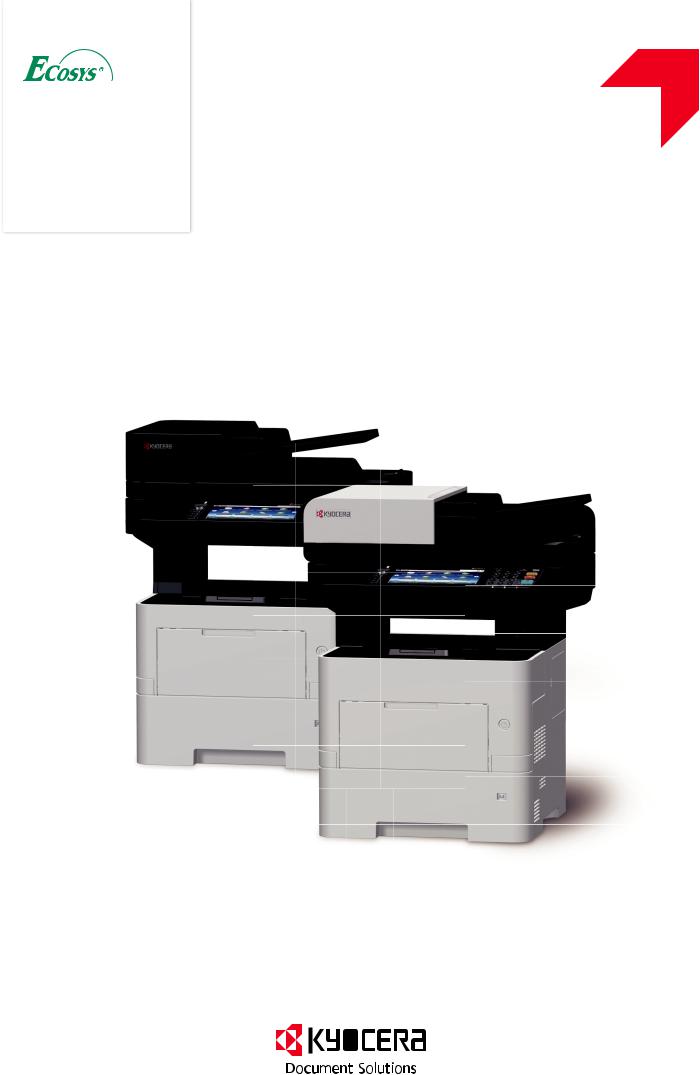



ECOSYS M3145idn




ECOSYS M3645idn
ECOSYS M3655idn
ECOSYS M3660idn
OPERATION GUIDE

> Preface
Preface
Thank you for purchasing this machine.
This Operation Guide is intended to help you operate the machine correctly, perform routine maintenance, and take simple troubleshooting measures as needed so that the machine can always be used in the optimum condition.
Please read this Operation Guide before using the machine.
To maintain quality, we recommend using genuine Kyocera toner containers, which must pass numerous quality inspections.
The use of non-genuine toner containers may cause failure.
We will not be liable for any damages caused by the use of third party supplies in this machine. A label is affixed to our replacement genuine toner containers, as shown below.
Checking the Equipment’s Serial Number
The equipment’s serial number is printed in the location shown in the figure.
You’ll need the equipment’s serial number when contacting your Service Representative. Please check the number before contacting your Service Representative.
i

Contents
|
Preface ……………………………………………………………………………………………………………………. |
i |
|
|
Contents…………………………………………………………………………………………………………………. |
ii |
|
|
Overview ……………………………………………………………………………………………………………….. |
ix |
|
|
Machine Features ……………………………………………………………………………………………………. |
x |
|
|
Color and Image Quality Functions……………………………………………………………………….. |
xiv |
|
|
Basic Color Modes ………………………………………………………………………………………… |
xiv |
|
|
Adjusting Image Quality and Color……………………………………………………………………. |
xv |
|
|
Guides Provided with the Machine………………………………………………………………………… |
xvi |
|
|
About the Operation Guide (this Guide) ………………………………………………………………. |
xviii |
|
|
Structure of the guide……………………………………………………………………………………. |
xviii |
|
|
Conventions Used in This Guide……………………………………………………………………… |
xix |
|
|
Menu Map…………………………………………………………………………………………………………….. |
xxi |
|
|
1 |
Legal and Safety Information ………………………………………………………. |
1-1 |
|
Notice ………………………………………………………………………………………………………………… |
1-2 |
|
|
Safety Conventions in This Guide ………………………………………………………………….. |
1-2 |
|
|
Environment ……………………………………………………………………………………………….. |
1-3 |
|
|
Precautions for Use ……………………………………………………………………………………… |
1-4 |
|
|
Laser Safety (Europe) ………………………………………………………………………………….. |
1-5 |
|
|
SAFETY OF LASER BEAM (USA) ………………………………………………………………… |
1-6 |
|
|
Safety Instructions Regarding the Disconnection of Power ……………………………….. |
1-7 |
|
|
Compliance and Conformity ………………………………………………………………………….. |
1-7 |
|
|
Other precautions (for users in California, the United States) …………………………….. |
1-7 |
|
|
Warranty (the United States and Canada) ………………………………………………………. |
1-8 |
|
|
Legal Restriction on Copying/Scanning ………………………………………………………… |
1-10 |
|
|
EN ISO 7779 …………………………………………………………………………………………….. |
1-10 |
|
|
EK1-ITB 2000 ……………………………………………………………………………………………. |
1-10 |
|
|
Wireless Connection (Mexico only) ………………………………………………………………. |
1-10 |
|
|
Security Precautions when Using Wireless LAN (If equipped) …………………………. |
1-10 |
|
|
Limited Use of This Product (If equipped) ……………………………………………………… |
1-11 |
|
|
Legal Information ………………………………………………………………………………………. |
1-12 |
|
|
Energy Saving Control Function ………………………………………………………………….. |
1-18 |
|
|
Automatic 2-Sided Print Function …………………………………………………………………. |
1-18 |
|
|
Resource Saving — Paper ……………………………………………………………………………. |
1-18 |
|
|
Environmental benefits of «Power Management» ……………………………………………. |
1-18 |
|
|
Energy Star (ENERGY STAR®) Program ……………………………………………………… |
1-19 |
|
|
2 |
Installing and Setting up the Machine ………………………………………….. |
2-1 |
|
Part Names …………………………………………………………………………………………………………. |
2-2 |
|
|
Machine Exterior …………………………………………………………………………………………. |
2-2 |
|
|
Connectors/Interior ………………………………………………………………………………………. |
2-4 |
|
|
With Optional Equipments Attached ………………………………………………………………. |
2-6 |
|
|
Connecting the Machine and Other Devices ………………………………………………………… |
2-7 |
|
|
Connecting Cables ……………………………………………………………………………………………… |
2-8 |
|
|
Connecting LAN Cable …………………………………………………………………………………. |
2-8 |
|
|
Connecting USB Cable ………………………………………………………………………………… |
2-9 |
|
|
Connecting the Power Cable ………………………………………………………………………… |
2-9 |
|
|
Power On/Off ……………………………………………………………………………………………………. |
2-10 |
|
|
Power On …………………………………………………………………………………………………. |
2-10 |
|
|
Power Off …………………………………………………………………………………………………. |
2-10 |
|
|
Using the Operation Panel ………………………………………………………………………………… |
2-11 |
|
|
Operation Panel Keys ………………………………………………………………………………… |
2-11 |
|
|
Adjusting the Operation Panel Angle ……………………………………………………………. |
2-12 |
|
|
Touch Panel ……………………………………………………………………………………………………… |
2-13 |
|
|
Home Screen ……………………………………………………………………………………………. |
2-13 |
|
|
Display for Device Information …………………………………………………………………….. |
2-17 |
ii

|
Functions key ……………………………………………………………………………………………. |
2-18 |
|
|
Display of Keys That Cannot Be Set …………………………………………………………….. |
2-19 |
|
|
Enter key and Quick No. Search key ……………………………………………………………. |
2-20 |
|
|
Help Screen ……………………………………………………………………………………………… |
2-21 |
|
|
Login/Logout ……………………………………………………………………………………………………. |
2-22 |
|
|
Login ……………………………………………………………………………………………………….. |
2-22 |
|
|
Logout ……………………………………………………………………………………………………… |
2-23 |
|
|
Default Settings of the Machine …………………………………………………………………………. |
2-24 |
|
|
Setting Date and Time ……………………………………………………………………………….. |
2-24 |
|
|
Network Setup ………………………………………………………………………………………………….. |
2-25 |
|
|
Configuring the Wired Network ……………………………………………………………………. |
2-25 |
|
|
Configuring the Wireless Network ………………………………………………………………… |
2-27 |
|
|
Setting Wi-Fi Direct ……………………………………………………………………………………. |
2-31 |
|
|
Energy Saver function ………………………………………………………………………………………. |
2-33 |
|
|
Low Power Mode ………………………………………………………………………………………. |
2-33 |
|
|
Sleep and Auto Sleep ………………………………………………………………………………… |
2-33 |
|
|
Power Off Rule (models for Europe) …………………………………………………………….. |
2-34 |
|
|
Quick Setup Wizard …………………………………………………………………………………………… |
2-35 |
|
|
Installing Software ……………………………………………………………………………………………. |
2-37 |
|
|
Software on DVD (Windows) ………………………………………………………………………. |
2-37 |
|
|
Installing Software in Windows ……………………………………………………………………. |
2-38 |
|
|
Uninstalling the Software ……………………………………………………………………………. |
2-44 |
|
|
Installing Software in Mac Computer ……………………………………………………………. |
2-45 |
|
|
Setting TWAIN Driver …………………………………………………………………………………. |
2-47 |
|
|
Setting WIA Driver ……………………………………………………………………………………… |
2-49 |
|
|
Checking the Counter ……………………………………………………………………………………….. |
2-50 |
|
|
Additional Preparations for the Administrator ……………………………………………………. |
2-51 |
|
|
Sending Documents to a PC ……………………………………………………………………….. |
2-51 |
|
|
Strengthening the Security ………………………………………………………………………….. |
2-51 |
|
|
Command Center RX ………………………………………………………………………………………… |
2-53 |
|
|
Accessing Command Center RX …………………………………………………………………. |
2-54 |
|
|
Changing Security Settings …………………………………………………………………………. |
2-55 |
|
|
Changing Device Information ………………………………………………………………………. |
2-57 |
|
|
E-mail Settings ………………………………………………………………………………………….. |
2-59 |
|
|
Registering Destinations …………………………………………………………………………….. |
2-63 |
|
|
Creating a New Custom Box ……………………………………………………………………….. |
2-64 |
|
|
Printing a document stored in a Custom Box …………………………………………………. |
2-65 |
|
|
Transferring Data from Our Other Products ……………………………………………………….. |
2-67 |
|
|
Migrating the Address Book ………………………………………………………………………… |
2-67 |
|
|
3 |
Preparation before Use ……………………………………………………………….. |
3-1 |
|
Loading Paper ……………………………………………………………………………………………………. |
3-2 |
|
|
Precaution for Loading Paper ……………………………………………………………………….. |
3-3 |
|
|
Loading in the Cassettes ………………………………………………………………………………. |
3-4 |
|
|
Loading Statement in the Cassettes |
||
|
(ECOSYS M3655idn/ECOSYS M3660idn for inch models) ……………………………….. |
3-8 |
|
|
Loading Paper in the Multi Purpose Tray ………………………………………………………. |
3-11 |
|
|
Specifying Paper Size and Media Type ………………………………………………………… |
3-15 |
|
|
Paper Stopper …………………………………………………………………………………………………… |
3-17 |
|
|
Preparation for Sending a Document to a Shared Folder in a PC ………………………… |
3-18 |
|
|
Making a note of the computer name and full computer name …………………………. |
3-18 |
|
|
Making a note of the user name and domain name ………………………………………… |
3-19 |
|
|
Creating a Shared Folder, Making a Note of a Shared Folder ………………………….. |
3-20 |
|
|
Configuring Windows Firewall ……………………………………………………………………… |
3-24 |
|
|
Registering Destinations in the Address Book …………………………………………………… |
3-28 |
|
|
Adding a Destination (Address Book) …………………………………………………………… |
3-28 |
|
|
Adding a Destination on One Touch Key (One Touch Key) ……………………………… |
3-33 |
iii

|
4 |
Printing from PC …………………………………………………………………………. |
4-1 |
|
Printing from PC …………………………………………………………………………………………………. |
4-2 |
|
|
Printing on Non-standard Sized Paper ……………………………………………………………. |
4-4 |
|
|
Banner printing ……………………………………………………………………………………………. |
4-5 |
|
|
Printer Driver Print Settings Screen ……………………………………………………………….. |
4-9 |
|
|
Printer Driver Help ……………………………………………………………………………………… |
4-10 |
|
|
Changing the Default Printer Driver Settings (Windows 8.1) ……………………………. |
4-10 |
|
|
Canceling Printing from a Computer …………………………………………………………….. |
4-10 |
|
|
Printing by AirPrint …………………………………………………………………………………………… |
4-11 |
|
|
Printing by Google Cloud Print ………………………………………………………………………….. |
4-11 |
|
|
Printing by Mopria …………………………………………………………………………………………….. |
4-11 |
|
|
Printing with Wi-Fi Direct …………………………………………………………………………………… |
4-11 |
|
|
Printing Data Saved on the Printer …………………………………………………………………….. |
4-12 |
|
|
Specifying the Job Box from a Computer and Storing the Job …………………………. |
4-12 |
|
|
Printing Documents from Private Print Box ……………………………………………………. |
4-13 |
|
|
Printing Document from Stored Job Box ……………………………………………………….. |
4-15 |
|
|
Printing Document from Quick Copy Box ………………………………………………………. |
4-17 |
|
|
Printing Document from Proof and Hold Box …………………………………………………. |
4-19 |
|
|
Status Monitor ………………………………………………………………………………………………….. |
4-21 |
|
|
Accessing the Status Monitor ………………………………………………………………………. |
4-21 |
|
|
Exiting the Status Monitor …………………………………………………………………………… |
4-21 |
|
|
Status Monitor Display ……………………………………………………………………………….. |
4-21 |
|
5 |
Operation on the Machine …………………………………………………………… |
5-1 |
|
Loading Originals ……………………………………………………………………………………………….. |
5-2 |
|
|
Placing Originals on the Platen ……………………………………………………………………… |
5-2 |
|
|
Loading Originals in the Document Processor …………………………………………………. |
5-3 |
|
|
Favorites ……………………………………………………………………………………………………………. |
5-6 |
|
|
Registering Favorite …………………………………………………………………………………….. |
5-7 |
|
|
Recalling Favorite ……………………………………………………………………………………….. |
5-9 |
|
|
Editing and Deleting Favorite ………………………………………………………………………. |
5-10 |
|
|
Application ……………………………………………………………………………………………………….. |
5-11 |
|
|
Installing Applications …………………………………………………………………………………. |
5-11 |
|
|
Using Applications ……………………………………………………………………………………… |
5-12 |
|
|
Uninstalling Applications …………………………………………………………………………….. |
5-13 |
|
|
Registering Shortcuts ……………………………………………………………………………………….. |
5-14 |
|
|
Adding Shortcuts ……………………………………………………………………………………….. |
5-14 |
|
|
Editing and Deleting Shortcuts …………………………………………………………………….. |
5-15 |
|
|
Copying ……………………………………………………………………………………………………………. |
5-16 |
|
|
Basic Operation …………………………………………………………………………………………. |
5-16 |
|
|
Canceling Jobs ………………………………………………………………………………………….. |
5-17 |
|
|
Sending ……………………………………………………………………………………………………………. |
5-18 |
|
|
Basic Operation …………………………………………………………………………………………. |
5-19 |
|
|
Specifying Destination ………………………………………………………………………………… |
5-20 |
|
|
Checking and Editing Destinations ………………………………………………………………. |
5-25 |
|
|
Confirmation Screen of Destinations …………………………………………………………….. |
5-26 |
|
|
Recall ………………………………………………………………………………………………………. |
5-27 |
|
|
Send to Me (E-mail) …………………………………………………………………………………… |
5-27 |
|
|
Sending to Different Types of Destinations (Multi Sending) ……………………………… |
5-28 |
|
|
Canceling Sending Jobs …………………………………………………………………………….. |
5-29 |
|
|
WSD Scan ………………………………………………………………………………………………… |
5-30 |
|
|
Installing the Driver ……………………………………………………………………………………. |
5-30 |
|
|
Scanning using TWAIN or WIA ……………………………………………………………………. |
5-32 |
|
|
Scanning with File Management Utility …………………………………………………………. |
5-33 |
|
|
Using fax server to send a fax (fax server transmission) …………………………………….. |
5-34 |
|
|
Configuring Settings before Sending ……………………………………………………………. |
5-34 |
|
|
Using fax server to send a fax ……………………………………………………………………… |
5-34 |
iv

|
How to use the FAX Function ……………………………………………………………………………. |
5-36 |
|
|
What is Document Box? ……………………………………………………………………………………. |
5-37 |
|
|
Basic Operation for Document Box ……………………………………………………………………. |
5-38 |
|
|
Box List Operations ……………………………………………………………………………………. |
5-38 |
|
|
Document List Operations …………………………………………………………………………… |
5-38 |
|
|
Using a Custom Box …………………………………………………………………………………………. |
5-39 |
|
|
Creating a New Custom Box ……………………………………………………………………….. |
5-39 |
|
|
Editing and Deleting Custom Box ………………………………………………………………… |
5-41 |
|
|
Saving Scanned Documents to a Custom Box ………………………………………………. |
5-42 |
|
|
Moving Documents in Custom Box ………………………………………………………………. |
5-43 |
|
|
Copying Documents in Custom Box into Other Boxes …………………………………….. |
5-43 |
|
|
Copying Documents in Custom Box to Removable Memory ……………………………. |
5-44 |
|
|
Joining Documents in Custom Box ………………………………………………………………. |
5-45 |
|
|
Deleting Documents in Custom Box …………………………………………………………….. |
5-46 |
|
|
Printing Documents in Custom Box ……………………………………………………………… |
5-46 |
|
|
Sending Documents in a Custom Box ………………………………………………………….. |
5-47 |
|
|
Sending Documents in Custom Box to E-mail Address of Logged in user. ………… |
5-48 |
|
|
Scanning Document Stored in a Custom Box ………………………………………………… |
5-49 |
|
|
Printing Documents Stored in Removable USB Memory …………………………………….. |
5-50 |
|
|
Saving Documents to USB Memory (Scan to USB) …………………………………………….. |
5-52 |
|
|
Check the USB Memory Information ………………………………………………………………….. |
5-53 |
|
|
Removing USB Memory …………………………………………………………………………………….. |
5-54 |
|
|
Using the Manual Stapler |
||
|
(ECOSYS M3655idn/ECOSYS M3660idn only) …………………………………………………….. |
5-55 |
|
|
6 |
Using Various Functions …………………………………………………………….. |
6-1 |
|
Functions Available on the Machine ……………………………………………………………………. |
6-2 |
|
|
Copy ………………………………………………………………………………………………………….. |
6-2 |
|
|
Send ………………………………………………………………………………………………………….. |
6-4 |
|
|
Custom Box (Store File, Printing Documents, Sending Documents) …………………… |
6-6 |
|
|
Removable Memory (Store File, Printing Documents) ………………………………………. |
6-8 |
|
|
Functions …………………………………………………………………………………………………………. |
6-10 |
|
|
ID Card Copy ……………………………………………………………………………………………. |
6-10 |
|
|
Original Size ……………………………………………………………………………………………… |
6-10 |
|
|
Paper Selection …………………………………………………………………………………………. |
6-11 |
|
|
Original Orientation ……………………………………………………………………………………. |
6-12 |
|
|
Mixed Size Originals ………………………………………………………………………………….. |
6-13 |
|
|
Collate ……………………………………………………………………………………………………… |
6-13 |
|
|
Density …………………………………………………………………………………………………….. |
6-13 |
|
|
Original Image …………………………………………………………………………………………… |
6-14 |
|
|
EcoPrint ……………………………………………………………………………………………………. |
6-15 |
|
|
Color Selection ………………………………………………………………………………………….. |
6-15 |
|
|
Sharpness ………………………………………………………………………………………………… |
6-16 |
|
|
Contrast ……………………………………………………………………………………………………. |
6-16 |
|
|
Background Density Adj. (Background Density Adjustment) ……………………………. |
6-17 |
|
|
Prevent Bleed-thrugh …………………………………………………………………………………. |
6-17 |
|
|
Zoom ……………………………………………………………………………………………………….. |
6-18 |
|
|
Combine …………………………………………………………………………………………………… |
6-20 |
|
|
Duplex ……………………………………………………………………………………………………… |
6-22 |
|
|
Continuous Scan ……………………………………………………………………………………….. |
6-24 |
|
|
Job Finish Notice ……………………………………………………………………………………….. |
6-24 |
|
|
File Name Entry ………………………………………………………………………………………… |
6-25 |
|
|
Priority Override ………………………………………………………………………………………… |
6-25 |
|
|
Quiet Mode ……………………………………………………………………………………………….. |
6-25 |
|
|
Skip Blank Page ………………………………………………………………………………………… |
6-26 |
|
|
Duplex (2-sided Original) ……………………………………………………………………………. |
6-27 |
|
|
Sending Size …………………………………………………………………………………………….. |
6-28 |
|
|
File Format ……………………………………………………………………………………………….. |
6-29 |
|
|
File Separation ………………………………………………………………………………………….. |
6-33 |
v

|
Scan Resolution, Resolution ……………………………………………………………………….. |
6-33 |
|
|
E-mail Subject/Body …………………………………………………………………………………… |
6-33 |
|
|
Long Original …………………………………………………………………………………………….. |
6-34 |
|
|
FTP Encrypted TX ……………………………………………………………………………………… |
6-34 |
|
|
Delete after Printed ……………………………………………………………………………………. |
6-34 |
|
|
Delete after Transmitted ……………………………………………………………………………… |
6-34 |
|
|
Storing Size ………………………………………………………………………………………………. |
6-35 |
|
|
Encrypted PDF Password …………………………………………………………………………… |
6-35 |
|
|
JPEG/TIFF Print ………………………………………………………………………………………… |
6-36 |
|
|
XPS Fit to Page …………………………………………………………………………………………. |
6-36 |
|
|
7 |
Status/Job Cancel ………………………………………………………………………. |
7-1 |
|
Checking Job Status …………………………………………………………………………………………… |
7-2 |
|
|
Details of the Status Screens ………………………………………………………………………… |
7-3 |
|
|
Checking Detailed Information of Jobs …………………………………………………………… |
7-7 |
|
|
Checking Job History …………………………………………………………………………………………. |
7-8 |
|
|
Checking the Detailed Information of Histories ………………………………………………… |
7-9 |
|
|
Sending the Log History ……………………………………………………………………………….. |
7-9 |
|
|
Job Operation …………………………………………………………………………………………………… |
7-10 |
|
|
Pause and Resumption of Jobs …………………………………………………………………… |
7-10 |
|
|
Canceling of Jobs ………………………………………………………………………………………. |
7-10 |
|
|
Device/Communication ……………………………………………………………………………………… |
7-11 |
|
|
Checking the Remaining Amount of Toner and Paper (Paper/Supplies) ………………. |
7-13 |
|
|
8 |
Setup and Registration (System Menu) ……………………………………….. |
8-1 |
|
System Menu ……………………………………………………………………………………………………… |
8-2 |
|
|
Operation Method ……………………………………………………………………………………….. |
8-2 |
|
|
System Menu Settings …………………………………………………………………………………. |
8-3 |
|
|
Language …………………………………………………………………………………………………… |
8-5 |
|
|
Report ……………………………………………………………………………………………………….. |
8-5 |
|
|
User Property ……………………………………………………………………………………………… |
8-7 |
|
|
Cassette/MP Tray Settings …………………………………………………………………………… |
8-8 |
|
|
Common Settings ………………………………………………………………………………………. |
8-10 |
|
|
Home ……………………………………………………………………………………………………….. |
8-20 |
|
|
Copy ………………………………………………………………………………………………………… |
8-20 |
|
|
Send ………………………………………………………………………………………………………… |
8-21 |
|
|
Document Box …………………………………………………………………………………………… |
8-22 |
|
|
FAX …………………………………………………………………………………………………………. |
8-22 |
|
|
Application ………………………………………………………………………………………………… |
8-22 |
|
|
Internet …………………………………………………………………………………………………….. |
8-23 |
|
|
Address Book/One Touch …………………………………………………………………………… |
8-23 |
|
|
User Login/Job Accounting …………………………………………………………………………. |
8-24 |
|
|
Printer ………………………………………………………………………………………………………. |
8-24 |
|
|
System/Network ………………………………………………………………………………………… |
8-27 |
|
|
Date/Timer/Energy Saver ……………………………………………………………………………. |
8-46 |
|
|
Adjustment/Maintenance …………………………………………………………………………….. |
8-49 |
|
|
9 |
User Authentication and Accounting (User Login, Job Accounting) 9-1 |
|
|
Overview of User Login Administration ……………………………………………………………….. |
9-2 |
|
|
Enabling User Login Administration ……………………………………………………………………. |
9-3 |
|
|
Setting User Login Administration ………………………………………………………………………. |
9-4 |
|
|
Authentication Security ………………………………………………………………………………… |
9-4 |
|
|
Adding a User (Local User List) …………………………………………………………………….. |
9-6 |
|
|
Changing User Properties …………………………………………………………………………….. |
9-9 |
|
|
User Login Administration for Printing …………………………………………………………… |
9-13 |
|
|
To Manage the Users to Scan Using TWAIN …………………………………………………. |
9-15 |
|
|
To Manage the Users to Scan Using WIA …………………………………………………….. |
9-16 |
vi

|
To Manage the Users that Send Faxes from a PC …………………………………………. |
9-17 |
|
|
Local Authorization …………………………………………………………………………………….. |
9-18 |
|
|
Group Authorization Settings ………………………………………………………………………. |
9-19 |
|
|
Guest Authorization Set. …………………………………………………………………………….. |
9-22 |
|
|
Obtain NW User Property …………………………………………………………………………… |
9-25 |
|
|
Simple Login Settings ………………………………………………………………………………… |
9-27 |
|
|
ID Card Settings ………………………………………………………………………………………… |
9-30 |
|
|
PIN Code Authorization ………………………………………………………………………………. |
9-31 |
|
|
Using User Login Administration ………………………………………………………………………. |
9-32 |
|
|
Login/Logout …………………………………………………………………………………………….. |
9-32 |
|
|
Overview of Job Accounting ……………………………………………………………………………… |
9-33 |
|
|
Enabling Job Accounting ………………………………………………………………………………….. |
9-34 |
|
|
Job Accounting Access ………………………………………………………………………………. |
9-35 |
|
|
Setting an Account ……………………………………………………………………………………………. |
9-36 |
|
|
Adding an Account …………………………………………………………………………………….. |
9-36 |
|
|
Restricting the Use of the Machine ………………………………………………………………. |
9-37 |
|
|
Editing an Account …………………………………………………………………………………….. |
9-38 |
|
|
Deleting an Account …………………………………………………………………………………… |
9-39 |
|
|
Job Accounting for Printing …………………………………………………………………………. |
9-40 |
|
|
Job Accounting for Scan Using TWAIN ………………………………………………………… |
9-41 |
|
|
Job Accounting for Scan Using WIA …………………………………………………………….. |
9-42 |
|
|
Job Accounting for the FAX Transmitted from a Computer ……………………………… |
9-43 |
|
|
Configuring Job Accounting ……………………………………………………………………………… |
9-44 |
|
|
Default Setting …………………………………………………………………………………………… |
9-44 |
|
|
Counting the Number of Pages Printed ………………………………………………………… |
9-45 |
|
|
Print Accounting Report ……………………………………………………………………………… |
9-46 |
|
|
Using Job Accounting ………………………………………………………………………………………. |
9-47 |
|
|
Login/Logout …………………………………………………………………………………………….. |
9-47 |
|
|
Unknown User Settings …………………………………………………………………………………….. |
9-48 |
|
|
Unknown ID Job ………………………………………………………………………………………… |
9-48 |
|
|
Registering Information for a User whose ID is Unknown ………………………………… |
9-49 |
|
|
10 |
Troubleshooting ……………………………………………………………………….. |
10-1 |
|
Regular Maintenance ………………………………………………………………………………………… |
10-2 |
|
|
Cleaning …………………………………………………………………………………………………… |
10-2 |
|
|
Toner Container Replacement …………………………………………………………………….. |
10-6 |
|
|
Waste Toner Box Replacement …………………………………………………………………. |
10-10 |
|
|
Replacing Staples |
||
|
(ECOSYS M3655idn/ECOSYS M3660idn only) ……………………………………………. |
10-12 |
|
|
Troubleshooting ……………………………………………………………………………………………… |
10-13 |
|
|
Solving Malfunctions ………………………………………………………………………………… |
10-13 |
|
|
Responding to Messages ………………………………………………………………………….. |
10-18 |
|
|
Adjustment/Maintenance …………………………………………………………………………… |
10-30 |
|
|
Clearing Paper Jams ………………………………………………………………………………… |
10-31 |
|
|
Clearing a Staple Jam |
||
|
(ECOSYS M3655idn/ECOSYS M3660idn only) ……………………………………………. |
10-40 |
|
|
11 |
Appendix ………………………………………………………………………………….. |
11-1 |
|
Optional Equipment ………………………………………………………………………………………….. |
11-2 |
|
|
Overview of Optional Equipment ………………………………………………………………….. |
11-2 |
|
|
Optional Applications …………………………………………………………………………………. |
11-9 |
|
|
Character Entry Method …………………………………………………………………………………… |
11-11 |
|
|
Entry Screens ………………………………………………………………………………………….. |
11-11 |
|
|
Entering Characters …………………………………………………………………………………. |
11-13 |
|
|
Paper ……………………………………………………………………………………………………………… |
11-14 |
|
|
Basic Paper Specifications ………………………………………………………………………… |
11-14 |
|
|
Choosing the Appropriate Paper ………………………………………………………………… |
11-15 |
|
|
Special Paper ………………………………………………………………………………………….. |
11-18 |
vii

|
Specifications …………………………………………………………………………………………………. |
11-22 |
|
Machine ………………………………………………………………………………………………….. |
11-22 |
|
Copy Functions ……………………………………………………………………………………….. |
11-24 |
|
Printer Functions ……………………………………………………………………………………… |
11-25 |
|
Scanner Functions …………………………………………………………………………………… |
11-26 |
|
Document Processor ………………………………………………………………………………… |
11-27 |
|
Paper Feeder (500-sheet) (Option) …………………………………………………………….. |
11-27 |
|
Manual Stapler |
|
|
(ECOSYS M3655idn/ECOSYS M3660idn only) ……………………………………………. |
11-28 |
|
Glossary …………………………………………………………………………………………………………. |
11-29 |
|
Index ……………………………………………………………………………………………………………. |
Index-1 |
viii
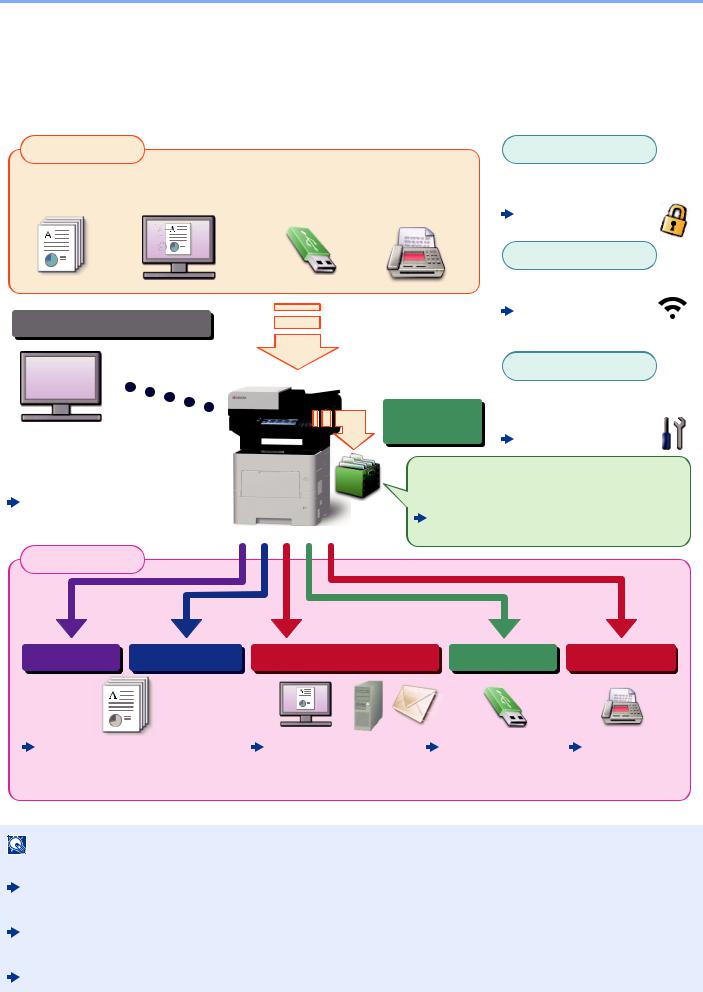
> Overview
Overview
This machine is equipped standard with copy and print functions, and a scanned image can be sent to an E-mail recipient as an attachment or to a computer on the same network. On products with a FAX function, it is also possible to use the fax function.
|
Input Data |
Security |
|||
|
You can use the machine security |
||||
|
Original |
Electronic data |
USB memory |
Fax data |
levels according to your needs. |
|
Strengthen security |
||||
|
(page xii) |
||||
|
Wi-Fi connection |
||||
|
Wi-Fi or Wi-Fi Direct connection |
||||
|
is possible. |
Operations from your PC
Command Center RX
You can check the status and change the settings of the machine from a Web browser on your computer.
Command Center RX (page 2-53)
Command Center RX User Guide
Document Box functions
Configuring the Wireless Network (page 2-27)
Application
You can expand the machine functions according to your needs.
Application (page 5-11)
This function is useful for a variety of purposes, including saving data in the machine and in a USB memory stick.
Printing Data Saved on the Printer (page 4-12) Using a Custom Box (page 5-39)
Output Data
|
Copy functions Printer functions |
Send functions |
USB memory |
Fax functions |
|
Copying (page 5-16) |
Sending (page 5-18) |
Saving Documents to |
FAX Operation |
|
Printing from PC (page 4-1) |
USB Memory (Scan to |
Guide |
|
|
USB) (page 5-52) |
NOTE
• Before using the machine, be sure to read the following:
Legal and Safety Information (page 1-1)
• For preparations for use of the machine such as cable connections and software installation, refer to the following:
Installing and Setting up the Machine (page 2-1)
• To learn how to load paper, set up shared folders, and add addresses to the address book, refer to the following:
Preparation before Use (page 3-1)
ix
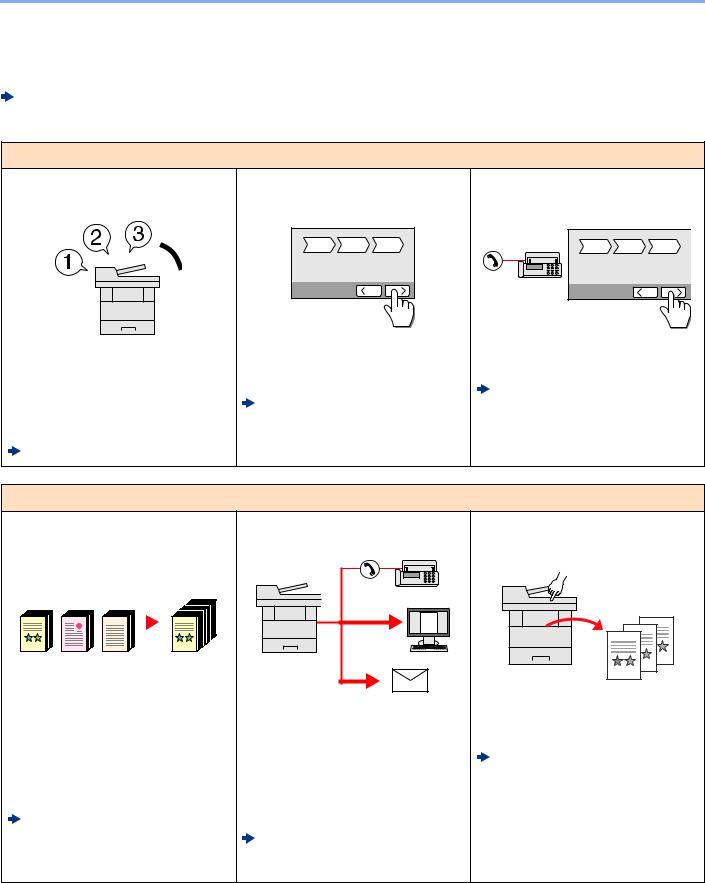
> Machine Features
Machine Features
The machine is equipped with many useful functions.
Using Various Functions (page 6-1)
Here are some examples.
Optimize your office workflow
Access to frequently used functions with just one touch (Favorites)
You can preset frequently used functions.
Once you register frequently used settings as favorite, you can call up the settings easily. Using this favorite brings the same results even if operated by another person.
Favorites (page 5-6)
Set up the machine easily (Quick Setup Wizard)
You can configure the necessary settings before using the machine in the wizard mode.
Quick Setup Wizard (page 2-35)
Set up fax easily (FAX Setup)
You can configure the necessary settings before using fax in the wizard mode.
FAX Setup (page 2-35)
Optimize your office workflow
Scan a large number of originals in separate batches and produce as one job (Continuous Scan)
It is useful when preparing many-page handouts.
When a large number of originals cannot be placed in the document processor at one time, the originals can be scanned in separate batches and then copied or sent as one job.
Continuous Scan (page 6-24)
Send one time with multiple sending options (Multi Sending)
You can send a same document to the multiple destinations using a different method.
You can specify multiple destinations of different send methods such as E-mail, SMB, and Fax.
You can reduce your workflow by sending a job at once.
Sending to Different Types of Destinations (Multi Sending) (page 5- 28)
Save frequently used documents in the machine (Custom Box)
You can save the frequently used document in the machine and print it when needed.
Using a Custom Box (page 5-39)
x

> Machine Features
|
Optimize your office workflow |
Save energy and cost |
||||||||||||||
|
Send a FAX from a PC |
Save energy as needed |
Use less toner for printing |
|||||||||||||
|
(Sending FAX from PC) |
(Energy Saver function) |
(EcoPrint) |
|||||||||||||
Off
|
You can save the paper used for sending |
The machine is equipped with Energy |
You can save toner consumption with this |
|
a FAX with this function. |
Saver function that automatically |
function. |
|
You can send a file to be faxed from the |
switched into Sleep Mode. |
When you only need to check the printed |
|
PC without printing the file, so that you |
Energy Saver function (page 2-33) |
content, such as a trial print run or |
|
can reduce the number of pieces of paper |
documents for internal confirmation, use |
|
|
and perform sending jobs efficiently. |
this function to save toner. |
|
|
FAX Operation Guide |
Use this function when a high-quality print |
|
|
is not required. |
||
|
EcoPrint (page 6-15) |
Save energy and cost
Reduce paper use (Paper Saving Printing)
You can print originals on both sides of the paper. You can also print multiple originals onto one sheet.
Favorites (page 5-6)
Skip blank pages when printing (Skip Blank Page)
When there are blank pages in a scanned document, this function skips the blank pages and prints only pages that are not blank.
Skip Blank Page (page 6-26)
Send a FAX to reduce the communication cost
(FAX Delayed Transmission)
You can reduce the communication cost with this function.
The communication cost can be reduced by setting the timer to the time period during which the communication cost is low.
FAX Operation Guide
xi

> Machine Features
|
Create attractive documents |
Strengthen security |
|
|
Prevent image bleed-through |
Password-protect a PDF file |
Protect data on the SSD |
|
(Prevent Bleed-through) |
(PDF Encryption Functions) |
(Encryption / Overwrite) |
|
You can prevent image bleed-through |
Use the PDF format’s password security |
You can overwrite the unnecessary data |
||||||||||||||||||||||||||||||
|
from the reverse side when scanning thin |
options to restrict document viewing, |
that remains on the SSD automatically. |
||||||||||||||||||||||||||||||
|
originals. |
printing and editing. |
To prevent an external leakage, the |
||||||||||||||||||||||||||||||
|
Prevent Bleed-thrugh (page 6-17) |
Encrypted PDF Password (page 6- |
machine is able to encrypt data before |
||||||||||||||||||||||||||||||
|
35) |
writing it to the SSD. |
|||||||||||||||||||||||||||||||
|
Data Security (page 8-43) |
Strengthen security
Prevent loss of finished documents (Private Print)
You can temporarily save a printer document in the machine. By printing the document from the machine prevents someone takes your document.
Printing Data Saved on the Printer (page 4-12)
Log in by ID card (Card Authentication)
OK !
You can log in simply by touching an ID card. You don’t need to enter your user name and password.
Card Authentication Kit(B) «Card
Authentication Kit» (page 11-3)
Strengthen security (Settings for Administrator)
Various functions are available for administrators to strengthen security.
Strengthening the Security (page 2- 51)
xii
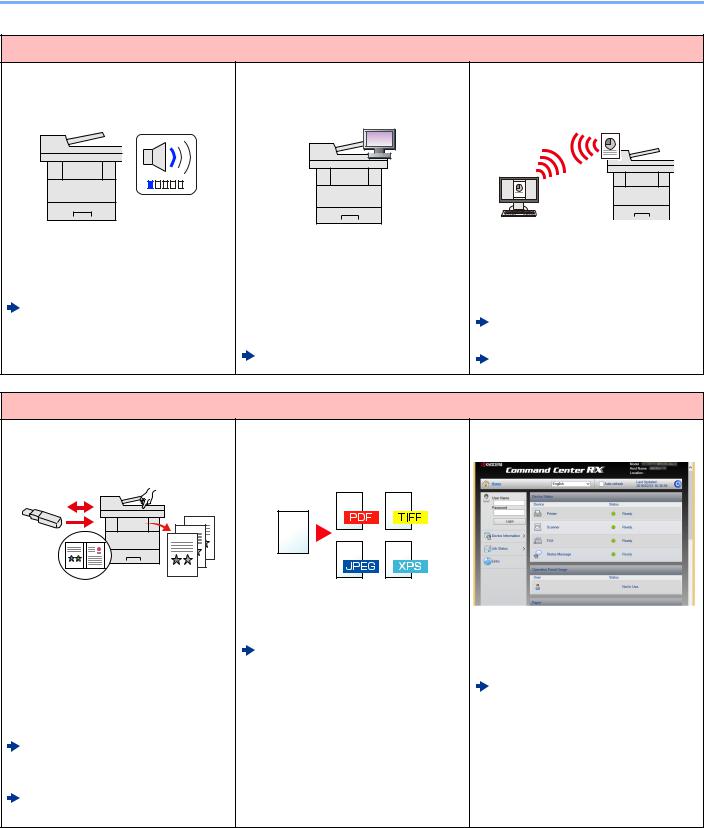
> Machine Features
Use functions more efficiently
Make the machine quiet (Quiet Mode)
You can make the machine quiet by reducing its running noise. You can configure this mode by job.
Quiet Mode (page 6-25)
Expand functions as necessary (Application)
The functionality of the machine can be expanded by installing applications.
Applications that help you perform your daily more efficiently such as a scan feature and an authentication feature are available.
Application (page 5-11)
Install the machine without concerning the network cables (Wireless Network)
In an environment where the wireless LAN is used, you can install the machine without concerning the network cables. In addition, Wi-Fi Direct, etc. are supported.
Configuring the Wireless Network (page 2-27)
Setting Wi-Fi Direct (page 2-31)
Use functions more efficiently
Use USB memory (USB Memory)
It is useful when you need to print document outside your office or you cannot print document from your PC.
You can print the document from the USB memory by plugging it directly into the machine.
Original scanned at the machine can be saved in the USB memory also.
Printing Documents Stored in Removable USB Memory (page 5- 50)
Saving Documents to USB Memory (Scan to USB) (page 5-52)
Specify image file format (File Format)
You can select the various file formats when sending/storing images.
File Format (page 6-29)
Perform remote operation (Command Center RX)
You can access to the machine remotely to print, send or download data.
Administrators can configure the machine behavior or management settings.
Command Center RX (page 2-53)
xiii
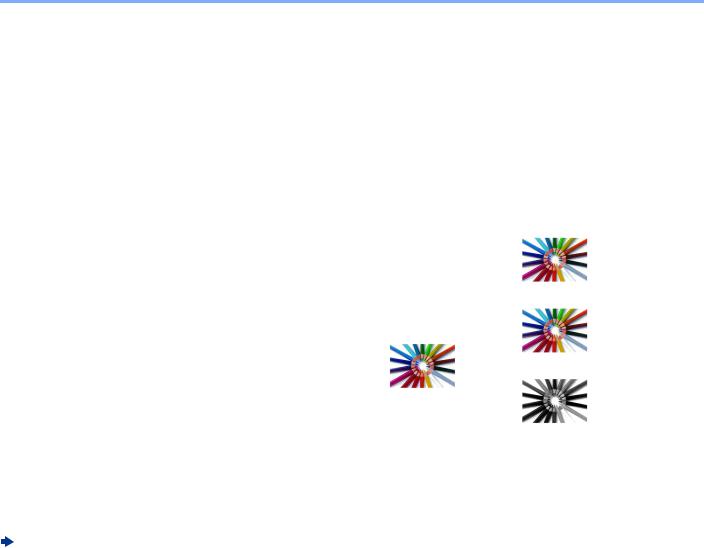
> Color and Image Quality Functions
Color and Image Quality Functions
The machine is equipped with various color and image quality functions. You can adjust the scanned image as desired.
Basic Color Modes
The basic color modes are as follows.
|
Color mode |
Description |
Reference image |
Reference |
||
|
Before |
After |
page |
|||
|
Auto Color |
Automatically recognizes whether a |
page 6-15 |
|||
|
document being scanned is color or black |
|||||
|
& white. |
|||||
|
Full Color |
Scans a document in full color. |
page 6-15 |
|||
|
Grayscale |
Scans a document in grayscale. |
page 6-15 |
|||
|
Black & White |
Scans a document in black & white. |
page 6-15 |
|||
For details, refer to the following:
Color Selection (page 6-15)
xiv

> Color and Image Quality Functions
Adjusting Image Quality and Color
To adjust the image quality or color of an image, use the following functions.
|
I want to… |
Sample image |
Function |
Page |
||
|
Before |
After |
||||
Adjust the color precisely.
|
Adjust the density. |
Density |
page 6-13 |
|||
Adjust the image quality precisely
|
Emphasize or blur the image |
Sharpness |
page 6-16 |
|||||||
|
outline. |
|||||||||
|
Example: Emphasize the image |
|||||||||
|
outlines |
|||||||||
|
Adjust the difference between |
Contrast |
page 6-16 |
|||||||
|
dark and light parts of the image. |
|||||||||
|
Darken or lighten the background |
Background Density |
page 6-17 |
|||||||
|
(the area with no texts or images) |
|||||||||
|
of a document. |
|||||||||
|
Example: Lightening the |
|||||||||
|
background |
|||||||||
|
Prevent bleed-through in 2-sided |
Prevent Bleed- |
page 6-17 |
|||||||
|
originals. |
through |
||||||||
|
Adjust the scanned image |
|||||||||
|
Decrease the file size and |
File format |
page 6-29 |
|||||||
|
produce the characters clearly. |
[High Comp. PDF] |
||||||||
xv
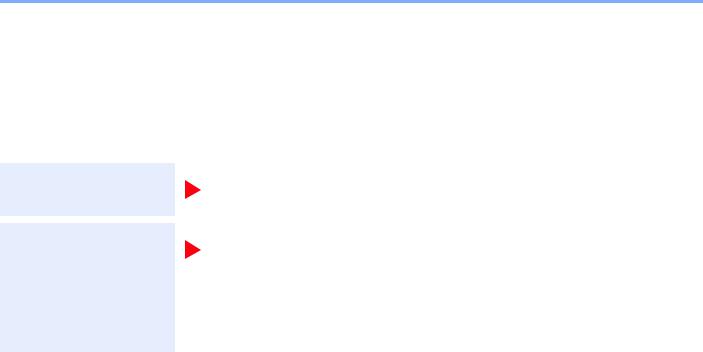
> Guides Provided with the Machine
Guides Provided with the Machine
The following guides are provided with the machine. Refer to each guide as needed.
The contents of the guides are subject to change without notice for the purpose of improvement of machine performance.
Printed guides
Start using the machine quickly
For safe use of the machine
Quick Guide
Explains how to use basic functions of the machine, how to use convenient features, how to perform routine maintenance, and what to do when problems occur.
Safety Guide
Provides safety and cautionary information for installation environment and use of the machine. Be sure to read this guide before using the machine.
Safety Guide (ECOSYS M3145idn/ECOSYS M3645idn/ ECOSYS M3655idn/ECOSYS M3660idn)
Indicates the space required for machine installation, and describes the cautionary labels and other safety information. Be sure to read this guide before using the machine.
xvi
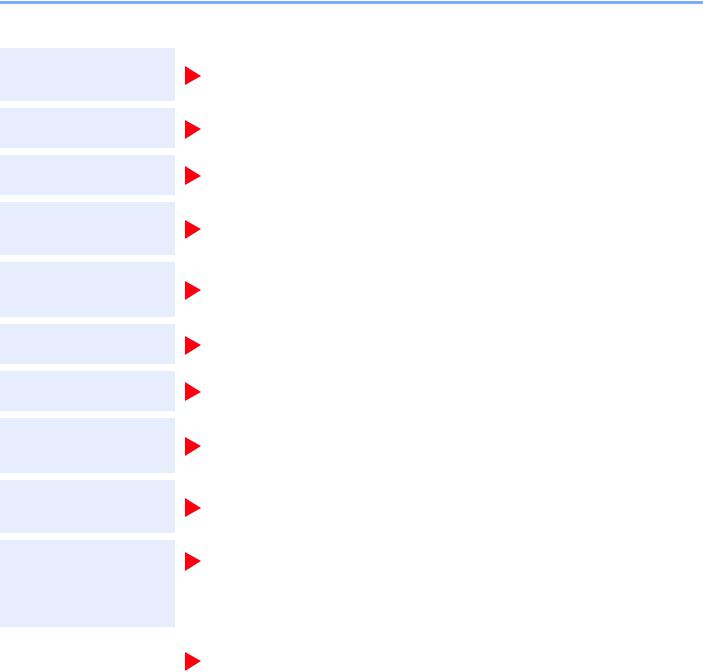
> Guides Provided with the Machine
Guides (PDF) on the DVD (Product Library)
Use the machine thoughtfully
Use the fax functions
Use the ID card
Strengthen security
Operation Guide (This Guide)
Explains how to load paper and perform copy, print and scan operations, and indicates default settings and other information.
FAX Operation Guide
Explains how to use the fax function.
Card Authentication Kit (B) Operation Guide
Explains how to perform authentication using the ID card.
Data Security Kit (E) Operation Guide
Explains how to introduce and use the Data Security kit (E), and how to overwrite and encrypt data.
Easily register machine information and configure settings
Print data from a computer
Directly print a PDF file
Monitor the machine and printers on the network
Scan images and save with information
Print without using the printer driver
Command Center RX User Guide
Explains how to access the machine from a Web browser on your computer to check and change settings.
Printer Driver User Guide
Explains how to install the printer driver and use the printer function.
KYOCERA Net Direct Print Operation Guide
Explains how to print PDF files without launching Adobe Acrobat or Reader.
KYOCERA Net Viewer User Guide
Explains how to monitor your network printing system (the machine) with KYOCERA Net Viewer.
File Management Utility User Guide
Explains how to use File Management Utility to set various parameters and send and save scanned documents.
PRESCRIBE Commands Command Reference
Describes the native printer language (PRESCRIBE commands).
PRESCRIBE Commands Technical Reference
Describes the PRESCRIBE command functions and control for each type of emulation.
|
Maintenance Menu User Guide |
||
|
Adjust the print or |
||
|
Maintenance Menu provides the explanation on how to configure the print, scan, and other |
||
|
scan position |
||
|
settings. |
Install the following versions of Adobe Reader to view the manuals on the DVD.
Version 8.0 or later
xvii
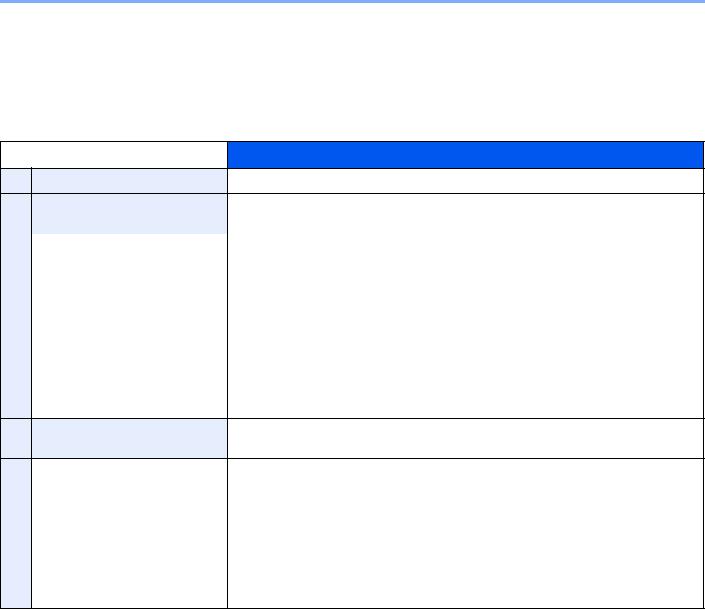
> About the Operation Guide (this Guide)
About the Operation Guide (this Guide)
Structure of the guide
The Operation Guide contains the following chapters.
1Legal and Safety Information Provides precautions regarding use of the machine and trademark information.
2Installing and Setting up the Explains part names, cable connections, installation of the software, login, logout, and
|
Machine |
other matters related to administration of the machine. |
|
|
3 |
Preparation before Use |
Explains preparations and settings that are required in order to use the machine, such |
|
as how to use the operation panel, load paper, and create an address book. |
||
|
4 |
Printing from PC |
Explains functions that are available when the machine is used as a printer. |
|
5 |
Operation on the Machine |
Explains the basic procedures for using the machine, such as placing originals, making |
|
copies, sending documents, and using document boxes. |
||
|
6 |
Using Various Functions |
Explains convenient functions that are available on the machine. |
|
7 |
Status/Job Cancel |
Explains how to check the status of a job and the job history, and how to cancel jobs |
|
being printed or waiting to print. Also explains how to check paper and toner levels, how |
||
|
to check the device status, and how to cancel fax transmission. |
||
8Setup and Registration (System Explains System Menu and how it relates to the operation of the machine.
Menu)
|
9 |
User Authentication and |
Explains user login and job accounting. |
|
Accounting (User Login, Job |
||
|
Accounting) |
||
|
10 |
Troubleshooting |
Explains what to do when toner runs out, an error is displayed, or a paper jam or other |
|
problem occurs. |
||
|
11 |
Appendix |
Describes convenient options that are available for the machine. Provides information |
|
on media types and paper sizes, and gives a glossary of terms. Explains how to enter |
||
|
characters, and lists the specifications of the machine. |
||
xviii

> About the Operation Guide (this Guide)
Conventions Used in This Guide
Adobe Reader XI is used as an example in the explanations below.
Click an item in the Table of Contents to jump to the corresponding page.
NOTE
Click to move from the current page to the previously displayed page. This is convenient when you want to return to the page from which you jumped to the current page.

Indicates operational requirements and restrictions to operate the machine correctly, and avoid damage to the machine or property.

Indicates supplemental explanations and reference information for operations.
Refer to
Click the underlined text to jump to the corresponding page.

Indicates that personal injury or mechanical damage may result from insufficient attention to or incorrect compliance with the related points.
The items that appear in Adobe Reader vary depending on how it is used. If the Table of Contents or tools do not appear, refer to Adobe Reader Help.
Certain items are indicated in this guide by the conventions described below.
|
Convention |
Description |
|
[Bold] |
Indicates keys and buttons. |
|
«Regular» |
Indicates a message or setting. |
xix

> About the Operation Guide (this Guide)
Conventions used in procedures for operating the machine
In this Operation Guide, continuous operation of the keys on the touch panel is as follows:
|
Actual procedure |
Procedure indicated in this guide |
|
Select the [System Menu/Counter] key. |
[System Menu/Counter] key > [Common Settings] > [Sound] |
Select [
Select [Common Settings].
Select [Sound].
xx

> Menu Map
Menu Map
This is a list of menus displayed on the touch panel. Depending on the settings, some menus may not be displayed. Some menu names may differ from their reference titles.
or
Paper Selection (page 6-11)
Zoom (page 6-18)
Density (page 6-13)
Duplex (page 6-22)
Combine (page 6-20)
Quiet Mode (page 6-25)
|
Functions |
Collate (page 6-13) |
|
ID Card Copy (page 6-10) |
|
|
Original Size (page 6-10) |
|
|
Original Orientation (page 6-12) |
|
|
Mixed Size Originals (page 6-13) |
|
|
Original Image (page 6-14) |
|
|
EcoPrint (page 6-15) |
|
|
Sharpness (page 6-16) |
|
|
Contrast (page 6-16) |
|
|
Background Density Adj. (page 6-17) |
|
|
Prevent Bleed-through (page 6-17) |
|
|
Skip Blank Page (page 6-26) |
|
|
Continuous Scan (page 6-24) |
|
|
Job Finish Notice (page 6-24) |
|
|
File Name Entry (page 6-25) |
|
|
Priority Override (page 6-25) |
|
xxi
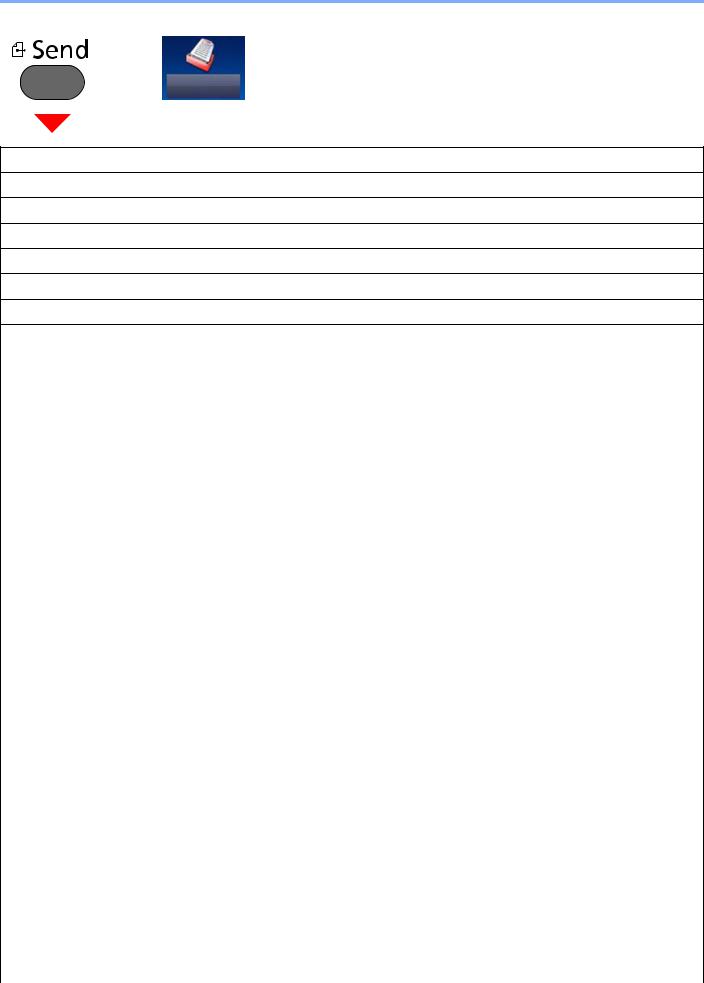
> Menu Map
or
Send
One Touch Key (page 5-22)
Address Book (page 5-20)
Ext Address Book (Refer to Command Center RX User Guide.)
E-mail (page 5-22)
Folder (page 5-23)
FAX Server (page 5-34)
FAX (Refer to FAX Operation Guide.)
WSD Scan (page 5-31)
|
Functions |
Color Selection (page 6-15) |
|
Quiet Mode (page 6-25) |
|
|
File Format (page 6-29) |
|
|
Original Size (page 6-10) |
|
|
Original Orientation (page 6-12) |
|
|
Mixed Size Originals (page 6-13) |
|
|
Duplex (page 6-27) |
|
|
Sending Size (page 6-28) |
|
|
File Separation (page 6-33) |
|
|
Scan Resolution (page 6-33) |
|
|
Density (page 6-13) |
|
|
Original Image (page 6-14) |
|
|
Sharpness (page 6-16) |
|
|
Contrast (page 6-16) |
|
|
Background Density Adj. (page 6-17) |
|
|
Prevent Bleed-through (page 6-17) |
|
|
Skip Blank Page (page 6-26) |
|
|
FAX TX Resolution (Refer to FAX Operation Guide.) |
|
|
Zoom (page 6-18) |
|
|
Continuous Scan (page 6-24) |
|
|
File Name Entry (page 6-25) |
|
|
E-mail Subject/Body (page 6-33) |
|
|
Long Original (page 6-34) |
|
|
Job Finish Notice (page 6-24) |
|
|
FTP Encrypted TX (page 6-34) |
|
xxii
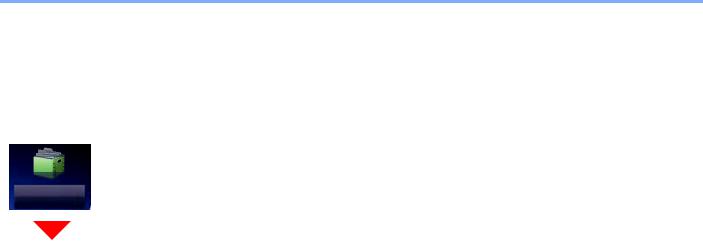
> Menu Map
|
Functions |
FAX Delayed Transmission (Refer to FAX Operation Guide.) |
|
FAX Direct Transmission (Refer to FAX Operation Guide.) |
|
|
FAX Polling RX (Refer to FAX Operation Guide.) |
|
|
FAX TX Report (Refer to FAX Operation Guide.) |
|
Custom Box
|
Custom Box |
Menu |
Store File |
Duplex (page 6-27) |
|
|
Scan Resolution (page 6-33) |
||||
|
Density (page 6-13) |
||||
|
File Name Entry (page 6-25) |
||||
|
Color Selection (page 6-15) |
||||
|
Quiet Mode (page 6-25) |
||||
|
Functions |
Original Size (page 6-10) |
|||
|
Original Orientation (page 6-12) |
||||
|
Mixed Size Originals (page 6-13) |
||||
|
Storing Size (page 6-35) |
||||
|
Original Image (page 6-14) |
||||
|
Sharpness (page 6-16) |
||||
|
Contrast (page 6-16) |
||||
|
Background Density Adj. (page 6-17) |
||||
|
Prevent Bleed-through (page 6-17) |
||||
|
Skip Blank Page (page 6-26) |
||||
|
Zoom (page 6-18) |
||||
|
Continuous Scan (page 6-24) |
||||
|
Job Finish Notice (page 6-24) |
||||
|
|
Paper Selection (page 6-11) |
|||
|
Collate (page 6-13) |
||||
|
Duplex (page 6-22) |
||||
|
Delete after Print (page 6-34) |
||||
|
Quiet Mode (page 6-25) |
||||
|
Functions |
Priority Override (page 6-25) |
|||
|
File Name Entry (page 6-25) |
||||
|
Job Finish Notice (page 6-24) |
||||
|
EcoPrint (page 6-15) |
||||
xxiii

> Menu Map
|
Custom Box |
Menu |
Send |
One Touch Key (page 5-22) |
|
|
Address Book (page 5-20) |
||||
|
Ext Address Book (Refer to Command Center RX User Guide.) |
||||
|
E-mail (page 5-22) |
||||
|
Folder (page 5-23) |
||||
|
FAX Server (Refer to FAX Operation Guide.) |
||||
|
FAX (Refer to FAX Operation Guide.) |
||||
|
Functions |
File Format (page 6-29) |
|||
|
File Separation (page 6-33) |
||||
|
Resolution (page 6-33) |
||||
|
FAX TX Resolution (Refer to FAX Operation |
||||
|
Guide.) |
||||
|
File Name Entry (page 6-25) |
||||
|
E-mail Subject/Body (page 6-33) |
||||
|
Job Finish Notice (page 6-24) |
||||
|
FTP Encrypted TX (page 6-34) |
||||
|
FAX Delayed Transmission (Refer to FAX |
||||
|
Operation Guide.) |
||||
|
FAX TX Report (Refer to FAX Operation Guide.) |
||||
|
Delete after Transmitted (page 6-34) |
||||
|
Job Box |
Private Print/Stored Job (page 4-13) |
|
Quick Copy/Proof and Hold (page 4-17) |
|
xxiv

> Menu Map
Removable
Memory
|
Removable Memory |
|
Paper Selection (page 6-11) |
||
|
Collate (page 6-13) |
||||
|
Duplex (page 6-22) |
||||
|
Quiet Mode (page 6-25) |
||||
|
Functions |
EcoPrint (page 6-15) |
|||
|
Job Finish Notice (page 6-24) |
||||
|
File Name Entry (page 6-25) |
||||
|
Priority Override (page 6-25) |
||||
|
Encrypted PDF Password (page 6-35) |
||||
|
JPEG/TIFF Print (page 6-36) |
||||
|
XPS Fit to Page (page 6-36) |
||||
|
Menu |
Store File |
File Format (page 6-29) |
||
|
Duplex (page 6-27) |
||||
|
Scan Resolution (page 6-33) |
||||
|
Density (page 6-13) |
||||
|
File Name Entry (page 6-25) |
||||
|
Color Selection (page 6-15) |
||||
|
Functions |
Quiet Mode (page 6-25) |
|||
|
Original Size (page 6-10) |
||||
|
Original Orientation (page 6-12) |
||||
|
Mixed Size Originals (page 6-13) |
||||
|
Storing Size (page 6-35) |
||||
|
Original Image (page 6-14) |
||||
|
Sharpness (page 6-16) |
||||
|
Contrast (page 6-16) |
||||
|
Background Density Adj. (page 6-17) |
||||
|
Prevent Bleed-through (page 6-17) |
||||
|
Skip Blank Page (page 6-26) |
||||
|
Zoom (page 6-18) |
||||
|
Continuous Scan (page 6-24) |
||||
|
Long Original (page 6-34) |
||||
|
Job Finish Notice (page 6-24) |
||||
|
File Separation (page 6-33) |
||||
xxv

> Menu Map
Sub Address Box (Refer to FAX Operation Guide.)
Polling Box
Polling Box (Refer to FAX Operation Guide.)
FAX Memory RX Box (Refer to FAX Operation Guide.)
xxvi
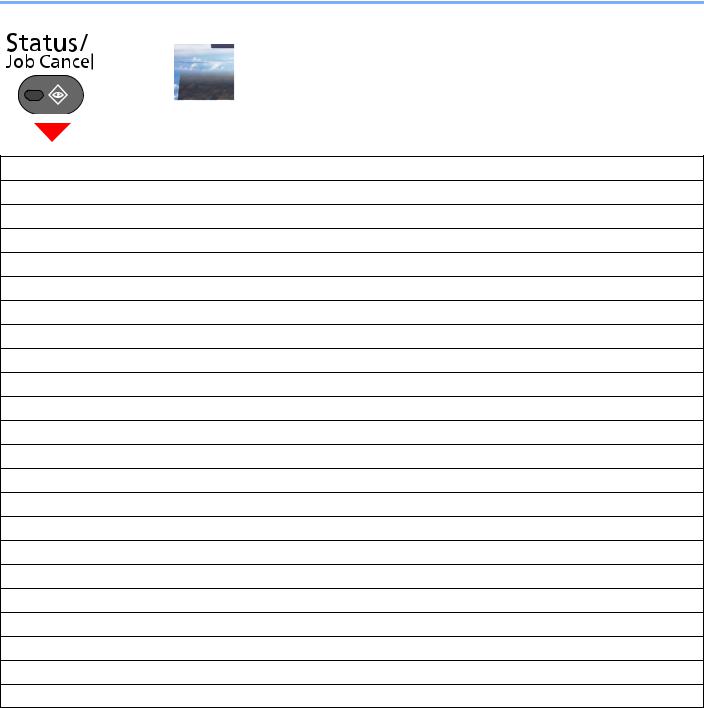
> Menu Map
or
Status/
Job Cancel
Print Job Status (page 7-8)
Send Job Status (page 7-4)
Store Job Status (page 7-5)
Scheduled Job (page 7-6)
Print Job Log (page 7-8)
Send Job Log (page 7-8)
Store Job Log (page 7-8)
FAX Job Log (Refer to FAX Operation Guide.)
Scanner (page 7-11)
Printer (page 7-11)
FAX Memory RX Box (refer to FAX Operation Guide.)
FAX (refer to FAX Operation Guide.)
Toner Status (page 7-13)
Paper Status (page 7-13)
Removable Memory (page 7-11)
USB Keyboard (page 7-11)
Bluetooth Keyboard (page 7-11)
Network Connection Status (page 7-11)
Option Network Connection Status (page 7-12)
Wi-Fi Direct (page 7-12)
Wireless Network (page 7-12)
Wi-Fi (page 7-12)
SSD (page 7-12)
xxvii

> Menu Map
or
System
Menu
|
Quick Setup Wizard |
FAX Setup (page 2-35) |
||
|
Paper Setup (page 2-35) |
|||
|
Energy Saver Setup (page 2-35) |
|||
|
Network Setup (page 2-36) |
|||
|
Language (page 8-5) |
|||
|
Report |
Report Print |
Status Page (page 8-5) |
|
|
Font List (page 8-5) |
|||
|
Network Status (page 8-6) |
|||
|
Service Status (page 8-6) |
|||
|
Accounting Report (page 8-6) |
|||
|
Sub Address Box List (Refer to FAX Operation Guide.) |
|||
|
FAX List (Index) (Refer to FAX Operation Guide.) |
|||
|
FAX List (No.) (Refer to FAX Operation Guide.) |
|||
|
Outgoing FAX Report (Refer to FAX Operation Guide.) |
|||
|
Incoming FAX Report (Refer to FAX Operation Guide.) |
|||
|
Optional Network Status (page 8-6) |
|||
|
Data Sanitization Report (page 8-6) |
|||
|
Admin Report |
Outgoing FAX Report (Refer to FAX Operation Guide.) |
||
|
Settings |
|||
|
Incoming FAX Report (Refer to FAX Operation Guide.) |
|||
|
Result Report |
Send Result Report (page 8-7) |
||
|
Setting |
|||
|
RX Result Report (Refer to FAX Operation Guide.) |
|||
|
Job Finish Notice Setting (page 8-7) |
|||
|
Sending Log History |
Send Log History (page 8-7) |
||
|
Auto Sending (page 8-7) |
|||
|
Destination (page 8-7) |
|||
|
Job Log Subject (page 8-7) |
|||
|
SSFC Log Subject (page 8-7) |
|||
|
Personal Information (page 8-7) |
|||
|
Counter |
Printed Pages (page 2-50) |
||
|
Scanned Pages (page 2-50) |
|||
|
User Property (page 9-9) |
|||
xxviii

> Menu Map
|
Cassette/MP Tray |
Cassette 1 (page 8-8) |
|
|
Settings |
||
|
Cassette 2 (page 8-8) |
||
|
Cassette 3 (page 8-8) |
||
|
Cassette 4 (page 8-8) |
||
|
Cassette 5 (page 8-8) |
||
|
Multi Purpose Tray (page 8-9) |
||
|
Common Settings |
Default Screen (page 8-10) |
|
|
Sound |
Buzzer (page 8-10) |
|
|
FAX Speaker Volume (Refer to FAX Operation Guide.) |
||
|
FAX Monitor Volume (Refer to FAX Operation Guide.) |
||
|
Original Settings |
Custom Original Size (page 8-11) |
|
|
Auto Detect Original Size (DP) (page 8-11) |
||
|
Default Original Size (page 8-11) |
||
|
Default Original Size (Platen) (page 8-11) |
||
|
Paper Settings |
Custom Paper Size (page 8-12) |
|
|
Media Type Settings (page 8-14) |
||
|
Default Paper Source (page 8-13) |
||
|
Paper Selection (page 8-13) |
||
|
Media for Auto (B & W) (page 8-13) |
||
|
Special Paper Action (page 8-13) |
||
|
Show Paper Setup Message (page 8-13) |
||
|
Function Defaults |
File Format (page 8-15) |
|
|
Original Orientation (Copy) (page 8-15) |
||
|
Original Orientation (Send/Store) (page 8-15) |
||
|
Collate (page 8-15) |
||
|
File Separation (page 8-15) |
||
|
Scan Resolution (page 8-15) |
||
|
Color Selection (page 8-15) |
||
|
Original Image (Copy) (page 8-15) |
||
|
Original Image (Send/Store) (page 8-15) |
||
|
Background Density Adj. (Copy) (page 8-15) |
||
|
Background Density Adj. (Send/Store) (page 8-15) |
||
|
EcoPrint (page 8-15) |
||
|
Prevent Bleed-through (Copy) (page 8-15) |
||
|
Prevent Bleed-through (Send/Store) (page 8-15) |
||
|
Skip Blank Page (Copy) (page 8-16) |
||
|
Skip Blank Page (Send/Store) (page 8-16) |
||
xxix

> Menu Map
|
Common Settings |
Function Defaults |
FAX TX Resolution (Refer to FAX Operation Guide.) |
||
|
Zoom (page 8-16) |
||||
|
Continuous Scan (Copy) (page 8-16) |
||||
|
Continuous Scan (FAX) (Refer to FAX Operation Guide.) |
||||
|
Continuous Scan (Send/Store) (page 8-16) |
||||
|
File Name Entry (page 8-16) |
||||
|
E-mail Subject/Body (page 8-16) |
||||
|
FTP Encrypted TX (page 8-16) |
||||
|
JPEG/TIFF Print (page 8-16) |
||||
|
XPS Fit to Page (page 8-16) |
||||
|
Detail Settings |
Image Quality (page 8-17) |
|||
|
PDF/A (page 8-17) |
||||
|
High Comp. PDF Image (page 8-17) |
||||
|
OCR Text Recognition (page 8-17) |
||||
|
Primary OCR Language (page 8-17) |
||||
|
OCR Output Format (page 8-17) |
||||
|
Detect Items to Skip (Copy) (page 8-17) |
||||
|
Detect Items to Skip (Send/Store) (page 8-17) |
||||
Preset Limit (page 8-17)
|
Error Handling |
Duplexing Error (page 8-17) |
|
Paper Mismatch Error (page 8-17) |
|
|
Inserted Paper Mismatch (page 8-18) |
|
|
Multi Originals Fed (page 8-18) |
|
Measurement (page 8-18)
Low Toner Alert (page 8-18)
Keyboard Layout (page 8-18)
Optional Keyboard Type (page 8-18)
Display Status/Log (page 8-19)
Remote Printing (page 8-19)
Function Key Assignment (page 8-19)
Show Power Off Message (page 8-19)
Message Banner Print (page 8-20)
Home Customize Desktop (page 2-14)
Customize Taskbar (page 2-14)
Wallpaper (page 2-14)
Copy Auto Paper Selection (page 8-20)
Auto % Priority (page 8-20)
Reserve Next Priority (page 8-20)
xxx

> Menu Map
|
Send |
Dest. Check before Send (page 8-21) |
||||
|
Entry Check for New Dest. (page 8-21) |
|||||
|
Send and Forward (page 8-21) |
|||||
|
Color TIFF Compression (page 8-21) |
|||||
|
Default Screen (page 8-21) |
|||||
|
New Destination Entry (page 8-21) |
|||||
|
Recall Destination (page 8-21) |
|||||
|
Broadcast (page 8-21) |
|||||
|
OCR Text Recognition Action (page 8-21) |
|||||
|
Document Box |
Custom Box (page 5-39) |
||||
|
Sub Address Box (Refer to FAX Operation Guide.) |
|||||
|
Job Box |
Quick Copy Job Retention (page 8-22) |
||||
|
Deletion of Job Retention (page 8-22) |
|||||
|
Storage Media (page 8-22) |
|||||
|
Polling Box (Refer to FAX Operation Guide.) |
|||||
|
FAX Memory RX Box (Refer to FAX Operation Guide.) |
|||||
|
FAX (Refer to FAX Operation Guide.) |
|||||
|
Application (page 5-11) |
|||||
|
Internet |
Proxy (page 8-23) |
||||
|
Address Book/One |
Address Book (page 3-28) |
||||
|
Touch |
|||||
|
One Touch Key (page 3-33) |
|||||
|
Address Book |
Sort (page 8-23) |
||||
|
Defaults |
|||||
|
Address Book (page 8-23) |
|||||
|
Edit Restriction (page 8-24) |
|||||
|
Print List (Refer to FAX Operation Guide.) |
|||||
|
User Login/Job |
User Login Settings |
User Login (page 9-3) |
|||
|
Accounting |
|||||
|
Local User List (page 9-6) |
|||||
|
ID Card Settings |
Keyboard Login (page 9-30) |
||||
|
Additional Authentication (page 9-30) |
|||||
|
PIN Login (page 9-31) |
|||||
|
Simple Login |
Simple Login (page 9-27) |
||||
|
Settings |
|||||
|
Simple Login Setup (page 9-28) |
|||||
|
Local User Authorization (page 9-18) |
|||||
xxxi

> Menu Map
|
User Login/Job |
User Login Settings |
Authentication |
User Account Lockout Settings (page 9-4) |
|
|
Accounting |
Security |
|||
|
Password Policy Settings (page 9-5) |
||||
|
Group Authorization |
Group Authorization (page 9-19) |
|||
|
Set. |
||||
|
Group List (page 9-20) |
||||
|
Guest Authorization |
Guest Authorization (page 9-22) |
|||
|
Set. |
||||
|
Guest Property (page 9-23) |
||||
|
Obtain NW User Property (page 9-25) |
||||
|
Job Accounting |
Job Accounting (page 9-34) |
|||
|
Settings |
||||
|
Job Accounting Access (page 9-35) |
||||
|
Print Accounting Report (page 9-46) |
||||
|
Total Job Accounting (page 9-45) |
||||
|
Each Job Accounting (page 9-45) |
||||
|
Accounting List (page 9-36) |
||||
|
Default Setting |
Apply Limit (page 9-44) |
|||
|
Copy/Printer Count (page 9-44) |
||||
|
Default Counter Limit (page 9-44) |
||||
|
Unknown User |
Unknown ID Job (page 9-48) |
|||
|
Settings |
||||
|
User Property (page 9-49) |
||||
|
Printer |
Emulation (page 8-24) |
|||
|
EcoPrint (page 8-24) |
||||
|
Override A4/Letter (page 8-25) |
||||
|
Duplex (page 8-25) |
||||
|
Paper Output (page 8-25) |
||||
|
Copies (page 8-25) |
||||
|
Orientation (page 8-25) |
||||
|
Wide A4 (page 8-25) |
||||
|
Form Feed TimeOut (page 8-25) |
||||
|
LF Action (page 8-25) |
||||
|
CR Action (page 8-25) |
||||
|
Job Name (page 8-25) |
||||
|
User Name (page 8-25) |
||||
|
MP Tray Priority (page 8-25) |
||||
|
Paper Feed Mode (page 8-26) |
||||
|
Auto cassette Change (page 8-26) |
||||
|
Resolution (page 8-26) |
||||
|
KIR (page 8-26) |
||||
|
Printing Job Terminator (page 8-26) |
||||
xxxii

> Menu Map
|
System/Network |
Network |
Host Name (page 8-27) |
||
|
Wi-Fi Direct Settings |
Wi-Fi Direct (page 8-27) |
|||
|
Device Name (page 8-27) |
||||
|
IP Address (page 8-27) |
||||
|
Auto Disconnect (page 8-27) |
||||
|
Wi-Fi Settings |
Wi-Fi (page 8-27) |
|||
|
Setup (page 8-28) |
||||
|
TCP/IP Settings (page 8-29) |
||||
|
Restart Network (page 8-30) |
||||
|
Wired Network |
TCP/IP Settings (page 8-30) |
|||
|
Settings |
||||
|
LAN Interface (page 8-30) |
||||
|
Bonjour |
Protocol Setting (page 8-31) |
|||
|
Available Network (Wi-Fi Direct) (page 8-31) |
||||
|
Available Network (Wi-Fi) (page 8-31) |
||||
|
Available Network (Wired Network) (page 8-31) |
||||
|
IP Filter (IPv4) (page 8-31) |
||||
|
IP Filter (IPv6) (page 8-31) |
||||
|
IPSec (page 8-31) |
||||
|
Protocol Settings (page 8-31) |
||||
|
Security Settings |
SSL (page 8-37) |
|||
|
IPP Security (page 8-37) |
||||
|
HTTP Security (page 8-37) |
||||
|
SMTP Security (page 8-37) |
||||
|
POP3 Security (User 1) (page 8-37) |
||||
|
POP3 Security (User 2) (page 8-37) |
||||
|
POP3 Security (User 3) (page 8-37) |
||||
|
Ping (page 8-37) |
||||
|
Restart Network (page 8-38) |
||||
|
Proxy (page 8-38) |
||||
|
Optional Network |
Setup (page 8-38) |
|||
|
Basic (page 8-39) |
||||
|
Primary Network (Client) (page 8-40) |
||||
|
Interface Block |
USB Host (page 8-41) |
|||
|
Setting |
||||
|
USB Device (page 8-41) |
||||
|
USB Storage (page 8-41) |
||||
|
Optional Interface (page 8-41) |
||||
|
Bluetooth Settings (page 8-41) |
||||
|
Security Level (page 8-41) |
||||
xxxiii

> Menu Map
|
System/Network |
Restart (page 8-42) |
||
|
RAM Disk Setting (page 8-42) |
|||
|
Optional Memory (page 8-42) |
|||
|
Data Security (page 8-43) |
|||
|
OCR Dictionary Installation (page 8-44) |
|||
|
Optional Function (page 8-45) |
|||
|
FAX Server Settings (page 8-45) |
|||
|
Date/Timer/Energy |
Date/Time (page 8-46) |
||
|
Saver |
|||
|
Date Format (page 8-46) |
|||
|
Time Zone (page 8-46) |
|||
|
Auto Panel Reset (page 8-46) |
|||
|
Panel Reset Timer (page 8-46) |
|||
|
Low Power Timer (page 8-46) |
|||
|
Sleep Level (models except for Europe) (page 8-46) |
|||
|
Sleep Rules (models for Europe) (page 8-47) |
|||
|
Sleep Timer (page 8-47) |
|||
|
Energy Saver Recovery Level (page 8-47) |
|||
|
Weekly Timer Settings (page 8-47) |
|||
|
Power Off Rule (models for Europe) (page 8-48) |
|||
|
Power Off Timer (models for Europe) (page 8-48) |
|||
|
Auto Error Clear (page 8-48) |
|||
|
Error Clear Timer (page 8-48) |
|||
|
Unusable Time (Refer to FAX Operation Guide.) |
|||
|
Ping Timeout (page 8-48) |
|||
|
Adjustment/ |
Quiet Mode Settings |
Quiet Mode (page 8-49) |
|
|
Maintenance |
|||
|
Specify for Each Job (page 8-49) |
|||
|
Density Adjustment |
Copy (page 8-49) |
||
|
Send/Box (page 8-49) |
|||
|
Sharpness |
Copy (page 8-49) |
||
|
Adjustment |
|||
|
Send/Box (page 8-49) |
|||
|
Contrast |
Copy (page 8-49) |
||
|
Send/Box (page 8-49) |
|||
|
Background Density |
Copy (Auto) (page 8-49) |
||
|
Adj. |
|||
|
Send/Box (Auto) (page 8-49) |
|||
|
Toner Save Level |
Copy (page 8-49) |
||
|
(EcoPrint) |
|||
|
Printer (page 8-49) |
|||
|
Print Density (page 8-49) |
|||
|
Auto Color Correction (page 8-50) |
|||
xxxiv

> Menu Map
|
Adjustment/ |
Correcting Black Line (page 8-50) |
|
|
Maintenance |
||
|
Display Brightness (page 8-50) |
||
|
Drum Refresh 1 (page 8-50) |
||
|
Drum Refresh 2 (page 8-50) |
||
|
Auto Drum Refresh (page 8-50) |
||
|
Service Setting (page 8-50) |
||
xxxv
1Legal and Safety Information
Please read this information before using your machine. This chapter provides information on the following topics.
|
Notice …………………………………………………………………………………………………………………………………………….. |
1-2 |
|
Safety Conventions in This Guide …………………………………………………………………………………………….. |
1-2 |
|
Environment …………………………………………………………………………………………………………………………… |
1-3 |
|
Precautions for Use ………………………………………………………………………………………………………………… |
1-4 |
|
Laser Safety (Europe) ……………………………………………………………………………………………………………… |
1-5 |
|
SAFETY OF LASER BEAM (USA) ……………………………………………………………………………………………. |
1-6 |
|
Safety Instructions Regarding the Disconnection of Power …………………………………………………………… |
1-7 |
|
Compliance and Conformity …………………………………………………………………………………………………….. |
1-7 |
|
Other precautions (for users in California, the United States) ……………………………………………………….. |
1-7 |
|
Warranty (the United States and Canada) ………………………………………………………………………………….. |
1-8 |
|
Legal Restriction on Copying/Scanning ……………………………………………………………………………………. |
1-10 |
|
EN ISO 7779 ………………………………………………………………………………………………………………………… |
1-10 |
|
EK1-ITB 2000 ………………………………………………………………………………………………………………………. |
1-10 |
|
Wireless Connection (Mexico only) …………………………………………………………………………………………. |
1-10 |
|
Security Precautions when Using Wireless LAN (If equipped) …………………………………………………….. |
1-10 |
|
Limited Use of This Product (If equipped) ………………………………………………………………………………… |
1-11 |
|
Legal Information ………………………………………………………………………………………………………………….. |
1-12 |
|
Energy Saving Control Function ……………………………………………………………………………………………… |
1-18 |
|
Automatic 2-Sided Print Function ……………………………………………………………………………………………. |
1-18 |
|
Resource Saving — Paper ……………………………………………………………………………………………………….. |
1-18 |
|
Environmental benefits of «Power Management» ……………………………………………………………………….. |
1-18 |
|
Energy Star (ENERGY STAR®) Program ………………………………………………………………………………… |
1-19 |
1-1

Legal and Safety Information > Notice
Notice
Safety Conventions in This Guide
The sections of this guide and parts of the machine marked with symbols are safety warnings meant to protect the user, other individuals and surrounding objects, and ensure correct and safe usage of the machine. The symbols and their meanings are indicated below.
WARNING: Indicates that serious injury or even death may result from insufficient attention to or incorrect compliance with the related points.
CAUTION: Indicates that personal injury or mechanical damage may result from insufficient attention to or incorrect compliance with the related points.
Symbols
The symbol indicates that the related section includes safety warnings. Specific points of attention are indicated inside the symbol.


The 
… [Warning of prohibited action]
… [Disassembly prohibited]
The symbol indicates that the related section includes information on actions which must be performed. Specifics of the required action are indicated inside the symbol.
… [Alert of required action]
… [Remove the power plug from the outlet]
… [Always connect the machine to an outlet with a ground connection]
Please contact your service representative to order a replacement if the safety warnings in this Operation Guide are illegible or if the guide itself is missing (fee required).
NOTE
An original which resembles a bank note closely may not be copied properly in some rare cases because this machine is equipped with a counterfeiting prevention function.
1-2

Legal and Safety Information > Notice
Environment
The service environmental conditions are as follows:
|
Temperature |
50 to 90.5 °F (10 to 32.5 °C) |
|
Humidity |
15 to 80% |
Avoid the following locations when selecting a site for the machine.
•Avoid locations near a window or with exposure to direct sunlight.
•Avoid locations with vibrations.
•Avoid locations with drastic temperature fluctuations.
•Avoid locations with direct exposure to hot or cold air.
•Avoid poorly ventilated locations.
If the floor is delicate against casters, when this machine is moved after installation, the floor material may be damaged.
During copying, some ozone is released, but the amount does not cause any ill effect to one’s health. If, however, the machine is used over a long period of time in a poorly ventilated room or when making an extremely large number of copies, the smell may become unpleasant. To maintain the appropriate environment for copy work, it is suggested that the room be properly ventilated.
1-3

Legal and Safety Information > Notice
Precautions for Use
Cautions when handling consumables

Do not attempt to incinerate parts which contain toner. Dangerous sparks may cause burns. Keep parts which contain toner out of the reach of children.
If toner happens to spill from parts which contain toner, avoid inhalation and ingestion, as well as contact with your eyes and skin.
•If you do happen to inhale toner, move to a place with fresh air and gargle thoroughly with a large amount of water. If coughing develops, contact a physician.
•If you do happen to ingest toner, rinse your mouth with water and drink 1 or 2 cups of water to dilute the contents of your stomach. If necessary, contact a physician.
•If you do happen to get toner in your eyes, flush them thoroughly with water. If there is any remaining tenderness, contact a physician.
•If toner does happen to get on your skin, wash with soap and water.
Do not attempt to force open or destroy parts which contain toner.
Other precautions
Return the exhausted toner container and waste toner box to your dealer or service representative. The collected toner container and waste toner box will be recycled or disposed in accordance with the relevant regulations.
Store the machine while avoiding exposure to direct sunlight.
Store the machine in a place where the temperature stays below 40 °C while avoiding sharp changes of temperature and humidity.
If the machine will not be used for an extended period of time, remove the paper from the cassette and the Multi Purpose (MP) Tray, return it to its original package and reseal it.
1-4

Legal and Safety Information > Notice
Laser Safety (Europe)
Laser radiation could be hazardous to the human body. For this reason, laser radiation emitted inside this machine is hermetically sealed within the protective housing and external cover. In the normal operation of the product by user, no radiation can leak from the machine.
This machine is classified as Class 1 laser product under IEC/EN 60825-1:2014. Regarding CLASS 1 laser products, information is provided on the rating label.
1-5

Legal and Safety Information > Notice
SAFETY OF LASER BEAM (USA)
1. Safety of laser beam
This machine has been certified by the manufacturer to Class 1 level under the radiation performance standards established by the U.S.DHHS (Department of Health and Human Services) in 1968. This indicates that the product is safe to use during normal operation and maintenance. The laser optical system, enclosed in a protective housing and sealed within the external covers, never permits the laser beam to escape.
2. The CDRH Act
A laser-product-related act was implemented on Aug. 2, 1976, by the Center for Devices and Radiological Health (CDRH) of the U.S. Food and Drug Administration (FDA). This act prohibits the sale of laser products in the U.S. without certification, and applies to laser products manufactured after Aug. 1, 1976. The label shown below indicates compliance with the CDRH regulations and must be attached to laser products marketed in the United States. On this machine, the label is on the rear.
ECOSYS M3145idn / ECOSYS M3645idn /
ECOSYS M3655idn / ECOSYS M3660idn
3. Maintenance
For safety of the service personnel, follow the maintenance instructions in the other section of this manual.
4. Safety switch
The power to the laser unit is cut off when the front cover is opened.
1-6

Legal and Safety Information > Notice
Safety Instructions Regarding the Disconnection of Power
Caution: The power plug is the main isolation device! Other switches on the equipment are only functional switches and are not suitable for isolating the equipment from the power source.
Attention: Le débranchement de la fiche secteur est le seul moyen de mettre l’appareil hors tension. Les interrupteurs sur l’appareil ne sont que des interrupteurs de fonctionnement: ils ne mettent pas l’appareil hors tension.
Compliance and Conformity
Hereby, KYOCERA Document Solutions Inc. declares that the radio equipment type ECOSYS M3145idn/ ECOSYS M3645idn/ECOSYS M3655idn/ECOSYS M3660idn are in compliance with Directive 2014/53/EU.
The full text of the EU declaration of conformity is available at the following internet address: https://www.kyoceradocumentsolutions.eu/index/service/dlc.html
|
Module name |
Software Ver. |
Frequency band in |
Maximum radio-frequency power transmitted in the |
|
which the radio |
frequency band in which the radio equipment |
||
|
equipment operates: |
operates: |
||
|
IB-51 (Option) |
2.2.6 |
2.4GHz |
100mW |
|
IB-36 (Option) |
2014.12 |
2.4GHz |
100mW |
This equipment has been tested and found to comply with the limits for a Class B digital device, pursuant to Part 15 of the FCC Rules.
These limits are designed to provide reasonable protection against harmful interference in a residential installation. This equipment generates, uses and can radiate radio frequency energy and, if not installed and used in accordance with the instructions, may cause harmful interference to radio communications. However, there is no guarantee that interference will not occur in a particular installation. If this equipment does cause harmful interference to radio or television reception, which can be determined by turning the equipment off and on, the user is encouraged to try to correct the interference by one or more of the following measures:
•Reorient or relocate the receiving antenna.
•Increase the separation between the equipment and receiver.
•Connect the equipment into an outlet on a circuit different from that to which the receiver is connected.
•Consult the dealer or an experienced radio/TV technician for help.
•The use of a non-shielded interface cable with the referenced device is prohibited.
CAUTION — The changes or modifications not expressly approved by the party responsible for compliance could void the user’s authority to operate the equipment.
This device complies with Part 15 of FCC Rules.
Operation is subject to the following two conditions; (1) this device may not cause harmful interference, and (2) this device must accept any interference received, including interference that may cause undesired operation.
This device complies with Industry Canada licence-exempt RSS standard(s). Operation is subject to the following two conditions: (1) this device may not cause interference, and (2) this device must accept any interference, including interference that may cause undesired operation of the device.
The antenna(s) used for this transmitter must be installed to provide a separation distance of at least 20 cm from all persons and must not be co-located or operating in conjunction with any other transmitter.
* The above statements are valid only in the United States of America and Canada. NOTE — Use shielded interface cables.
Other precautions
(for users in California, the United States)
Perchlorate Material — special handling may apply. See www.dtsc.ca.gov/hazardouswaste/perchlorate.
1-7

Legal and Safety Information > Notice
Warranty (the United States and Canada)
ECOSYS M3145idn / M3645idn
MULTIFUNCTIONAL PRODUCT LIMITED WARRANTY
KYOCERA Document Solutions America, Inc. and KYOCERA Document Solutions Canada, Ltd. (both referred to as «KYOCERA») warrant the Customer’s new Multifunctional Product (referred to as «MFP»), and the new accessories installed with the initial installation of the MFP, against any defects in material and workmanship for a period of one year, or 300,000 copies/prints from date of installation, whichever first occurs. In the event the MFP or an accessory is found to be defective within the warranty period, KYOCERA’s only obligation and the Customer’s exclusive remedy shall be replacement of any defective parts. KYOCERA shall have no obligation to furnish labor.
This warranty is valid only for the original retail purchaser (referred to as the «Customer») of a new KYOCERA MFP in the United States of America or Canada, based upon the country of purchase.
In order to obtain performance of this warranty, the Customer must immediately notify the Authorized KYOCERA Dealer from whom the product was purchased. If the KYOCERA Dealer is not able to provide service, write to KYOCERA at the address below for the name and address of the Authorized KYOCERA Dealer in your area, or check KYOCERA’s website at http://www.kyoceradocumentsolutions.com/us for KYOCERA Document Solutions America, Inc. or http://www.kyoceradocumentsolutions.ca for KYOCERA Document Solutions Canada, Ltd.
This warranty does not cover MFPs or accessories which: (a) have become damaged due to operator negligence, misuse, accidents, improper storage or unusual physical or electrical stress,
(b) have used parts or supplies which are not genuine KYOCERA brand parts or supplies, (c) have been installed or serviced by a technician not employed by KYOCERA or an Authorized KYOCERA Dealer, or (d) have had the serial number modified, altered, or removed.
This warranty gives the Customer specific legal rights. The Customer may also have other rights, which vary from state to state, or province to province. Neither the seller, nor any other person, is authorized to extend the time period or expand this warranty on behalf of KYOCERA.
THIS WARRANTY IS MADE IN LIEU OF ALL OTHER WARRANTIES AND CONDITIONS, EXPRESS OR IMPLIED, AND KYOCERA SPECIFICALLY DISCLAIMS ANY IMPLIED WARRANTY OR CONDITION OF MERCHANTABILITY OR FITNESS FOR A PARTICULAR PURPOSE. THIS WARRANTY SHALL NOT EXTEND TO, AND KYOCERA SHALL NOT BE LIABLE FOR, ANY INCIDENTAL OR CONSEQUENTIAL DAMAGES WHICH MAY ARISE OUT OF THE USE OF, OR INABILITY TO USE, THE MFP.
|
KYOCERA Document Solutions America, Inc. |
KYOCERA Document Solutions Canada, Ltd. |
|
225 Sand Road, P.O. Box 40008 |
6120 Kestrel Rd., Mississauga, ON L5T 1S8, |
|
Fairfield, New Jersey 07004-0008, USA |
Canada |
1-8

Legal and Safety Information > Notice
ECOSYS M3655idn / M3660idn
MULTIFUNCTIONAL PRODUCT LIMITED WARRANTY
KYOCERA Document Solutions America, Inc. and KYOCERA Document Solutions Canada, Ltd. (both referred to as «KYOCERA») warrant the Customer’s new Multifunctional Product (referred to as «MFP»), and the new accessories installed with the initial installation of the MFP, against any defects in material and workmanship for a period of one year, or 500,000 copies/prints from date of installation, whichever first occurs. In the event the MFP or an accessory is found to be defective within the warranty period, KYOCERA’s only obligation and the Customer’s exclusive remedy shall be replacement of any defective parts. KYOCERA shall have no obligation to furnish labor.
This warranty is valid only for the original retail purchaser (referred to as the «Customer») of a new KYOCERA MFP in the United States of America or Canada, based upon the country of purchase.
In order to obtain performance of this warranty, the Customer must immediately notify the Authorized KYOCERA Dealer from whom the product was purchased. If the KYOCERA Dealer is not able to provide service, write to KYOCERA at the address below for the name and address of the Authorized KYOCERA Dealer in your area, or check KYOCERA’s website at http://www.kyoceradocumentsolutions.com/us for KYOCERA Document Solutions America, Inc. or http://www.kyoceradocumentsolutions.ca for KYOCERA Document Solutions Canada, Ltd.
This warranty does not cover MFPs or accessories which: (a) have become damaged due to operator negligence, misuse, accidents, improper storage or unusual physical or electrical stress,
(b) have used parts or supplies which are not genuine KYOCERA brand parts or supplies, (c) have been installed or serviced by a technician not employed by KYOCERA or an Authorized KYOCERA Dealer, or (d) have had the serial number modified, altered, or removed.
This warranty gives the Customer specific legal rights. The Customer may also have other rights, which vary from state to state, or province to province. Neither the seller, nor any other person, is authorized to extend the time period or expand this warranty on behalf of KYOCERA.
THIS WARRANTY IS MADE IN LIEU OF ALL OTHER WARRANTIES AND CONDITIONS, EXPRESS OR IMPLIED, AND KYOCERA SPECIFICALLY DISCLAIMS ANY IMPLIED WARRANTY OR CONDITION OF MERCHANTABILITY OR FITNESS FOR A PARTICULAR PURPOSE. THIS WARRANTY SHALL NOT EXTEND TO, AND KYOCERA SHALL NOT BE LIABLE FOR, ANY INCIDENTAL OR CONSEQUENTIAL DAMAGES WHICH MAY ARISE OUT OF THE USE OF, OR INABILITY TO USE, THE MFP.
|
KYOCERA Document Solutions America, Inc. |
KYOCERA Document Solutions Canada, Ltd. |
|
225 Sand Road, P.O. Box 40008 |
6120 Kestrel Rd., Mississauga, ON L5T 1S8, |
|
Fairfield, New Jersey 07004-0008, USA |
Canada |
1-9

Legal and Safety Information > Notice
Legal Restriction on Copying/Scanning
It may be prohibited to copy/scan copyrighted material without permission of the copyright owner.
Copying/Scanning the following items is prohibited and may be penalized by low. It may not be limited to these items. Do not knowingly copy/scan the items that are not to be copied/scanned.
•Paper money
•Bank note
•Securities
•Stamp
•Passport
•Certificate
Local laws and regulations may prohibit or restrict copying/scanning of other items not mentioned above.
EN ISO 7779
Maschinenlärminformations-Verordnung 3. GPSGV, 06.01.2004: Der höchste Schalldruckpegel beträgt 70 dB (A) oder weniger gemäß EN ISO 7779.
EK1-ITB 2000
Das Gerät ist nicht für die Benutzung im unmittelbaren Gesichtsfeld am Bildschirmarbeitsplatz vorgesehen. Um störende Reflexionen am Bildschirmarbeitsplatz zu vermeiden, darf dieses Produkt nicht im unmittelbaren Gesichtsfeld platziert werden.
Wireless Connection (Mexico only)
The operation of this equipment is subject to the following two conditions:
(1) it is possible that this equipment or device may not cause harmful interference, and (2) this equipment or device must accept any interference, including interference that may cause undesired operation.
La operación de este equipo está sujeta a las siguientes dos condiciones:
(1) es posible que este equipo o dispositivo no cause interferencia perjudicial y (2) este equipo o dispositivo debe aceptar cualquier interferencia, incluyendo la que pueda causar su operación no deseada.
Security Precautions when Using Wireless LAN (If equipped)
Wireless LAN allows information to be exchanged between wireless access points instead of using a network cable, which offers the advantage that a LAN connection can be established freely within an area in which radio waves can be transmitted.
On the other hand, the following problems may occur if security settings are not configured, because radio waves can pass through obstacles (including walls) and reach everywhere within a certain area.
Secretly Viewing Communication Contents
A third person with malicious objectives may intentionally monitor radio waves and gain unauthorized access to the following communication contents.
•Personal information including ID, passwords, and credit card numbers
•Contents of email messages
1-10

Legal and Safety Information > Notice
Illegal Intrusion
A third party with malicious intent may gain unauthorized access to personal or company networks and conduct the following illegal actions.
•Extracting personal and confidential information (information leak)
•Entering into communication while impersonating a specific person and distributing unauthorized information (spoofing)
•Modifying and retransmitting intercepted communications (falsification)
•Transmitting computer viruses and destroying data and systems (destruction)
Wireless LAN cards and wireless access points contain built-in security mechanisms to address these problems and to reduce the possibility of these problems occurring by configuring the security settings of wireless LAN products when the product is used.
We recommend that customers take responsibility and use their judgment when configuring the security settings and that they ensure that they fully understand the problems that can occur when the product is used without configuring the security settings.
Limited Use of This Product (If equipped)
•Radio waves transmitted from this product may affect medical equipment. When using this product in a medical institution or in the vicinity of medical instruments, either use this product according to the instructions and precautions provided by the administrator of the institution or those provided on the medical instruments.
•Radio waves transmitted from this product may affect automatic control equipment including automatic doors and fire alarms. When using this product in the vicinity of the automatic control equipment, use this product according to the instructions and precautions provided on the automatic control equipment.
•If this product is used in devices that are directly related to service including airplanes, trains, ships, and automobiles or this product is used in applications requiring high reliability and safety to function and in devices requiring accuracy including those used in disaster prevention and crime prevention and those used for various safety purposes, please use this product after considering the safety design of the entire system including adoption of a failsafe design and redundancy design for reliability and safety maintenance of the entire system. This product is not intended for use in applications requiring high reliability and safety including aerospace instruments, trunk communication equipment, nuclear power control equipment, and medical equipment; hence, the decision as to whether to use this product in these applications needs to be fully considered and determined.
Sólo México (Mexico only)
Este equipo utiliza el módulo de interfaz de red inalámbrica modelo LBWA1ZZ1CA para conectarse a las redes Inalámbricas.
1-11

Legal and Safety Information > Notice
Legal Information
Copying or other reproduction of all or part of this guide without the prior written consent of KYOCERA Document Solutions Inc. is prohibited.
Regarding Trade Names
•PRESCRIBE and ECOSYS are registered trademark of Kyocera Corporation.
•KPDL is a trademark of Kyocera Corporation.
•Microsoft, Windows, Windows Server, Internet Explorer, Excel and PowerPoint are registered trademarks or trademarks of Microsoft Corporation in the U.S.A. and/or other countries.
•PCL is a trademark of Hewlett-Packard Company.
•Adobe Acrobat, Adobe Reader and PostScript are trademarks of Adobe Systems, Incorporated.
•Ethernet is a registered trademark of Xerox Corporation.
•IBM and IBM PC/AT are trademarks of International Business Machines Corporation.
•AppleTalk, Bonjour, Macintosh, and Mac OS are trademarks of Apple Inc., registered in the U.S. and other countries.
•All European language fonts installed in this machine are used under licensing agreement with Monotype Imaging Inc.
•Helvetica, Palatino and Times are registered trademarks of Linotype GmbH.
•ITC Avant Garde Gothic, ITC Bookman, ITC ZapfChancery and ITC ZapfDingbats are registered trademarks of International Typeface Corporation.
•ThinPrint is a trademark of Cortado AG in Germany and other countries.
•UFST™ MicroType® fonts by Monotype Imaging Inc. are installed in this machine.
•This machine contains the software having modules developed by Independent JPEG Group.
•iPad, iPhone and iPod touch are trademarks of Apple Inc., registered in the U.S. and other countries.
•AirPrint and the AirPrint logo are trademarks of Apple Inc.
•iOS is a trademark or registered trademark of Cisco in the U.S. and other countries and is used under license by Apple Inc.
•Google and Google Cloud Print™ are trademarks and/or registered trademarks of Google Inc.
•Mopria™ is registered trademarks of Mopria™ Alliance.
•Wi-Fi and Wi-Fi Direct are trademarks and/or registered trademarks of Wi-Fi Alliance.
•Powered by ABBYY FineReader
ABBYY and FineReader are trademarks of ABBYY Software Ltd.
All other brands and product names are registered trademarks or trademarks of their respective companies. The designations ™ and ® will not be used in this Operation Guide.
1-12

Legal and Safety Information > Notice
GPL/LGPL
This product contains GPL (http://www.gnu.org/licenses/gpl.html) and/or LGPL (http://www.gnu.org/licenses/lgpl.html) software as part of its firmware. You can get the source code, and you are permitted to copy, redistribute and modify it under the terms of GPL/LGPL. For further information including availability of the source code, visit http://www.kyoceradocumentsolutions.com/gpl/.
OpenSSL License
Copyright (c) 1998-2006 The OpenSSL Project. All rights reserved.
Redistribution and use in source and binary forms, with or without modification, are permitted provided that the following conditions are met:
1.Redistributions of source code must retain the above copyright notice, this list of conditions and the following disclaimer.
2.Redistributions in binary form must reproduce the above copyright notice, this list of conditions and the following disclaimer in the documentation and/or other materials provided with the distribution.
3.All advertising materials mentioning features or use of this software must display the following acknowledgment: «This product includes software developed by the OpenSSL Project for use in the OpenSSL Toolkit. (http://www.openssl.org/)»
4.The names «OpenSSL Toolkit» and «OpenSSL Project» must not be used to endorse or promote products derived from this software without prior written permission.
For written permission, please contact openssl-core@openssl.org.
5.Products derived from this software may not be called «OpenSSL» nor may «OpenSSL» appear in their names without prior written permission of the OpenSSL Project.
6.Redistributions of any form whatsoever must retain the following acknowledgment: «This product includes software developed by the OpenSSL Project for use in the OpenSSL Toolkit (http://www.openssl.org/)»
THIS SOFTWARE IS PROVIDED BY THE OpenSSL PROJECT «AS IS» AND ANY EXPRESSED OR IMPLIED WARRANTIES, INCLUDING, BUT NOT LIMITED TO, THE IMPLIED WARRANTIES OF MERCHANTABILITY AND FITNESS FOR A PARTICULAR PURPOSE ARE DISCLAIMED. IN NO EVENT SHALL THE OpenSSL PROJECT OR ITS CONTRIBUTORS BE LIABLE FOR ANY DIRECT, INDIRECT, INCIDENTAL, SPECIAL, EXEMPLARY, OR CONSEQUENTIAL DAMAGES (INCLUDING, BUT NOT LIMITED TO, PROCUREMENT OF SUBSTITUTE GOODS OR SERVICES; LOSS OF USE, DATA, OR PROFITS; OR BUSINESS INTERRUPTION) HOWEVER CAUSED AND ON ANY THEORY OF LIABILITY, WHETHER IN CONTRACT, STRICT LIABILITY, OR TORT (INCLUDING NEGLIGENCE OR OTHERWISE) ARISING IN ANY WAY OUT OF THE USE OF THIS SOFTWARE, EVEN IF ADVISED OF THE POSSIBILITY OF SUCH DAMAGE.
Original SSLeay License
Copyright (C) 1995-1998 Eric Young (eay@cryptsoft.com) All rights reserved.
This package is an SSL implementation written by Eric Young (eay@cryptsoft.com). The implementation was written so as to conform with Netscapes SSL.
This library is free for commercial and non-commercial use as long as the following conditions are adhered to. The following conditions apply to all code found in this distribution, be it the RC4, RSA, lhash, DES, etc., code; not just the SSL code. The SSL documentation included with this distribution is covered by the same copyright terms except that the holder is Tim Hudson (tjh@cryptsoft.com).
Copyright remains Eric Young’s, and as such any Copyright notices in the code are not to be removed.
If this package is used in a product, Eric Young should be given attribution as the author of the parts of the library used.
This can be in the form of a textual message at program startup or in documentation (online or textual) provided with the package.
Redistribution and use in source and binary forms, with or without modification, are permitted provided that the following conditions are met:
1-13

Legal and Safety Information > Notice
1.Redistributions of source code must retain the copyright notice, this list of conditions and the following disclaimer.
2.Redistributions in binary form must reproduce the above copyright notice, this list of conditions and the following disclaimer in the documentation and/or other materials provided with the distribution.
3.All advertising materials mentioning features or use of this software must display the following acknowledgement: «This product includes cryptographic software written by Eric Young (eay@cryptsoft.com)»
The word ‘cryptographic’ can be left out if the routines from the library being used are not cryptographic related :-).
4.If you include any Windows specific code (or a derivative thereof) from the apps directory (application code) you must include an acknowledgement: «This product includes software written by Tim Hudson (tjh@cryptsoft.com)»
THIS SOFTWARE IS PROVIDED BY ERIC YOUNG «AS IS» AND ANY EXPRESS OR IMPLIED WARRANTIES, INCLUDING, BUT NOT LIMITED TO, THE IMPLIED WARRANTIES OF MERCHANTABILITY AND FITNESS FOR A PARTICULAR PURPOSE ARE DISCLAIMED. IN NO EVENT SHALL THE AUTHOR OR CONTRIBUTORS BE LIABLE FOR ANY DIRECT, INDIRECT, INCIDENTAL, SPECIAL, EXEMPLARY, OR CONSEQUENTIAL DAMAGES (INCLUDING, BUT NOT LIMITED TO, PROCUREMENT OF SUBSTITUTE GOODS OR SERVICES; LOSS OF USE, DATA, OR PROFITS; OR BUSINESS INTERRUPTION) HOWEVER CAUSED AND ON ANY THEORY OF LIABILITY, WHETHER IN CONTRACT, STRICT LIABILITY, OR TORT (INCLUDING NEGLIGENCE OR OTHERWISE) ARISING IN ANY WAY OUT OF THE USE OF THIS SOFTWARE, EVEN IF ADVISED OF THE POSSIBILITY OF SUCH DAMAGE.
The licence and distribution terms for any publically available version or derivative of this code cannot be changed. i.e. this code cannot simply be copied and put under another distribution licence [including the GNU Public Licence.]
Monotype Imaging License Agreement
1Software shall mean the digitally encoded, machine readable, scalable outline data as encoded in a special format as well as the UFST Software.
2You agree to accept a non-exclusive license to use the Software to reproduce and display weights, styles and versions of letters, numerals, characters and symbols (Typefaces) solely for your own customary business or personal purposes at the address stated on the registration card you return to Monotype Imaging. Under the terms of this License Agreement, you have the right to use the Fonts on up to three printers. If you need to have access to the fonts on more than three printers, you need to acquire a multiuser license agreement which can be obtained from Monotype Imaging. Monotype Imaging retains all rights, title and interest to the Software and Typefaces and no rights are granted to you other than a License to use the Software on the terms expressly set forth in this Agreement.
3To protect proprietary rights of Monotype Imaging, you agree to maintain the Software and other proprietary information concerning the Typefaces in strict confidence and to establish reasonable procedures regulating access to and use of the Software and Typefaces.
4You agree not to duplicate or copy the Software or Typefaces, except that you may make one backup copy. You agree that any such copy shall contain the same proprietary notices as those appearing on the original.
5This License shall continue until the last use of the Software and Typefaces, unless sooner terminated. This License may be terminated by Monotype Imaging if you fail to comply with the terms of this License and such failure is not remedied within thirty (30) days after notice from Monotype Imaging. When this License expires or is terminated, you shall either return to Monotype Imaging or destroy all copies of the Software and Typefaces and documentation as requested.
6You agree that you will not modify, alter, disassemble, decrypt, reverse engineer or decompile the Software.
7Monotype Imaging warrants that for ninety (90) days after delivery, the Software will perform in accordance with Monotype Imaging-published specifications, and the diskette will be free from defects in material and workmanship. Monotype Imaging does not warrant that the Software is free from all bugs, errors and omissions.
The parties agree that all other warranties, expressed or implied, including warranties of fitness for a particular purpose and merchantability, are excluded.
8Your exclusive remedy and the sole liability of Monotype Imaging in connection with the Software and Typefaces is repair or replacement of defective parts, upon their return to Monotype Imaging.
In no event will Monotype Imaging be liable for lost profits, lost data, or any other incidental or consequential damages, or any damages caused by abuse or misapplication of the Software and Typefaces.
9Massachusetts U.S.A. law governs this Agreement.
1-14

File Specifications:2341/2341669-ecosys_m3145idn.pdf file (10 Jun 2023) |
Accompanying Data:
Kyocera ECOSYS M3145idn All in One Printer, Printer PDF Manual (Updated: Saturday 10th of June 2023 09:31:05 AM)
Rating: 4.2 (rated by 54 users)
Compatible devices: KM-P4850w, FS-1135MFP, FS-8000C, FS-1118MFP, ECOSYS M2030dn, FS FS-1020D, Ecosys P2235dw, FS-1800N+.
Recommended Documentation:
Manual (Text Version):
(Ocr-Read Summary of Contents of some pages of the Kyocera ECOSYS M3145idn Document (Main Content), UPD: 10 June 2023)
-
13, 28 Q Scan (E-mail) EN CA CS DA EL DE Launch your Web browser. In the Address or Location bar, enter the machine’s IP address or Printer Host Name. Enter the following and log in to Command Center RX with administrator authority. From the [Function Settings] menu, click [E-mail]. Set SMTP Protocol [On], and then enter the following items. • SMTP Server Name • E-mail Size Limit • Sender Address User Name Password Admin Admin Setup Network TCP/IP IPv4 Printer Host Name: KMA…
-
9, 16 L NoYes Report Report Print Status Page NoSí Informe Informe d’impressió Pàgina d’estat NeAno Zpráva Tisk zprávy Stavová stránka NejJa Rapport Rapportudskrivning Statusside NeinJa Listendruck Bericht drucken Statusseite ǵȤȚȃĮȚ ǹȞĮijȠȡȐ ǼțIJȪʌȦıȘ ĮȞĮijȠȡȐȢ ȈİȜ. țĮIJȐıIJĮıȘȢ NoSí Informe Impresión de informe Página de estado EiKyllä Raportti Raportin tulostus Tilasivu NonO…
-
7, 9 I Power On At the first time when turning on the main power switch, the machine runs Startup Wizard to set the following: 1. Language 2. Date/Time 3. Network Follow the instructions on the operation panel. Alla prima accensione del sistema, viene eseguita la procedura guidata di avvio per la configurazione delle seguenti voci: 1. Lingua 2. Data/Ora 3. Rete Attenersi alle istruzioni visualizzate sul pannello comandi. Na primeira vez que você l…
-
8, 12 System Menu/Counter. System Menu Quick Setup Wizard 10:10 Language Report Counter 1/5 Close FAX Setup 10:10System Menu/Counter. < Back 1/1 Paper Setup Quick Setup Wizard Energy Saver Setup Network Setup Menú del Sistema/Comptador. Menú del sistema Assistent de configuració ràpida 10:10 Idioma Informe Comptador 1/5 Tanca Configuració del FAX 10:10Menú del Sistema/Comptador. < Enrere 1/1 Configuració del paper Assistent de configuració ràpida C…
-
1, ECOSYS M3145idn PRINT COPY SCAN ECOSYS M3645idn ECOSYS M3655idn ECOSYS M3660idn PRINT COPY SCAN FAX ІНСТРУКЦІЯ
… -
4, Kyocera ECOSYS M3145idn 6 D 1 2 3 4 Install Waste toner box E Connect Cable Network USB (10Base-T/100Base-TX/1000Base-T) (USB 2.0) 4
… -
12, 25 P Ready to copy. Functions Original Size A4 Close 10:10 Original Orientation Top Edge on Top On Off ID Card Copy Collate 1/4 Add/Edit Shortcut Select the function. Home Admin Copy Status/ Job Cancel 10:10 Logout Send FAX Memory RX Box Job BoxFAX Sub Address Box Removable Memory Polling Box Device Information Language System Menu Favorites Paper Settings Ready to copy. Copy Copies Paper Selection Zoom Density Duplex Combine Quiet Mode 1-s…
-
5, 7 F 2 Loading Paper 1 2 3 5 6 4 㸦ECOSYS M3145idn or ECOSYS M3645idn only㸧 (For Legal/Folio/OficioII) 1 1 1 1 2 2 2 2 5
… -
2, 2 Preface This guide (A) only explains the basic operations of the machine. For other information, see Operation Guide (B) on the Product Library disc. (A) EN (B) FIRST STEPS QUICK GUIDE OPERATION GUIDE Tento průvodce (A) vysvětluje pouze základníobsluhu zařízení. Bližší informace naleznete v Návodu k obsluze (B) na disku Product Library. Denne vejledning (A) forklarer kun de grundlæggende funktioner af maskinen. Andre oplys…
-
17, 40 Select the function. Home Admin Copy Status/ Job Cancel 10:10 Logout Send FAX Memory RX Box Job BoxFAX Sub Address Box Removable Memory Polling Box Device Information Language System Menu Favorites Paper Settings Copies 10:10Document Box. (1 — 999, —) Cancel copy(s) OK Job Box — Private Print/Stored Job 10:10Document Box. doc0100908134821 doc4100908135138 < Back PrintMenu 1/1 2013/10/10 11:11 2013/10/10 10:10 Job Box 10:10Document Box. Quick Copy/Proof and Hold Priva…
-
11, Kyocera ECOSYS M3145idn 22 O 10:10Canceling… Scanned Pages Cancel Job No.:0005 Job Name:doc00000120131010101010 10:10Cancel·lant… Pàgs. escanejades Cancel·la Nº del treball:0005 Nom del treball:doc00000120131010101010 10:10Zrušení… Skenované stránky Zrušit Úloha_þ.:0005 Název_úlohy:doc00000120131010101010 10:10Afbryder… Scannede sider Afbryd Jobnr.:0005 Jobnavn:doc00000120131010101010 10:10Wird abgebrochen…
-
15, 35 R FAX On Hook Chain Check Address Book Add Dest. Direct Ext Address Book Functions 10:10 Dest. : One Touch Key Recall Favorites Ready to send. FAX 10:10 On Hook Cancel Sub Address Pause Space Backspace Detail Settings OKMenu Next Dest. 1234567890 Ready to send. FAX 10:10 Penjat Cancel·la Subadreça Pausa Espai Retrocés Config.detall AcceptaMenú Dest següent 1234567890 Llest per enviar. Fax 10:10 ZavČšeno Zrušit Podadresa Pozastavit Mezera Krok zpČt Podrob. nastav…
-
10, 19 Install Wizard 2 Follow the instructions in the installation wizard. EN Seguiu les instruccions de l’auxiliar d’instal·lació. CA Siga las instrucciones del asistente de instalación. ES Siga as instruções no assistente de instalação. PT-BR Suivre les instructions de l’assistant d’installation. FR Следуйте инструкциям в окне мастера установки. RU Řiďte se pok…
-
16, 38 Funktioner Tyst läge Av Stäng 10:10 Originalets storlek A4 1-sidig Överst vid överkanten Originalorientering Dubbelsidig 1/4 Ny/Ändra Genväg Redo att skicka. øúlevler Sessiz Modu Kapal� Kapat 10:10 Orijinal Boyut A4 1-yüzlü Üst kenar üstte Orijinal Yön Çift Yüzlü 1/4 Ekle/Düze K�sayol Göndermeye haz�r. ϟ Ϯχ Ύ ϒ ϭοϊ ϫ Ύ ΩΉ · ϳ Ϙ Ύϑ · Ϗϼϕ 10:10 ΣΠ Ϣ ϷλϞ A4 ϭΟϪ �…
-
Kyocera ECOSYS M3145idn User Manual
-
Kyocera ECOSYS M3145idn User Guide
-
Kyocera ECOSYS M3145idn PDF Manual
-
Kyocera ECOSYS M3145idn Owner’s Manuals
Recommended: B 3847 FashionMaster, DUETTA 6636, FGHB2844LE, Baby Alive Sip ‘n Slurp 18689, Generation
Links & Tools
Operating Impressions, Questions and Answers:


